This table includes information about the city’s oldest homes and structures based on research available in the Hudson Library archives. Details for homes may include architectural information, house reports (if available), house history and links to related collections. Photographs, if available, were created by William Moos (1919-1984) who was a painter, architect and founding member of the Hudson Heritage Association.
| Address | House Report (If Available) | House Description | More Information |
|---|---|---|---|
181 Atterbury Boulevard 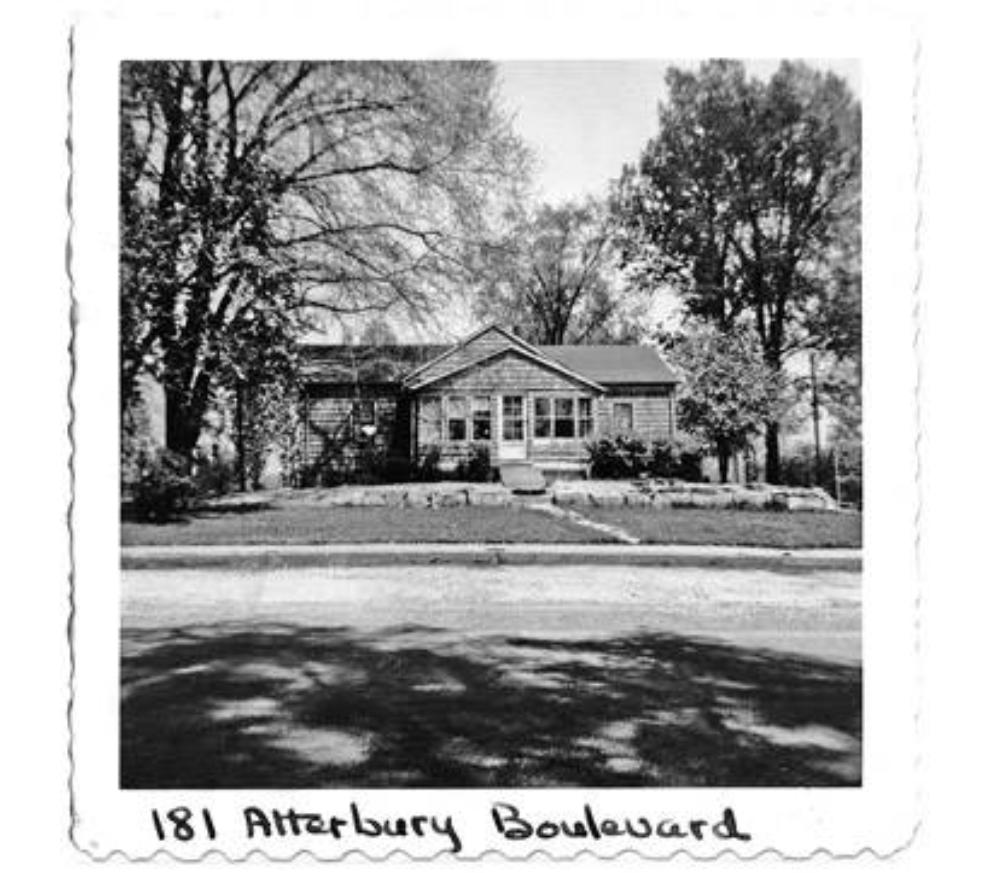 | Pennsylvania Railroad conductor Ralph Ringler (1899-1957) once lived in this circa-1948 home. | Summit Memory | |
185 Atterbury Boulevard 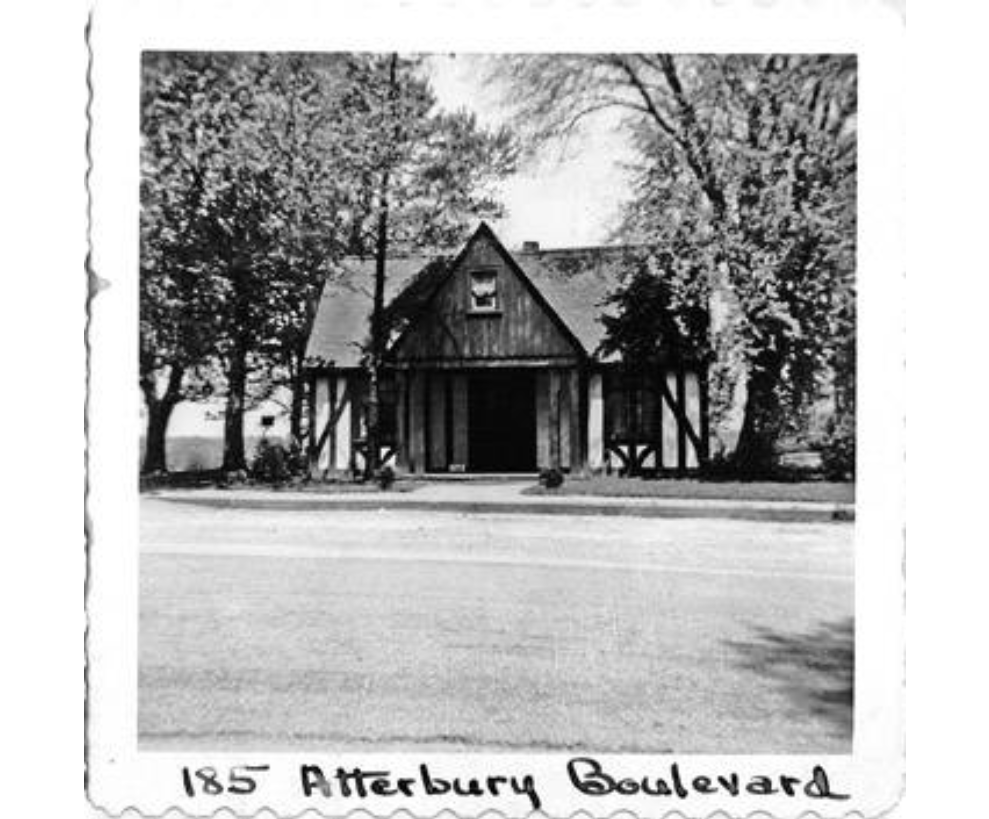 | The construction of this building is likely dated to the late 1920s. It once functioned as the Lake Forest housing development field office for the S.H. Kleinman Realty Co. | Summit Memory | |
257 Atterbury Boulevard 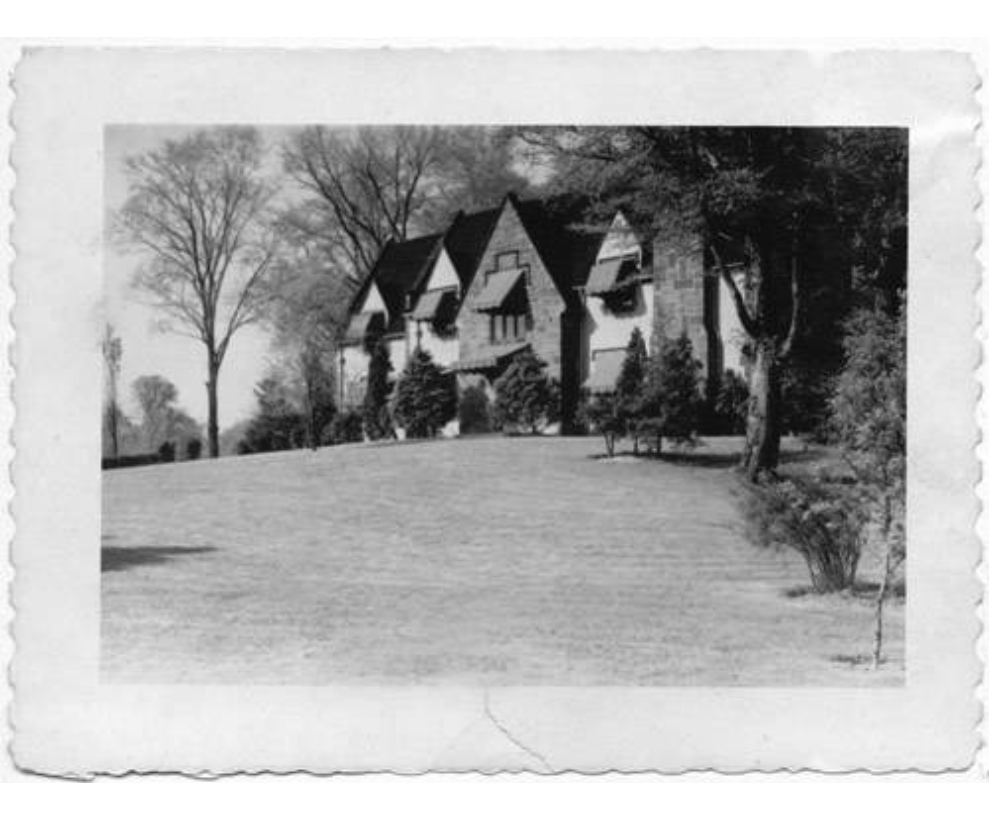 | This home was the second built in the original S.H. Kleinman Realty Co.-planned Lake Forest Residential Park, Country Club and Golf Course development. More than 1000 homes had been planned for this complex, but only two homes and a clubhouse had been completed before the 1929 stock market crash. This circa-1928 Tudor Revival home was built for Leslie Sadler (1883-1947), secretary-treasurer of Cottage Creamery in Cleveland. | Summit Memory | |
2357 Aurora Road 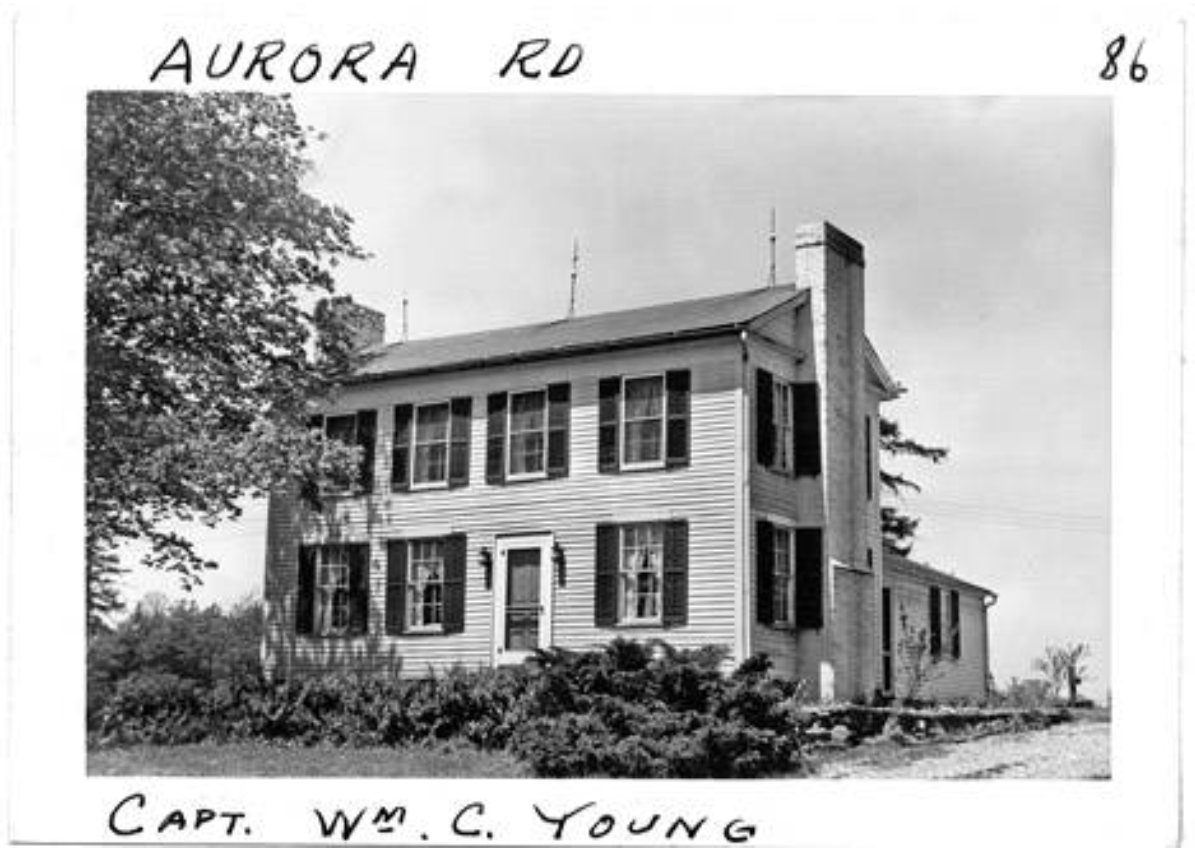 | This home, first built in 1824 by Horace Metcalf (1791-1865), remained with the Metcalf family until 1928. Metcalf was married to the daughter of Dr. Moses Thompson (1776-1858), who arrived in Hudson with town founder David Hudson (1761-1836) in 1800. This home, known as Maplewood Farm, takes its name from the grove of maple trees where prizewinning sap was harvested to create maple syrup. Music was common in this house; noted musicians have often inhabited the home. | Summit Memory | |
2727 Aurora Road 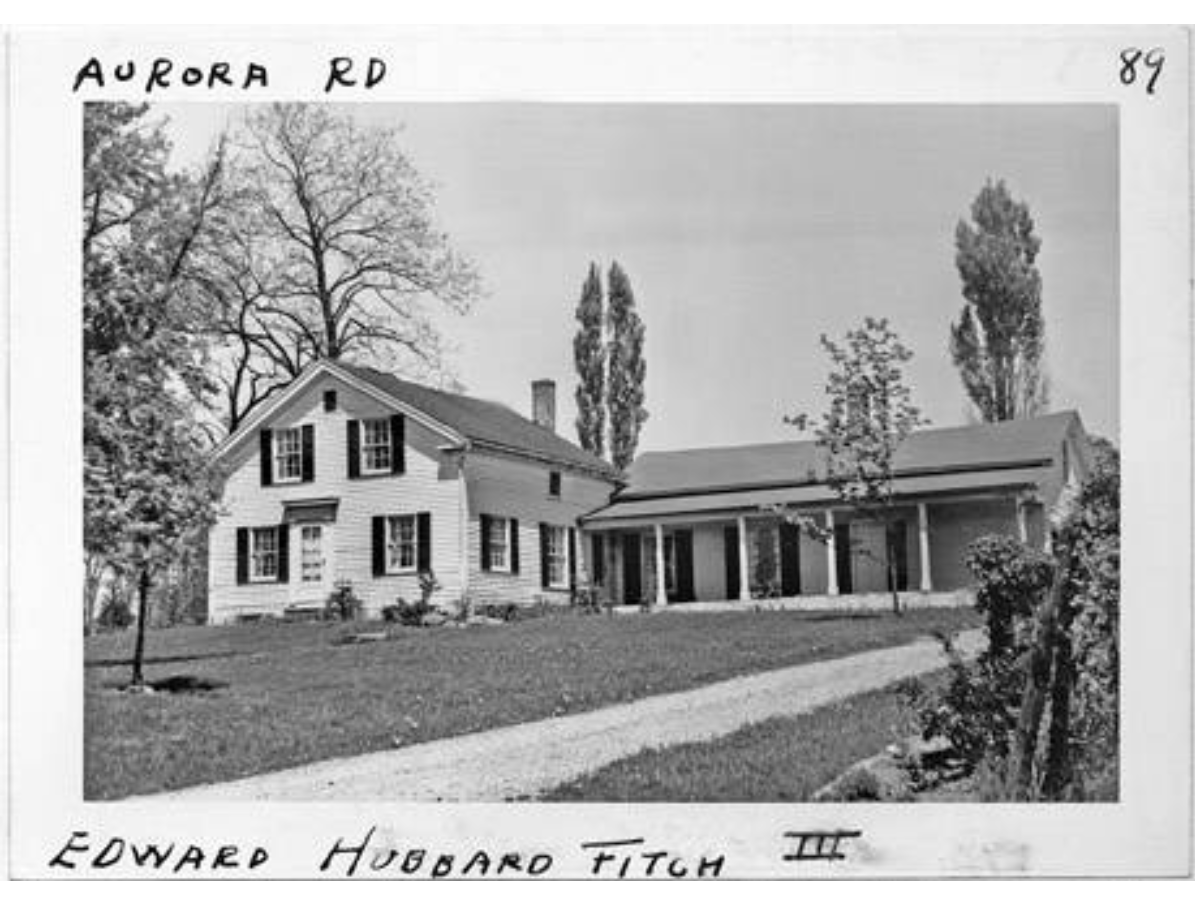 | This late-Colonial Connecticut-style farm house, circa 1823, was once declared the "favorite" home of Owen Brown (1771-1856), father of abolitionist John Brown (1800-1859). Owen was "stationmaster" on the Underground Railroad in Hudson. Wide plank floors still remain in the upstairs. | Summit Memory | |
2827 Aurora Road 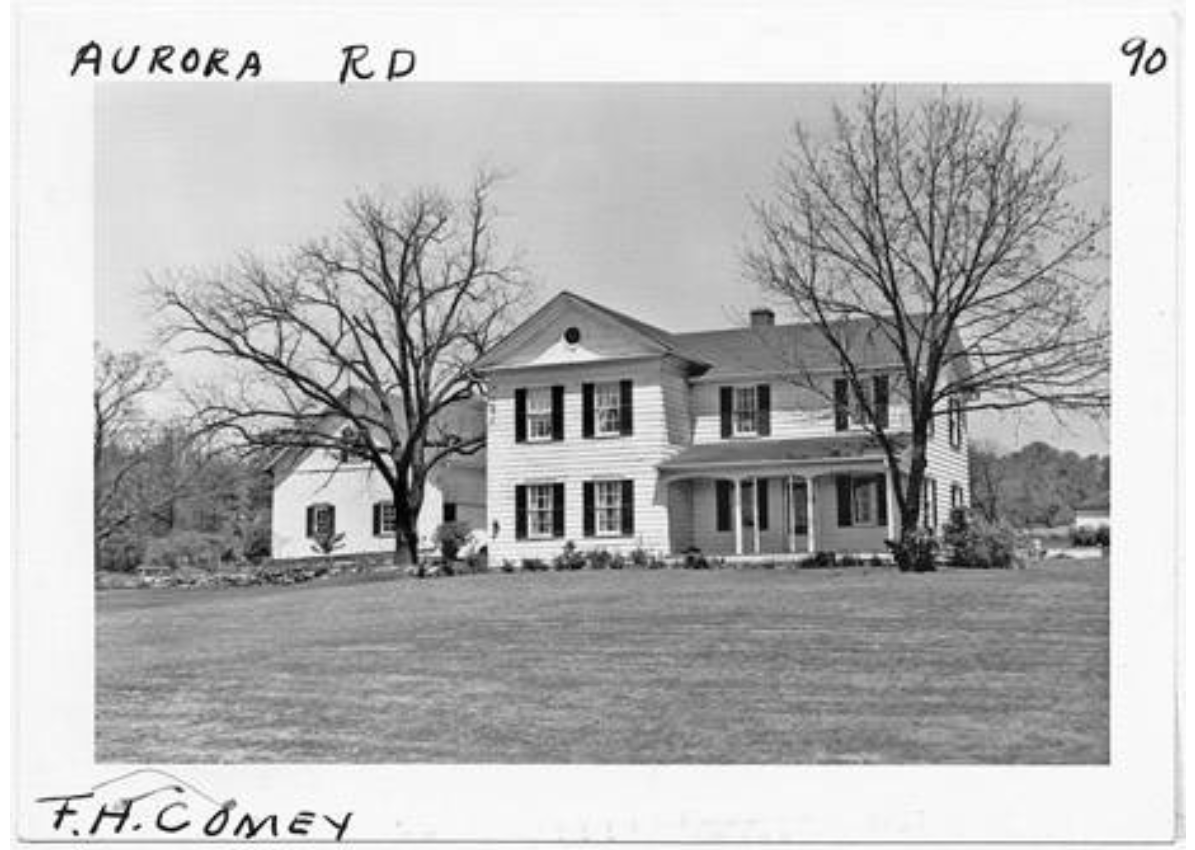 | This 1835 home was occupied by abolitionist Owen Brown (1771-1856) with his second wife, Sally Root Brown (1789-1840). Later the Knight family, publishers of the "Akron Beacon Journal", lived here. The house is typical Greek Revival with some Federal elements. At some point in its history this house suffered a fire in the front corner of the structure. Famed attorney Clarence Darrow (1857-1938) was known to have dined here on occasion. | Summit Memory | |
| 5 Aurora Street Brewster Store 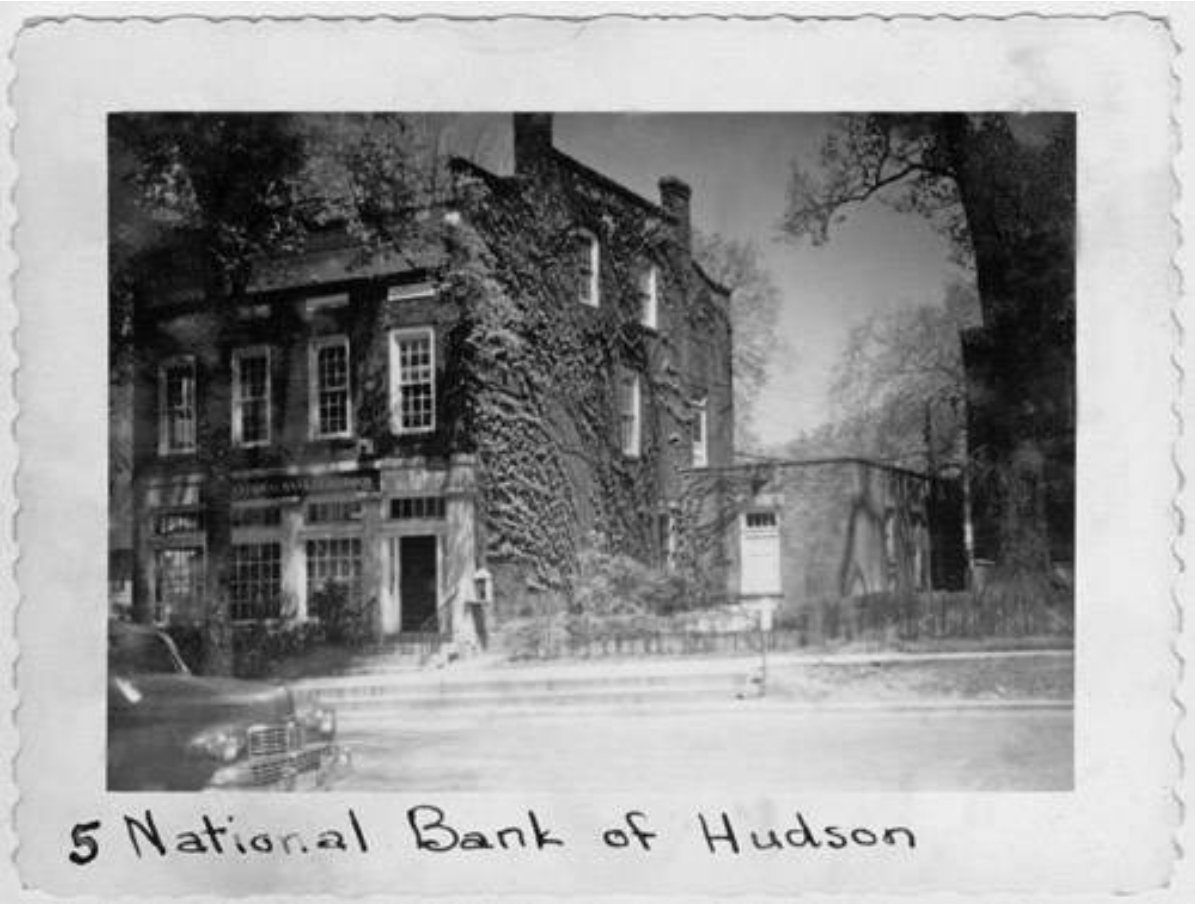 | View House Report | Built in 1839, 5 Aurora is the oldest commercial structure still in use today. This Federal-style building was built by Leander Starr (1804-1885) and originally housed Kent and Brewster's Dry Goods Store. In 1908 James Ellsworth (1849-1925) opened the National Bank of Hudson in this building. The movement to save this building from destruction in 1962 led to the founding of the Hudson Heritage Association. Banks have occupied this building since Ellsworth's day. | Hudson Heritage Association Summit Memory |
| 9 Aurora Street Brewster Mansion 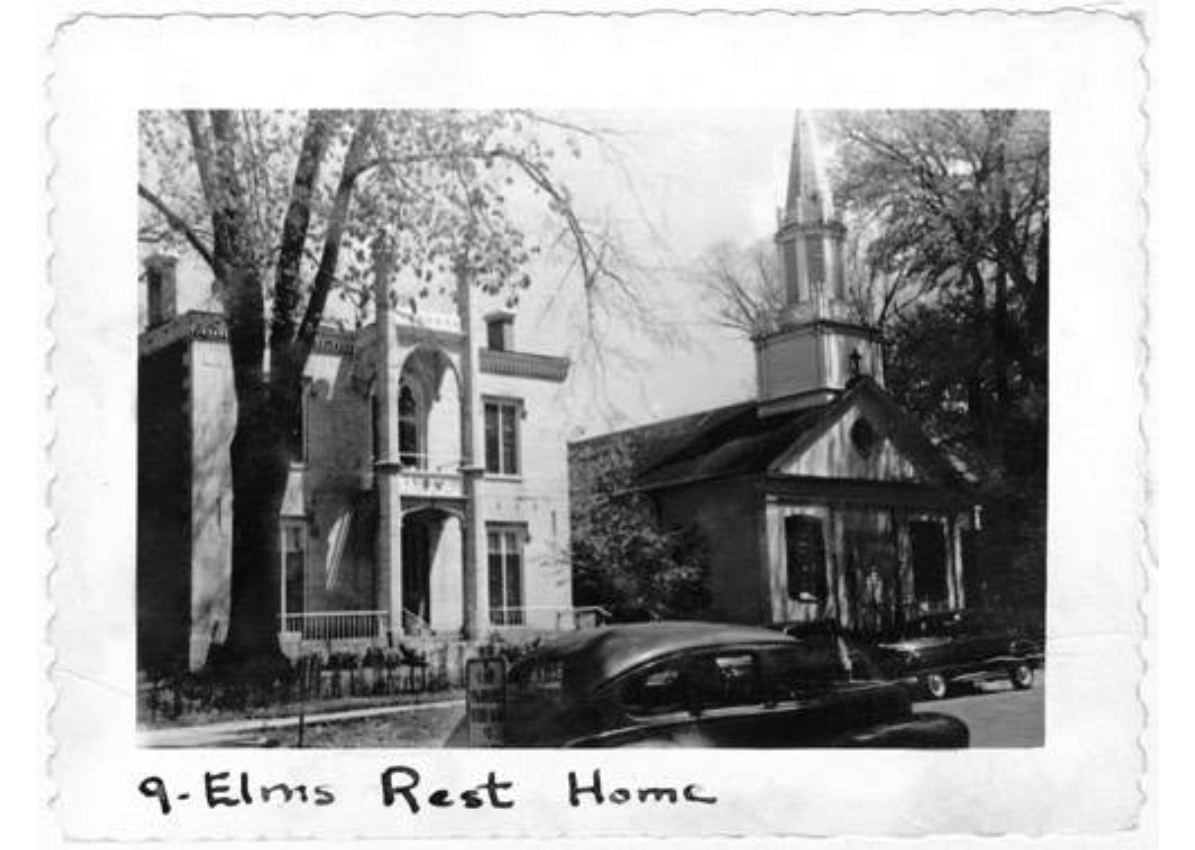 | View House Report | "Brewster Mansion" has the unusual distinction of serving as a residential, institutional and commercial building during its long history. The home was built in 1853 for the successful local merchant and former Hudson mayor Anson A. Brewster (1807-1864). The Gothic Revival design has been attributed to Simeon Porter (1807-1871). In the first half of the 20th century, The Park Hotel operated in the Brewster Mansion. After the hotel closed in 1949, the home was used as a rest home known as The Elms. Offices and shops now inhabit the building. The first home of Owen Brown (1771-1856), father of abolitionist John Brown (1800-1859), was formerly on this site. | Hudson Heritage Association Summit Memory |
| 19 Aurora Street Christ Church Episcopal 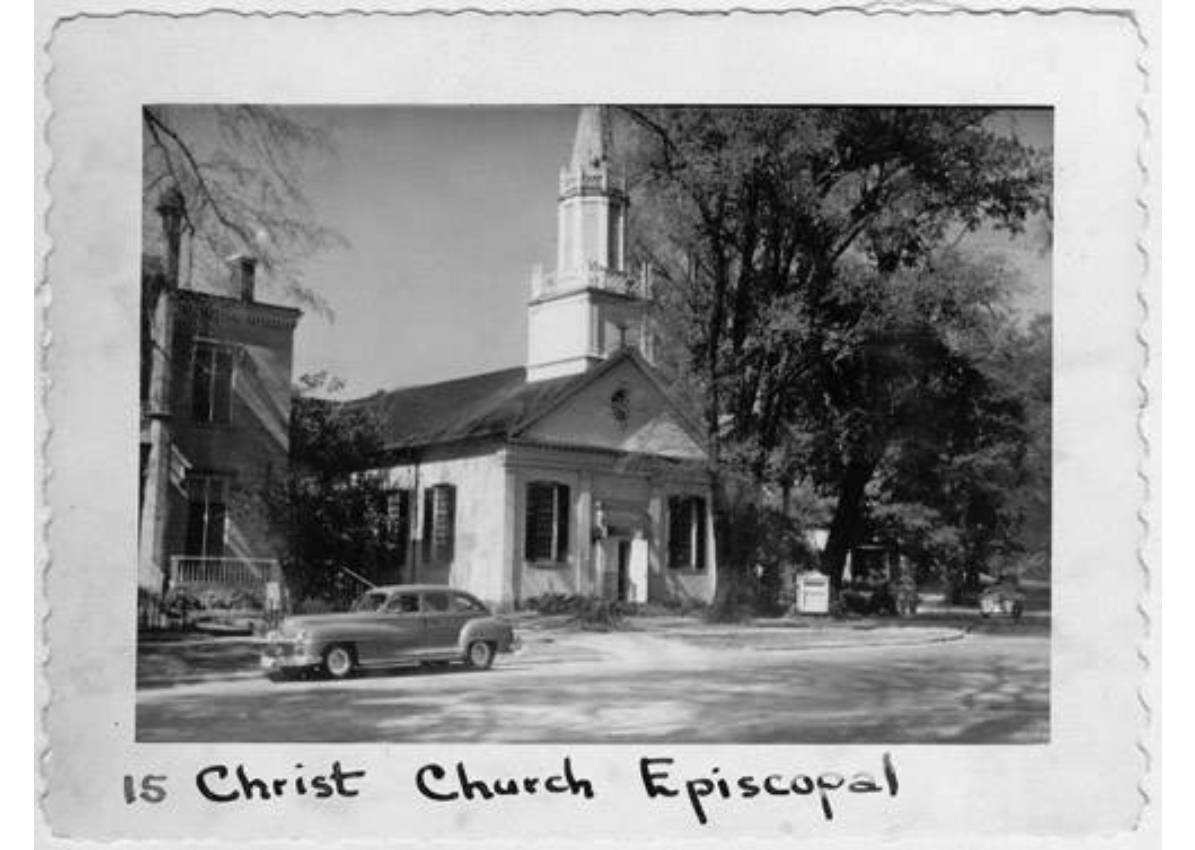 | The first Christ Church Episcopal Gothic Revival building was erected in 1846 (and consecrated by Bishop Charles Pettit McIlvanie (1799-1873)), but was demolished and replaced with this 1930 Colonial Revival structure. Simeon Porter (1807-1871) designed the first church; Charles Frank (n.d.) was the architect of the current church. Christ Church Episcopal was organized in 1842 with 37 charter members, who included notable citizens Anson Brewster, Jr. (1807-1864) and Dr. Israel Town (1791-1853). The 1930 Christ Church Episcopal building was modeled after St. Christopher's-by-the-River in Gates Mills, Ohio. | Hudson Heritage Association Summit Memory | |
| 21 Aurora Street Isham Beebe House 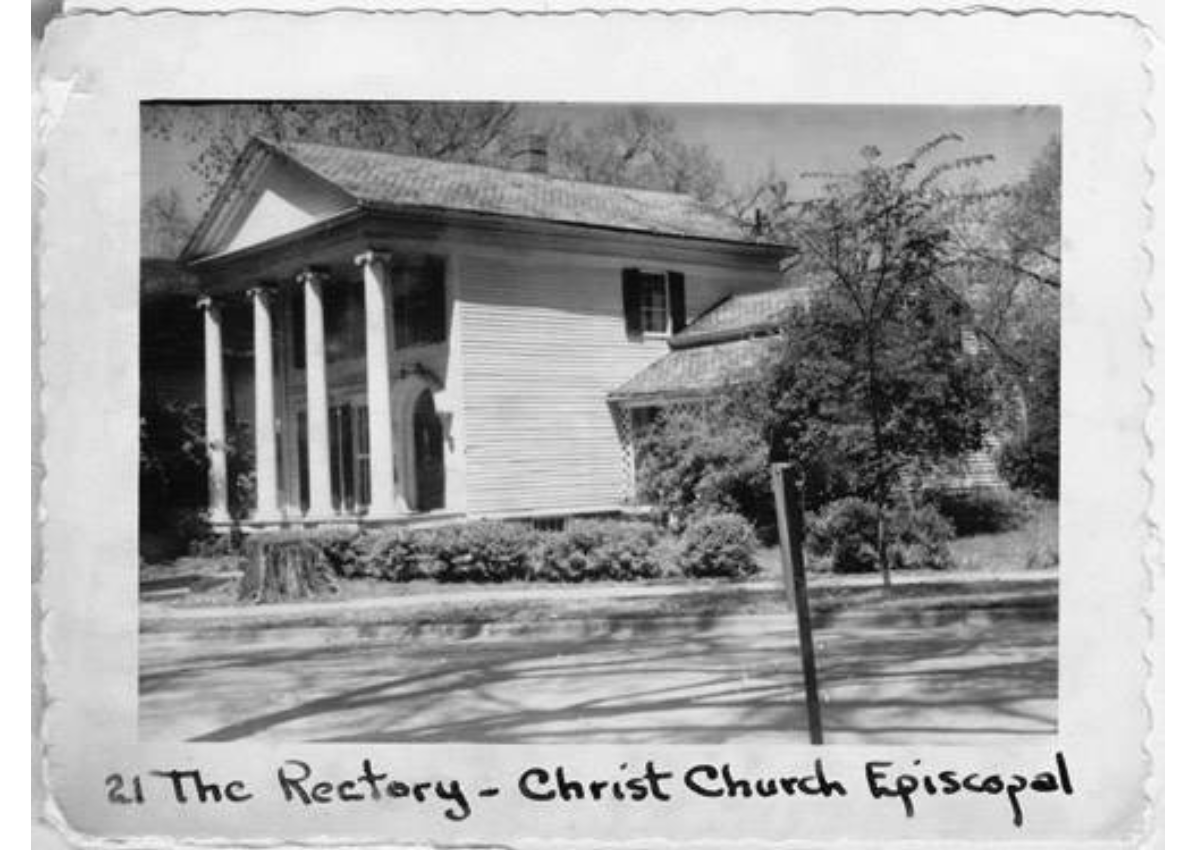 | View House Report | 21 Aurora Street is locally known as the Isham-Beebe House because the Isham family built the home and the Beebe family were long time occupants. It was built in 1832/33 by Leander Starr (1804-1885). Warren Isham (1798-1863) was the publisher of the "Hudson Observer and Telegraph," which had a circulation of 1400 in 1831. His son, Warren Parsons Isham (1831-1863), was born and raised in this home and went on to be the assistant editor of the "Chicago Times" and later was shipwrecked on Lake Superior. The Greek Revival structure has original timbers in the attic and original plaster over split lathe in some areas. The present entrance on Aurora Street was modified and not of the original construction. During the 1850s successful merchant and former Hudson Mayor, Anson Brewster (1807-1864) bought the property and gifted it to his daughter, Ellen Brewster Beebe (1836-1912) and son-in-law and Hudson Mayor, David Duncan Beebe (1831-1889) as a wedding gift. Christ Church Episcopal acquired the architectural gem during the 1940s. | Hudson Heritage Association Summit Memory |
29 Aurora Street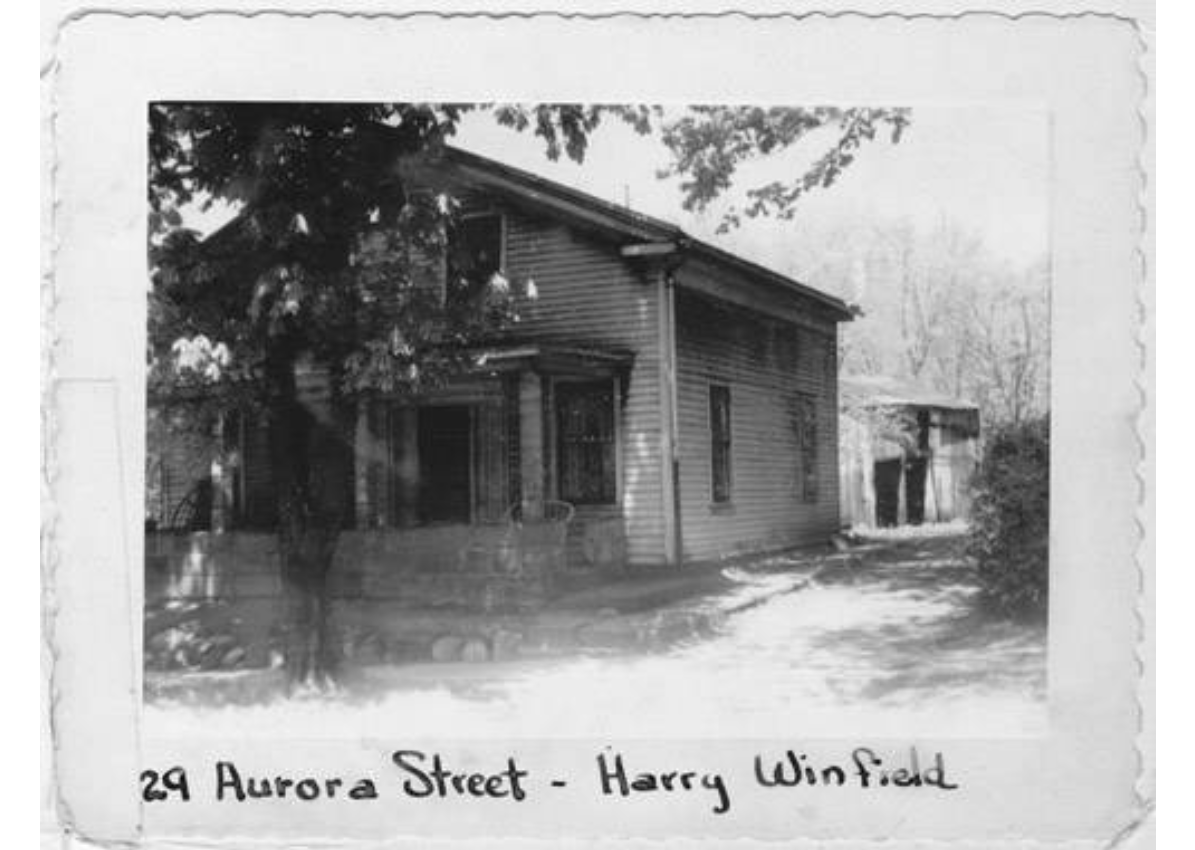 | This structure was demolished in 1970. It was once the home of former Hudson Mayor and civil war surgeon, Dr. George P. Ashmun (1818-1873) who survived the Battle of Chickamanga and was held prisoner nearly three months at Libby Prison. Later owners were Fire Chief Frank Mitchell (1868-1942) and the Winfield family who owned and operated MA Winfield's Restaurant. Christ Church Episcopal now owns the property. | Summit Memory | |
| 30 Aurora Street Whedon Farwell House 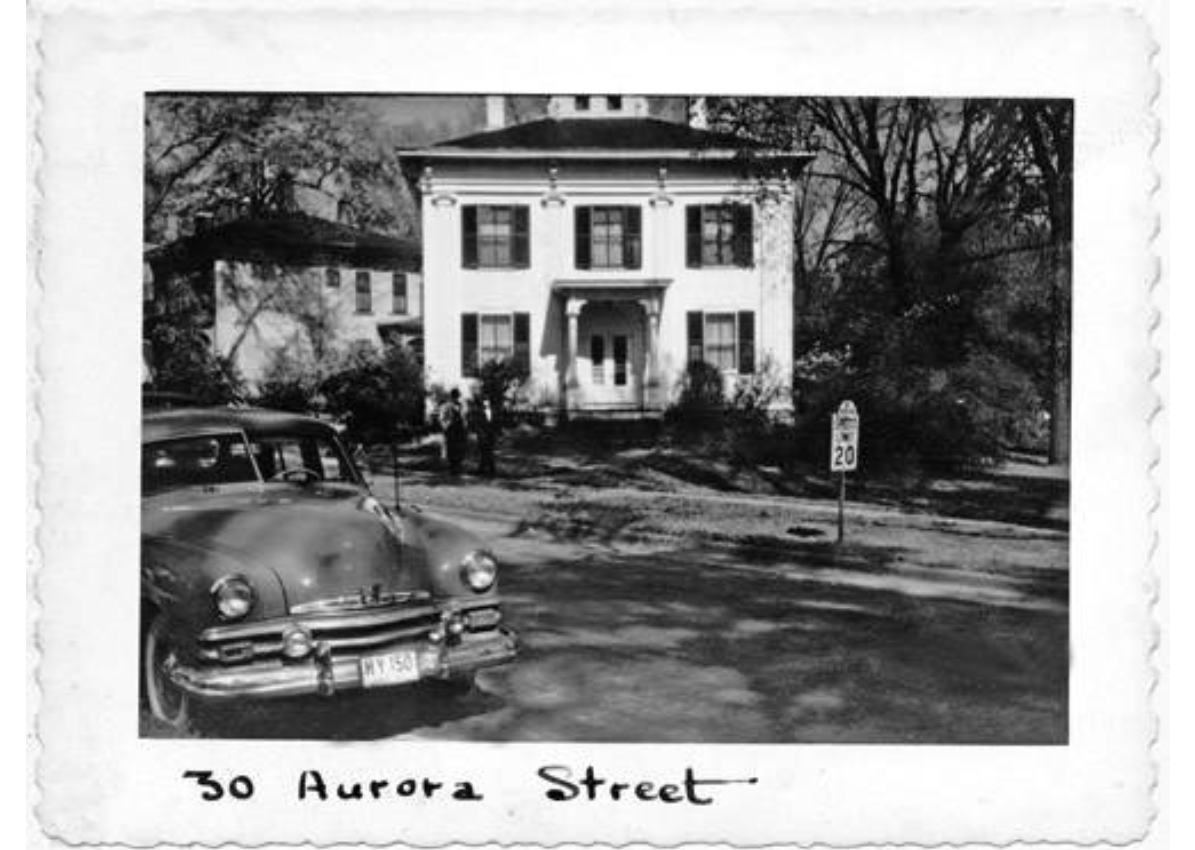 | View House Report | The distinctive Whedon Farwell home is one of Hudson's Ohio's oldest and finest homes. It was built in 1826-27 for Deacon Benjamin Whedon (1779-1833), who was excommunicated from the Congregational Church for hosting a dance in the home in 1830. The Tuscan tower is an added feature. The interior features elaborate plasterwork and unusual walnut and cherry woodwork. The house was built facing directly west according to the points of a compass. Charles Farwell (1821-1904) took possession in 1850 and occupied the structure for six generations. Farwell, like others in Hudson, sent two sons to the Civil War. Arba P. Farwell (1849-1880) served as a musican, while his brother Henry Farwell served as a minister (1846-1925); both returned home after the war. Later the home was used as a day care center as well as a Christian Science Society meeting place. Today it is again a residence. | Hudson Heritage Association Summit Memory |
33 Aurora Street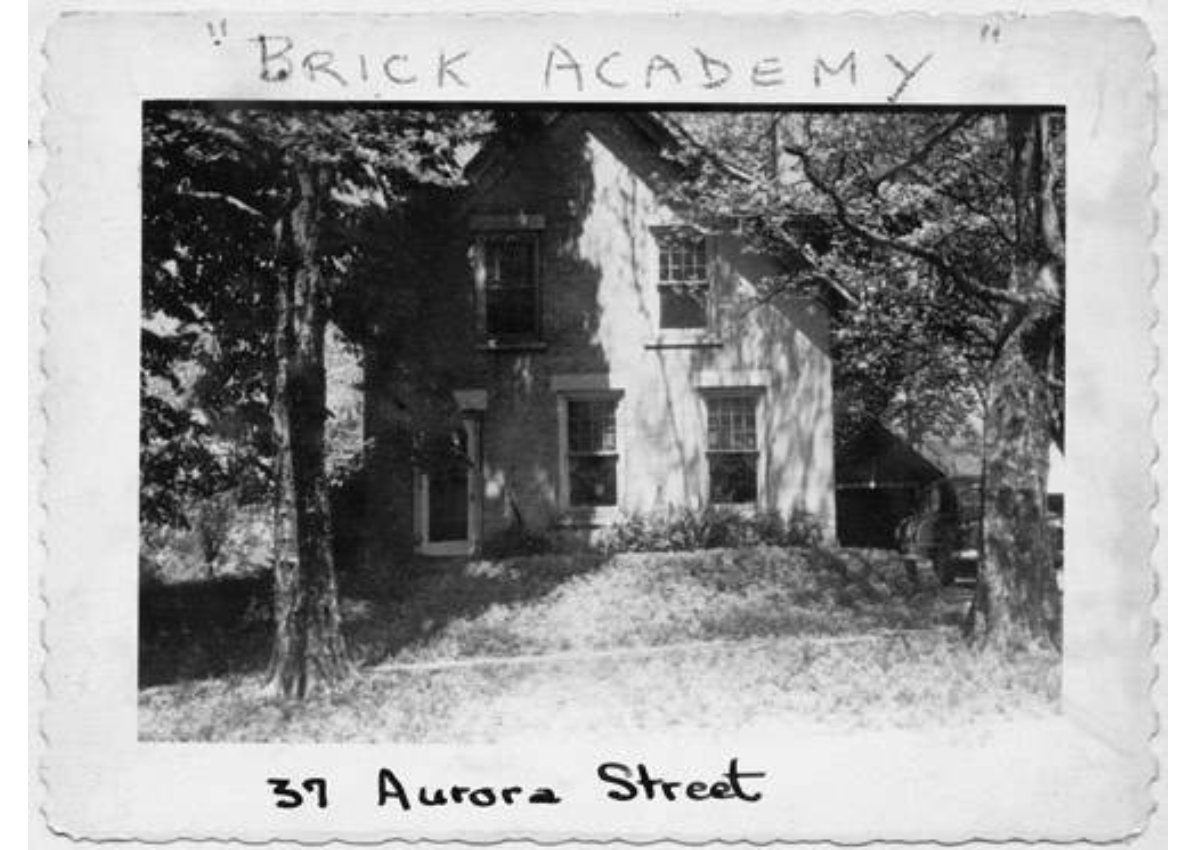 | This home, destroyed in 1972, was home to Dr. George A. (1875-1935) and Helen Miller (1885-1970). Helen was the head librarian of Hudson Library & Historical Society. George was a Mason, Rotarian, and World War I veteran. He was the first physician in Hudson to own and operate an automobile in his medical practice. | Summit Memory | |
| 34 Aurora Street Henry Holmes House  | View House Report | Moses Draper (1796-1873) bought this property intending to build a home for his son, James Draper (1827-1864) and daughter-in-law, Addie Andrews Draper Holmes (1837-1927). When James unexpectedly died during the Civil War in Tennessee, Moses gifted the property to Addie who in late 1864 remarried English emigrant and wagon-maker Henry Holmes (1836-1885). Addie and Henry built this 1876 home and raised their family here. Another son of Moses, Arvin (1829- ) also served in the Civil War. | Hudson Heritage Association Summit Memory |
| 37 Aurora Street Brick Academy  | This brick building with Gothic Revival characteristics first was built by John B. Clark (1793-1872), most likely as an investment property. Newton Jerome Randall (1852-1938), a longtime employee of the Pennsylvania Railroad and a self-professed lover of grammar, once resided here. In 2000, the home was relocated to Oviatt Street. It is now utilized as Western Reserve Academy housing. | Summit Memory | |
| 38 Aurora Street Isaac Quay House 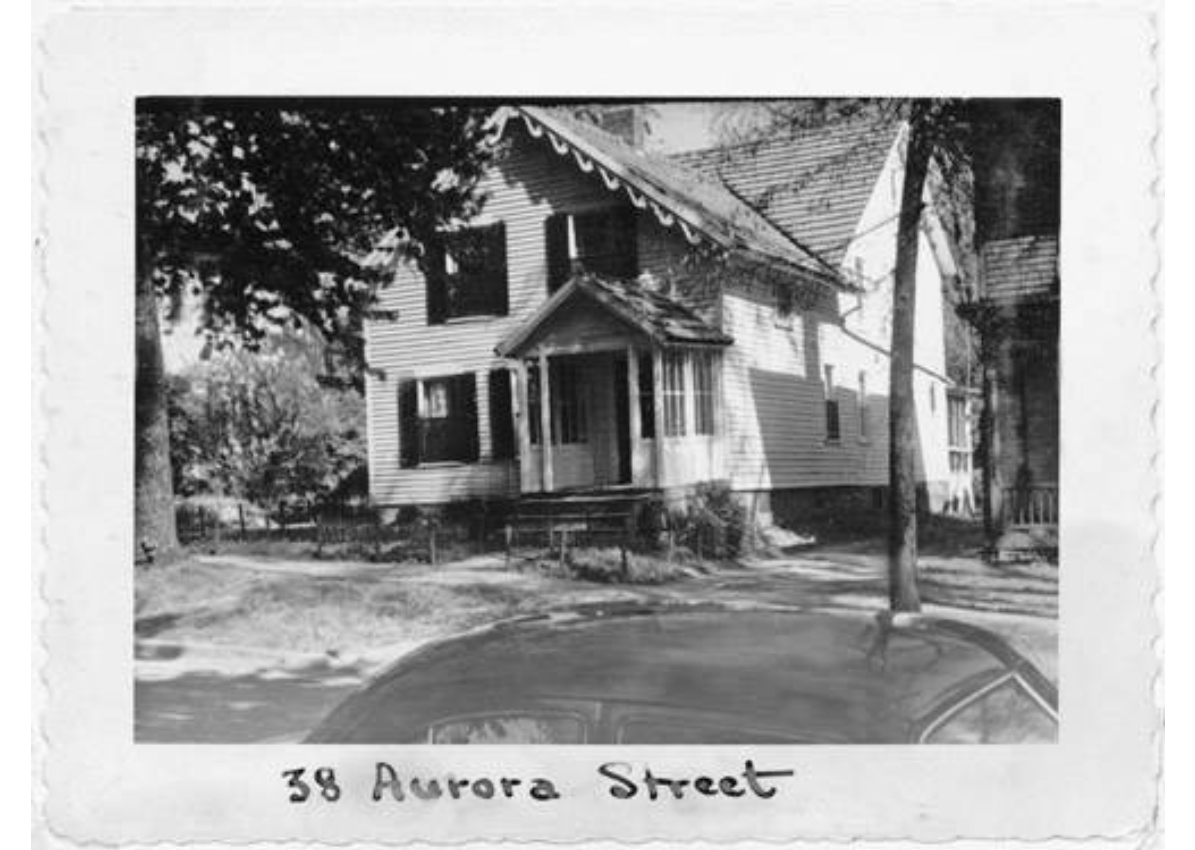 | View House Report | This house has two distinct sections and was built in two stages. The rear section is circa 1860 and the front section is circa 1846. The home was built for local shoemaker Issac Quay (1808-1880). Daughters Maria Antoinette (1849-1929) and Martha (1832-1903) were early trustees of Hudson Library & Historical Society. | Hudson Heritage Association Summit Memory |
41 Aurora Street 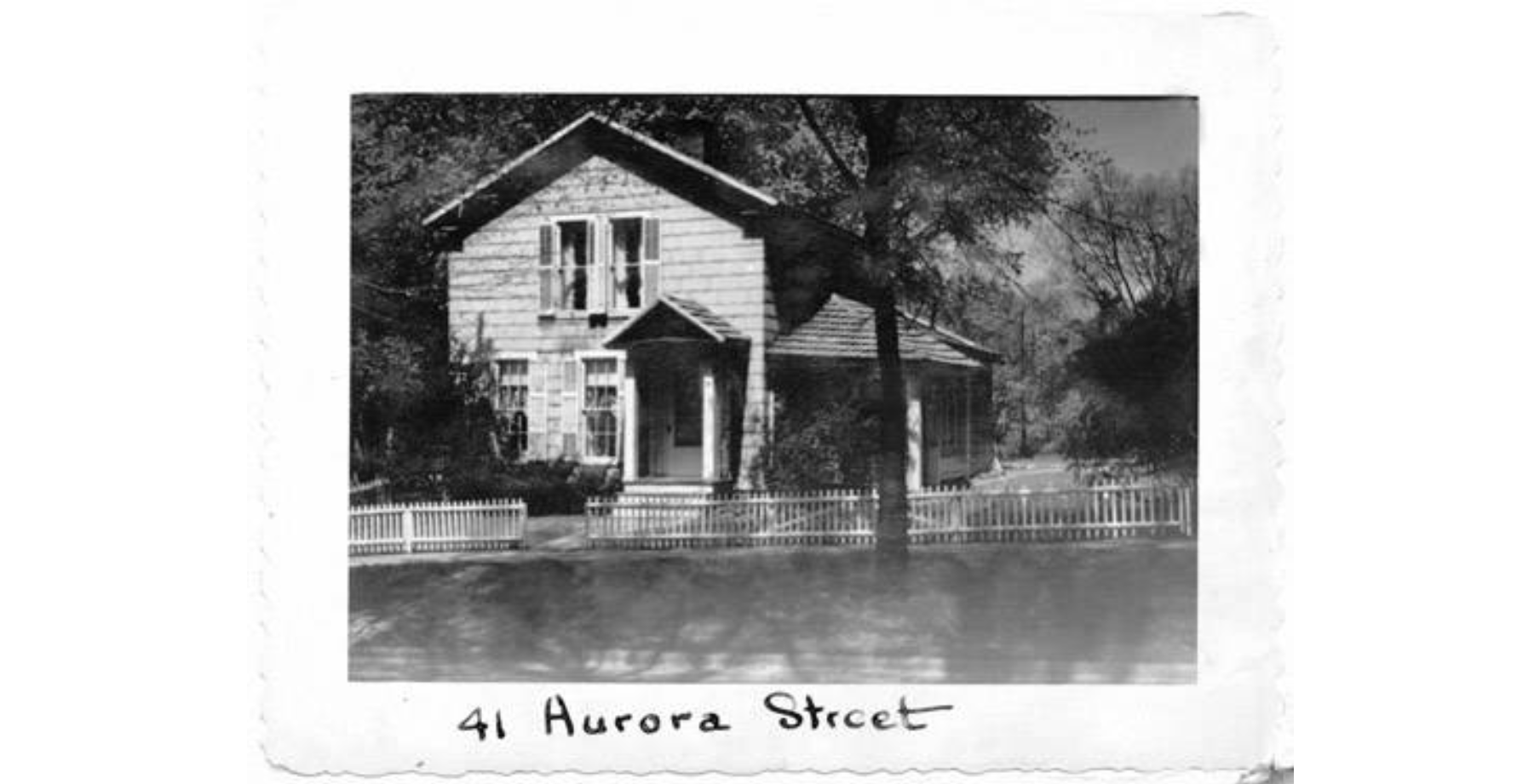 | This 1833 house was once home to Caroline Ellsworth Blackburn (1869-1950), Western Reserve Academy graduate, reporter and advocate of wooden sidewalks. Later the house was moved for expansion of the Congregational Church. It now resides at 189 Aurora. | Summit Memory | |
42 Aurora Street 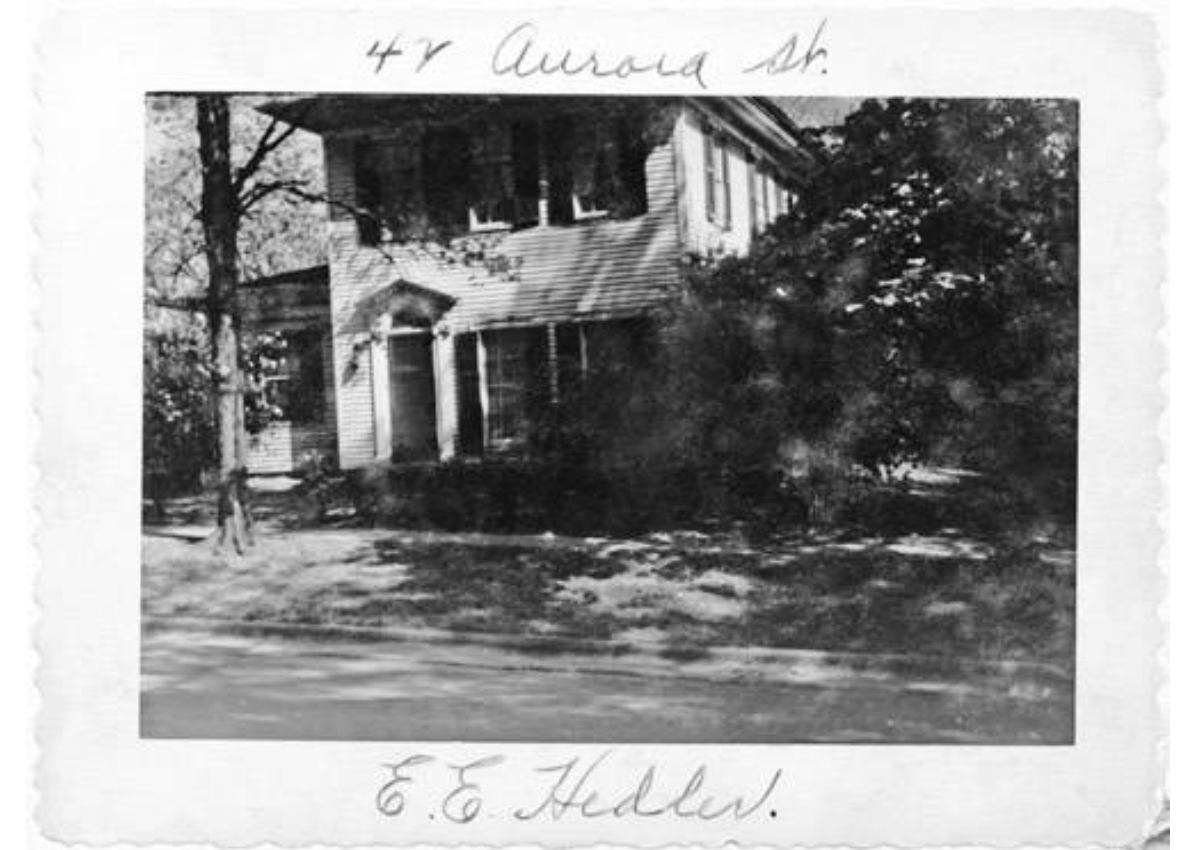 | This house is the second home at this location. Myron Tracy (1798-1855), a missionary minister, purchased the first home in 1845. Several members of Tracy's family are listed as occupants in 1860, including his brother-in-law Dr. Elias Weld (1772-1863), his nephew Lewis H. Delano (1836-1866), a Civil War soldier and his son Samuel J. Tracy (1835-1881), a captain in the 177th Ohio Volunteer Infantry who participated in the battle at Murfreesboro, Tennessee. Dr. Elias Weld lived in this home during the last few years of his life. Prior to moving to Hudson, Dr. Weld mentored the young John Greenleaf Whittier (1807-1892), future renowned American poet. When Weld lived in Haverhill, Massachusetts, he gave Whittier access to his personal library. As a tribute Whittier dedicated his poem, "The Countess," to Weld. In 1866 a fire burned the first home and a new home was built by Dr. Levi D. Osbourne (1820-1902), a doctor educated at Lake Erie Medical College in Willoughby, Ohio, who moved to Hudson in 1854 to practice medicine. Ernest E. Hedler, Jr. (1915-1992), member of the Hudson council in the 1940s and active with the Hudson Masonic Lodge, was a later owner. His wife, Pauline Hedler (1914-1990), helped start the Ice Cream Social in Hudson. | Summit Memory | |
| 47 Aurora Street First Congregational Church 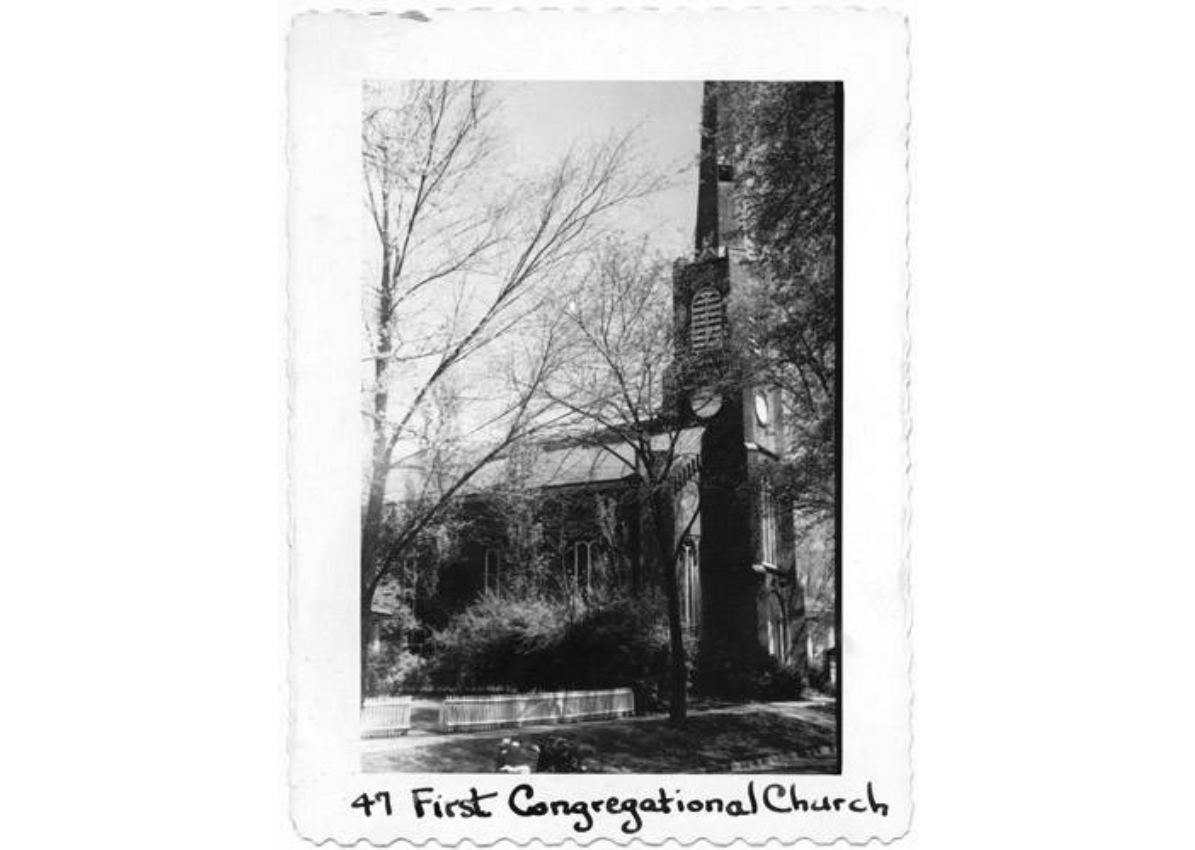 | Simeon Porter (1807-1871), famed local architect, built and designed the present First Congregational Church in 1865. John W.C. Corbusier (1878-1928) designed the 1919 addition. The First Congregational Church was founded in 1802 by 13 charter members, including David Hudson (1761-1836), founder of Hudson. Famed abolitionist John Brown (1800-1859) was also a member. The first church building was erected in 1819/1820 at the site of the present Town Hall. | Hudson Heritage Association Summit Memory | |
| 48 Aurora Street Kirkham-Porter House 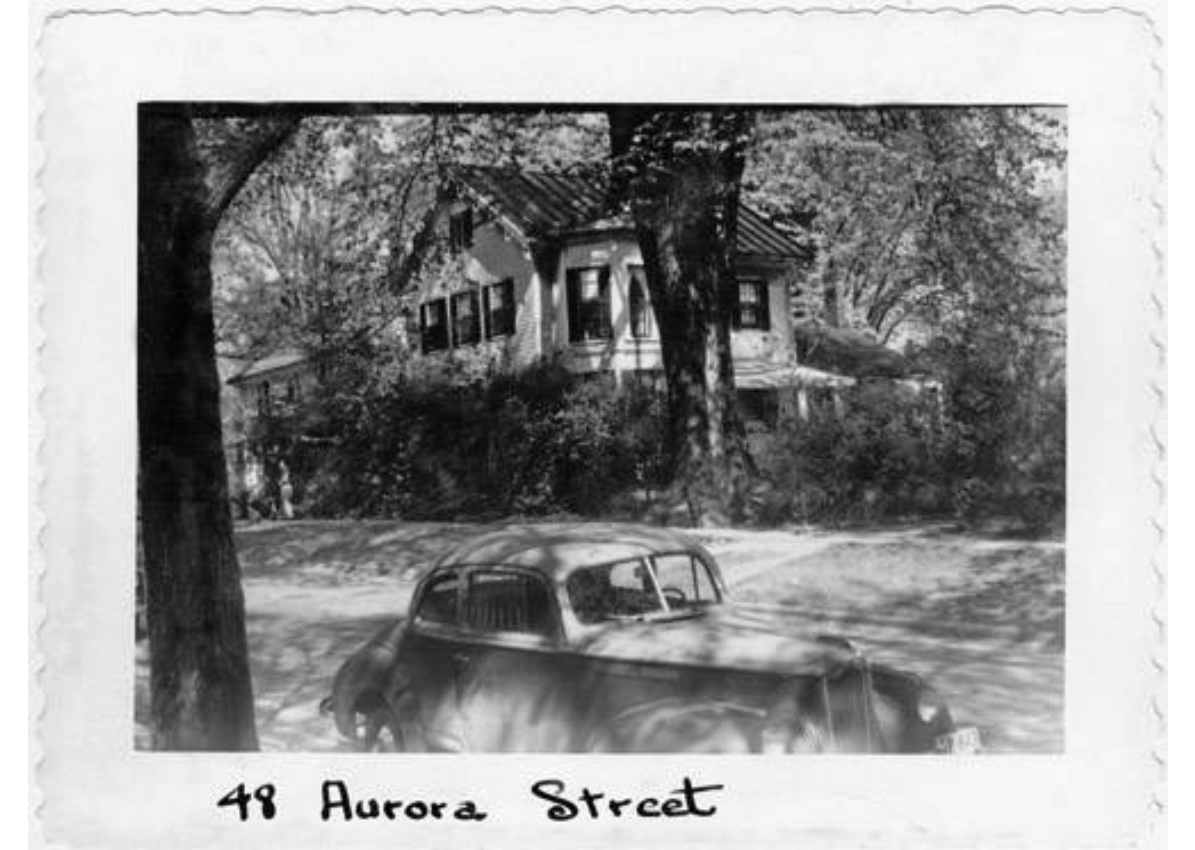 | View House Report | The Kirkham-Porter House was built in 1829 and like many Hudson, Ohio houses, the style is Federal cum Victorian. We know the date of construction thanks to David Hudson Jr.'s diary entry (1805-1836) The siding and second story windows are original to 1829. There have been two major remodelings since the original construction. The house was purchased in 1833 by the widow of Lemuel Porter (1775-1829), architect-builder. Margaret Porter (1779-1847) desired to be closer to her married daughters living in town. Deed descriptions and maps refer to "the Widow Porter's house." The Congregational Church used the home as a parsonage from 1888 until 1916. Recently uncovered is a tiled fish pond in the yard which is now under a paved driveway. Note the distinctive Pierce Arrow automobile. | Hudson Heritage Association Summit Memory |
52 Aurora Street 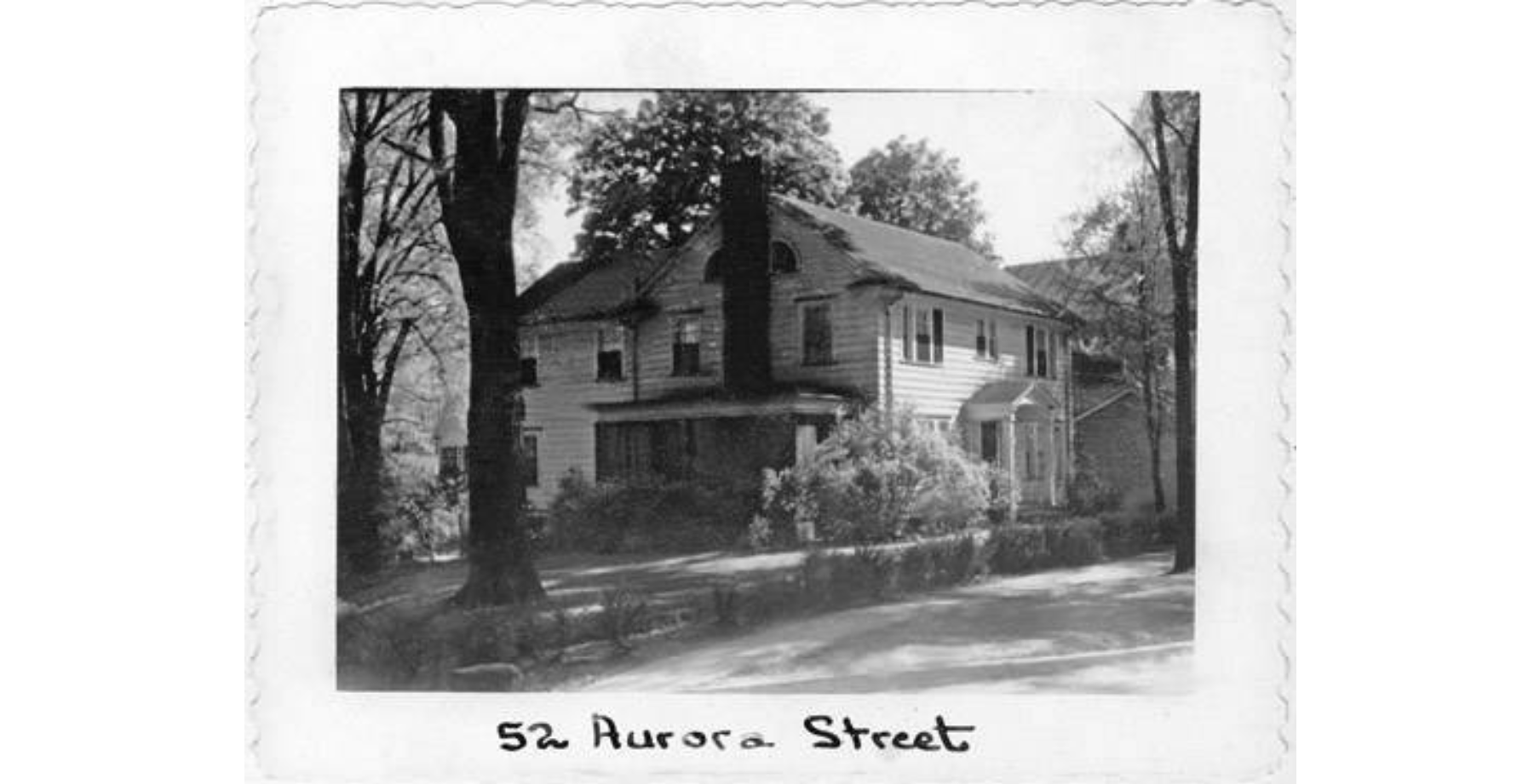 | This home, with a side-gabled roof, boxed eaves and returns, was once home to Hudson Library & Historical Society employee Betty Kafer (1910-2001). | Summit Memory | |
53 Aurora Street 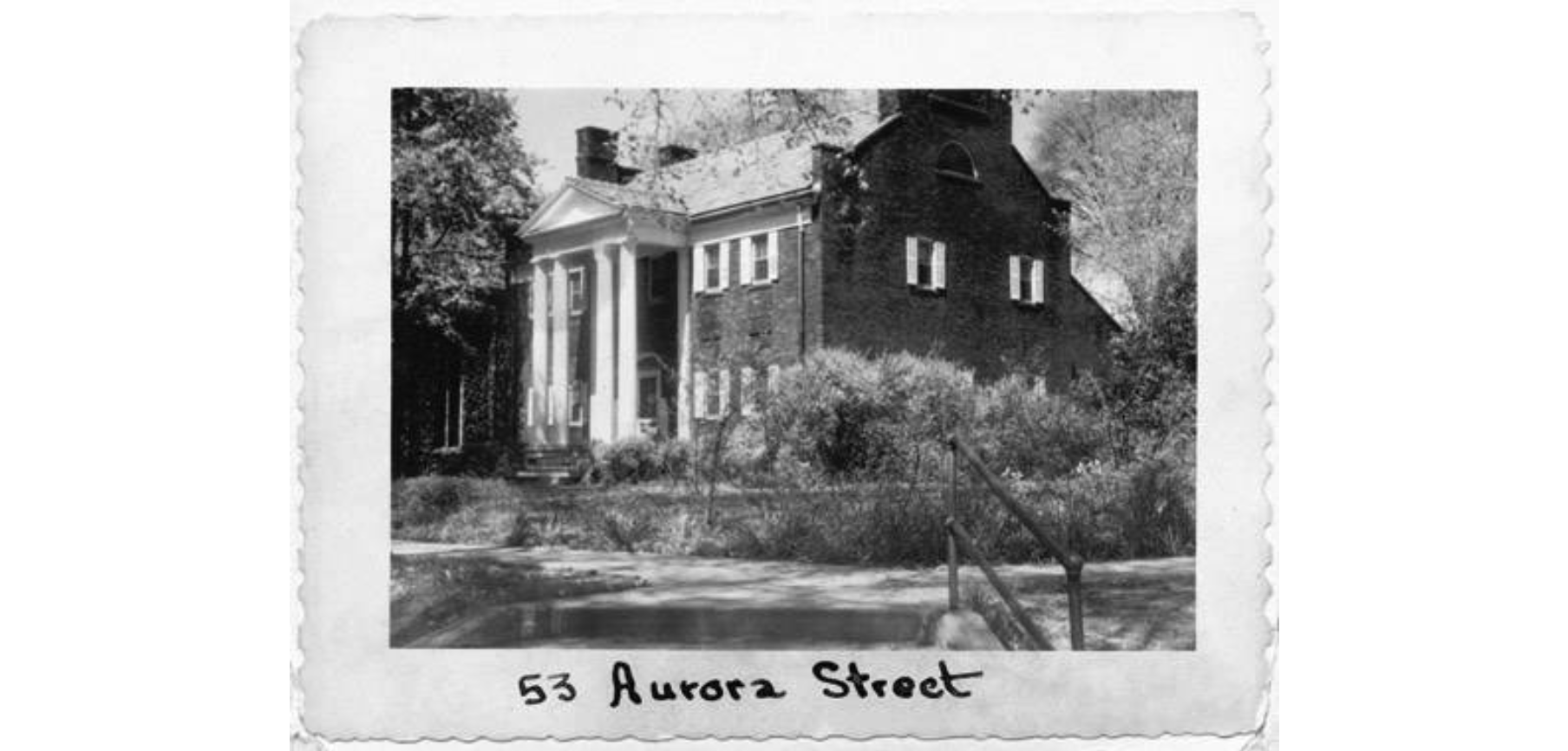 | James W. Ellsworth (1849-1925) gifted this lovely Neoclassical Revival home to the First Congregational Church for use as a parsonage in 1908. The home was designed by John W.C. Corbusier (1878-1928). | Summit Memory | |
64 Aurora Street 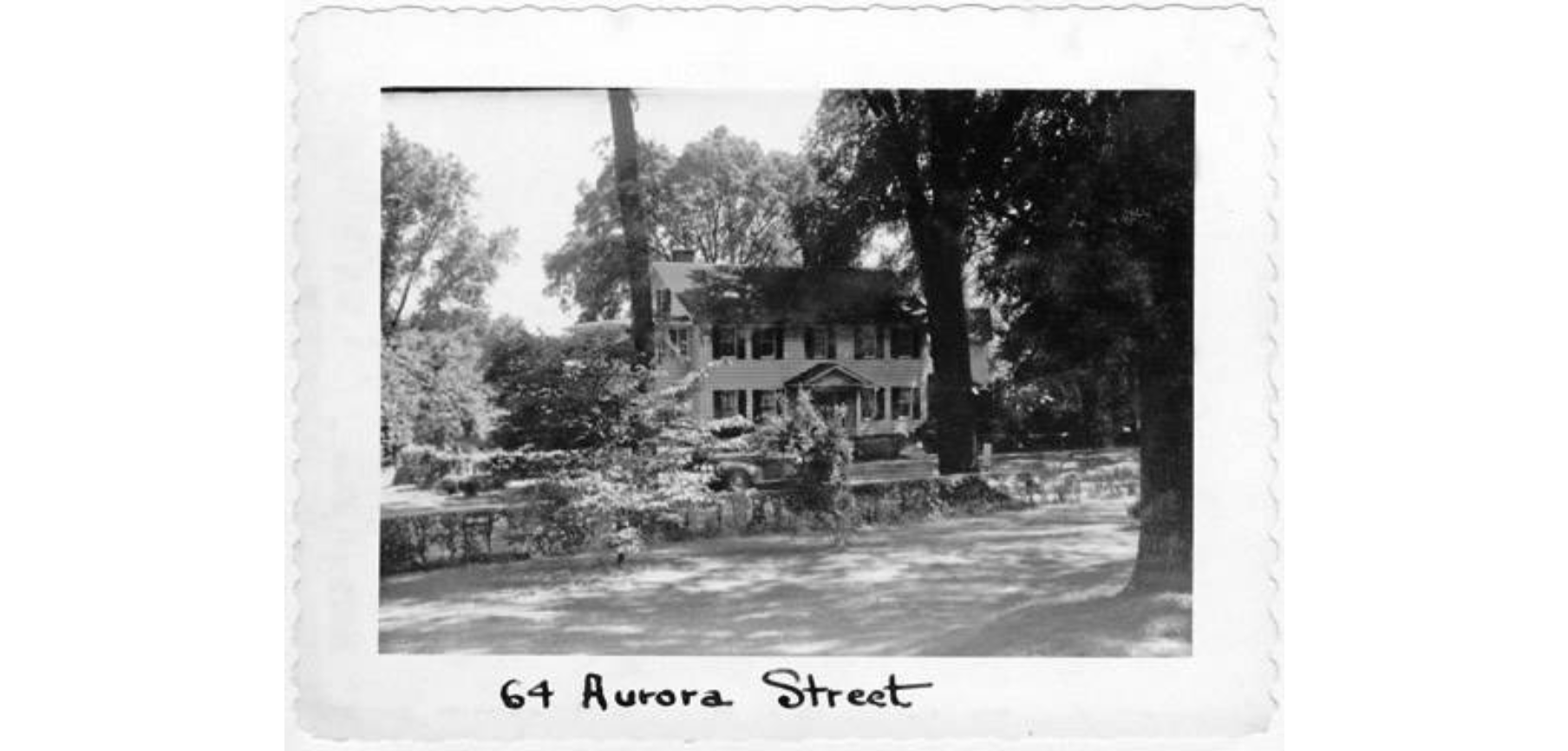 | This Colonial Revival with a pedimented portico and Doric columns was once home to 32 degreed Mason Vincent Meakin (1857-1934), who came from Crew, England. The property left the Meakin family in 1934. Further research is needed on this structure. | Summit Memory | |
72 Aurora Street 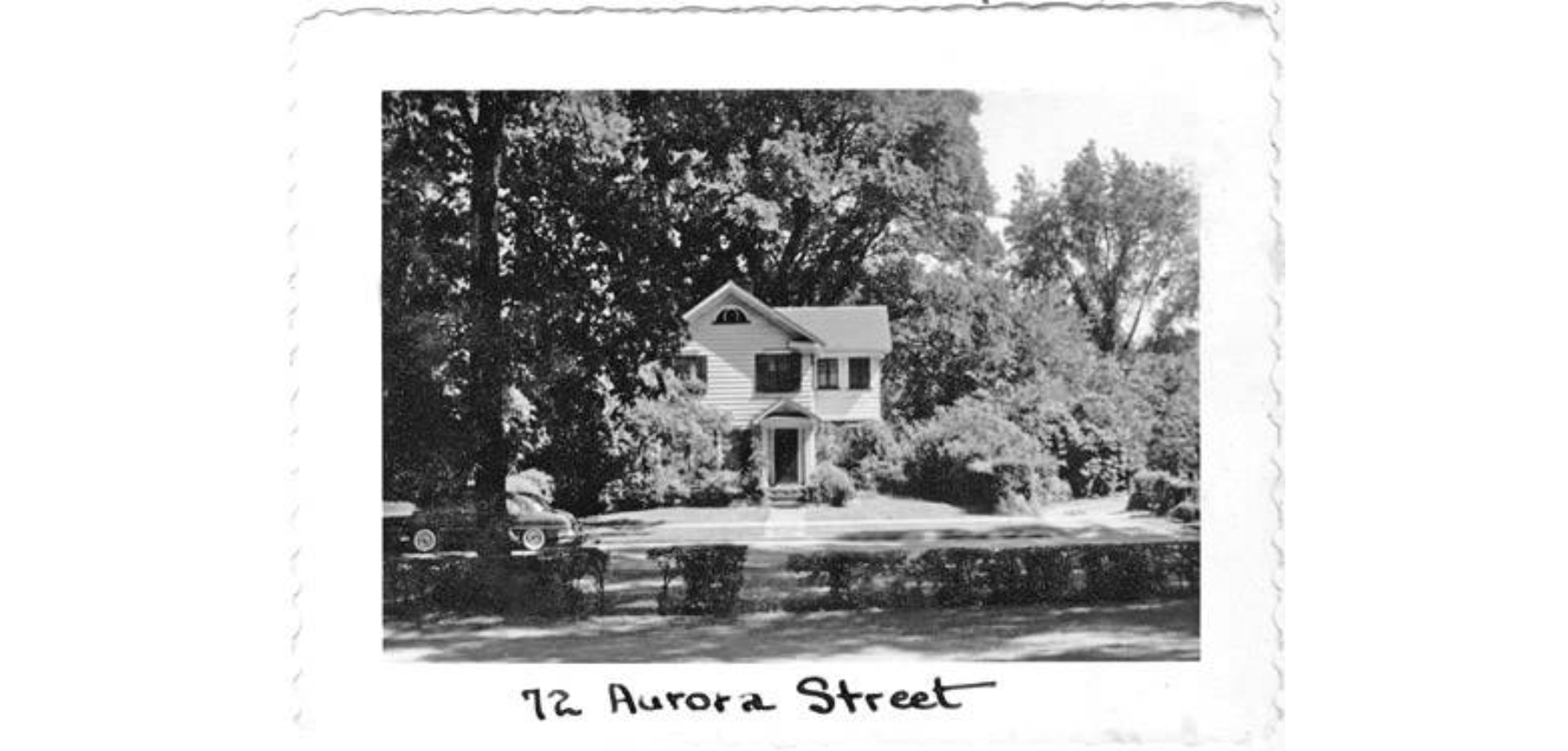 | This house is a good example of the Victorian era of architecture. It was a time of great romanticism and standardized building techniques. Balloon-frame construction with machined nails and standard board dimensions allowed for more economic and efficient house construction. Interior innovations included cast-iron stoves, which replaced inefficient fireplaces. This house is most probably of the 1880s vintage, but little research has been done. | Summit Memory | |
| 78 Aurora Street Charles S. Witty House 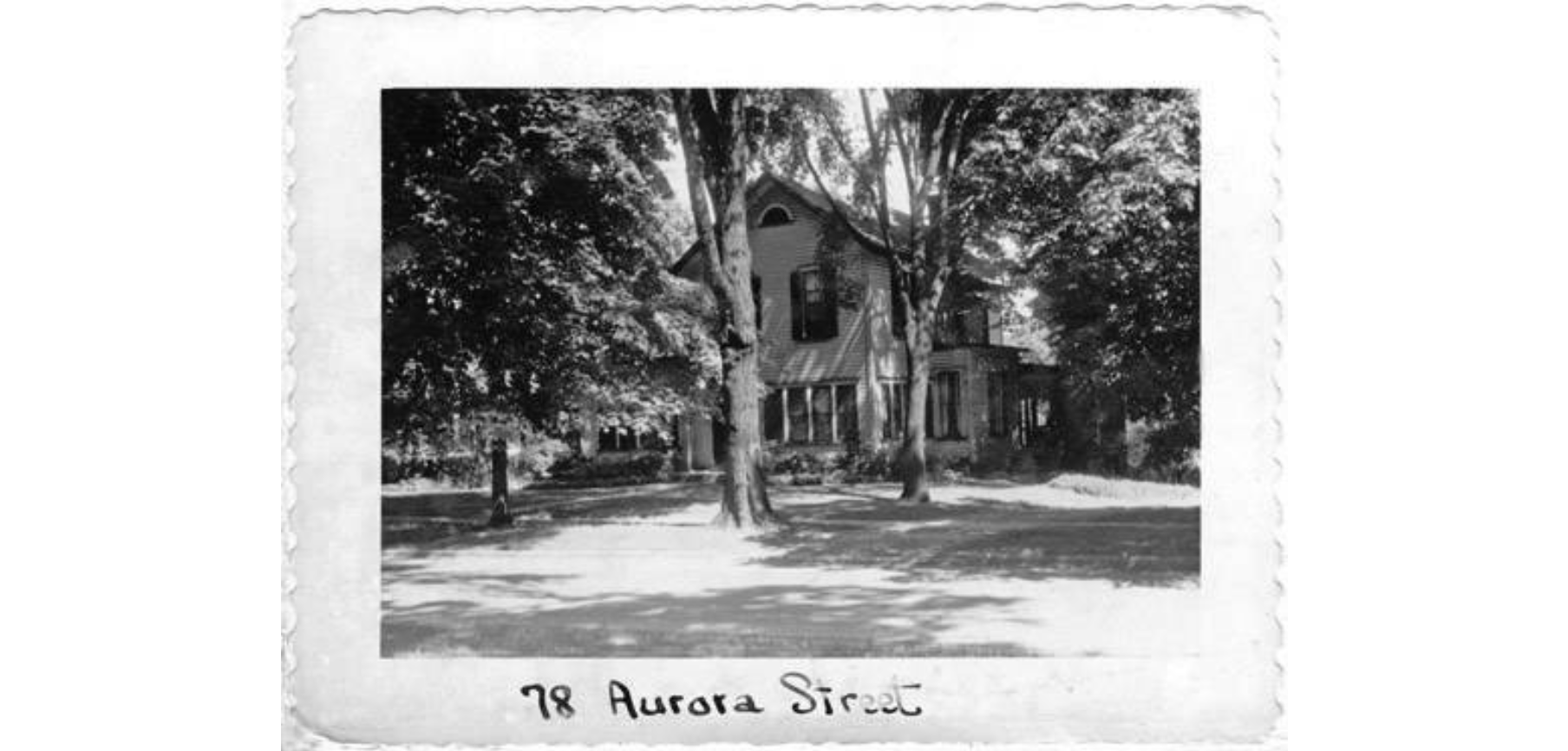 | View House Report | One of two houses sharing this lot, this home was built by contractor Charles Witty (1829-1911) in 1880. The earlier one was moved to 80 Oviatt Street in 1920. The Morse family once lived here. One of the Morse boys, John F. Morse, Jr. (1905-1994), was the founder of local company Morse Instrument Company (later Morse Controls) and had 75 patents for instruments used in air, on land and at sea. John's quieter brother Leland Morse (1912-1984) inscribed his initials (LMM) in the banister of this house. Leland married a local girl and soon moved to Michigan, where he was employed with an automobile manufacturer. | Hudson Heritage Association Summit Memory |
82 Aurora Street 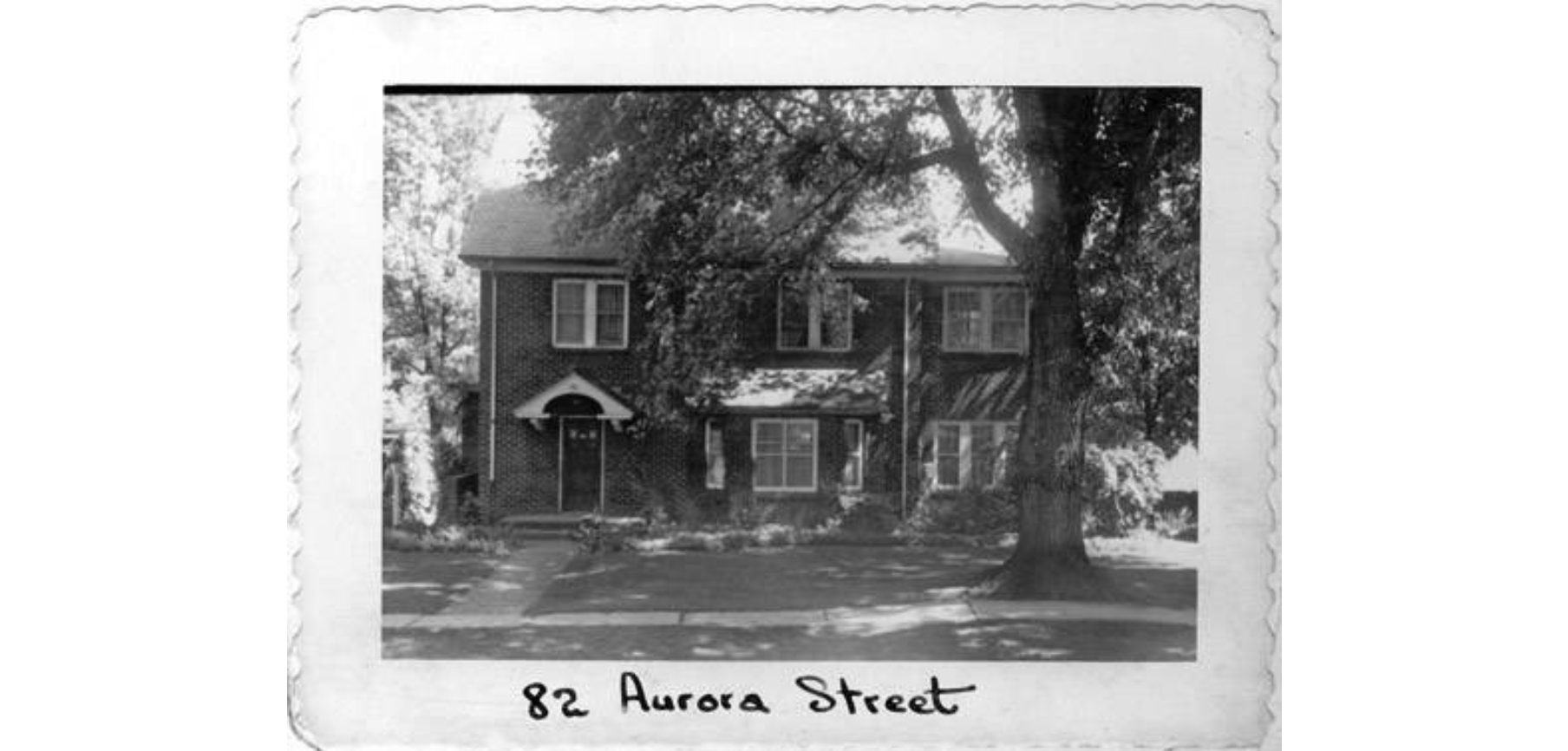 | This interesting 1920s brick home was once occupied by the family of Kenyon Stevenson (1895-1957). Mrs. Stevenson had extensive herbal gardens. The side porches, now enclosed, exemplify the Victorian obsession with ventilation and the need for good cross breezes. | Summit Memory | |
90 Aurora Street 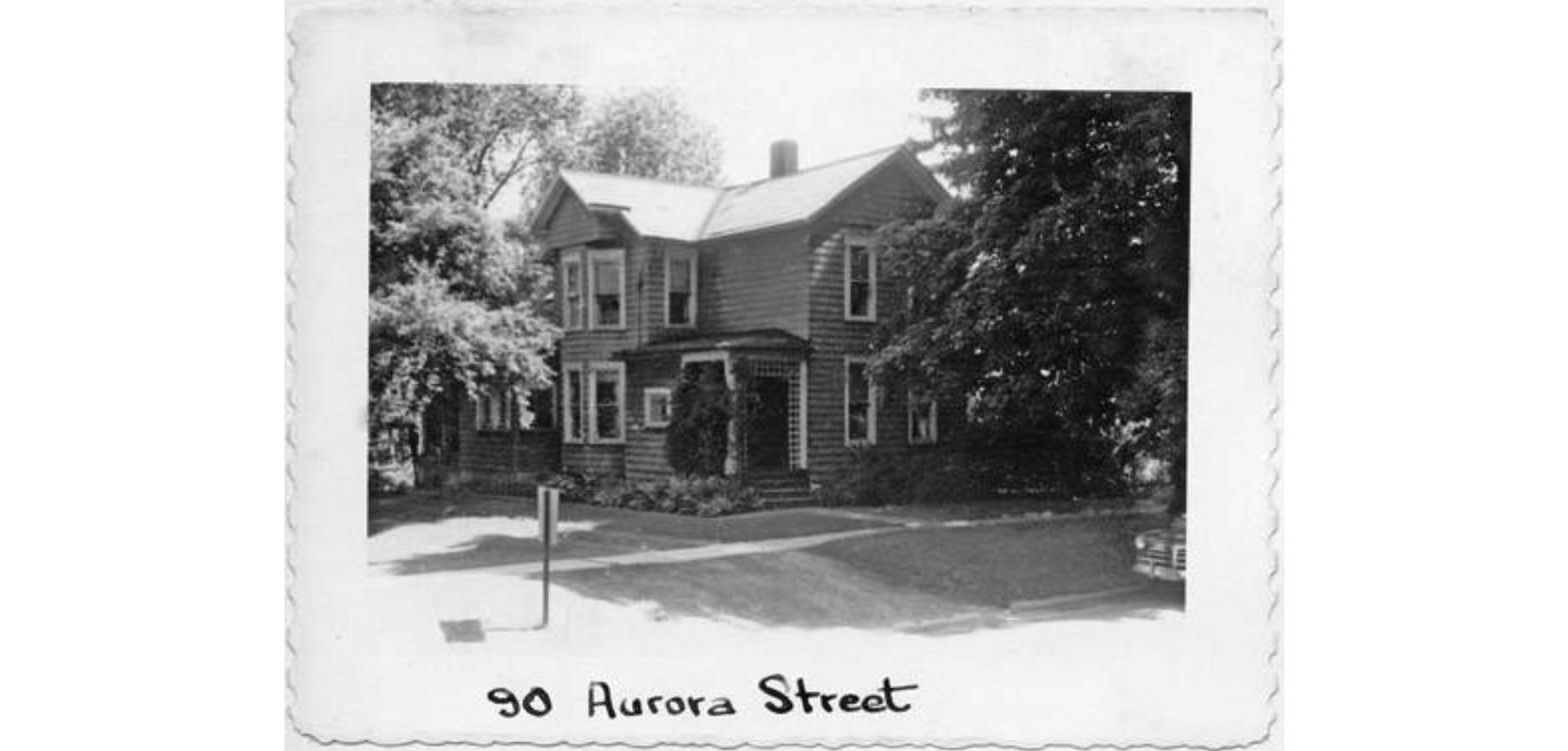 | Carpenter Ransom (1830-1912) and Mary Sanford (1832-1919) built two "nice old houses," 90 and 94 Aurora Street. They are no particular architectural style. The first, 90 Aurora, was built in 1887 and was once owned by the DeWitt Bentley (1850-1931) family. | Summit Memory | |
| 94 Aurora Street Ransom M. Sanford House 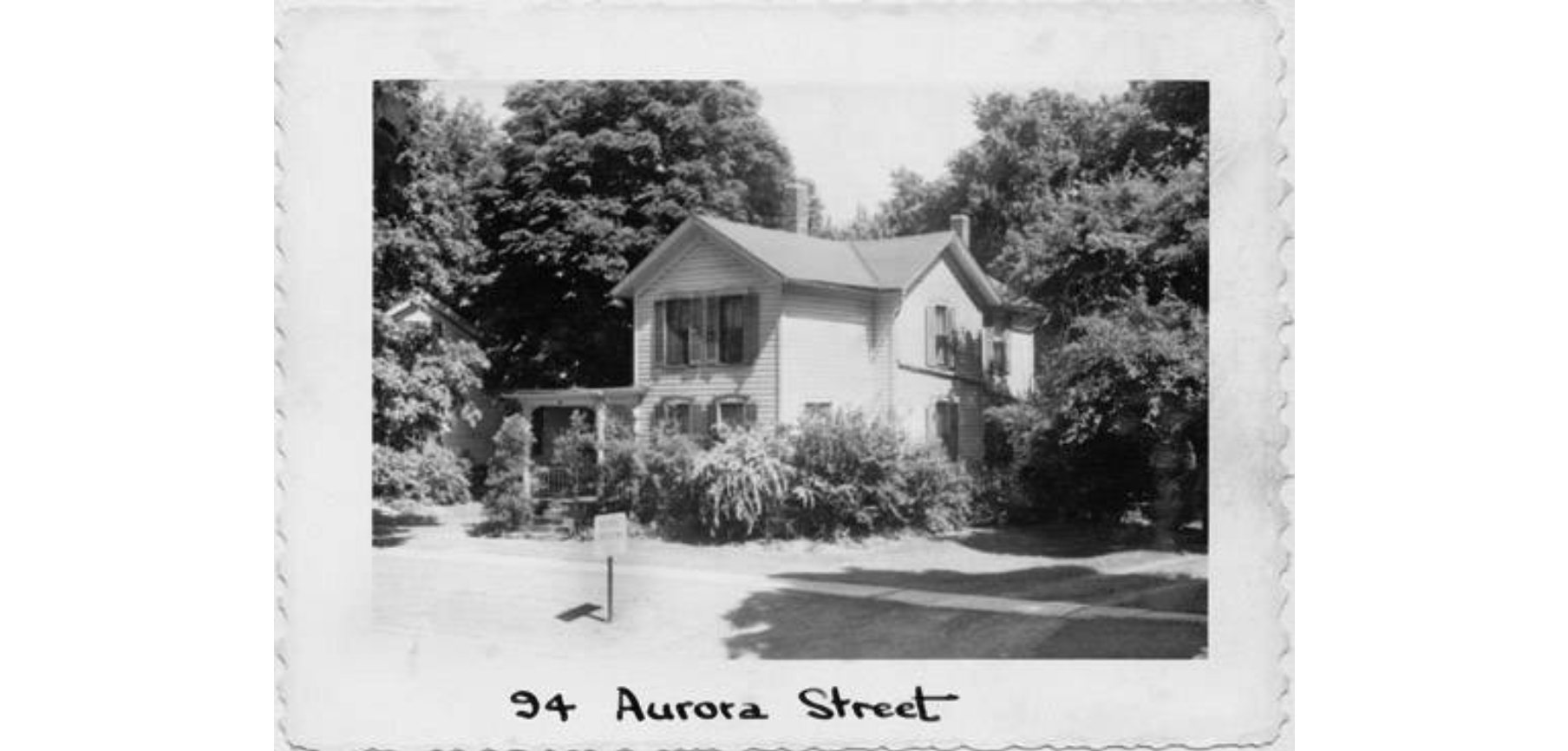 | View House Report | This two-story home with an inviting front porch was built in 1890 by Ransom Sanford (1830-1912) and was occupied by the Sanford family well into the 20th century. In 1911 Mary Harmon Sanford (1832-1919) survived an early-morning fire in this house because hers was one of the few homes with a telephone and she could summon help when her gas lamp exploded. | Hudson Heritage Association Summit Memory |
| 98 Aurora Street Sylvester and Julia Baldwin House 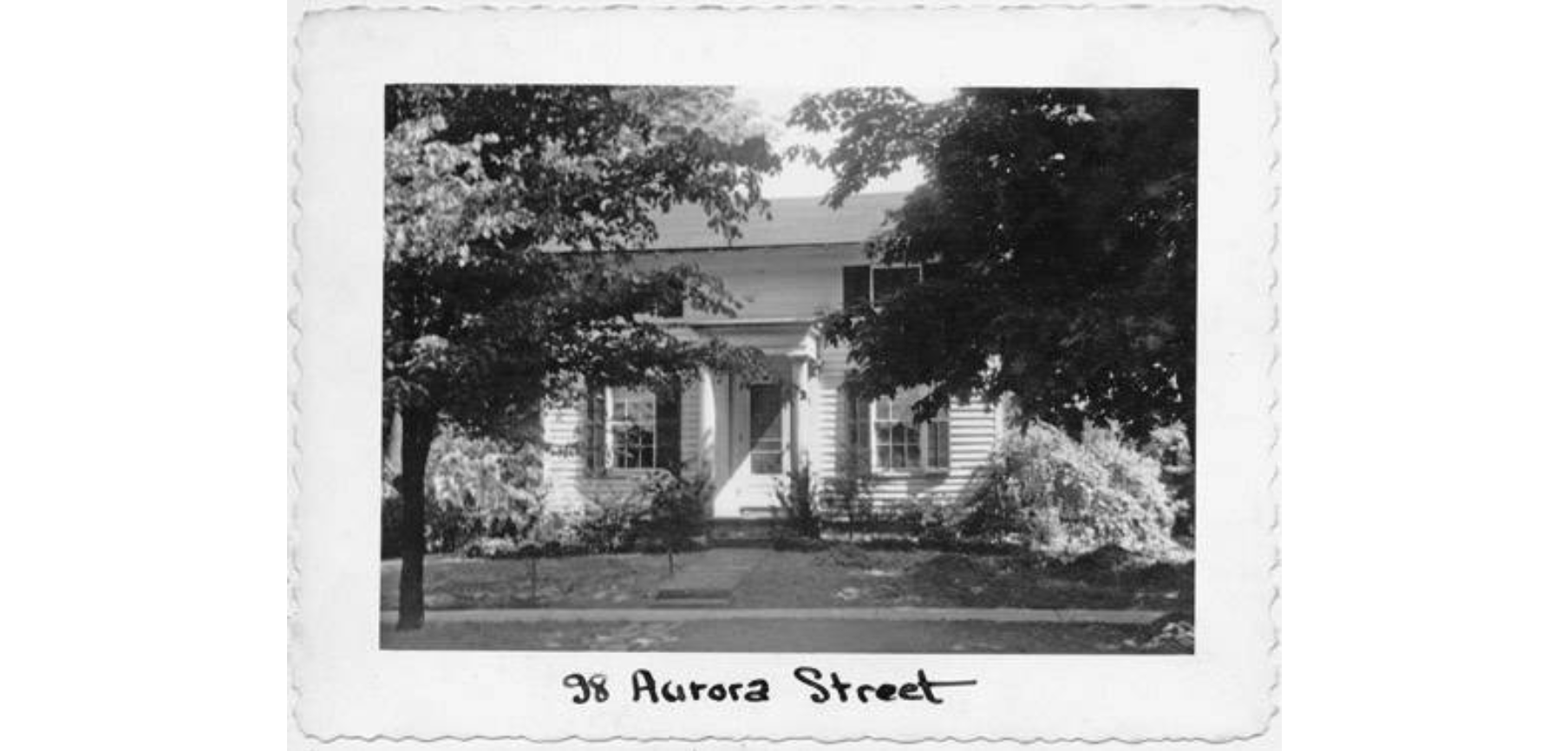 | View House Report | This home is the second on the site. Sylvester Baldwin (1792-1879) built the the first home, probably in 1846. A cobbler and church deacon, Sylvester was known locally as "Deacon Shoemaker." The home burned in 1858. | Hudson Heritage Association Summit Memory |
102 Aurora Street 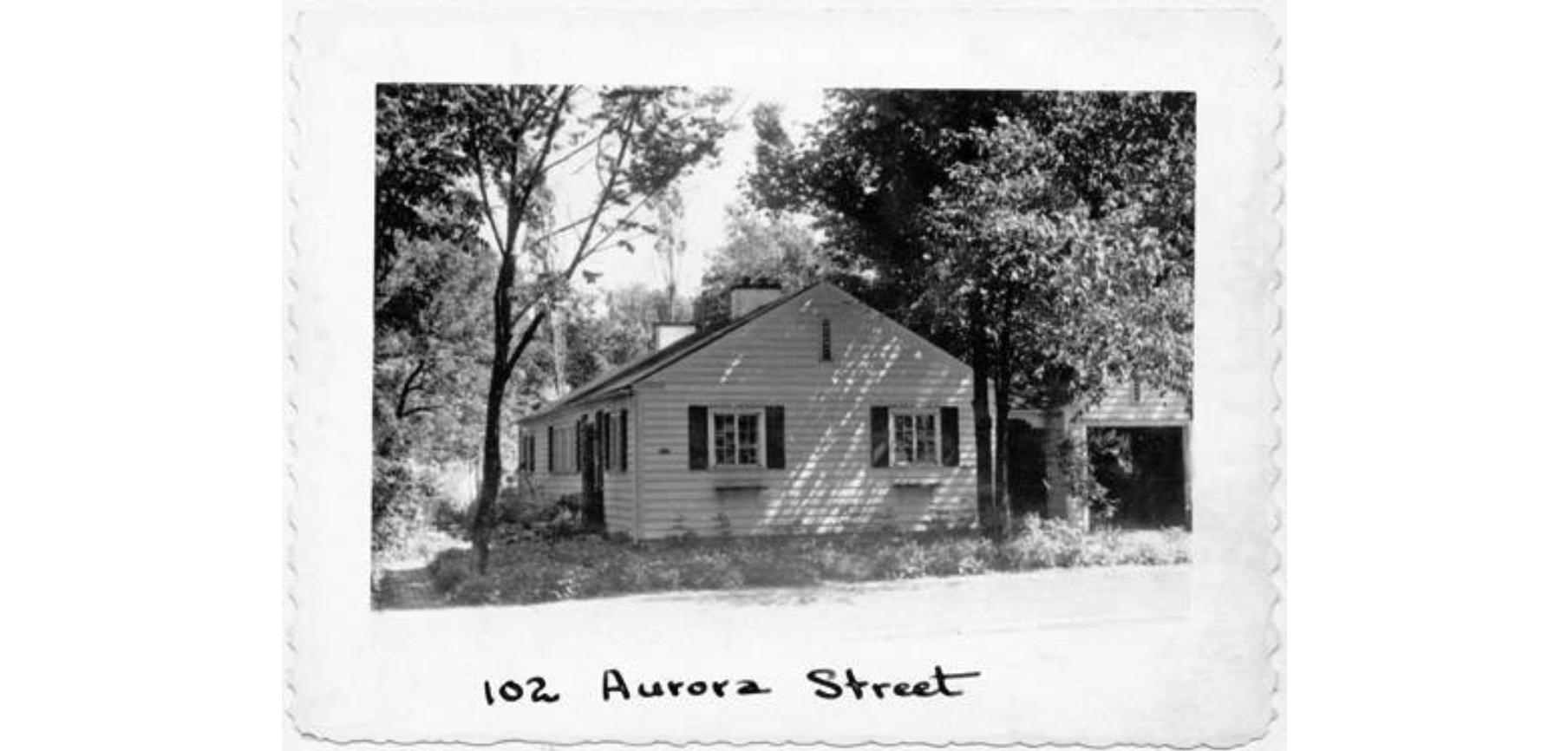 | Once this was home to Bessie McFarlin Fitch (1878-1949), wife of Edward Fitch (1873-1924). Her daughter, Julianna Fitch Waring (1908-1986) served overseas in the China-India-Burma theater with the Red Cross during World War II. Later in life she became the much-loved librarian of Western Reserve Academy. This house looks much different today. It also begs for more research to determine the construction date. | Summit Memory | |
| 106 Aurora Street Harlow Davis House 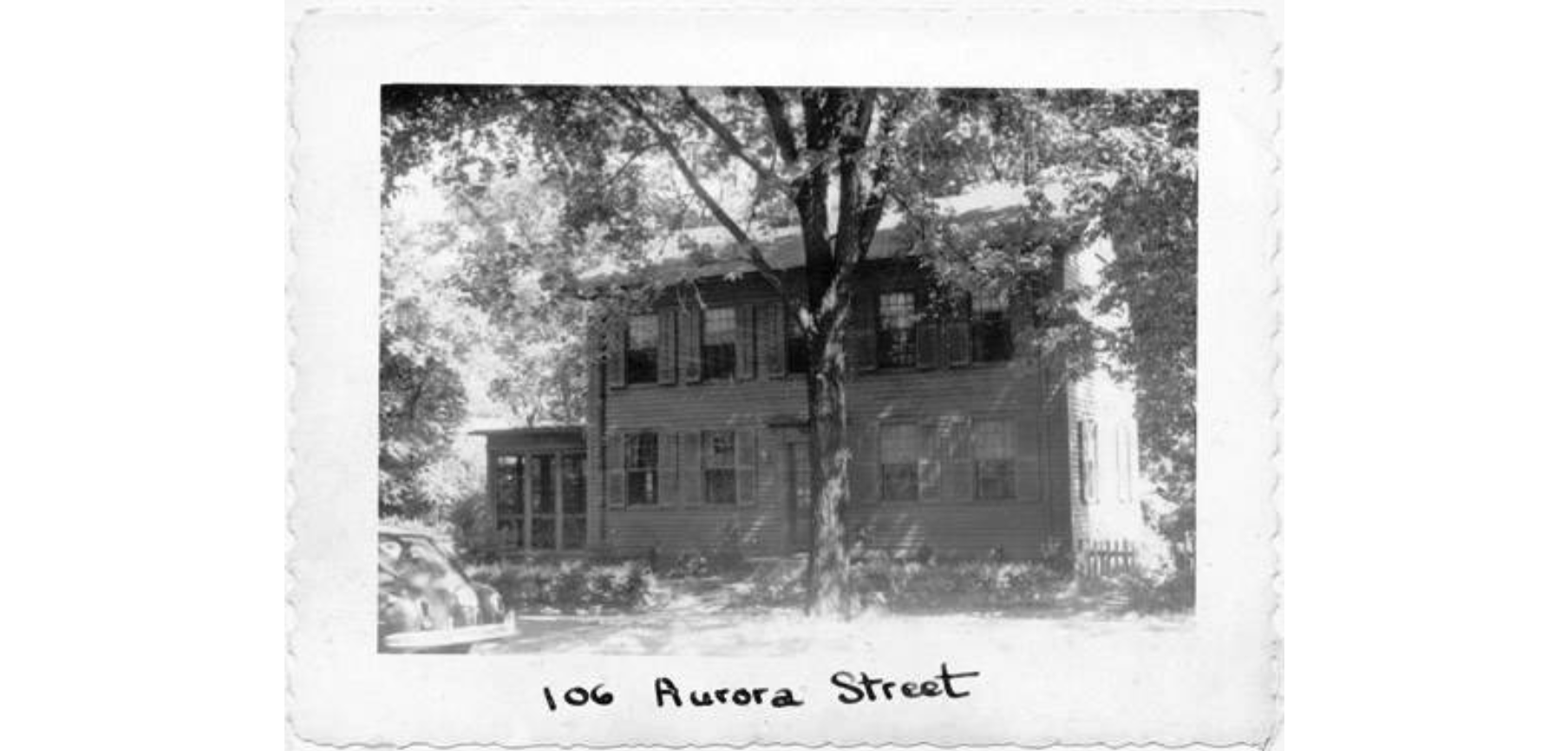 | View House Report | This Federal-style house was built in 1830 by Harlow Davis (1795-1843), a carpenter-joiner. It was the home of Miss Julia Mills (1820-1912), the Thwaite family, and the Tatum family. | Hudson Heritage Association Summit Memory |
| 120 Aurora Street George Kilbourn House 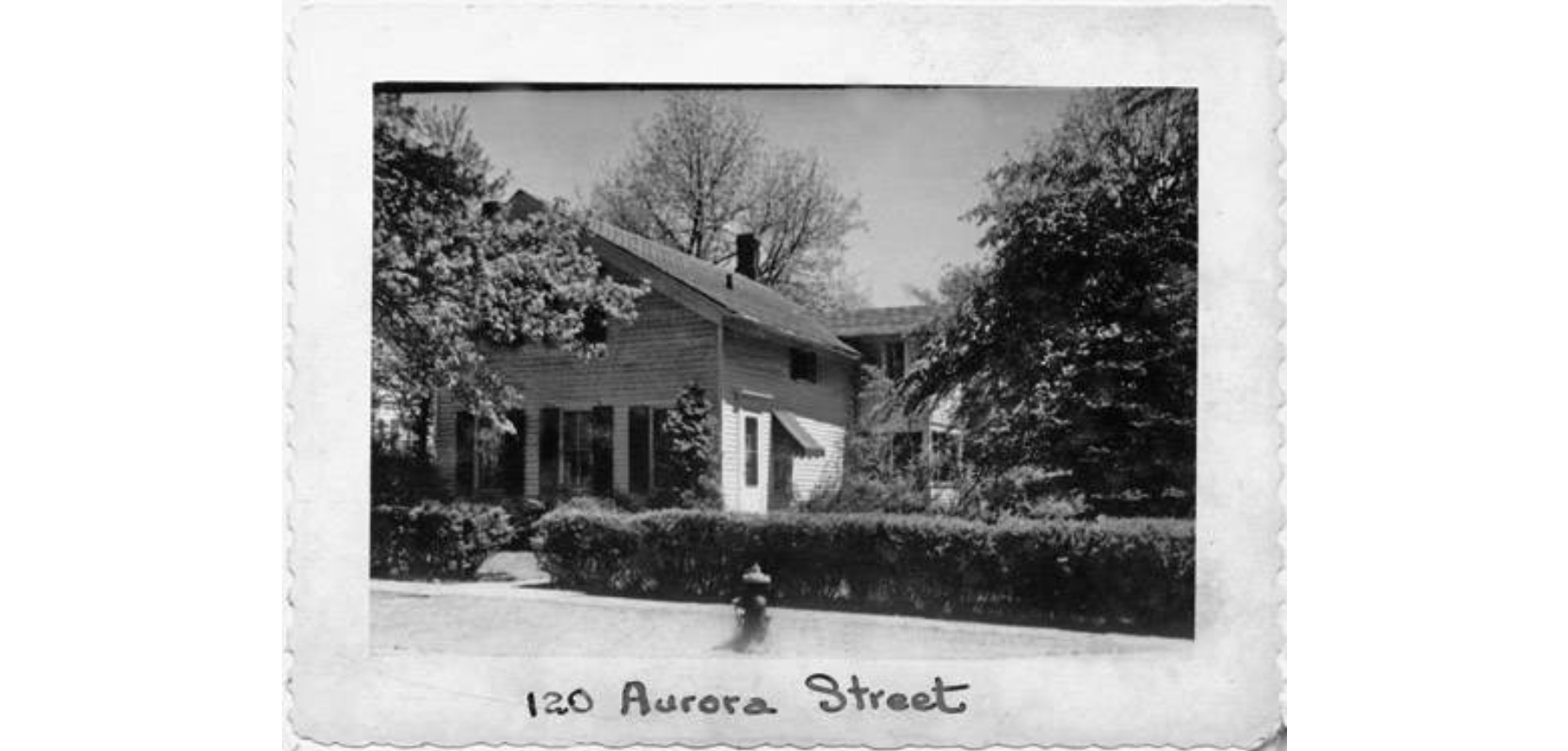 | View House Report | The original owner of this house was George Kilbourne (1769-1866), a tanner who arrived in Hudson in 1800. According to tax records of 1869, the house was moved 100 feet back from the corner lot. Thomas Crisp (1825-1887), a builder and contractor, owned the house in 1871. He moved the house back to the corner and refurbished the building. The bay windows probably date to his ownership. | Hudson Heritage Association Summit Memory |
126 Aurora Street 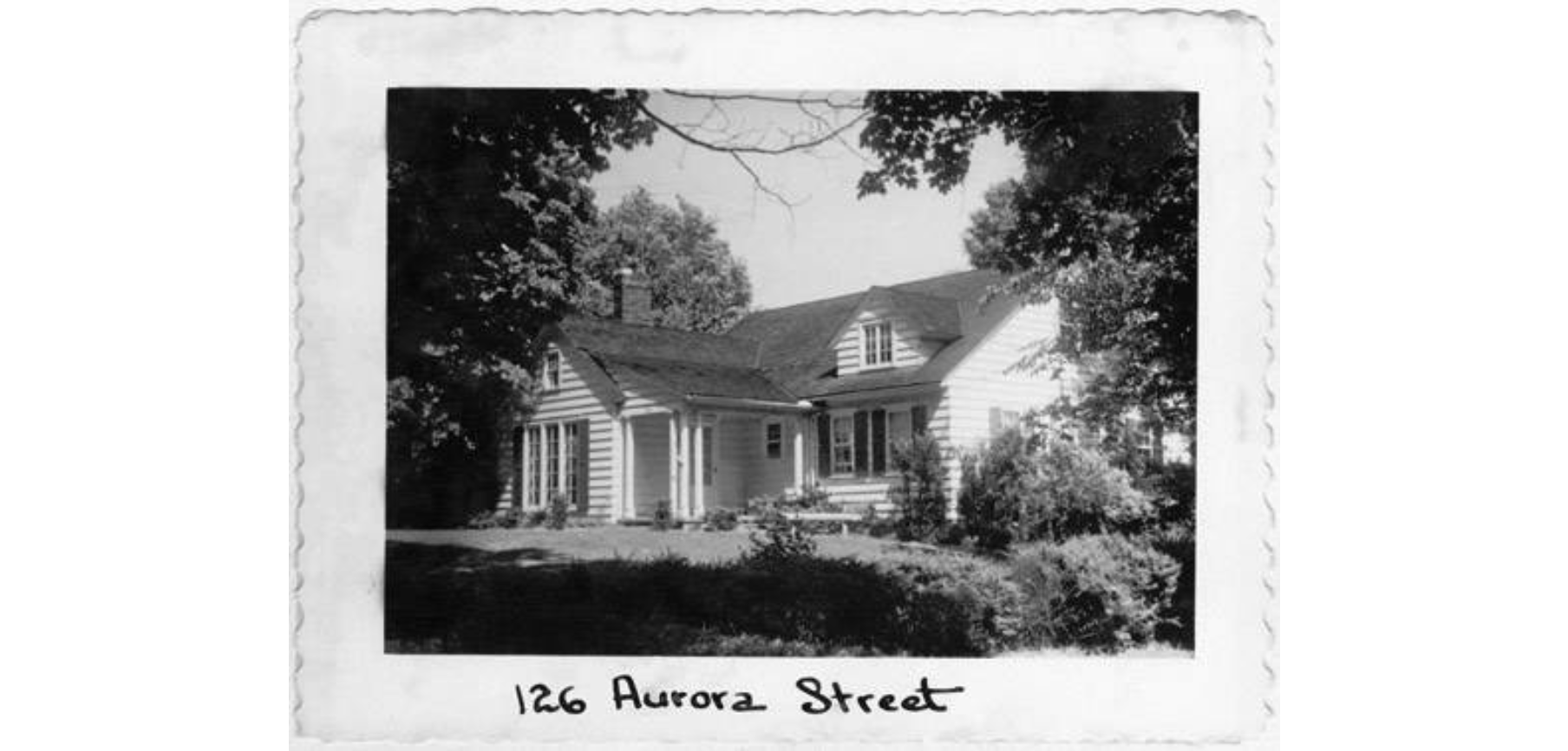 | Western Reserve Academy graduate and greatly loved community member, golfer and rotarian Wallace Walker (1917-1974) resided here for many years. | Summit Memory | |
| 129 Aurora Street Crisp-Raymond House 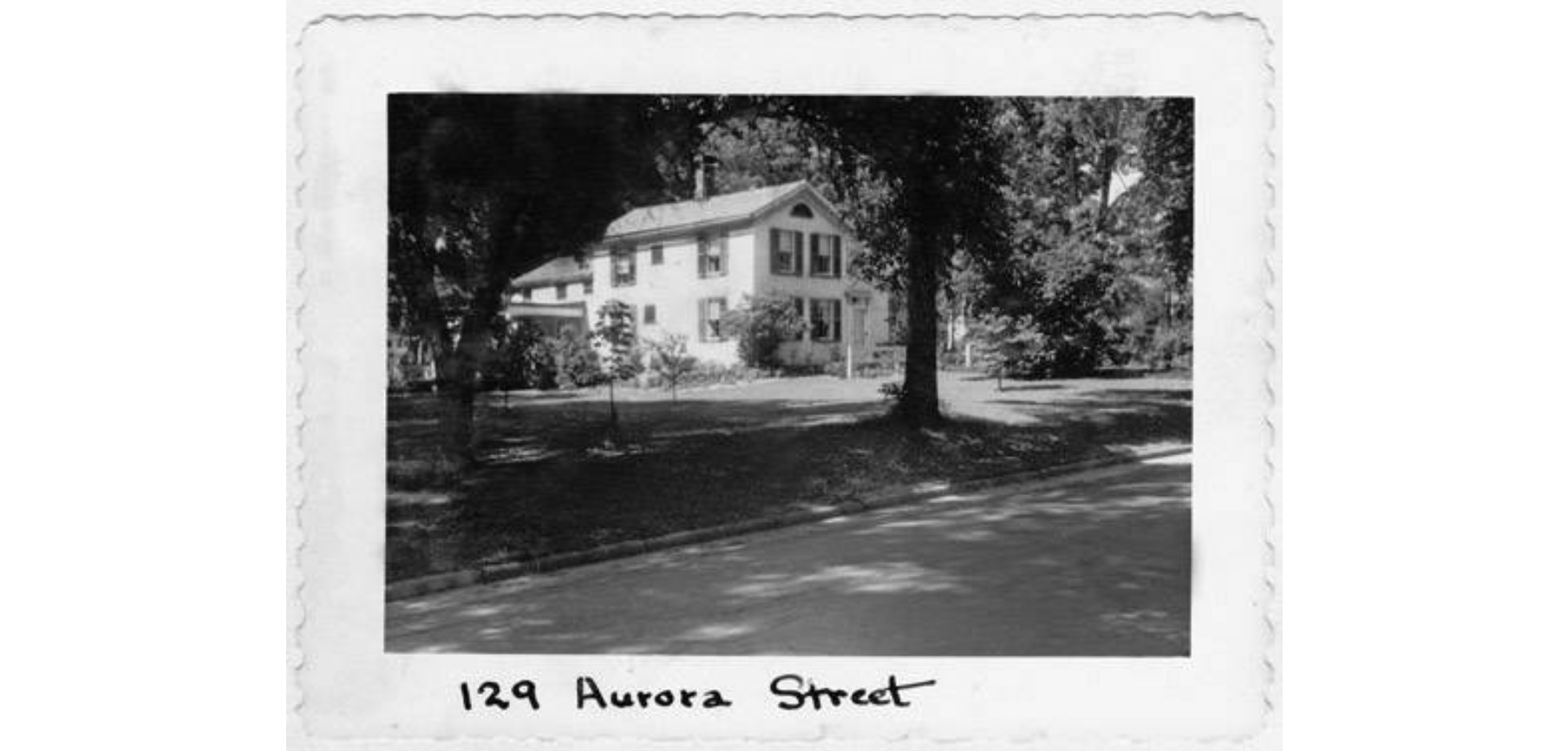 | View House Report | This 1827 Federal-style house was built on land owned by the Rev. William Hanford (1787-1861), the first Congregational minister in Hudson. The home was built for his sister, Mary Raymond (b. 1782). The house was used as a school for young women in 1827 by Mrs. Rufus (Sarah) Nutting (1822-1914). Western Reserve College bought the house from Mrs. Raymond in 1837 and used it as a residence for professors and others. The Crisp family gained possession in the mid 1860s and generations later returned the structure to Western Reserve Academy. | Hudson Heritage Association Summit Memory |
| 130 Aurora Street Patty Alling House  | View House Report | This house, originally built in 1832, was thoroughly remodeled in 1925 by architect John W.C. Corbusier (1878-1928) and moved to the rear of the lot. In 1925, the house received new windows, new siding and a new foundation. The interior staircase is adapted from plate 43 of "American Builder's Companion" of 1806. Early Hudson deeds refer to this building as the house of the "Widow Stow", a later owner. | Hudson Heritage Association Summit Memory |
| 134 Aurora Street Gaylord-McCauley House 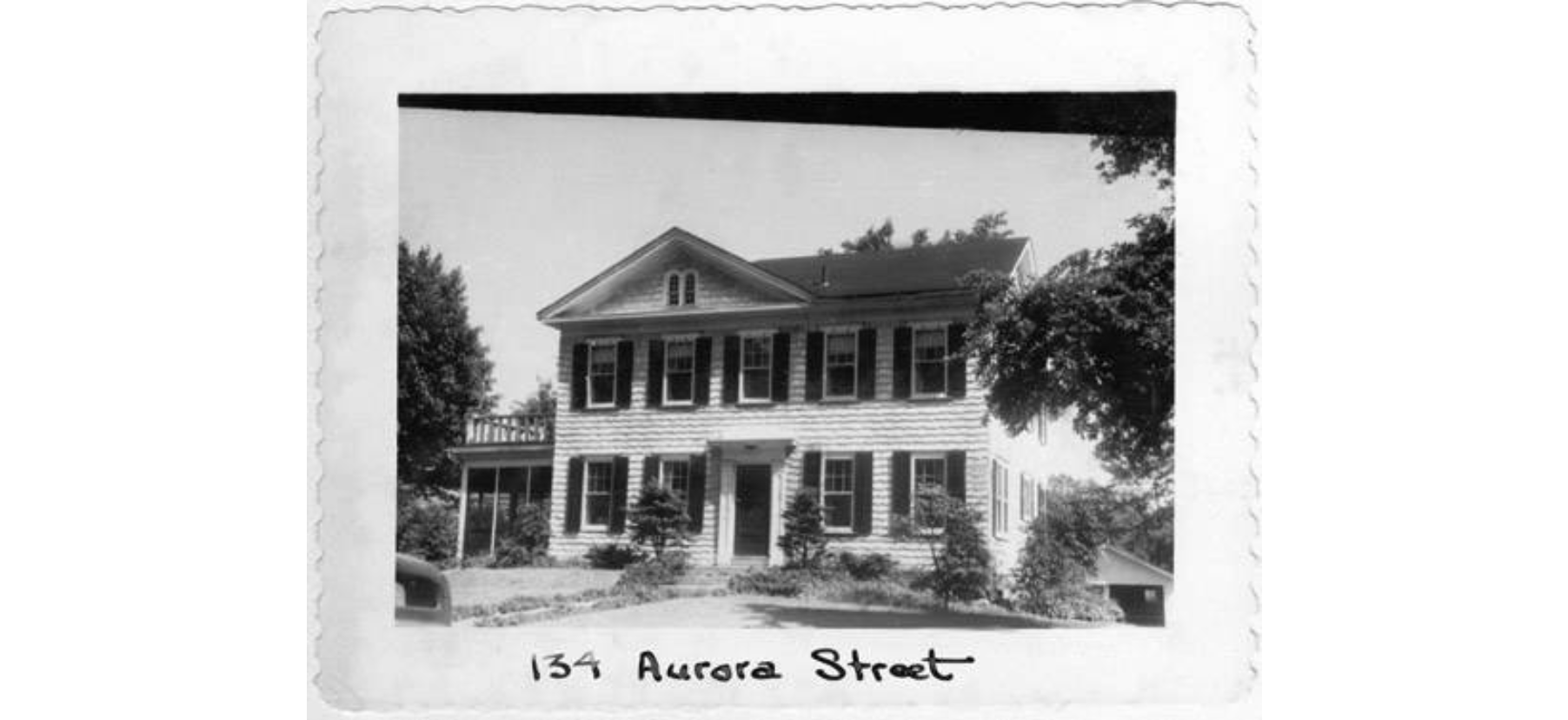 | View House Report | This Greek Revival house is of Balloon Frame construction, very rare at this early date in Ohio. This house is similar to two other houses on the block at 175 Aurora and 183 Aurora. The home and land were owned by Daniel Gaylord (1794-1858), son of Revolutionary War veteran Joel Gaylord (1753-1827). Weldon Case (1921-1999), CEO of Alltel, grew up in this house. | Hudson Heritage Association Summit Memory |
135 Aurora Street 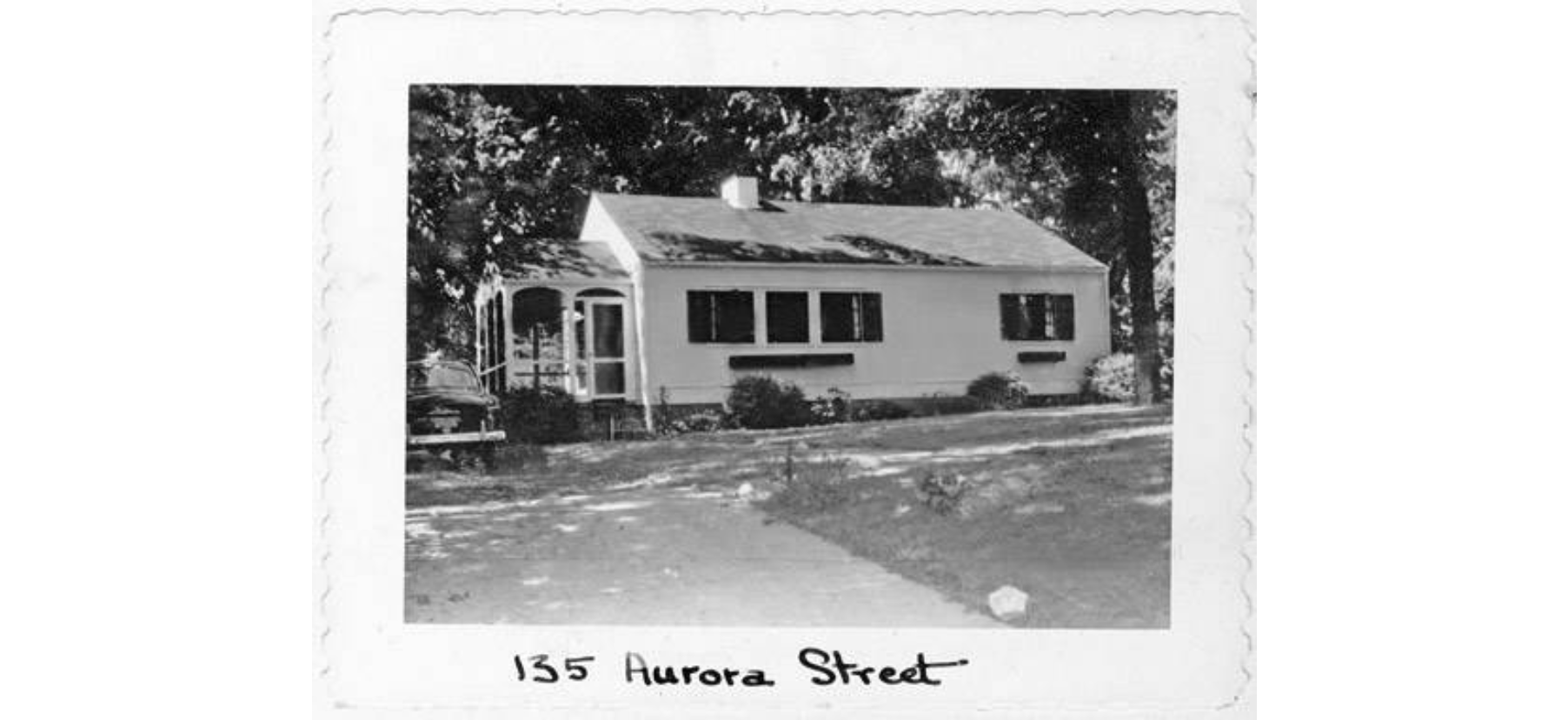 | This was once the home of the Tener family. It was also owned by Theodore W. Case (b. 1928). | Summit Memory | |
139 Aurora Street 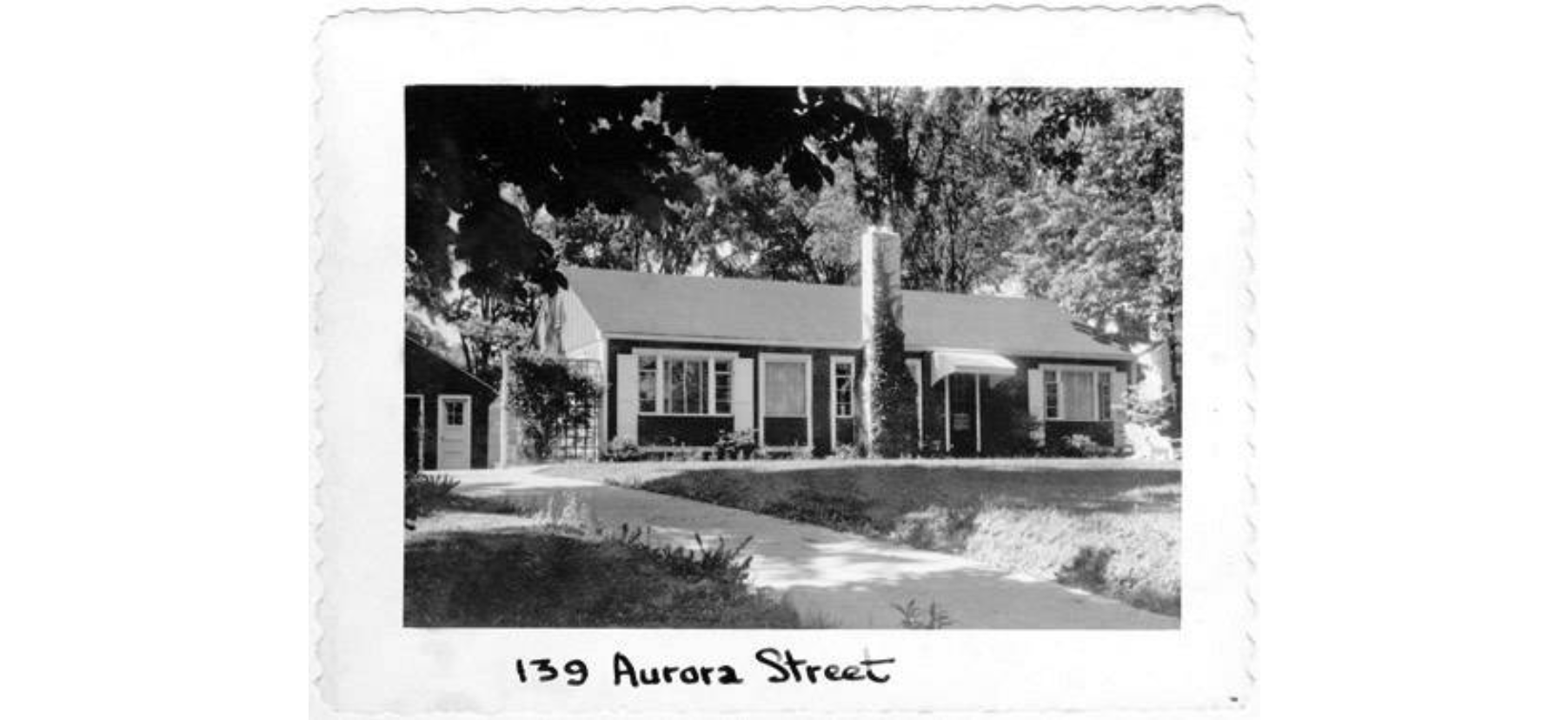 | This gabled ranch was once home to the town undertaker, Burt Doncaster (1865-1931), whose family emigrated from Lincolnshire, England. In the 1920s, chemist R.K. White (1913-1970) occupied the dwelling. | Summit Memory | |
| 145 Aurora Street Rev. William Hanford House 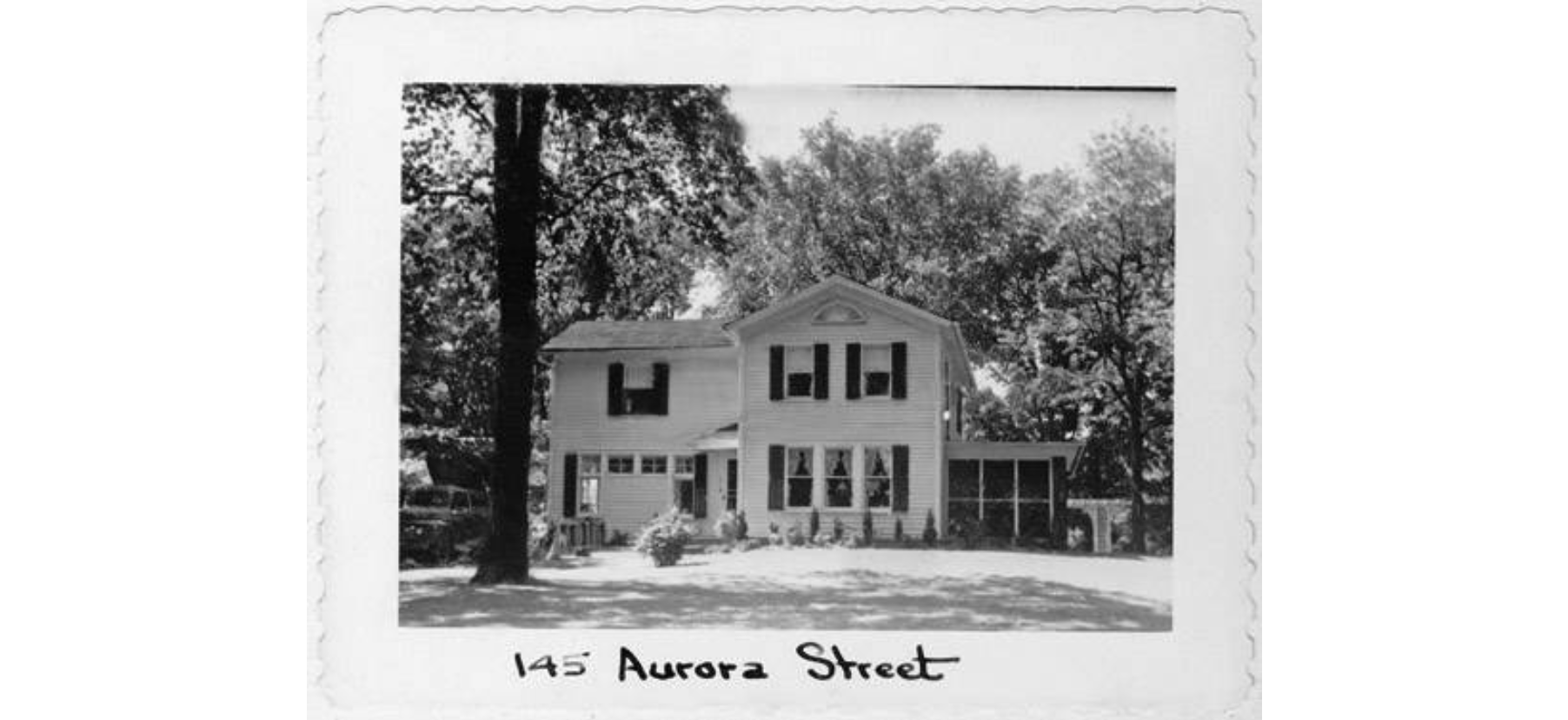 | View House Report | There is some evidence that this Federal-style 1825 structure was originally built around a log cabin. Rev. William Hanford (1787-1861), first pastor of the Congregational Church and first secretary of the Board of Trustees of Western Reserve College, built and lived in this home. The home was owned later by the first pastor of the Western Reserve College Church Professor Beriah Green (1794-1878), a staunch abolitionist. Green went on to be the President of Oneida Institute in New York. Later owners include Lyman M. Hall (1808-1897), editor of the Hudson newspaper, "The Ohio Observer" and Emily Metcalf (1831-1915), who ran a local school for young women; Metcalf lived here from 1887 until 1915. | Hudson Heritage Association Summit Memory |
| 156 Aurora Street Margaret and Mary Kippen House 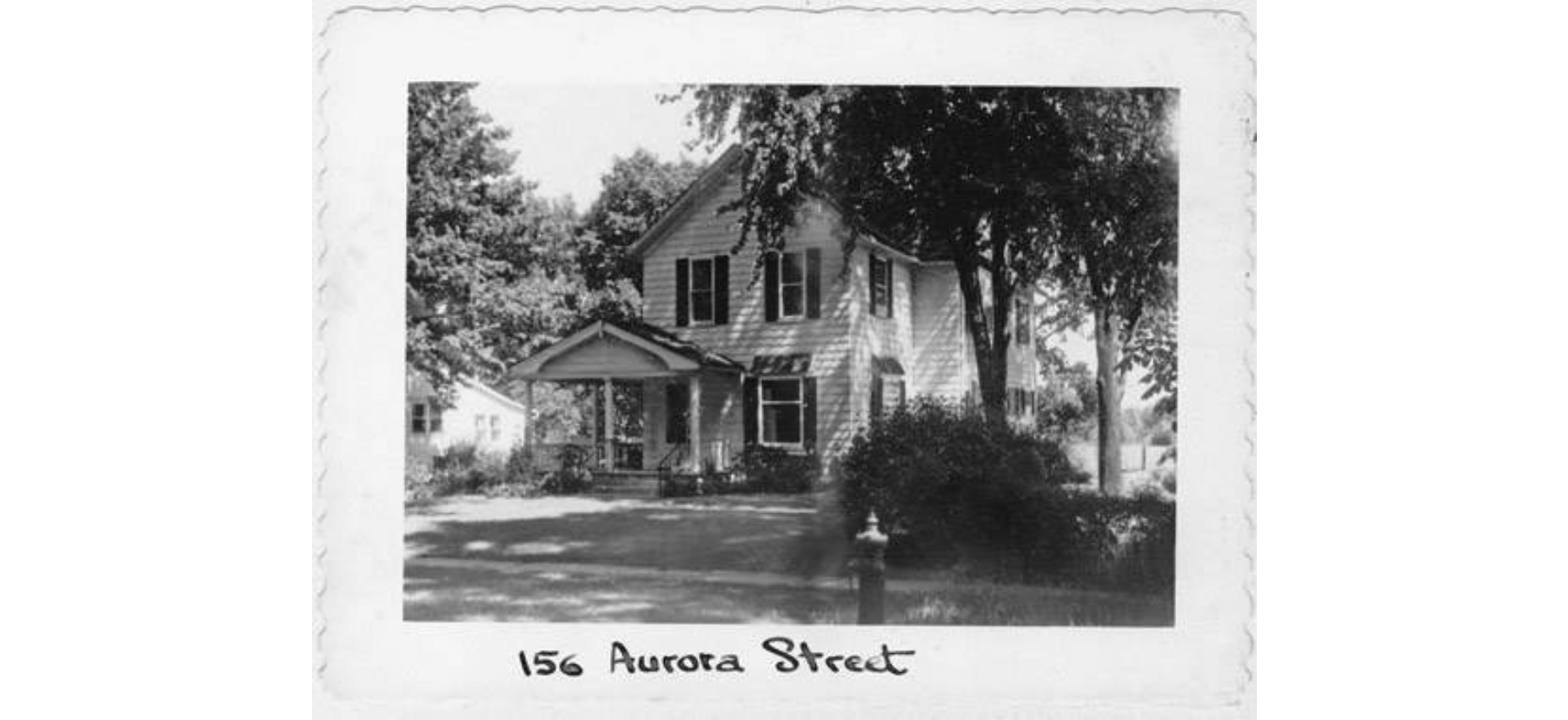 | View House Report | This Queen Anne-style house originally stood at the corner of Chapel and College streets. It was moved to 156 Aurora Street in 1921 by the builders and original owners, Scottish immigrant sisters Margaret (1860-1937) and Mary Kippen Gilbert (1866-1950) who built the house. | Hudson Heritage Association Summit Memory |
160 Aurora Street 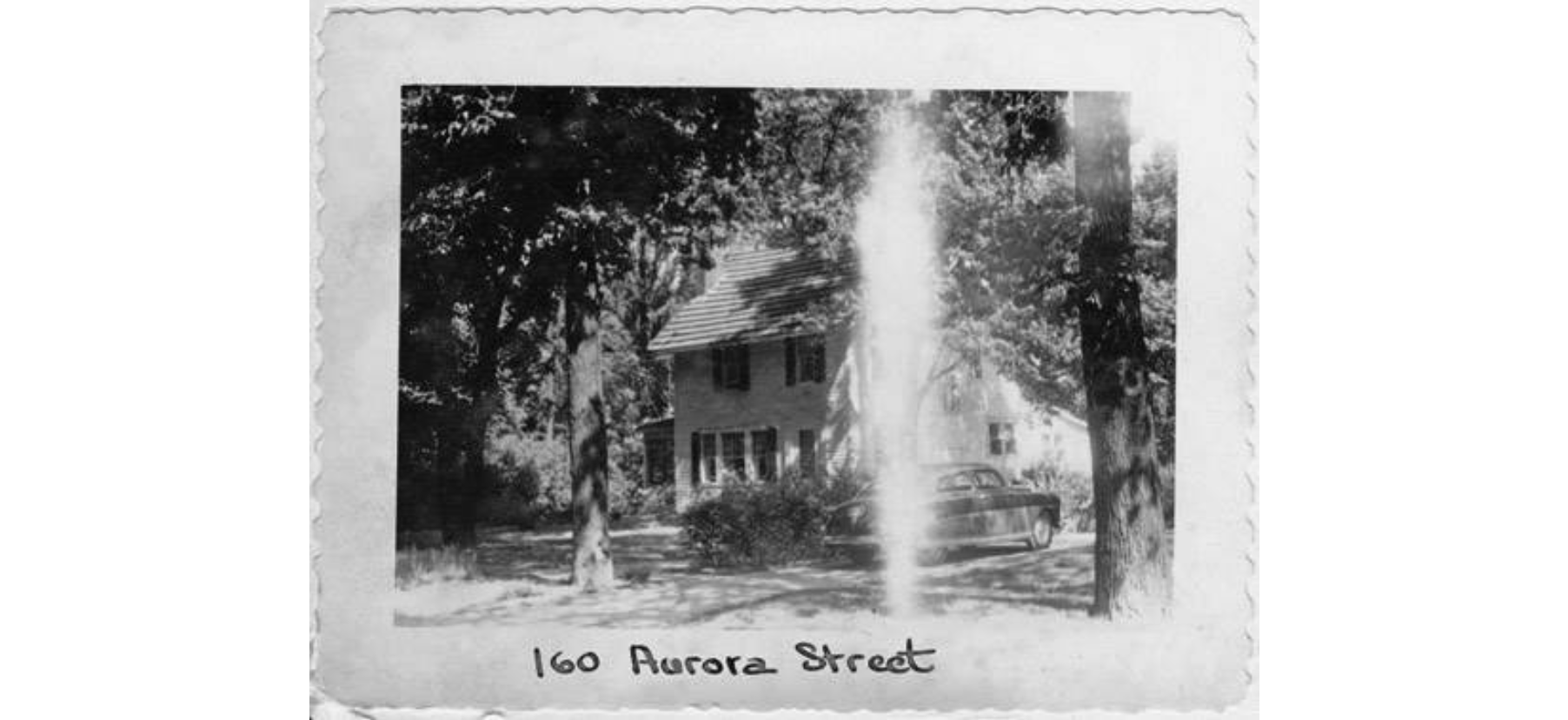 | When Weldon Wood (1866-1936) lived here in 1910, he was among the first telephone company executives to bury phone cables underground rather than hang them on poles. His grandson, Weldon Case (1921-1999), would go on to be CEO of Alltel. | Summit Memory | |
| 161 Aurora Street Seymour Straight House 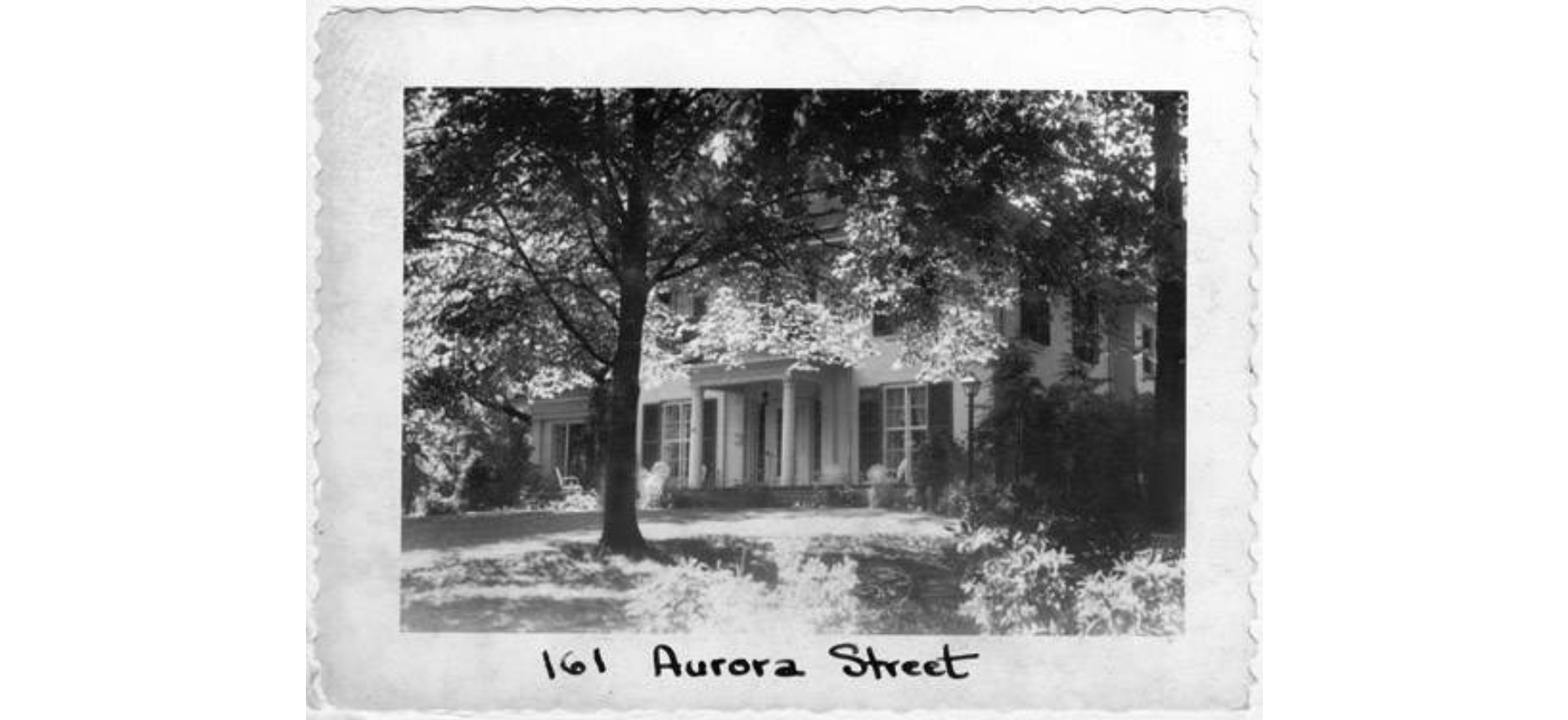 | View House Report | This brick Greek Revival house was built during the prosperity of the 1850s. Seymour Straight (1816-1896), a wealthy cheese manufacturer, purchased the house and added full-length pillars to the front facade. Straight's son, Wellington B. Straight (1842-1928) would serve as a captain in the cavalry during the Civil War. James W. Ellsworth (1849-1925) bought the house in 1908. He removed the pillars and subsequently added a red tile roof. Longtime resident W.D. Shilts (1881-1971) also occupied this graceful home at one time. | Hudson Heritage Association Summit Memory |
169 Aurora Street 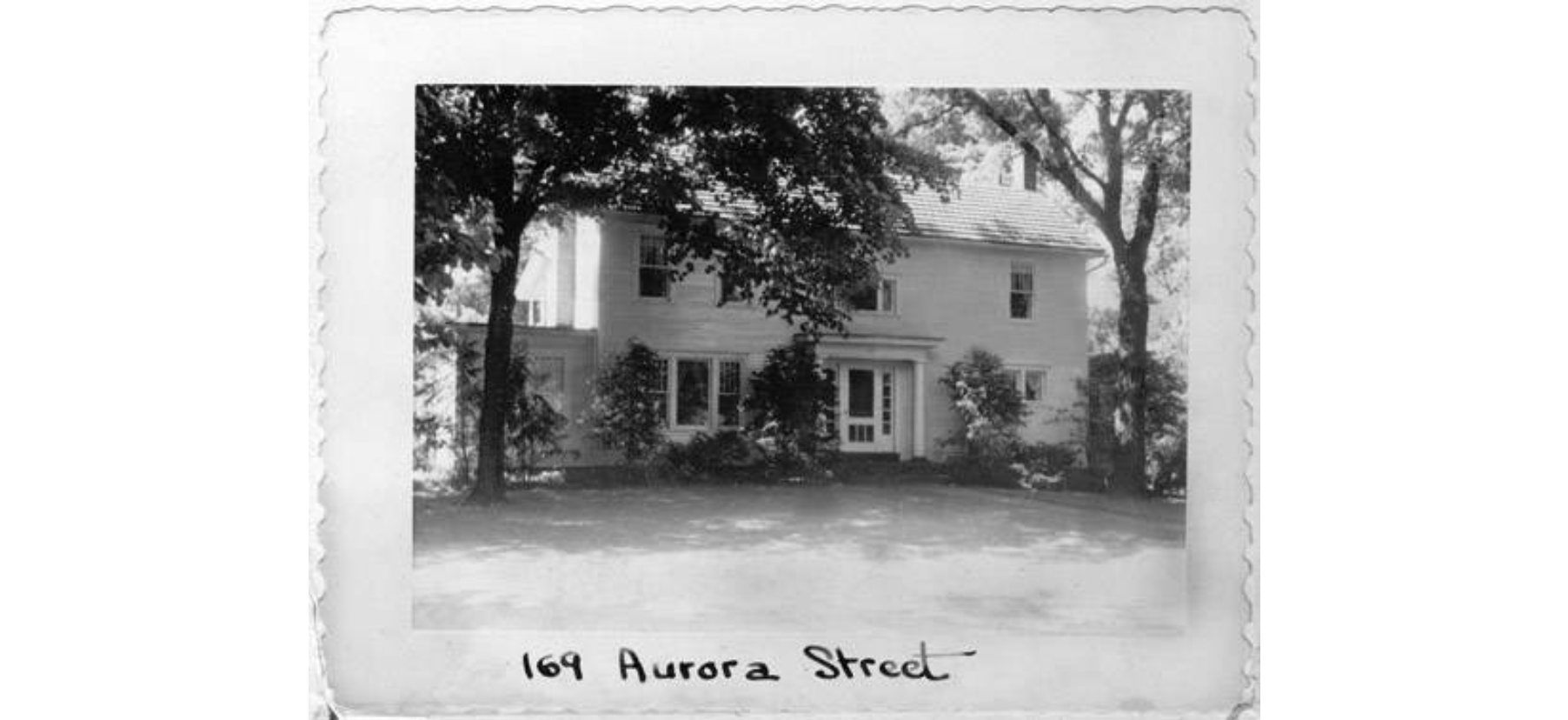 | This Colonial Revival roughly dates to 1915 and is noted for the Palladian window over the entryway and the triple windows on the front facade. | Summit Memory | |
| 172 Aurora Street I.T. Frary House 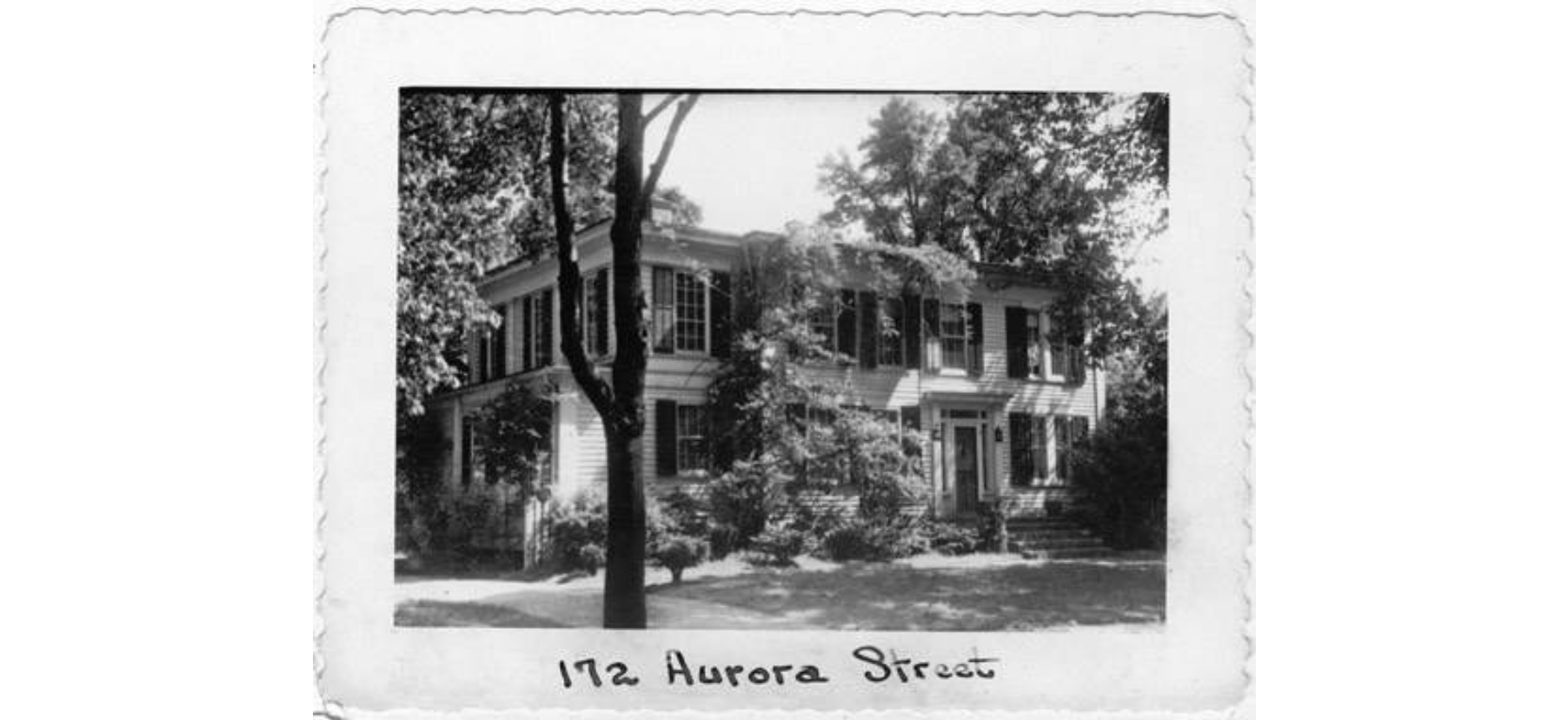 | View House Report | This house was probably built circa 1850 and was moved to its present location in 1877. It is thought to have originally stood at the site of Hayden Hall at 88 College Street. I.T. Frary (1874-1965), eminent historian and author of "Early Homes of Ohio," occupied the house in the early 1900s and renovated it at that time. There is documentation that an earlier house was on this site. | Hudson Heritage Association Summit Memory |
| 175 Aurora Street Pierpont Edwards House 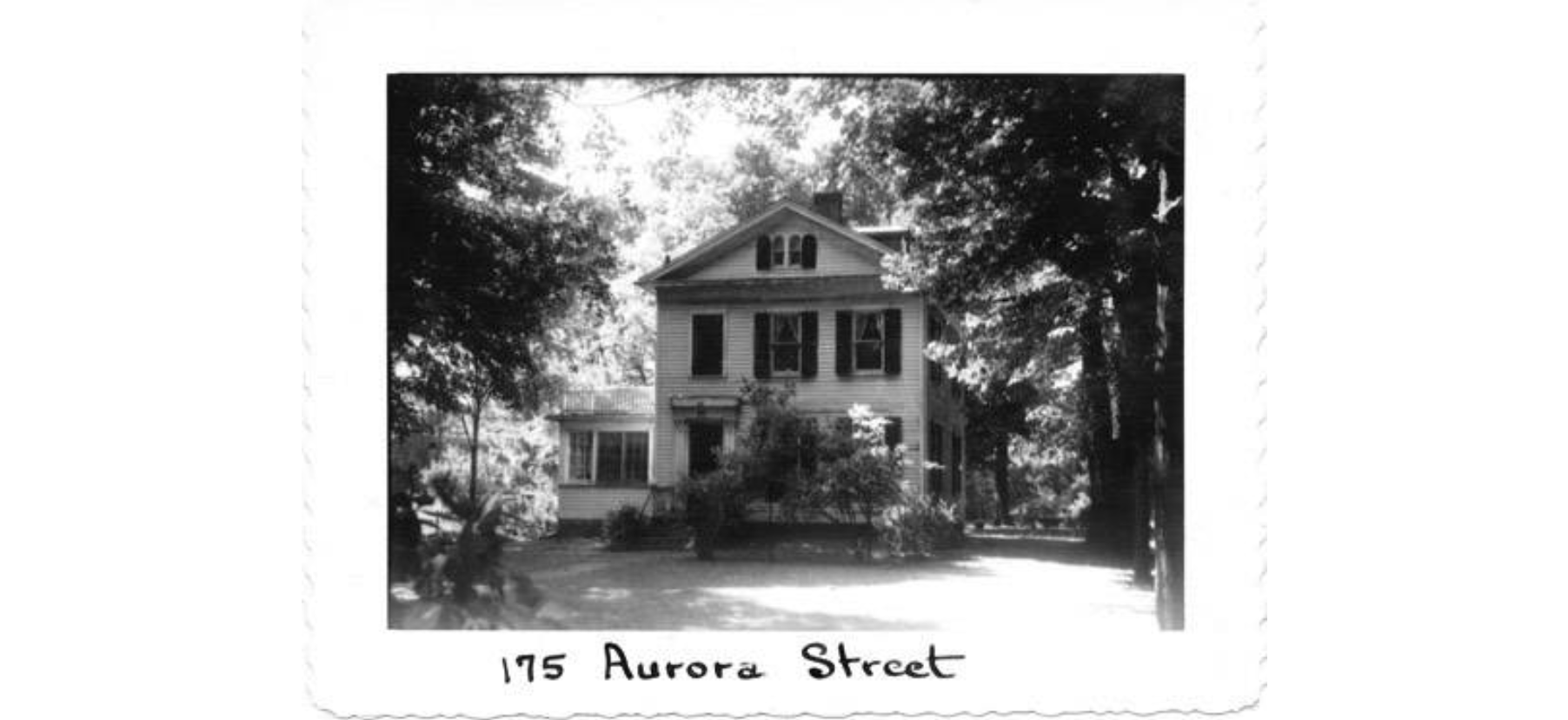 | View House Report | Known as the Pierpont Edwards House, this is one of three basically identical houses in the Aurora Street area. Henry Noble Day (1808-1890), professor and developer and proponent of the Clinton Air railroad, most likely built this home as an investment property. It was built in the early 1850s and is Greek Revival in style. Irish spinster sisters Ella (1863-1952) and Anna (1868-1938) Maloney also made this their residence for many years. | Hudson Heritage Association Summit Memory |
180 Aurora Street 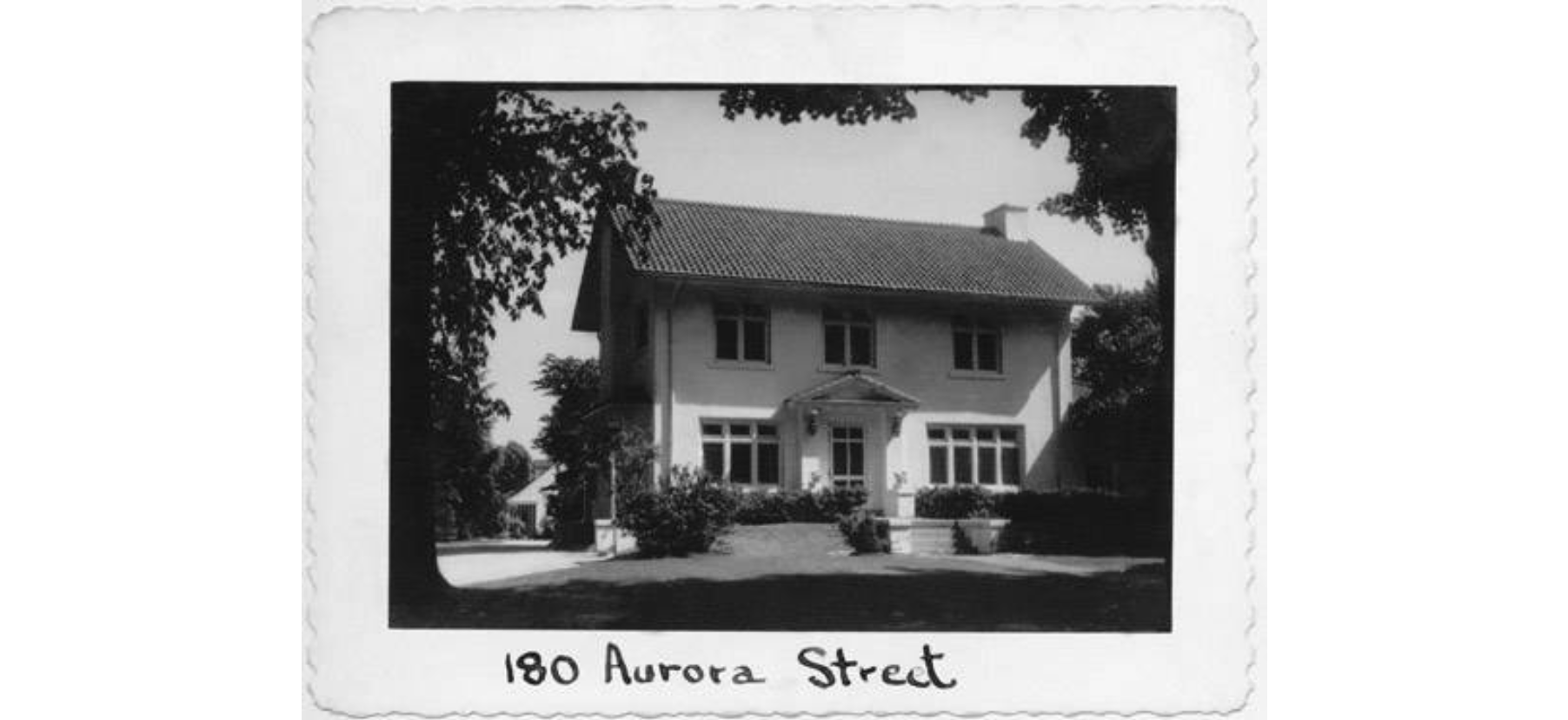 | This Mediterranean-style home was built in the early 1900s. It previously served as a parsonage for the First Congregational Church. Later it was home to physician Henry J. Herrick (1867-1932), who was trained at the Great Ormond Hospital in London, England, and later served as health officer of Hudson, councilman and charter member of the Hudson Library & Historical Society. | Summit Memory | |
| 183 Aurora Street John W. Smith House 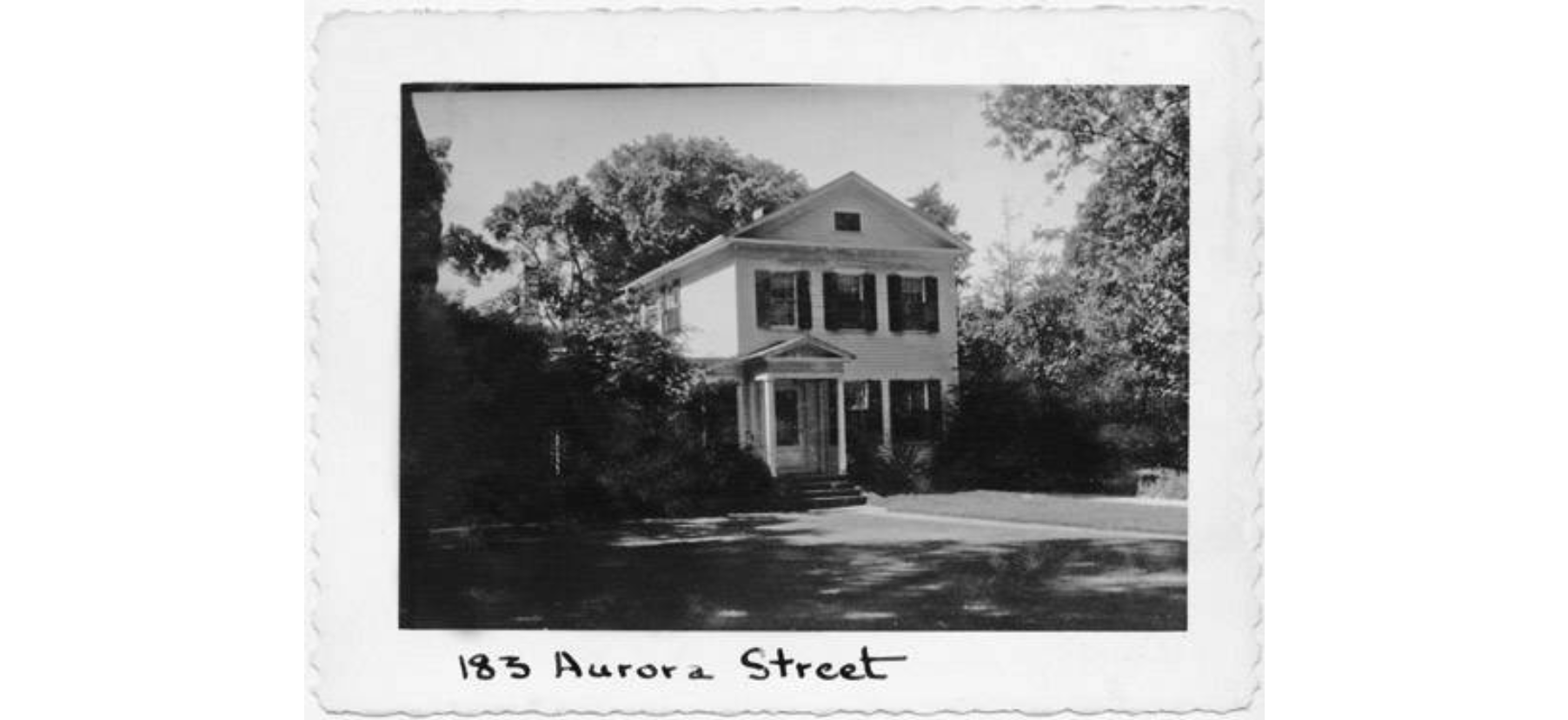 | View House Report | The Greek Revival 1854-built home called the Smith House was a part of promoter and developer Henry Noble Day's (1808-1890) newly acquired large tract of land for a planned affordable housing development where railroad workers could live. Smith was a partner of Henry Noble Day in the era of railroad expansion during the 1850s. The random-width chestnut flooring in the house has been preserved, as has the original trim, windows, mantels and staircase. The original barn has been converted to a garage. The basic structure was duplicated at numbers 134 and 175 Aurora Street. Niece of John Brown (1800-1859) Lucy Brown Clark (1850-1934) once occupied this residence. | Hudson Heritage Association Summit Memory |
| 189 Aurora Street Porter-Gaylord House 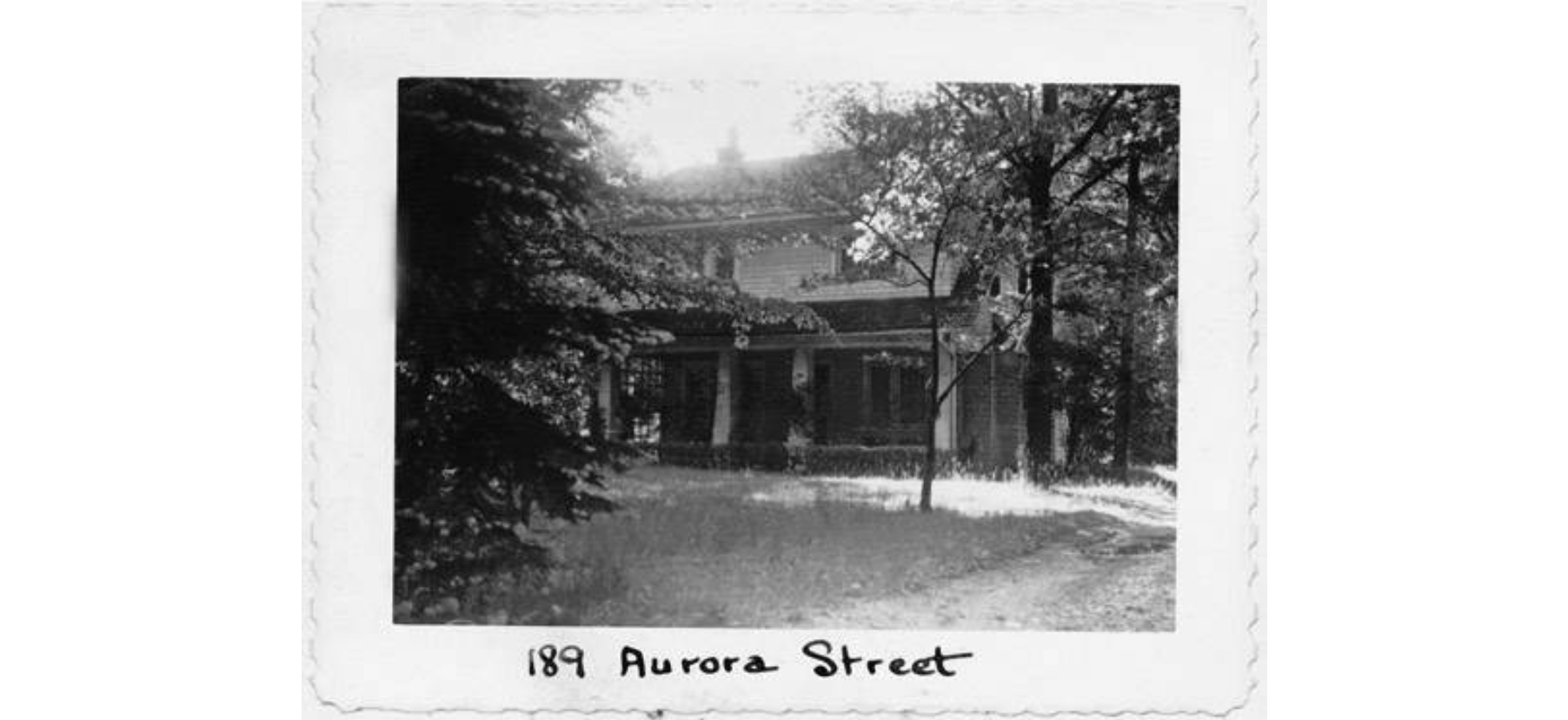 | View House Report | This 1833 house was once home to Caroline Ellsworth Blackburn (1869-1950), Western Reserve Academy graduate, reporter and advocate of wooden sidewalks. Later the house was moved for expansion of the Congregational Church. It now resides at 189 Aurora. | Hudson Heritage Association Summit Memory |
190 Aurora Street 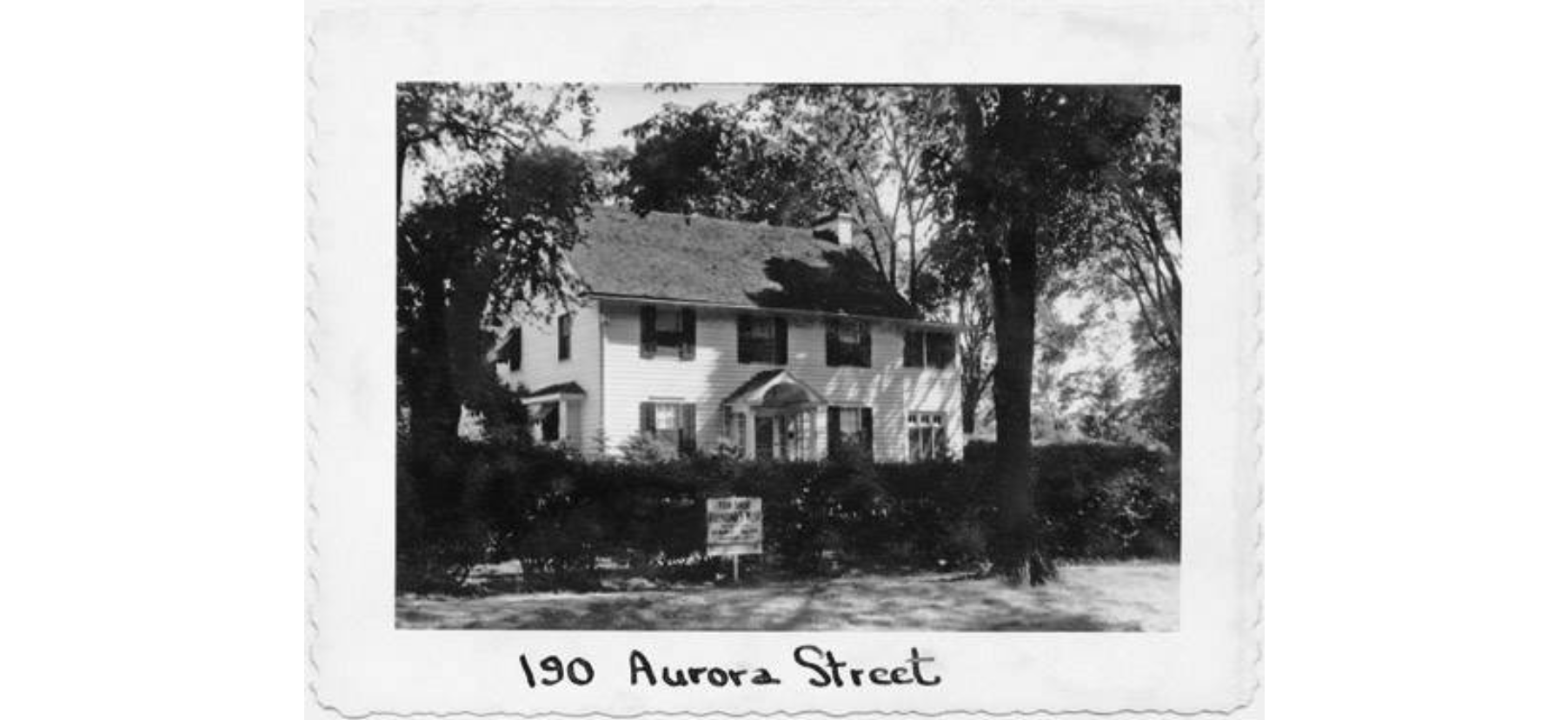 | This colonial with probable addition was once home to B.F. Goodrich's general counsel, J. Lee McKnight (1885-1941) and family. It is thought this house was built in 1919. | Summit Memory | |
194 Aurora Street 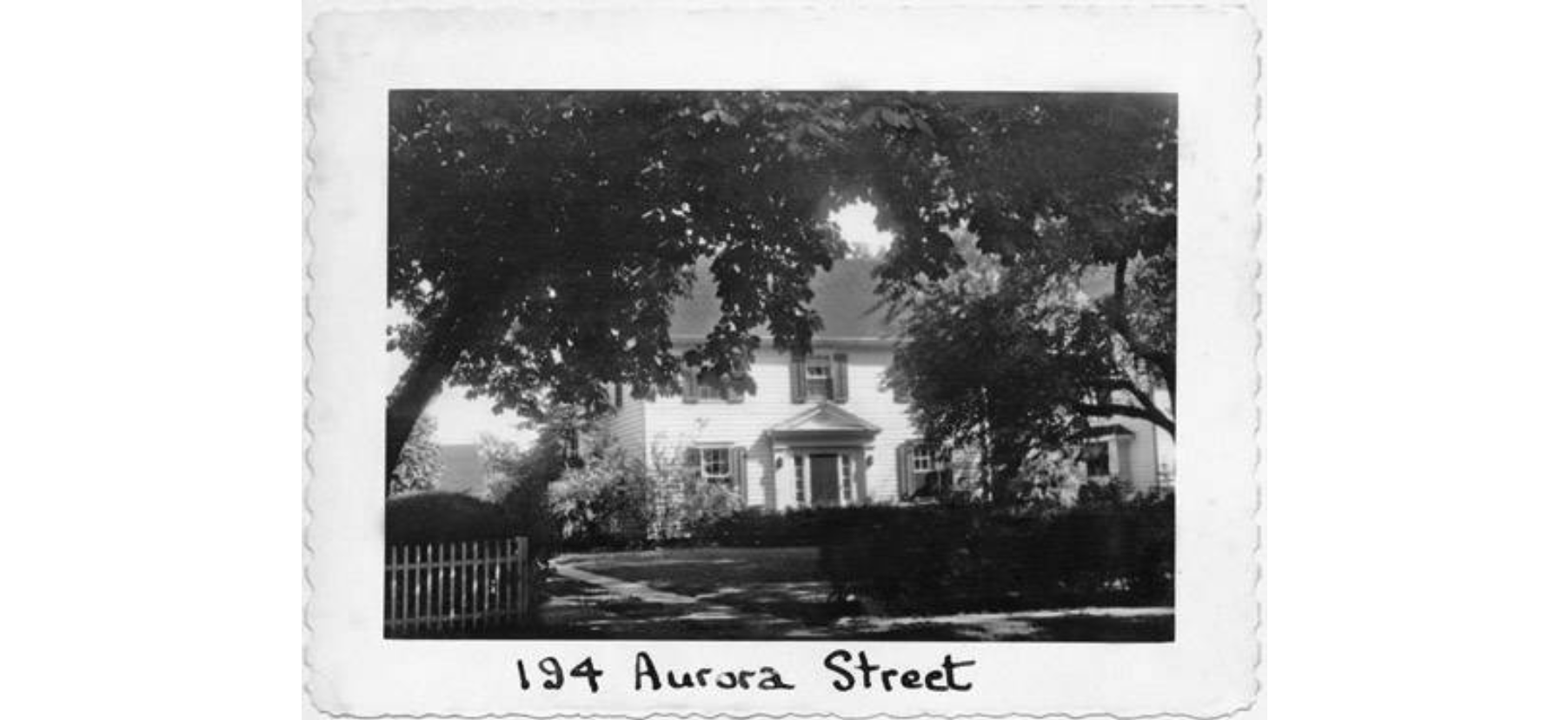 | Civil engineer Frank Dobson (1900-1977) occupied this home for several years. The home looks much the same today. | Summit Memory | |
198 Aurora Street 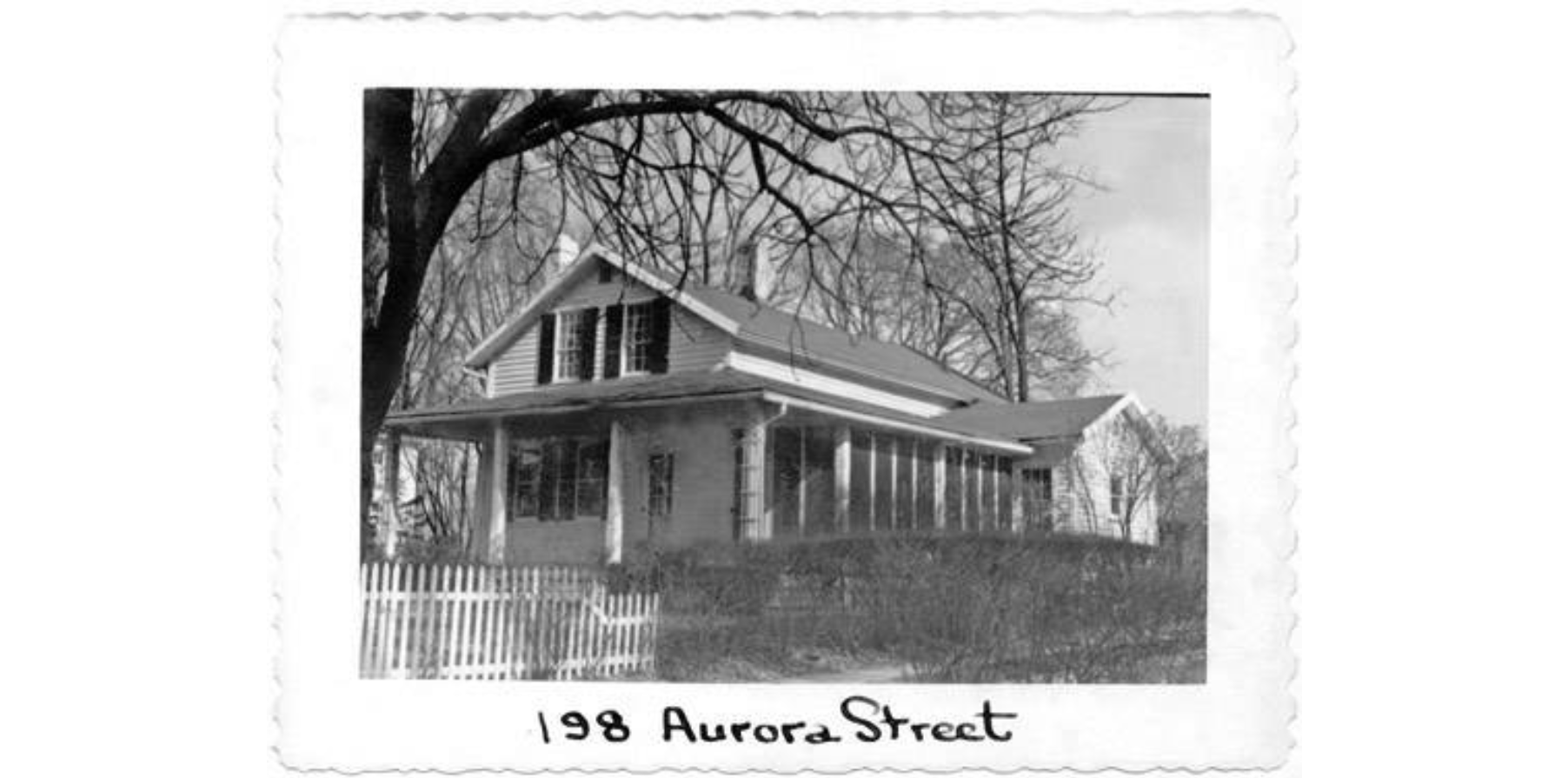 | The first recorded owner of this house was John Whedon (1807-1861). This circa 1852 house is a very small-frame Greek Revival structure, which still has its central chimney. Frank H. Longstreth (1921-2008), beloved World War II veteran and Latin professor at Western Reserve Academy, was a later owner. He was known for his energy, exuberance, athleticism and ability to avoid appointments to committees. | Summit Memory | |
| 204 Aurora Street James Ellsworth Estate Cottage No.2 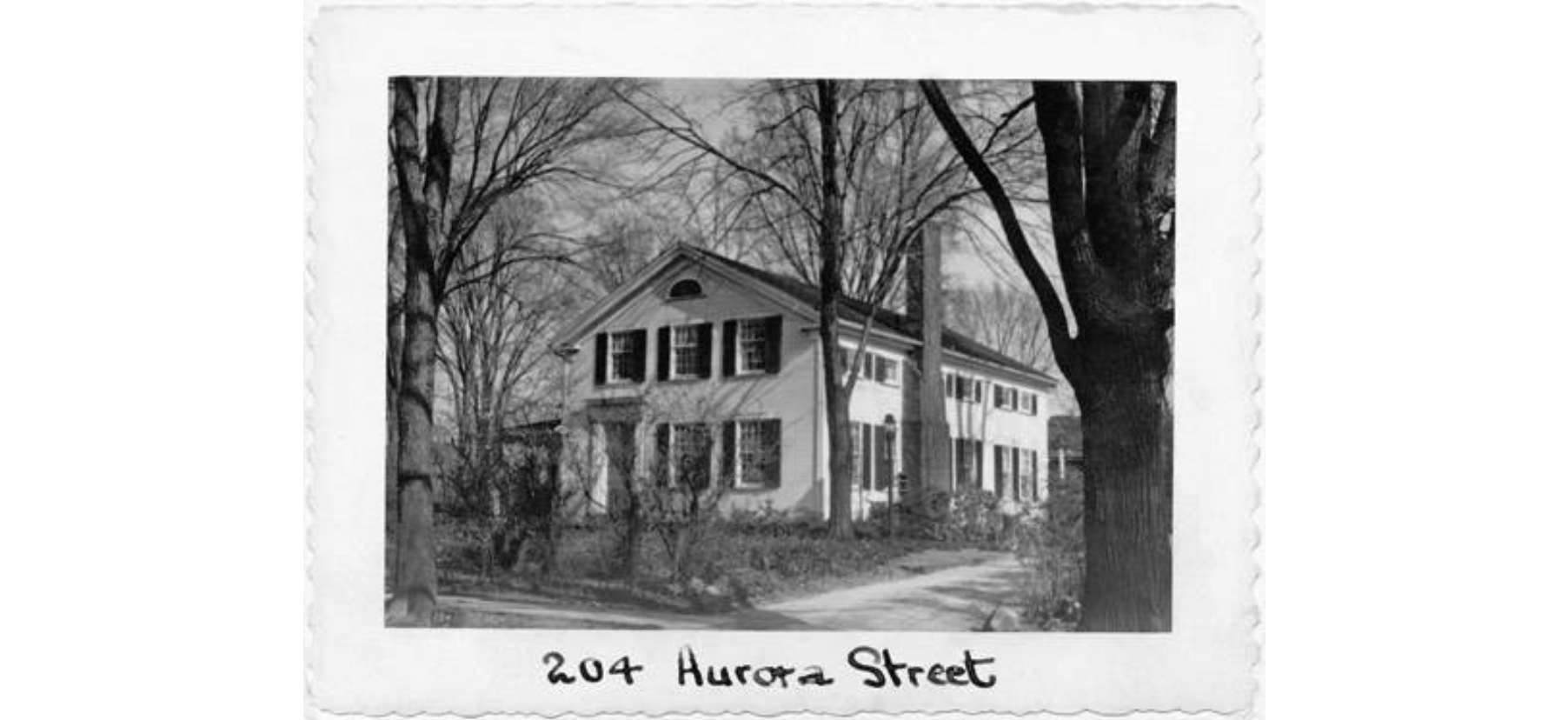 | This Federal/Greek Revival Transitional house, built in the 1830s, was moved to this location in 1890. James W. Ellsworth (1849-1925) used it as a guest house, known as Cottage #2. The identical Cottage #1 can be found at 233 Aurora Street. Later owner Wyatt King (1913-1970), employed with the Firestone merchandise distribution department for many years, raised his family here. | Hudson Heritage Association Summit Memory | |
| 211 Aurora Street Thomas M. Day House 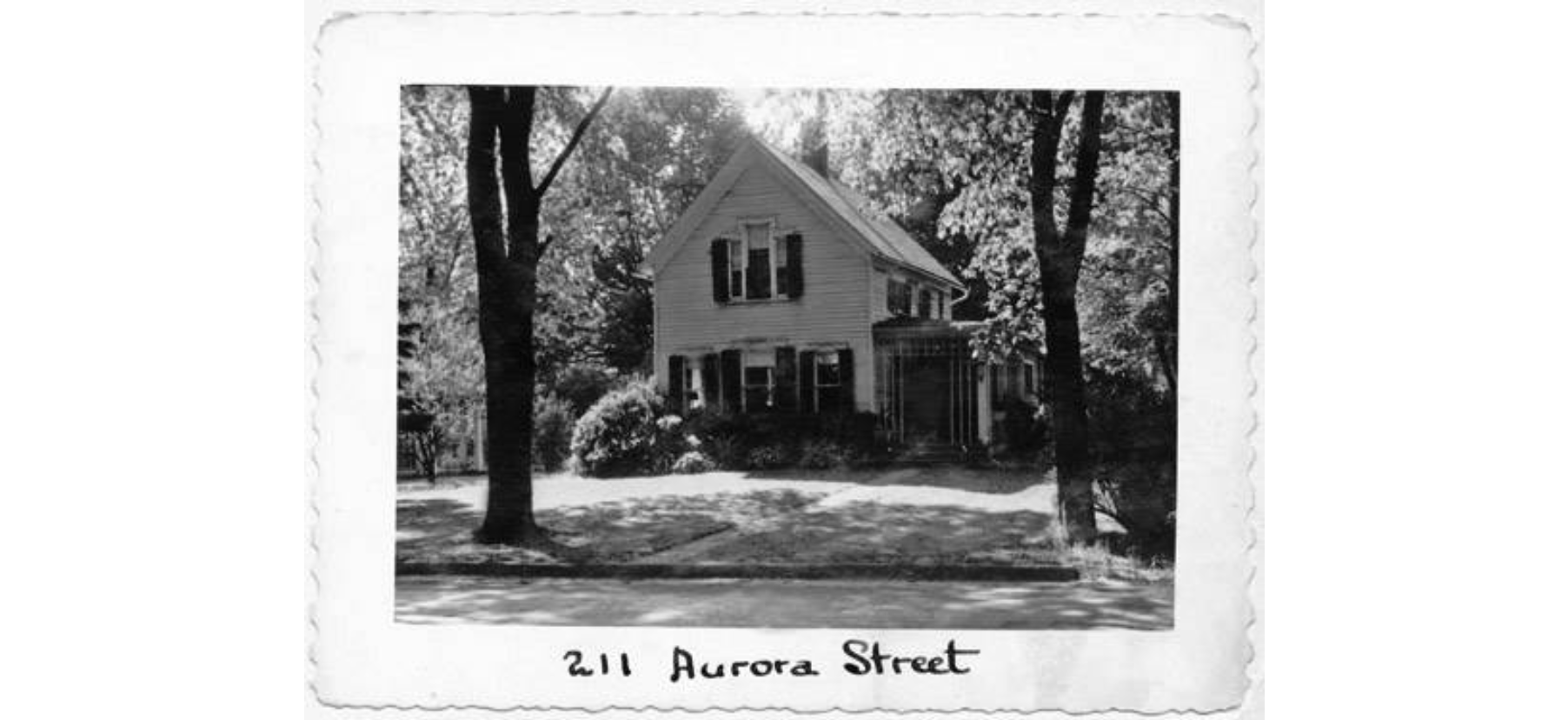 | View House Report | This 1858 house, similar to the one at 225 Aurora Street, is late Gothic Revival style. The foundation is constructed with handmade brick with parging on the exterior. The house boasts decorated lintels and a triple window in the gable. The original front door has been replaced by a window. Thomas M. Day (1817-1905), a relative of Henry Noble Day (1808-1890), was the first owner of this home. | Hudson Heritage Association Summit Memory |
| 225 Aurora Street John Tillotsen House 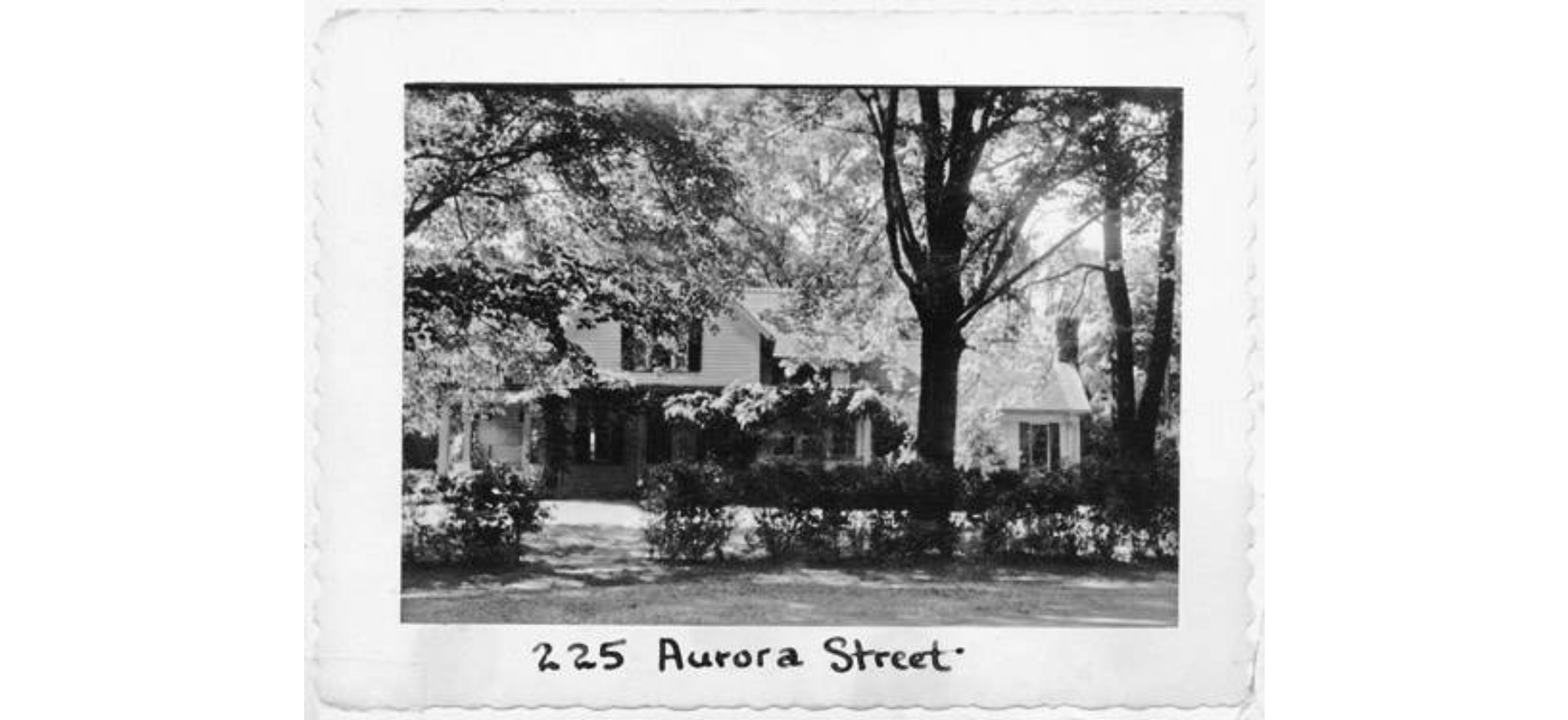 | View House Report | This 1871 Gothic Revival house was first occupied by the John Tillotson (1837-1919) family. John was brother-in-law to famed Hudson agriculturalist and author Theodore B. Terry (1843-1916). The Chambers family also once occupied the house. Chambers son Clinton (1843-1863) served with the 6th Ohio Light Artillery Regiment during the Civil War and died of disease while serving. This is one of the last remaining Victorian porches in Hudson. It is also probable that this home had some of the first linoleum in town. Linoleum was invented by Frederick Walton (1834-1928) and had become popular in the late 1860s. | Hudson Heritage Association Summit Memory |
| 230 Aurora Street Henry Hosford House 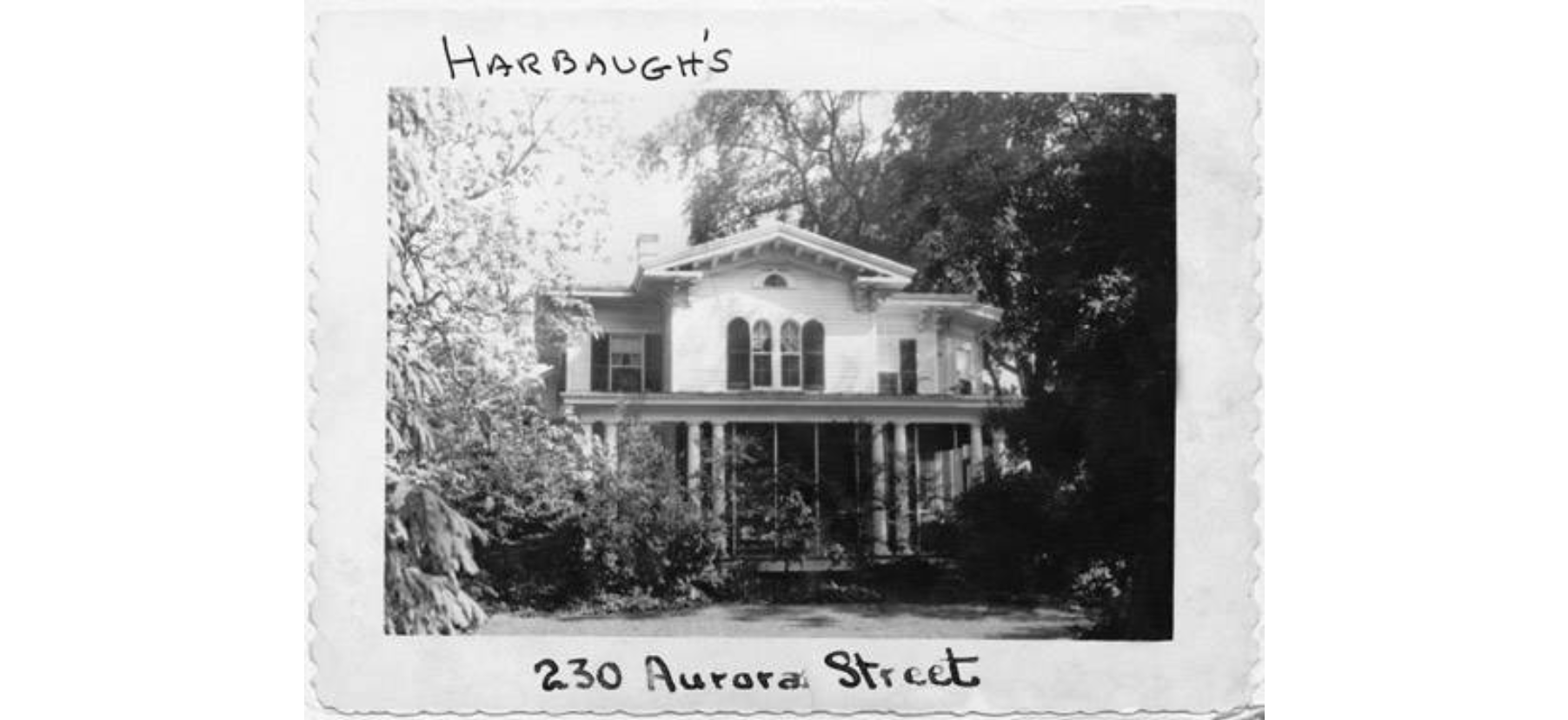 | View House Report | This house was built for Henry Hosford (1859-1959), a professor at Western Reserve College. The builder was Orin J. Porter (1820-1871), brother of master builder Lemuel Porter (1807-1871). He later duplicated the house for his own residence at 240 College Street. This Italianate house made of tulip wood had a two-story circa 1830 house added to the rear in 1861. The two-story triple-bay window was added after 1884 by the Case family. Also added was a famed pear orchard. A front porch was added in 1920 by the Tew Family and utilities were modernized. The modern interior redesign was by Mr. William Moos (1919-1984). This home was also used in the filming of the Hanna-Barbera television movie, "The Gathering." | Hudson Heritage Association Summit Memory |
| 233 Aurora Street James Ellsworth Estate Cottage No.1 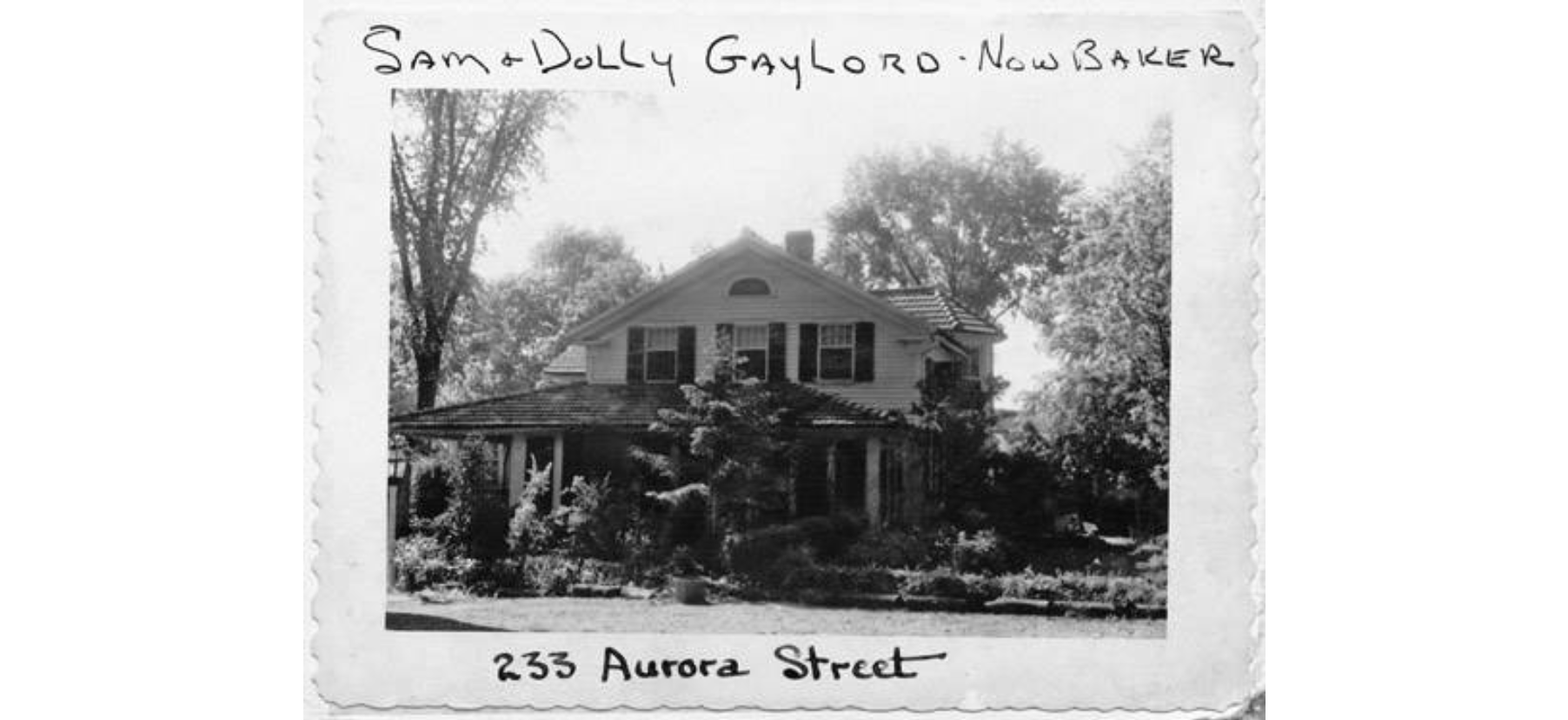 | This 1830s Federal/Greek Revival home was moved to this site by James W. Ellsworth (1849-1925) in the early 1900s. Ellsworth most likely used this home as a guest house, known as Cottage #1. The identical Cottage #2 can be found at 204 Aurora Street. | Hudson Heritage Association Summit Memory | |
239 Aurora Street 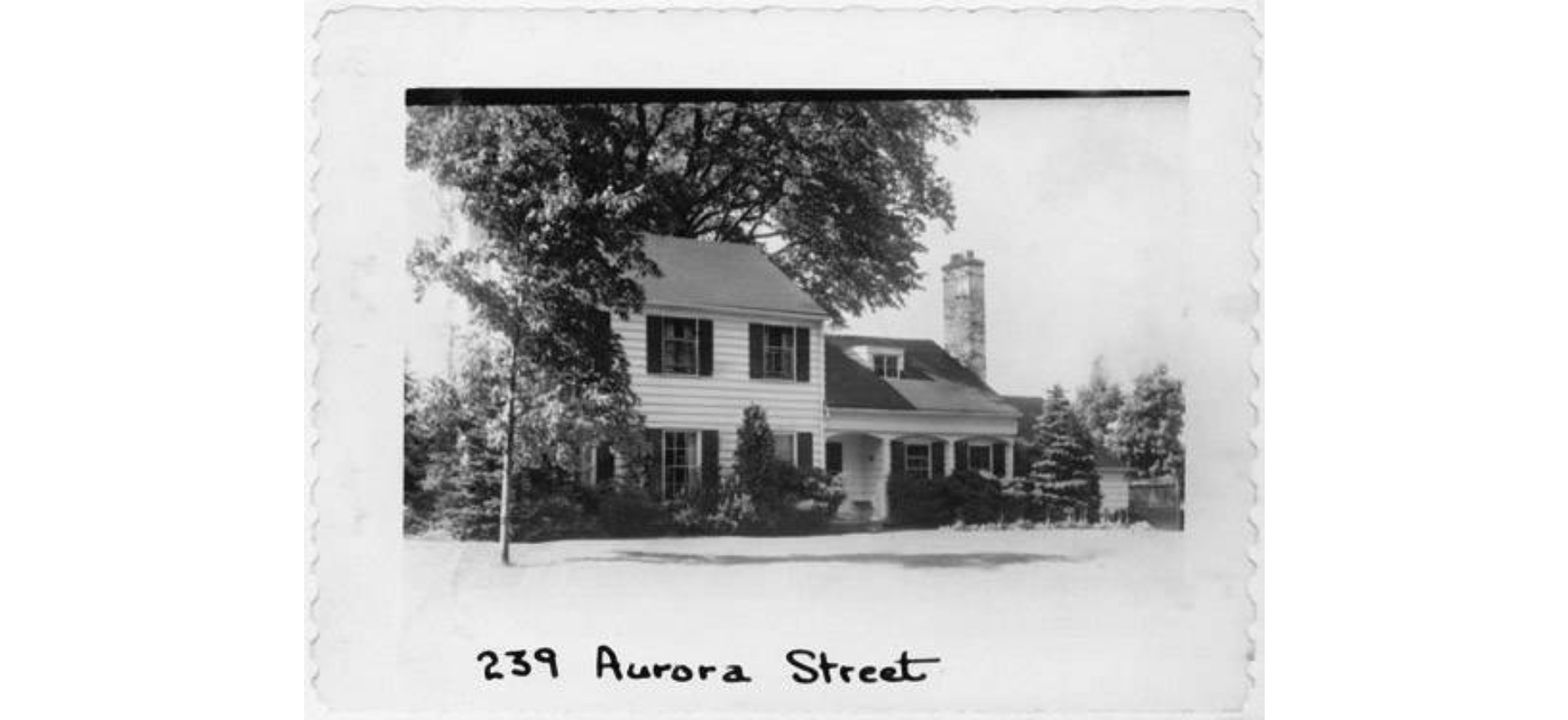 | Little history is recorded for this one-and-a-half-story home. Construction probably occurred after 1929. John F. Bennett (1909-2002), longtime treasurer for Goodyear Tire and Rubber, lived here for several years. | Summit Memory | |
| 250 Aurora Street Evamere Gate House 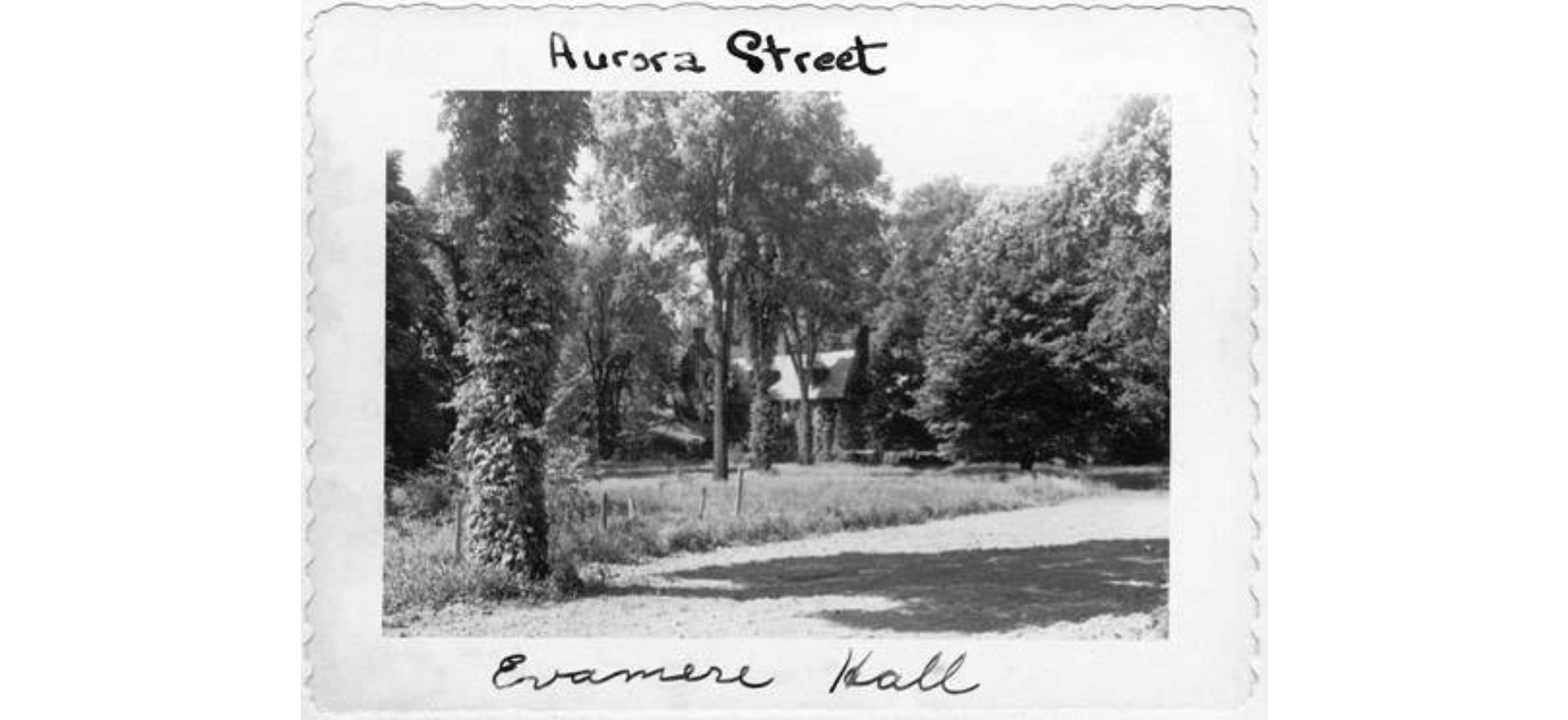 | When industrialist James Ellsworth (1849-1925) returned to Hudson in 1889 after amassing a fortune in Chicago, he began transforming his family's old farmhouse for his children. The estate, which he called "Evamere" in honor of his late wife Eva Butler Ellsworth (1852-1888), served as his summer home. James' only son, famed polar explorer Lincoln Ellsworth (1880-1951) grew up here. Lincoln and explorer Roald Amundsen (1872-1928), attempted to be the first to fly over the North Pole, but ended up crashing their planes. They were lost more than a month. Lincoln later claimed more than 300,000 square miles of land in Antarctica for the United States. The estate no longer exists (apart from the gatehouse). Three elementary schools sit on the former site of Evamere, including Evamere Elementary. | Hudson Heritage Association Summit Memory | |
281 Aurora Street 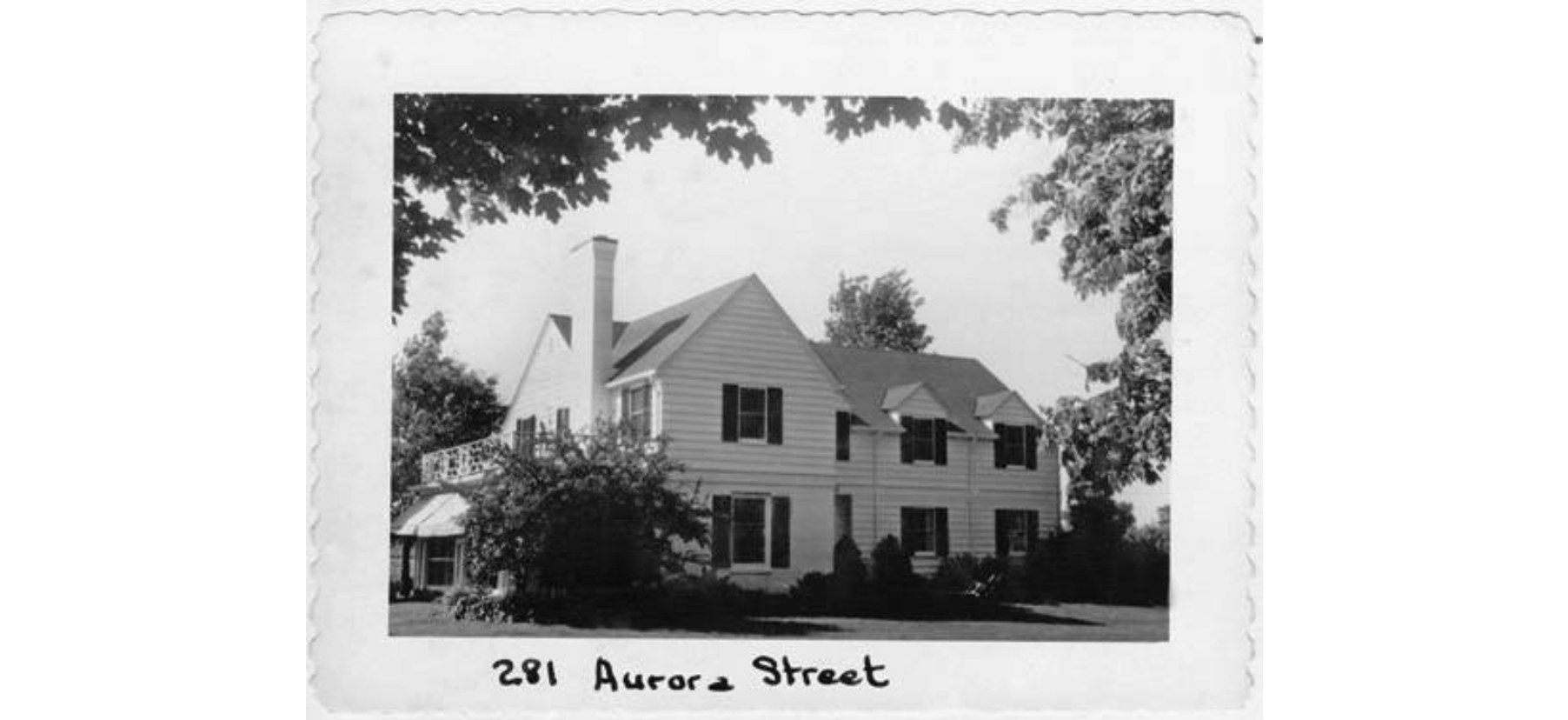 | This colonial home with dormers was once associated with Western Reserve Academy and its orchard. It was probably built in the 1940s. | Summit Memory | |
281 1/2 Aurora Street 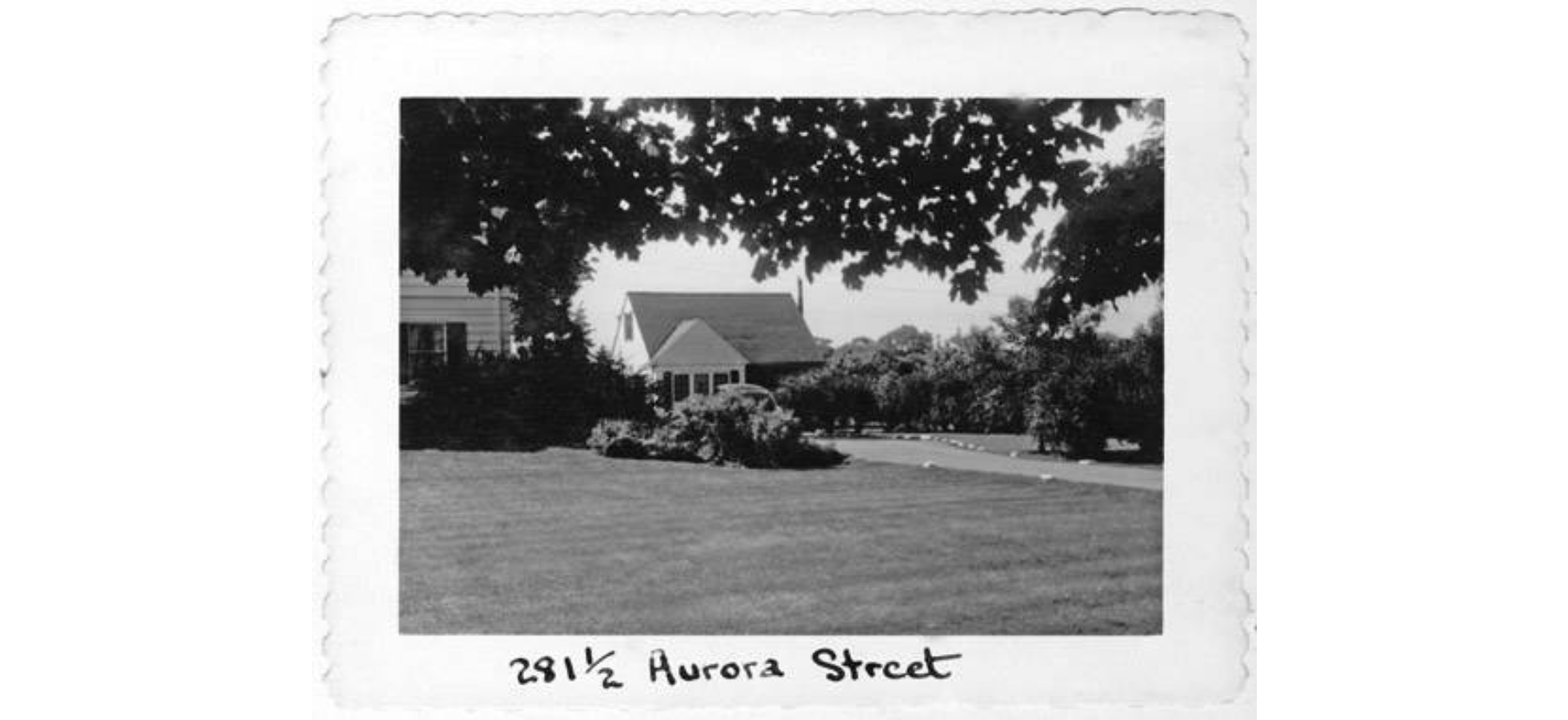 | This house most likely was built as separate living quarters to 281 Aurora Street. It is unknown why it has its own address. | Summit Memory | |
284 Aurora Street 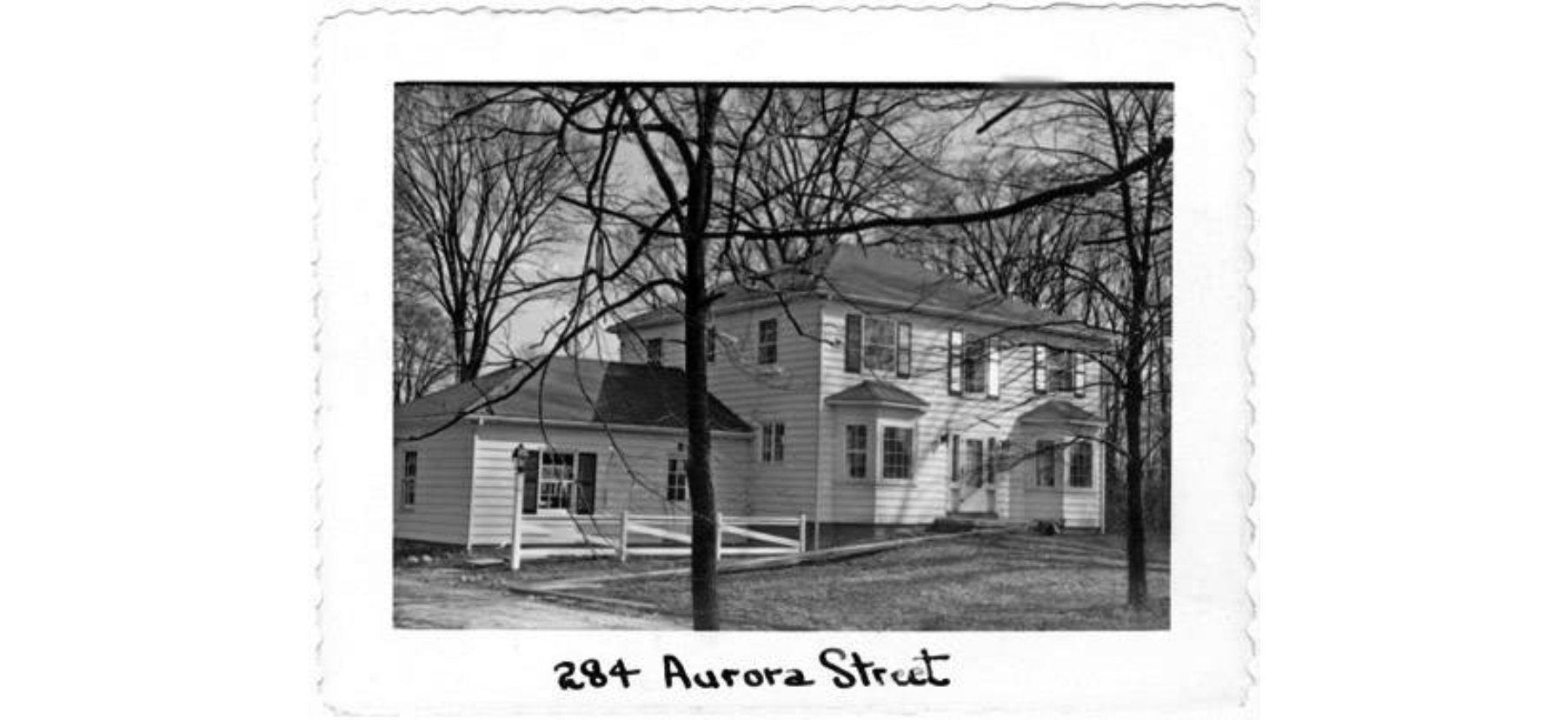 | This post-1945 hipped-roof home exemplifies the traditional, square, boxy floor plans and economic choices associated with large tract homes constructed after World War II. Former resident Thomas H. Pace (1914-1982) was a member of the management team at Morgan Adhesives. Pace was a dedicated community member involved in many organizations in Hudson. | Summit Memory | |
285 Aurora Street 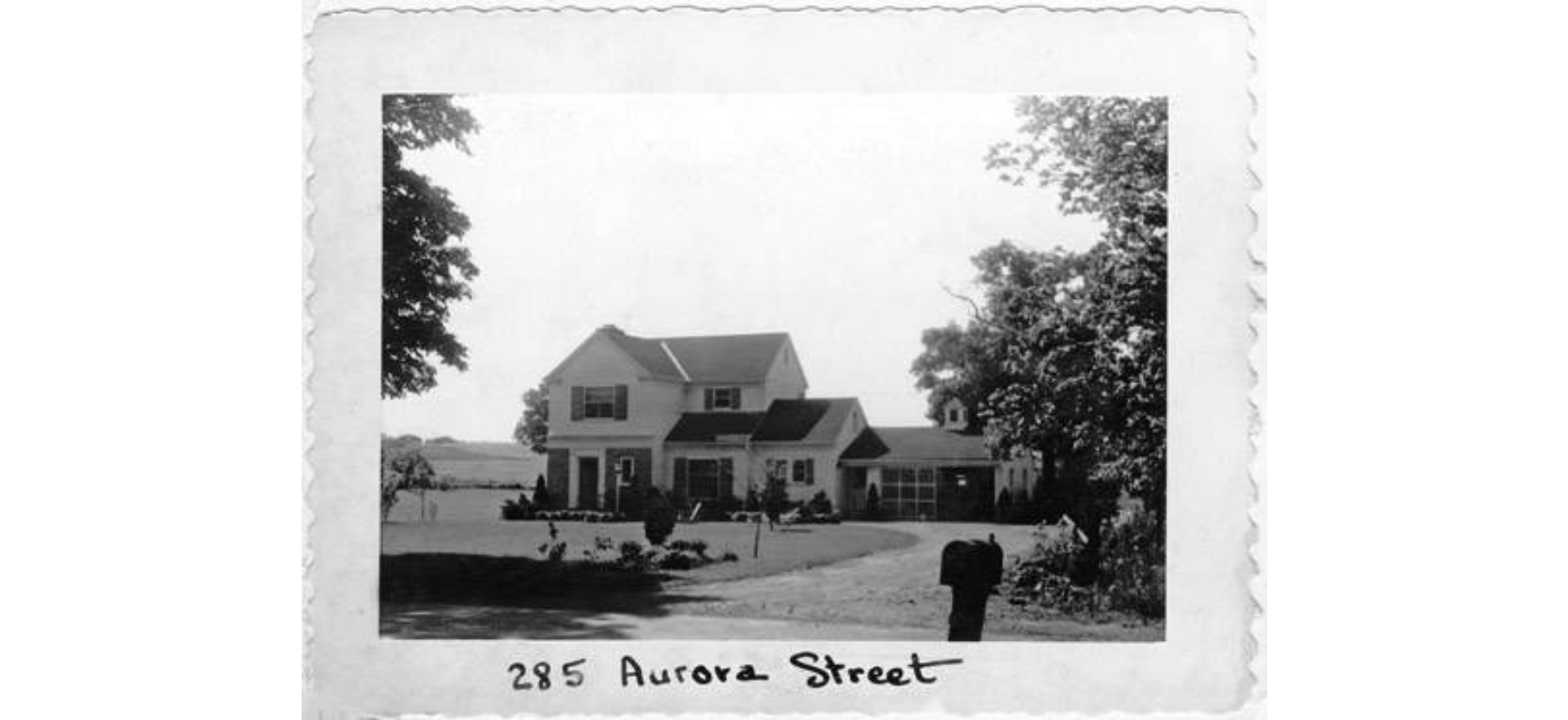 | This post-1945 split-level home has the characteristic levels to separate the noisy living area from the mid-level quiet area thought to have been needed during this era. The attached garage is also characteristic of this style. Noteworthy is the expansive area behind the home that was part of the Evamere estate, once home to influential Hudson resident James W. Ellsworth (1849-1925). | Summit Memory | |
298 Aurora Street 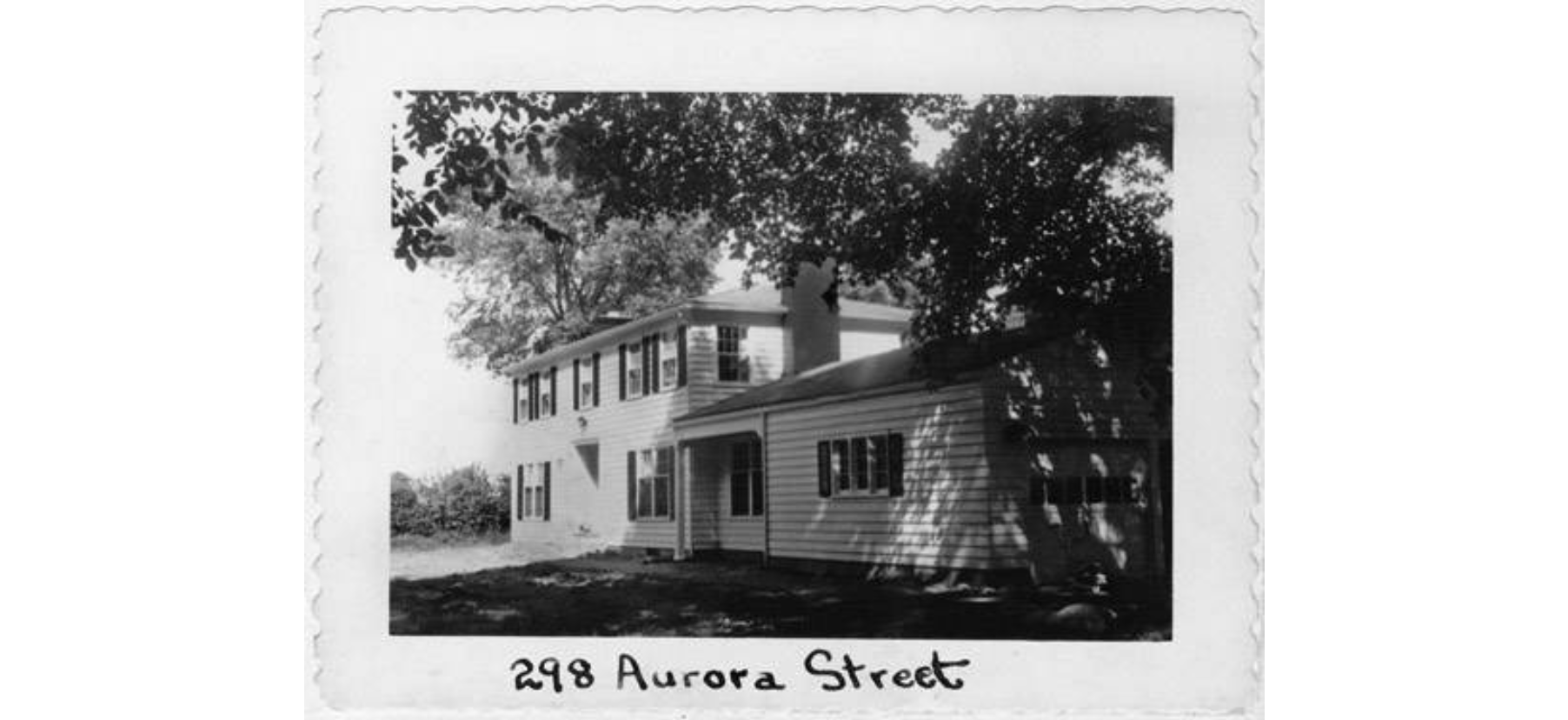 | World War II veteran, Vice President of B. F. Goodrich and ardent community servant John Hart (1909-1971) resided in the two-story hipped-roof home with a central entrance and attached garage. | Summit Memory | |
| 5 Baldwin Street Landfear-Welles House 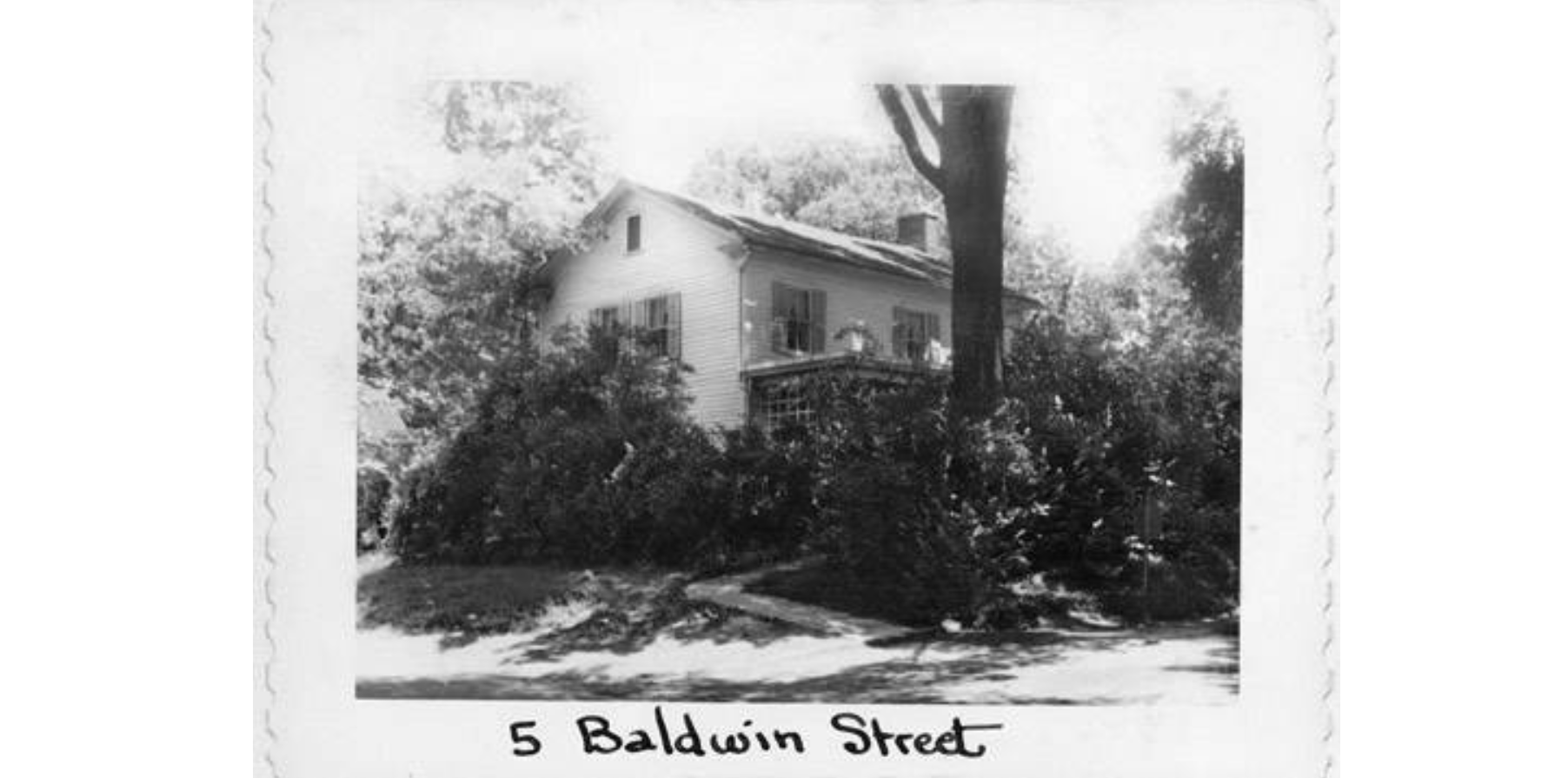 | View House Report | This 1830's era home was often associated with previous owner Russell Peck (1814-1913). Peck was a Connecticut native and attended the Pioneer Association of Portage & Summit Counties. He fathered four children, many of whom moved to the west coast. Peck must have been familiar with many of the local schoolchildren as one of the town schoolhouses was located to the north of this house. He also was a carpenter/joiner. | Summit Memory |
| 12 Baldwin Street Moses & Elmira Messer House 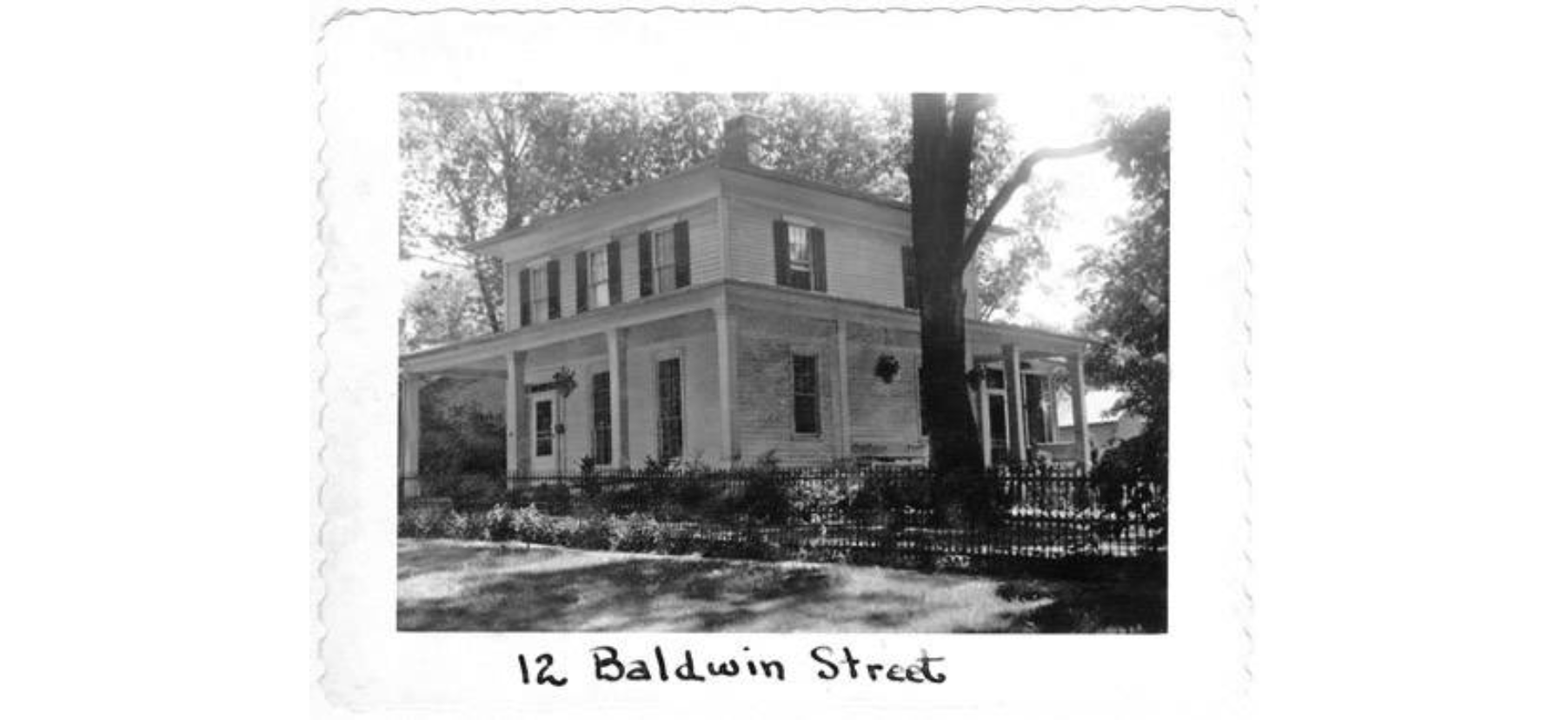 | View House Report | This 1854 Italianate home typifies the style with its symmetry, a low pitched roof, and wide overhangs. The front porch is original to the house. Porches were not common prior to the 1850s. The home was probably built for Western Reserve College Treasurer Moses Messer (1803-1890.) Civil War veteran Prosper Gott (1846-1922) once occupied this home. The home, with its multitude of bedrooms and parlors, reflects the changing values of the era, moving away from being an economic center of production (such as farm) and to becoming a place for socialization. Antique expert and preservationist Charles M. Stow (1880-1952) was born here More research is needed on this structure. | Summit Memory |
| 15 Baldwin Street Strong-Metcalf Female Seminary 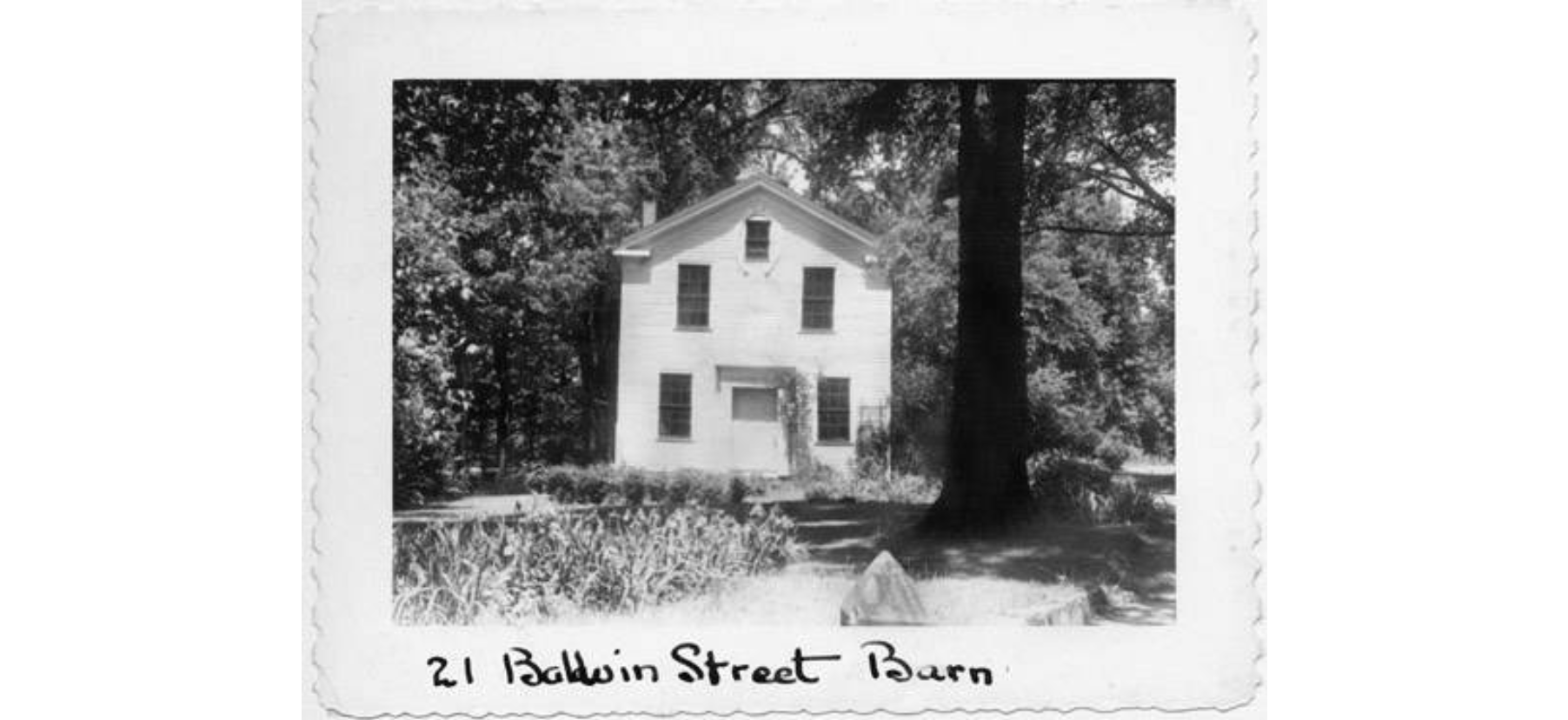 | View House Report | This 1845 Greek Revival building was once located on the west side of North Main Street (on the property of the home at 258 N. Main St). Mary Strong (1826-1854), daughter of Ephraim Strong (1771-1860), founded the Hudson Female Seminary here in 1846. In 1858 the building was moved to Baldwin Street, where it became Emily Metcalf's (1831-1915) Hudson Female Seminary until 1873. At the turn of the century, the building was used for a barn and carriage house. In 1957 it was acquired by Dorothy C. May (1905-1994), who restored the schoolhouse to its former glory. | Hudson Heritage Association Summit Memory |
16 Baldwin Street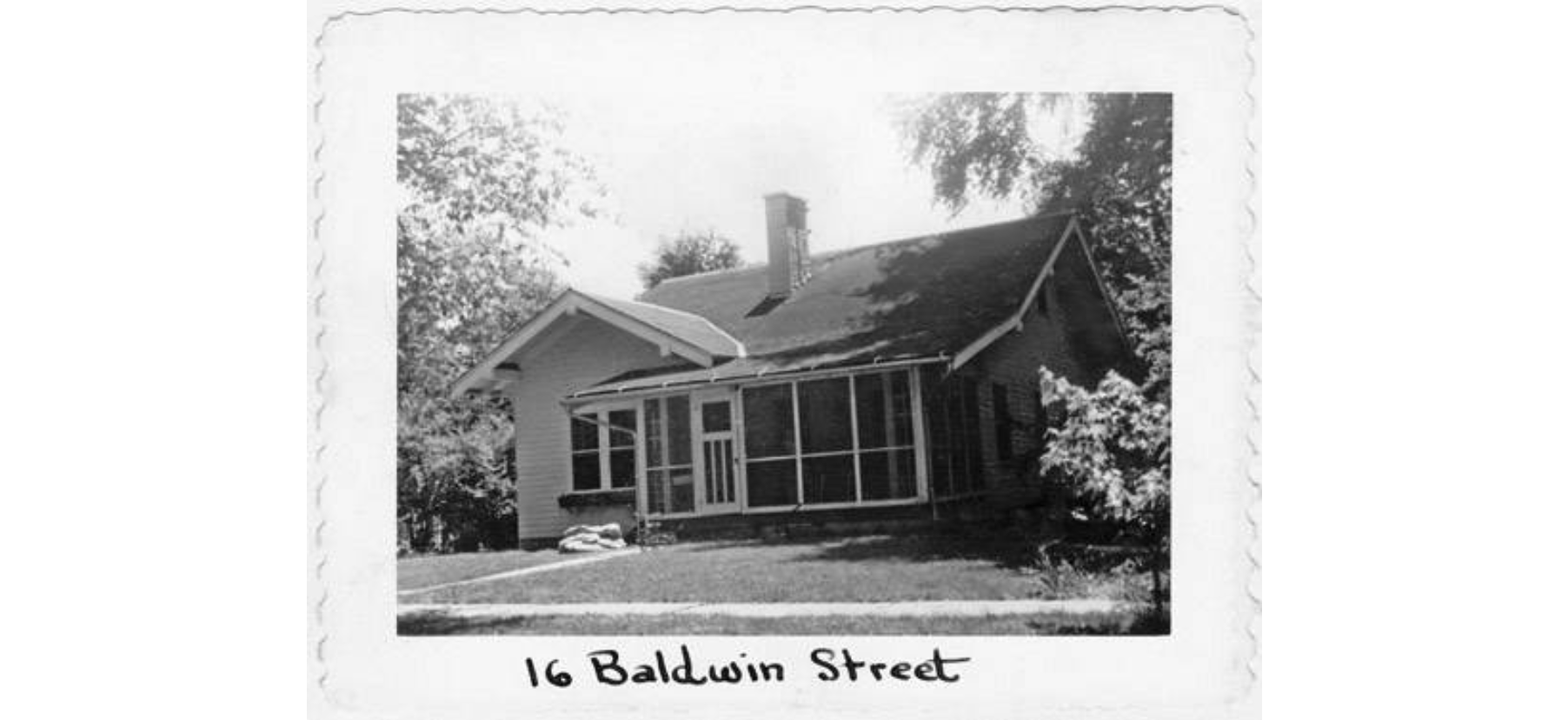 | Most likely a mail-order bungalow from circa 1923, this was the home of beloved teacher Minnie Lee Lucas McDowell (1913-2005), who taught at Evamere elementary school and loved genealogy. Postmaster James K. Frost (1825-1881) likely lived in this home or another home that once sat on this property. | Summit Memory | |
| 20 Baldwin Street Bunnell-Read House 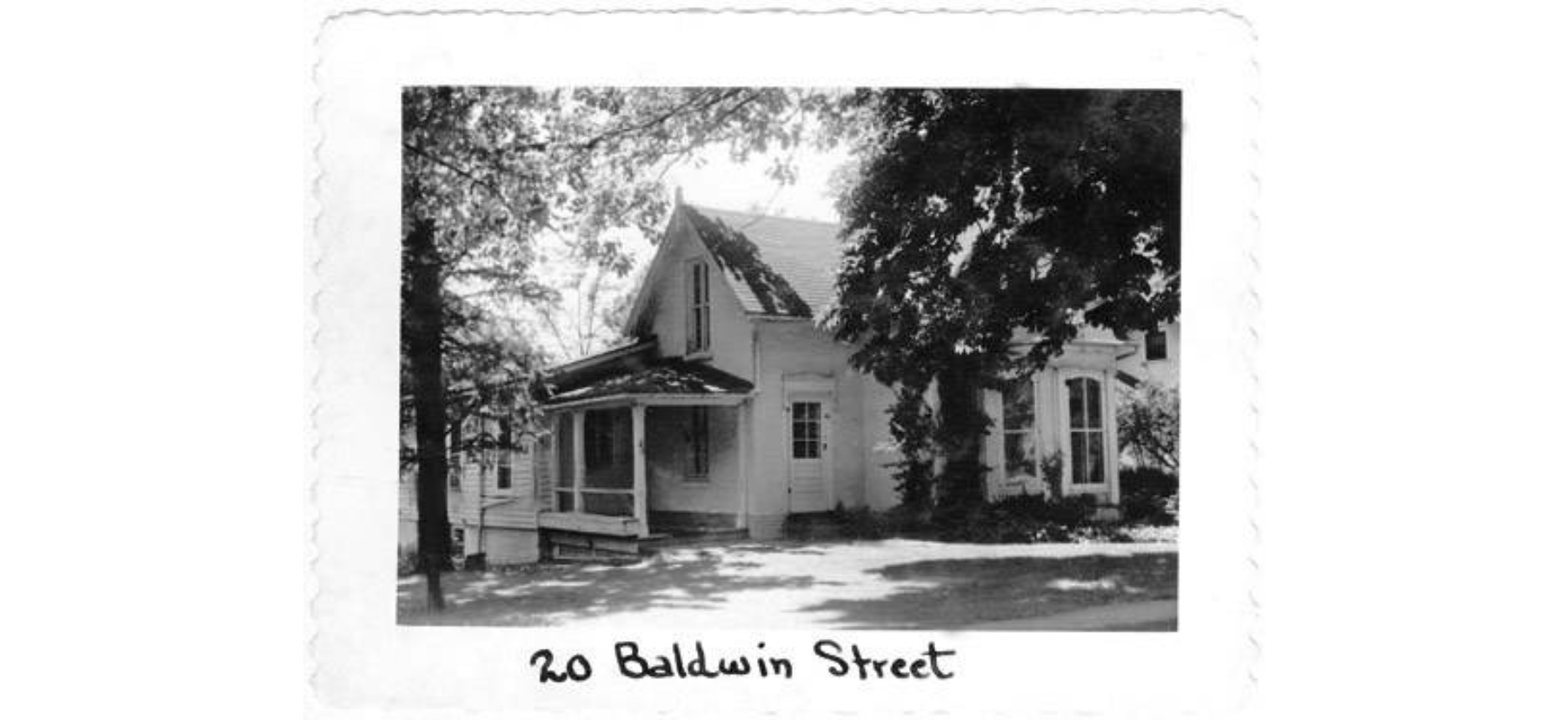 | View House Report | This Gothic Revival home dates to 1851 when built as a speculation home by Frederick Bunnell (1821-1875). Matthew C. Read (1823-1902), former Mayor and Justice of the Peace, bought this home for his family and raised 4 children here. He was in Chattanooga, TN with the Sanitary Commission during the Civil War and was also one of the first to classify and describe the birds of Ohio. His daughters, Mary (1861-1928) and Janet (1866-1950) and son Charles P. (1857-1941) would have pivotal roles as early trustees of the Hudson Library & Historical Society. The decorative verge boards of this house hint at the prosperity of the railroad boom era and the technological advancement and availability of the scroll saw. | Hudson Heritage Association Summit Memory |
| 21 Baldwin Street E.J. Lobdell House 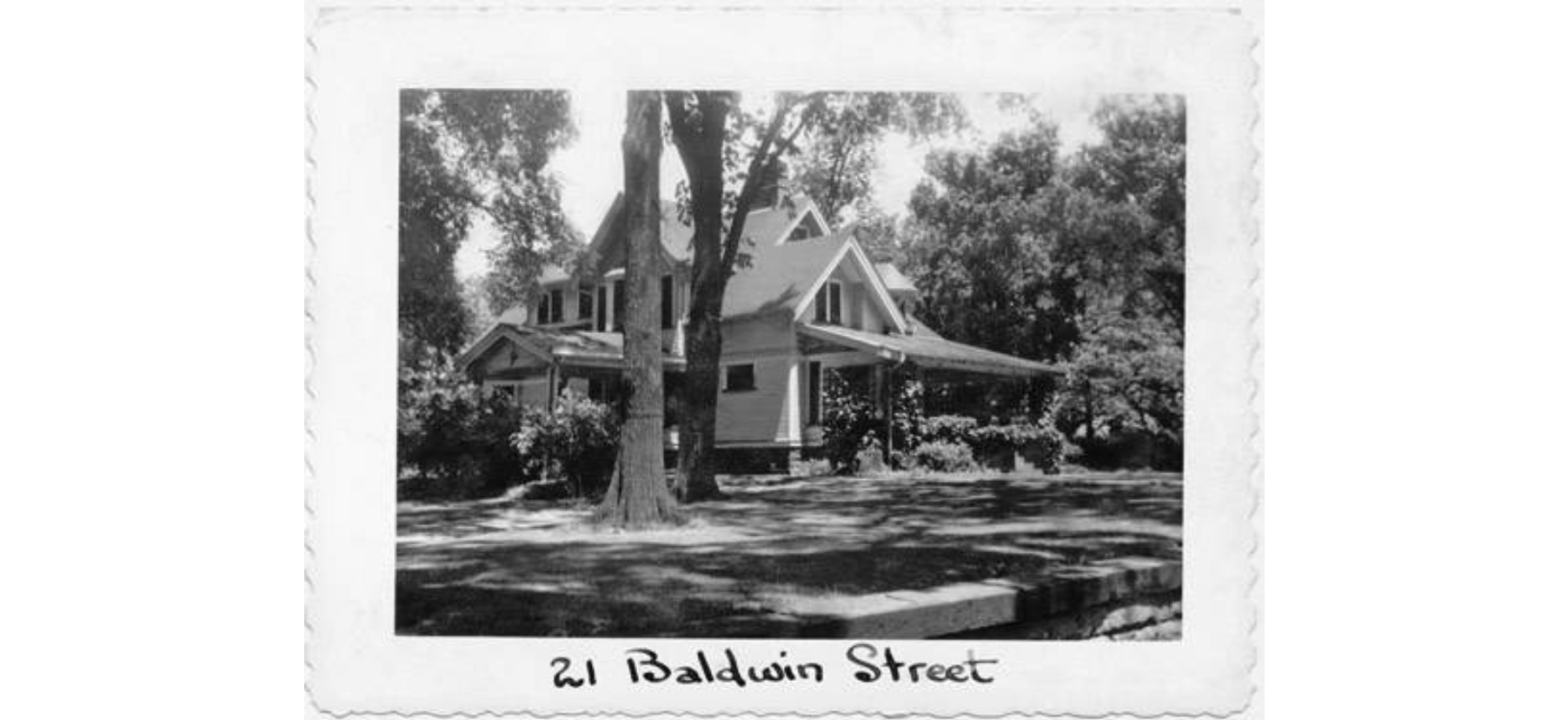 | View House Report | This 1889 Queen Anne was designed by architect Fenimore C. Bates (1857-1903) of Cleveland, Ohio, for prosperous resident E. J. Lobdell (1859-1927). Lobdell experienced a string of bad luck upon his return from Europe in 1903: his carriage factory burned to the ground and a train accident led to his untimely death. This asymmetrical facade has poplar siding and stud framing of Michigan cork. It was also once home to the Lincoln Oviatt (1860-1931) family. | Hudson Heritage Association Summit Memory |
26 Baldwin Street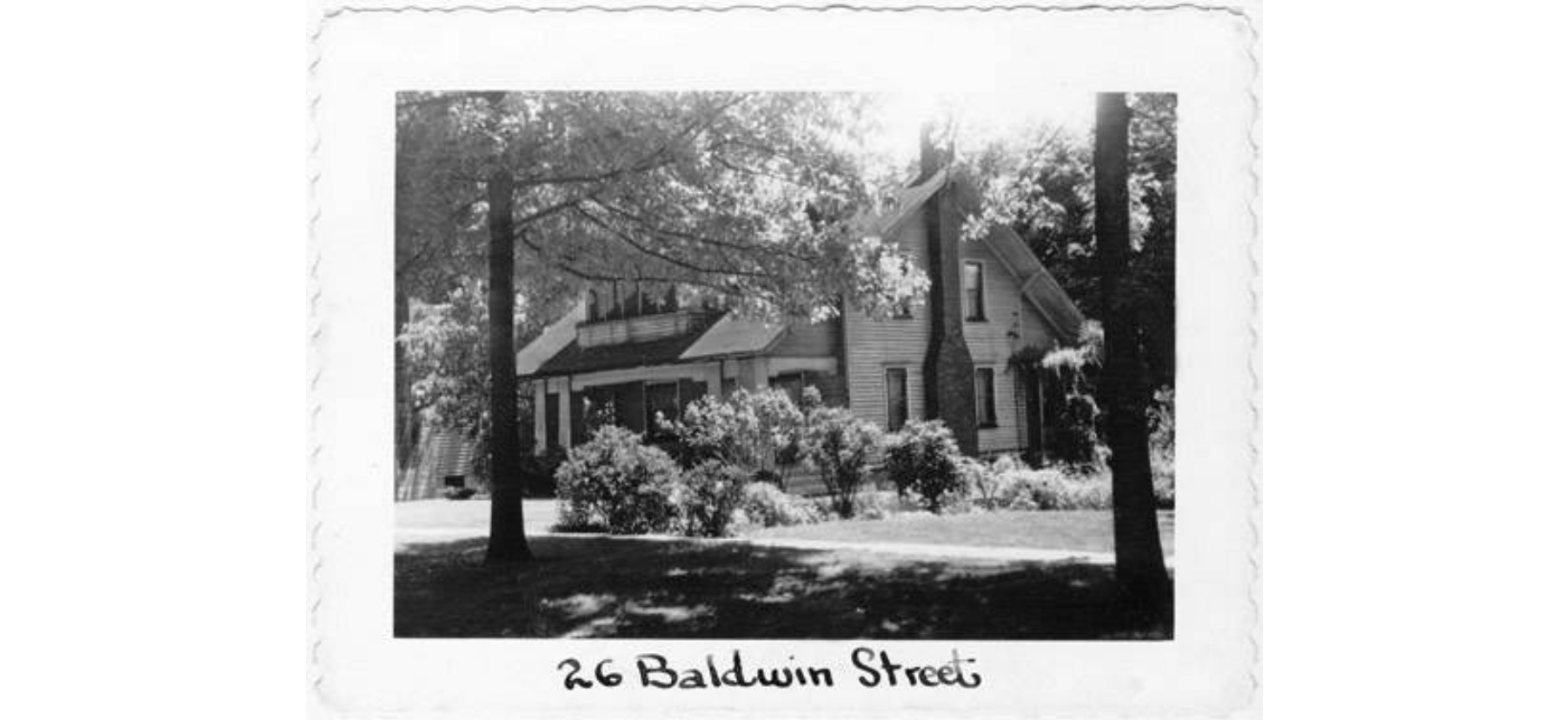 | This early-20th century, one-and-a-half-story modern bungalow is most likely a Sears, Roebuck and Co. home in the Sunbeam pattern. It would have cost $2700 in 1926. More research is needed to determine actual year of construction. Gustavus Jenkins (1887-1982) lived here for many years. He was Master Mason in the Hudson Masonic Lodge, church treasurer at the First Christian Church of Hudson for more than 30 years, and a longtime Pennsylvania Railroad employee. | Summit Memory | |
29 Baldwin Street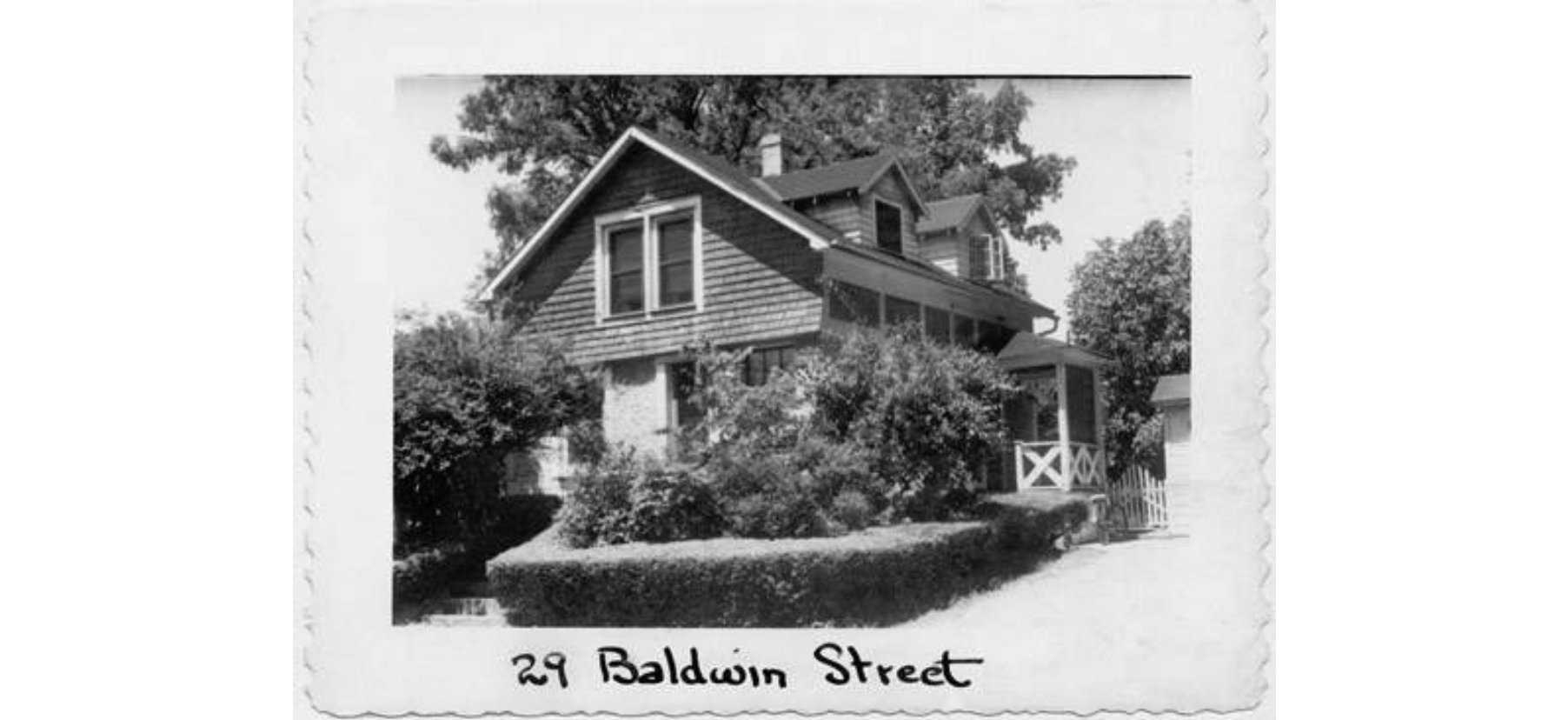 | This house was once home to Edwin (1900-1975) and Madge (1906-2002) Headland. Mrs. Headland was a teacher at Polk State Training School in Polk, Pennsylvania, and Mr. Headland worked for Enamel Products Company of Cleveland. Both were active in community organizations. It is thought this house was built circa 1900 of salvage materials from old buildings in the area. More research is needed. | Summit Memory | |
30 Baldwin Street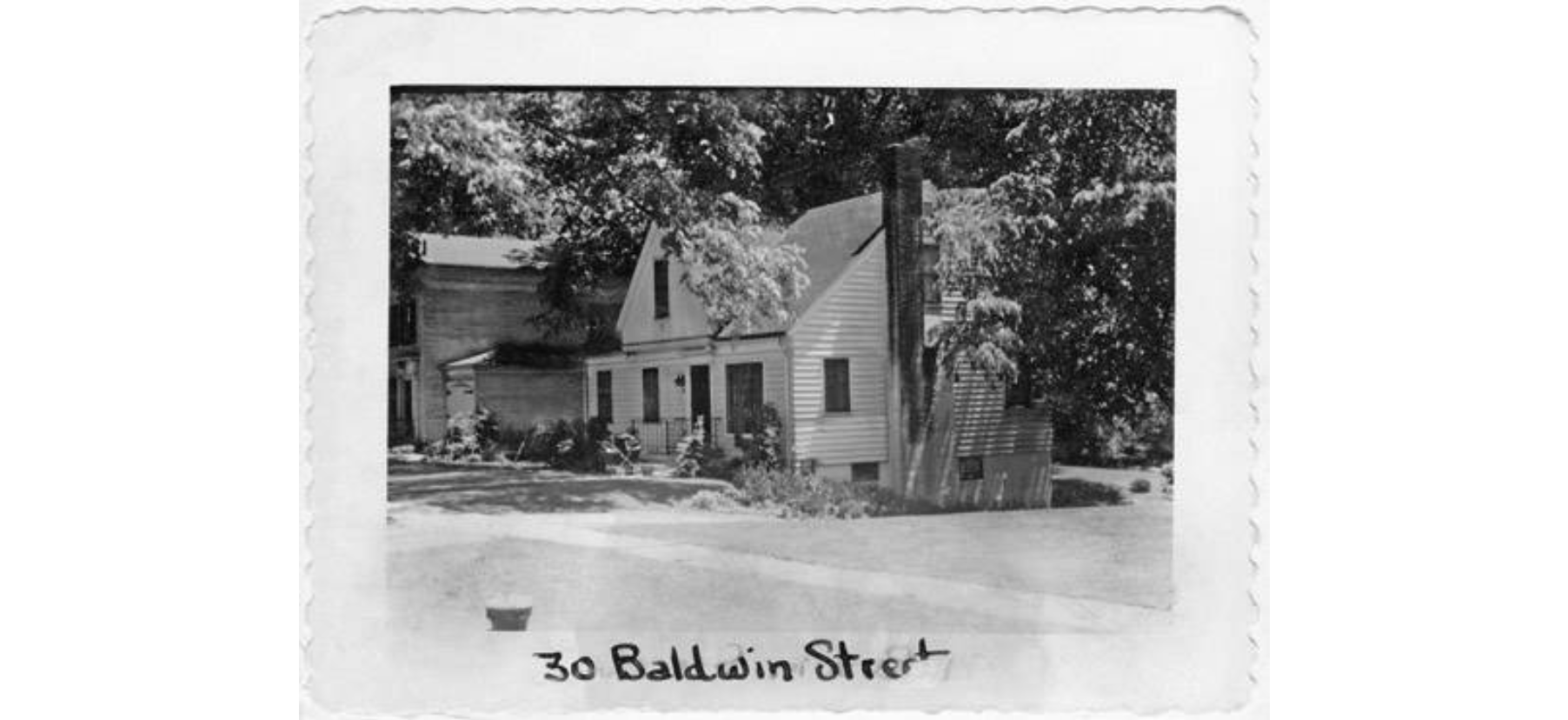 | Little is known of the history of this early-20th-century home. The front and back yards are clearly visible in this photograph. By the 20th century, the yard was becoming a place for visual display as well as a buffer from the street and new automobiles. Homes were transformed with an "outdoor room." Franklin S. Barlow (1912-1996), lifelong resident of Hudson and a graduate of Western Reserve Academy, once occupied this home. In World War II, he served in Germany for three and a half years, rising from a draftee private in the Army to chief warrant officer and assistant adjutant general of the 106th Infantry. | Summit Memory | |
33 Baldwin Street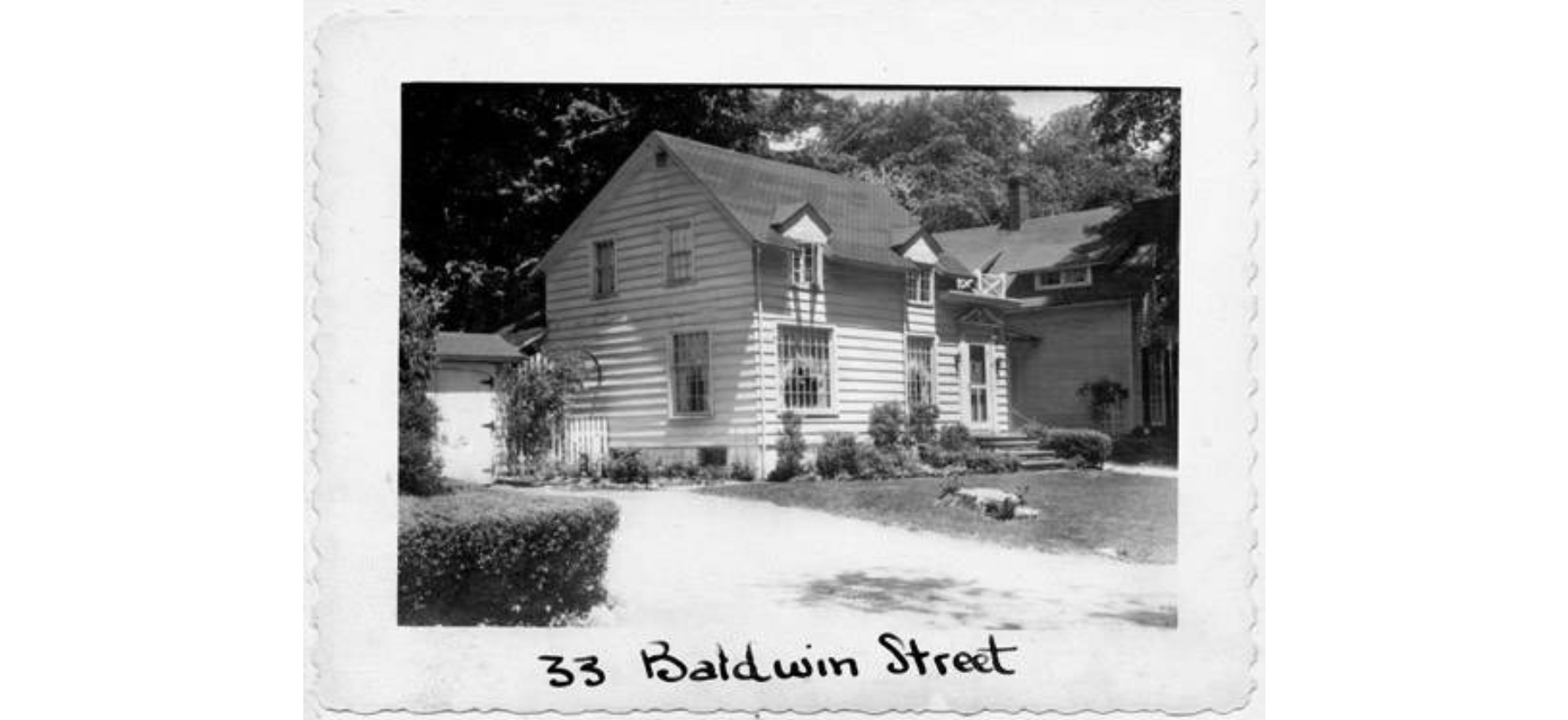 | This gable-roofed home with dormers is circa 1850s. It was once home to Hudson's flamboyant story lady and theatre patron Gladys Lewis (1893-1976). A portion of this home, which once belonged to noteworthy resident Silas Sawyer (1884-1955), used to sit at 16 Baldwin St. In addition to owning Sawyer's market, Silas was a long-serving member of the Board of Public Affairs and a school board member of Hudson schools. | Summit Memory | |
| 36 Baldwin Street Vernon D. Taylor House 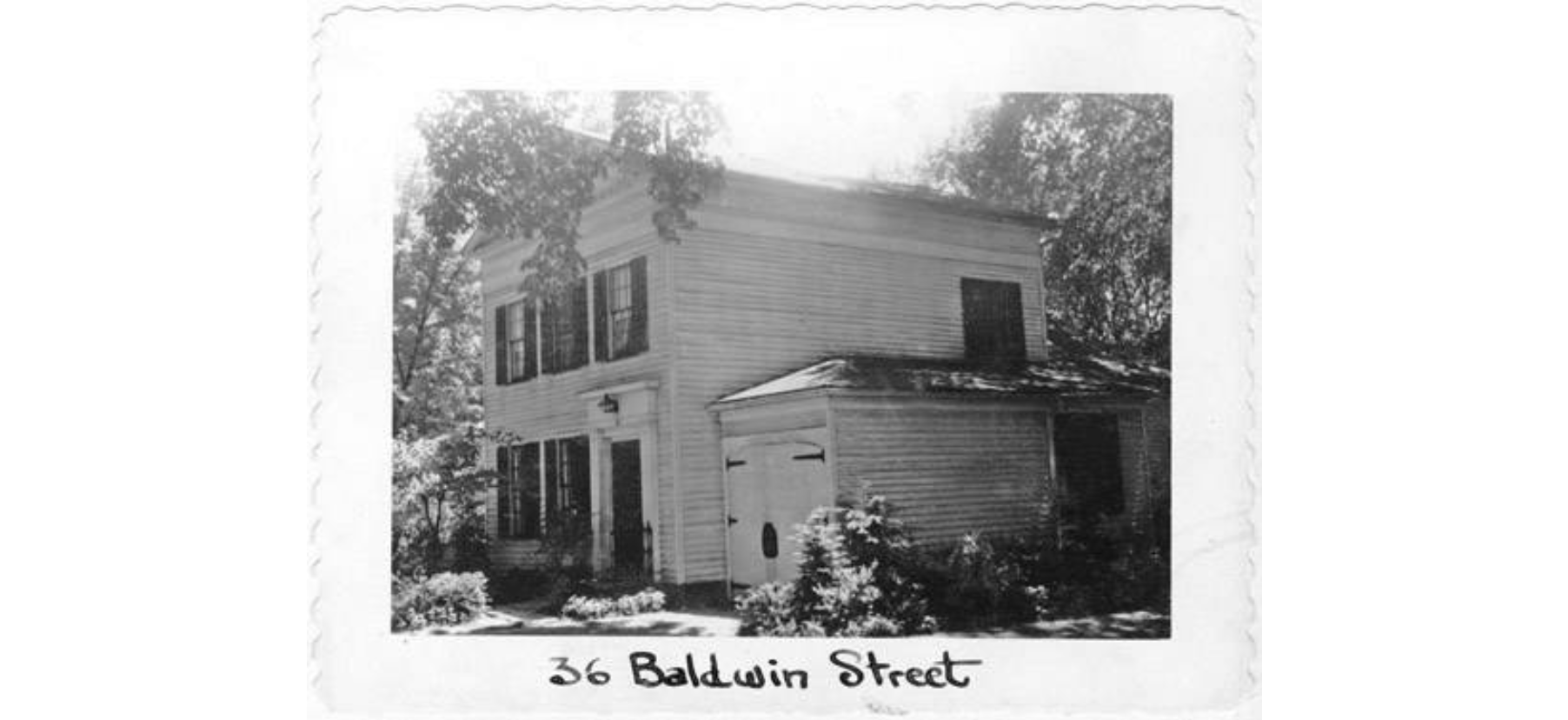 | View House Report | Coincidentally, two owners of this 1846 home were ministers: Vernon Taylor (1796-1864), a Presbyterian minister who served mostly in Cleveland, and Rev. George Darling (1821-1902), who was once the minister of the First Congregational Church in Hudson, Ohio. Later resident, Dr. Herbert Waite (1872-1923), a World War I veteran, used the home as doctor's office. He also was an instructor at Ohio State in homeopathic medicine. S. E. Judd (1813-1892), a former mayor of Hudson and one time owner of Hudson Lumber and Coal Yard, also resided in this home. | Hudson Heritage Association Summit Memory |
| 37 Baldwin Street Thompson C. Hotchkiss House 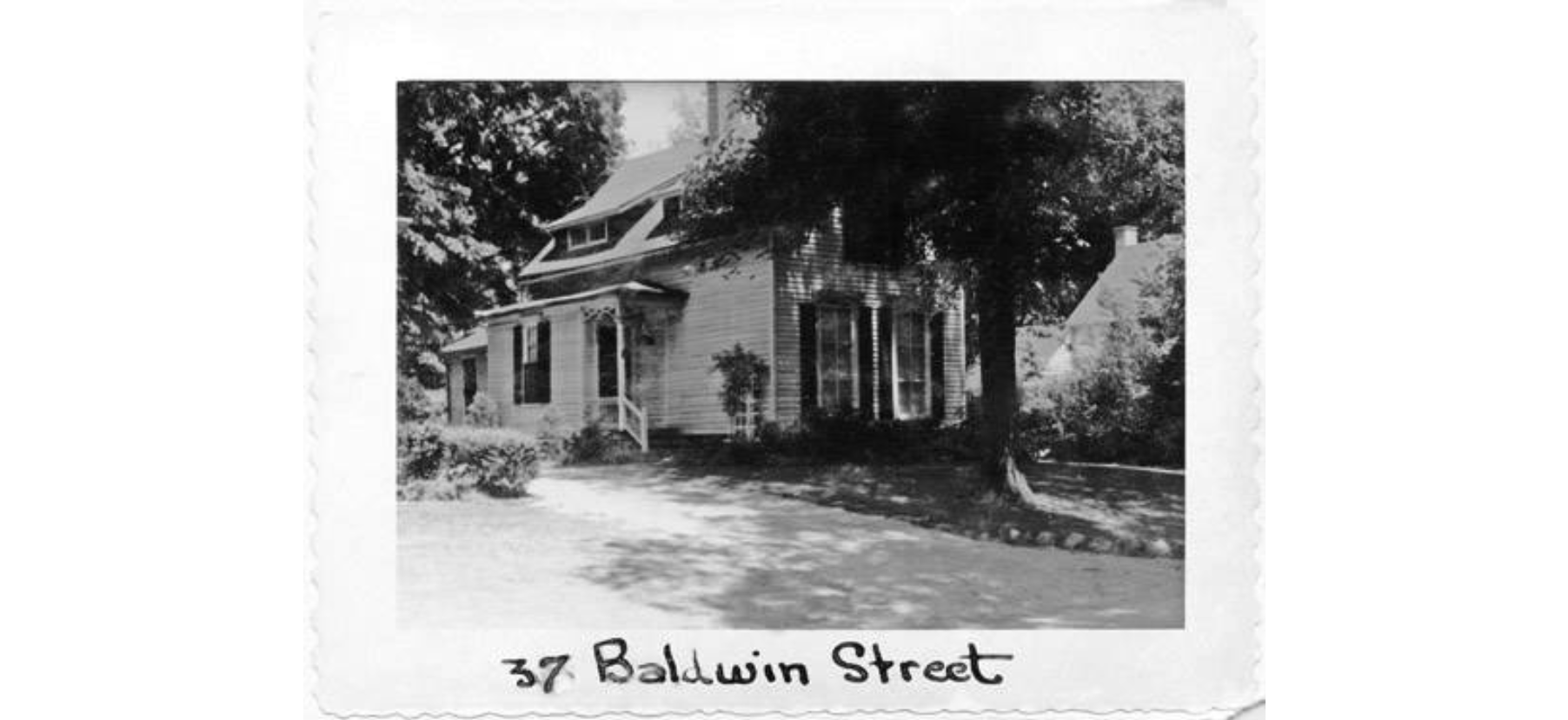 | View House Report | The story of this Gothic Revival cottage began in 1853 when brothers Alonzo (1821- ) and master painter, Thompson Hotchkiss (1824-1866) from Waterbury, Connecticut moved to Hudson, Ohio. They built the home on College street. Alonzo returned to Connecticut and Thompson married Adeline Farwell Hotchkiss (1827-1858) of Hudson, Ohio in 1852 and they occupied this home on College Street. In 1858 Adeline tragically died in childbirth and Hotchkiss sold the house to Issac L'Hommedieu (1812-1884) who would later become Mayor of Hudson, Ohio. It was Charles Kilbourne (1868-1959) who moved the cottage to Baldwin Street in 1914. The Gothic Revival proponents sought to break from traditional white exteriors and advocated earth tones such as reds, grays and olives as exemplified by this colored home. Also popular in Gothic Revivals is the intricately carved wood trim or scroll work often called gingerbread that necessitated the invention of the mechanical saws of the 1850's & 1860's. Despite being moved, this house retains several charming characteristics of days and owners now gone. | Hudson Heritage Association Summit Memory |
| 1213 Barlow Road Ellsworth-Kilbourn House 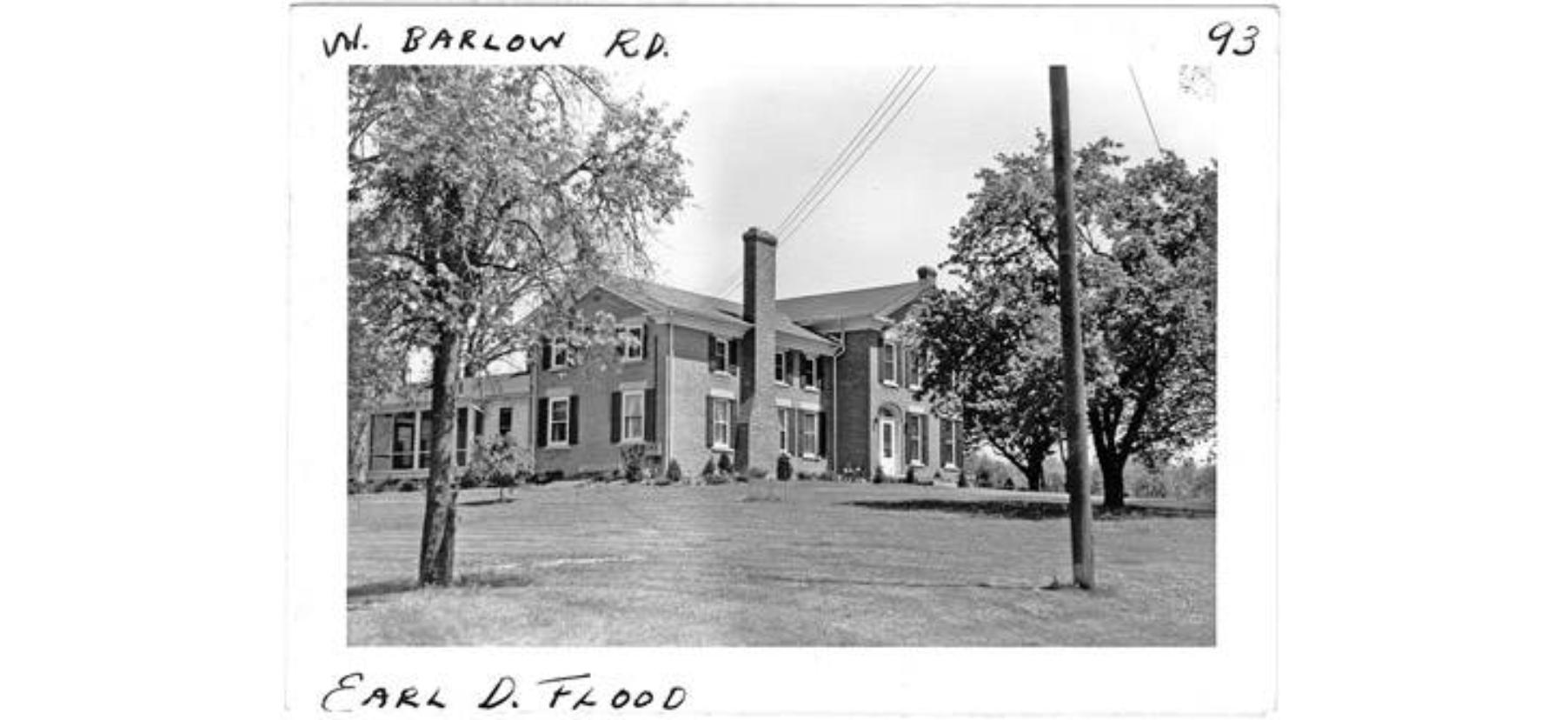 | View House Report | This Federal-style home was built sometime in the late 1820s or early 1830s by Dr. Moses Thompson (1776-1858), the first physician in the Western Reserve. The Flood family purchased the home in 1949 and sandblasted the painted bricks. Flood company president Earl D. Flood (1890-1975) once resided here. This home once served as the executive offices of the Flood Co., a painting business founded in 1841 by members of the Flood family. At one time the Flood Co. was the third-largest business in the United States, producing exterior stains and finishes. AkzoNobel purchased the Flood Co. in 2007. | Hudson Heritage Association Summit Memory |
1751 Barlow Road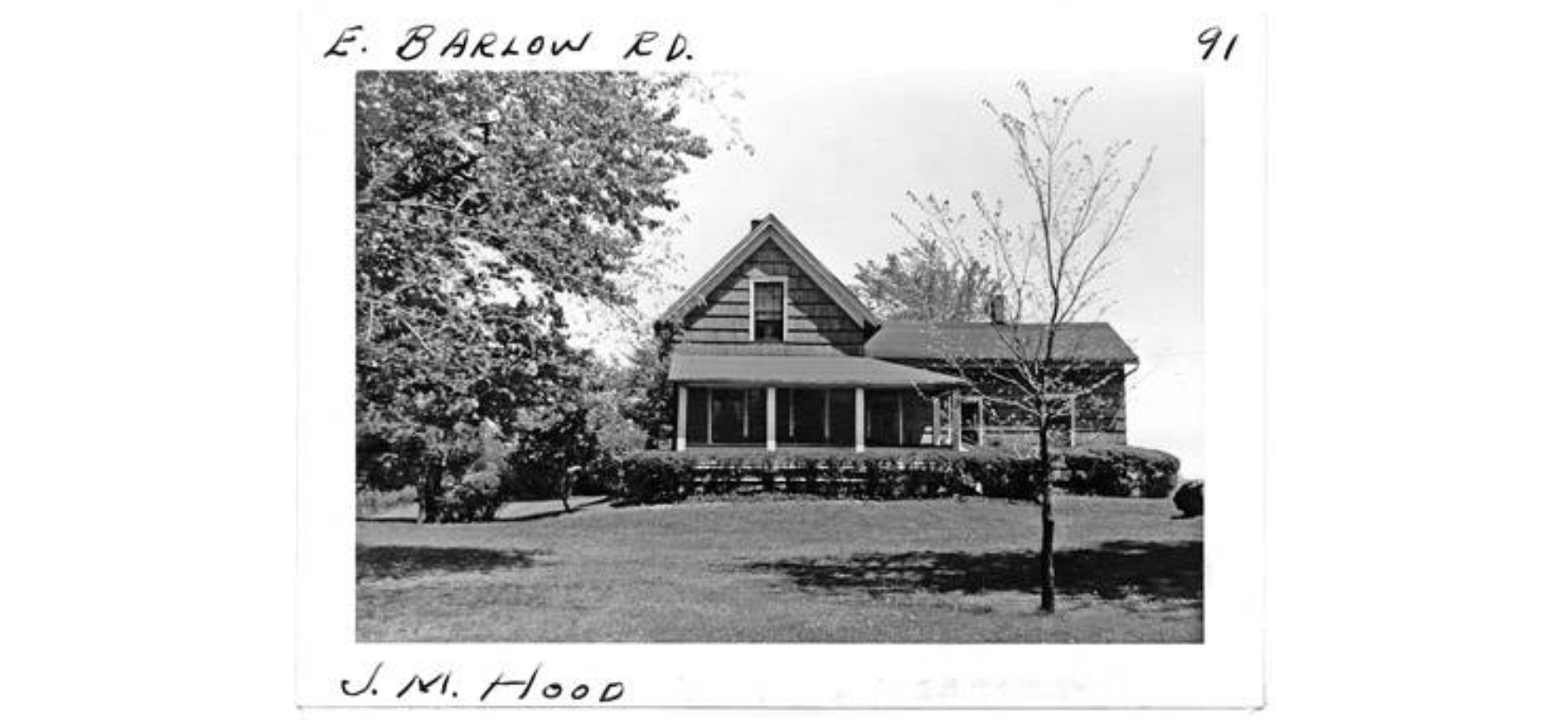 | This farmhouse, which no longer exists, once belonged to James M. Hood (1864-1950) and his wife Clara Case Hood (1868-1938). James enjoyed gardening and automobiles. | Summit Memory | |
| 1931 Barlow Road Case Barlow Farm 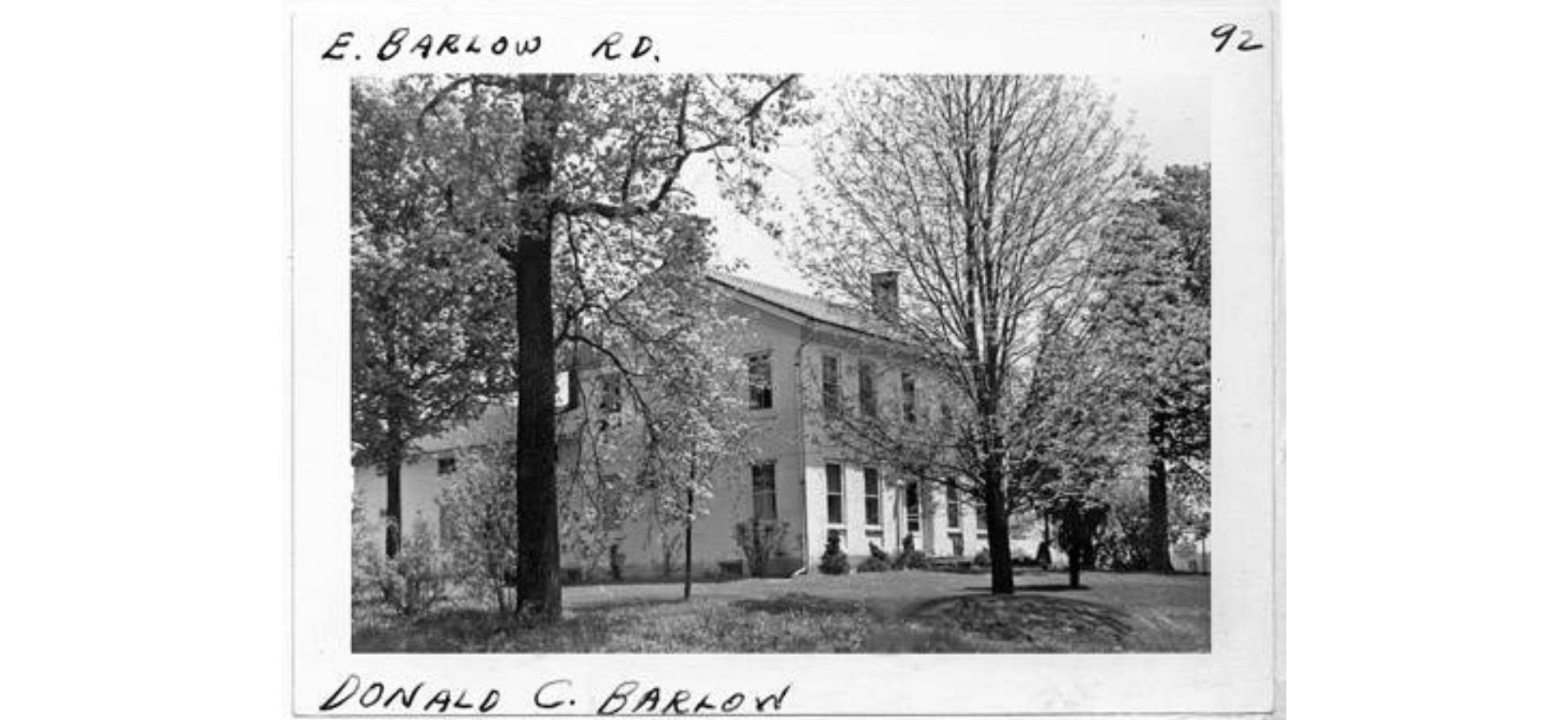 | View House Report | The Case-Barlow Farm house was built in 1831 and remained in the Case-Barlow family until the family donated the homestead to the First Congregational Church of Hudson in 1996. The bricks for its construction were fired locally. It is an early-Greek Revival brick home, one of the first west of Pittsburgh, Pennsylvania. | Hudson Heritage Association Summit Memory |
| 23 Church Street Daniel S. Daney House 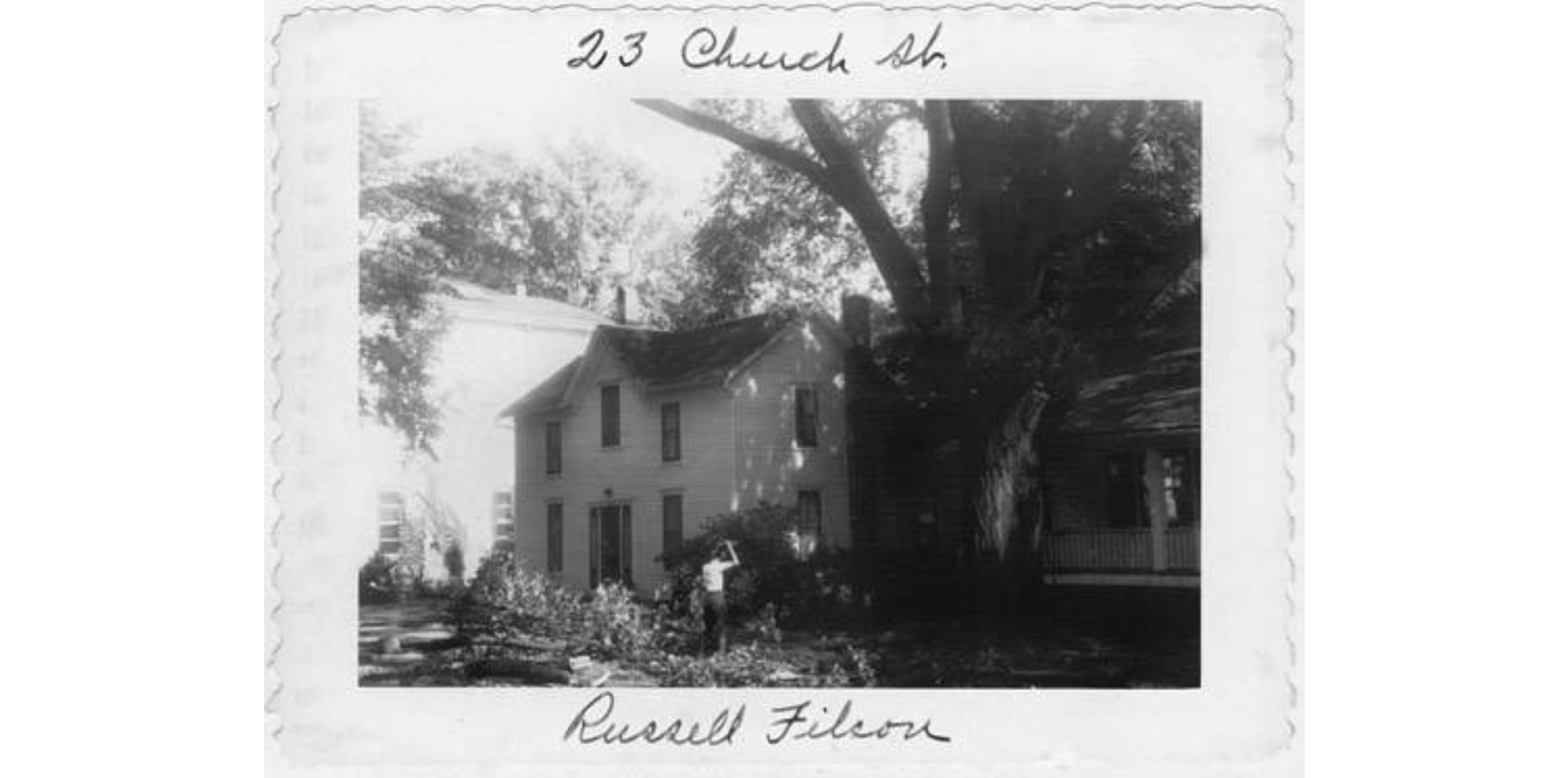 | View House Report | This 1877 home was built by Daniel S. Daney (1828-1895), proprietor of Hudson Bakery. He and his family lived in this house. It is of wood frame construction with a structural clay tile foundation. The home was once used as the Village Nursery School. | Hudson Heritage Association Summit Memory |
27 Church Street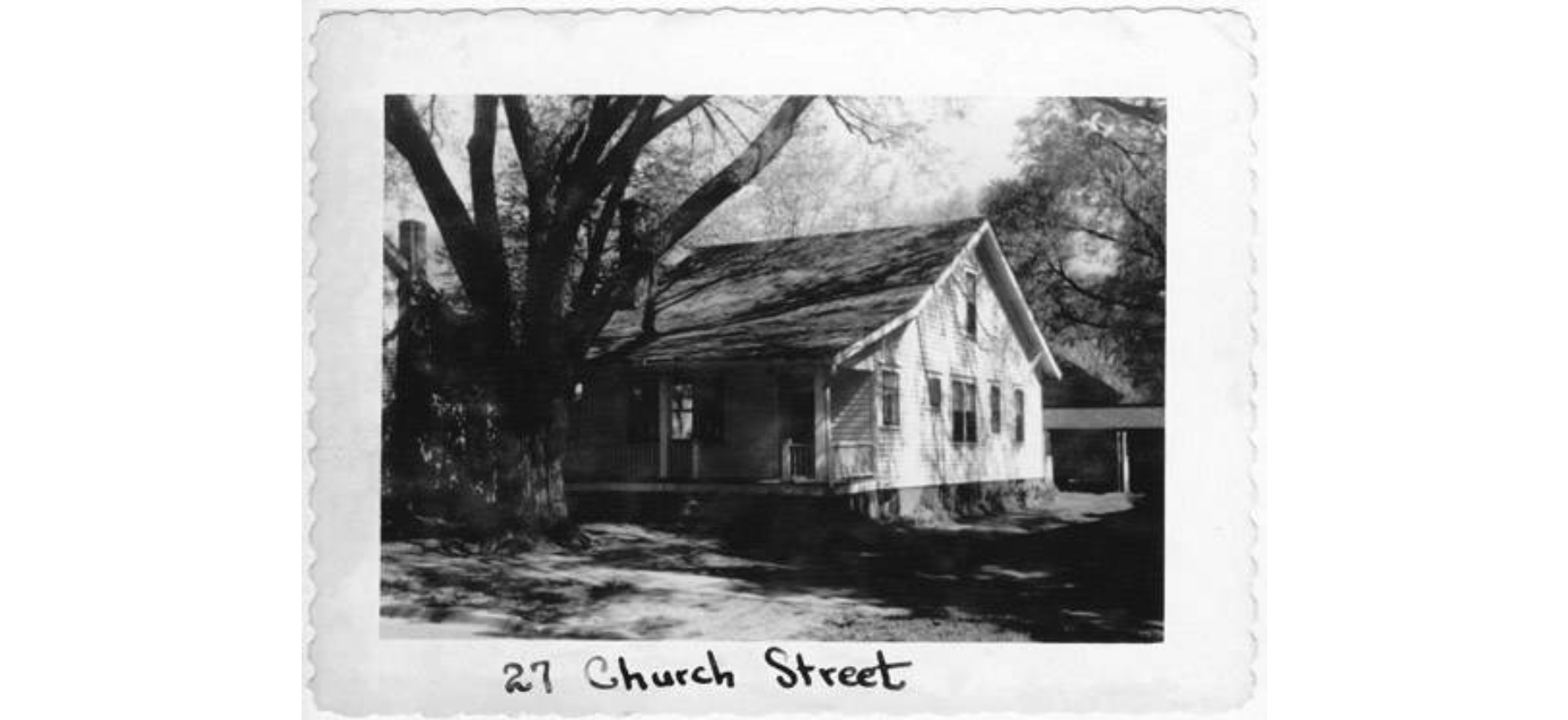 | This bungalow is most probably the Vallonia model of a Sears and Roebuck home which dates between 1927 and 1932. It features a sloping and overhanging roof. The spacious front porch is the hallmark of bungalow layout as it encourages livable outdoor space. Bungalows were economical and yet simple and industrial in their use of space. Little is known about the occupants of this home. | Summit Memory | |
30 Church Street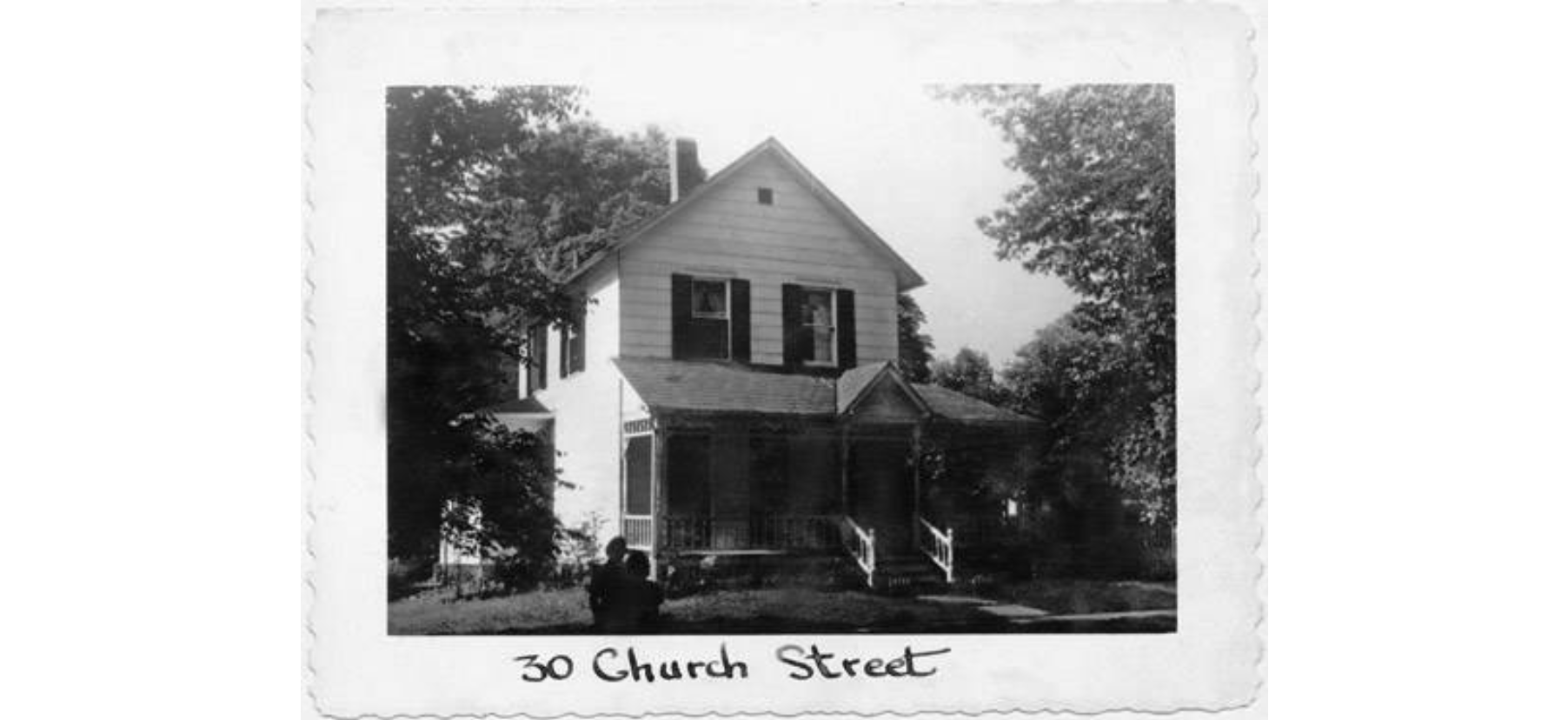 | The Hudson Heritage Association suggests that this home may be a composite of several houses and may incorporate one of the detached wings of the Town-Neibel House at 19 E. Main St. H.N. Darling (1857-1932), local justice of the peace, was a former resident of this home. Darling also owned a magazine and candy shop in Hudson for 23 years. A more recent owner, Arthur Klein (1918-1996), was one of the first representatives to Hudson's Architectural Design and Review Board. | Summit Memory | |
31 Church Street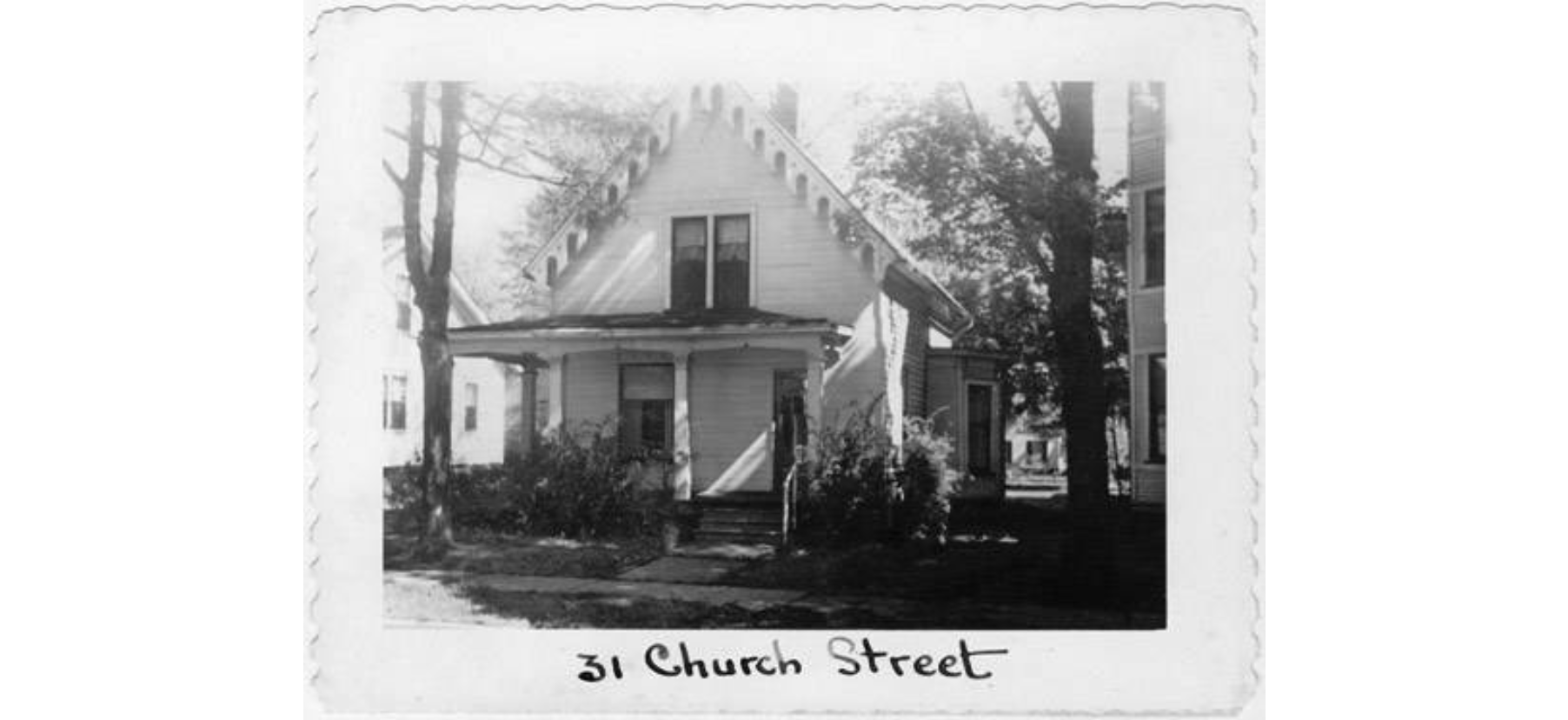 | This house, a Gothic Revival, was built circa 1853 and has been altered so much that most of the Gothic details no longer exist. In order to incorporate a porch roof on the east side, the roofline has been extended. The charming scroll work on the facia board is long since gone with renovations. This once served as a boarding house during the 1940's. More research is needed to clarify the history of this home. | Summit Memory | |
34 Church Street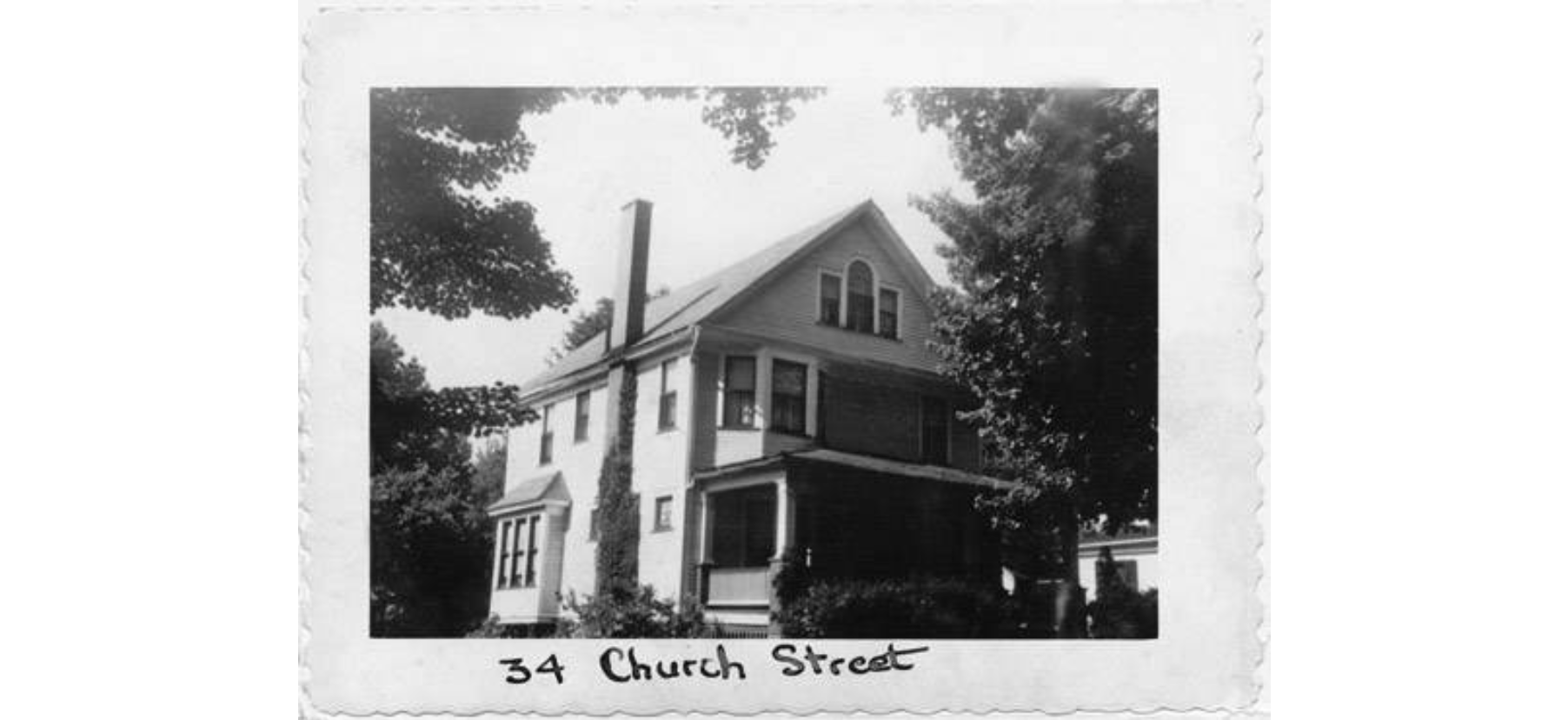 | Another likely mail-order home circa 1910. This Colonial Revival sports a Palladian window and off-center second story bay windows. It is the second home on this site. The first was moved to 57 Streetsboro Street. | Summit Memory | |
| 35 Church Street Charles Buss House 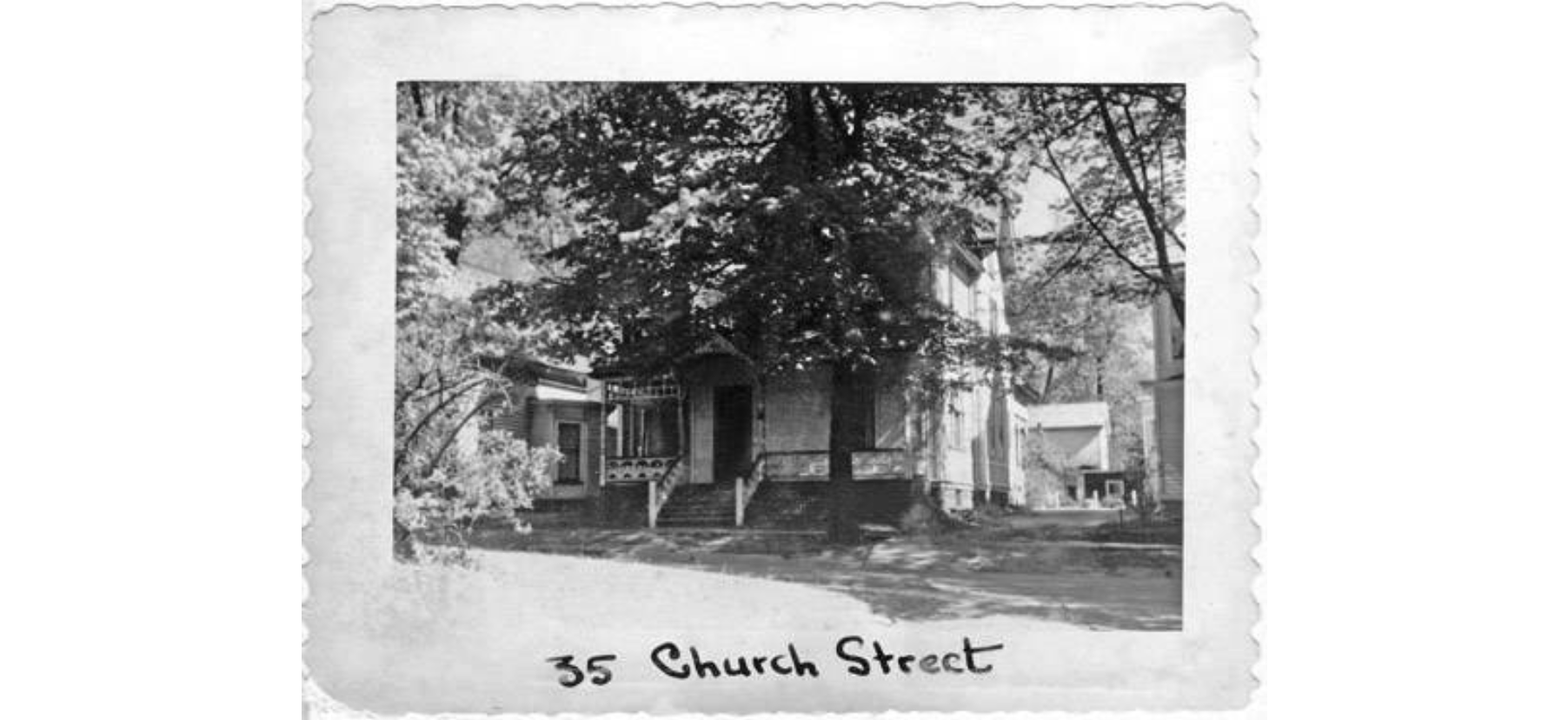 | Charles H. Buss (1845-1911) built this Queen Anne home circa 1890. The exuberant and excessive style, the variety of materials utilized in construction, the irregular roof line, the asymmetrical and offset door are hallmarks of the Queen Anne style. Charles Buss was the son of John Buss (1811-1876), successful dry goods merchant of Hudson. After John's death, Charles took over the store and never really left town unless he was buying merchandise for the store. Charles often loaned money privately for real estate. | Hudson Heritage Association Summit Memory | |
| 37 Church Street Dennis J. Joyce House 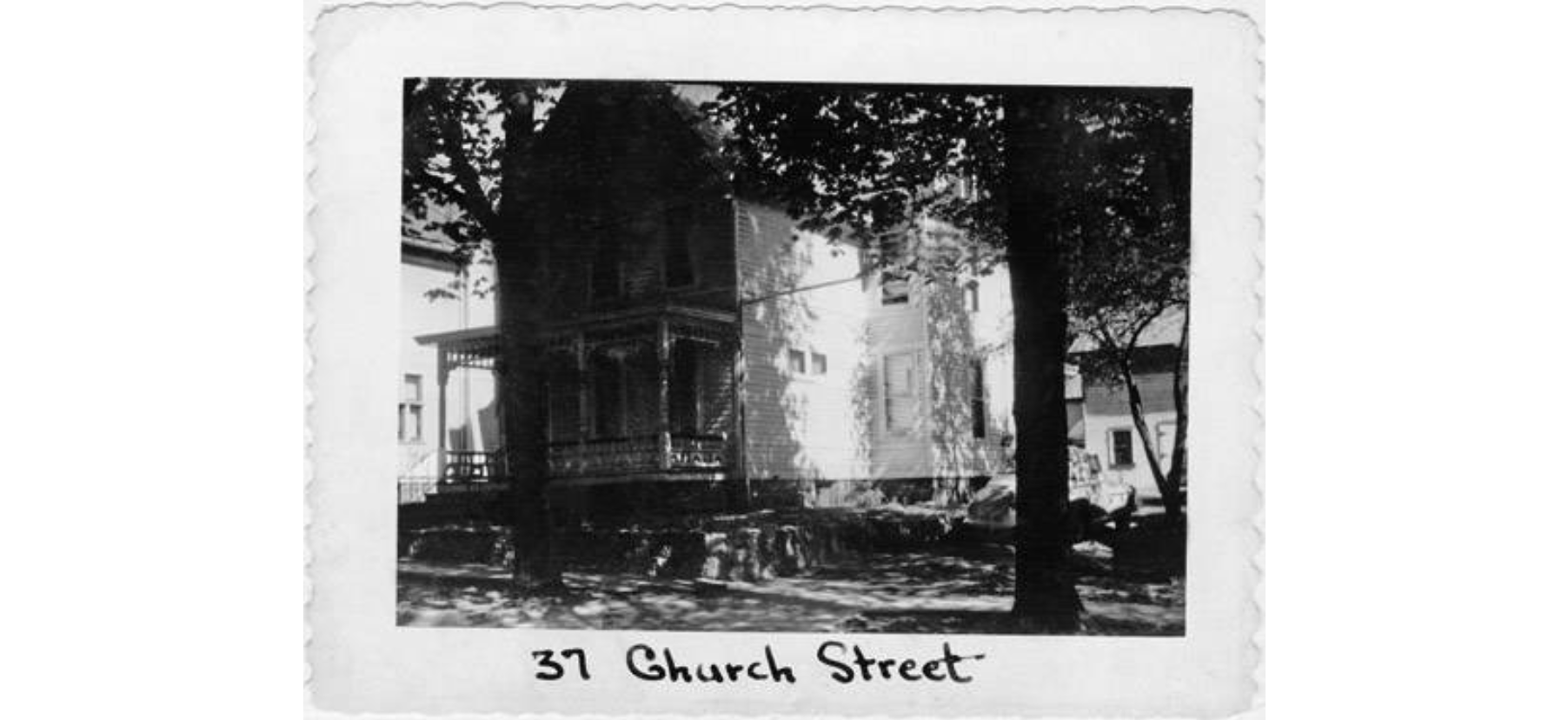 | View House Report | This is the second home built on this site. Hannah Holmes (1801-1888) built the first home, which Dennis J. Joyce (1855-1943), Hudson, Ohio merchant razed to build this structure. The 1889 construction date is written on the wall above the mantel in this Queen Anne home. Joyce was an Irish immigrant and part of a larger group of Irish immigrants working on the construction of the railroad. He became a prosperous grocer later in life. Charles Lewis (1891-1965), World War I veteran and his wife, Gladys Lewis (1895-1977), Hudson, Ohio's flamboyant story lady and theatre patron, also lived here. | Hudson Heritage Association Summit Memory |
| 38 Church Street Martin Luther Edwards House 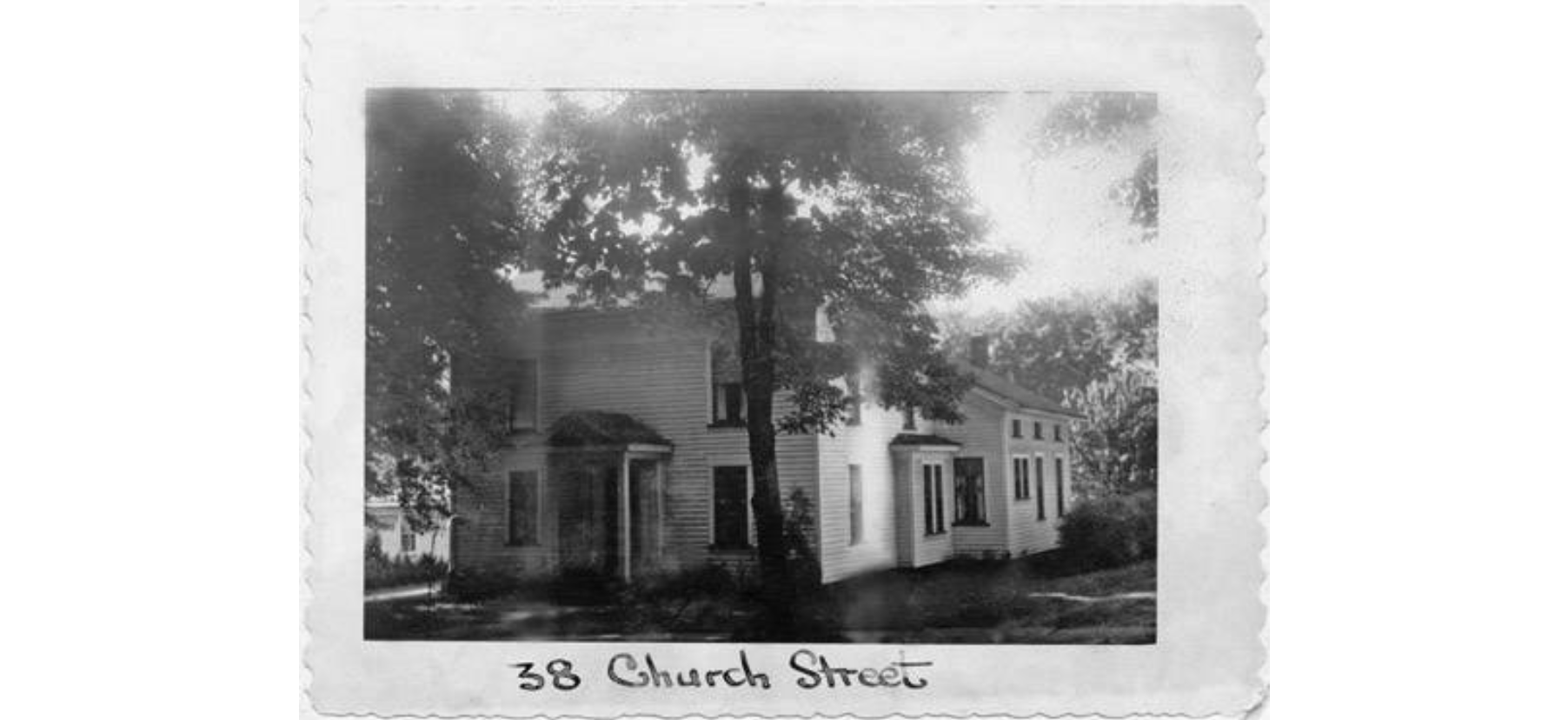 | View House Report | The Greek Revival-style Martin Luther Edwards House was built in 1853. Martin Luther Edwards (1781-1870) was from New Milford, Connecticut, and was a cabinet- maker. He and his brothers moved to Canfield, Mahoning County, Ohio, in 1827 and then on to Hudson before 1837. Luther lost his young wife Sarah Luther (1784-1851) and 20-year old son to consumption and, in his sorrow, built this home. He found happiness with his musically inclined second wife, Flora Mills Edwards (1810-1867). Ernest Fillius (1857-1921), a former Hudson mayor and Summit County commissioner once occupied this home. During the spring of 1950, when the family of Leland L. Smith (1891-1960) occupied the home, a burglar entered the back door and took the first three things he laid eyes on: a gun, a rag and a carton of Lucky Strike cigarettes. The burglar was never caught. | Hudson Heritage Association Summit Memory |
| 39 Church Street Hannah Hurn Holmes House 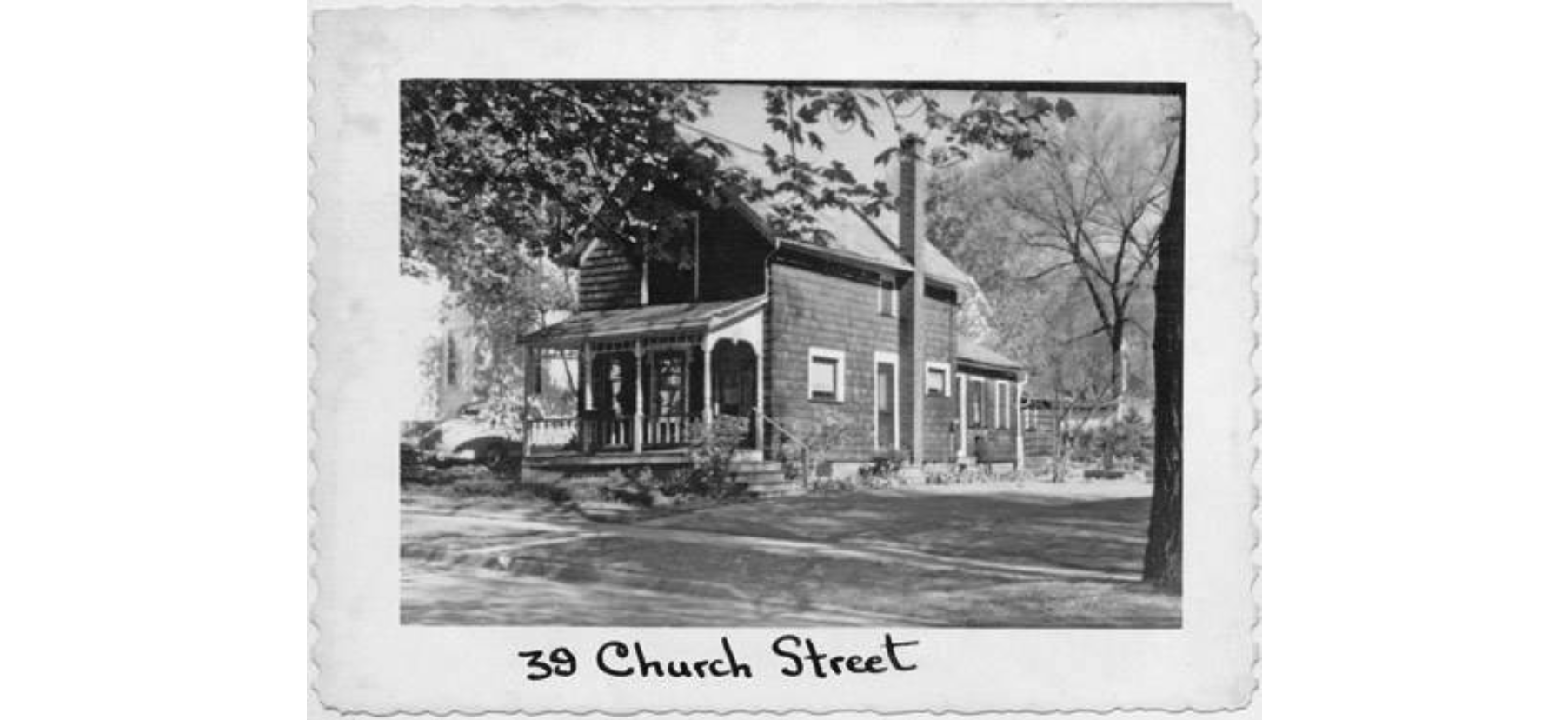 | View House Report | In 1853, Hannah Hurn (1800-1888) married John Holmes (1824-1868), a carpenter, butcher and saloon proprietor and they built this Gothic Revival house the same year. He was also found guilty in 1878 of "keeping a place of unlawful sale of beverages." She lived in the house until her death in 1888. The window upstairs is a replacement, most likely of a Gothic style window. In 1870s, the porch was added, the foundation replaced and there is an addition at the rear. Later owner and milliner, Kate Hild (1866-1965) lived within six weeks of being 100 years old. All the while, she did small jobs of remodeling hats. | Hudson Heritage Association Summit Memory |
43 Church Street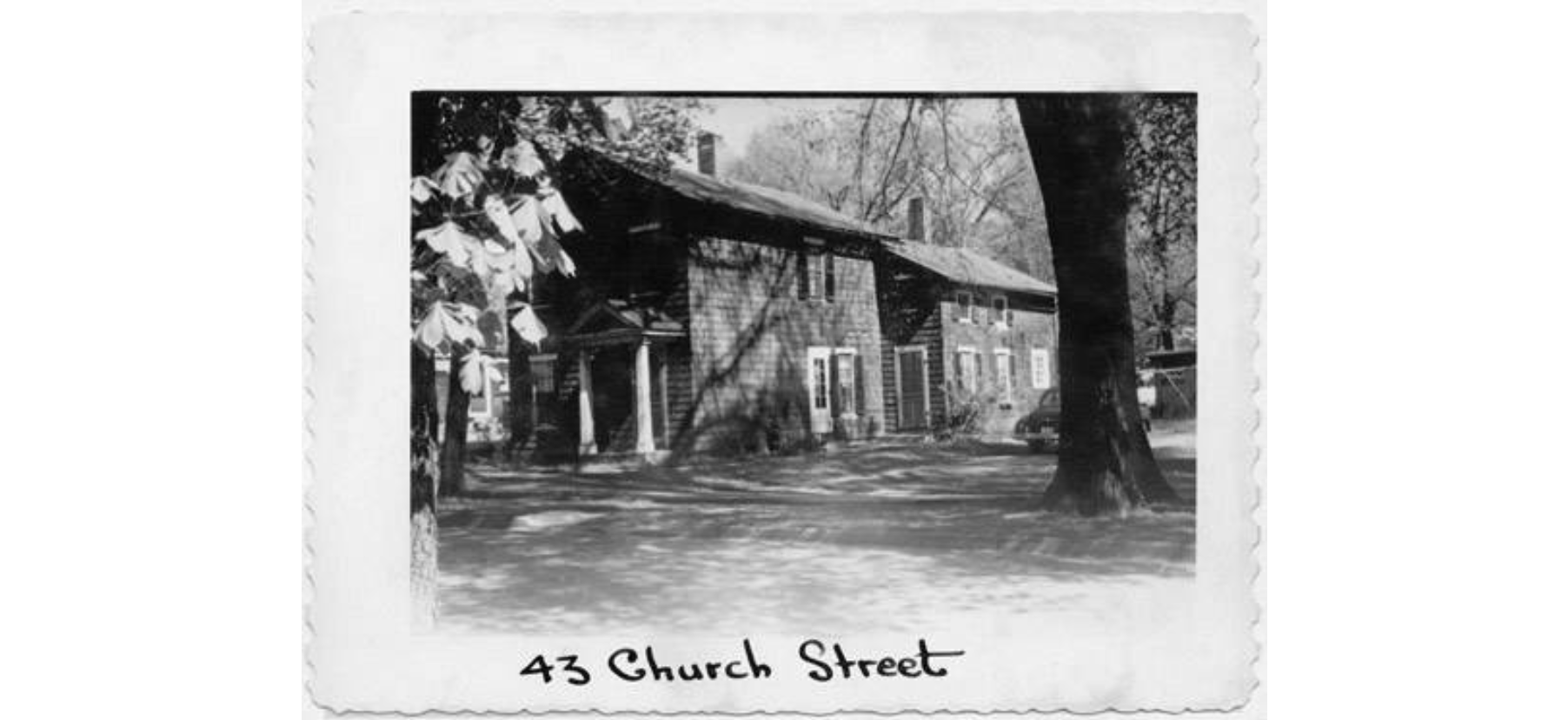 | Constructed most likely in the 1890s, this house was once home to Acme Grocery clerk, Ruth Corbus. (1892-1952). | Summit Memory | |
44 Church Street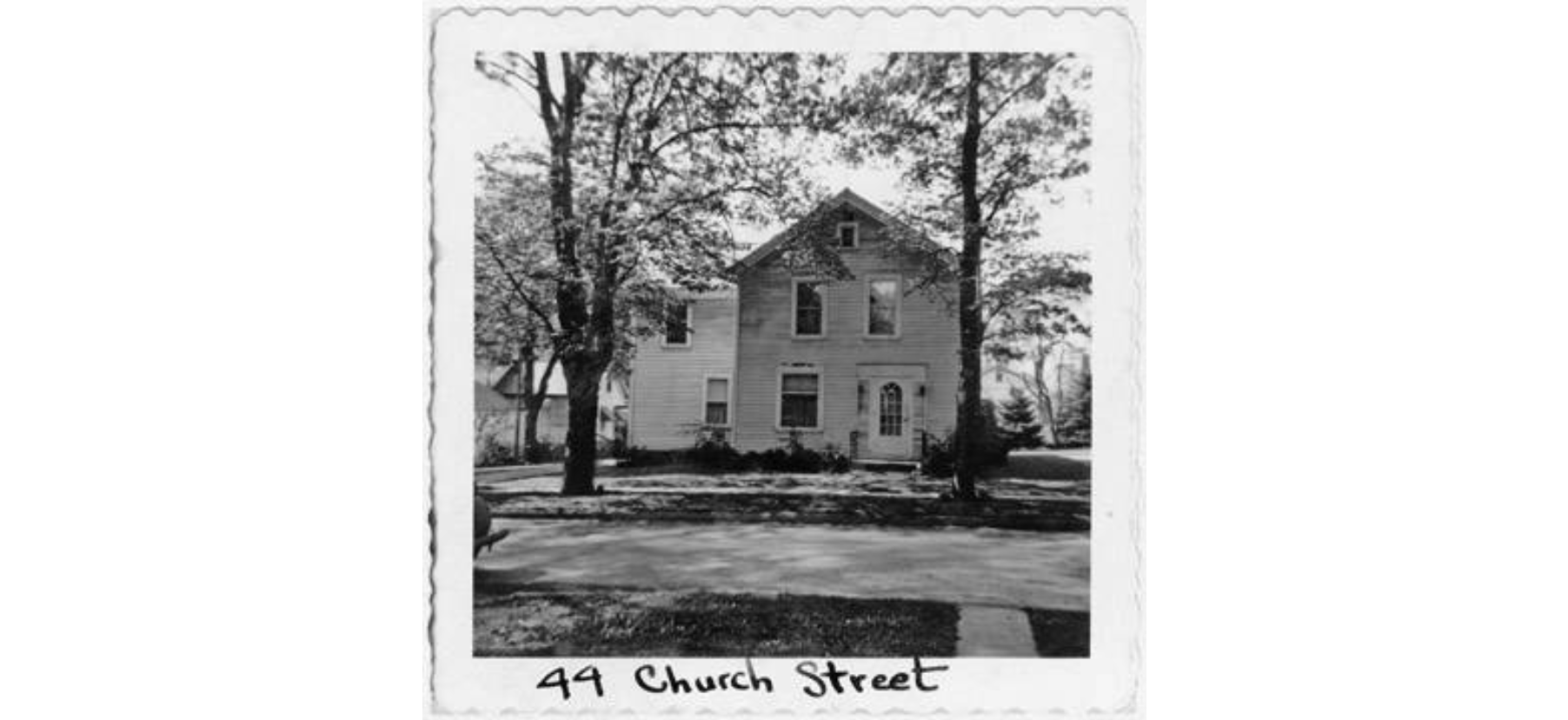 | This house was most likely built as a speculation home. A local carpenter, John Holmes (1824-1868) built the house as an investment. Land owner, Mason Grosvenor sold the land to Holmes in 1853 for $225.00 and Holmes sold the same parcel of land with a new house the following year for $1,150.00. The two story Greek Revival house is L-shaped, with a front gable and wing and typical of Hudson, Ohio houses of that period. Not original is an elaborate twelve-paned glass door. Later residents included Hudson Volunteer Fireman, H.J. Weiand (1889-1983) and his wife, and avid bowler, Millie (1906-1982). | Summit Memory | |
| 47 Church Street Samuel B. Bediant House 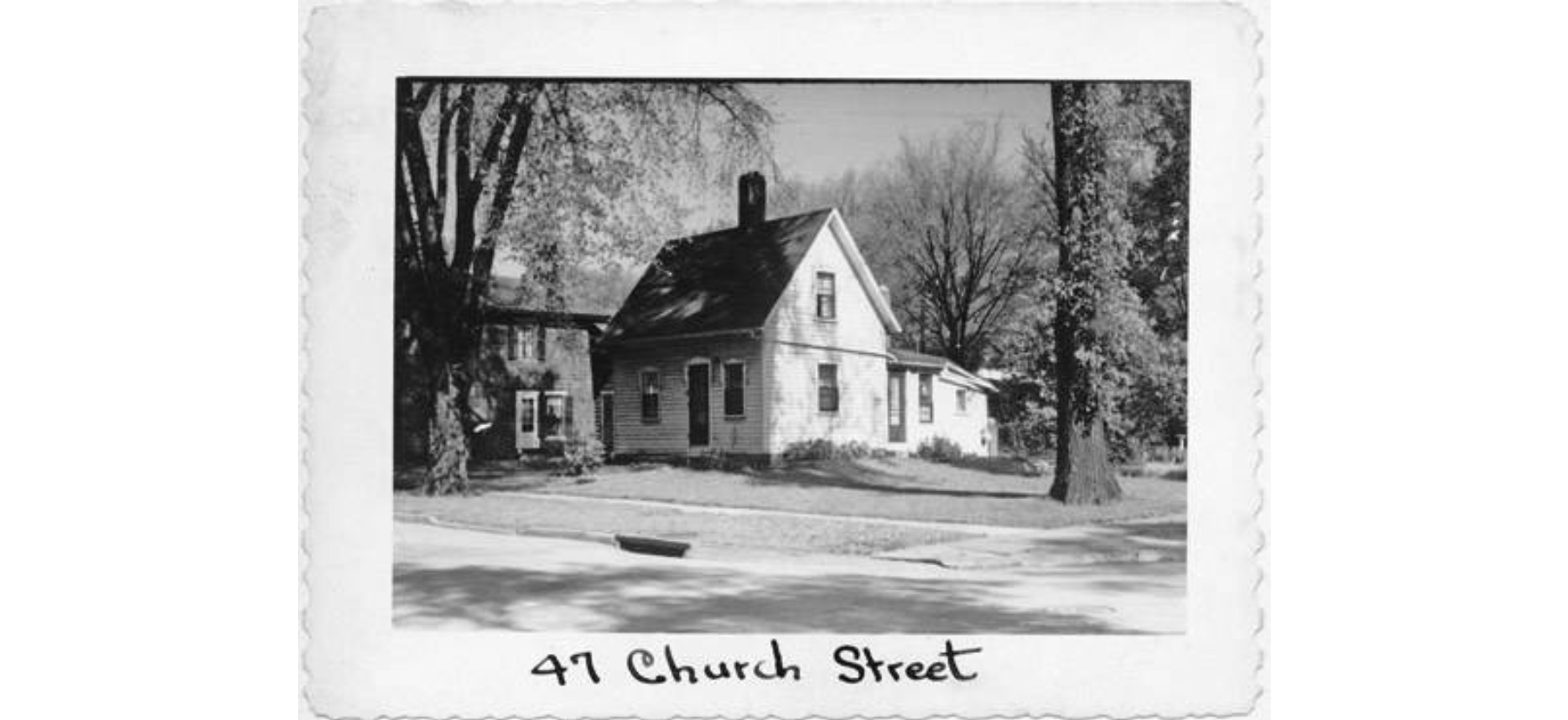 | View House Report | Built in the early 1868, this Gothic Revival home was once the home of Samuel Bediant (1837-1912), an expert machinist and trained blacksmith. He was famous for his friendly disposition and many useful inventions. In 1877 Bediant devised a self-steering traction engine. The home was also once the residence of former Hudson, Ohio mayor, Samuel Judd (1813-1892). | Hudson Heritage Association Summit Memory |
48 Church Street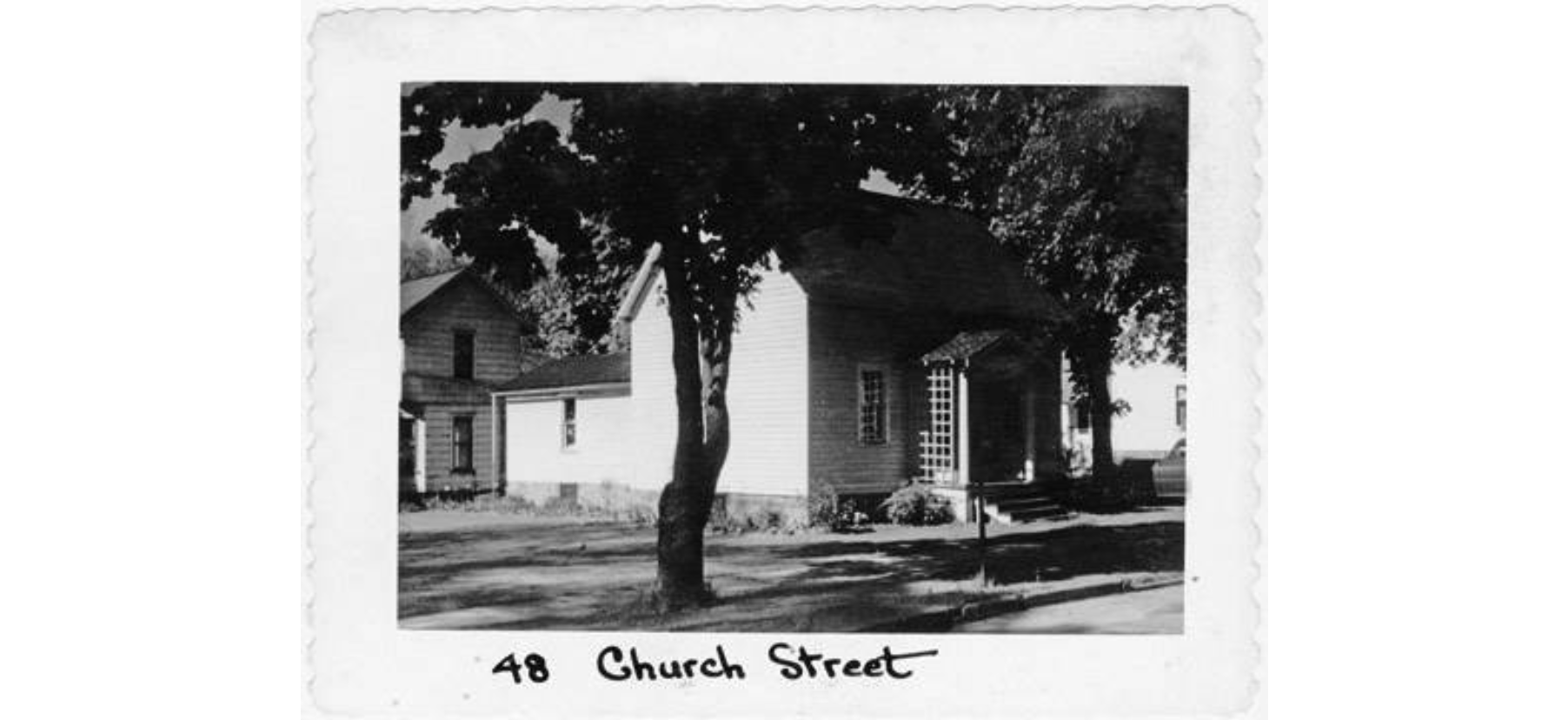 | This basic home was most likely built by Frederick W. Bunnell (1821-1925) in 1853 on land originally part of Heman Oviatts (1775-1854) property (and then Western Reserve College when Oviatt deeded his land to the school). Englishman, James Taylor (1809-1884), was one of Hudson, Ohio's dray-men and newly married to Irish lass Jane Thompson Taylor (1831-1906). They needed a place to call home and start a family. This simple styled home fit their purpose. Their daughter, Elizabeth Taylor (1868-1946), was a clerk for Western Reserve Telephone Company for 35 years also resided here as did her sister, Isabella Taylor Hill (1865-1927.) | Summit Memory | |
74 Church Street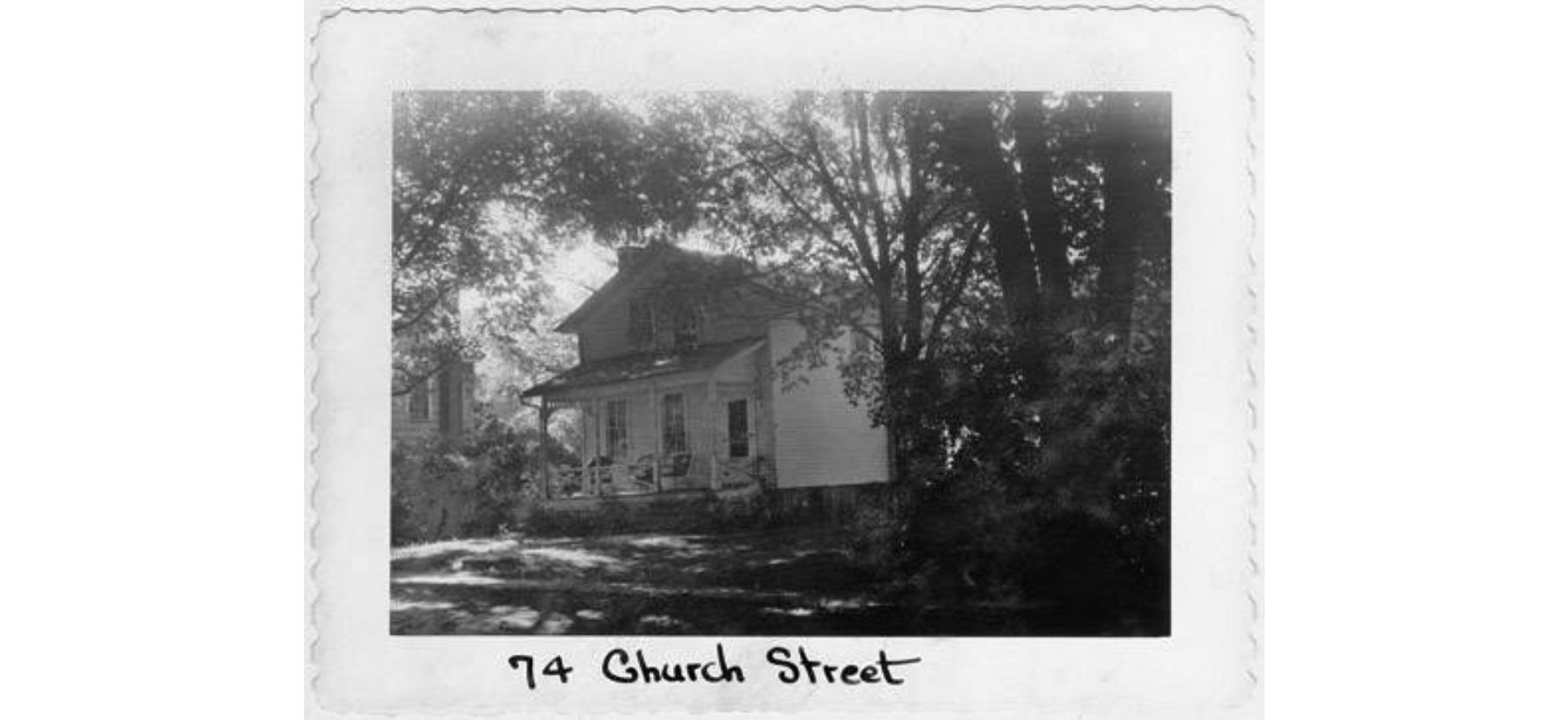 | The house, built in the 1870s, was moved to this location from across the street, at the lower end of the Oviatt Street School playground. The home was once residence of James W. Meeker, an auto body inspector (1908-1976). | Summit Memory | |
76 Church Street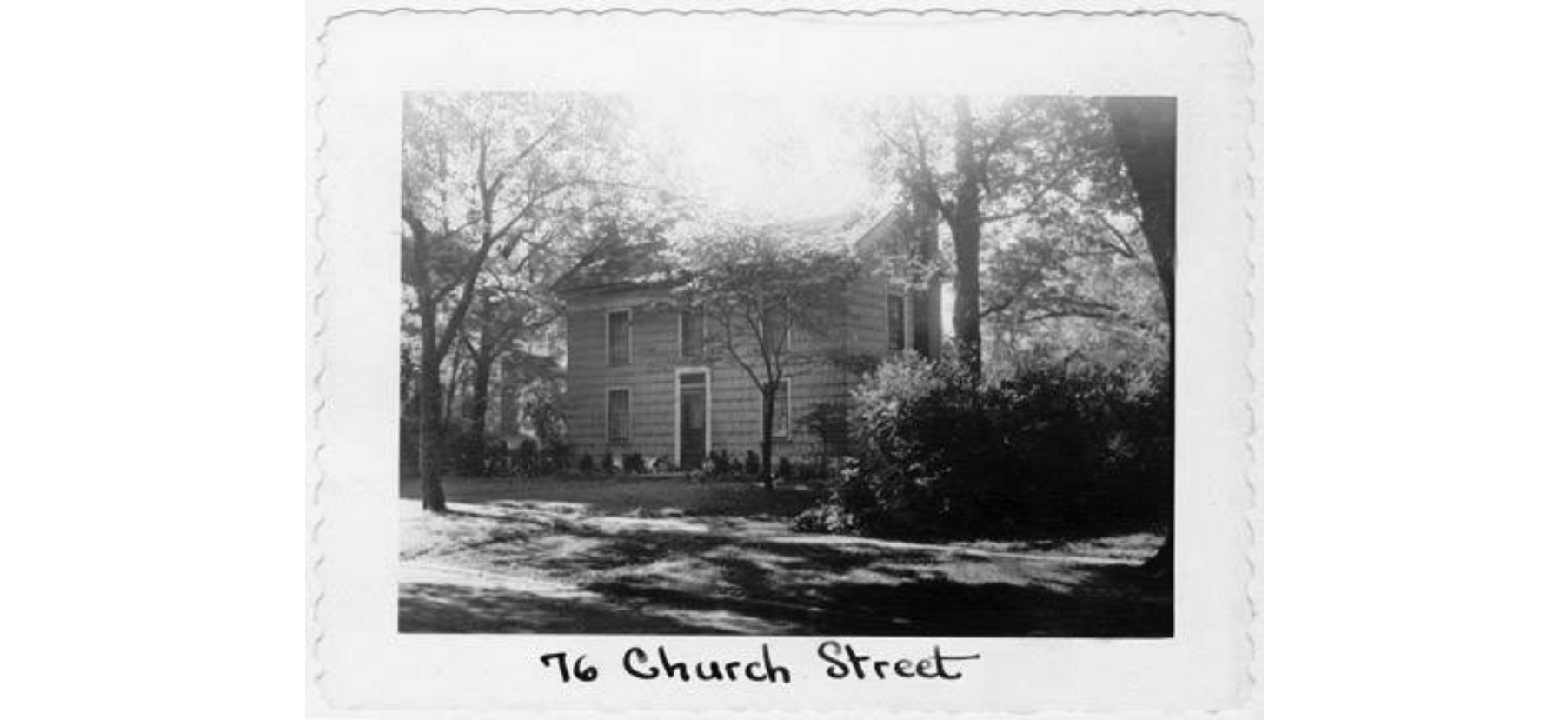 | Little is known about this two-story Colonial Revival except it was the longtime home of school bus driver Charles McMahon (1890-1974) and his wife Pearl Veon McMahon (1890-1972). The couple lived to celebrate fifty years of marriage. | Summit Memory | |
82 Church Street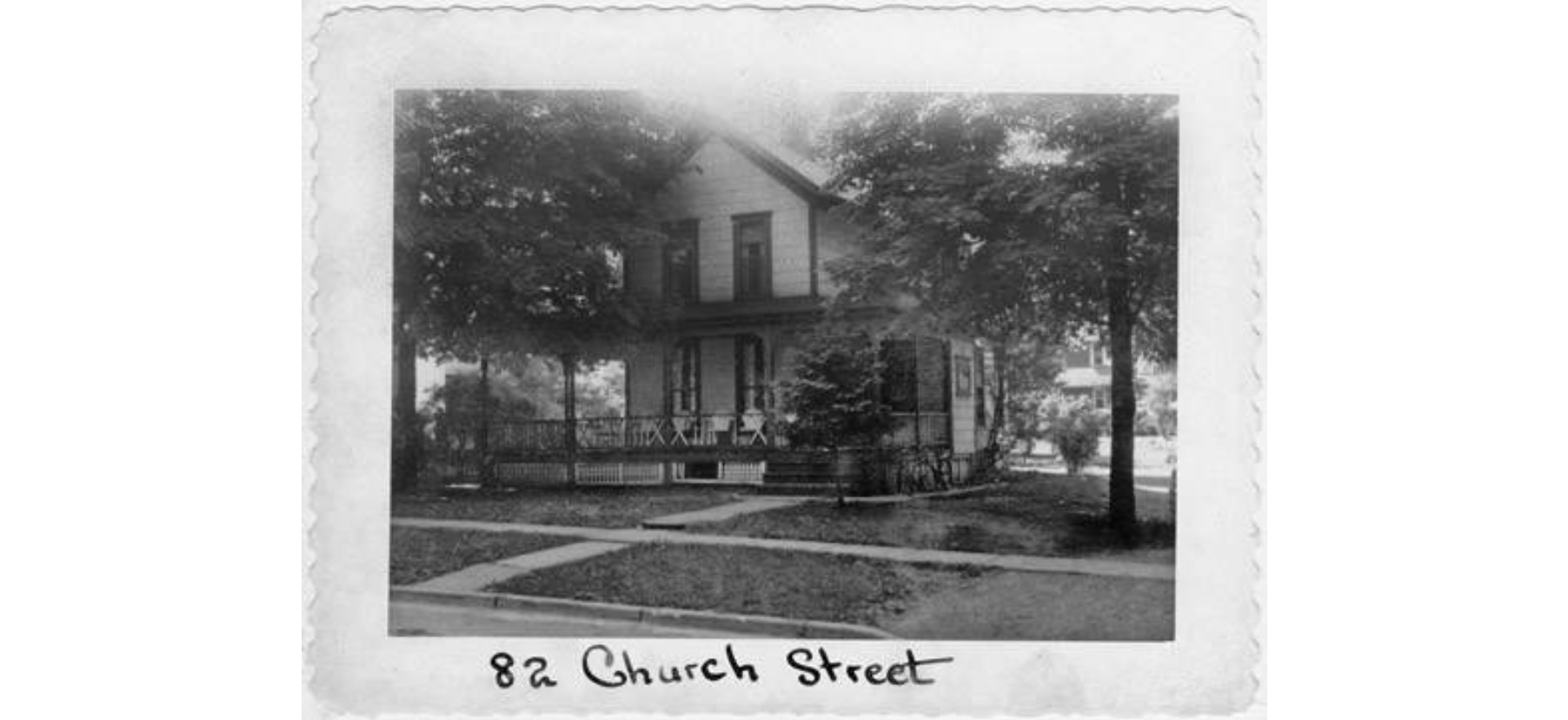 | Built circa 1873, the house is cross gabled with a slate roof, and structural tile foundation. Slate was often used for roofing material during the turn of the century as it was readily available and cheap and required virtually no maintenance. This was home to Elizabeth Carey Rardin (1913-1990). Her brother-in-law Carl Ellsworth (1916-1980) ran Thistledown Race Track. | Summit Memory | |
86 Church Street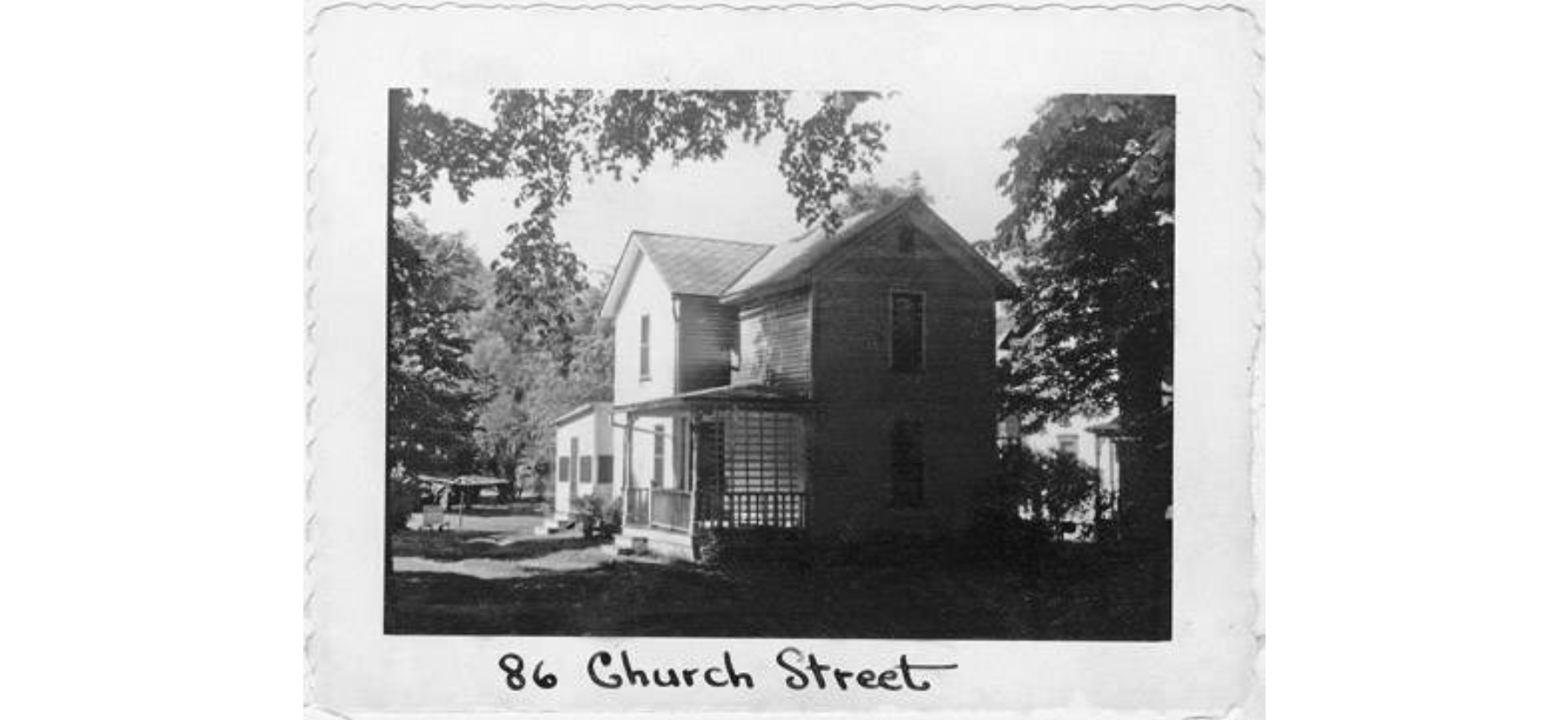 | This house built circa 1883 was once home to Mrs. Bernice Pettingell (1883-1970), an employee of Acme Grocery Store for twenty two years. More research is needed to determine house history. | Summit Memory | |
7 College Street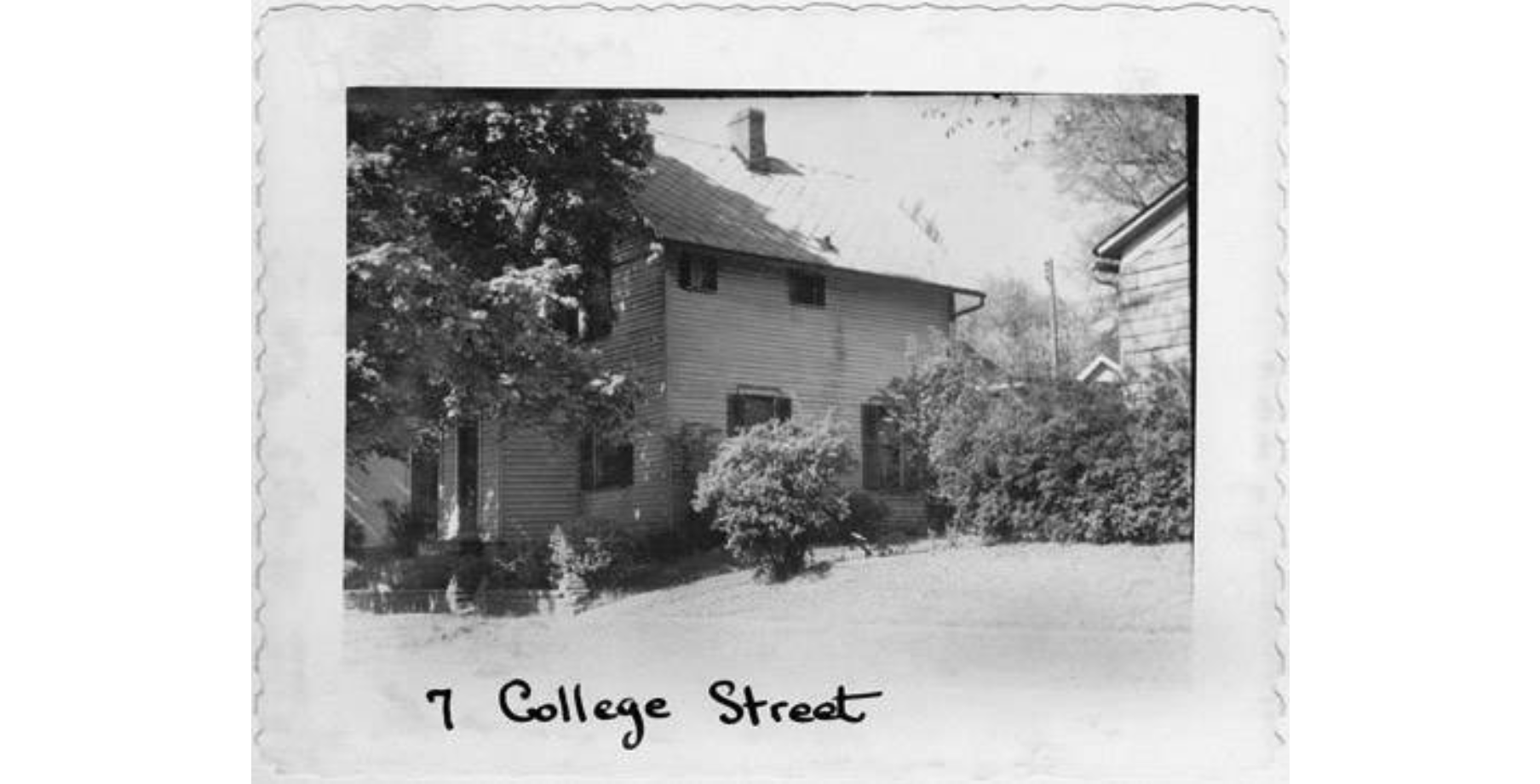 | This house may have been part of a small collection of homes built for employees of a local cheese company in the late 1870s or early 1880s. This home had an early telephone system most likely because the house's resident, Mrs. Edna Hinds (1885-1977), was an employee of the Western Reserve Telephone Company. Hinds was once a teacher as well. | Summit Memory | |
11 College Street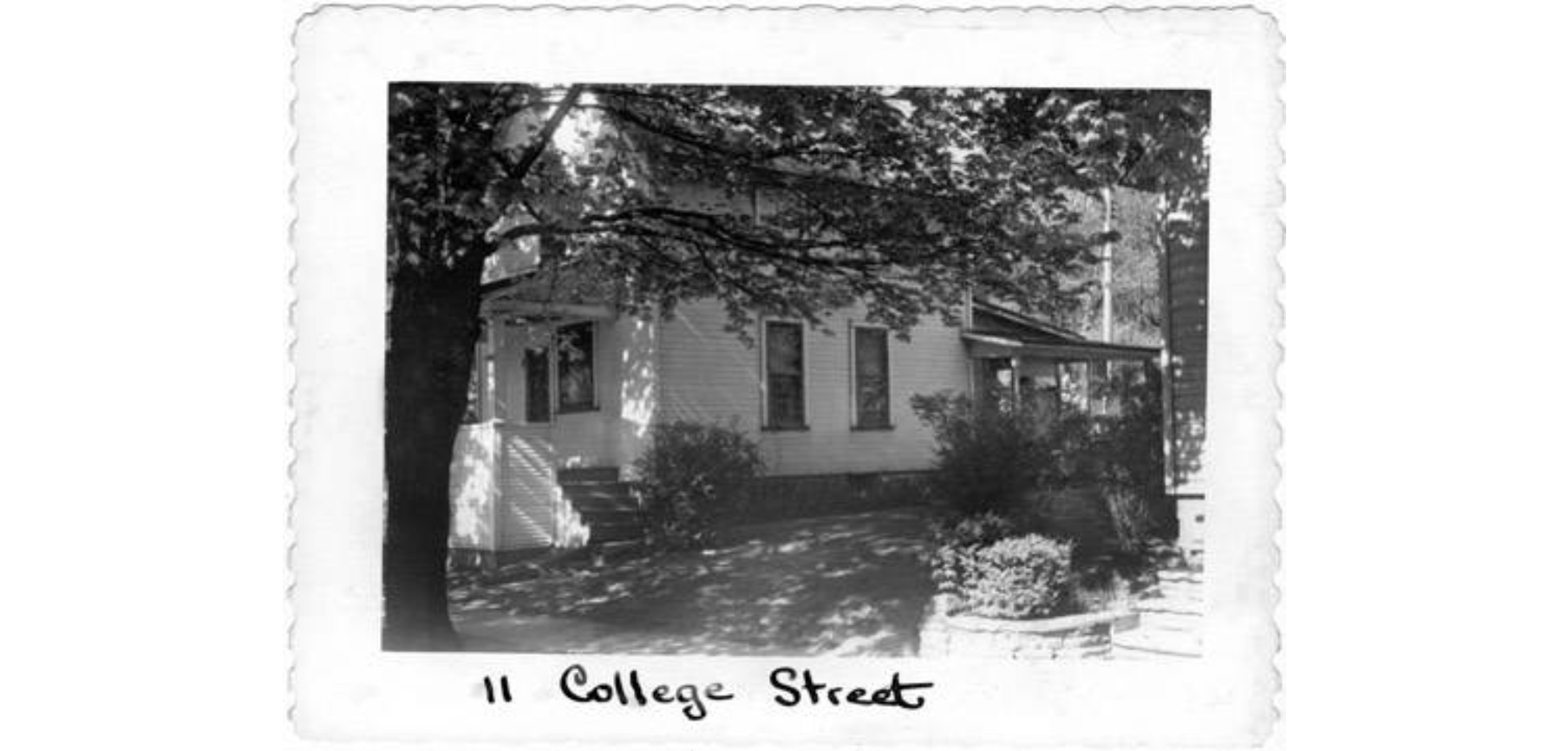 | This home was probably built in the 1870s or early 1880s and may have been part of a small collection of homes built for employees of a local cheese business. Harry Snyder (1892-1967), veteran of the battle of Meuse Argonne in World War I, lived in this home. Snyder was also an employee of Morse Instrument Company (later Morse Controls), a local Hudson manufacturing company. | Summit Memory | |
| 12 College Street James Watson House 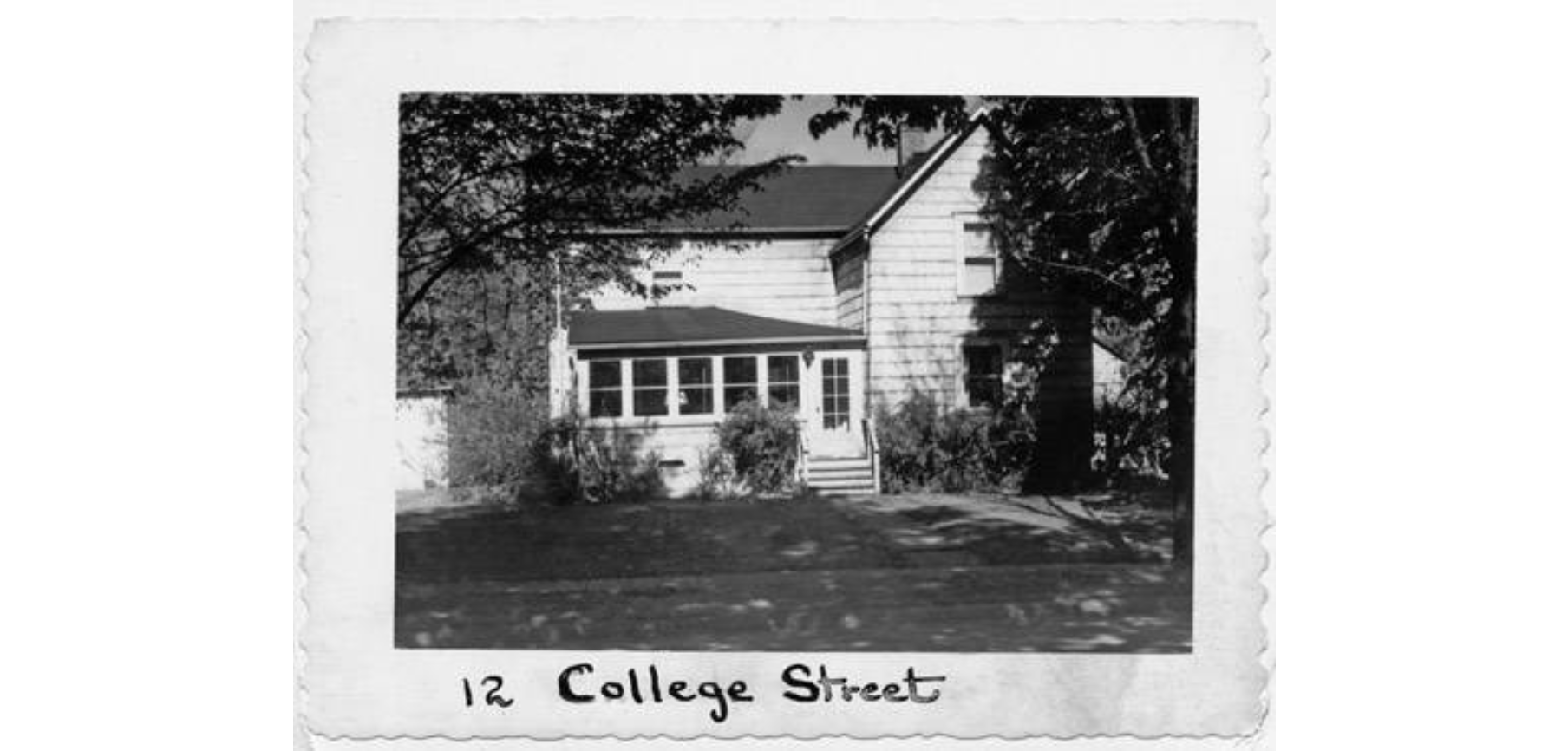 | View House Report | Frederick Bunnell (1821-1925) built this home in 1853. Not much is known about the original structure because there have been a great number of modifications. The first resident of this home was James Watson (1833-1888), an English immigrant and railroad worker. Three generations of the Kenyon family grew to adulthood here. Seth Kenyon (1881-1877), the first Kenyon to occupy this home, also worked at one time for the Pennsylvania Railroad. | Hudson Heritage Association Summit Memory |
| 15 South College Street William Bullock House | View House Report | William Bullock lived in this house and kept a saloon at the corner of College and Railroad Streets (now known as Maple Street), with a wooden fence connecting the house to the saloon. The saloon fell into disuse and collapsed. | Hudson Heritage Association |
16 College Street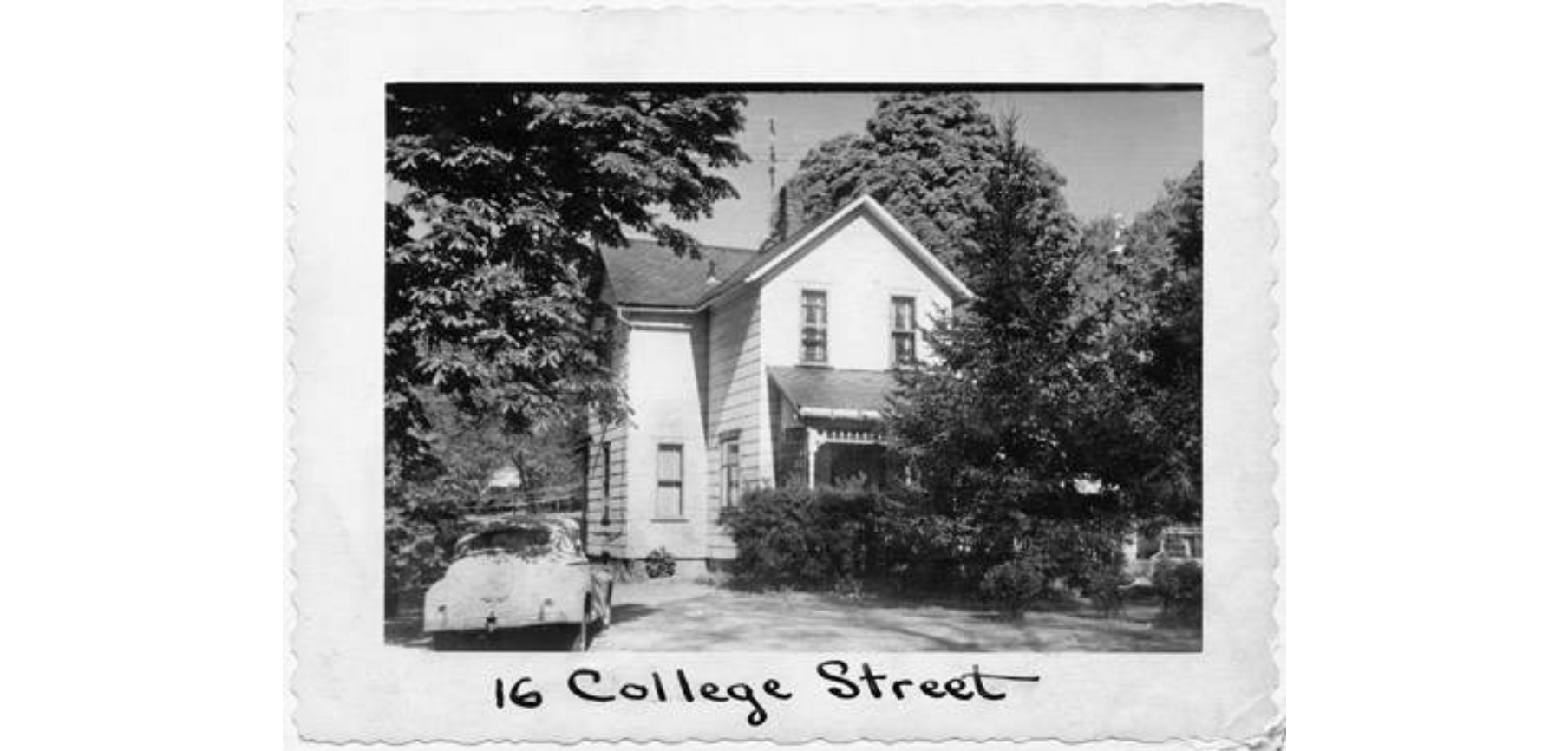 | This house was once home to Mary Henry (1870-1947), a 60-year resident of the village and a charter member of the Lee-Bishop American Legion Auxiliary Post #464. The home housed all 12 members of the Henry family which included 10 children, nine of them boys. The Henrys called the fire department on Christmas Day in 1935 when an "electric train in cotton under the Christmas tree" caused a small fire. | Summit Memory | |
21 College Street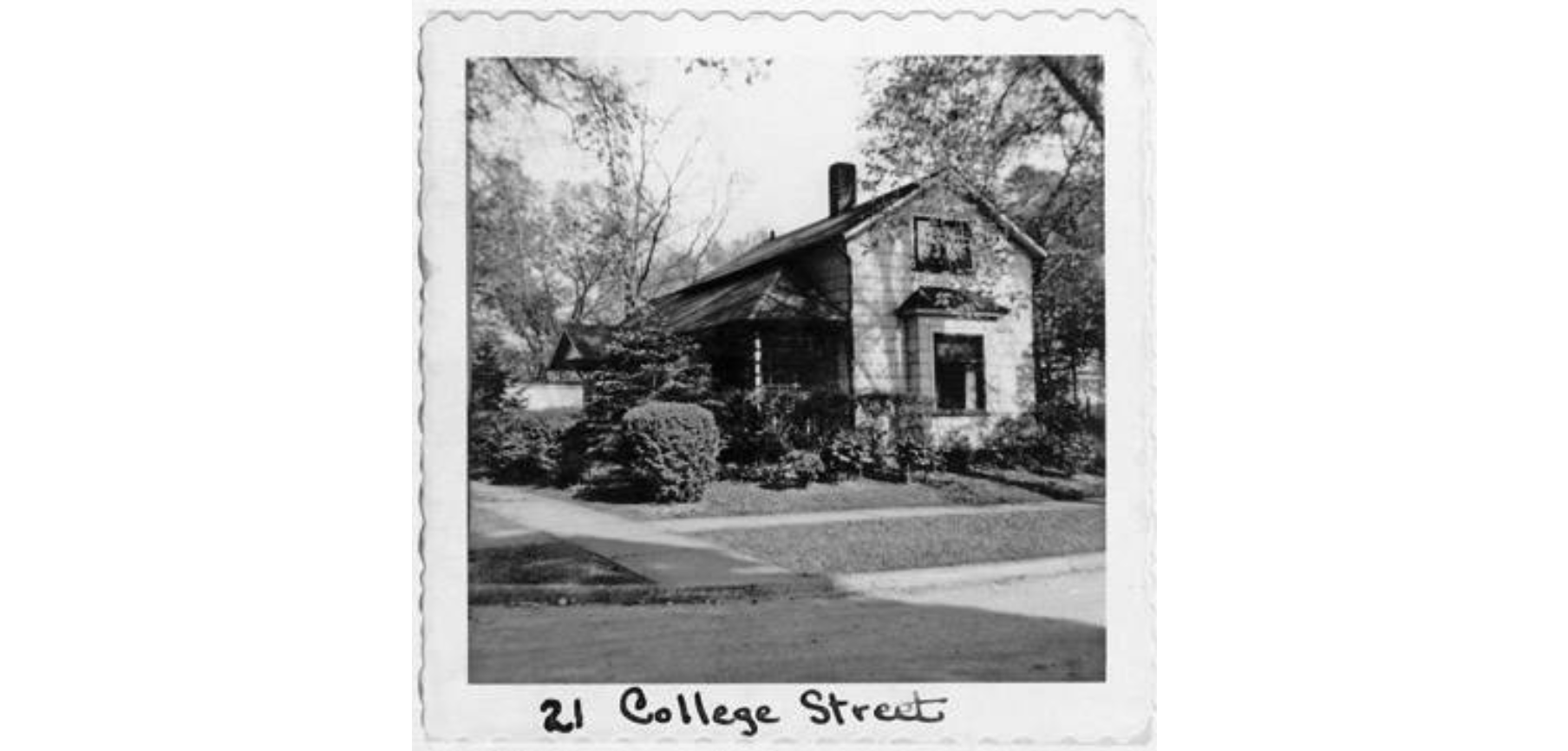 | Little is known about this two story turn-of-the-century structure. The family of William Bailey (1879-1969), an employee of Morse Instrument Co. (later Morse Controls), once lived here. Morse Instrument Co. manufactured boat propellers and night time aerial photography equipment. | Summit Memory | |
27 College Street | This house may have been part of a small collection of homes built for employees of a local cheese company in the late 1870s or early 1880s. | Summit Memory | |
| 37 College Street William Noonan House | View House Report | William Noonan, his three daughters and his brother, John, were part of the Irish immigration of the 1850s. They possibly came during the railroad fever, but when that failed, they had to find other work. The brothers did quite well financially, buying property and building houses. Three of the houses William built were in a grouping that coincided with the prominent cheese manufacturing facility at the corner of College and Aurora streets and the cheese box factory at the corner of College and Streetsboro streets. | Hudson Heritage Association |
41 College Street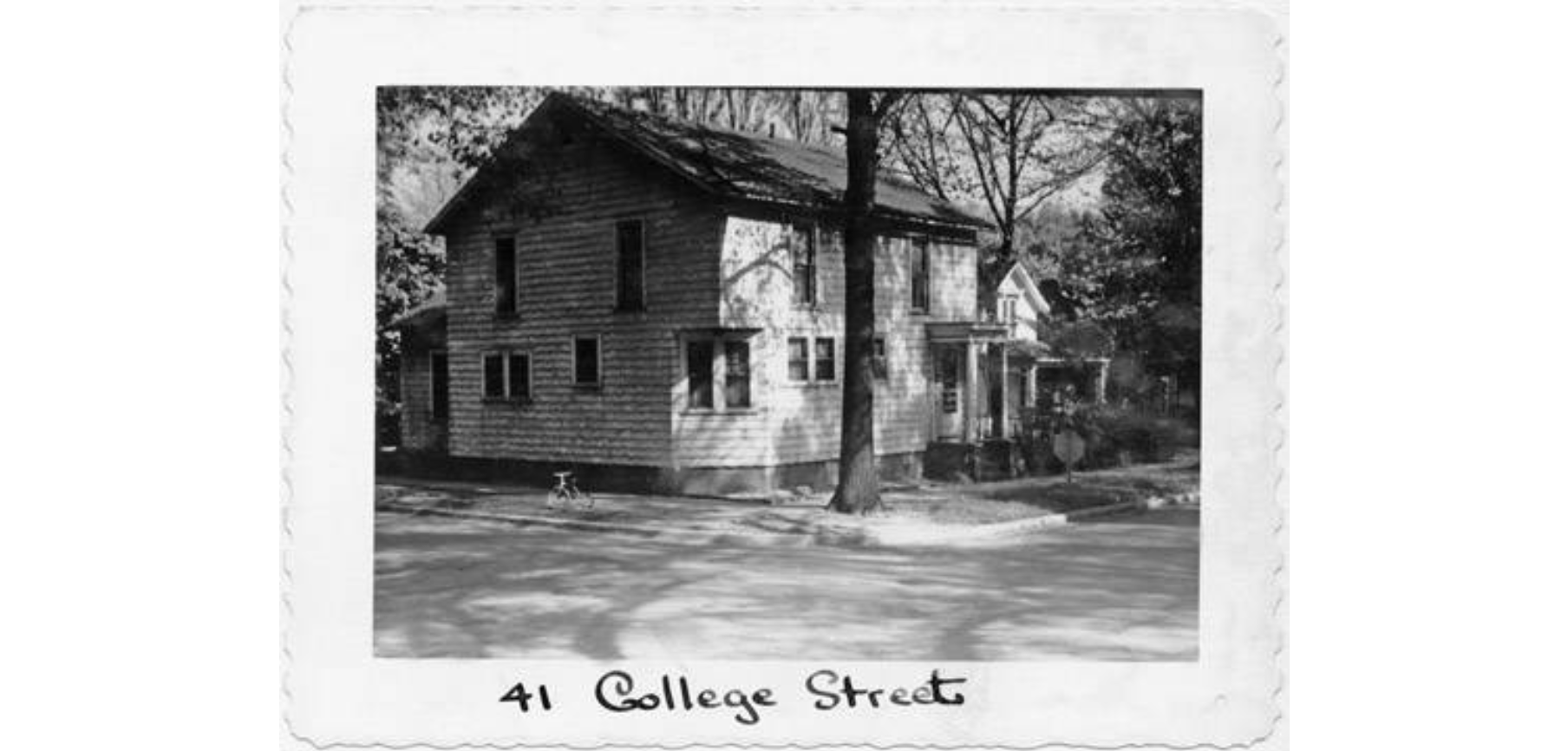 | Lola Daughtery (1895-1997) lived in this modest two story home was the first woman to graduate Kent State University with a Masters degree. She started at Hudson Schools as a teacher when all grades were in one building and retired many years later. Her spouse was a physican and treated patients in an office in their home. More research is needed on this home. | Summit Memory | |
| 48 College Street Brewster-Farrar House | View House Report | Anson A. Brewster built and occupied this house while waiting for the Brewster Mansion at 9 Aurora Street to be completed. It originally faced Division Street and acquired what was then considered a more desirable address by moving the front door to the College Street side. Brewster, who had been apprenticed to Zenas Kent, a merchant in Franklin Mills (now known as the City of Kent), subsequently apprenticed Charles W. Farrar, originally from Vermont, as his own clerk. The firm of Brewster and Farrar was located at the Brewster Store at 5 Aurora Street. Farrar lived in Brewsters home for some time before purchasing it in 1850 | Hudson Heritage Association |
| 55 College Street William M. Beebe House 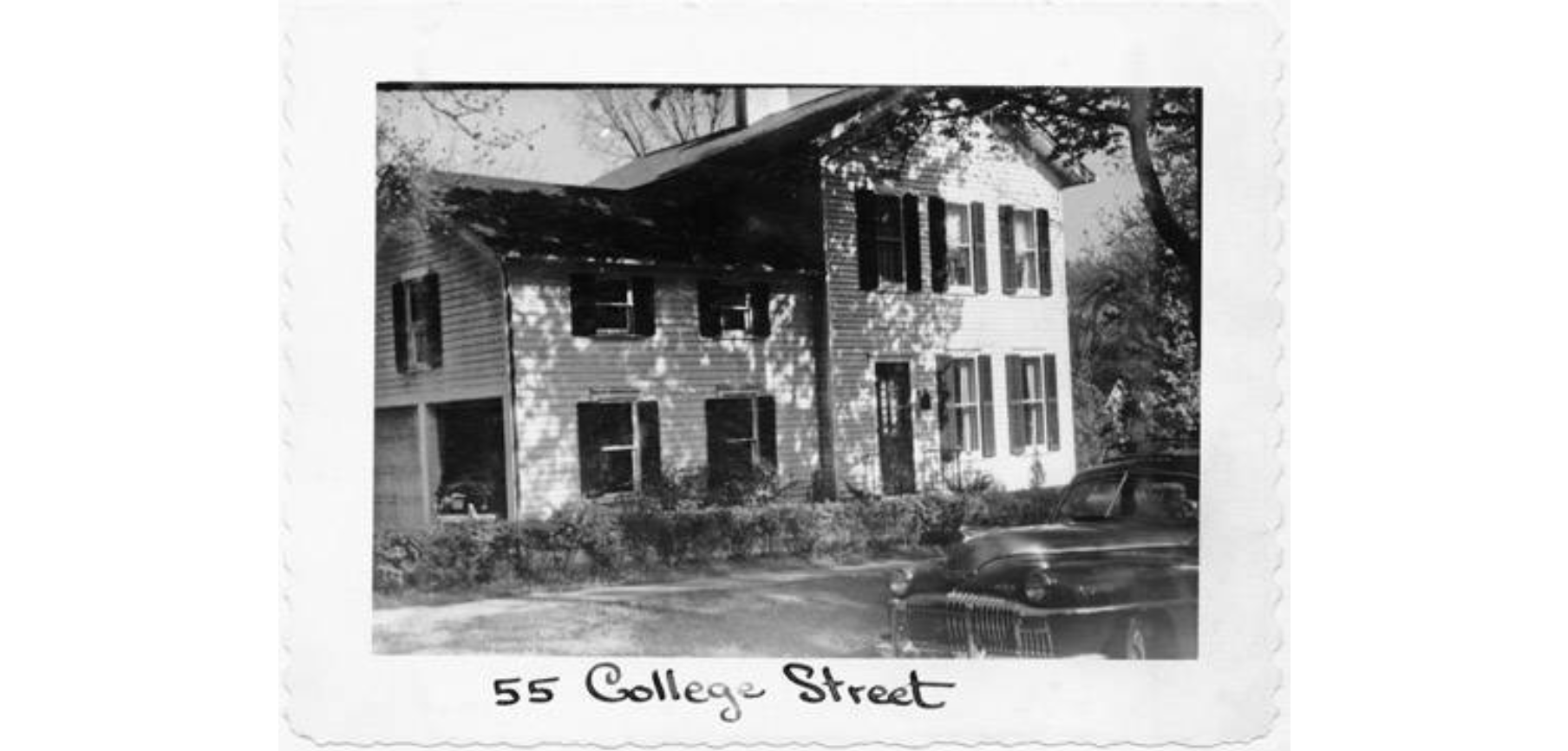 | View House Report | The main part of the home was built sometime in the 1870s. The wing appears to be a later addition. Noted author, woman's advocate and suffragist Mary Brown Sumner Boyd (1871-1950) resided here for several years. Morris LaRue "Mike" Boyd (1905-1986) and Louise Forbush Boyd (1906-1996) also lived here. Mike served for six years as a Republican state representative for the 93rd district. His wife Louise was a descendant of the Ellsworth family of Hudson and a direct descendant of Aaron Wilcox (1772-1827), one of the twins who founded Twinsburg. Louise's brother, Scott Ellsworth Forbush (1904-1984), a Hudson-born physicist, was well-known for his studies of cosmic rays. He discovered cosmic ray effects that became known as "Forbush decreases." | Hudson Heritage Association Summit Memory |
| 56 College Street Sherman Peck 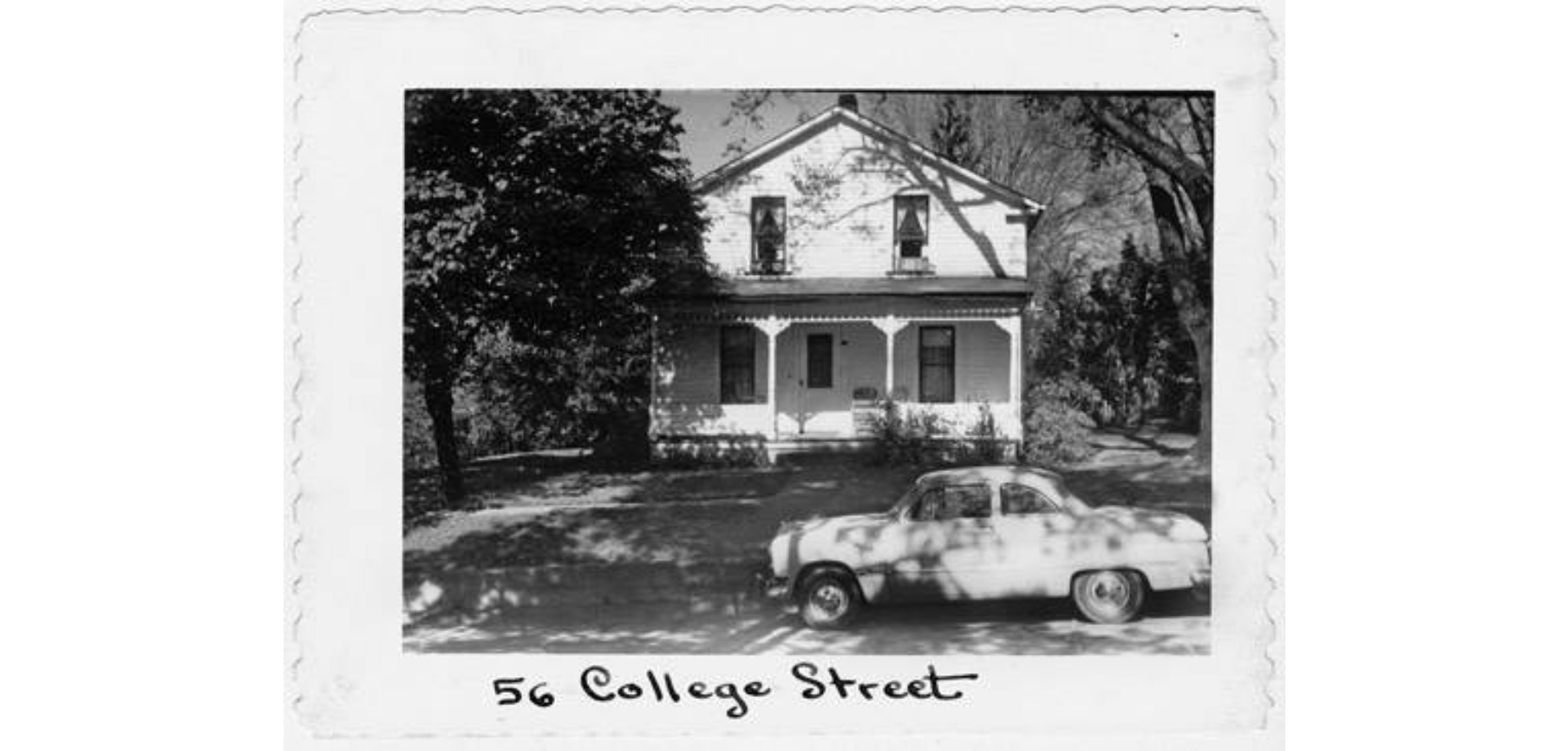 | View House Report | This 1831 home has seen much in its time-including many owners. When the house was built College Street was hardly more than a path. The porch is a later addition. The original house consisted of four rooms and the original water cistern is under the present kitchen floor. The floors are of four feet wide chestnut boards. The home is fittingly called "Wisteria Cottage" because of a large Wisteria tree that covers the trellis at the rear of the house. | Hudson Heritage Association Summit Memory |
| 63 College Street Elizabeth Shaw House 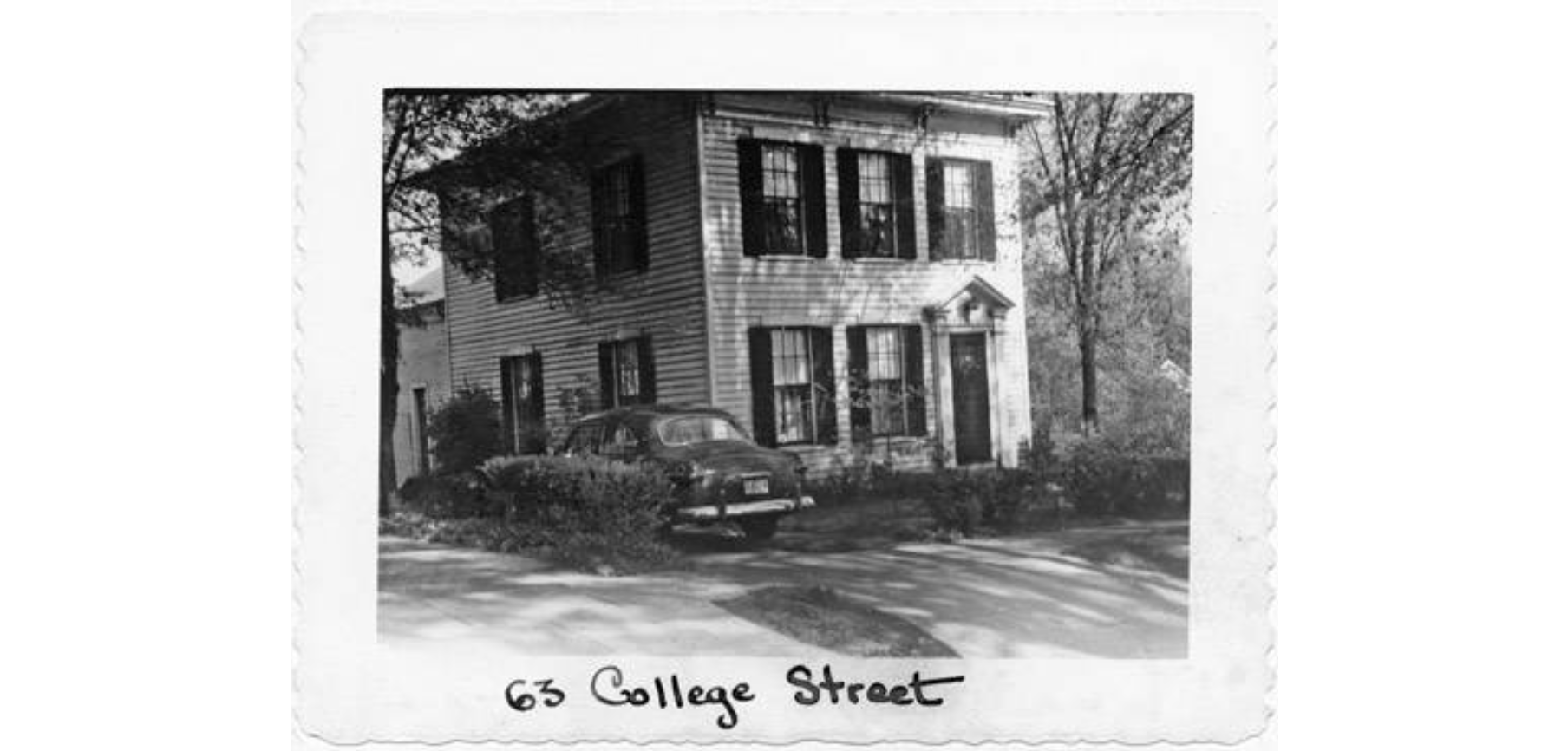 | View House Report | This Italianate/Greek Revival house was built in 1868. Residents of this home include former Hudson mayor Robert Gray (1900-1974) and David Lee (1891-1919), the only Hudson casualty of World War I. | Hudson Heritage Association Summit Memory |
| 65 College Street S.B. Bediant House | View House Report | Samuel Bediant was a machinist who owned or leased a number of houses in Hudson. In 1909 he built the house at 287 North Main Street. | Hudson Heritage Association |
| 69 College Street Henry W. Bristol House 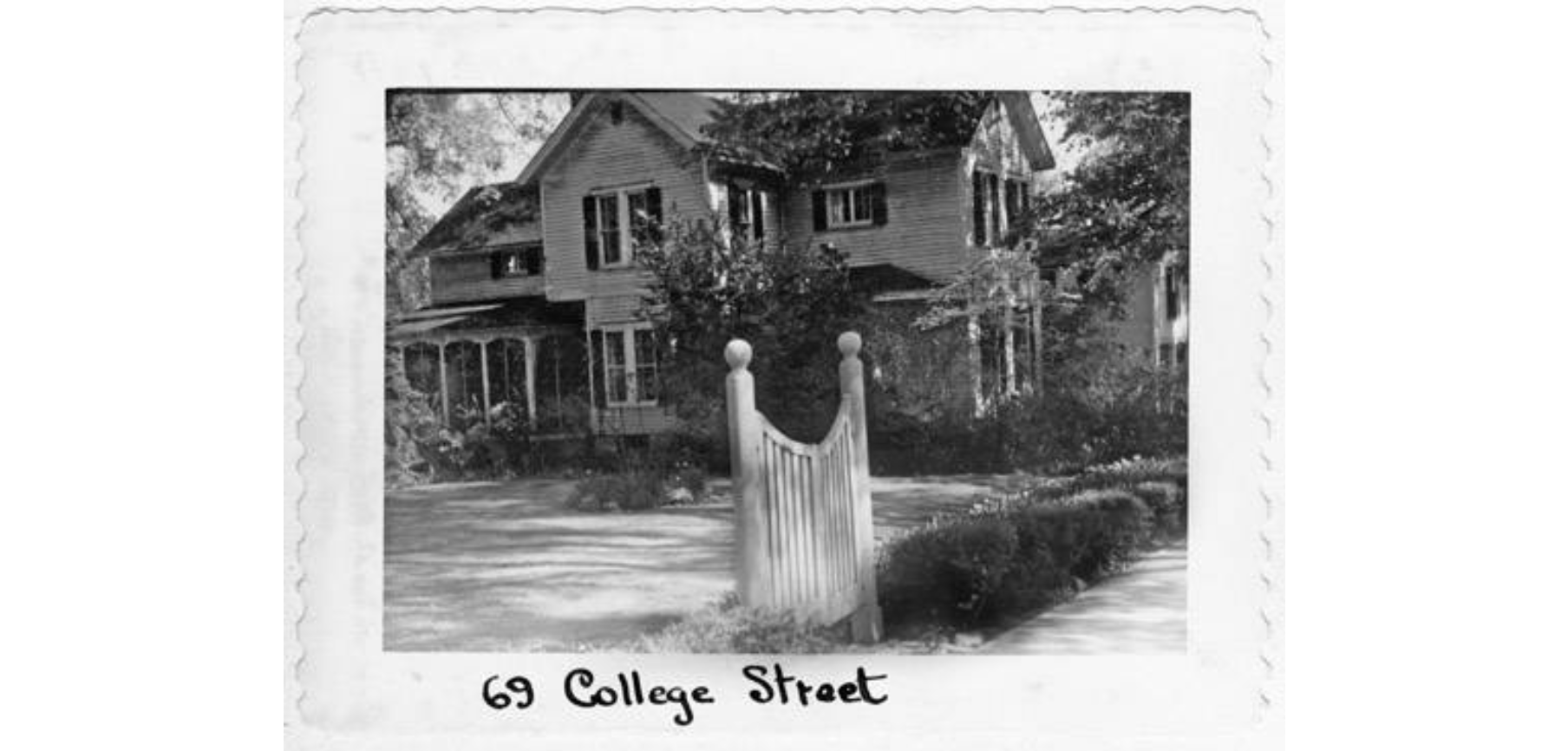 | View House Report | This house was built in 1889 by local builder, one-time postmaster and merchant Henry W. Bristol (1816-1891), who had a shop behind the Main Street stores. Harlan Wood (1867-1945) and Harold Bell (1875-1987), both presidents of the Hudson Library & Historical Society's board of trustees, resided here. | Hudson Heritage Association Summit Memory |
70 College Street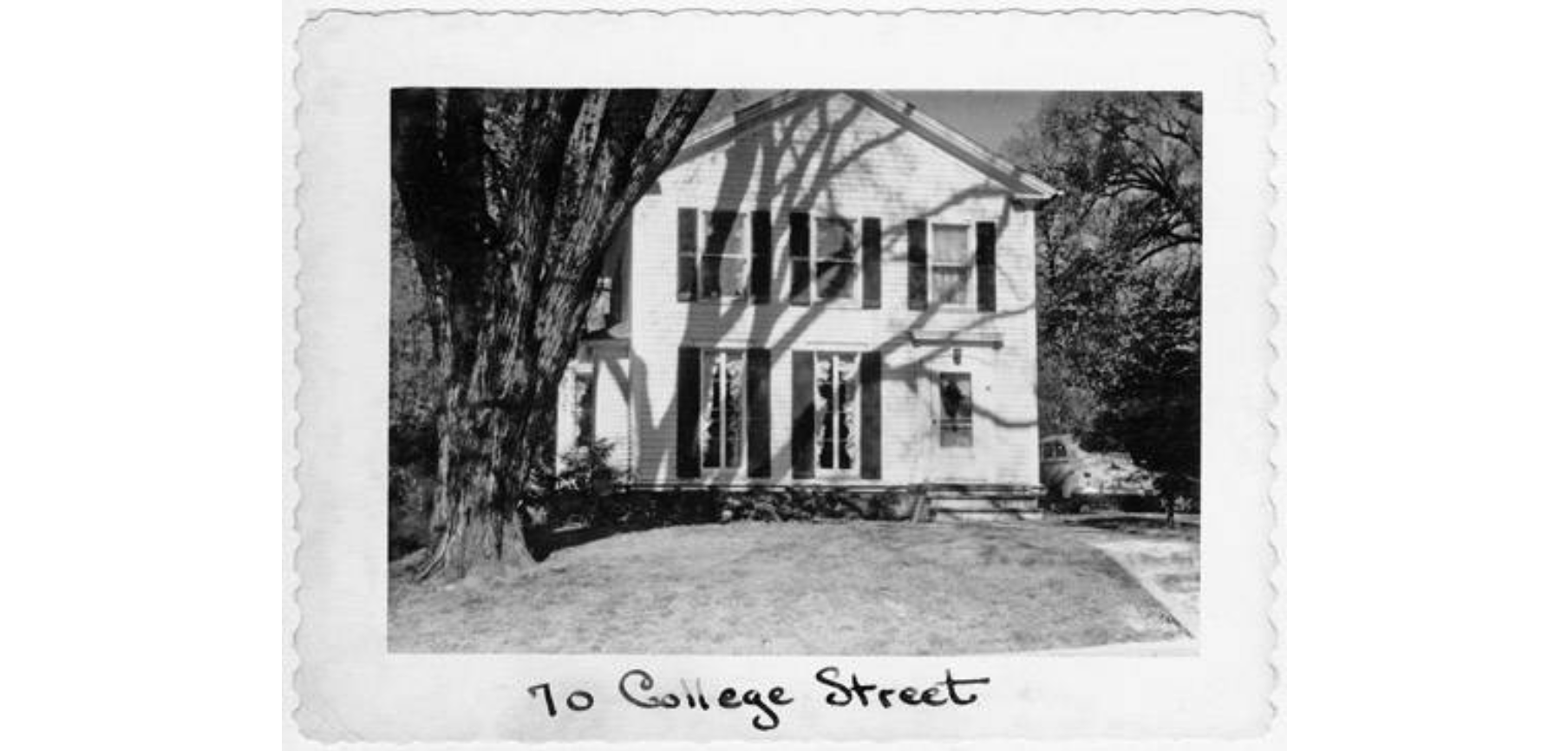 | This Greek Revival home, built in 1842, originally stood at the southeast corner of College and Aurora streets. It was moved to this site in 1913. The Wilford M. Mayers (1906-1986) family once occupied this residence. Mr. Mayers was a rubber buyer for Goodyear in Asia for many years and was also involved in the Hudson Masonic Lodge. | Summit Memory | |
| 88 College Street Hayden Hall | Hayden Hall was built in 1878 as a warehouse for Straight and Son, owners of cheese factories township-wide, a business that provided much-needed employment for the community at a time when it was experiencing a severe economic depression. The companys offices were in the Pentagon Building, located next door to the south at the time. The cheese factory ventilating system began at the foot of College Hill and extended through one thousand feet of tile to the basement of this building, ending in the cupola. | Hudson Heritage Association | |
| 92 College Street Harvey Coe House 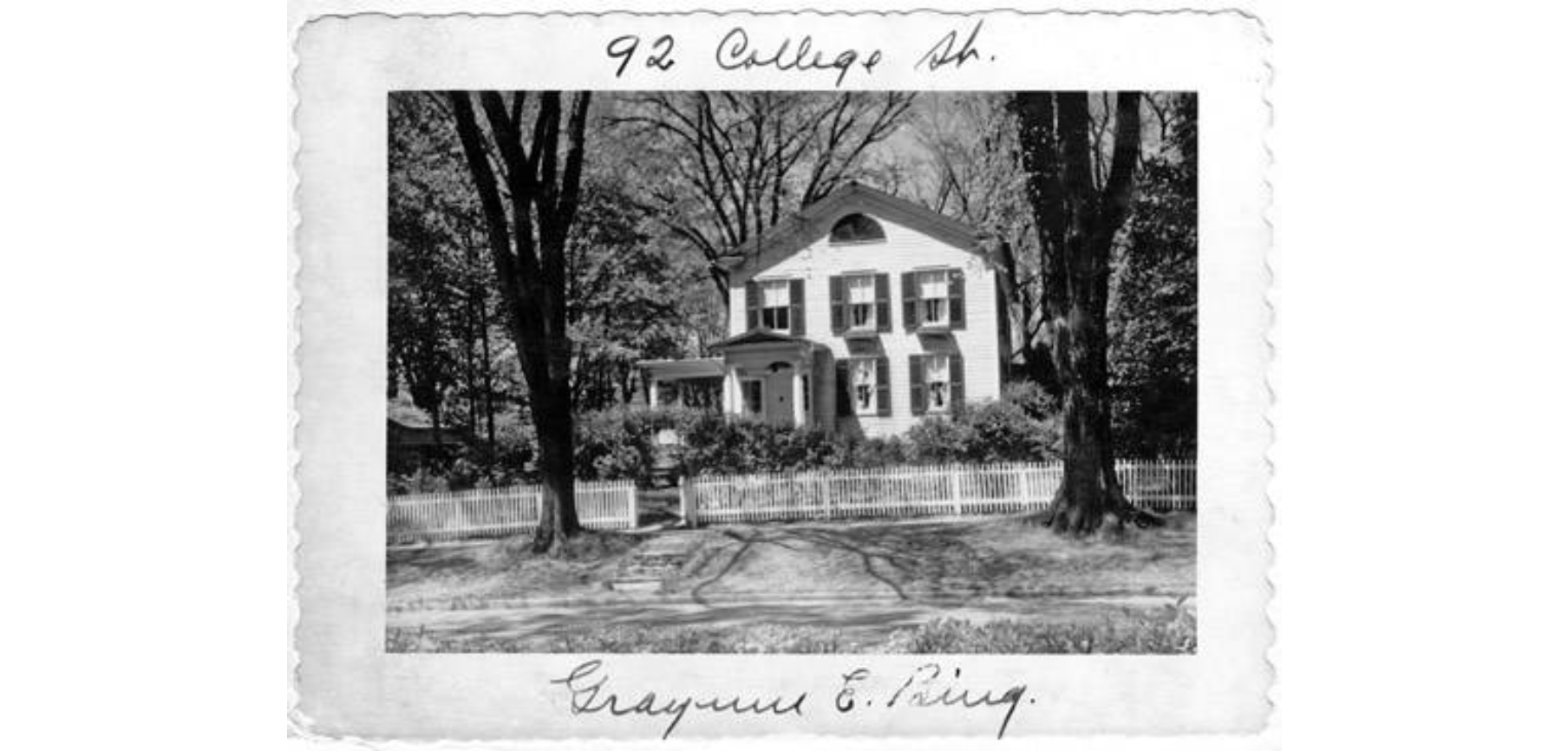 | View House Report | Harvey Coe (1785-1860), the first elected trustee of Western Reserve College built this Federal/Greek Revival Transitional house in 1835. Coe was an advocate on the side of colonization in the abolition/colonization controversy, a hotly debated issue among Hudsonites in the 1830s and later. Horace Foster (1828-1909), Akron Schools superintendent and former Hudson mayor, once lived here. According to an oral history, Horace Foster had the distinction of being Hudson's first nude sunbather. | Hudson Heritage Association Summit Memory |
| 94 College Street Elias Loomis Observatory | Although functional in style, there are some details from Asher Benjamin pattern books. It was built by Simeon Porter from the design of Professor Elias Loomis, who had studied observatories in Europe and purchased the necessary instruments in England. The instruments had been installed and the observatory was in operation by 1838, making this the second oldest observatory in the United States. Professor Loomis described its operation in an article in Harpers Monthly in 1856. | Hudson Heritage Association | |
| 100 College Street Laura W. Lord House 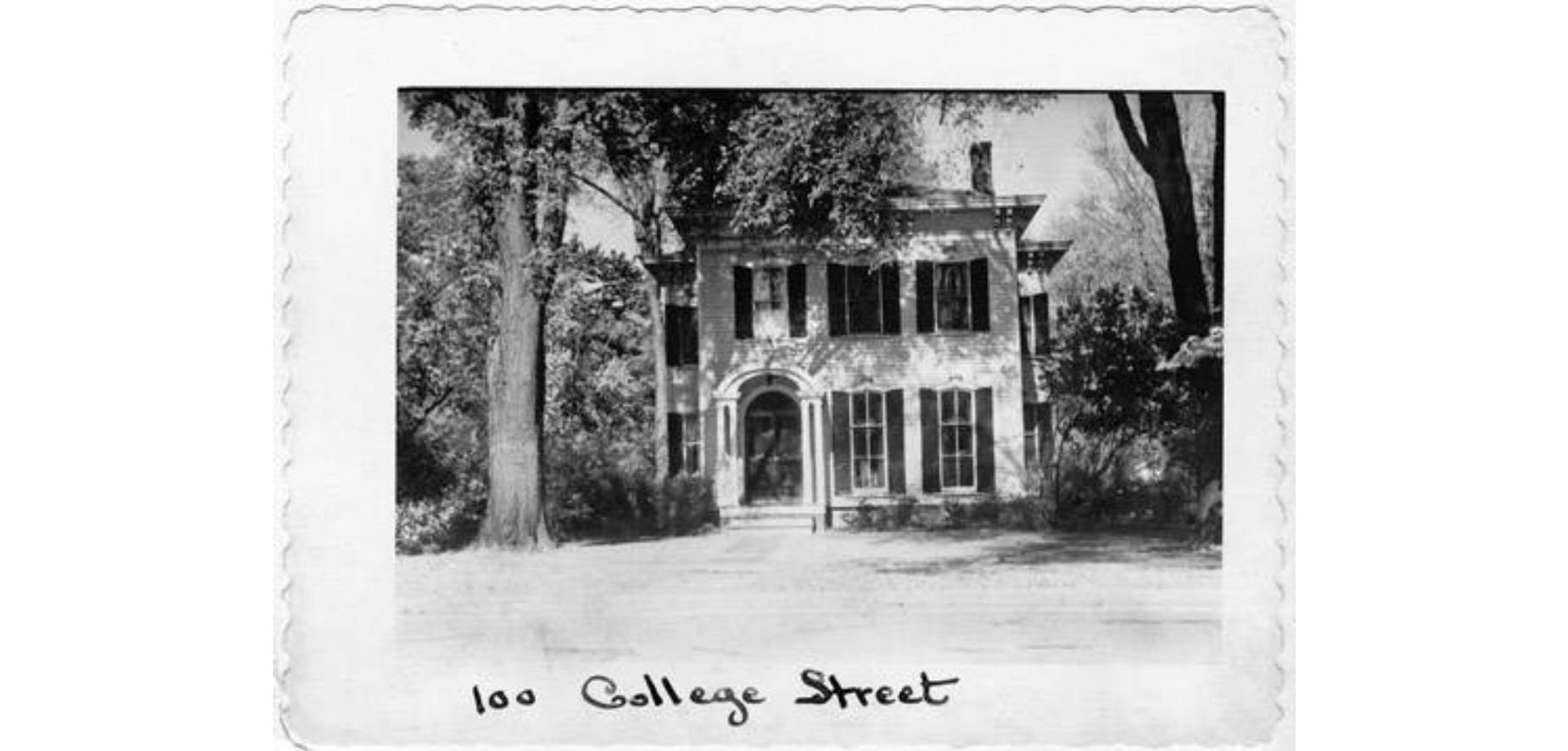 | View House Report | The Italianate house features hood moldings with keystone arches, long windows, an arched portico and some cut sandstone in the foundation.The addition of an early front porch has been removed and in the 1960s, the attached carriage house was converted to a family room. Interestingly, there was once a very modern privy in the carriage house and accessed by an enclosed, elevated walkway. The house's changes have been minor. Laura W. Lord lived in this house until 1915. | Hudson Heritage Association Summit Memory |
104 College Street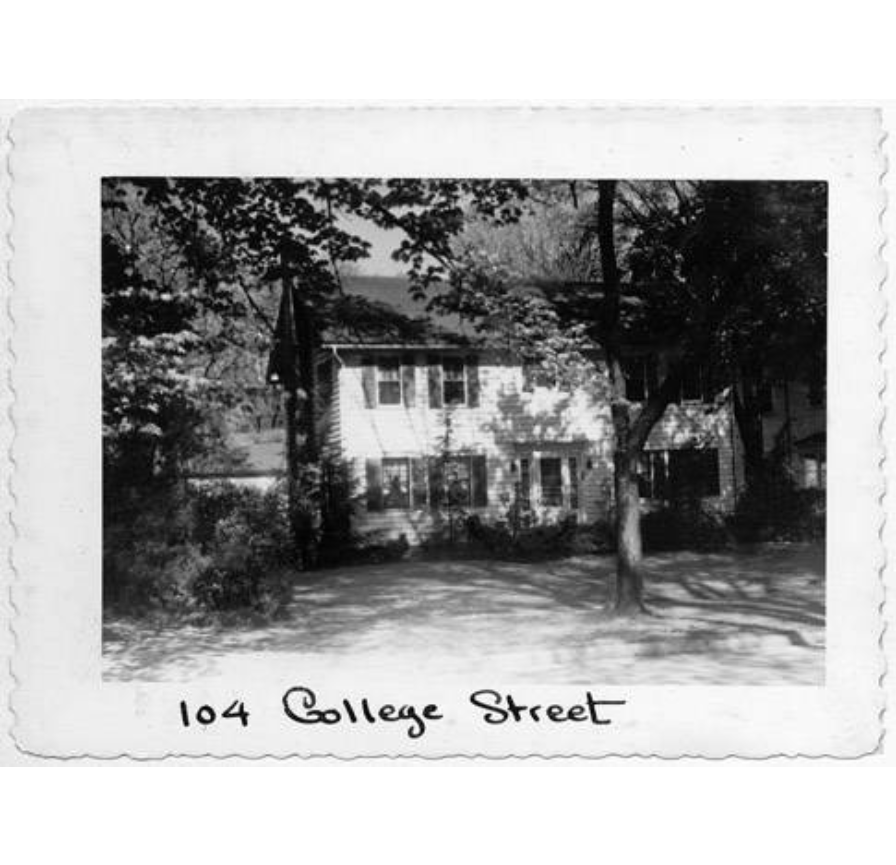 | This 20th-century Colonial Revival has a symmetrical facade and entryway with Greek Revival elements. Longtime Hudson township trustee,constable, and village councilman Charles Kilbourne (1868-1959) once lived here. Kilbourne was also a bus agent in Hudson and a descendant of early pioneer George Kilbourne (1769-1866). | Summit Memory | |
108 College Street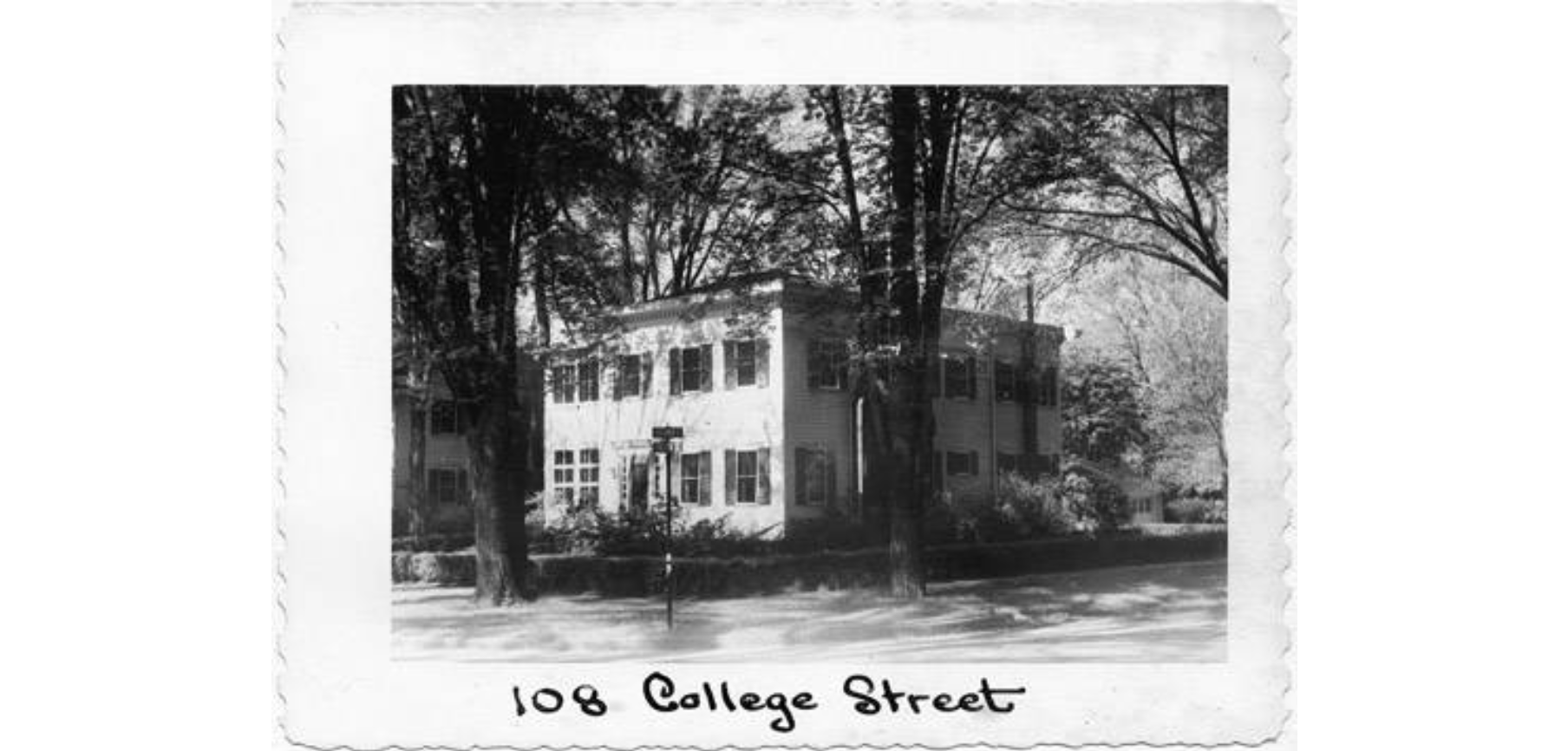 | Built in the 1870s, the house is Italianate in style and almost identical to 100 College Street. Civil War-era smuggler James Feaga (1849-1928) once lived here. | Summit Memory | |
| 115 College Street Seymour Hall 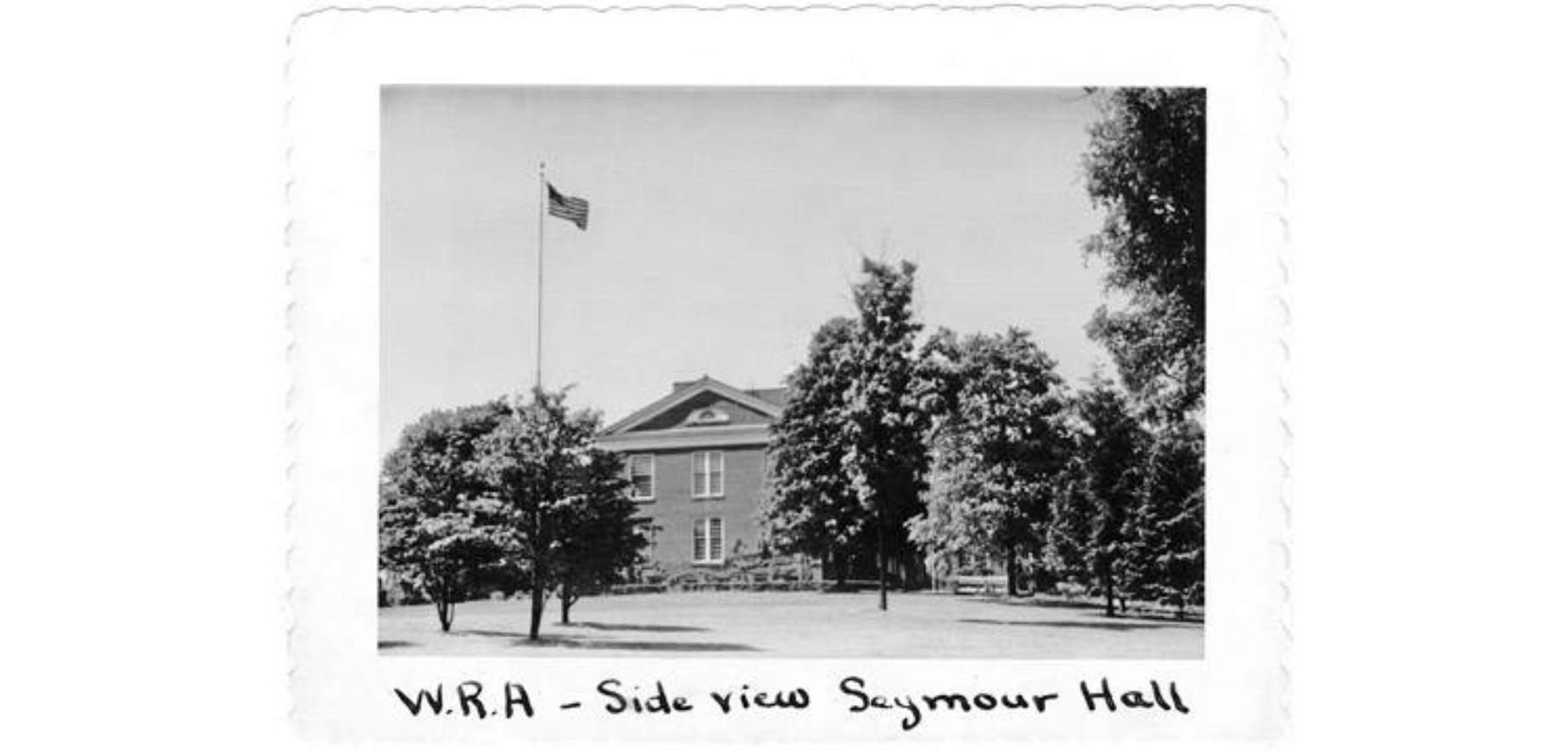 | After 1882, when Western Reserve College moved to Cleveland, James Ellsworth (1849-1925) and four others acquired the old college property. Ellsworth added Seymour Hall in 1913 and improved other buildings with the hope of attracting another college. In 1916 Western Reserve Academy opened at the old college campus. Seymour Hall, a Colonial Revival, was designed by architect John W.C. Corbusier (1878-1928). The hall stands at the former location of Middle and South colleges, Western Reserve College's first two buildings. Seymour Hall was named after Professor Nathan Perkins Seymour (1813-1891) and his son, Professor Thomas Day Seymour (1848-1907). Nathan was the chair of Latin and Greek at Western Reserve College. Thomas graduated from Western Reserve and married the daughter of Henry L. Hitchcock (1813-1873), president of Western Reserve College from 1855 to 1871. | Hudson Heritage Association Summit Memory | |
120 College Street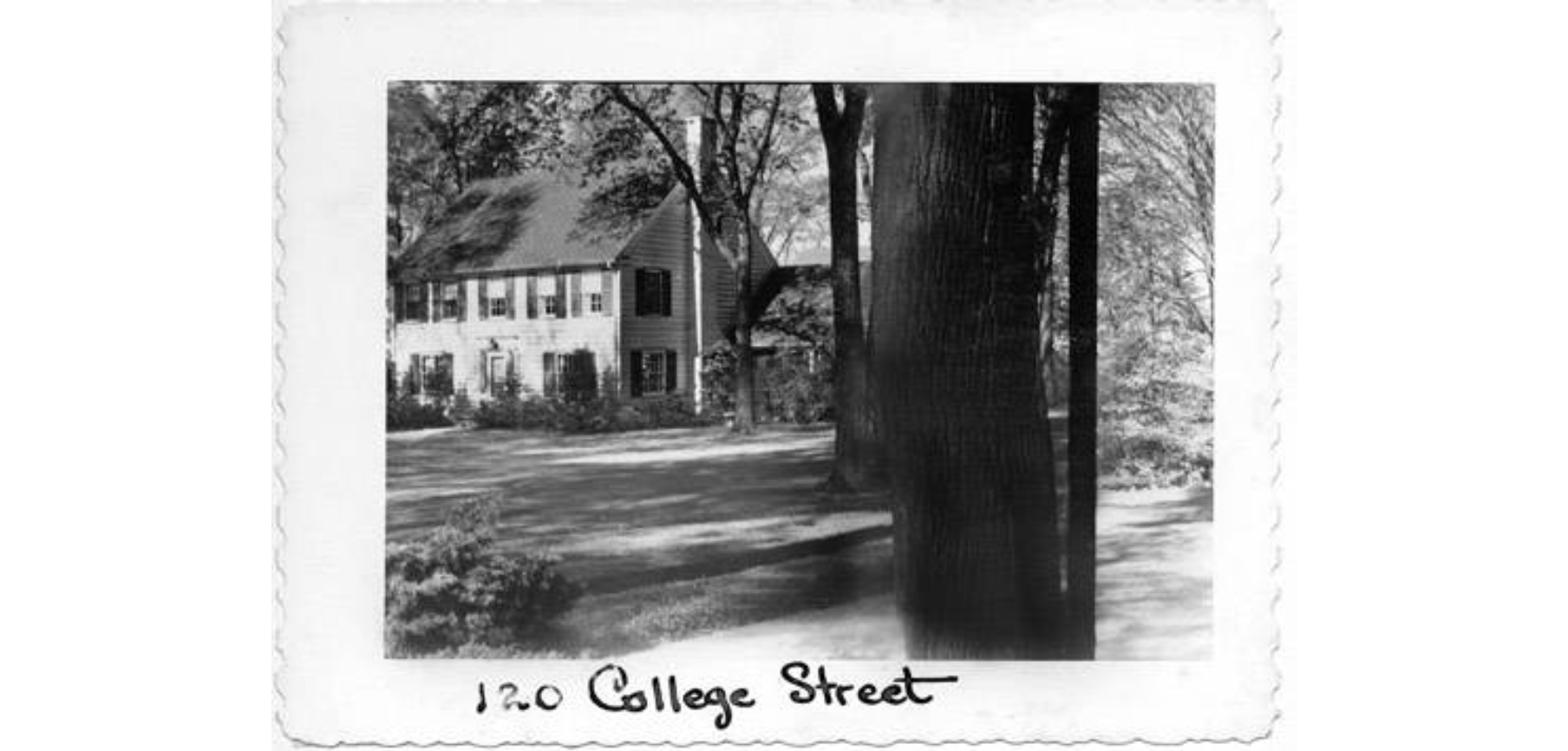 | This dignified two story house was built most probably after the 1920's. This home is an example of the perfection of technologies introduced in building in the late nineteenth century. The systems of plumbing, electrical and utilities are standardized and integrated within the structure. It was one of the first homes to have a telephone in Hudson, Ohio with the phone number as "Hudson 8." Rotarian and Business Manager for Western Reserve Academy, Russell Tilt (1892-1990) lived here for several happy years. | Summit Memory | |
126 College Street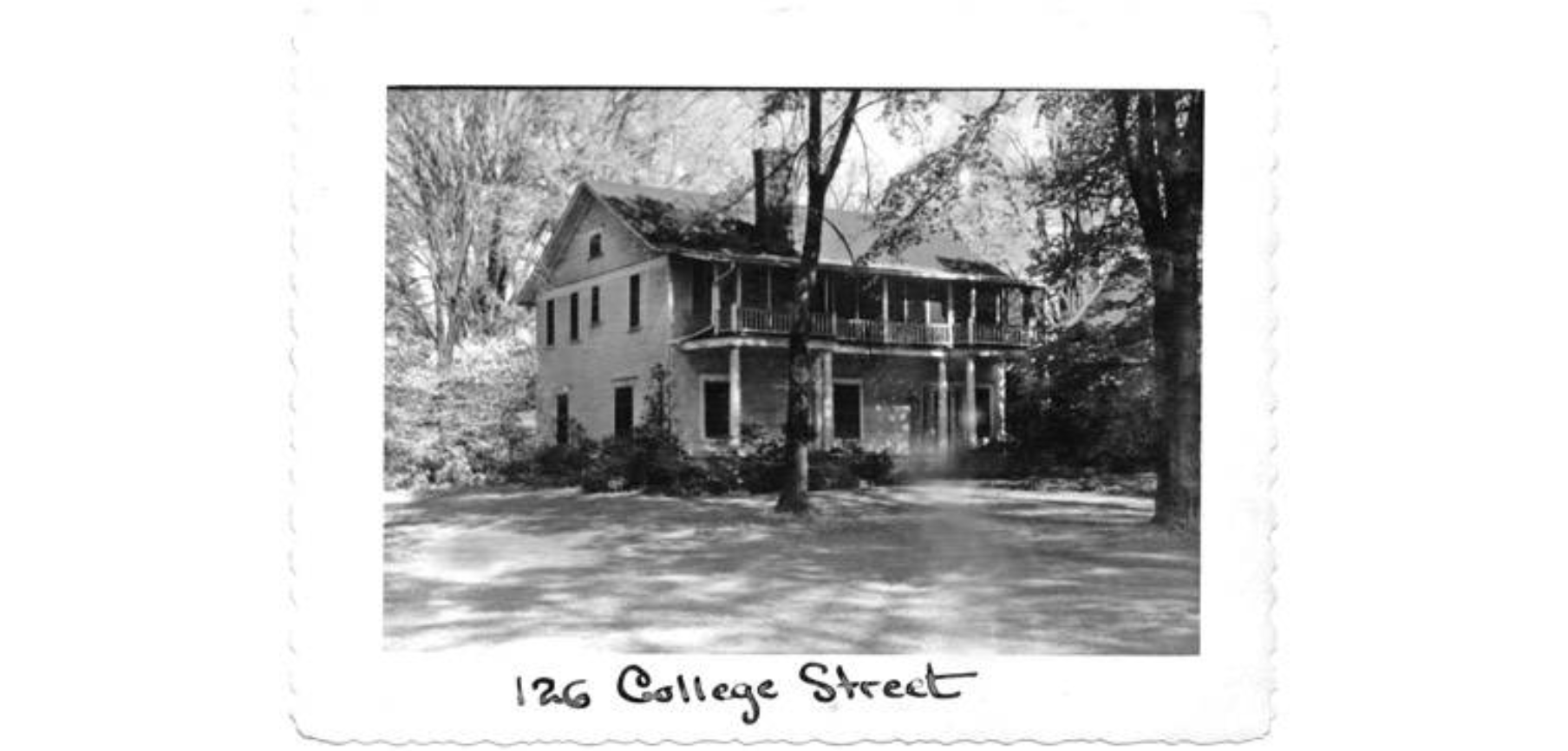 | This two-story Western Reserve Academy-owned property has housed students at various times. The construction of this Greek Revival house probably dates to the first decade of the 20th century. | Summit Memory | |
130 College Street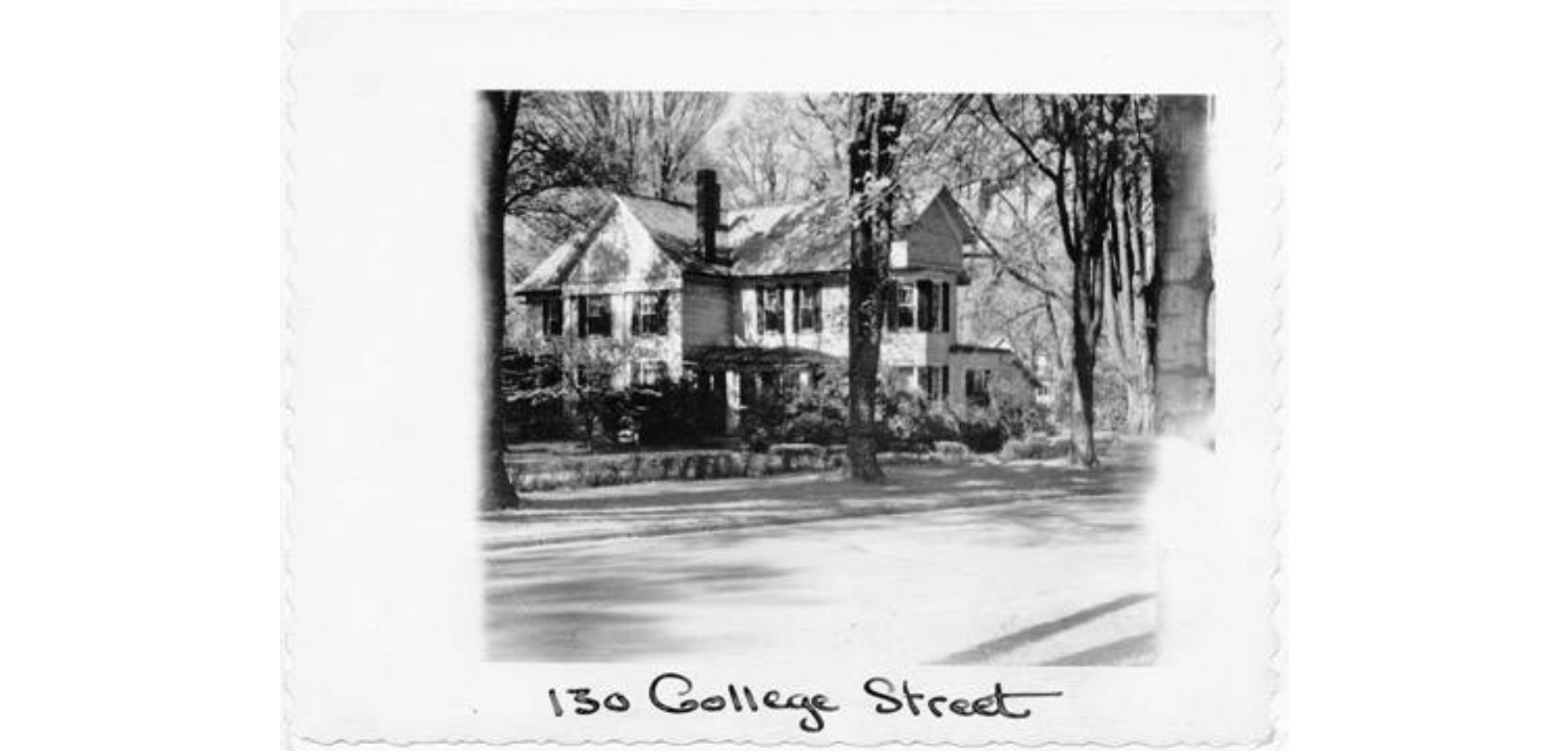 | This house was built circa 1841 for one of the first students at Western Reserve College and later a tutor, Philo Wright (1812-1844). The builders were most likely Porter and Rice, who were the college architects at the time. This structure originally sat at the corner of College and Chapel streets and was relocated here in the late-19th or early-20th century. Dr. Angus Frew (1874-1941), who was born in Glasgow, Scotland, and taught at Western Reserve Academy, also occupied this residence. | Summit Memory | |
| 135 College Street Chapel, Western Reserve Academy 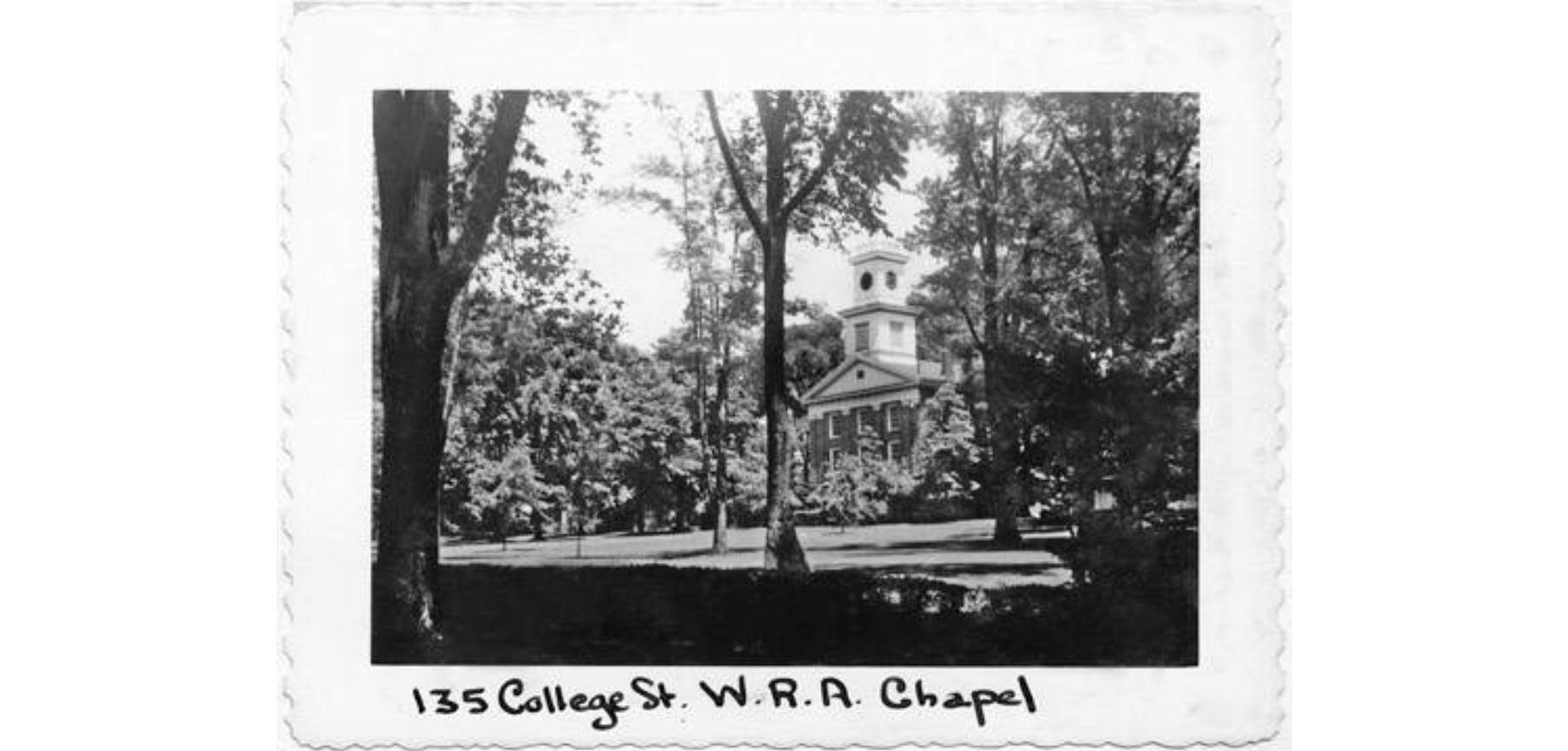 | The college chapel, built in 1835-36 by Simeon Porter (1807-1871), was intended to serve multiple functions. The building housed a library and a museum on the first floor and a chapel on the second floor, used for commencements, weddings and funerals. James Garfield (1831-1881) and John Seiberling (1918-2008) both spoke here. The chapels interior details also boast an interesting history. A bell cast in 1611 in Souburg, Holland, was installed in 1944. A cross hanging in the chapel comes from the Spanish monastery Santa Maria de La Rabida, the monastery where Christopher Columbus stayed prior to his famed 1492 voyage to America. It is said that this cross hung in the monastery when Columbus was at Santa Maria de la Rabida. | Hudson Heritage Association Summit Memory | |
| 147 College Streeet North Hall 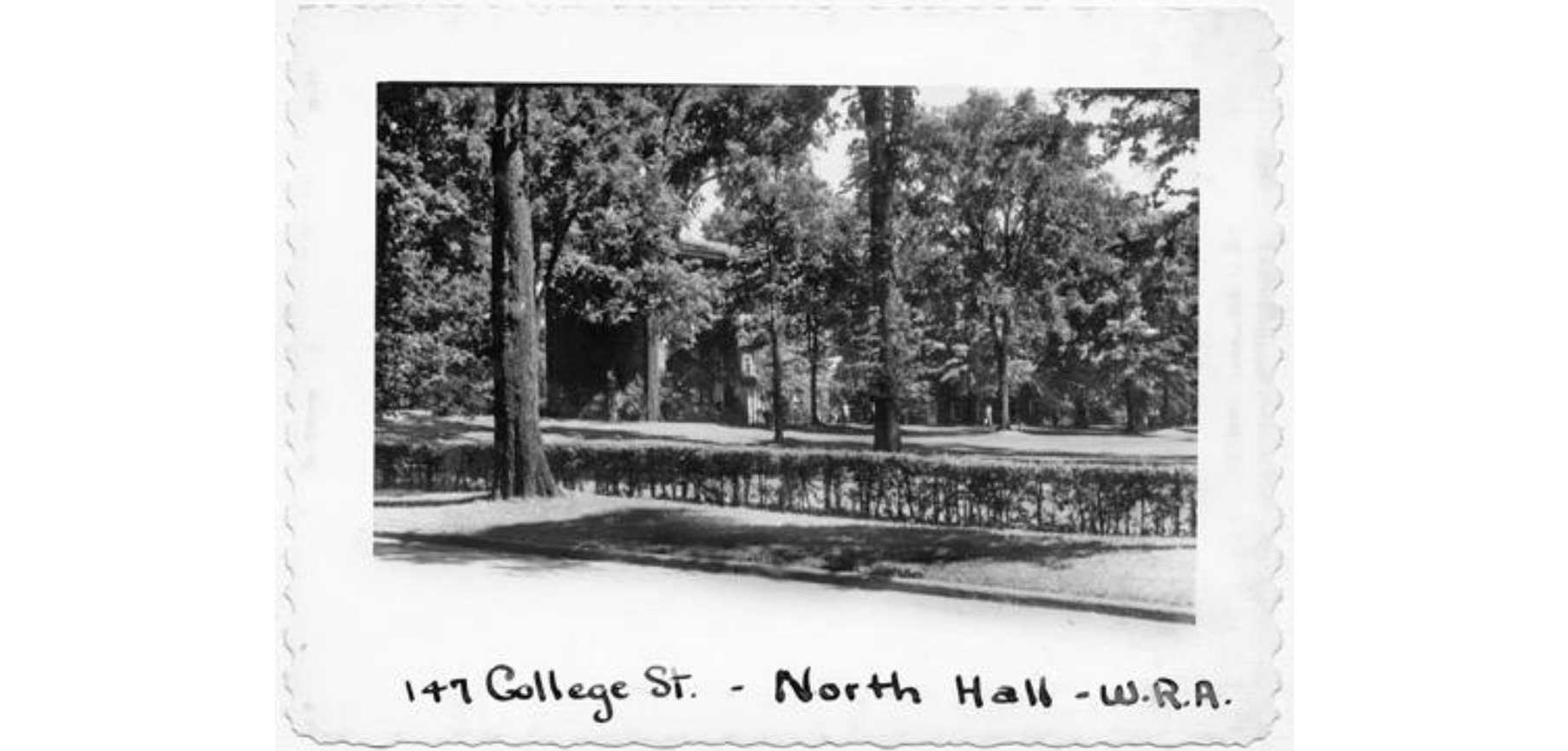 | North Hall, built by Simeon Porter (1807-1871) in 1837-38, was built as a dormitory for theology students at Western Reserve College. The building was part of the original Western Reserve College brick row, a row of brick buildings lined up north to south on College Street facing east. This particular alignment was probably chosen to match similar arrangements at New England colleges like Yale and Amherst. North Hall has always served as a dormitory. Individuals who once inhabited North Hall as students include playwright Arthur M. Hopkins (1878-1950) and well-known author and journalist Lucien Price (1883-1964). Walter Folger Brown (1869-1961), a Western Reserve Academy student, once served as Postmaster General of the United States. | Hudson Heritage Association Summit Memory | |
| 169 College Street Carroll Cutler House 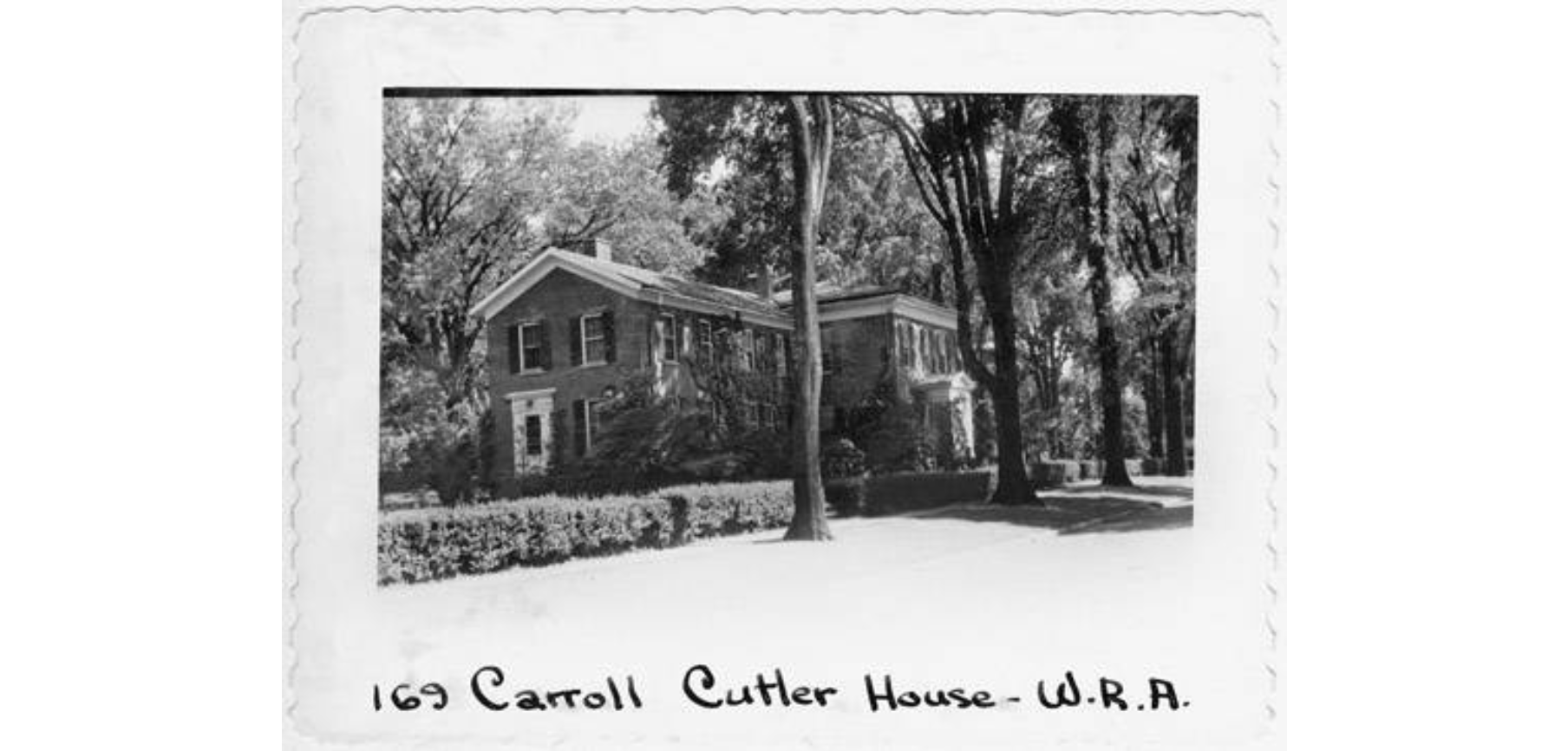 | This late-Federal-design home was built in 1839 by Professor Clement Long (1807-1861), professor of intellectual and moral philosophy and Christian theology at Western Reserve College. Long was an advocate of censorship, preaching to his students to avoid all "profane" and "immoral" literature. The home has long been known as the Carroll Cutler House because Carroll Cutler (1829-1894), president of Western Reserve College from 1871 to 1886, resided here during most of his presidency. Cutler served in the 85th Ohio Volunteer Infantry during the Civil War. | Hudson Heritage Association Summit Memory | |
| 178 College Street Ellsworth Hall 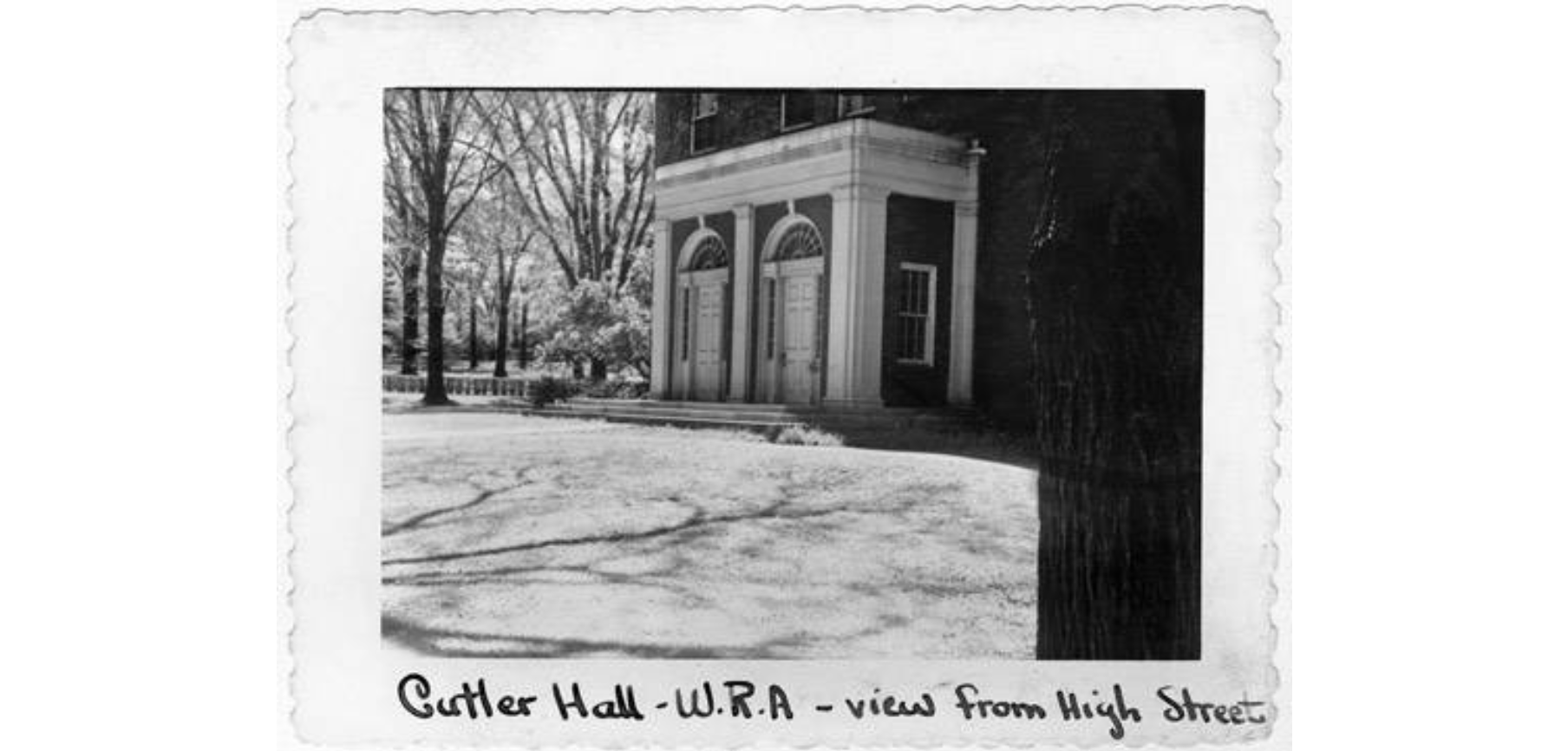 | The Neoclassical Revival Ellsworth Hall, built in 1922, was designed by John W.C. Corbusier (1878-1928). Now known as Ellsworth Hall, 178 College St. was long known as Cutler Hall after Western Reserve College President Carroll Cutler (1829-1894). Cutler was president of Western Reserve College from 1871 to 1882 and an advocate of coeducation. His highly controversial decision to allow women to be admitted in 1872 was eventually overturned in 1884. | Hudson Heritage Association Summit Memory | |
| 187 College Street The Athenaeum 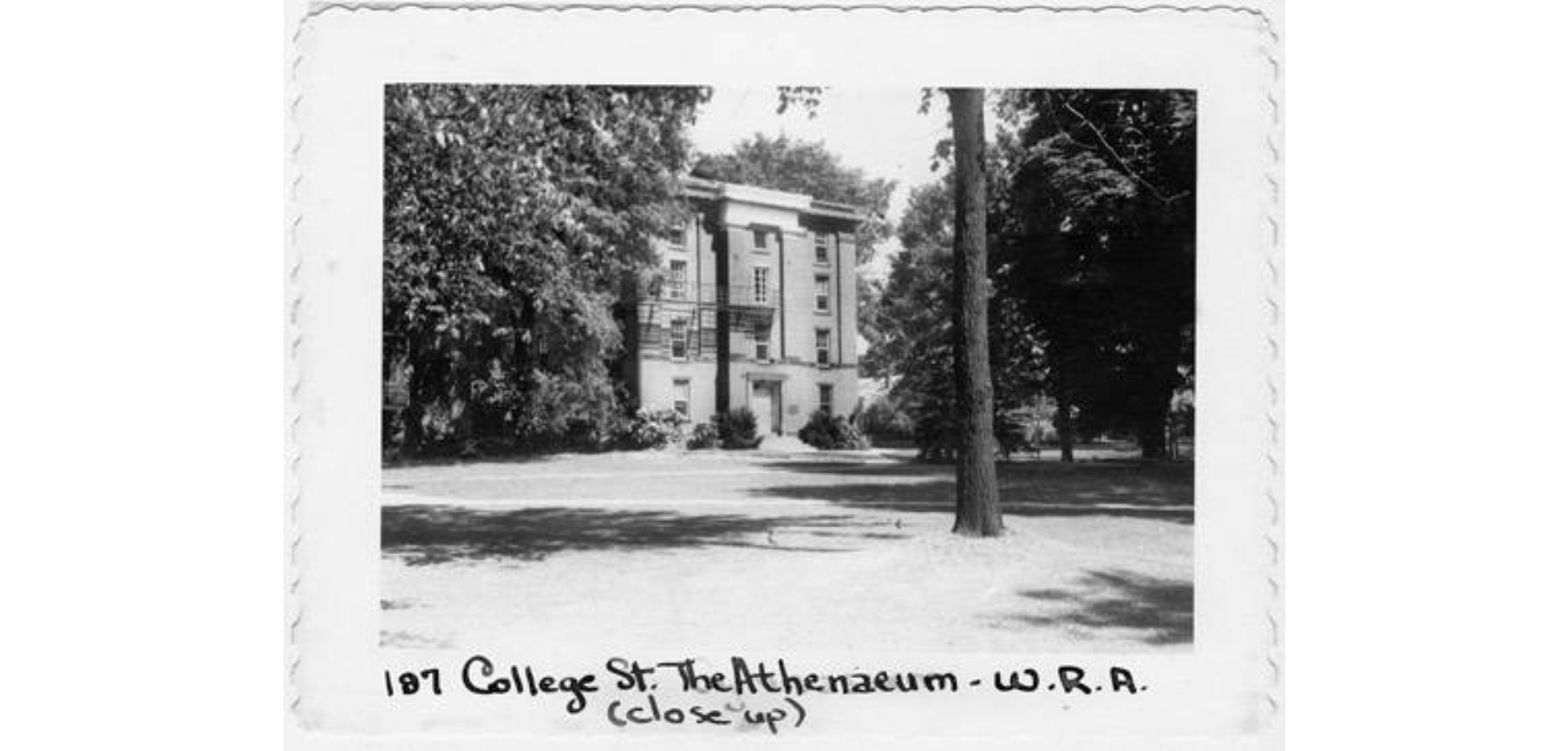 | In 1876 Edward Morley (1838-1923), professor of chemistry at Western Reserve College, installed one of the first telegraph lines in Hudson in the Athenaeum. The line connected the telegraph office at the railroad station to his laboratory in the Athenaeum to his home. Later he connected a telegraph line from the Athenaeum to a store on Main Street so that he could quickly and easily order chemicals for the laboratory so that Morley's installation of a telegraph line to the Main Street store. That prompted other businesses and offices in Hudson to follow suit. | Hudson Heritage Association Summit Memory | |
| 197 College Street Gymnasium, Western Reserve Academy 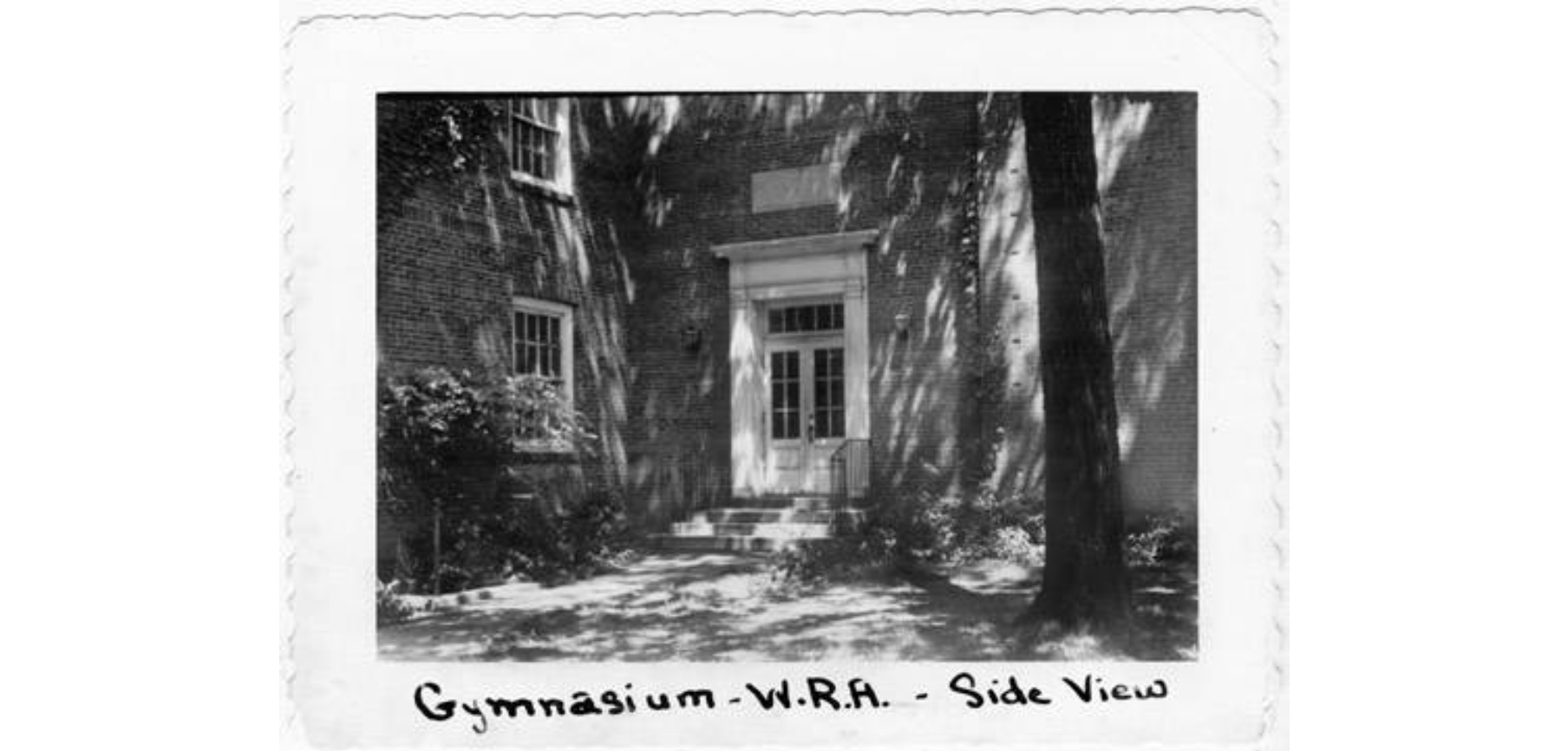 | The Bicknell Gymnasium, built in 1920, was modeled after the John Hancock House in Boston. James W. Ellsworth (1849-1925), founder of Western Reserve Academy, was responsible for adding the Gymnasium to the campus. It was named after well-known Cleveland businessman Warren Bicknell, Jr. (1902-1975), who served as a trustee from the college's founding in 1916 until 1941. | Summit Memory | |
204 College Street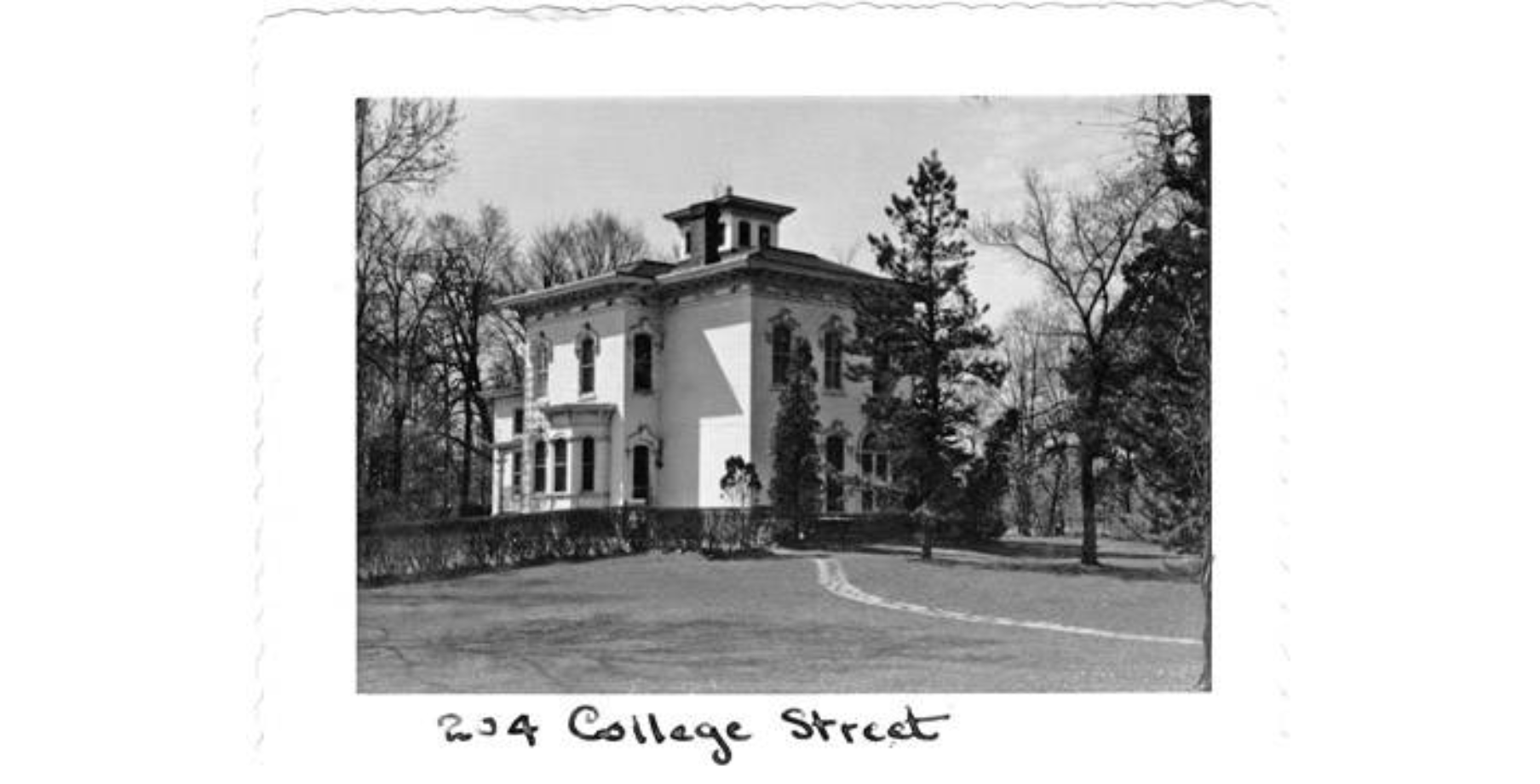 | Frederick Bunnell (1821-1925) built this Italianate home for Edward S. Cartwright (1821-1909), a successful businessman who moved to Hudson from Nantucket in 1844. Cartwright lived at 67 Division St. before moving to this home. During 1877 Cartwright could not maintain a working street light in front of the home because vandals were continually shooting at the light throughout the year. On March 14, 1928, this structure suffered a house fire that took more than three hours to suppress. | Summit Memory | |
| 223 College Street Headmaster's Academy Western Reserve Academy 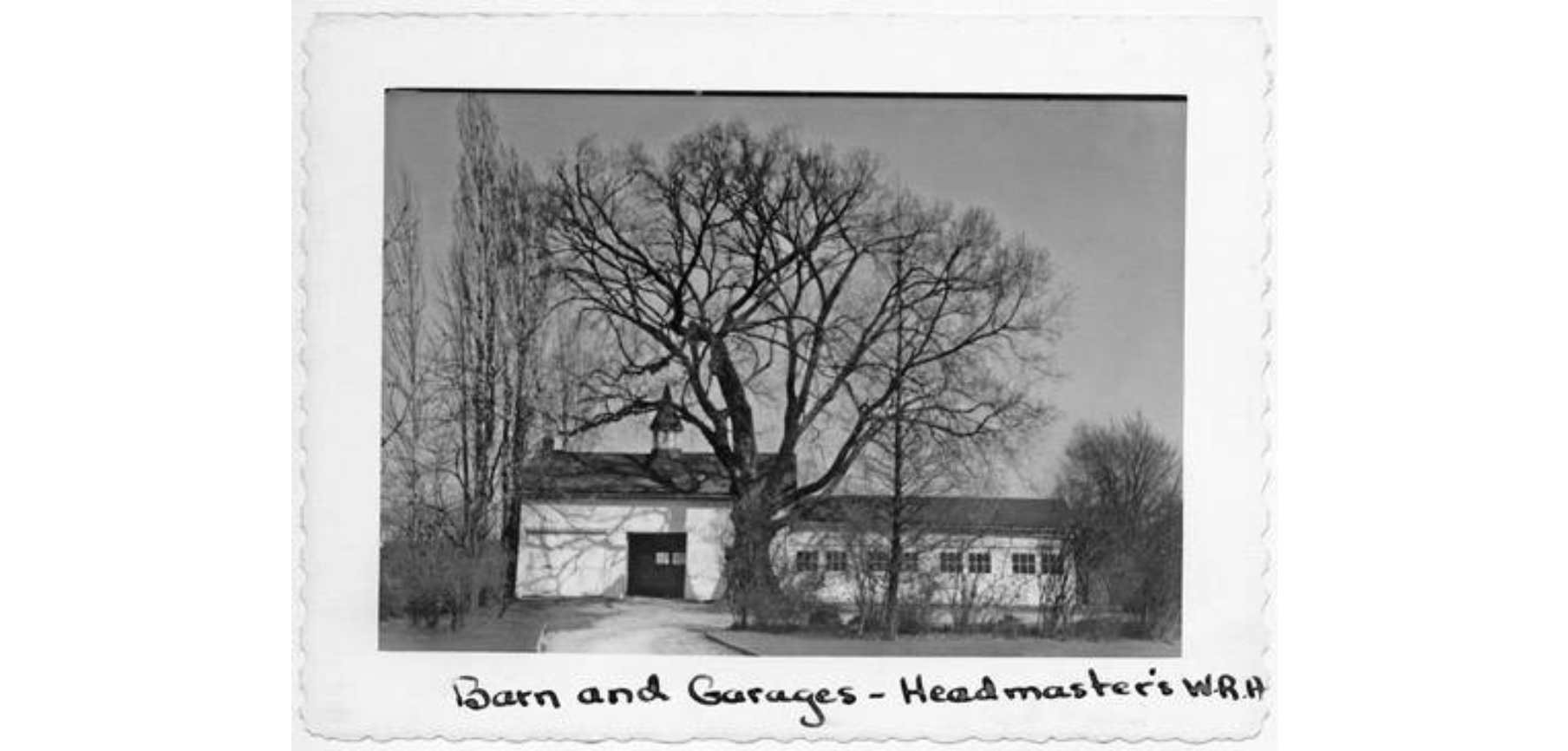 | The home at 223 College St. was built in 1855 by George Pierce (1794-1871), president of Western Reserve College from 1844 to 1855 and former Hudson mayor. Pierce House was used as the setting for the 1977 television film The Gathering. The home has served as the house of the headmaster of Western Reserve Academy since 1931. | Summit Memory | |
226 College Street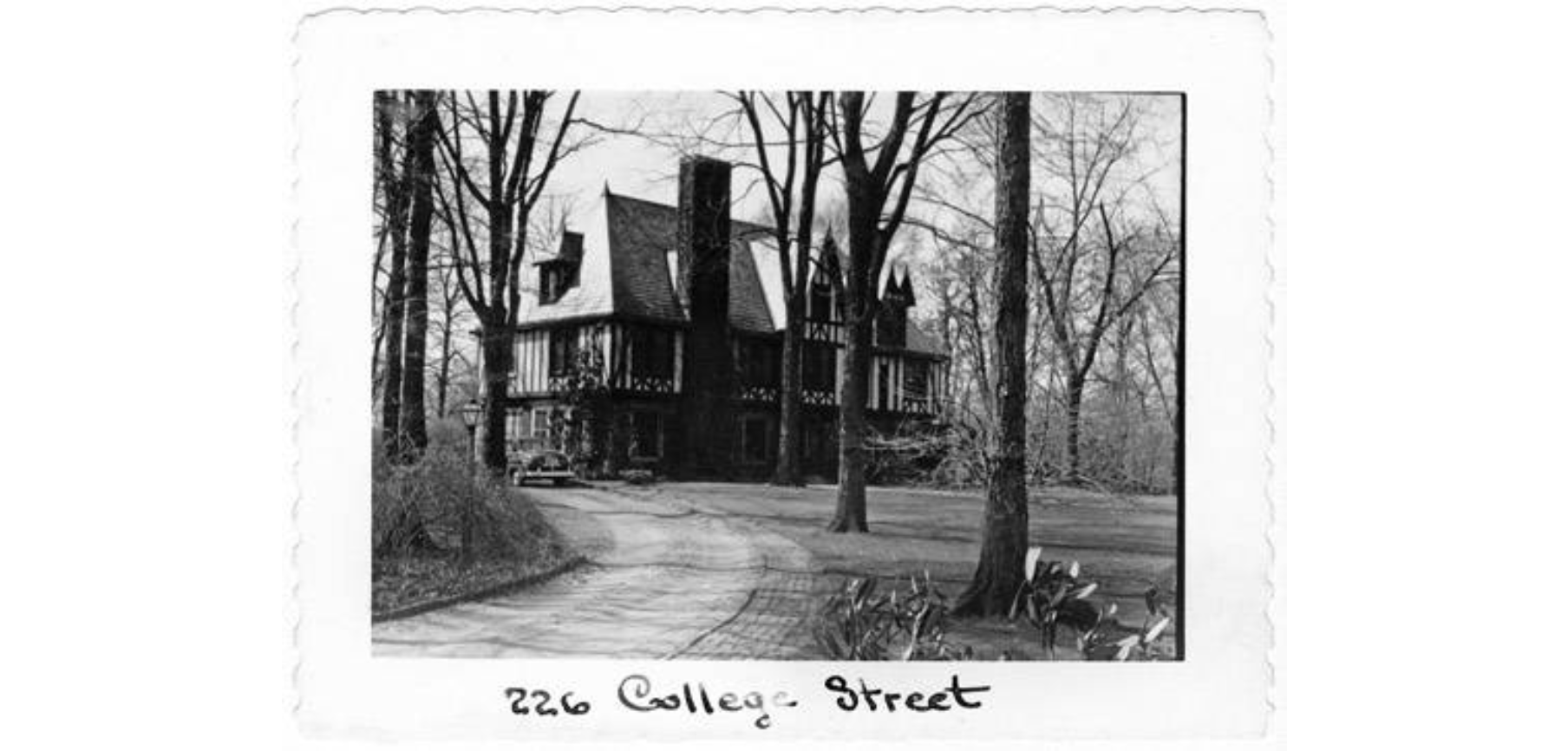 | This Tudor Revival home was built by John W. C. Corbusier (1878-1928) as his personal residence. Corbusier, who was educated at the Beaux Arts in Paris, was an architect of some acclaim and was responsible for some 30 churches in many parts of the country. Corbusier's working models of steamships, sailboats and locomotives were often on display in this house. He also loved to tend to his gardens. It is said this home had the most beautiful gardens in Hudson. | Summit Memory | |
240 College Street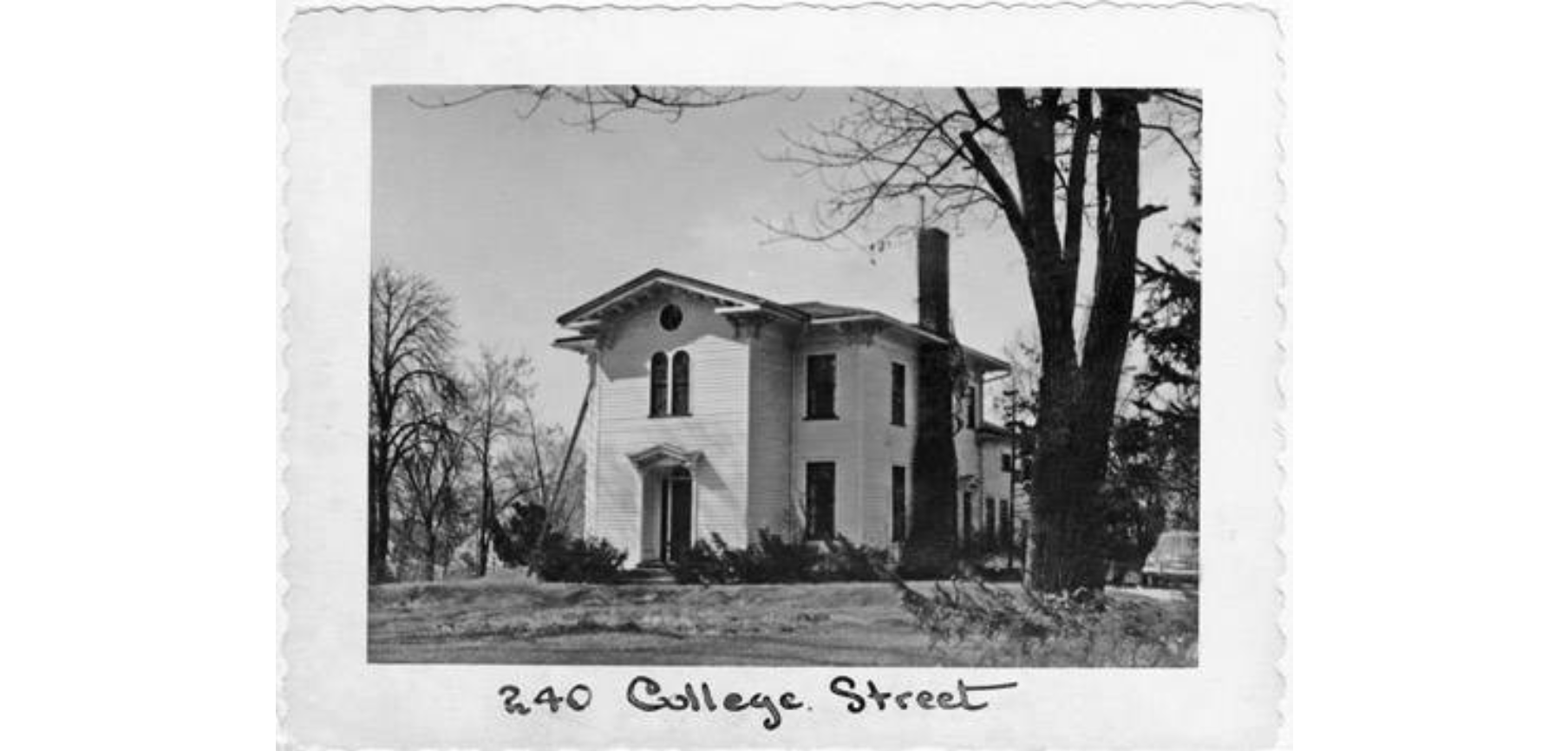 | The original house on this site burned down in January of 1860. In 1861 Orin J. Porter (1820-1871) built this Italianate home, a copy of one of Porter's earlier homes at 230 Aurora St. The family of James Boyd (1861-1960) once resided here. Boyd once worked in the administration of Hycar Chemical Co. a company that produced butadiene, an essential ingredient in the manufacture of synthetic rubber. | Summit Memory | |
245 College Street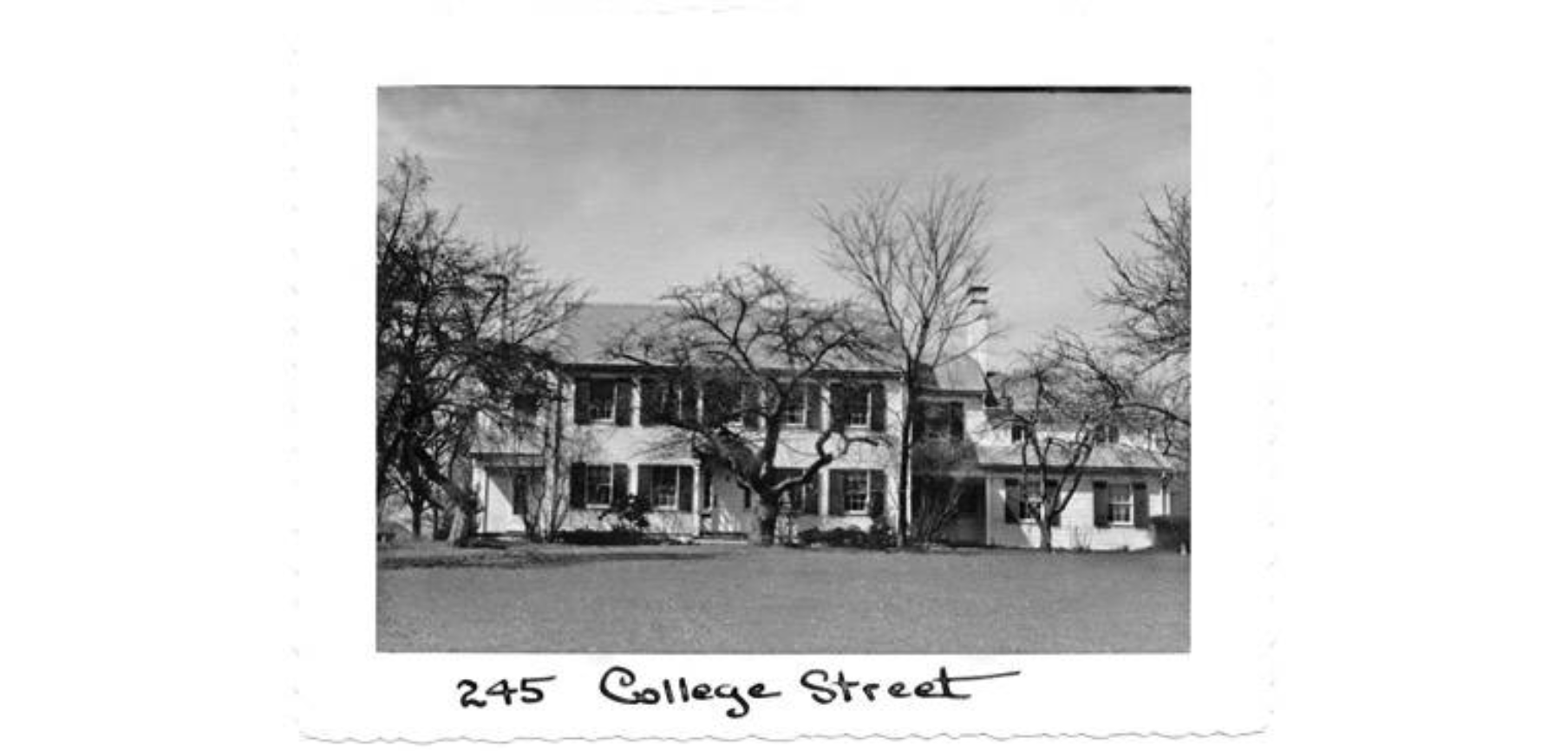 | This Colonial-style home, most likely built in 1931, was once home to the Kincade family. Colonel Gerard M. Kincade (1881-1949) served in World War I, was an officer in Panama while the Panama Canal was being built, and was a member of the "Great White Fleet." His daughter-in-law, Hildegarde Hadley Kincade (1910-2002), who also lived in this home, was a member of the Hudson Library & Historical Society's board of trustees. | Summit Memory | |
250 College Street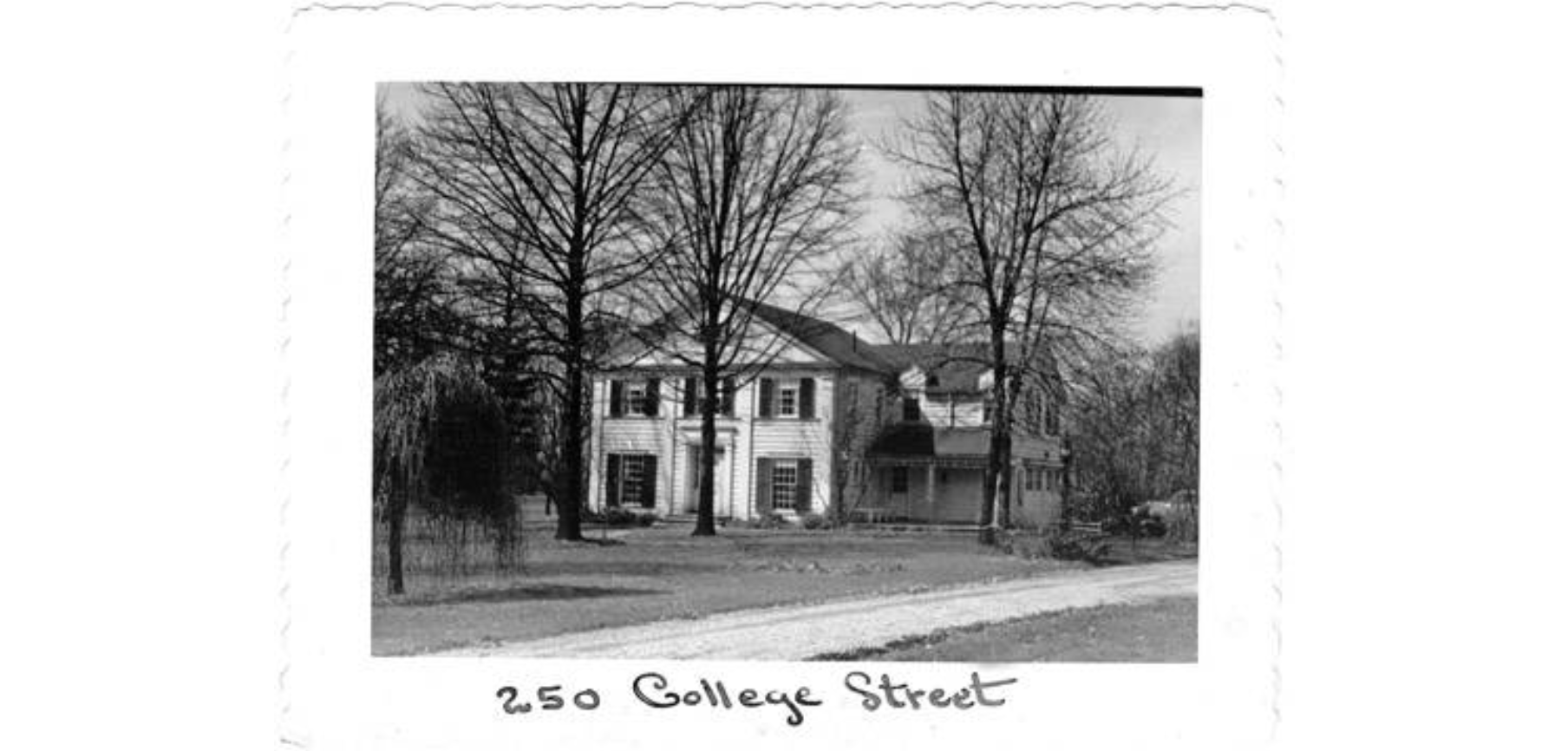 | Summit Memory | ||
| 130-132 College Street Philo Wright House | This house was built around 1841 for Philo Wright, one of the first students at Western Reserve College and later a tutor. Porter and Rice were the college architects at the time, and it is probable that they were the builders. It was moved to its current location in the late 19th or early 20th century from its original site at the northeast corner of Chapel and College Streets. | Hudson Heritage Association | |
| 153-155 College Street President's House 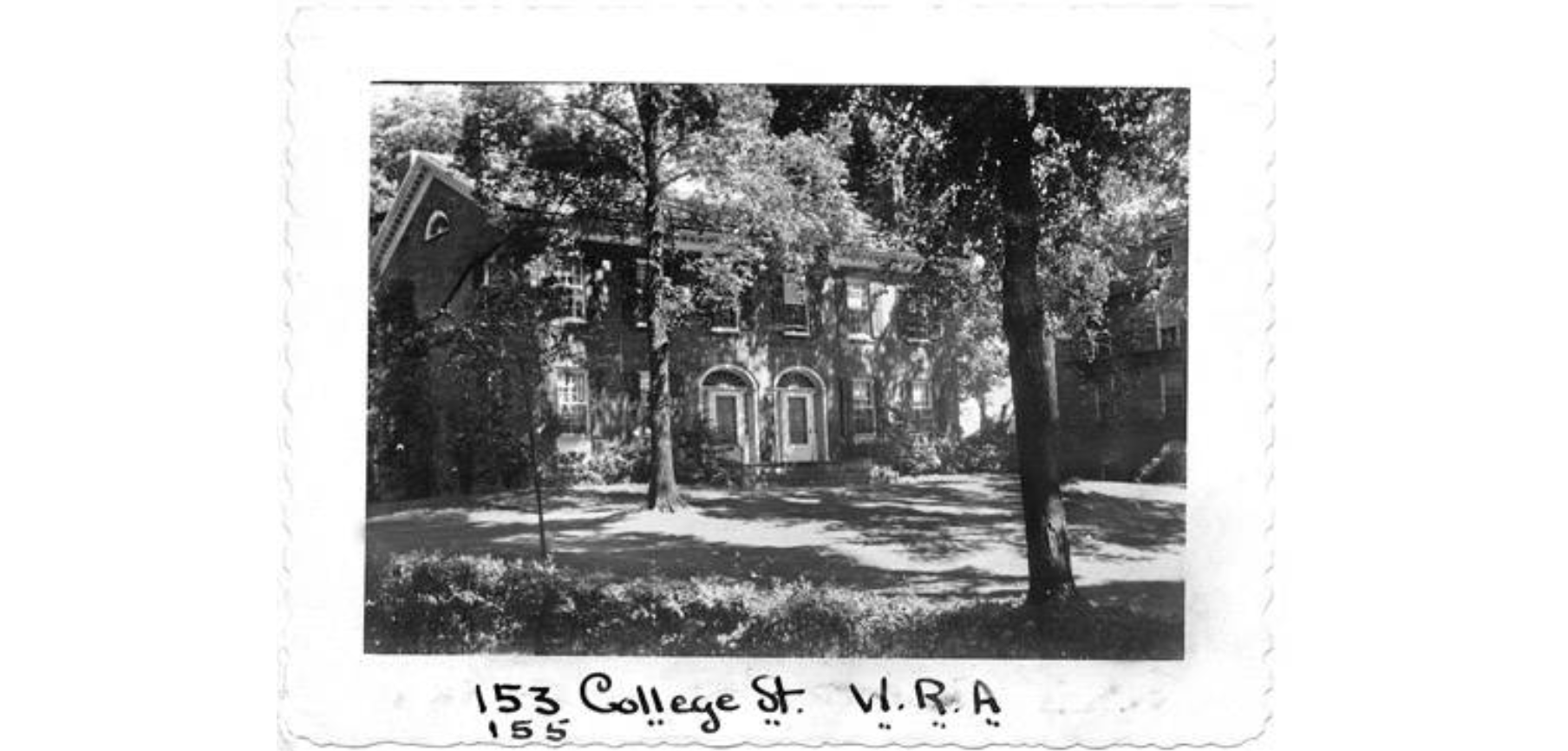 | This Federal-style home, built by Lemuel Porter (1775-1829) in 1829-1830, is the oldest building on Western Reserve Academy's campus. Although the home was originally built to house both the president and professor of theology of Western Reserve College, only one professor of theology has ever resided in the home. While the college was in Hudson, almost all of its presidents lived here, including Charles Backus Storrs (1794-1833), George Edmund Pierce (1794-1833) and Henry Lawrence Hitchcock (1813-1873). Carroll Cutler (1829-1894) lived at 169 College St. during his presidency. During Hitchcock's term, his son, John Ford Hitchcock (1840-1862), who probably resided in this home, died in Murfreesboro, Tennessee, during the Civil War. The home is now the headmaster's residence. | Hudson Heritage Association Summit Memory | |
5024 Darrow Road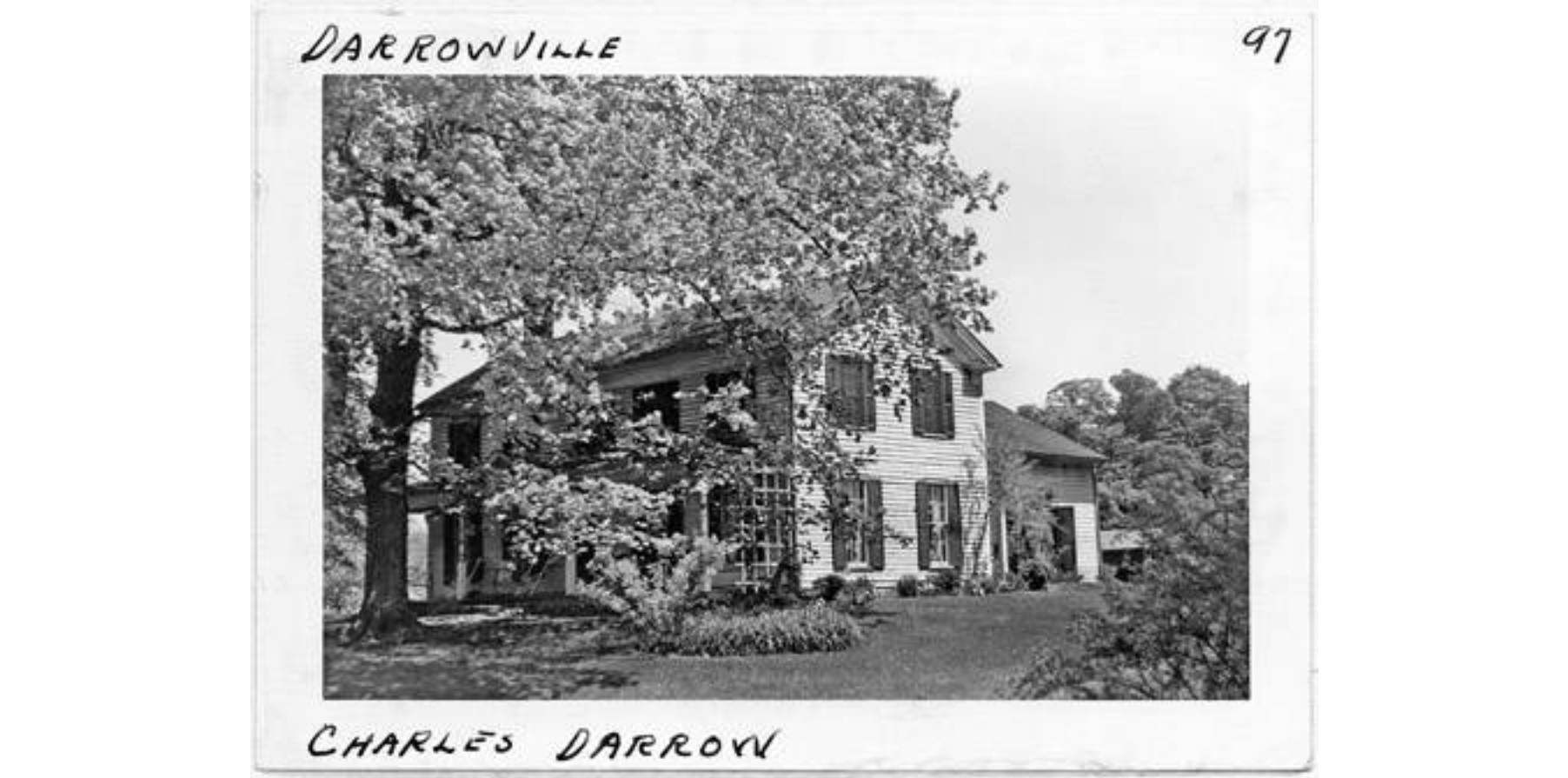 | This home was destroyed in 1958 to make room for the widening of Route 91. Charles Darrow's (1816-1874) son, Norman Darrow (1842-1862), once lived in this home. Norman served with the 115th Ohio Volunteer Infantry in the Civil War. | Summit Memory | |
| 5100 Darrow Road Hial and Milton C. Danforth Barn | View House Report | The three-story octagonal barn was remodeled in 1976 for use as the headquarters of the Smithers Company. The foundation is tooled sandstone. Even though the building has been completely modernized by architect Alen Sveda, the rooftop cupola is original, except for the wooden louvres, which were replaced with glass. The vertical board and batten siding and windows have also been replaced. The original siding was damaged by termites, but reused inside after being treated. The building has had many uses through the years, namely as a boat storage, antiques auction house and a meeting place for the Civil Air Patrol. | Hudson Heritage Association |
| 5108 Darrow Road Hail Danforth Farm | View House Report | Hail Danforth came to Hudson in 1821 with his parents and siblings. The Danforths left Hudson to seek opportunities in Illinois but only reached Sandusky because of harsh winter weather conditions. Sadly, the impoverished widowed Danforth had to move back to Hudson with her children. Due to illness, Mrs. Danforth then moved to Vermont with her daughters, leaving her sons, Hail, Harrison and William, to apprentice in Hudson. Hail lived with boot and shoemaker John Sawyer until he was 23 when he opened his own shop. In 1831, Hail married Sophie Darrow, daughter of one of the first surveyors of Hudson and Stow, whose family established Darrowville. Tax records also show Hail was a cooper and later, in 1860, hes listed as a farmer. John and Sophies son, Milton, a rural mail carrier and publisher, joined the family farm in 1870. Family heirs continued on the farm until 1936. | Hudson Heritage Association |
| 5114 Darrow Road William Hibbard House | View House Report | The house was built by William and Catharine Hibbard who moved to Stow Township from Ireland in the late 1820s to farm. The original 44 acres was bought from Joshua and Ruth Stow. Growing to 100 acres, the home and property remained in the Hibbard family until 1934 when the property was sold to developers. | Hudson Heritage Association |
| 5122 Darrow Road William Ball House | View House Report | Dr. William F. Ball had this house built on land purchased from Hial Danforths son Milton. Milton was married to Dr. Balls daughter, Frances. William and Mary Ball enjoyed entertaining during their first year in the house. Unfortunately, Dr. Ball died in 1901. Widow Ball later moved in with Milton and Frances. | Hudson Heritage Association |
| 5230 Darrow Road George Darrow House 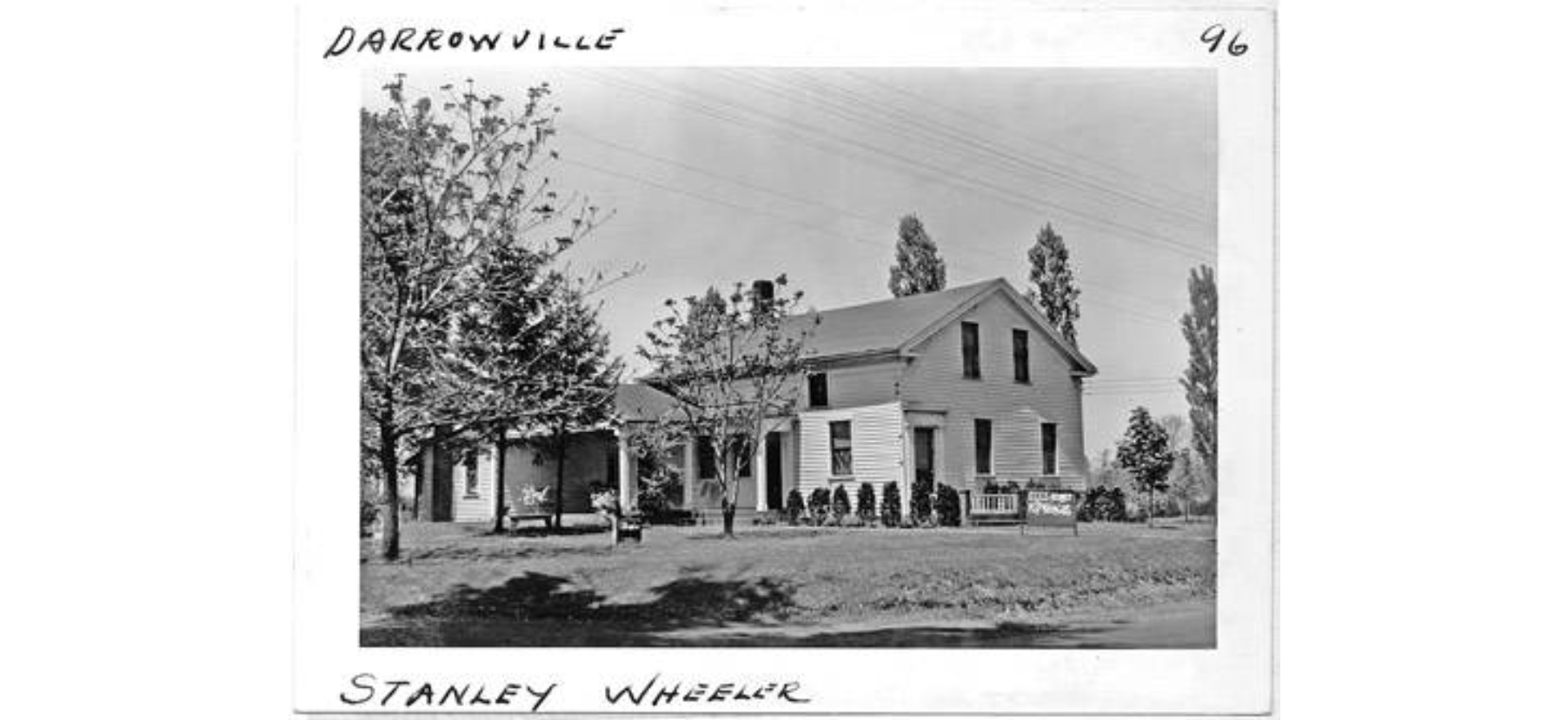 | View House Report | George Darrow (1778-1859), War of 1812 veteran, built the beginnings of this structure in 1824 and altered it again in 1836 for his bride, Olive Gaylord Darrow (1779-1859). George and Olive are cited as the first couple married in Hudson. The residence served as a hotel in the early days for travelers. The Greek Revival home has remained in the Darrow family for at least six generations. The home features black-walnut-trimmed interior rooms and hand-hewn logs in the basement. | Hudson Heritage Association Summit Memory |
5992 Darrow Road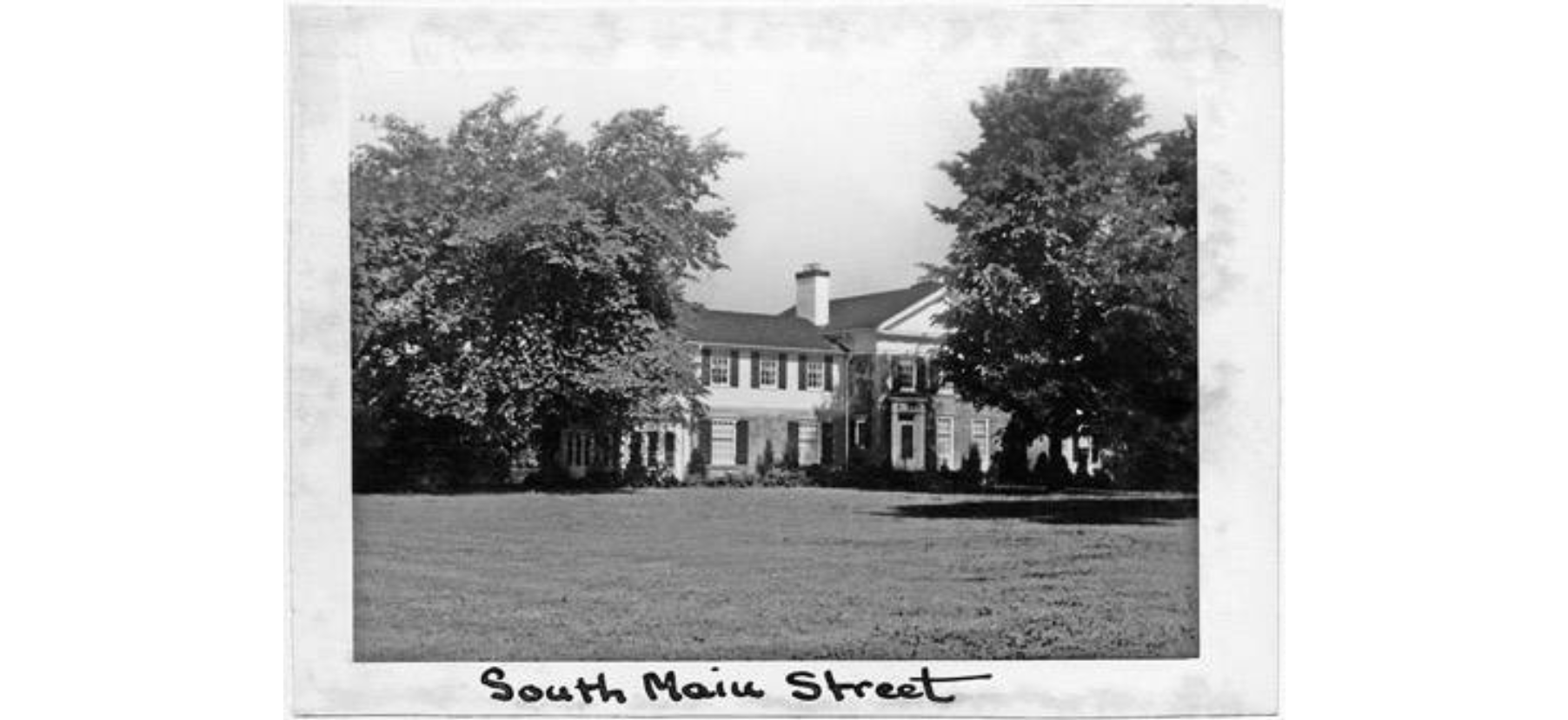 | Not much is known about this circa 1935 home. It currently functions as a commercial building. | Summit Memory | |
6915 Darrow Road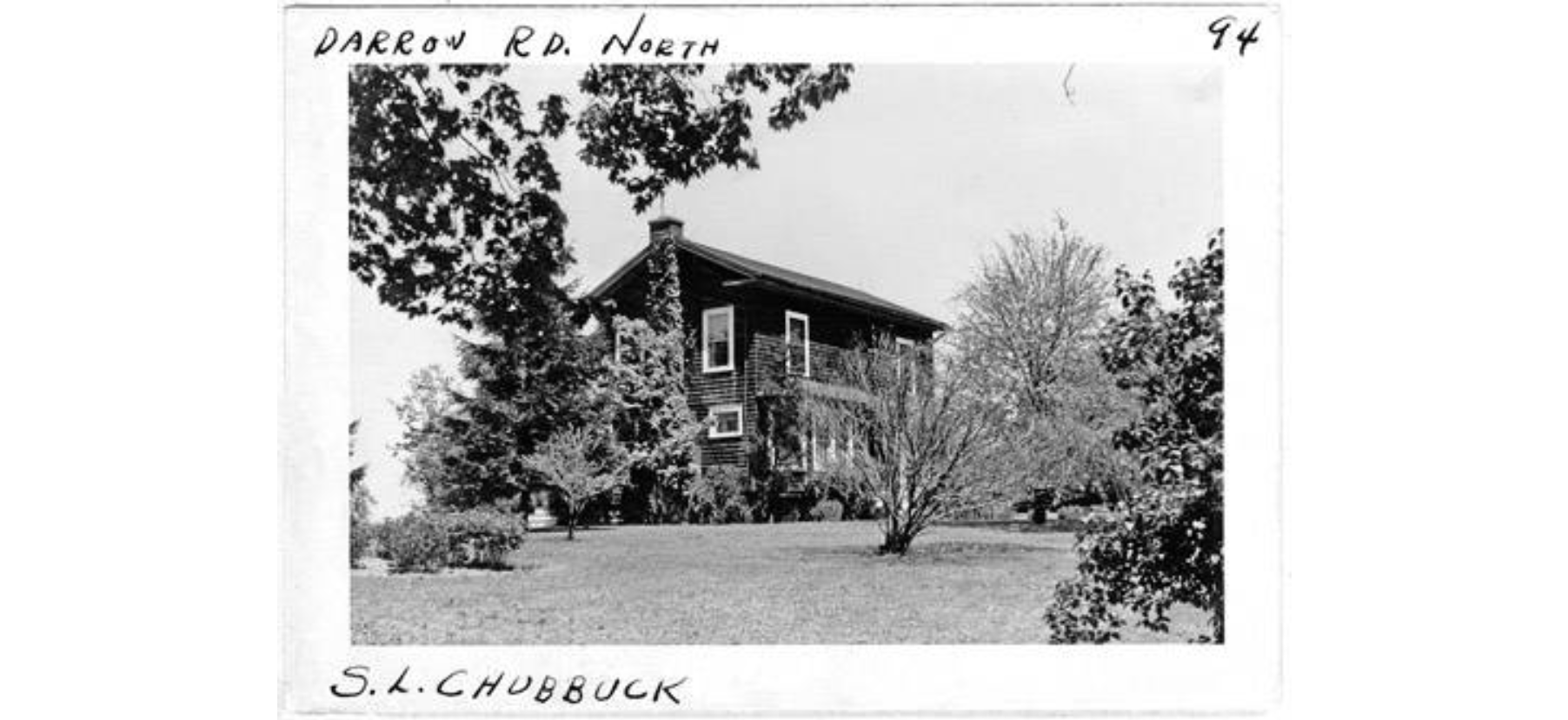 | Summit Memory | ||
29 Division Street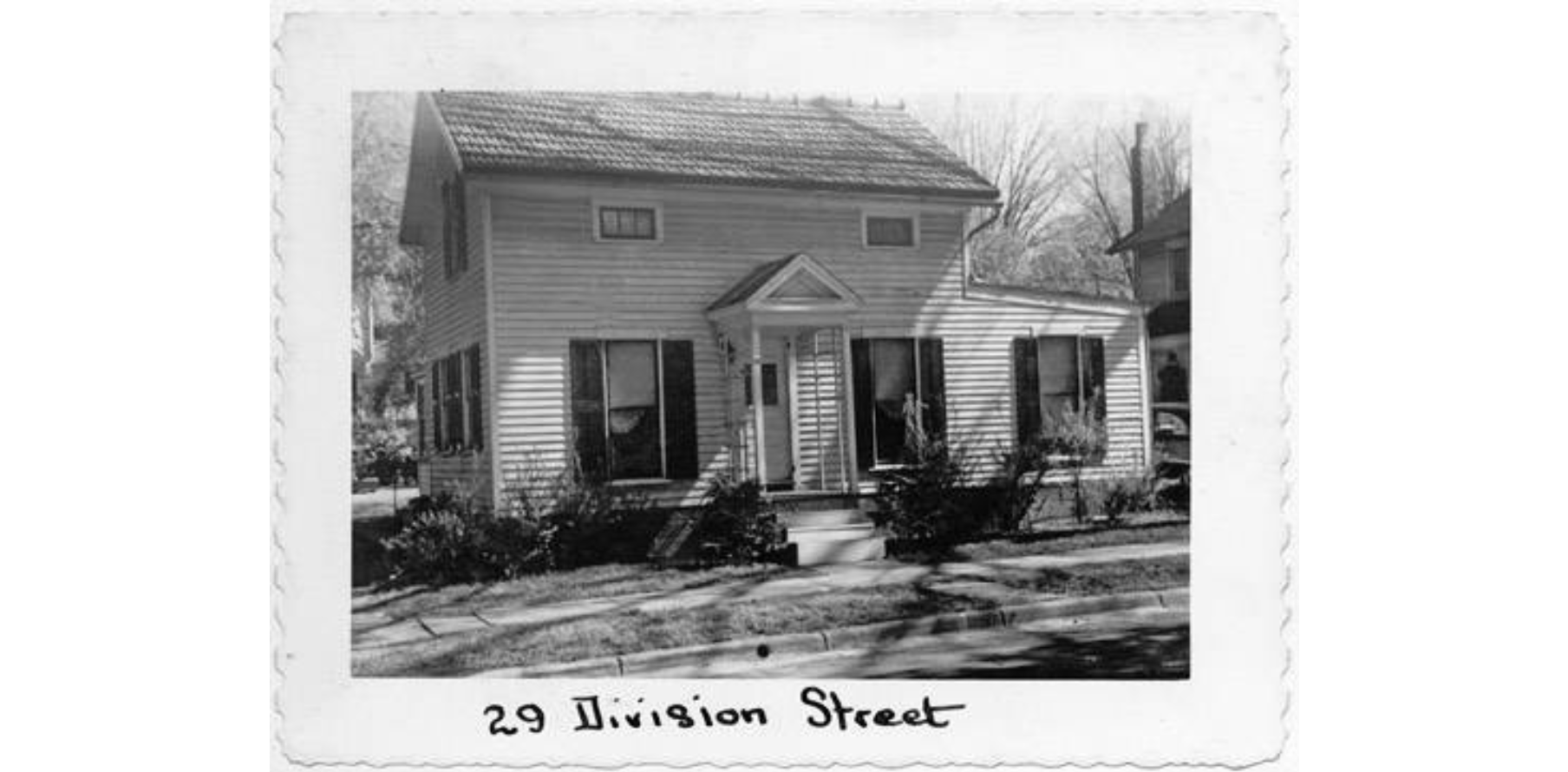 | This 1850s home has aluminum siding and a red tile roof. Such roofs were given away for free by Hudson resident and millionaire James W. Ellsworth (1849-1925) to those who would install them. Mae Crane (1876-1948), one-time postal clerk and later postmaster, lived here for many years. | Summit Memory | |
| 30 Division Street Norman S. Baldwin House 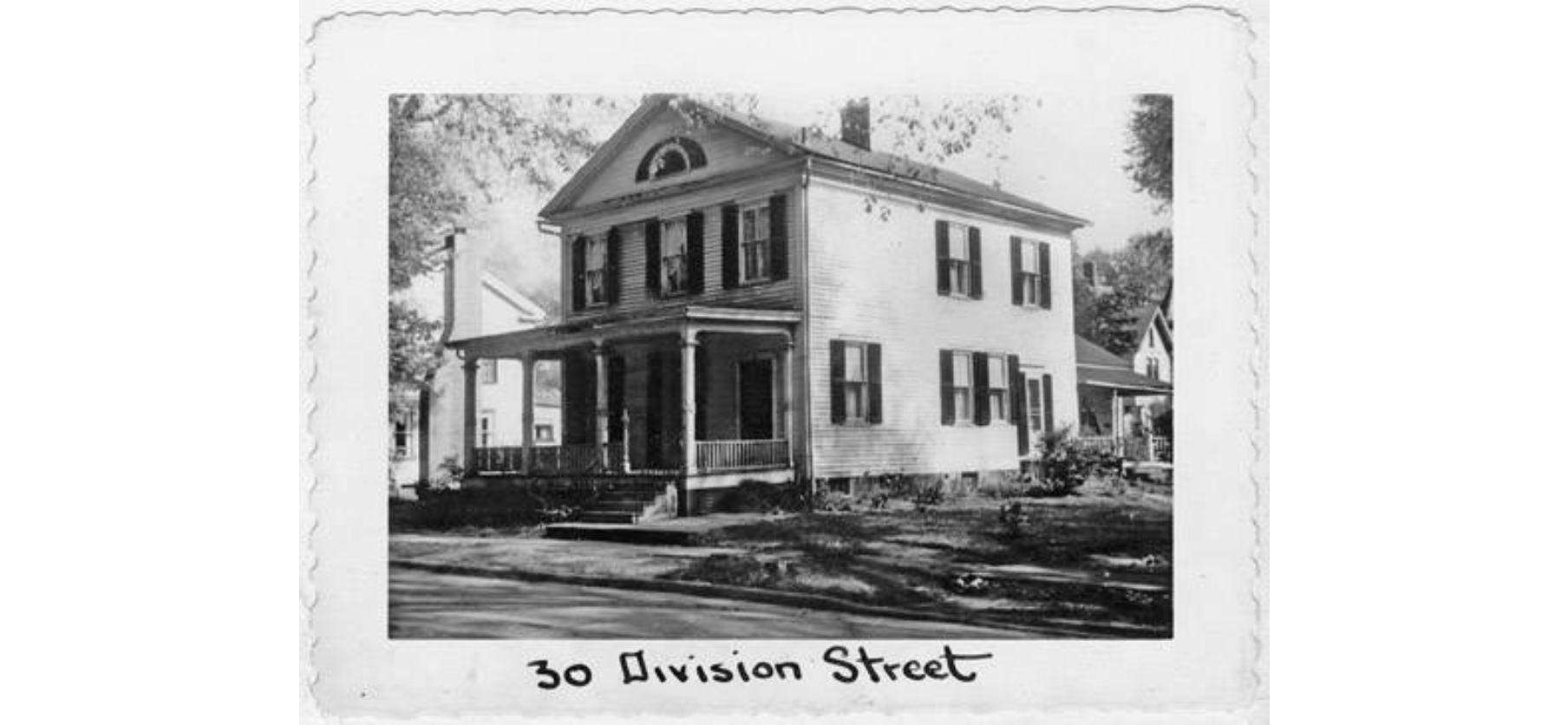 | View House Report | The son of one of Hudson, Ohio Township's original proprietors and a successful business man with a line of packet boats, Norman C. Baldwin (1802-1887) built this house in 1826. It was moved to this location from 35 East Main Street in 1890. William Dawes (1799-1888) was the second owner and was very active in the abolition/colonization controversy in the 1830s. One of Hudson, Ohio's benefactors, James W. Ellsworth (1849-1925), most likely was born and grew up in the house. In this Federal styled house are details in the moldings which are similar in style and elaboration to the house at 36 North Main Street. These details are from an early edition of Asher Benjamin's AMERICAN BUILDER'S COMPANION, 1806. The builder was most likely Lemuel Porter (1780-1829) since he was known to have used the Companion. | Hudson Heritage Association Summit Memory |
| 33 Division Street Moore-Oviatt House 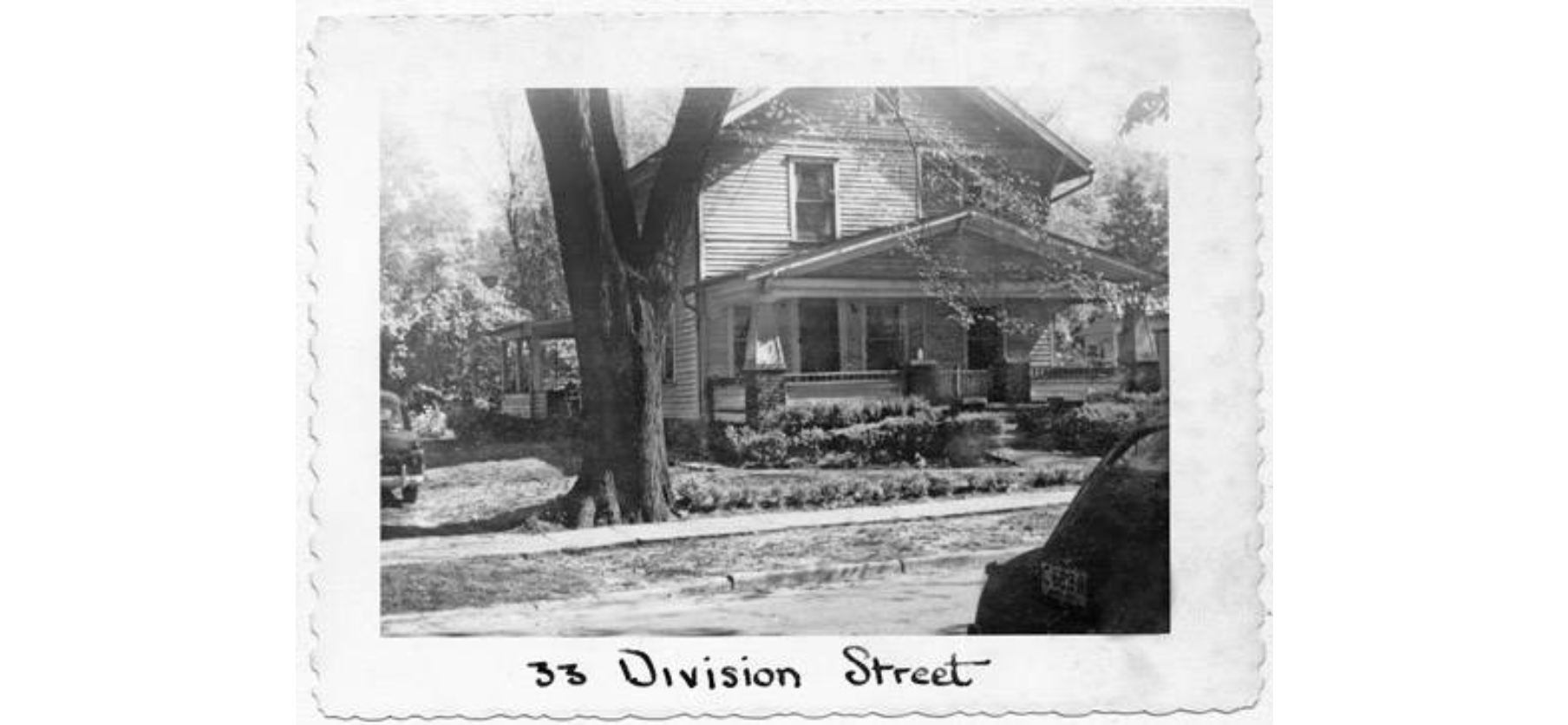 | View House Report | The Moore- Oviatt house honors Michael Moore (1838-1917), a merchant tailor who came to this country from Ireland, built this house in 1868 and Charity Norton Oviatt (1835-1908) who was the second owner in 1904. Her great grand daughter, Elizabeth Walker (1918-2004), lived in the house until her death in 2004. The attached garage is now an addition. This house is well documented-even down to who did the original wiring -Henry Pettigell (1843-1918) and what year the Franklin stove was installed. (1916) | Hudson Heritage Association Summit Memory |
| 34 Division Street Julia Wells House 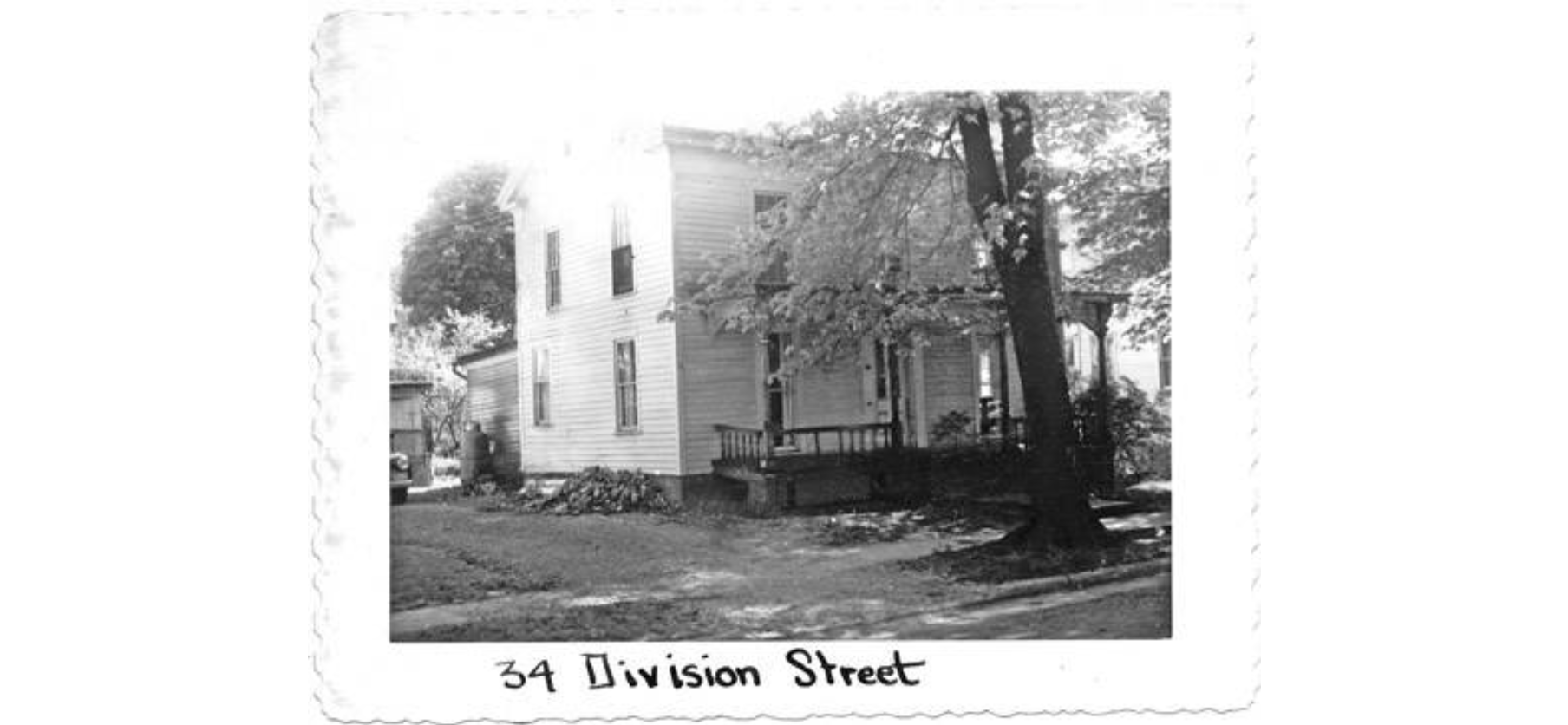 | View House Report | In 1853 this home was constructed for Julia Wells (1792-1871). Later it became the home of Merrill Mills (1909-1994), who owned the Mills Dairy of Hudson from 1938-1955. The plain New England farmhouse was actually moved to this location in the late 1880s; the front porch is now gone. Painter and paperhanger Orris E. Baker (1868-1945) once resided in this home. | Hudson Heritage Association Summit Memory |
37 Division Street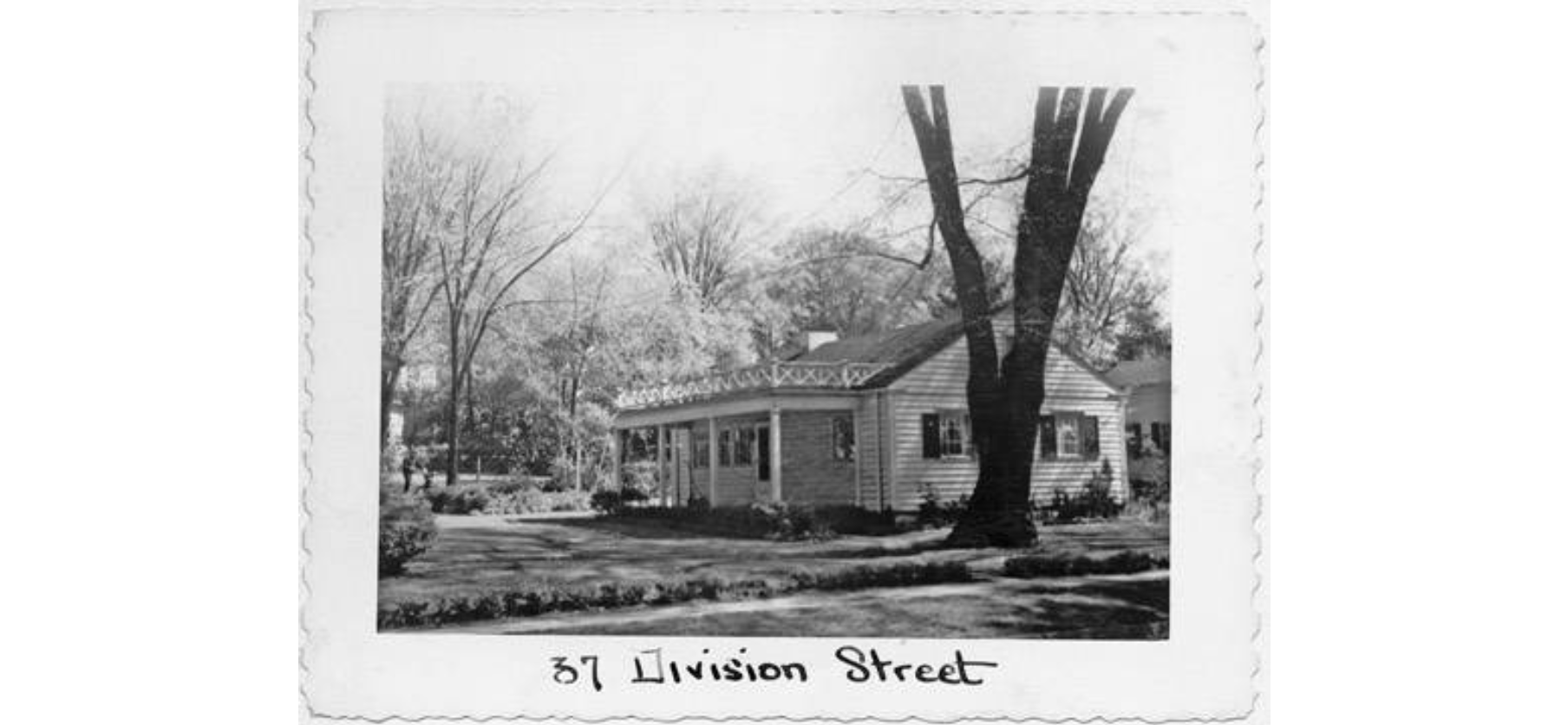 | This house has strong characteristics of a Sears home Model P3240 or The Prescott. I twould have cost $1873.00 in 1926. It was clearly built after 1929. | Summit Memory | |
38 Division Street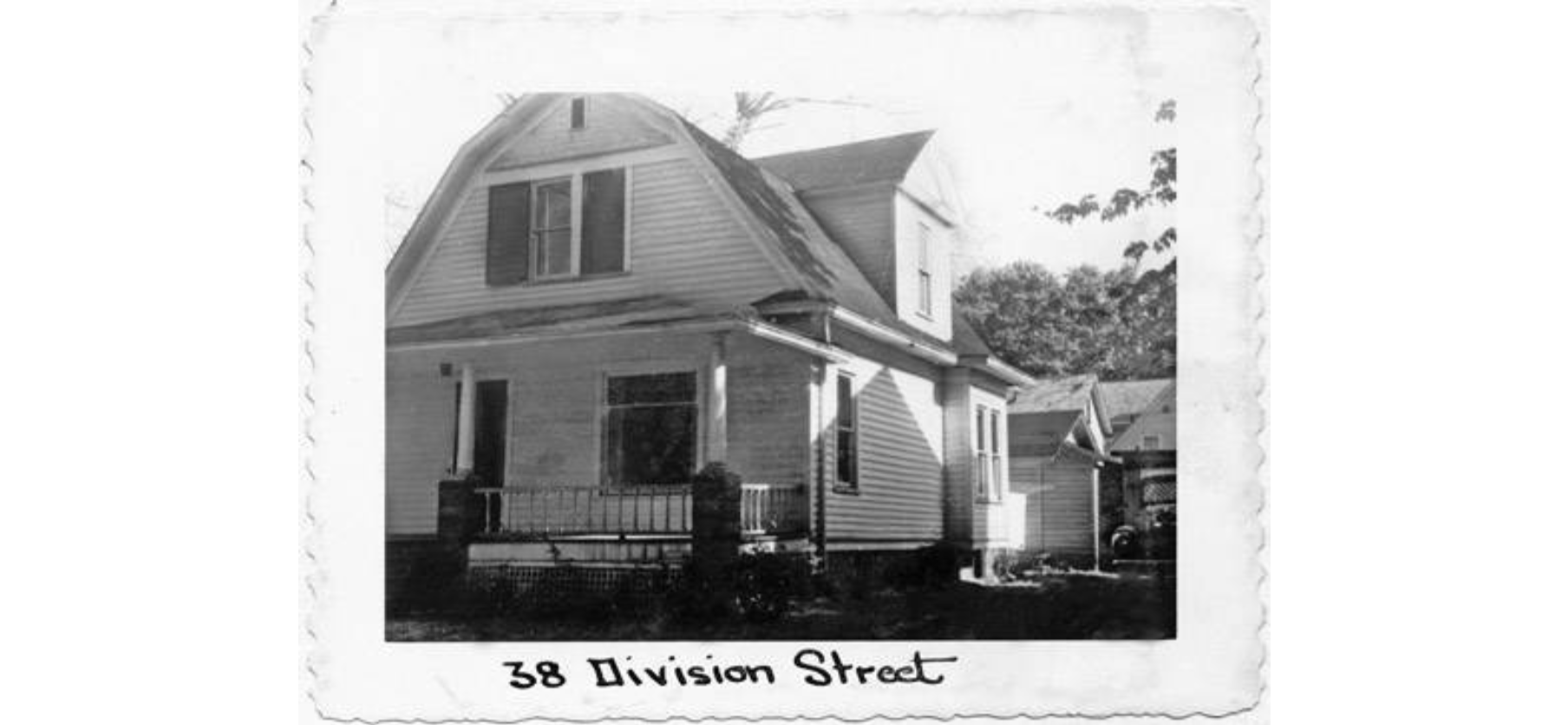 | Grocer Fred Seward (1861-1928) once lived in this circa 1920s Colonial Revival home with his second wife, Annette Bissell Seward (1856-1933). | Summit Memory | |
40 Division Street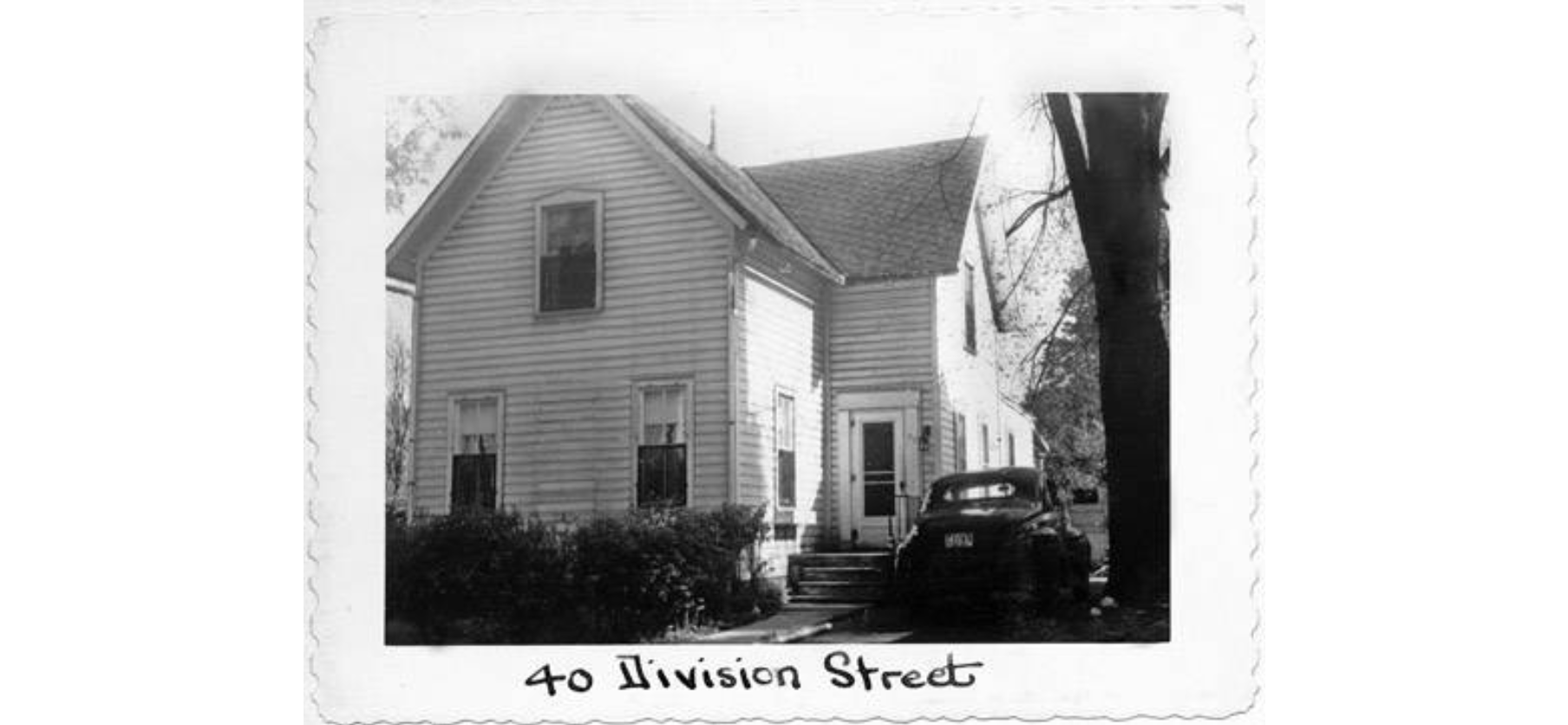 | This house was probably built in the 1850s. It has a cross gabled roof with very steeply pitched gables, a Greek Revival influence in the entryway and a narrow frieze. It is possible that the house could have been moved as is indicated by the structural tile foundation. Once home to John (aka Jack) Berg (1917-1972) supervisor of buildings and ground at Western Reserve Academy and honorary member of the Hudson, Ohio Fire Department. | Summit Memory | |
| 45 Division Street Farrar-Trumbull House 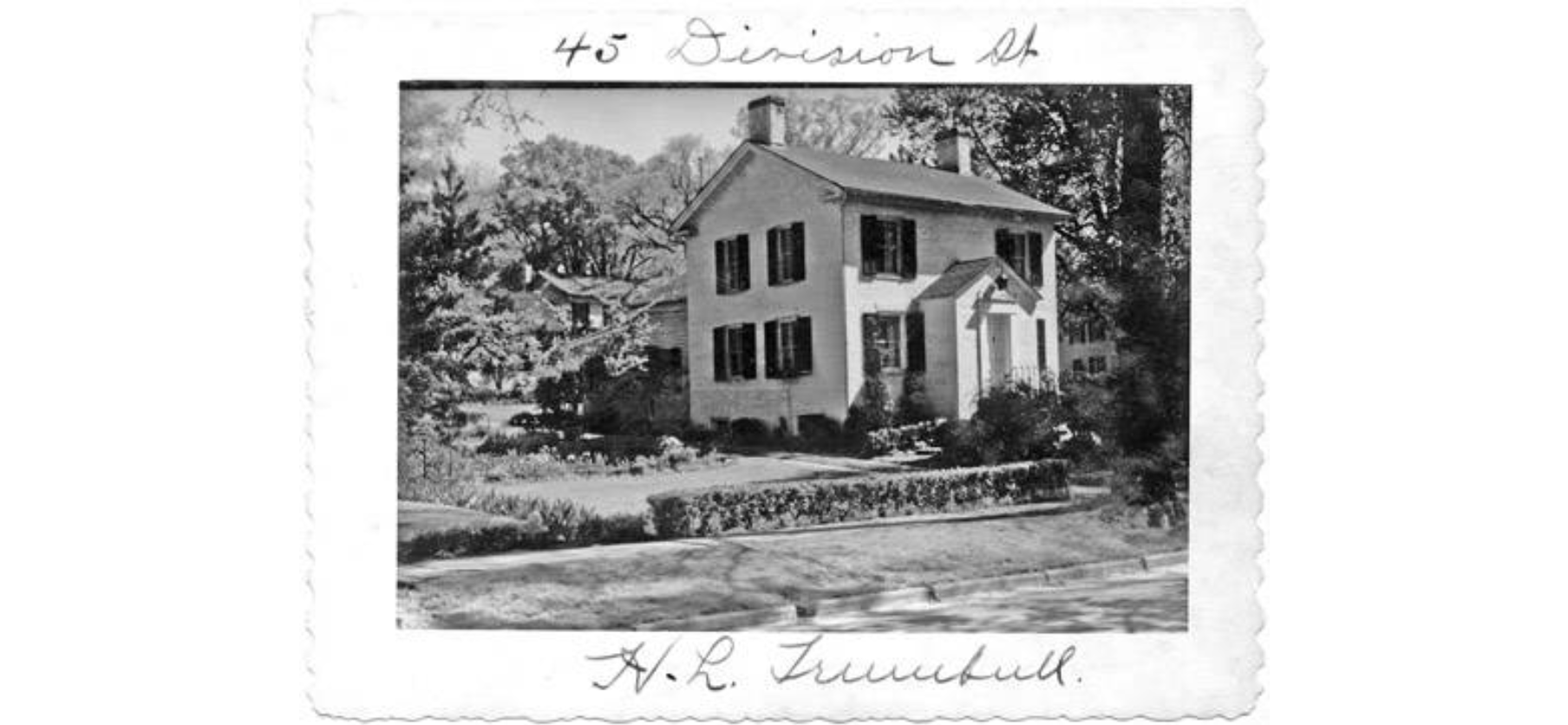 | View House Report | The Farrar-Trumbull House honors the original builder, John Nutting Farrar (1817-1894), and the Trumbulls, longtime owners. Farrar, a dealer in hardware and various metals, built the brick home in 1844. Harlan Trumbull (1886-1981) and his wife lived in the home for more than 65 years. Harlan Trumbull was a longtime employee of B.F. Goodrich and renowned for his research of rubber. Harley Ellsworth (1863-1935), a professional piano tuner, also resided in this home. | Hudson Heritage Association Summit Memory |
46 Division Street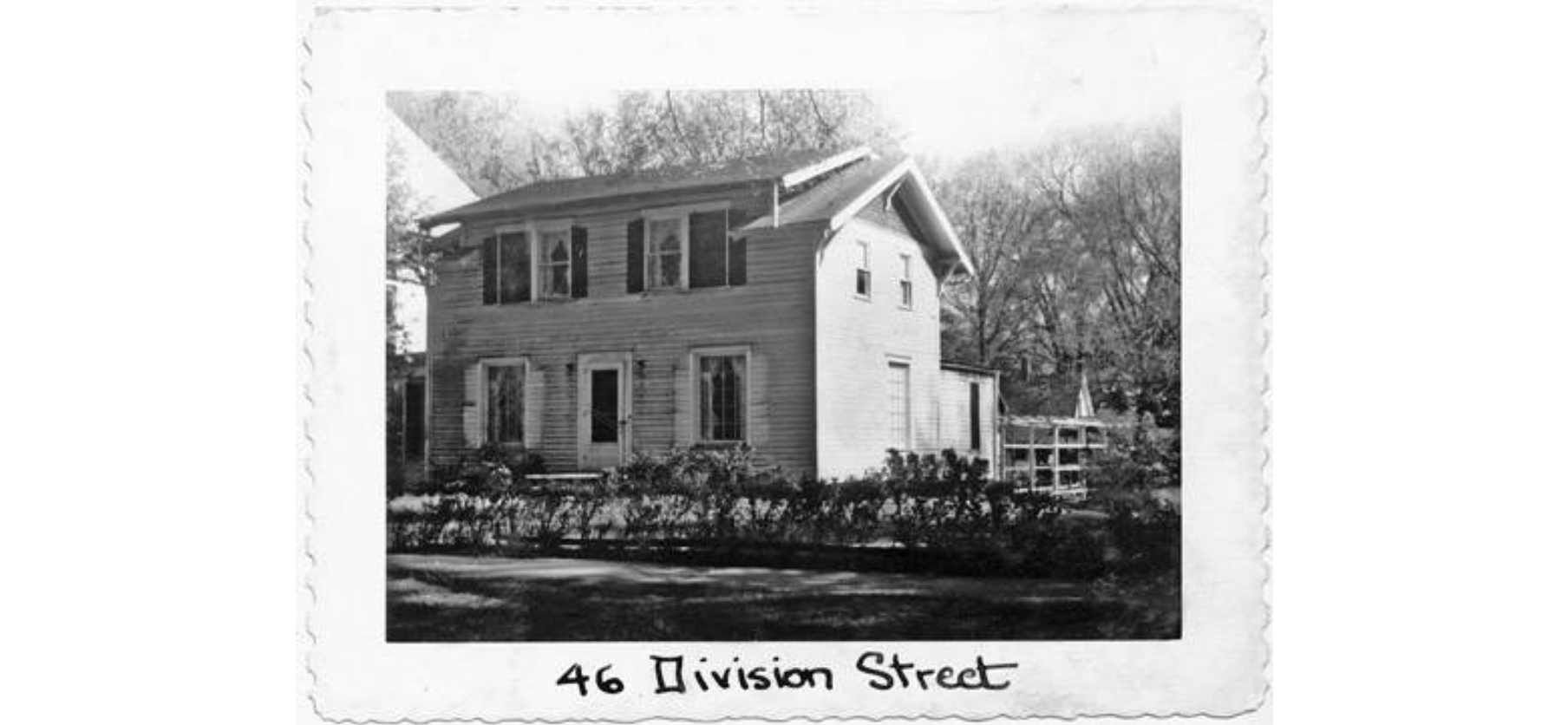 | There have been many changes to this house since it was built around 1880. Well-known painter George Moore (1857-1923) lived here many years. In fact, the home may have been built by George's father Michael Moore (1838-1917), a merchant tailor from Ireland, who also built the home at 33 Division St. Multiple generations of the Kohl family have owned this property. | Summit Memory | |
| 50 Division Street First Christian Church 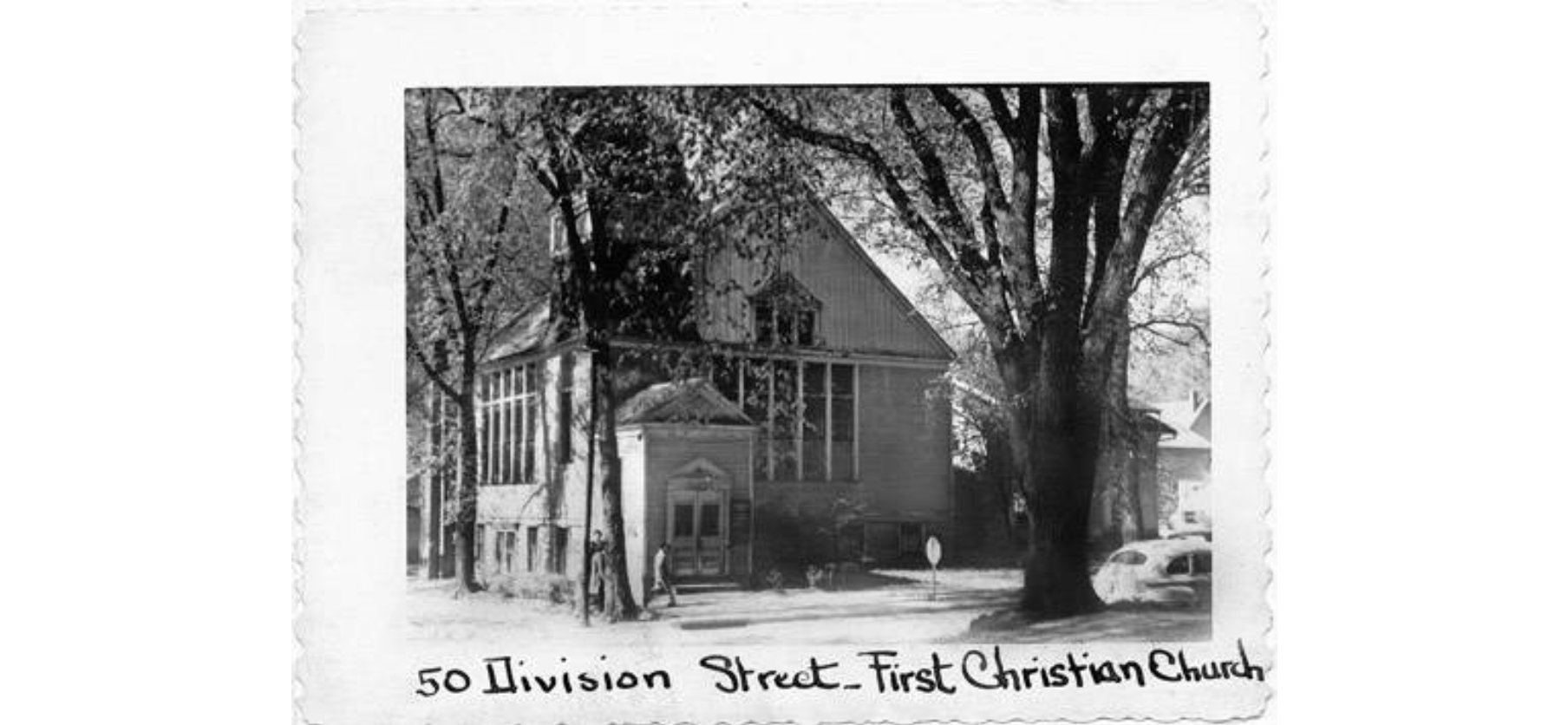 | While this is no longer a Christian church, this house of worship dates to 1892. James A. Garfield (1831-1881), future U.S. president, spoke here on April 20, 1860. It is now the home of Temple Beth Shalom. | Hudson Heritage Association Summit Memory | |
| 60 Division Street N.W. Shaw Grocery | View House Report | The property was originally part of a 1-acre parcel of land sold in 1850 by Western Reserve College to the John Kirby/Whedon Family. In 1874, William Noonan built the first house and further divided the property, selling it to Seymour Straight, who then sold it to Malcom McNeil. After a house on the property was destroyed, Nathan W. Shaw, a grocer, built and opened the building as a grocery in 1899/1900. The structure later served as a doctors office, for both Dr. Bayard T Keller and Dr. Mason Daugherty. The property had the first in-ground swimming pool in Hudson. During the Great Depression, Mrs. Lola Daugherty remodeled the building to incorporate rooms for boarding. Daugherty was a teacher and principal with the Hudson Schools, and she was the first woman to receive a masters degree from Kent State University. | Hudson Heritage Association |
| 63 Division Street Frederick Baldwin Tenant House 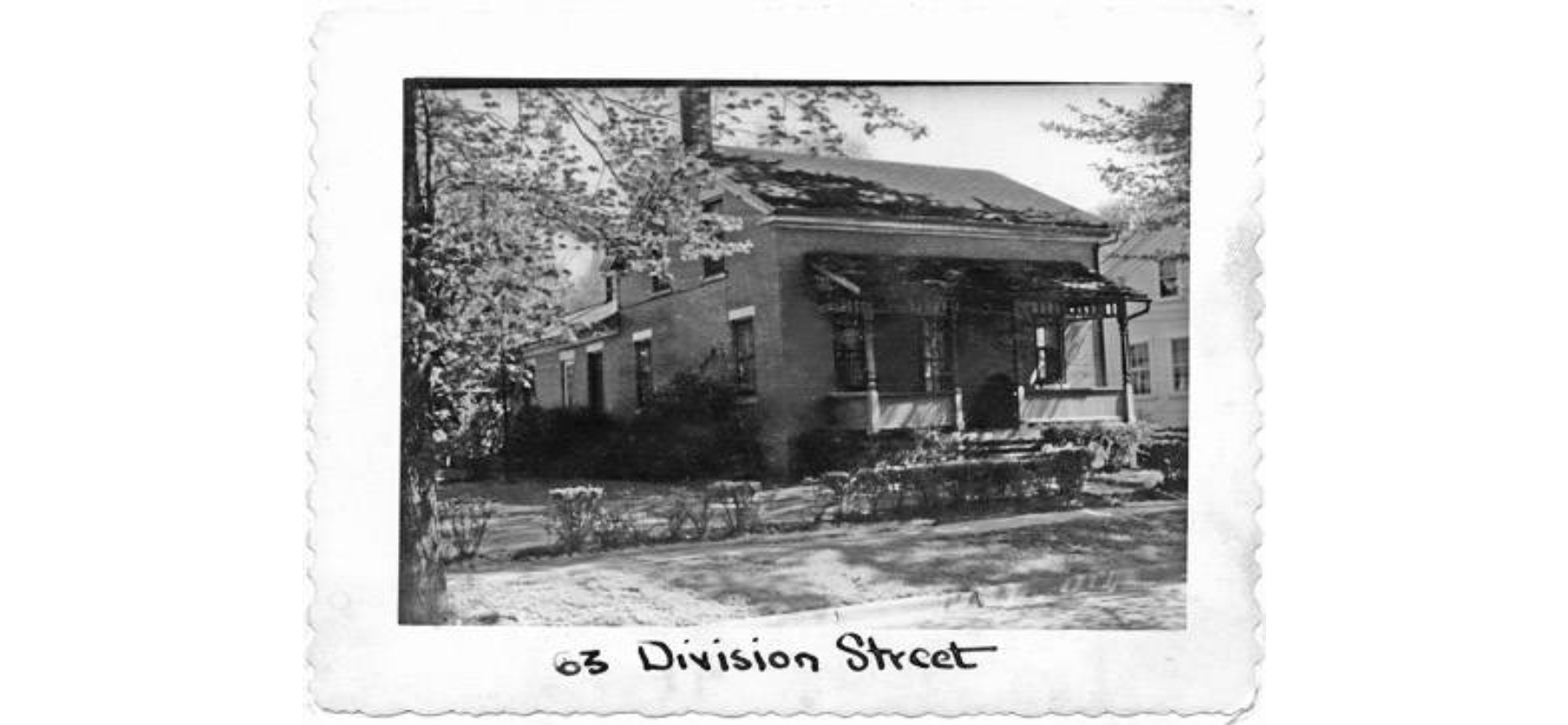 | View House Report | The Frederick Baldwin Tenant House was built in 1852 as an investment property in the railroad boom years. Frederick Baldwin (1795-1881) was a member of a pioneer Hudson,Ohio family, and built this New England one-and-half brick house. This is one of the many small houses built in Hudson, Ohio during the boom to provide housing for an expected surge in population. | Hudson Heritage Association Summit Memory |
| 67 Division Street Hunter-Cartwright House  | View House Report | This home was built in 1852 and was home to Nantucket native Edward S. Cartwright (1821-1909), who purchased the home in 1854 and resided here until 1869, when he moved into his newly built home at 204 College Street. The family of shoe merchant and Irish immigrant John Cook once occupied this home. | Hudson Heritage Association Summit Memory |
68 Division Street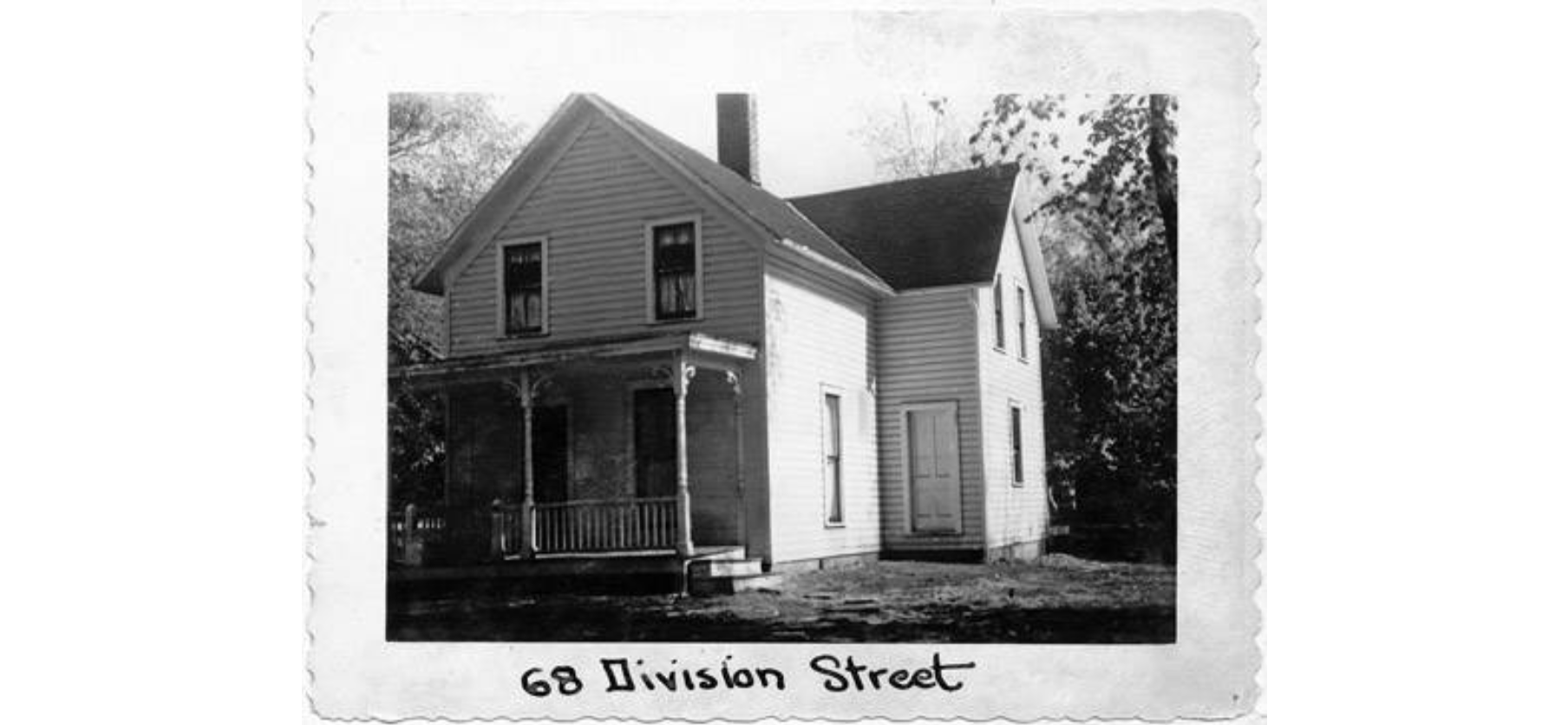 | World War I veteran and College of Marietta graduate Ralph C. Pipes (1899-1983) resided here after returning home from the war. This two-story home probably dates to the early 1900s, but more research is needed to identify its age. | Summit Memory | |
71 Division Street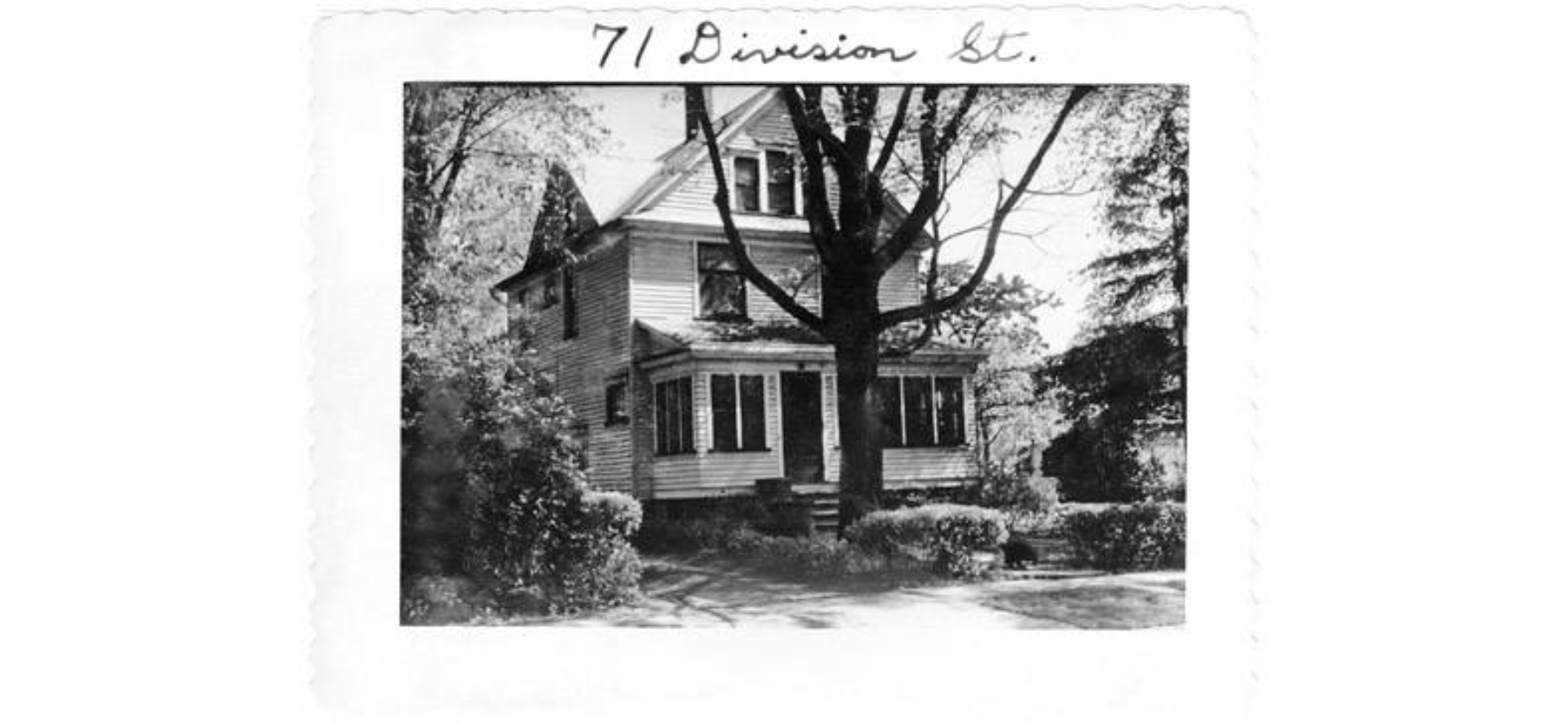 | This house built circa 1893 was once home to English immigrant Henry J. Newland (1867-1919) and his Irish wife Ellen Collins (1863-1929). Newland served as butler and maidservant to James W. Ellsworth (1849-1925) for 33 years, often traveling with him. Newland was highly regarded in the community for his loyalty to Ellsworth. | Summit Memory | |
72 Division Street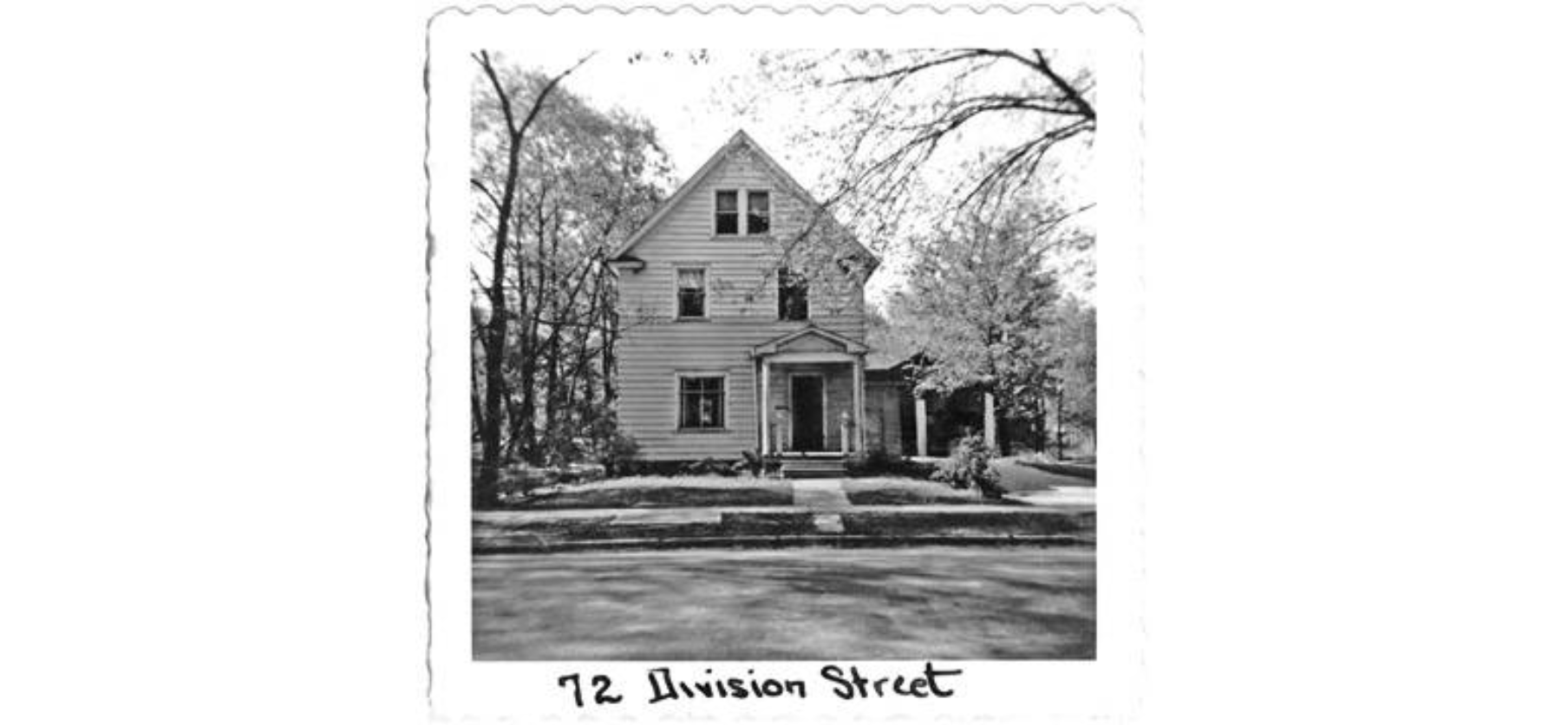 | Lawrence I. Henry (1896-1966), mail and express messenger and World War I veteran, once lived in this quaint gabled-roof home. | Summit Memory | |
| 73 Division Street Russell Davis / Rial Town House 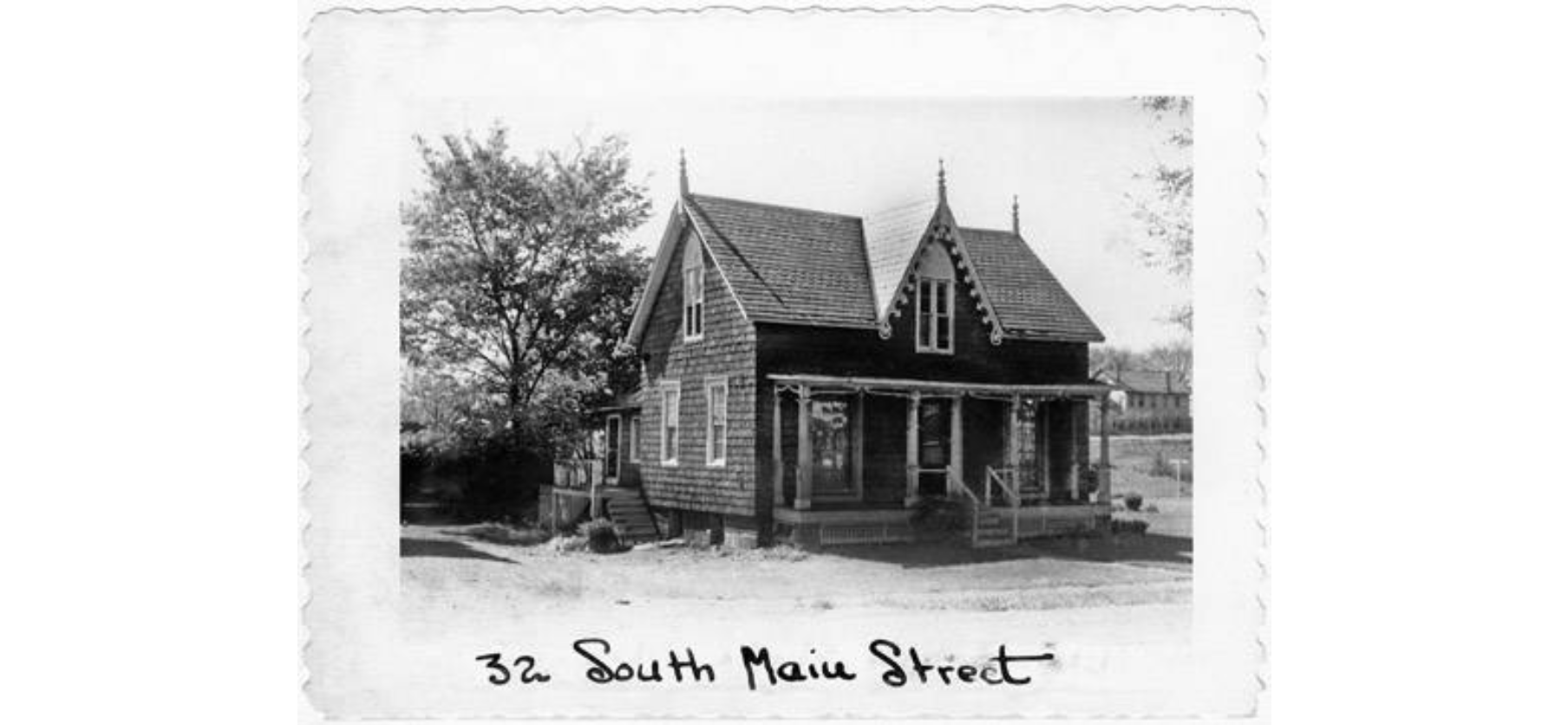 | View House Report | This Gothic cottage is now located at 73 Division St. It was moved in 1955 from 32 S. Main St. to make way for a restaurant. The house boasts several interesting architectural details, including a steeply pitched roof, twin lancet windows, and fancy barge board (gingerbread). Itt was first a Greek Revival home and was transformed in 1854 to a Gothic cottage. The house was built in 1831 by Leader Starr for Russell Davis ( 1861). It It is not known why Davis moved to Middlefield, Ohio, but he sold the structure to Rial K. Town (1802-1885) in 1832. When the house was sold in 1836, the price was a mere $500. There have been many subsequent owners; all have preserved the character and intricacy of the carvings of the interior woodwork. | Hudson Heritage Association Summit Memory |
| 79 Division Street Eliza Ellsworth House 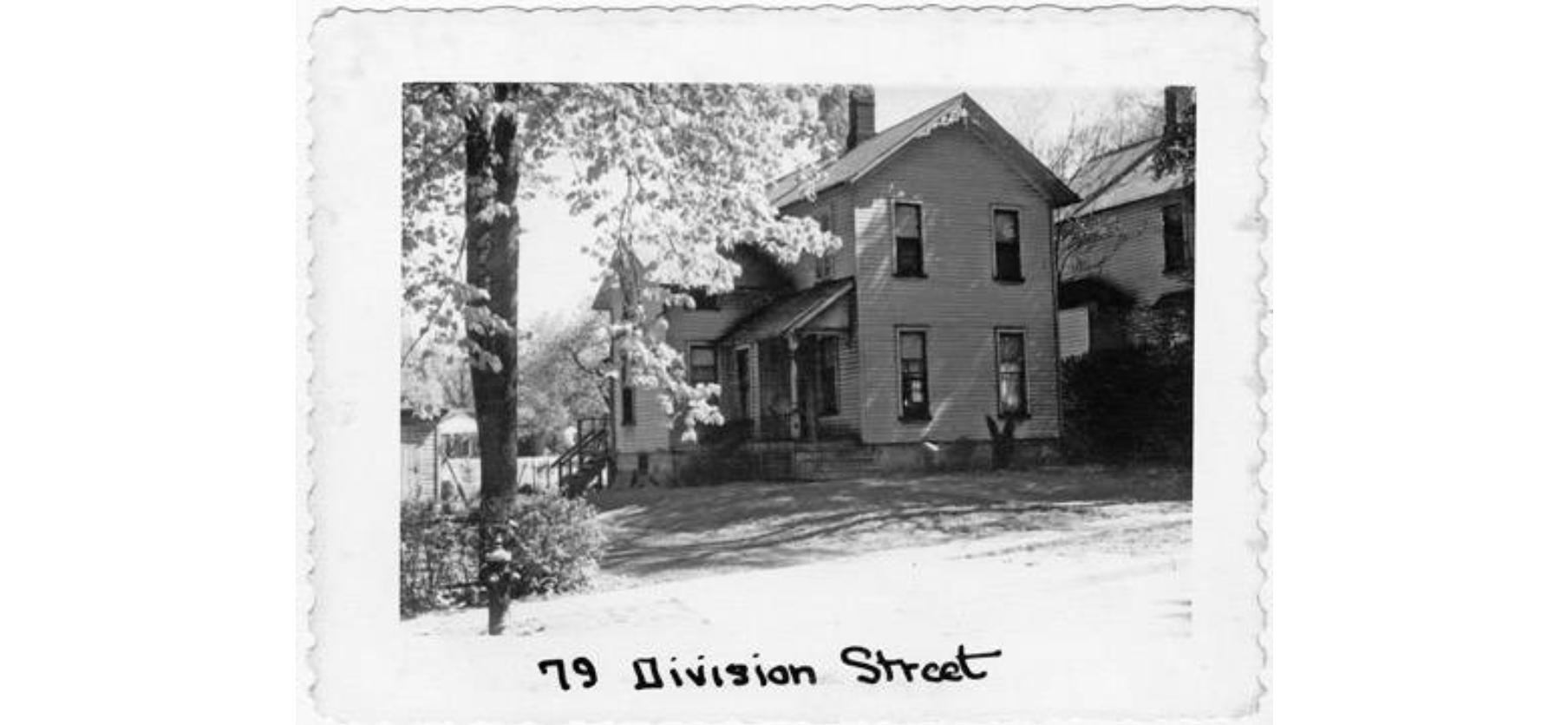 | View House Report | This typical late Victorian house was built in 1889 at a time when there was a great deal of construction happening to the east end of Division Street. Ransom Ellsworth's (1805-1883) third wife, Eliza Castle Ellsworth (1827-1905) had this house built with original hand rolled glass in the windows. Woodwork inside is of black walnut. | Hudson Heritage Association Summit Memory |
| 83 Division Street Lydia Finch House 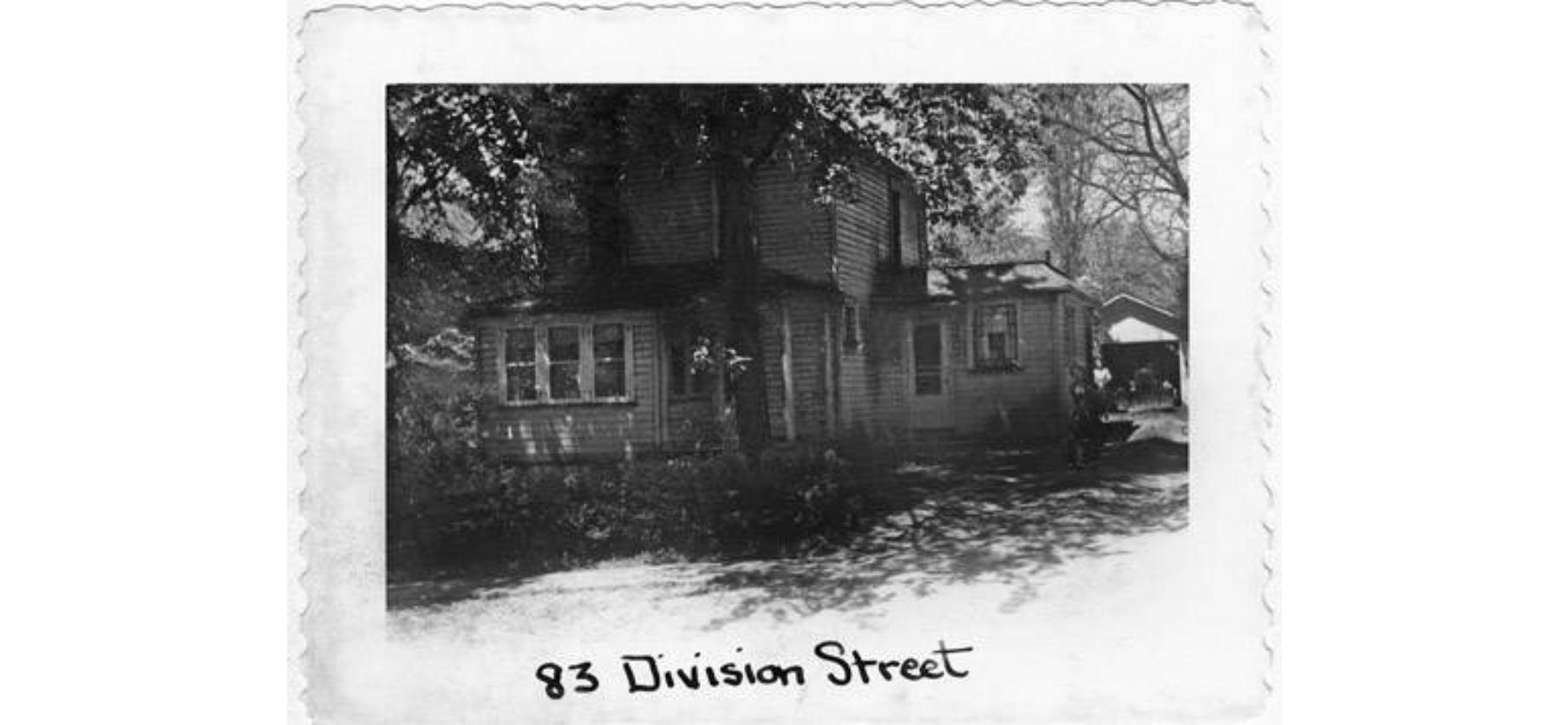 | View House Report | This Victorian farmhouse was built in 1889 and is very typical of the building style in Hudson, Ohio at that time. It has the dropped sidiing wall treatment and the Eastlake trim on the window casings. Most of the interior woodwork is original and the front porch has been enclosed. Dr. Mary Anderson (1854-1950), a physician and prominent figure in Ohio politics owned the house in 1967. She was active in the Women's Christian Temperance Union and women's suffrage movement and had a national reputation as a lecturer. She was listed in the 1935 edition of "Who's Who Among American Women". | Hudson Heritage Association Summit Memory |
| 85 Division Street Wendling House 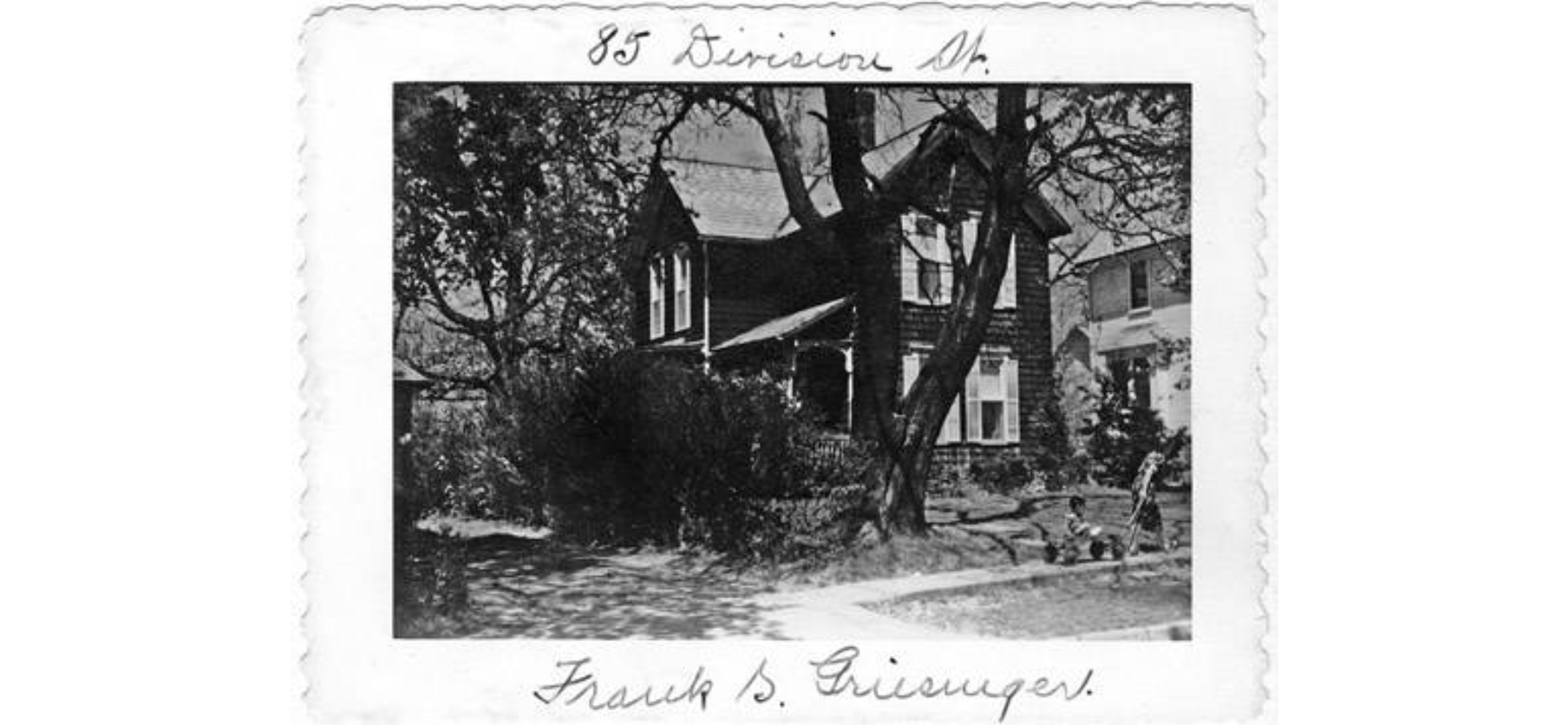 | View House Report | The Wendling house was built in 1889 by Philip (1858-1929) and Mary Wendling (1854-1933). A butcher by trade, Philip was born in Alsace France and was the proprietor of a meat market on Main Street until it was destroyed by fire in 1892. This house has an unusual basement constructed of brick. This house has a basic structure which was widely used in the 1880-90 period. Note that the ornamentation has been preserved above the doors and windows and around the front porch. Over the porch is the original patterned slate and the doors and windows have not been changed. | Hudson Heritage Association Summit Memory |
89 Division Street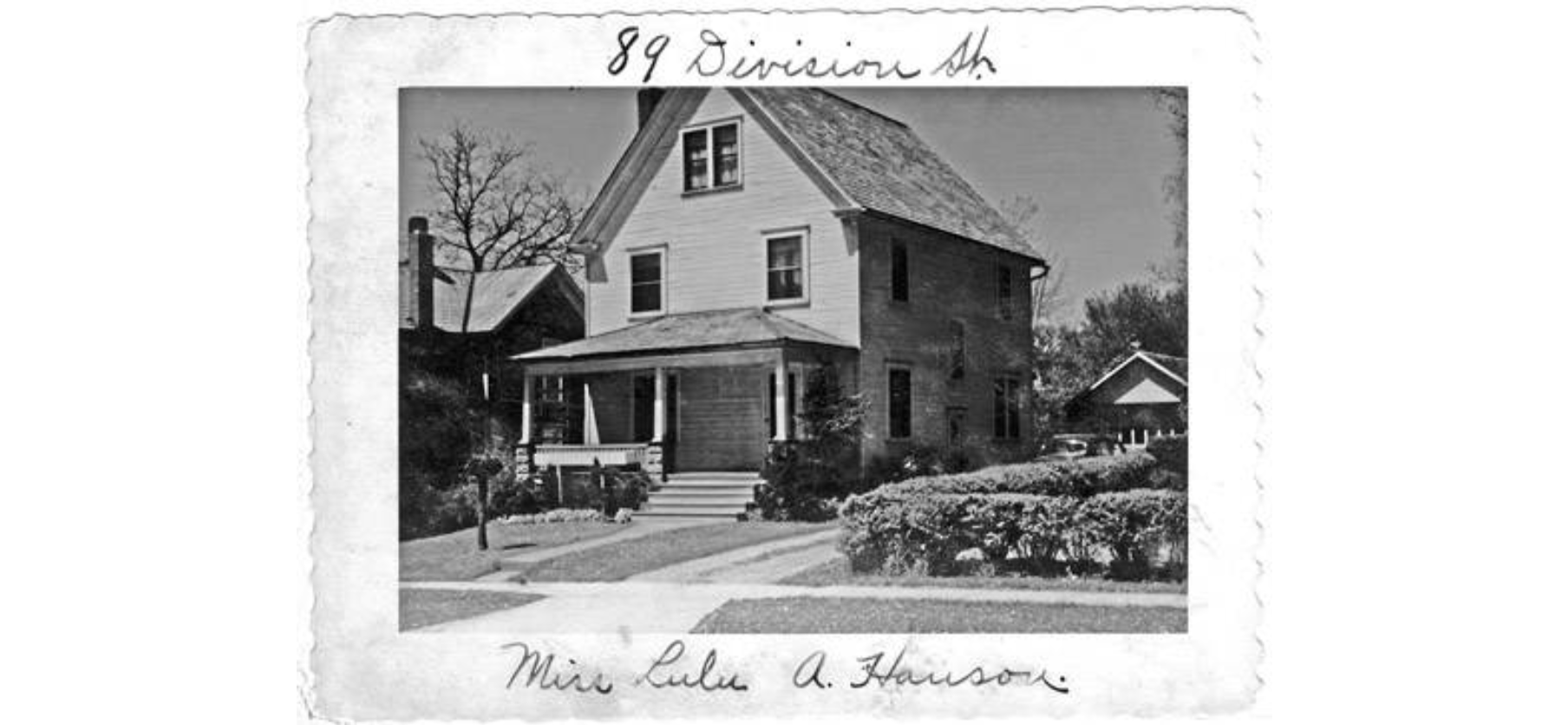 | This circa 1890s home sports double windows in the front gable and a central chimney. It was long known as the Hanson home for the multiple generations of the family who inhabited it. Hewson Hanson (1896-1979) owned and operated Hudson Hardware and Home Grocery for more than 20 years. | Summit Memory | |
| 31 East Case Drive Nelson Case House | View House Report | Nelson Case was a descendant of Chauncey Case, a pioneer from Connecticut, who had close ties to the Barlow Family and John Brown, a confidant of Nelsons uncle, Lora Case. Nelson was a farmer and during the time he owned the property, many prominent Case family members lived there. Son, Henry Case, was instrumental in the first telephone company in Hudson along with Weldon Wood and James Ellsworth. Grandson Weldon Case served as the President of the Western Reserve Telephone Company. Grandson, Baxter Case, served as the President of the Elyria Telephone Company. Grandson, Theodore Case, served as President of the Ashtabula Telephone Company. | Hudson Heritage Association |
| 1 East Main Street Old Church on the Green | View House Report | During 1890 a building once located on then Railroad Street (now Maple Avenue) was moved to the corner of East Main and Streetsboro Streets. It was then modified to become this Greek Revival structure and served as St. Mary's parish church for the many Catholics in town. Since 2009, it no longer serves as a house of worship but rather, a children's day care and community center. | Hudson Heritage Association Summit Memory |
| 3 East Main Street St. Mary's Catholic Church 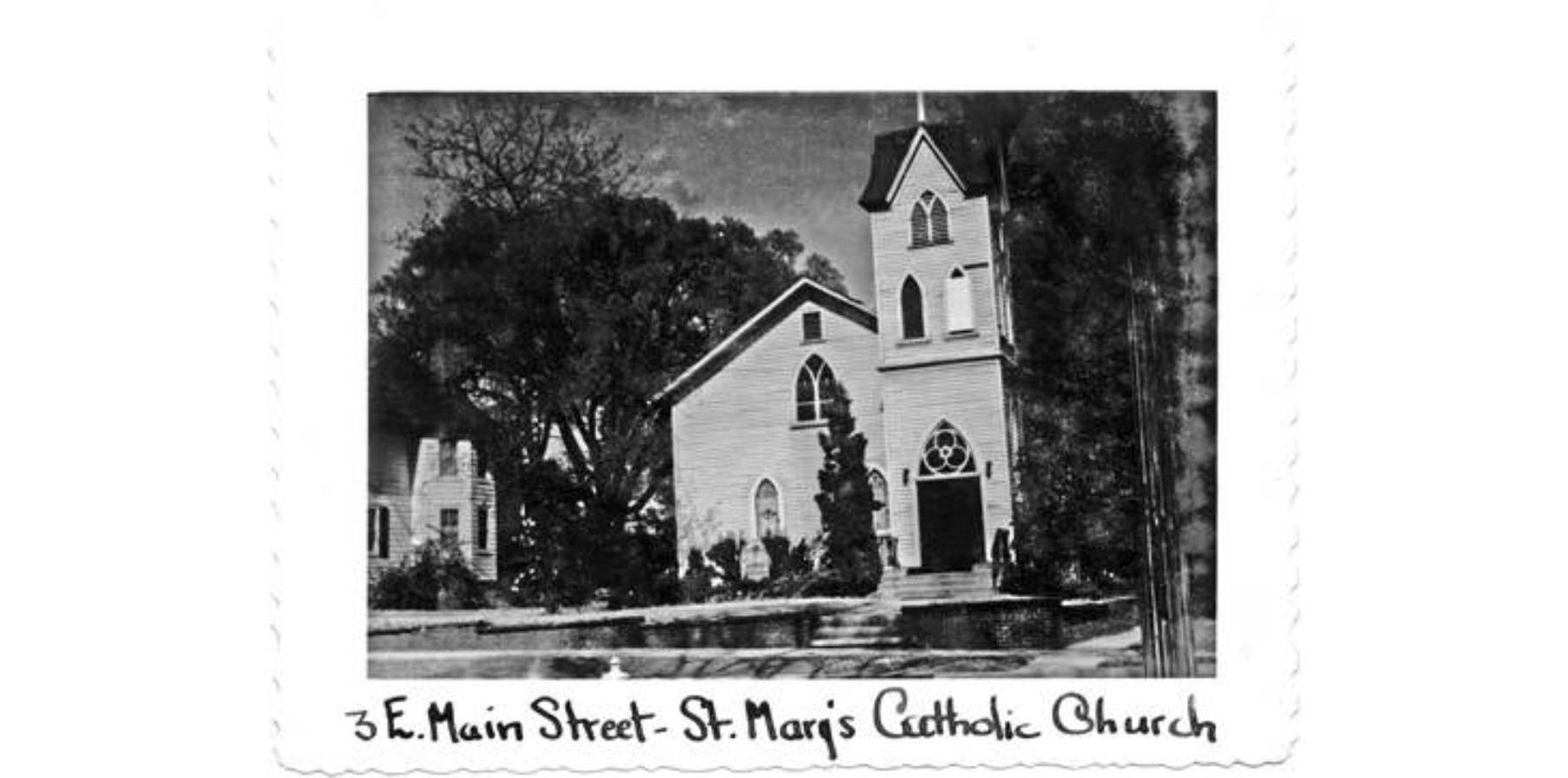 | During 1890 a building once located on then Railroad Street (now Maple Avenue) was moved to the corner of East Main and Streetsboro Streets. It was then modified to become this Greek Revival structure and served as St. Mary's parish church for the many Catholics in town. Currently in 2009, it no longer serves as a house of worship but rather, a children's day care and community center. St. Mary's Church, now located on North Main Street is celebrating 150 years in Hudson this year. | Summit Memory | |
| 7 East Main Street Captain Heman Oviatt House 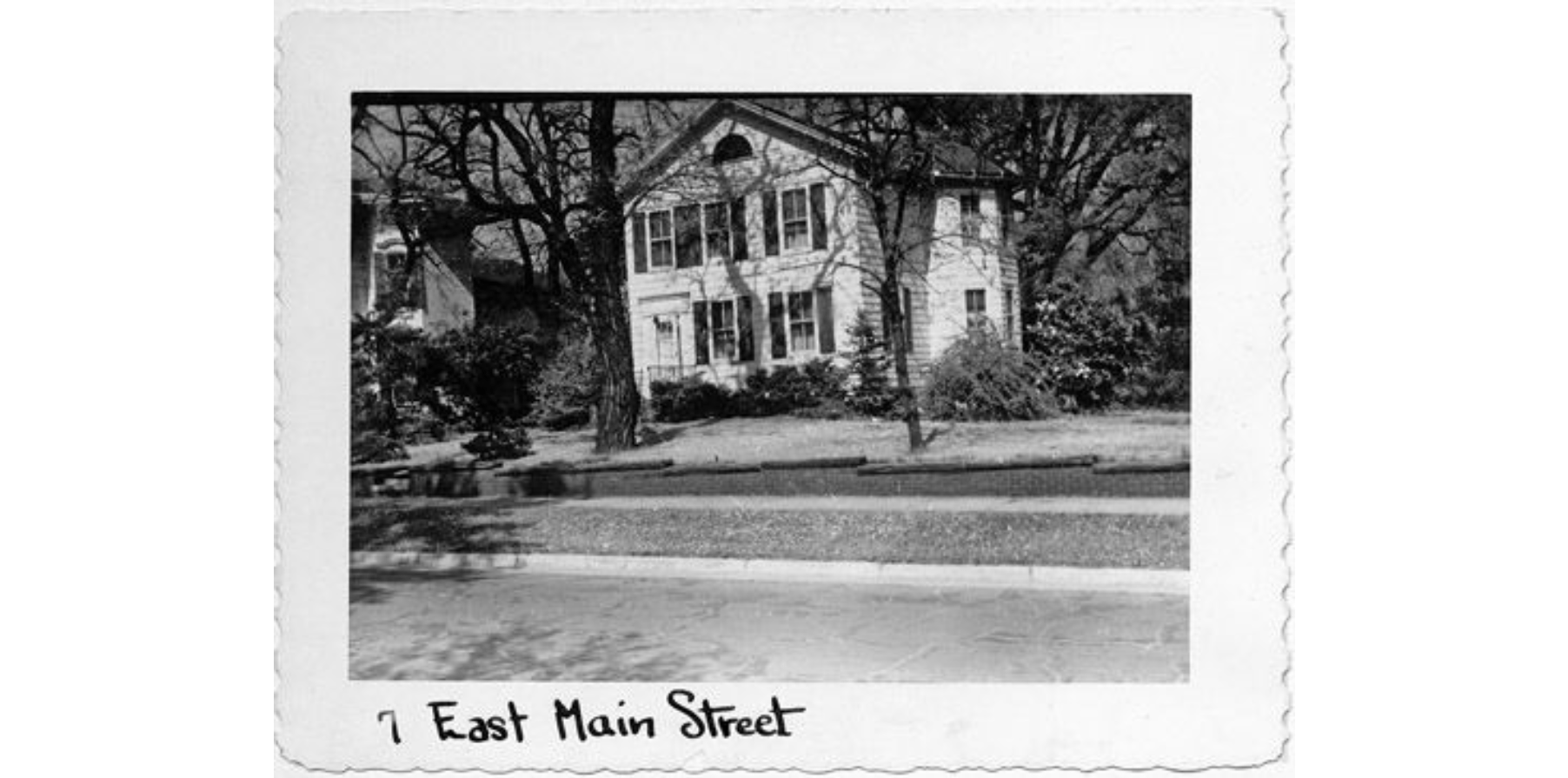 | View House Report | This home with Federal and Greek elements was built in 1825 for Captain Heman Oviatt (1775-1854), a Hudson pioneer and well-known citizen. Oviatt operated the first store in the territory and also was elected Hudson's first mayor in 1837. Oviatt also helped found Western Reserve College and the Congregational Church. The home was also at one time owned by Rev. Mason Grosvenor (1801-1886), pastor of the Congregational Church. In 1888 St. Mary Church purchased the home and converted it into a rectory. The home is again a private residence today. | Hudson Heritage Association Summit Memory |
| 13 East Main Street Sebastian Miller House 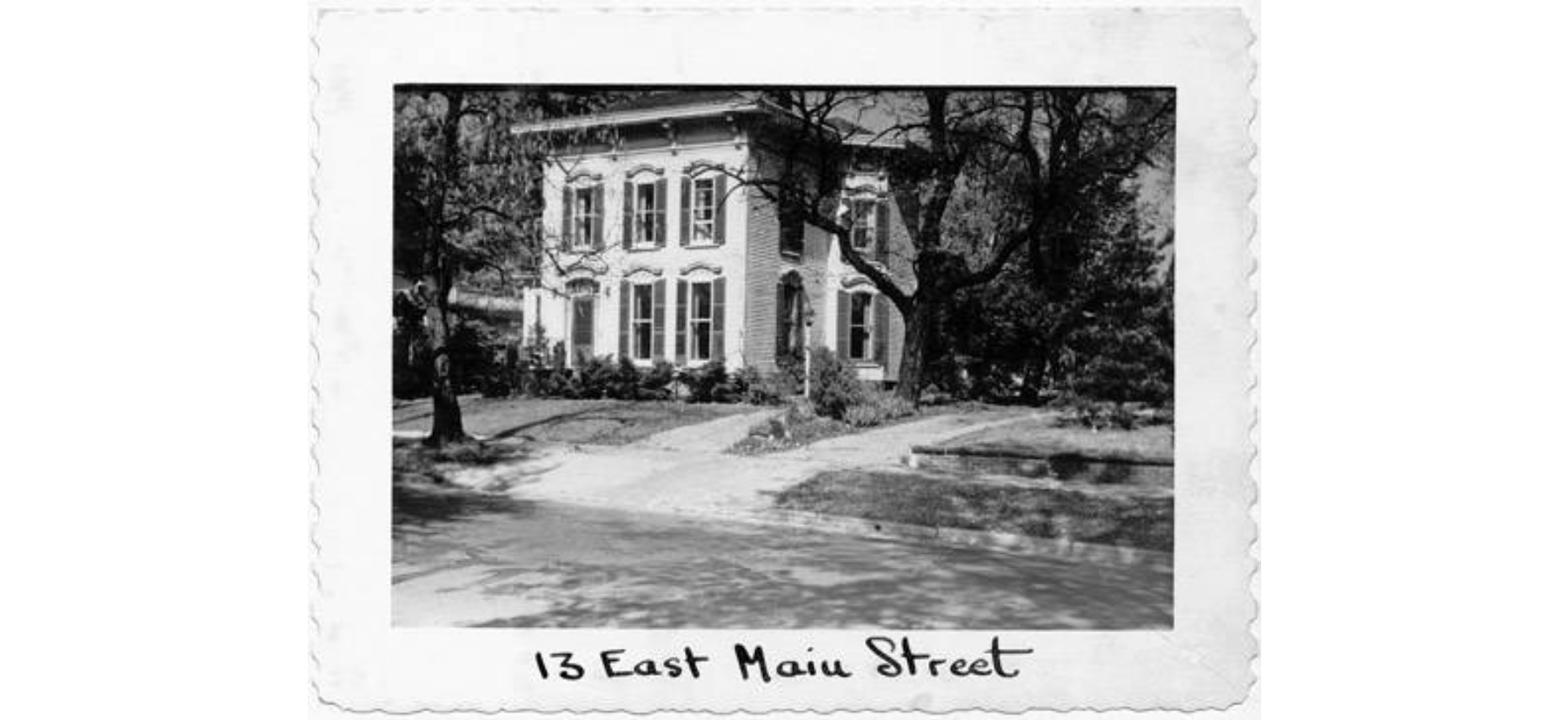 | View House Report | This 1877 home was built by prosperous shoe merchant Sebastian Miller (1845-1895), one of the three Miller brothers in Hudson. In 1911 the residents listed were 8 hens and 22 chicks, who were found when the new owner came to inspect the property. Later owner Laura Post (1909-1999), descendant of one of Hudson's early families, sold this residence to the James Johnson (1921-1977) family, who owned the funeral home next door at 19 East Main Street. Johnson was a native son, active in the Legion and Hudson Masonic Lodge. The property transferred to Alice M. Johnson (1919-2005), author of a business history of Hudson, Ohio entitled "Musical Chairs on Main Street." | Hudson Heritage Association Summit Memory |
| 19 East Main Street Town-Neibel House 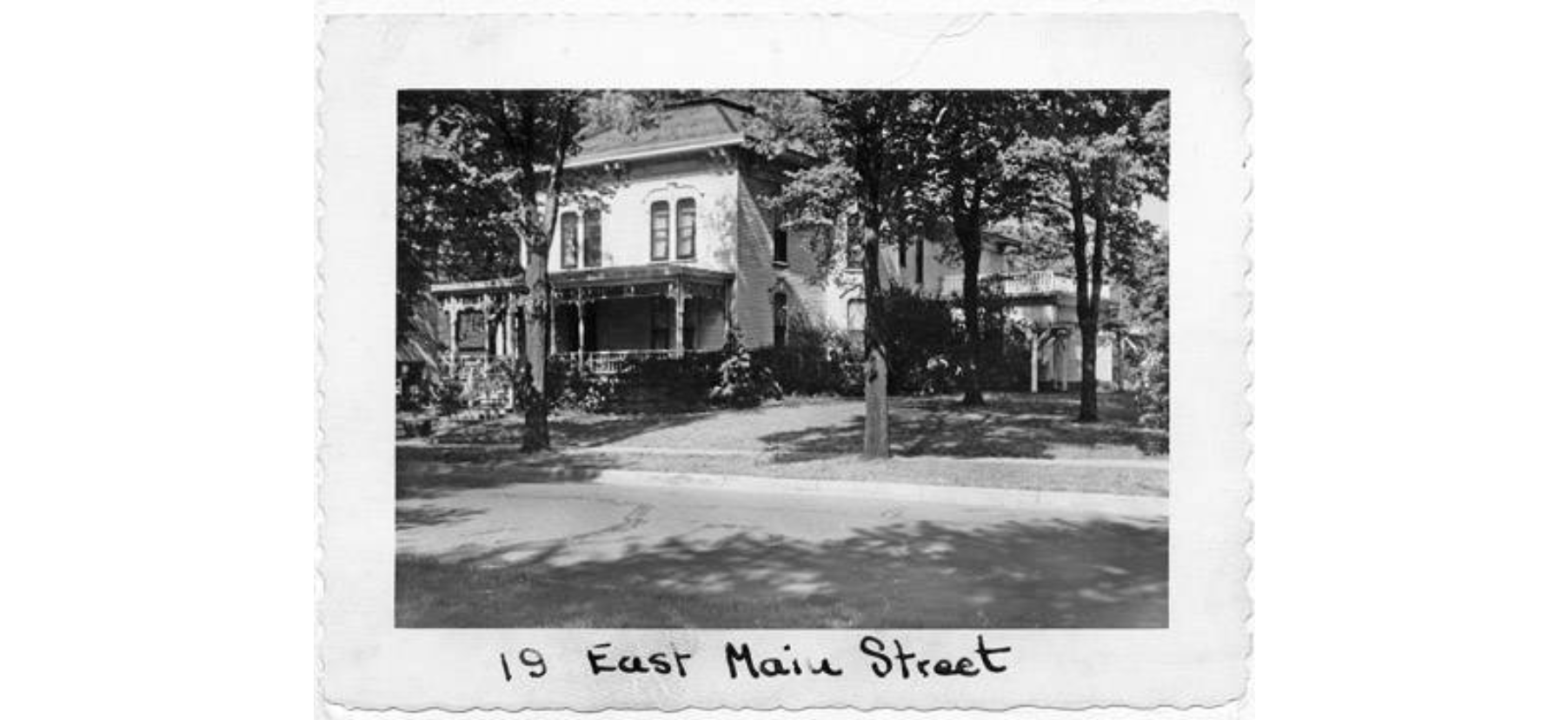 | View House Report | The Town-Neibel House was built in 1836 by Leander Starr (1804-1885) for Dr. Israel Town (1791-1853), one of Hudson's earliest physicians. The home was originally built in a Greek Revival style, but was extensively remodeled as a Victorian by Jacob Neibel (1853-1903) in the late 1800s. Neibel's remodel also included the removal of two wings on either side. One wing is now a smaller house at 25 Streetsboro St. and the other wing may be part of the home at 30 Church St. or 26 Streetsboro St. Around 1930, Donald B. Johnson (1889-1954) purchased the home and opened a funeral parlor in the space. The Johnson-Romito Funeral Home still operates in the Town-Neibel house today. | Hudson Heritage Association Summit Memory |
27 East Main Street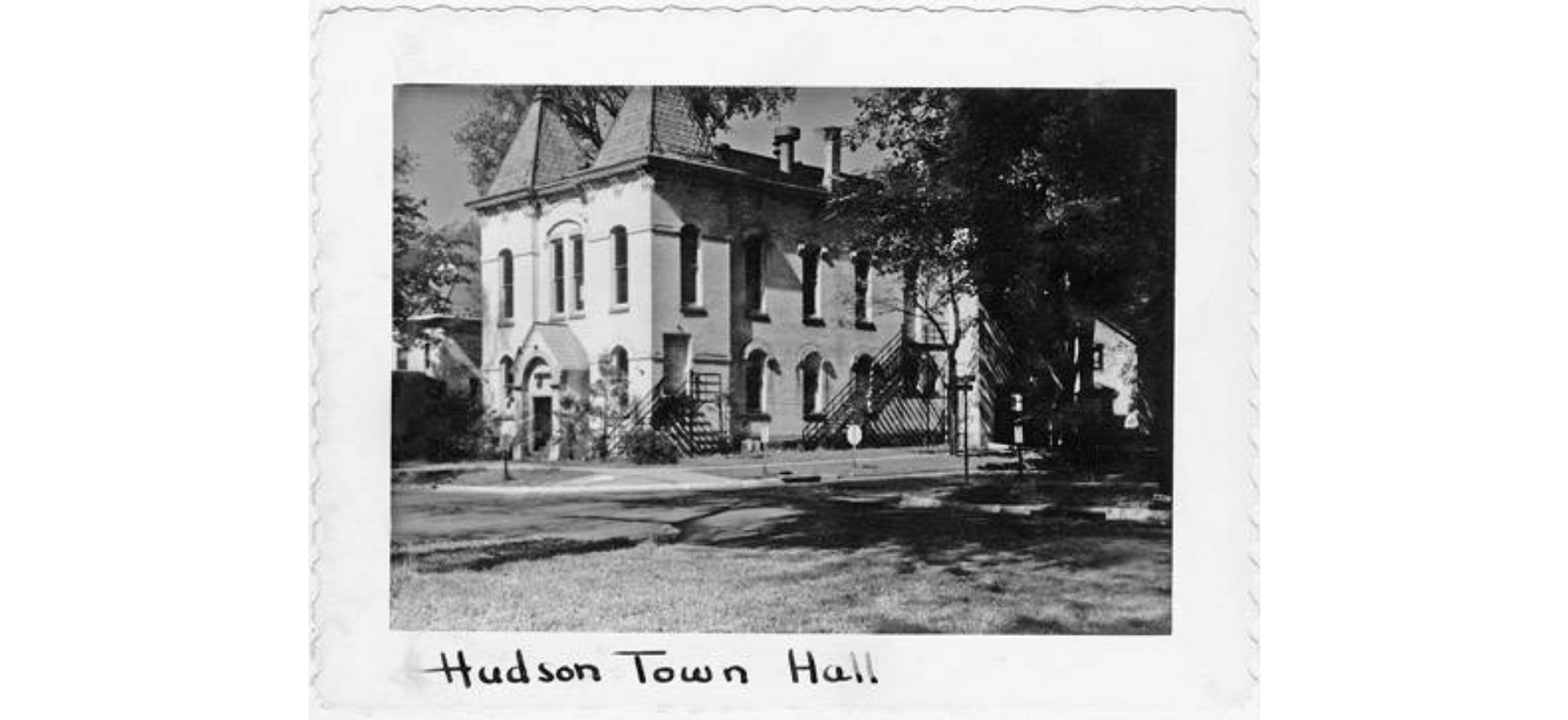 | The year 1879 was memorable: Hudson got a new town hall and the measles! One diary author reported that "half the town" was ill. Contractors Thomas Crisp (1825-1887) and Charles Stewart () built this Italianate structure on the former site of Hudsons First Congregational Church. In 1970 James Johnson, owner of the neighboring Johnson Funeral Home, enlisted an Akron marble and granite company to sandblast "Hudson Town Hall" into the archway. The Town Hall was once home to the fire department and the Hudson Players, a local theater company. The Hudson Players conducted many performances on the second floor. The hall underwent major renovations in the 1970s, including the removal of the stage and seating and the fire truck door. | Summit Memory | |
| 33 East Main Street Town-Shields House 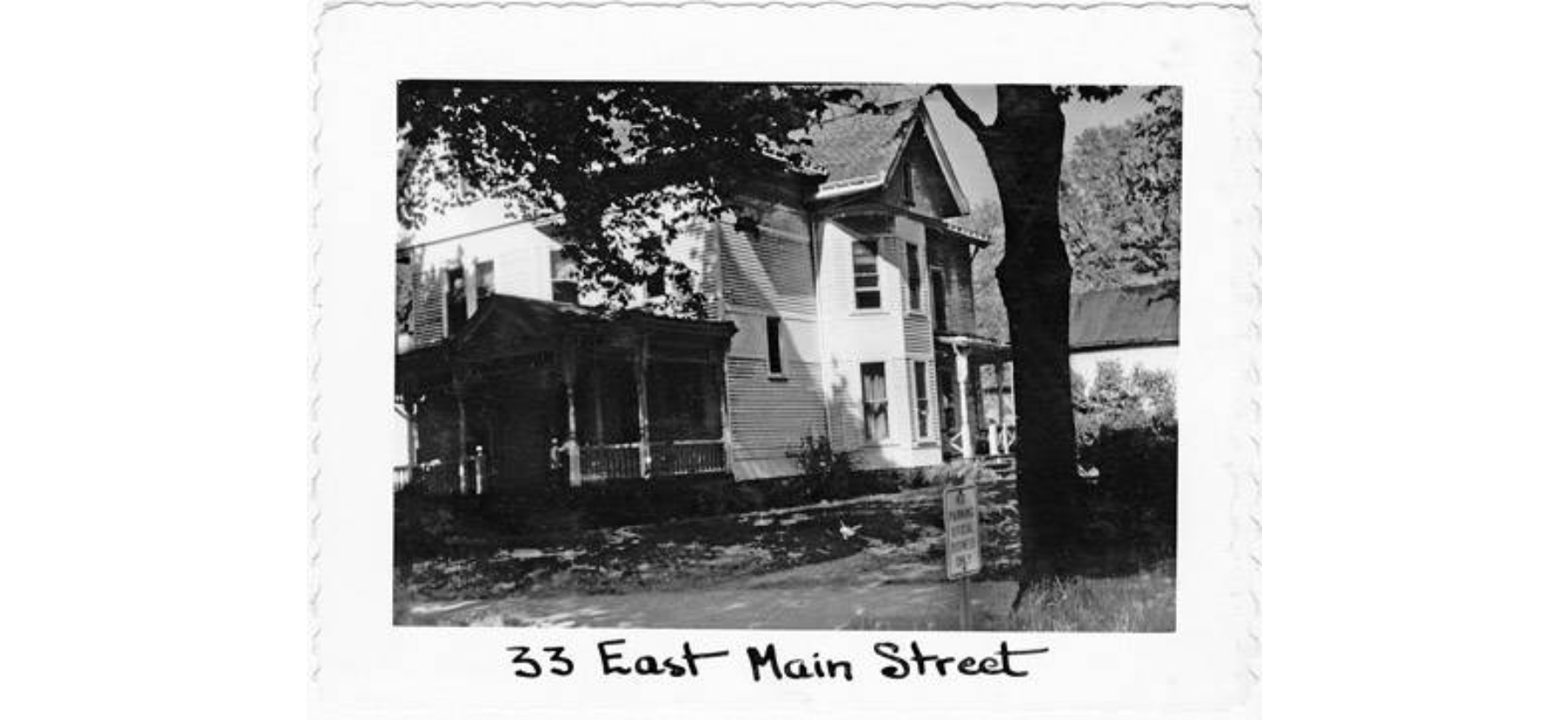 | View House Report | The Town-Shields house has a dualistic history. First it was built as a Greek Revival by Dr. Isreal Town (1791-1853) for his wife Lucy White Town (1796-1867) in 1824. Lucy's sister, Sally White Brewster(1812-1889) was married to Anson Brewster(1807-1864) in this house in 1832. Then in 1891 during the Shields family period, the Queen Anne emerges and a new house front is added with a Stick style (vertical, horizontal and diagonal exterior wall surfaces). The Shileds family son James (1864-1903) was killed by an unusual lightning strike. The house was home to three Hudson, Ohio former Mayors-Heman Oviatt (1775-1854), Isreal Town (1791-1859) and Harvey Whedon (1812-1855). | Hudson Heritage Association Summit Memory |
| 35 East Main Stret A.W. Lockhart House 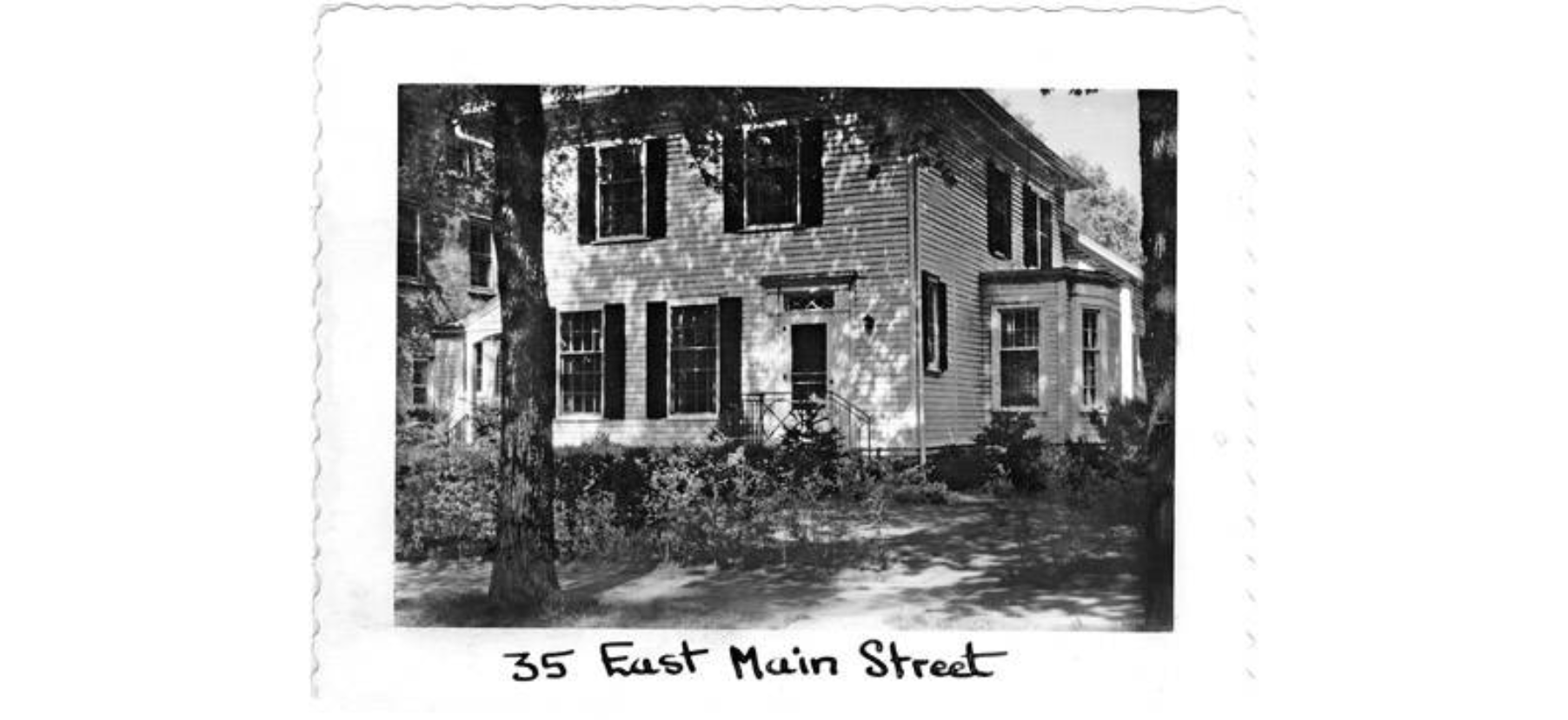 | View House Report | A.W. (Abraham Wilbeck) Lockhart (1845-1920), proprietor of Hudson Bakery, moved the first house sitting on this property (now 30 Division) in 1889 and built a Victorian-style home on the old foundation. The home was greatly modified in the 1930s with the addition of many Federal elements. Lockhart later owned a saloon on Main Street, which was destroyed in the great fire of 1892. Rumors at the time circulated that Lockhart caused the fire. | Hudson Heritage Association Summit Memory |
| 41 East Main Street Ellsworth Store 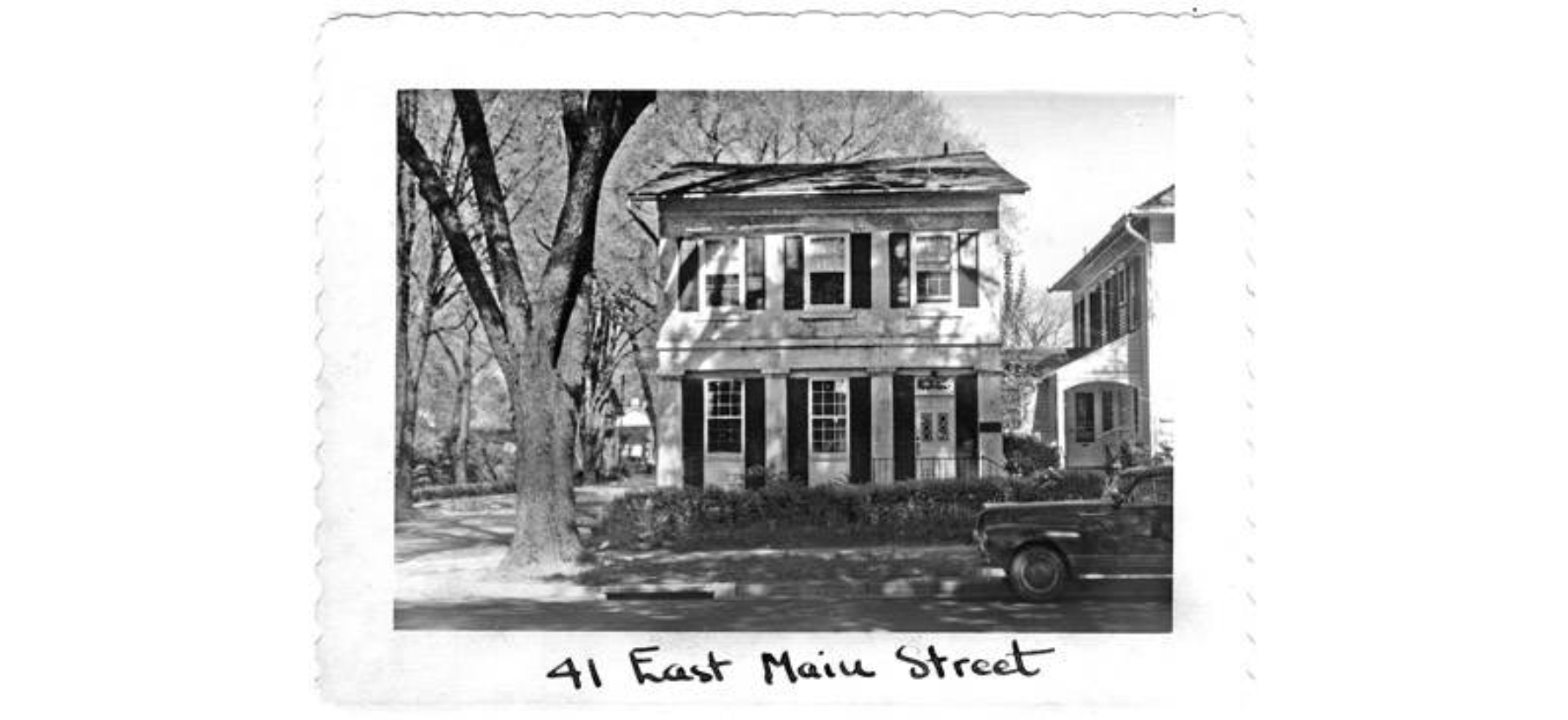 | View House Report | The building at the corner of East Main and Division streets was built in 1841 by Leander Starr (1804-1885) for Edgar Birge Ellsworth (1815-1883), who operated a commission merchant business. Edgar was the father of influential Hudson resident James Ellsworth (1849-1925) and served as mayor of Hudson from 1853 to 1855. Edgar often has been photographed in a wheelchair because he lost his leg to an infection. Many different kinds of businesses have occupied the building through the years, including a meat market, a bakery, an antique shop and a dentist's office. The Hudson Masonic Lodge #51, several local newspapers' offices and a photography studio have at one time or another, all occupied the upper floor of this building. | Hudson Heritage Association Summit Memory |
| 49 East Main Street Baldwin Babcock House 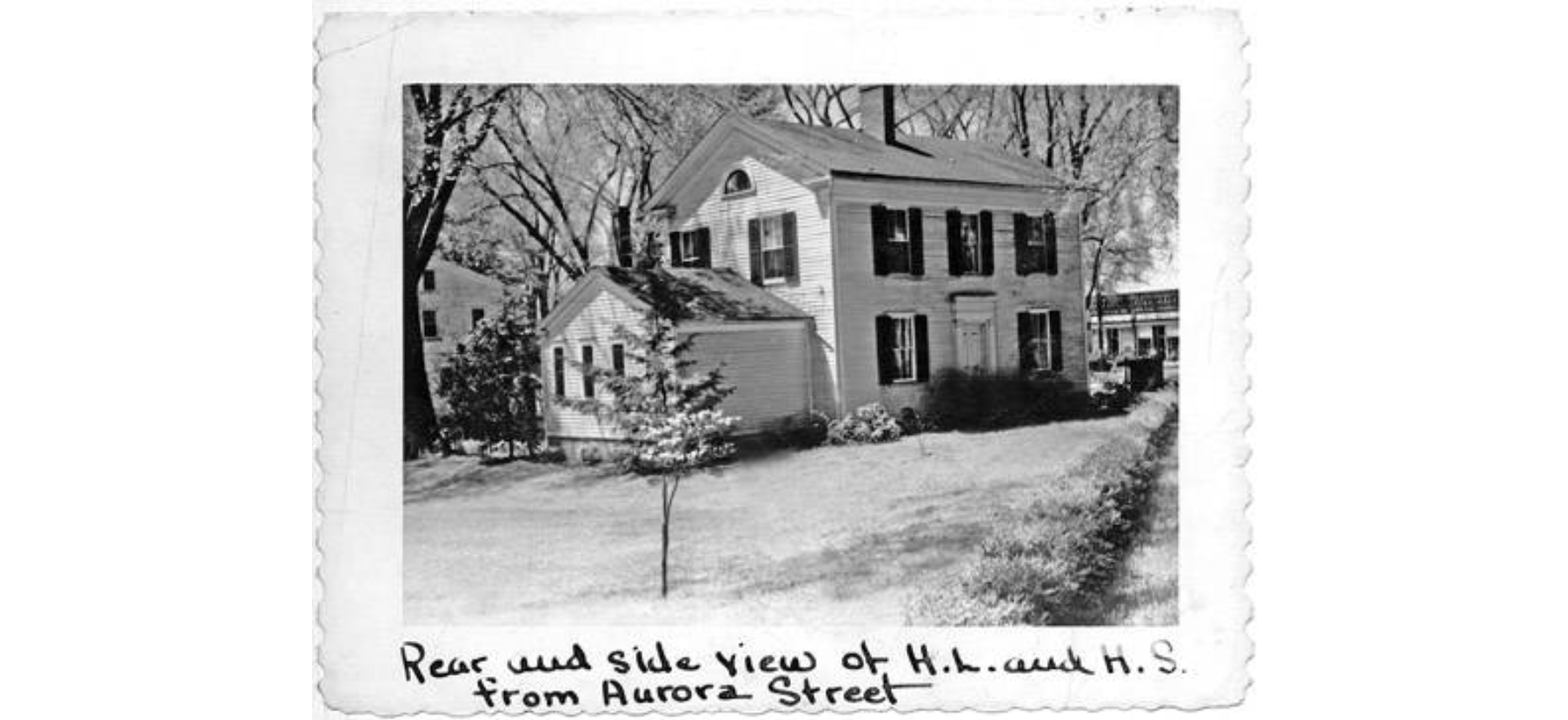 | View House Report | This building used to house the Hudson Library & Historical Society. The home is now owned by the Burton D. Morgan Foundation, a charitable organization founded by entrepreneur and benefactor Burton D. Morgan (1916-2003). In winter 2008, the Burton D. Morgan Center for Entrepreneurship Research opened in the present Hudson Library & Historical Society building. The Center's mission is to be a premier public resource for the advancement of entrepreneurial learning. Services offered include regular workshops and lectures, an entrepreneurial business research collection, and business mentoring opportunities. | Hudson Heritage Association Summit Memory |
112 Elm Street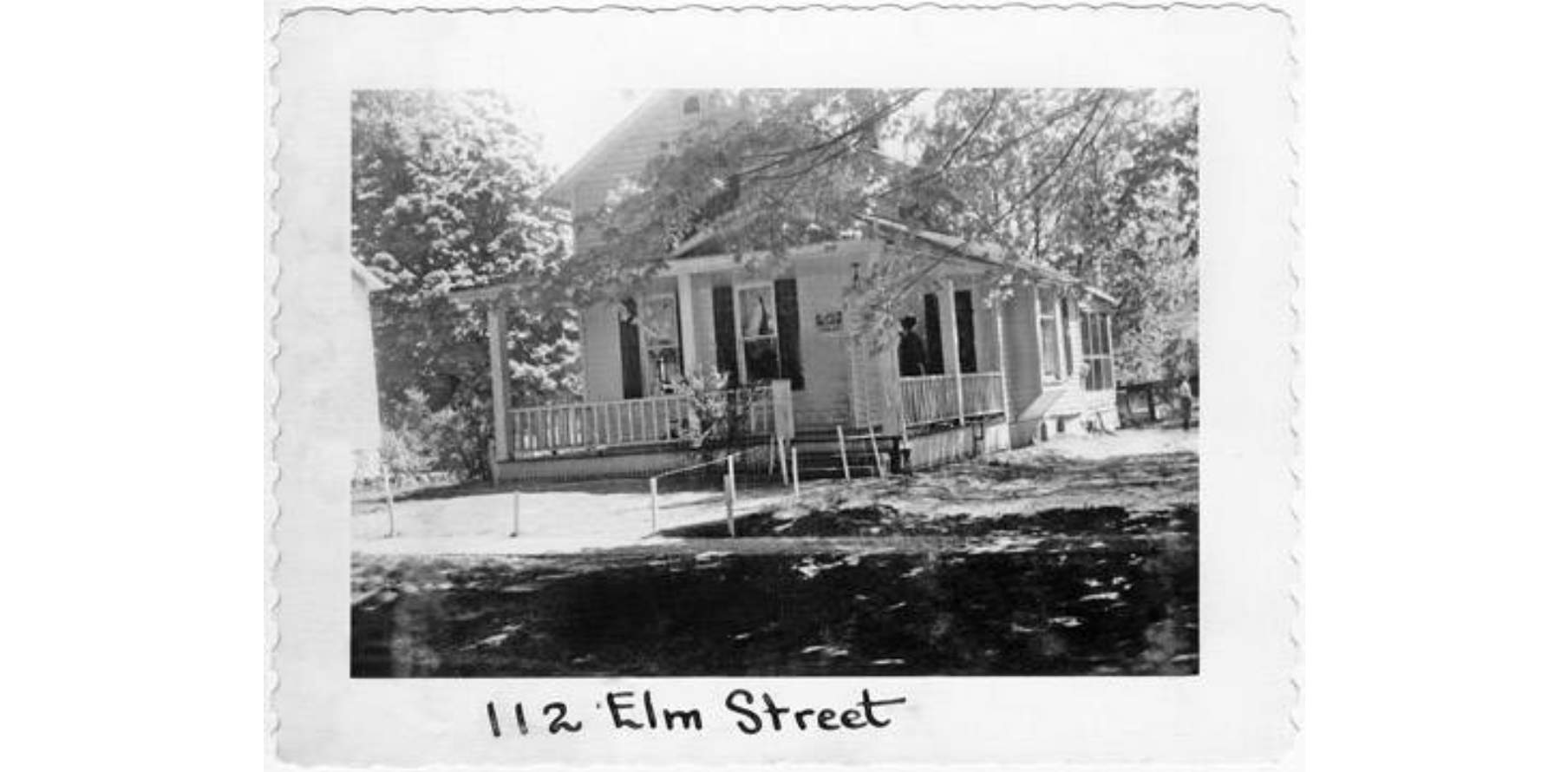 | Although little research has been completed, it is estimated this is a turn of the century home. Alvin Boose(1892-1966) and family once called this home. Boose was a Studabaker salesman. | Summit Memory | |
118 Elm Street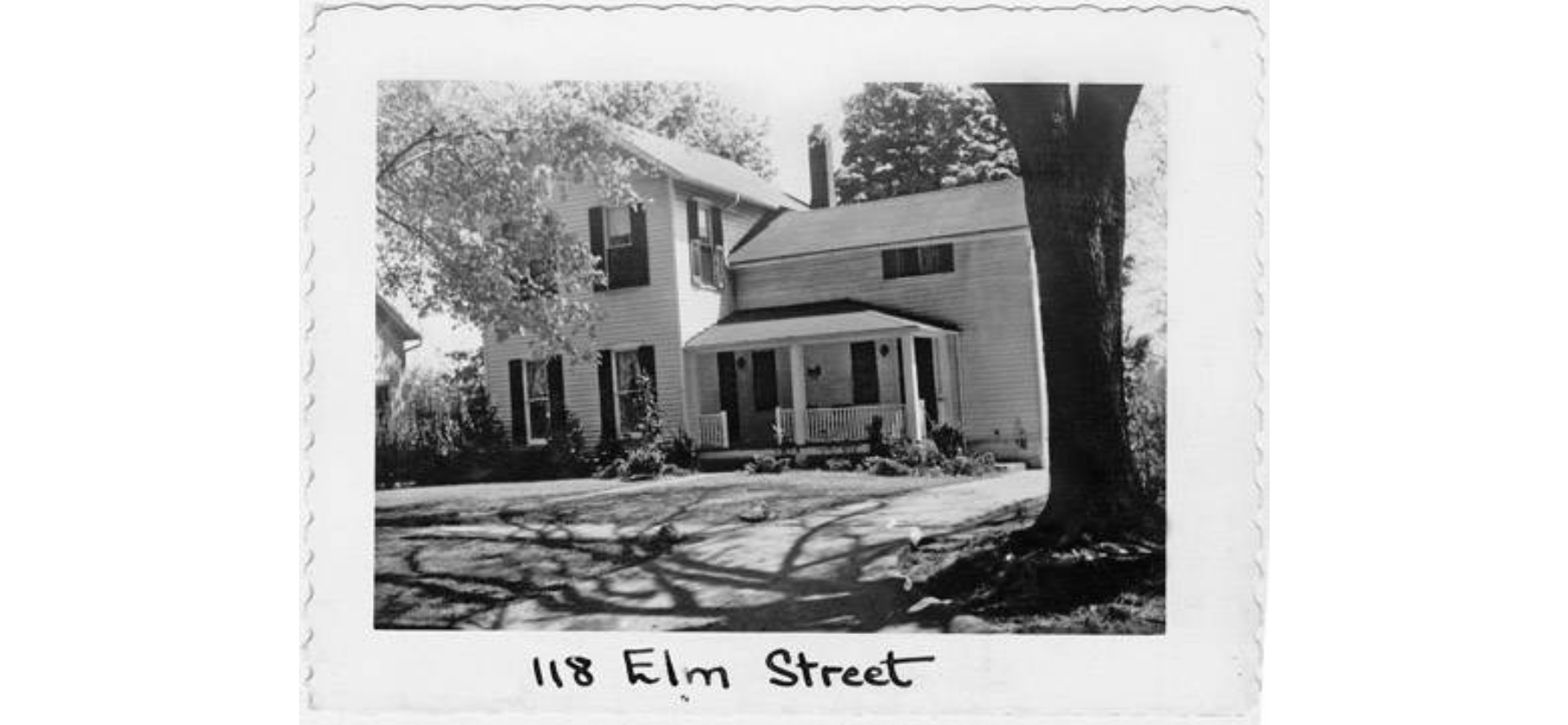 | Once home to the manager of the Cleveland office of Newsweek magazine, Richard "Dick" Rogers (1902-1979), this interesting two-story home needs further research. | Summit Memory | |
119 Elm Street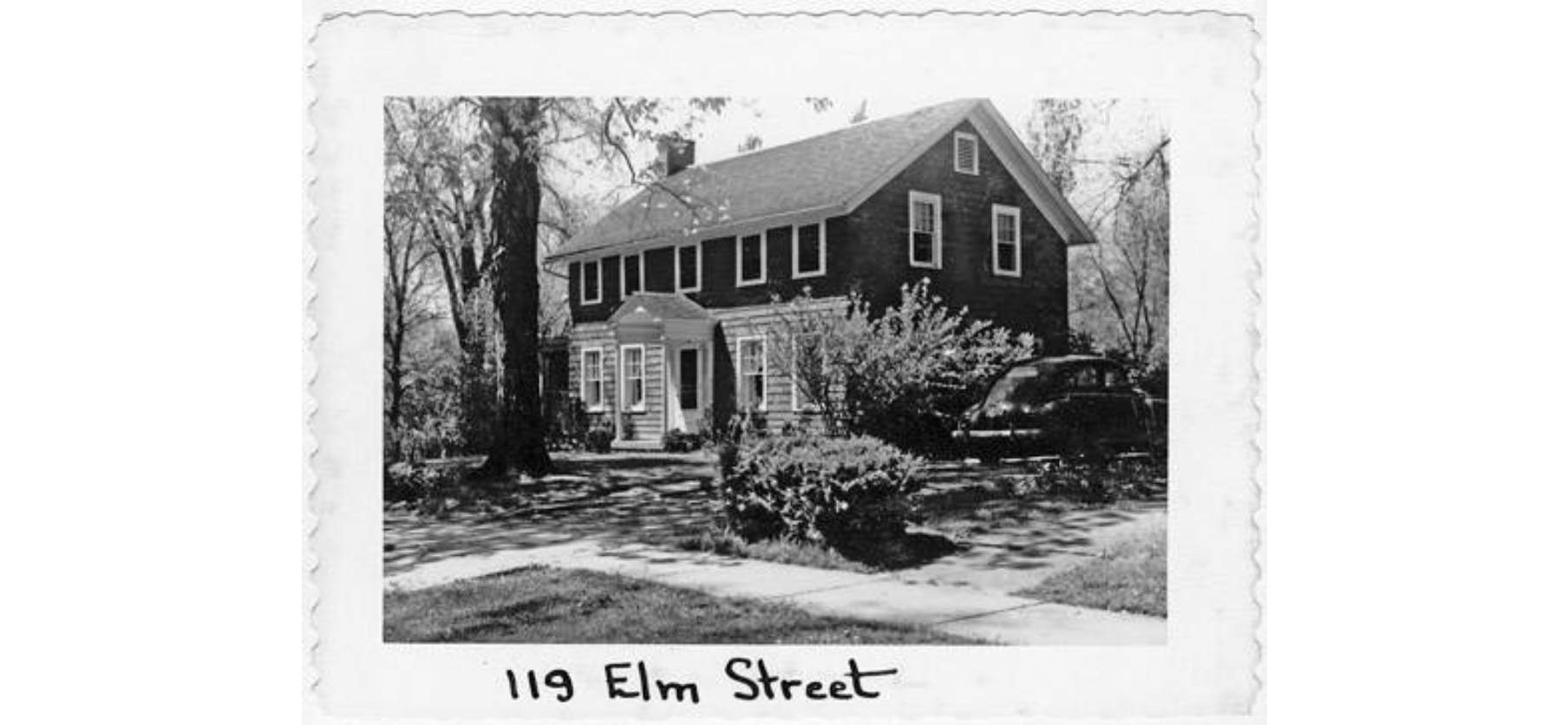 | This 1930s home was the former home of Milford N. Dickman (1908-1990). Dickman was a past master of the Hudson Masonic Lodge #510 and once worked for Ernst & Ernst and Chick Master, a large-capacity chick incubator manufacturing company. | Summit Memory | |
120 Elm Street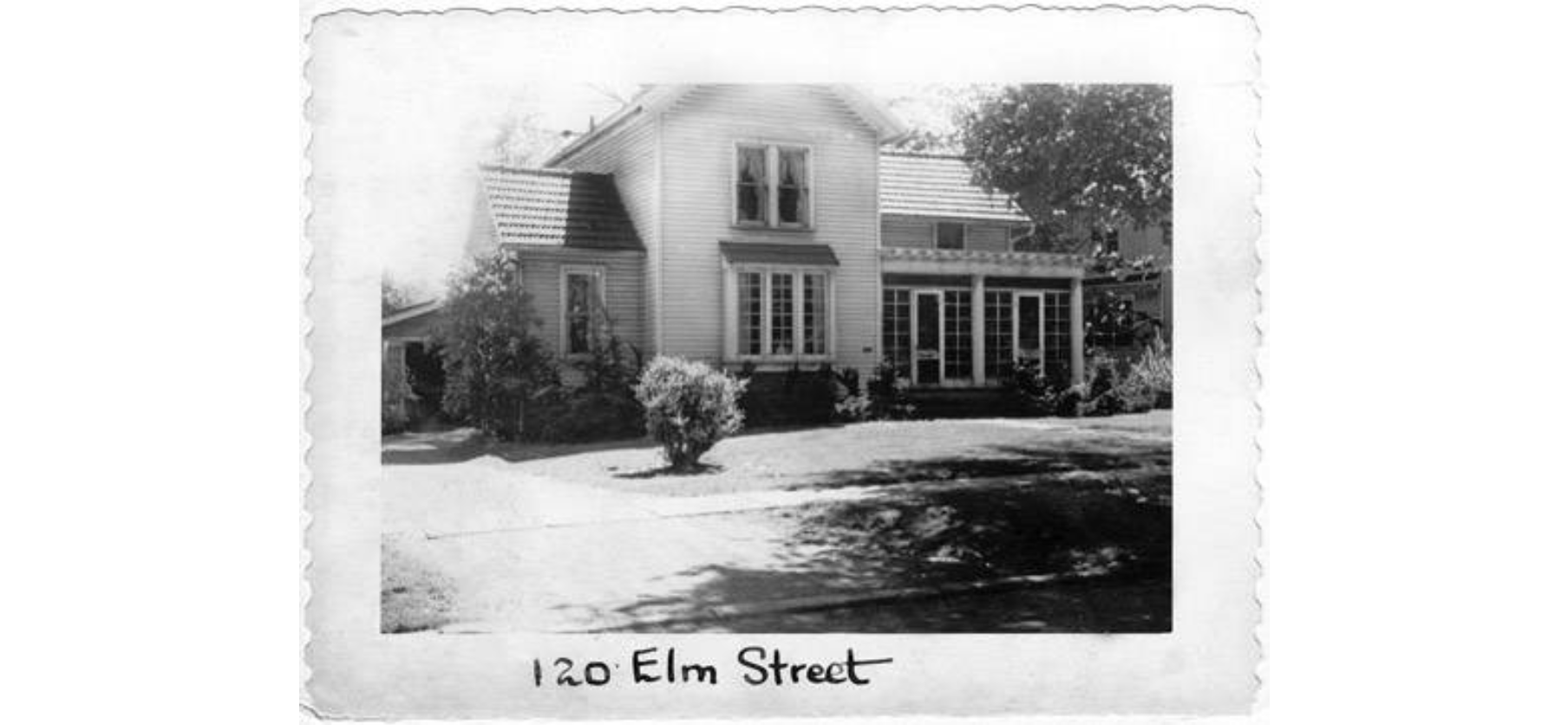 | This one and a half story house with a glassed in porch was built circa 1893. For many years it was known as the Hanson Place. The Hanson family migrated from Lincolnshire, England during the 1850's and settled in Hudson, Ohio with their cousins, the Hurns. Edward Hanson (1796-1891) worked as a laborer, and later carriage maker, as did his sons. His daughter, Charlotte Hanson Ruger (1834-1918) married a Prussian immigrant and noted Civil War era mapmaker, Albert Ruger (1829-1899). A great grandson of Edward's, Hewson Hanson (1896-1979) would live in this house for many years and operate a business on main street. Like the Hudson and Brown families, the Hanson family has had members reside in Hudson, Ohio for well over 150 years. | Summit Memory | |
| 121 Elm Street Schuyler Chamberlin House 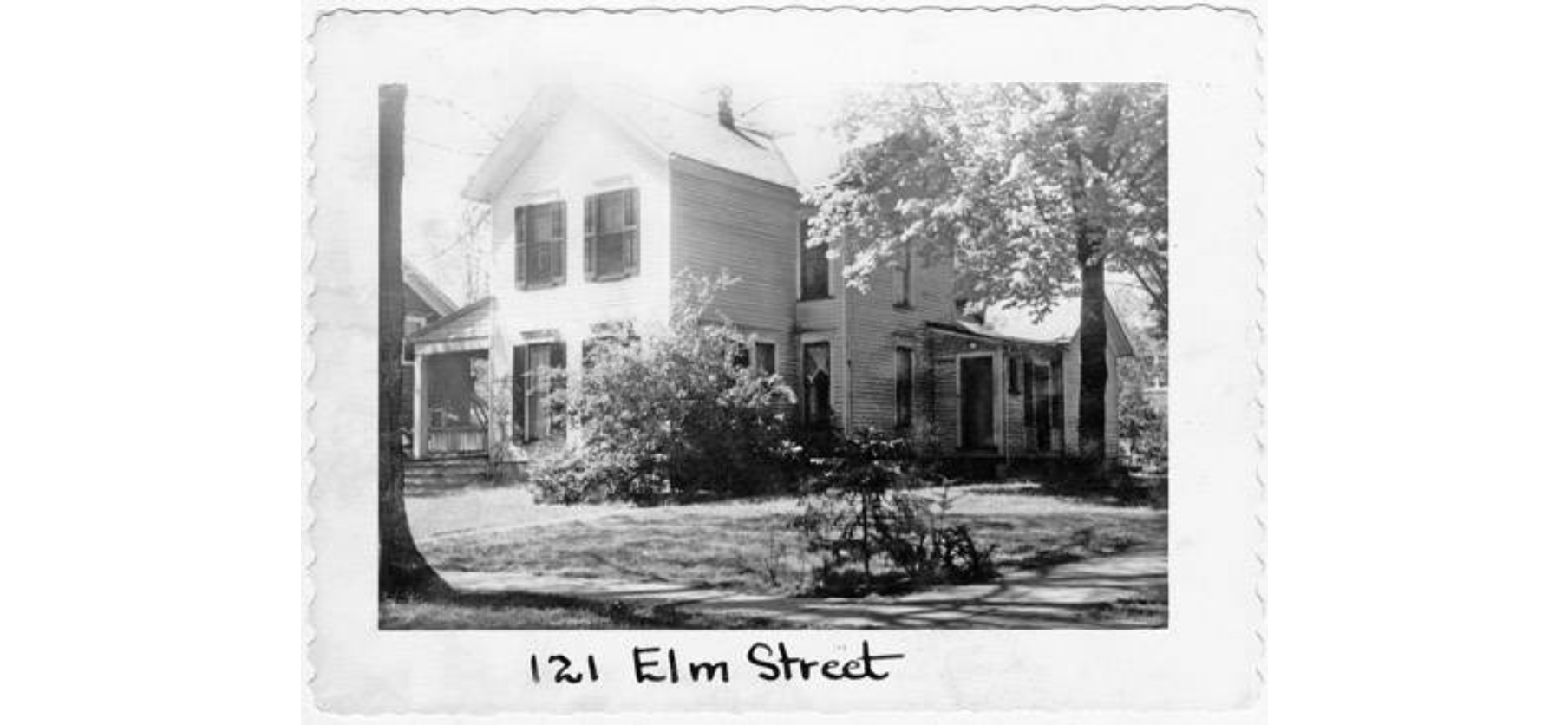 | View House Report | In 1889, Schuyler Chamberlain (1821-1900), grandson of Hudson pioneer farmer and Revolutionary War soldier William Chamberlain (1754-1843), built this home, the first in an 11-acre tract of land forevermore to be known as Chamberlains Addition. Schulyer and wife Jane Bliss Chamberlain (1822-1902) epitomized those who lived through the economic panics of the 1830s: They abandoned their farming roots, moved into town in the 1850s and gambled their money to buy and sell real estate lots in town. Chamberlain believed there would be coming economic prosperity delivered by the railroads. Incidentally Schulyers father, Amos Chamberlain (1793-1861), was a friend to abolitionist John Brown (1800-1859) and it is highly likely that Schulyer would have known Brown. | Hudson Heritage Association Summit Memory |
126 Elm Street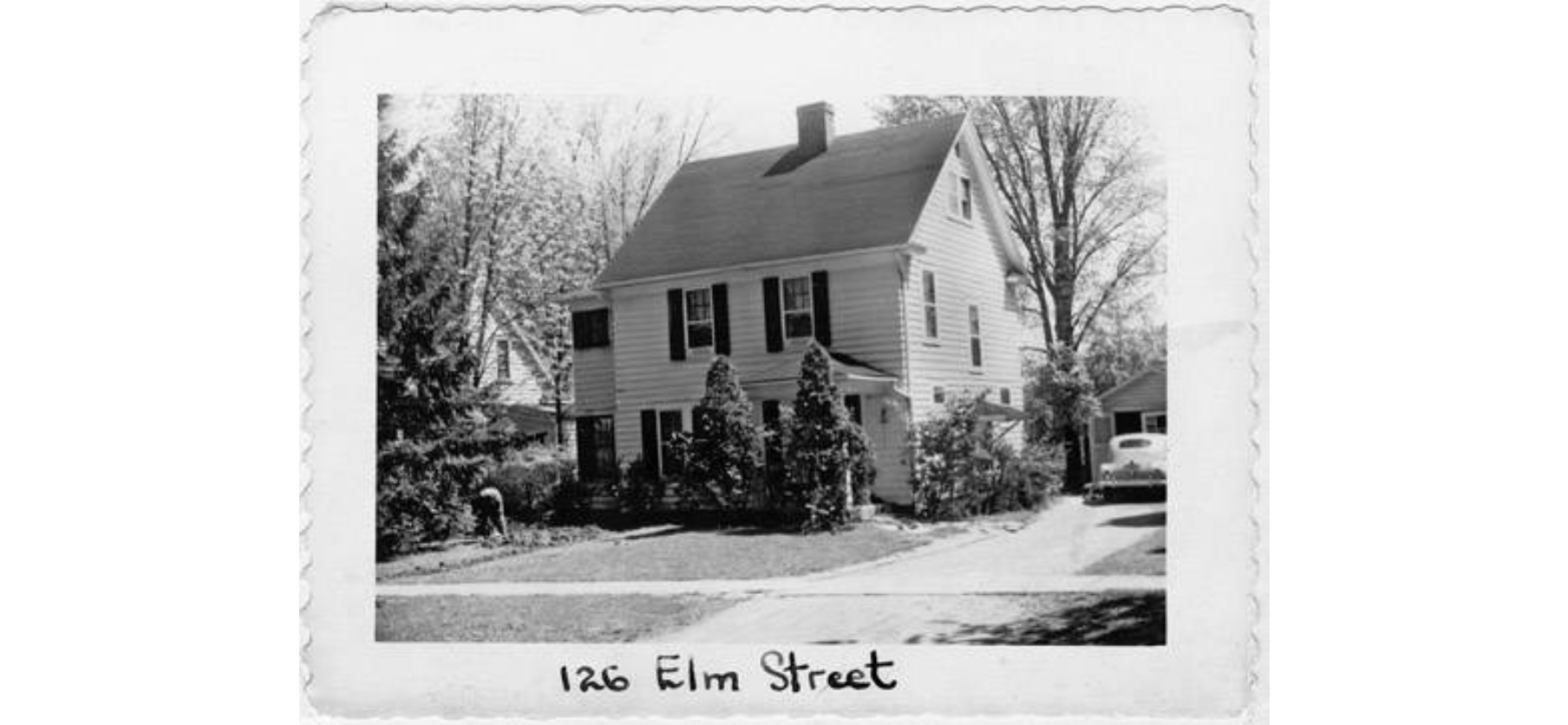 | This 20th-century two-story home was known as a foursquare for its simple box shape and traditional four-room floor plan. Rev. Dilworth Lupton (1883-1972), who was the pastor at the First Unitarian Church of Cleveland, once lived here. Lupton was an early advocate of Alcoholics Anonymous and was personally acquainted with the group's founders. Lupton authored some of the early Alcoholics Anonymous literature. | Summit Memory | |
129 Elm Street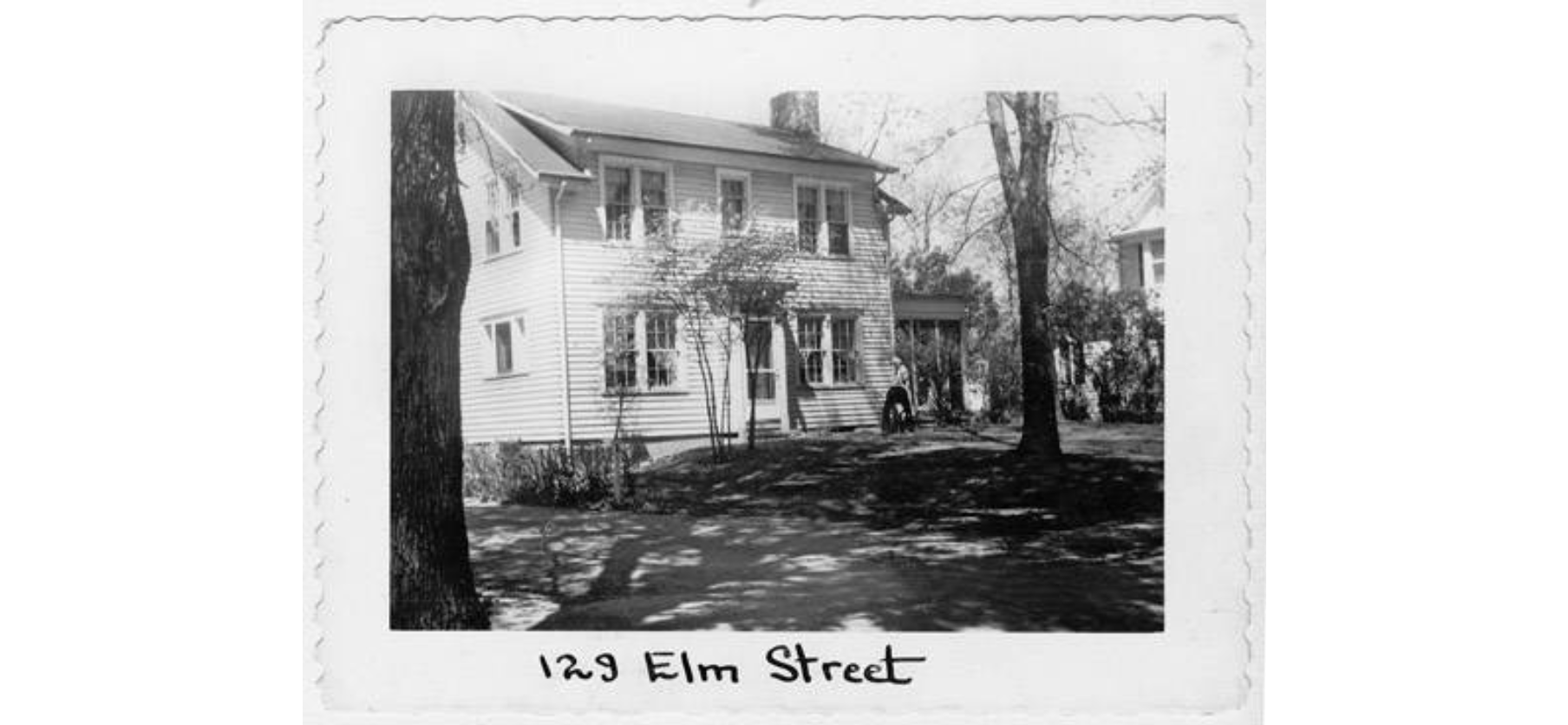 | This colonial home built in the early years of the 1900s was where one found out "there ain't no such thing as a free lunch." Onetime owner and respected journalist who raised a family in this home, Walter Morrow (1894-1948) is credited with coining that phrase. He served as editor for the Akron Times Press and several other newspapers. He even wrote for Time Magazine. | Summit Memory | |
130 Elm Street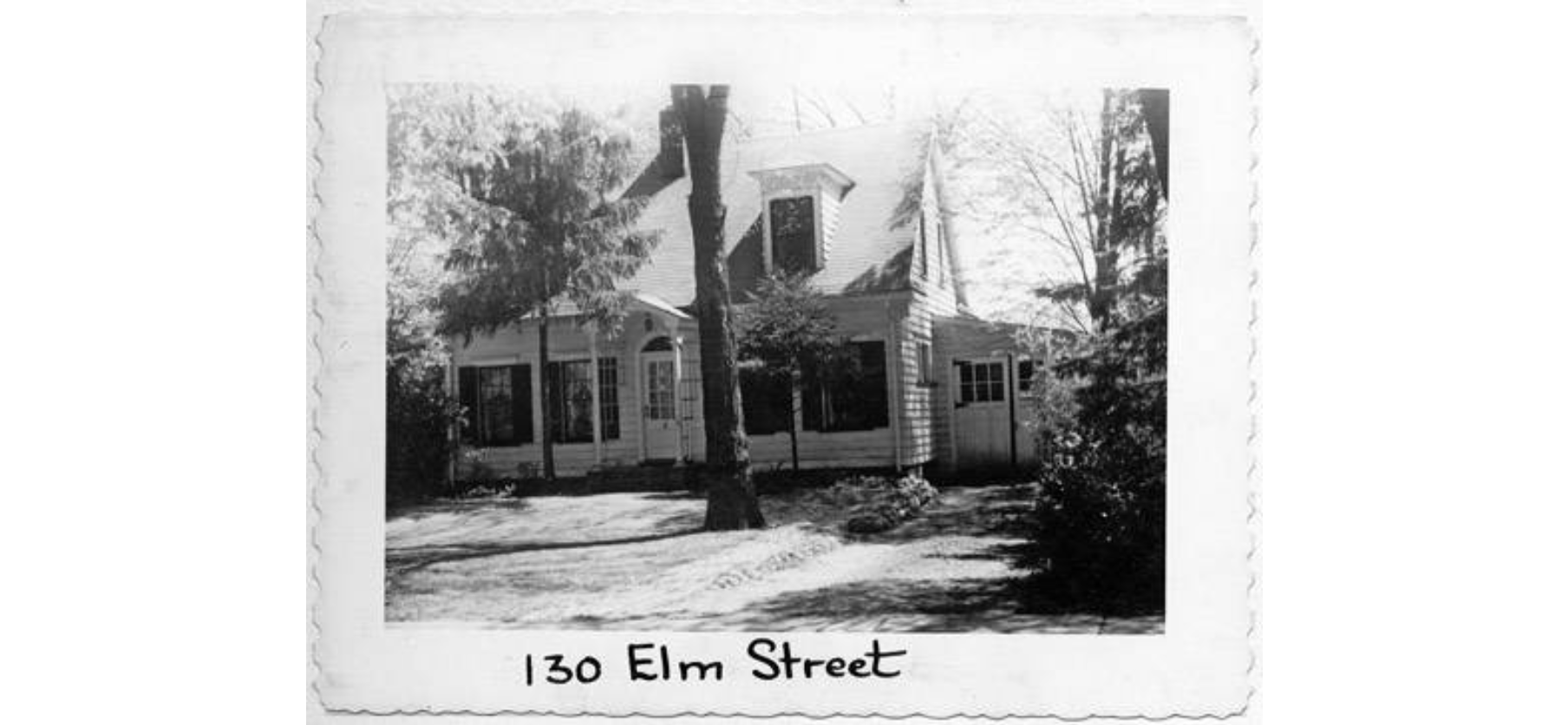 | This circa 1924 Cape Cod was once home to New York City Railroad engineer Charles Kehrhan (1889-1960). Kehrhan's wife enjoyed holding regular card games at this home. | Summit Memory | |
135 Elm Streeet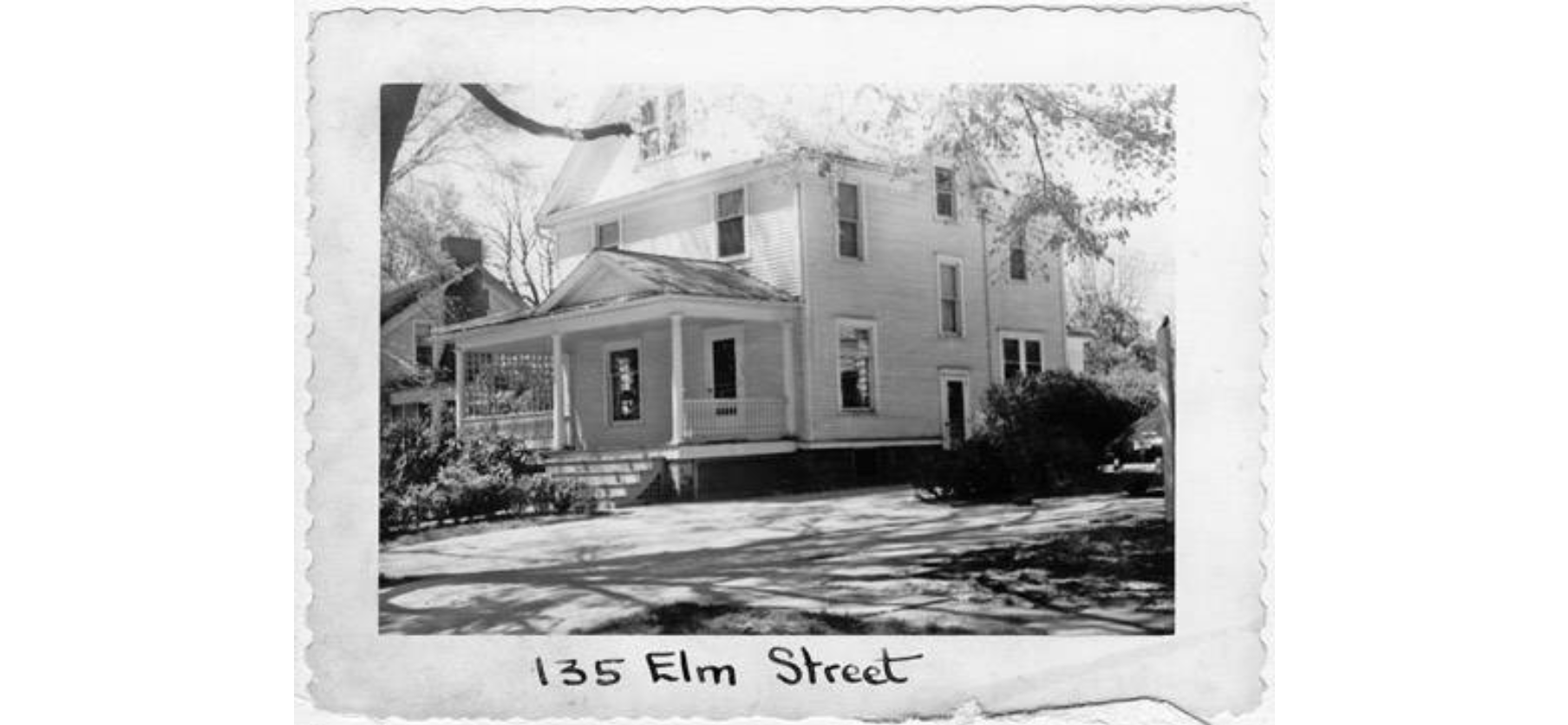 | This two-story 1908 home with rear addition was once home to the Rev. James Frank Cross (1859-1911), his wife Stella Pearson Cross (1863-1930), and his sister Emma Cross Mills (1853-1950) and her family. The Rev. Cross graduated from Yale University, was a missionary to Nome, Alaska, and was appointed the charge at Rosebud Indian Reservation in the Dakotas. | Summit Memory | |
136 Elm Street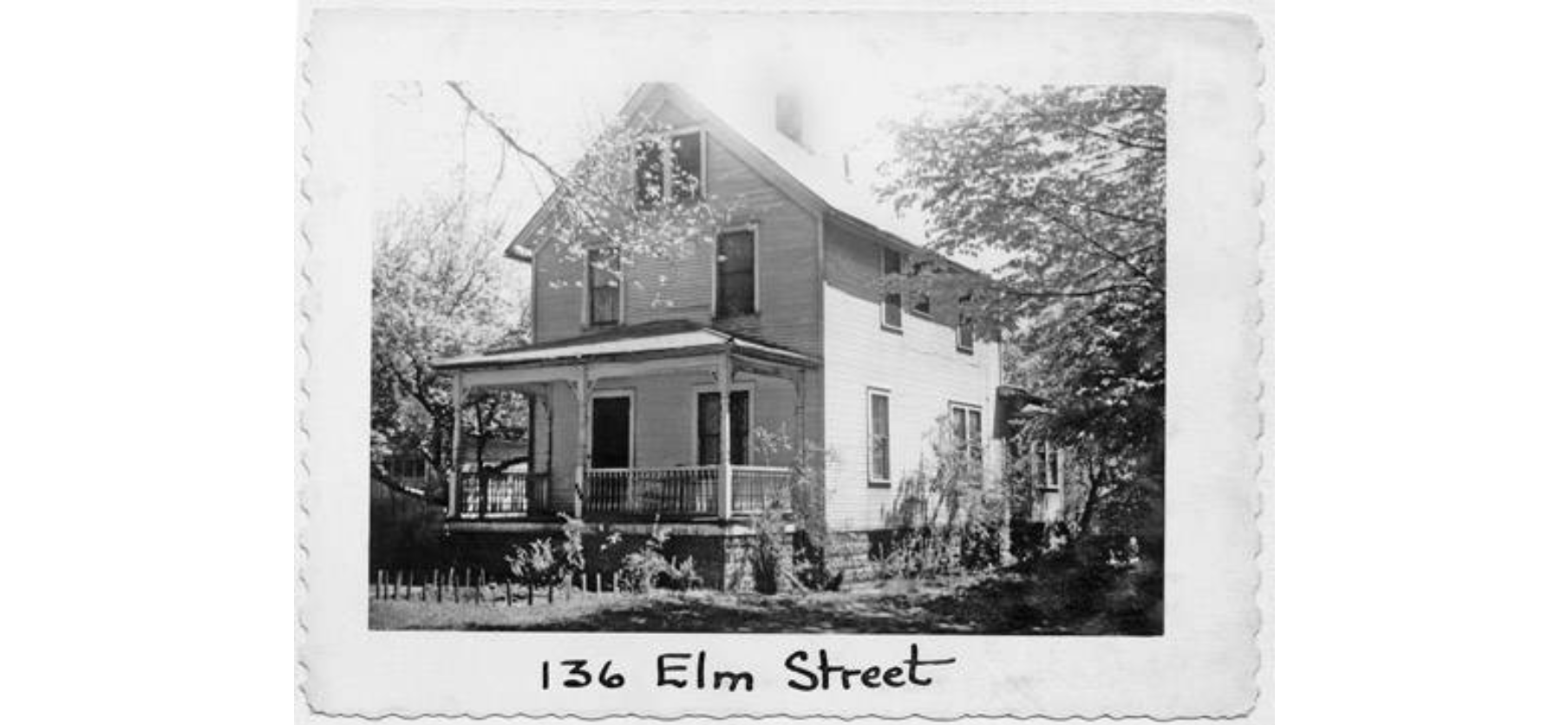 | This circa 1918 home was once occupied by teachers Margaret E. Peg (1904-1987) and Paul Roby (1903-1957). Peg taught second grade in Hudson for 15 years and was a well-known local artist, studying under fellow local artist Lowell Ellsworth Smith (1925-2008). Her husband Paul was a teacher and coach at various schools, including Hudson High School where he coached several boys basketball championship teams. | Summit Memory | |
139 Elm Street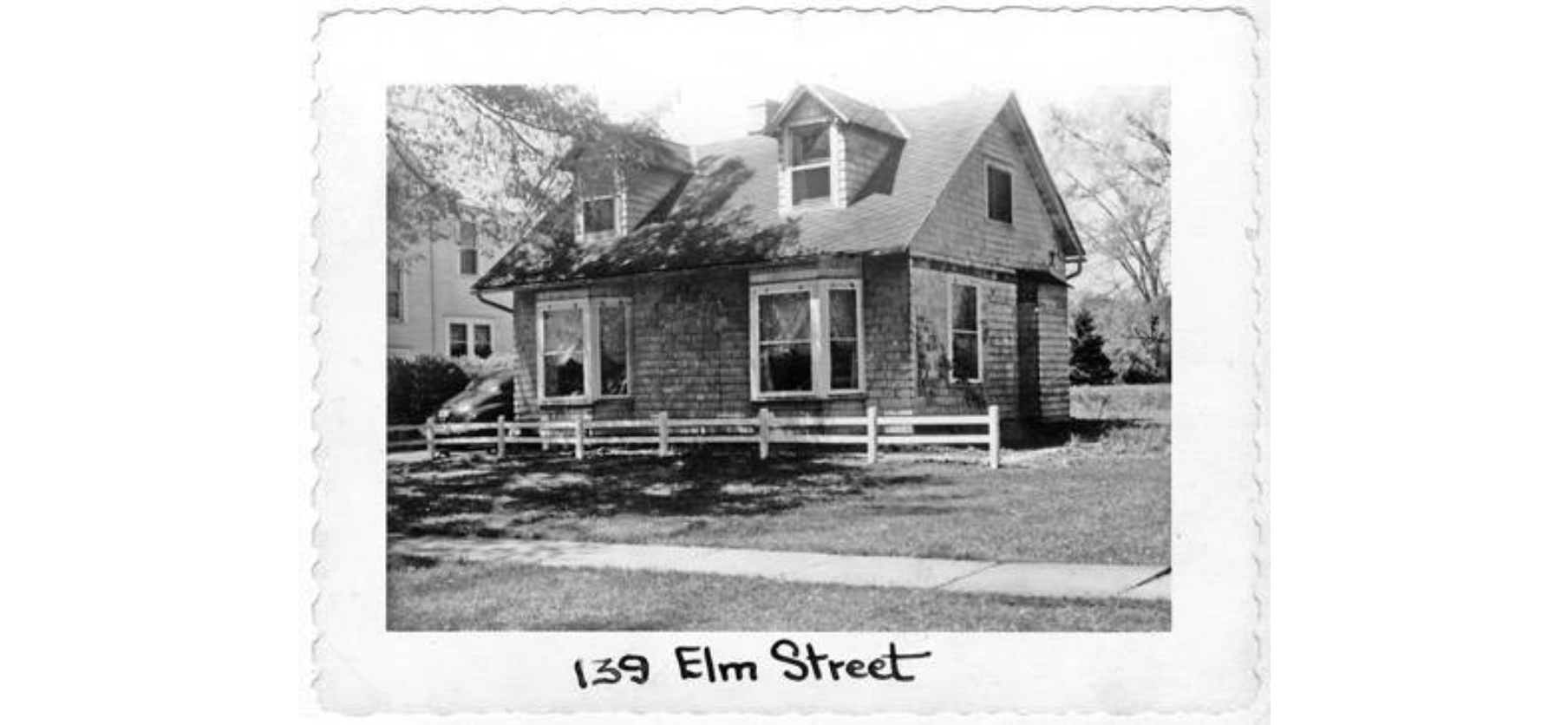 | The charming bungalow built post-1900 sustained serious damage in a 1948 fire that started in a fireplace. Francis H. Wolfe (1901-1961) resided there then. He was the plant supervisor at Western Reserve Telephone. | Summit Memory | |
140 Elm Street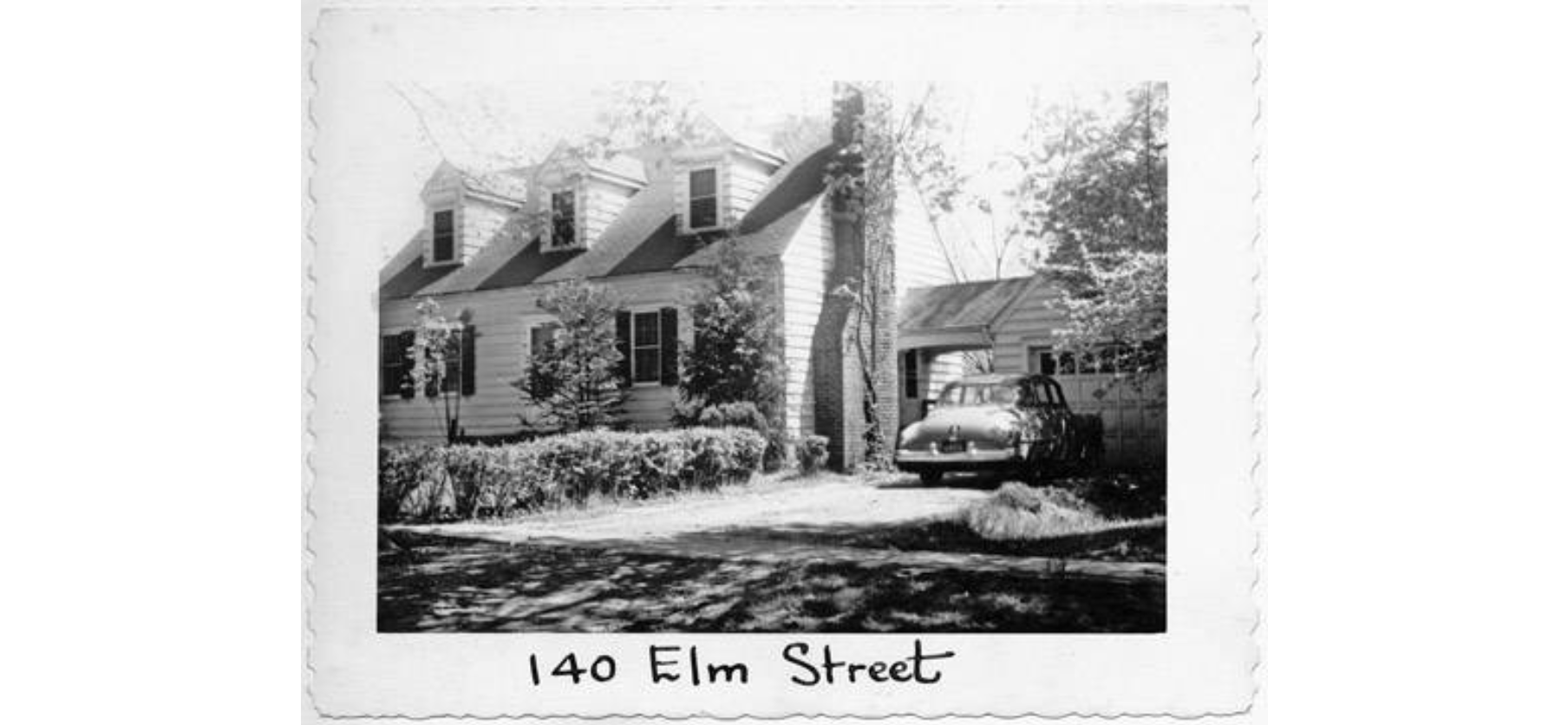 | This home, probably built in the late 1930s, was once home to the Piercy family. LaRue Piercy (1904-1998) taught at Western Reserve Academy for more than 12 years and was managing editor of the "Hudson Times" for two years. His wife Marie Piercy (1899-1992), a Hungarian immigrant, ran a beauty shop. | Summit Memory | |
143 Elm Street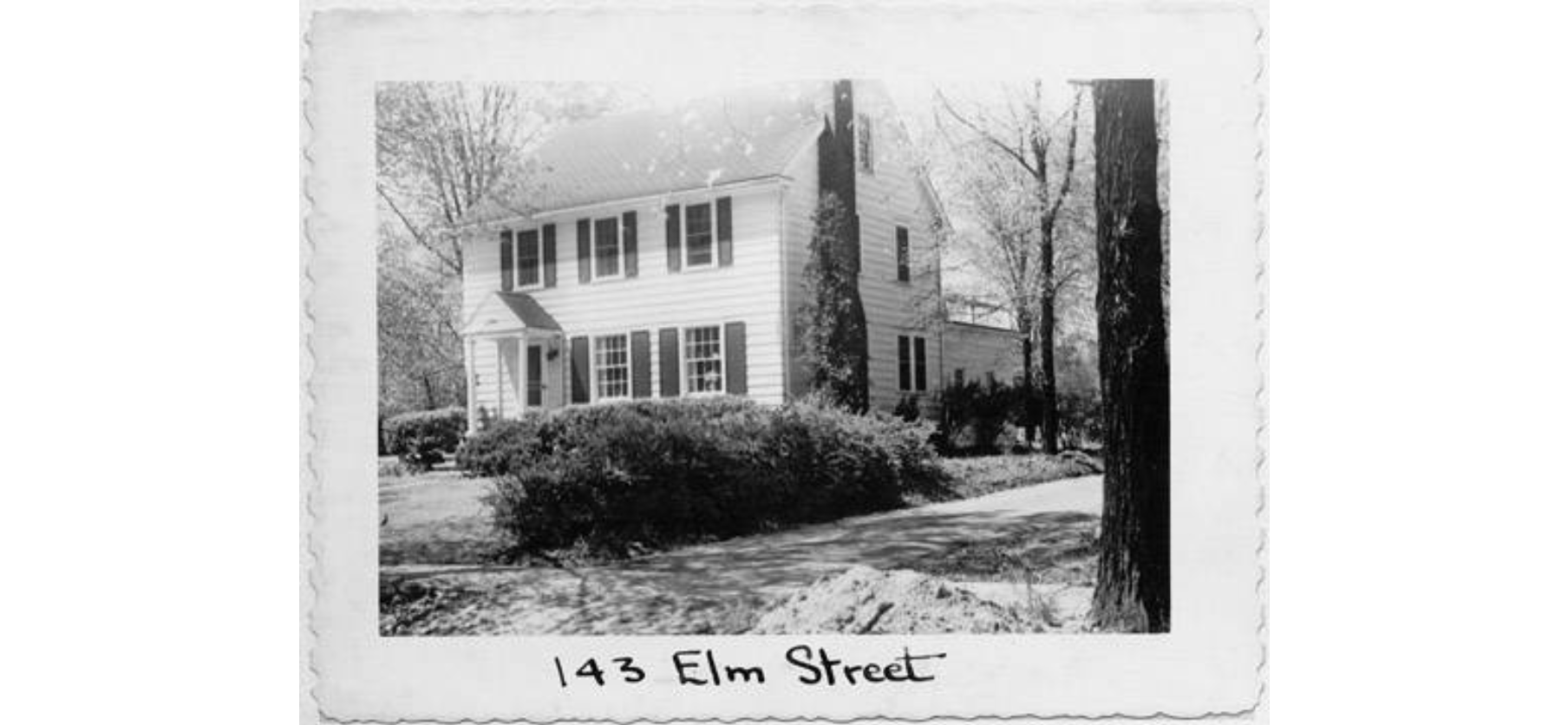 | This home, built circa 1933, was once the home of Merrill Bolton Wilcox (1903-1979), an employee of Goodyear Tire and Rubber Co. Wilcox is known for starting Christmas caroling on the Hudson Green, which continues to this day. | Summit Memory | |
144 Elm Street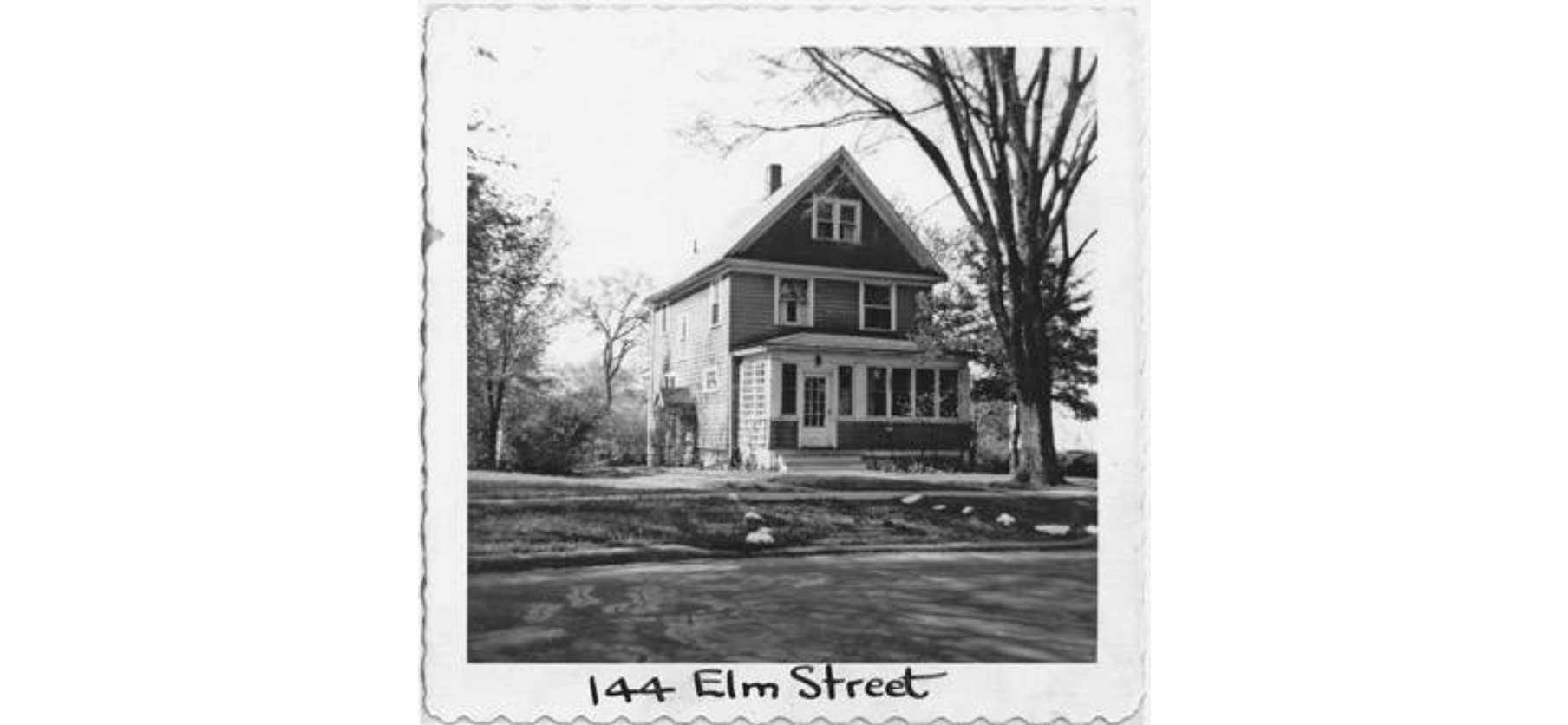 | Herbert Powers (1883-1961), board of public affairs member and stamp collector, once lived in this 1920s home. The Powers family have been longtime residents of Hudson. | Summit Memory | |
147 Elm Street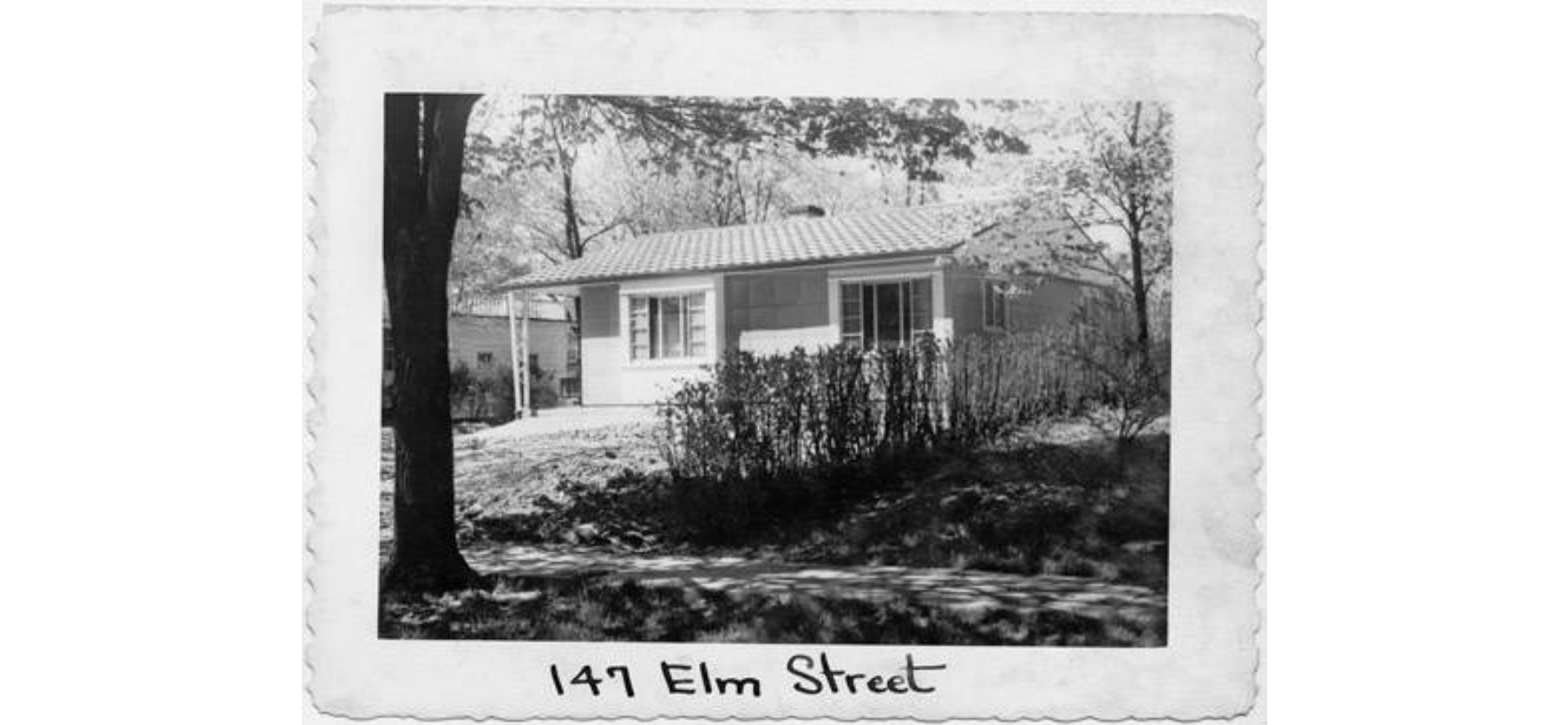 | This Blue Westchester ranch home with clean simple lines was constructed in 1950. It is Hudson's only Lustron home, a prefabricated steel home developed in response to the shortage of homes at the end of World War II. This variety of prefabricated home was developed and designed by Carl Strandlund (1899-1974) and later manufactured at a plant in Columbus, Ohio. New building materials such as plywood were also introduced in the period after the world wars. Dr. Waldo Semon (1898-1999) of Hudson developed PVC (otherwise known as vinyl) in 1926. This and other plastics allowed for vinyl siding and plumbing materials that were likely used in homes like this one. | Summit Memory | |
148 Elm Street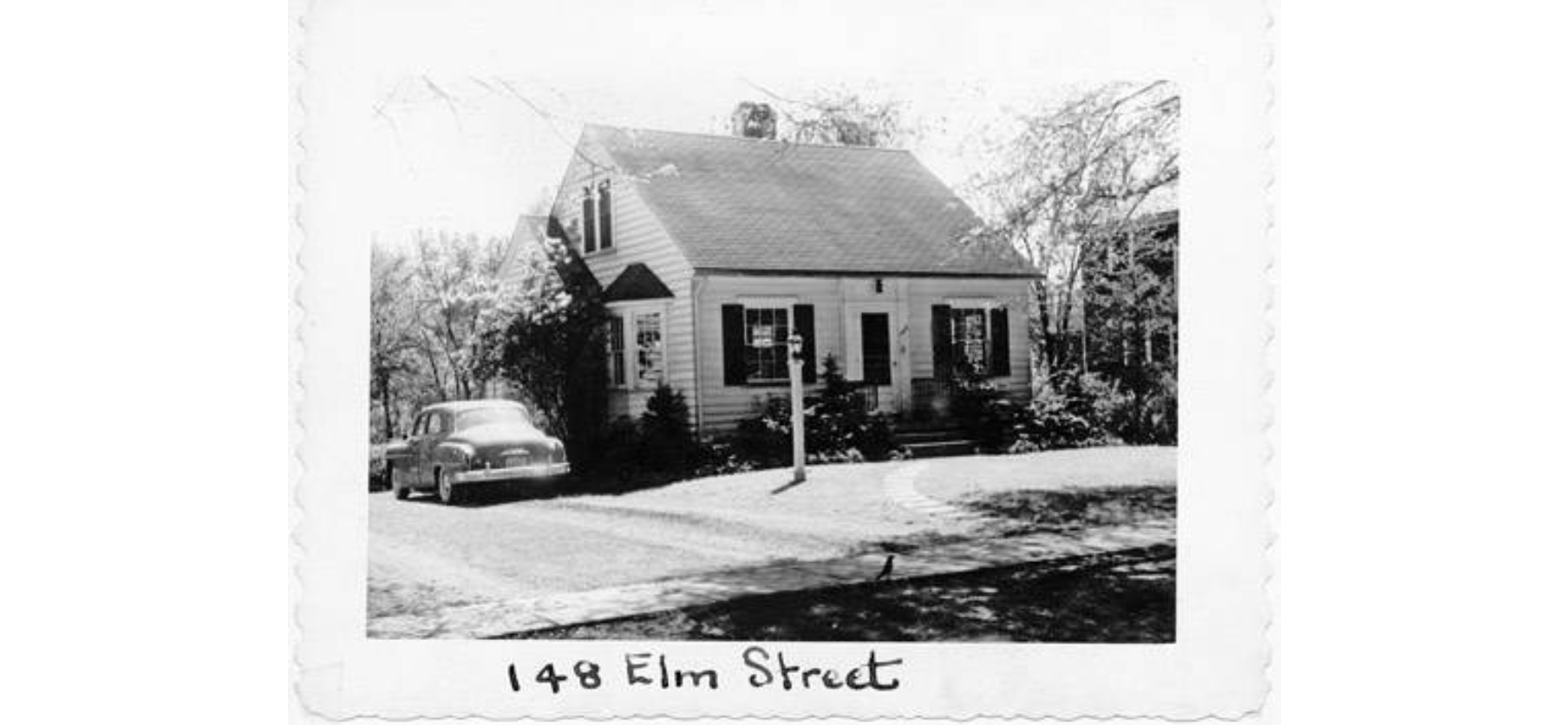 | This 1940s-era one-and-a-half-story Cape Cod was one of the first homes with an electric light post in the front yard and a television in the living room. The construction of tract homes in Hudson started on Elm Street. Reduced construction costs and the efficiency of building multiple homes in a short period of time encouraged the standardization of home designs. William Dodds (1929-1997), World War II veteran and owner and operator of Dodds Department Store on Main Street, was one of the first occupants of this residence. | Summit Memory | |
151 Elm Street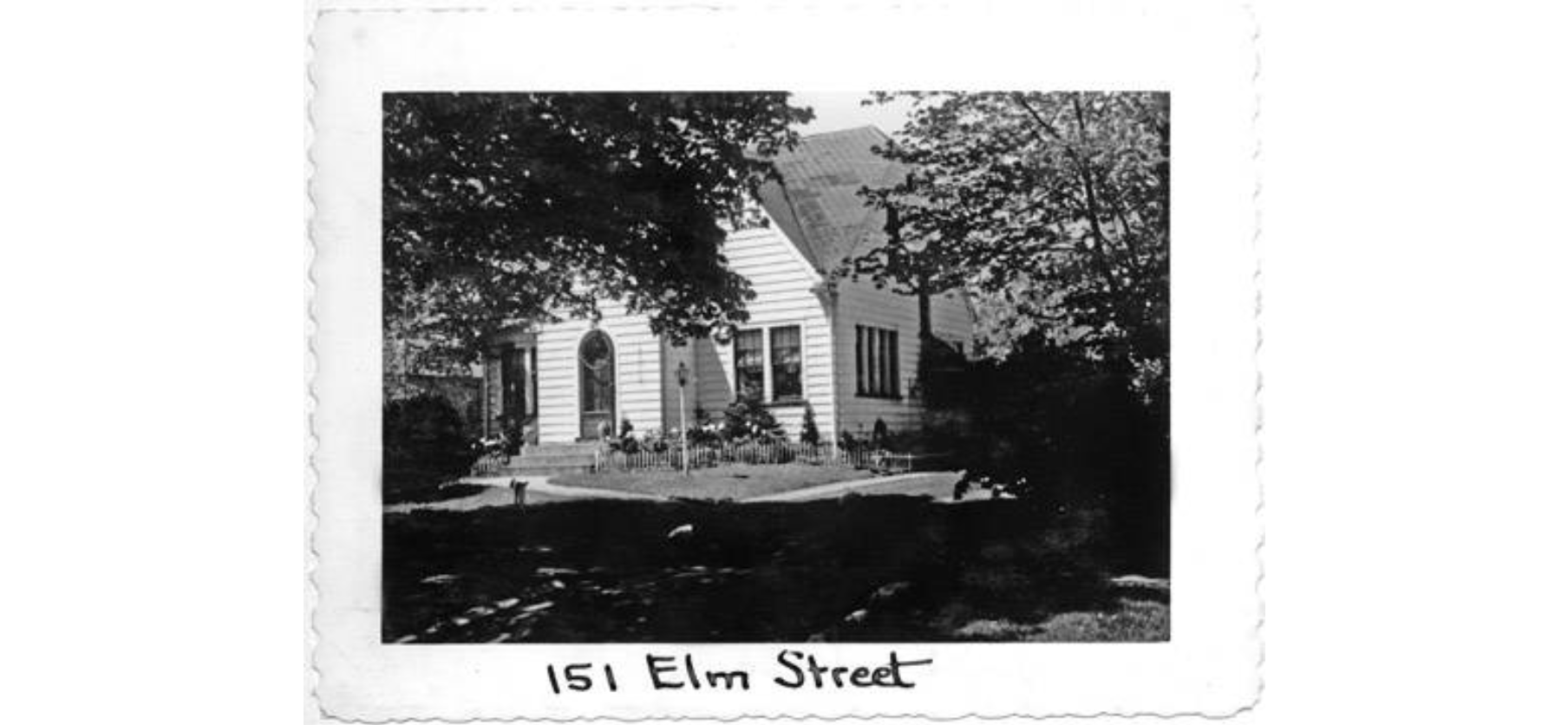 | This circa 1928 Cape Cod was home to Vera Kepner Jenkins (1898-1988), owner and operator of Hudson's Kepner's Tavern since 1920. | Summit Memory | |
152 Elm Street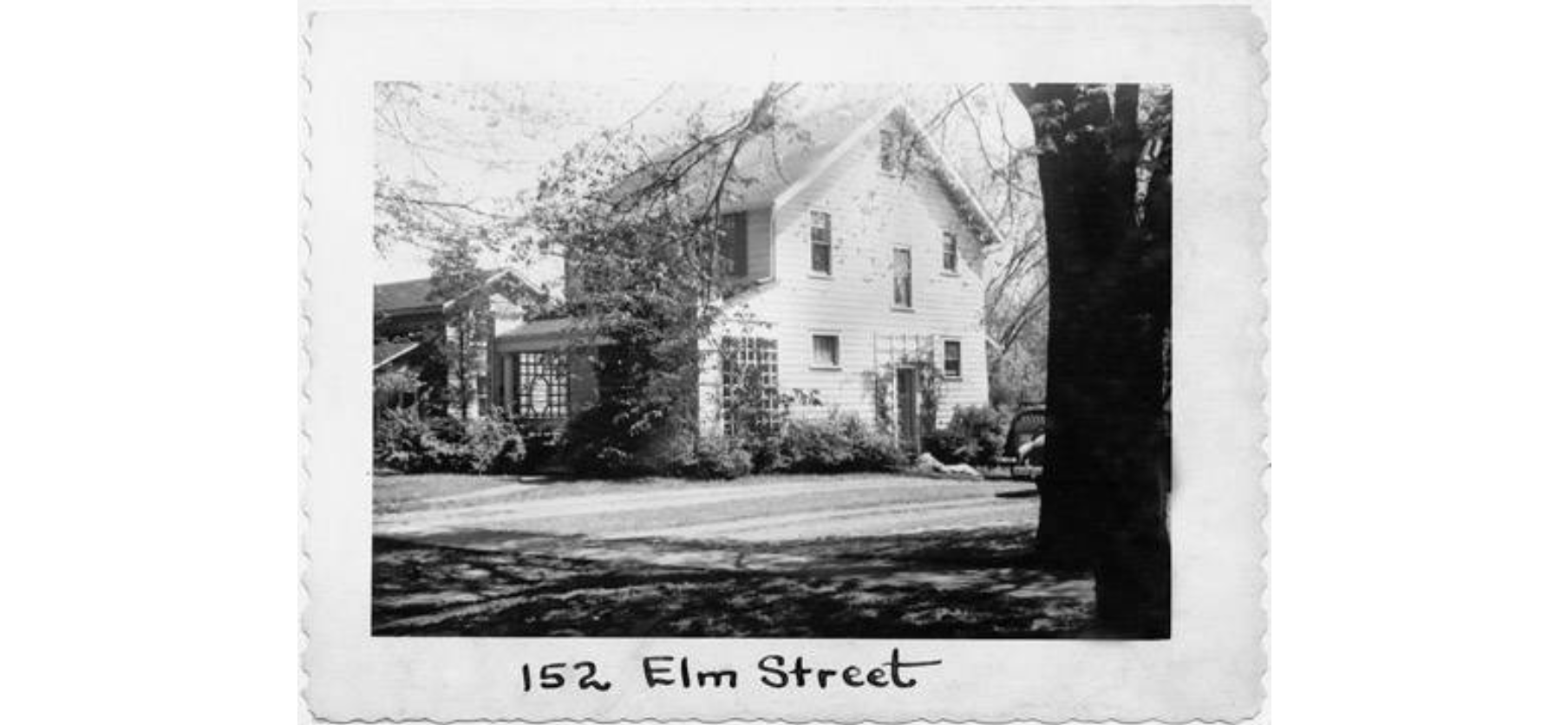 | This home built ca. 1925 was once home to painter Ellsworth Smith (1925-2008). Smith, whose studio and gallery were located in Hudson, painted and taught locally and nationally. He is probably best-known for his watercolors for which he has earned many awards. Smith resided in Hudson for over 50 years and was a founding member and president of the Hudson Society of Artists. He painted scenes of his hometown often. | Summit Memory | |
156 Elm Street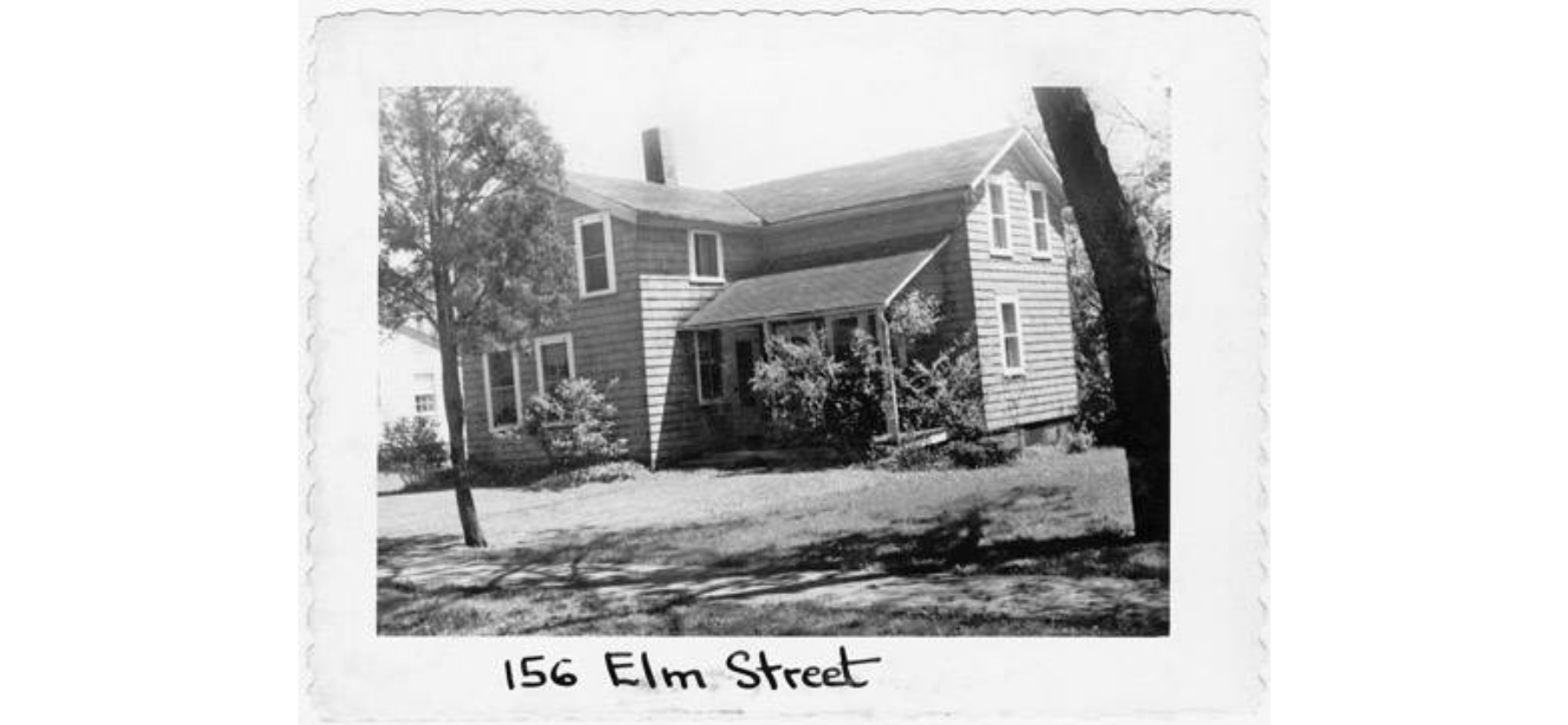 | Pennsylvania Railroad telegrapher George R. Martin (1889-1951) once lived in this circa 1893 home. Martin was a charter member of the Hudson Summer Band. | Summit Memory | |
160 Elm Street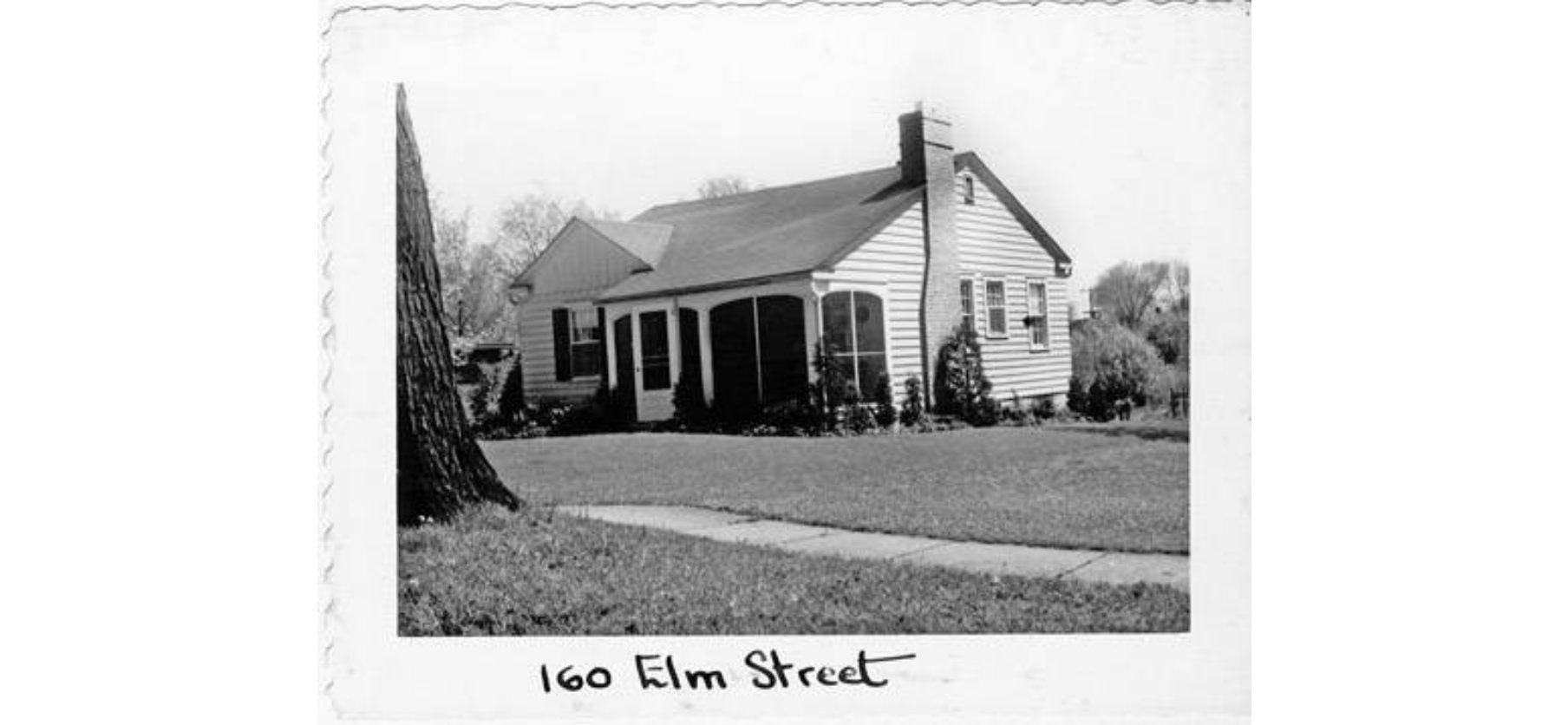 | Silas Sawyer (1884-1955), owner of Sawyer's Market, once lived in this home, which to the late 1940s. | Summit Memory | |
161 Elm Street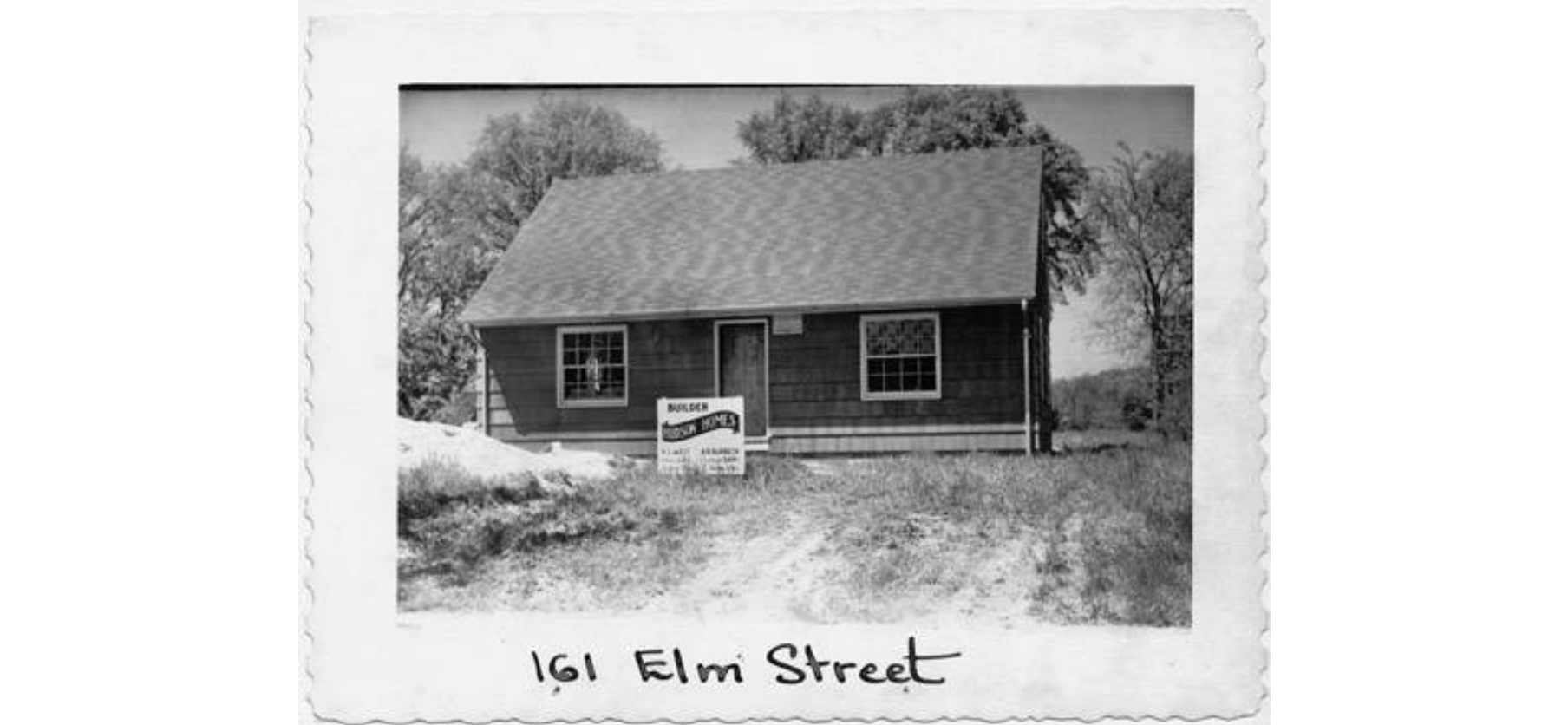 | Little is known about this bungalow, which dates to the 1950s. One owner was Kenneth C. Uhle (1931-1990), who was a member of the Country Club of Hudson, a 32-degree Mason, and one-time owner of Mecca Packaging Co. | Summit Memory | |
| 164 Elm Street Adam Westfield House 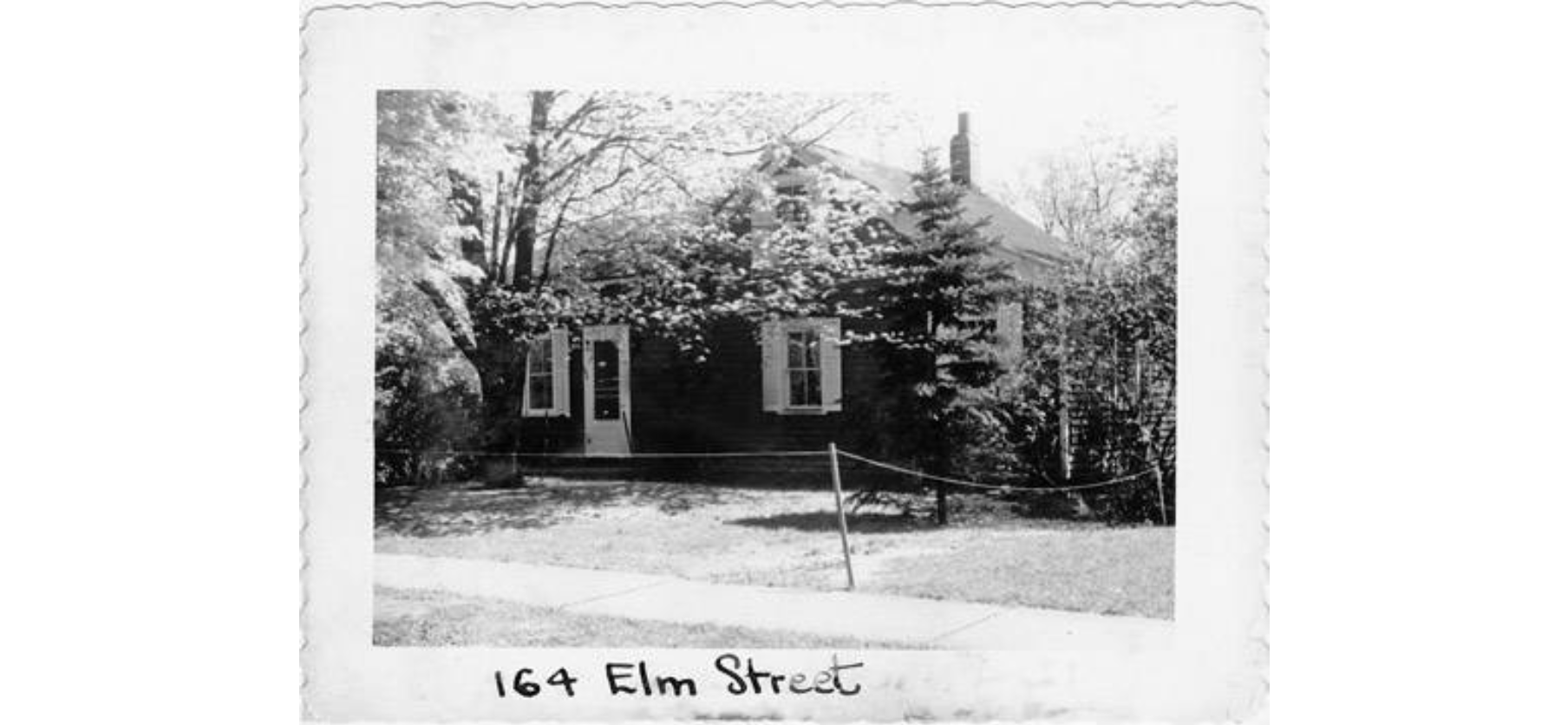 | This 1889 clapboard home is an amalgamation of three sections built during three different time periods. The basement has whole tree trunks used as beams, and the foundation is made of three types of materials - brick, stone and cinder block. Adam Westfield (1849-1936) served as Hudson's cemetery sexton more than 20 years and married Mary Shannon (1853-1906) of Pipperaray, Ireland, in 1873. They were the first to occupy this home and resided there for many years. That's why the house continues to be known as the "Westfield" house. | Hudson Heritage Association Summit Memory | |
165 Elm Street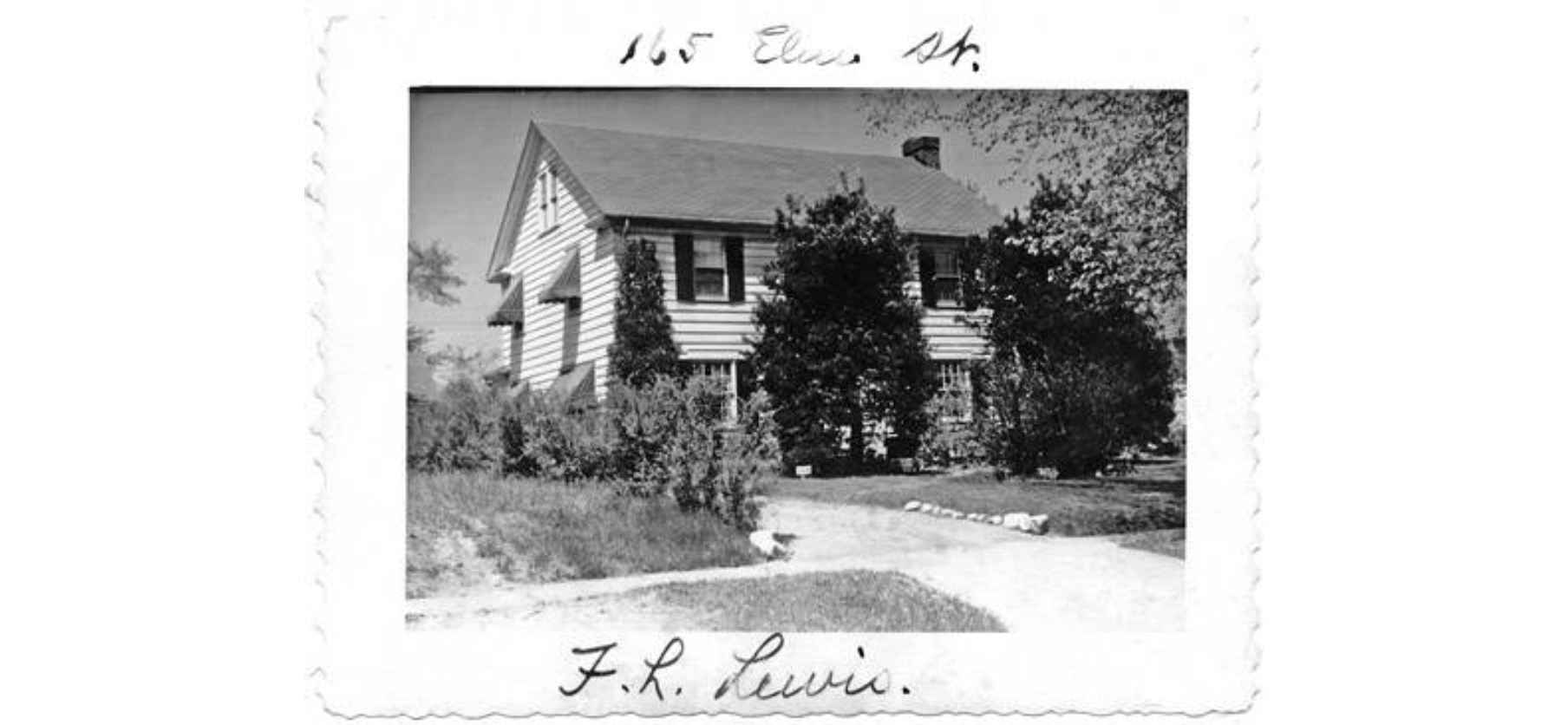 | This two-story colonial home built in the 1930s was once home to Leo Wagner (1913-1993) and family, who ran the Tip Top Resturant in Twinsburg, Ohio, and also at one time owned Hudson's Reserve Inn restaurant. Wagner was also a model-train enthusiast. | Summit Memory | |
169 Elm Street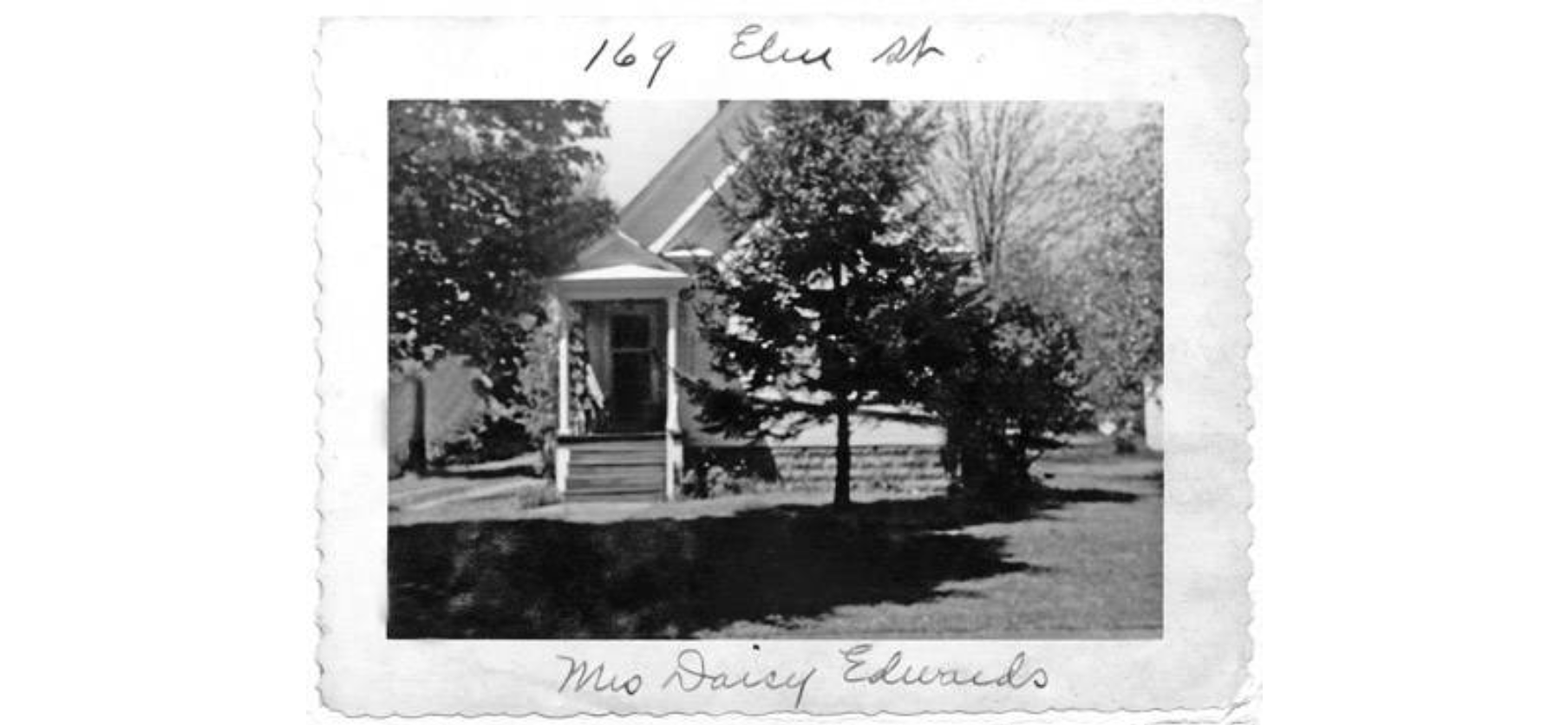 | This circa 1908 Cape Cod was once home to George Edwards (1867-1940) and his wife Daisy Edwards (1872-1951). George Edwards, a brick mason, did a lot of stone work for well-known Hudson entrepreneur and financier James Ellsworth (1849-1925). Joseph Vince (1909-1978) employee of Building Products Inc. in Solon, Ohio, once lived in this home. | Summit Memory | |
173 Elm Street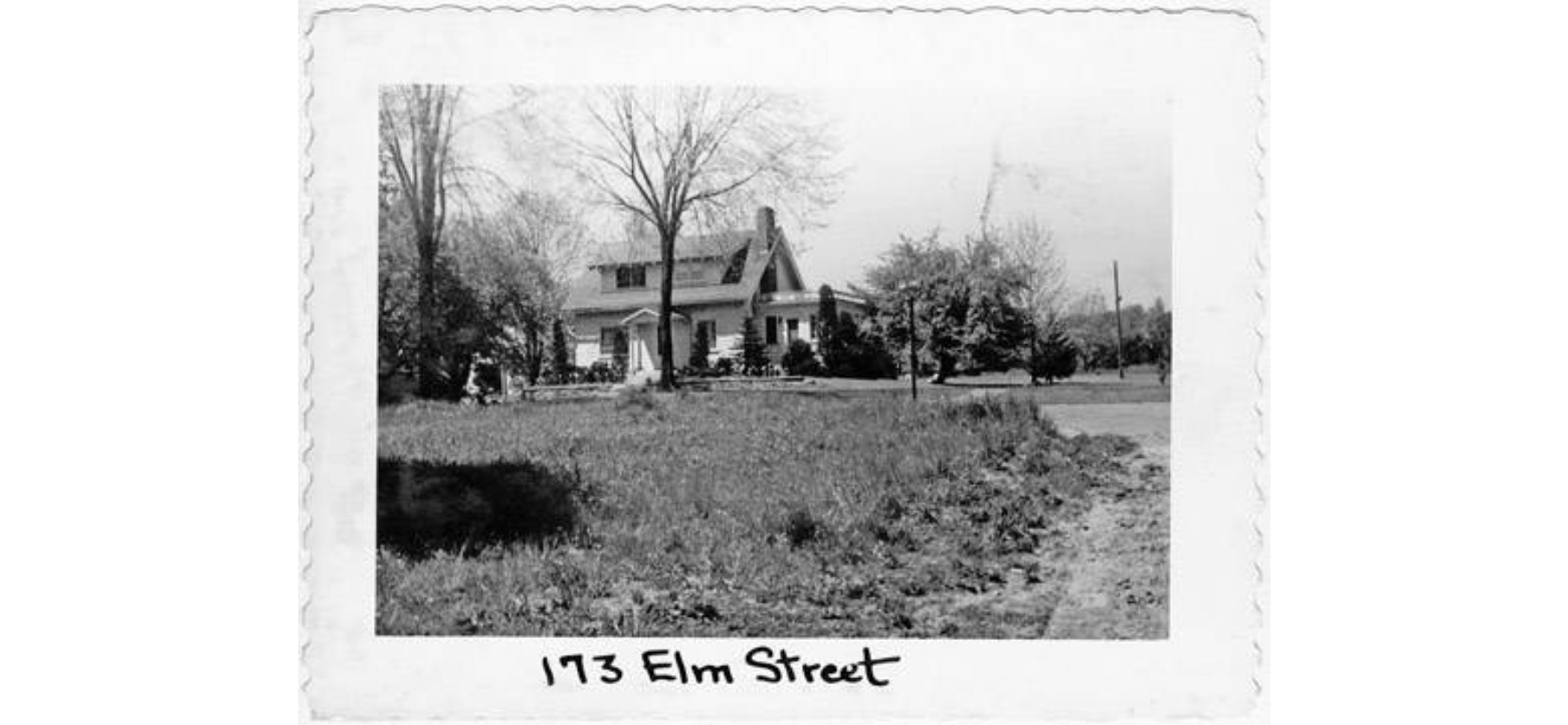 | This one-and-a-half-story Cape Cod was built post-1929 as a starter home. One of the first families to occupy it was the family of Gougler Machine Shop production manager Michael Yakubik (1914-1996). The Yakubiks were Czech immigrants. | Summit Memory | |
184 Elm Street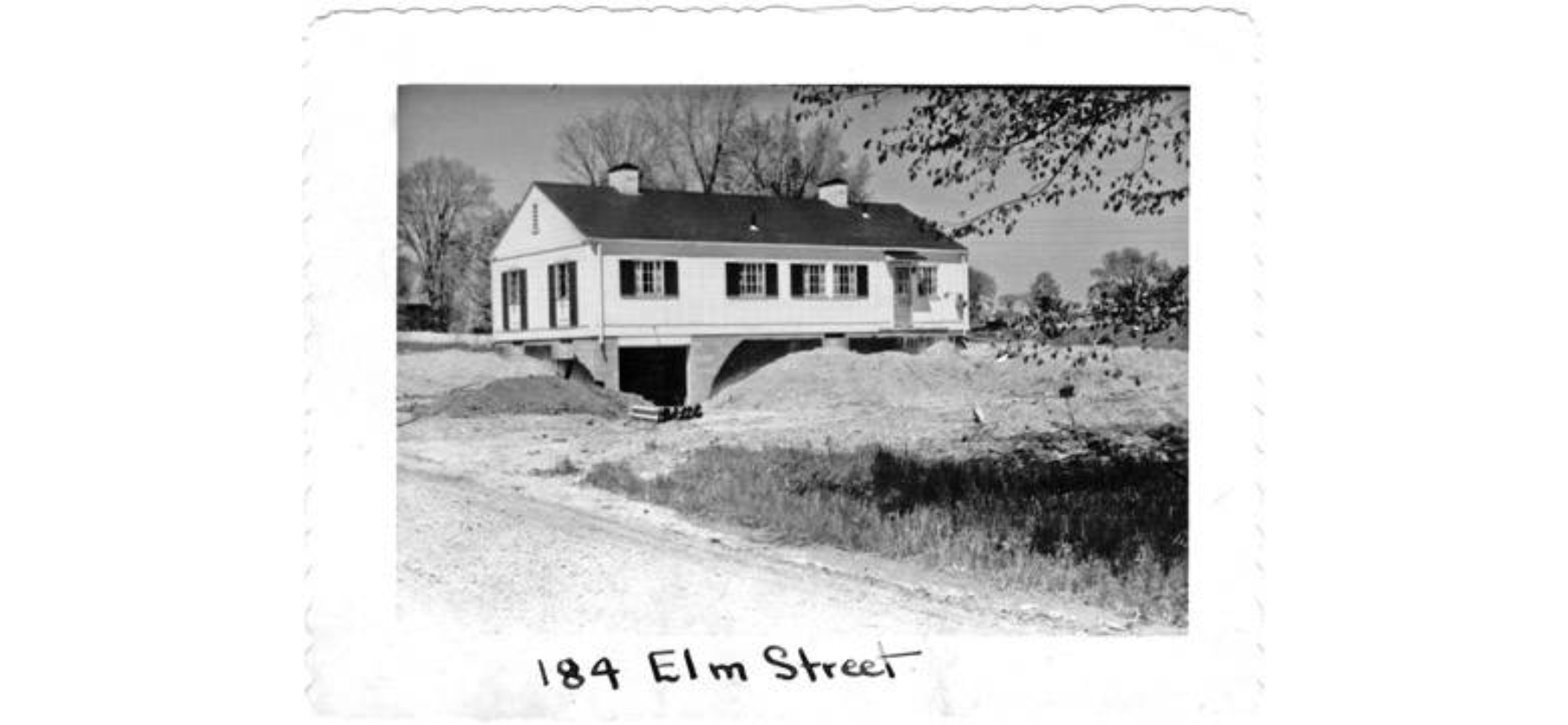 | This single-story home was occupied during the 1950s and 1960s by the Chubbuck family. The Chubbucks' middle child, Christine (1944-1974), was a television news reporter who committed suicide during a live television broadcast in 1974. | Summit Memory | |
191 Elm Street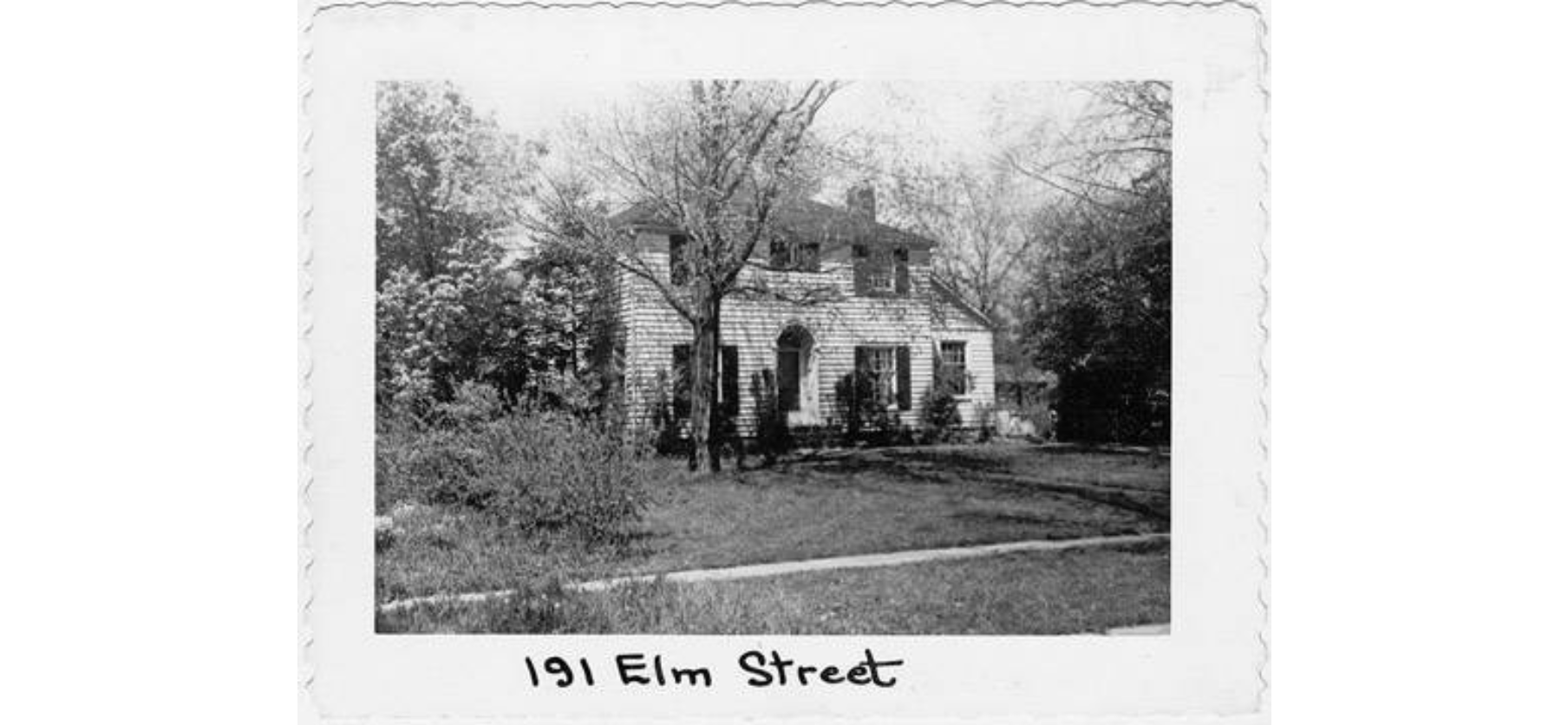 | John Leonard (1902-1983) and his wife Gorgene (1907-1983) once lived in this circa-1928 home. After 52 years of marriage, John and Gorgene died within one week of each other. John was a patent attorney practicing first in Cleveland and then Hudson. He also served in the Navy during World War II. Gorgene, a graduate of Oberlin Business College, worked for the Cleveland Folding Machine Co. and the Guardian Bank in Cleveland; she also worked with John. Gorgene was a member of the Daughters of the American Revolution. The Allen family also once resided in this home. The Allen's son, Sergeant Samuel Westfall Allen (1886-1943), died in World War II. Samuel was the great-great-grandson of American Revolution soldier Captain Abraham Westfall (1763-1829). | Summit Memory | |
98 Hines Hill Road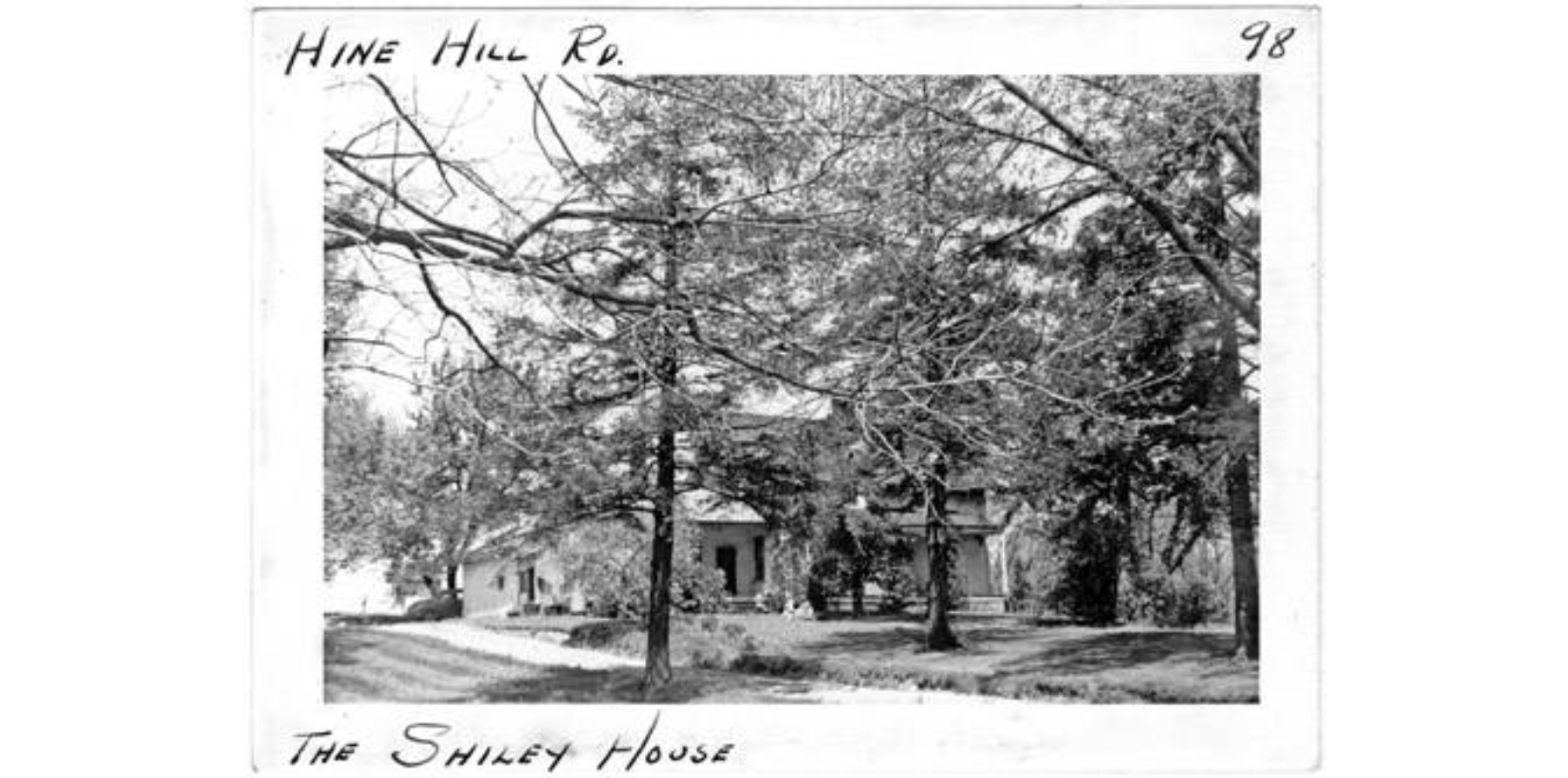 | Once located in the vicinity of Hines Hines Hill Road and state route 91, this home was the Hines family homestead. The farm comprised of 17 acres and the last known family members to reside here were Florence Farrar Hines Shiley (1875-1970) and her spouse, Frank Shiley (1869-1955). Florence's father, Charles C. Hines (1841-1930), was born here and later served as a Summit County commissioner for many years. Florence's grandfather, Jehiel (sometimes referred to as "Hial") (1800-1894), came to Hudson and built the core of this structure in 1828. Sadly, the home is now a thing of the past and no longer exists. | Summit Memory | |
| 1405 Hines Hill Road Chapman Farm | John Chapman, who built this house in 1845, was a sailor on a British warship during the War of 1812 and was captured in the Battle of Lake Erie. He was placed in a prison camp in northern Ohio until the end of the war and elected to stay in the area permanently. He came to Hudson in 1828 and remained here for the rest of his life. His son, Matthew Chapman, became the owner of the farm in 1860. | Hudson Heritage Association | |
| 1842 Hines Hill Road John Brown House, Old Tannery Farm 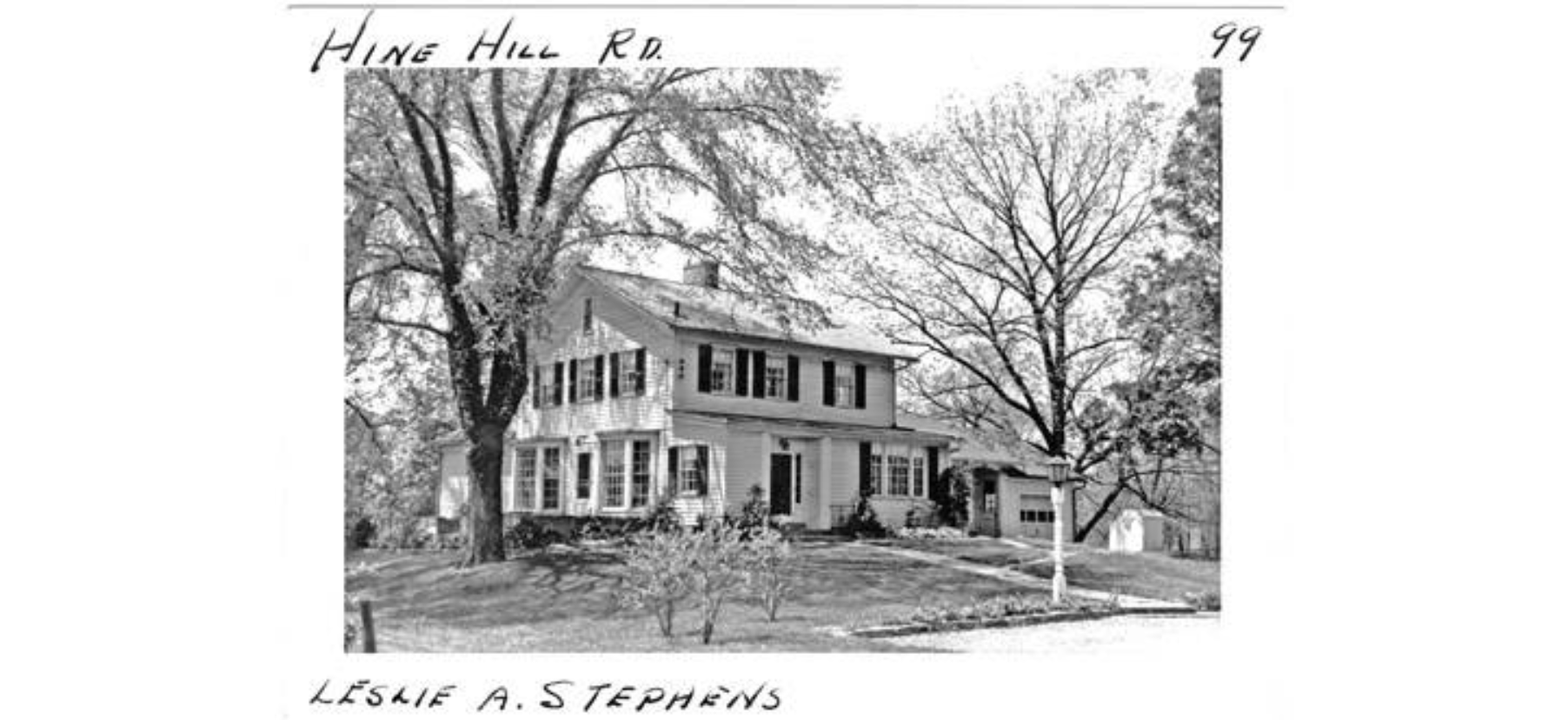 | This home is the former residence of famed abolitionist John Brown (1800-1859). Around 1819 John Brown opened a tannery and built a log cabin on this property, where he lived with his first wife. The log cabin was torn down around 1825 and the present home was constructed. World War I veteran and employee of Firestone Tire and Rubber Co. Leslie A. Stephens (1893-1970) once resided in this home. | Hudson Heritage Association Summit Memory | |
| 73 Hudson Street Morley Cottage 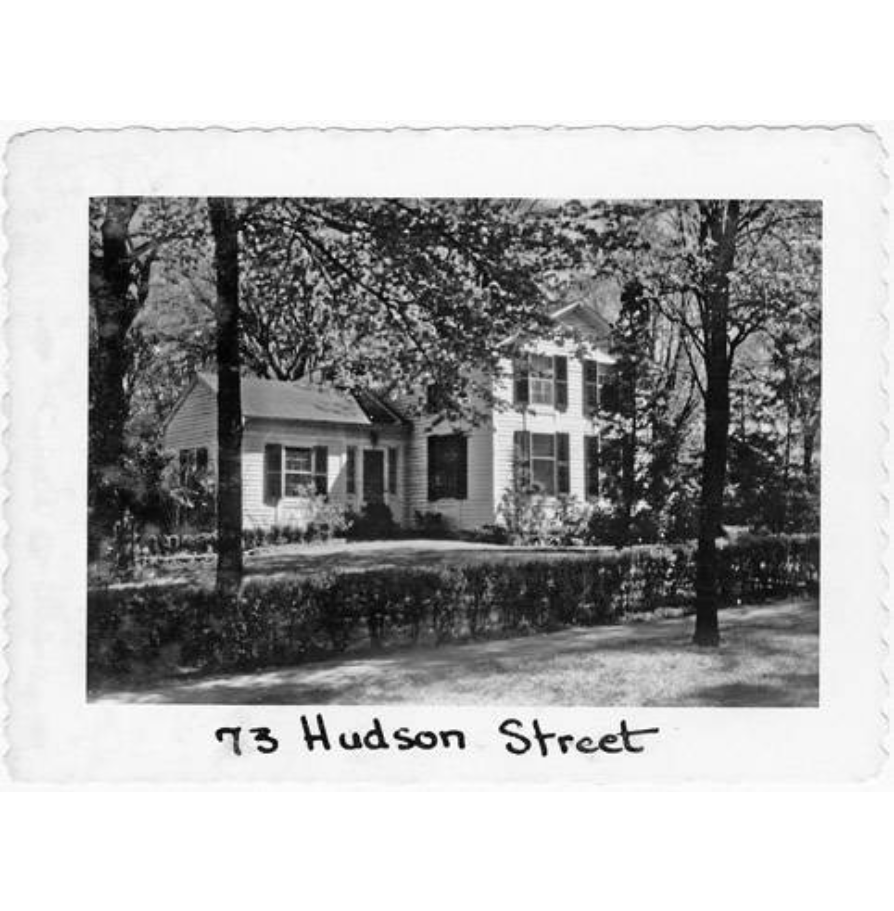 | This 1830s home is known as the Morley cottage after Western Reserve College professor Edward Morley (1838-1923) who resided here from 1869 to 1882. Morley is best known for his research which is thought to have laid an important groundwork for Albert Einstein's special theory of relativity. Some of the other inhabitants of this home include, Ansel R. Clark, editor of the "Ohio Observer," astronomer Elias Loomis (1811-1889), William Pettingell, treasurer of Western Reserve College, and Roscoe John Theibert "Teddy" (1894-1990), Western Reserve Academy football coach. | Hudson Heritage Association Summit Memory | |
| 79 Hudson Street Rufus Nutting House 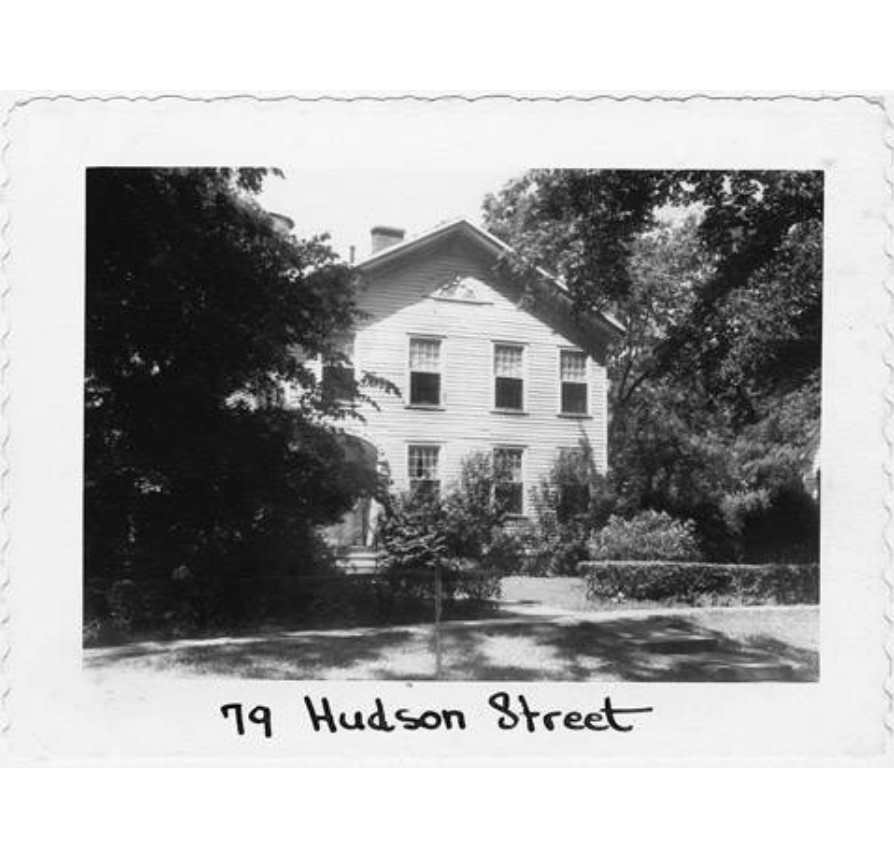 | This 1831 Federal home was built for Professor Rufus Nutting (1793-1878) and family. Nutting served as secretary of the faculty, college librarian, professor of languages and the first superintendent of the Congregational Church Sunday school. The Nuttings and their four sons left for Michigan in 1840 when Western Reserve College discontinued its policy of allowing sons of faculty free tuition. The house passed to Rufus Nutting's sister, Anna Chamberlain (1796-1860), and later to Western Reserve Academy. It has been utilized as a boarding house and faculty housing ever since. | Hudson Heritage Association Summit Memory | |
85 Hudson Street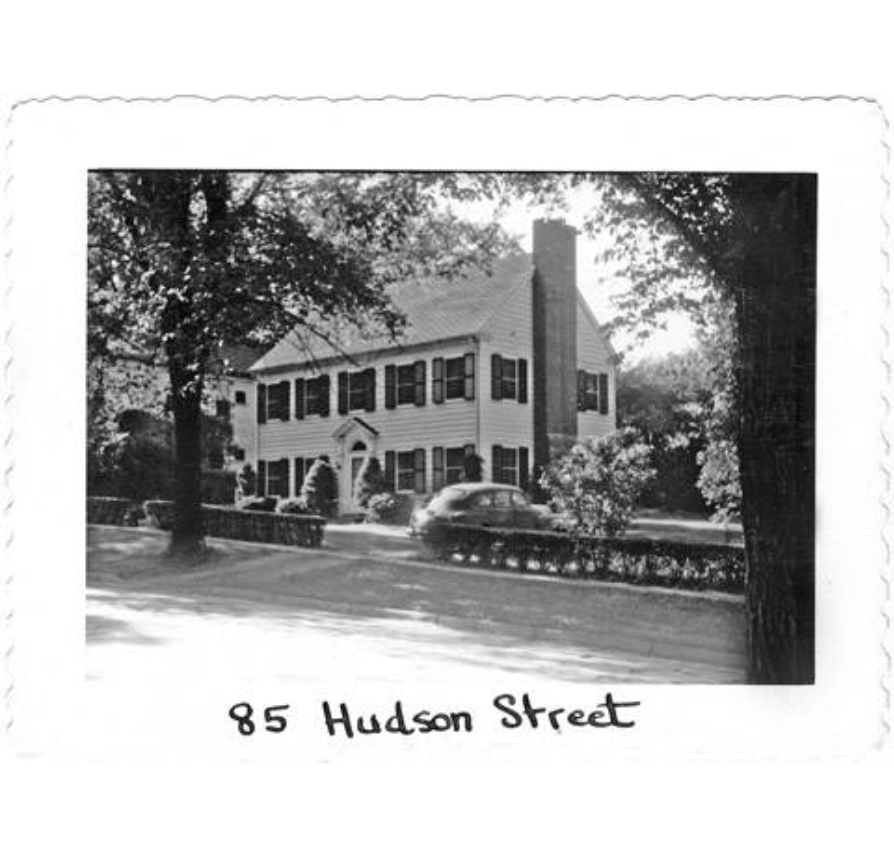 | Western Reserve Academy probably built this Sears kit home, "The Newcastle," in 1936 to be used as faculty housing. Chandler T. Jones (1896-1989), chair of the English department at Western Reserve Academy and a Hudson Library & Historical Society trustee for more than 15 years, once lived here. He was also selected "Church Person of the Year" at the Hudson Congregational Church in 1983. | Summit Memory | |
91 Hudson Street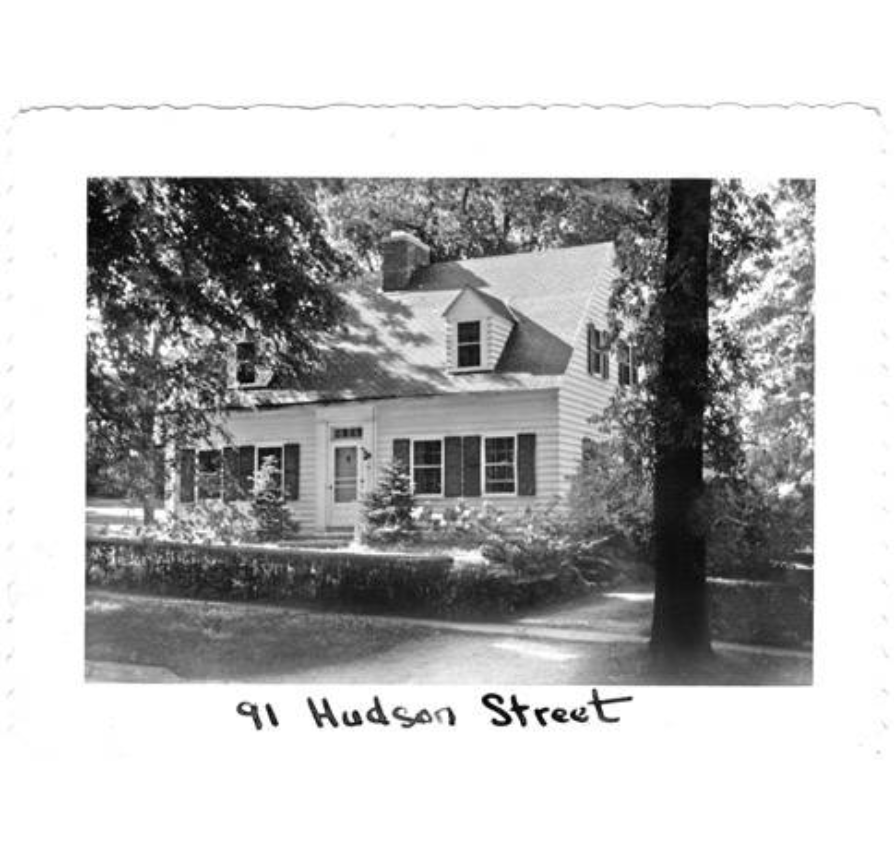 | Western Reserve Academy erected this Sears kit home, known as "The Milford," in 1935 to be used as faculty housing. This Cape Cod-style home once belonged to Western Reserve Academy faculty member Paul C. Roundy (1905-1976). | Summit Memory | |
97 Hudson Street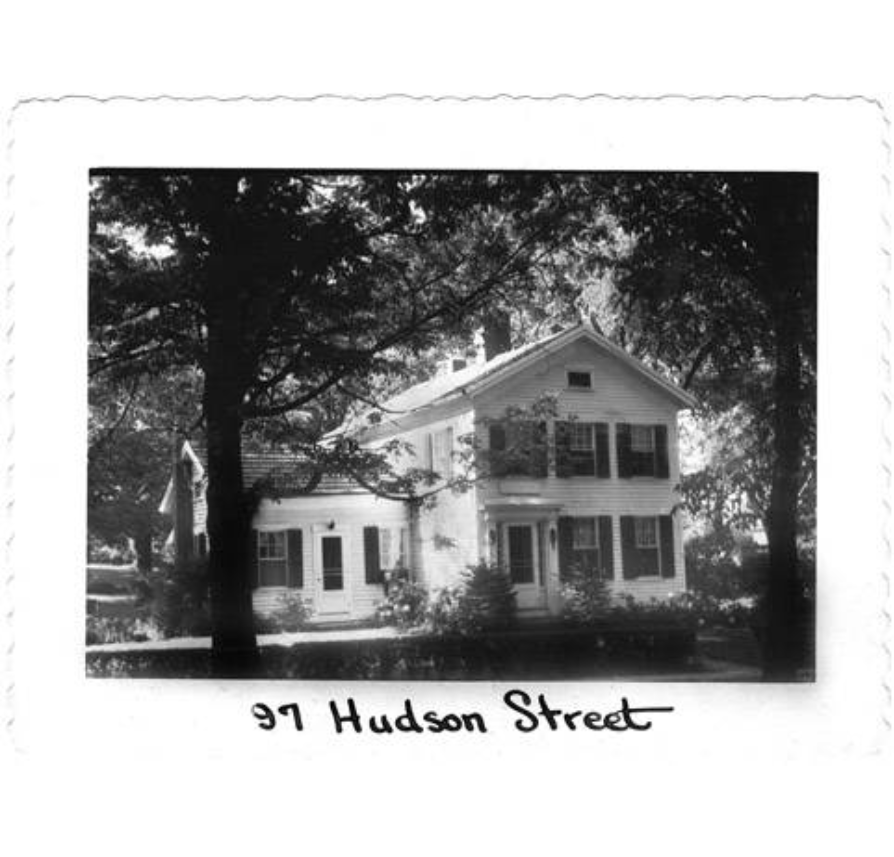 | This 1852 home is known as "Potwin Cottage" because it was once home to Professor Lemuel Stoughton Potwin (1832-1907), professor of Latin at Western Reserve College. The home is now used as a faculty residence for Western Reserve Academy. | Summit Memory | |
109 Hudson Street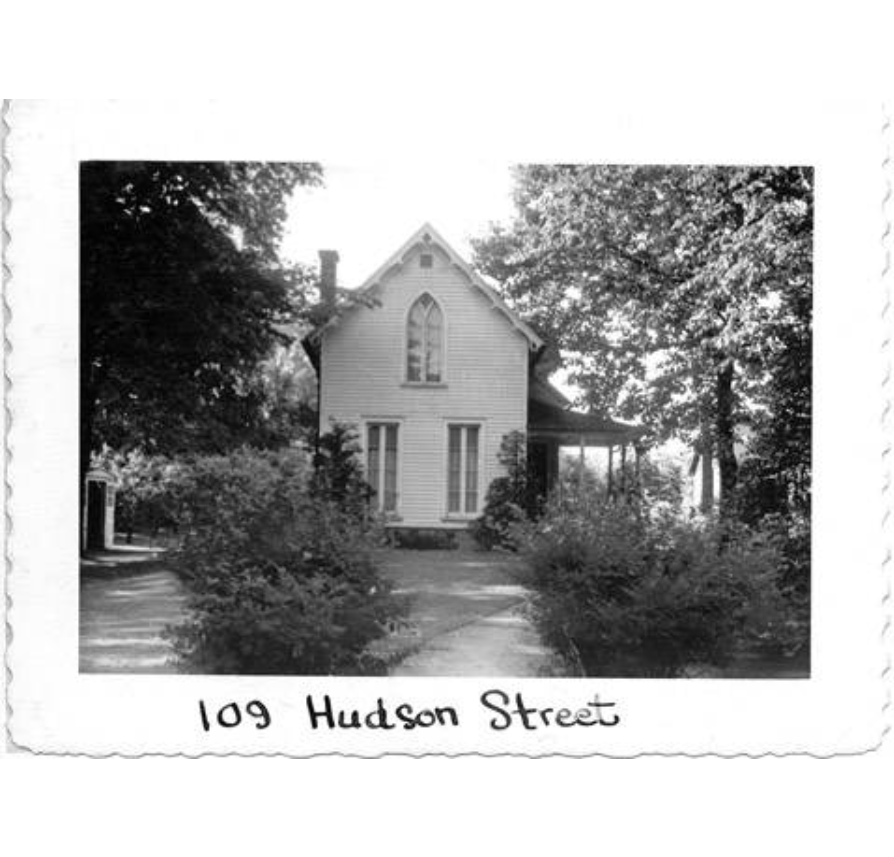 | Hudson Heritage Association Summit Memory | ||
| 113 Hudson Street Gross-Gregory House 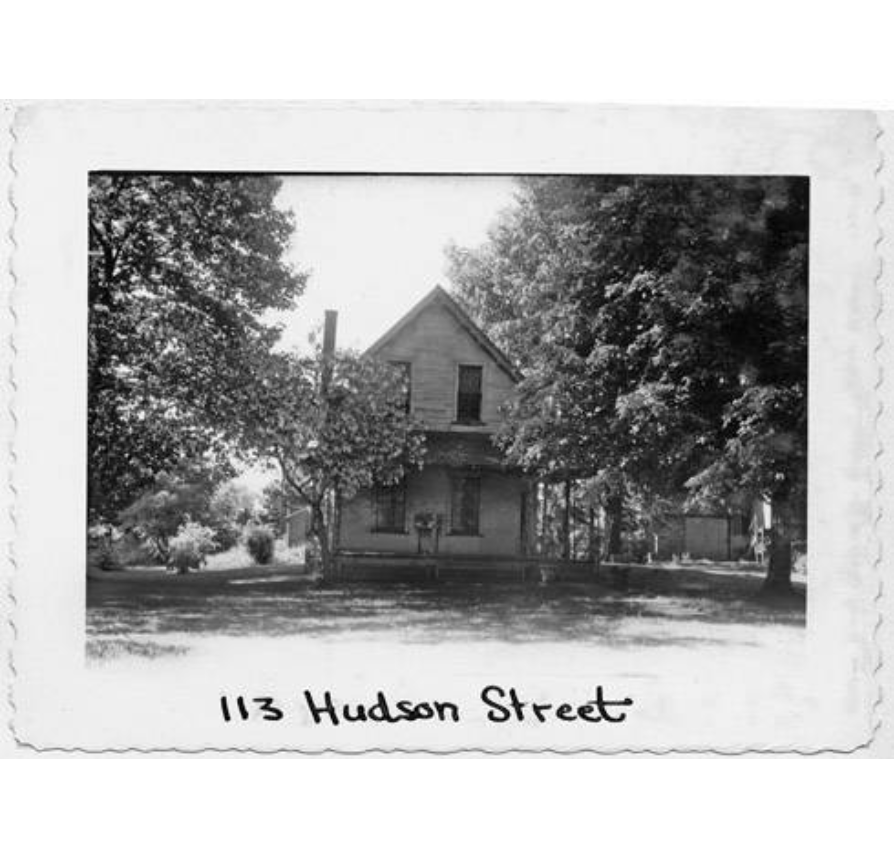 | This Gothic Revival home, built in 1855, was once identical to the residence at 109 Hudson St., making it somewhat likely that it was built by Harvey Baldwin (1798-1880), son-in-law of Hudson's founder. Harvey's own son-in-law Edwin Gregory (1828-1893), professor at Western Reserve College, also resided here for some time. | Hudson Heritage Association Summit Memory | |
119 Hudson Street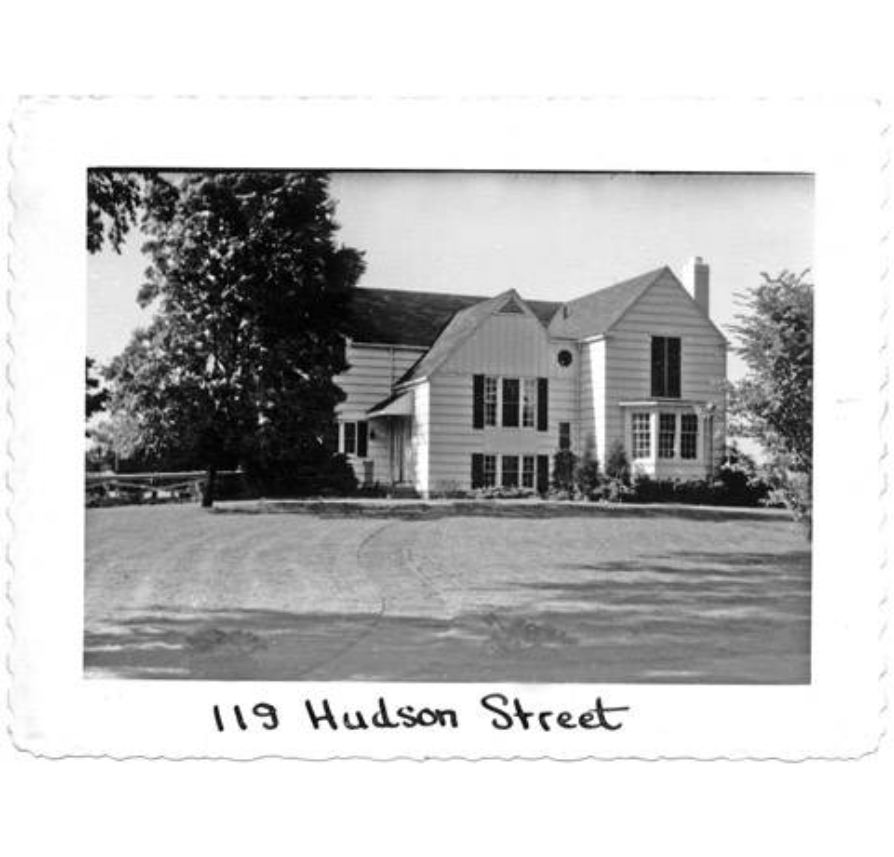 | James William Zuber (1911-1999), owner and publisher of "Hudson Home Magazine," once occupied this 1930s home. | Summit Memory | |
| 120 Hudson Street Elizur Wright Jr. House 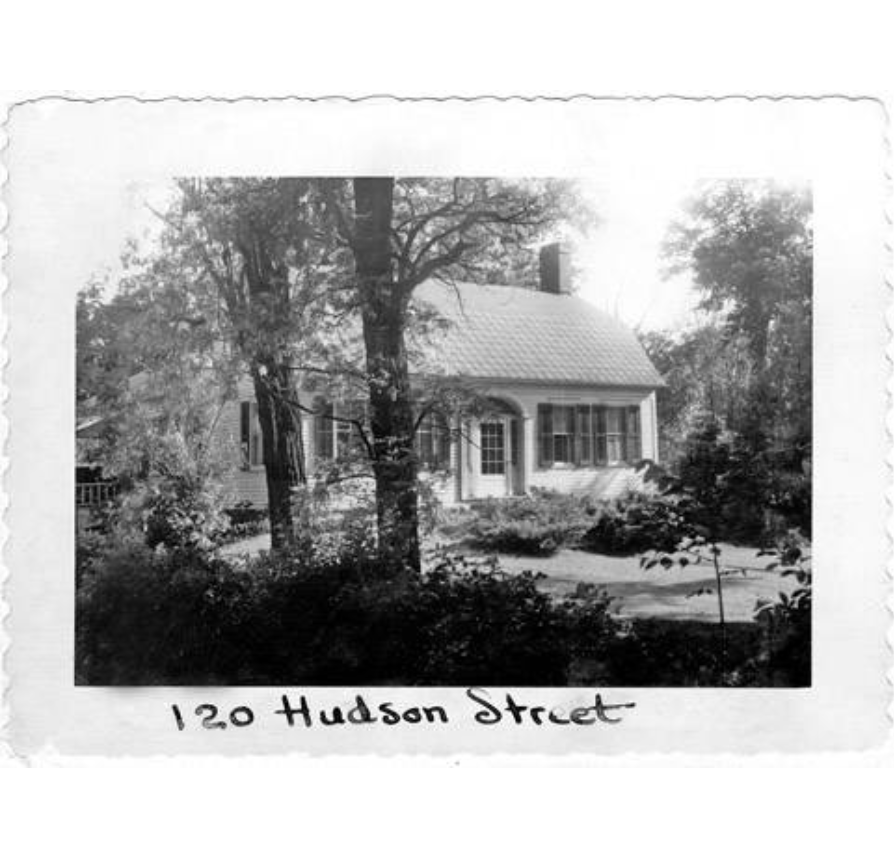 | Leander Starr (1804-1885) built this gambrel-roofed home in the early 1830s for Western Reserve College professor Elizur Wright, Jr. (1804-1885). It is considered one of the earliest gambrel roofs on a residence in the Western Reserve. Wright was such a strong supporter of abolition in the hotly debated abolition-versus-colonization controversy that he resigned his position at Western Reserve College in 1833 over the debate. Wright was also editor to several anti-slavery magazines. Wright perhaps is best known for his work in life insurance. He published several books on the subject, served as the commissioner of insurance in Massachusetts, and often has been called the "father of life insurance." | Hudson Heritage Association Summit Memory | |
128 Hudson Street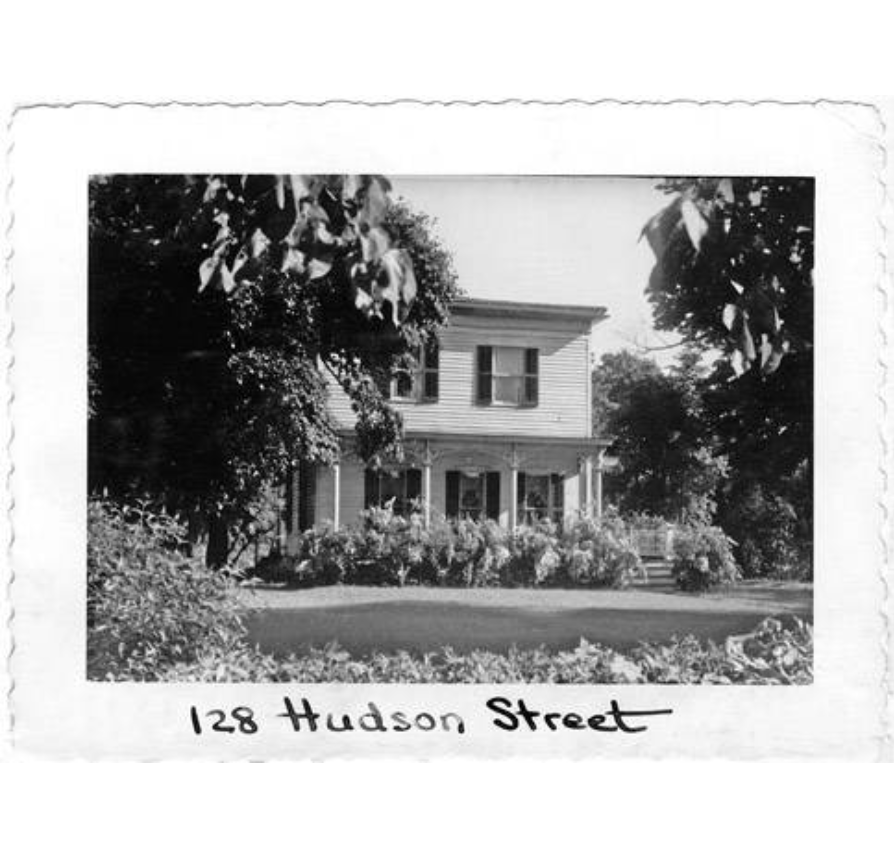 | Henry Noble Day (1808-1890) built this home in 1854. The family of Civil War soldier Edward Blackman (1843-1909), who served with the 85th Ohio Volunteer Infantry, were longtime residents. | Summit Memory | |
131 Hudson Street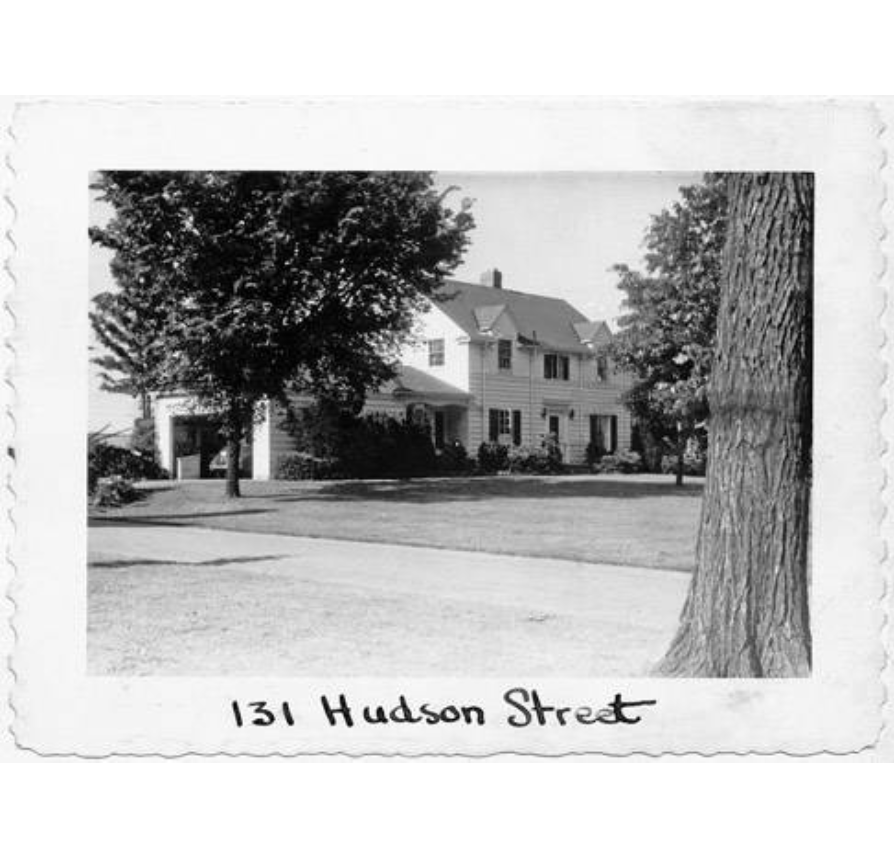 | This 1940s home once housed John L. Cohill (1894-1969) and his family. Cohill, a one-time executive at Bridgestone Firestone, dedicated the first Firestone plant in Port Elizabeth, South Africa, in 1935. | Summit Memory | |
136 Hudson Street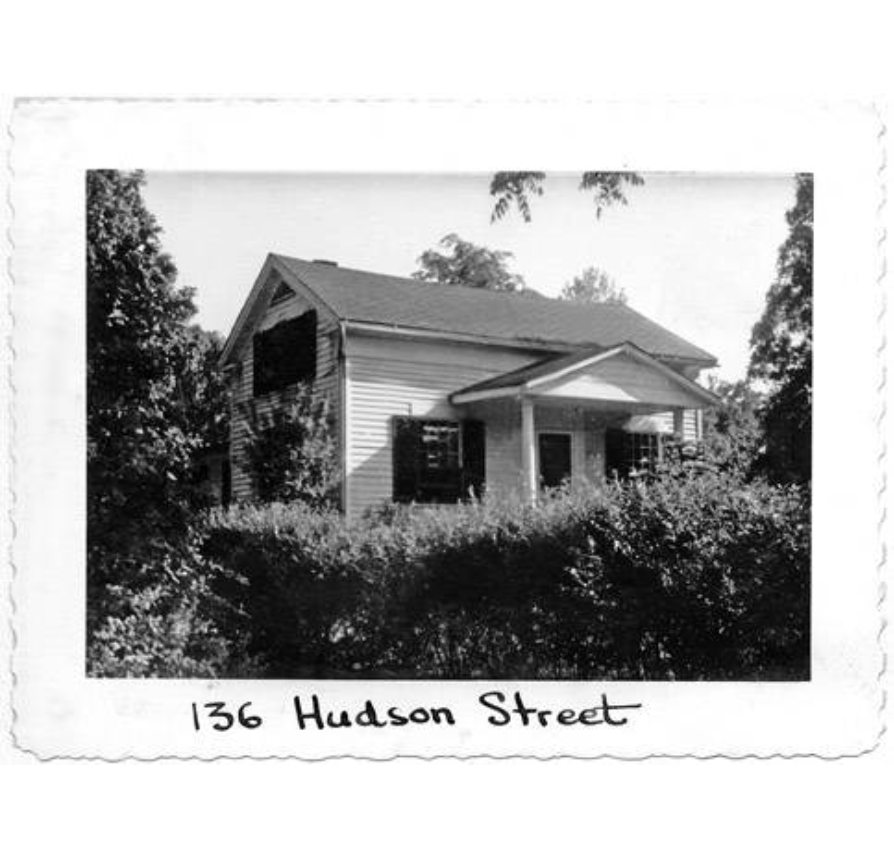 | Alonzo Church Sr. (1903-1995), a scientist, logician and mathematician, once resided here. Church is credited with developing lambda calculus. His work was instrumental in the development of computers and caused him to be considered preeminent among American logicians. | Summit Memory | |
| 139 Hudson Street John Winborn House 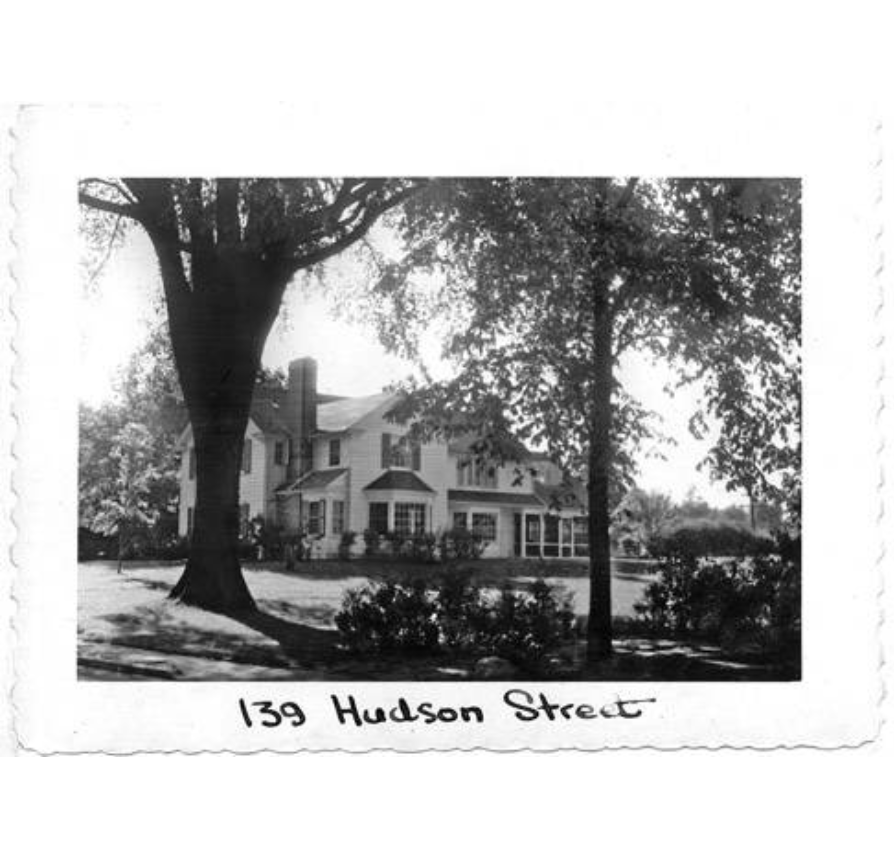 | Few homeowners can imagine the luxury of riding above their home in a blimp. Robert Richardson (1912-1997) and family knew that experience. Mr. Richardson was an executive with Goodyear Tire & Rubber for several years and also headed the Goodyear Aircraft division. He lived in the 1862 built Winborn home from 1944 onward and modified the home with renovations and an addition. This house is a testament to the fact that homes need maintained over the years so that their history can be safeguarded. | Hudson Heritage Association Summit Memory | |
144 Hudson Street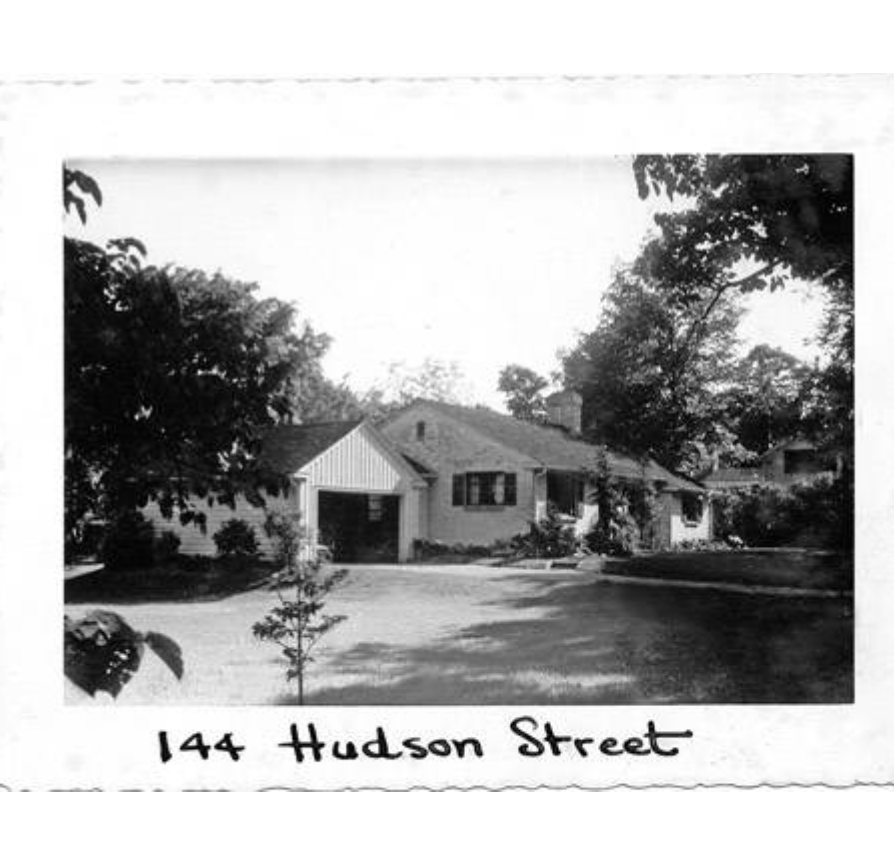 | This one-story ranch home with attached garage was built during the 1940s for Harrison M. (1888-1978) and Helen (1888-1955) Kitzmiller. Harrison was a German teacher at Western Reserve Academy and helped establish its newspaper, "The Reserve Record." Helen, author of "The First One Hundred Years of Western Reserve," was instrumental in establishing Wester Souburg Day, an event that solicited money and donations to help a small town in Souburg, Holland. The Academy first developed a connection with this small town in 1944, when it was discovered that the replacement bell for its chapel had been cast in 1611 in Souburg. During World War II, Souburg suffered from a major flood after Allies had bombed the dikes surrounding the town. To help, Hudsonites sent clothes in 1945. However, in 1948 the town was still struggling to recover. The first Wester Souburg Day on March 20, 1948, raised $1500. And in 1953, a street in Souburg was named Hudson in the citys honor. | Summit Memory | |
147 Hudson Street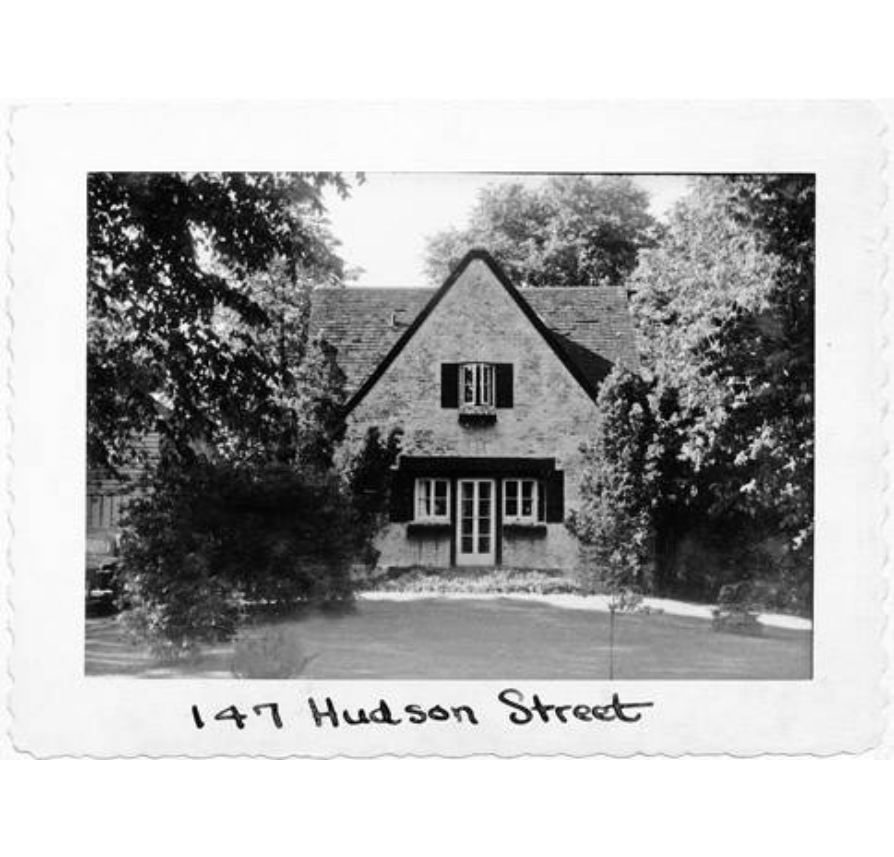 | Architect Max Montgomery (1889-1946) designed and lived in this 1920s Tudor. Montgomery was educated at the University of Illinois and served in World War I. | Summit Memory | |
152 Hudson Street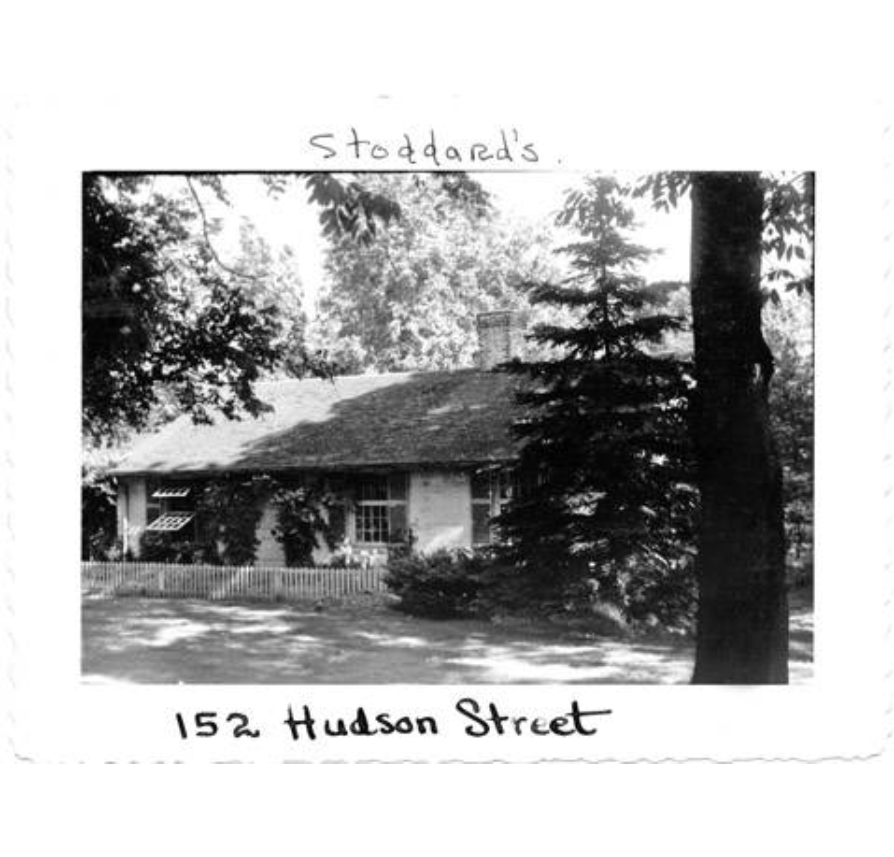 | Grace Stoddard (1891-1973), a 44-year resident of Hudson, once lived in this 1930s home. During World War I she worked as a therapist in Army hospitals. Her husband Lawrence J. Stoddard (1885-1963) was a member of the village council. | Summit Memory | |
159 Hudson Street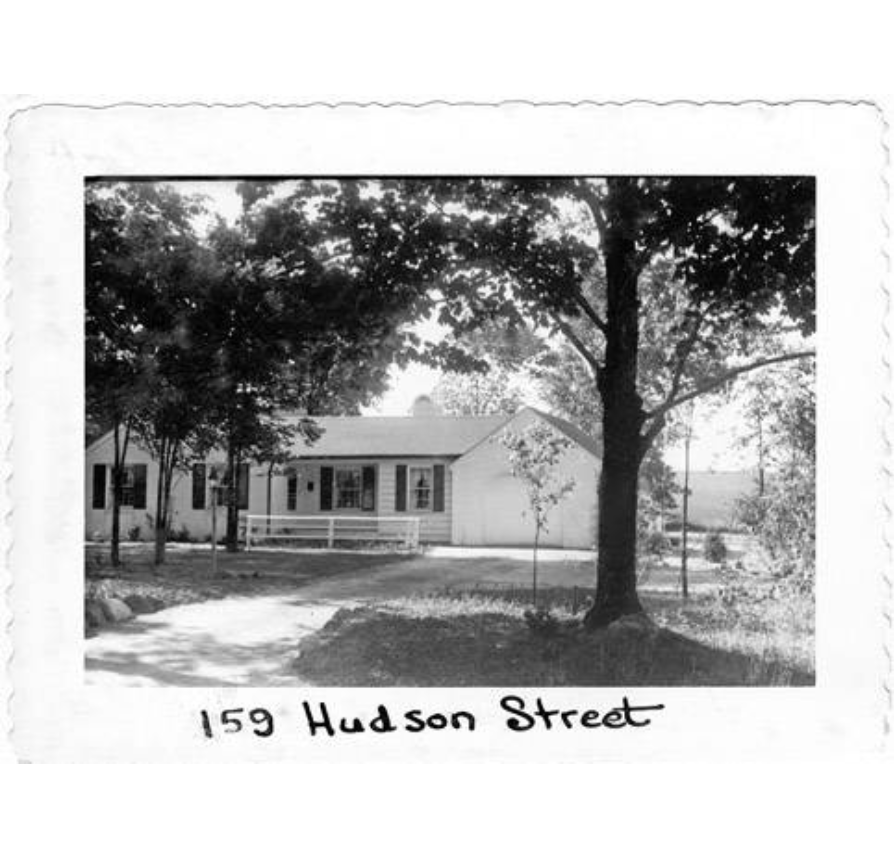 | Lumber salesman Lou F. Foster (1883-1955) and his wife pianist Agnes "Rusty" Foster (1887-1970), once lived in this circa 1936 home. Agnes studied music in Cleveland and Germany and played piano regularly at Hudson's First Church of Christ Scientist. Lou was a quiet, unassuming man whose "spirit was woven into the fabric of the Hudson community," according to his obituary. | Summit Memory | |
166 Hudson Street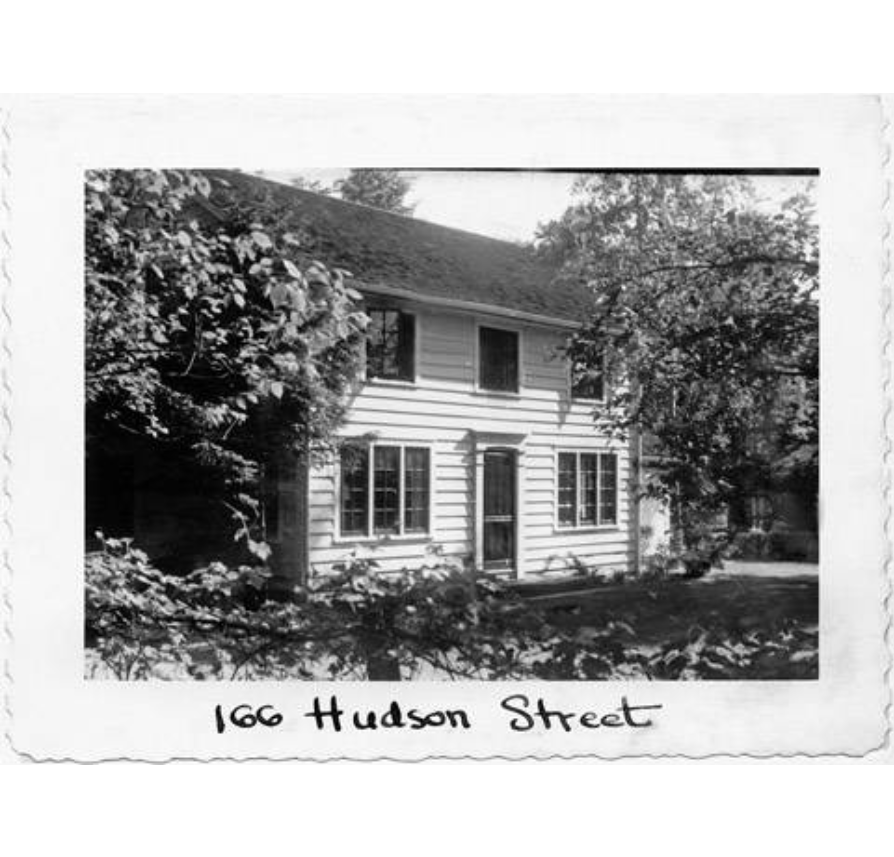 | This 1930s home once belonged to Thomas T. Seelye (1897-1971), an employee of Standard Oil Co. in Cleveland. Before he enlisted in the army during World War I, he was a volunteer ambulance driver for the Red Cross in France. | Summit Memory | |
167 Hudson Street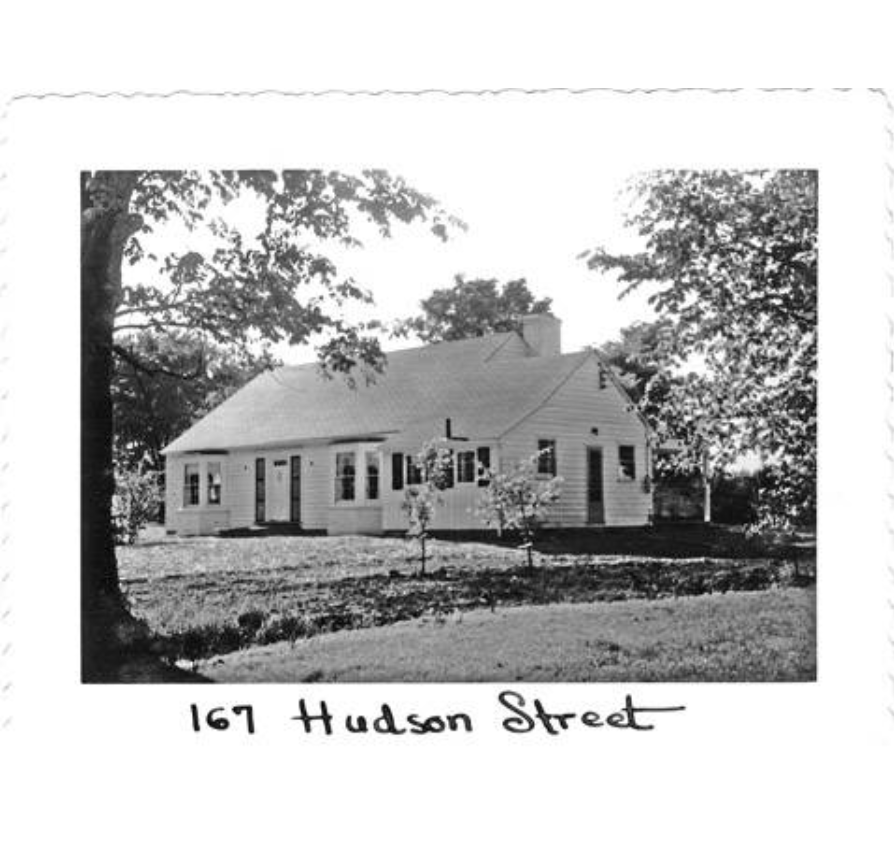 | This 1920s home was once occupied by John Howland Harris (1910-1975), one-time member of the Hudson board of education and village council. | Summit Memory | |
168 Hudson Street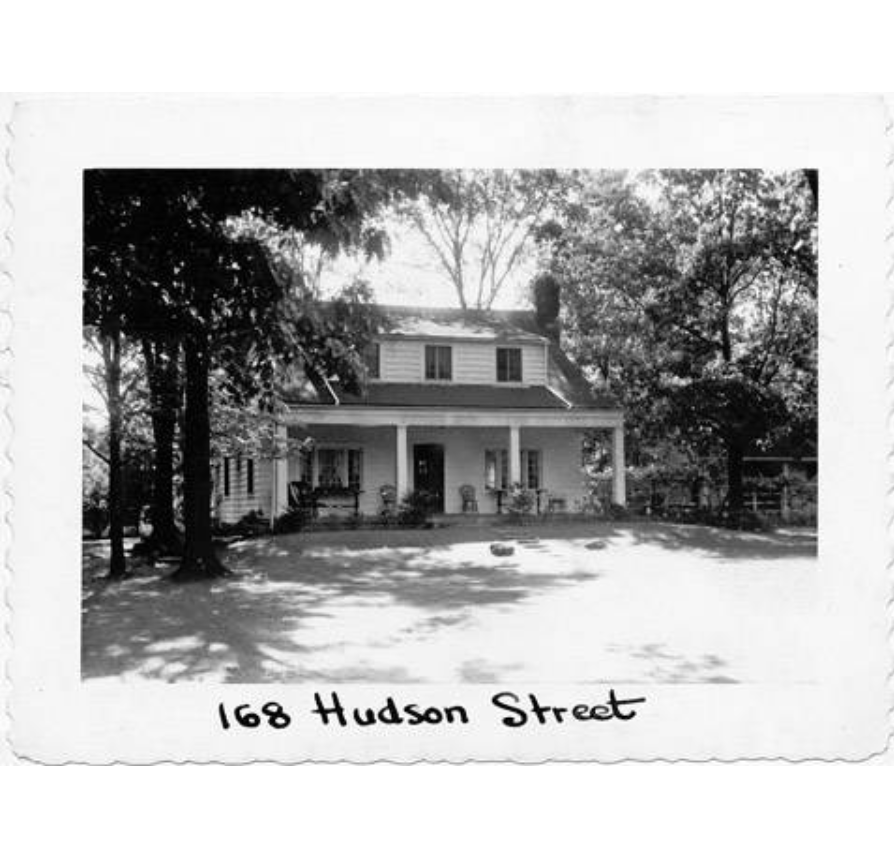 | This circa-1908 home was once occupied by Katherine Nye Gray (1893-1981) and her husband, Neal Gordon Gray (1886-1957). Neal Gordon Gray served as captain and adjutant of the American Expeditionary Forces 135th field artillery during World War I. Katherine worked for the Washington, D.C., YMCA during World War I. During World War II she helped start USOs in Cleveland. Katherine also was a longtime board member of the Hudson Library & Historical Society. Founder of Crystaloid Electronics Co. in Hudson and poet Irwin T. White (1908-2002), who was once called the "Poet Laureate of Hudson," also lived in this home. | Summit Memory | |
181 Hudson Street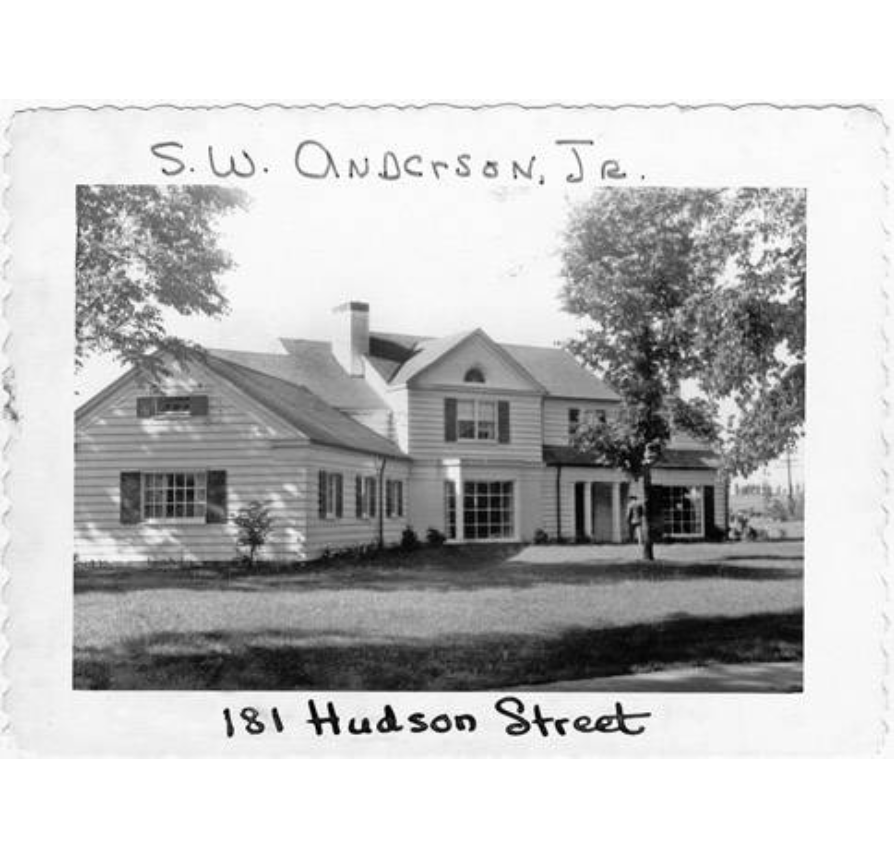 | This late-1940s home once belonged to Selden William Anderson (1911-1998), vice president of Anderson Rubber Co. in Akron, Ohio, and one time assistant fire chief for Hudson. The Anderson Rubber Company manufactured the first balloons in the United States in 1907. | Summit Memory | |
185 Hudson Street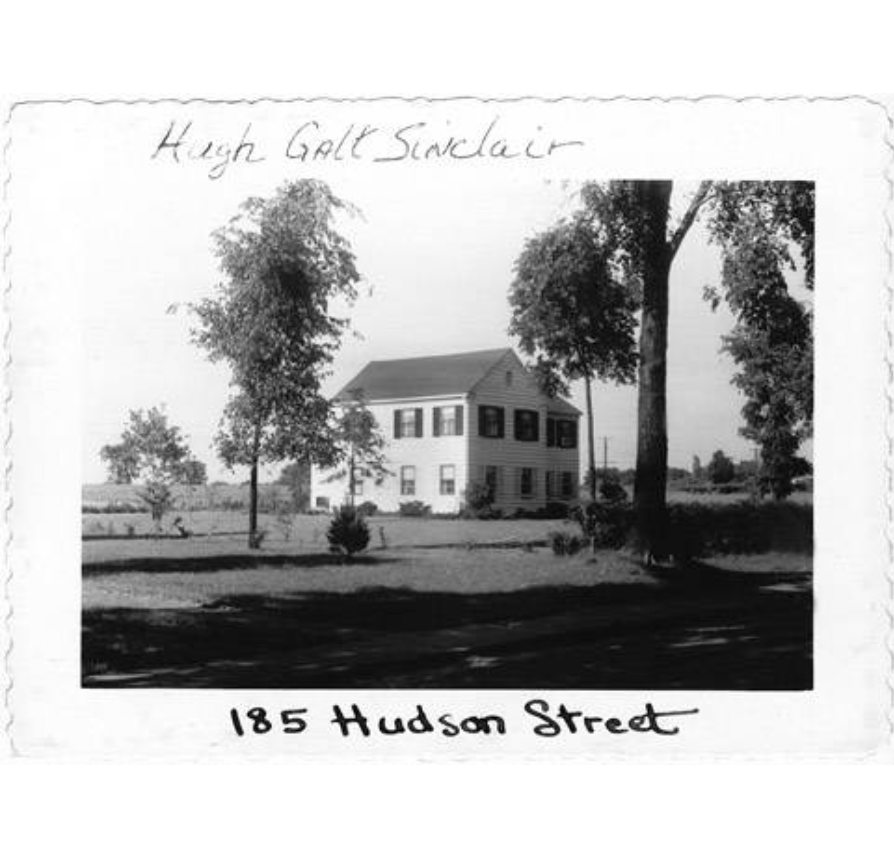 | Former Goodyear advertising manager Hugh Allen Galt Sinclair (1905-1972) once occupied this late-1940s home. Sinclair, who was born in Glasgow, Scotland, moved to Hudson in 1948. | Summit Memory | |
188 Hudson Street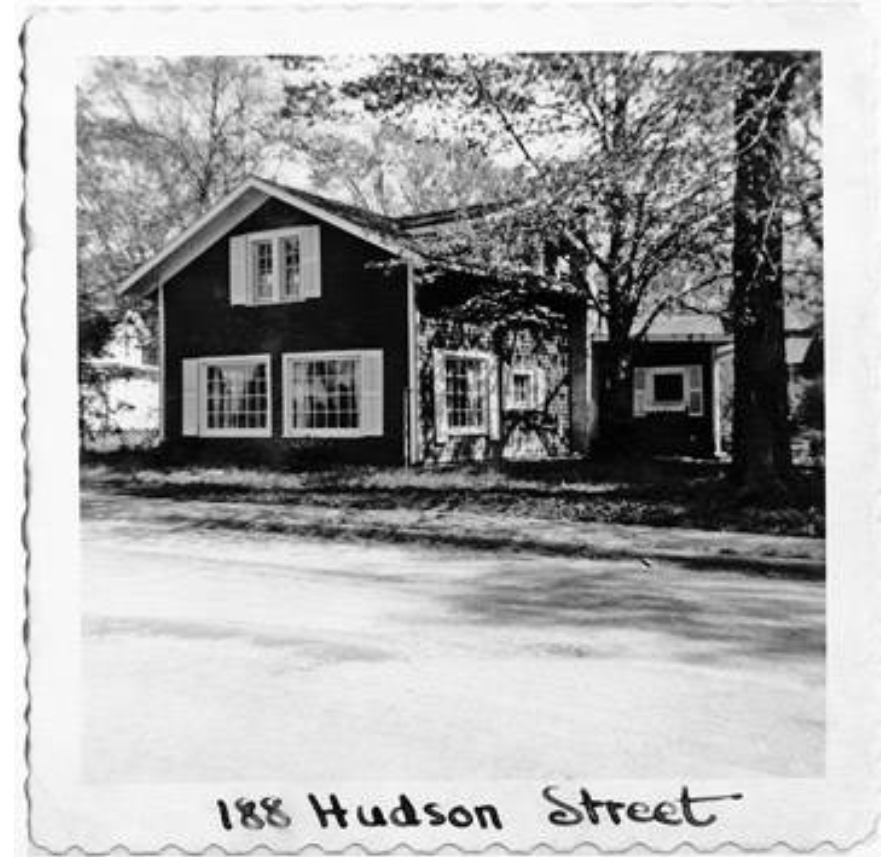 | Andrew Barclay Meldrum III (1915-2004) once occupied this late-1920s home. Meldrum, a veteran of World War II, was a longtime advertising executive who was very active in the community. He served as a member of various organizations, including the village planning commission, the Hudson Library & Historical Society and the village charter commission. He was also a trustee of Western Reserve Academy. The core of this home was previously a garage located at 233 Aurora St. | Summit Memory | |
| 2357 Hudson-Aurora Road Maplewood Farm | Built by Horace Metcalf, son-in-law of Hudsons first physician, Dr. Moses Thompson, the farm remained in the family until 1928. It was bought by Dr. Fred Herrick, who leased it to different tenants. In 1933, Dr. Herrick divided most of the property for development and sold the house in 1950. | Hudson Heritage Association | |
| 2712 Hudson-Aurora Road Hinsdale-Brown Farm | Hemon Hinsdale and his wife, Lucy, appear on tax documents in 1823. Hemon died in 831. At the time, Owen Brown owned the adjacent farm on the road, Spring Hill. His son Jerremiah married Hemon and Lucys daughter, Abi, and lived in this Hinsdale family home. After the death of Owen Browns second wife, he married Lucy Hinsdale in 1841. Tax records show a succession of Hinsdale owners until 1923. until it was bought by Mars Wager Realty Company with a plan to create the next Shaker Heights. The Depression changed that, and the land was farmed by Ambrose Linzell. A sawmill business behind the house was owned by Linzells son, Steven. Sadly, an accident at the sawmill in 1938 claimed Stevens life, and the Linzell family moved to Hudson Village in the early 1940s. | Hudson Heritage Association | |
| 2727 Hudson-Aurora Road Whedon-Hinsdale House 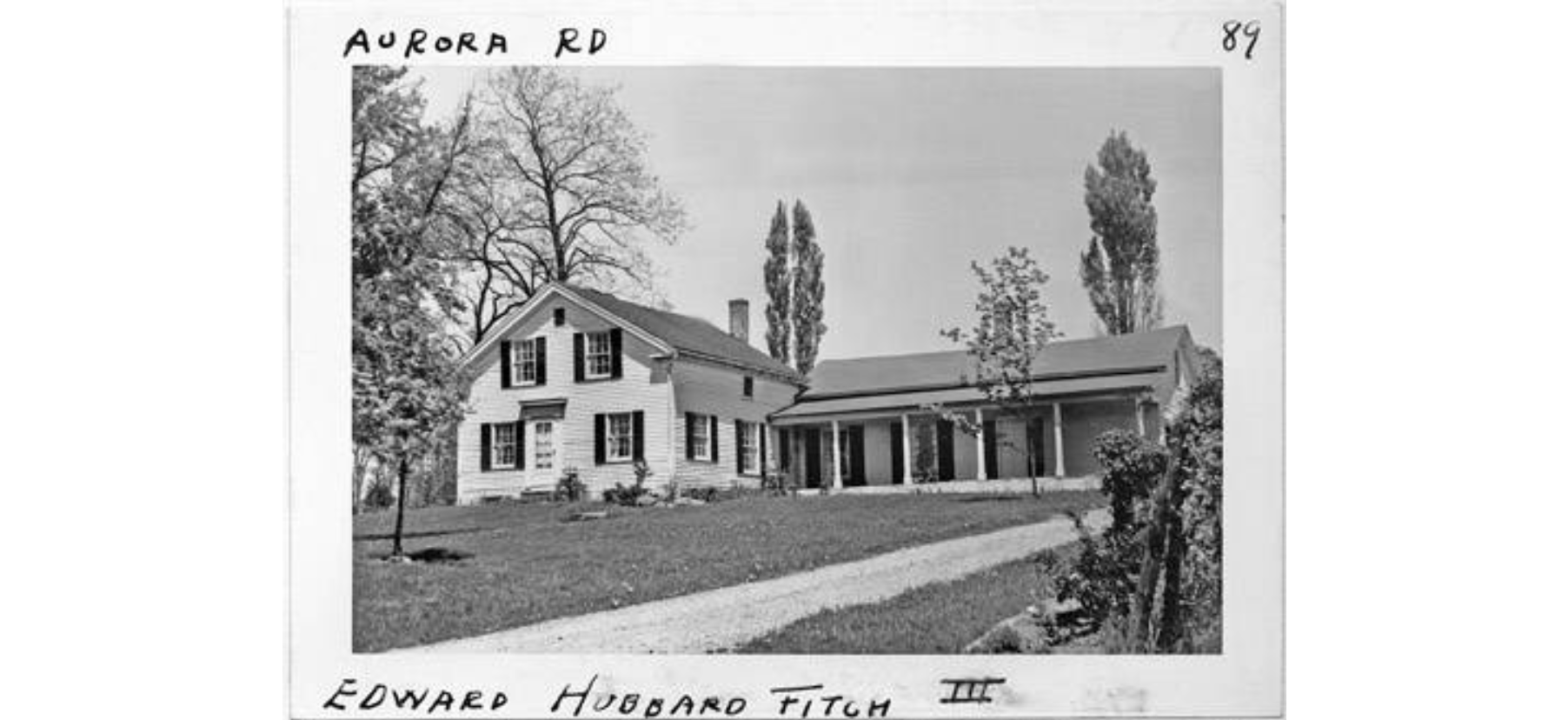 | This late-Colonial Connecticut-style farm house, circa 1823, was once declared the "favorite" home of Owen Brown (1771-1856), father of abolitionist John Brown (1800-1859). Owen was "stationmaster" on the Underground Railroad in Hudson. Wide plank floors still remain in the upstairs. | Hudson Heritage Association Summit Memory | |
| 2827 Hudson-Aurora Road Owen Brown House (Spring Hill) 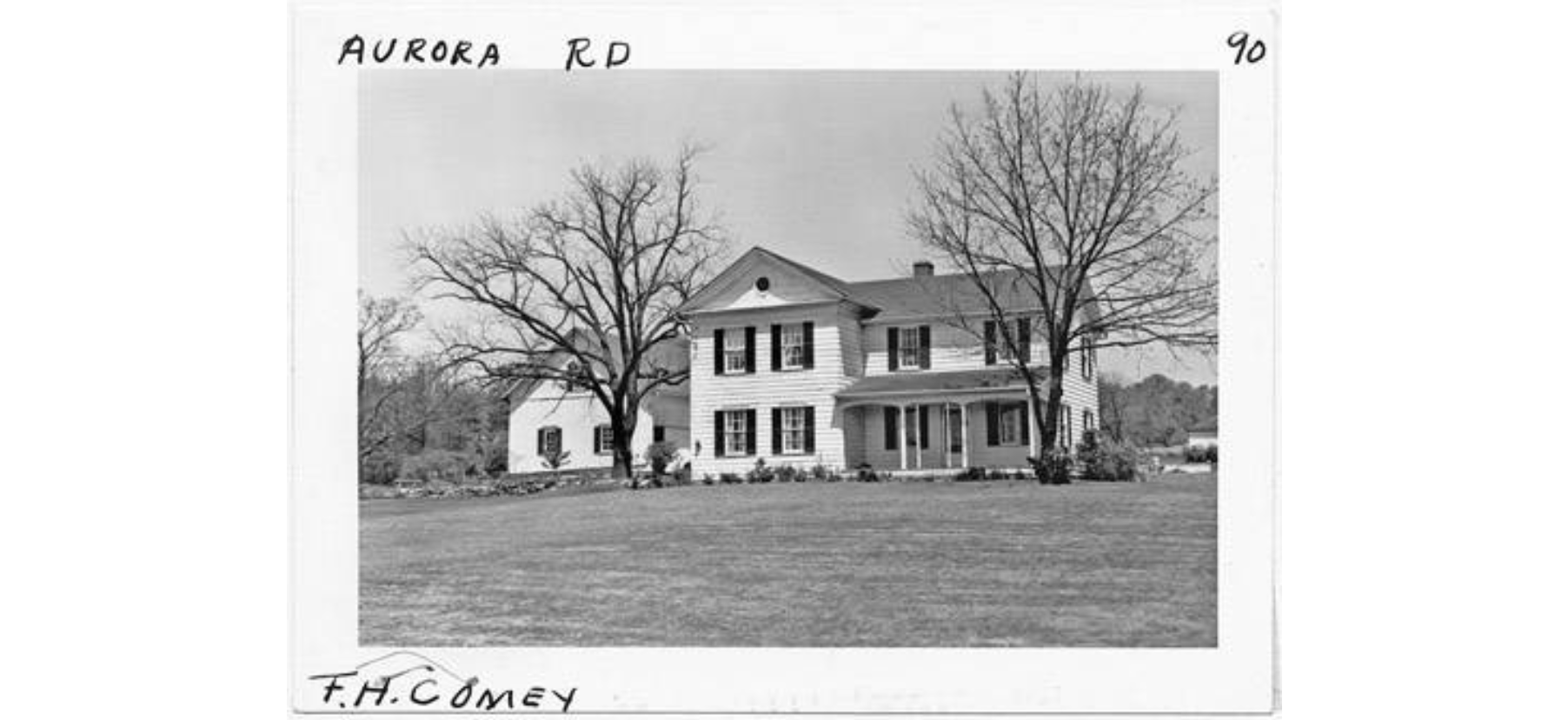 | This 1835 home was occupied by abolitionist Owen Brown (1771-1856) with his second wife, Sally Root Brown (1789-1840). Later the Knight family, publishers of the "Akron Beacon Journal", lived here. The house is typical Greek Revival with some Federal elements. At some point in its history this house suffered a fire in the front corner of the structure. Famed attorney Clarence Darrow (1857-1938) was known to have dined here on occasion. | Hudson Heritage Association Summit Memory | |
| 3007 Hudson-Aurora Road Elisha M. Ellsworth House | For over 80 years, this home remained in the Ellsworth family. Elisha and his wife, Emma, lived there until their deaths. Their daughter, Grace, and her husband, Elmer Forbush, who had farmed the Forbush Farm (Folly Farm) on Middleton Road, lived there until their deaths, and their daughter, Louise, and her husband, Morris Boyd, lived in the home from 1931 to 1961. The original house was heavily damaged by a fire on June 14, 2020, and a demolition permit issued by the city on July 8, 2020. The current owner plans to salvage the remaining historic details and reconstruct the home. | Hudson Heritage Association | |
| 1415 Middleton Road Oviatt-Curtiss House | Hudson Heritage Association | ||
| 1557 Middleton Road Middleton House | Hudson Heritage Association | ||
| 2217 Middleton Road Chamberlain-Villaneuve / Marvin Crumrine House | Hudson Heritage Association | ||
| 2487 Middleton Road Captain Lewis Clark House | Hudson Heritage Association | ||
| 3189 Middleton Road Reuben Smith Farm | Hudson Heritage Association | ||
| 36 North Main Street Baldwin-Buss-Merino House 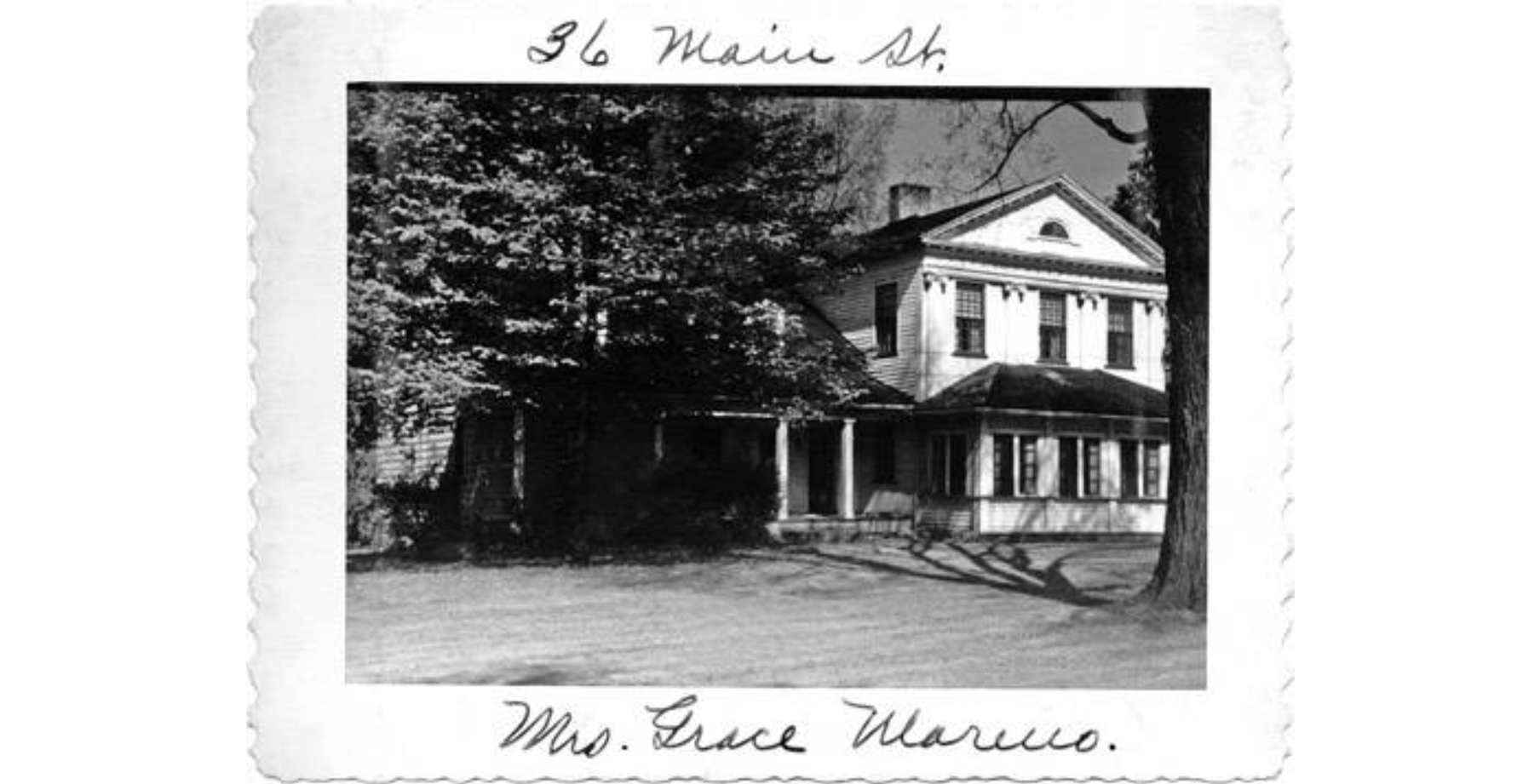 | After the death of his first wife, Mary Squire (1847-1886), Charles Buss (1845-1911) married the musically-inclined Luella "Lollie" Fowler Buss (1850-1916) and together they continued to run the Buss General Store. In 1907 they sold the store to the Carono/Merino families from the Naples area of Italy. Charles Buss was a founding board member of the Hudson Library & Historical Society. | Hudson Heritage Association Summit Memory | |
176 North Main Street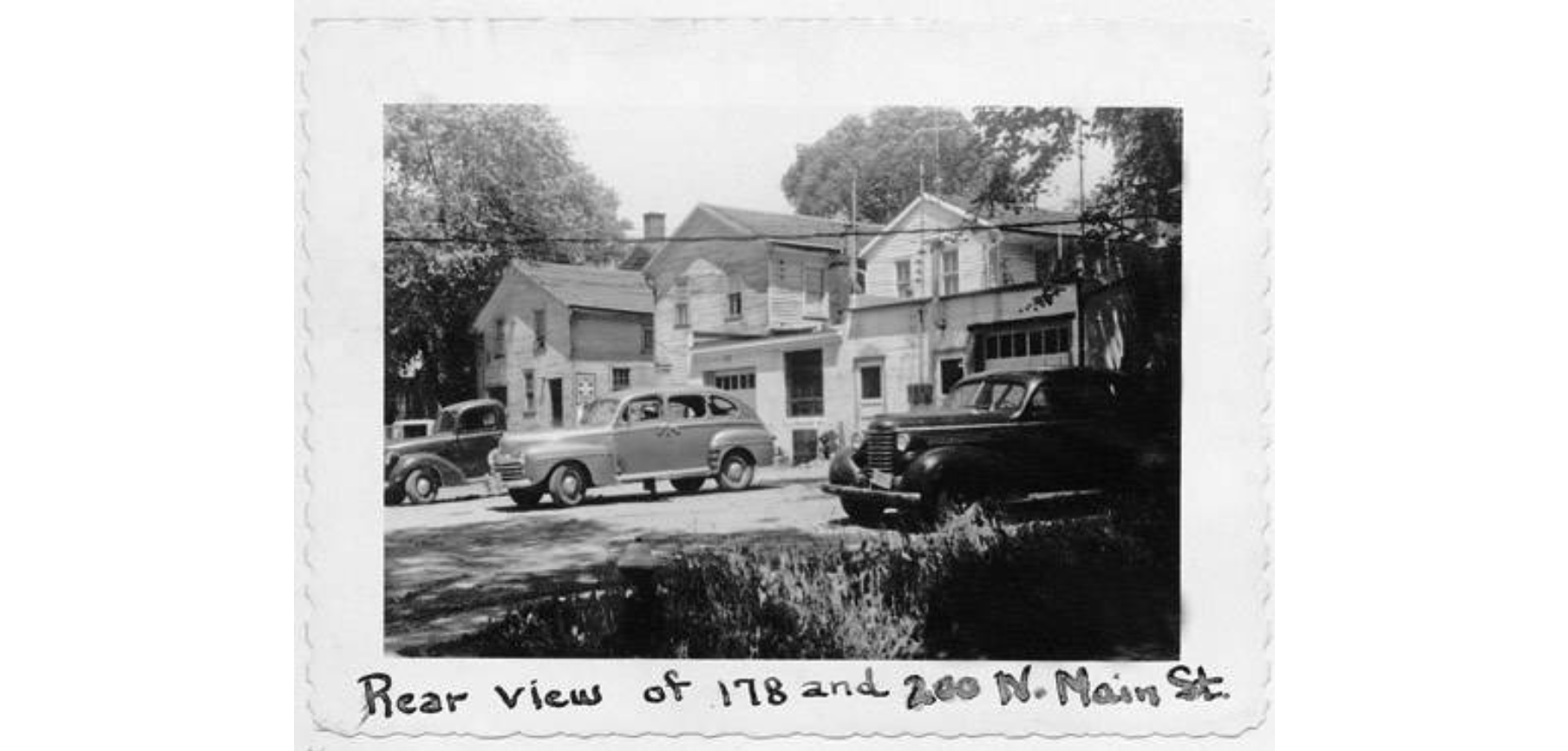 | This is one of two buildings, a home and a store, probably built by Owen Brown (1771-1856) for merchant Walter Wright (1814-1884). The 1833 store housed Wright's business and the structure next door (186 N. Main) was Wright's residence. A harness shop, several restaurants and the Village Clock Shop have at one time occupied this building. | Summit Memory | |
| 178 North Main Street Walter Wright House and Store 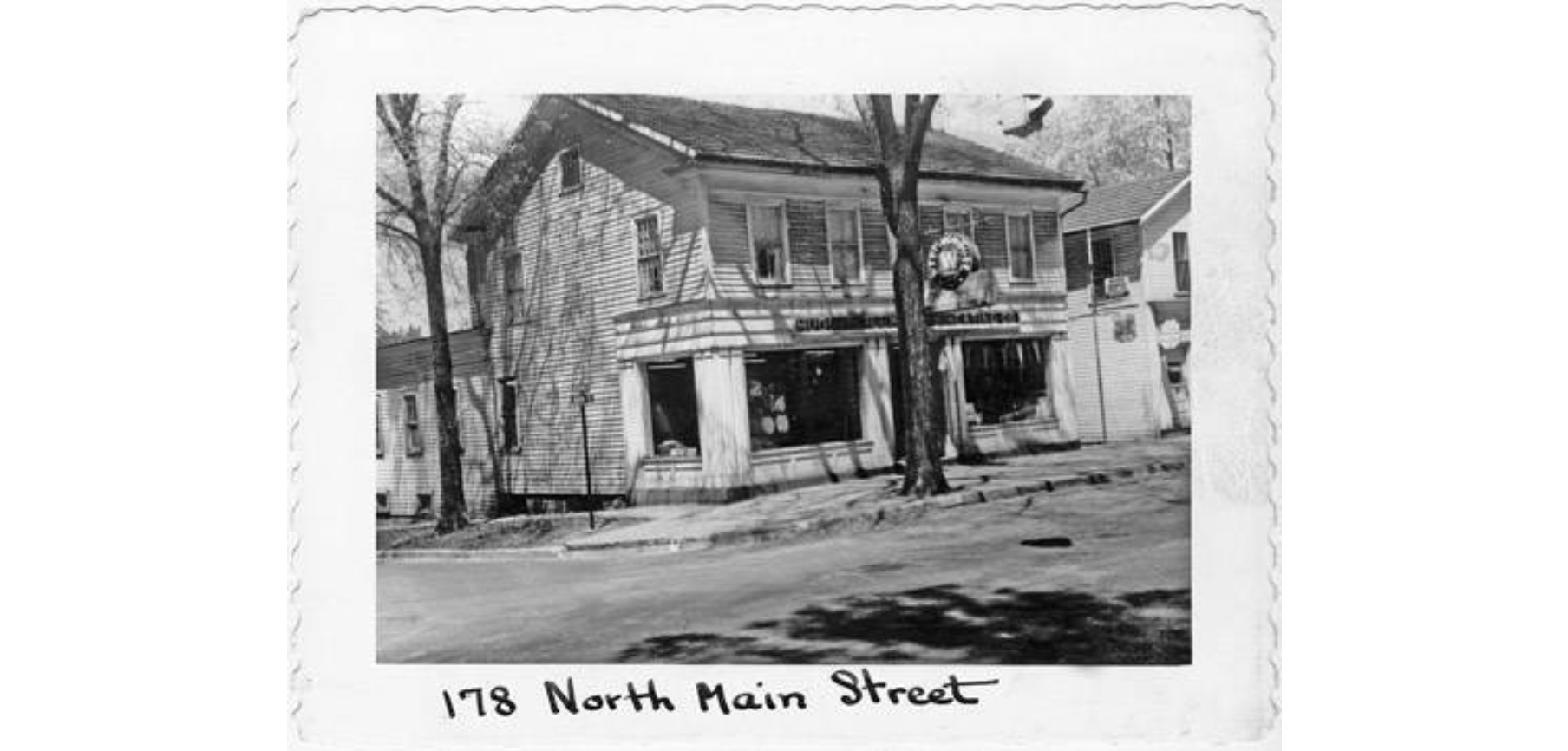 | Tracing tax and deed records from 1846, this was originally built as one of four houses by Owen Brown. According to David Hudson Jr.s journal, the house was completed on August 17, 1933, for Walter Wright and Co. Merchandise and Exchange. Business records indicate ongoing financial losses, and by 1840, Walter Wright no longer appears on the census. However, in May of 1840, J.W. Selby is advertised in the Ohio Observer as proprietor of a cash and carry dry goods store at this location until. Eventually Brewster bought the property from Brown and operated the store until 1850, moving the merchandise to the already established Brewster Store. F.W. Brunnell bought the property in 1853 and rented it until it was bought by John Chapman in 1857 and later sold to the Oviatt Family in 1889, who owned it through 1910. The store has been a restaurant, an appliance store and an antiques store. | Hudson Heritage Association Summit Memory | |
186 North Main Street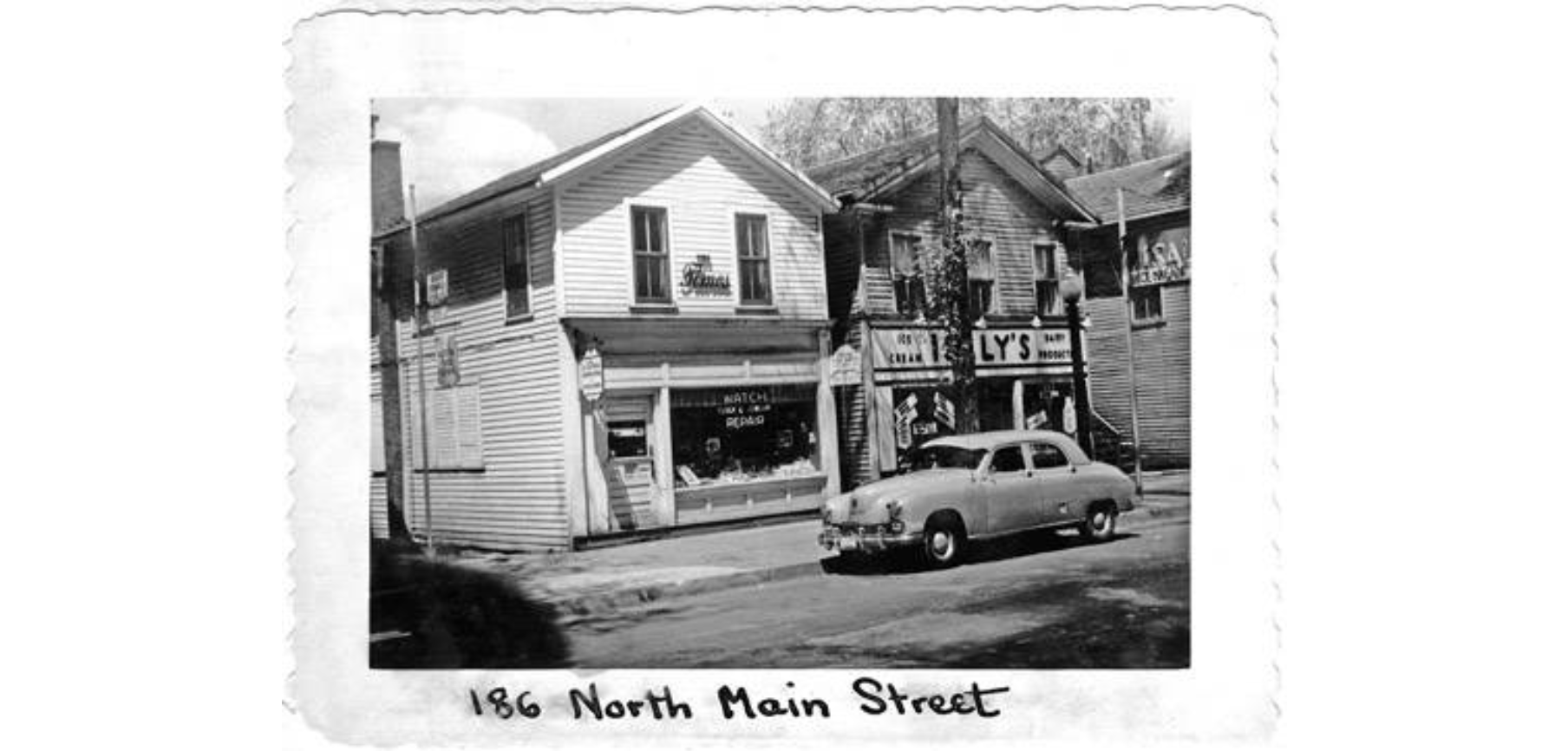 | The building at 186 North Main St. (left) is modern, built around 1928, and the building at 190 North Main St. (right) was built in 1842. An 1834 structure used to exist at 186 North Main St. was destroyed by fire. The building was originally built by Owen Brown (1771-1856) for merchant Walter Wright (1814-1884), who lived in the Greek Revival building. Very little is known about Wright, but we do know that he stole the heart of Hudson's own Mary Cobb Wright (1845-1913), for she left her pioneering family in Hudson to marry and follow Wright back to his home town of Ogden, New York. | Summit Memory | |
| 190 North Main Street Hine-Farrar Shop 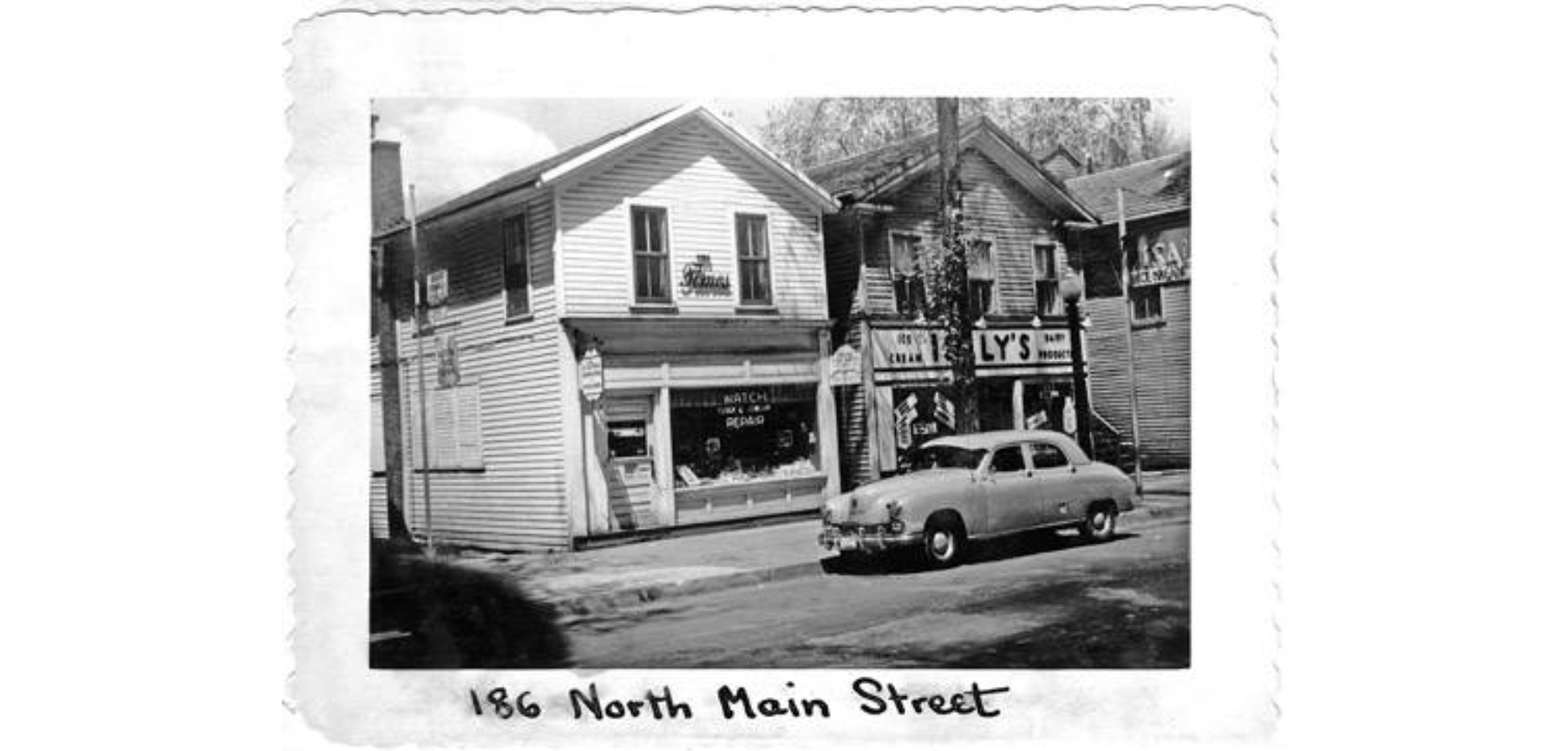 | Tinsmith and town constable John Nutting Farrar (1819-1894) operated his tin shop at 190 North Main St. | Hudson Heritage Association Summit Memory | |
| 200 North Main Street J.B. Whedon Store 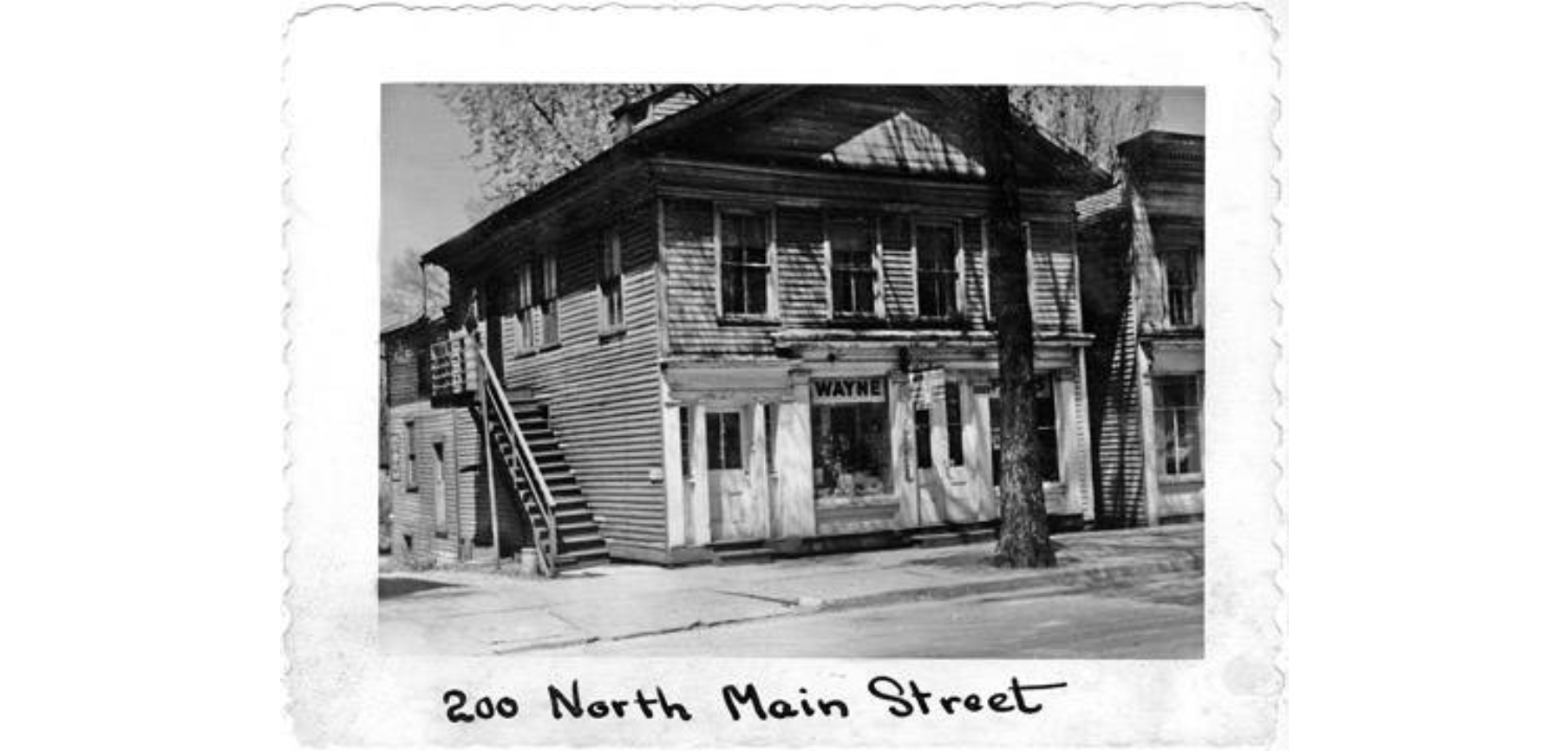 | The J. B. Whedon store was built in 1834 for postmaster and merchant John B. Whedon (1807-1861). It is likely that Whedon operated his business here and lived elsewhere. Later Sumner Wilhelm (1886-1972) and family relocated Wilhelm Feed Store here after the feed store they operated and owned in Portage County became part of the Federal Arsenal in Ravenna, Ohio. Welhelm was a life member of Hudson Rotary and a Granger for many years. | Hudson Heritage Association Summit Memory | |
| 201 North Main Street Hine-Fowler House 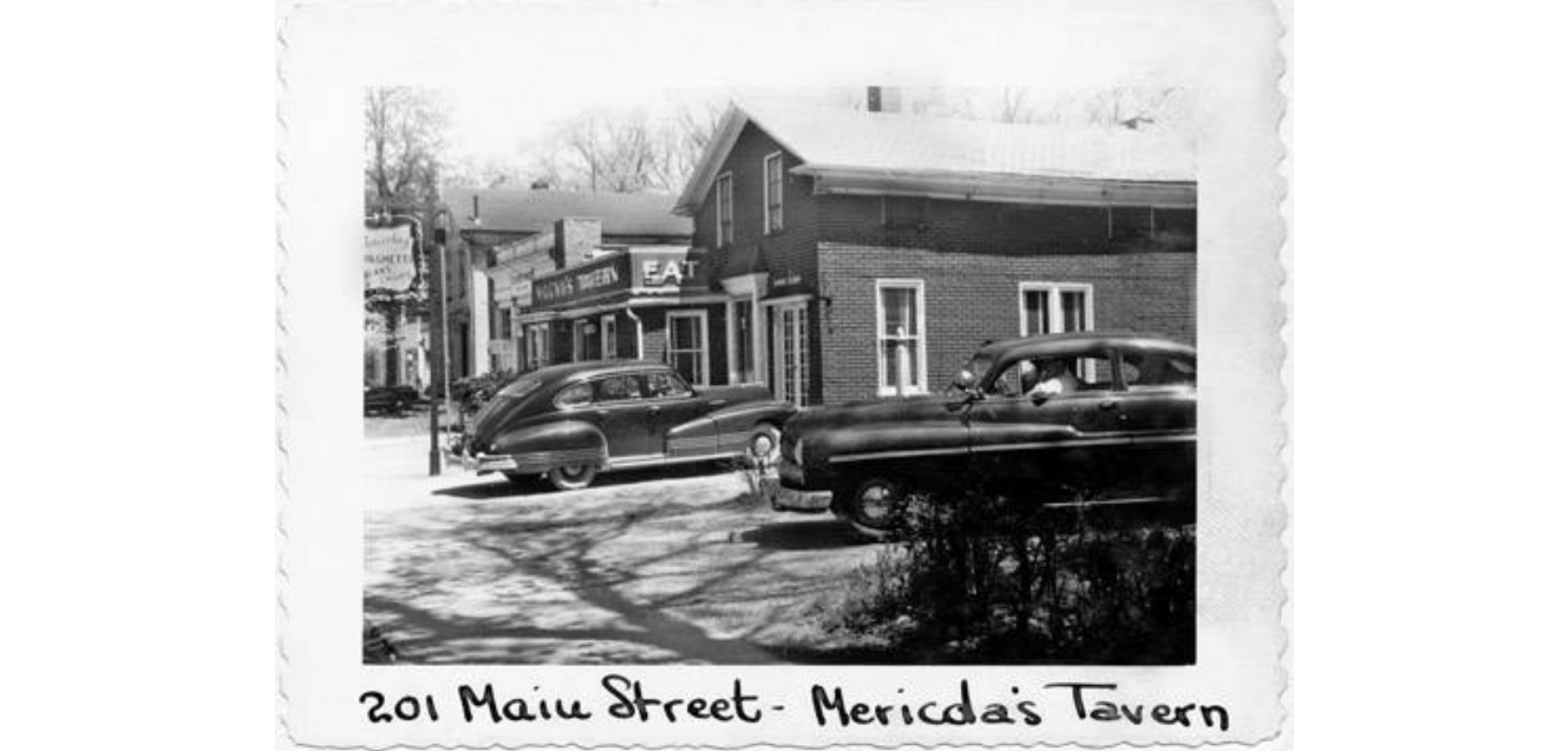 | John Hine built this 1840 Greek Revival home. Little is known about Hine except that he probably was one of the first individuals to get divorced in Hudson. John's wife Melissa Miles Hine Hewitt first filed for divorce in 1842; her later petition filed in 1845 cited "adultery, extreme cruelty, and gross neglect of duty" as causes. In 1845 John Hine sold the property to Elvira Fowler (1824-1902). Her husband, Chauncey Fowler (1820-1873), was a saddle and harness maker. Elvira and Chauncey's grandson, Sherman Fowler Crawford (1884-1970), who later became a postmaster of Hudson, also lived here. The Fowler family owned the property until 1910. During the 1920s the building was a bus depot. In the 1940s it was a tavern. In the 1950s it housed offices of real estate agents, a lawyer and an insurance agent. In the 1960s it was a clock shop and an antiques store. | Hudson Heritage Association Summit Memory | |
| 202 North Main Street Noonan Shops 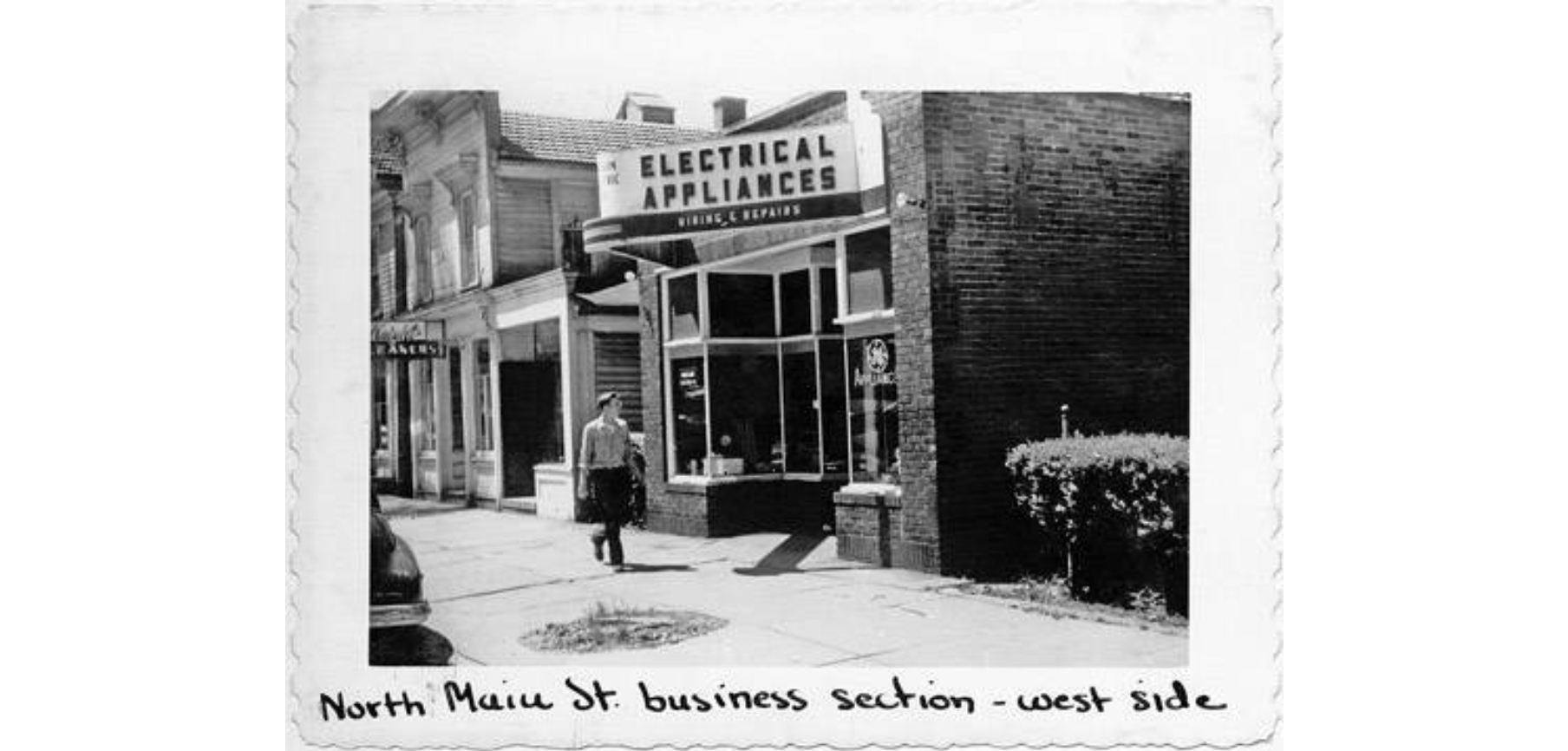 | Hudson Heritage Association Summit Memory | ||
205 North Main Street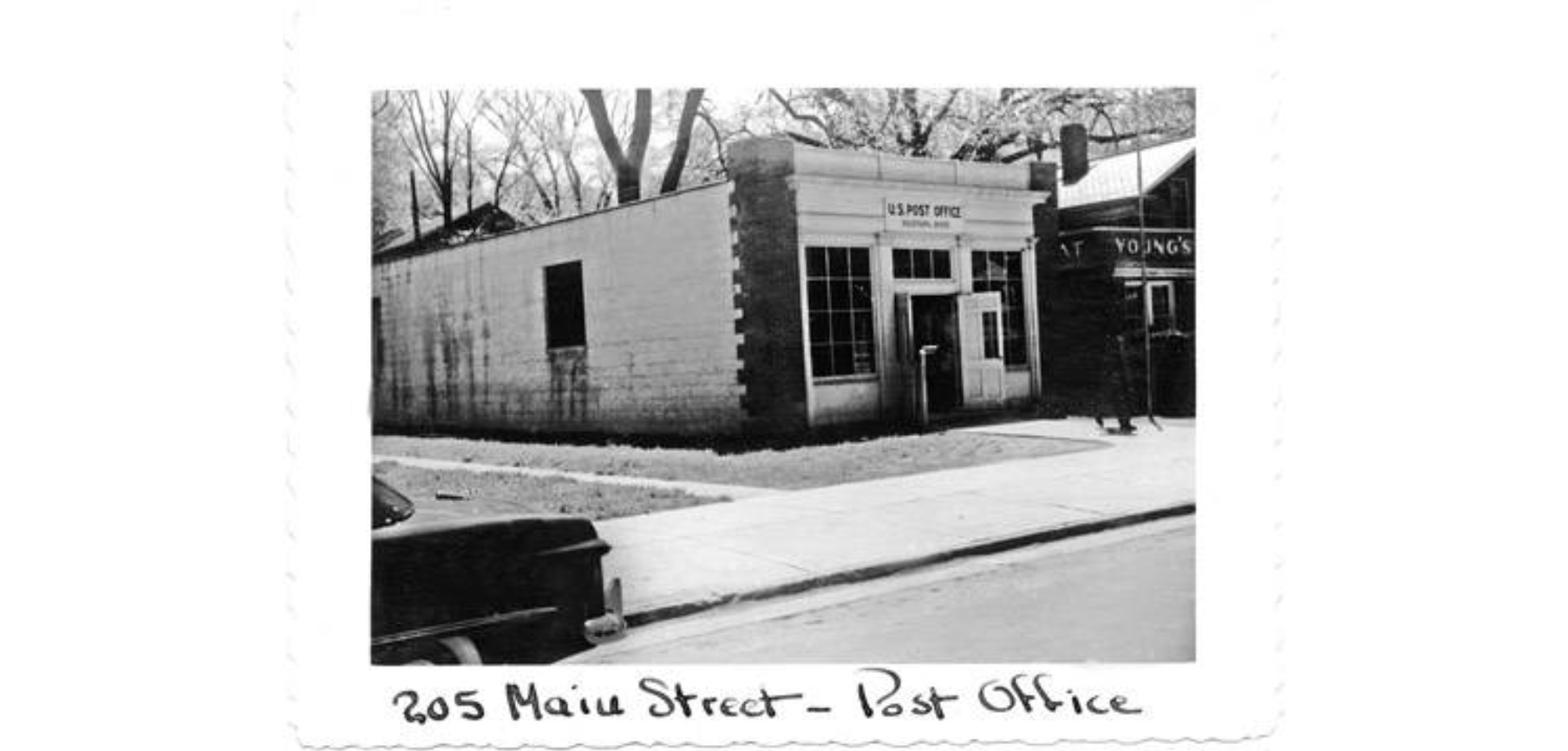 | The Hudson post office was founded on Nov. 15, 1804, and was located in the home of town founder David Hudson (1761-1836), the town's first postmaster. Beginning in 1828, the post office moved into at least six different locations on Main Street before moving in 1946 into this building, built by Stafford Sprague (1903-1968). The post office moved again in 1959 to 96 Main St. In 1997 the post office moved to Ravenna St. | Summit Memory | |
| 219 North Main Street Wooden-Farrar House 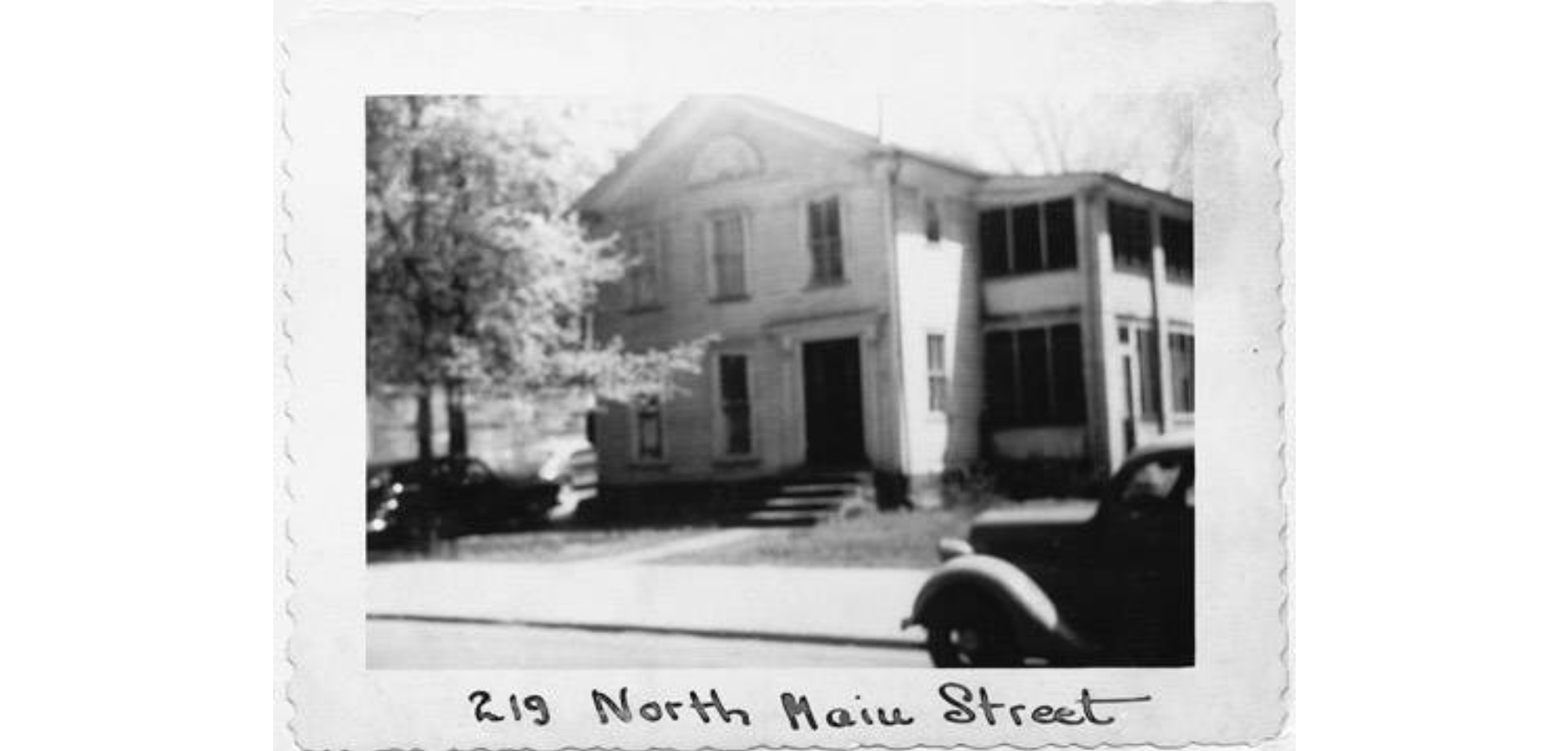 | Reuben Hine (1798-1874) built and operated a shoe shop out of this 1832 building. He later returned to his home in Connecticut. Tinsmith John Nutting Farrar (1819-1894), who owned a store across the street, purchased it in 1894. In addition to tin, Farrar also made stoves, which heated many Hudson homes at the time. A local once recalled an incident of Farrar being duped by some local boys. The boys would bring scrap metal to Farrar to receive payment and then some would steal back the same metal to receive a second payment. Civil War musician Andrew B. Brewster (1841-1898) apprenticed for a time and also boarded with Farrar. Gaylord Bishop (1824-1910), grandson of one of the original settlers of Hudson, purchased the home in 1897. The Bishop family owned the home for almost 60 years. The house has wall stenciling probably attributed to Moses Eaton, Jr. (1796-1886), the foremost American stencil artist of his time. | Hudson Heritage Association Summit Memory | |
| 220 North Main Street Titus Hand House 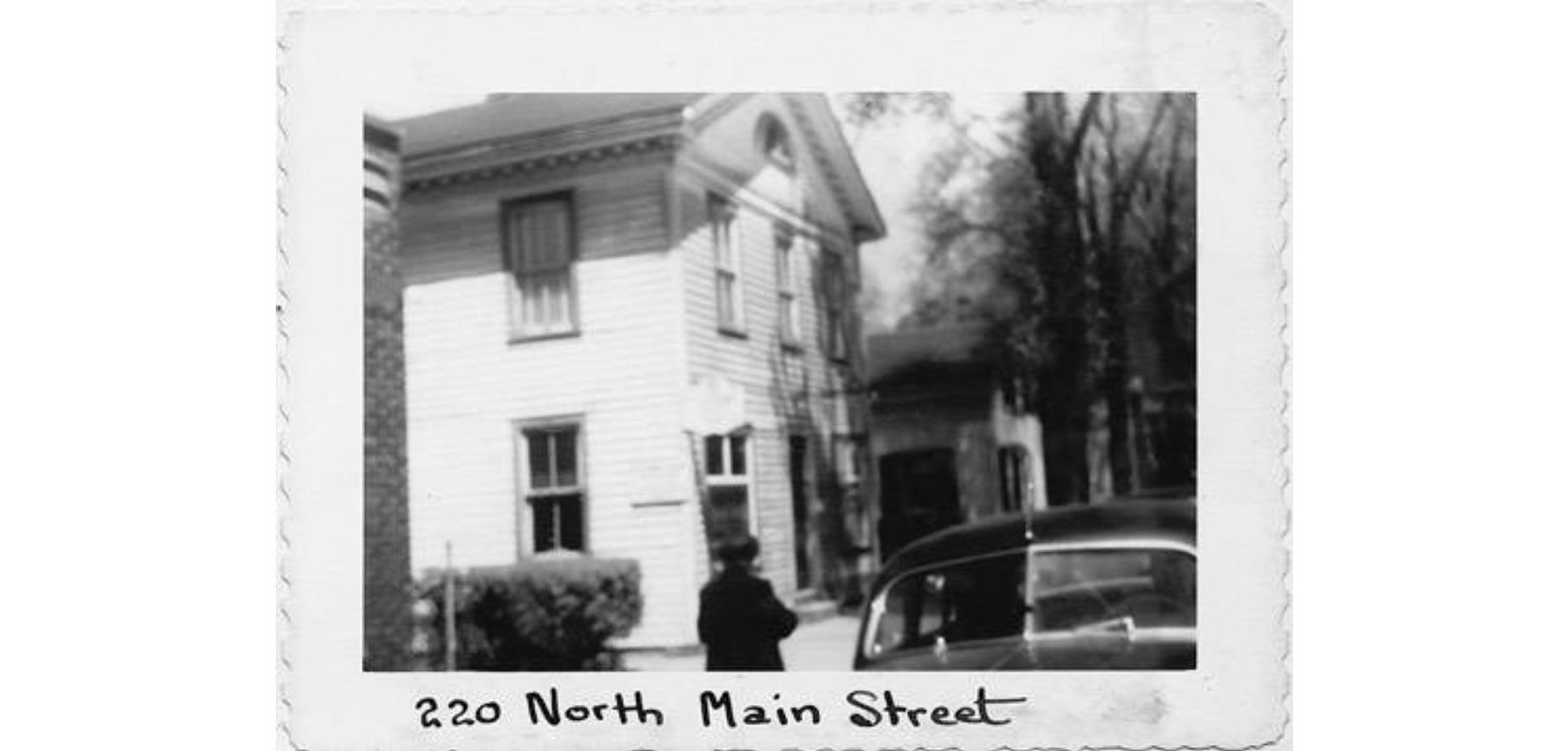 | Owen Brown (1771-1856) built this house in 1834 for his daughter, Marian Brown Hand (1811-1894), and son-in-law, Titus Hand (1806-1856). Blacksmith and War of 1812 veteran Aaron Auter (1786-1876) bought the property in 1836. Auter's son, George Auter (1823-1865) was involved in an altercation on Main Street in 1845. He was stabbed in the abdomen and subsequently fined for fighting. Former Hudson mayor George Veader (1803-1849) and his wife purchased the property in 1844. Sadly, during the winter of 1849-50, Mr. Veader and his three children died of various illnesses, forcing Mrs. Veader to sell the property to pay debts. Cornelius Campbell (1841-1902), a harness maker, bought the house at the turn of the century. | Hudson Heritage Association Summit Memory | |
| 230 North Main Street Austin-Lake House 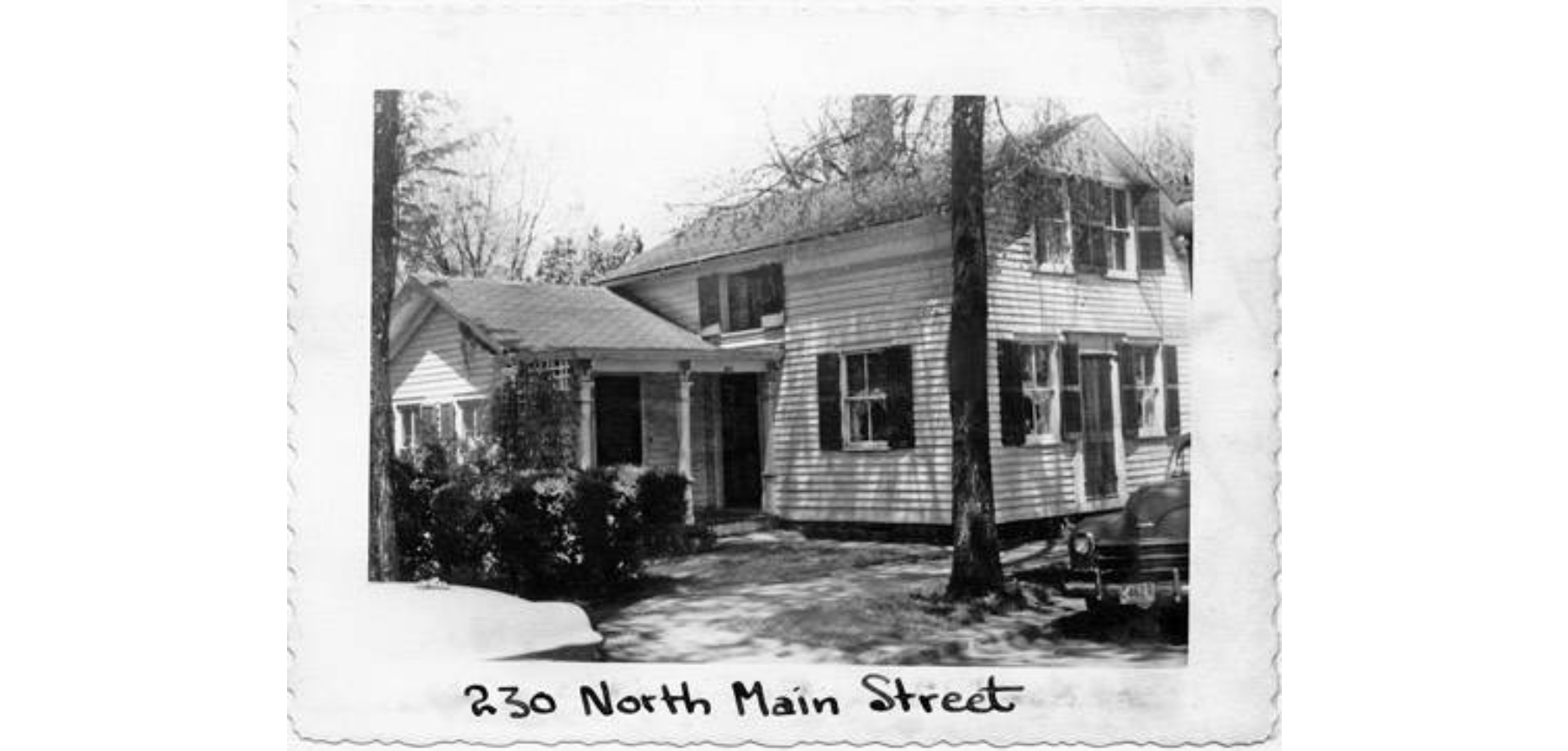 | This one-and-one-half-story Greek Revival, built in 1837, was once home to English seamstress Lucy Lake (1807-1877), who emigrated from England with other Hudsonites David Hurn (1803-1870) and William Doncaster (1808-1877) in 1833. After the death of her husband in 1840, Lucy moved to Hudson, where her half-brother, John Markillie (1814-1868), resided. She moved into this home in 1841 and lived here until her death. Annie F. Walsh (1860-1943) operated a saloon in this building in the late 1800s. | Hudson Heritage Association Summit Memory | |
237 North Main Street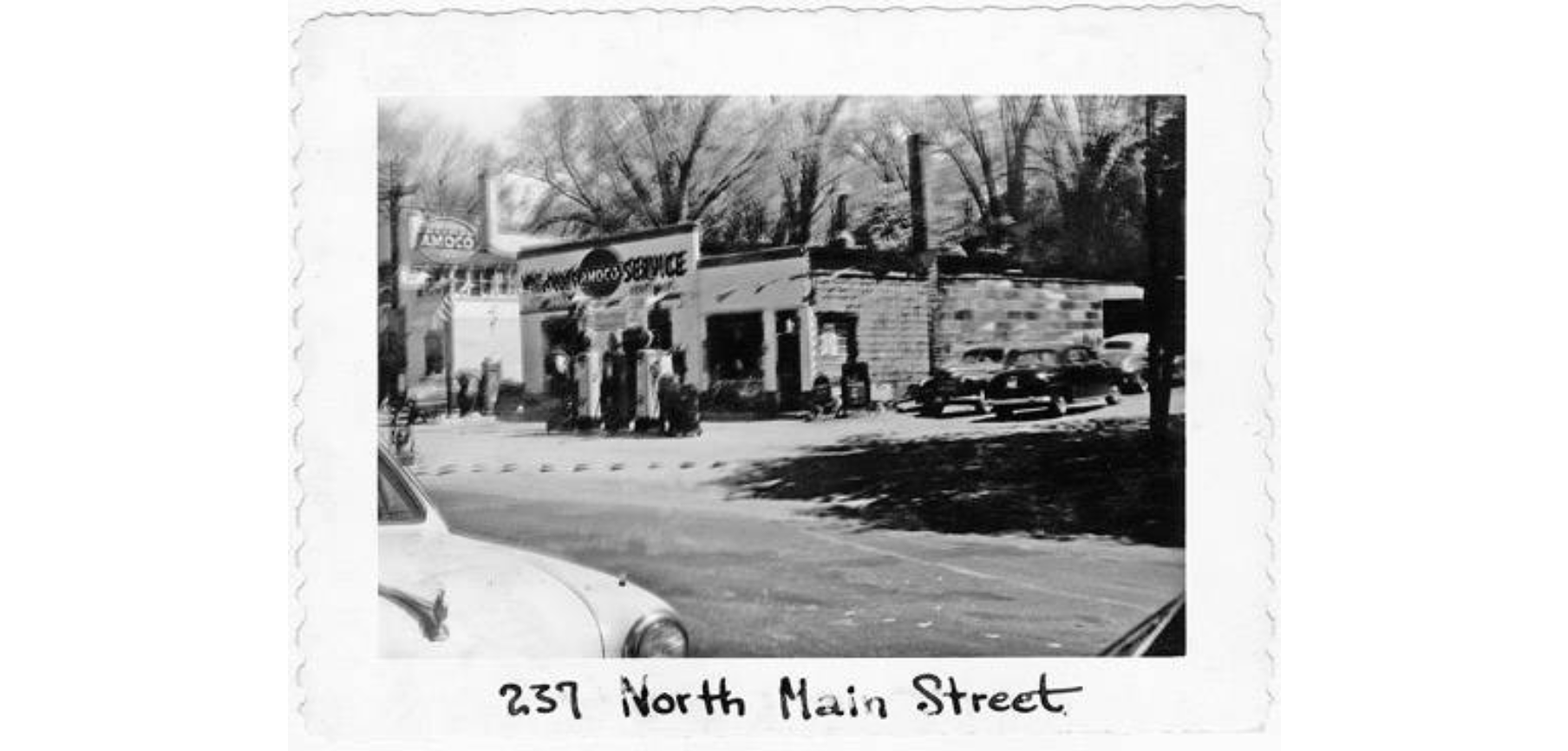 | This service station on Main Street no longer exists. Most likely, it was erected circa 1911 to house Samuel H. Post's (1884-1959) automobile business. Post served as an automobile distributor for the Overland, Willys-Knight and Oldsmobile lines and also repaired cars in his garage. The photography studio of John Markillie (1814-1868), one of Hudson's first photographers, used to sit on this property. It was demolished in 1924 to make room for an addition to Post's garage. | Summit Memory | |
| 238 North Main Street George Golden House 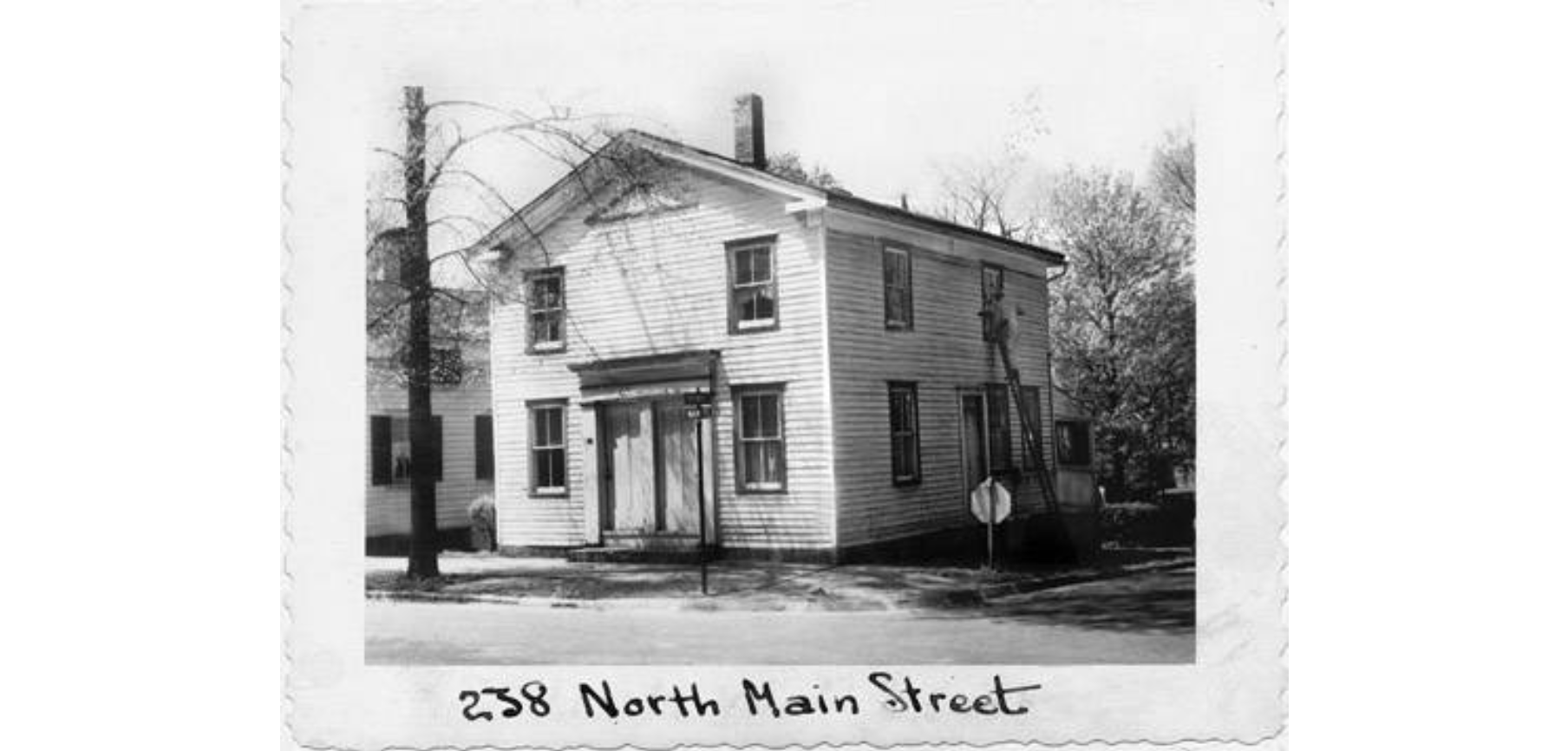 | George Golden (1808-1845) was the first owner of this 1843 Greek Revival building. Shoemaker Isaac Quay (1808-1880), who later married Golden's widow Maria (1828-1854), also lived in this home and likely used this it for his shoe shop. Quay's son, Anderson B. Quay (1833-1877), served on the side of the Union during the Civil War and fought in the battle of Chickamauga, Georgia. | Hudson Heritage Association Summit Memory | |
245 North Main Street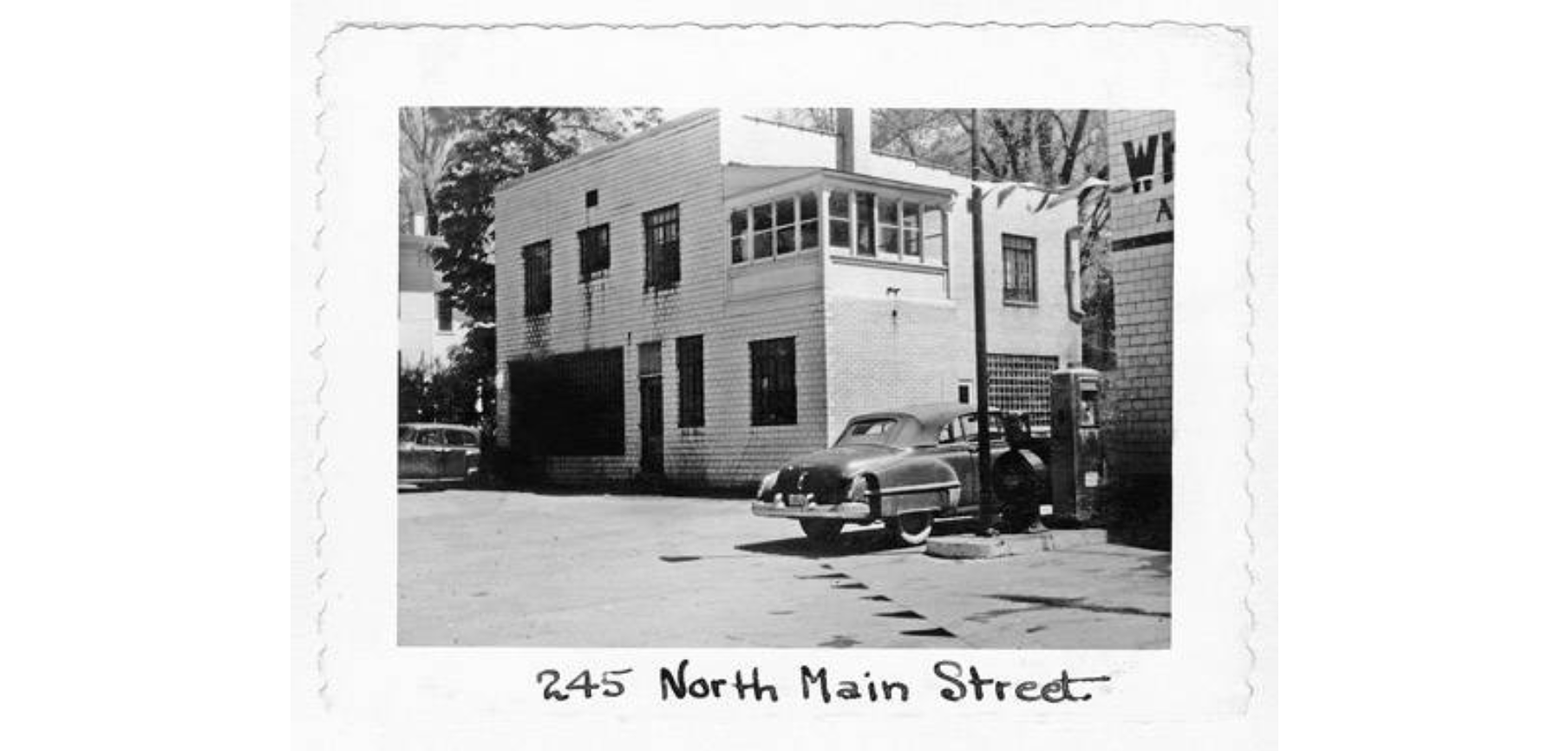 | The building at 245 N. Main Street was remodeled for the Western Reserve Telephone Co., which moved its office to this location in 1948. Telegraph operator Weldon Wood (1866-1936) founded the Western Reserve Telephone Co. in 1910. It was one of the first companies in the country to bury the telephone cables underground. Hudson was one of the first places in Ohio to have customer dialing. | Summit Memory | |
| 248 North Main Street Whedon Drug Store 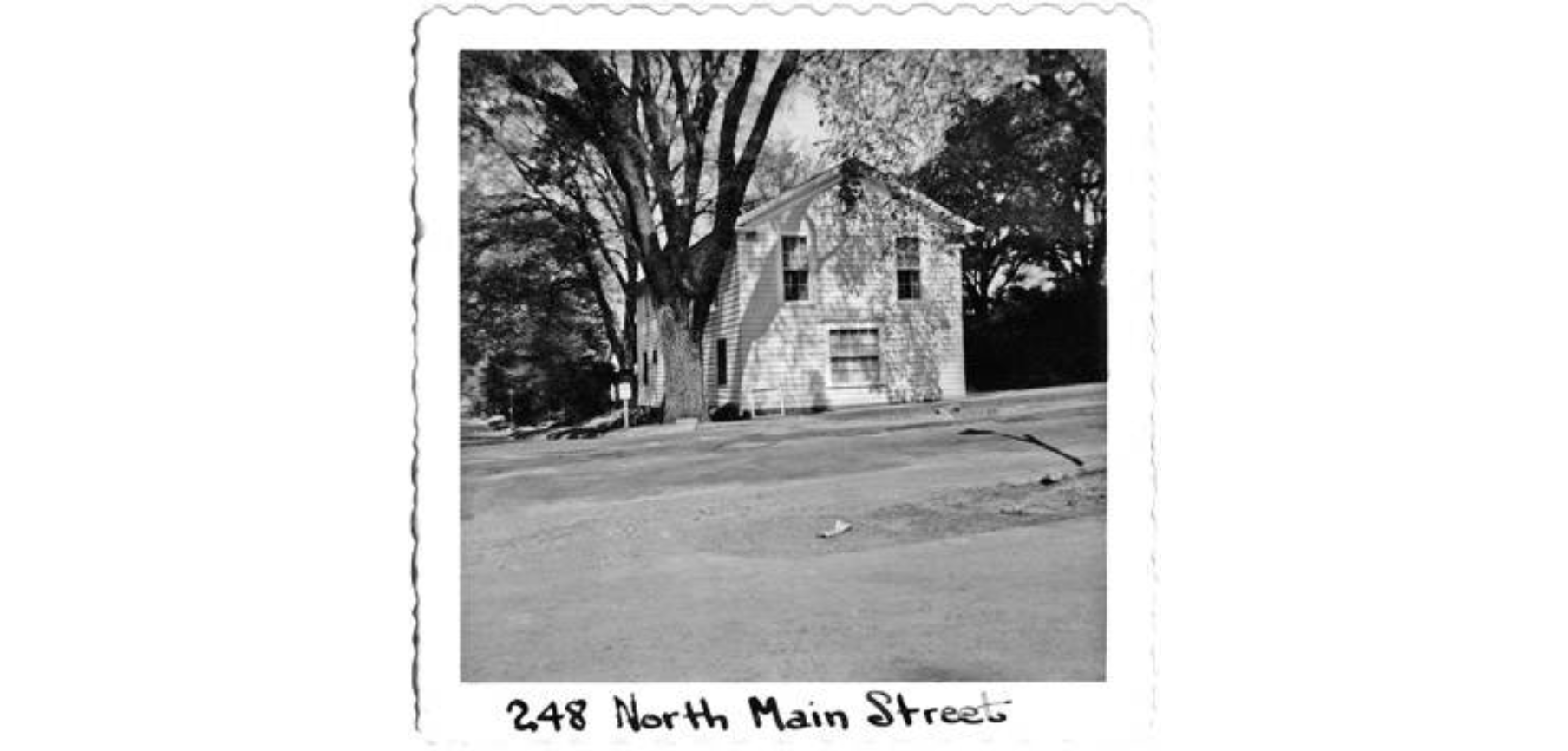 | John B. Whedon was a prominent businessman in early Hudson, son of the influential and controversial Deacon Benjamin Whedon. J.B. Whedon operated a store farther south at 200 North Main Street until 1841, when he built a new store on this site, next to his house. In the latter nineteenth century, his son carried on the business. Known as a drugstore, contemporary reports indicate that a customer could buy almost any item in the Whedon store if he could only find it. | Hudson Heritage Association Summit Memory | |
| 252 North Main Street Wayside House  | This 1833 Greek Revival known as "Wayside" was built for Benjamin Whedon (1799-1833). Benjamin sold the property to his adopted son, John B. Whedon (1807-1861), owner of a drugstore on Main Street and former postmaster. Part of this home once served as one of Hudson's first post offices. | Hudson Heritage Association Summit Memory | |
| 253 North Main Street Wadsworth House 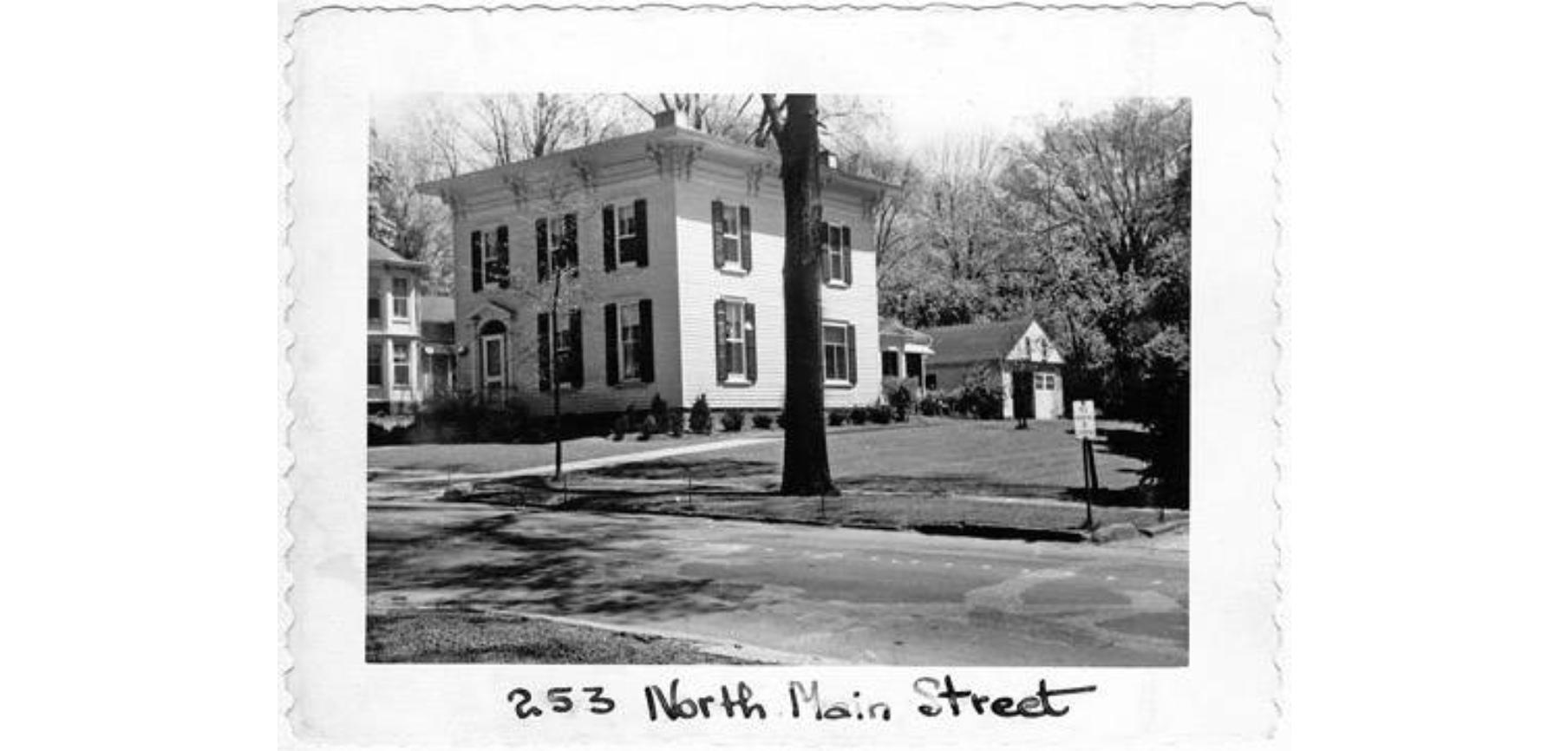 | This 1876 home is actually the second home to sit on this lot. The first, an 1830s structure, belonged to blacksmith and Civil War soldier John Bateman (1803-1863). Nelson V. Wadsworth (1821-1882), also a blacksmith, built the present home. Nelson's relative, Bennett H. Wadsworth (1845-1917), was a Civil War veteran. Blue-eyed and musically-inclined, Bennett was injured during the war. He is buried in the National Cemetery in Dayton, Ohio. | Hudson Heritage Association Summit Memory | |
| 257 North Main Street Nathan Strong House 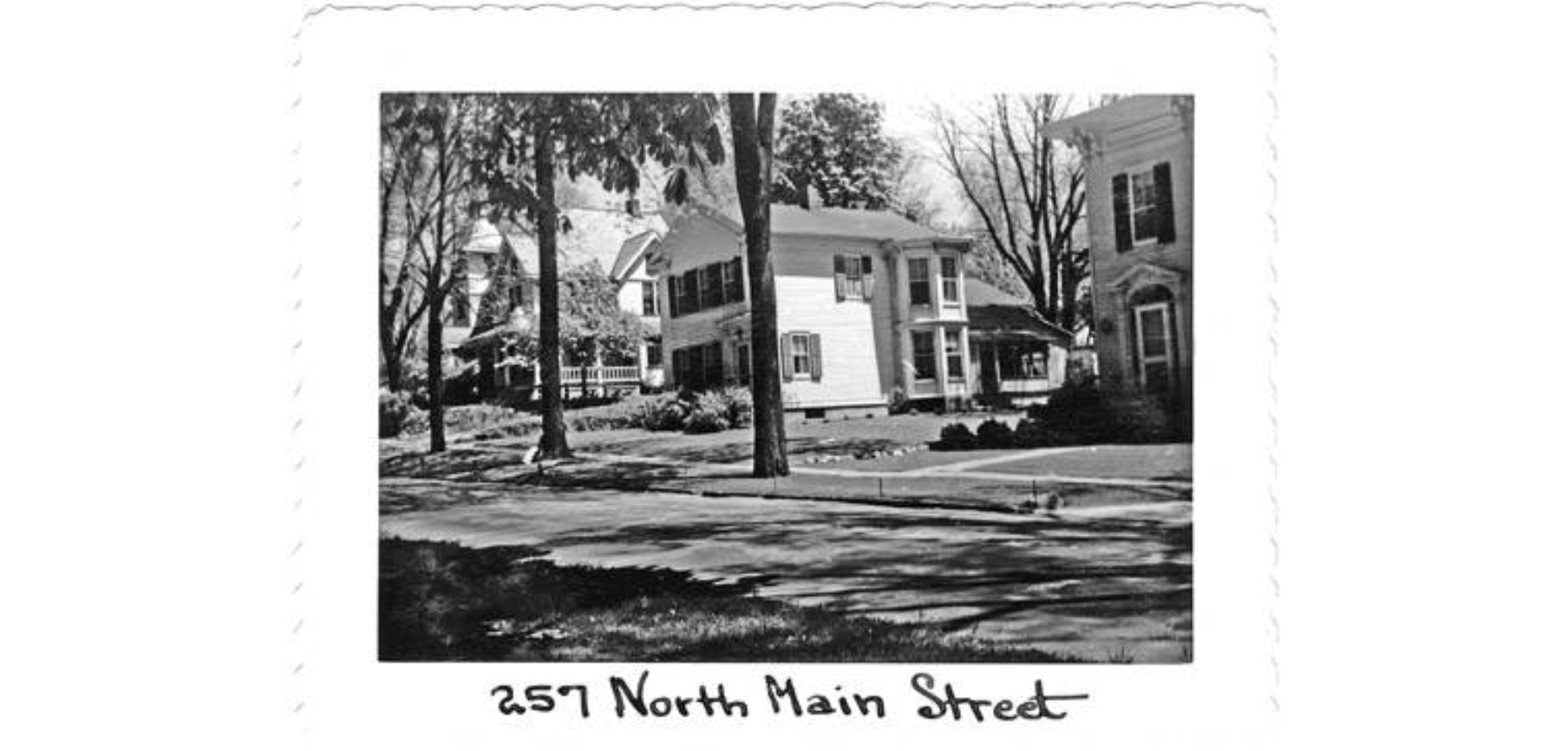 | This 1846 Greek Revival home was built by hatter Nathan Strong (1811-1852), who owned a hat shop across the street. Strong was also a deacon at the Congregational Church and a village trustee. | Hudson Heritage Association Summit Memory | |
| 258 North Main Street Brown-Strong House 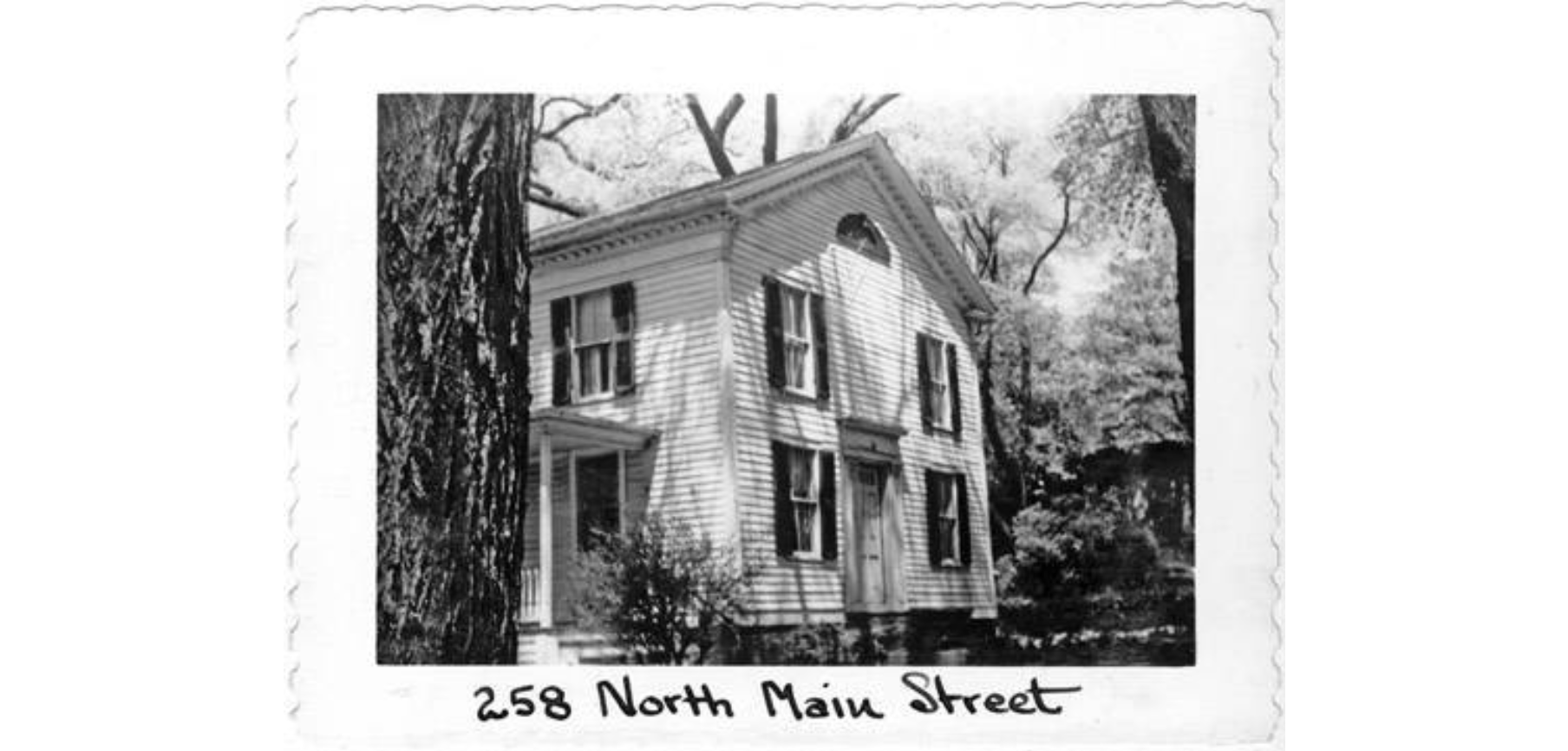 | The Brown-Strong House, built in 1834 by Owen Brown (1771-1856) for his son Oliver (1804-1858), is a Greek Revival, with delicate Federal moldings and an Asher Benjamin door surround. Like his father and brother John (1800-1859), Oliver was a tanner. Ephraim Strong (1771-1860), Brown's fellow abolitionist, purchased the house in 1836. Ephraim son, Nathan (1811-1852) had his hatter's business on the property. The foundation is tooled sandstone, with some rough sandstone in the rear and the southeast corner porch is an addition. Later owner Arthur Myers (1854-1944) was the grandson of one of Hudson's earliest pioneers-Hiram Thompson (1797-1889). Uncle to Myers and another resident was Hudsonite William C. Bell (1841-1927) a Civil War veteran of the 2nd Ohio Cavalry. Bell had two horses shot out from under him during the war. This home has served several families for multiple generations. | Hudson Heritage Association Summit Memory | |
263 North Main Street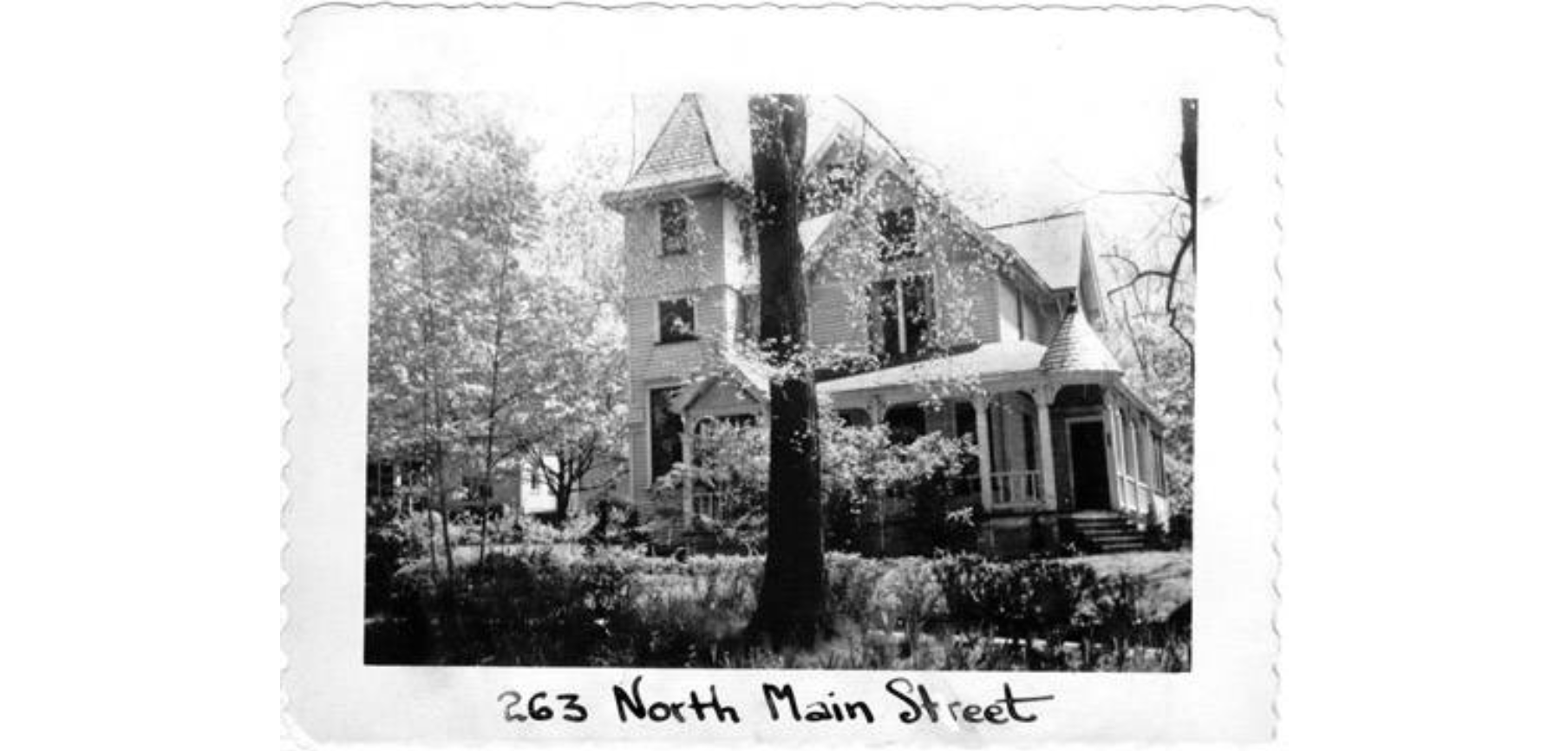 | This elegant Queen Anne with a conical roof was built in 1894 by haberdasher Henry Wehner (1862-1913). Harry T. Marks (1898-1952), who drove an eight-cyclinder Cole automobile and had the distinction of being the first Hudsonite to make a trip by airplane in 1919, occupied it in later years. | Summit Memory | |
| 264 North Main Street Van Rensslear Humphrey House 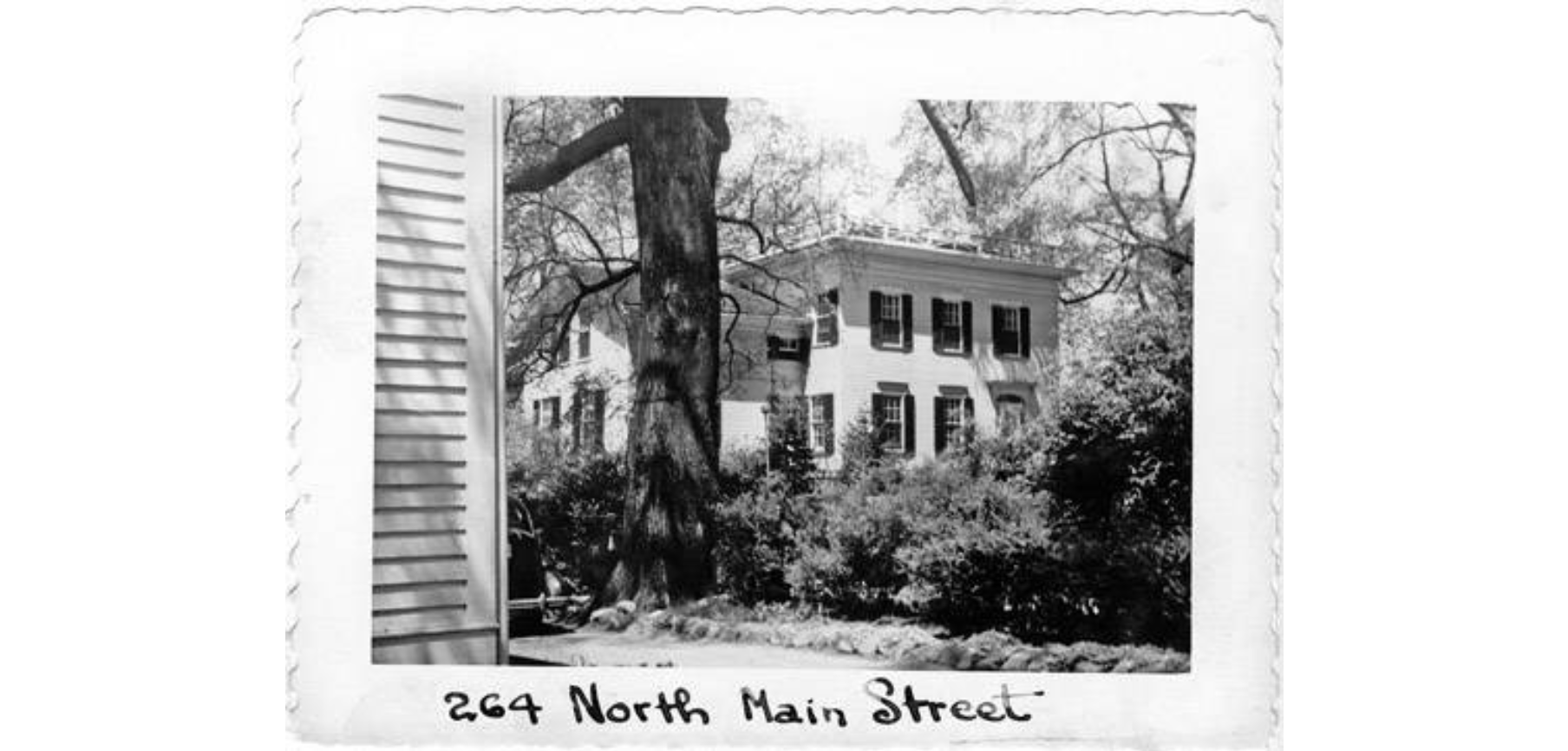 | Van Rensslaer Humphrey (1800-1864), a prominent Hudson citizen in both stature and reputation, built this home in 1833. Humphrey, a renowned lawyer, state legislator and Ohio judge, was also known for his Copperhead leanings. Judge Humphrey was a mayor of Hudson, the first president of the Hudson Horticulture Society as well as the president of the 50th-anniversary celebration of Hudson's settlement. Humphrey's wife Laura served on the Hudson branch of the U.S. Sanitary Commission. Their son Calvin P. Humphrey (1840-1902) and their stepson Henry A. Tallmadge (1830-1869) both served in the Civil War. | Hudson Heritage Association Summit Memory | |
| 272 North Main Street J.B. King House 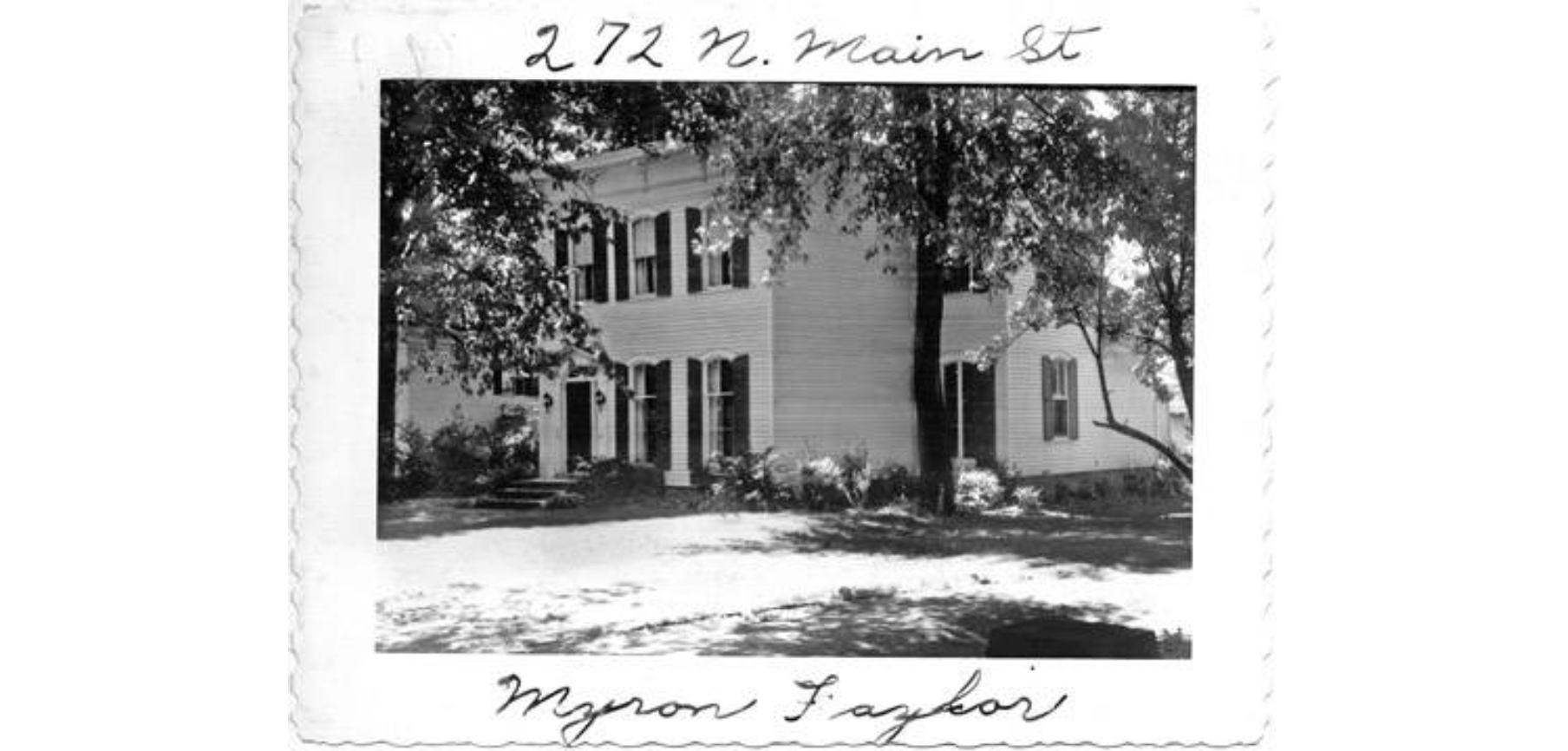 | This 1873 home was built by Jeremiah (1829-1895) and Mary King (d.1896). Jeremiah met Mary while he was a clerk in the dry goods shop that Mary's uncle, Charles W. Farrar (1831 or 34-1896), ran. When Farrar left town, Jeremiah and Mary took over the business. When the Kings passed away, Dr. George L. Starr (1833-1920) and his family purchased the home. Starr kept a diary of his life in Hudson for more than 30 years. His diaries can be found in the Hudson Library and Historical Society. | Hudson Heritage Association Summit Memory | |
| 278 North Main Street Edwin S. Gregory House 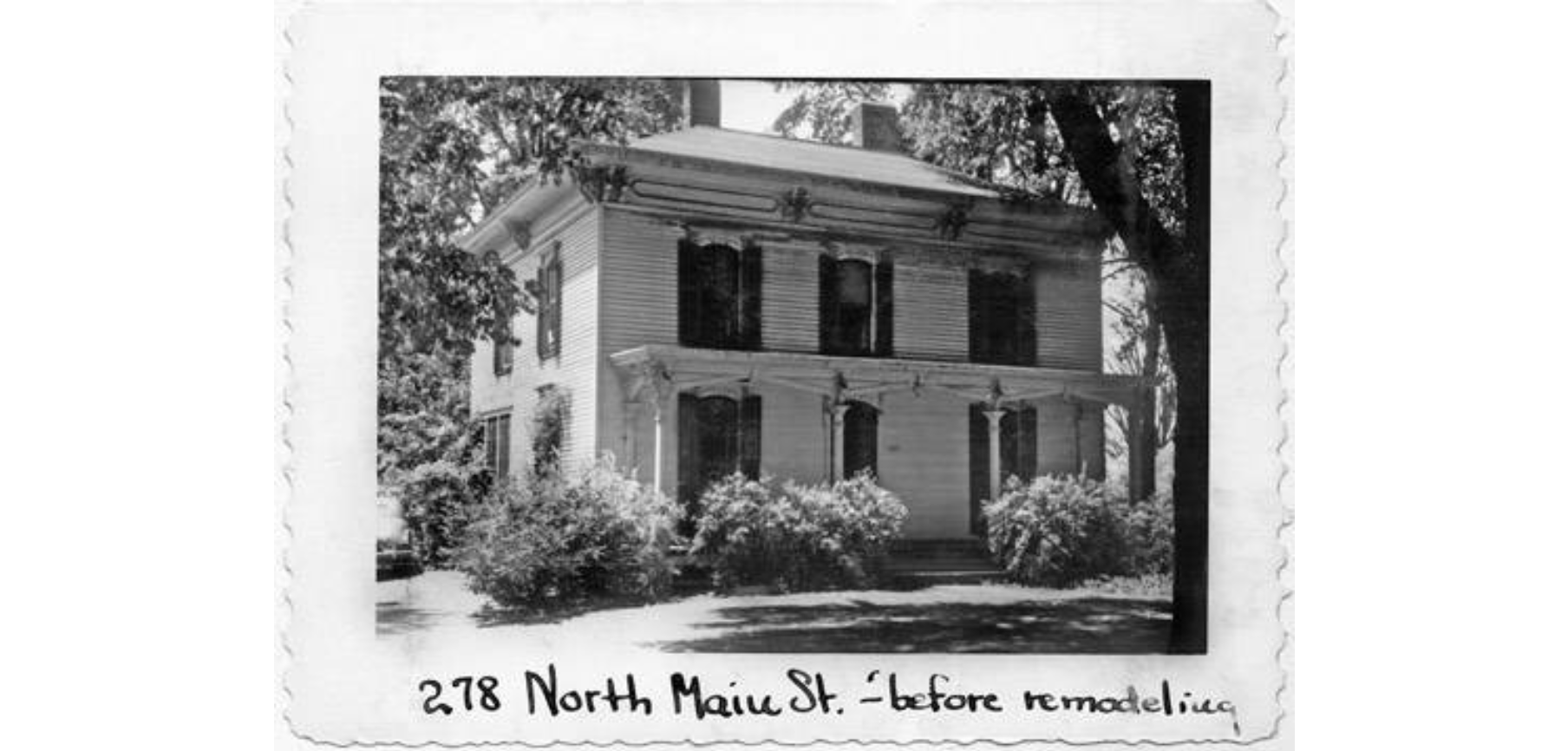 | Edwin Gregory (1828-1893) and Clara (Clarissa) Baldwin Gregory (1830-1907) built this home in 1878. Edwin was a professor at Western Reserve College. He also was the principal of the Rayen School in Youngstown, Ohio. Clara was the granddaughter of town founder David Hudson (1761-1836). | Hudson Heritage Association Summit Memory | |
286 North Main Street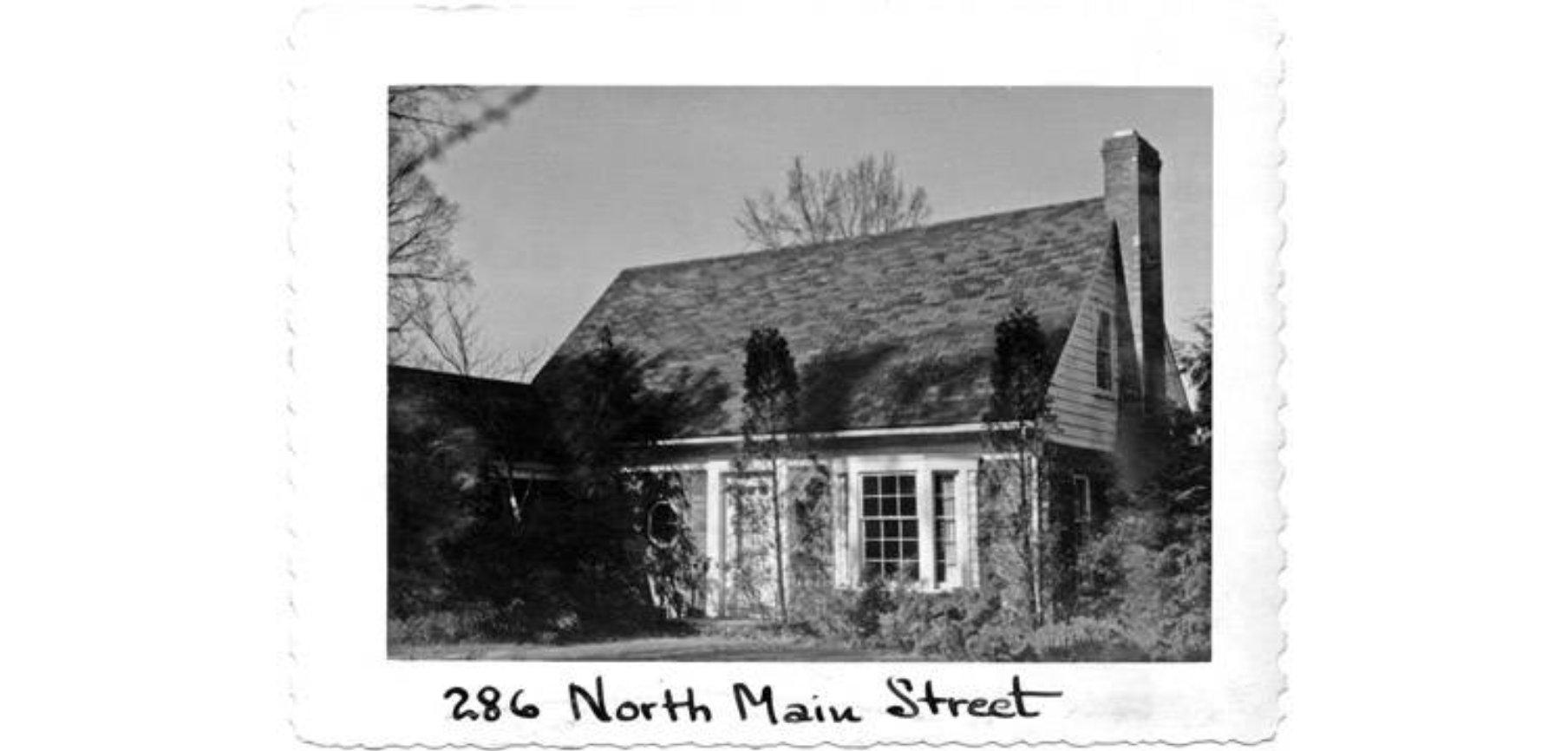 | Robert H. Wattleworth (1900-1960), superintendent of processing at B.F. Goodrich, lived in this circa-1942 home. | Summit Memory | |
| 287 North Main Street Julia Sides Drake House  | This house was built in 1909 during the American Victorian period and has some elements of a Queen Anne style. The first owner, Samuel Bediant (1837-1911), was a machinist and inventor who designed a self-steering traction engine. While the home is named for Samuel Bediant, many remember this home as Bertha Bonsteel's (1896-1995). Bertie, as she was known, was a dedicated community member who served in many capacities for the local government, including secretary of the board of public affairs and clerk-treasurer. Bertie was also an avid gardener. | Hudson Heritage Association Summit Memory | |
290 North Main Street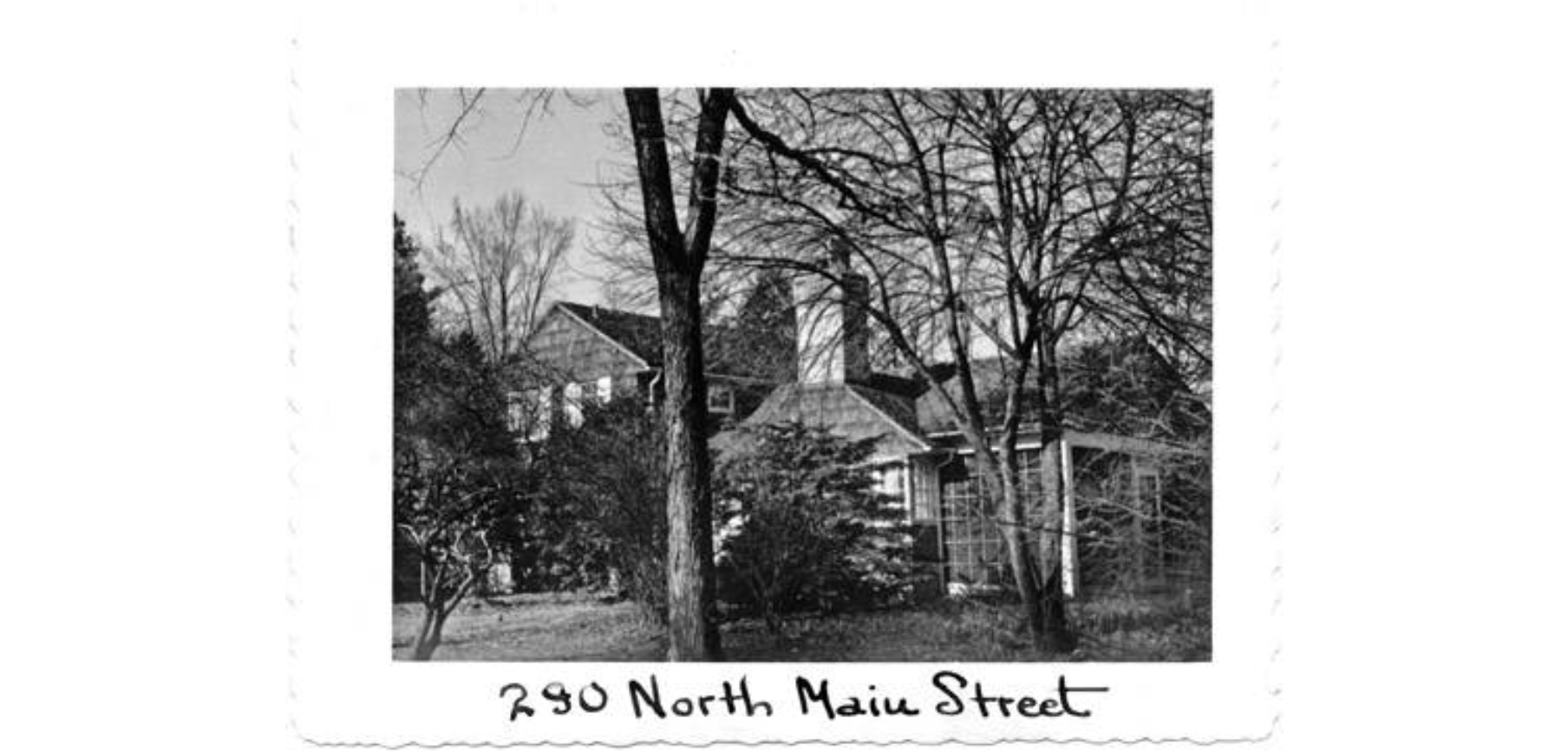 | Summit Memory | ||
306 North Main Street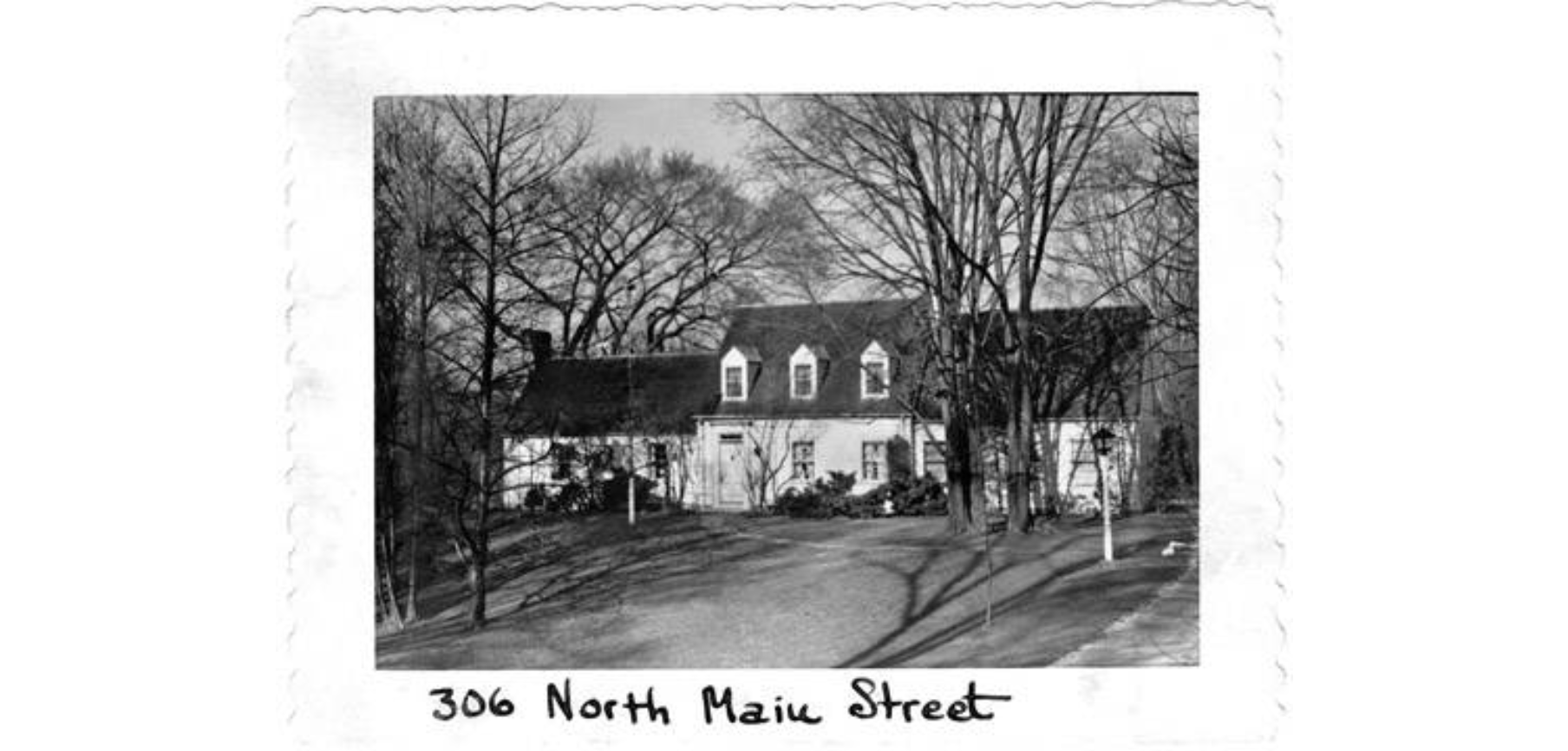 | Now owned by Western Reserve Academy, this 1930s home once belonged to Lyndon Spencer (1898-1981), executive vice president of the Lake Carriers' Association and vice admiral of the U.S. Coast Guard. Spencer participated in the invasion of Normandy, landing at Utah Beach. He received the French Legion of Merit. | Summit Memory | |
| 318 North Main Street David Hudson House 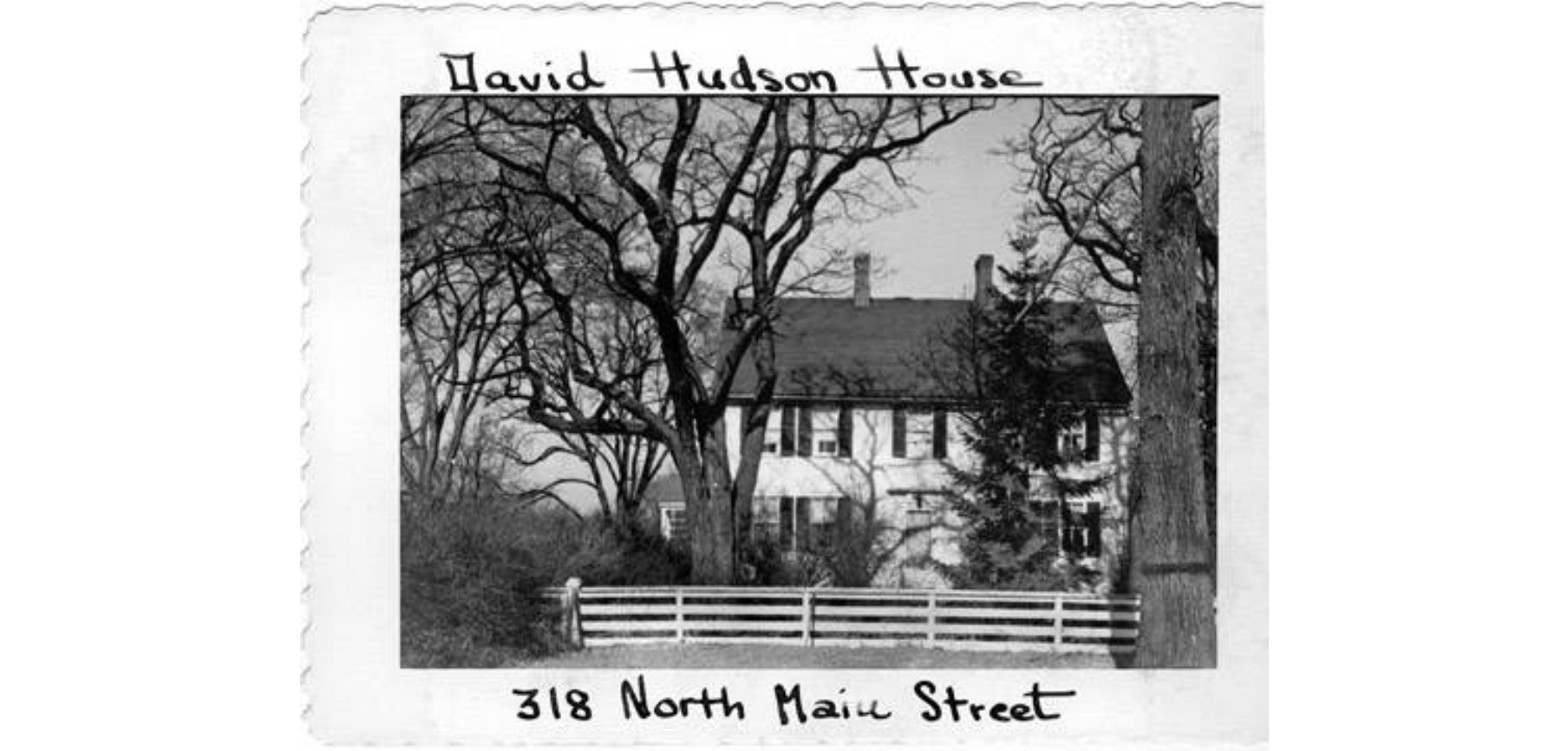 | In 1799 David Hudson (1761-1836) set out from his home in Goshen, Connecticut, to survey land he had acquired in the Western Reserve. He returned in 1800 with his family and a group of settlers and founded a town, which was named Hudson in his honor. His home, built in 1806, is the oldest frame house in the Western Reserve. Hudson was the town's first postmaster and his home served as the site of the first post office. It has been said that a tavern was once located in the kitchen. | Hudson Heritage Association Summit Memory | |
| 356 North Main Street George W. Holcomb / Timothy Hudson House 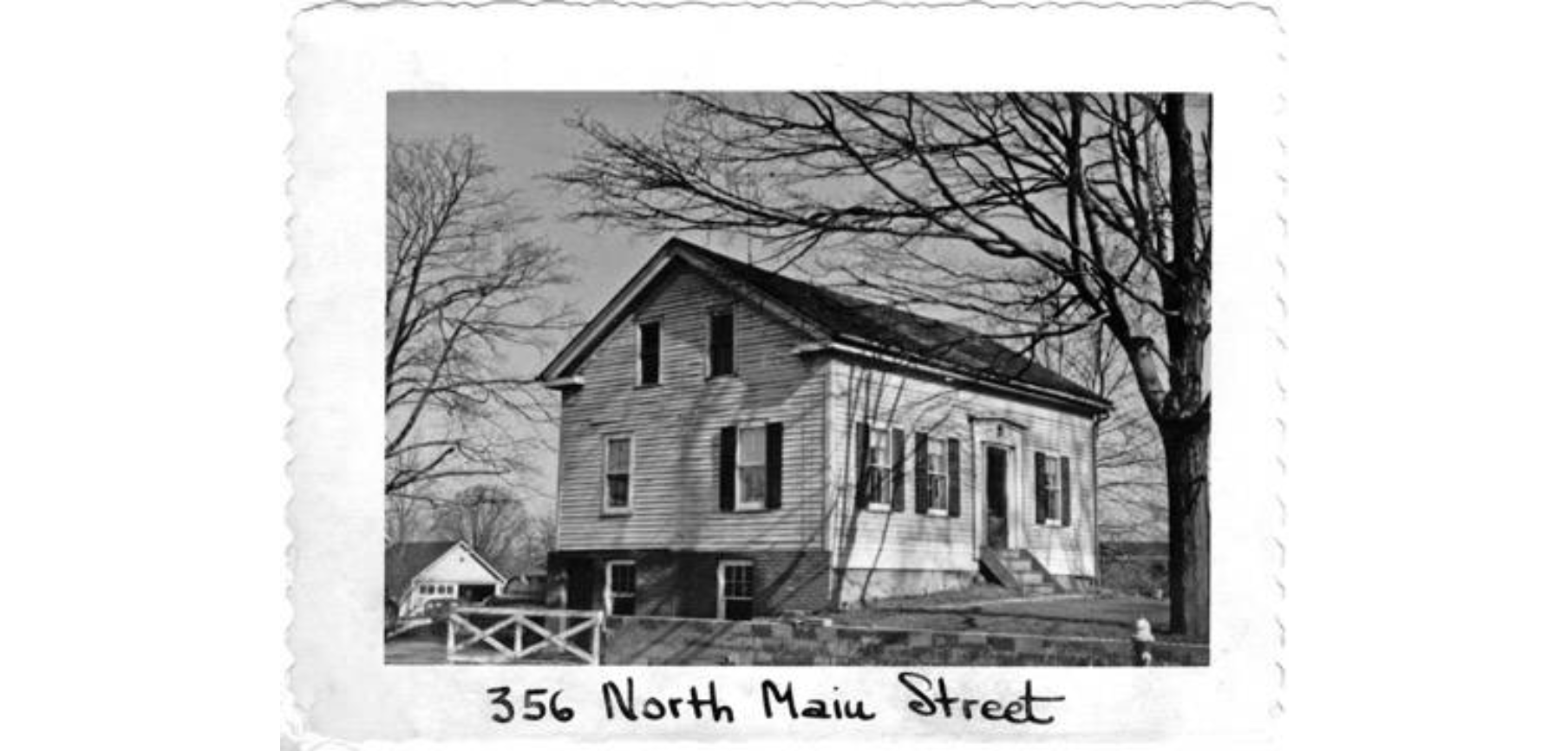 | Farmer George Washington Holcomb (1776-1847), an early Hudson settler, built this New England one-and-one-half story home in 1825. It was valued at $275 that year for tax purposes. Timothy Hudson (1796-1871), son of town founder David Hudson (1761-1836), purchased the home in 1840. Although Timothy only resided in the home for four years, he made substantial changes to the structure, rebuilding most of it. Civil War veteran and longtime Hudson mail carrier L.W. Scheurmann (1840-1937), who traversed more than 60,000 miles as he carried the mail, also once resided here. | Hudson Heritage Association Summit Memory | |
368 North Main Street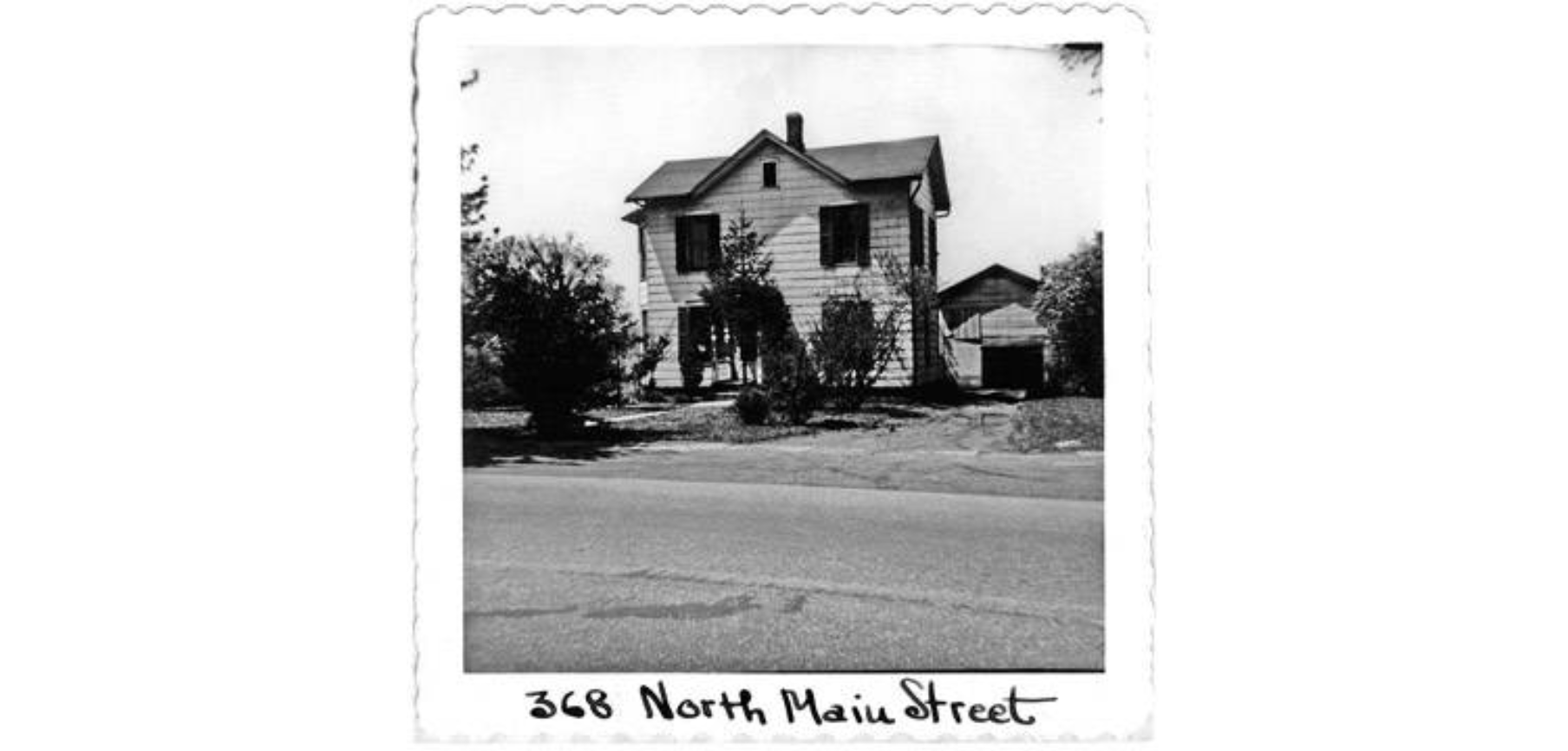 | Henry Pettingell (1843-1918), a veteran of the Civil War and a local carpenter, built this home for himself in the 1870s. Pettingell was among those who had been part of a "mystery airship" sighting craze that had swept the country. In a Hudson newspaper, Henry Pettingell was listed as the first in Hudson to sight one of these nonexistent airships. Henry's wife, Dency Lusk Pettingell (1847-1925), was a niece to abolitionist John Brown (1800-1859). | Summit Memory | |
| 374 North Main Street Col. S. D. & Marion Harris House 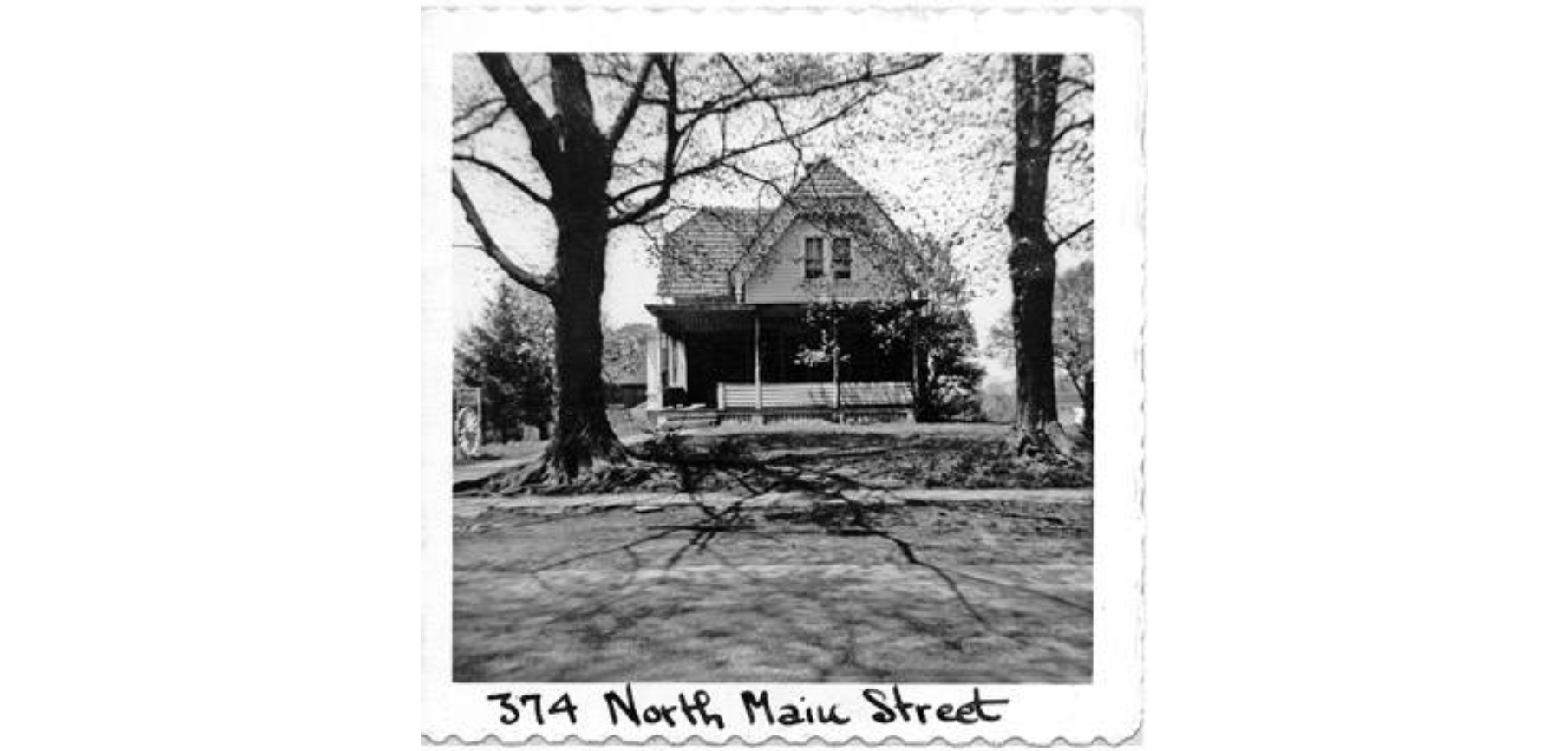 | This 1876 home is of Folk Victorian Gothic style. "Ohio Farmer" editor and Mexican War veteran Col. Sullivan D. Harris (1812-1877) and his family first occupied it. Later owners include the widow Annie Peters O'Toole (1858-1939), who lost her spouse in the influenza epidemic of 1918. More recently, the home was owned for several years by the Hanna family. | Hudson Heritage Association Summit Memory | |
380 North Main Street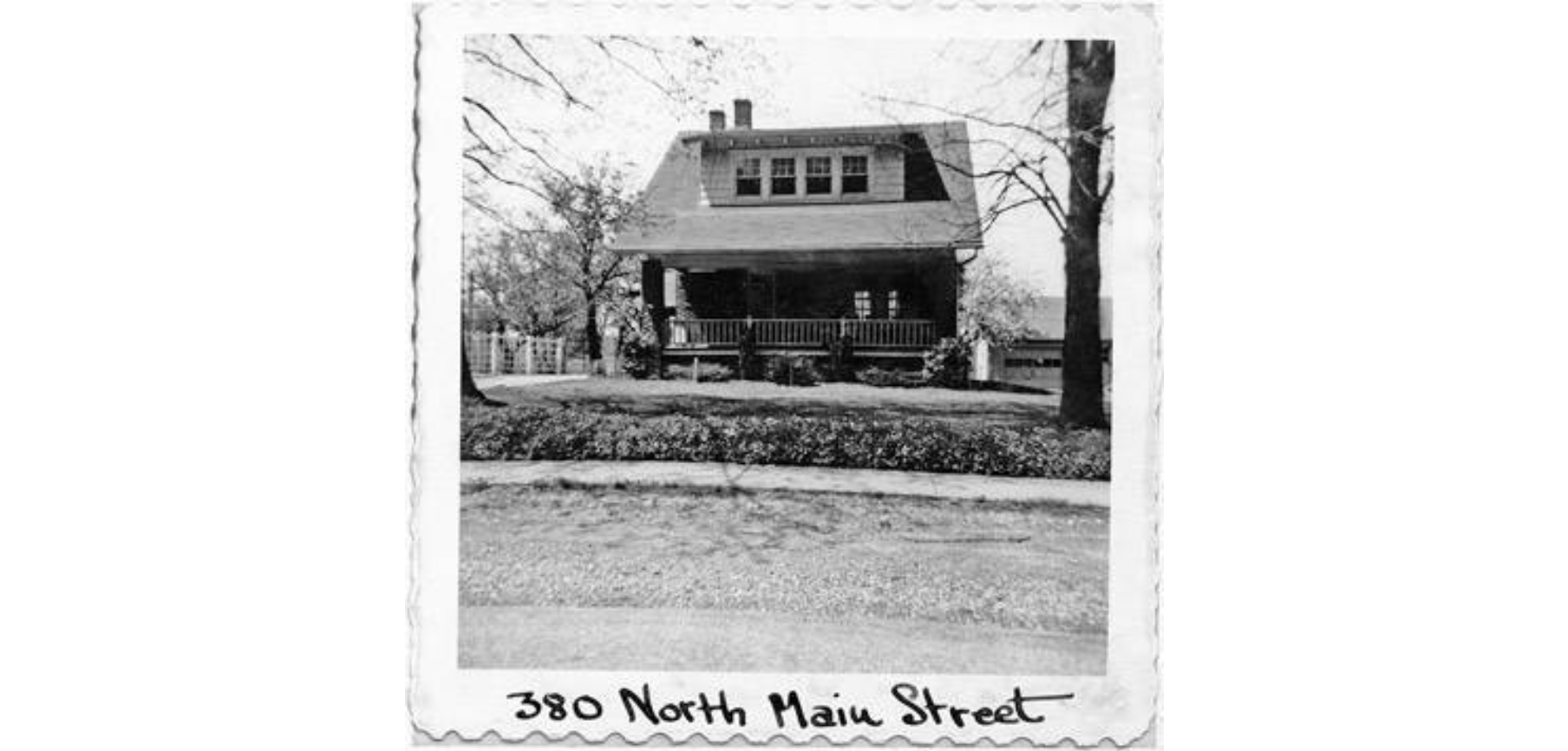 | This circa-1928 bungalow may be a Sears, Roebuck & Co. home, most likely the Sunbeam model. World War I veteran and Coast Guard service member Colter Halverstadt (1893-1979) and family once called this home. | Summit Memory | |
384 North Main Street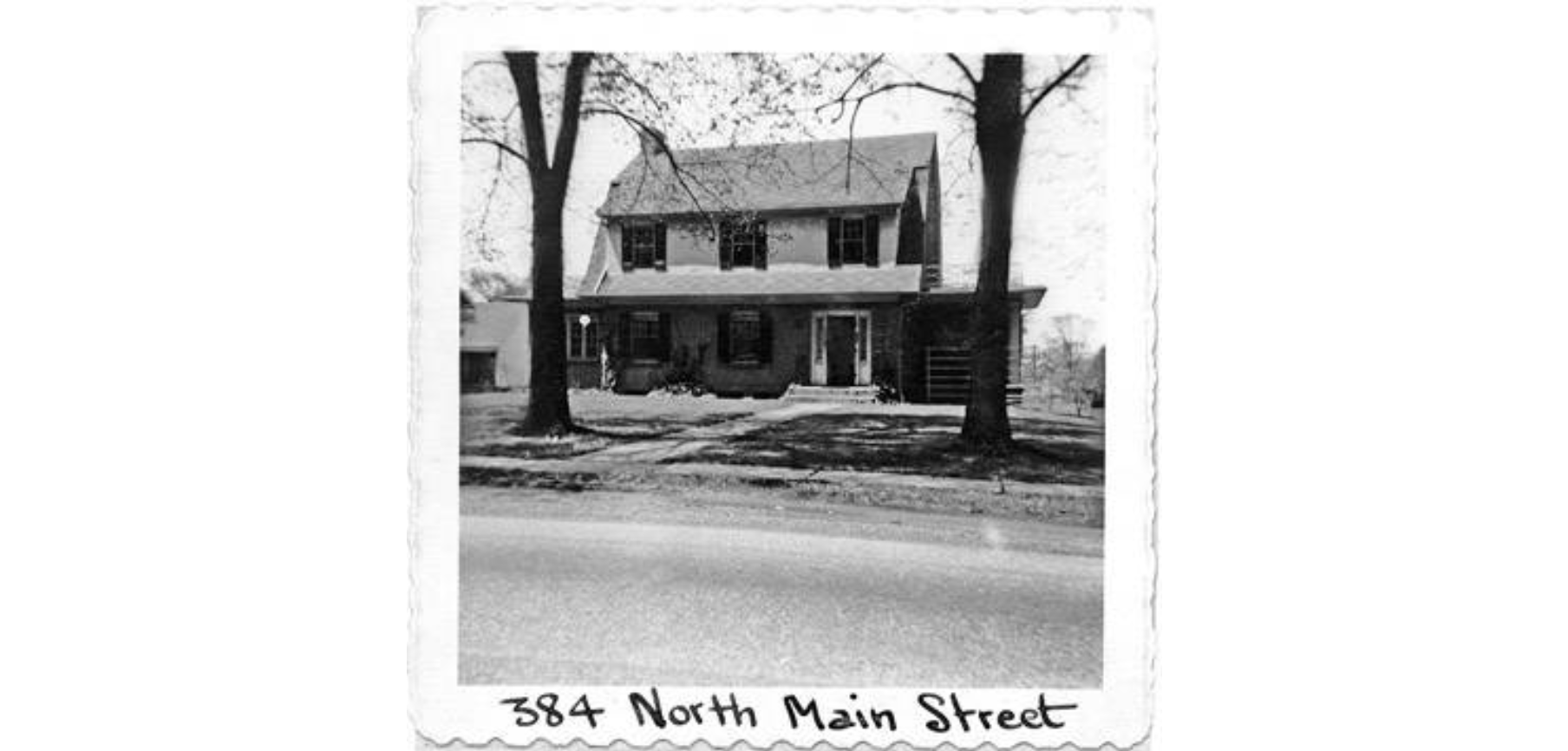 | Postmaster Henry Allen Seidel (1853-1939) once lived in this 1930s home. Seidel is listed in the 1910 census (when he lived in Hudson) as a merchant in a hardware store. Later, Seidel moved to the western United States and engaged in a variety of occupations, including poultry farmer and mine owner. | Summit Memory | |
| 393 North Main Street Porter-Holcomb House 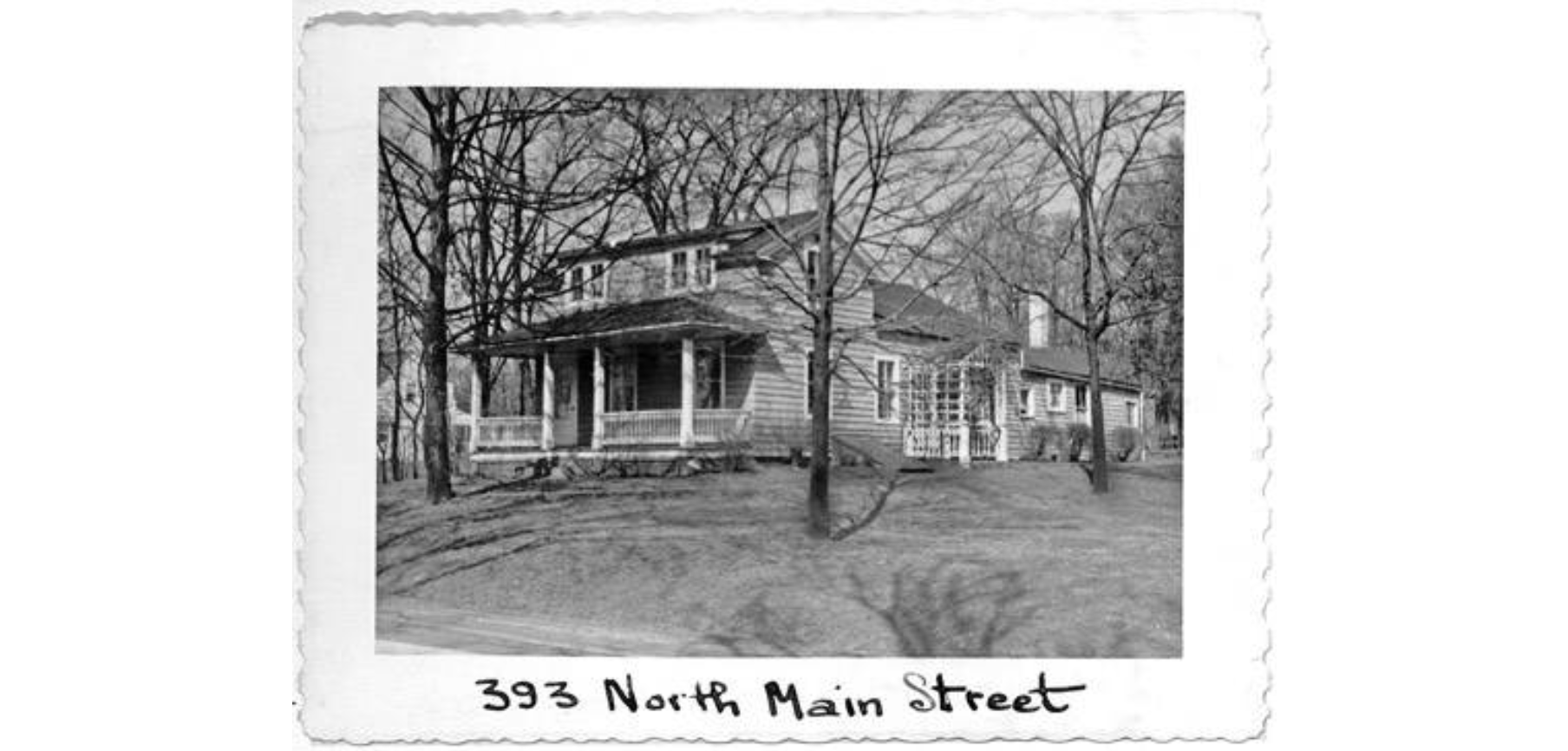 | This simple one-and-a-half story Greek Revival home dates to 1841 and, while it has been altered, can be attributed to builder Simeon Porter (1807-1871). Interior paneling matches the style of the paneling in the Congregational Church in Tallmadge, Ohio. First owner Rev. George Sheldon (1813-1881) was connected to Western Reserve College and also served as superintendent of the American Bible Society for more than 33 years. Sheldon was suspended from the ministry for seeking a divorce from his wife "without good reason." Priscilla Graham (1920-2008), a champion of historic home preservation in Hudson also lived here. | Hudson Heritage Association Summit Memory | |
| 394 North Main Street Nelson Waite House 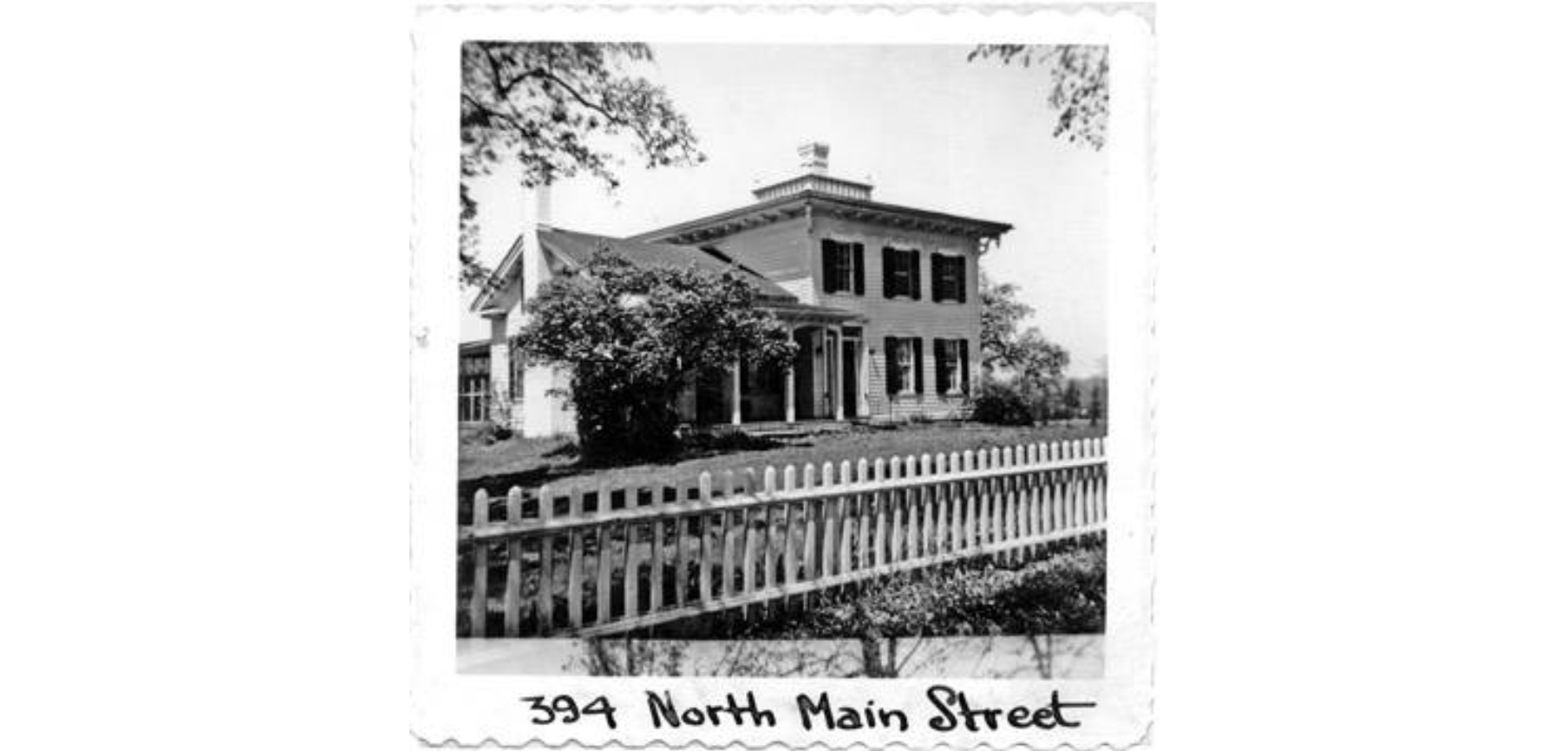 | This 1857 home was designed and constructed by Orin J. Porter (1820-1871) for Nelson Waite (1819-1904) and family. Waite had an interesting life as a painter, gold prospector, violinist and Civil War nurse for the Sanitary Commission. After time away, he always returned to this home and his family. The Greek Revival house is noted for its black walnut woodwork and sandstone foundation. Documentation that the sandstone came from a Twinsburg, Ohio, quarry exists. This home was the childhood home of Hudson mayor Arthur Waite (1857-1938). | Hudson Heritage Association Summit Memory | |
397 North Main Street | Dr. Charles Hammel (1906-1995), who operated his dental practice on Main Street for more than 43 years lived in this North Main Street home, which was designed by local architect Max Montgomery (1889-1946) and built in 1936. The plans for the home were even published in the "Hudson Times." | Summit Memory | |
401 North Main Street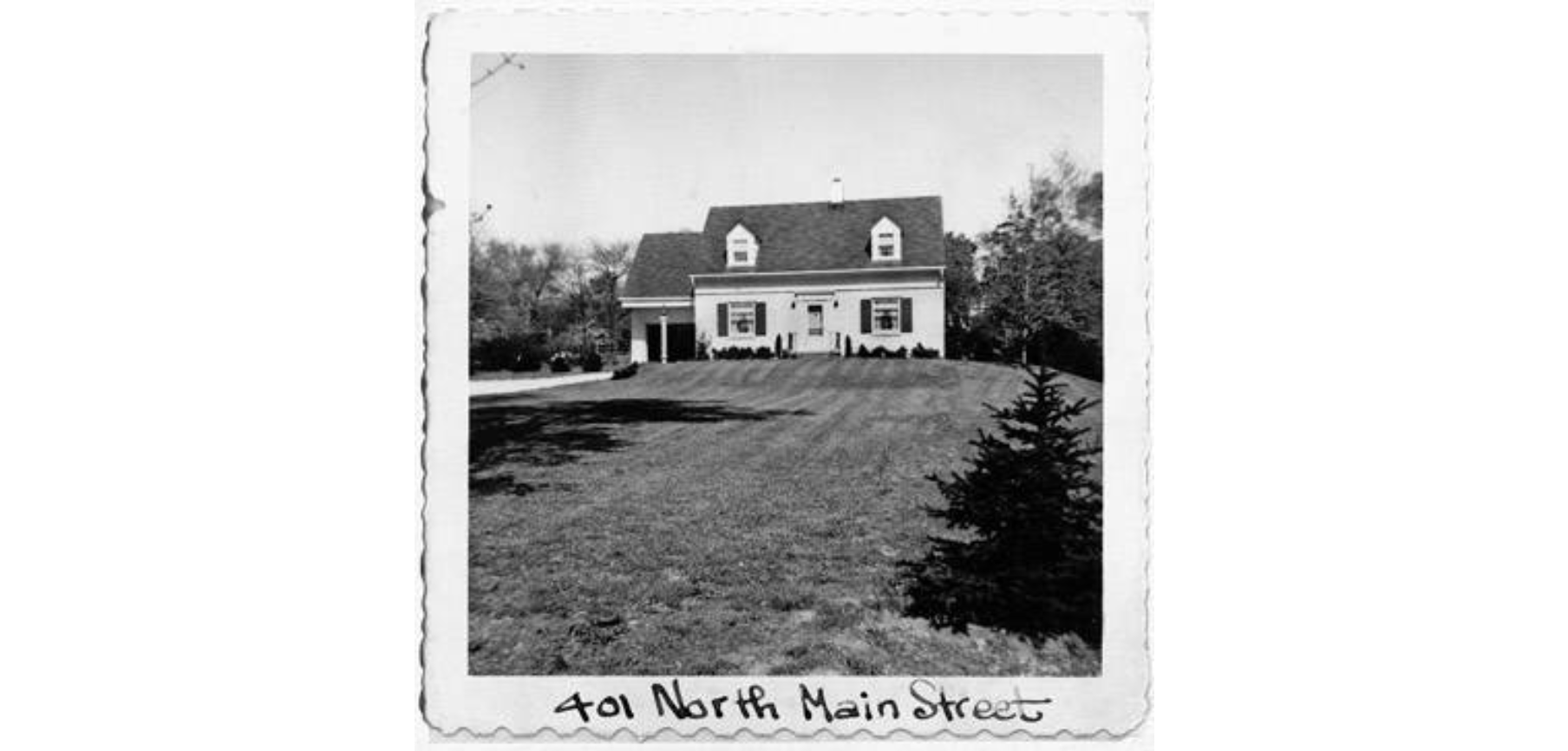 | Hudson Township Trustee and Village Councilman William H. McConnell (1907-1974) and his wife, Helen McConnell (1907-1985), were the first owners of this late-1940s home. Before his retirement, William H. McConnell was the executive vice president of the Diamond Alkali Co., a former Cleveland-based chemical, oil, and gas company. In the 1990s toxic contaminants were discovered on one of Diamond Alkali's former properties and a large cleanup was conducted. McConnell was known for playing Santa at the annual Hudson Christmas event. | Summit Memory | |
415 North Main Street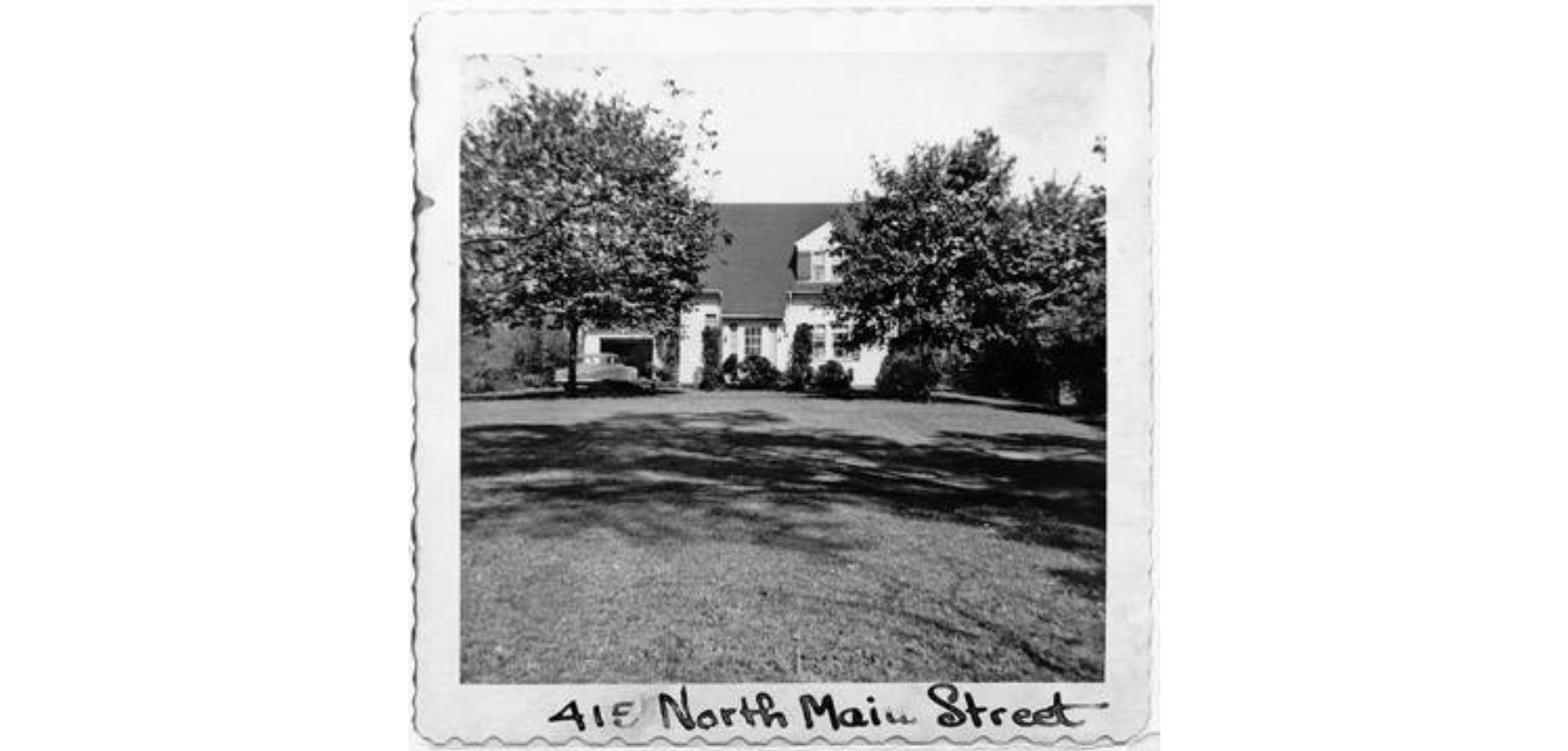 | Husband and wife Harold W. (1897-1973) and Lucretia (1897-1979) Tryon, both former teachers, lived and operated an antique shop out of this Cape Cod home, most likely built in the 1950s. | Summit Memory | |
417 North Main Street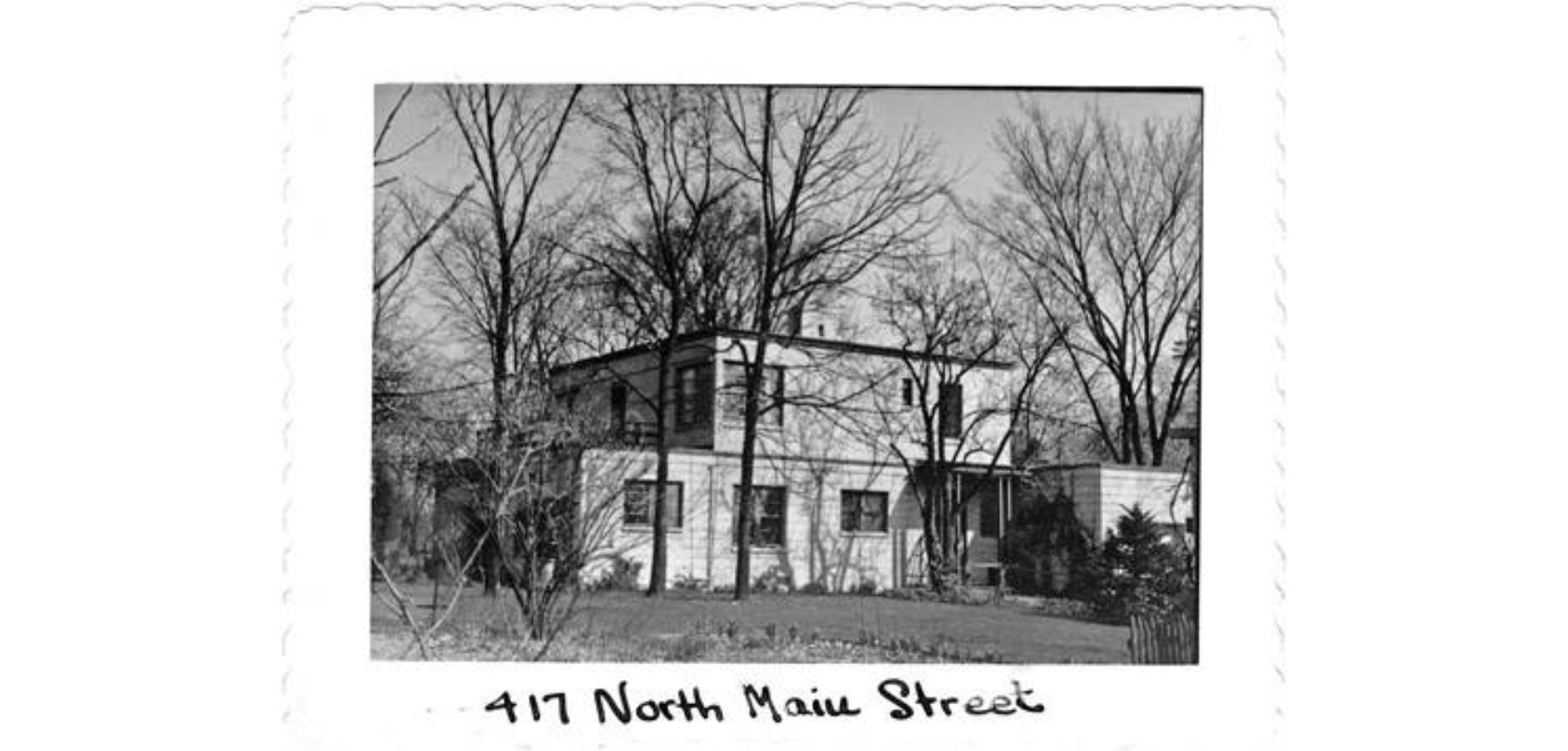 | Former owners Edgar (1893-1970) and Edna (1891-1969) Bowerfind grew plants from all over the world that would thrive in the same latitude as this circa-1938 home. Edgar worked for Republic Steel and was a veteran of World War I. | Summit Memory | |
419 North Main Street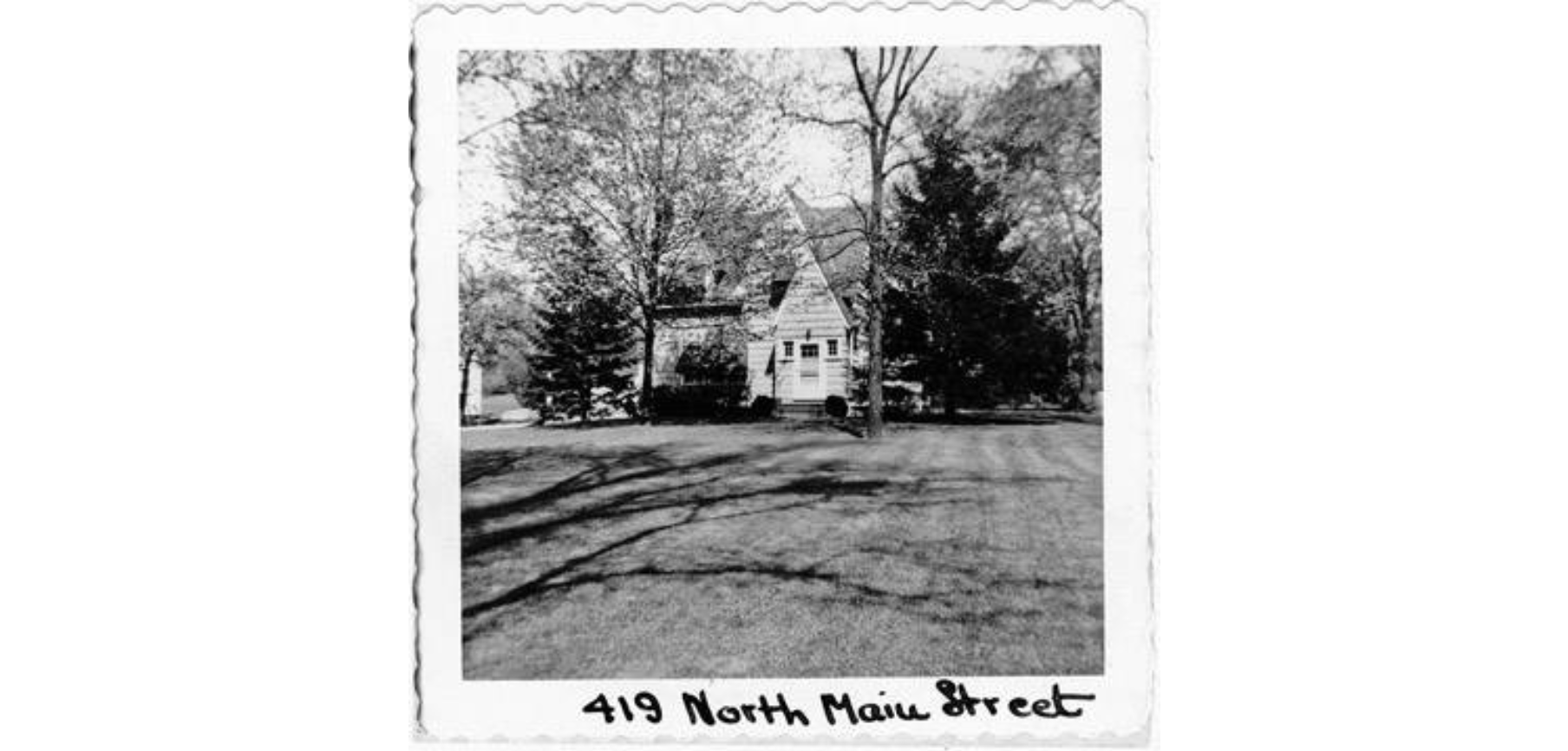 | Paul Kibler (1896-1959), treasurer of the Turner Lumber Co. and village clerk, and his wife, Genevieve Kibler (1895-1984), a Twinsburg and Hudson schools teacher, once lived in this circa-1927 Cape Cod. Edward J. Kerr (1916-1983), former employee of Lewis Welding in Bedford, and owner of Fabricating Inc., in Ravenna, and his wife, Elsie Kerr (1920-2002), also lived in this home. | Summit Memory | |
421 North Main Street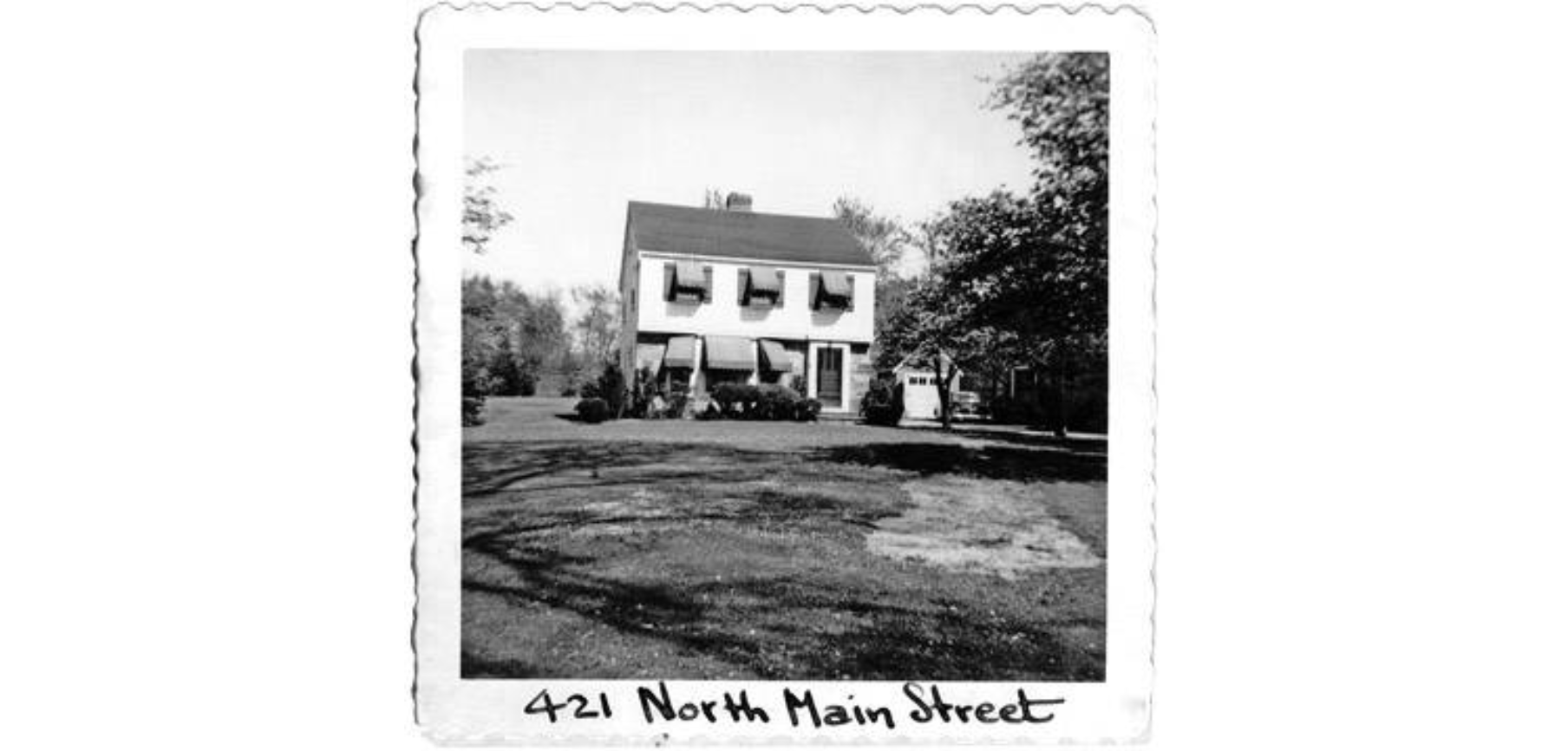 | Former president of the National Bank of Hudson Harry Ebersole (1897-1983) once lived in this 1930s home. Ebersole moved to Hudson in 1938 and in just eight years he advanced from cashier to president. Ebersole was extremely active in the Hudson community, holding membership in more than 20 organizations. He was known for never missing a meeting during the 45 years he was a member of the Hudson Rotary Club, even driving 70 miles to the nearest Rotary Club to attend a makeup meeting while vacationing in Venezuela. | Summit Memory | |
| 422 North Main Street Hurn-Lighton House 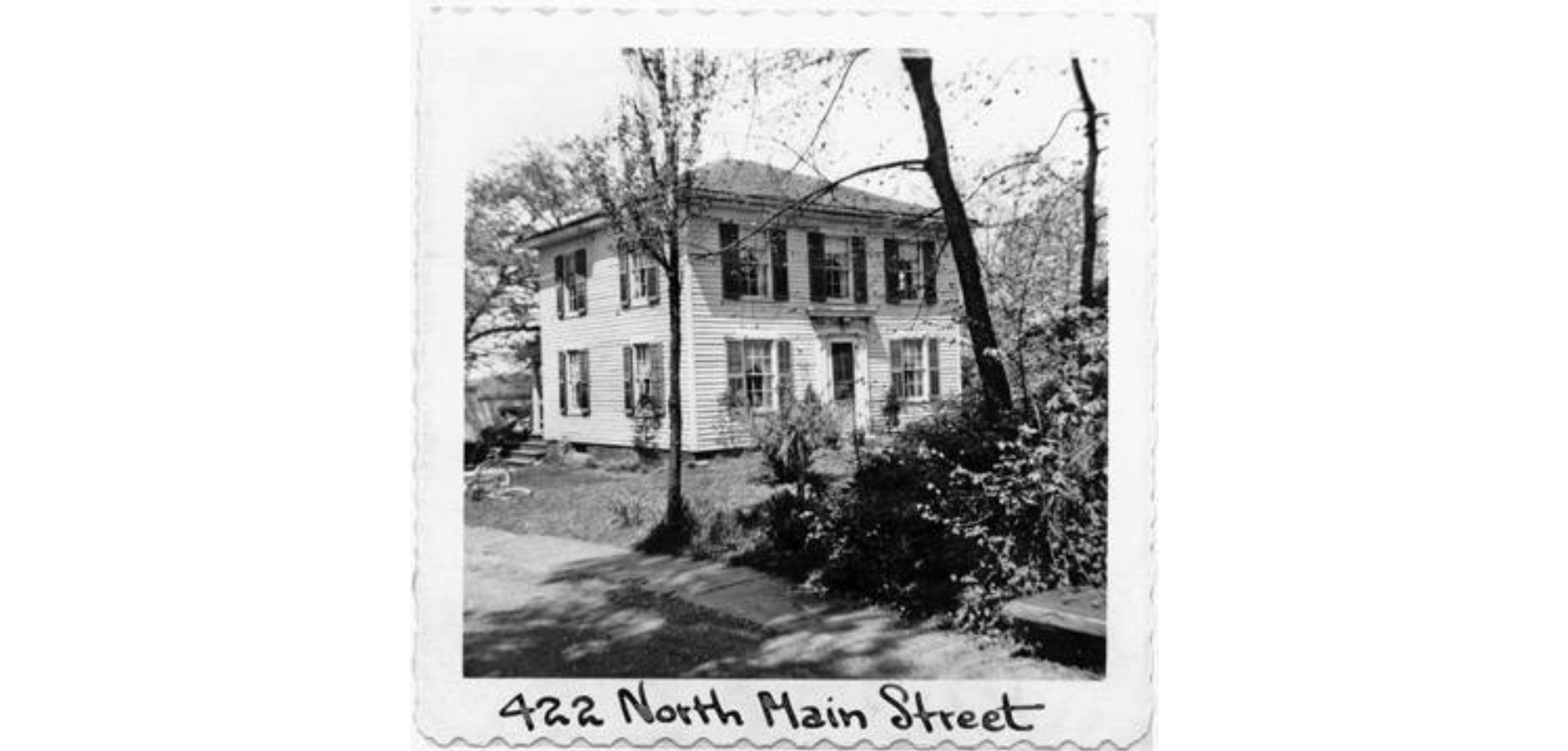 | The house is named the Hurn-Lighton House for David Hurn (1803-1870), who built the home, and William Lighton (1829-1885), who owned the house for more than 50 years. In 1945 William Shilts (1910-2004) purchased this late-Greek Revival home. At the time the house had no running water. Shilts, the fifth owner of this 1856 home, once ran the town newspaper, "The Hudson Times" and had a love for words and books. Shilts, who was also a real-estate appraiser, was married to Martha (1910-1977), a kindergarten teacher. | Hudson Heritage Association Summit Memory | |
431 North Main Street | Marthena MacCracken (1907-1982), a teacher of English literature for Hudson Schools, lived in this 1940s home. | Summit Memory | |
433 North Main Street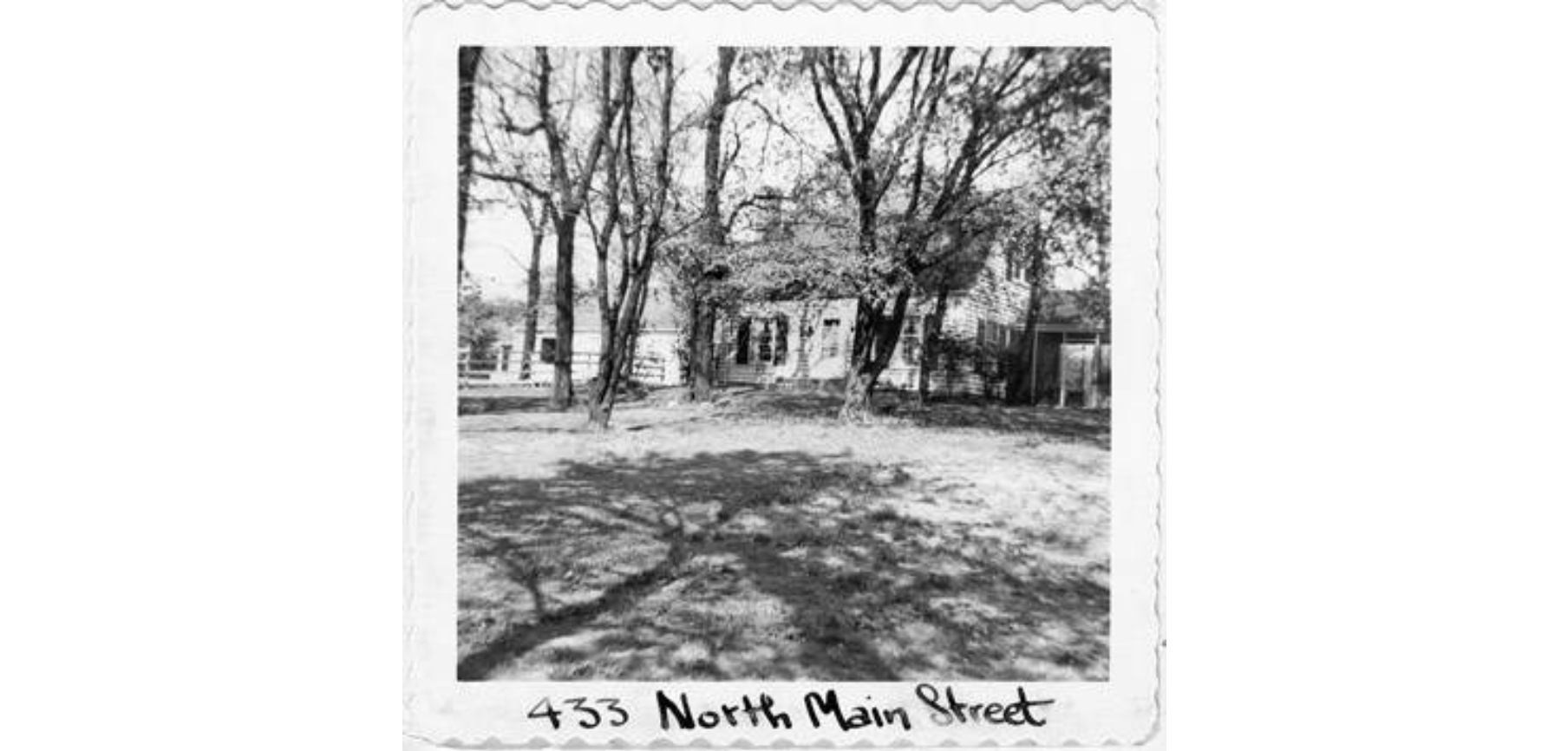 | David G. Hood (1904-1990), a former resident of this circa-1940 home, was a sales manager for the Diamond Alkali Corp., the once-Cleveland-based chemical, oil, and gas company. Hood's wife June (1901-1981) was a first-grade teacher at Hudson Elementary School for 17 years. | Summit Memory | |
| 460 North Main Street Augustus Ellsworth House 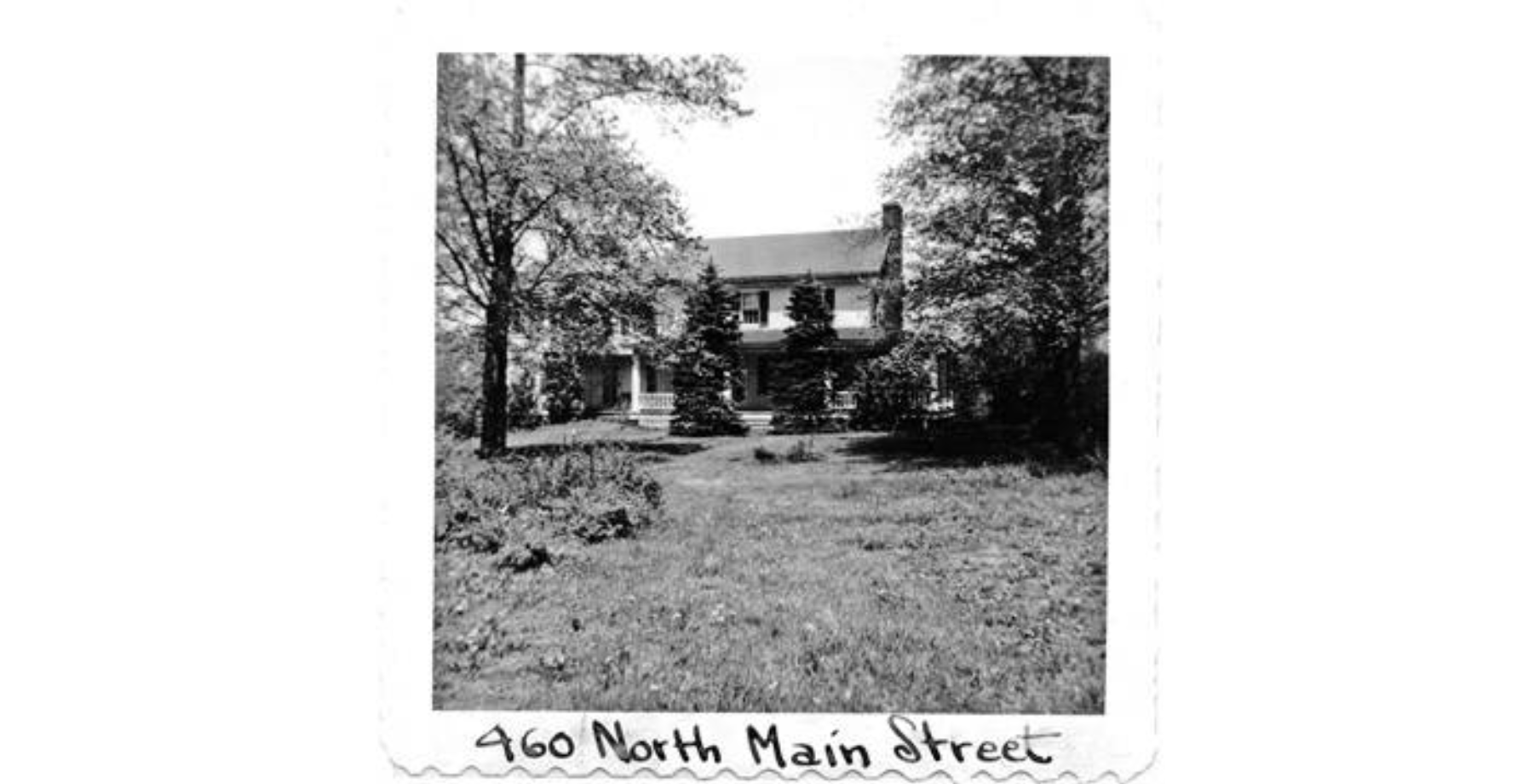 | This 1869/1870 house was built by Augustus Ellsworth (1812-1892), who was in the coal business. Augustus' father, Elisha Ellsworth (1785-1859), was a twin. Augustus' wife, Harriet Newell Ellsworth (1817-1897), was the daughter of Aaron Wilcox (1772-1827), one of the twins for whom Twinsburg is named. The black walnut used in the frame of this home is a testament to its once-plentiful supply in this area. The strength of walnut as a wood is why it was often utilized as a framing lumber for early homes. | Hudson Heritage Association Summit Memory | |
461 North Main Street | Summit Memory | ||
| 12 North Oviatt Street A.J. Shively House 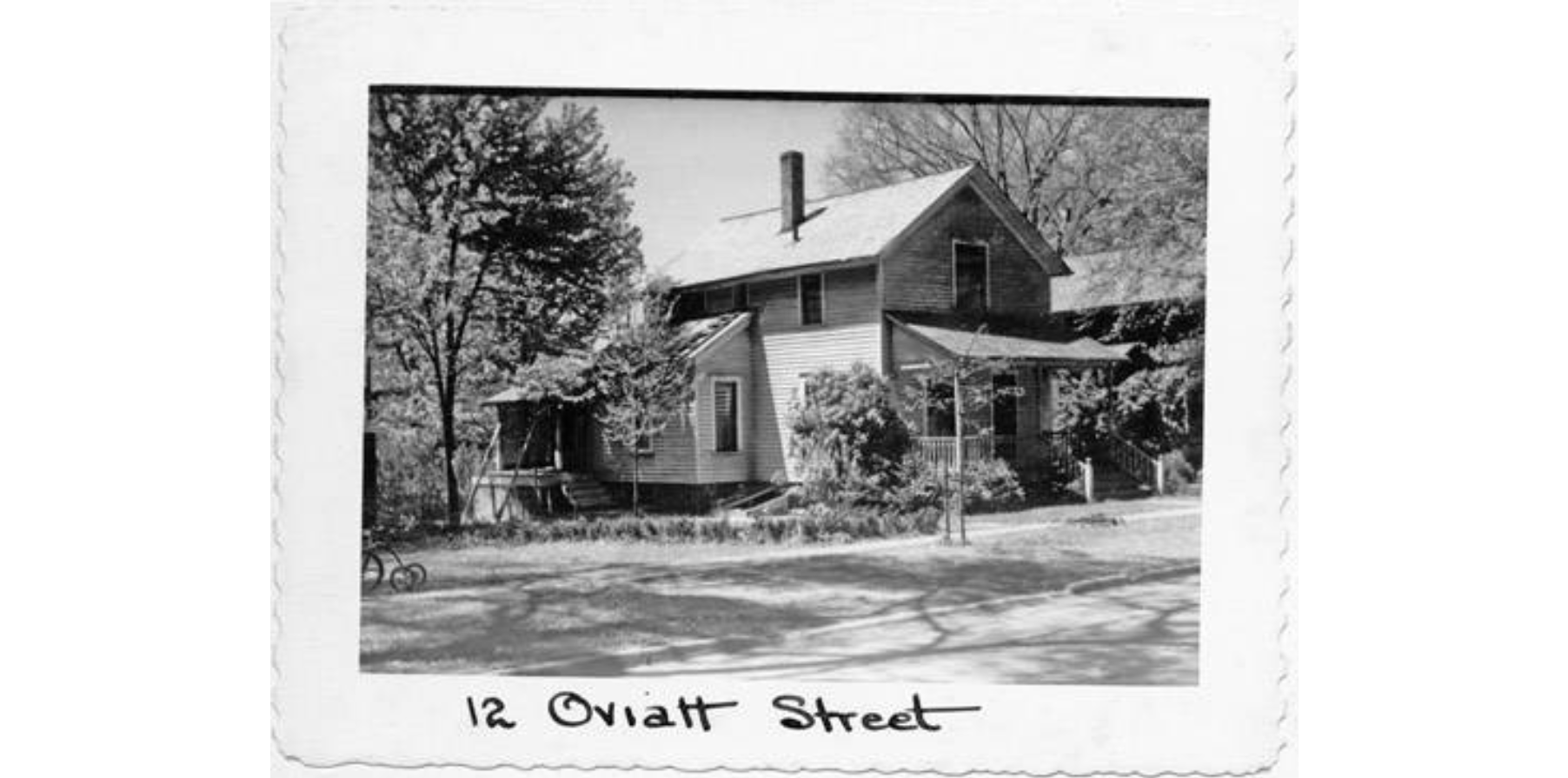 | This house first appears on the tax records in 1909.the year 1909. Andrew Shivley (1836-1916), a blacksmith and carriage maker, probably had this home built as an investment or a residence for one of his seven children. Originally, a 20-barrel tank on the second floor furnished water for the first floor. | Hudson Heritage Association Summit Memory | |
13 Oviatt Street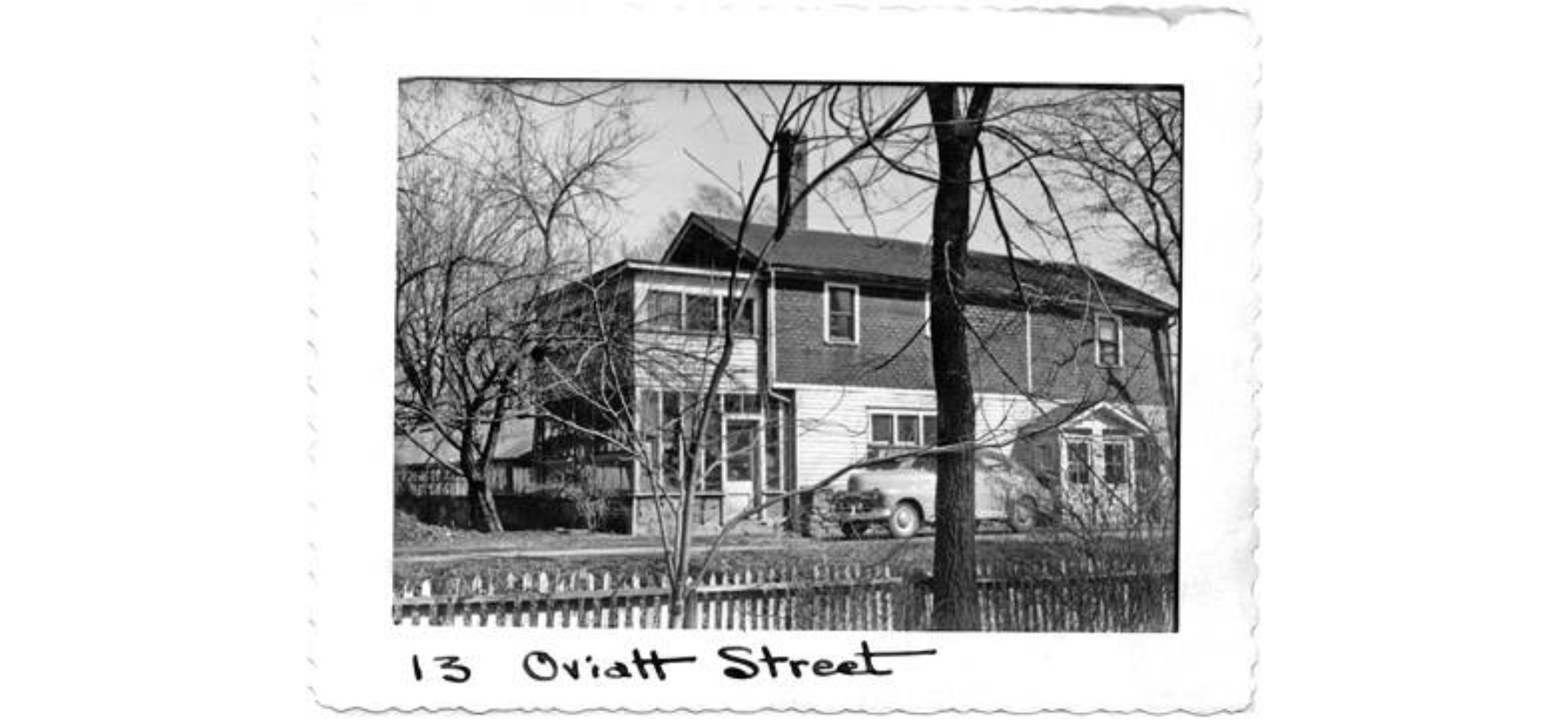 | Fred E. (1888-1977) and Chloe Elliman Robinson (1891-1950) were likely the first owners of this 1920s home, in which they both lived and operated their floral shop. Fred came to Hudson at the age of 7 and worked most all his days. He started by cutting wood for sidewalk boards and got paid 8 cents an hour. Later he worked at the lunch counter at the train depot. Still later he chose to learn a trade and went to work in Akron at a nursery. By the early 1920s he had opened his greenhouse. | Summit Memory | |
| 16 Oviatt Street Mary Keevan House 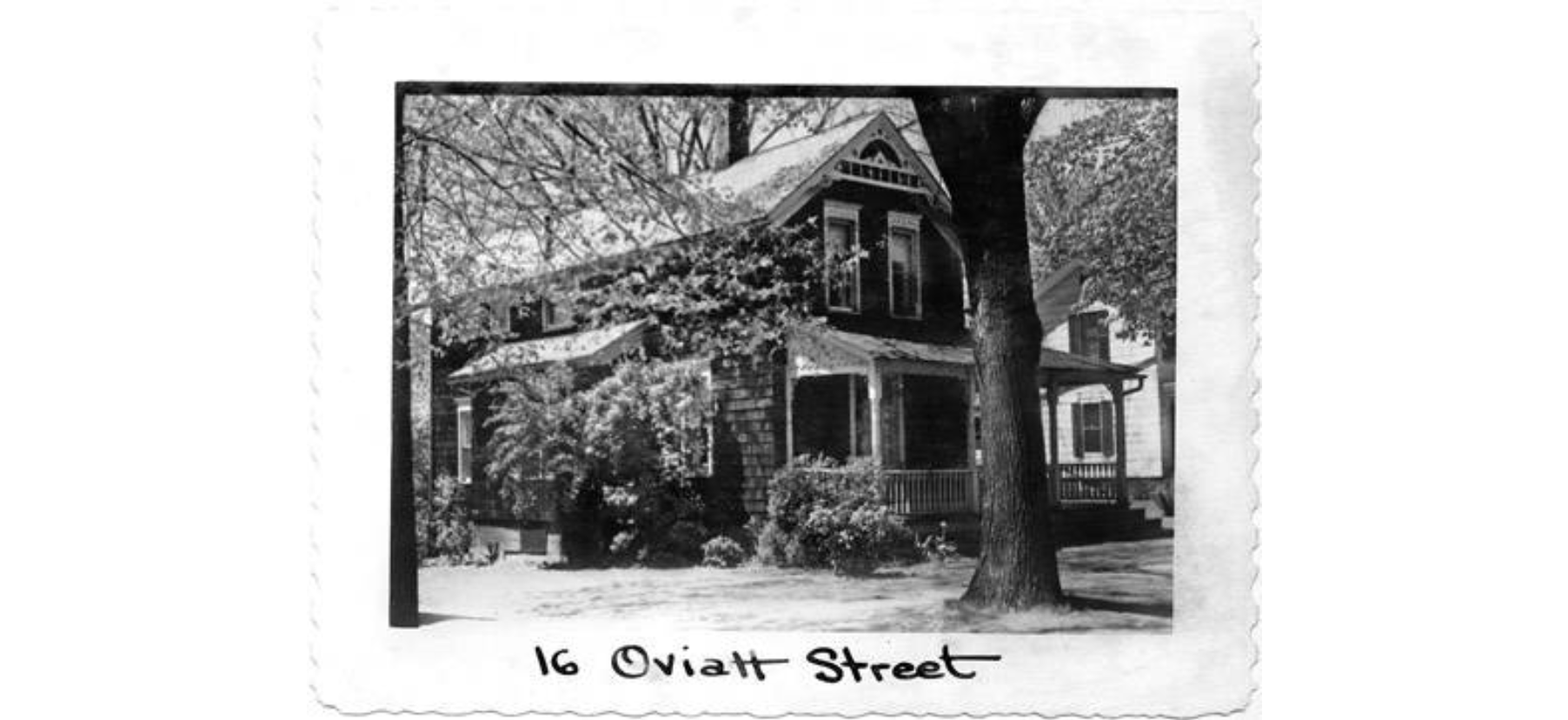 | This 1888 home was originally located on the corner of Ravenna and Oviatt streets and was moved in 1910. In 1850, Thomas Keevan (1828-1888) emigrated from Ireland with his wife Sarah Keeven (1827-1905) and a young son. In Ohio, the couple added eight more children for a total of nine. Thomas opened a saloon which later burned to the ground and he died shortly after the fire. After his death, Sarah raised their children and become a strong supporter of the Catholic faith in Hudson. Sarah and Thomas's daughter-in-law, Mary Keevan, built the home. | Hudson Heritage Association Summit Memory | |
| 19 Oviatt Street Ralph T. Miller House 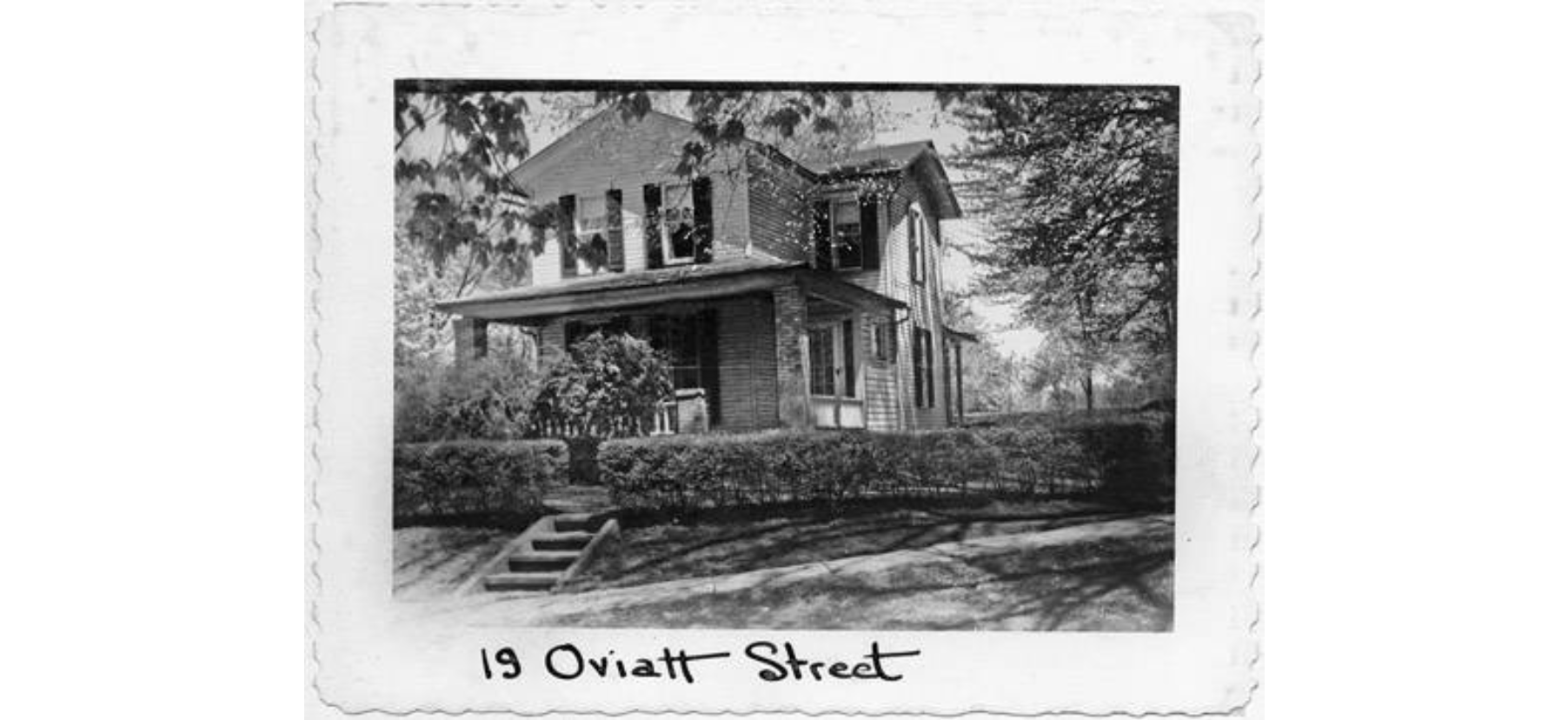 | Baker Ralph Miller (1856-1933) built this home in 1881. In addition to operating the Hudson Bakery, Miller served as clerk of the village of Hudson and played cornet in the Hudson Band. Fred Sprague (1872-1920), a cashier at the First National Bank, purchased the home in 1901. Sprague was one of the first people to own a Model T in Hudson. This house was also the first site of the Hudson Clothesline Art Show. | Hudson Heritage Association Summit Memory | |
| 20 Oviatt Street Sheldon C. Osborn House 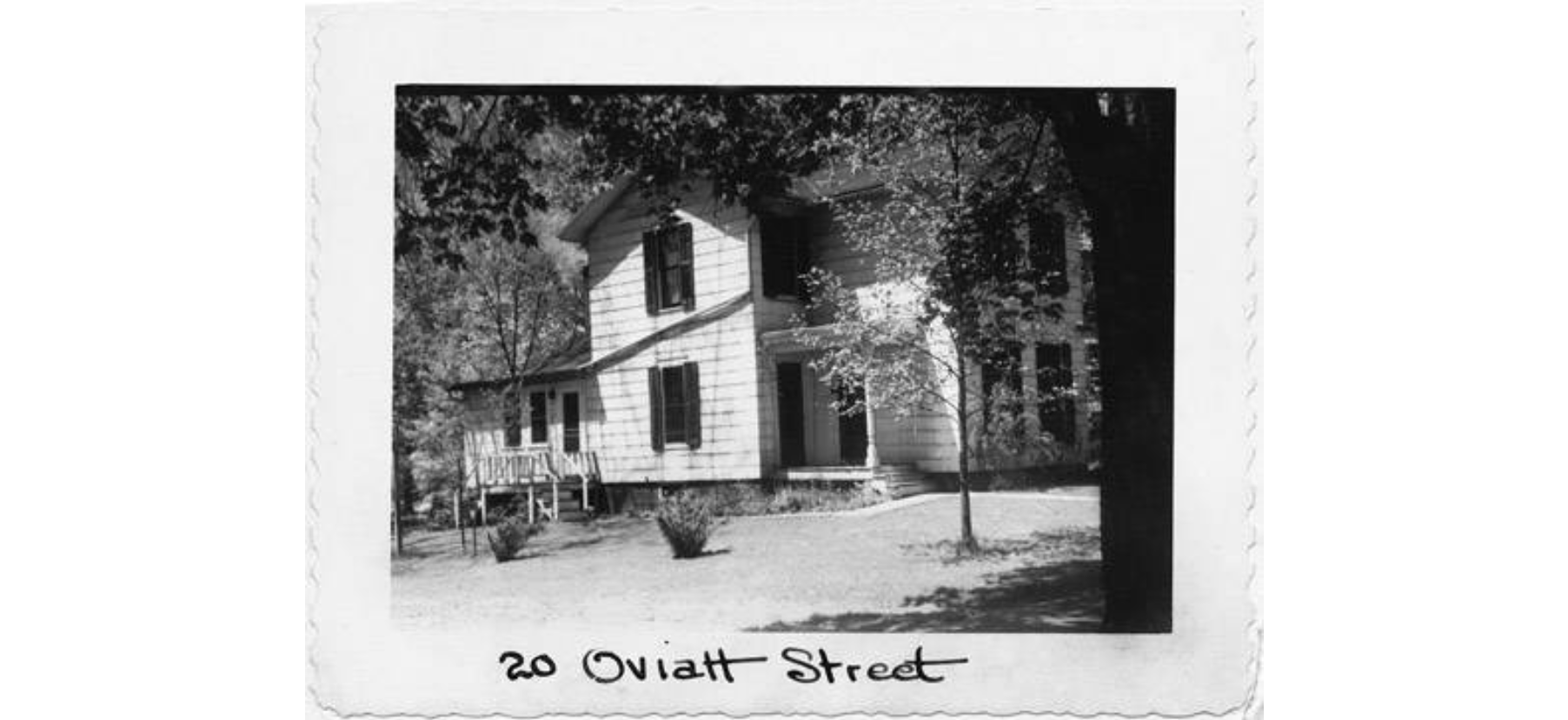 | Sheldon C. Osborn (1861-1928), a railroad conductor, built this home in 1883. His father, Elisha Osborn (1832-1918), was a manufacturer of cheese boxes for cheese businesses, a thriving industry in the Western Reserve at the time. Elisha also served in the Civil War. | Hudson Heritage Association Summit Memory | |
22 Oviatt Street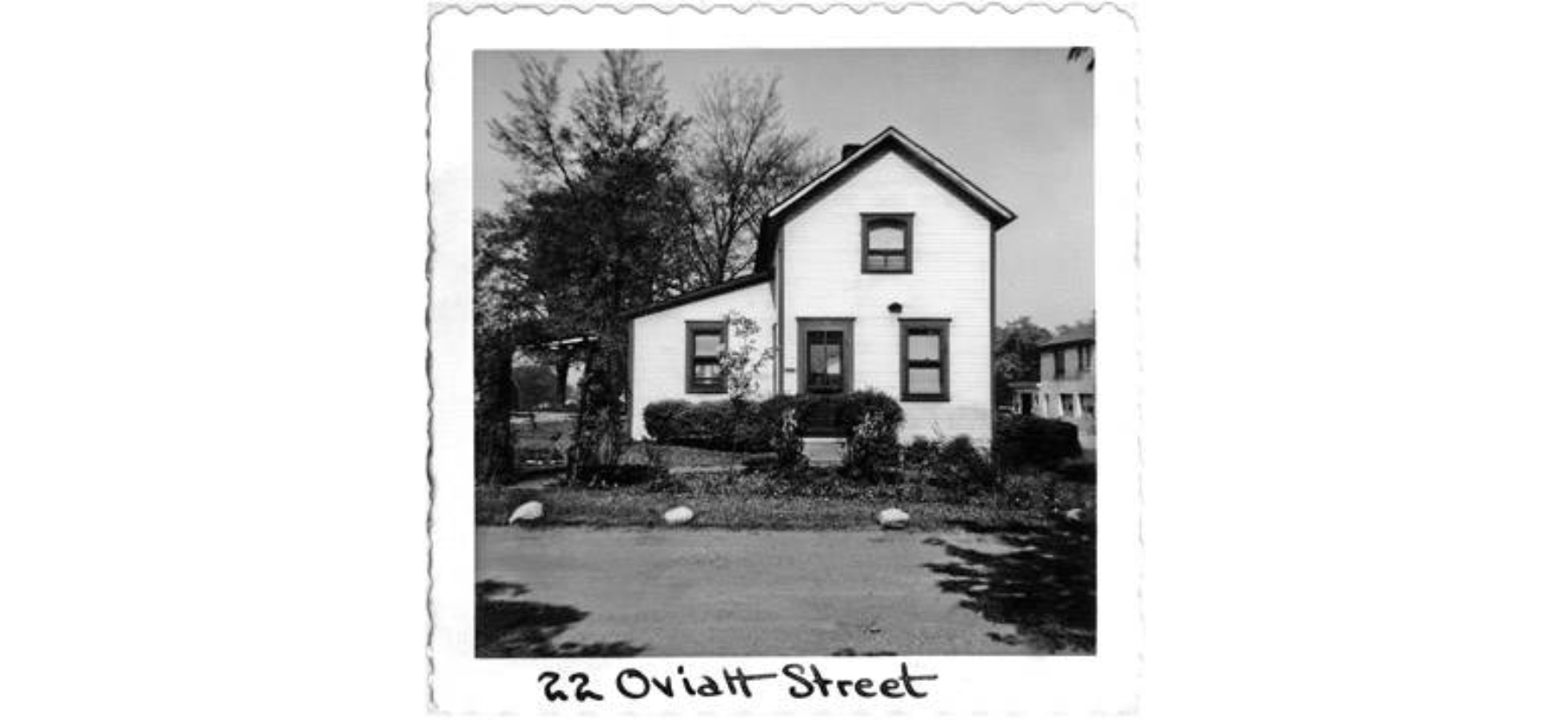 | English immigrant and carpenter Harry Draper (1878-1944) once lived in this home, which no longer stands. | Summit Memory | |
23 Oviatt Street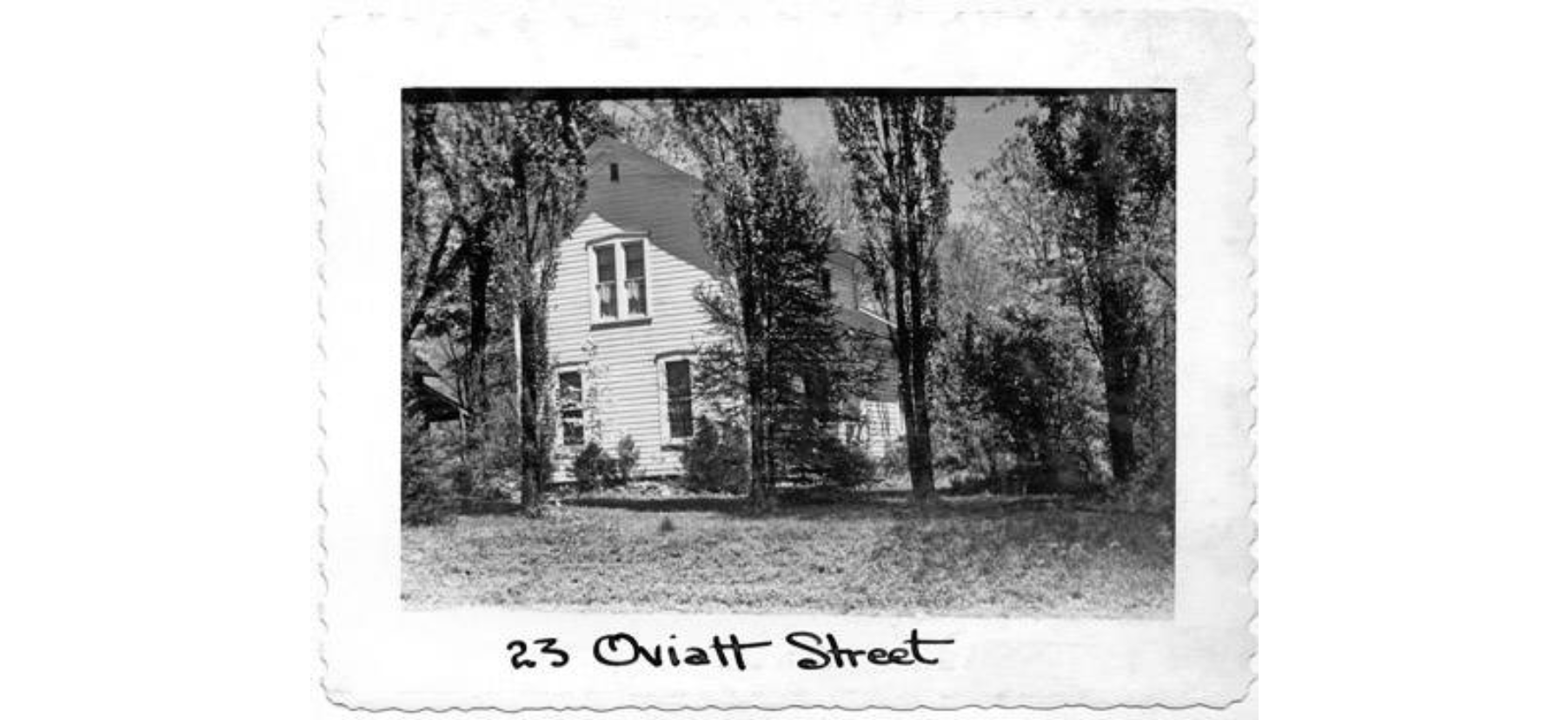 | Ernest Seymour (1856-1929) built this house in 1895. The the shutters to the pedimented window lintels of the original house were added later. Seymour started railroading as a train butcher and worked up to more responsible positions during his 40 years of employment with the Cleveland, Akron and Columbus Railroad. He also celebrated 50 years of marriage to his wife Charlotte (1854-1936). | Summit Memory | |
27 Oviatt Street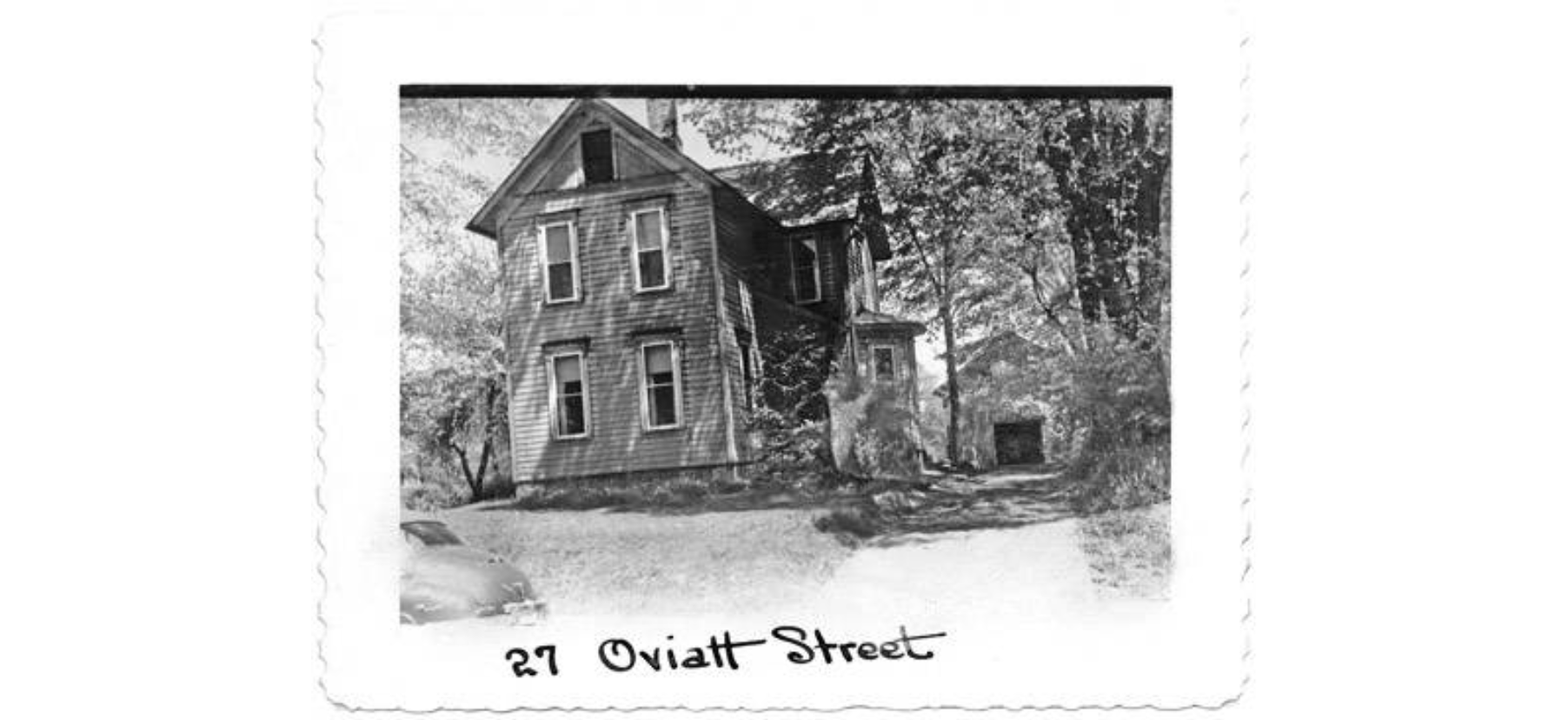 | This circa-1880 home was probably built by English immigrant James L. Harper (1865-1963). Harper was once a South African gold miner and later an agriculturalist who operated greenhouses. His wife, Jessie Wilde Harper, (1875-1932) was active in the Women's Club and the Summit County Horticulture Society. | Summit Memory | |
33 North Oviatt Street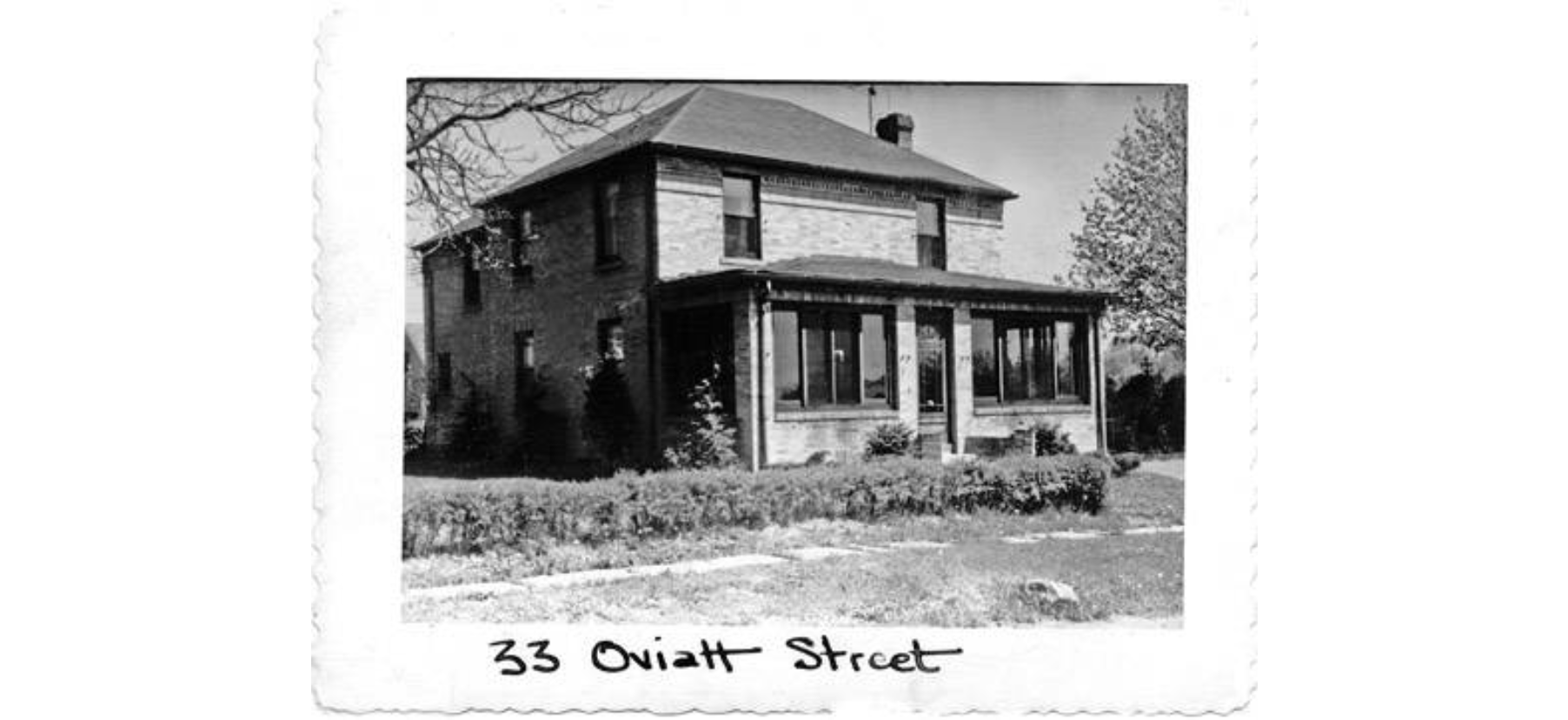 | The Kingzette family occupied this home for more than 20 years. Henry Kingzette (1863-1944) was the head farmer of the Cleveland Boys' School for 10 years. The Cleveland Boys' School was founded in Hudson in 1903 and was intended to be a place where delinquent boys would be "rehabilitated" by working in a farm setting. Kingzette later delivered groceries to town residents. The home dates to circa 1913. | Summit Memory | |
33 South Oviatt Street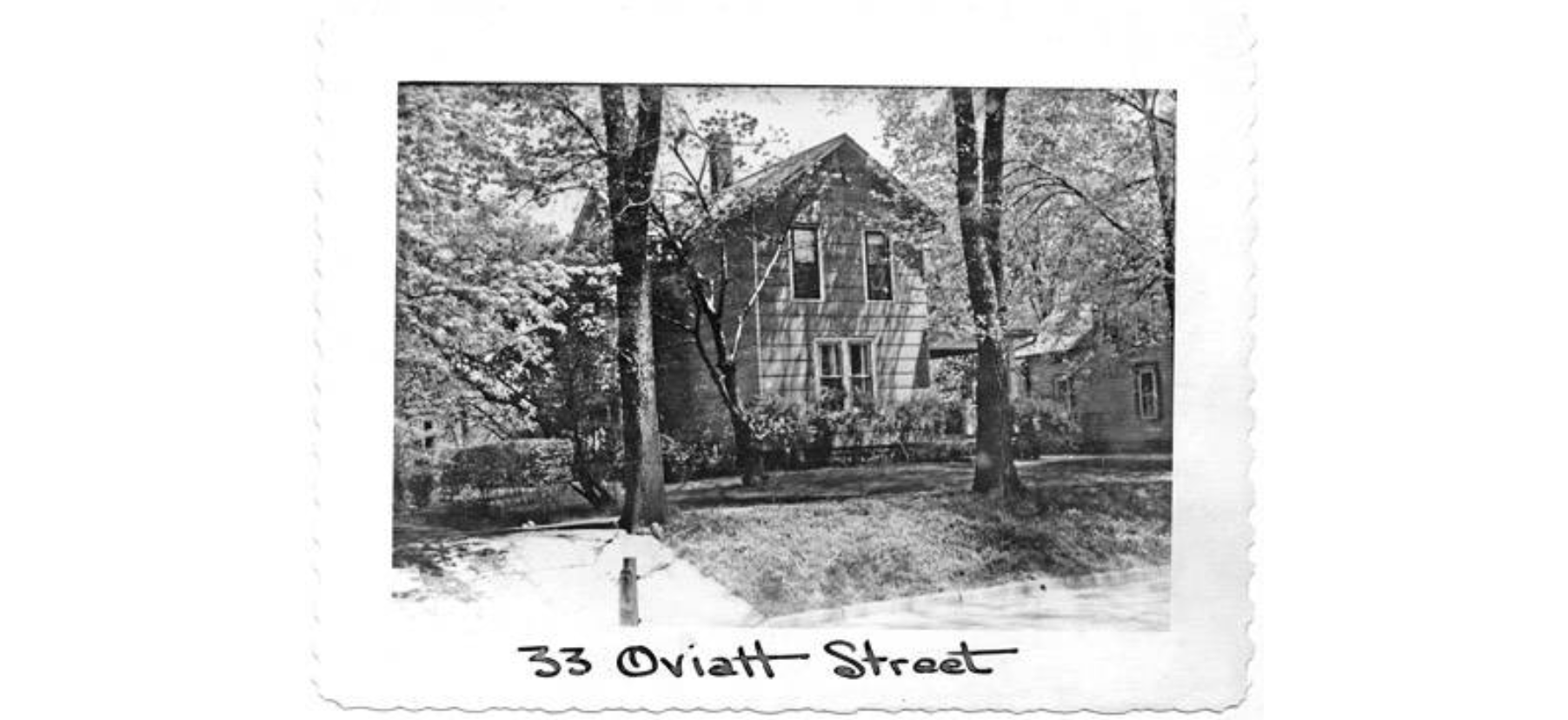 | Hudson Fireworks Co. founder Alexander DiMichele (1894-1969), who was born on the Fourth of July, once lived in this circa-1913 home. Sadly, he lost a son in 1945 after a shed explosion. | Summit Memory | |
34 Oviatt Street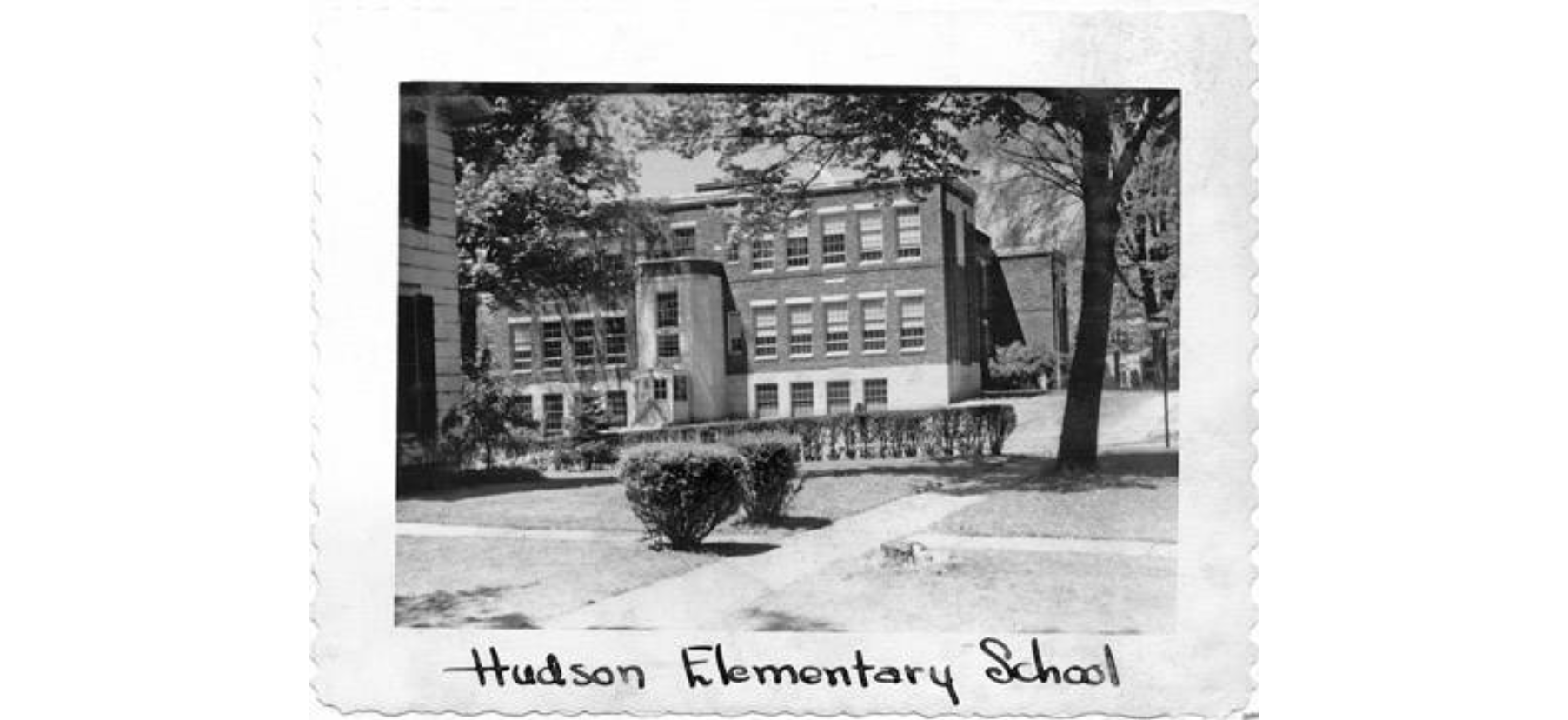 | The very first school in Summit County was established in Hudson in 1801 in a log cabin on the Green just two years after David Hudson founded the town. By 1838, Hudson had nine school districts, which in 1855 were consolidated into one union district. In 1868, the consolidated district erected the Union School, built by local builder George Church (1823-1896), on this site for all students residing in the village. The state inspector condemned the old Union School in 1912 and the present building, designed by John W.C. Corbusier (1878-1928), was erected in 1916. Hudson City Schools officially retired the building in 1997. | Summit Memory | |
37 North Oviatt Street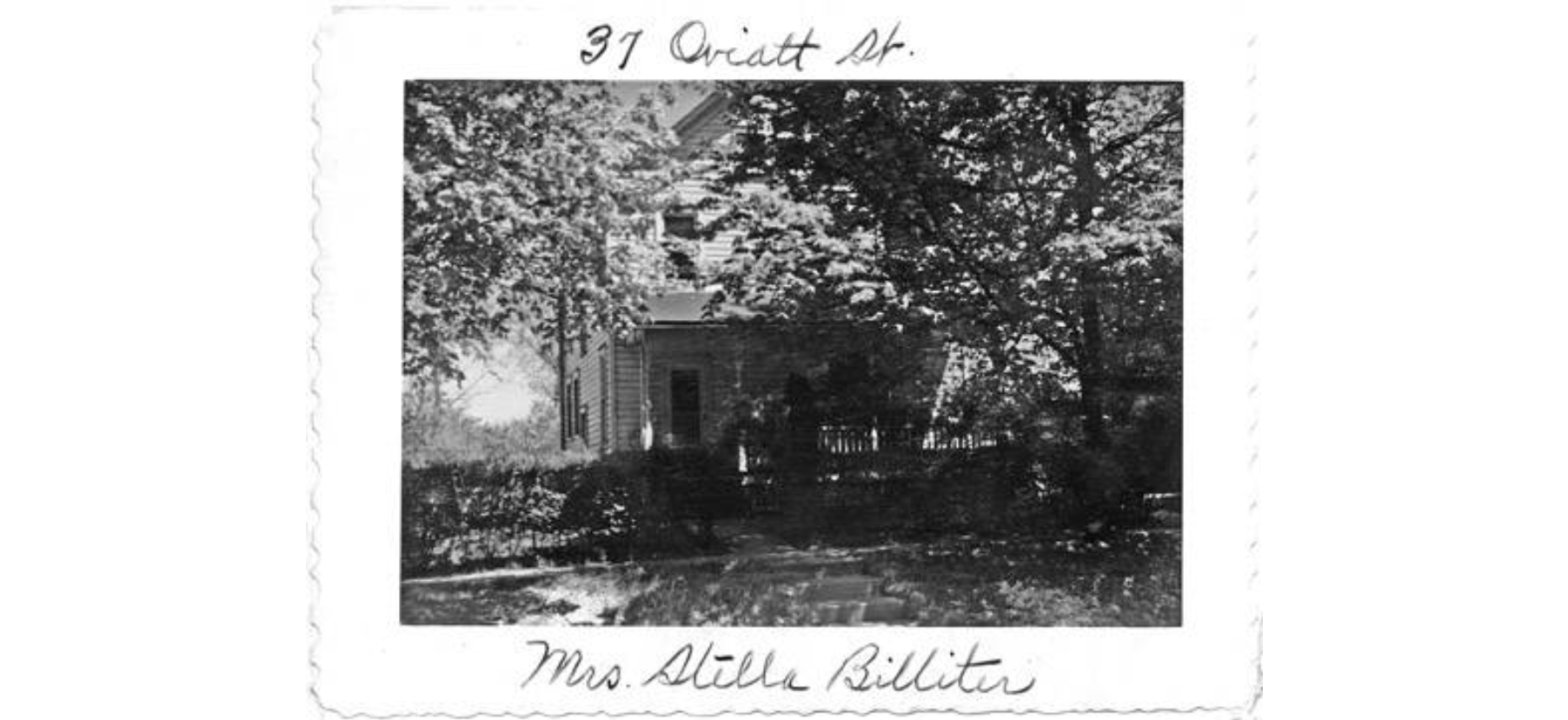 | Very little is know about this home, likely built circa 1907. It is known that George Cannon (1852-1909) occupied it at one time. According to the local newspaper, Gannon was known as the "best known man in the village" and at one time held "more public offices than any other man in the state." In Hudson he served as marshal, constable, sanitary policeman, street commissioner, truant officer and firefighter. He also was the official town lamplighter before electric lights were installed. | Summit Memory | |
37 Oviatt Street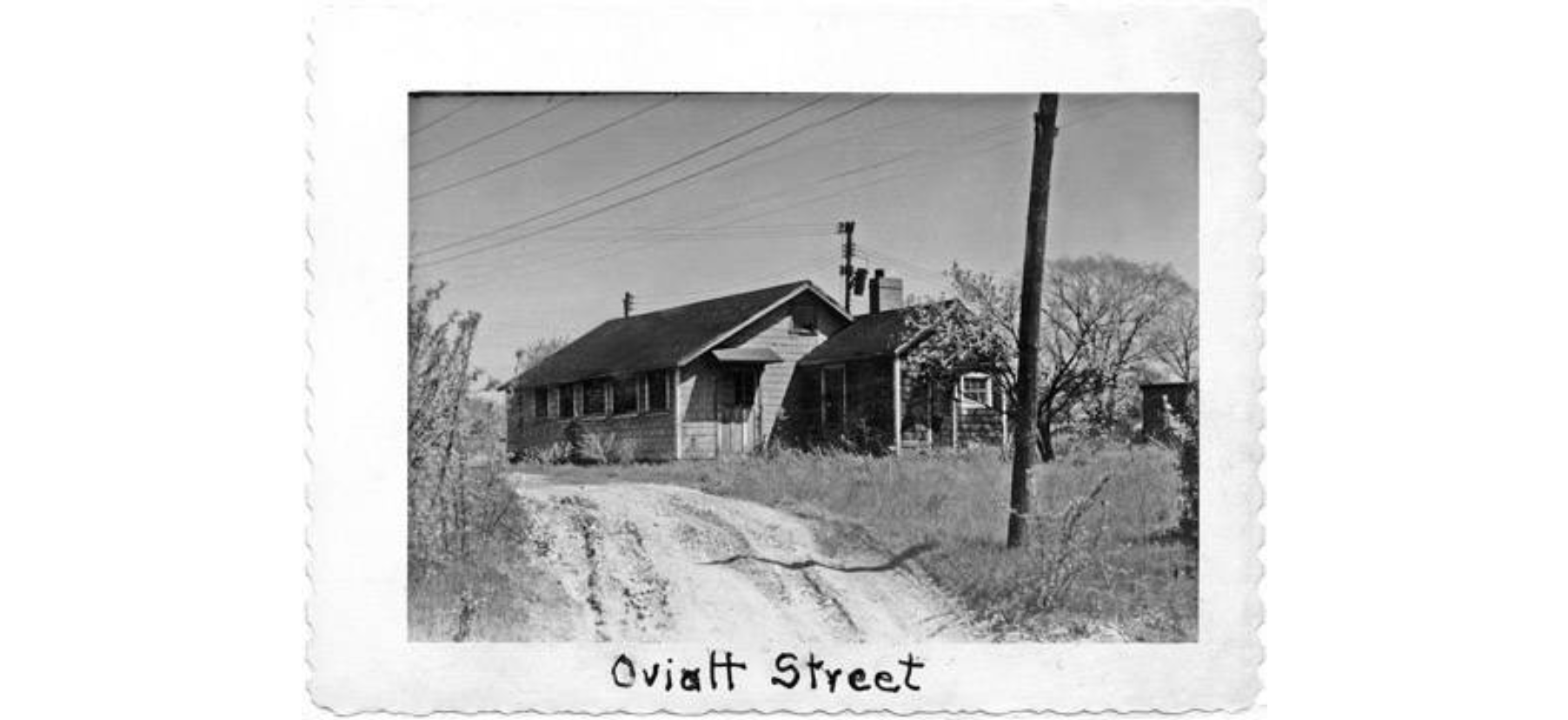 | Stafford Sprague (1903-1968) constructed this building in the early 1950s. It was once home to Hudson Publishing. | Summit Memory | |
39 Oviatt Street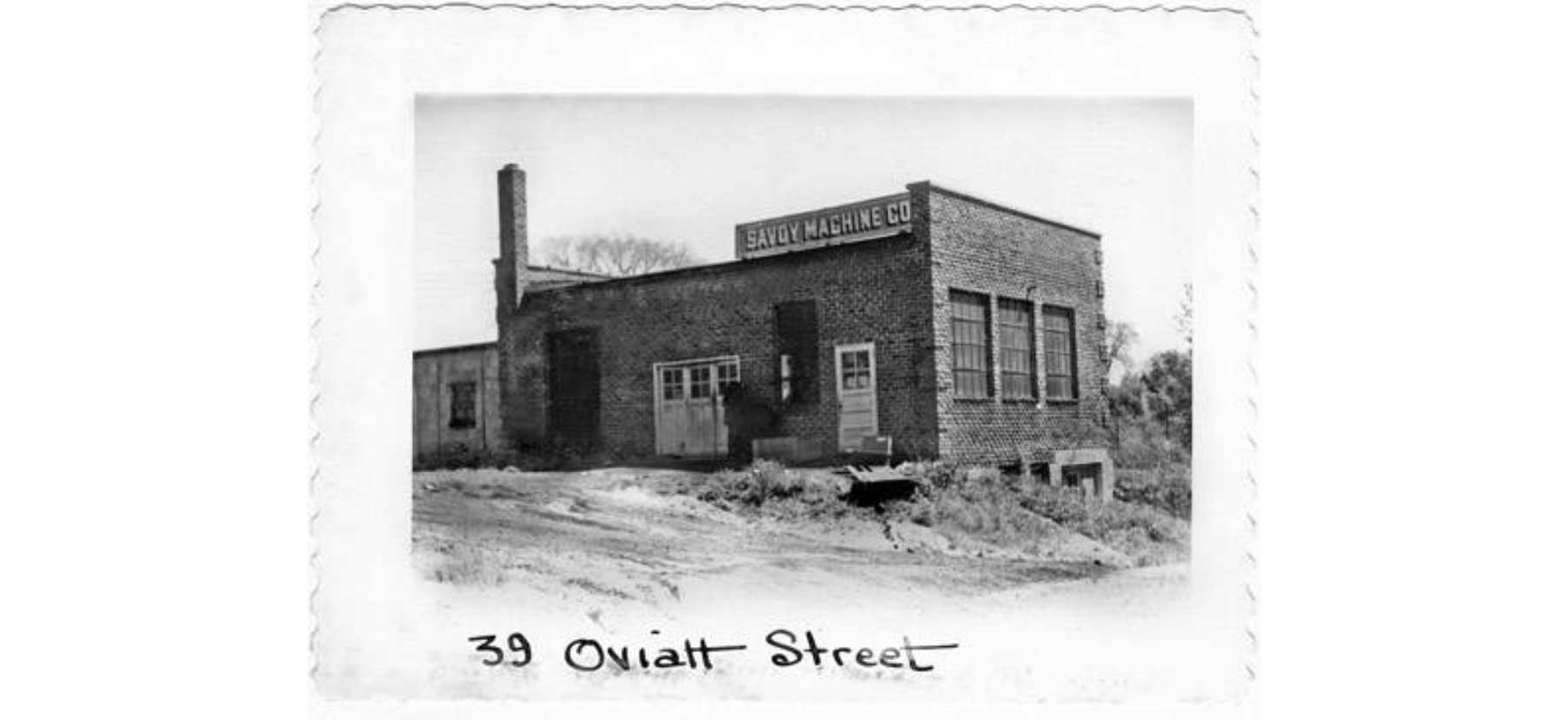 | This building no longer exists. Likely built post-1929, it once housed the Savoy Machine Co., advertised as "Tools, jigs and development--General Machine and Production Work--Metal Stampings--Spray Painting--Electric and Acetylene Welding." | Summit Memory | |
| 43 Oviatt Street George W. Church House 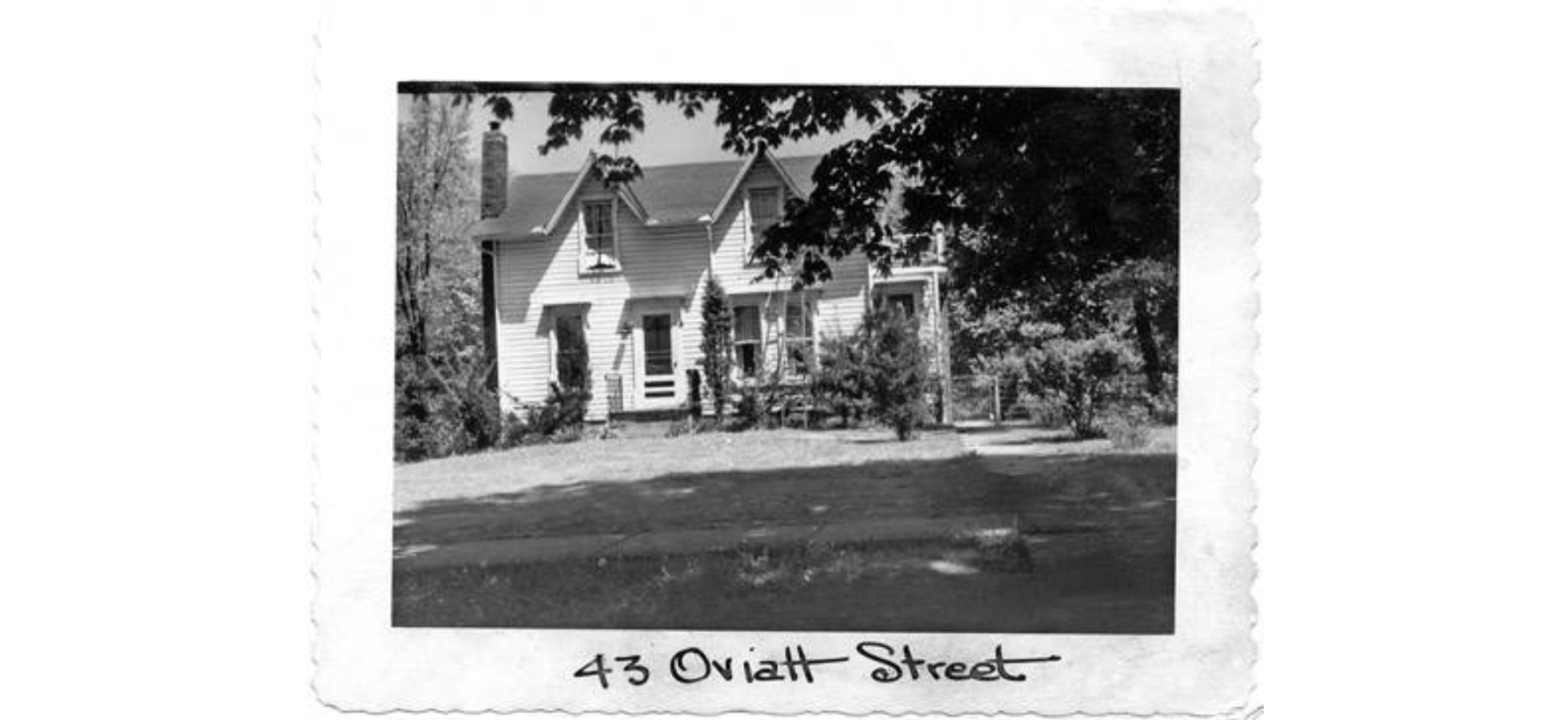 | Captain George Church (1823-1898), a partially deaf Civil War veteran of the 41st Ohio Artillery and a master carpenter, built this home in 1878/9. Mary Carson (1856-1940) bought it as an investment in 1905, raised the roof to add a second story and then rented the home to her daughter and son-in-law Frances (Fanny) (1879-1937) and George W. Saywell (1879-1966). Fanny and George rented to own and when the purchase was complete, they celebrated with an ice cream party. The Kerr and the Wickes families were among the later occupants of this Gothic Revival home. | Hudson Heritage Association Summit Memory | |
| 45 Oviatt Street Frederick N. Seward House 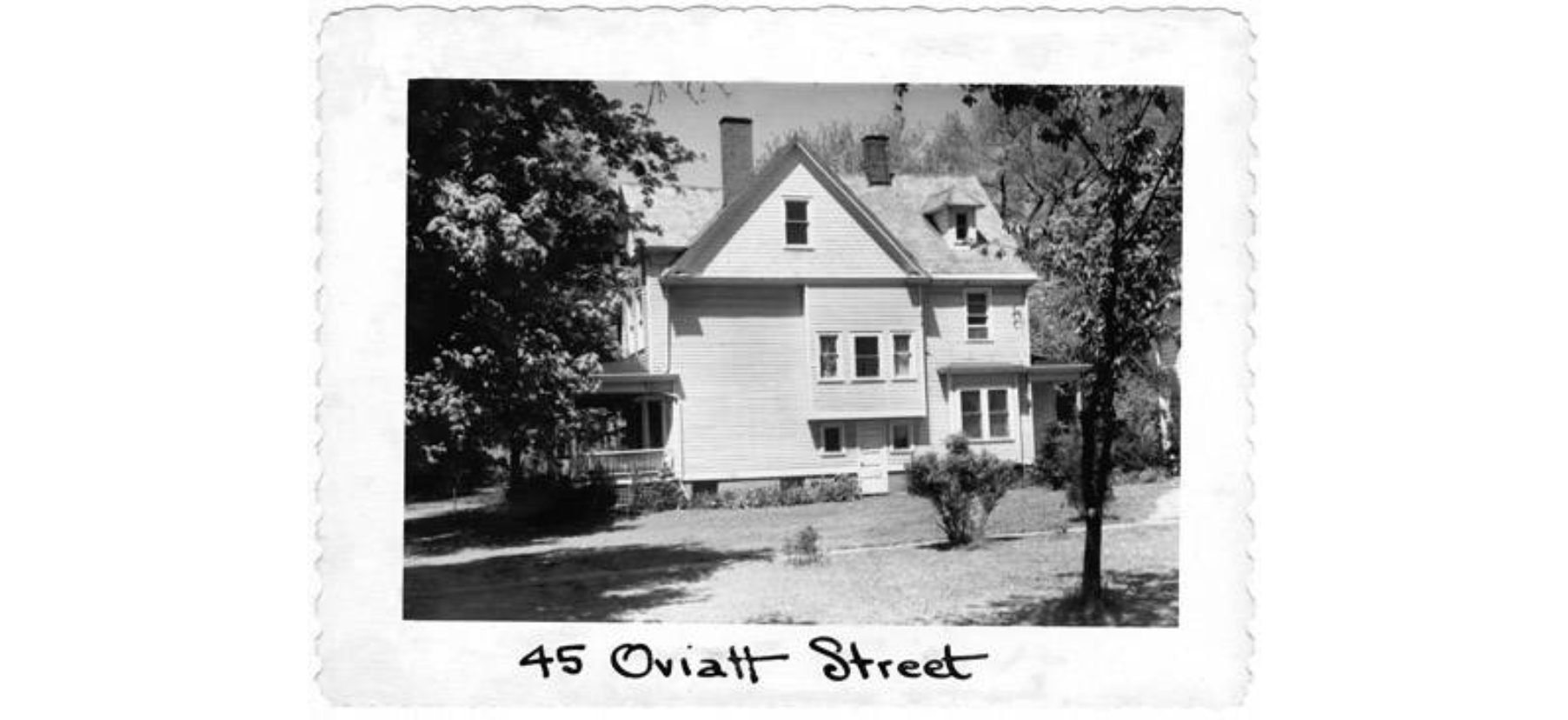 | Frederick N. Seward (1861-1928), who owned a grocery store at 124 N. Main St., built this Queen Anne-style home in 1900. | Hudson Heritage Association Summit Memory | |
48 Oviatt Street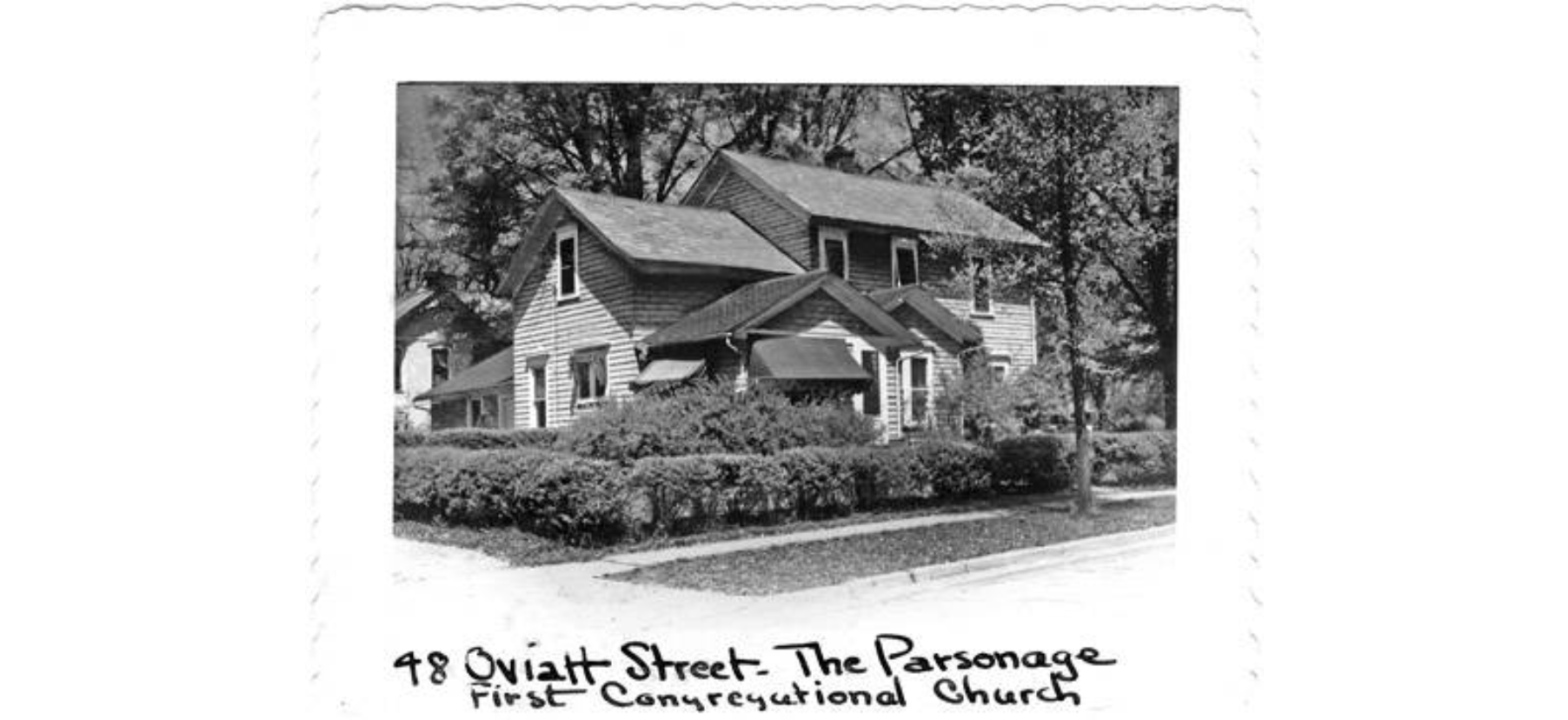 | This home once stood on Division Street and was moved here in 1891. It served as parsonage for the First Congregational Church of Hudson and Rev. John Walbridge (1904-1962) resided in it. | Summit Memory | |
54 Oviatt Street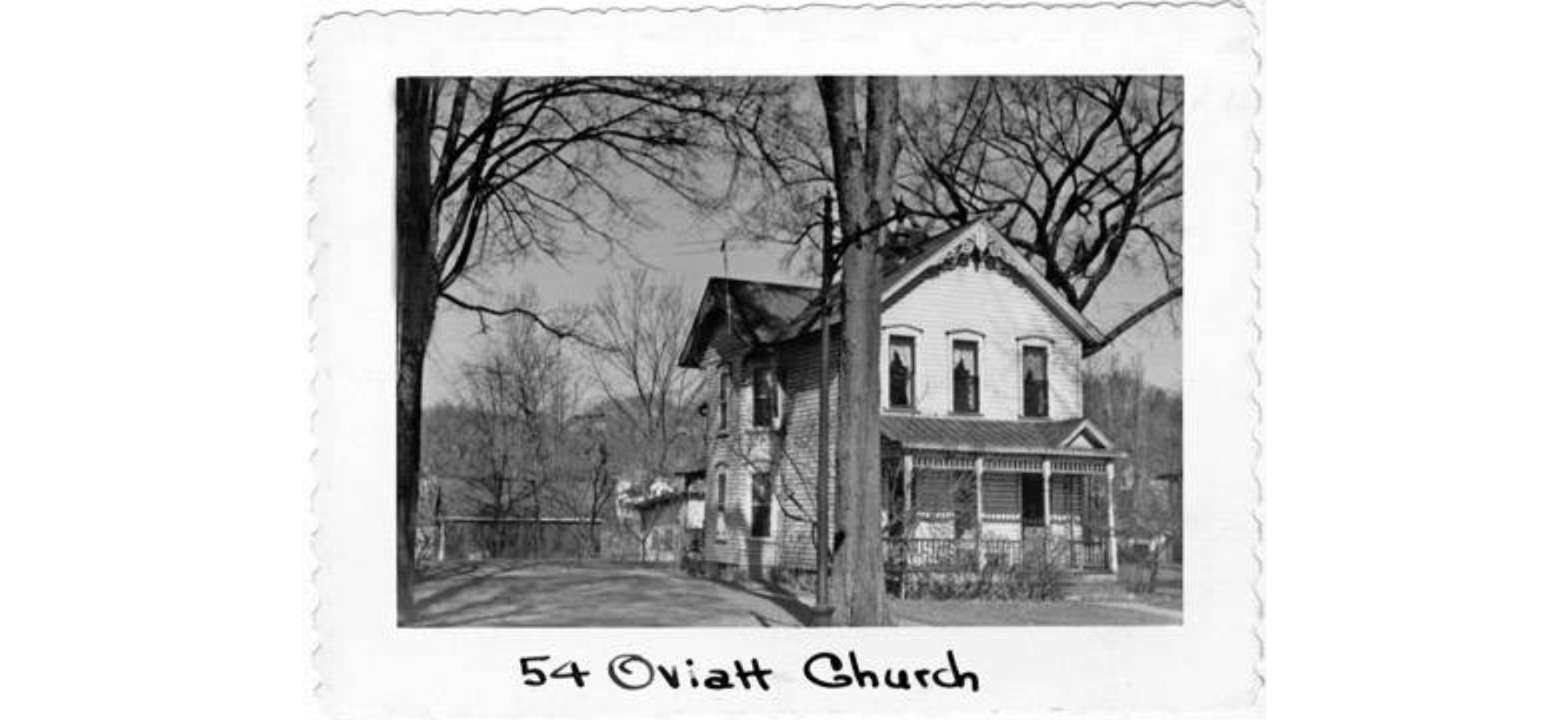 | This circa-1900 house was once the home of the family of contractor Milton Sober (1870-1947). | Summit Memory | |
| 55 Oviatt Street Grimm-Rideout House 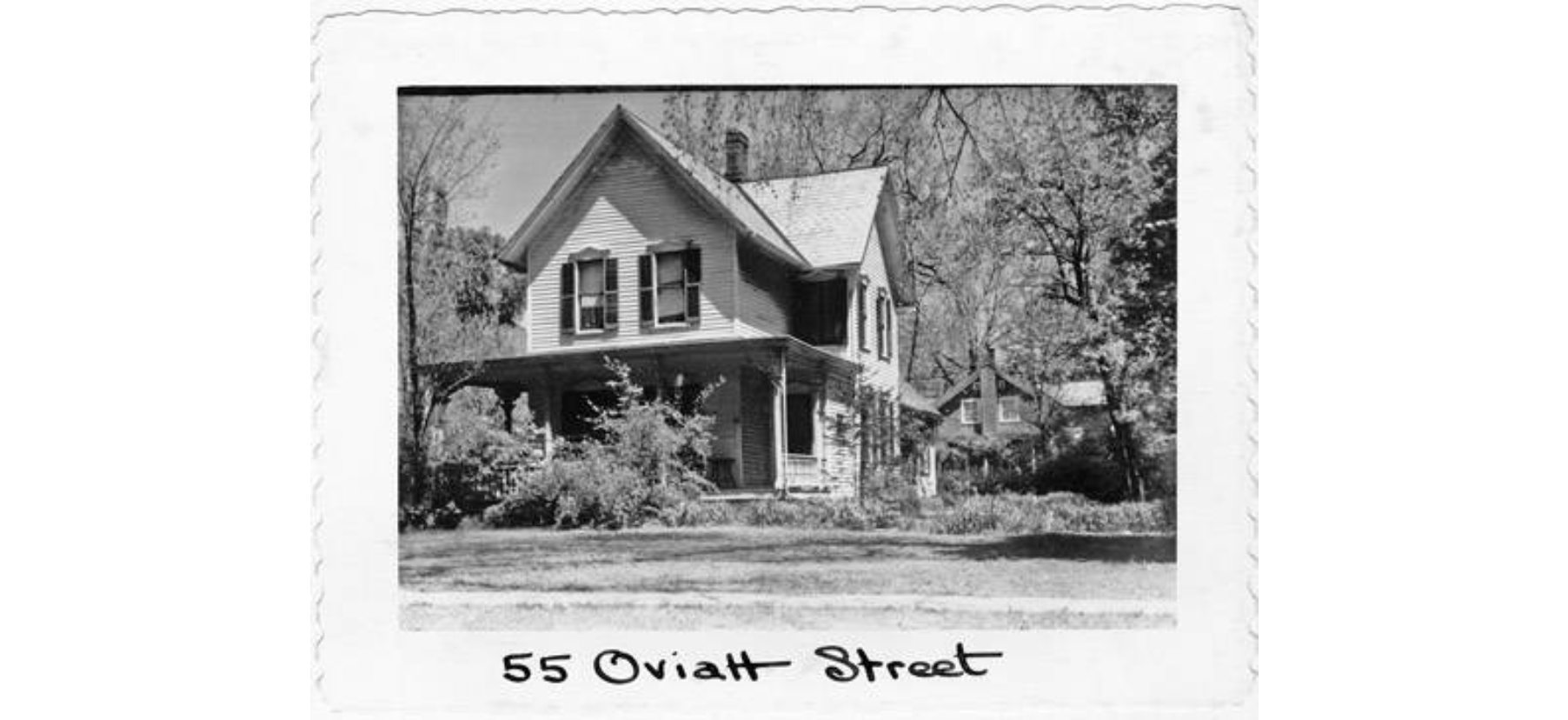 | The Grimm-Rideout House was built in 1879. Gustave Grimm (1850-1914), the first owner, founded G.H. Grimm Manufacturing Co., also known as the Champion Evaporator Works. Grimm's company was the world's leading producer of maple syrup equipment for 114 years. He also installed the first gasoline street light in Hudson at the corner of Aurora and East Main streets. Later owner Samuel Rideout (1841-1928), a Civil War veteran, was the first of several generations of his family to live here. | Hudson Heritage Association Summit Memory | |
| 60 Oviatt Street John G. Mead House 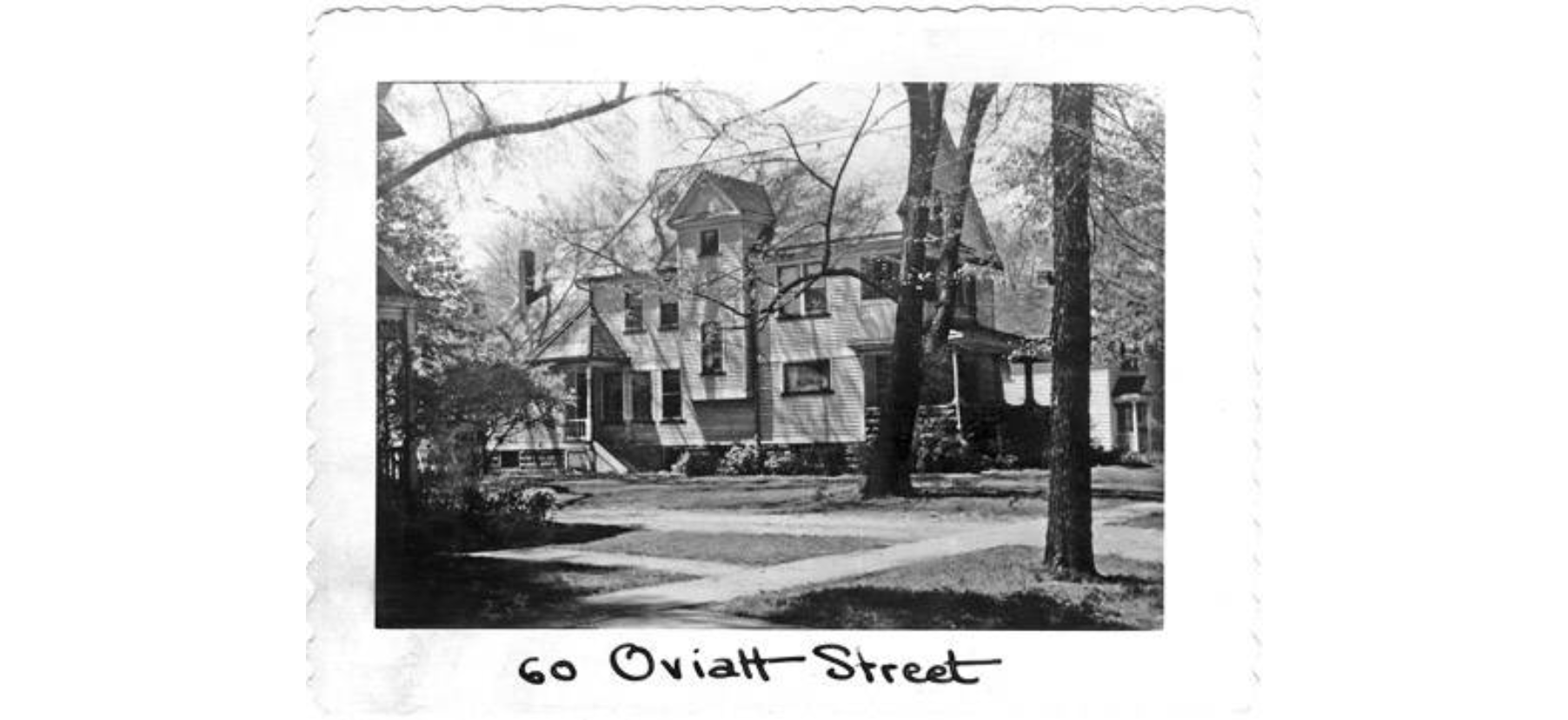 | John G. Mead (1855-1909) built this Queen Anne style house in 1905 for his wife and four daughters. Gas lighting was used. The home also was built with a bathroom that was very modern for its time! Mead, a Welsh immigrant, was the proprietor of a harness shop that became a bicycle shop located at the corner of Main and Clinton streets. Mead also built the Mead Block (134 N. Main St.), which replaced a building he owned destroyed by the 1892 Main St. fire. | Hudson Heritage Association Summit Memory | |
64 Oviatt Street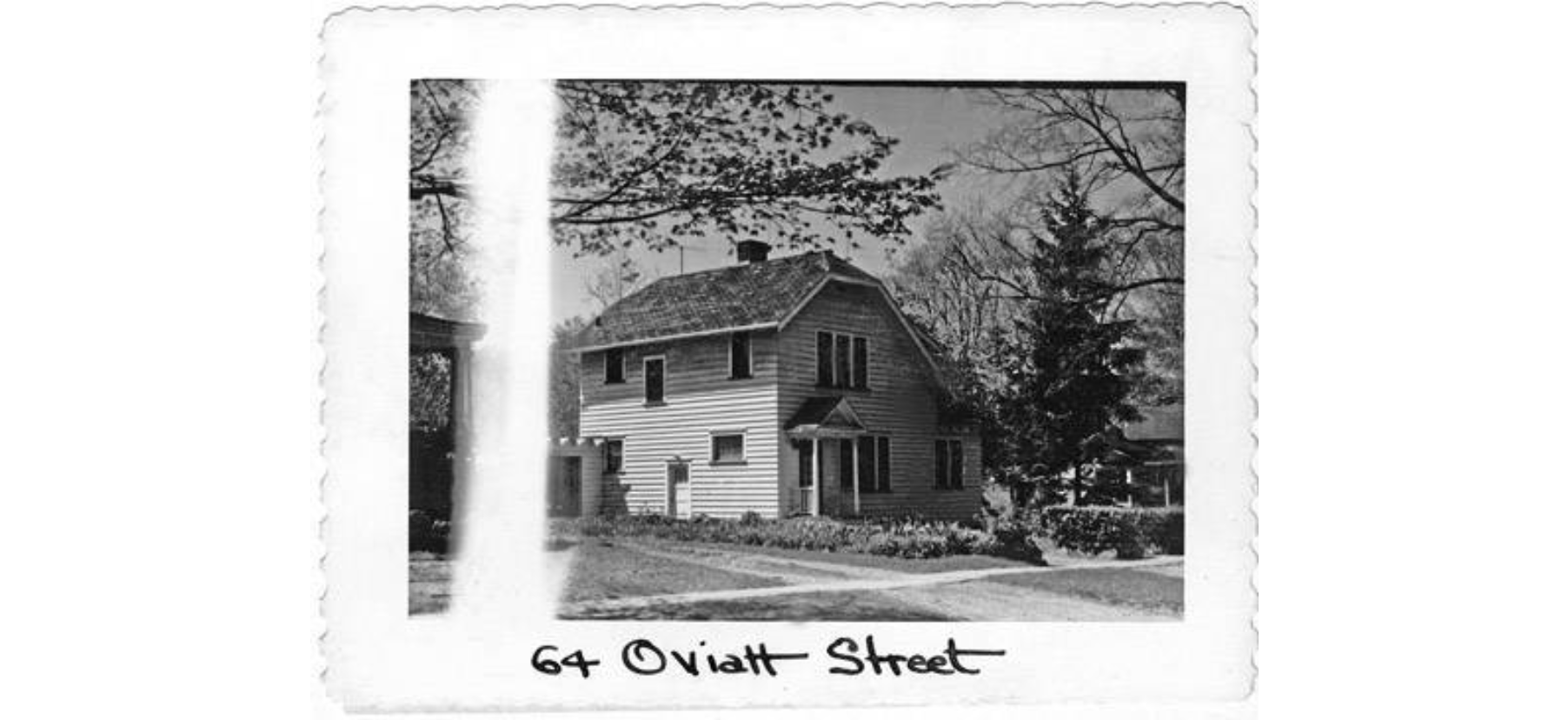 | Russell F. Ashmun (1891-1960), assistant secretary-treasurer of McMyler-Interstate Co. of Bedford, Ohio, was likely the first owner of this 1930s home. Ashmun later served as secretary of the Cleveland & Sandusky Brewing Co. He was also a member of the Hudson council. His great uncle was Dr. George P. Ashmun (1818-1873), a Hudson mayor, state senator, and Civil War surgeon. | Summit Memory | |
69 Oviatt Street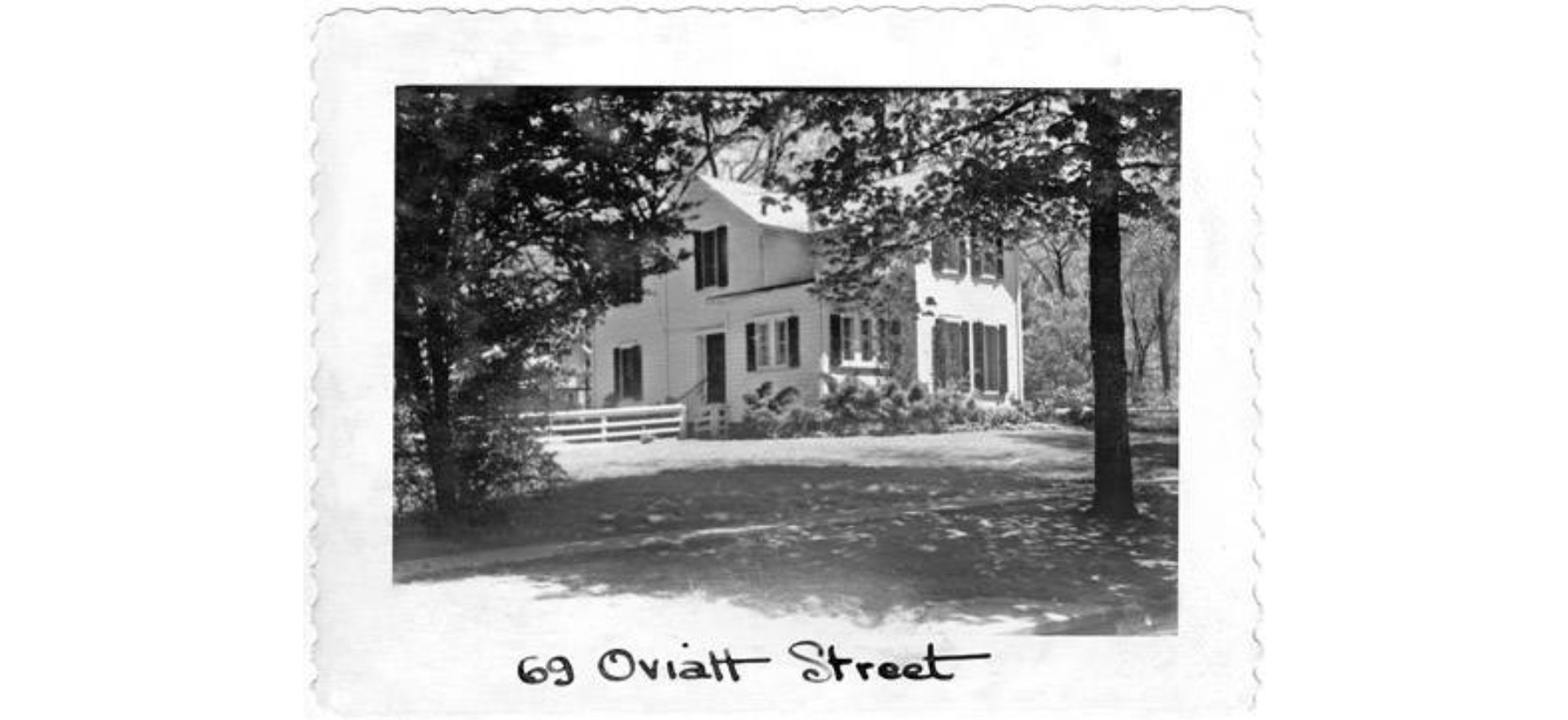 | Little is known about this home, which likely was built in the 1890s. In the 1920s A.E. Ashburner (1876-1935), retired foreign sales manager for the American Multigraph Co., resided here. Ashburner was well-known in the foreign trade and export fields, often serving on various government committees. Stewart Coulton (1915-1976), teacher at Hawken School in Gates Mills, Ohio, also once lived here. | Summit Memory | |
70 Oviatt Street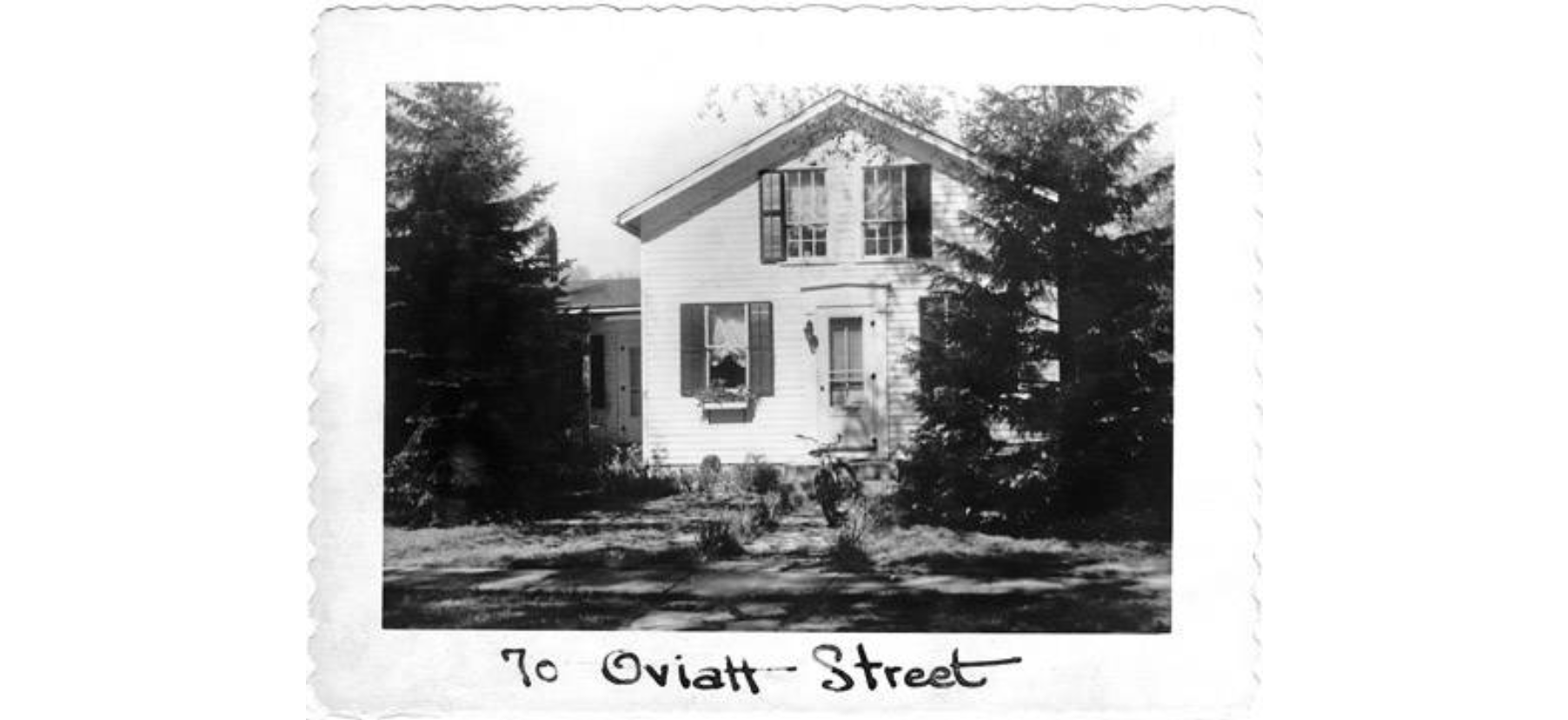 | First appearing on the tax duplicate in 1854, this may have been the first house built on the west side of Oviatt Street. John Joyce (1809-1878), a lifelong employee of the railroad and father of Dennis J. Joyce (1855-1943), a Hudson, Ohio merchant, was the builder. Dennis and an older brother were born here. Late Greek Revival is the basic form in the shallow roof pitch and frieze with no roof returns, the pedimented door lintel and pilasters. The window treatment is altered but it is thought that the second floor windows may be original. | Summit Memory | |
74 Oviatt Street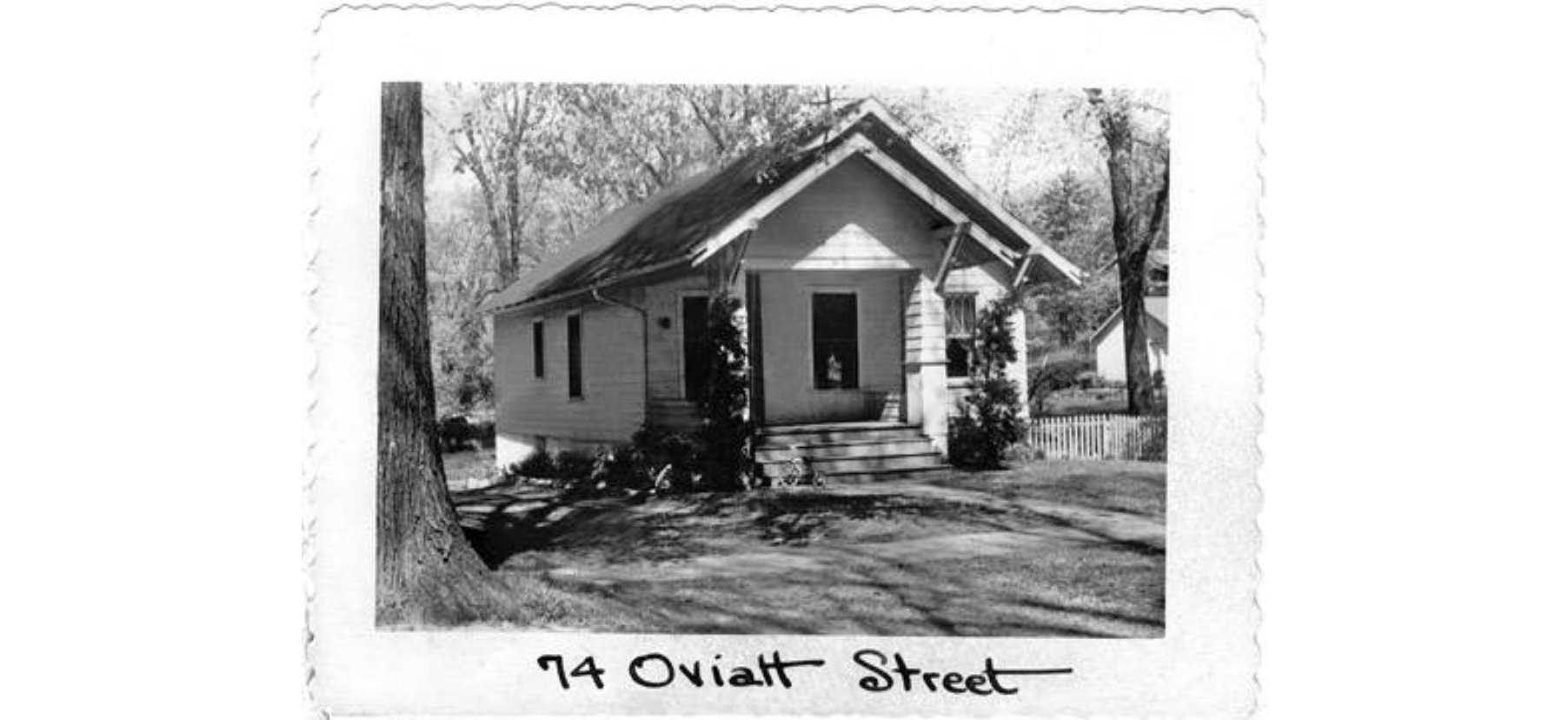 | Lawrence F. Ellsworth (1890-1954), engineer at Akron Water Works and custodian at Hudson Schools, lived in this home. Ellsworth was once conductor of the Hudson Band. The home was built circa 1917. | Summit Memory | |
75 Oviatt Street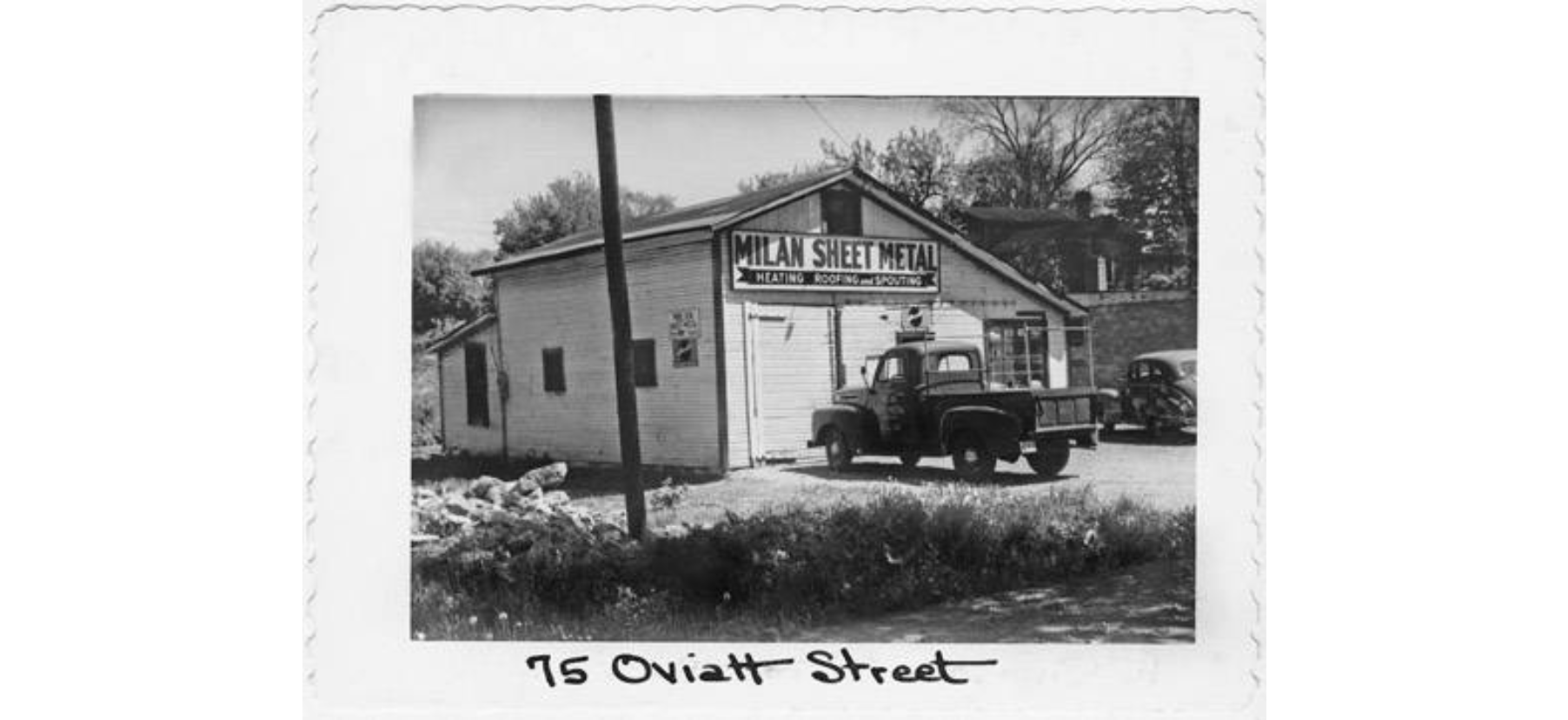 | The construction date of this building is unknown. In the 1950s it housed the Milan Sheet Metal Co., advertised as selling "sheet metals of all kinds, Superfex oil furnaces, and Pocohontas coal stokers." The Milan Sheet Metal Co. constructed the box used for Hudson Township's 1950 time capsule. The building was torn down in 1978. | Summit Memory | |
76 Oviatt Street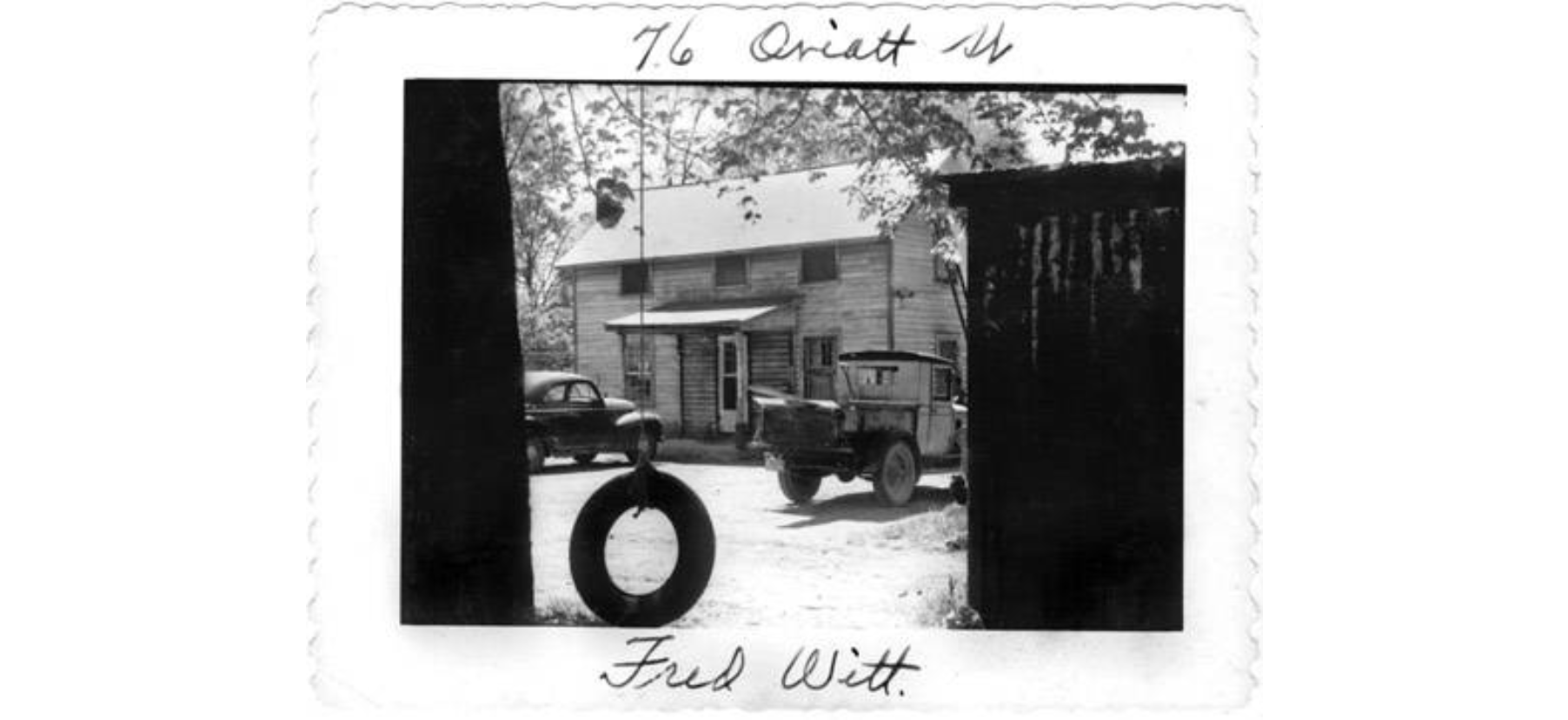 | This home no longer exists. It once belonged to Fredrick T. "Fritz" Witt (1919-1991), caretaker at Markillie Cemetery. A portion of the Witt family property on Valley View Road is now part of Hudson parks. This photograph features a 1946 Chevy. | Summit Memory | |
77 Oviatt Street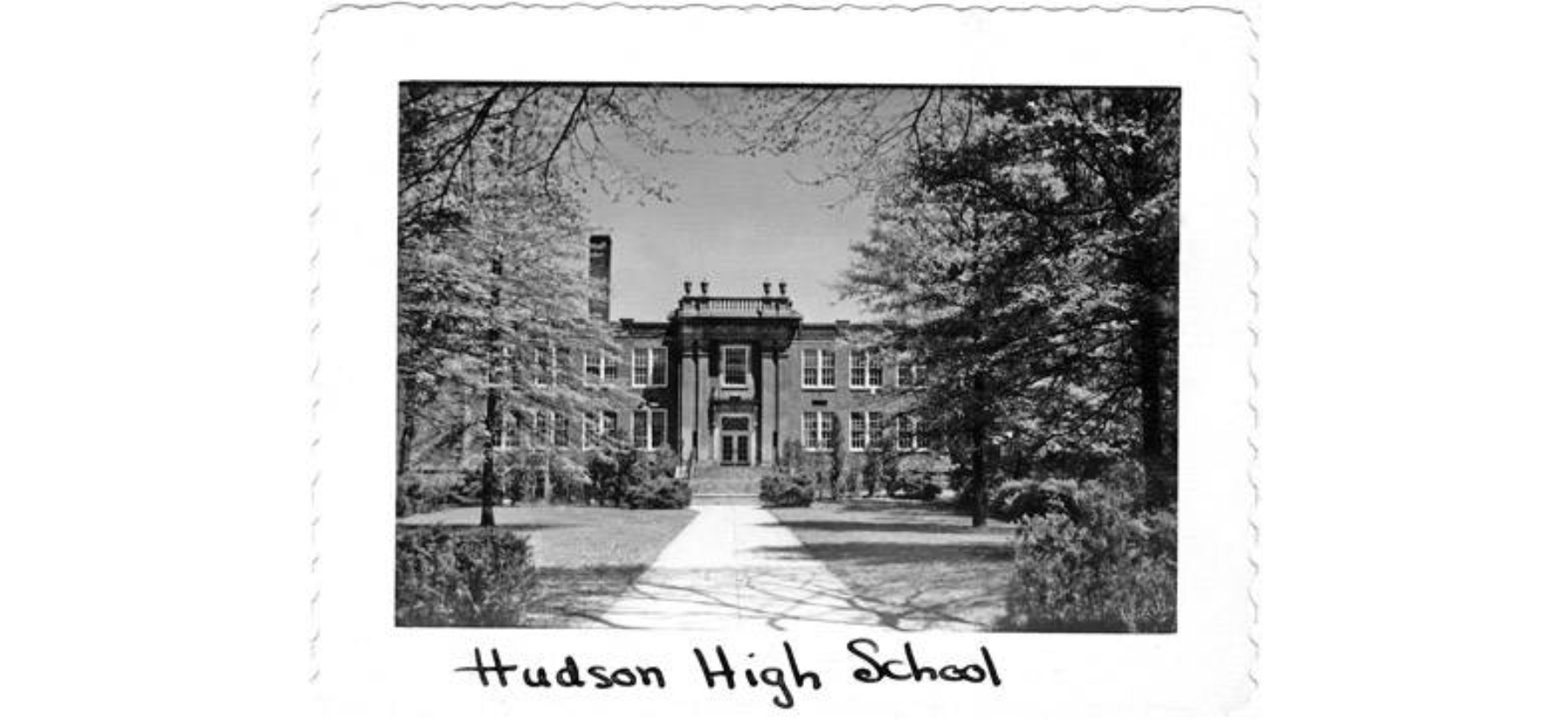 | The first school in Hudson (and Summit County) was founded in 1801. In 1870, a two-year high school program was housed in the now demolished Union School building (located at 34 Oviatt St.) The first graduation exercises took place in 1886. The high school got its own building in 1928 with the completion of this Neo-Classical Revival structure. The new high school (on Hudson-Aurora Rd.) was dedicated in 1992. This building is now used as a middle school. | Summit Memory | |
80 Oviatt Street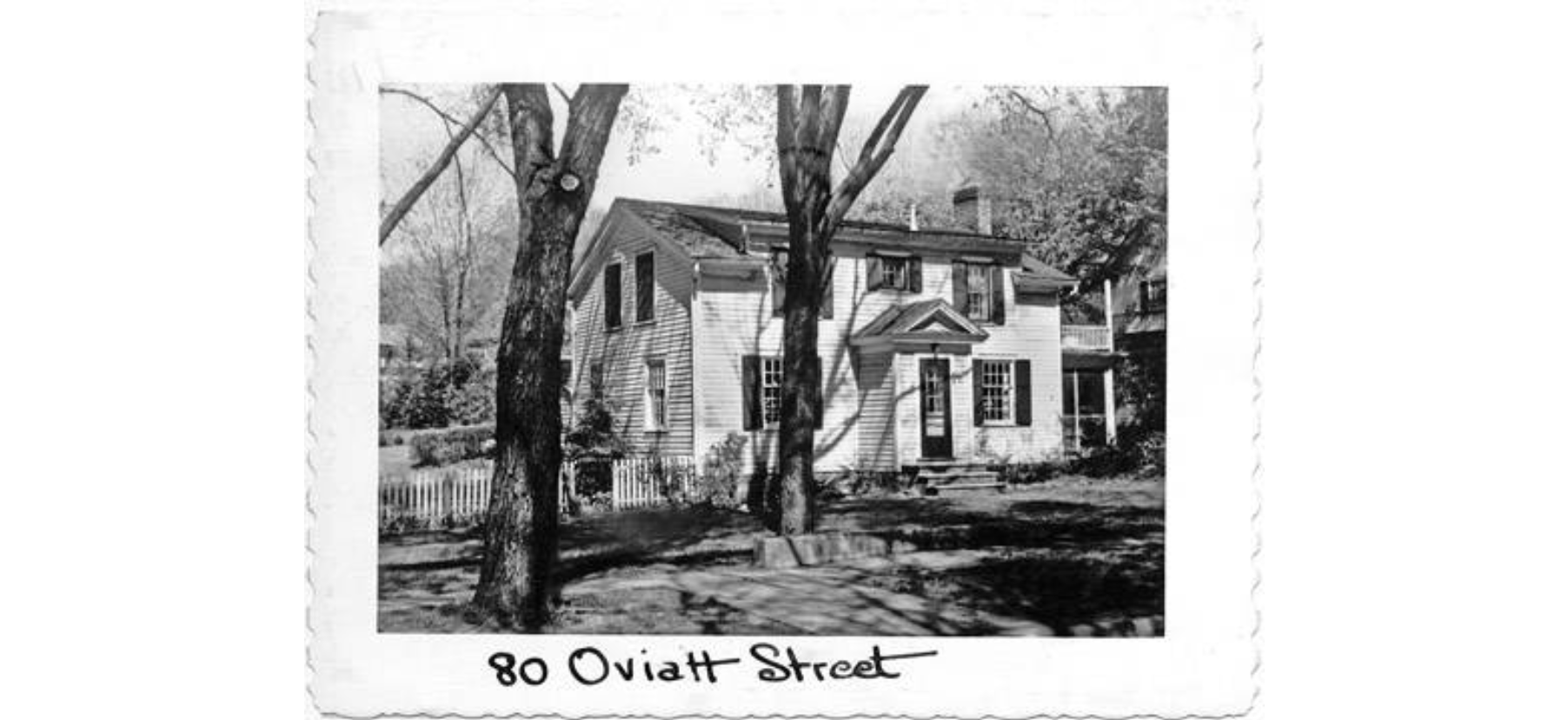 | This home originally stood at 78 Aurora St. When contractor Charles Witty (1829-1911) built a new home at 78 Aurora St. in 1880, this home shared the lot until it was moved to its present location on Oviatt Street in 1920. Glenn Heck (1909-1980), a member of one of the first graduating classes at Western Reserve Academy, once lived here. When the home was on Aurora Street, English immigrant Andrew J. Mintey (1834-1903) occupied it. Mintey was a tailor, Civil War veteran, and brother-in-law to Charles Witty (1829-1911). | Summit Memory | |
84 Oviatt Street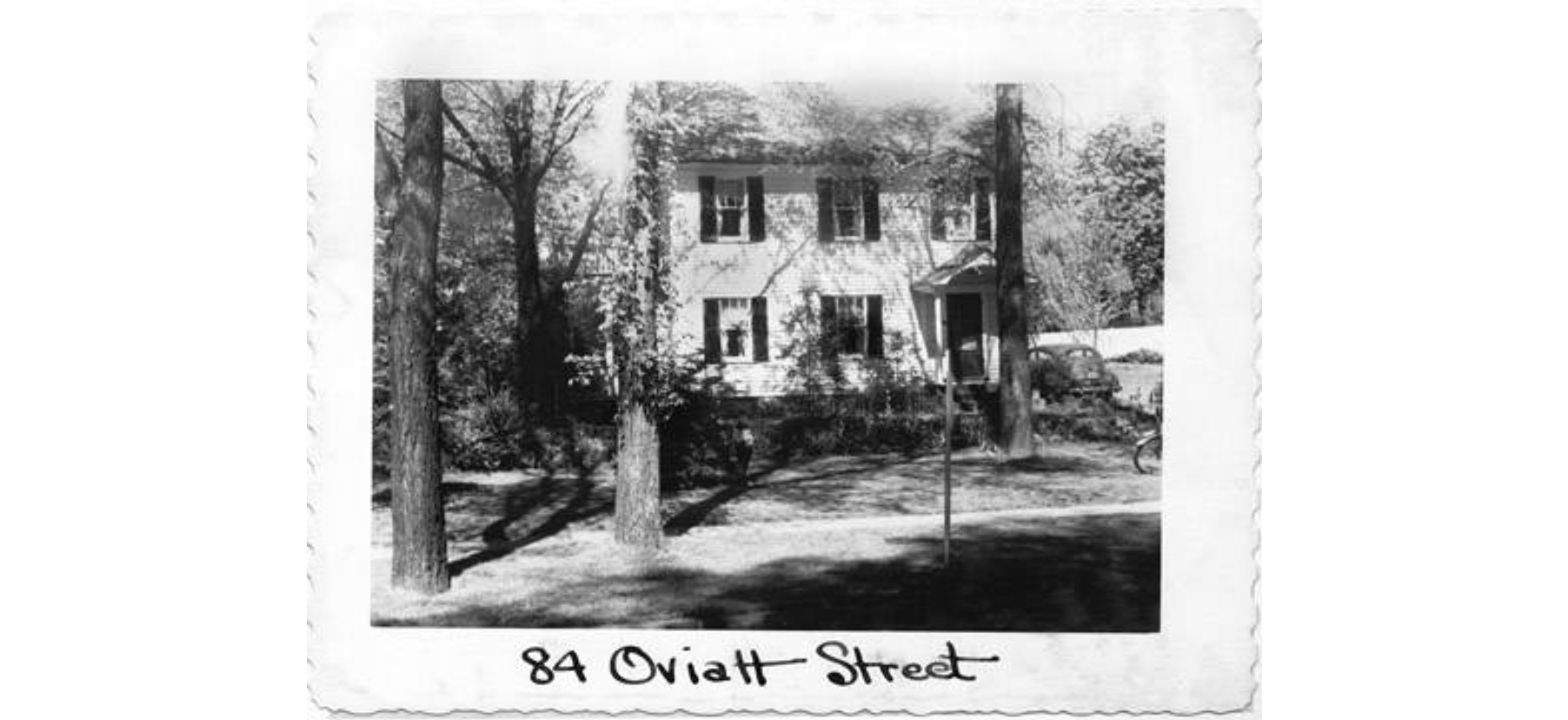 | This house suffered a skillet-grease fire, which resulted in serious damage to the structure in 1944. Andrew Tomlin's (1935-1956) insurance covered the cost of restoration and repairs. Chevy dealer and former Justice of the Peace R.L. Kilbourne "Kibby" (1891-1955) also lived here. | Summit Memory | |
85 Oviatt Street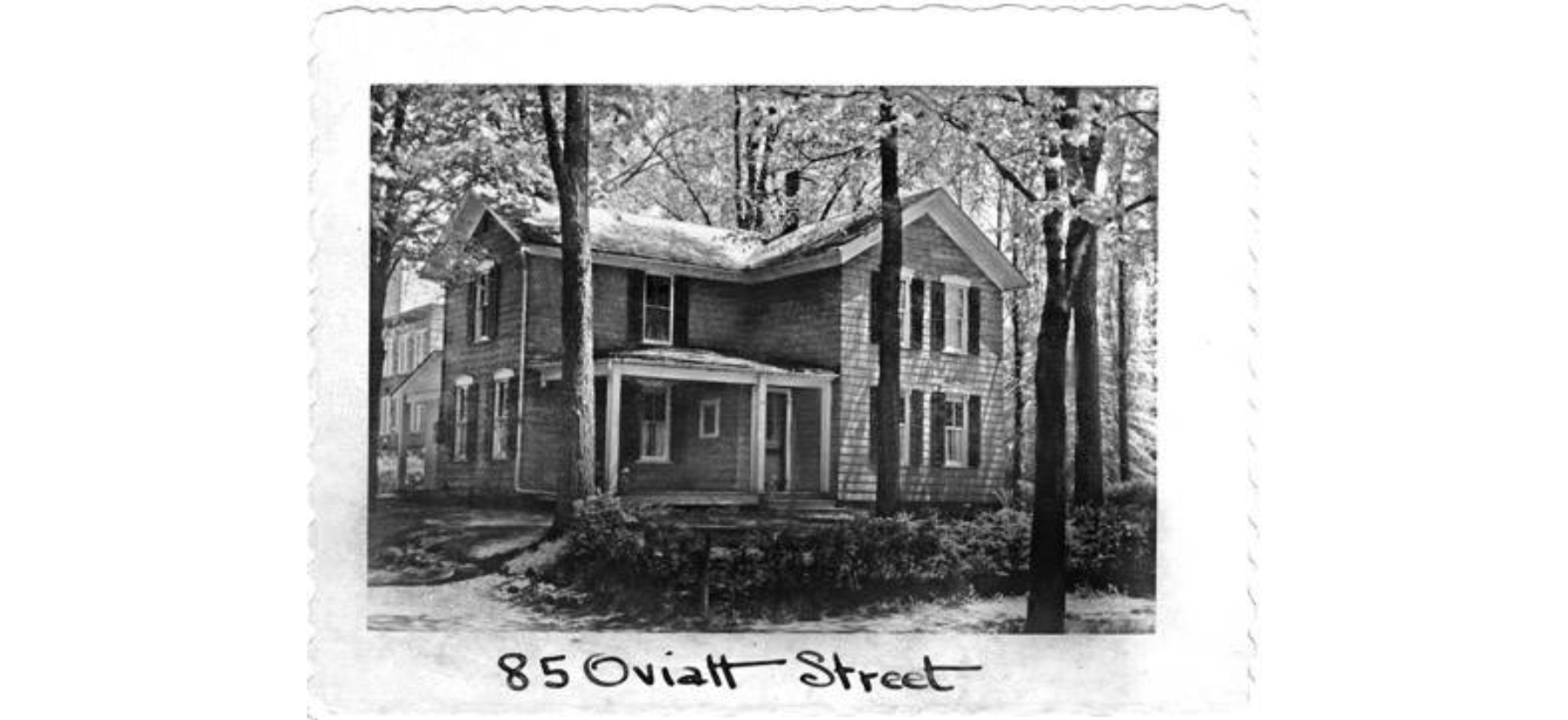 | This 1907 home was once home to the Saywell family. English immigrant Edward Saywell (1859-1940) followed his older brother William Saywell (1853-1912) to America. While William traveled the United States, Edward settled in Hudson and raised a family. Edward served as a teamster and a janitor. Edward's son Frederick Saywell (1867-1966) became a druggist and opened the renowned Saywell's Drug Store on Main Street. | Summit Memory | |
90 Oviatt Street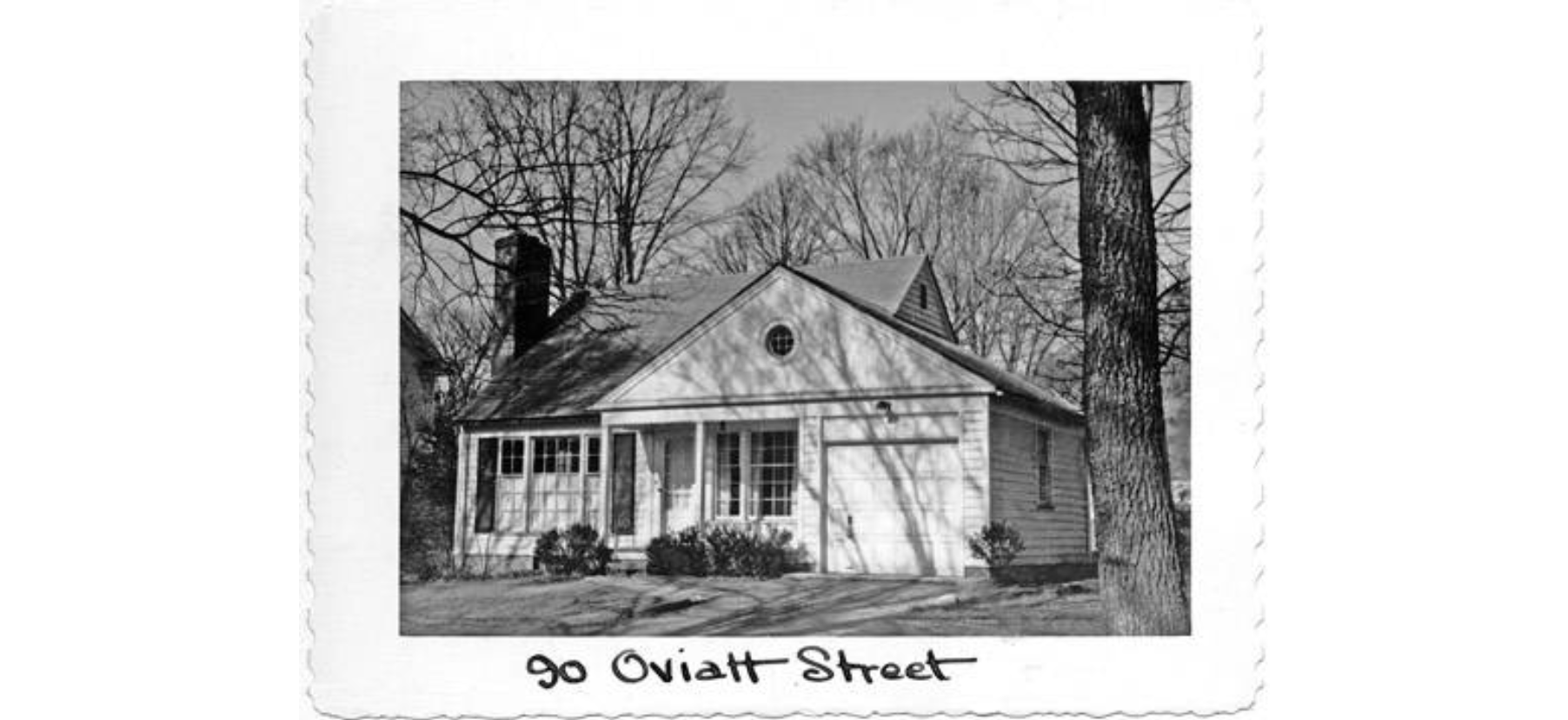 | Former Hudson councilman and member of the Hudson Charter Commission Joseph C. Crawford (1911-1976) lived in this circa-1940 home. | Summit Memory | |
91 Oviatt Street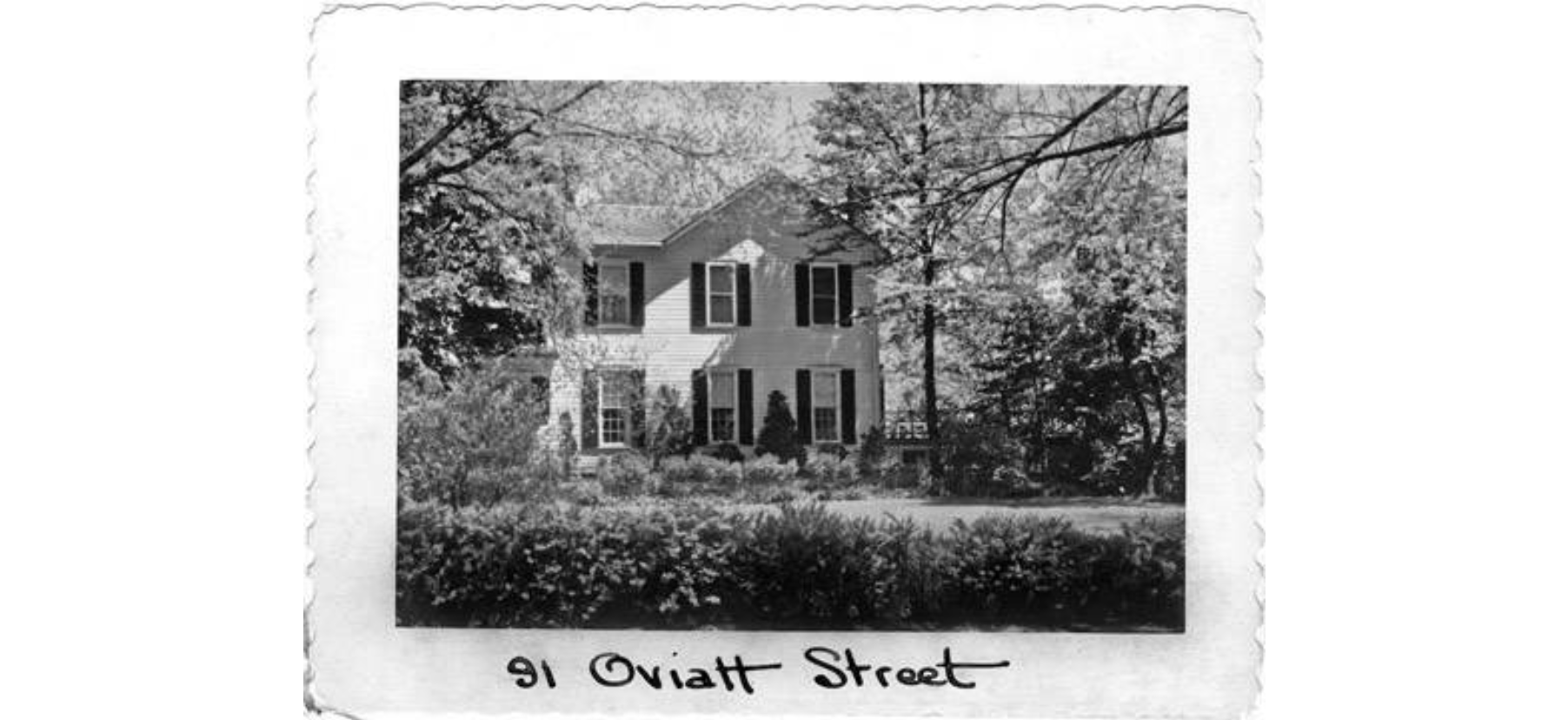 | Celina Stone Cash (1844-1923) built this home in 1890. Her husband, Charles R. Cash (1847-1921), was the local blacksmith. Celina's older brother, Frederic Charles Stone (1843-1862), died of disease in Somerset, Kentucky, during the Civil War. Lura Fuller (1889-1977), a local correspondent for the "Akron Beacon Journal" and "The Plain Dealer," once lived in this home. | Summit Memory | |
95 Oviatt Street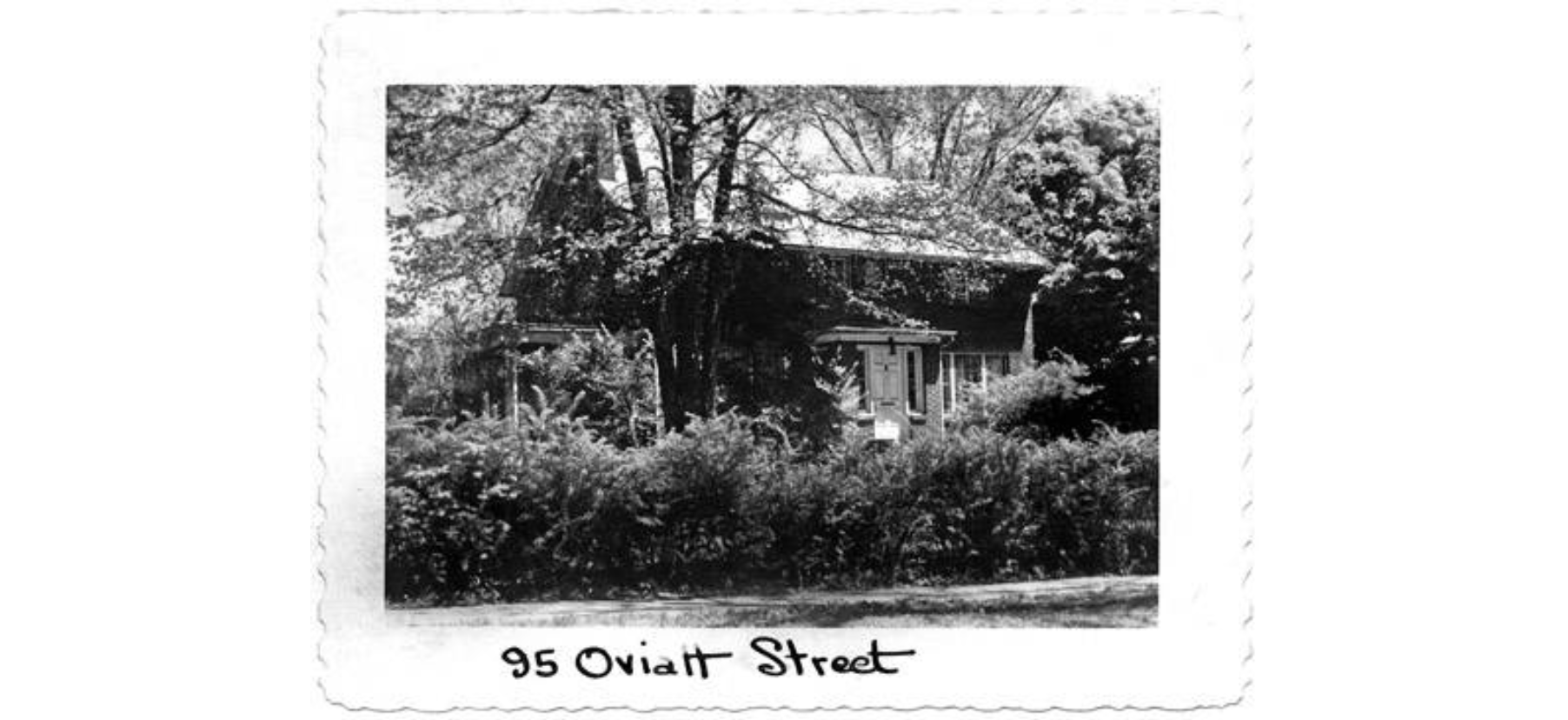 | This circa-1860 house was the carriage house and barn for the home at 120 Aurora St. Edward C. Kenyon (1920-2005), a 35-year employee of Morse Controls and former member of the Hudson Zoning Board, once lived here. | Summit Memory | |
125 Oviatt Street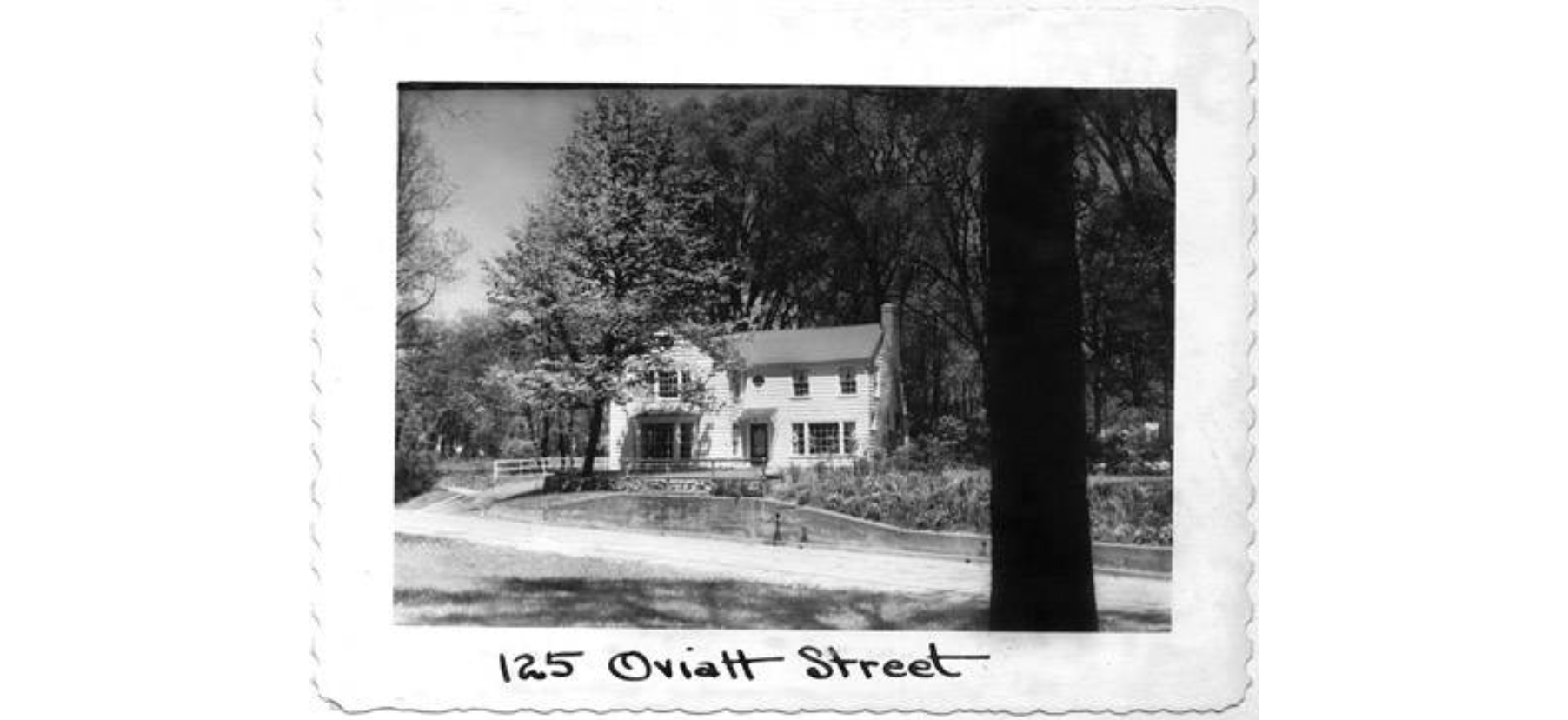 | Western Reserve Academy now owns this circa-1947 property. Robert R. Elliott, sales manager for Firestone, once lived here. | Summit Memory | |
12 Owen Brown Street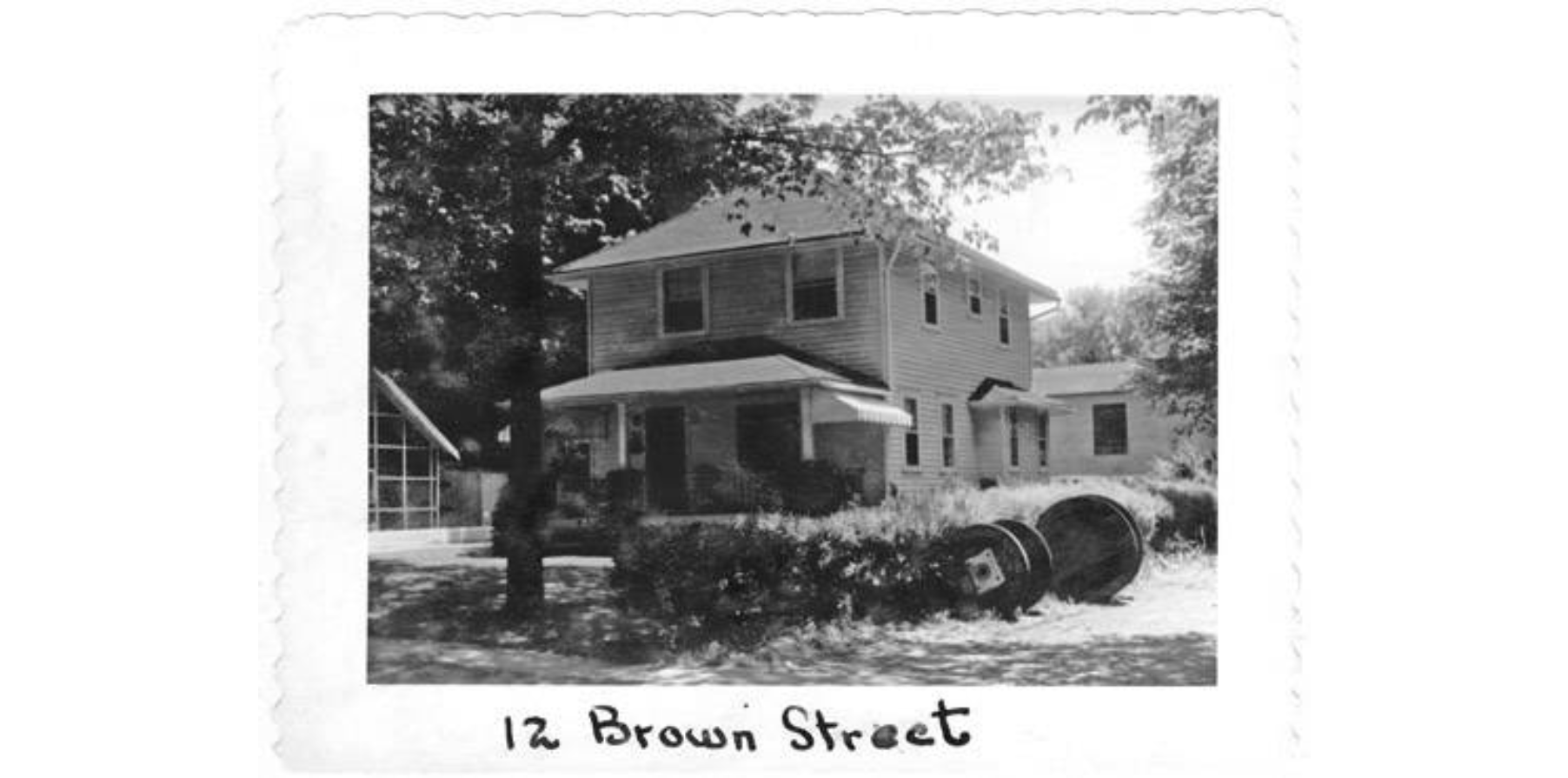 | This two-story Greek Revival, built in the 1920s, was once home to James Sorgi (1886-1958) and his family. Sorgi, whose father founded the American Fireworks Co. in Hudson, apparently had the family business in his blood. He dreamed of sending a man into space, fired empty rockets in the air (he was one of the first to attempt to fire a rocket to the moon), and corresponded with foreign leaders about rocketry. The American Fireworks Co. continues to be family-owned and operated. Lucy Sorgi (1899-2001), James's wife, originally went into the fireworks business with her brother Alexander DiMichele (1894-1969). After a falling out, James and Lucy started their own company. The DiMicheles went on to own the Hudson Fireworks Co. and later sold it. | Summit Memory | |
| 13 Owen Brown Street Whedon Carriage House 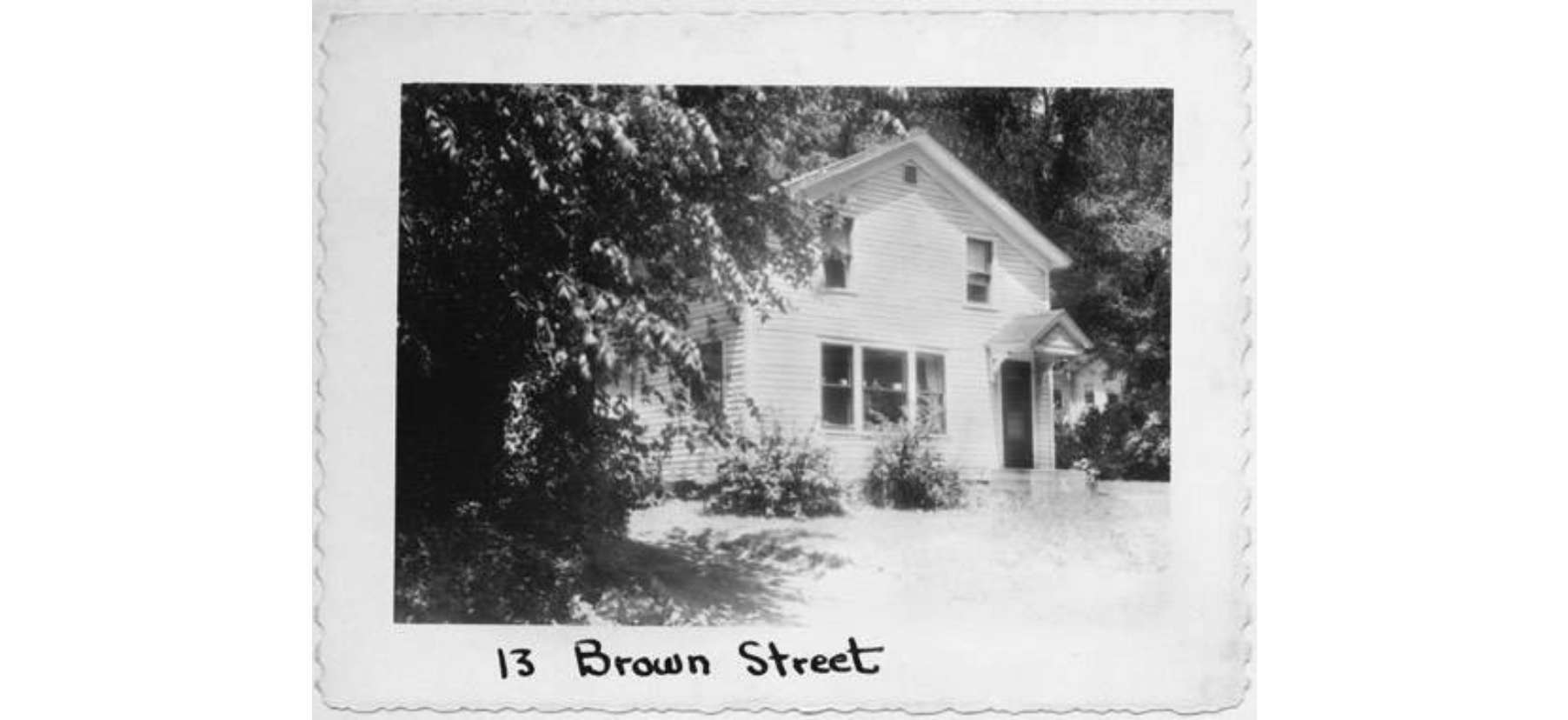 | Ownership of this 1834 two-story building was frequently transferred for the price of a mere dollar. It is thought that this building may have served as a carriage house for the home at 258 N. Main St. and then was later moved to this site. The first occupant of this building may have been a cow! Several of Hudson's early inhabitants once owned this home including Owen Brown (1771-1856) and John B. Whedon (1807-1861). The research to uncover the history of this home was a birthday present for the present owner. | Hudson Heritage Association Summit Memory | |
| 19 Owen Brown Street Lindley-Brewster House 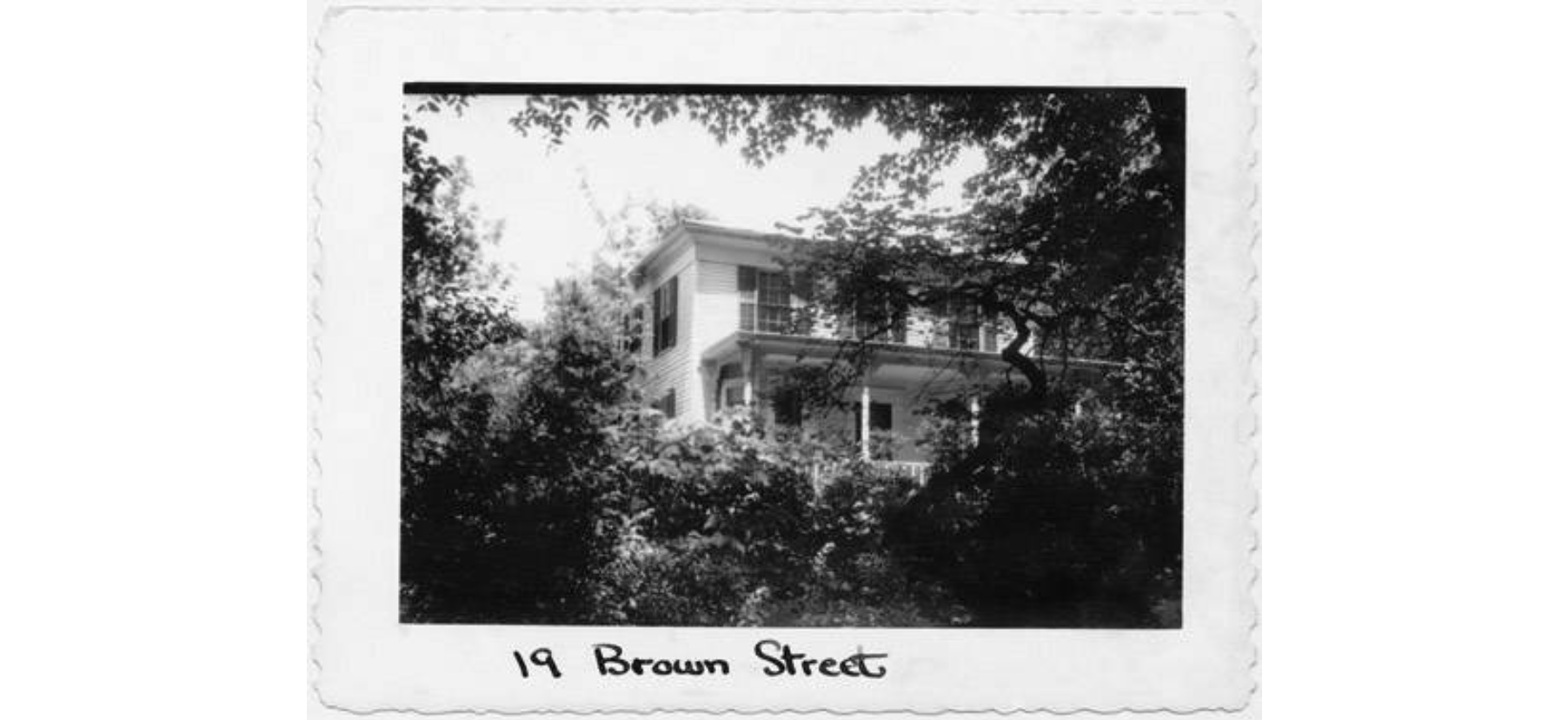 | A simple Greek Revival two story clapboard house with two distinct sections and an extensive history is the Lindley-Brewster home. The land was once owned by David Hudson ( -1836), Owen Brown ( -1853), and by knitter-Mrs. Isabel H. Lindley (1775- 1853). She emigrated from Bloomfield, New York and was a beloved and hard-working charter member of the Congregational Church organized in 1802 so we know the current kitchen and loft bedroom to be very, very old as they date to her ownership. It appears parts of the house were built by Owen Brown ( -1853) for the widow Lindley before she owned it in 1840. In 1849 the structure was sold to merchant Anson Brewster ( ) and in 1852 he incorporated a larger front section to the structure and sold it yet again to Charles Farwell (1821- ). Later owner was blacksmith, John Seidel (1817-1907) who has the unusual distinction of being the first person on record to emmigrate from Selb, Germany in 1839. Seidel also Victoranized the home and added the front porch, walnut built in cupboards, and bay windows. His daughter, Grace (1859-1944) was the first librarian of the Hudson Library & Historical Society serving from our inception in 1910 to 1924. Later families would occupy the structure with each family wearing a history upon the poplar floor boards and making the place a home. | Hudson Heritage Association Summit Memory | |
20 Owen Brown Street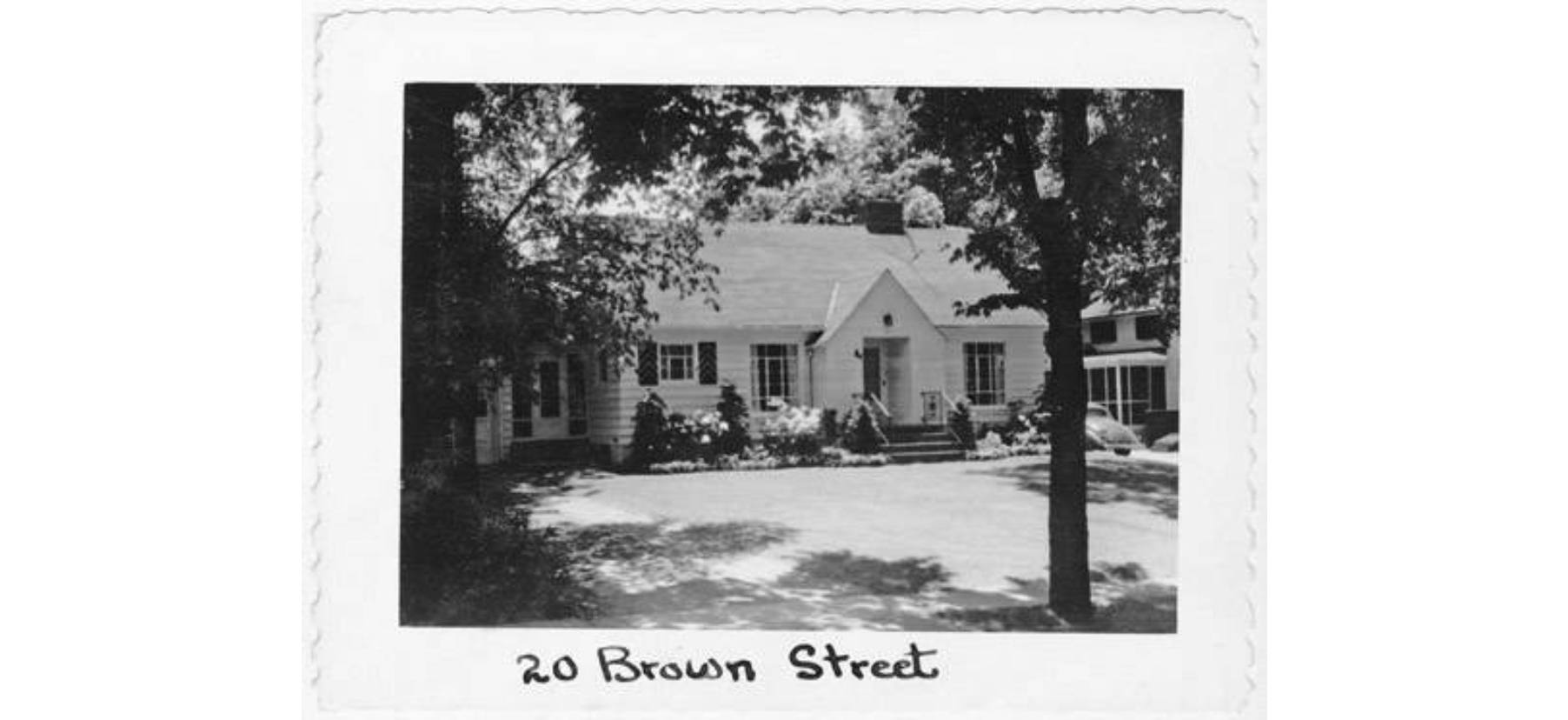 | This circa-1942 home once belonged to Janet Read (1866-1950), a teacher of mentally handicapped children. She received $35 per month for teaching at the Ohio Institution for Feeble-Minded Youth in Columbus. She was also an accomplished tennis player, equestrian and rose gardener. She once served as a member of the board of the Hudson Library & Historical Society. Her favorite color must have been yellow; her detailed gardening records (held at the Hudson Library & Historical Society) indicate that yellow rose varieties were used more frequently. | Summit Memory | |
| 24 Owen Brown Street William Branch House 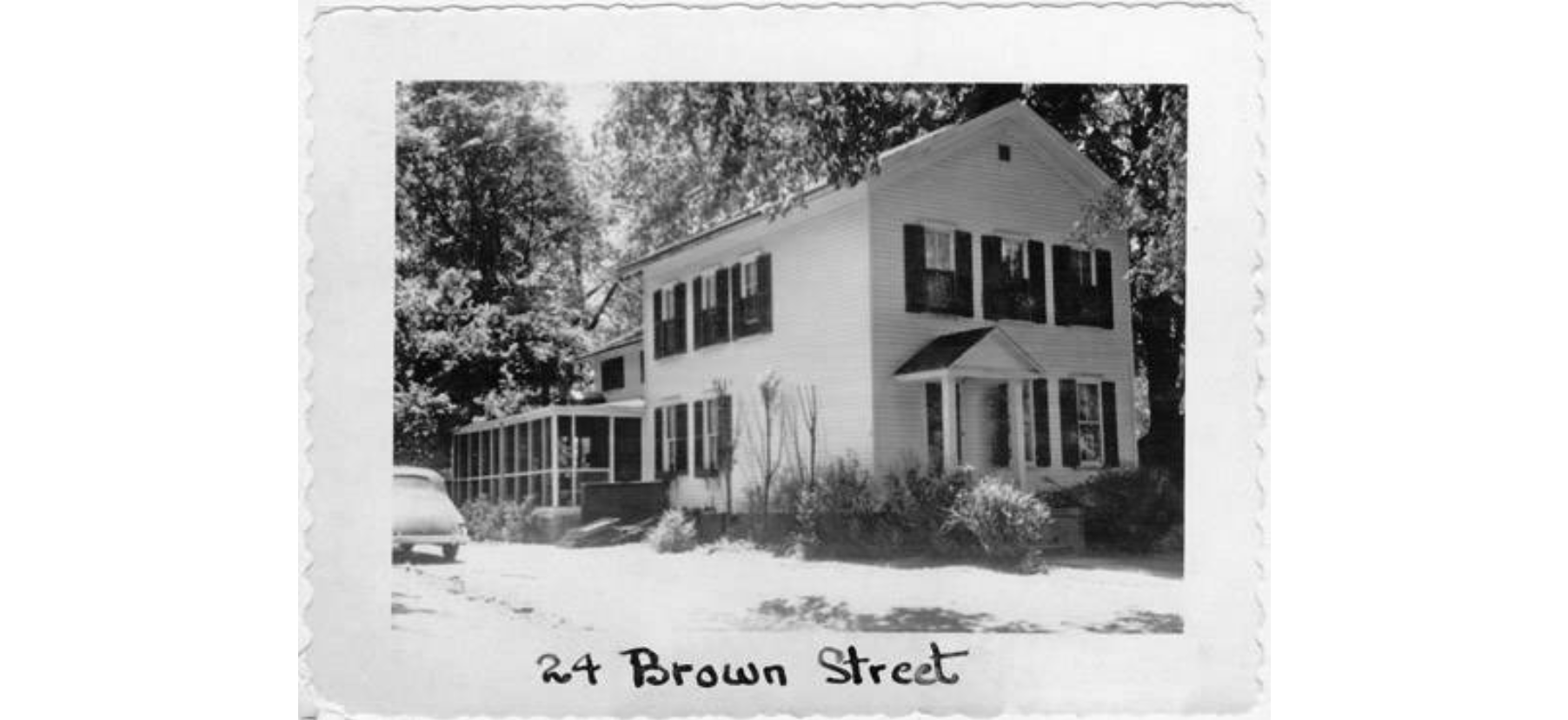 | This Victorian-era home, built in 1880, is treasured by many because of its builder and owner William Branch (ca. 1808-1920). Uncle Willy, as he was called, was an illiterate former slave, born and sold in Virginia, who moved north and settled in Hudson in 1865. In Hudson, Branch was a drayman at Western Reserve College. With the aid of his horse Fred, he moved the trunks of many students in and out of Western Reserve College. Nearly every student came to love him. The house has had few alterations. Indoor plumbing and heat have been added and the roofline may have been changed. | Hudson Heritage Association Summit Memory | |
27 Owen Brown Street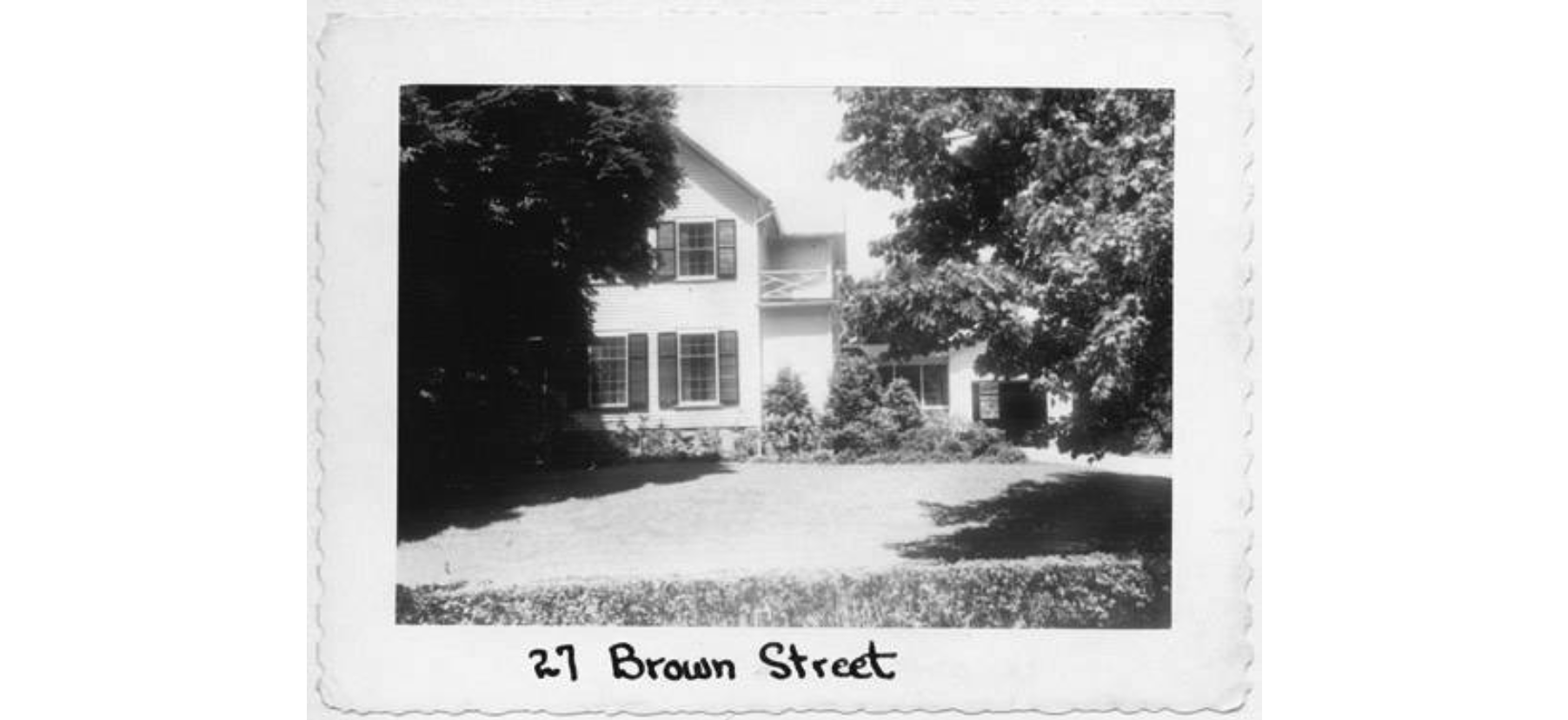 | Little is known about this two-story structure. A physician once lived and practiced medicine here during the 1880s. | Summit Memory | |
| 28 Owen Brown Street Hurn-Doncaster House 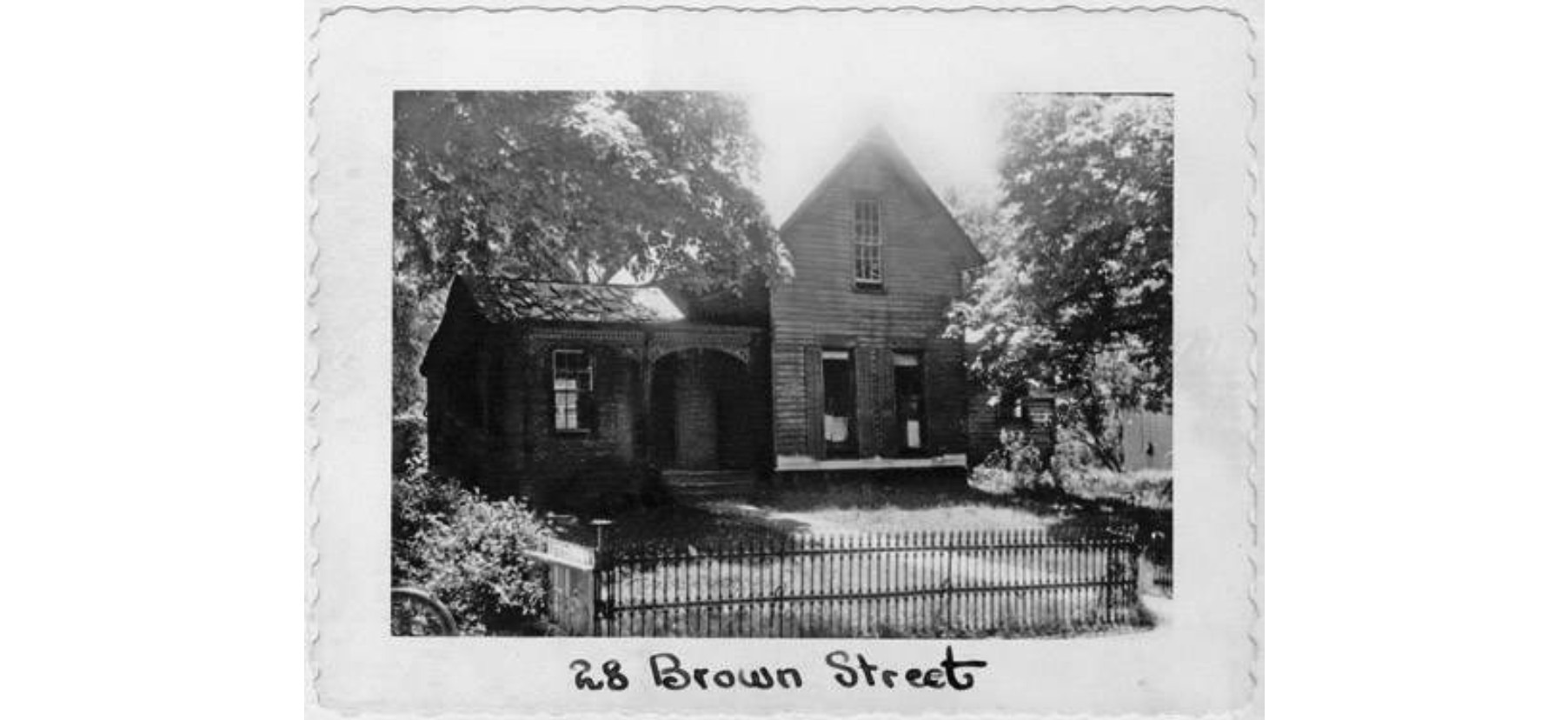 | This late-Greek Revival with Gothic influences dates to 1852 and was home for many years to members of the Hurn family. In 1833 Lucy Hurn Darley Markillie (1771-1850), her brother David Hurn (1803-1870) and other family members emigrated from Lincolnshire, England, to the United States. The families all settled in and around Hudson. In Hudson, David owned a carriage factory and dabbled in real estate, often buying and selling homes. Hurns were the first occupants of this home. His young nephew, James Doncaster (1836-1906), later purchased it and operated a prominent funeral home in town at another location. | Hudson Heritage Association Summit Memory | |
| 32 Owen Brown Street Hurn-Bliss House | Hudson Heritage Association | ||
33 Owen Brown Street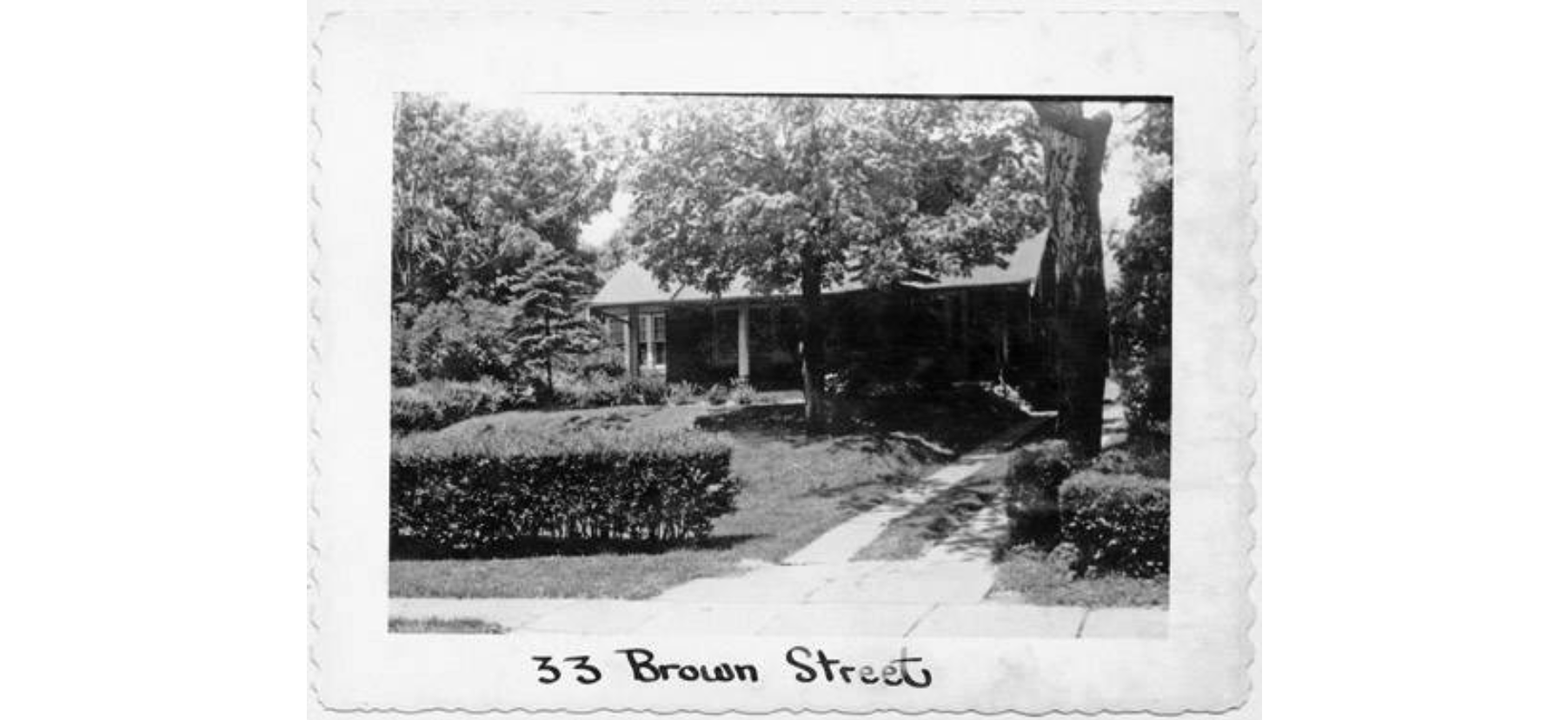 | This brick Cape Cod home with a large overhang was built sometime during the 1920s. It was once home to mystery writer Elizabeth Custer Nearing (1898-1960). | Summit Memory | |
37 Owen Brown Street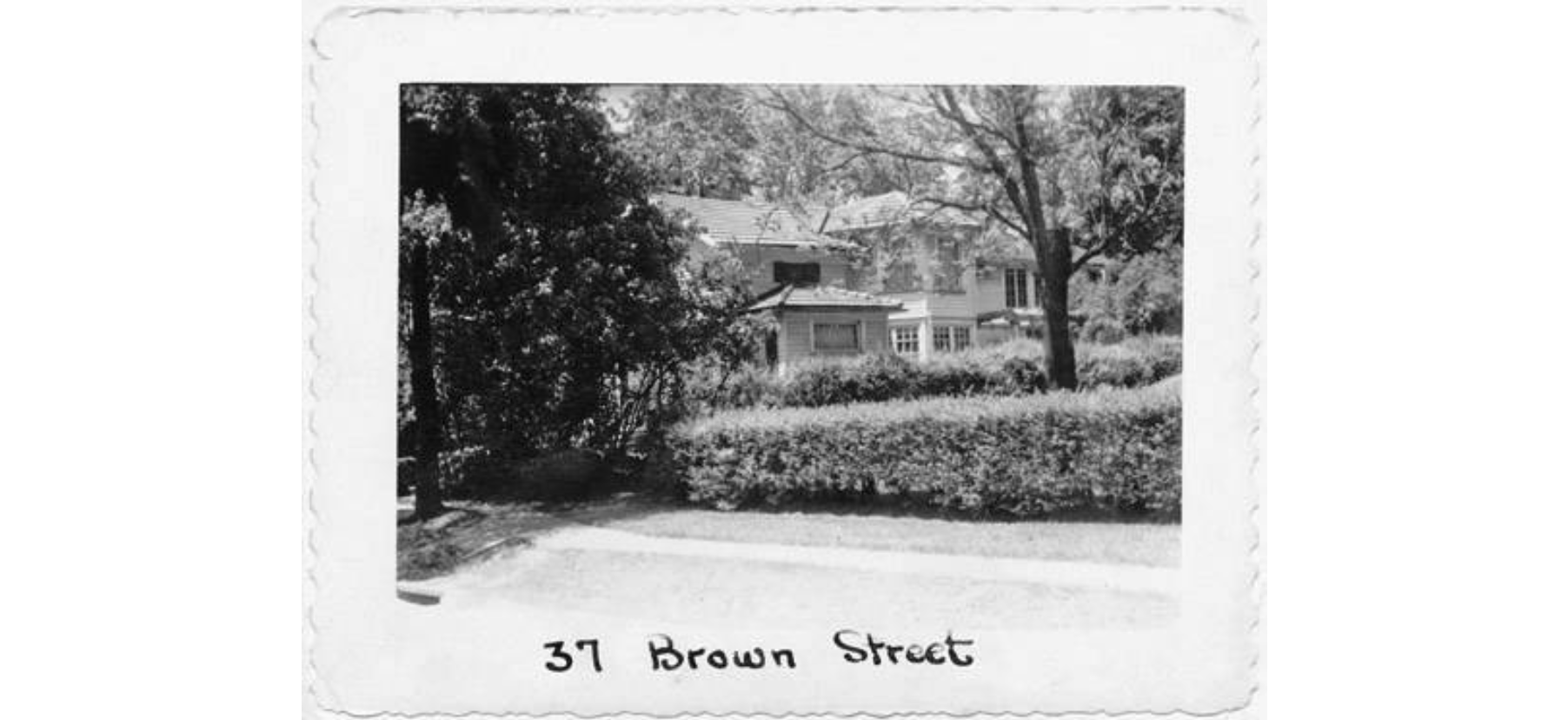 | Orator and Hearsy Blakeslee (dates) built this home in 1854. The "grand gal" of Hudson, Luella Dodds (1879-1978), made this Greek Revival her home. The famous Mrs. Dodds, an 1898 Western Reserve Academy graduate, served for more than 60 years as a trustee of the Hudson Library & Historical Society. Dodds, who worked for James Ellsworth (1849-1925) for a time, was a creature of habit and tradition. She was known for always wearing a hat, walking to the post office every day to pick up her mail, and beginning her daily tea at precisely 4:30 p.m. | Summit Memory | |
40 Owen Brown Street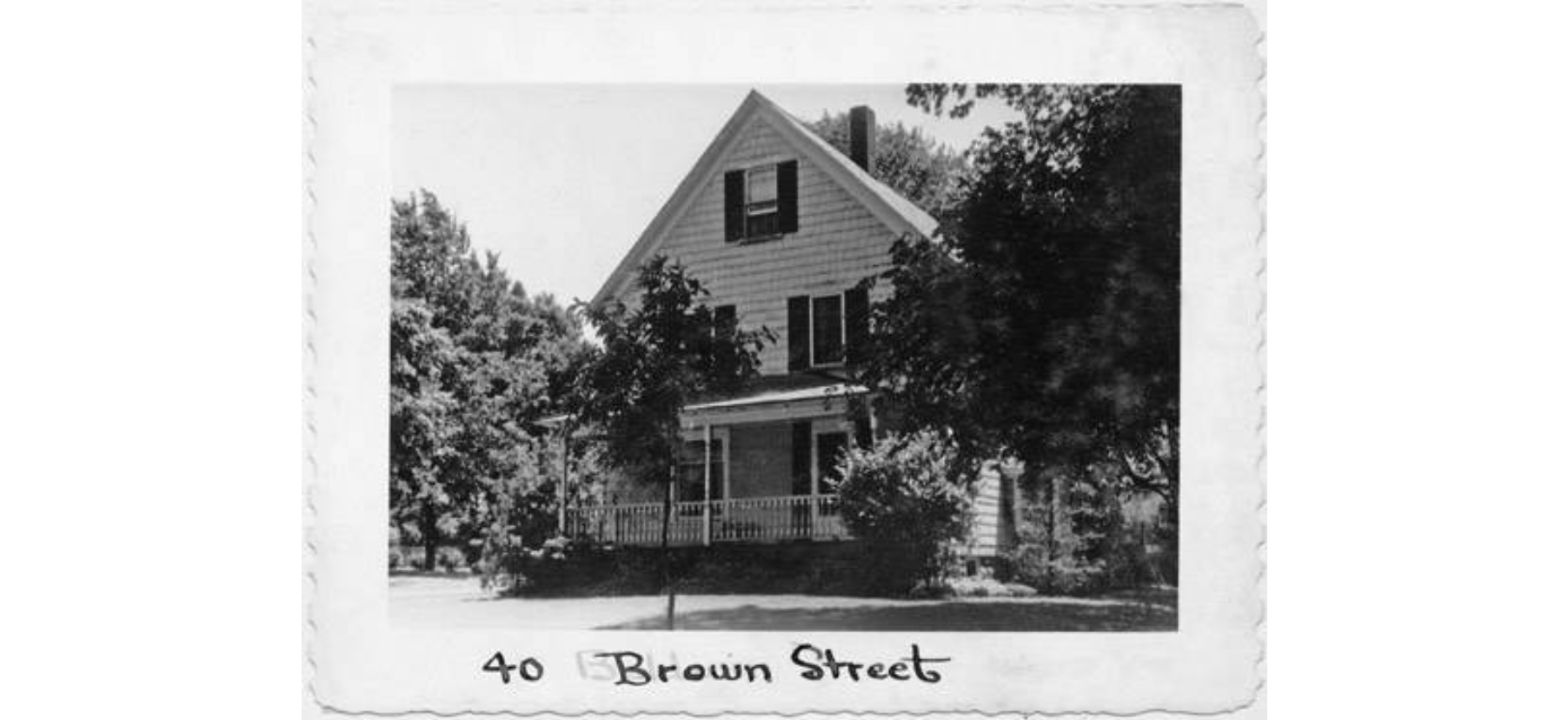 | This home was built circa 1913 and was once occupied by Mary Joseph (1846-1940). Spencer D. Corlett (1892-1963), who helped to found the PTA and the Chamber of Commerce in Hudson, also lived here. | Summit Memory | |
41 Owen Brown Street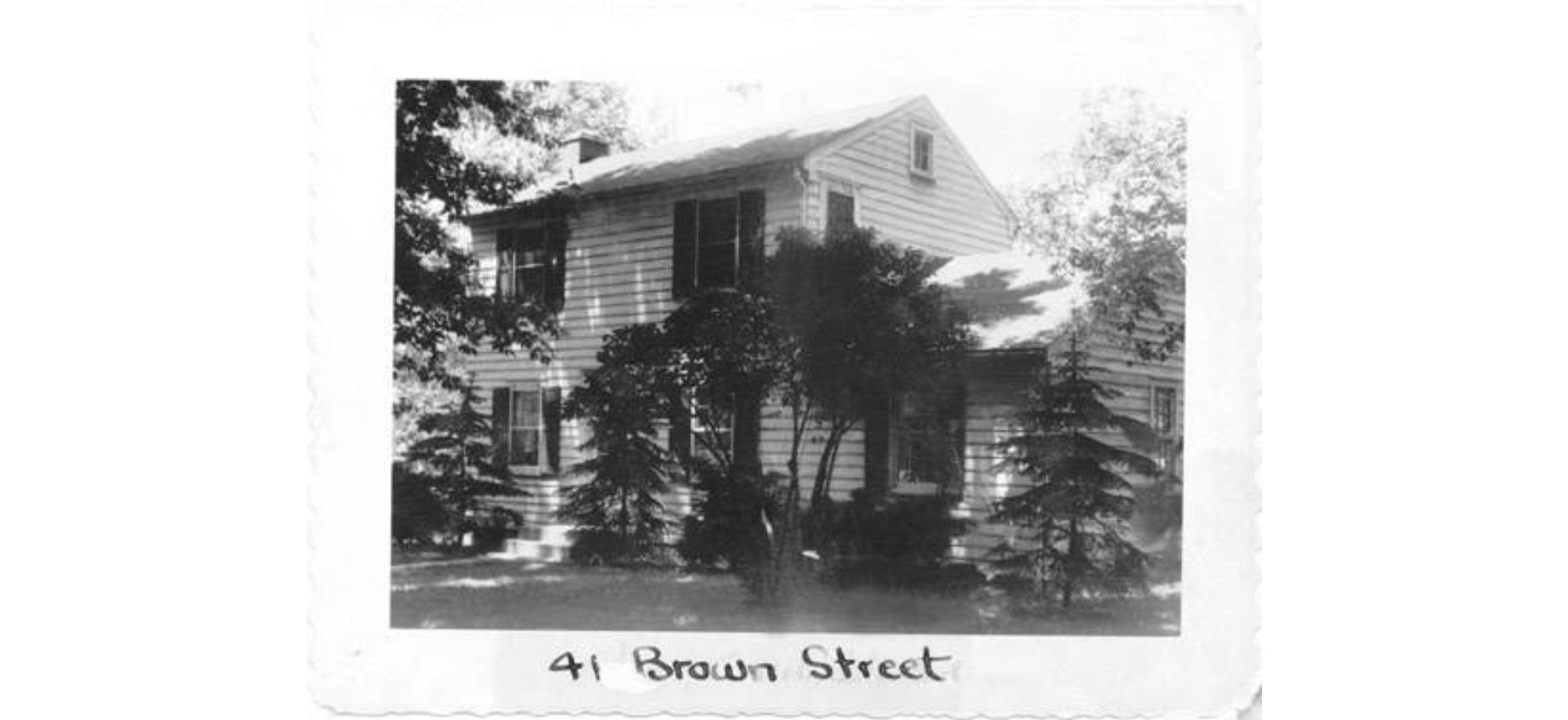 | Gerald "Jerry" Huff (1914-1997) once lived in this home, which was built in the 1940s. Gerald Huff was a motion-picture projectionist at the Hudson Theater, which he later purchased and operated. Once, while purchasing films, Huff spoke to Walt Disney (1901-1966) on the phone. | Summit Memory | |
| 44 Owen Brown Street Campbell-Scheibner House 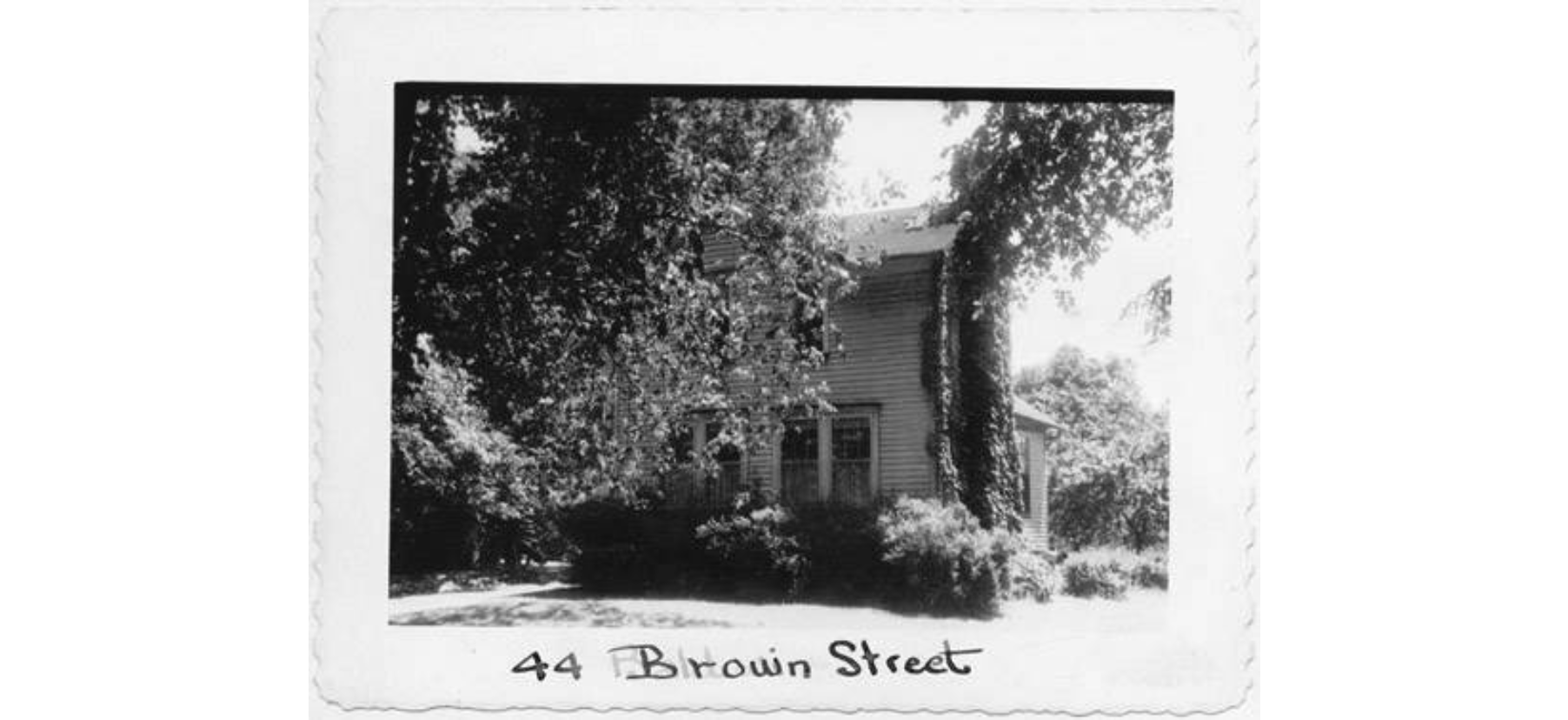 | The Campbell-Schreiber house, a simple two-story, is named for the two men most responsible for it. This speculation home, which originally was located across the street, was built in 1875 by Cornelius A. Campbell (1841-1902), owner of the town's harness shop. Interestingly, Campbell's cousin in-law, who came to visit once in 1877, caused quite a stir in town when he arrived dressed in his formal finery as a decorated high-officeholder in the Order of Knights Templar. Robert Schreiber (1879-1949) moved the home to its present site in 1919. Schreiber was a retired railroad man who greatly enjoyed gardening and spending time with friends. Elizabeth Phipps (1918-2001), a Hudson citizen with an extensive community service record, also once lived in this home. Phipps served on the war production board during World War II. She was also a 40-year trustee of the Hudson Library & Historical Society, where the archives was named in her honor. | Hudson Heritage Association Summit Memory | |
49 Owen Brown Street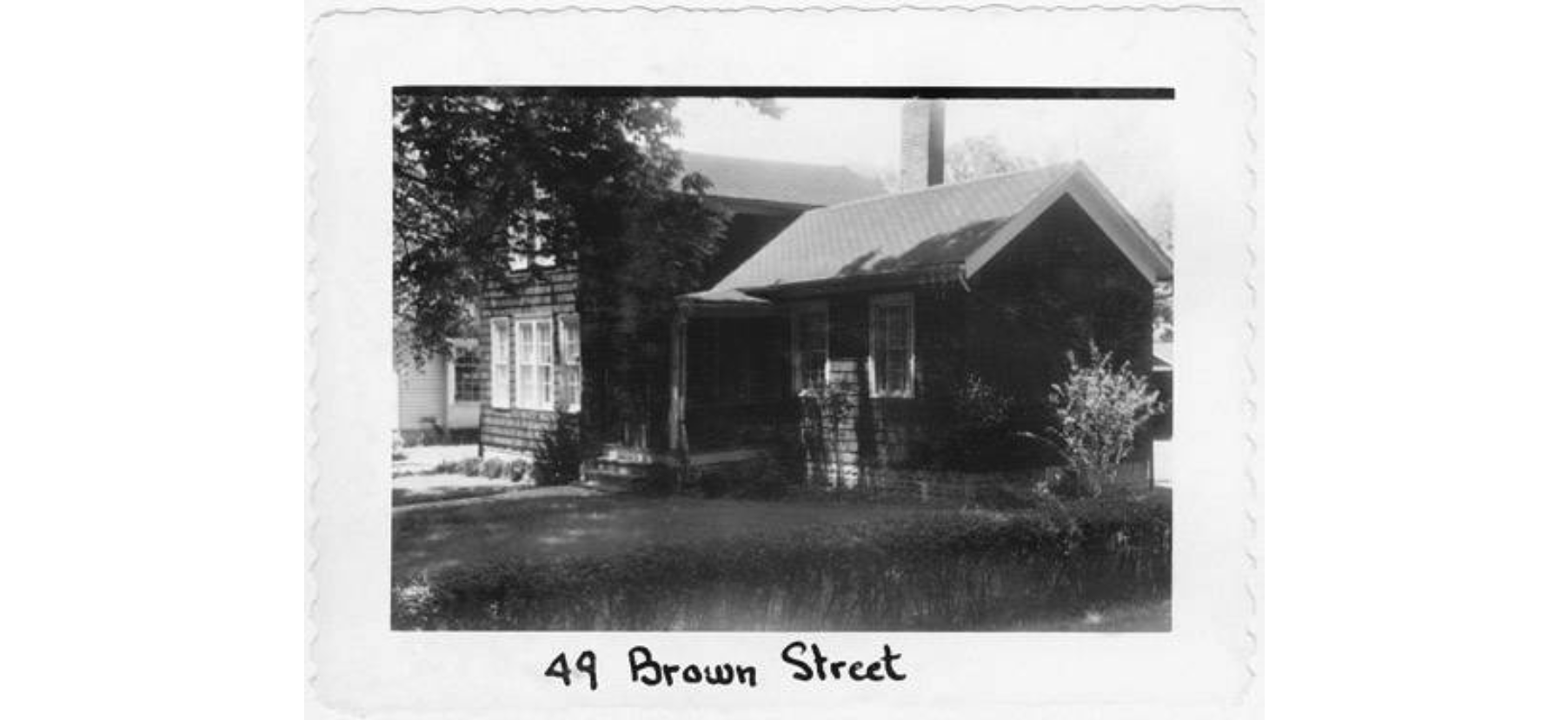 | Irish immigrants from Doneraile, County of Cork, William Noonan (1830-1904) and his brother, shoemaker John Noonan (1830-1918) once owned the land where this home sits. It is possible that William, a local contractor and builder, constructed the home. William built the original Roman Catholic Church and altar at 7 Main St. as well as several other homes in Hudson. John Noonan operated his shoe store (also built by William Noonan) at 202 N. Main St. until the late 1880s when he deeded the building to his son, Thomas J. Noonan (1861-1881). Thomas, a popular and musically-inclined fellow as well as a member of Hudson's community band, died unexpectedly from typhoid fever in 1888. The band marched in his funeral procession up and down Main Street multiple times that day. The third Noonan brother Richard Noonan (1841-1884) served with the 29th Ohio Volunteer Infantry during the Civil War. | Summit Memory | |
50 Owen Brown Street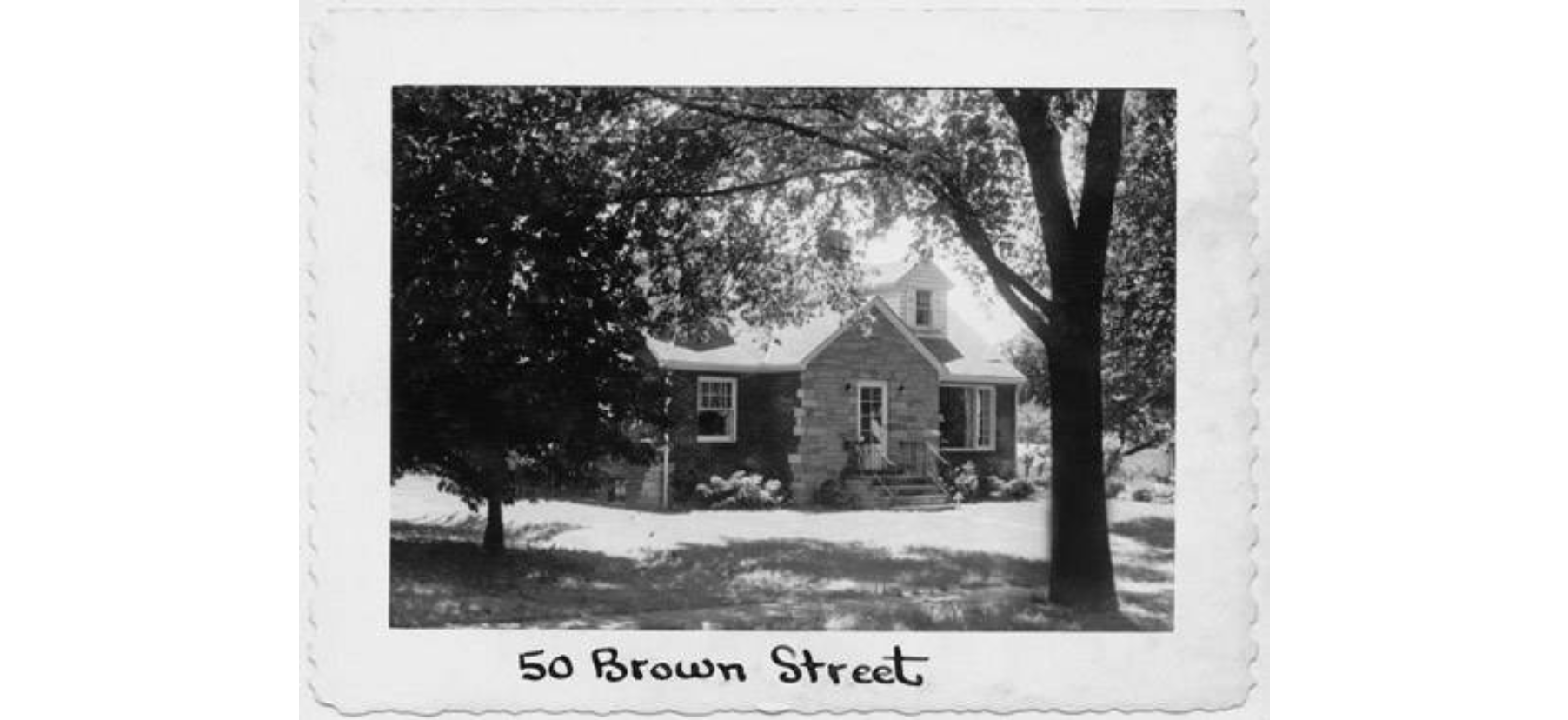 | Richard (1912-1989) and Helen (1913-2007) Vogel were likely the first owners of this circa-1946 home. Richard, born in Duerrenzimmern, Germany, owned and operated Marcels Restaurant in Cuyahoga Falls. | Summit Memory | |
55 Owen Brown Street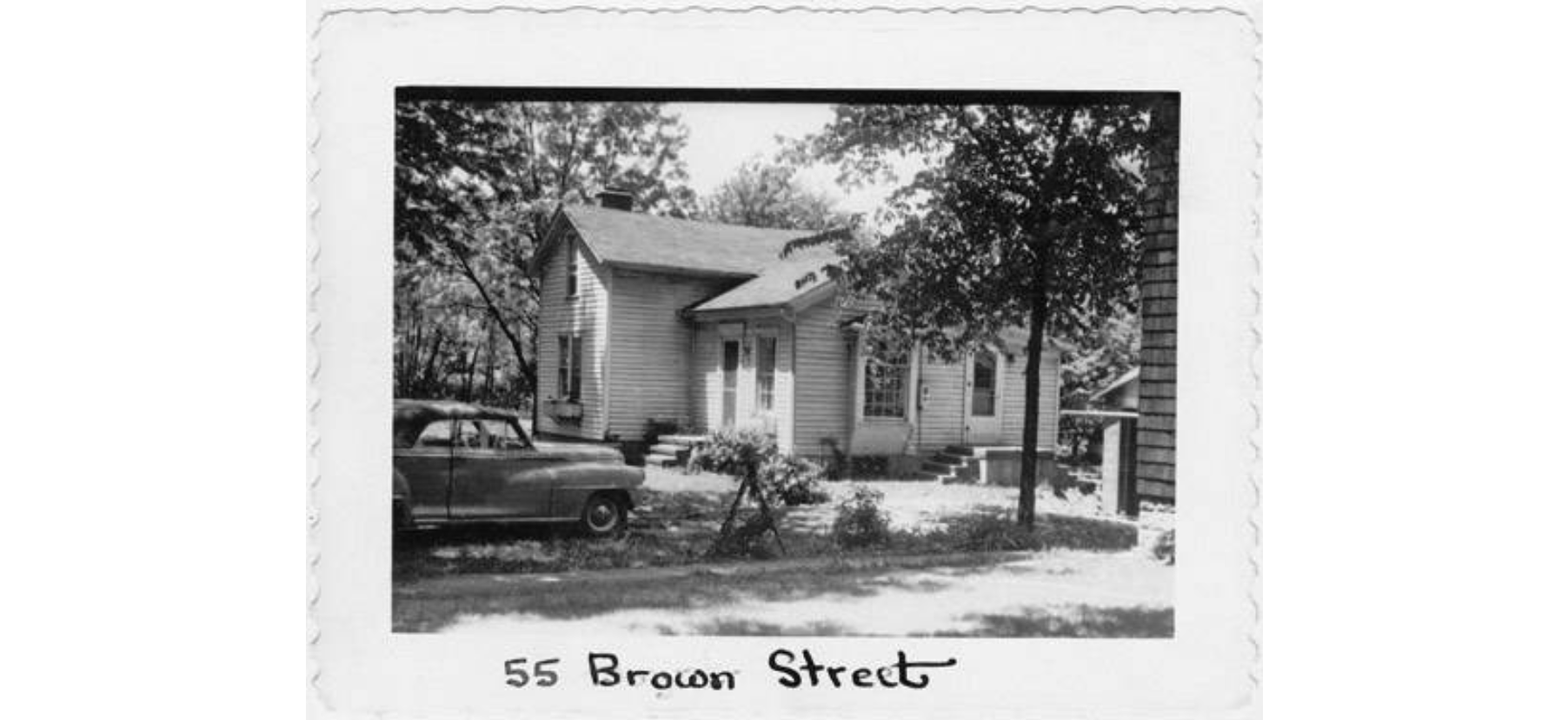 | Irish immigrants from Doneraile, County of Cork, William Noonan (1830-1904) and his brother, shoemaker John Noonan (1830-1918) once owned the land where this home sits. It is possible that William, a local contractor and builder, constructed the home. William built the original Roman Catholic Church and altar at 7 Main St. as well as several other homes in Hudson. John Noonan operated his shoe store (also built by William Noonan) at 202 N. Main St. until the late 1880s when he deeded the building to his son, Thomas J. Noonan (1861-1881). Thomas, a popular and musically-inclined fellow as well as a member of Hudson's community band, died unexpectedly from typhoid fever in 1888. The band marched in his funeral procession up and down Main Street multiple times that day. The third Noonan brother Richard Noonan (1841-1884) served with the 29th Ohio Volunteer Infantry during the Civil War. | Summit Memory | |
| 58 Owen Brown Street Owen Willys Humiston House 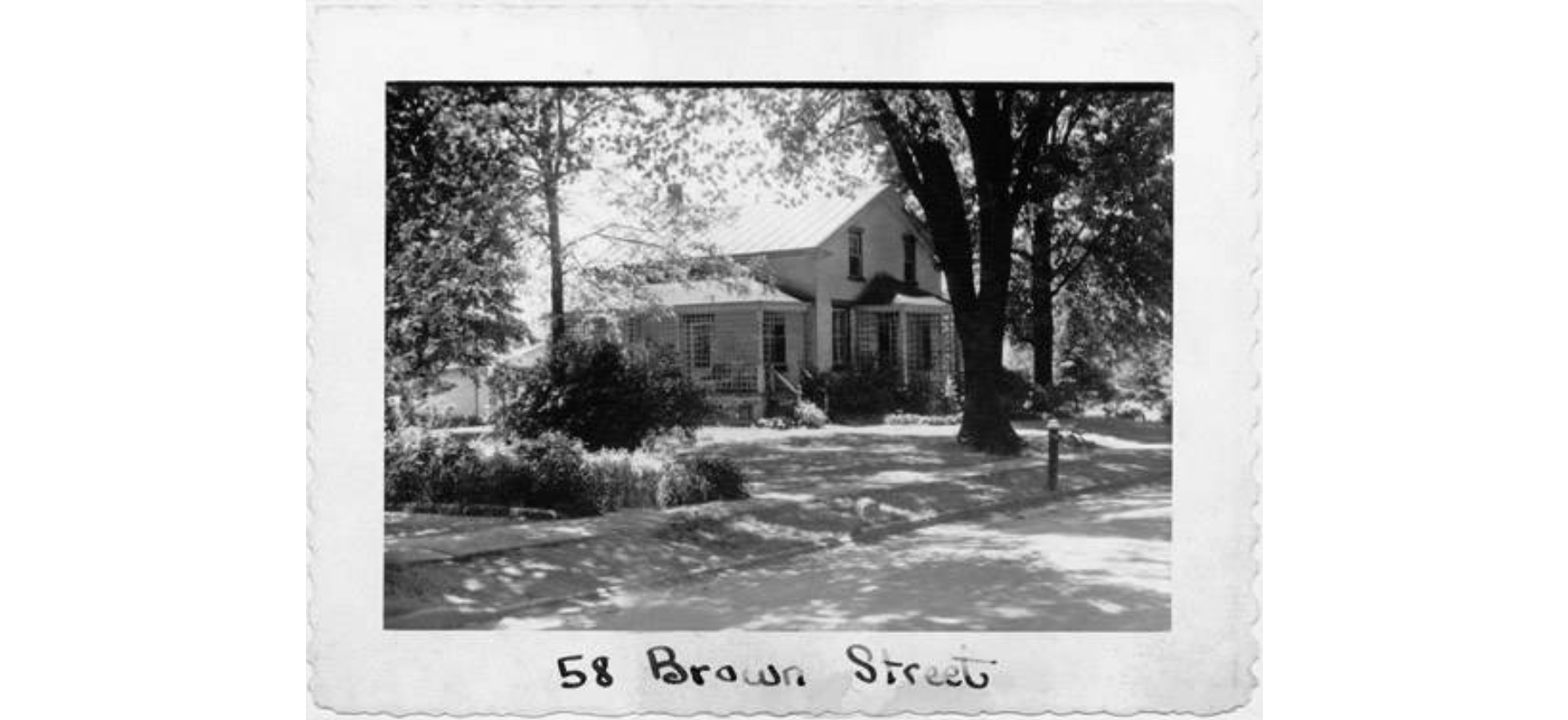 | 58 Owen Brown Street was the home of an early teacher and master brick mason John Willis Humiston (1812-1891), who expressed the Greek Revival style in brick in his home. The Humiston family and three additional apprentice brick makers lived here at one time. Humiston had a busy time teaching school and was known to have given a valedictory address in 1846. During the twentieth century, the home came into the hands of the Graber family. Frank Graber (1862-1921) was a Swiss immigrant. The Graber family owned the home until 1984 when the home underwent a major renovation. The home boasts an original exposed brick beehive oven in the kitchen. | Hudson Heritage Association Summit Memory | |
| 63 Owen Brown Street Chloe-Wright House 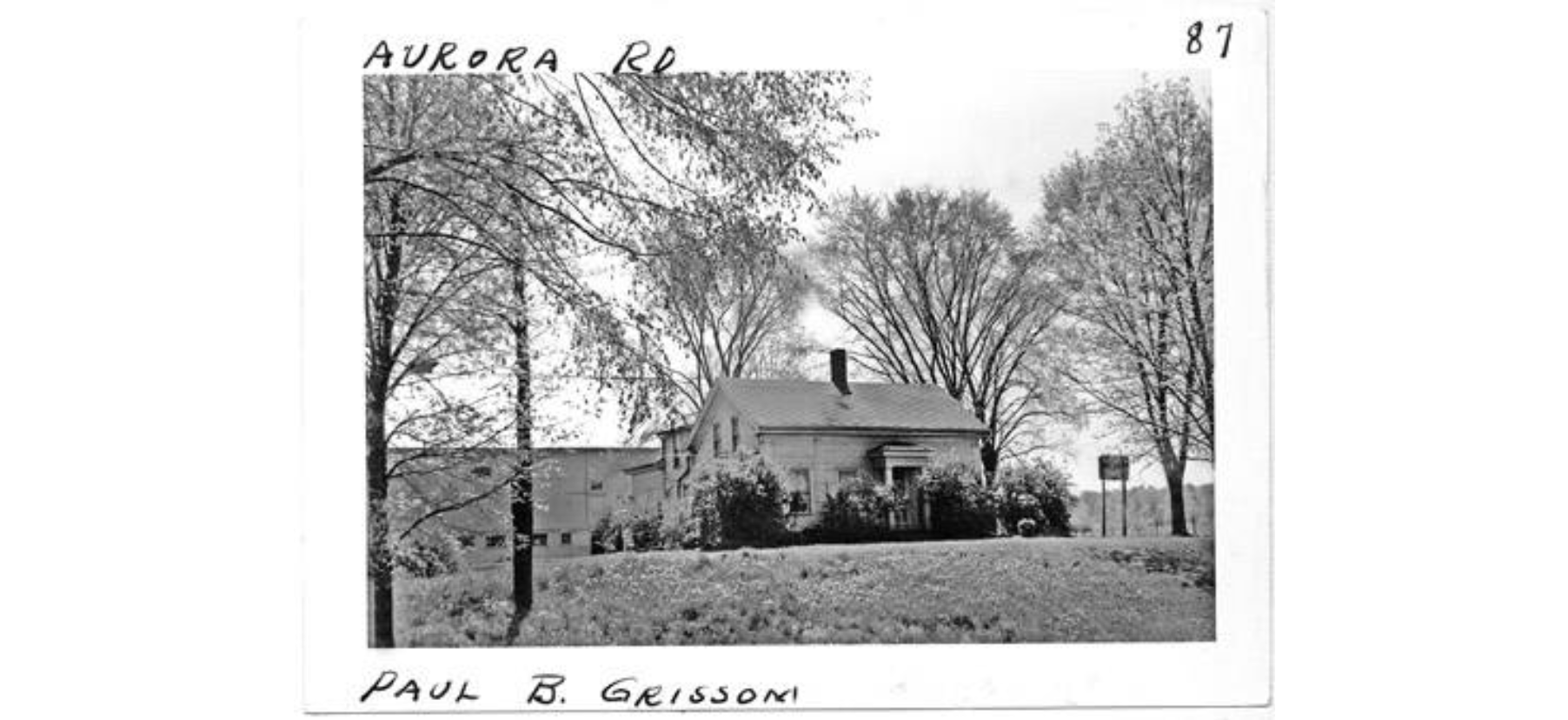 | This Greek Revival was built in 1835 at 2566 Aurora St. In 1983 the home was moved to its present location. The home was built by Leander Starr (1804-1885) for Chloe Hubbell Wright (b.1788) and Ebenezer Wright (1764-1844). When the Wrights sold the property, Ebenezer had to sign for Chloe because she was illiterate. Later owners include businessman and abolitionist William Dawes (1799-1888), whose ancestors include a United States vice president and a rider on Paul Revere's famous 1775 ride; Tom Henderson (1872-1954), founder of Henderson Motorcycle Co.; and, John Gammeter (1876-1957), a B.F. Goodrich Co. inventor with more than 300 inventions. Gammeter has been called "the father of the condom" for his improvement of the latex condom. Many Hudson residents also know it as the Grissom place. Paul B. Grissom (1904-1979), one of the last full-time farmers in Hudson, also lived here. | Hudson Heritage Association Summit Memory | |
| 64 Owen Brown Street Harrison Danforth House | Hudson Heritage Association | ||
| 32 Peninsula Road Delta Hotel 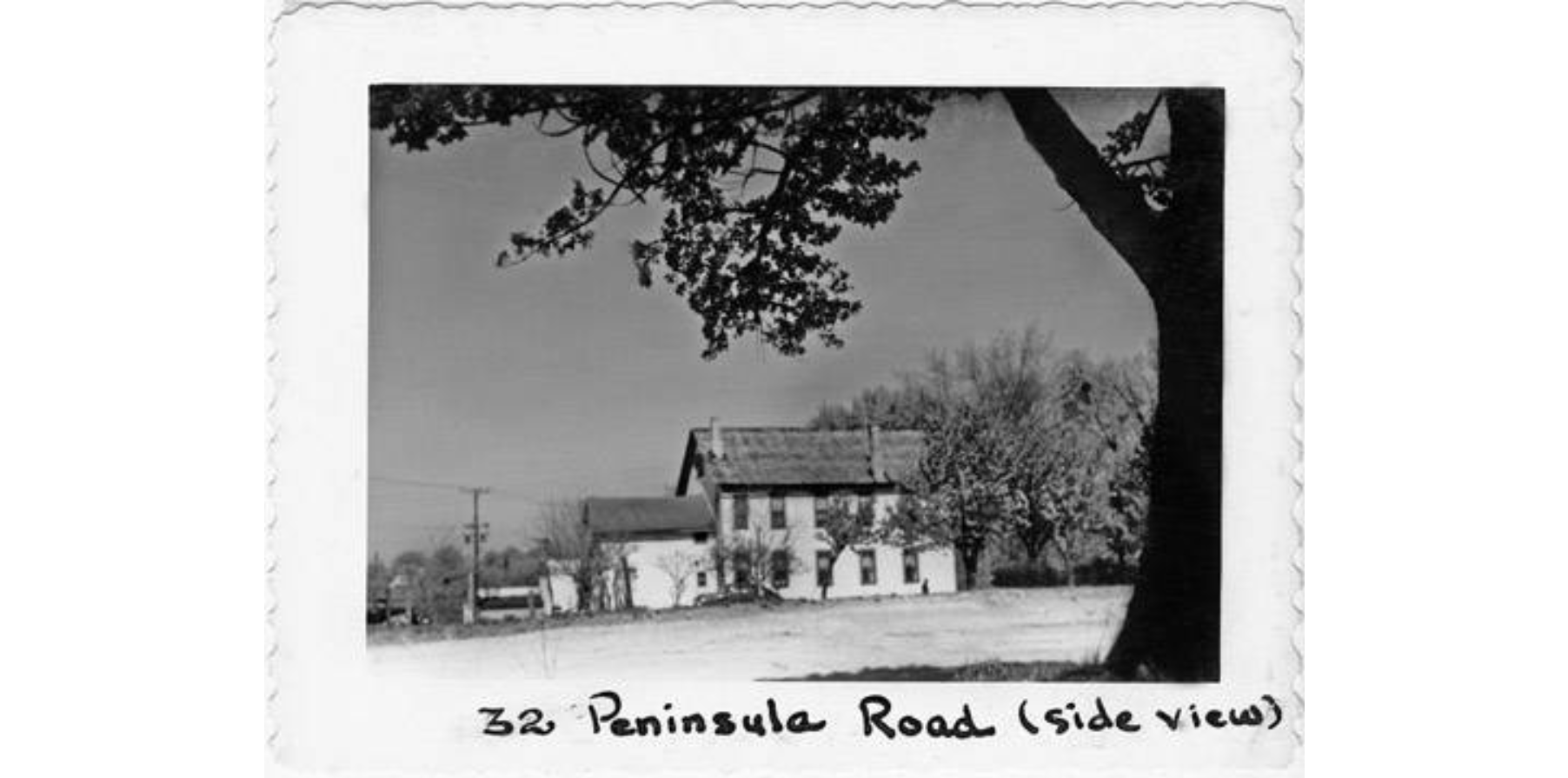 | The Delta Hotel served for many years as a railroad boarding house for wayward travelers and area residents who may have needed a temporary home. One such person was young James C. Packard (1842-1862). Packard was originally from Medina County, Ohio, and had come to Hudson for work as a laborer. When the Civil War erupted, he enlisted and ultimately died in Bolivar, Tennessee, from wounds received at the Battle of Hatchie's Bridge. | Summit Memory | |
30 Ravenna Street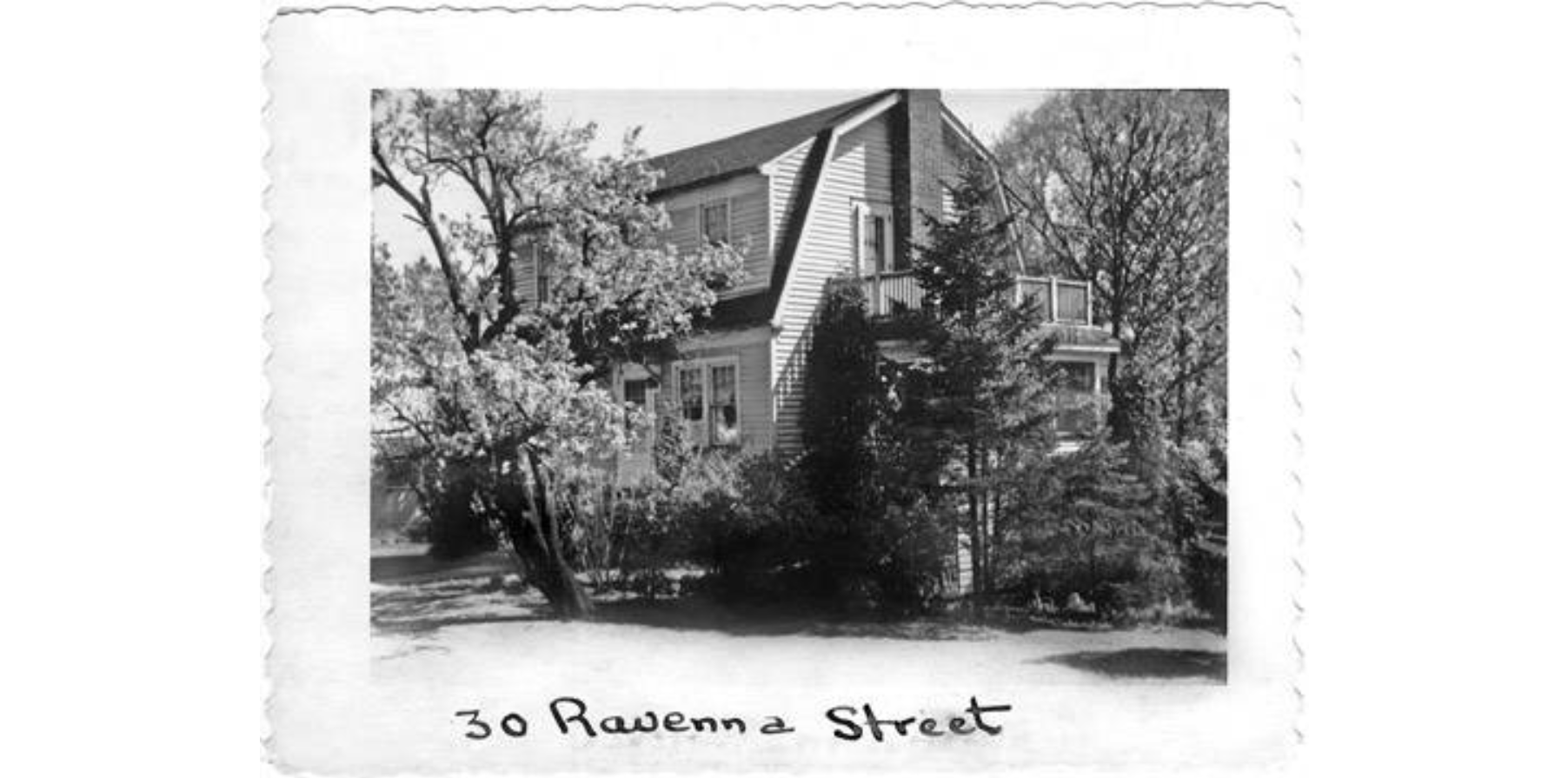 | Lucy (1886-1964) and Nicholas (1886-1966) Capri, who owned a local laundry business, lived in this circa-1930s home. In 1925 their laundry was destroyed in a fire. The Capris later built a new laundry at 34 Ravenna Street, right next door to their home. | Summit Memory | |
34 Ravenna Street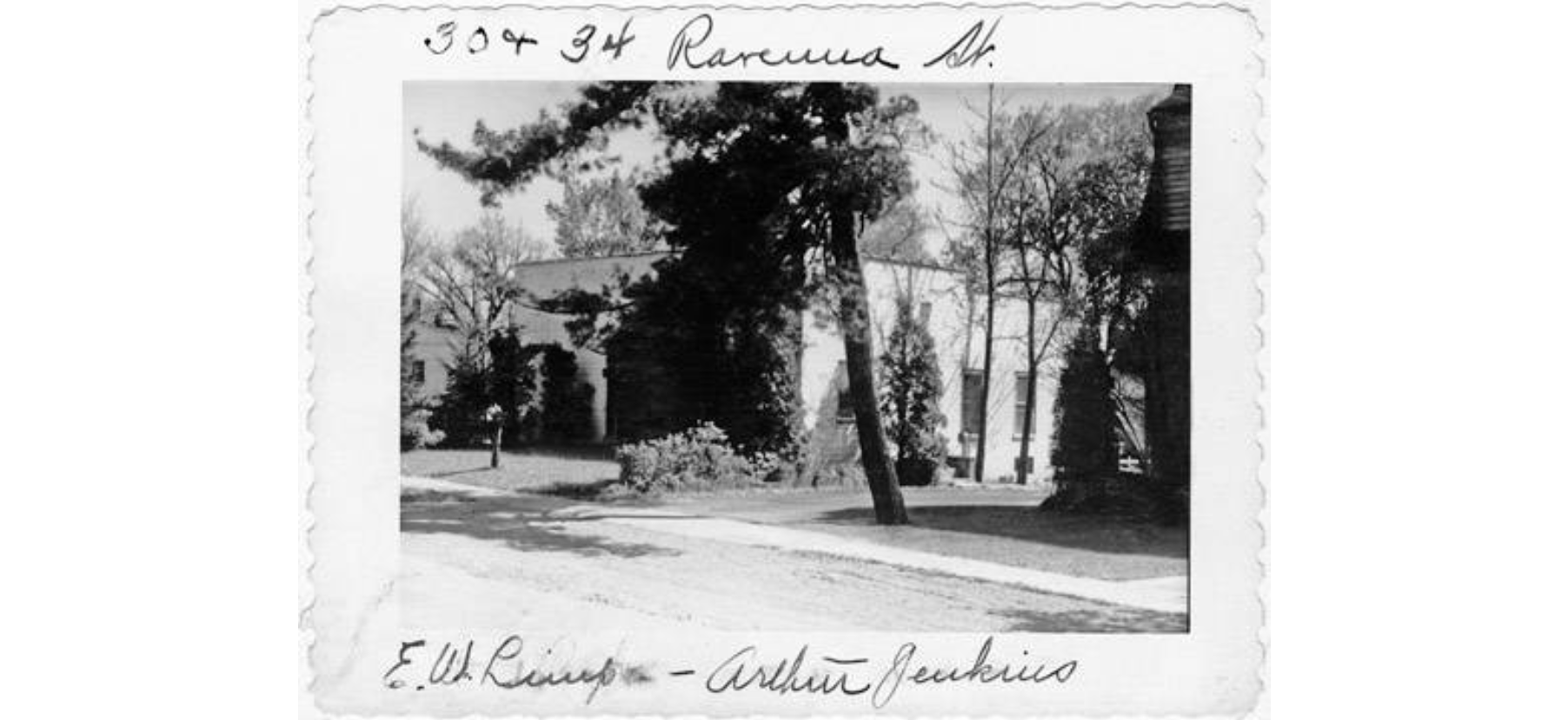 | This building was likely constructed for the Capri Laundry, owned by Nicholas (1886-1966) and Lucy (1886-1964) Capri, after their first laundry building was destroyed by fire in 1925. Finch & Seaman were the contractors. | Summit Memory | |
45 Ravenna Street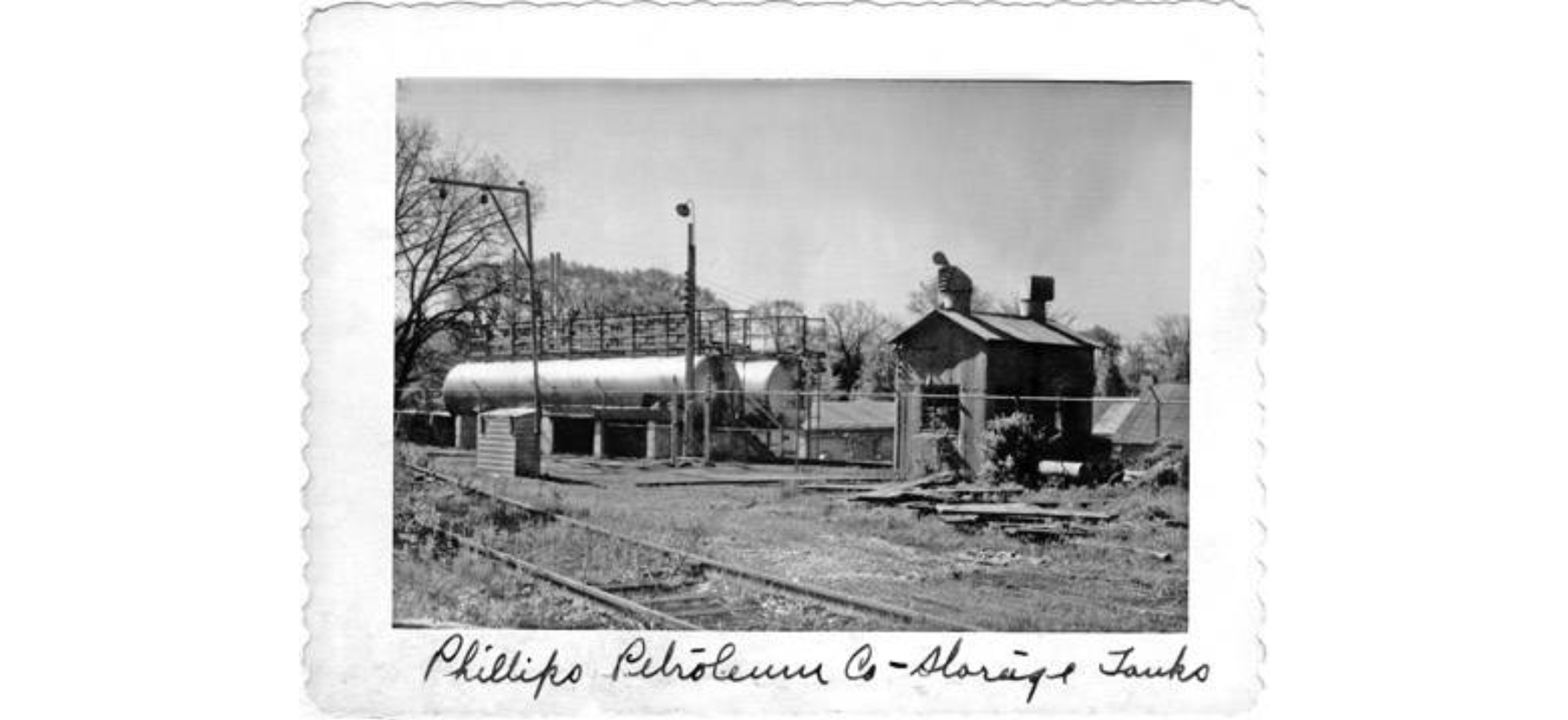 | Six tragic deaths occurred as a result of a fire here on Nov. 12, 1970. Hudson firefighters sought to protect the community from further devastation by cooling and removing an explosive portable fuel tank and by securing the scene. Six entrapped people in a nearby factory were rescued, suffering victims were assisted and others were diverted from the area, including a school bus carrying children that was moments away from traveling into the area on its scheduled route. Significant changes resulted from this incident: the Fuelgas Corp. was no longer allowed to operate in Hudson, regular inspections of pressurized tanks mandated by state and local statutes became standard, and zoning codes enforced isolation of hazardous materials to specific geographic areas. | Summit Memory | |
66 Ravenna Street | This home no longer exists. It likely belonged to Martha "Mattie" Johnston (1881-1955), a seamstress and telephone operator. | Summit Memory | |
78 Ravenna Street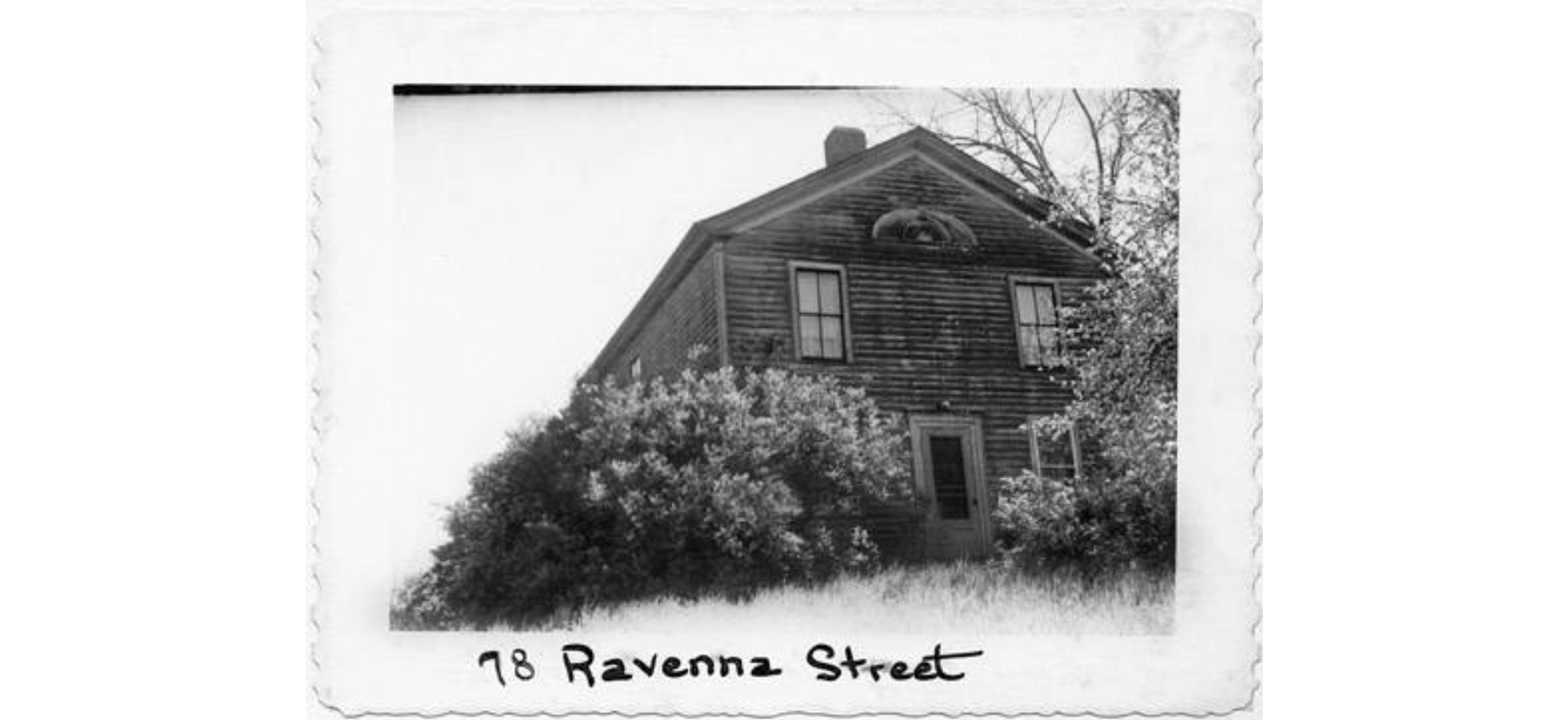 | 1834 Simeon Porter pastorate for Congo Church--Giles Doolittle & Robert Linton mining engineer | Summit Memory | |
79 Ravenna Street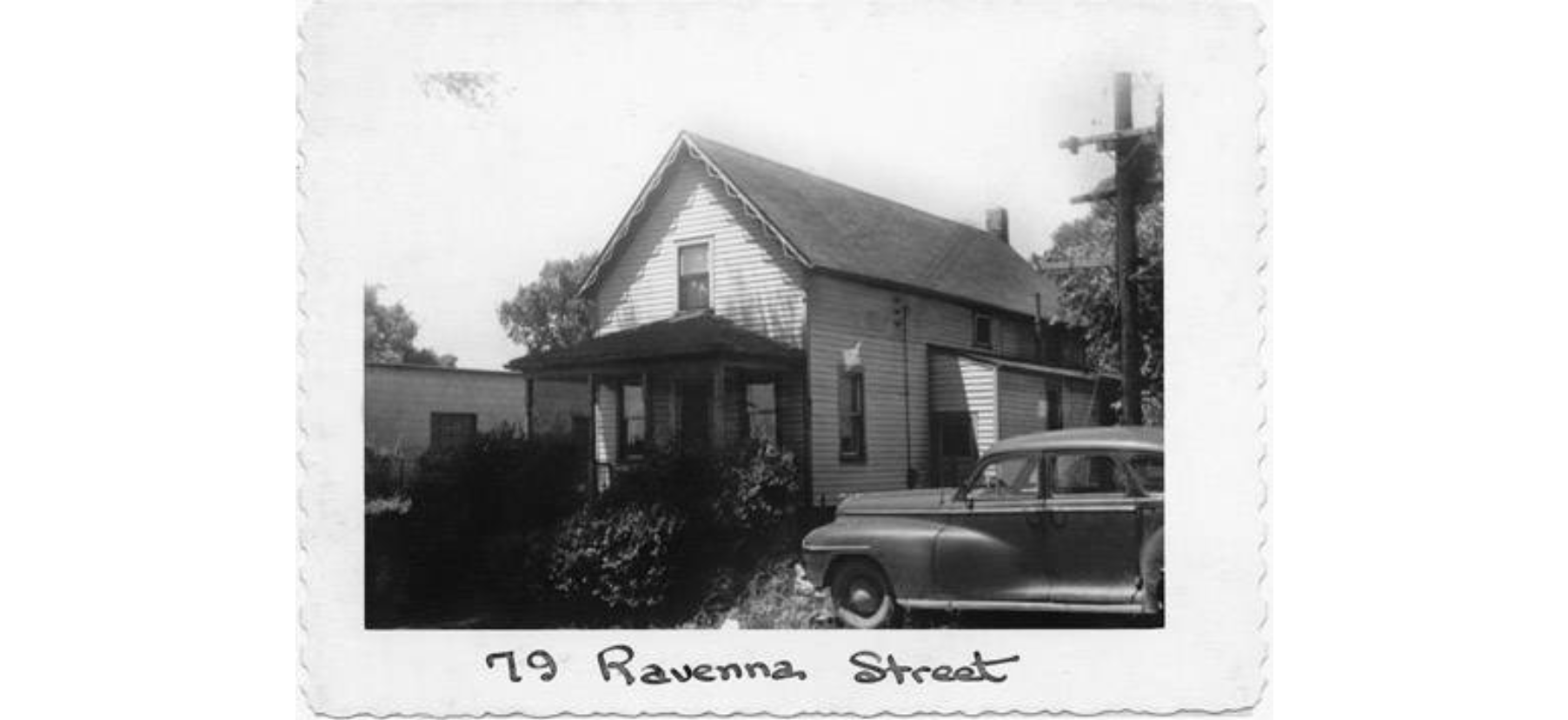 | This photograph incorrectly identifies this home as 79 Ravenna St. Where this house once stood actually is unknown. | Summit Memory | |
| 94 Ravenna Street Harry Thompson House 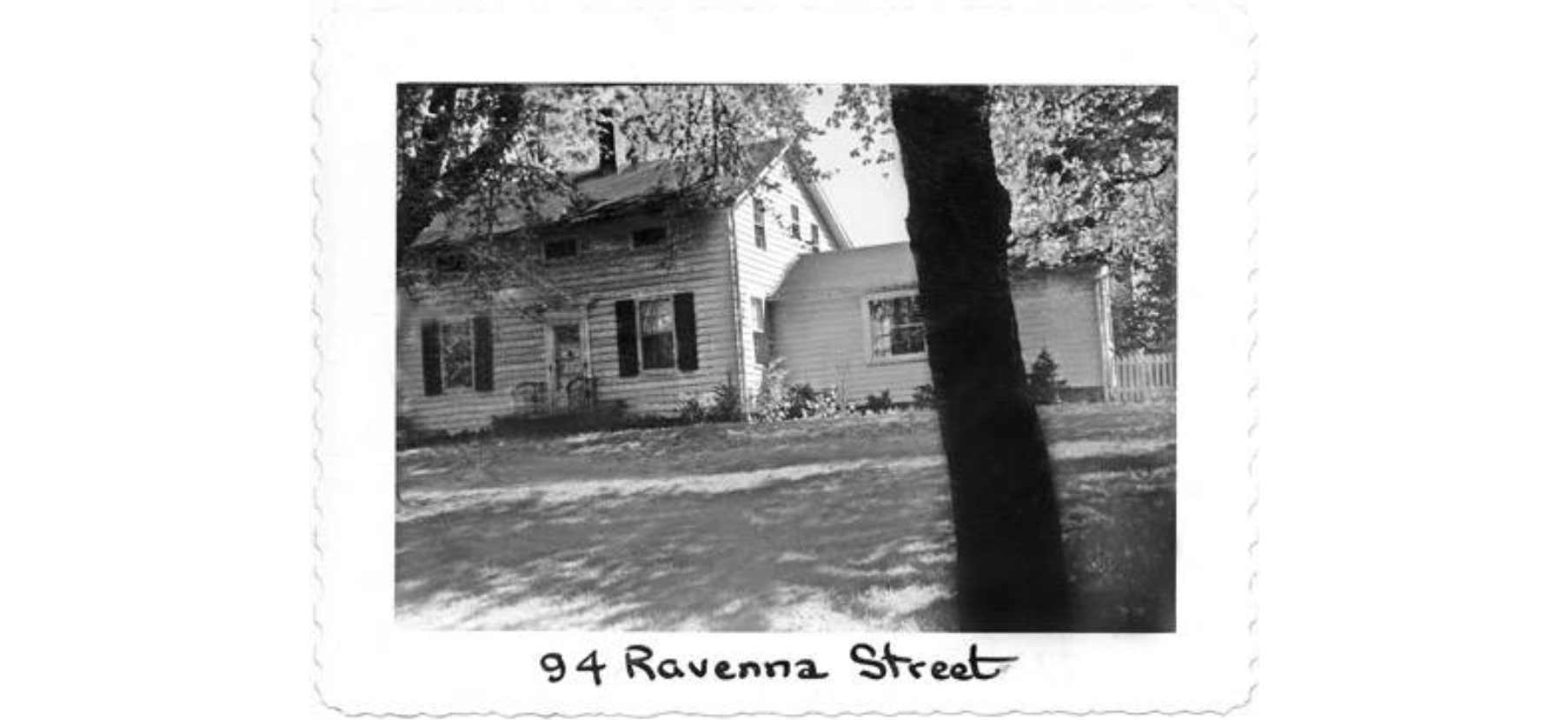 | The Greek Revival H.C. Thompson house dates to 1852, when Harry Thompson (1801-1877) and his wife, Harriet Ellsworth Thompson (1801-1893), moved in. Thompson was a tailor and longtime justice of the peace in Hudson. This home retained the original summer kitchen in the back into the 1940s. Harriet was a good friend with Hudson native and dressmaker Charlotte Lewis (1832-1891). | Hudson Heritage Association Summit Memory | |
102 Ravenna Street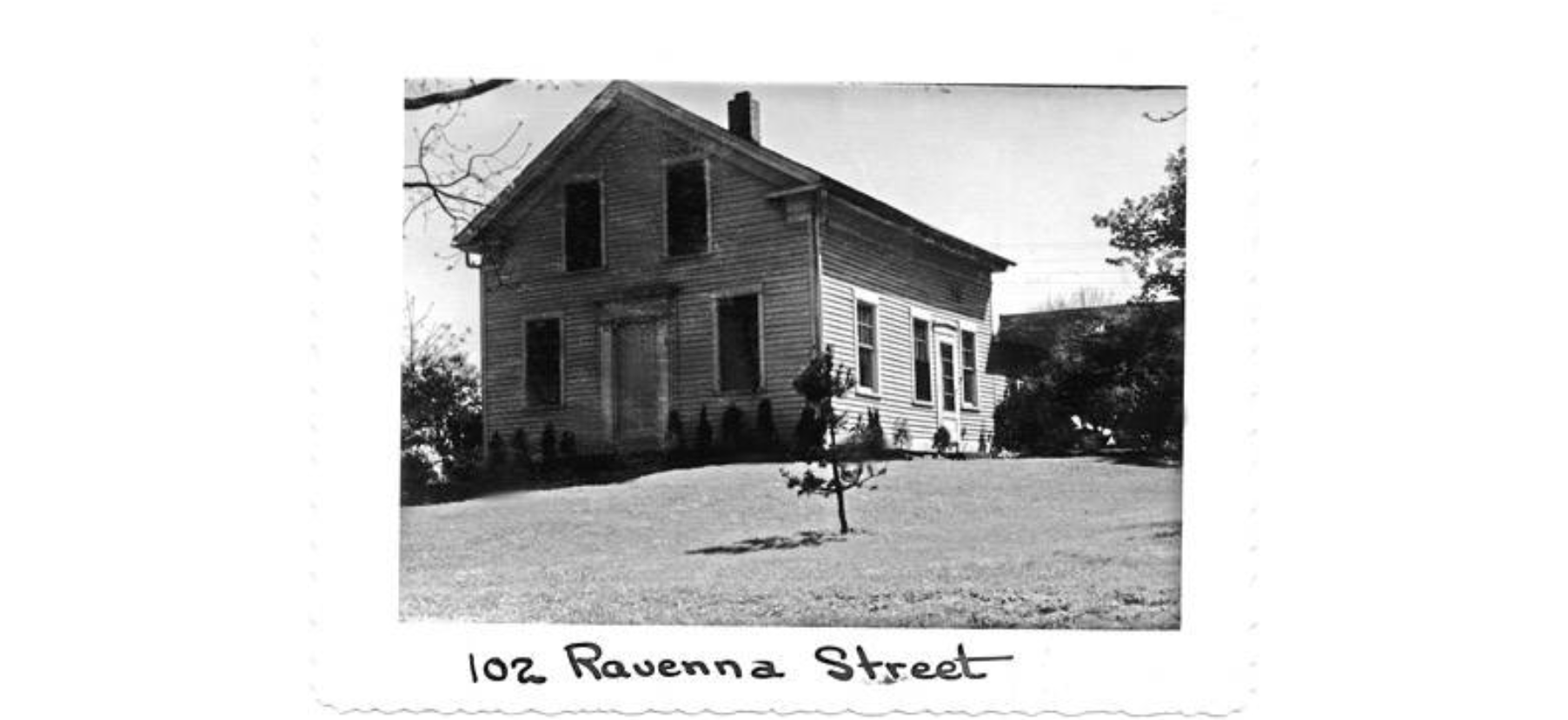 | Herbert A. Luce (1916-1968), an employee of the Cleveland Illuminating Co., once lived here. The home no longer exists. | Summit Memory | |
| 111 Ravenna Street Harvey A. Wadsworth 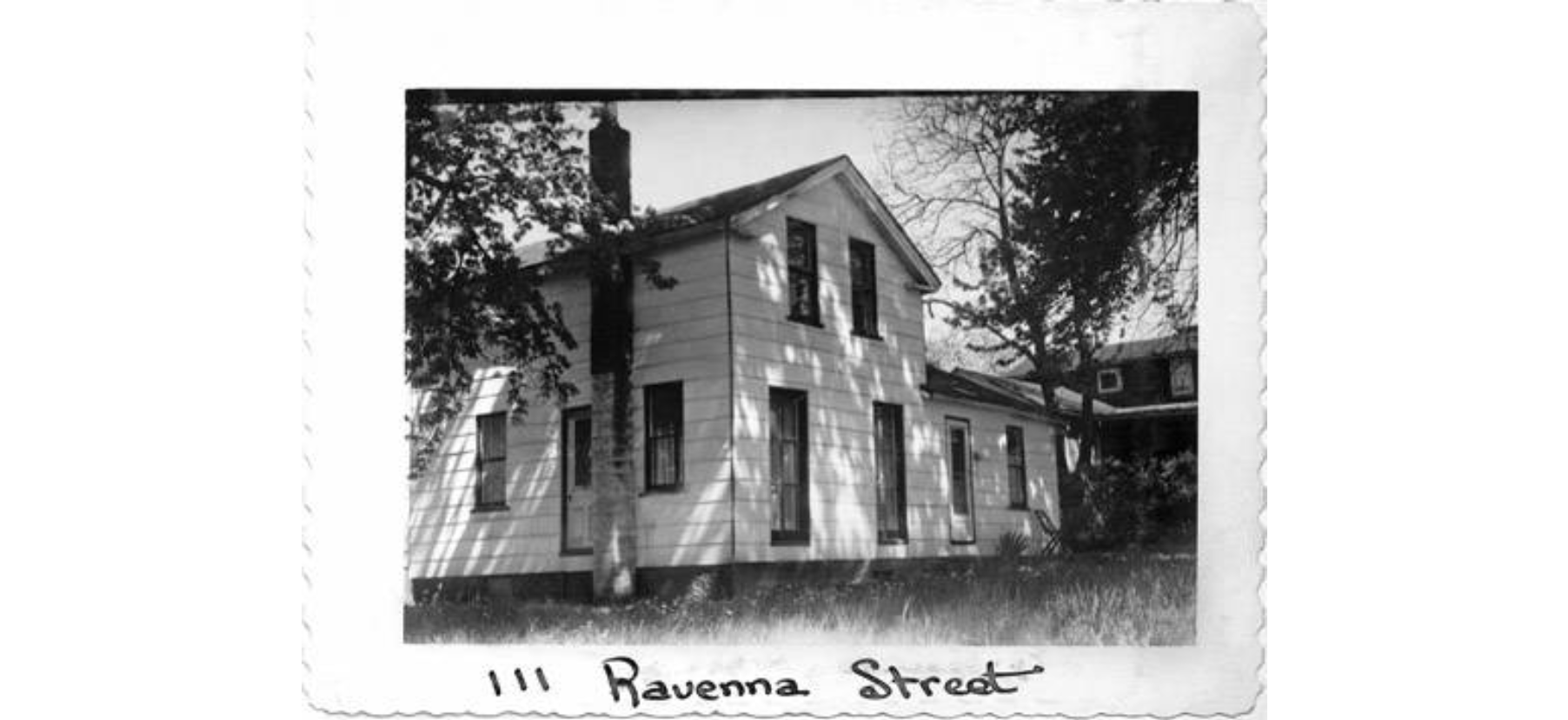 | Orphan Harvey A. Wadsworth (1829-1910) was one of three brothers to come to Hudson from Pennsylvania. In Hudson he met native Caroline Amanda Cummins (1835-1925). They married in 1852 and he promptly built this home for his new wife. The Greek Revival home is a typical working man's home with hand-hewn beams. Shortly after building the home they left for greener pastures, literally: they moved to Portage and Geauga counties to farm. | Hudson Heritage Association Summit Memory | |
114 Ravenna Street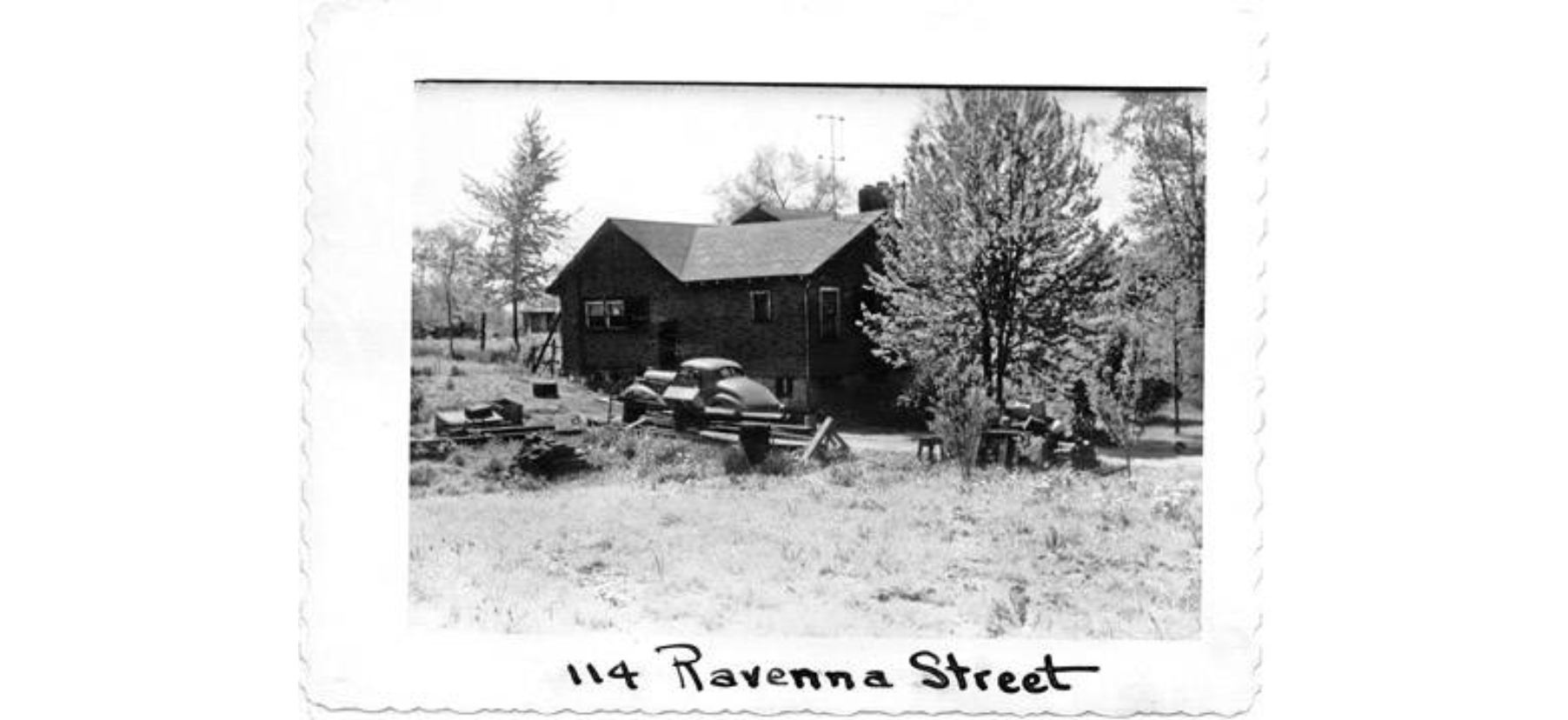 | This home no longer exists. It was once the home of Bessie (1896-1963) and Alvin Loomis (1897-1975). Alvin was a signalman for the Pennsylvania Railroad. | Summit Memory | |
| 115 Ravenna Street Brewster-Bunnell House 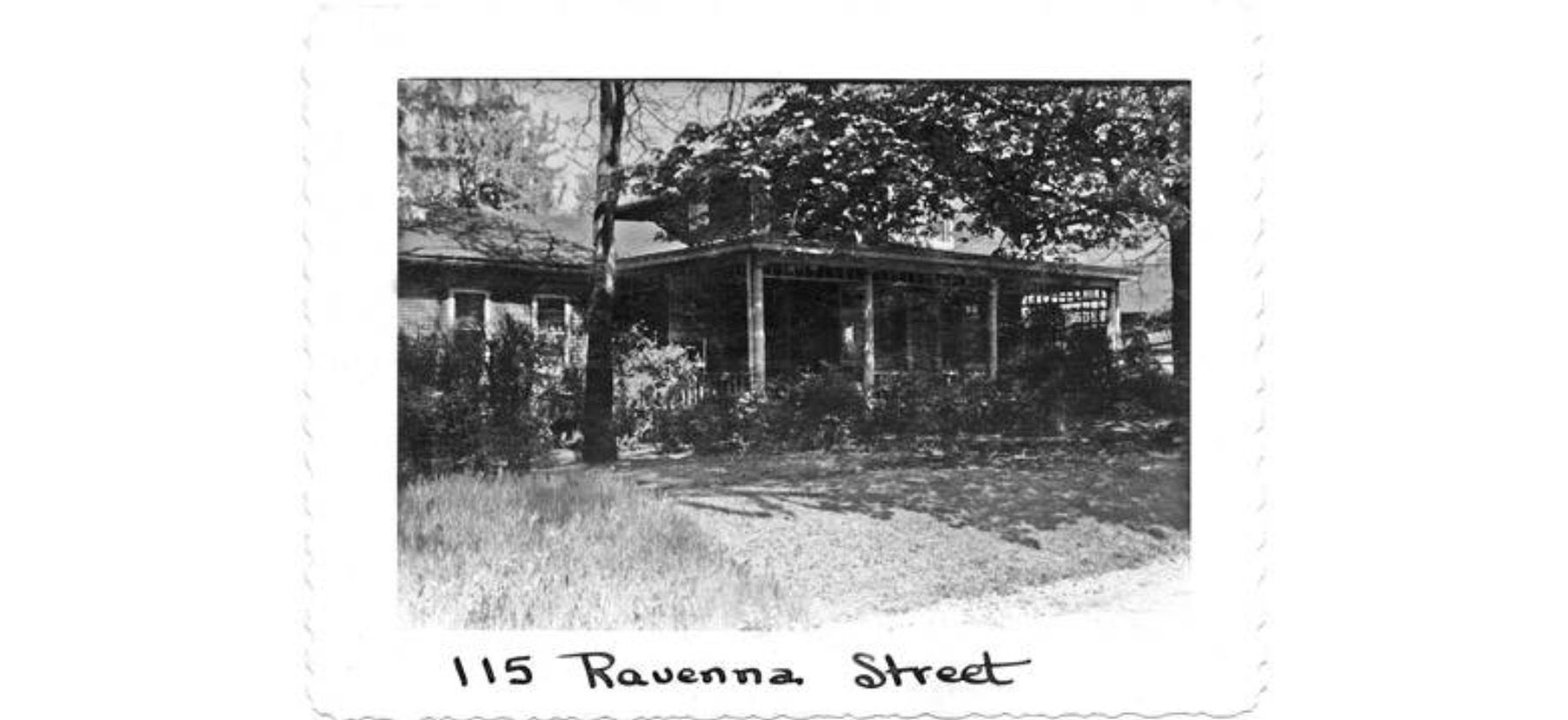 | It is known that the Ingersoll family once inhabited this 1850s property. Sanford B. Ingersoll (1828-1874) and his brother, Edward D. Ingersoll (1830-1882), were both sawmill and lumber dealers. Edward served in the Civil War with a heavy artillery unit that saw action at the battle of Cold Harbor and Petersburg, Virginia. Edward and Sanford's sister, Mary Caroline Ingersoll (1826-1874), and her husband, former mayor D.D. (Daniel Dighton) Morrell (1822-1904), once lived in this home as well. Morrell moved to Hudson to work in John Buss' (1811-1876) store. He also worked as a ticket agent for the Pennsylvania Railroad and as a bookkeeper for Straight & Son, a local cheese company. Morrell was elected mayor of Hudson in 1861. | Hudson Heritage Association Summit Memory | |
128 Ravenna Street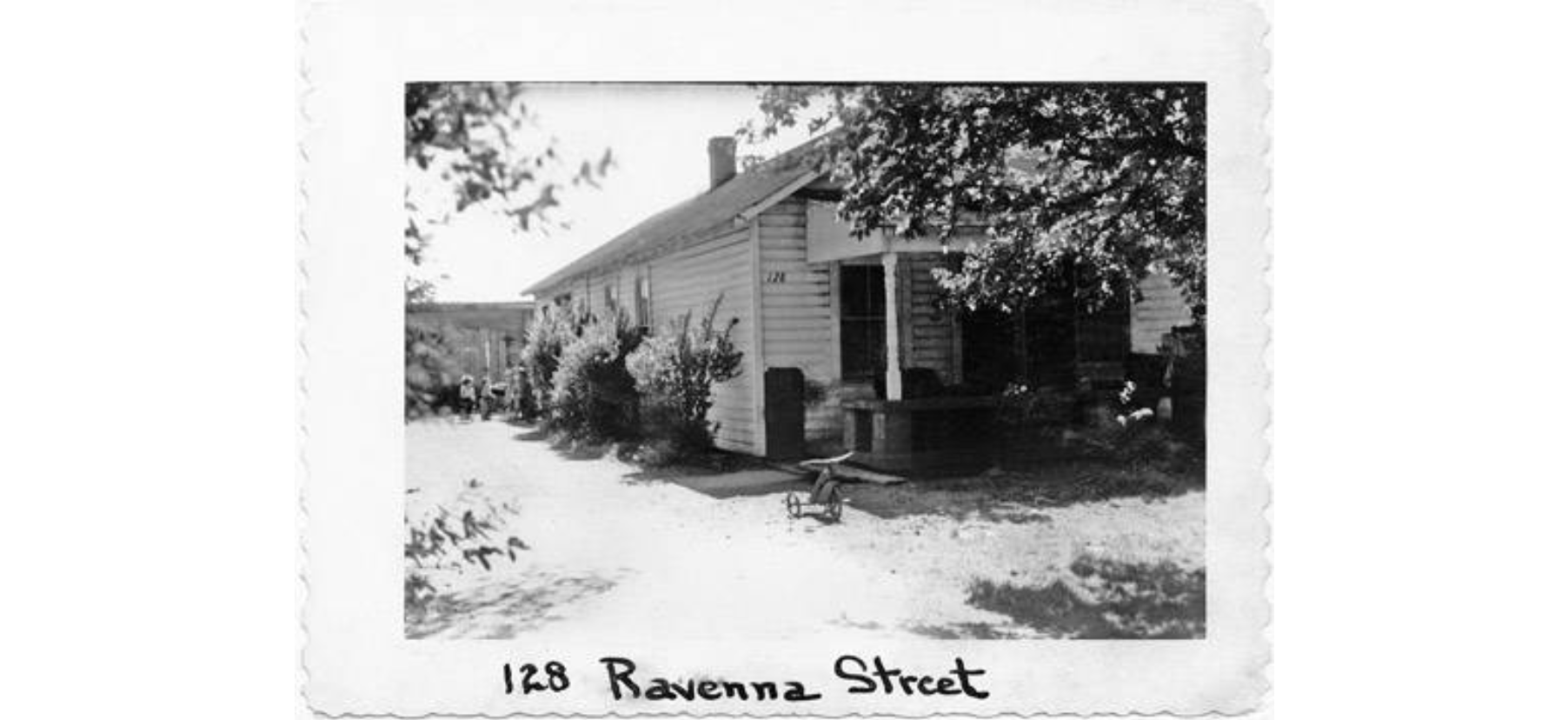 | This 1940s home was once owned by Carl E. Ellsworth (1921-1980), former superintendent of Thistledown Race Track. A.J. "Gus" Puleo (1935-2005) and his wife, Romaine Puleo (1935-1993), also resided here for a time. Gus was a sales manager at Terex and a veteran of the Korean War. | Summit Memory | |
130 Ravenna Street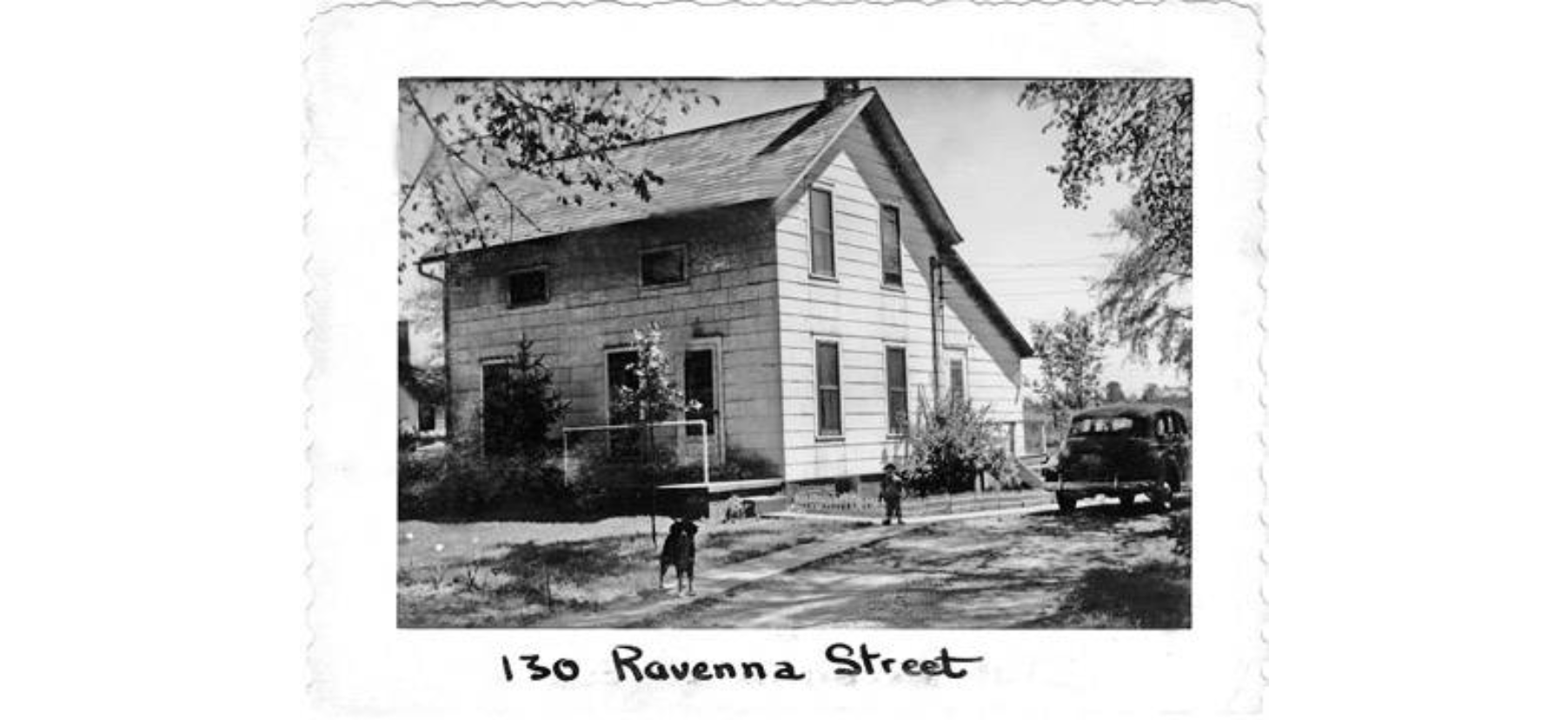 | Howard Price (1929-1988), Hudson Village equipment operator, once lived in this turn-of-the-century home. | Summit Memory | |
131 Ravenna Street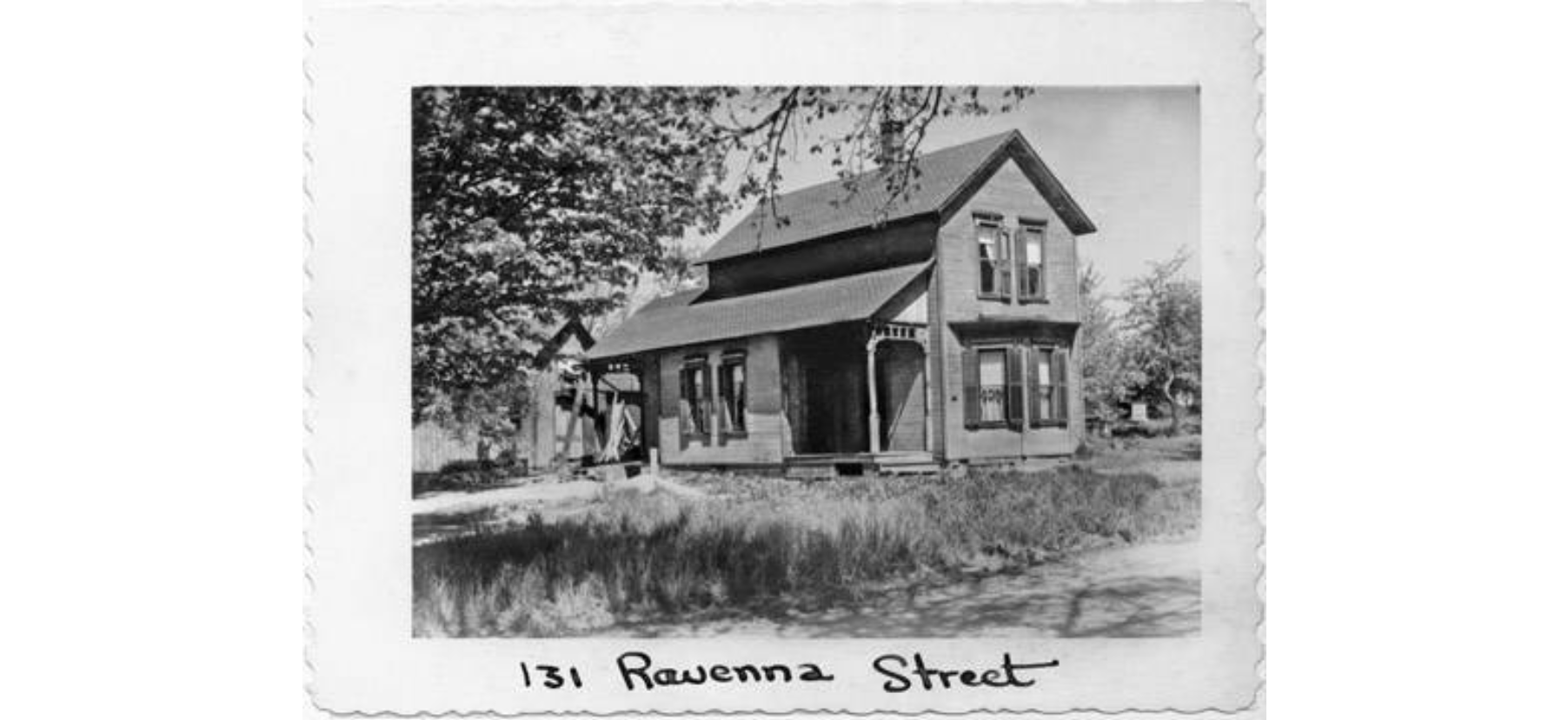 | This home, likely built in 1895, was home to Edwin F. Wetmore (1852-1938), who was in the nursery business in Tennessee. Early in life, Wetmore was an ardent abolitionist. Later in life, when he returned to his beloved Ohio, he worked constantly for the "dry" cause. | Summit Memory | |
134 Ravenna Street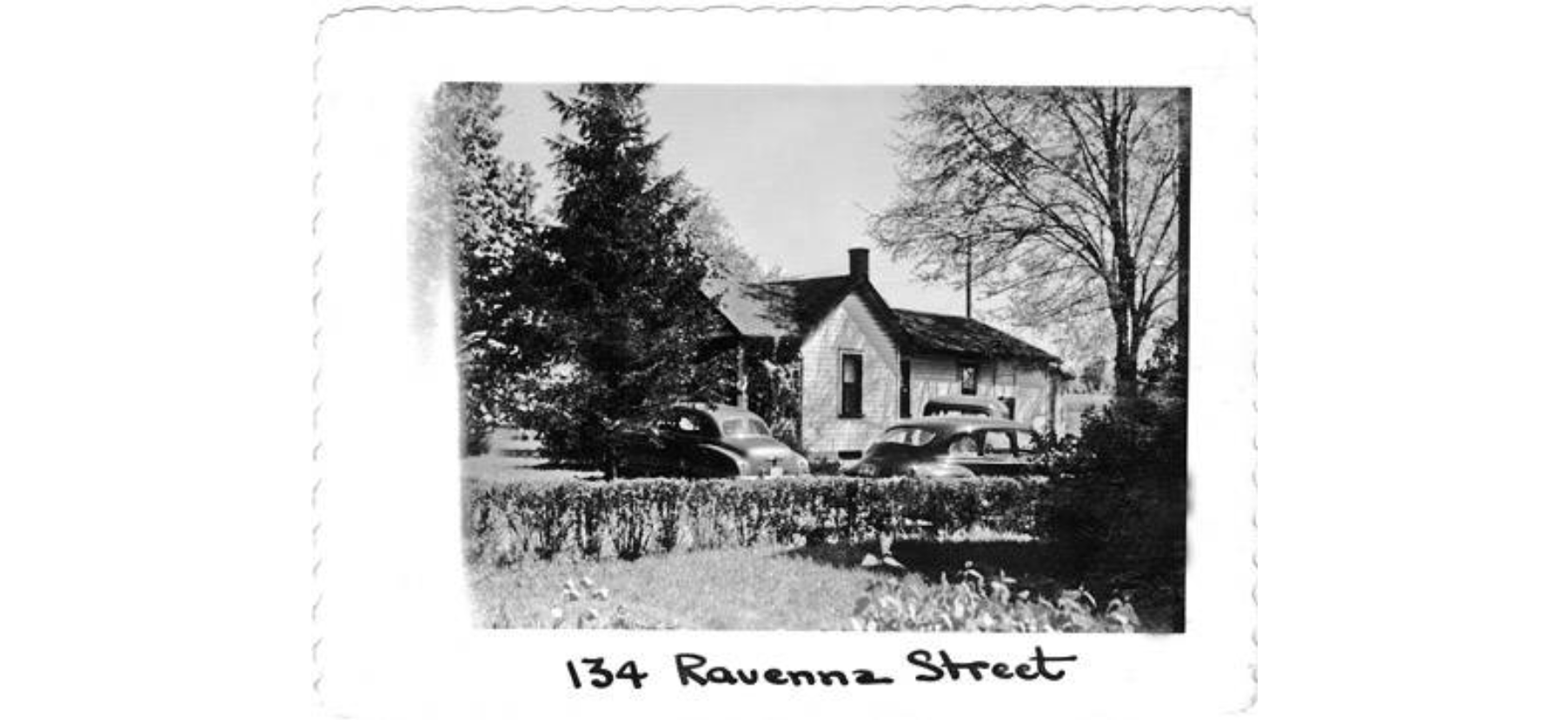 | This interesting circa-1939 ranch home with a front dormer was once home to the Italian Rotonto family. Michael (1890-1932) and his wife, Mary Donatelli Rotonto (1890-1950), raised a family here on the income Michael made as a pyrotechnician and later as an employee of Morse Controls (formerly Morse Instrument Co.). He was also active with the Boy Scouts and was a World War II veteran. | Summit Memory | |
139 Ravenna Street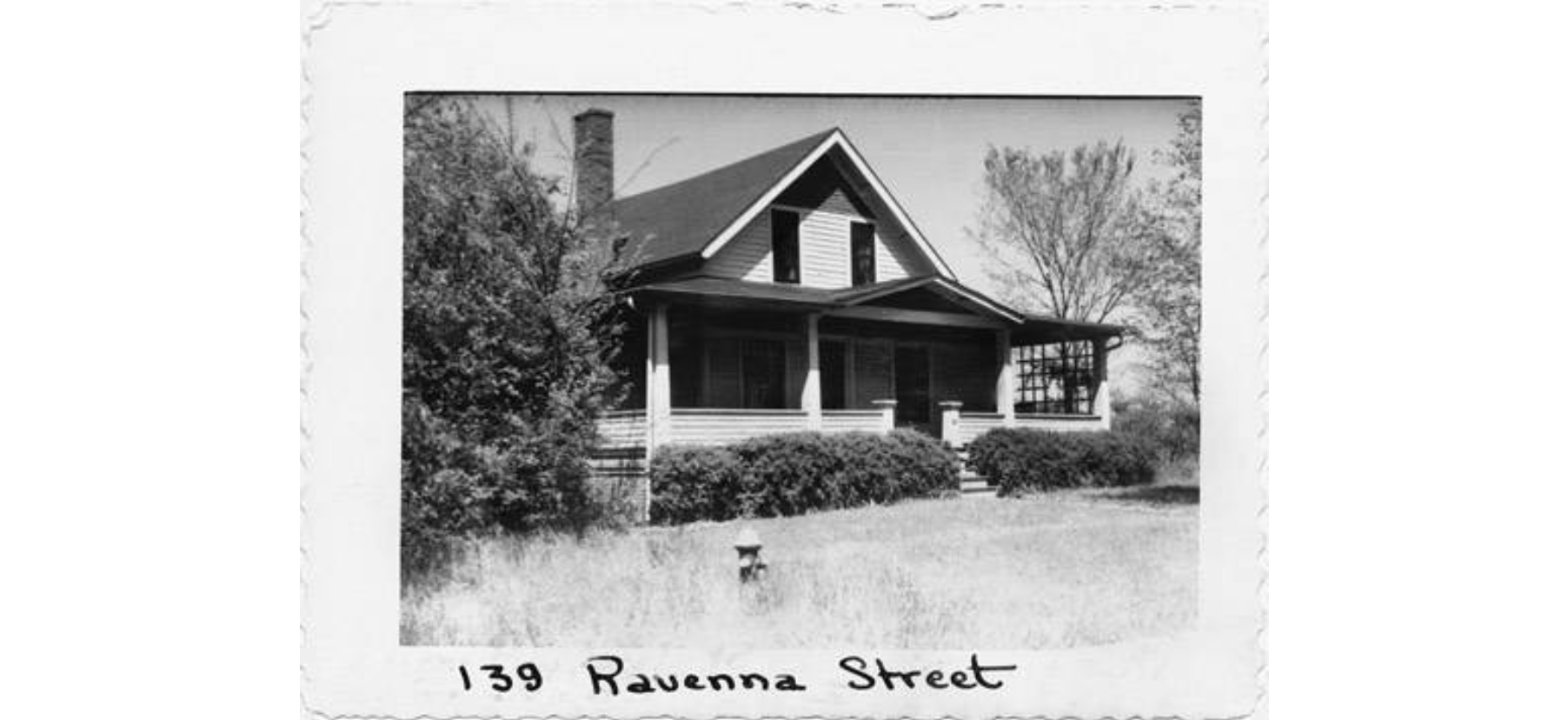 | Carpenter and builder George Norris (1882-1939) and his Canadian-born wife, Ada E. Norris (1875-1959), were longtime occupants of this turn-of-the-century home. When he died George was the attendance officer at the Summit County School Board and a deacon of the Congregational Church. He once served as a member of the village council. | Summit Memory | |
142 Ravenna Street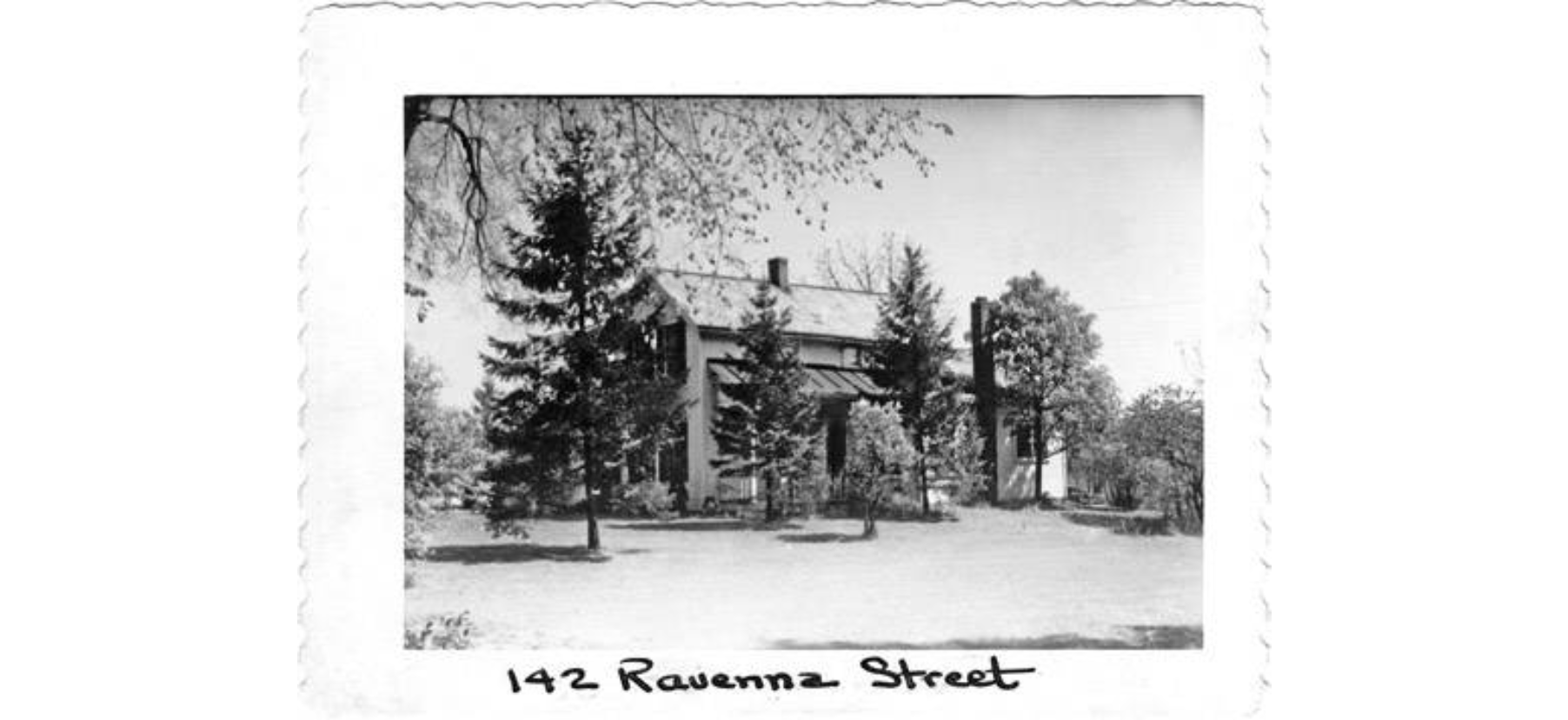 | The Arnold family were longtime occupants of this home. William Arnold (1863-1952) was a butcher at Sawyers Market. His son, Kenneth Arnold (1902-1963), a later owner, was a longtime employee of Turner Lumber Co. Kenneth and his wife, Louella (1900-1980), later owned and operated the Village General Store in Streetsboro. The home dates to the 1890s. | Summit Memory | |
151 Ravenna Street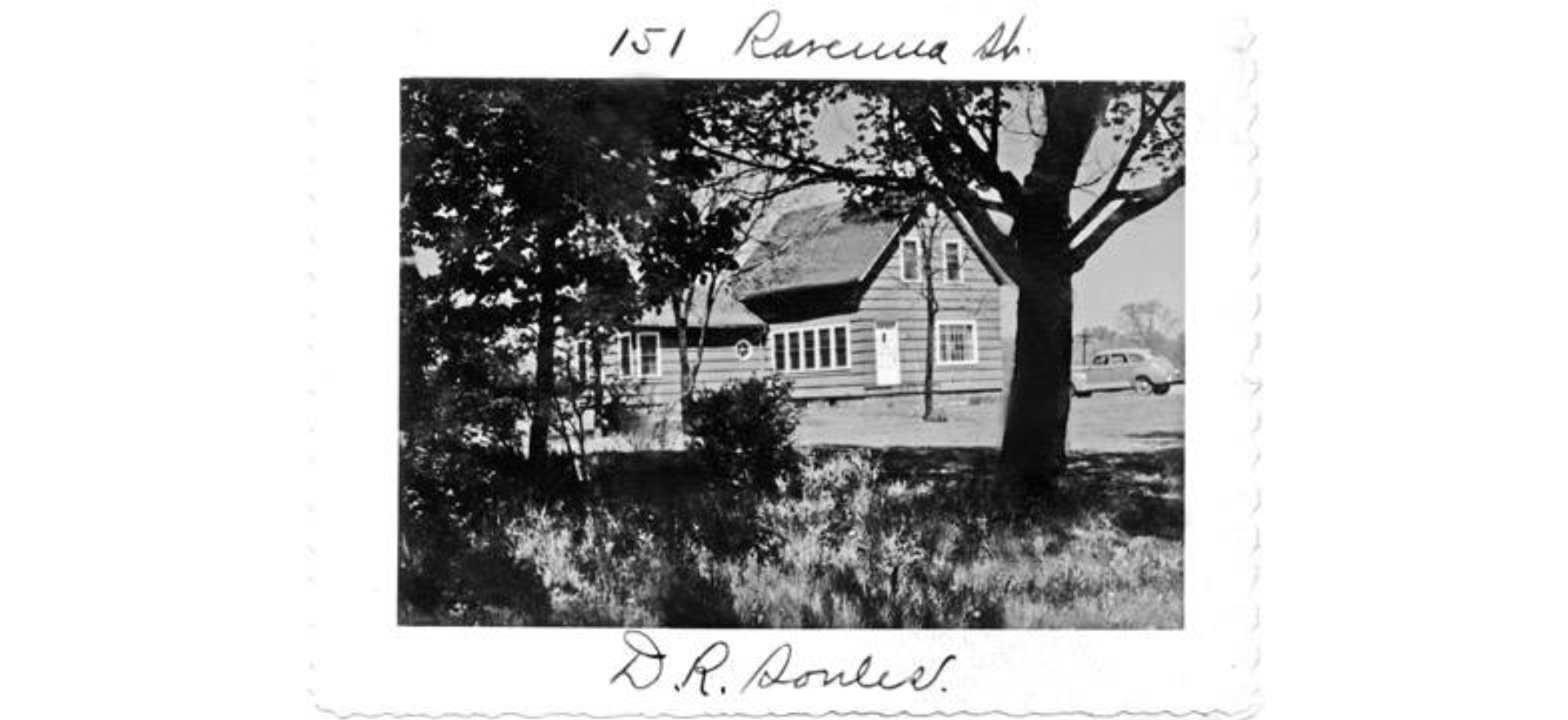 | Anthony "Harry" Kidgell (1873-1948) resided in this 1920s home. Kidgell, as stated in his obituary in the "Hudson Times," "will be remembered by many Hudson folks as the man who made their lawn one of beauty." | Summit Memory | |
166 Ravenna Street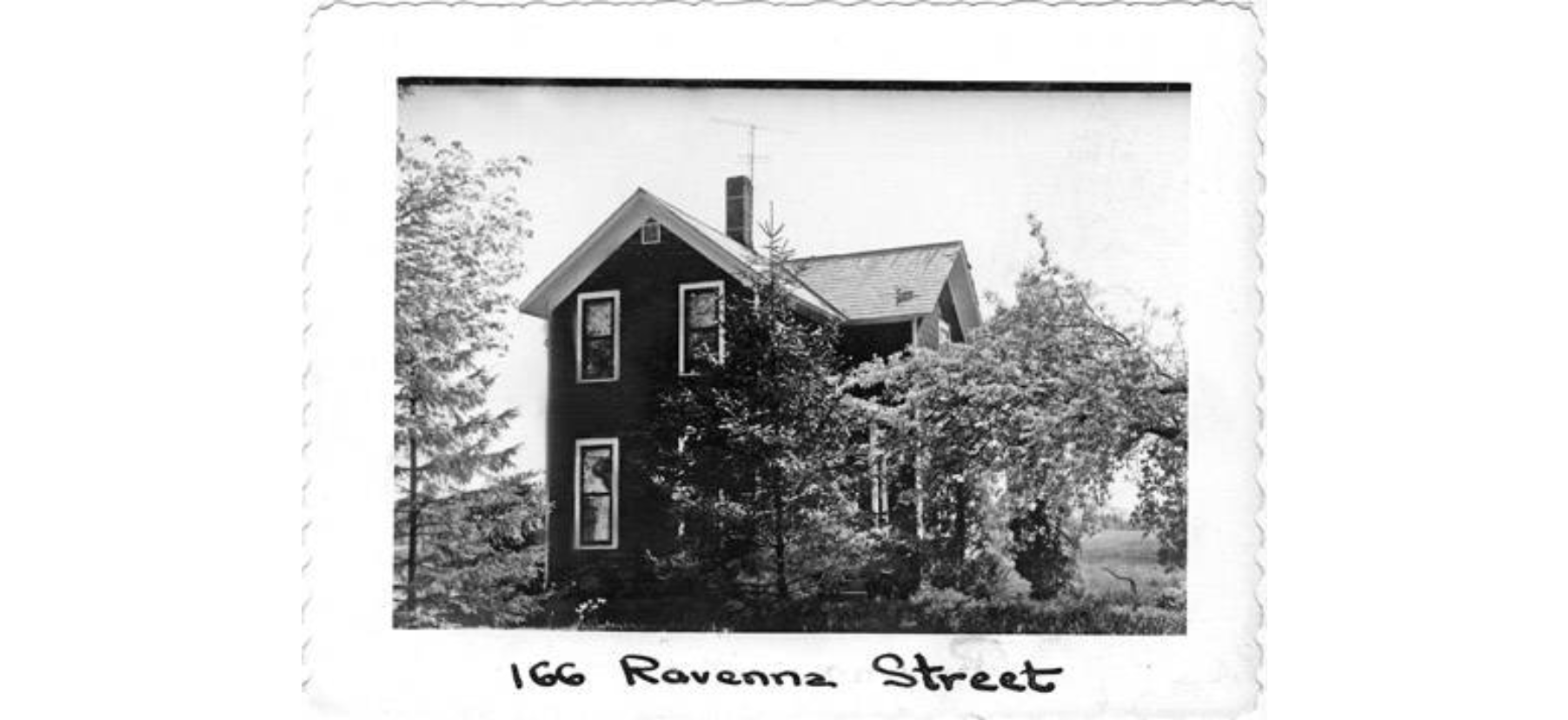 | This two-story home was destroyed in 1961. It once belonged to Morse Controls plant superintendent James W. Meeker, Jr. (1928-1988) and his family. Meeker worked for Morse Controls for 32 years. | Summit Memory | |
171 Ravenna Street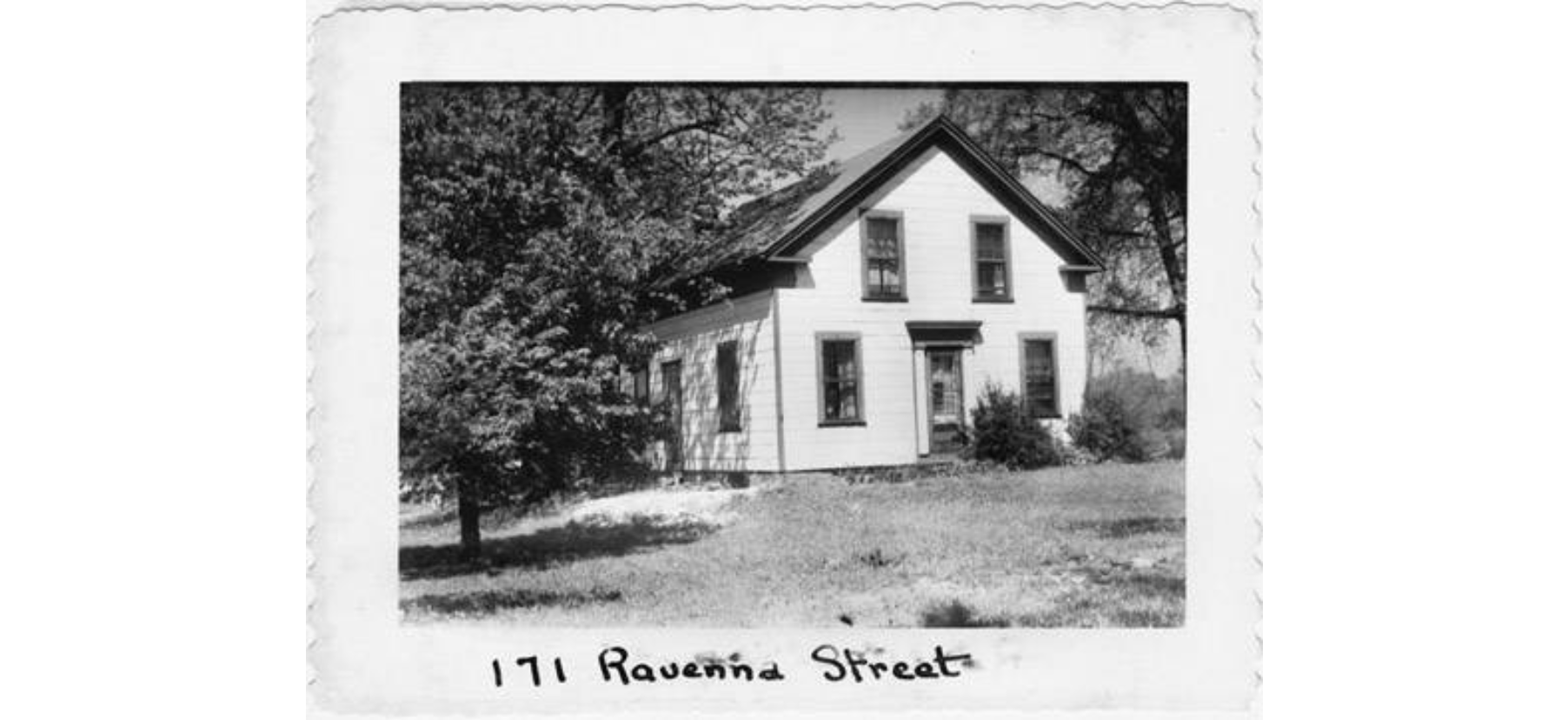 | Greek Revival influence can be discerned in the architecture of this circa-1853 home. English immigrant Herbert Kidgell (1878-1963), who was a stationary engineer at Western Reserve Academy for 25 years, once lived here. His brother, Anthony Kidgell (1873-1943), lived next door. The Kuchenbecker family later owned the property. Julius Kuchenbecker (1894-1978) was a dairy farmer. His wife, Olive Kuchenbecker (1893-1977), once served as president of the American Legion, Lee Bishop Post. Julius and Olive had six sons and two daughters. | Summit Memory | |
176 Ravenna Street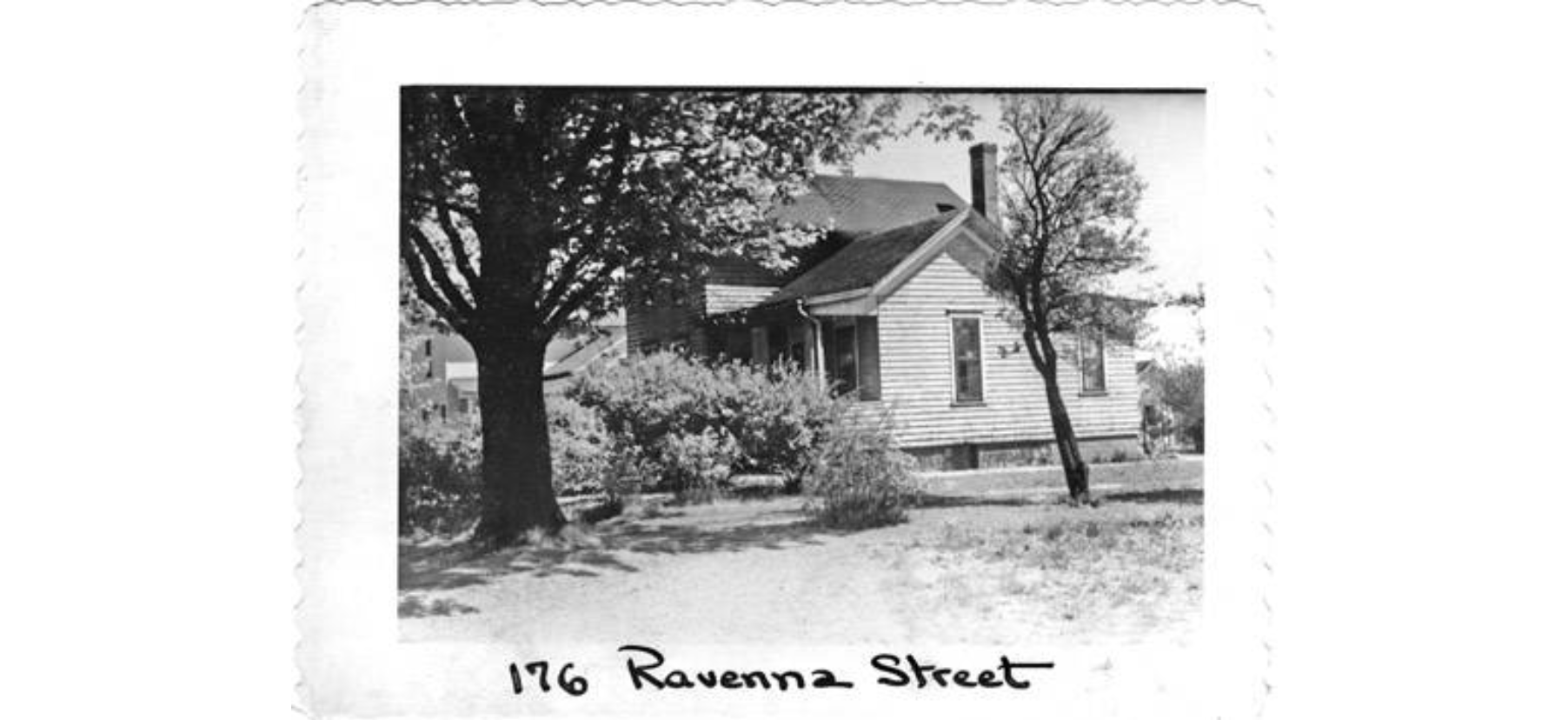 | The Jakemore family were longtime residents of this circa-1908 home. Mary Jakemore (1884-1945) was a Czechoslovakian immigrant. Her husband Steve (1887-1964) was a trackman for the Pennsylvania Railroad. Mary and Steve's daughter, Elsie Ann Jakemore (1926-1996), was a Western Reserve Phone Co. operator for 42 years. | Summit Memory | |
180 Ravenna Street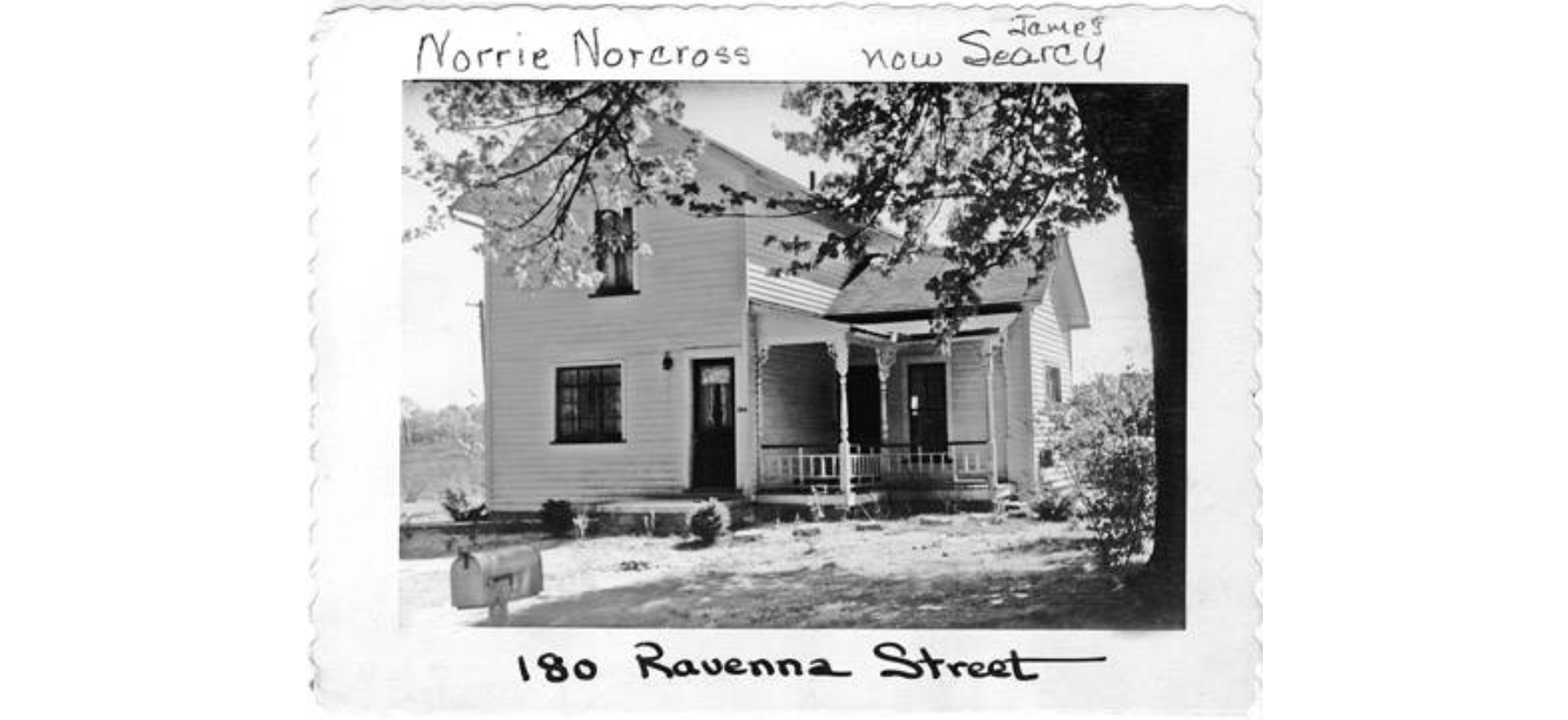 | The "Hudson Enterprise" of 1880 mentions that the Charles Norcross (1848-1905) family was constructing this home in the spring of 1880. Charles's son Clarence (1877-1948) lived here for several years. | Summit Memory | |
203 Ravenna Street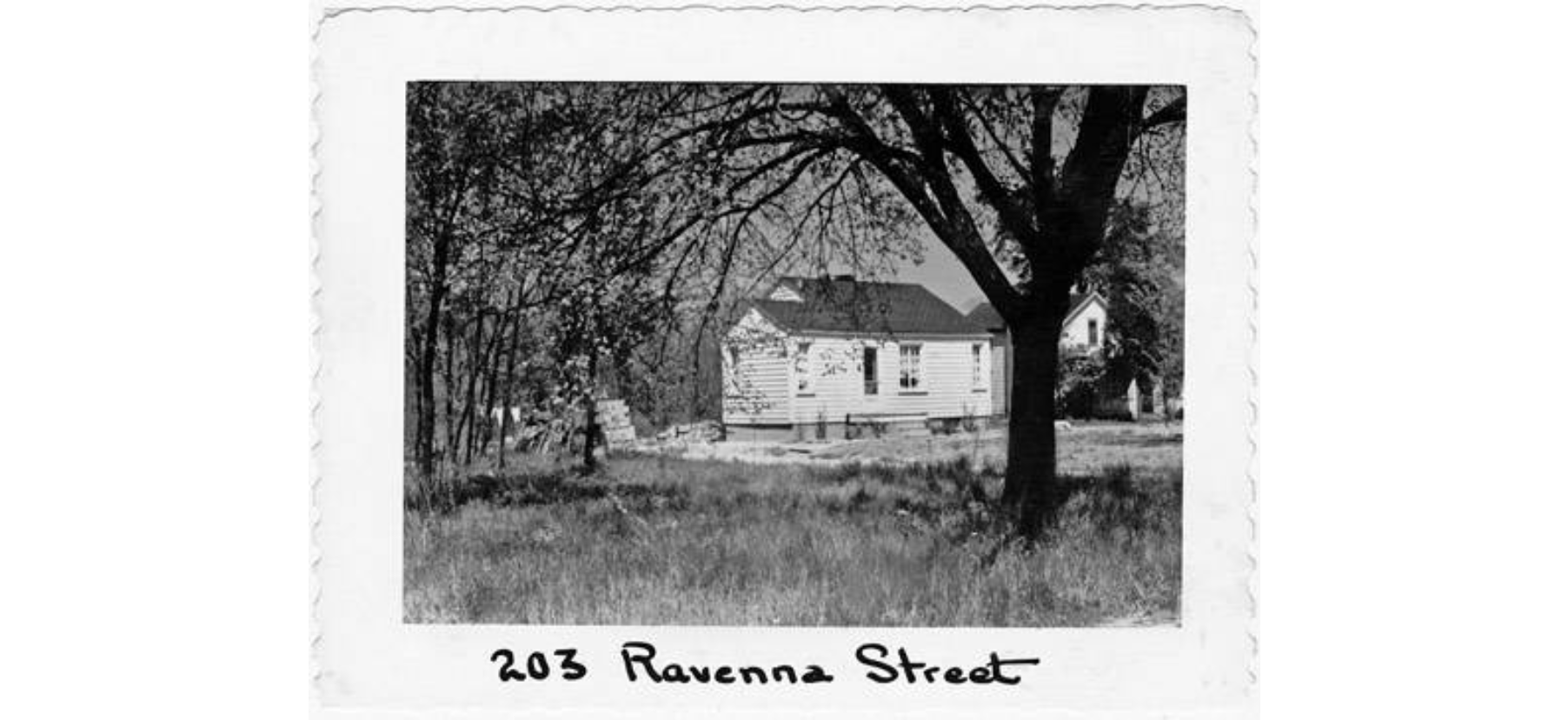 | Violet (1929-1994) and Carroll Richard "Dick" Wolfe (1926-1992), owners of Village Beverage Center in Hudson, were most likely the first owners of this late-1940s home. Dick served on the Hudson Fire Dept. and was also an assistant fire chief at one time. It is believed that this home was once located at 205 N. Main St. and was moved here and set up on a new foundation. | Summit Memory | |
204 Ravenna Street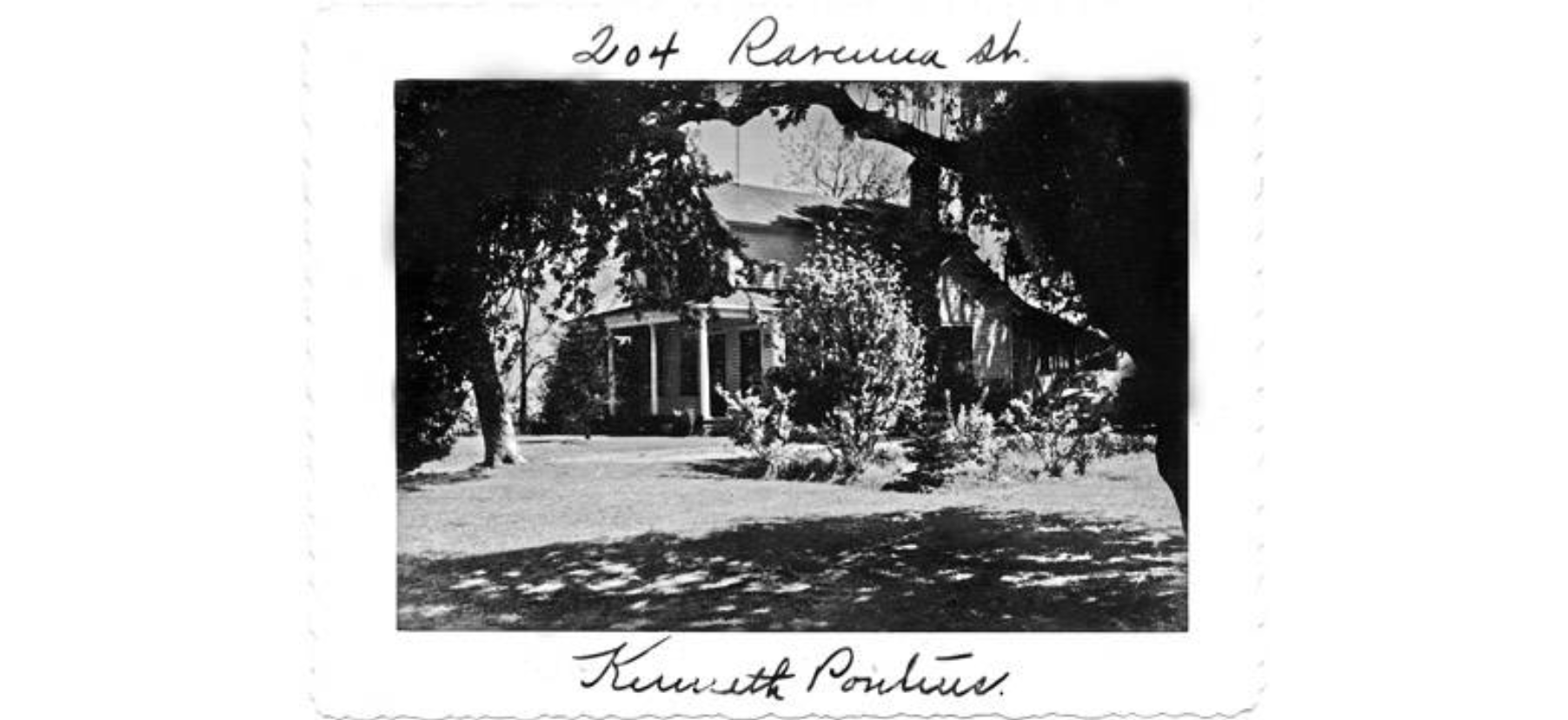 | Three generations of the Pontius family have owned this home, including J. Wesley Pontius (1861-1911), Kenneth J. Pontius (1904-1986), and George W. Pontius (1829-1914). Kenneth was a lineman for the Western Reserve Telephone Co. George, a 5-foot-6-inch-tall huckster and painter, was also a disabled Civil War veteran who served with Company H of the 69th Ohio Volunteer Infantry. The home dates to circa 1908. | Summit Memory | |
205 Ravenna Street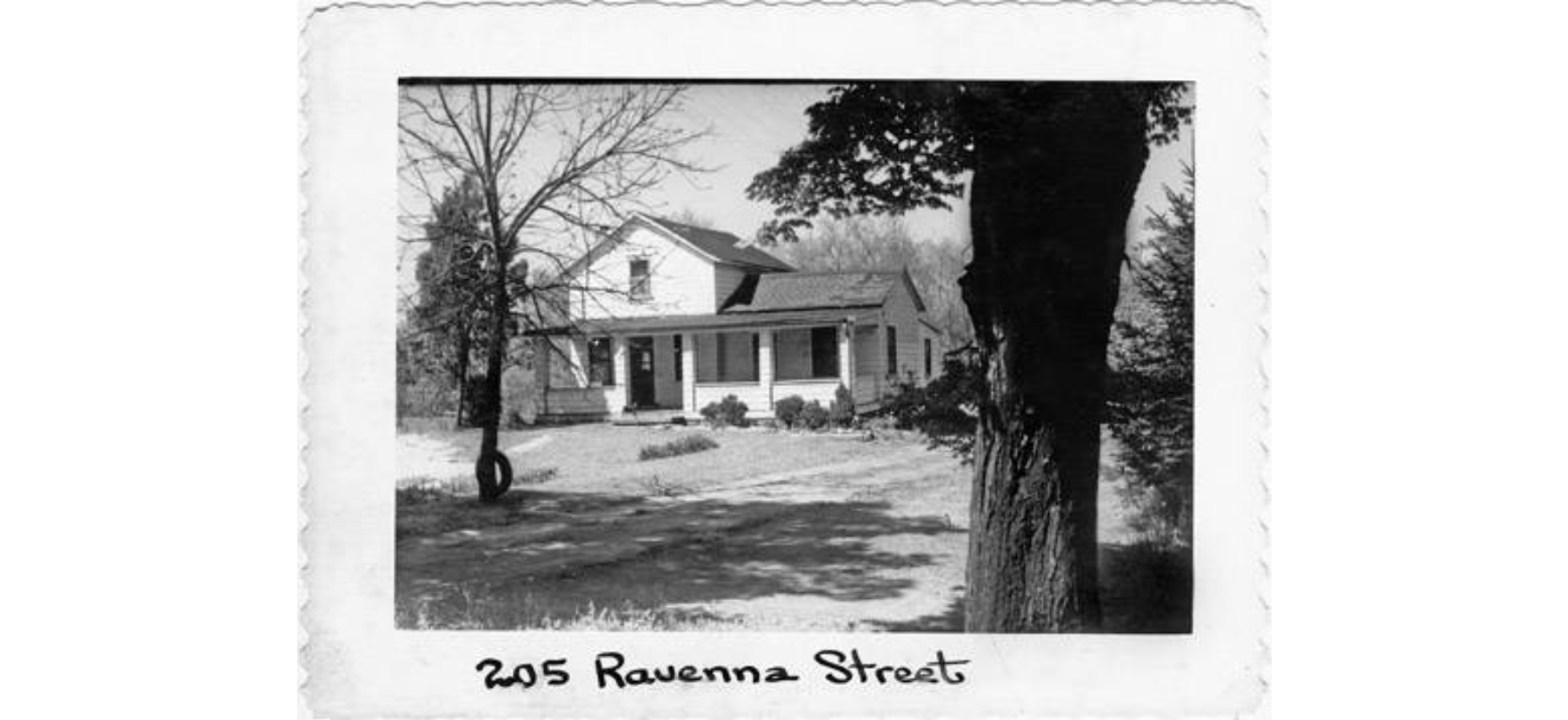 | This home dates to circa 1853 and was once the home of Grover E. Lowe (1885-1963), employee of the Village Water Dept. Work to establish Hudson's first water supply began in 1910. A total of 88 customers were listed during the first billing period in 1912. | Summit Memory | |
214 Ravenna Street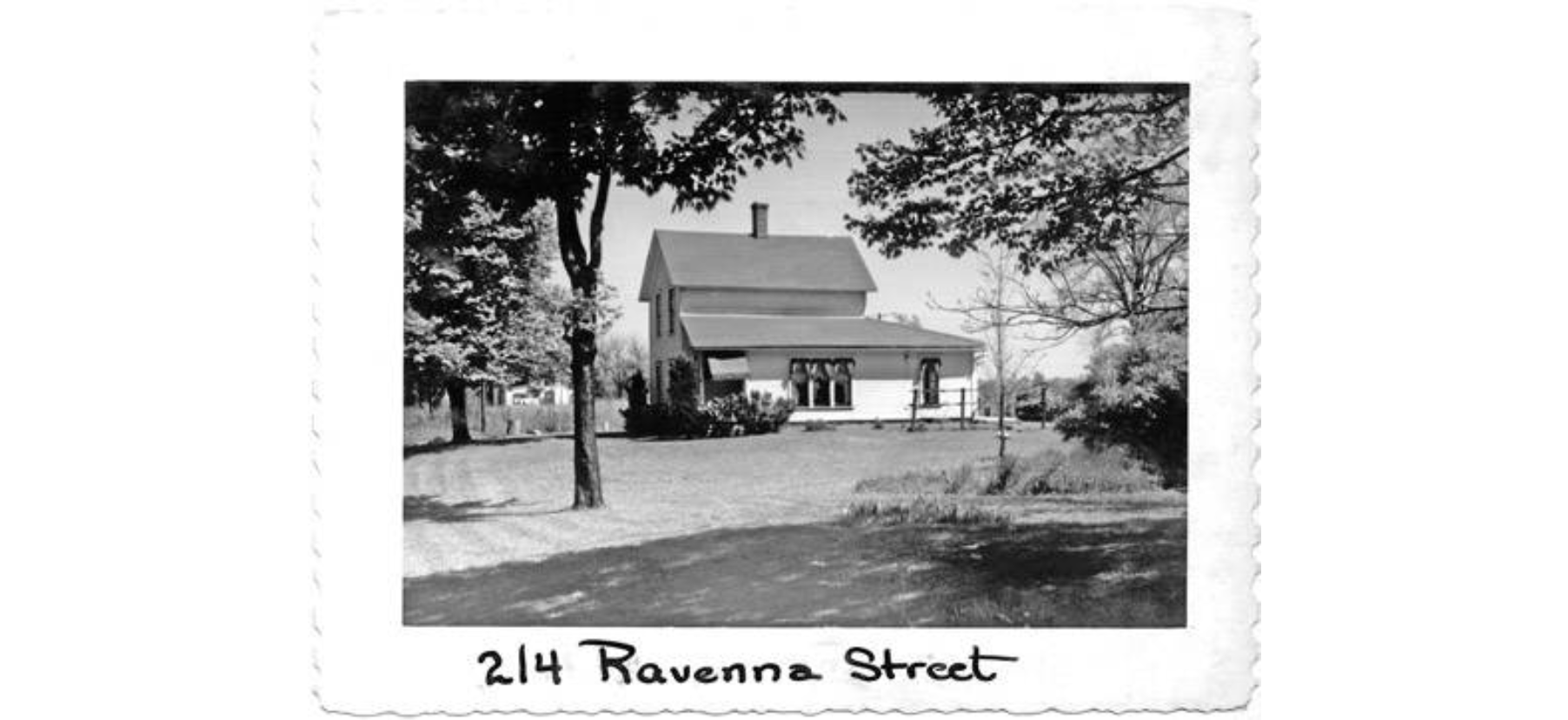 | It is known this two story Greek Revival house dates at least as far back as 1884 when the Fox family began to reside here. Cyrus Fox (1827-1902) was a farmer, son William (1868-1949) was a clerk in "Whedon's Liquor Store" in Hudson, Ohio and his wife, Mabel Ozmun (1880-1929) worked as a bank teller in Hudson, Ohio for several years. | Summit Memory | |
219 Ravenna Street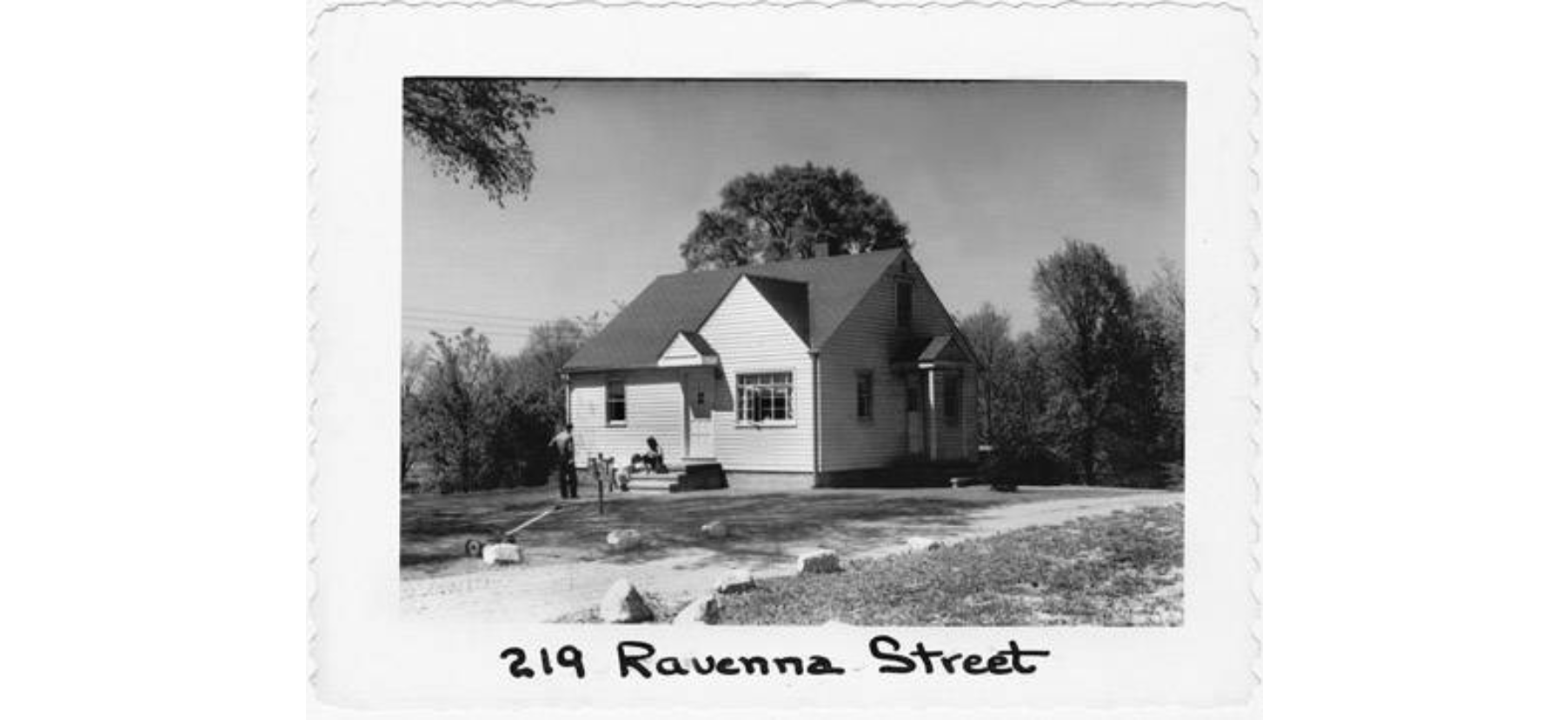 | Summit Memory | ||
240 Ravenna Street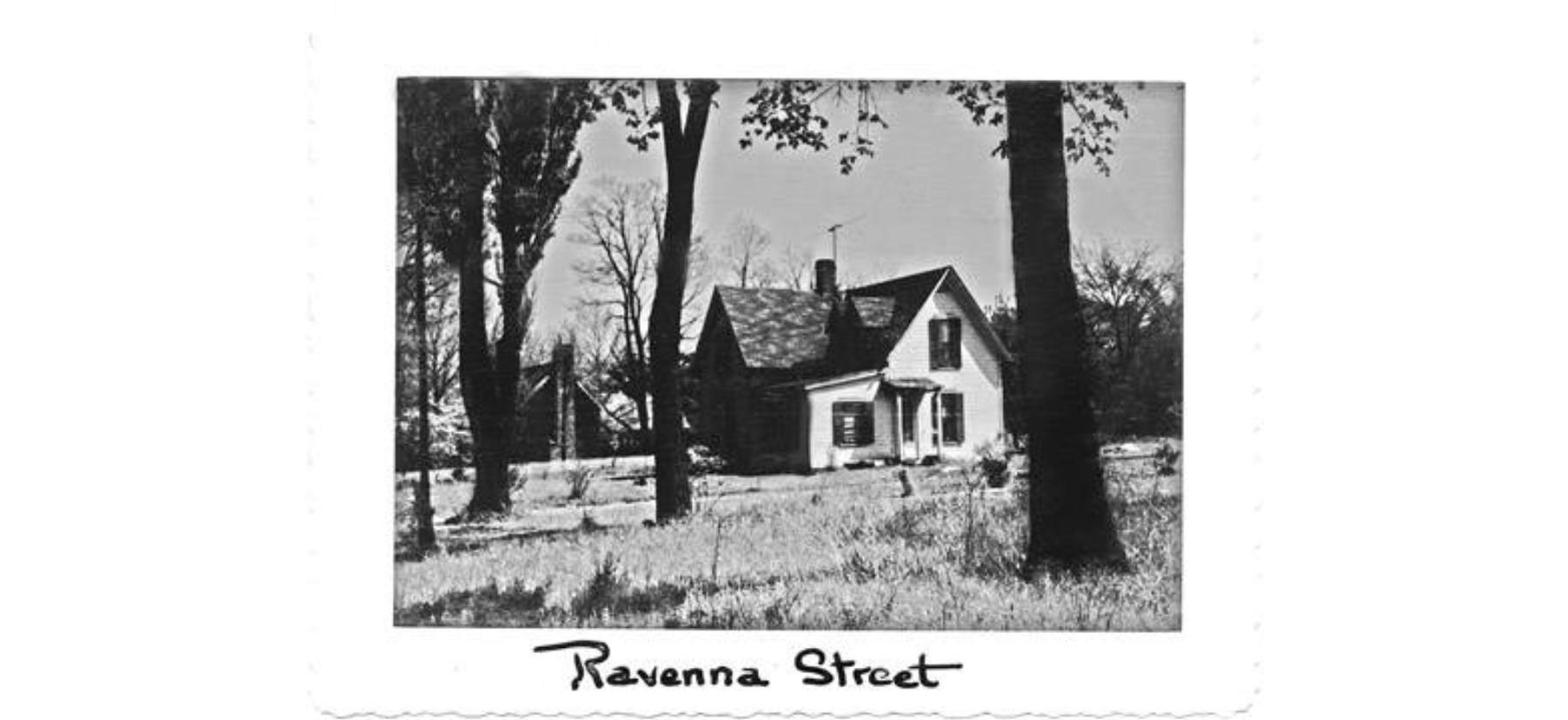 | Residents of this home in the 1950s include Lenior (1906-1977) and Mildred Honeycutt (1912-1995) and Paul Graber (1919-2008). Lenior worked in production control for the Goodyear Tire & Rubber Co. Graber was a construction superintendent for the Western Reserve Telephone Co. During World War II, Graber served with the U.S. Army Company B 440 Signal Construction Battalion in the Philippines. The Gothic Revival home dates to the 1850s. | Summit Memory | |
248 Ravenna Street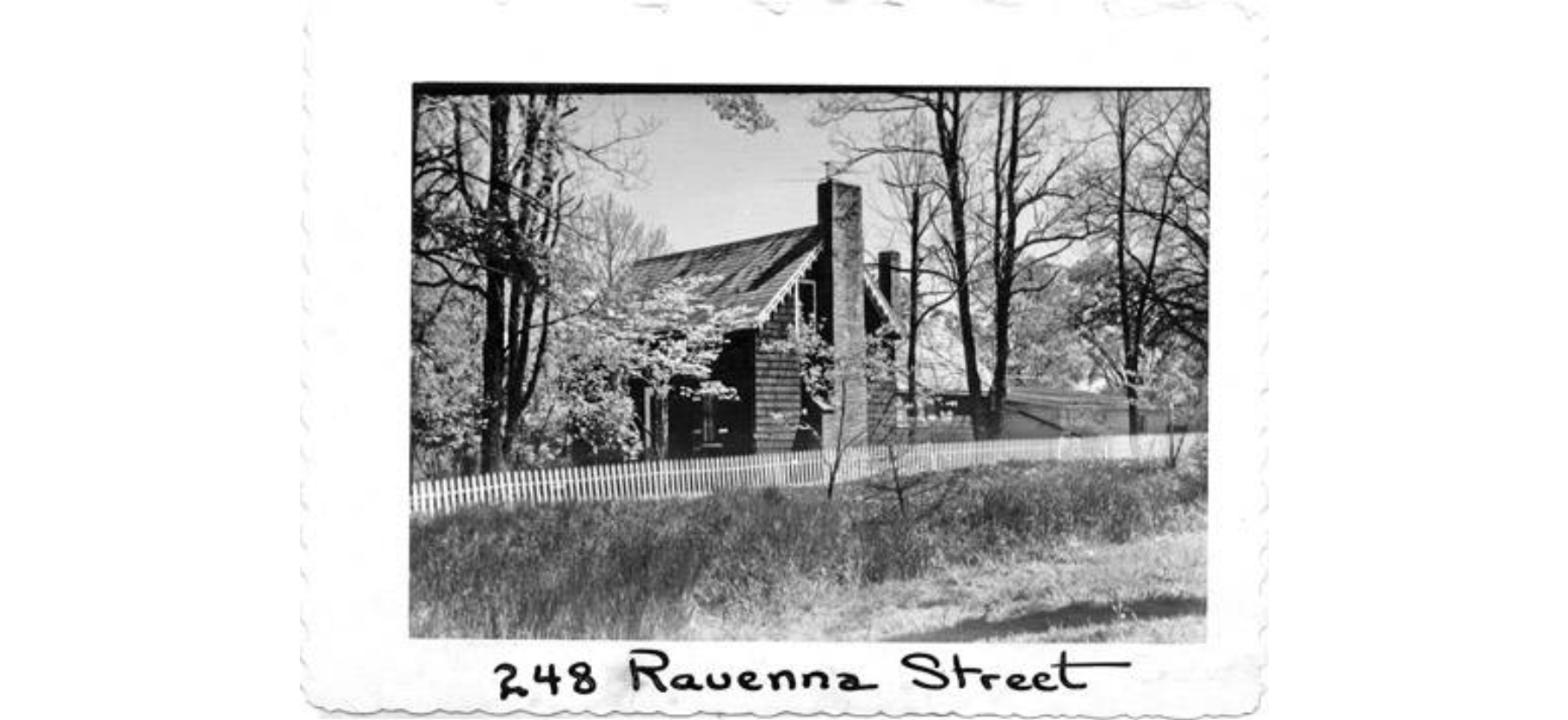 | This New England one-and-one-half-story home, dating to the 1850s, once belonged to Clarice (1910-2000) and M. Arthur Thompson (1909-2001). Clarice was a member of the Darrowville Grange for 60 years. | Summit Memory | |
| 2095 Ravenna Street John Ellsworth Jr. Farm | John Ellsworth, the brother of Elisha Ellsworth, built this house in 1848. It burned to the ground the same year and was rebuilt. The original was described as a twin to the farmhouse built on Maplewood Farm located on Hudson-Aurora Road. Five generations of Ellsworths have lived in this house. | Hudson Heritage Association | |
| 17 South Hayden Parkway Amos Thompson House | Hudson Heritage Association | ||
24 South Main Street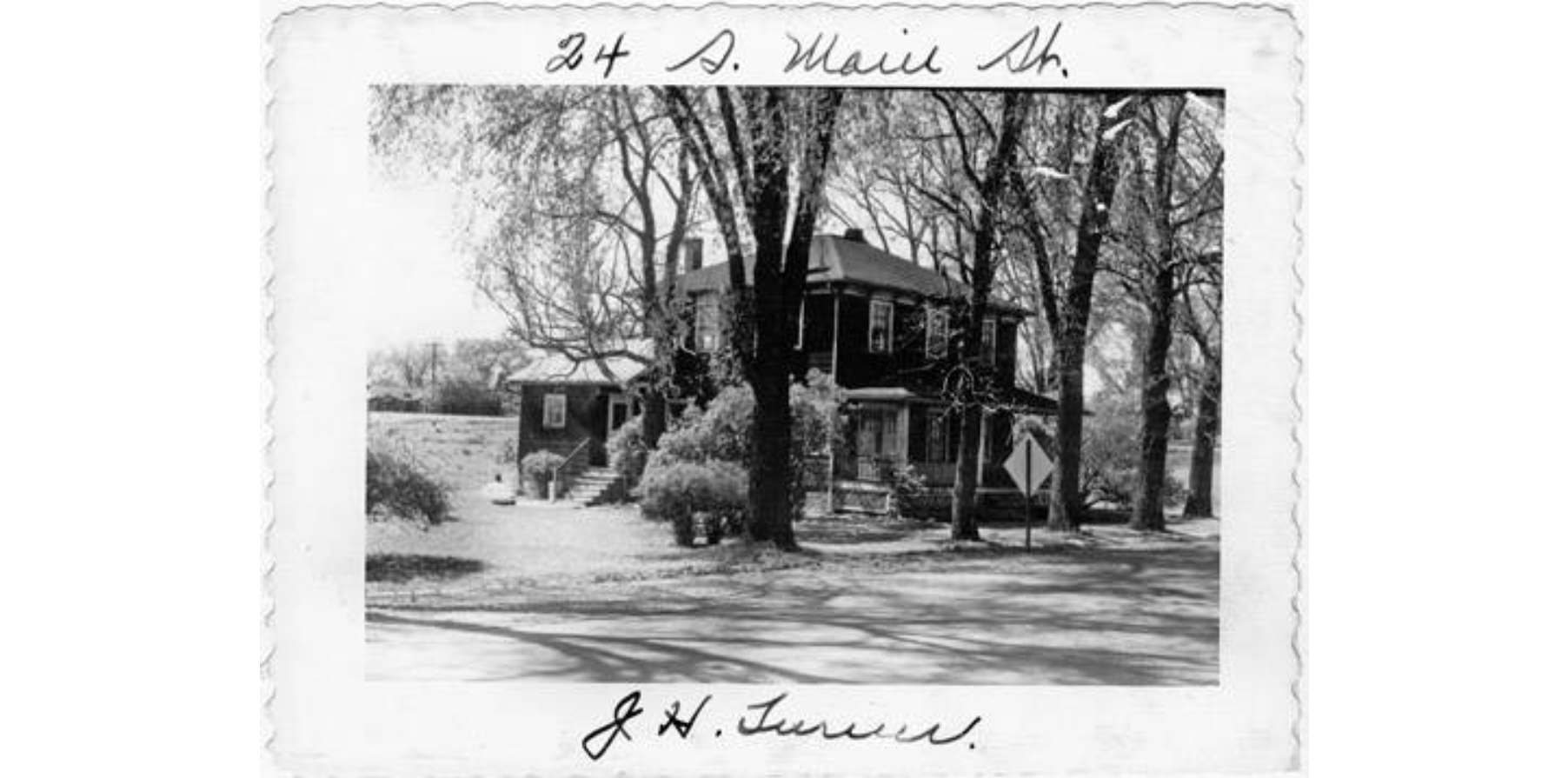 | Constructed prior to 1920, this home once belonged to Bohemia-born cobbler John Peterka (1866-1945), who specialized in making shoes for individuals with deformed feet. Peterka also earned his living as a door-to-door fish salesman. The home at one time also served as the Congregational Church rectory. It was torn down in 1970. | Summit Memory | |
36 South Main Street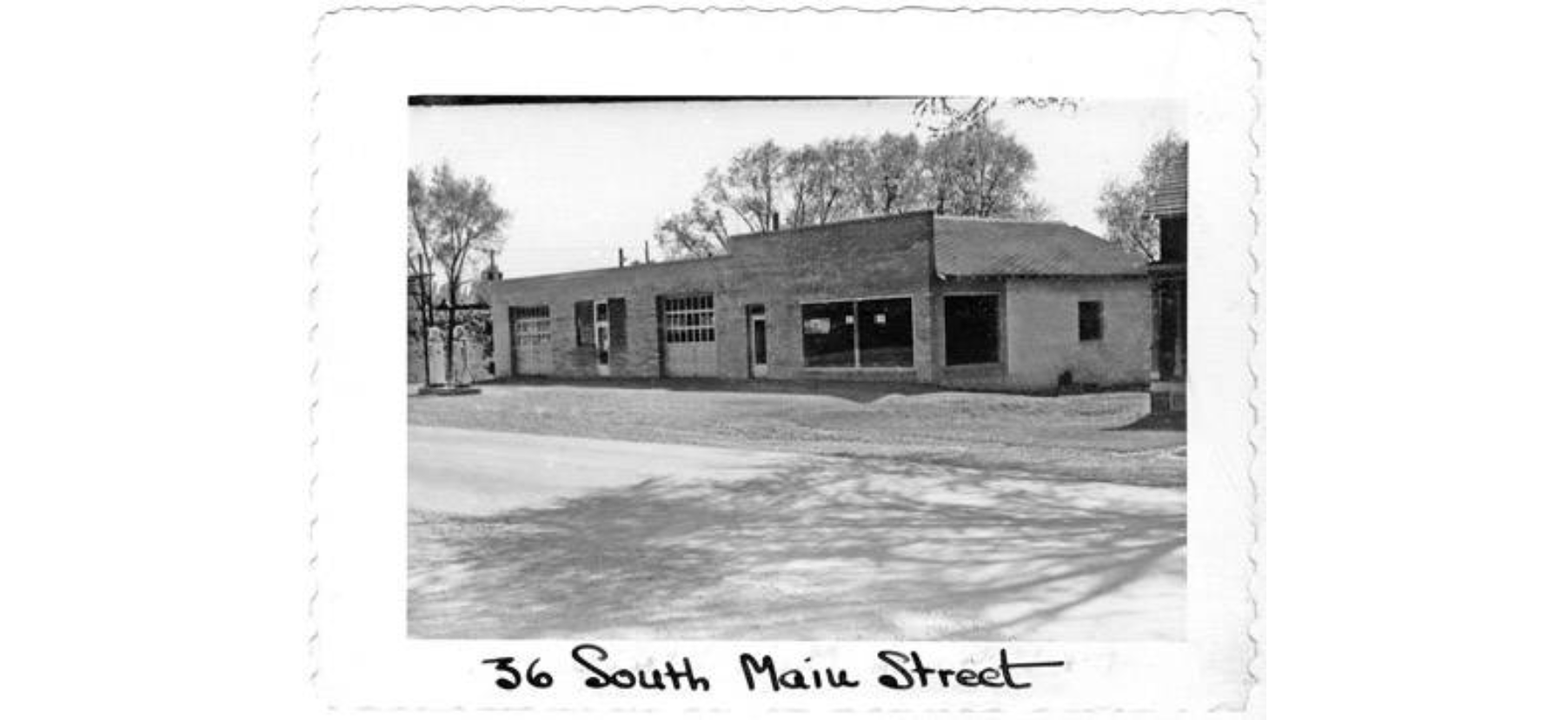 | Thomas E. Bissell (1892-1954), longtime operator of a Ford automobile sales and repair shop in Hudson, moved his business to this building from Clinton Street in 1942. Bissell expanded the building in the late 1940s. The old part housed the showroom and offices and the new part was used for service. | Summit Memory | |
37 South Main Street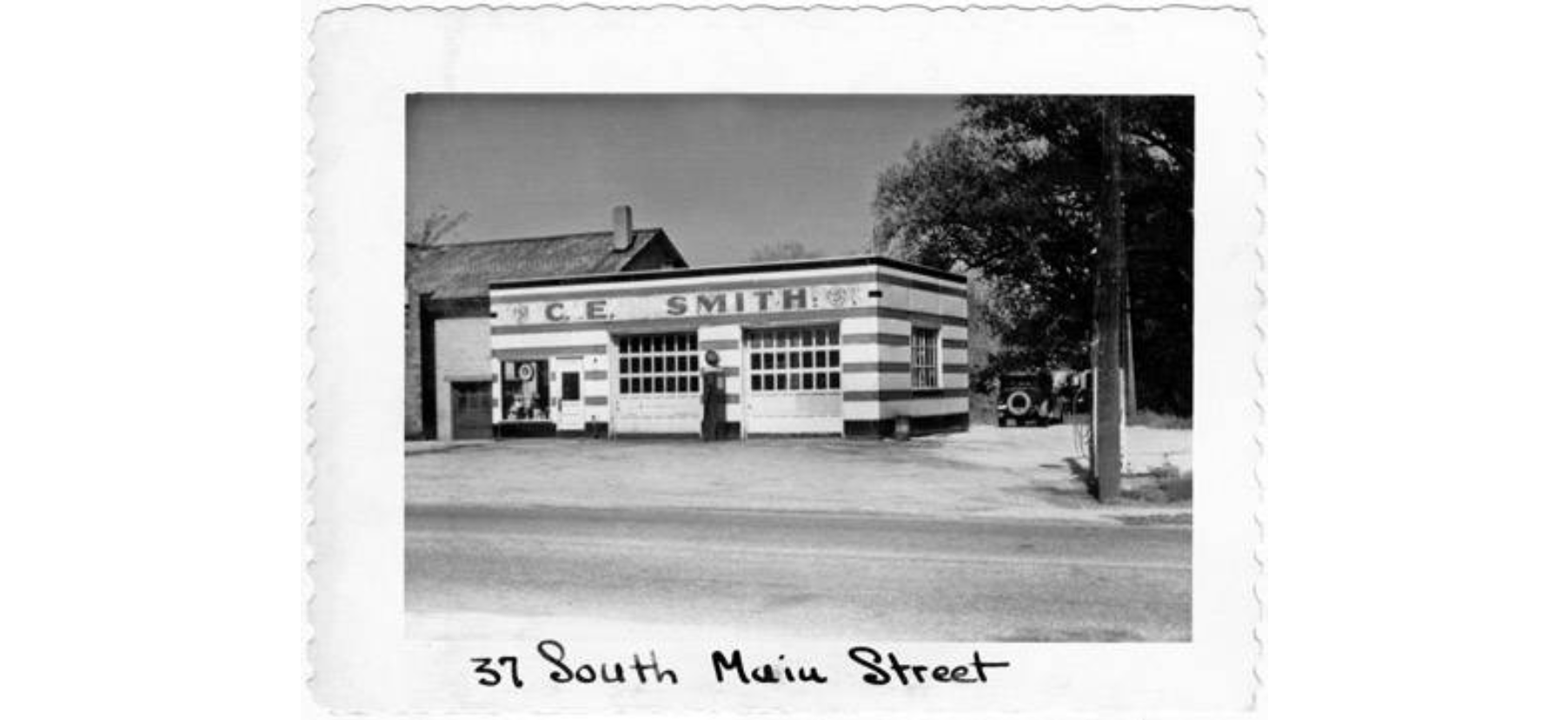 | It is likely that Raymond L. Kilbourne (1891-1955) built this service garage in the 1920s or 1930s to house his Chevrolet repair business. A 1935 article in the "Hudson Times" discusses Kilbourne's plans to build a three story addition to his garage, which is likely the brick building sitting behind this one. In the 1950s, C.E. Smith Buick Sales & Service occupied the building, which no longer exists. | Summit Memory | |
51 South Main Street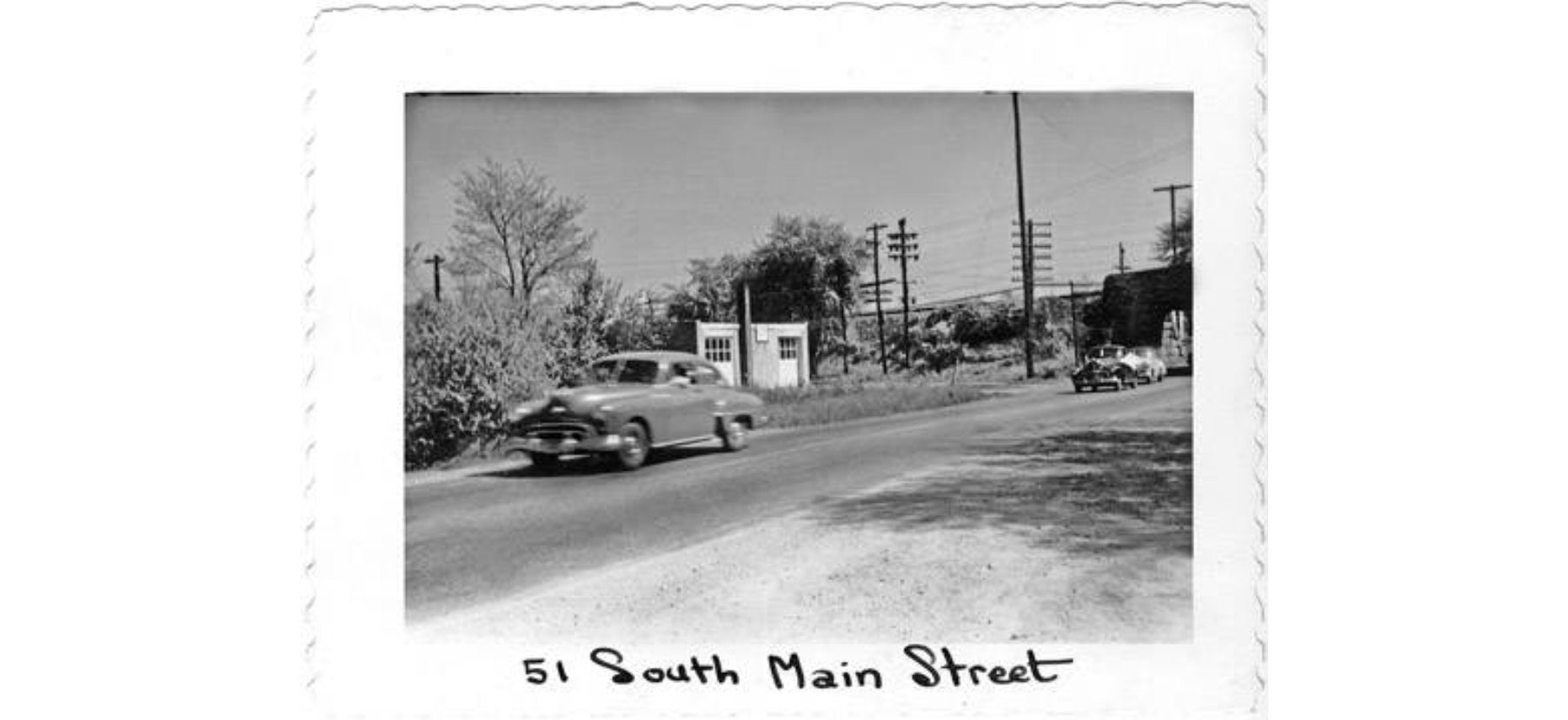 | This building likely no longer exists. Danish woodcarver Robert E. Schow (1871-1961) once ran his business, the Schow Woodcraft Co., out of this location. Schow, known for his intricate wood designs, did a lot of design work for churches in Ohio and Pennsylvania. The Lake Forest clubhouse also includes some of Schow's work. | Summit Memory | |
65 South Main Street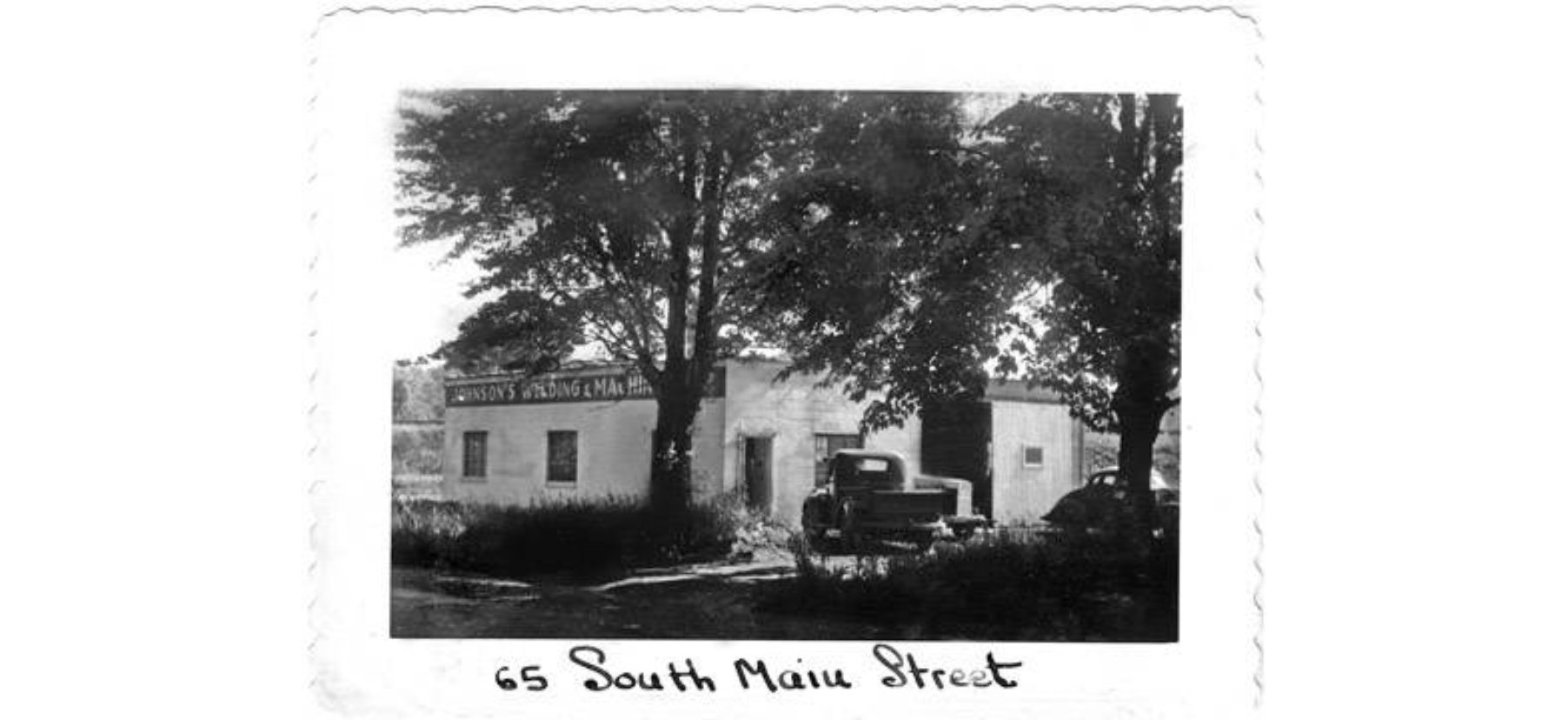 | Brothers Art (1909-1987) and John Johnson (b.1923) built this building to house their machine shop after their first location at 51 S. Main St. burned down in 1942. The Johnson Welding and Machine Shop began as a hobby. The H.W. Hoover Conservatory and the Hilstemp Inc. Greenhouse also used this building at one time. | Summit Memory | |
66 South Main Street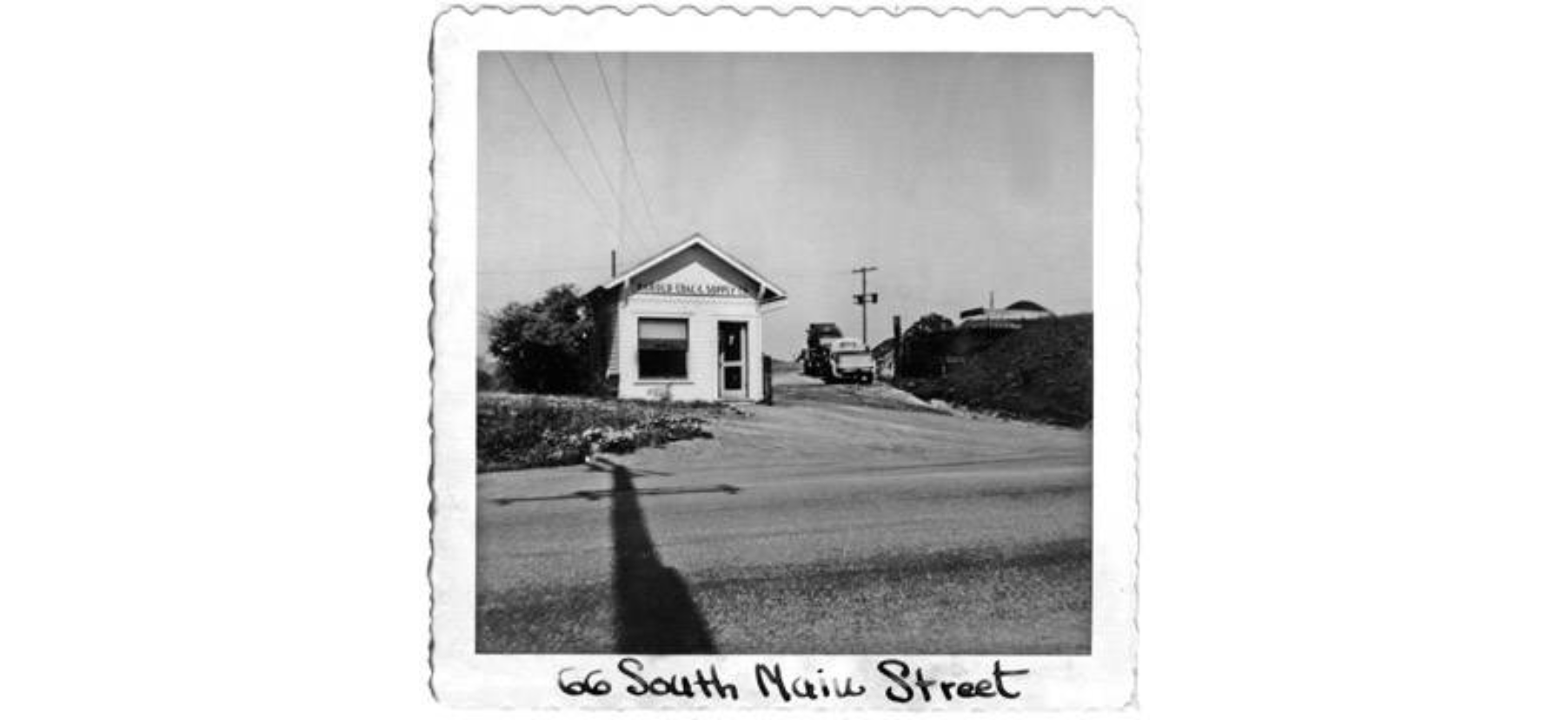 | This building no longer exists. It likely was erected in the 1930s by the Carr Bros. Coal and Builder's Supply to house its business. Carr Bros., a family-owned company, was founded in 1892 in Bedford, Ohio. | Summit Memory | |
81 South Main Street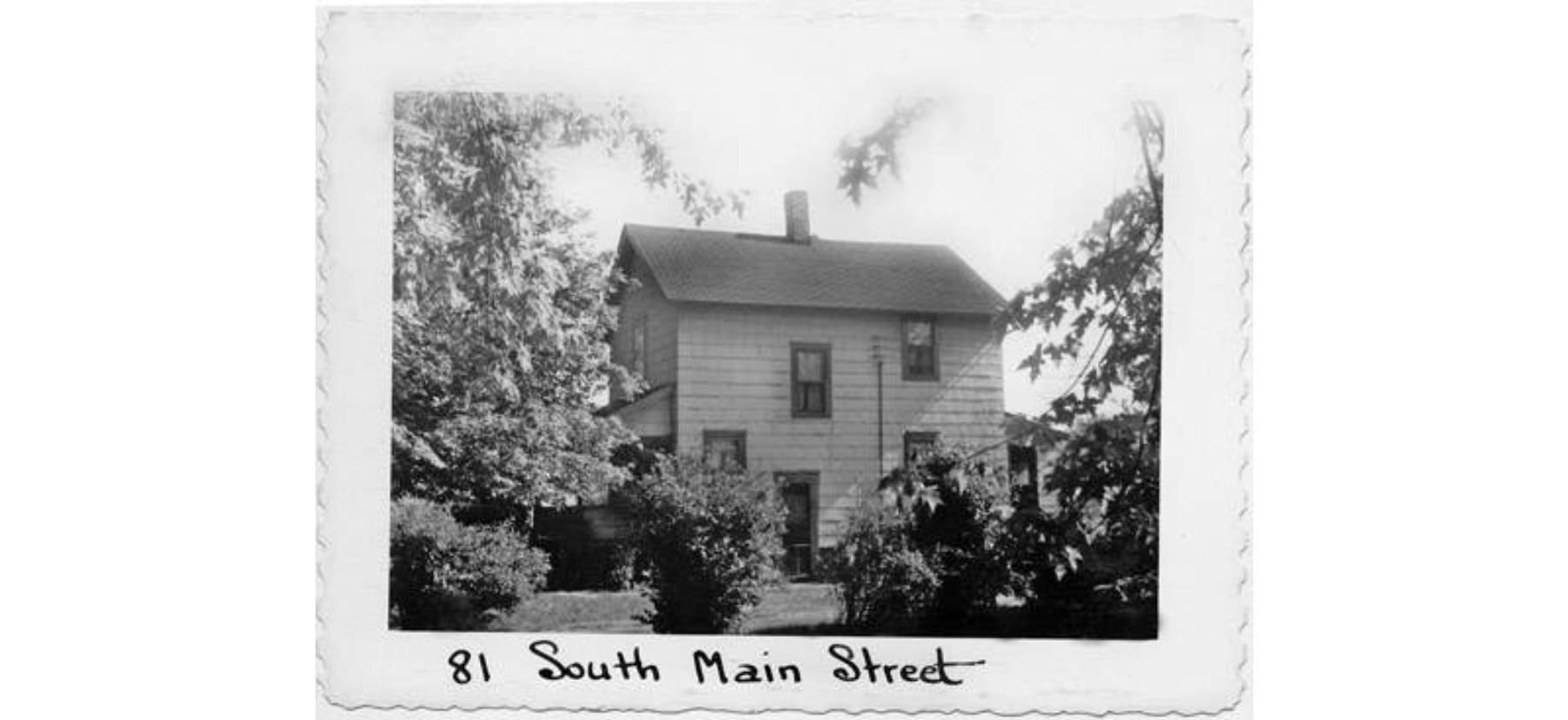 | Wilbur S. Bissell (1862-1931), foreman for the Pennsylvania Railroad, and his wife Trissie (1875-1951) once owned this Main Street home. The home no longer exists, but it was probably constructed before 1930. Wilbur's son, Fay Bissell (1901-1949), lived nearby at 85 S. Main St. | Summit Memory | |
84 South Main Street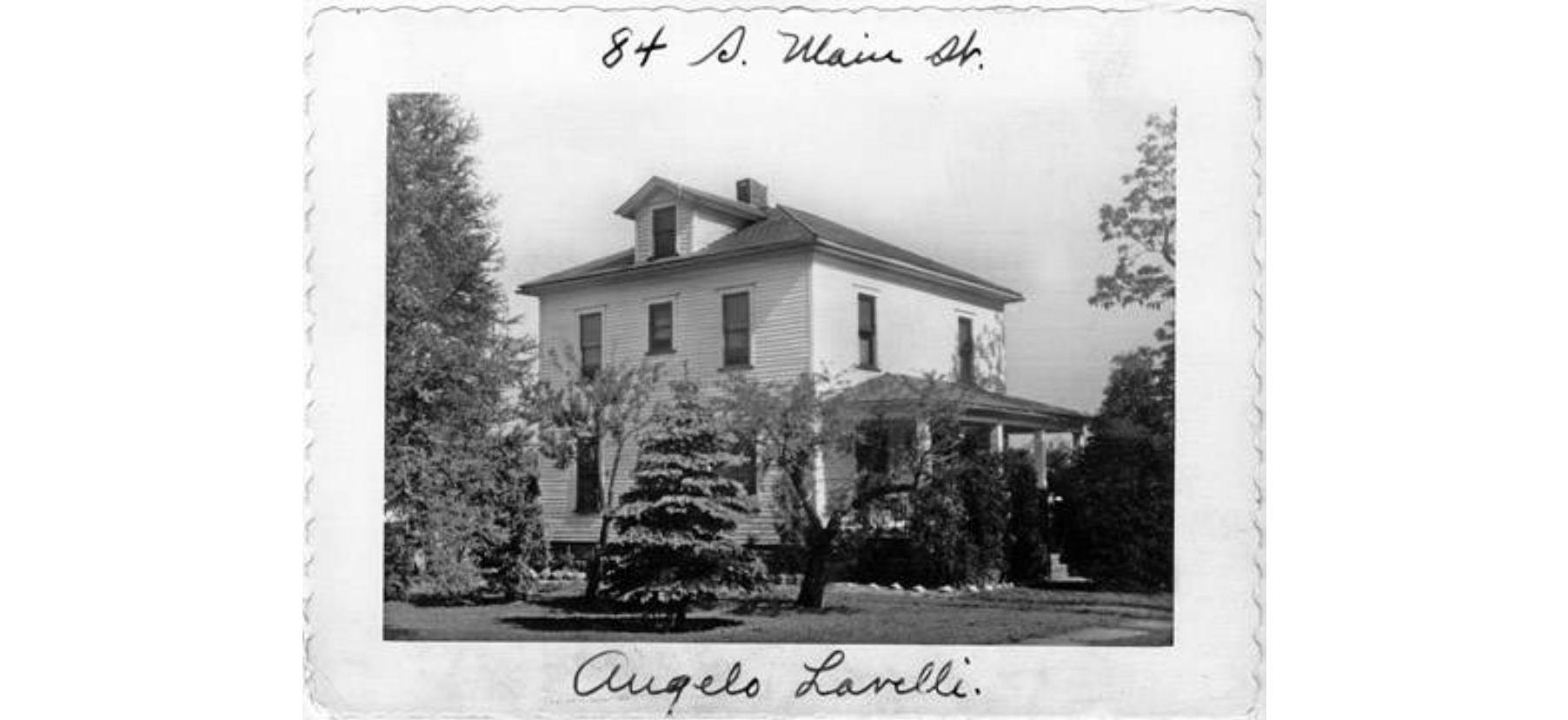 | Local blacksmith Angelo Lavelli (1885-1982) resided in this 1920s South Main Street home. Lavelli was born in Italy and moved to Cleveland in 1904 and Hudson in 1908. Lavelli owned and operated Hudson Ornamental Iron Works from 1919 to 1970. Every day at precisely noon Angelo Lavelli's wife Emilia (1895-1966) would walk up the street to deliver Angelo his lunch at work. She was said to be so set in this regular habit that you could set your clock to her. Lavelli's son Dante (1923-2009) was a wide receiver for the Cleveland Browns. Dante was elected into the Pro Football Hall of Fame in 1975. | Summit Memory | |
85 South Main Street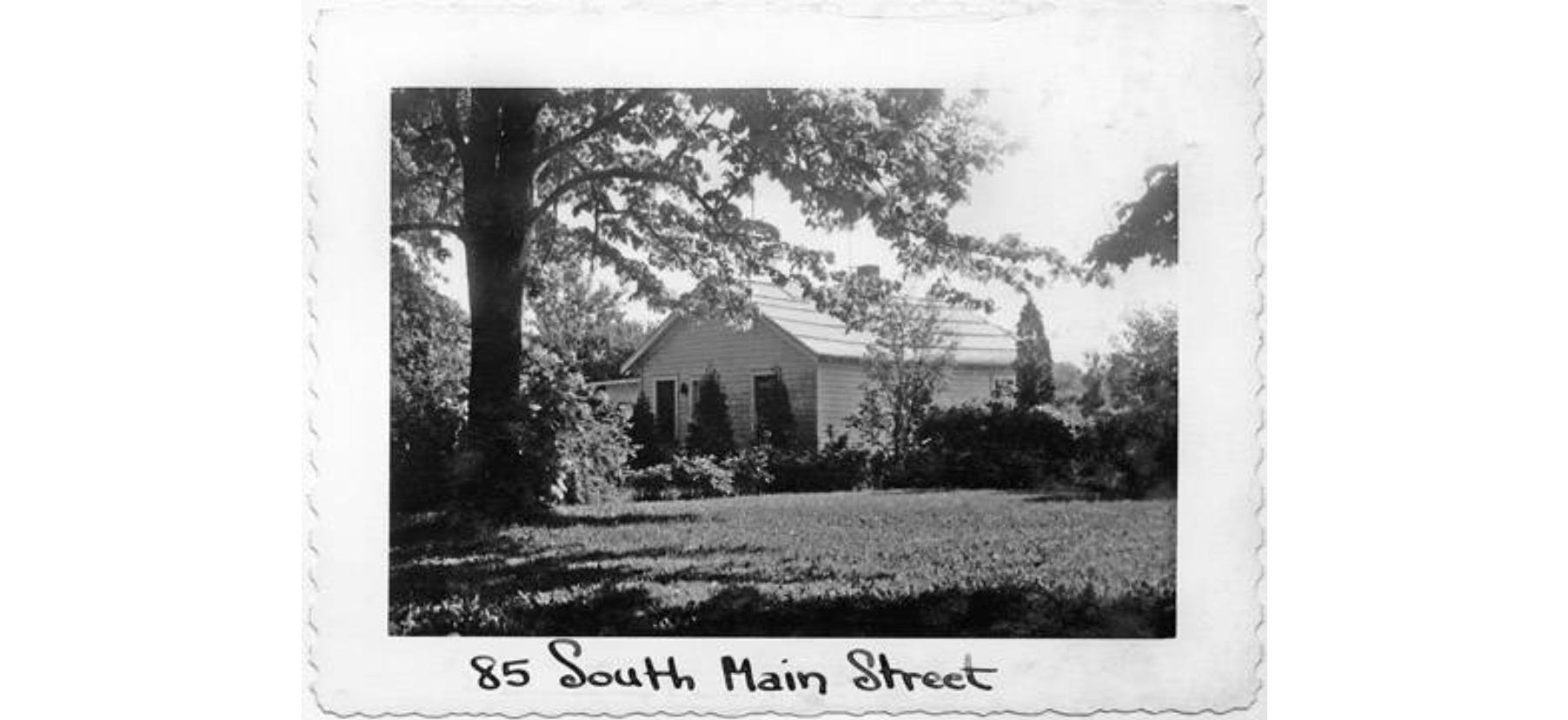 | Fay E. Bissell (1901-1949), brakeman for the Newburg and South Shore Railway Co. of Cleveland, once lived in this home, which no longer exists. Fay's father, Wilbur Bissell (1862-1931), lived nearby at 81 S. Main St. | Summit Memory | |
92 South Main Street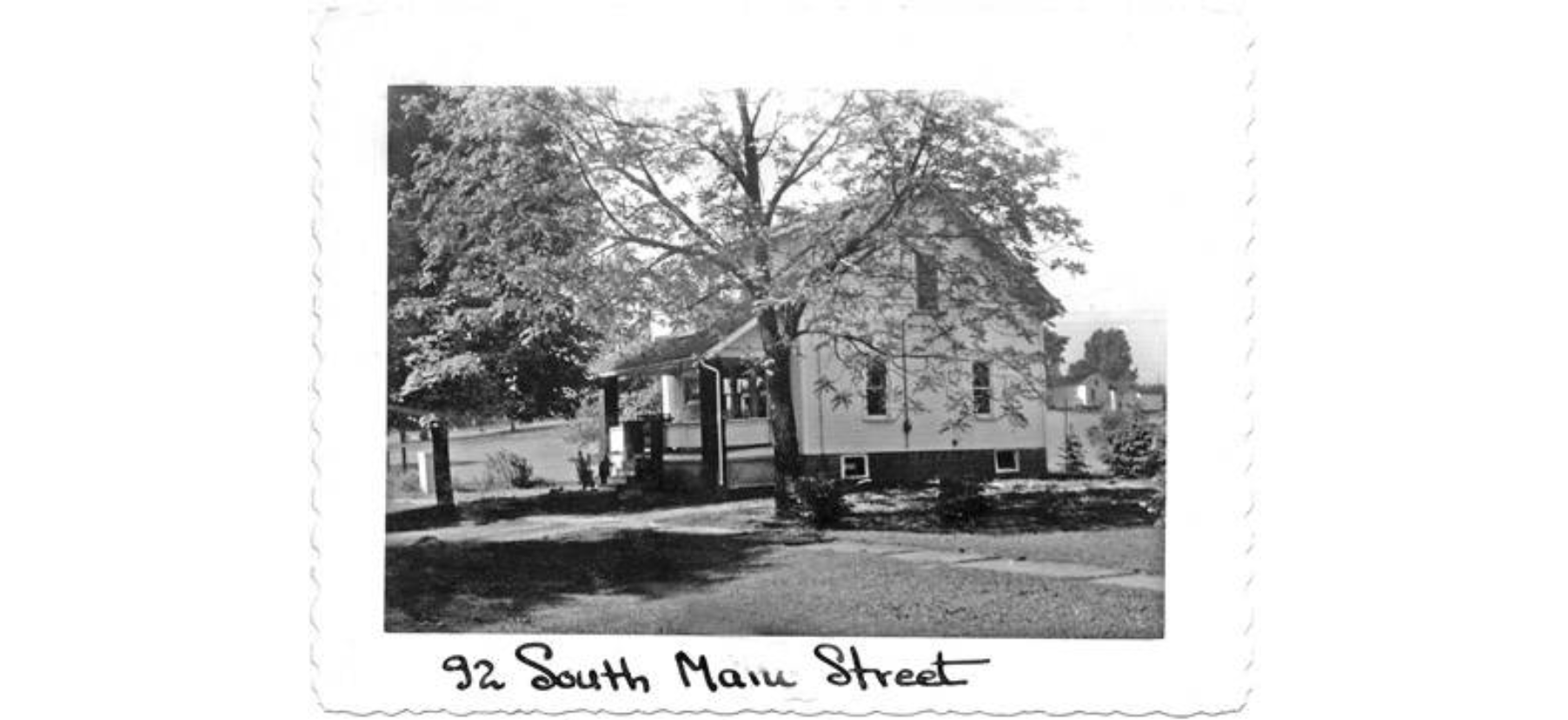 | Hudson's police chief, A.J. "Jeff" Galbos (1909-1961), once owned this circa-1925 home. | Summit Memory | |
95 South Main Street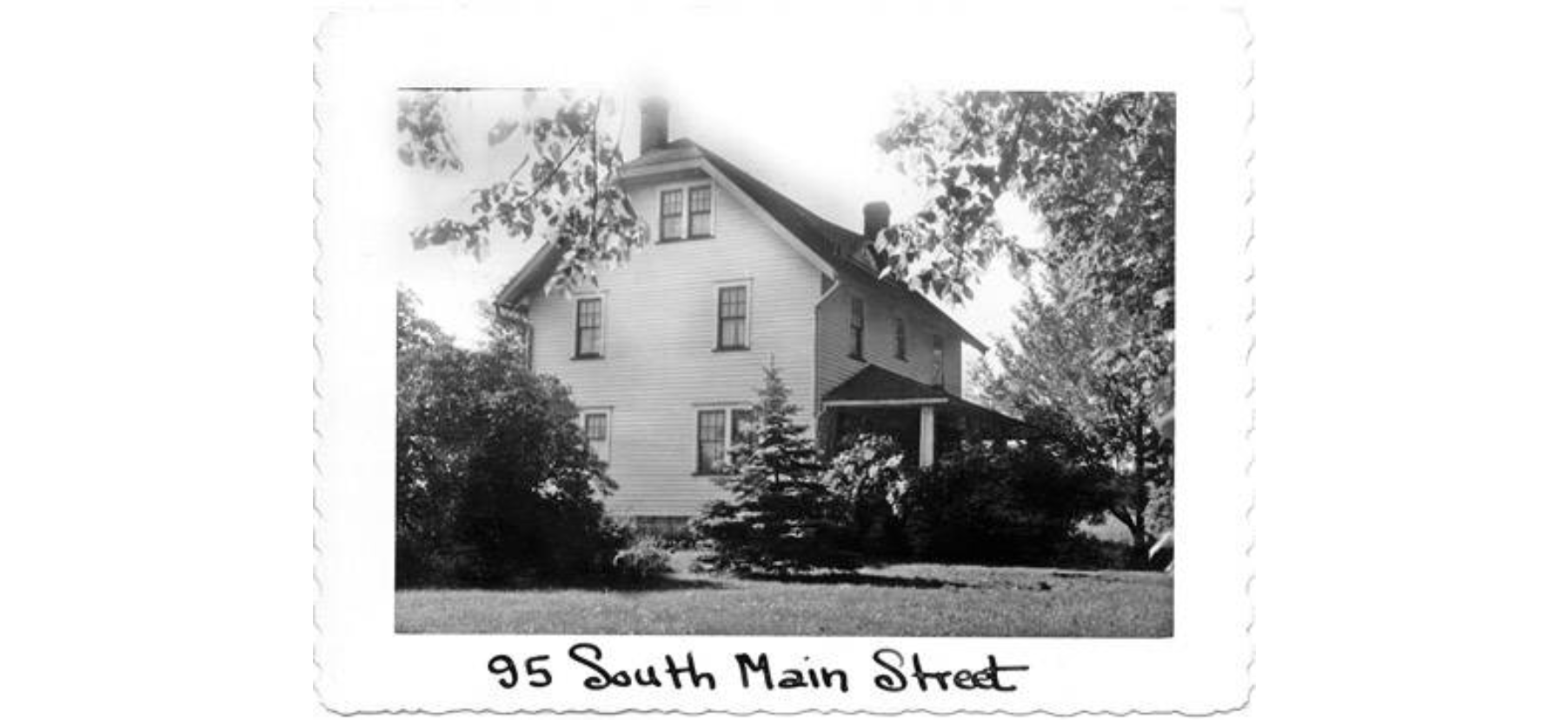 | Franklin H. Jones (1881-1961), bookkeeper for the J.L. Horning Co., once lived in this home. Horning, a building supply company, would become Horning Building Supply and, later, Collinwood-Horning. It was a leader in the industry, with more than 100 years in the business. The company closed its doors for the final time in 2010. The home no longer exists. | Summit Memory | |
132 South Main Street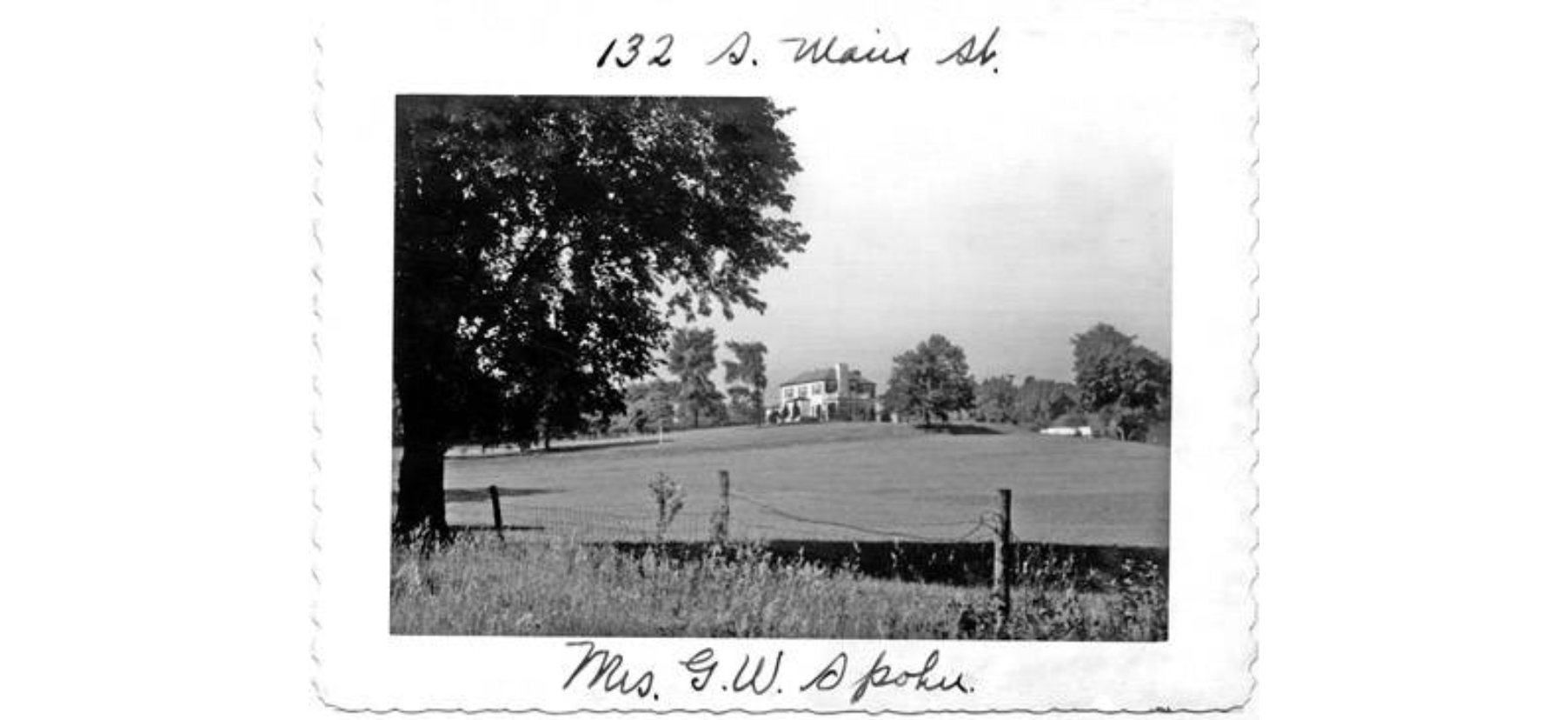 | George W. Spohn (1883-1950), founder and president of the nationally known firm Spohn Heating and Ventilation Co., built and lived in this circa-1941 home, once called "Hi-Lo Acres." The property was the site of the Knights of Pythias hall in 1929. | Summit Memory | |
| 137 South Main Street John L. Chapman House 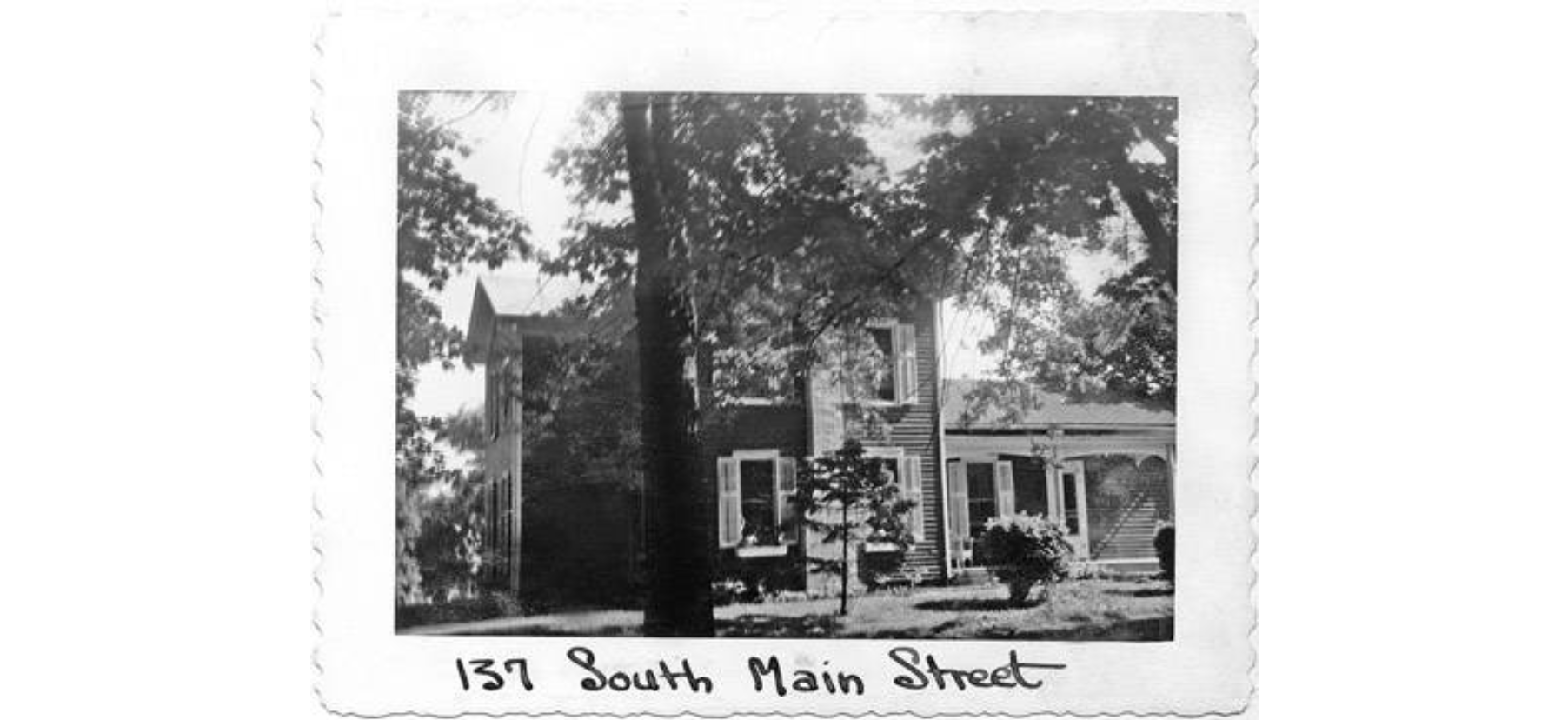 | John L. Chapman (1833-1908) built this home in 1881. Long remembered as hot-tempered, Chapman was the son of John L. Chapman (1788 or 92-1866), a veteran and prisoner of war from the War of 1812 who was captured in the Battle of Lake Erie. After being freed, he settled in Hudson. Several court cases involve the younger John Chapman: one for stealing chickens, another for diverting a waterway, and another for slander. | Hudson Heritage Association Summit Memory | |
142 South Main Street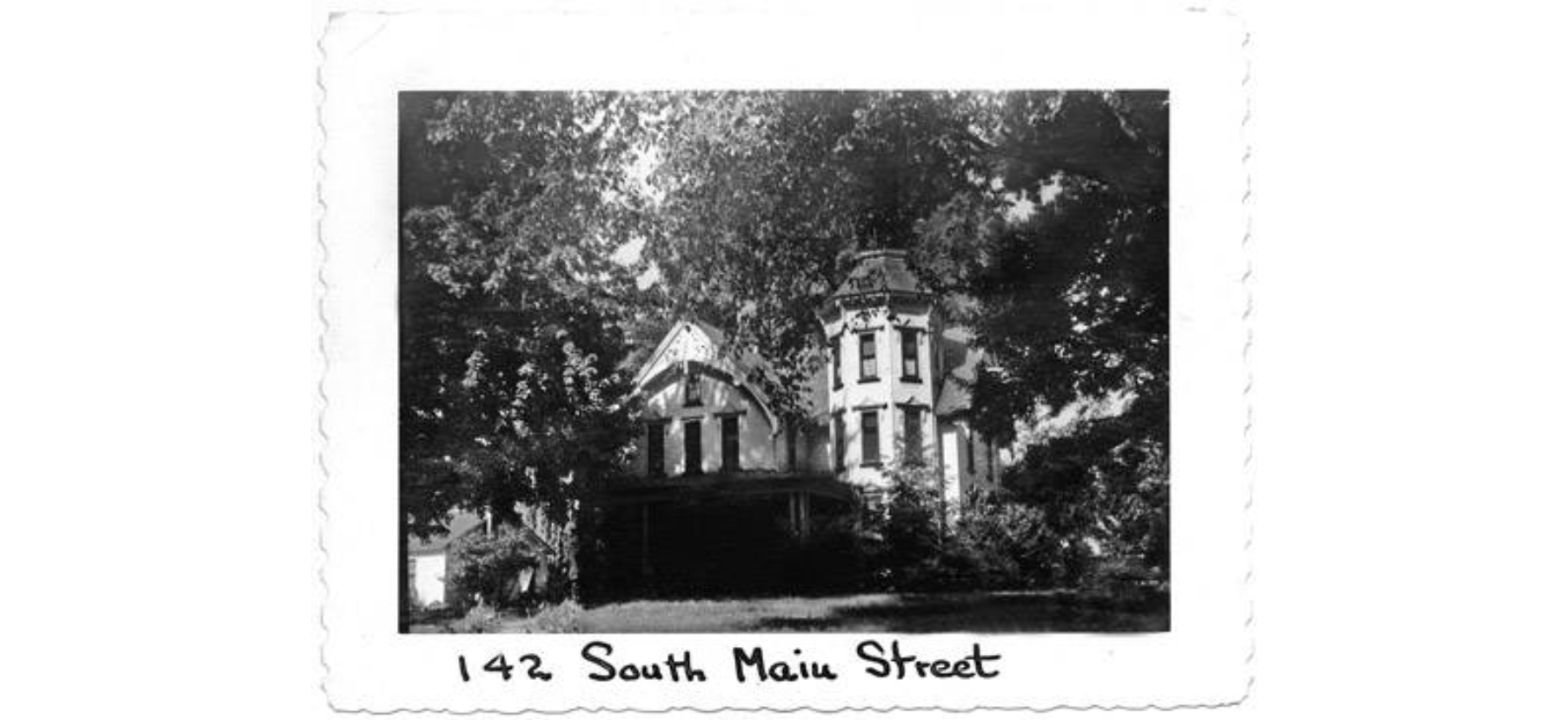 | This Queen Anne-style home dates to circa 1882. Attorney Charles McCuskey (1880-1938), who practiced law in Akron and Cuyahoga Falls, once resided here. McCuskey was a member of the Apollo Quartette in Cuyahoga Falls and a trustee of the Hudson Library & Historical Society. | Summit Memory | |
146 South Main Street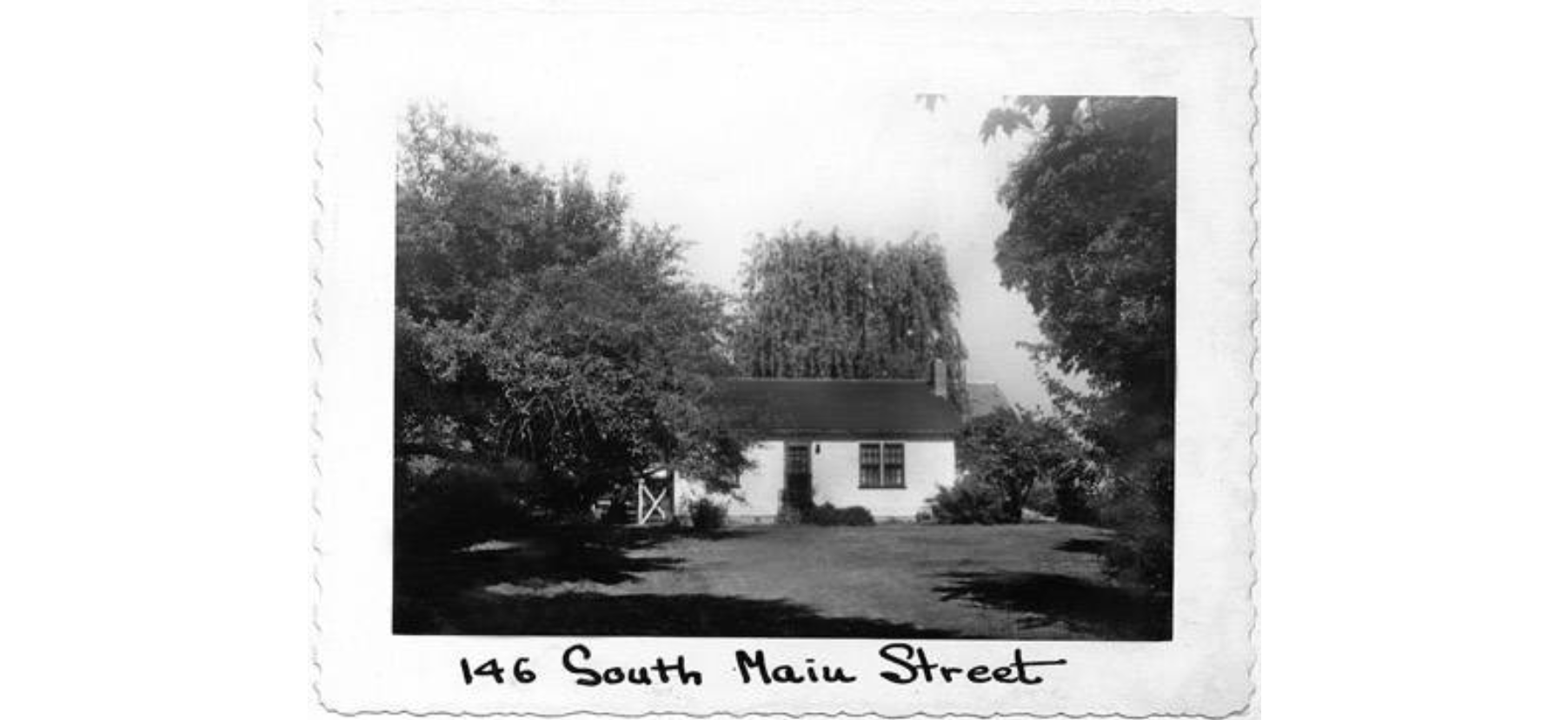 | Summit Memory | ||
| 151 South Main Street Justin Kilbourne-Herman Oviatt House 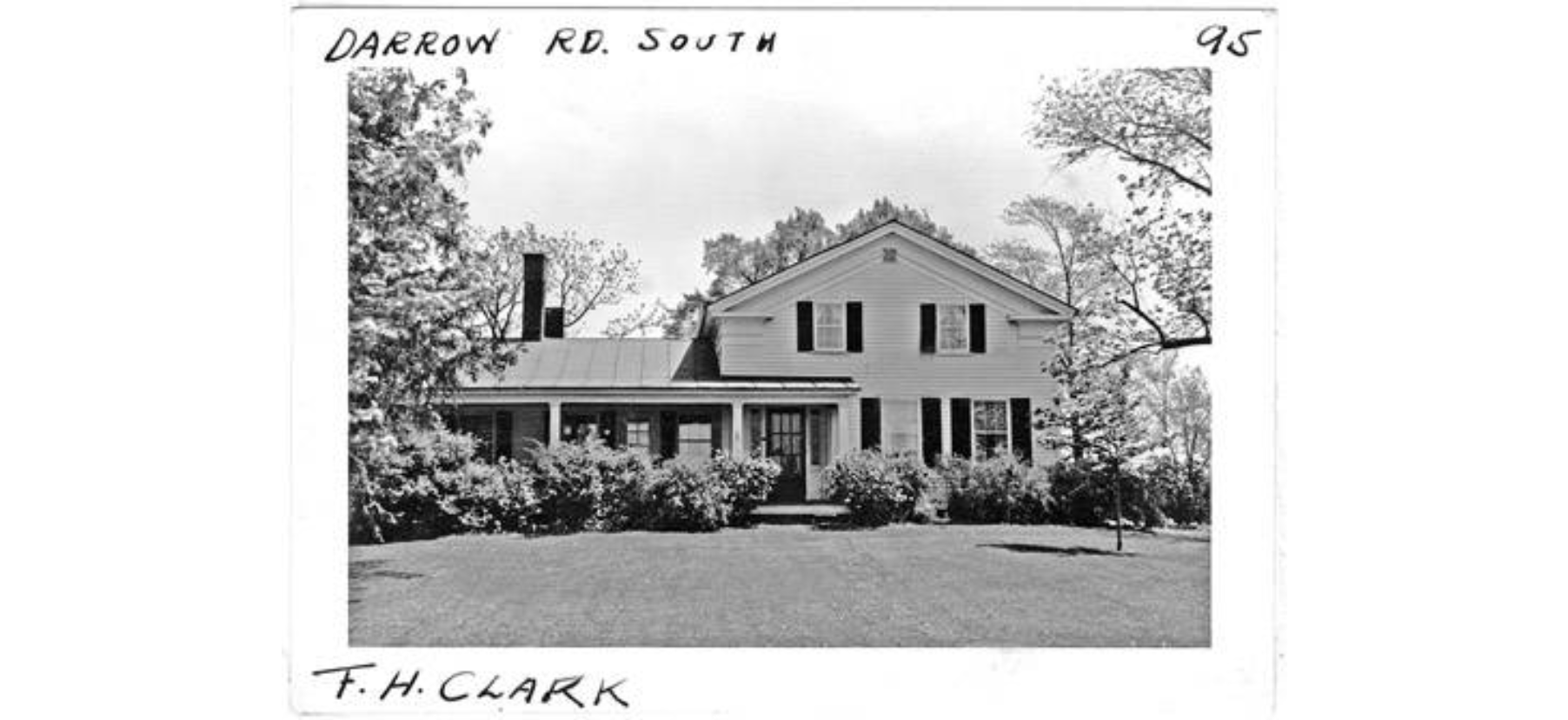 | This Greek Revival home was built in 1811 by George Kilbourne (1769-1866), a tanner and early Hudson pioneer. Kilbourne's son Justin (1812-1880) lived in the home, procuring ownership in 1834. Justin designed and constructed the interior staircase from the root of a large walnut tree that he found on the property. Ethel Clark (1902-1991), owner of Clark's Corner Cupboard, an antique store on Main Street, also once resided here. The home was originally located at 5735 Darrow Rd. but was moved in the 1950s, likely to make room for the construction of the Terex plant. | Hudson Heritage Association Summit Memory | |
154 South Main Street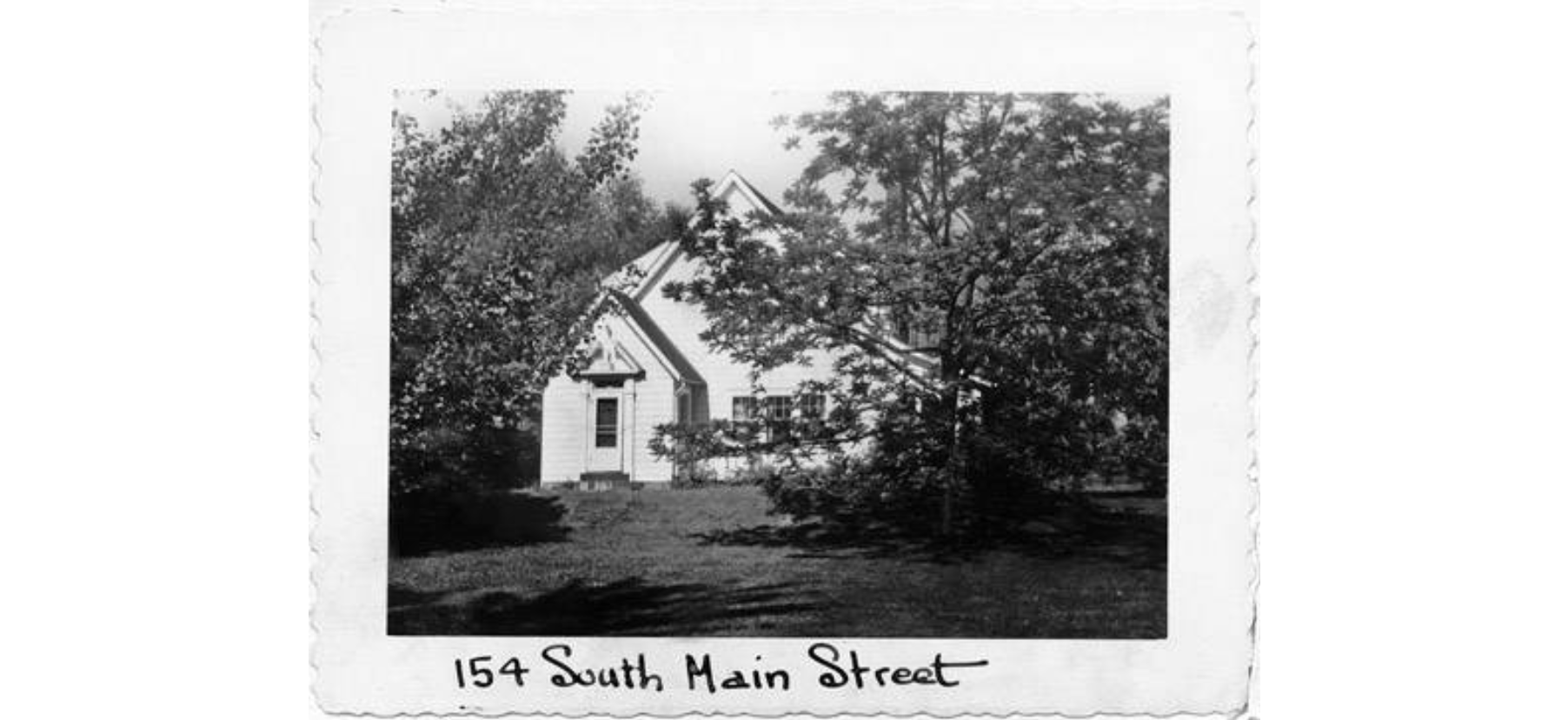 | Myrtle Spreng (ca.1882-1956) once lived in this home. Her husband, Edward W. Spreng (1879-1924), owned the E.W. Spreng Grain and Milling Co., the milling business that operated out of Turner's Mill. Edward also was the director of the National Bank of Hudson. | Summit Memory | |
175 South Main Street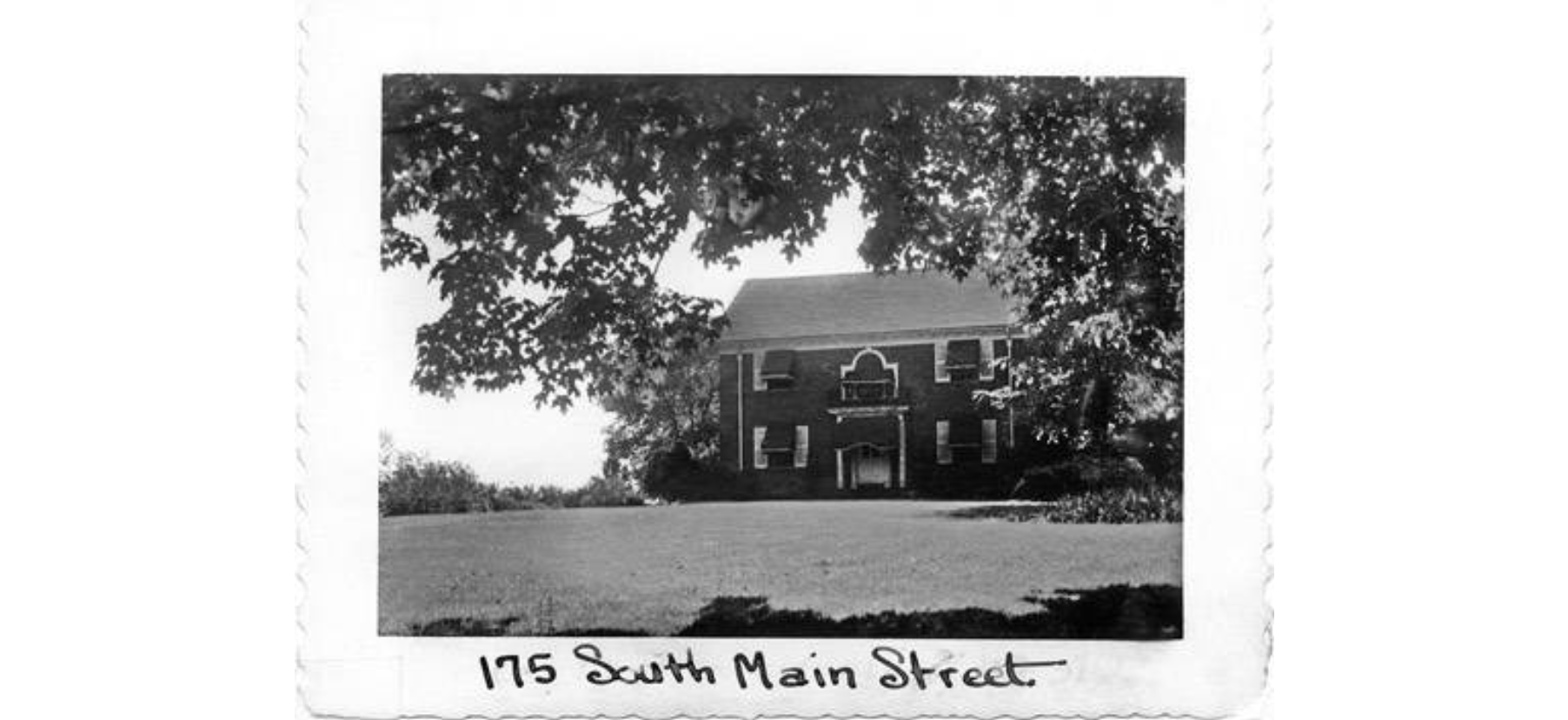 | This circa-1928 home was once home to Frank E. Lange (1897-1971), chairman of the board of Falls Stamping and Welding Co. in Cuyahoga Falls. His son Ernest (1925-1989), who also once owned this home, was a co-owner and president of the company. | Summit Memory | |
178 South Main Street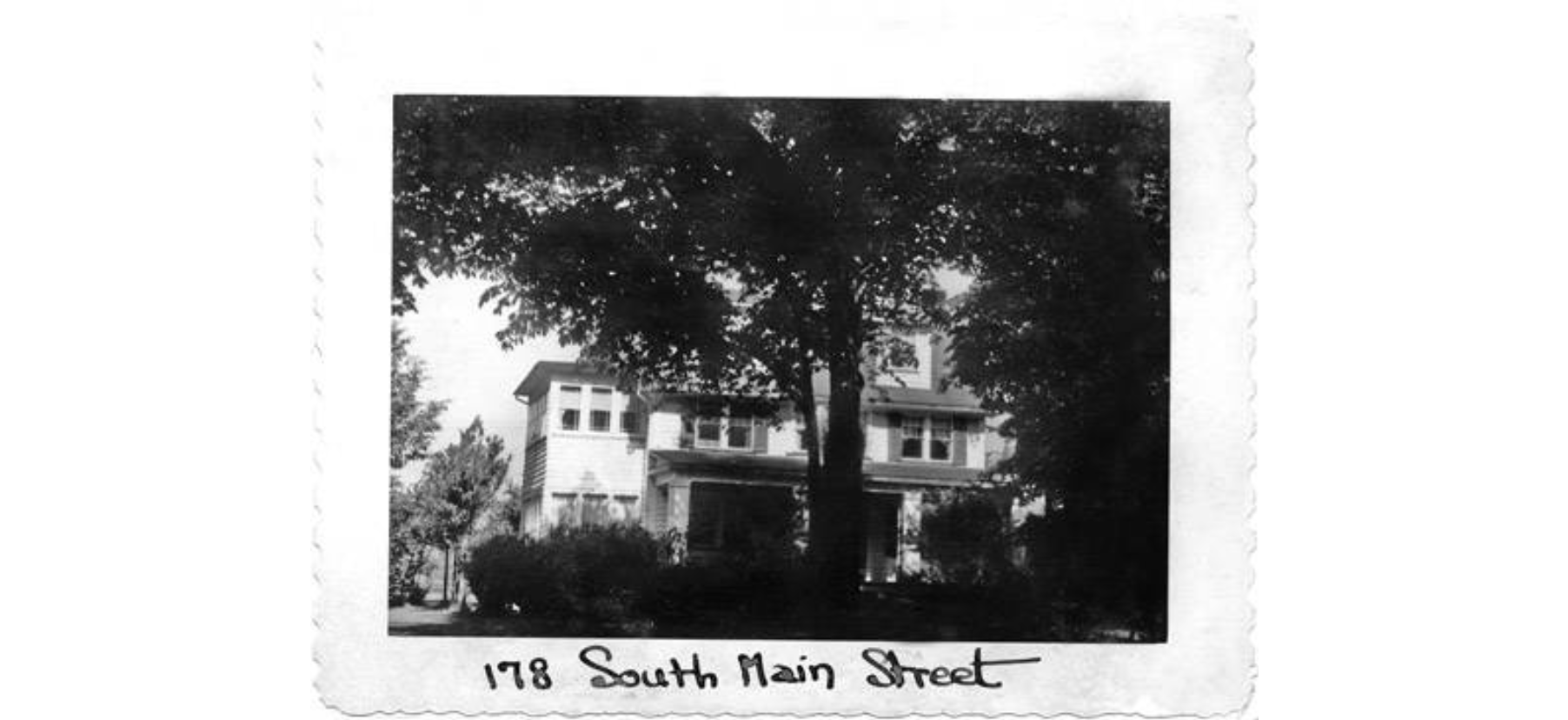 | Very little is known about this turn-of-the-century home. It was once home to Harry N. Wetzel (1879-1960), general manager of the docks for Pickands Mather & Co., a supplier of materials to the steel industry in Cleveland. | Summit Memory | |
196 South Main Street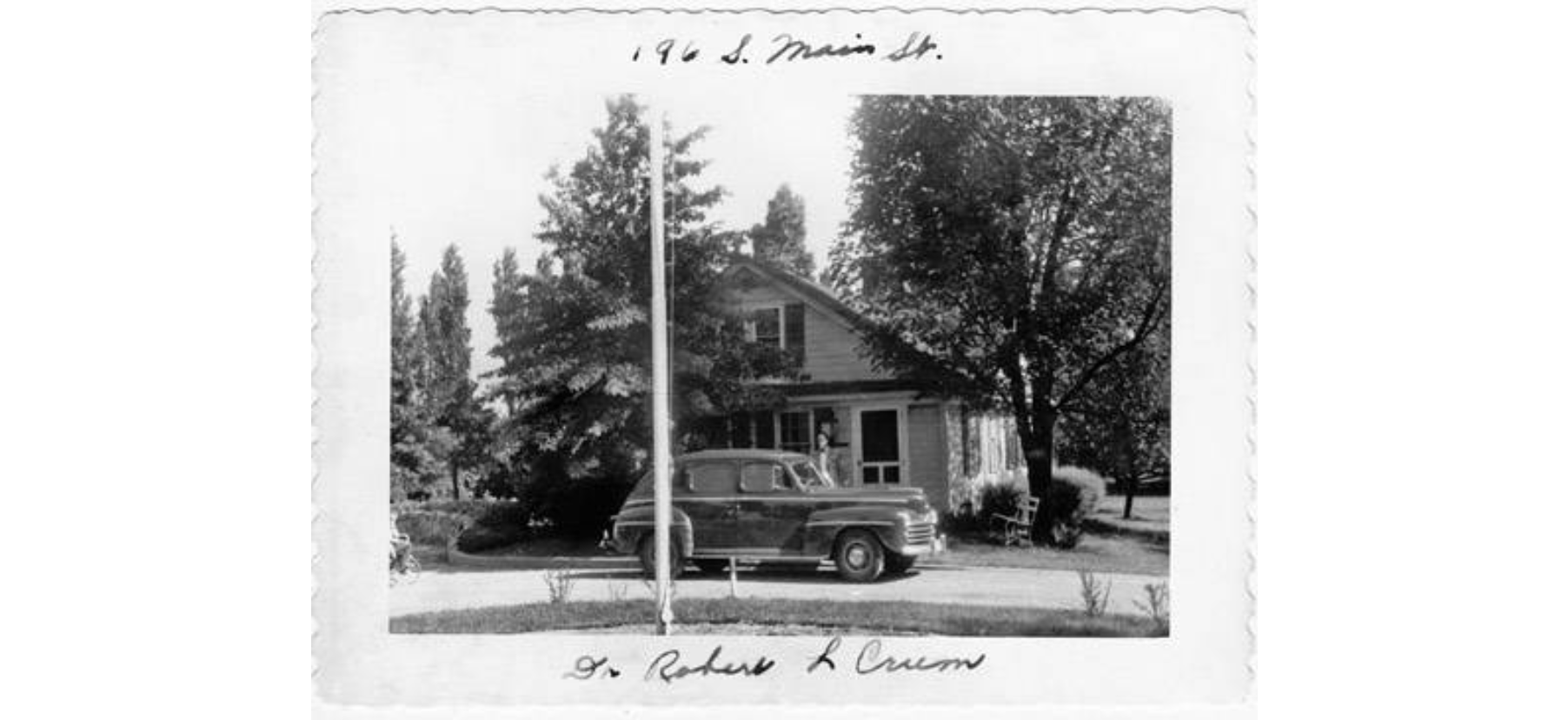 | Robert L. Crum (1912-1981), a local mechanotherapist, lived in this home with his wife Anne (1913-1990). | Summit Memory | |
| 205 South Main Street Towne-Bishop House 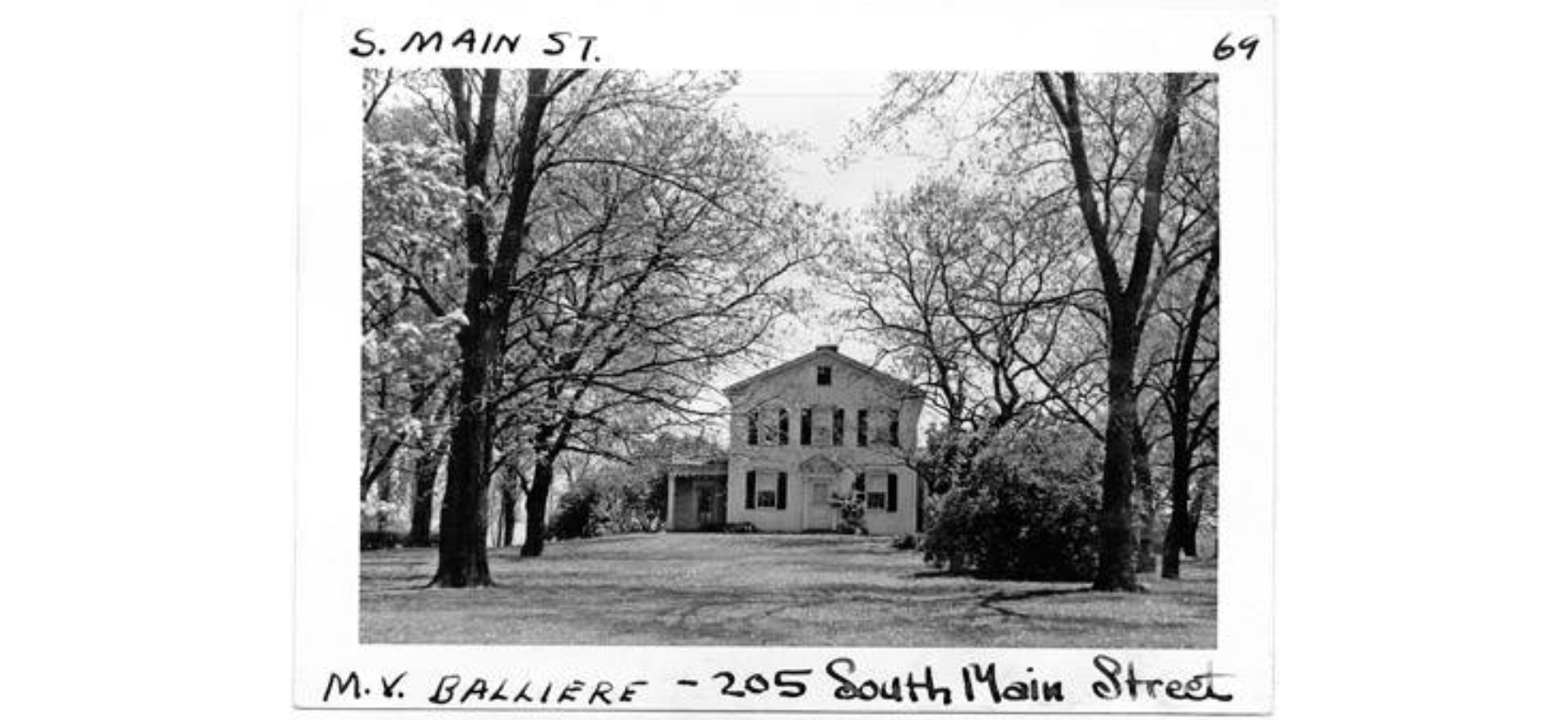 | This 1841 home was often referred to as the parsonage because it was home to two ministers, Rev. Josiah Towne (1787-1860) and Rev. John C. Hart (1804-1881). It was the custom to have "donation parties" here, where the invited would bring gifts and money to support the clergy's family. The Hart family lost son John (1840-1862) in the battle for Louisville, Kentucky, during the Civil War. Hand-hewn beams support the structure that once hid fleeing fugitive slaves. | Hudson Heritage Association Summit Memory | |
| 6719 Stow Road Jerry Minor Case House | Hudson Heritage Association | ||
| 5 East Streetsboro Street Free Congregational Church | Hudson Heritage Association | ||
17 West Streetsboro Street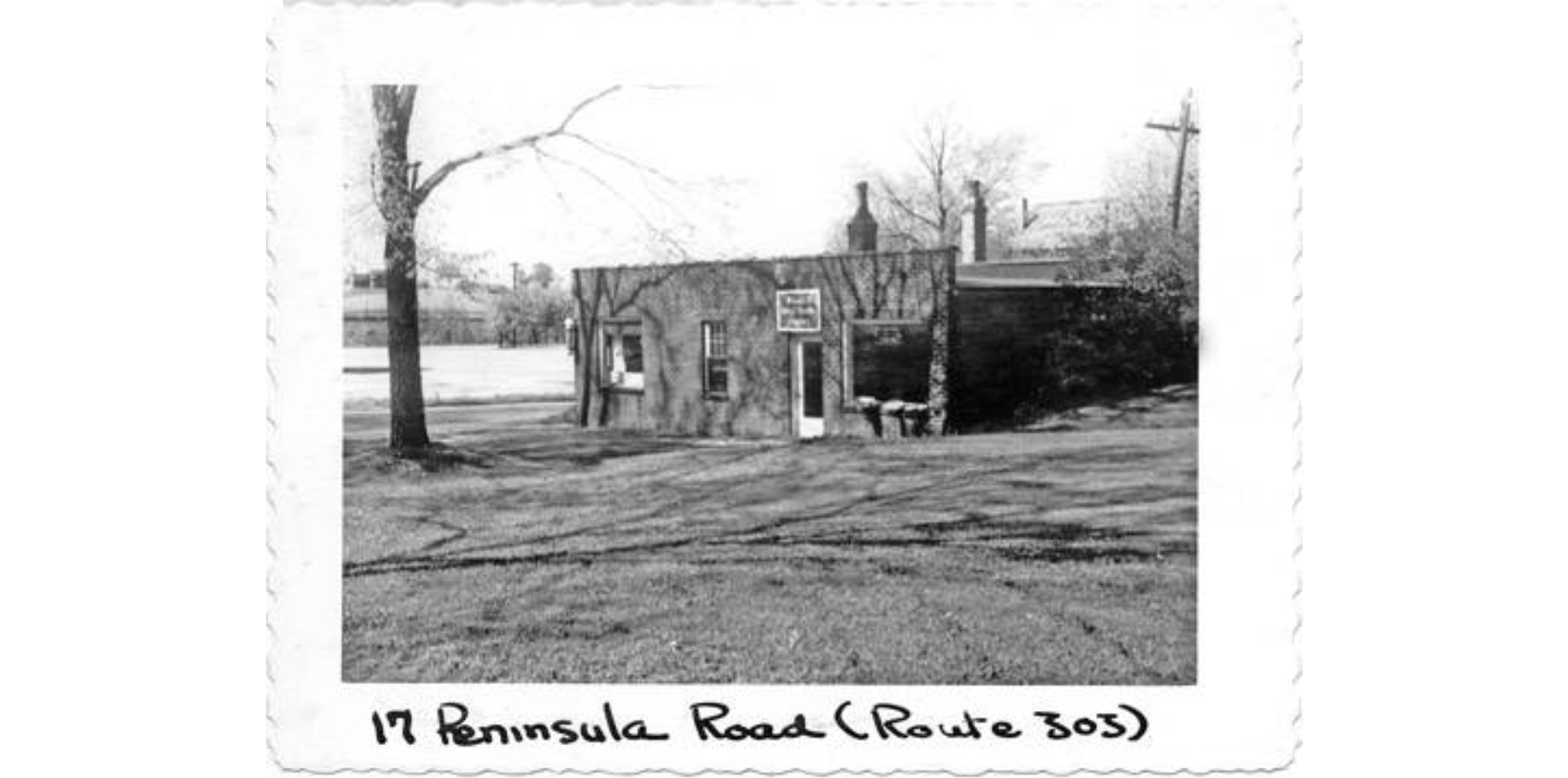 | Freddie's Barber Shop used to be housed in this building. | Summit Memory | |
20 Streetsboro Street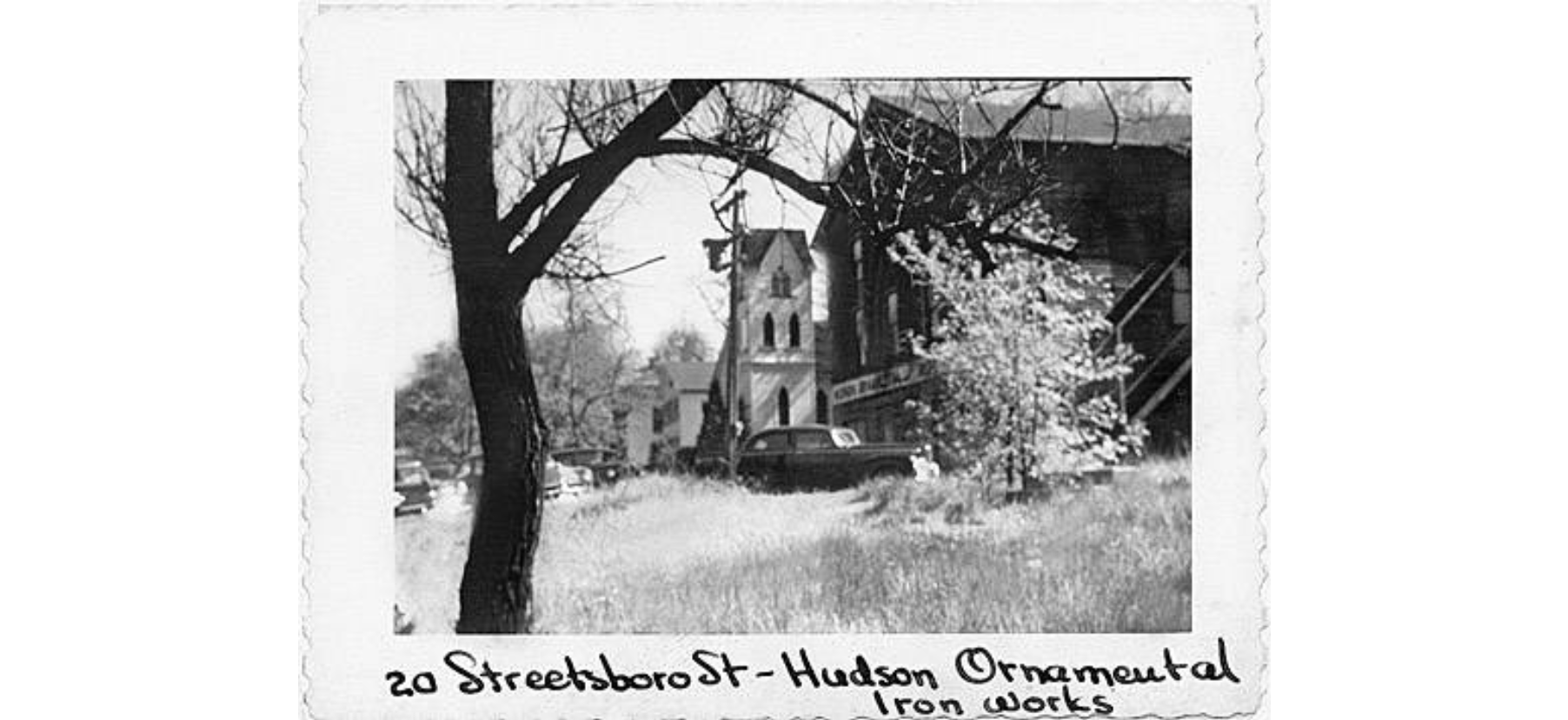 | This building no longer exists. It once housed the Hudson Ornamental Iron Works, a business founded by local blacksmith Angelo Lavelli (1885-1982) and father of National Football Hall of Fam player Dante Lavelli (1923-2009). Here the master craftsman designed and produced a wide range of iron-crafted products, including park benches, murals, candelabras, and fireplace tools, which he deemed "beautility" (beauty and utility). | Summit Memory | |
25 Streetsboro Street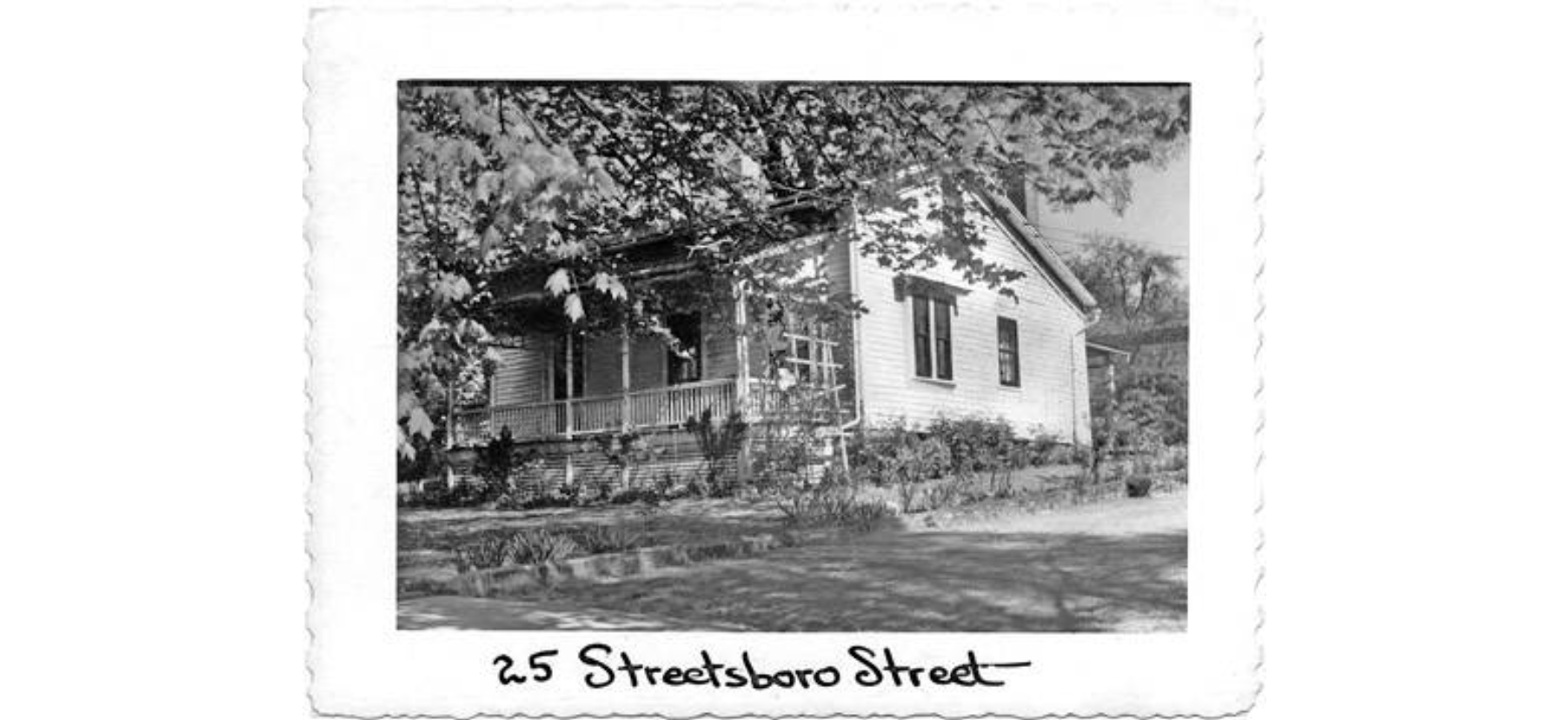 | This home is one of the former wings of the 1836 Greek Revival home at 19 East Main Street. The wings were detached from the Main Street home in the late 1800s as part of an extensive remodel. Jessie O. Billeter (1889-1970), who taught for 43 years in Cuyahoga Falls, Ohio, once lived here. | Summit Memory | |
26 Streetsboro Street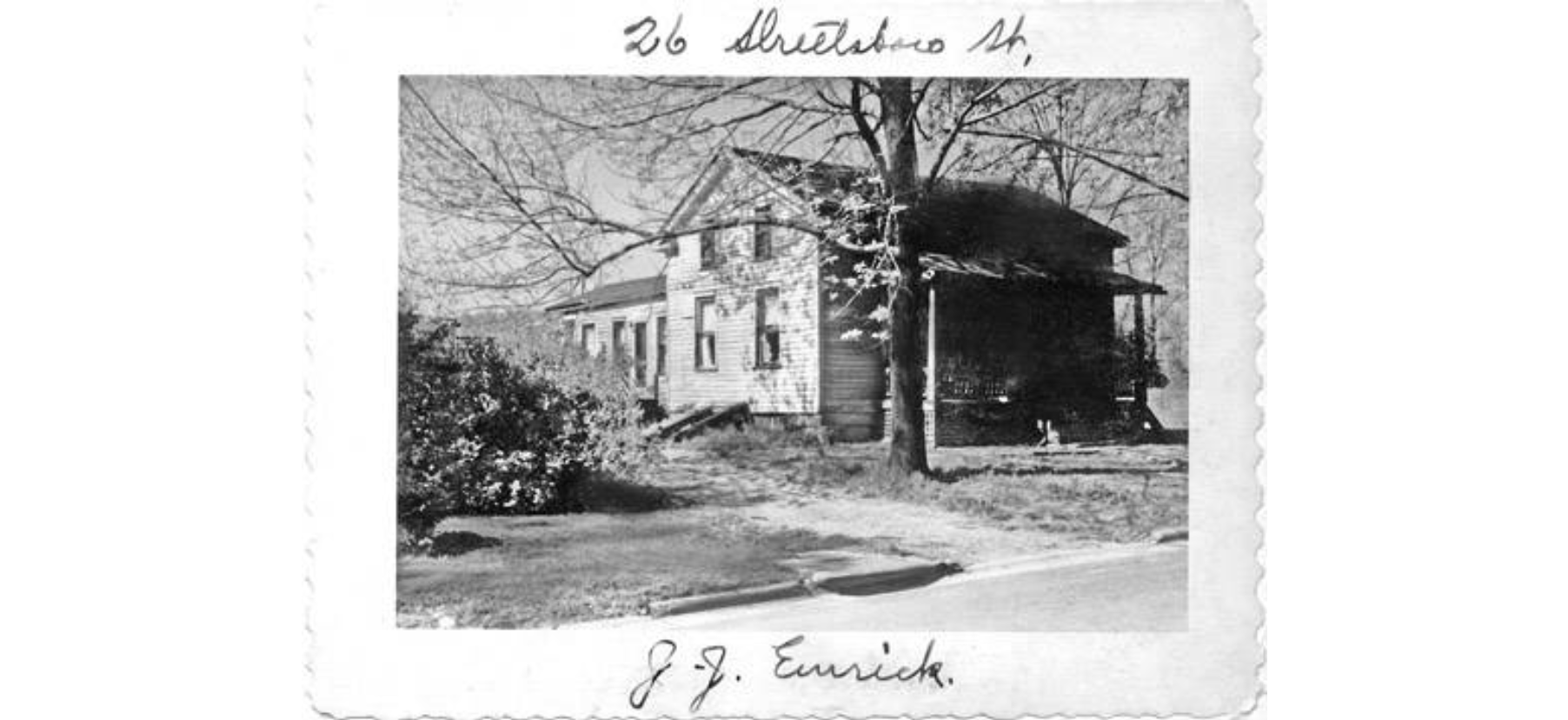 | Built in 1844, this home with Greek Revival details is located east of the old Free Congregational Church. The house was built by one the church's founders, George Kilbourne (1769-1866). Several employees of the Turner Lumber Co. have inhabited this home at one time, including Walter Carey (1879-1939) and Joseph Emrick (1908-1999). It is speculated that this home may be a detached wing of the Town-Neibel home at 19 E. Main St. The porch and back half of the home no longer exist. The home is now used as a commercial building. | Summit Memory | |
29 Streetsboro Street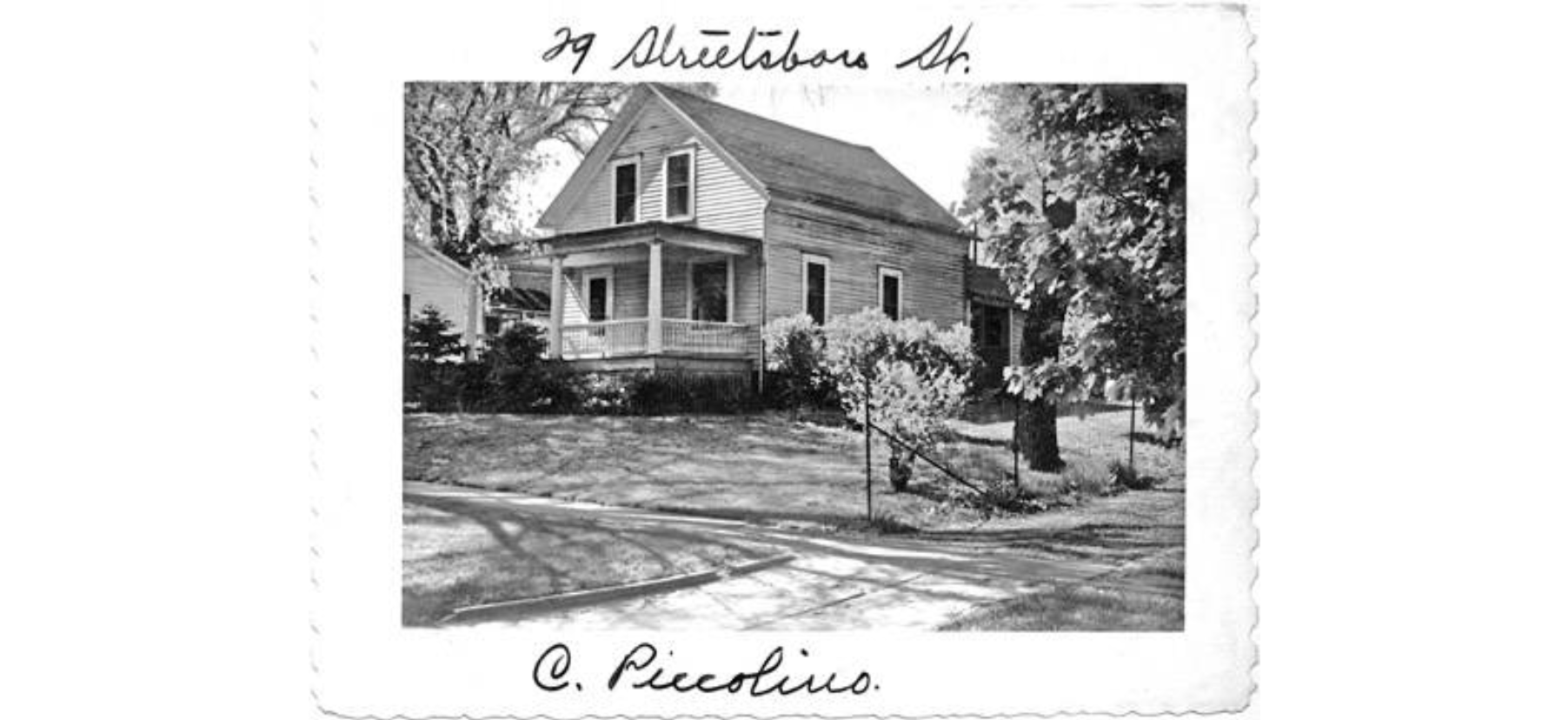 | This home was constructed in the 1870s and was once home to railroad engineer Robert George Carson (1851-1934). In his retirement, Carson was known to have spent long hours on the front porch waving to those who passed by. Italian immigrants Clellia (1893-1972) and Concezio (1866-1966) Piccolino later inhabited the home. | Summit Memory | |
32 West Streetsboro Street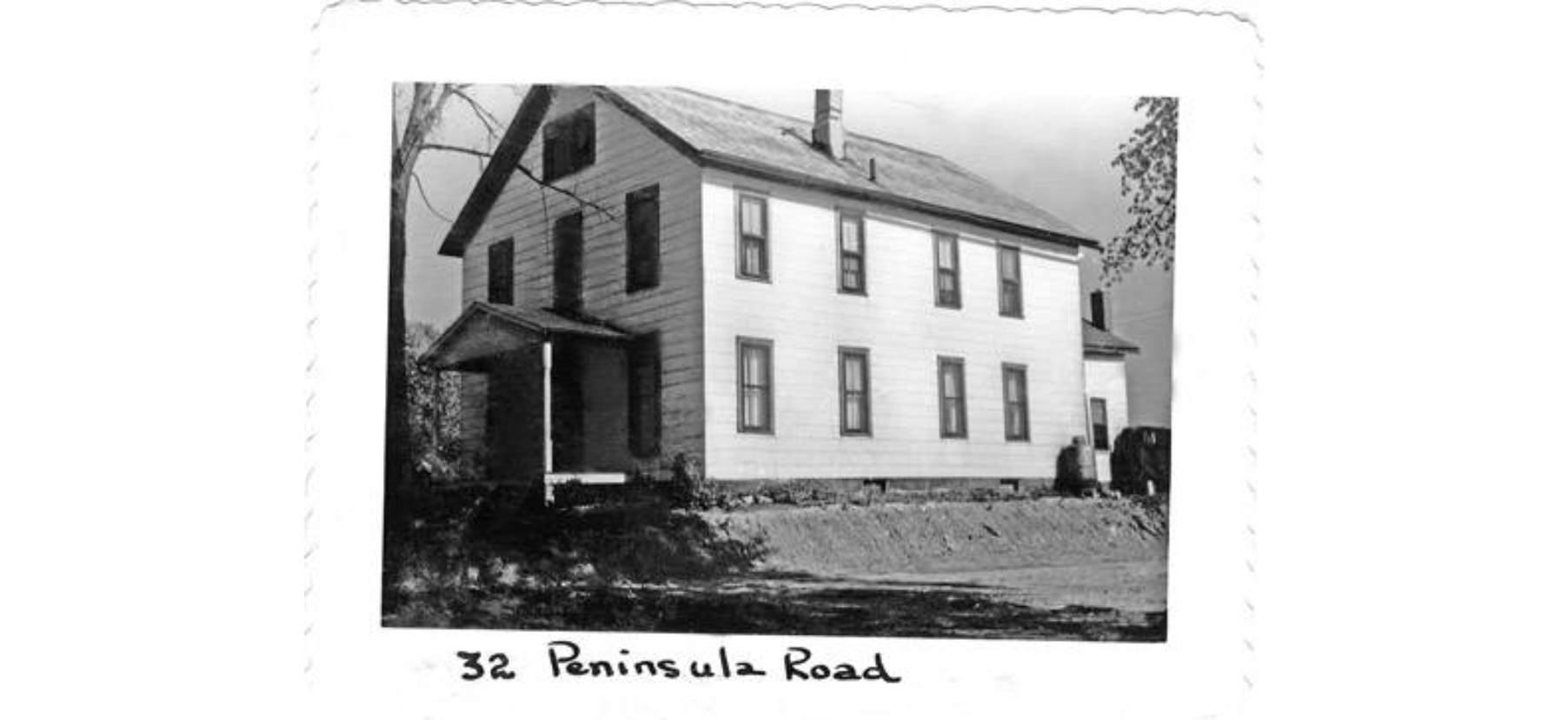 | Situated next to the Cleveland & Pittsburgh Railroad, this building was a frequent stop-over for many travelers. This building, which used to adjoin the gatehouse of the railroad and served as a boarding house. In February 1848, Milton A. Lusk's (1803-1884) family home on Prospect Rd. burned. He and his family resided here while a new home was constructed. Lusk was brother-in-law to abolitionist John Brown (1880-1859). His son Charles M. Lusk (1832-1914), and adopted son and bugler Lester Secoy, (1836-1899) resided here with his family and served on the Union side during the Civil War. The Delta Hotel was torn down in 1965 to make way for another commercial venture. | Summit Memory | |
33 Streetsboro Street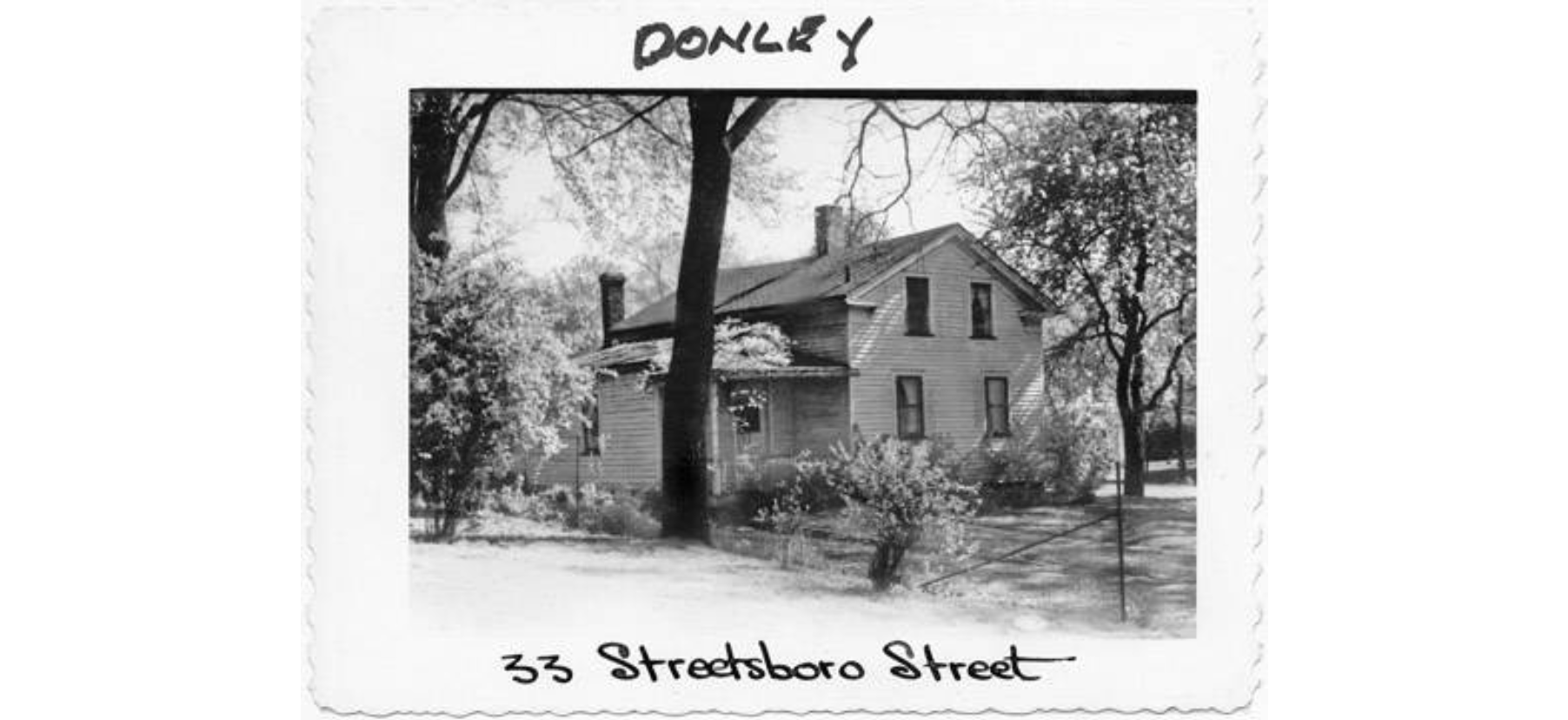 | Little is known about this circa-1853 home. The Donley family once lived here. Howard Donley (1901-1963) was a sales manager for the Donley Bros. in Cleveland, a family firm that was established in 1895 and still exists. In fact, the general contracting firm was one of the many responsible for the new Hudson Library & Historical Society, built in 2005. | Summit Memory | |
| 36 Streetsboro Street Turner's Mill 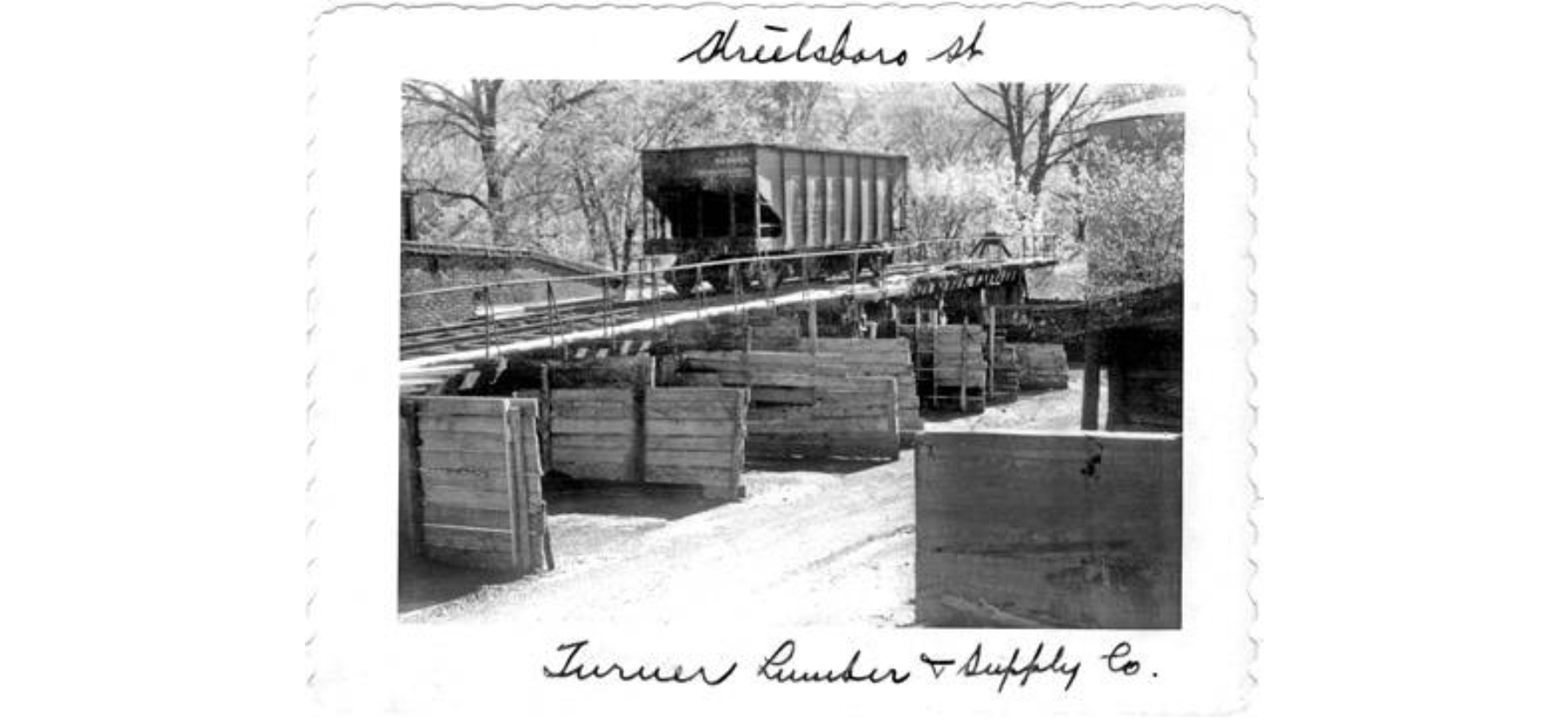 | In 1942 a motor in a gravel conveyor at the Turner Lumber & Supply Co. caught fire, eventually causing the gas tank in the conveyor to explode. Owner Francis Turner (1873-1943), who had been trying to extinguish the initial fire, was caught in the explosion and received severe burns to his body. | Hudson Heritage Association Summit Memory | |
41 Streetsboro Street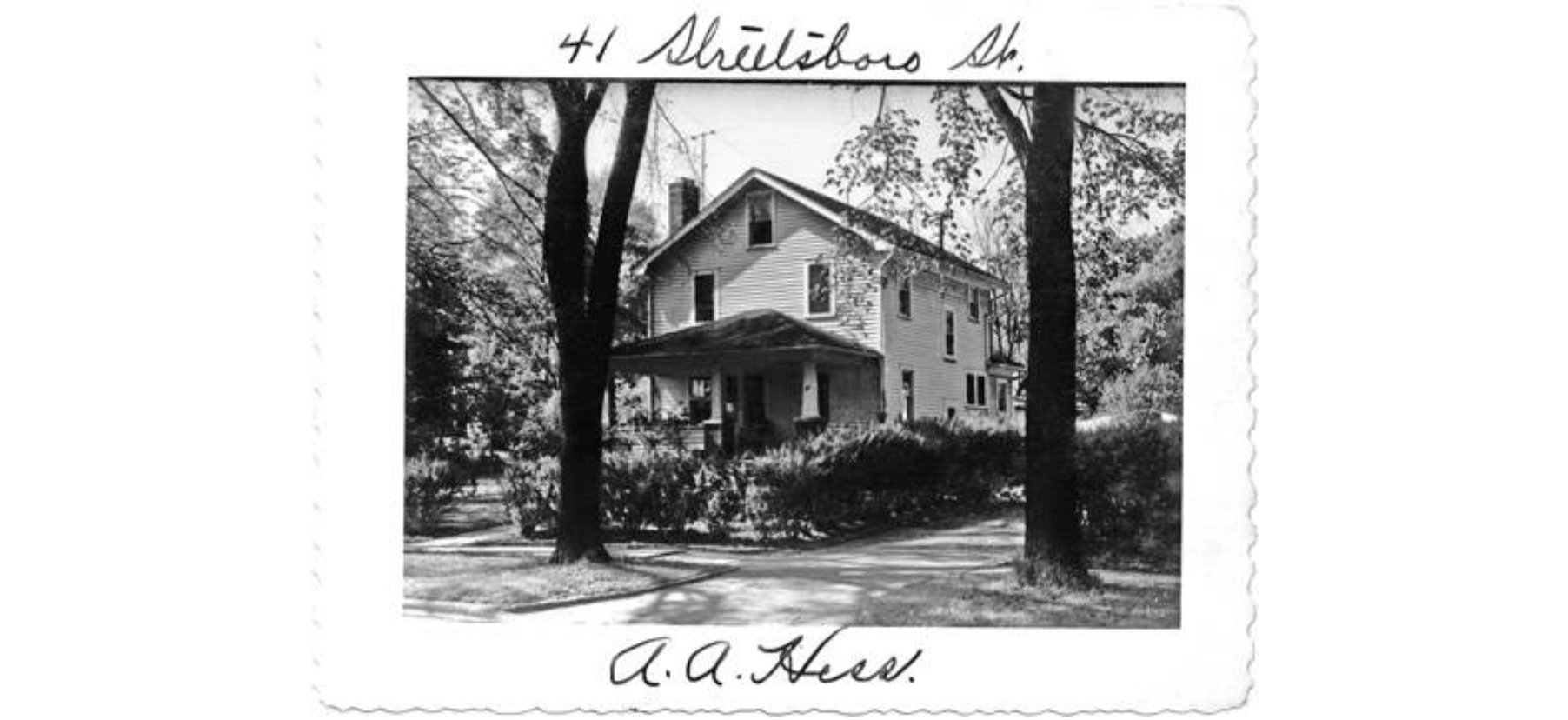 | Alfred A. Hess (1895-1970), the assistant treasurer of the American Society for Materials, once lived in this circa-1929 home. | Summit Memory | |
45 Streetsboro Street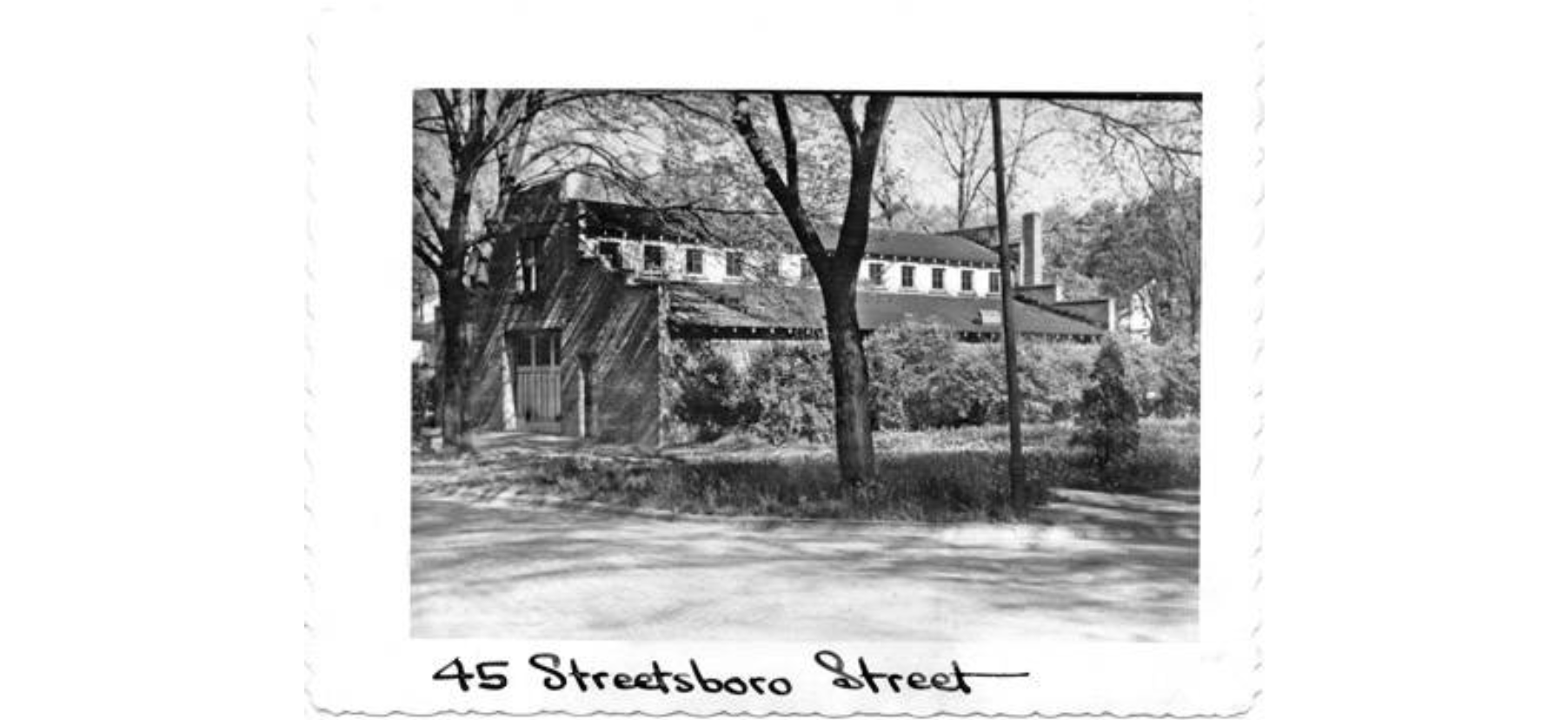 | On this site once stood the home of Lincolnshire, England, immigrants David Santom (1803-1880) and his wife Susan (1804-1884). Santom operated the flour mill of Messer, Humphrey and Tallmadge. After the mill was destroyed by fire, he owned and operated a provisions and feed store on Main Street. Santom was universally respected. His daughter, Charlotte Santom Bunnell (1826-1900), married into the Bunnell family. The Bunnells later owned and developed this real estate. In 1924 the Hudson Schools destroyed the house and built a bus garage here for maintenance work on their bus fleet. Later, the land was sold to the Free and Accepted Masons of Hudson. Their temple was given the address of 49 E. Streetsboro St. | Summit Memory | |
46 Streetsboro Street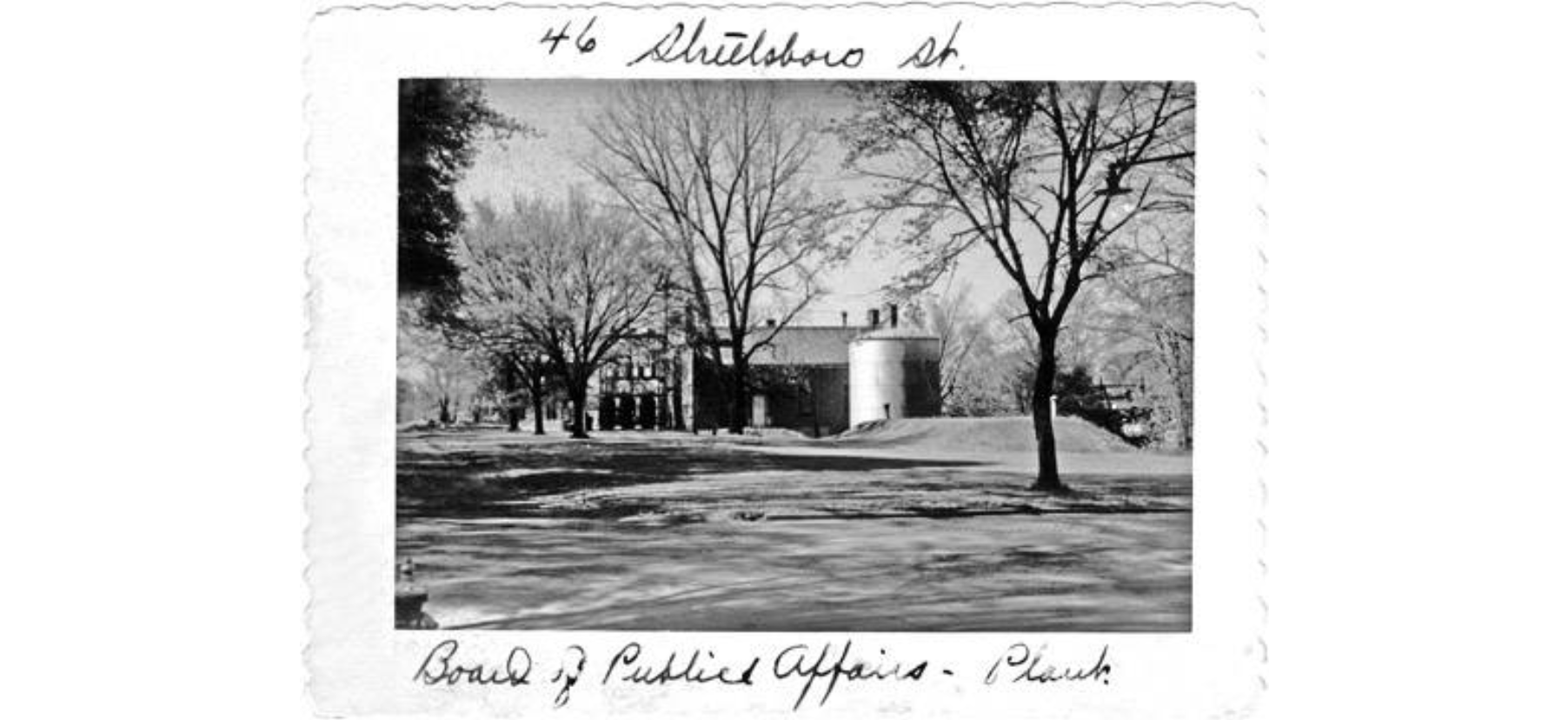 | James Ellsworth (1849-1925) gifted this power plant to the city of Hudson in 1913. The building is now a commercial space. | Summit Memory | |
| 57 East Streetsboro Street Dixon-Marrott House 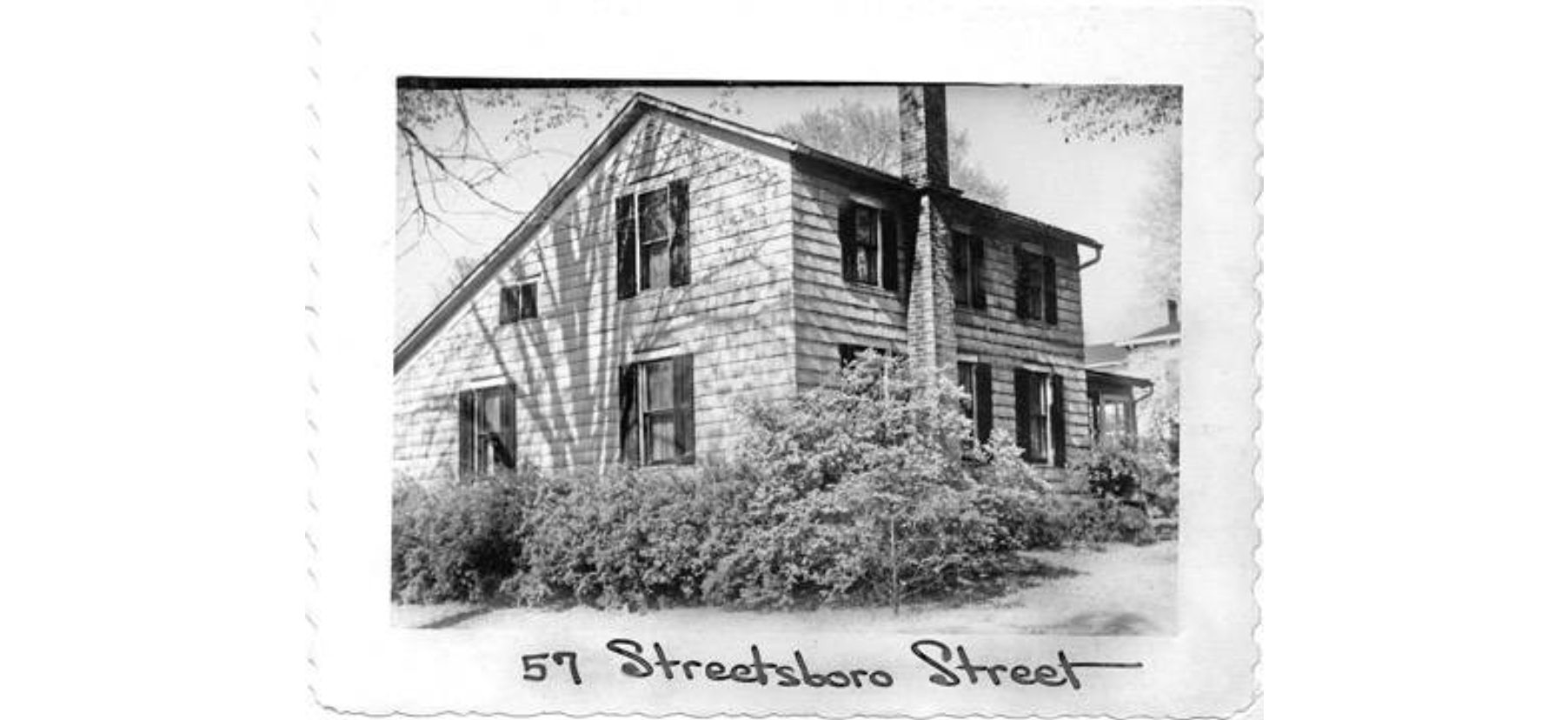 | The Dixon-Marrott House, built in 1852, is a very simple house built in the saltbox style. A saltbox home is characterized by an asymmetrical roof that slopes down in the rear, named for its resemblance to an old type of salt container. A saltbox building has two stories in the front and one story in the back. This home was originally built at 34 Church St., and Elizabeth Dixon (dates) was likely the first owner. Thomas Marrott (1834-1908), a teamster (or driver of horses), acquired the property in 1858. Marrott had a hack service between the railroad and mansion hotel. His son Lewis Marrott (1867-1917), a Hudson postmaster, moved the house to Streetsboro Street in 1911. English carriage maker Richard Hanson (1827-1902) once resided here. The original floors, doors, windows and hardware still exist. | Hudson Heritage Association Summit Memory | |
60 West Streetsboro Street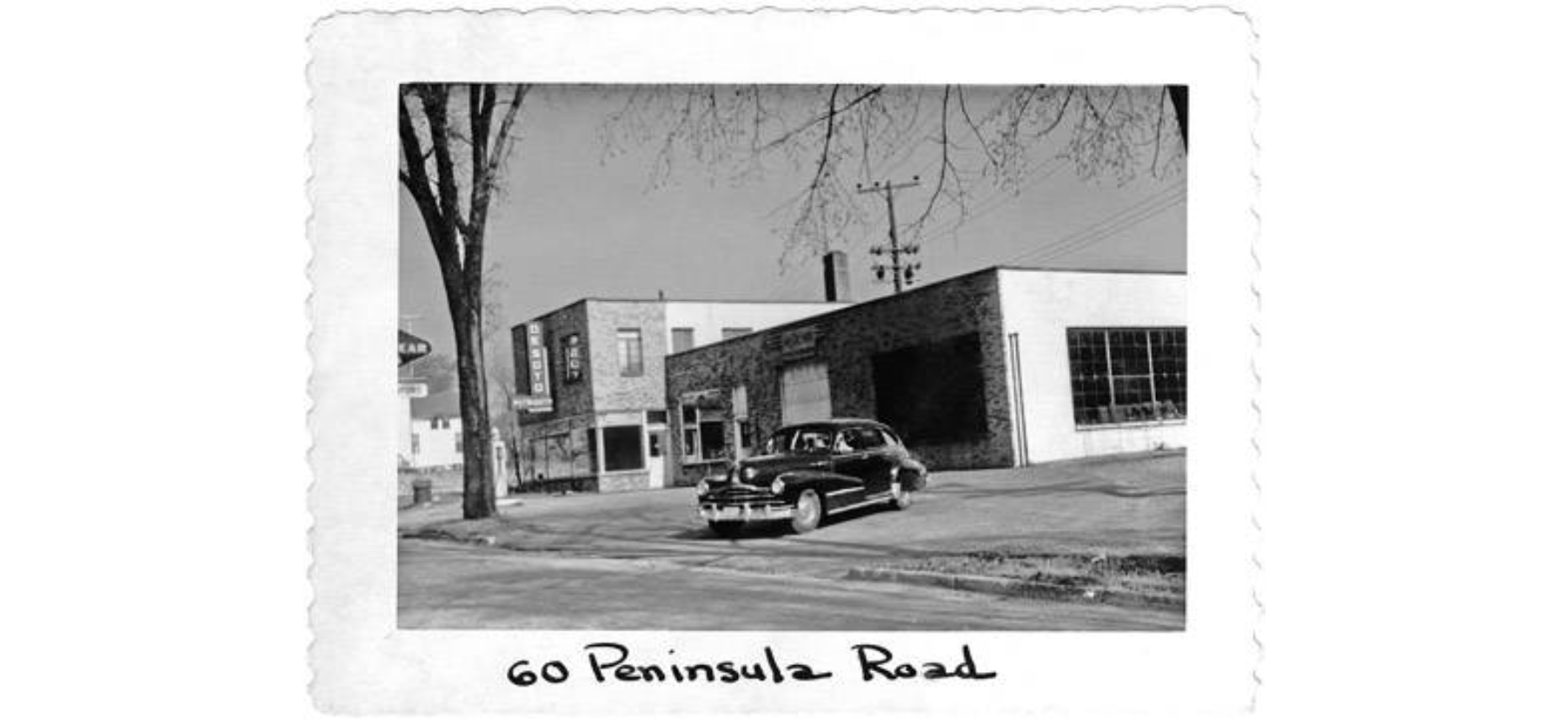 | A two-story homestead once existed at this approximate location and was home to the Starr family. George Leander Starr (1833-1920), who kept a detailed diary of Hudson life, grew up in this house. The home's central location likely gave George a great place to view the comings and goings of many. On December 23, 1845, George spotted an Eastern woodlands buffalo walking down the street! In the 20th century, this building served as a DeSoto automobile sales shop. A 1947/1948 Buick can be seen in the photograph. | Summit Memory | |
| 65 Streetsboro Street George V. Miller House 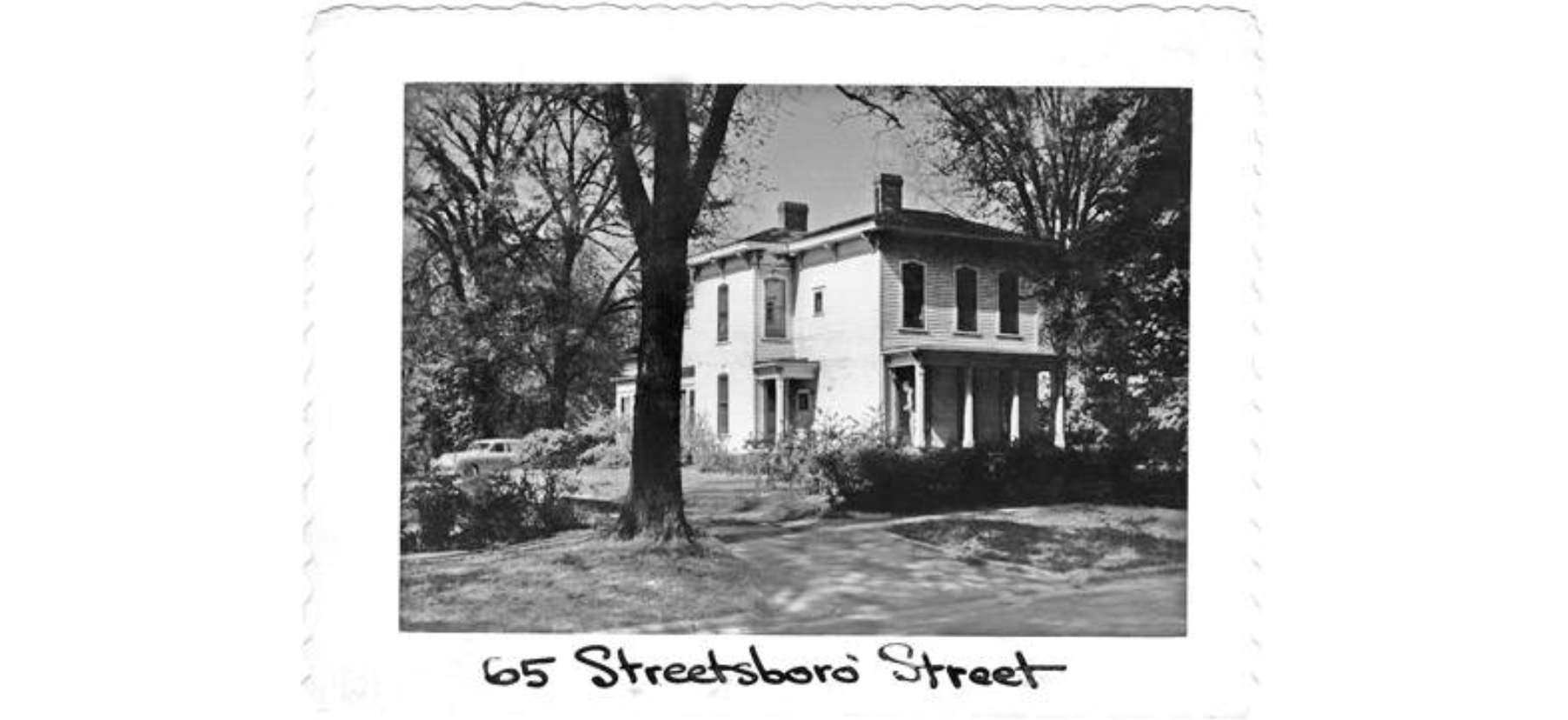 | This Italianate house was built by George Miller (1846-1926). It is known that the Miller family moved into their new residence in November 1878. Miller, a clerk in the family grocery store, later bought the business. Although his store was destroyed in the fire of 1892, he was able to rebuild. He later acquired his brother's bakery business, which was also in Hudson. The brick fireplace in the kitchen is original. | Hudson Heritage Association Summit Memory | |
| 66 Streetsboro Street Erastus Coy House 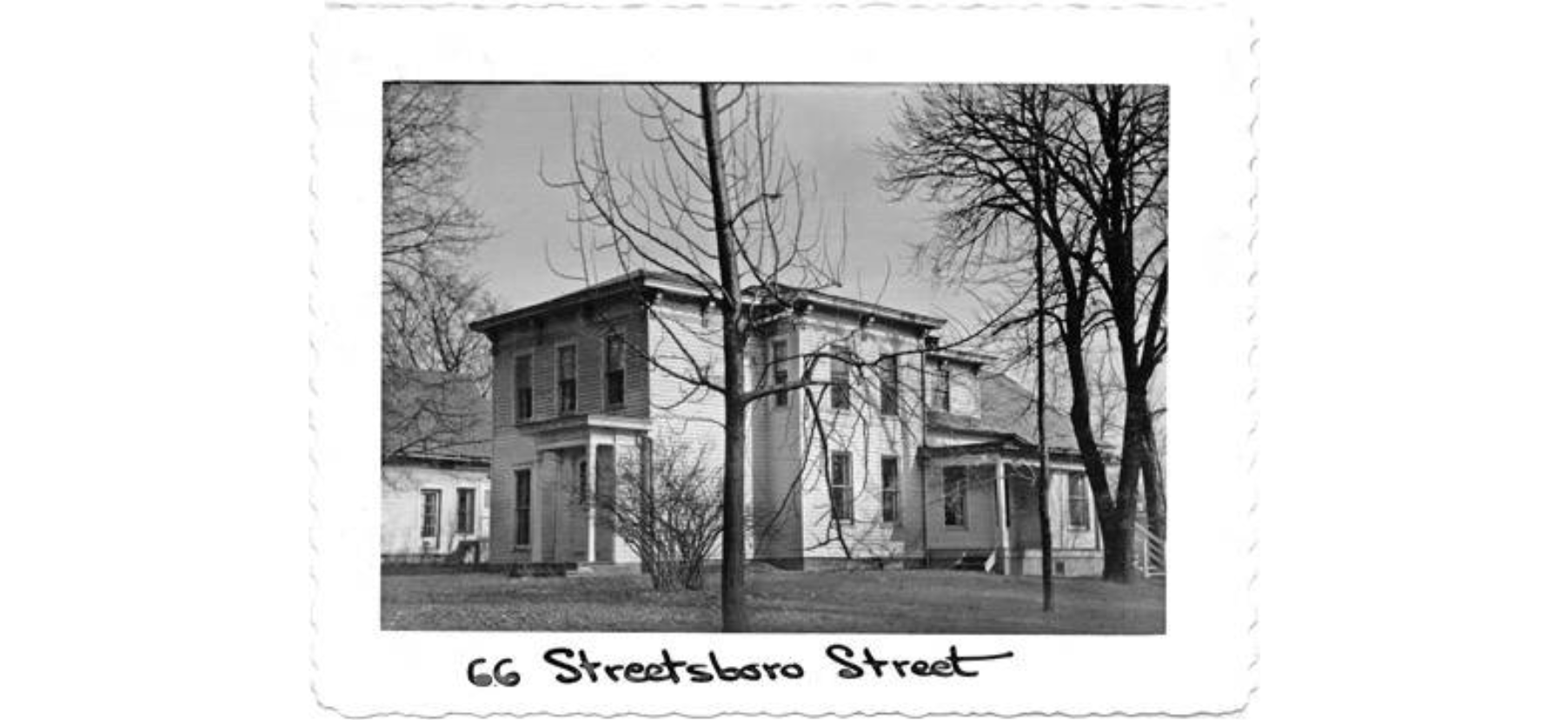 | The Bunnell-Crory House was built in 1873 by Frederick Bunnell (1821-1875), one of Hudson's early builders. Erastus Crory (1821-1907), the second owner, was a lumber merchant who owned the neighboring sawmill, which was destroyed by fire in 1892. The Italianate residence was also once home to Civil War veteran Newton Chalker (1842-1921). A wraparound porch was removed in 1949. The old well pump still stands on the east property line. | Hudson Heritage Association Summit Memory | |
| 70 East Streetsboro Street Stephan Jaqua House 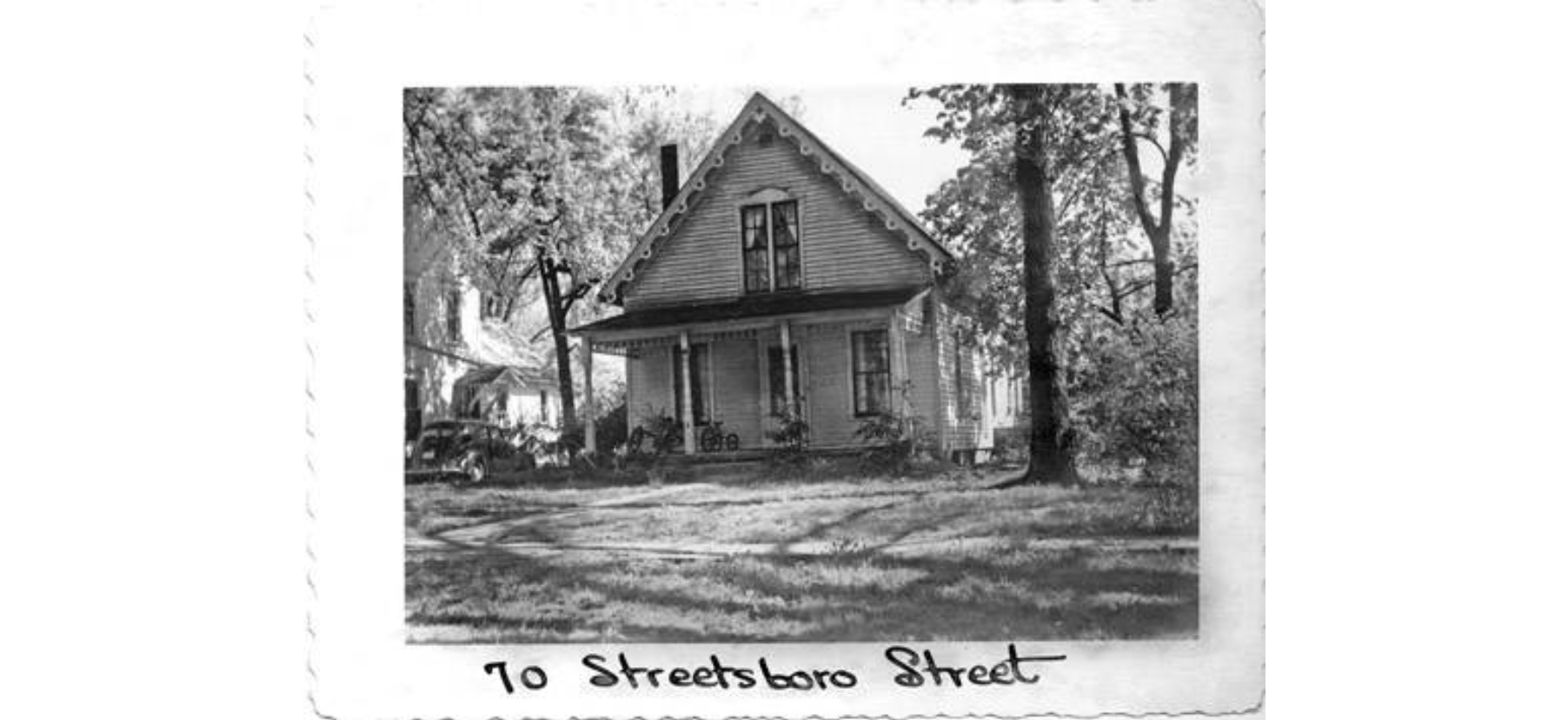 | Stephen Jaqua (1800-1870) of Canaan, Connecticut, built this Gothic Revival house in 1868 for his four children and wife Lucy (1805-1878). Relatives living in Hudson had entreated the young family to come to the Western Reserve. Their oldest son Milton (1820-1864) inhabited one of the three upstairs rooms with eyebrow windows facing the street for most of his life. It is probable he died tragically during a horrific train crash in 1864 just a short distance from this home. His sisters each married. One lived across the street at 65 E. Streetsboro St. His younger brother Starr (1836-1895) was a painter who also lived at home most of his life and was known to have gone four rounds in a fight on Main Street in 1885 with Cyrus Deacon (1843-1898), a Civil War veteran. Apparently Cyrus had offended Starr's sister, Harriet Jaqua Deacon (1847-1927). Harriet, often called Hattie, forgave Cyrus and married him in the coming months. The Jaqua family resided in the home until 1906. Russell Daberko (1906-1988) and his family inhabited the balloon-framed home for more than 40 years. | Hudson Heritage Association Summit Memory | |
74 Streetsboro Street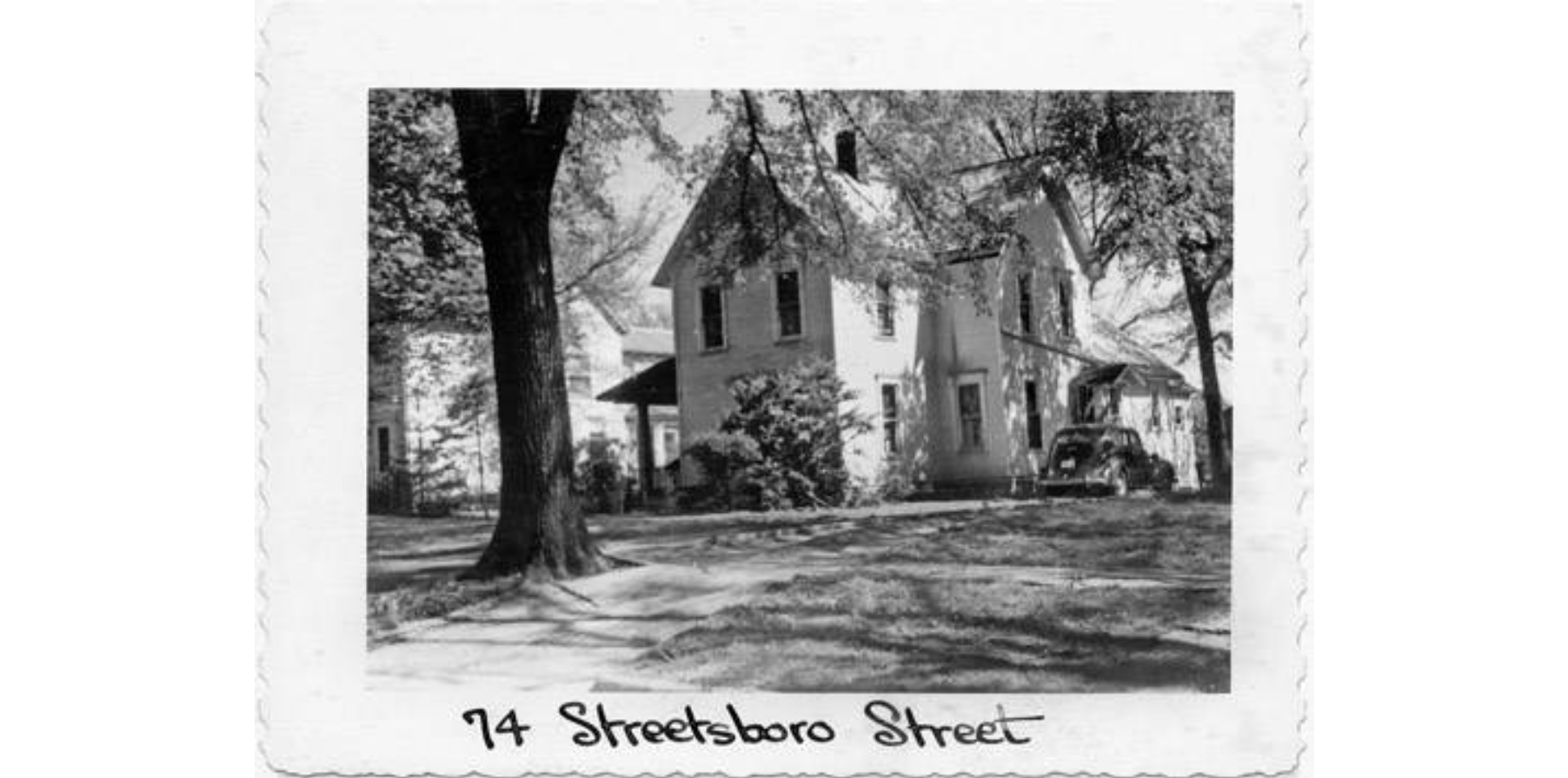 | The Drayer family once occupied this circa-1873 home. Gladys E. Drayer (1896-1972) was a housemother for North Hall at Western Reserve Academy for 40 years and her husband, Otto Frank Drayer (1884-1977), was a signalman for the Pennsylvania Railroad. Gladys' and Otto's son Otto Frederick Drayer (1921-2006) was the chief for the Munroe Falls Fire Department for 28 years. | Summit Memory | |
| 75 East Streetsboro Street Treat S. and Sarah Ford House 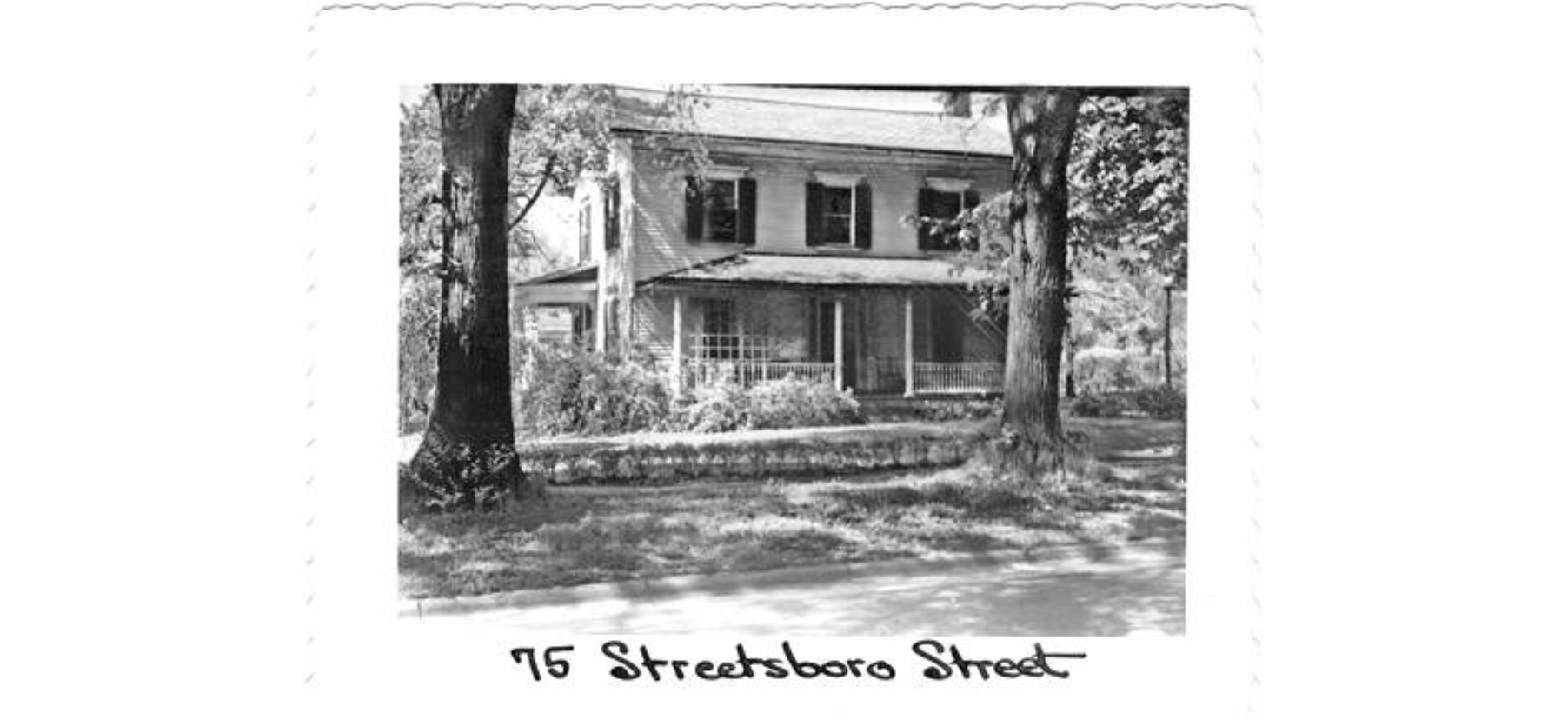 | The symmetrical Ford House is a two-and-one-half-story Greek Revival with a gabled roof to the sides. The roof is now shingled but was slate as late as 1909. The home boasts chestnut floors and back-to-back fireplaces. The Ford family built this home in 1855; it was the home of Charles Chittenden (1833-1911) by 1906. Chittenden was a schoolteacher in Cuyahoga Falls, Ohio, who had to leave his studies at Harvard before completion in order to come home and care for his mother. More than 100 years later, his descendants still occupy the home. | Hudson Heritage Association Summit Memory | |
78 Streetsboro Street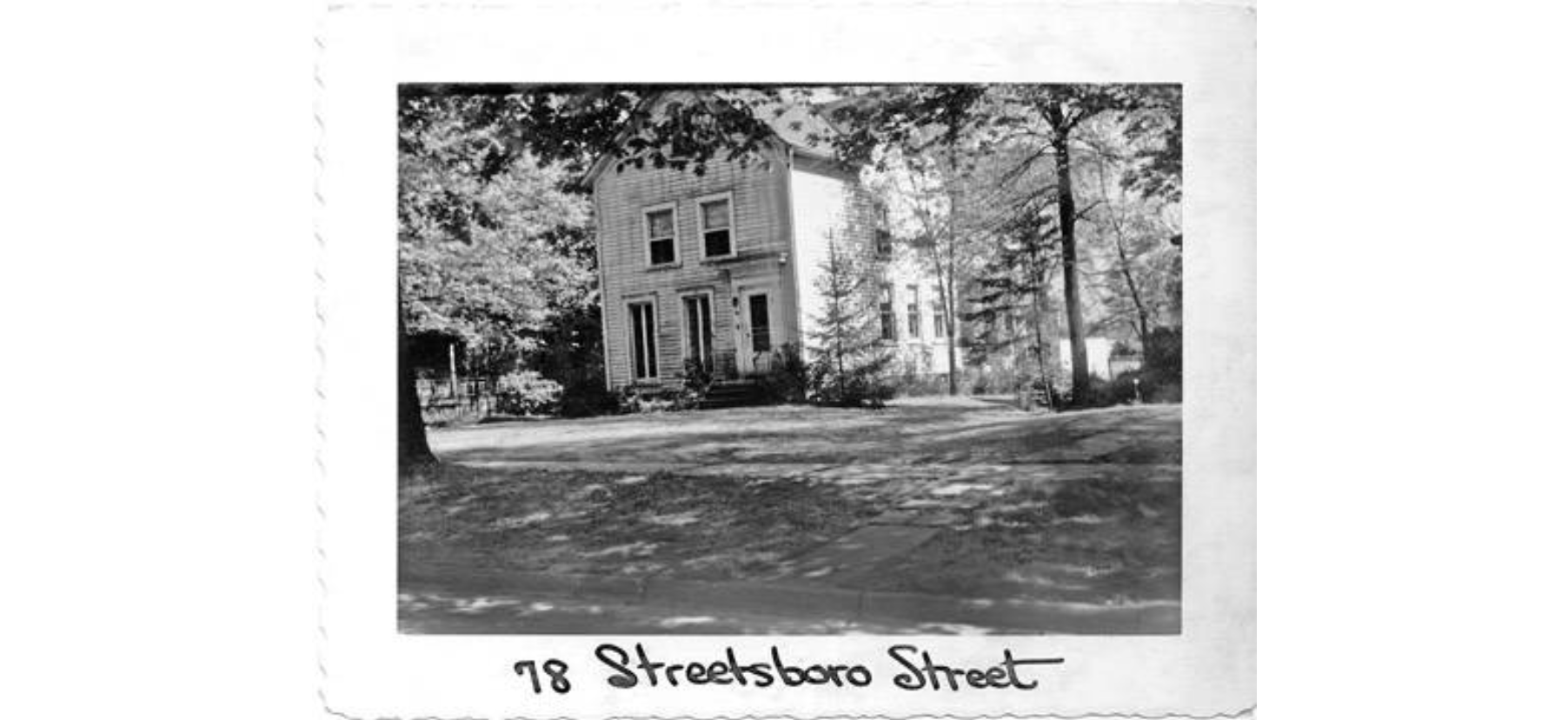 | Former Hudson mayor Henry C. Barlow (d.1958) once lived in this 1850s home. Barlow was the fifth generation to own the Barlow home on Barlow Road, which he turned over to his son in 1924. This home on Streetsboro originally was one-story. It is unknown when the second story was added. | Summit Memory | |
81 Streetsboro Street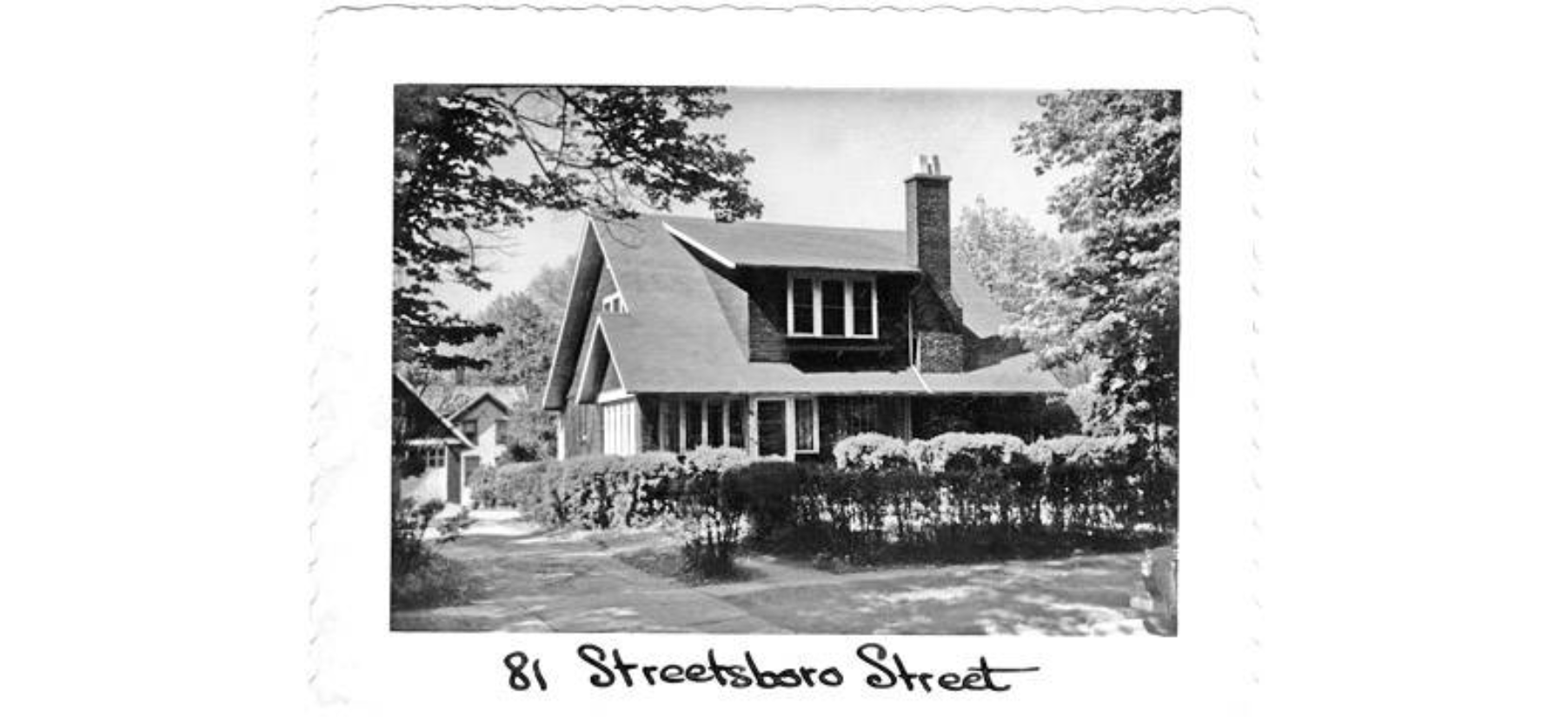 | This home dates to circa-1918 and was once the home of James G. Scales (d.1941), vice president of the National Bank of Hudson. The Wernli family later occupied it. Elizabeth Clarke Wernli (1906-1989) was once the organist at the First Congregational Church. Her husband Kenneth J. Wernli (1907-1999) was a former employee of Sioux Metal Products and Pittsburgh Plate Glass Co. | Summit Memory | |
82 Streetsboro Street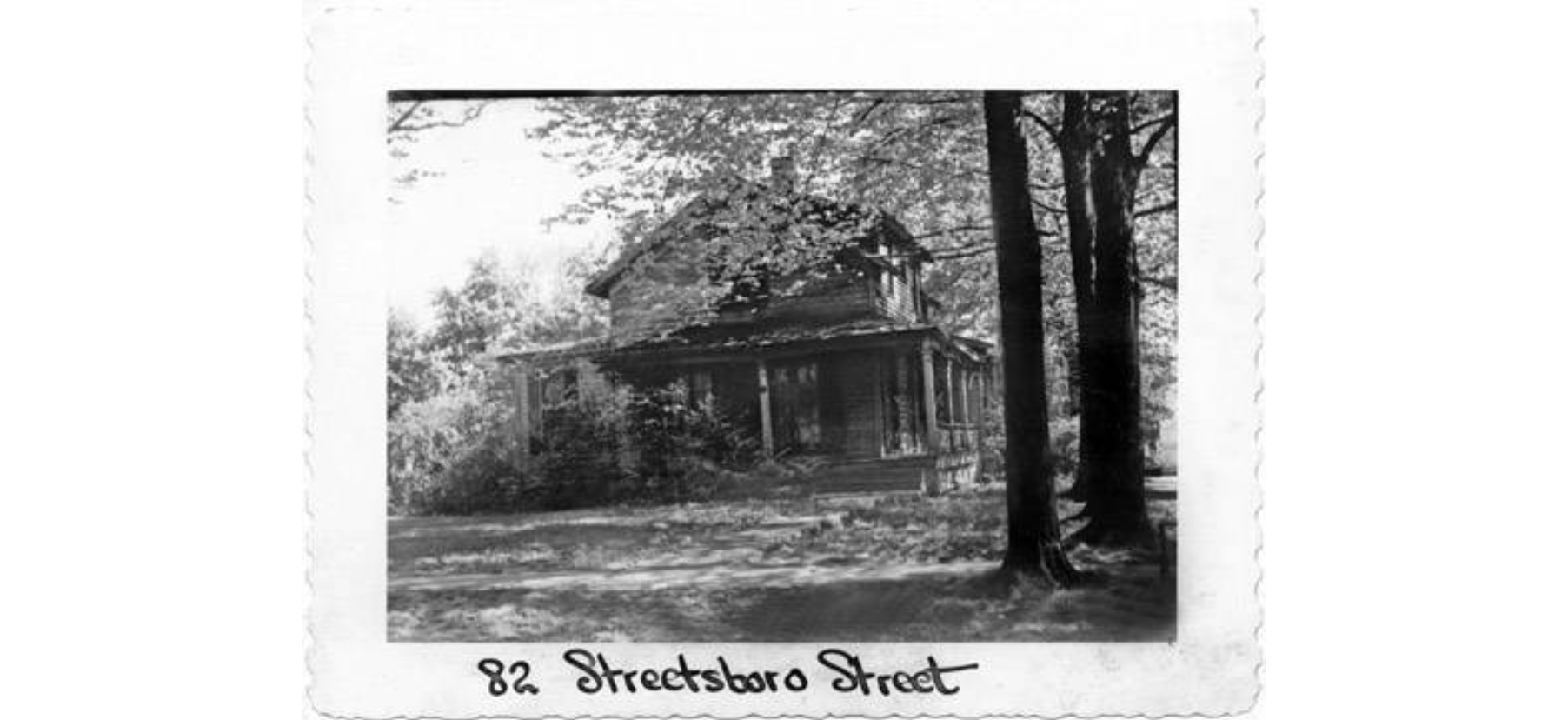 | Builder Harlan G. Henry (1804-1941) once resided in this 1850s home. Henry's obituary states that he was responsible for building the parsonage for the Congregational Church. Henry also served on the Hudson village council. | Summit Memory | |
88 Streetsboro Street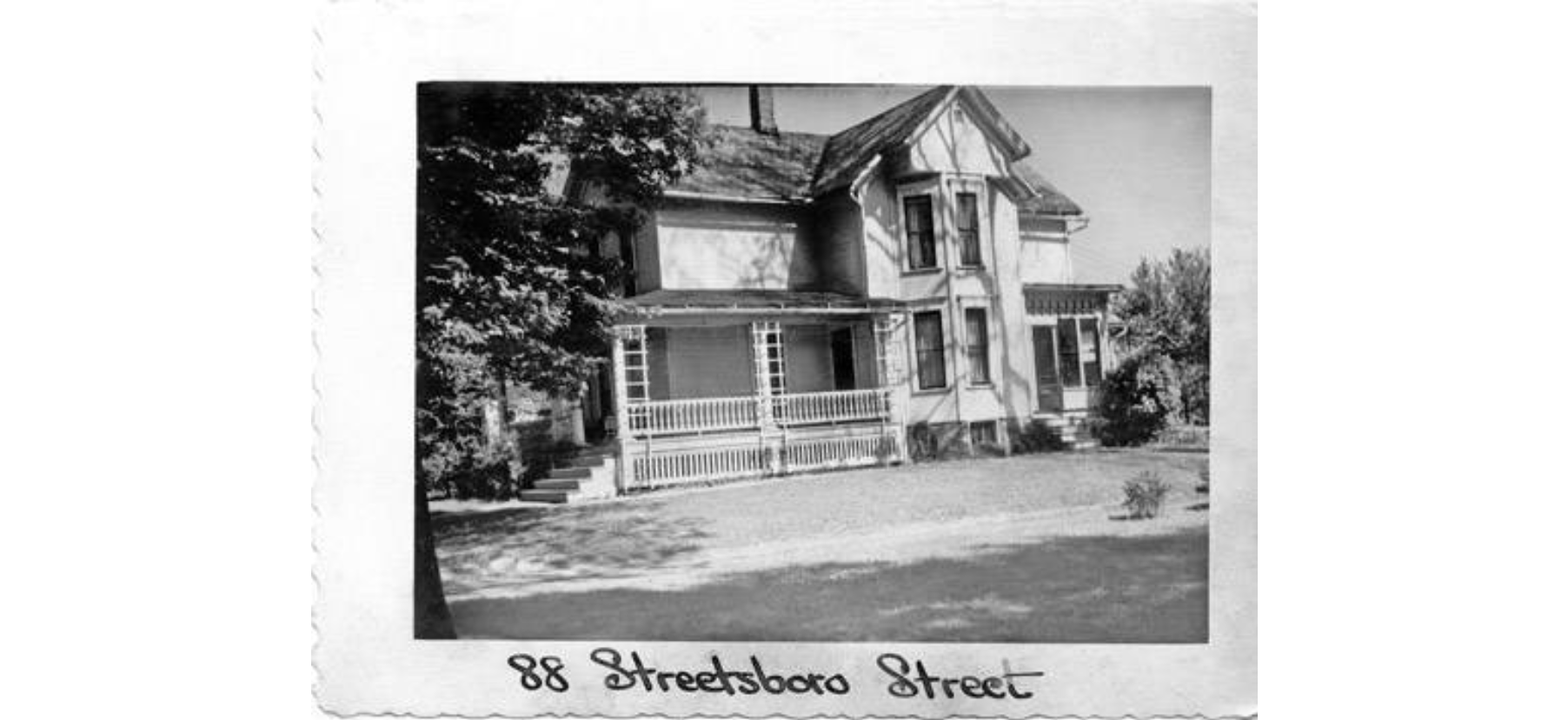 | Rubber worker Willard Duff Eakin (1887-1973) once lived in this home. Eakin had a bullet scar on his right thigh. His son John H. (d.1941) died in an Air Force plane crash. The home dates to the 1890s and once stood on Ravenna Road. It was moved at the turn of the century to make room for the railroad. | Summit Memory | |
| 89 East Streetsboro Street Charles Chapman House 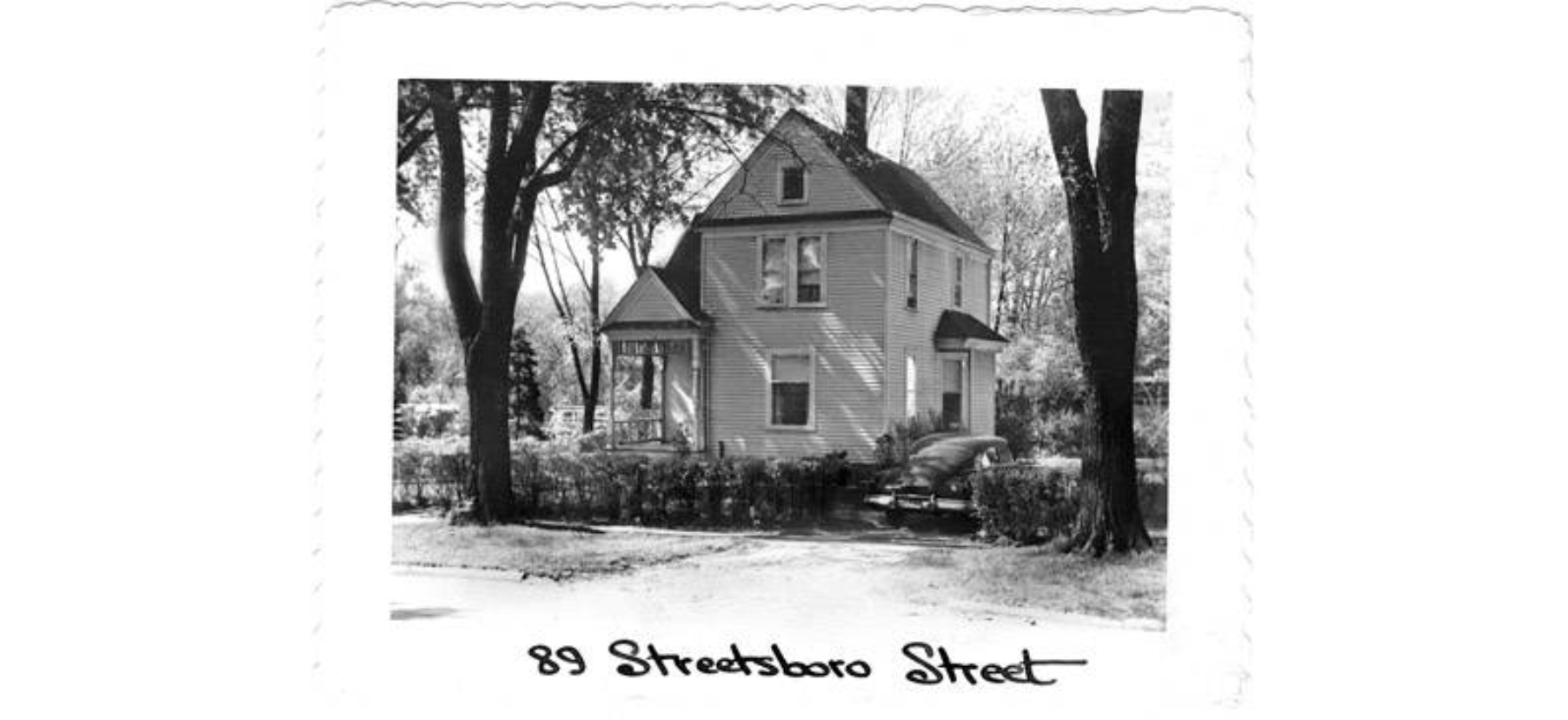 | This Victorian house was built in 1896 by Charles Chapman (1830-1906). Chapman, a potter by trade, had previously resided in Alliance, Ohio, and once served as that community's mayor. His move to Hudson was stimulated by his only son's employment as a bookkeeper in the Hudson general store of C.H. Buss (1845-1911). More recently the home has been known for once being the residence of Ray (1905-1974) and Ellen Mickel (1904-1996). Ray was once headmaster at Western Reserve Academy, trustee at Hudson Library & Historical Society and a well-respected educator. Ellen descended from a Hudson pioneer family and was active in the community. She had a passion for gardening and took great pride in the gardens at their home. They planted many unusual species of flowers and ferns. A Mickel son went on to serve as fern curator at the New York Botanical Garden. | Hudson Heritage Association Summit Memory | |
| 92 Streetsboro Street Noah Carter House 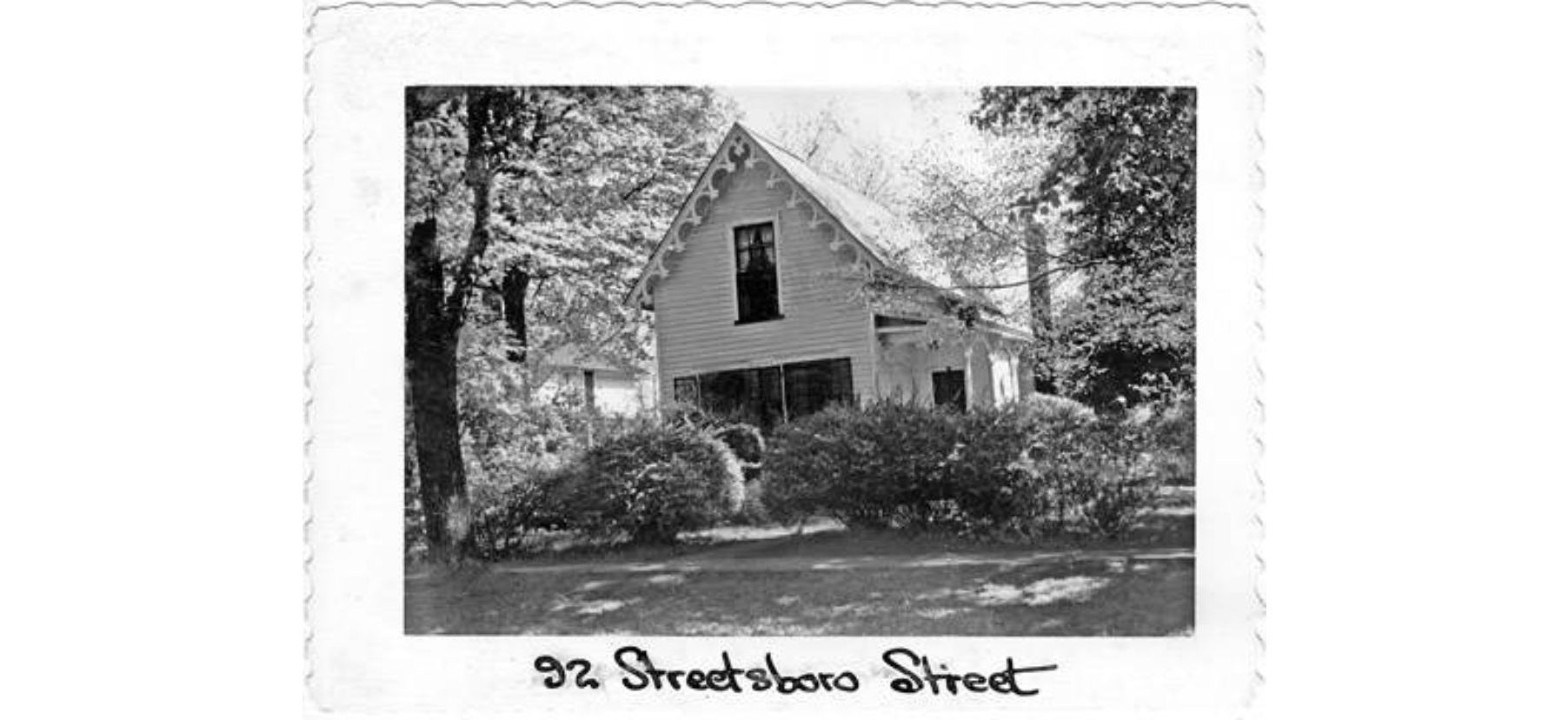 | The Noah Carter House was built in 1853. Carter (1831-1895) was a carpenter and served on both the Hudson Board of Education and town council. Later owner Lyman McAdams (1839-1912) was a veteran of the Civil War and saw battle at Gettysburg. The Gothic Revival home has an unusually wide stair case and chestnut floor boards. It is a fine example of a quickly built structure made to accommodate the anticipated influx of workers for the proposed railroads of the 1850's. | Hudson Heritage Association Summit Memory | |
95 Streetsboro Street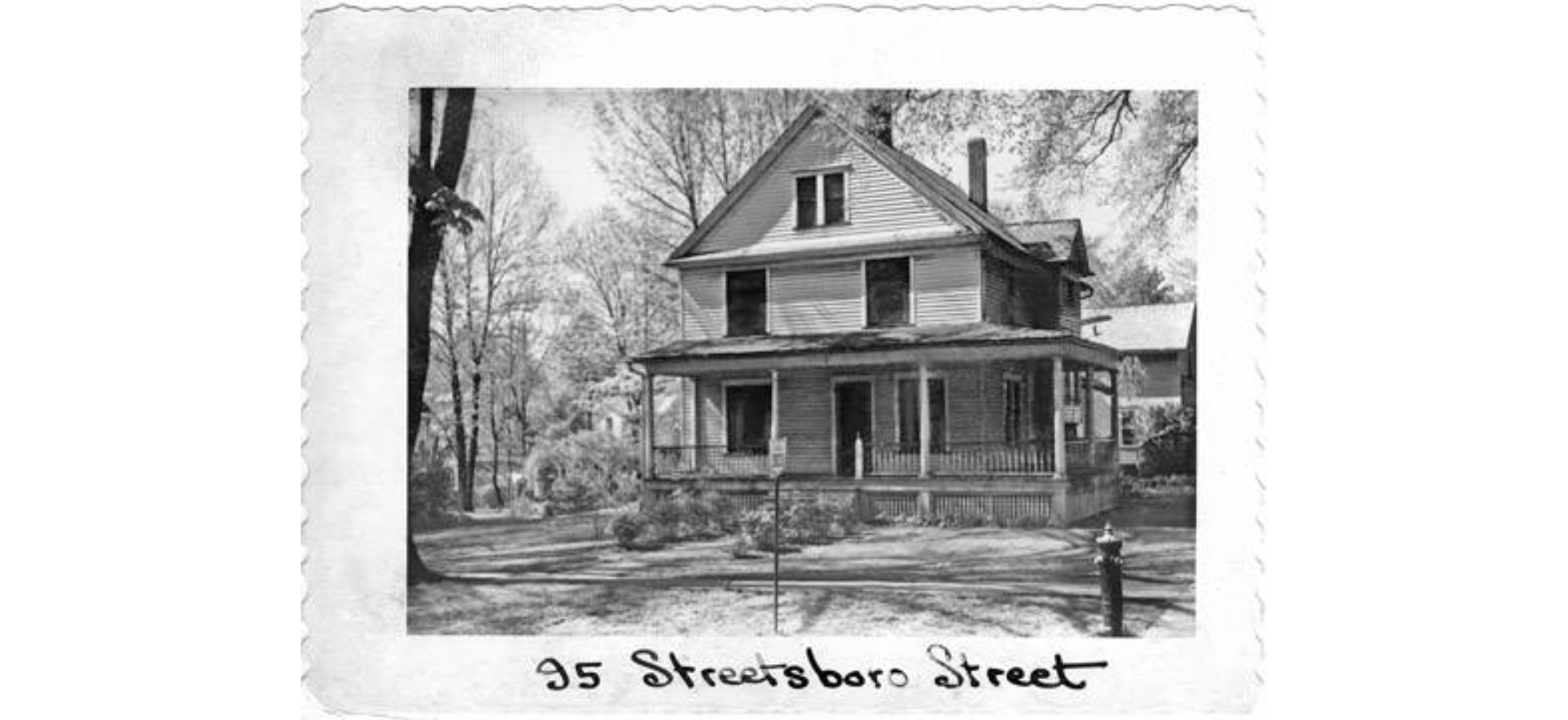 | Little is known about this turn-of-the-century home. It once belonged to thresherman, contractor, and farmer Charles A. Sullivan (1875-1943), who resided in the home from 1901 until his death. | Summit Memory | |
| 96 Streetsboro Street Peck-Trowbridge House 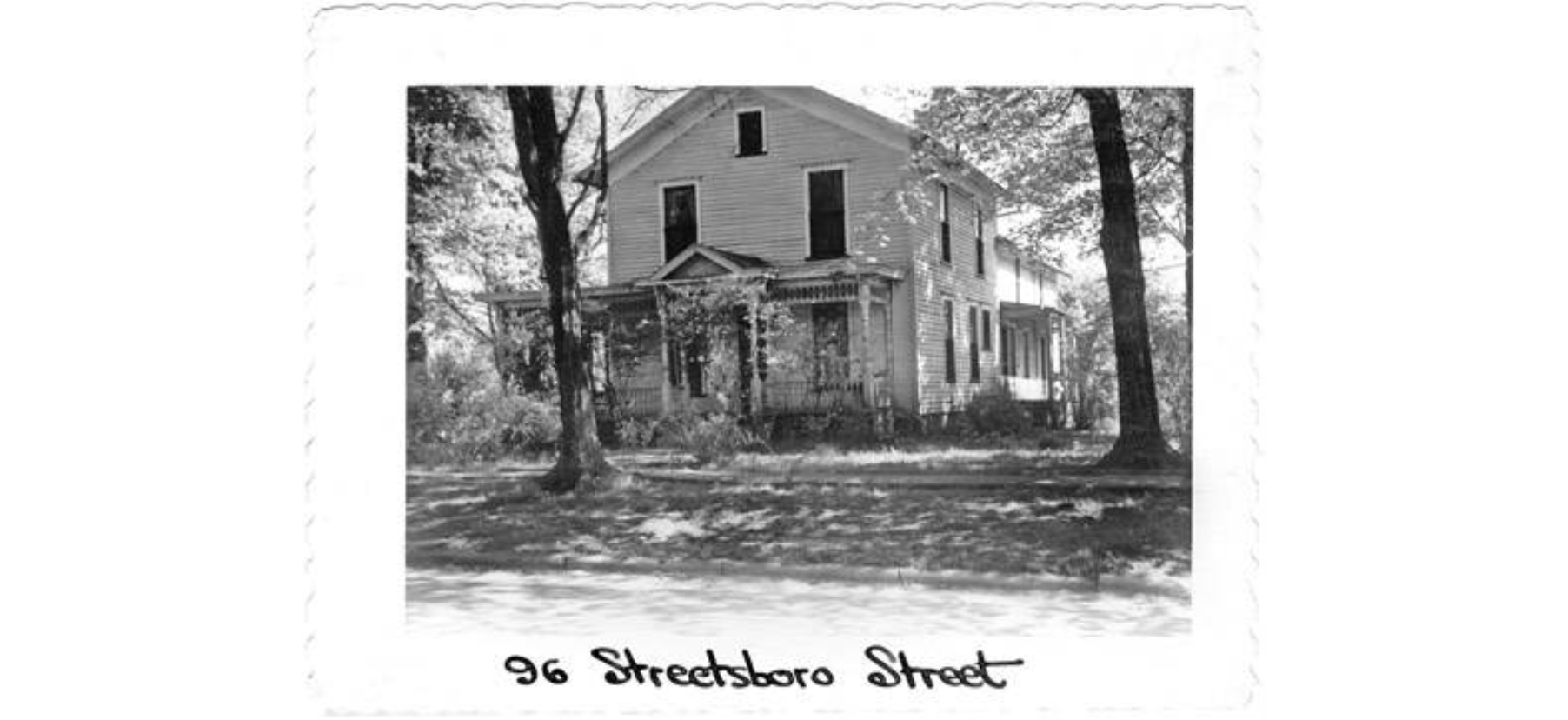 | The Peck-Trowbridge House was built in 1844 by Noah Carter (1831-1891), who lived next door. The first owner of the house was a Hudson Mayor, Herman Peck (1805-1872) who was a builder and painter. The Peck family came to the Western Reserve and Hudson, Ohio from Connecticut as their cousins were located here and they could make a start in Ohio. For some unknown reason, after 1859 they returned to Connecticut. The rear section of the home dates to the Peck occupancy. The basement contains a chimney of under baked brick base of a cooking fireplace in the kitchen above. The sills are broad axed, and some joists still have tree bark. Removed was the front porch and the front entrance was boarded up. The eave brackets, end boards and jigsaw trim were added at that time. The original porch area and the two story bay on the east side has some shiplap siding. In 1868, the property was transferred to Daniel Trowbridge (1796-1881), a religious man and Buckland, Massachusetts native, even though he was most likely already living in the house. The house is remarkable for it was the residence of two Hudson Mayors- the second was current Mayor, William Currin (1943- ). | Hudson Heritage Association Summit Memory | |
104 Streetsboro Street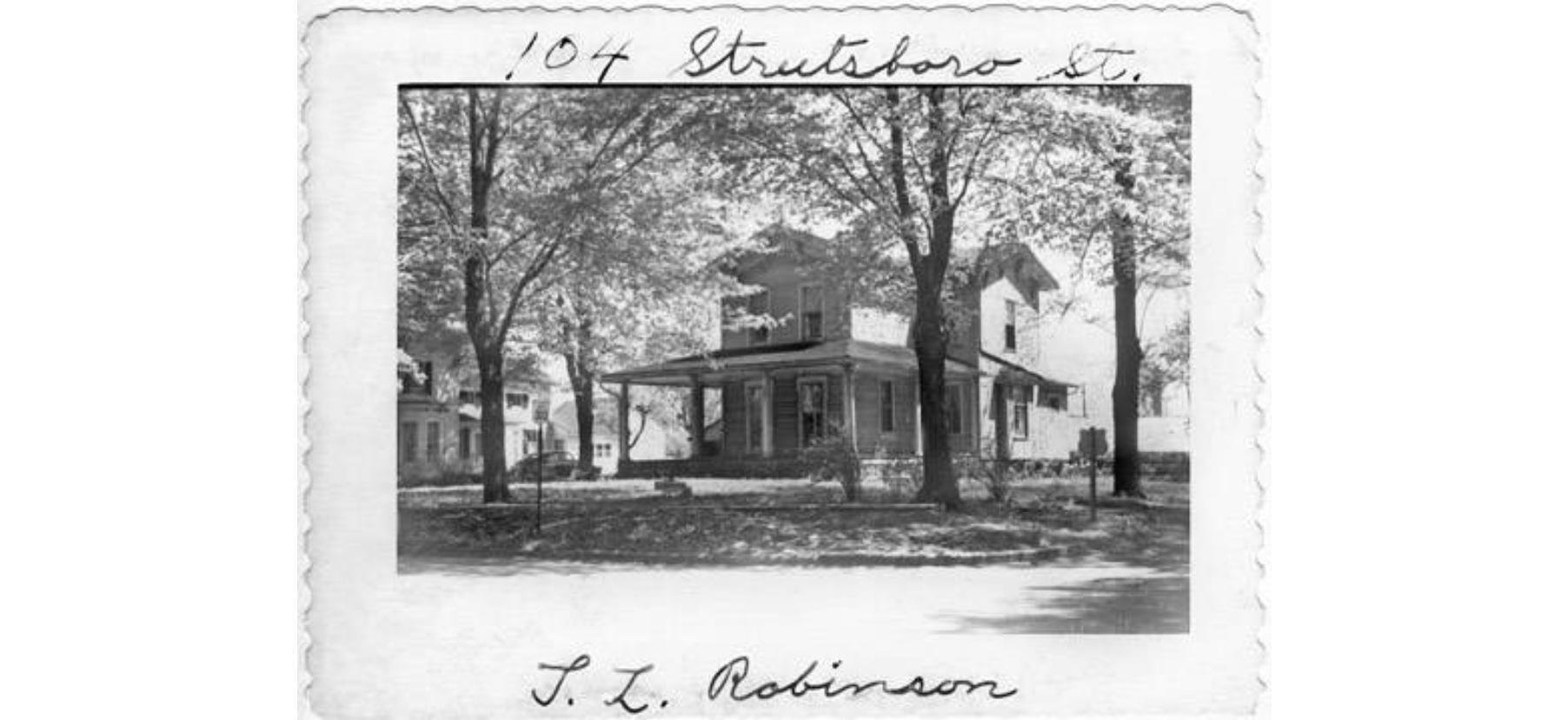 | This 1870s-era house was once home to Arthur Clarke Fitch (1836-1882), a preacher's son, and his wife, Harriet Newell Woods Fitch (1841-1923). Arthur was a musician who also served as a fife major during the Civil War at the battles of Shiloh, Corinth and Vicksburg. He sustained an injury and thereafter always was in delicate health. Harriet spent most of her life in Hudson. She was a student at Female Seminary and a granddaughter to pioneer doctor Moses Thompson (1776-1858). According to the diary of her cousin, George L. Starr (1833-1920), Harriet had a great fondness of the ice cream served at the Episcopal Church Fair in Hudson on July 4, 1846. | Summit Memory | |
| 105 Streetsboro Street Abi C. Brown House 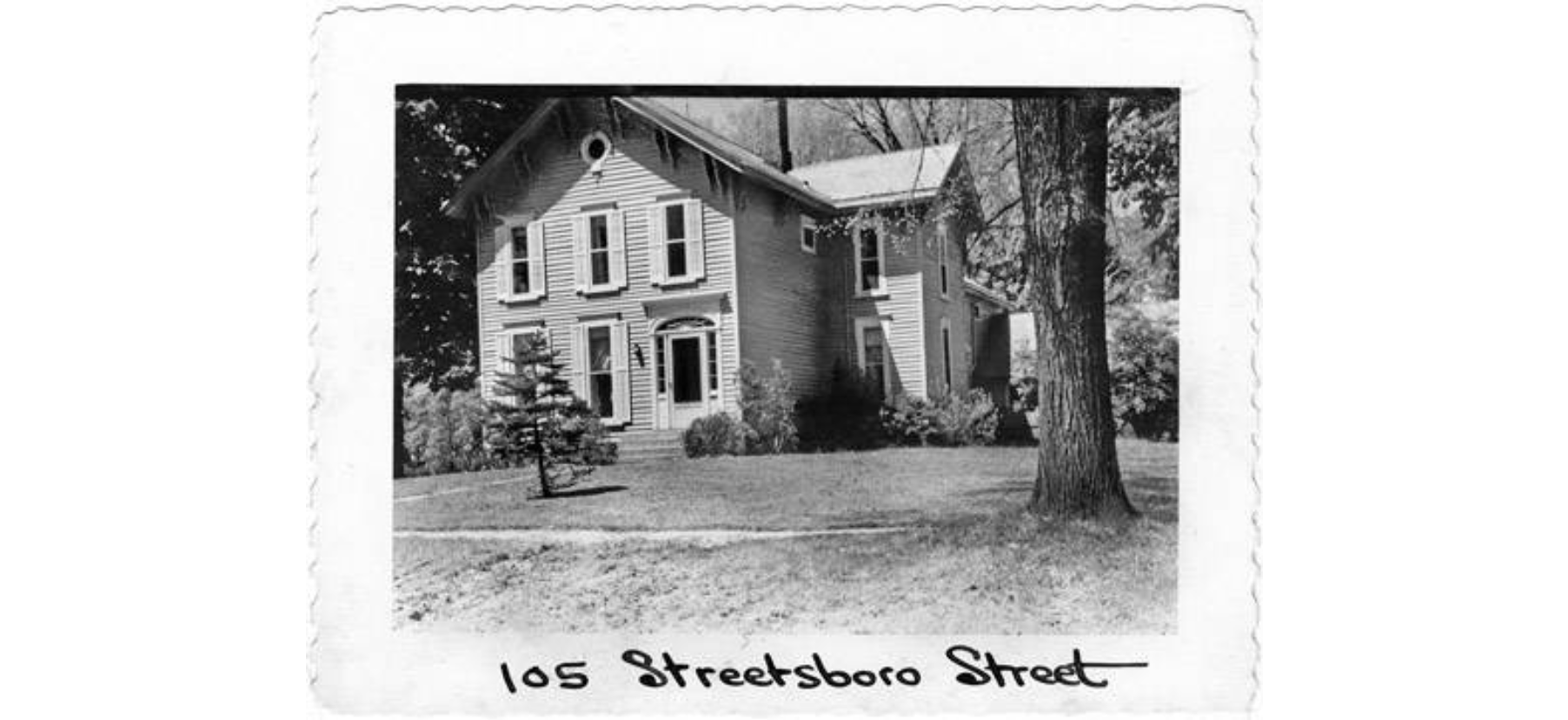 | This house is an Italianate with long windows and strong lintels. It has broad, overhanging, decorative eaves and a bull's-eye window in the attic. The house has been altered several times since the time of Abi Brown (1820-1883). Abi was sister-in-law to famed abolitionist John Brown (1800-1859) and had it built to occupy after the death of her spouse, Jeremiah Brown (1819-1874). Thomas Blackburn (1834-1920) of Lincolnshire, England, once lived here. Blackburn served with the 1st Ohio Volunteer Light Infantry and was granted United States citizenship because of his war service. | Hudson Heritage Association Summit Memory | |
| 109 East Streetsboro Street Isaiah B. and Louisa Jones House 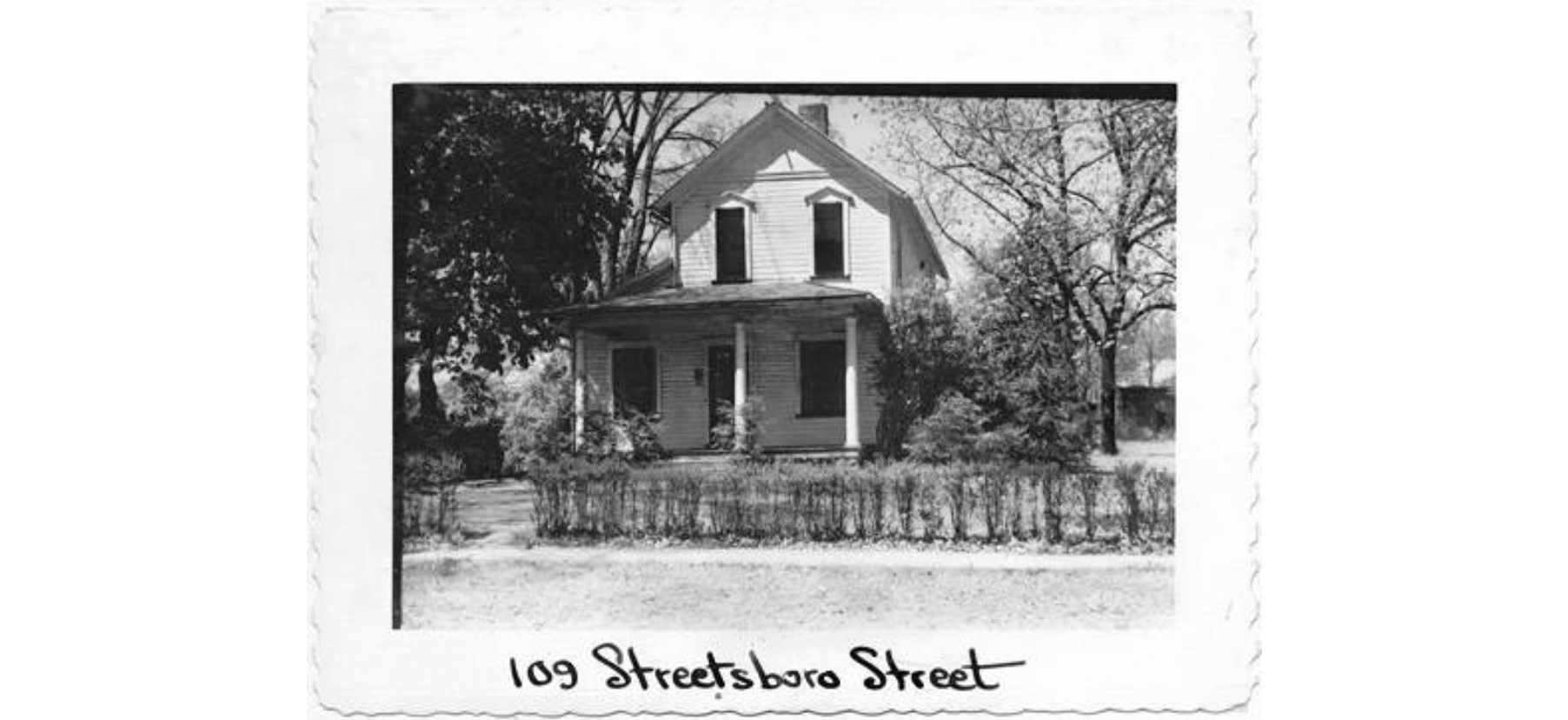 | Built in 1885, this home is known locally as the Jones House after former resident Isaiah B. Jones (1846-), a former Hudson postmaster. Jones' sister-in-law was a postal clerk. In 1903 the Jones family moved to southern Ohio and Ray E. Miller (1874-1951) bought the home. Miller served as mayor of Hudson from 1926 to 1929. The house is a late Victorian wood-framed structure which has had many additions. The address was changed from Streetsboro St. to Bradley Dr. in 1950. | Hudson Heritage Association Summit Memory | |
| 110 Streetsboro Street E. A. Osborn House 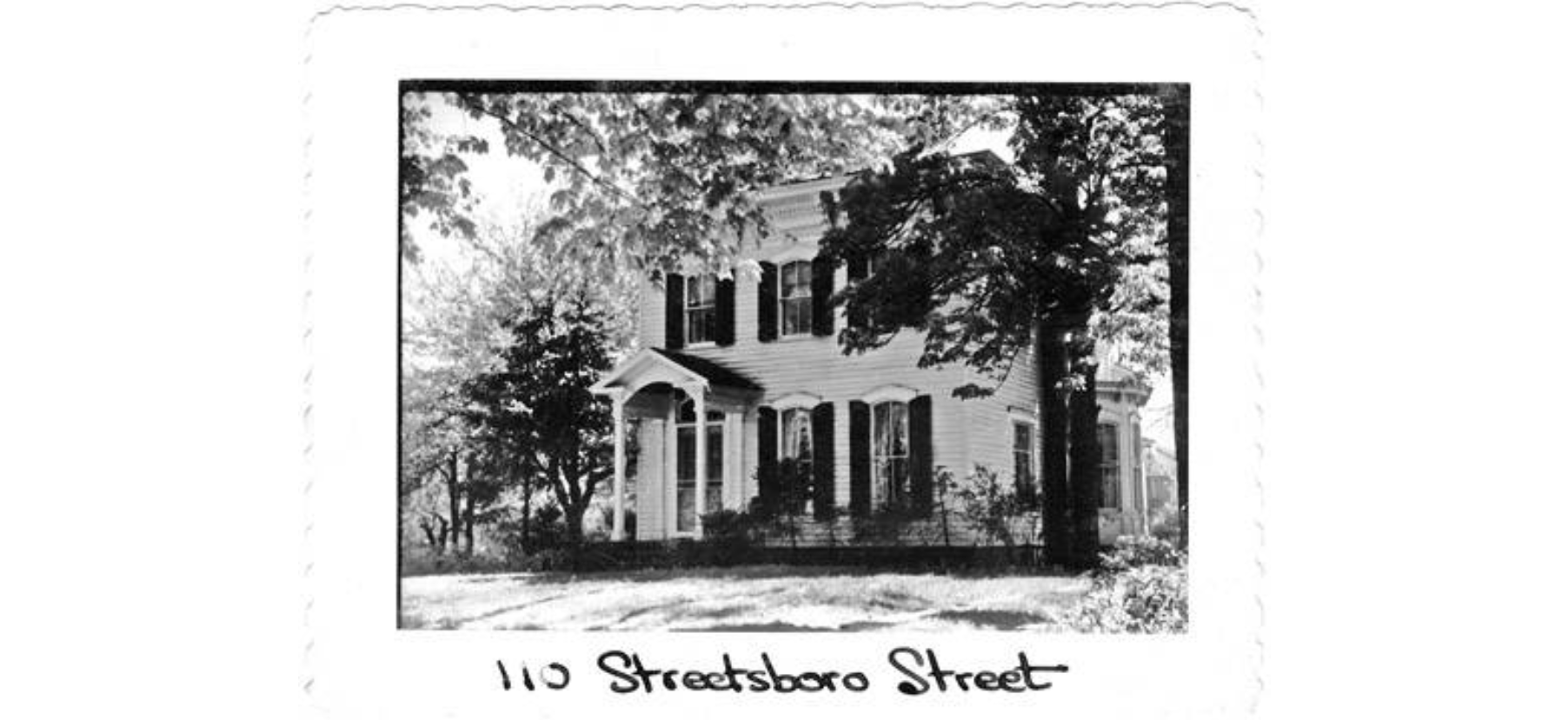 | The Osborne House was built in 1876. Elisha A. Osborne (1832-1918) came to Hudson after his service in the Civil War with the 103rd Ohio Volunteer Infantry. In 1866 he became a manufacturer of butter pails, tubs, boxes and spokes. Later owner Gertrude Donahey (1908-2004), former treasurer of Ohio, was the first woman in Ohio elected to a state office. The front doorbell, dating to 1867, is original. | Hudson Heritage Association Summit Memory | |
115 Streetsboro Street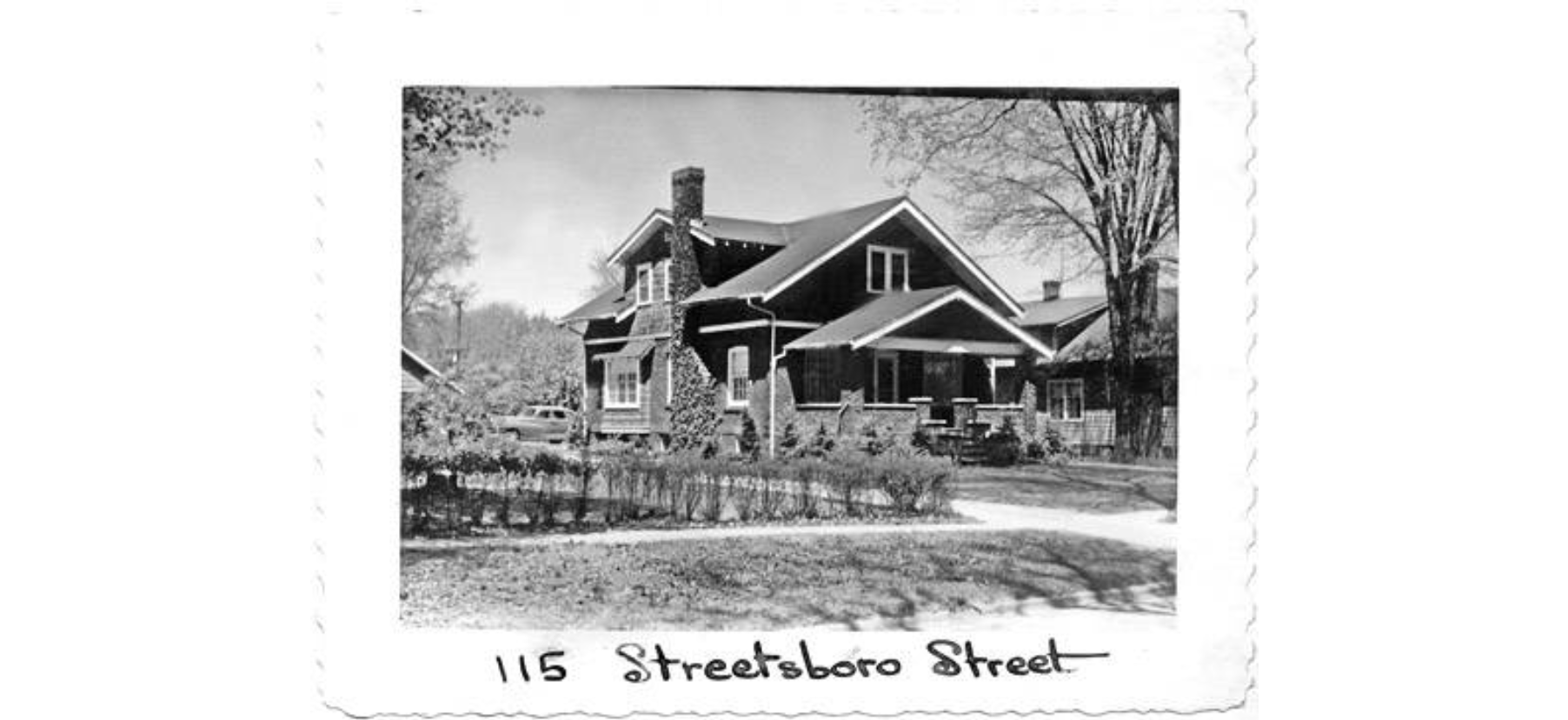 | This house no longer exists. It once belonged to Harold J. Young (1891-1974), chief auditor for Goodyear. | Summit Memory | |
116 Streetsboro Street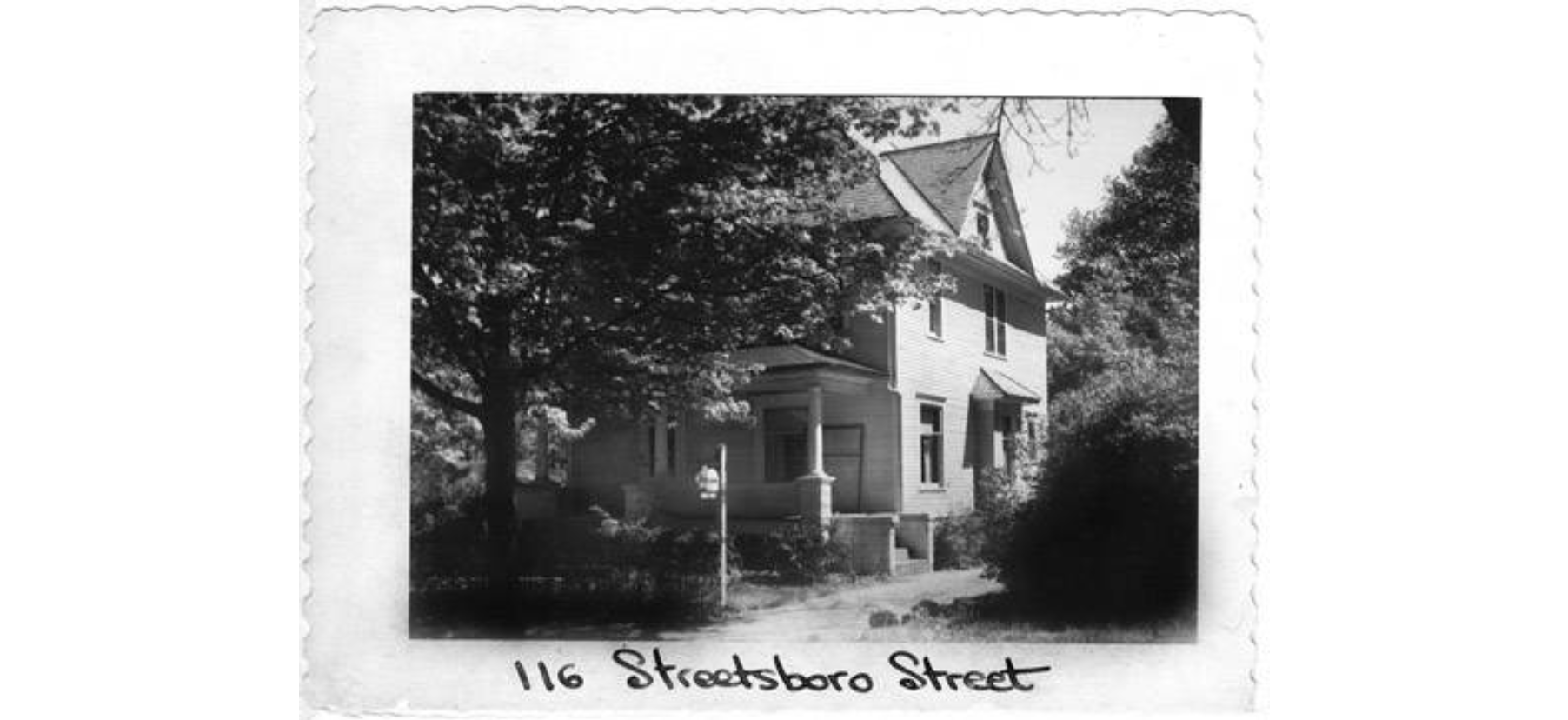 | Alfred L. Hudson (1894-1958), a descendant of Hudson founder David Hudson (1761-1836), once resided in this home. Alfred, a World War II veteran, was awarded the French Croix de Guerre and the Purple Heart. | Summit Memory | |
119 Streetsboro Street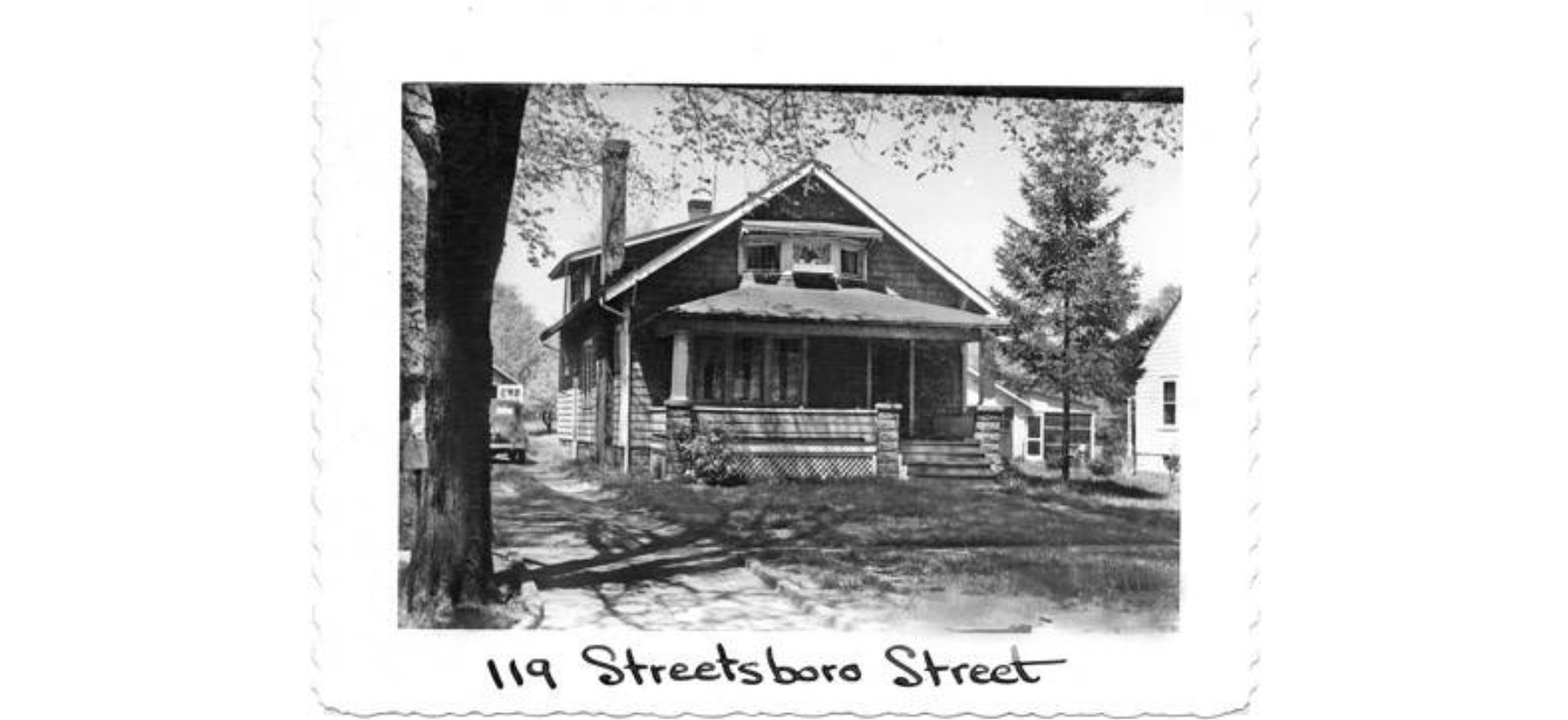 | This charming one-and-a-half-story bungalow with dormer windows dates to the early 1920s. Residences like this are considered part of the Craftsman era. The relatively small size of the house was an attraction to those without large families or, perhaps, who were physically challenged. Early owner, Charles Garfield Crowl (1881-1945), named for the slain president, had 90Y as his phone number. | Summit Memory | |
123 Streetsboro Street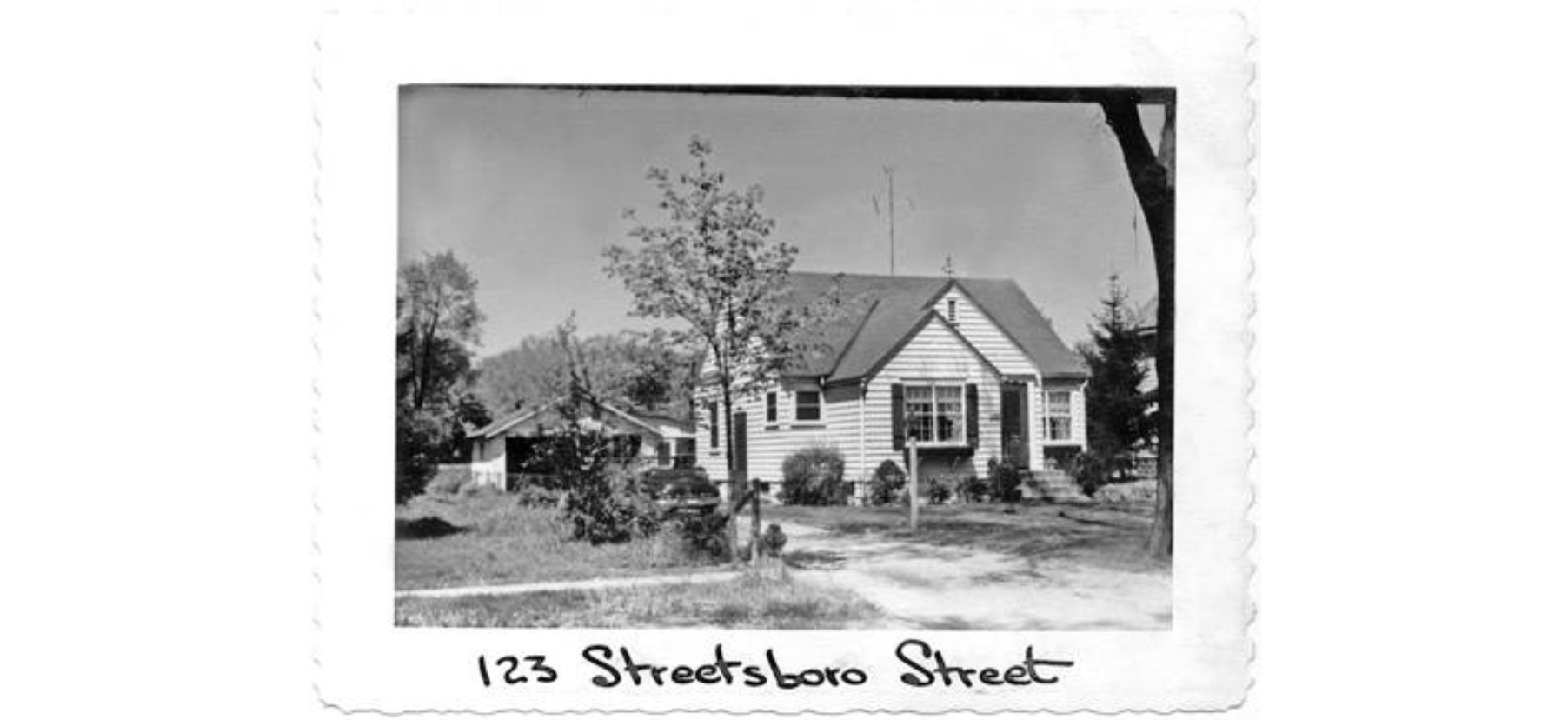 | Edison S. Morse (dates), salesman for the Royal Typewriter Co., once lived in this 1940s home. | Summit Memory | |
124 Streetsboro Street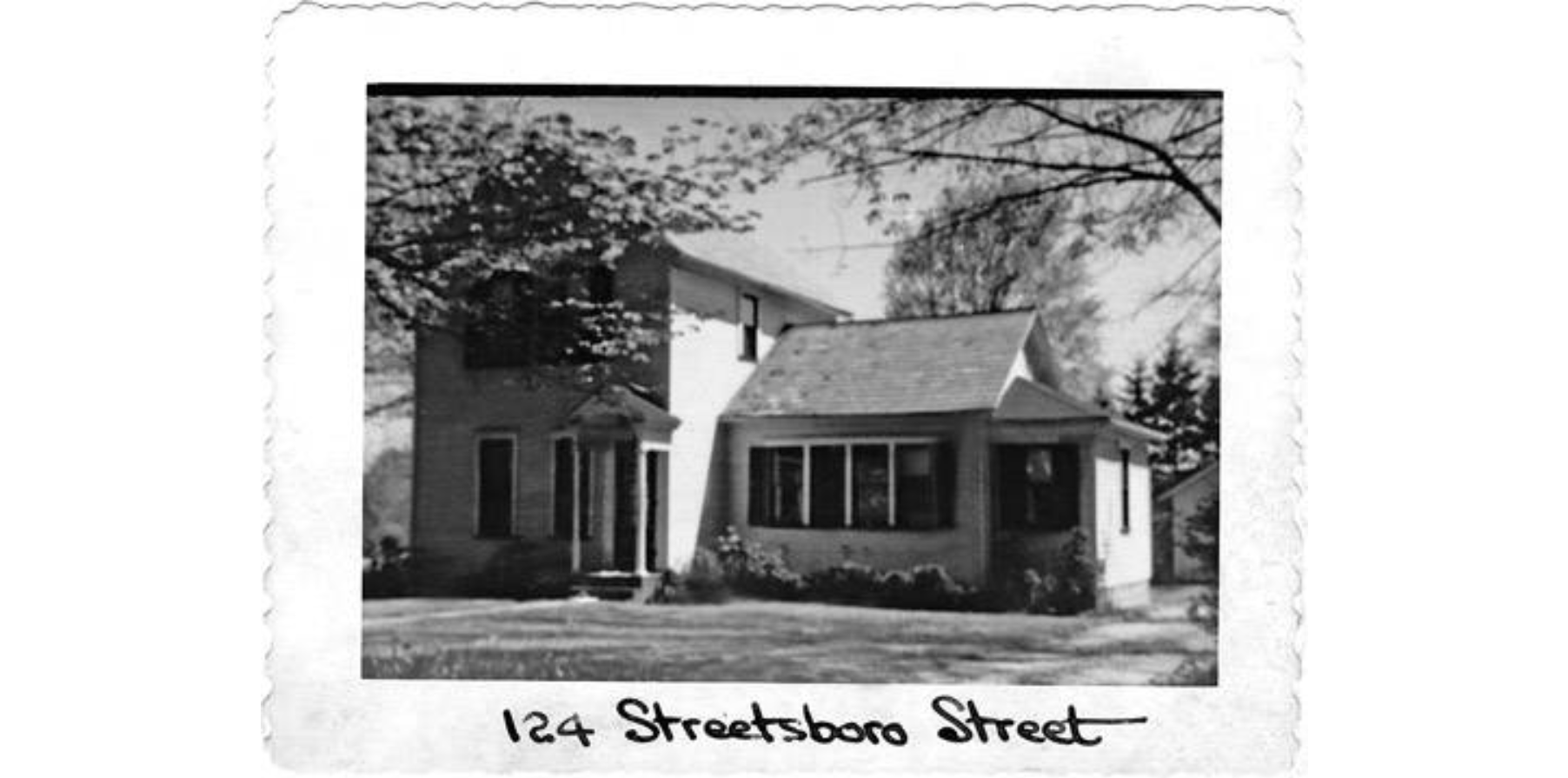 | Attorney David Holmes Wilson (1921-2007), once resided in this circa-1800s home. Wilson practiced law in Akron and served on the board of trustees of Western Reserve Academy. He loved poetry and one of his poems was once published in the "Saturday Evening Post". | Summit Memory | |
| 127 East Streetsboro Street Elisha Loomis House 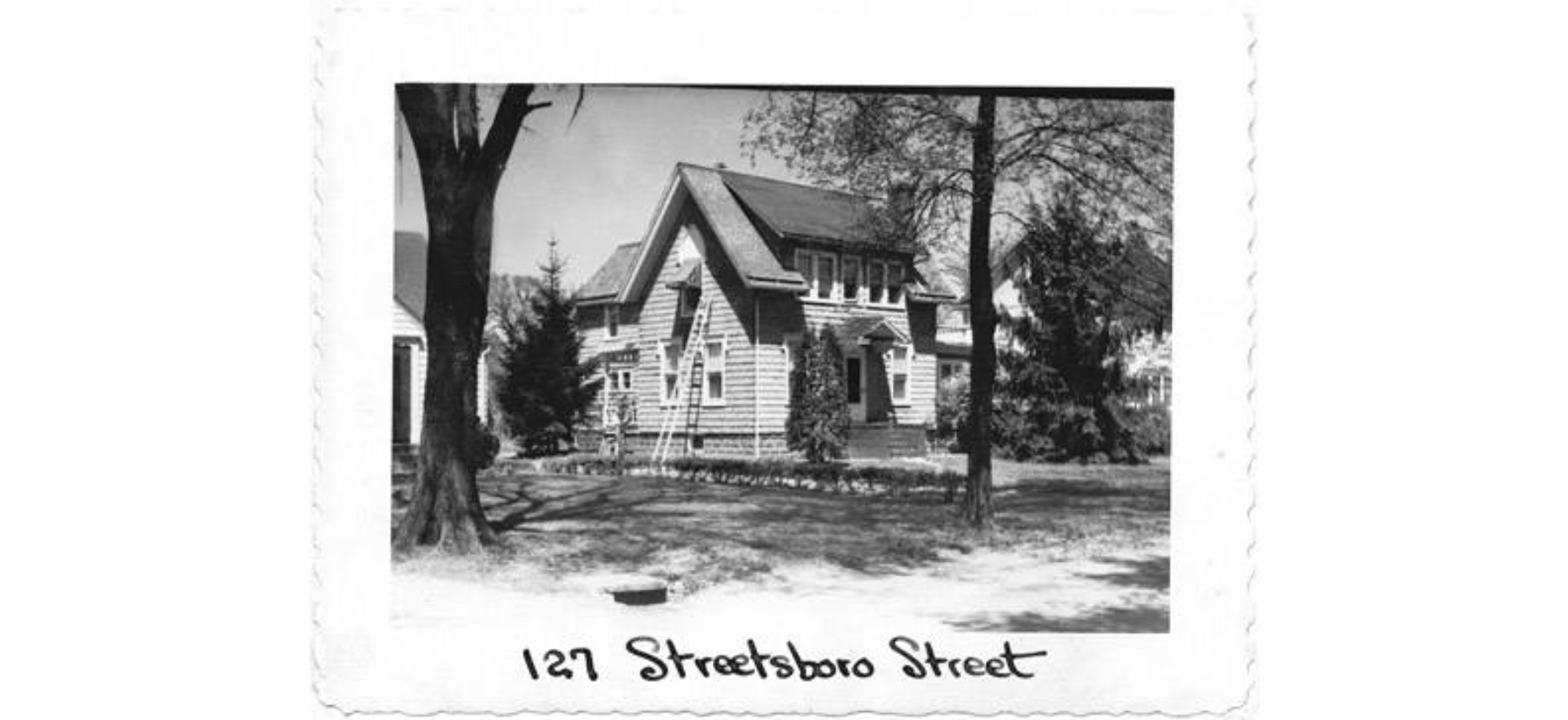 | Elisha Loomis (1780-1856), who erected the first saw and grist mill in Hudson, built this Gothic Revival home in 1853. In 1834 the property was sold to Loomis' niece and her husband, Justus Herrick (1801-1882), who also operated a saw mill in town. The home once stood at South Main Street and Ravenna, but was moved to this location in the 1920s. | Hudson Heritage Association Summit Memory | |
131 Streetsboro Street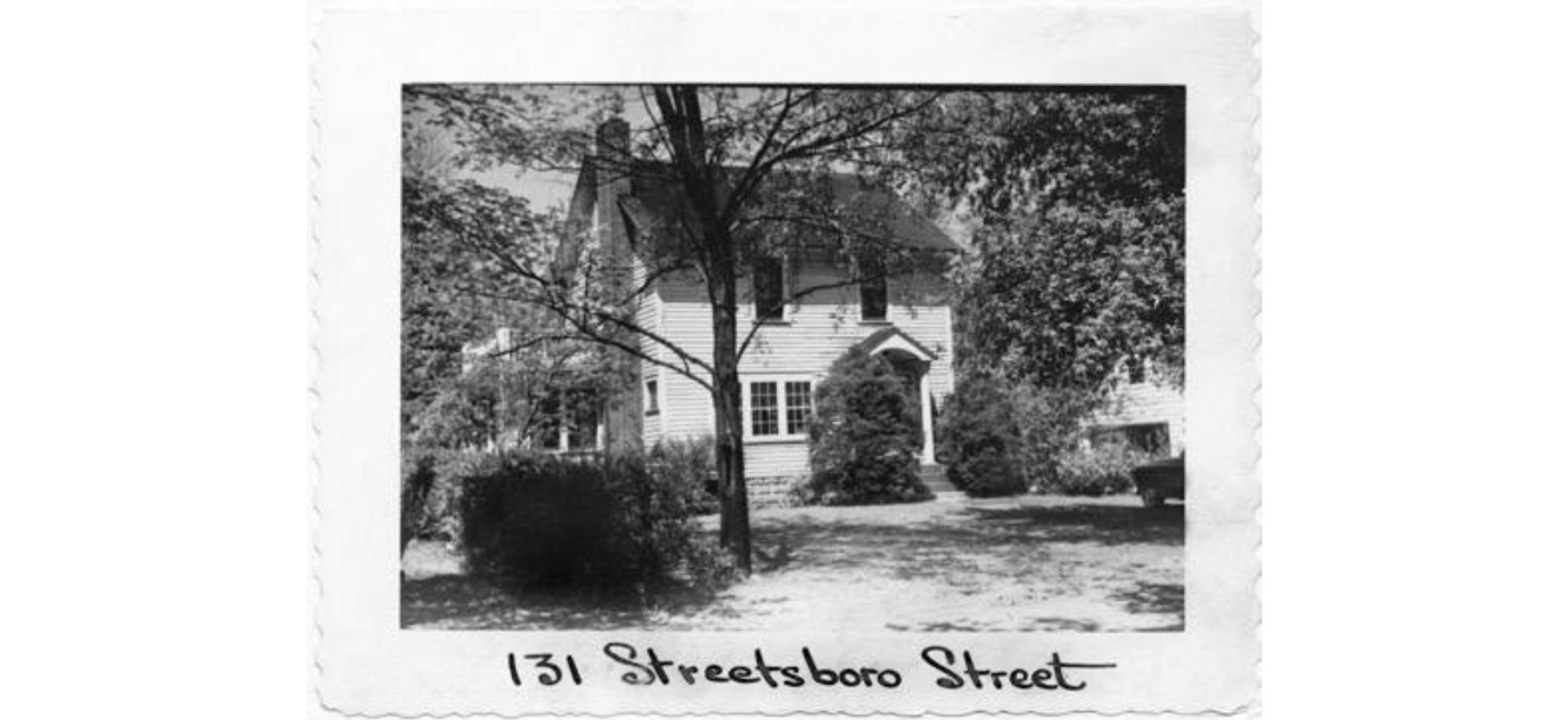 | This two story home was likely built in the 1920s. One of the home's early inhabitants was photographer Arthur J. Trory (1879-1967), whose collection is housed at the Kent State University archives. Trory received his first camera at the age of 10 and continued to take photographs for the rest of his life. He photographed a wide variety of subjects, including portraits of his family, buildings and nature scenes. Educators Gene (d.1951) and Thalia (1906-1981) Nelson also lived here at one time. Gene was a superintendent at Twinsburg and Hudson Schools. Thalia taught third grade in the Hudson schools for 21 years. | Summit Memory | |
132 Streetsboro Street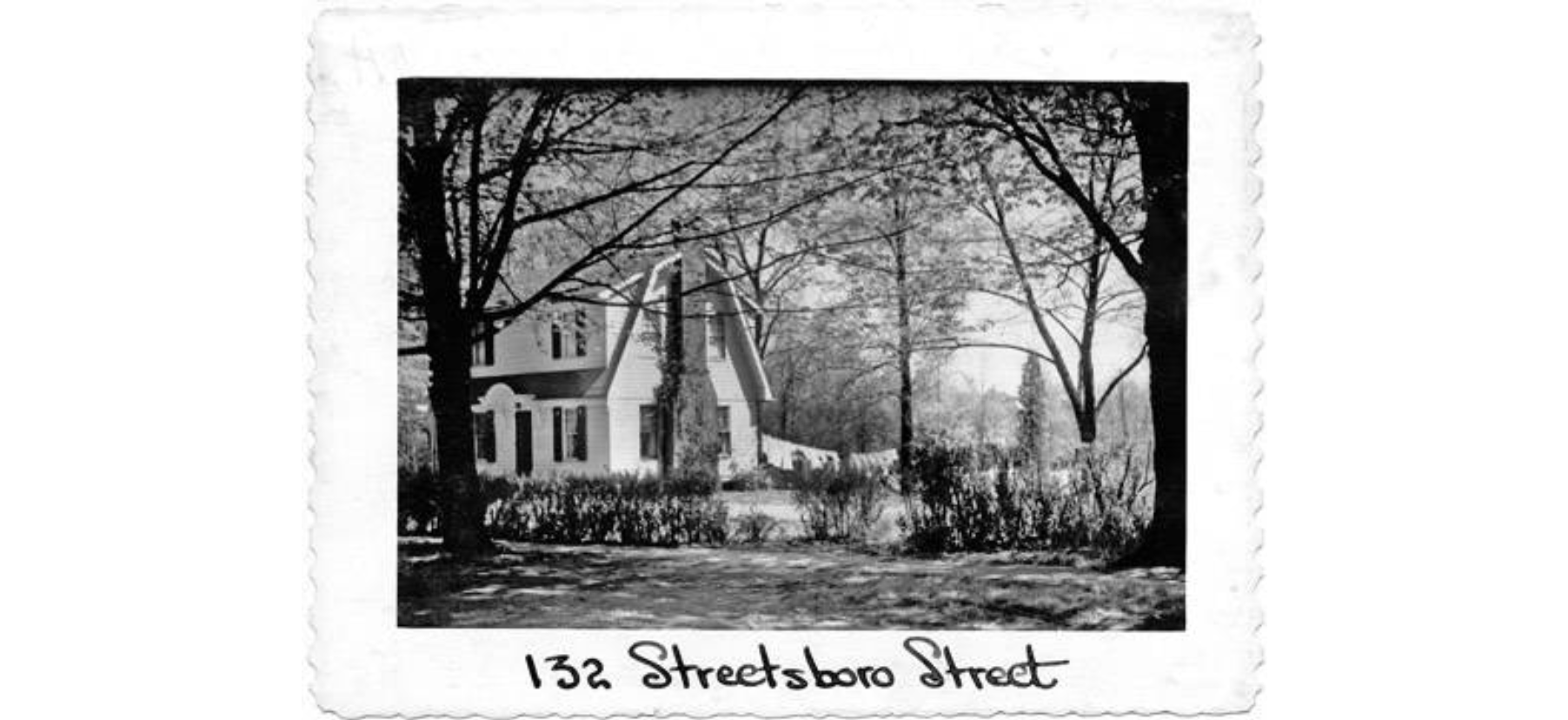 | Little is known about this home. Sara Monfort (1873-1958) once resided here. Monfort, an English immigrant, was mother-in-law to fair-skinned and red-haired architect Max Montgomery (1887-1946). Gerald D. Gibson (1902-1966), a liquor license inspector, also once called it home. | Summit Memory | |
135 Streetsboro Street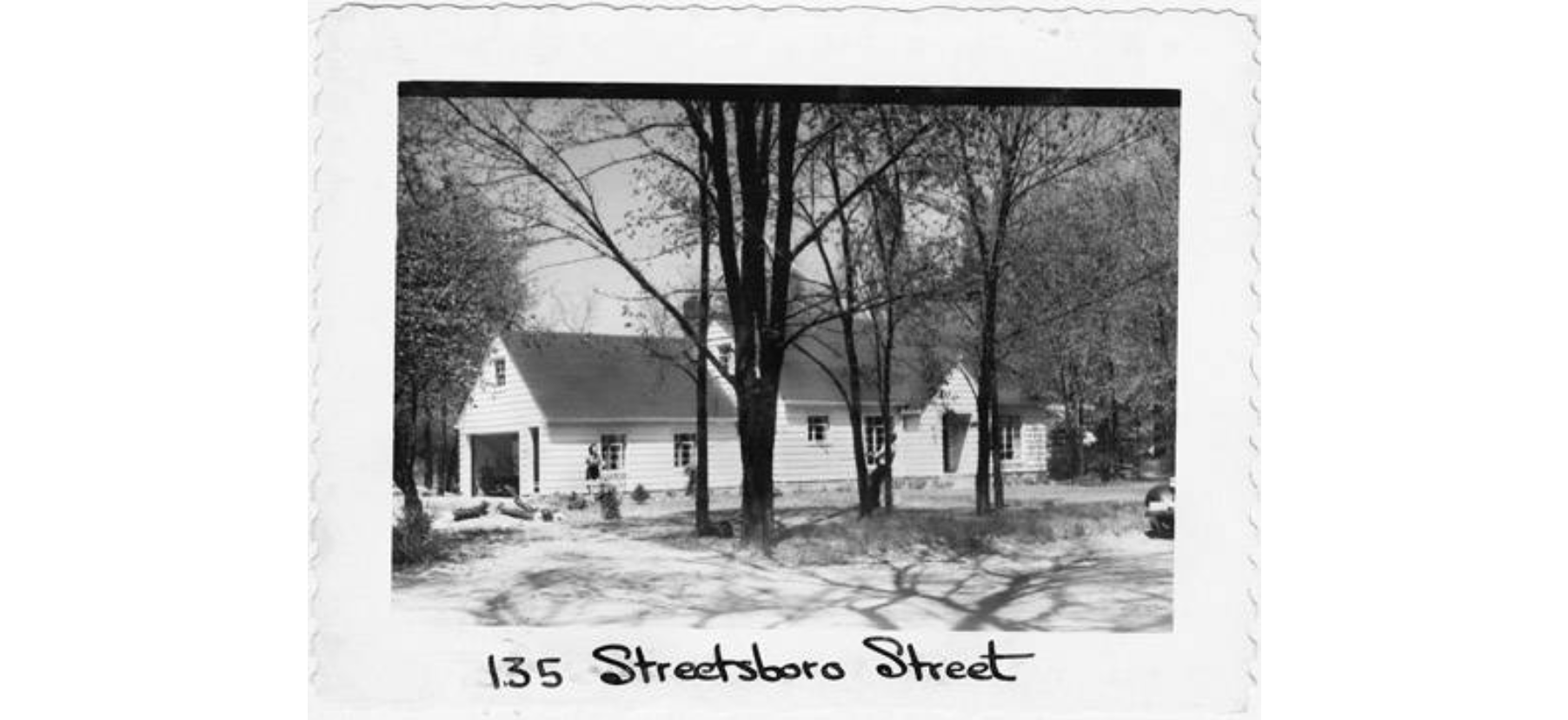 | Donald Edward Whitehead (1915-1999), was likely the first owner of this circa-1948 home. Whitehead owned an Oldsmobile business in Hudson and also ran the Amoco gas station which was at one time called the Hudson Lubritorium. He later owned DEW Manufacturing Inc. and Custom Cycle Inc., producers of Harley- Davidson motorcycle parts, in California. | Summit Memory | |
145 Streetsboro Street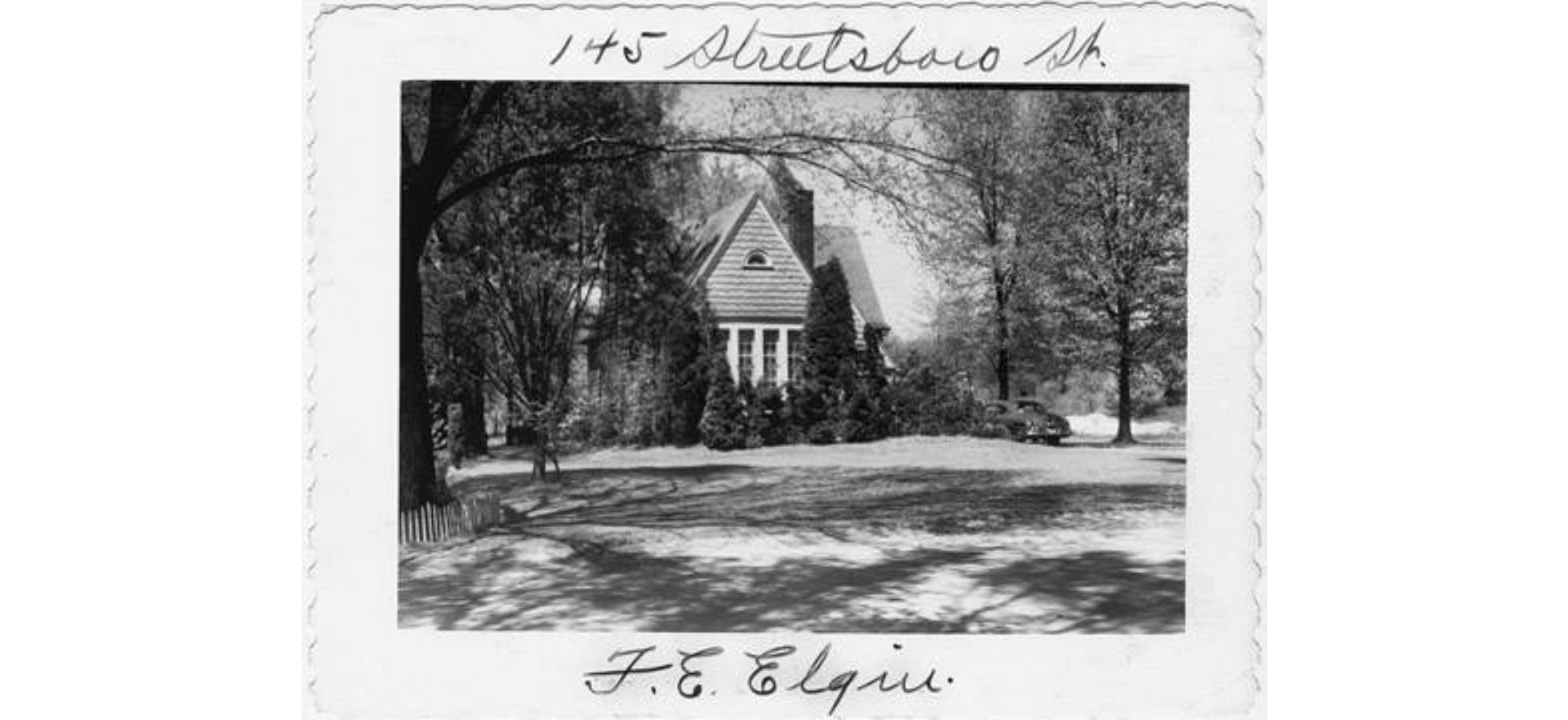 | The first owners of this late-1920s home were likely Francis (1897-1990) and Marjorie L. (1906-1980) Elgin. Francis was a banker at First National Bank of Akron and Marjorie worked for 45 years in the Summit County auditor's office. | Summit Memory | |
| 154 Streetsboro Street Edgar Birge Ellsworth / Porter B. Hall House 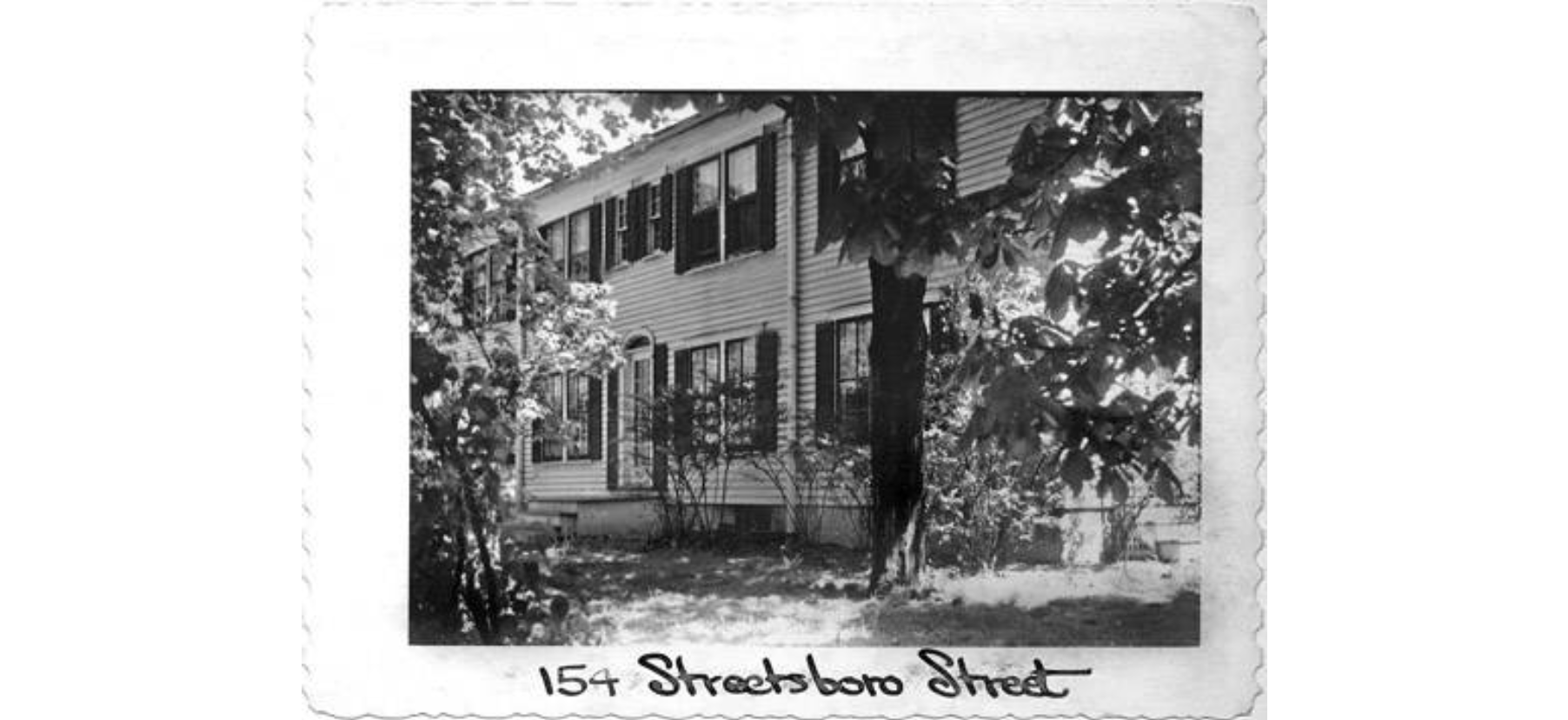 | This Federal-styled house was owned by former Hudson mayor Edger Birge Ellsworth (1815-1883), who was physically disabled. The home was built in the 1850s and it is speculated that it was utilized as a boarding house for railroad workers because Ellsworth actually resided elsewhere. Ellsworth's grandson Ransom J. Ellsworth (1843-1863), who served as a sergeant with the 64 Ohio Volunteer Infantry, died in battle at Missionary Ridge, Tennessee, during the Civil War. It is believed that Ransom once resided here for some time. | Hudson Heritage Association Summit Memory | |
163 Streetsboro Street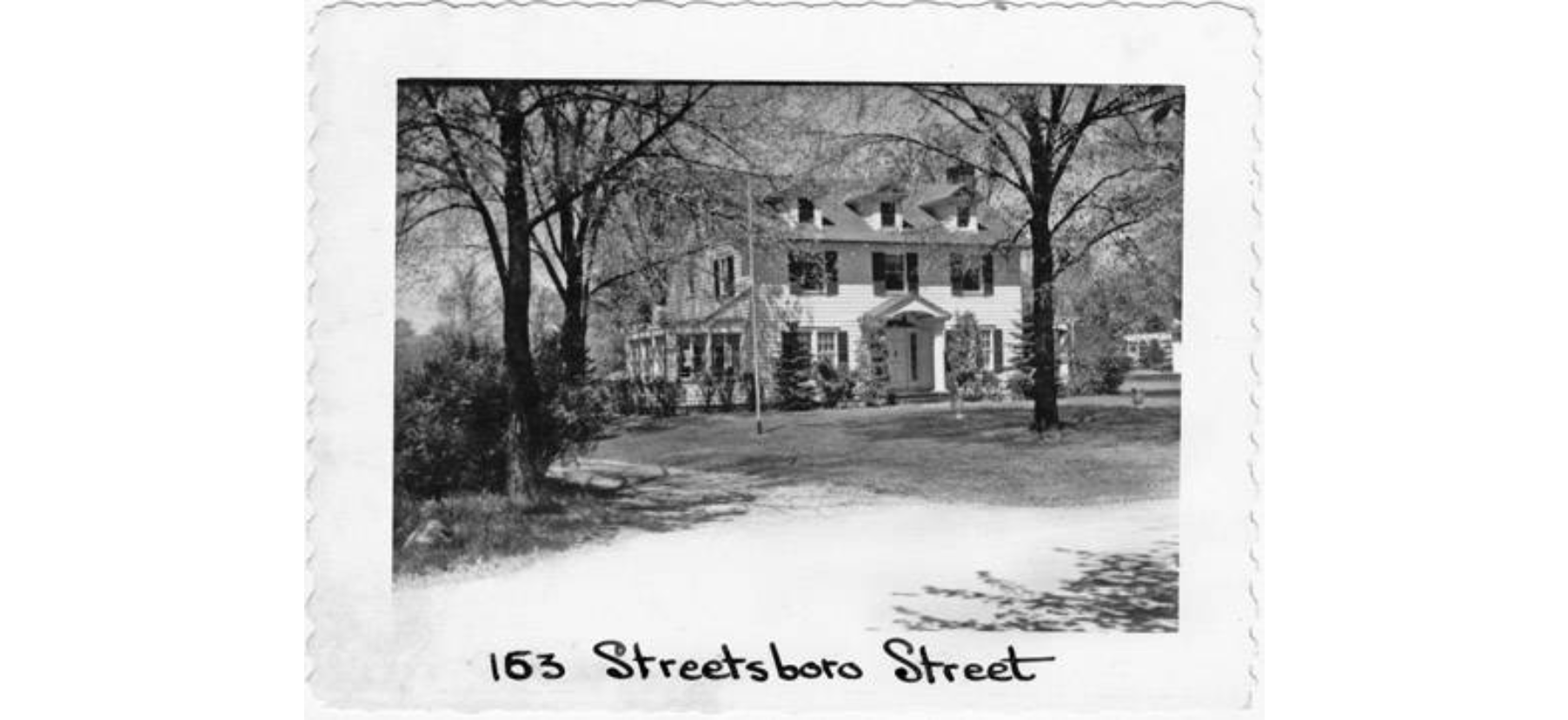 | This house is one of the "Three Sisters," three homes built sequentially for railroad employees in the 1920s. The other two are at 169 and 175 Streetsboro St. | Summit Memory | |
169 Streetsboro Street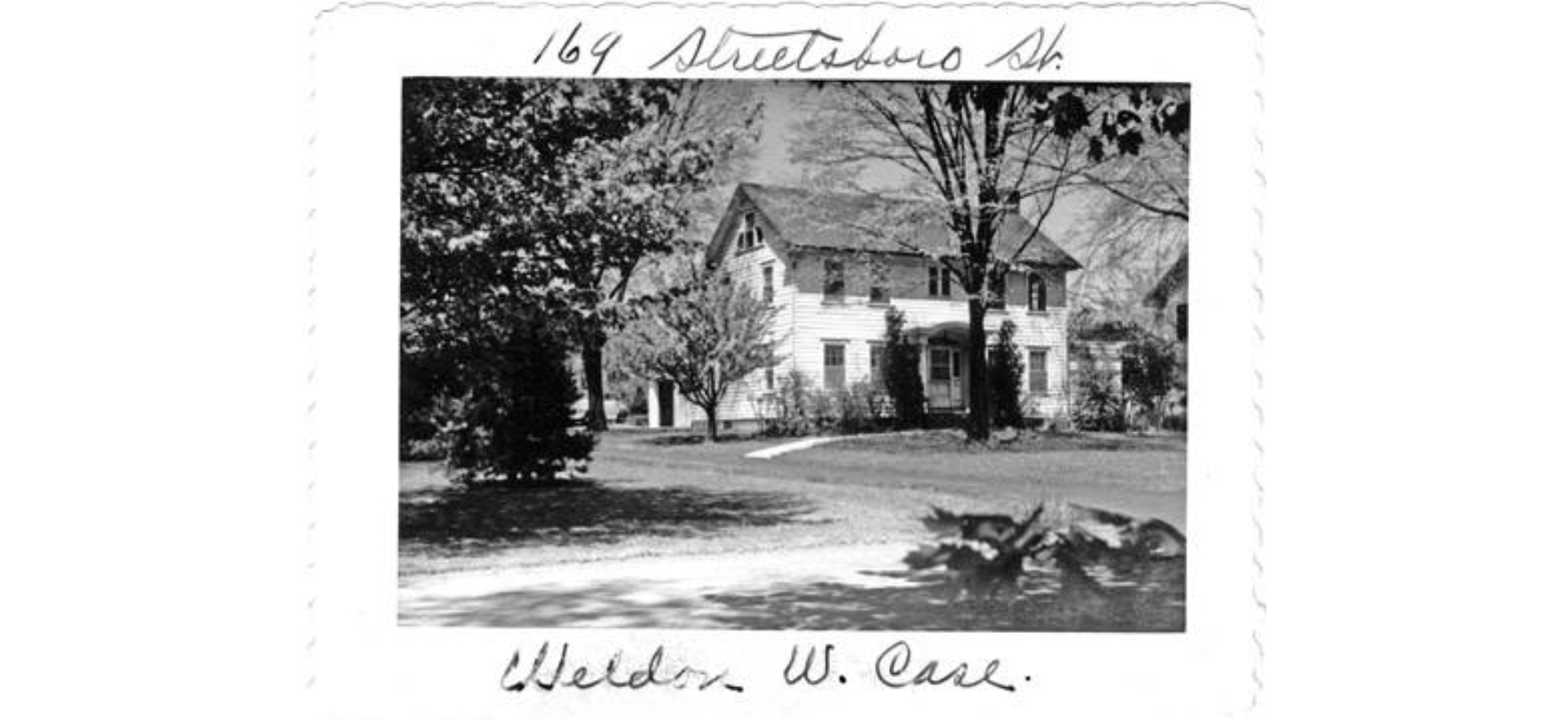 | This house is one of the "Three Sisters," three homes built sequentially for railroad employees, including Harry J. Alman (b. 1883), in the 1920s. The other two are at 163 and 175 Streetsboro St. | Summit Memory | |
175 Streetsboro Street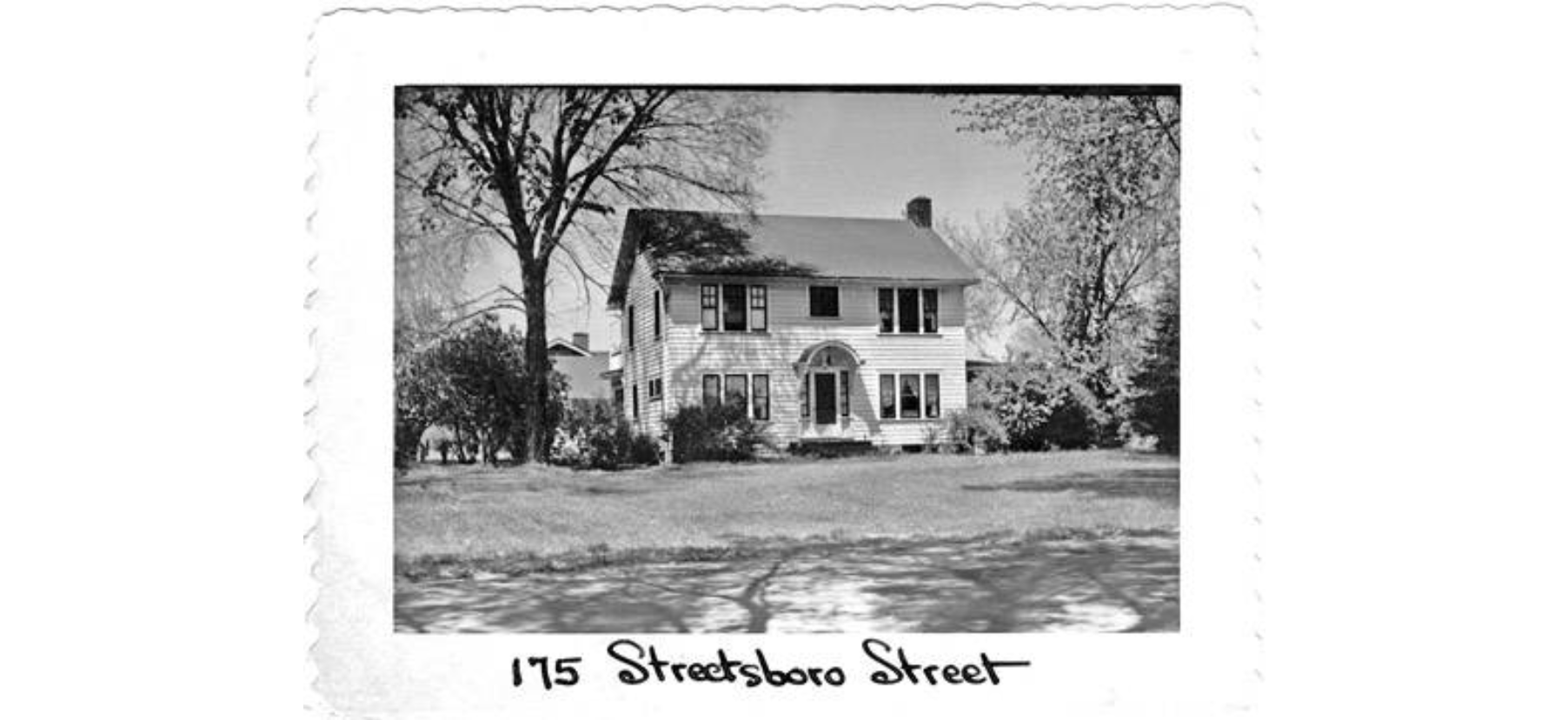 | This house is one of the "Three Sisters," three homes built sequentially for railroad employees in the 1920s. The other two are at 163 and 169 Streetsboro St. Charles Elliman (1882-1967) and family were the first to occupy this home. Elliman was musically gifted and, after his retirement from a 46-year clerkship with the railroad, he became involved with the Hudson Community Band and the Hudson High School Music program. | Summit Memory | |
185 West Streetsboro Street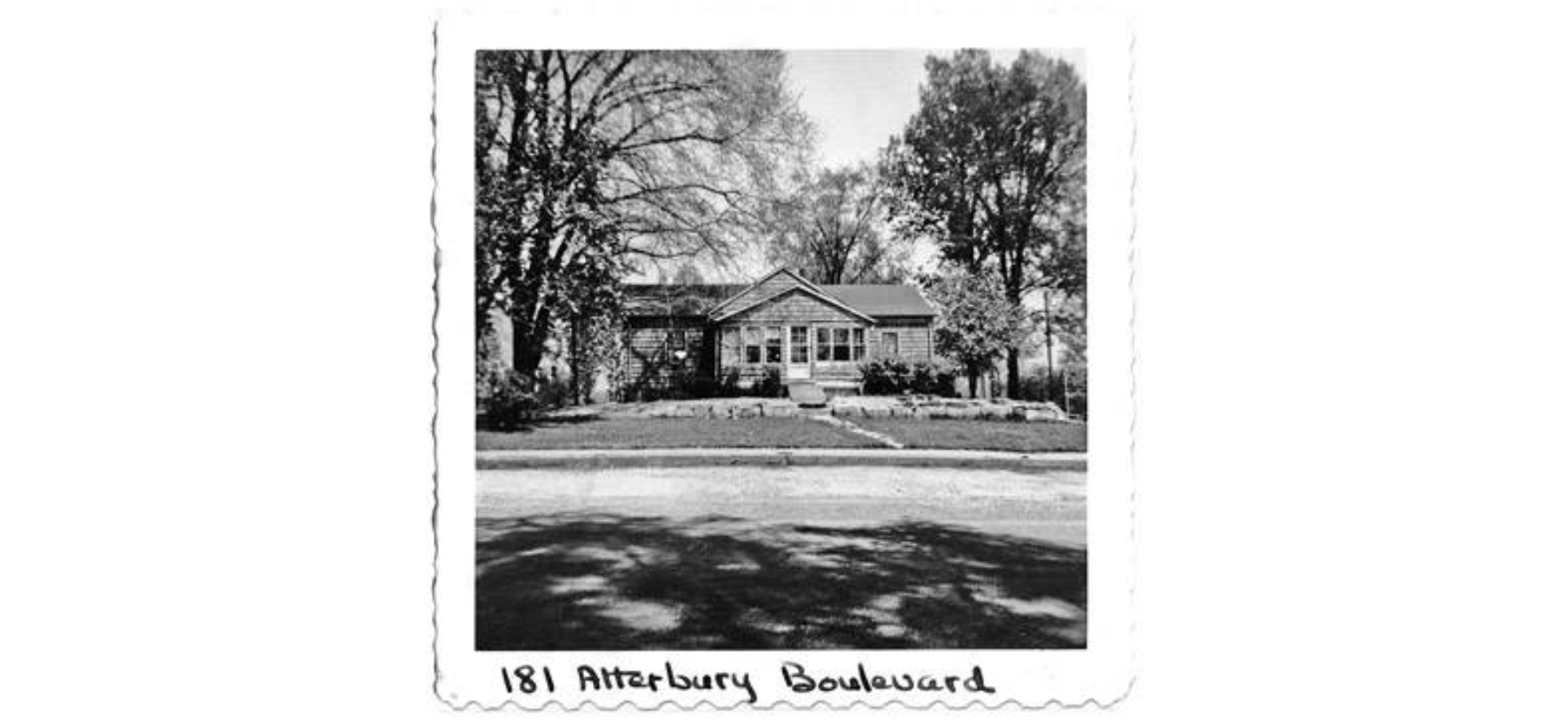 | Pennsylvania Railroad conductor Ralph Ringler (1899-1957) once lived in this circa-1948 home. | Summit Memory | |
186 West Streetsboro Street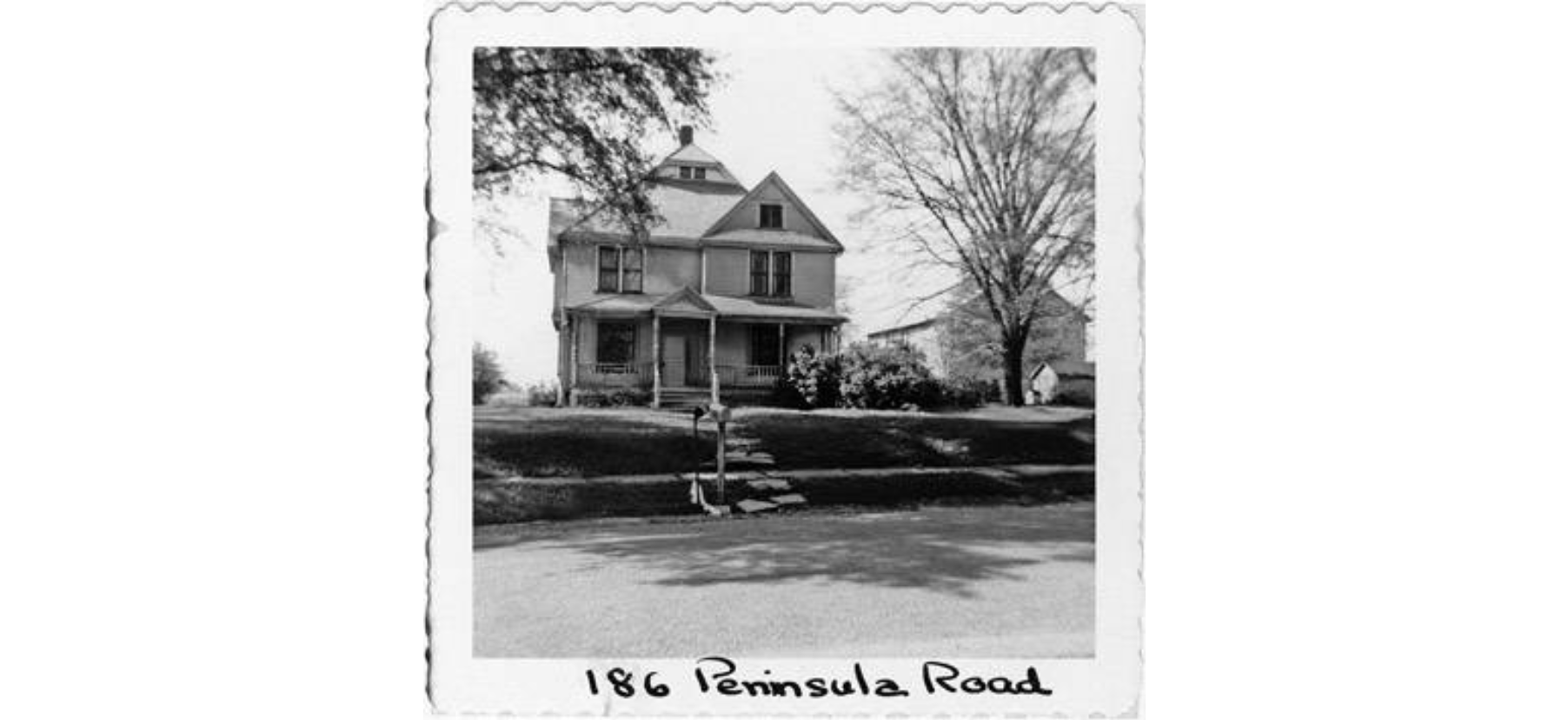 | Alfred Limber (1883-1948), an attorney for Firestone, once lived here. The house no longer exists. | Summit Memory | |
187 Streetsboro Street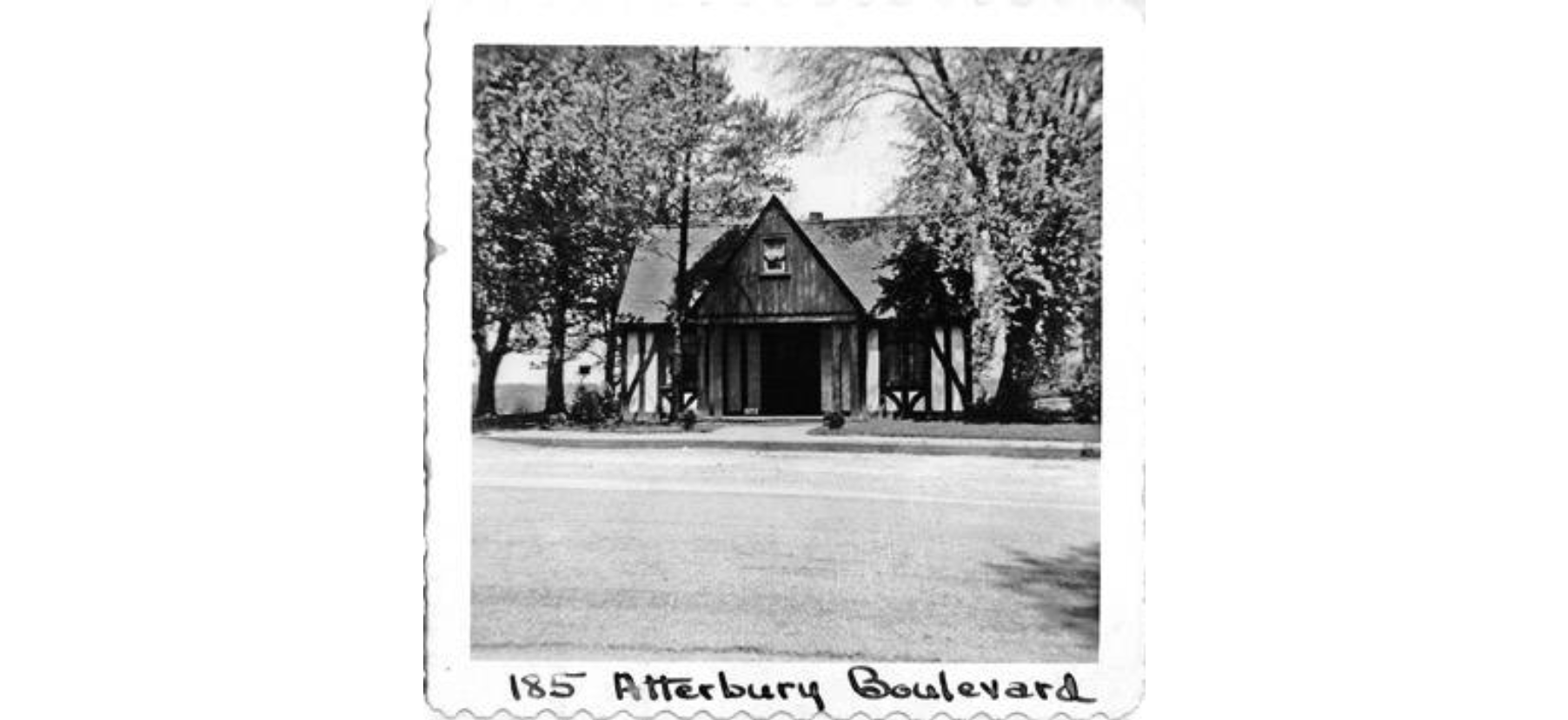 | The construction of this building is likely dated to the late 1920s. It once functioned as the Lake Forest housing development field office for the S.H. Kleinman Realty Co. | Summit Memory | |
197 Streetsboro Street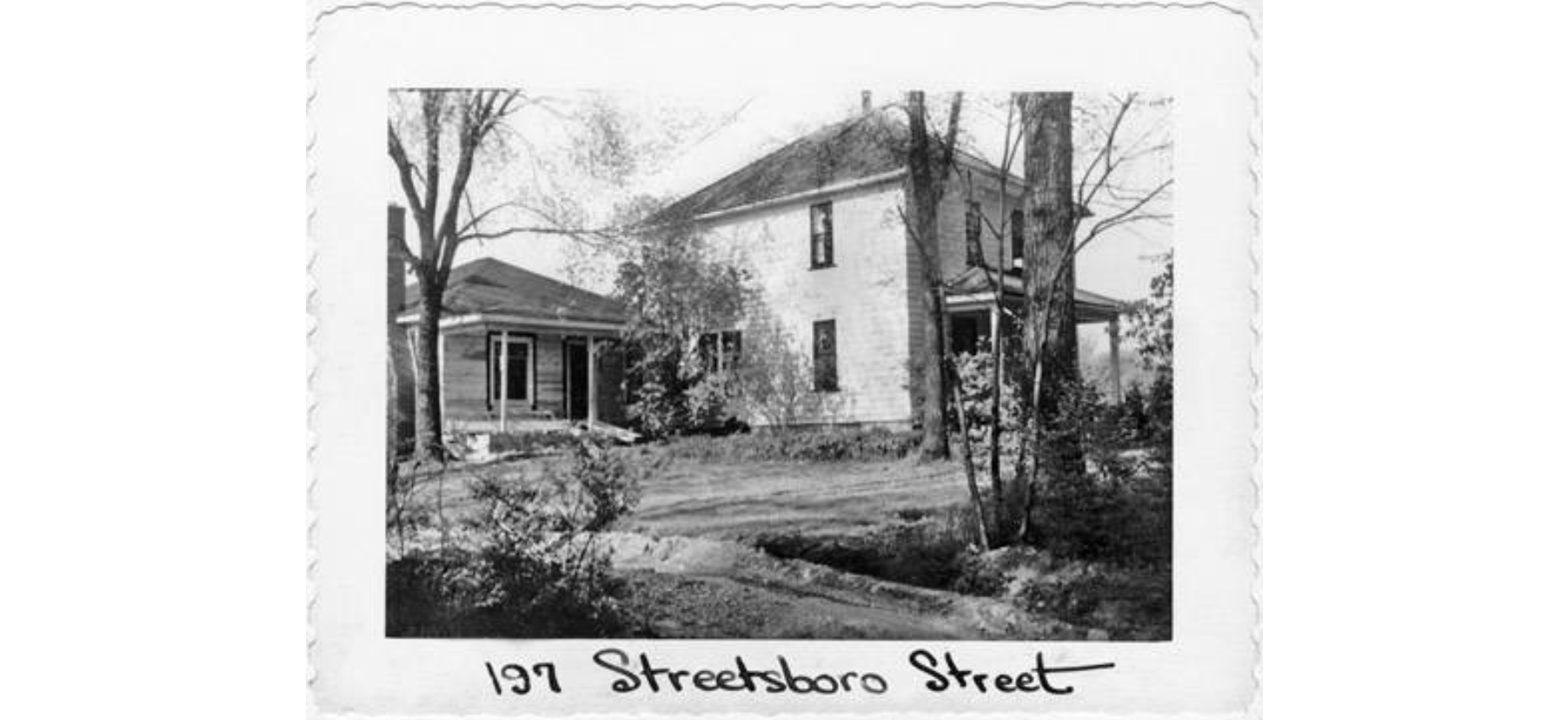 | This two-story, turn-of-the-century home with a plain hipped roof was once home to George Dunn Martin (1883-1939), who worked in an Akron insurance office as an adjuster for many years. | Summit Memory | |
200 Streetsboro Street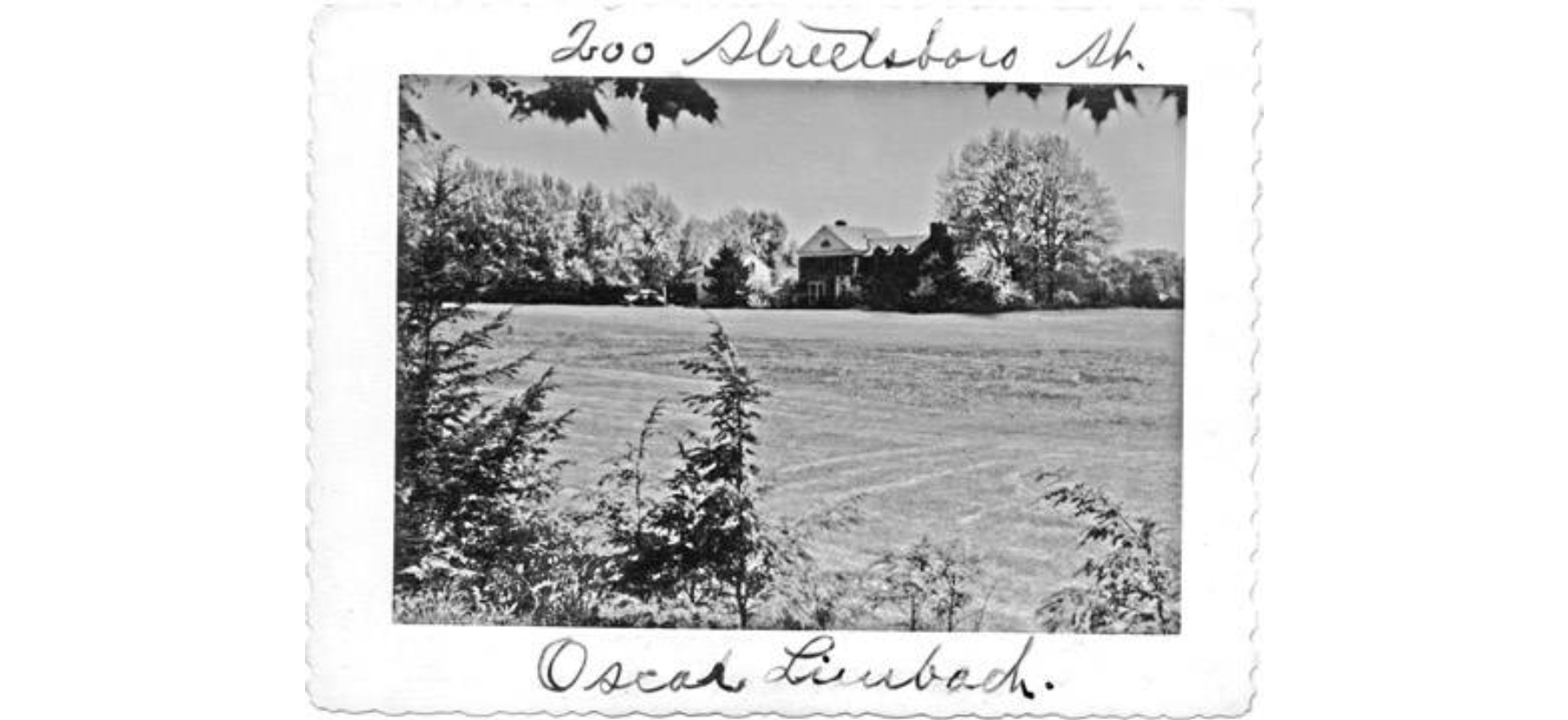 | Oscar Limbach (1902-1956) once lived in this circa-1940s home. Limbach was a patent attorney who served as the finance chairman of the Hudson School Board and as the first chairman of Hudson's Community Service organization. | Summit Memory | |
| 204 East Streetsboro Street Jeremiah Brown House 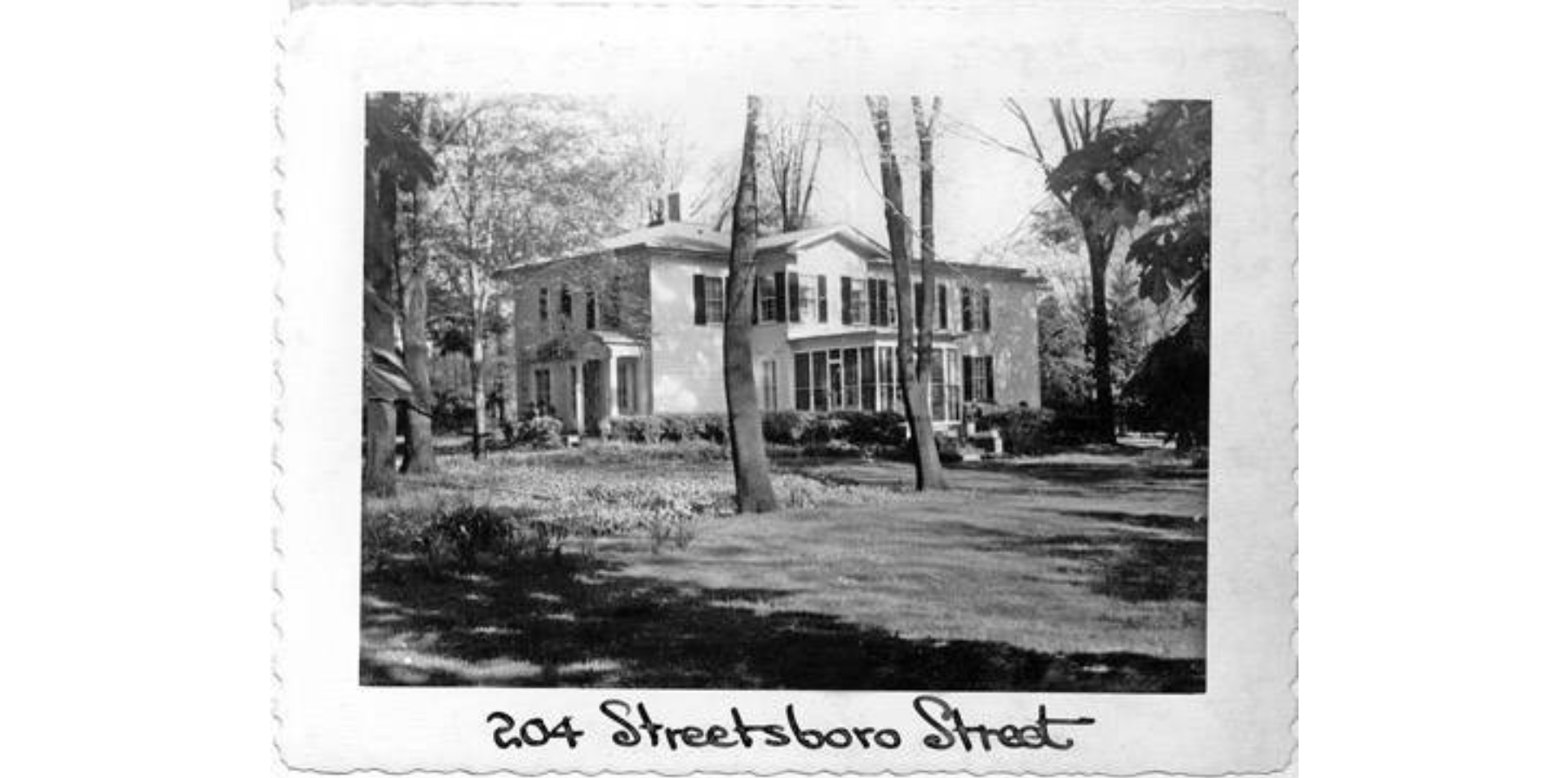 | This was the home of Jeremiah Brown (1819-1874), John Brown's half-brother. Noah Carter (1831-1891) built the home for Jeremiah and his family in 1853. It is said that John Brown stored guns in the barn on the property. (That particular barn no longer exists.) The home was also likely a station on the Underground Railroad. Jeremiah dabbled in many business ventures and was involved with the Sanitary Commission during the Civil War. Later, he contracted tuberculosis and traveled alone to California to seek a cure, but sadly died there. A hundred years later, the descendants of Jeremiah Brown still live in Hudson. | Hudson Heritage Association Summit Memory | |
220 Streetsboro Street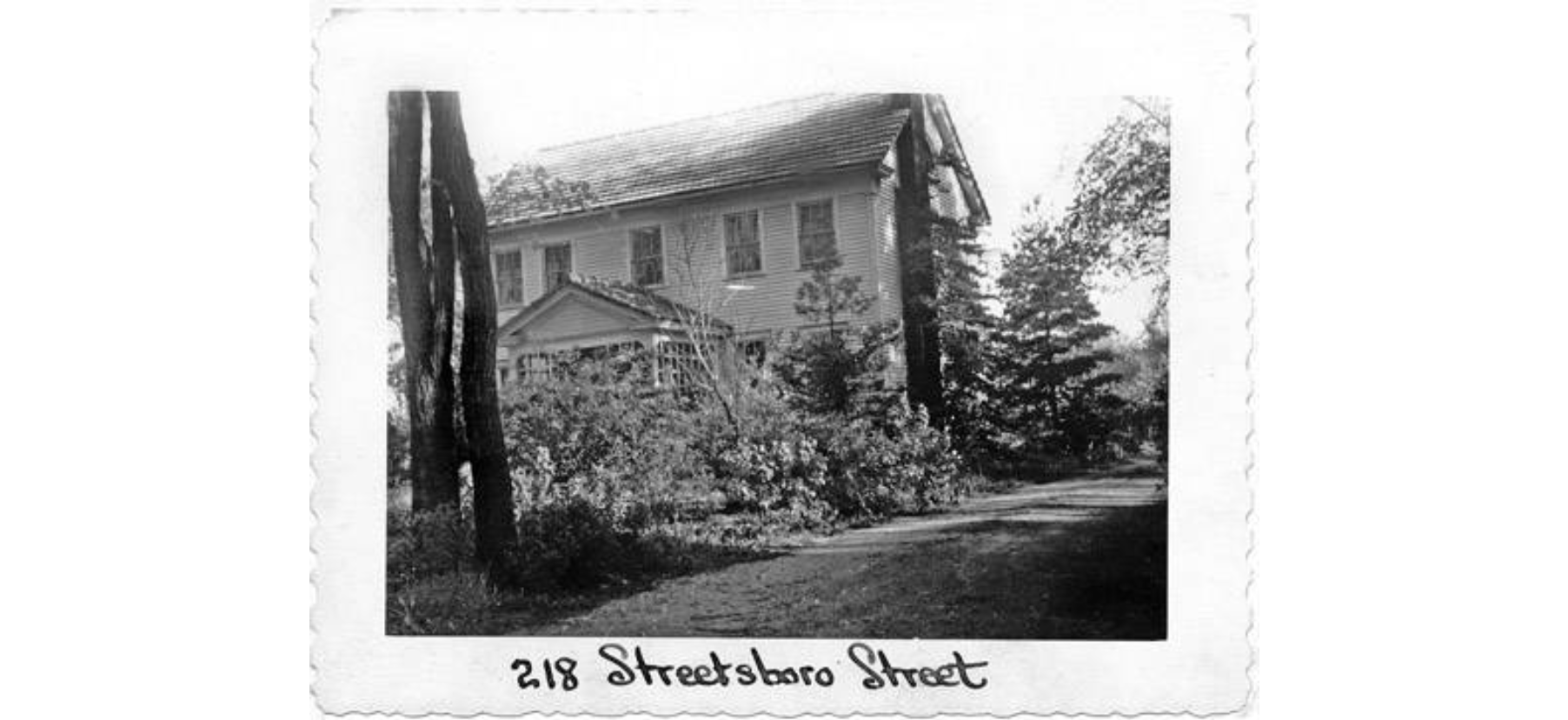 | Piano teacher Marie Foster Barnes (1886-1968) once lived in this home. Barnes was the daughter of Hudson Mayor Horace Foster (1828-1909). In 2000, a Hudsonite published a limited edition of Barnes' diary, which she kept during the summer of 1899 at the age of 13. The home dates to around 1910. | Summit Memory | |
224 Streetsboro Street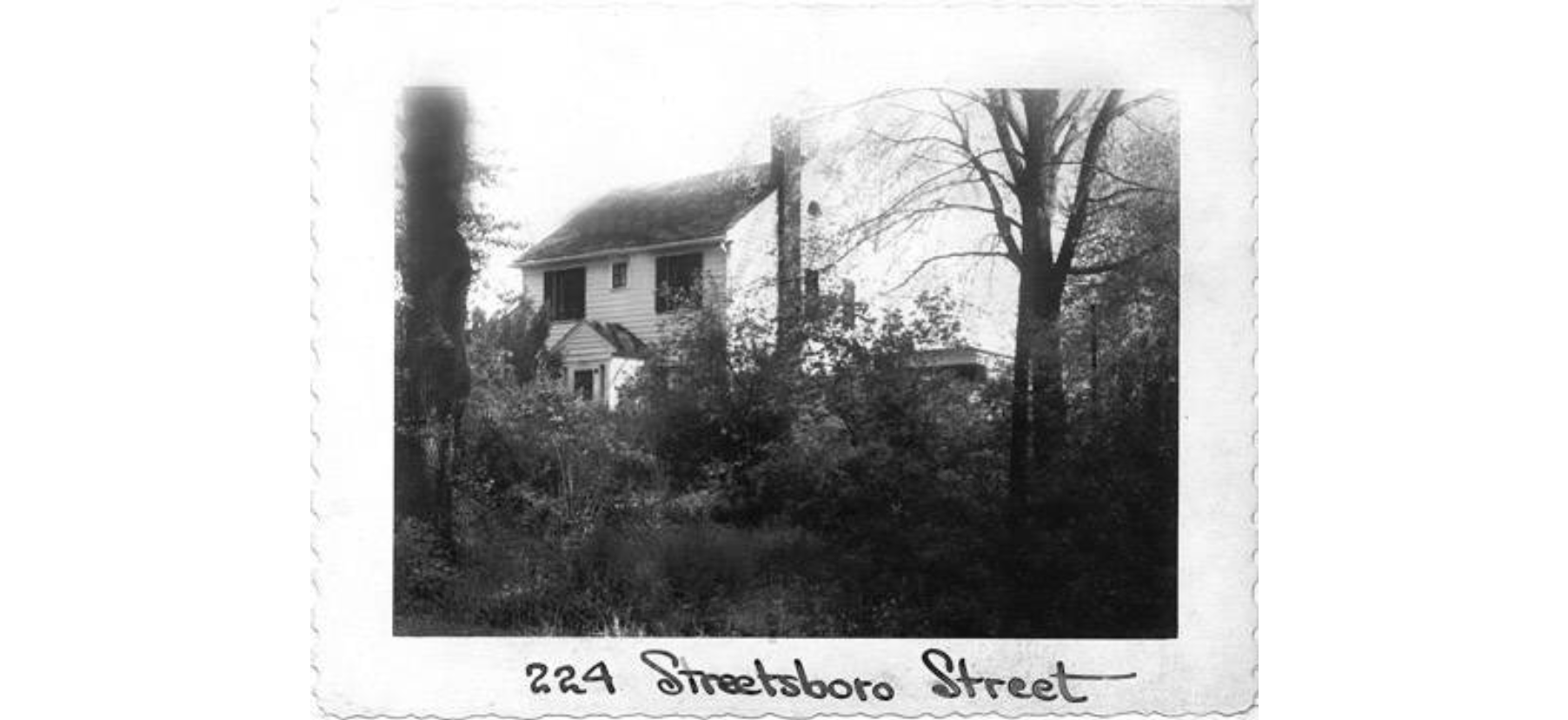 | This home no longer exists. Mabel M. (1890-1974) and W. Ward (1894-1971) Marsh once lived here. Both Mabel and W. Ward were writers for "The Plain Dealer." Mabel was a reporter and W. Ward was a movie critic. | Summit Memory | |
225 Streetsboro Street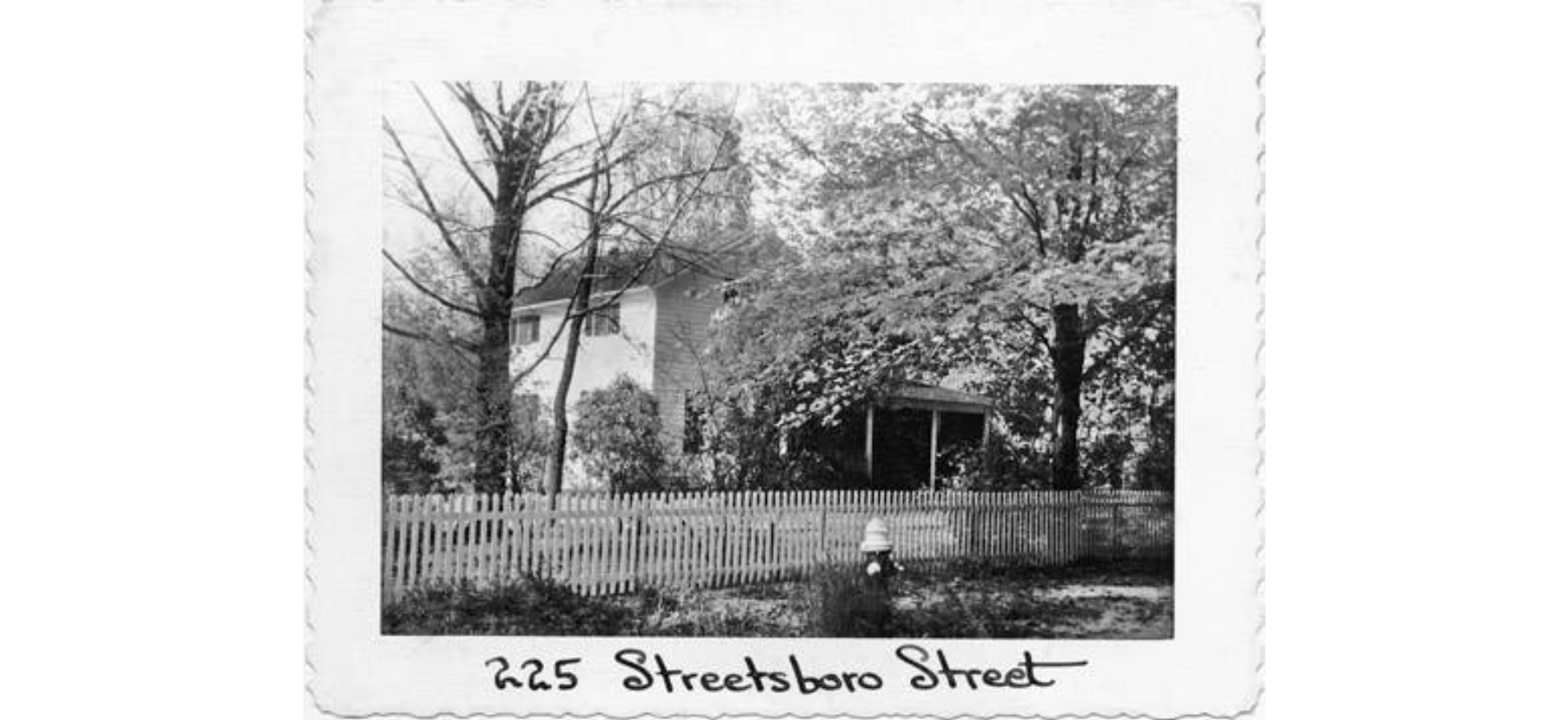 | This home was constructed sometime in the 1890s. Irish immigrant John (1855-1923) and his wife, Margaret Lacey Brewster (1858-1942), a native of Hudson, once resided here. Later, exporter Carl O. Brandes (dates) lived in this home. | Summit Memory | |
228 Streetsboro Street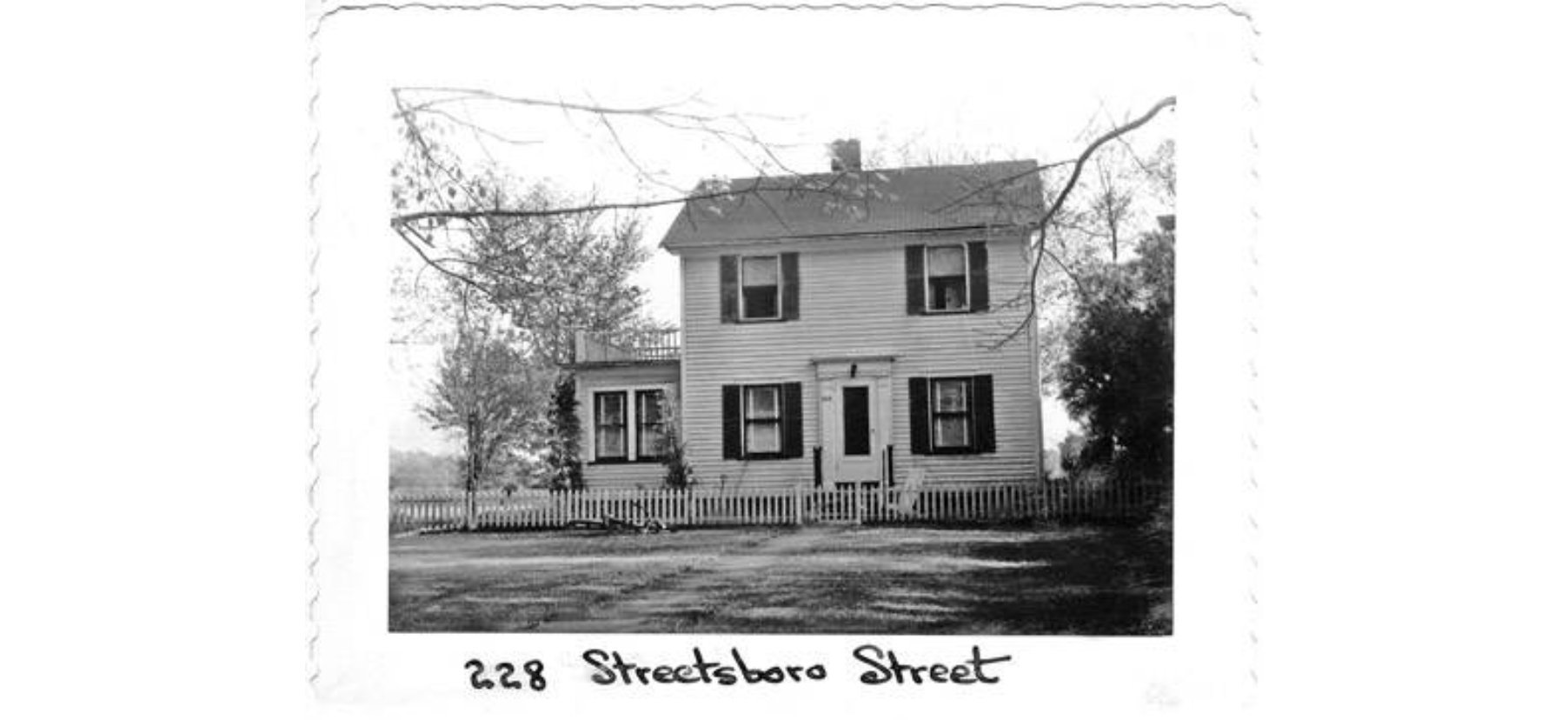 | Dunbar Glass employee George William Young (dates) once resided in this late-1920s colonial. Young's brother Rolland Smith (1933-2005), who was a Korean War veteran and a machinist for the Puget Sound Naval Shipyard, also probably occupied this home. | Summit Memory | |
232 Streetsboro Street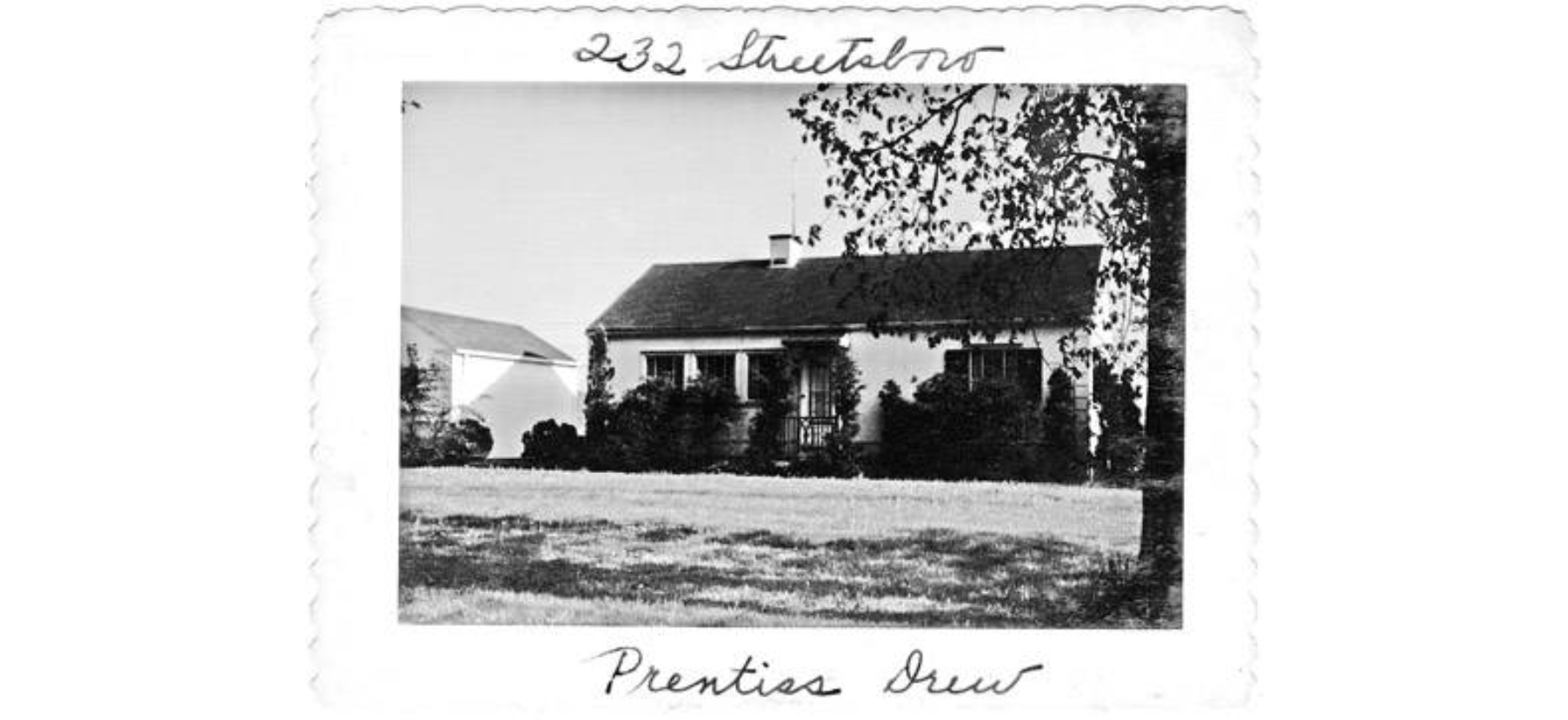 | Accountant Prentiss J. Drew (1913-1983) once lived in this 1940s home. In addition to his accounting business, Drew also served as Hudson Township clerk for 32 years. Drew was also treasurer of the Hudson Library & Historical Society, president of the Hudson Rotary Club and Hudson Chamber of Commerce and deacon of the First Congregational Church. | Summit Memory | |
233 Streetsboro Street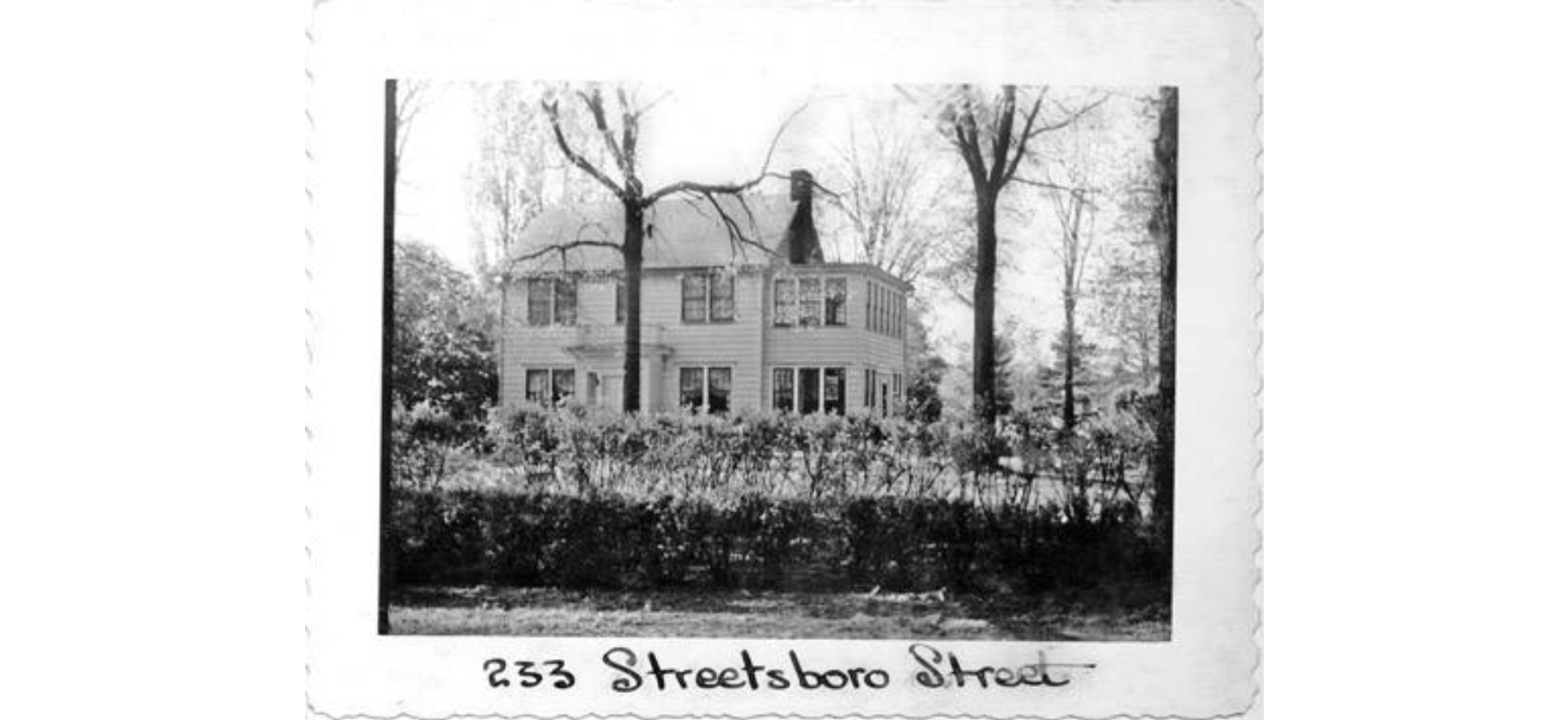 | This turn-of-the-century home once belonged to Marion Agnes Bacon (1904-1997), a Hudson preschool operator. Bacon also once worked in advertising for the "Hudson Times." | Summit Memory | |
234 Streetsboro Street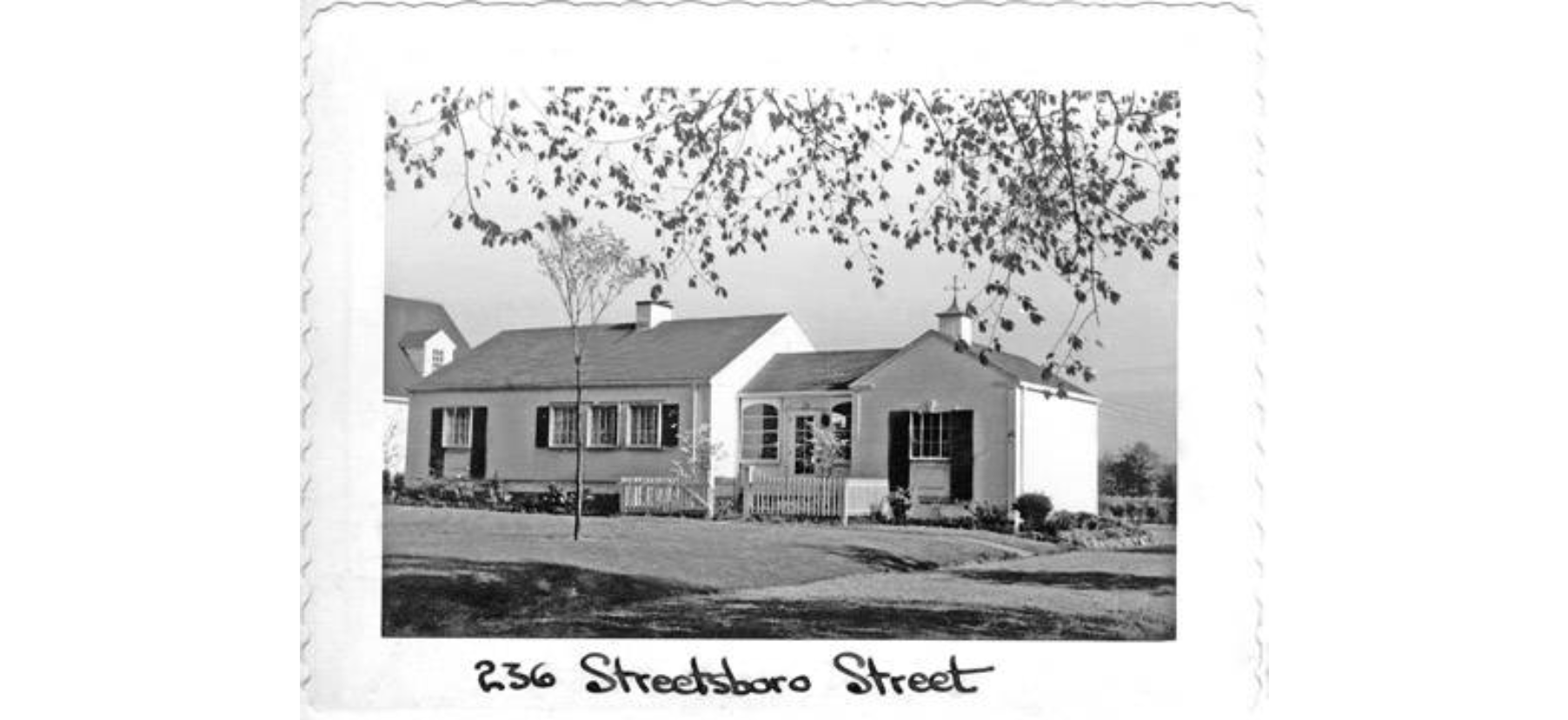 | John (1906-1972) and Helen Schlacter (1904-2002) once lived in this circa-1941 home. John was an employee at Goodrich. Helen hosted many dinner parties here. The home's address used to be 236 Streetsboro St. | Summit Memory | |
| 243 East Streetsboro Street Ransom M. Sanford Farmhouse 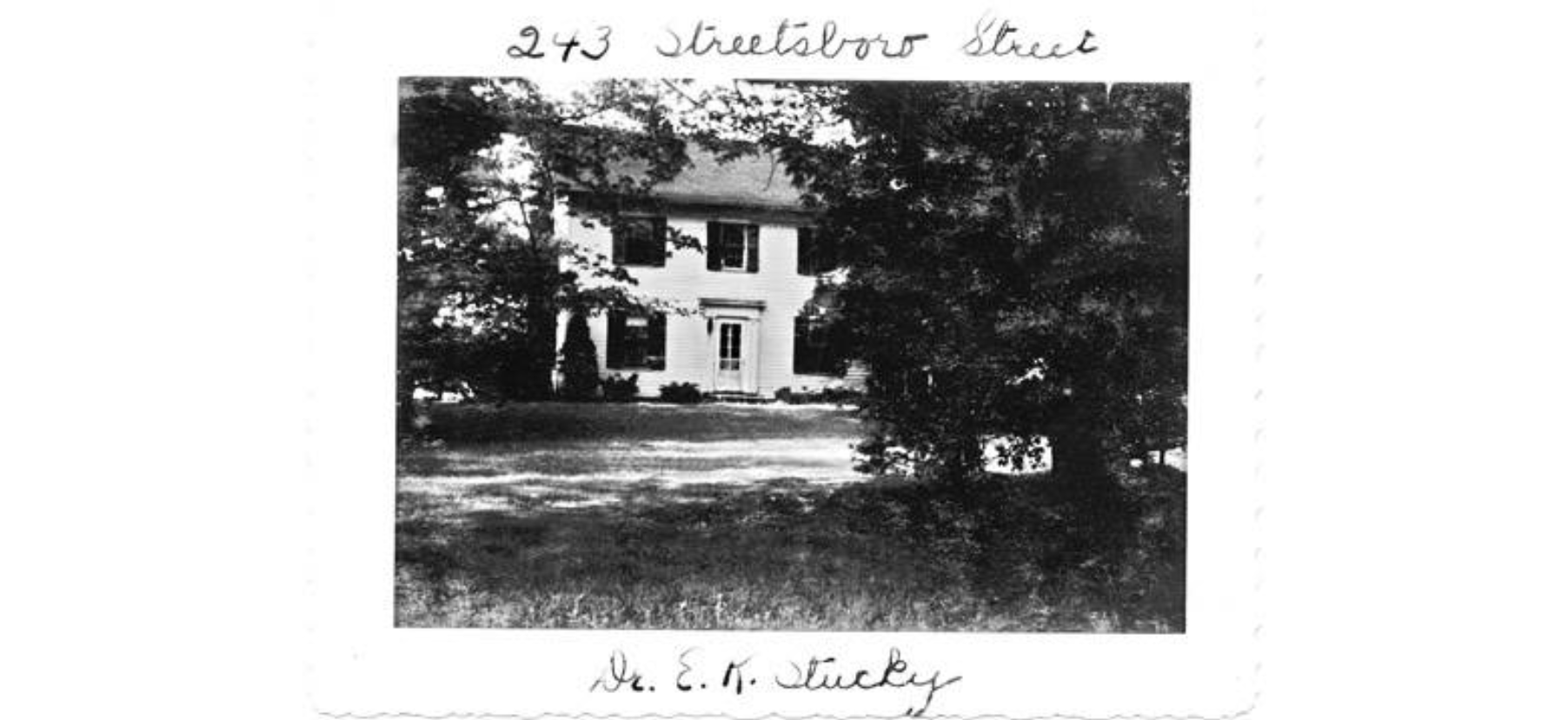 | This late-Greek Revival home dates to 1859 and was built by carpenter-joiner Ransom Sanford (1830-1912). Not only was Sanford responsible for building or repairing most of the homes in Hudson at the time, he built Seymour Straight's (1816-1896) cheese factories. A drawing of the home can be found in the 1874 Combination Atlas Map of Summit County. | Hudson Heritage Association Summit Memory | |
244 Streetsboro Street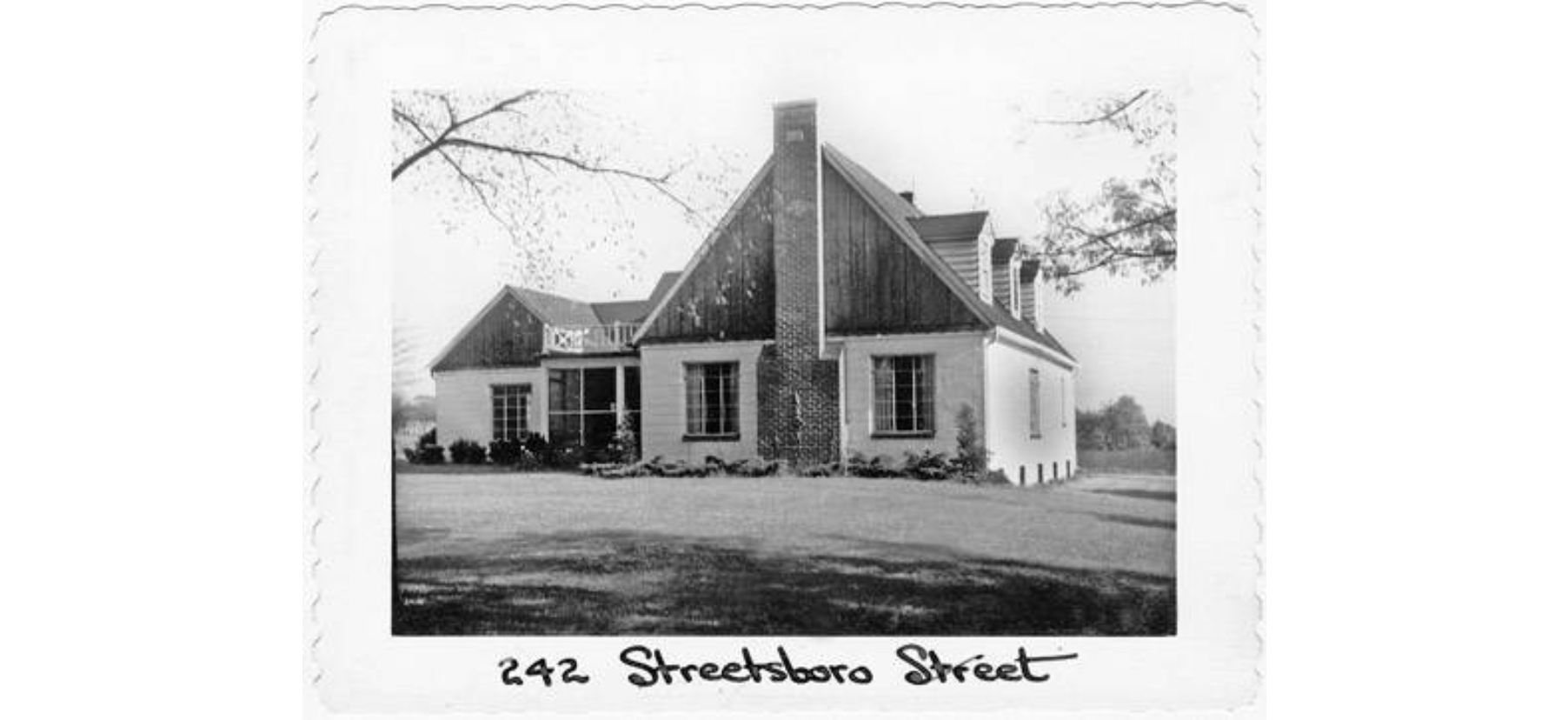 | This home no longer exists. The York family once resided here, including Rev. Forrest W. York (1911-1967), minister at the First Congregational Church in Hudson. | Summit Memory | |
258 Streetsboro Street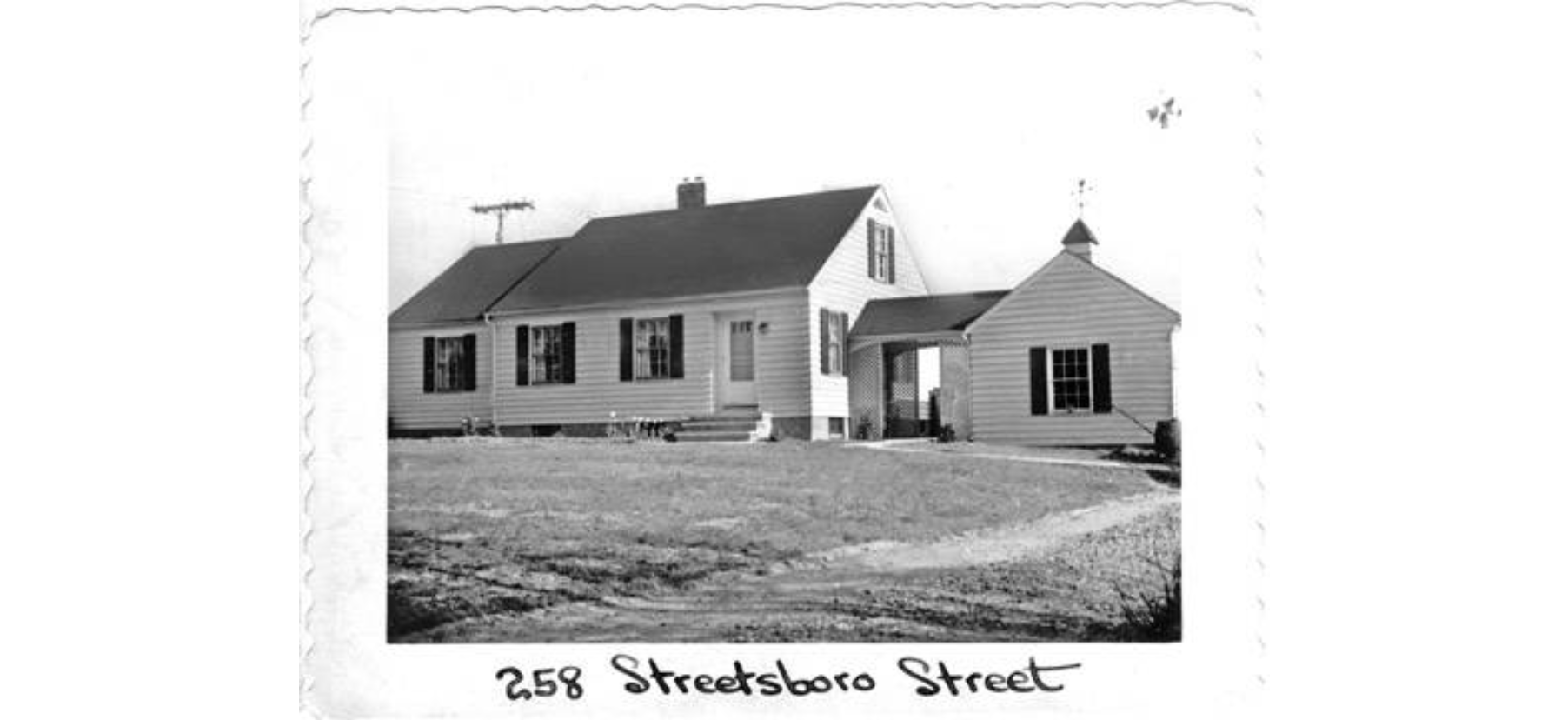 | This circa-1949 Cape Cod once belonged to Irvin F. Williams (1896-1969), assistant manager at Cleveland Trust Bank. | Summit Memory | |
265 Streetsboro Street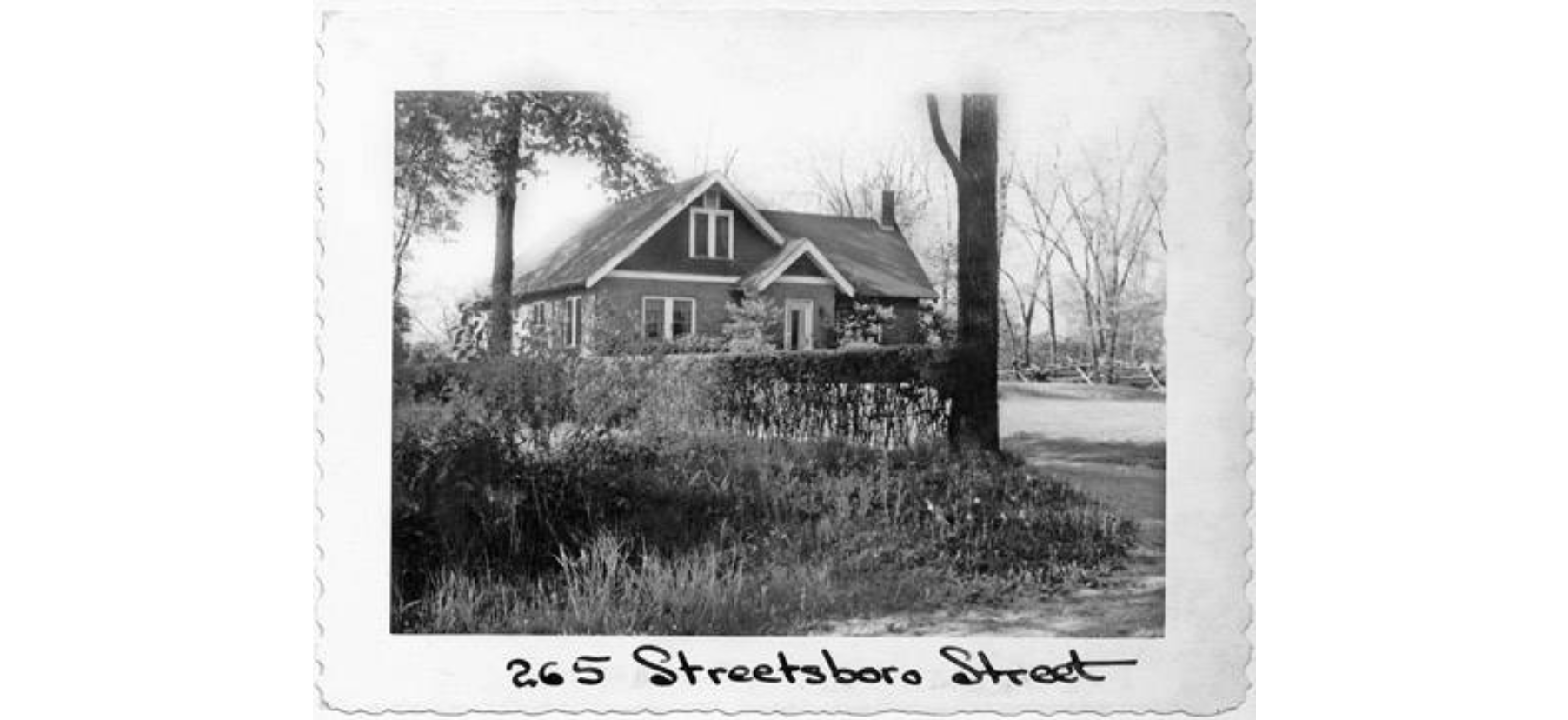 | Thomas E. Bissell (1892-1954), operator of an automobile repair and sales shop on Clinton Street and later Main Street., once resided in this circa-1924 home. He was likely the first owner. | Summit Memory | |
| 267 West Streetsboro Street Giles Curtiss House | Hudson Heritage Association | ||
285 Streetsboro Street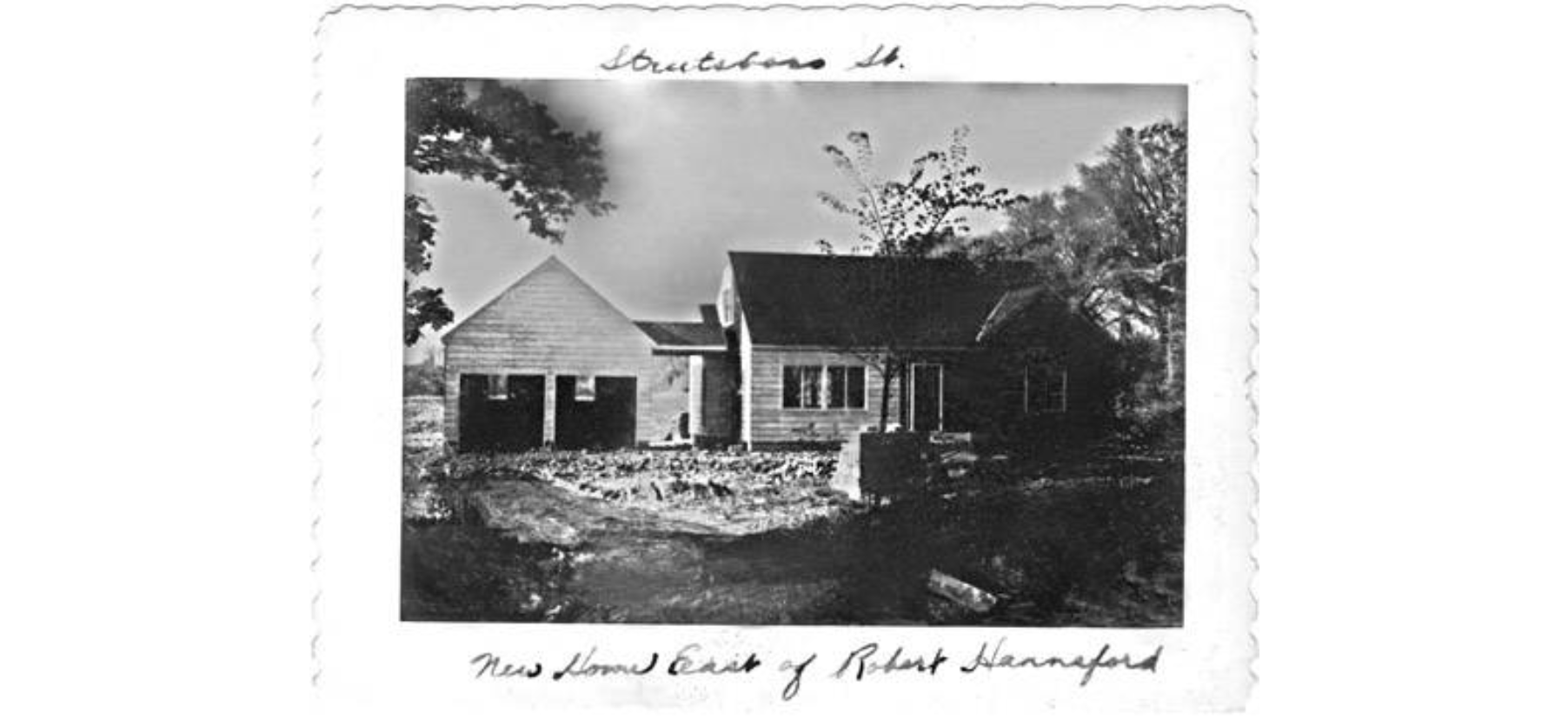 | This circa 1950 Cape Cod was once the home of food chemist John Ormond, Jr. (1905-1978). Ormand's career included employment at the General Ice Cream Co. in Syracuse, New York, the Research Laboratory of National Dairy in Baltimore, and Kraft Cheese Co. in Chicago. As a lecturer at the U.S. Quartermaster School during World War II, he helped develop dehydrated foods for the military. | Summit Memory | |
| 2199 East Streetsboro Street Hiram Thompson House | Hudson Heritage Association | ||
| 2449 East Streetsboro Street Draper-Bradford Farmhouse | Hudson Heritage Association | ||
| 5 Thirty Acres Lane The Pone House 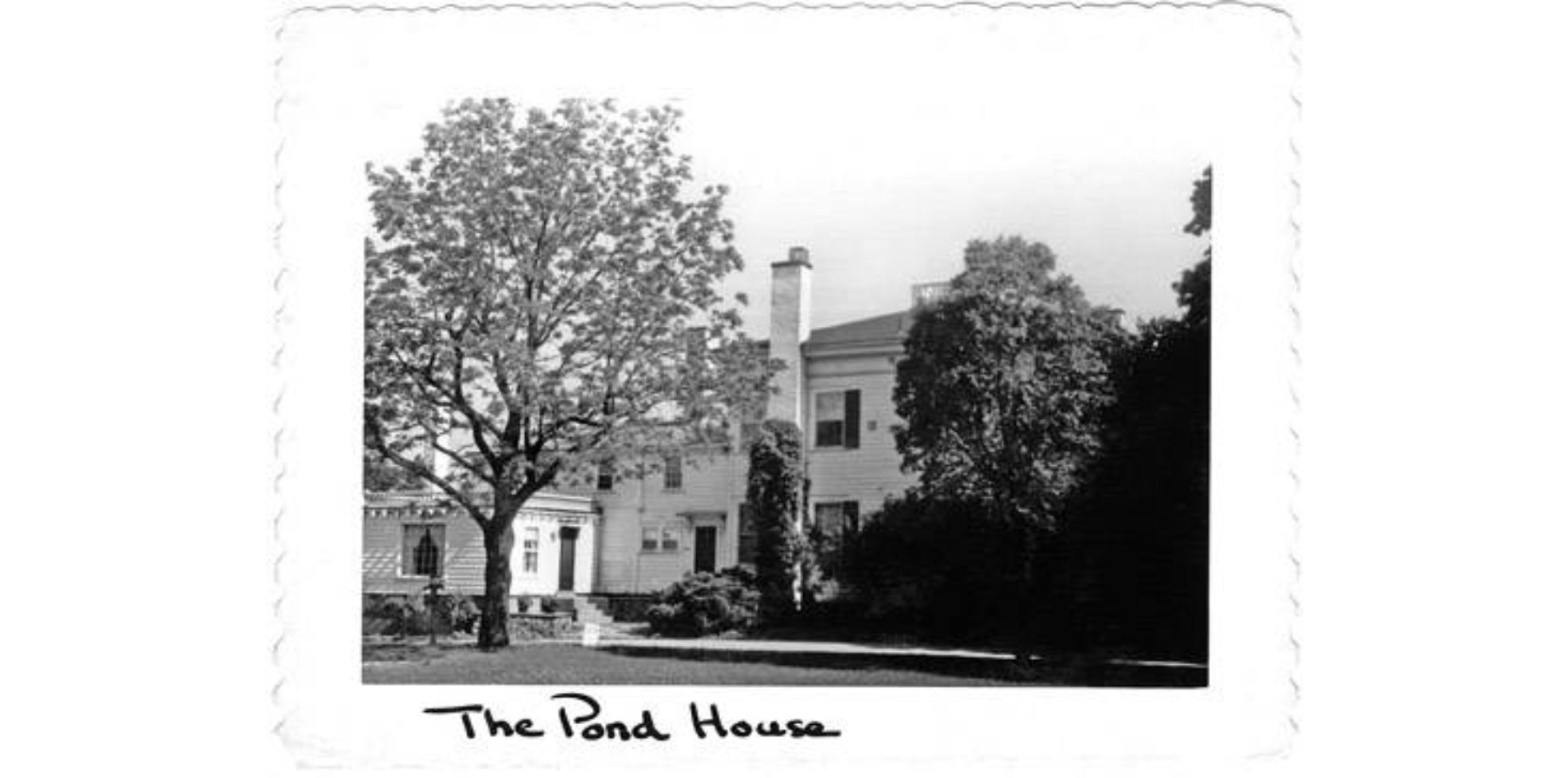 | Lemuel Porter (1775-1829) likely built this circa-1845 home for abolitionist John B. Clark (1793-1872), who was said to have served as a conductor on the Underground Railroad. Clark, a farmer, once served as a trustee of Hudson village and also was an associate judge of the Court of Common Pleas for Summit County. Daniel H. Pond (1870-1946), a colonel of Company C Fifth Ohio Volunteer Infantry in the Spanish-American War, also once lived here. Pond was related to the Fox family, who were contributors to the spiritualism movement. His wife, Mariam Buckner Pond Mackenzie (1892-1970), wrote a book about the family entitled, "Time is Kind: the Story of the Unfortunate Fox Family. | Summit Memory | |
| 16 Thirty Acres Lane Bishop Cottage 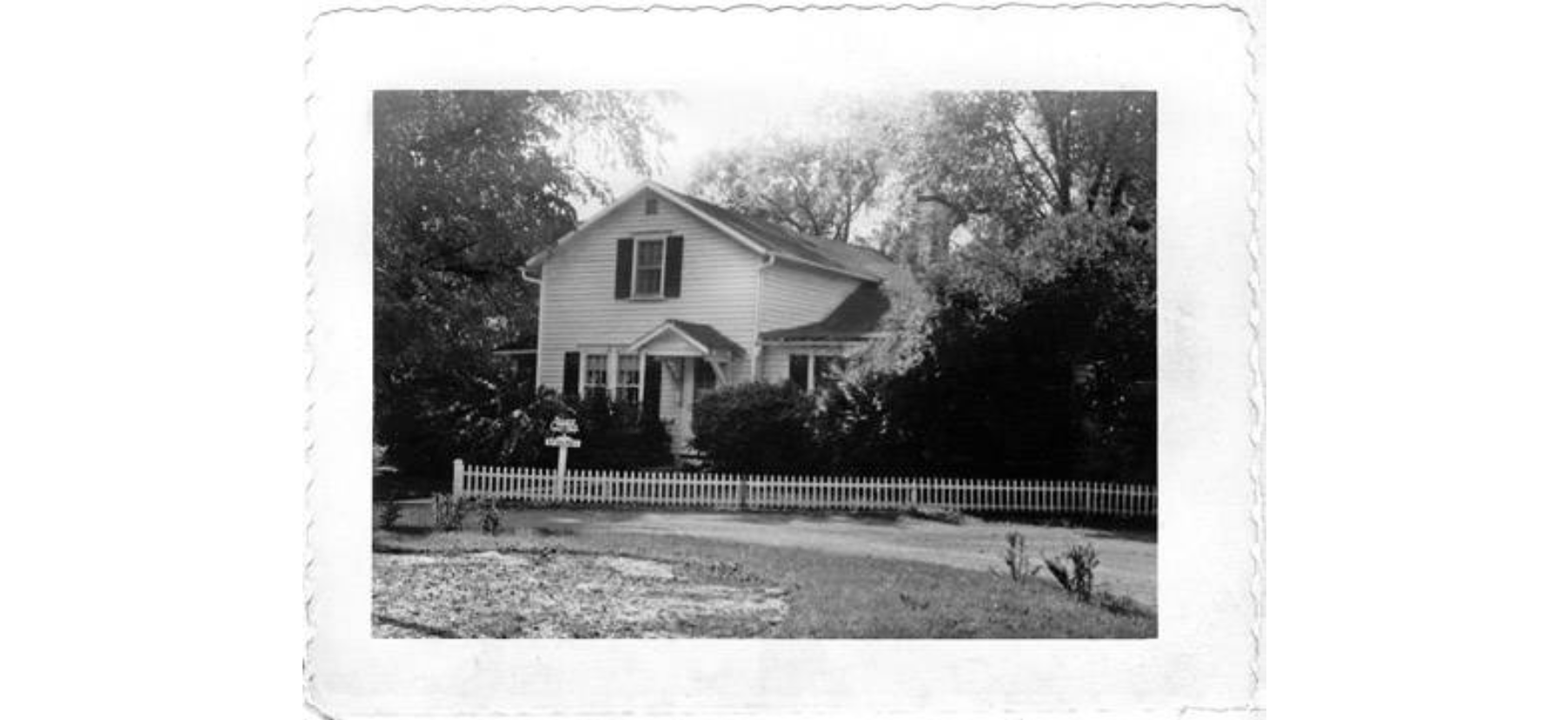 | This house used to sit across the street but was moved in the 1870s to make room for the home at 205 S. Main St. When it was moved, the circa-1853 home was used as a tenant house for farmer John B. Clark's (1793-1872) property. Dr. William E. Lower (1867-1948), who purchased it in 1911, once served in the Army as a first lieutenant and then served as a surgeon in the 9th U.S. Cavalry in the Philippines. Lower specialized in urology and was known among surgeons for his keyhole-sized incisions. In 1921 Lower, along with George Crile (1864-1943), Frank Bunts (1861-1928), and John Phillips (1879-1929) founded the Cleveland Clinic. | Summit Memory | |
21 Thirty Acres Lane 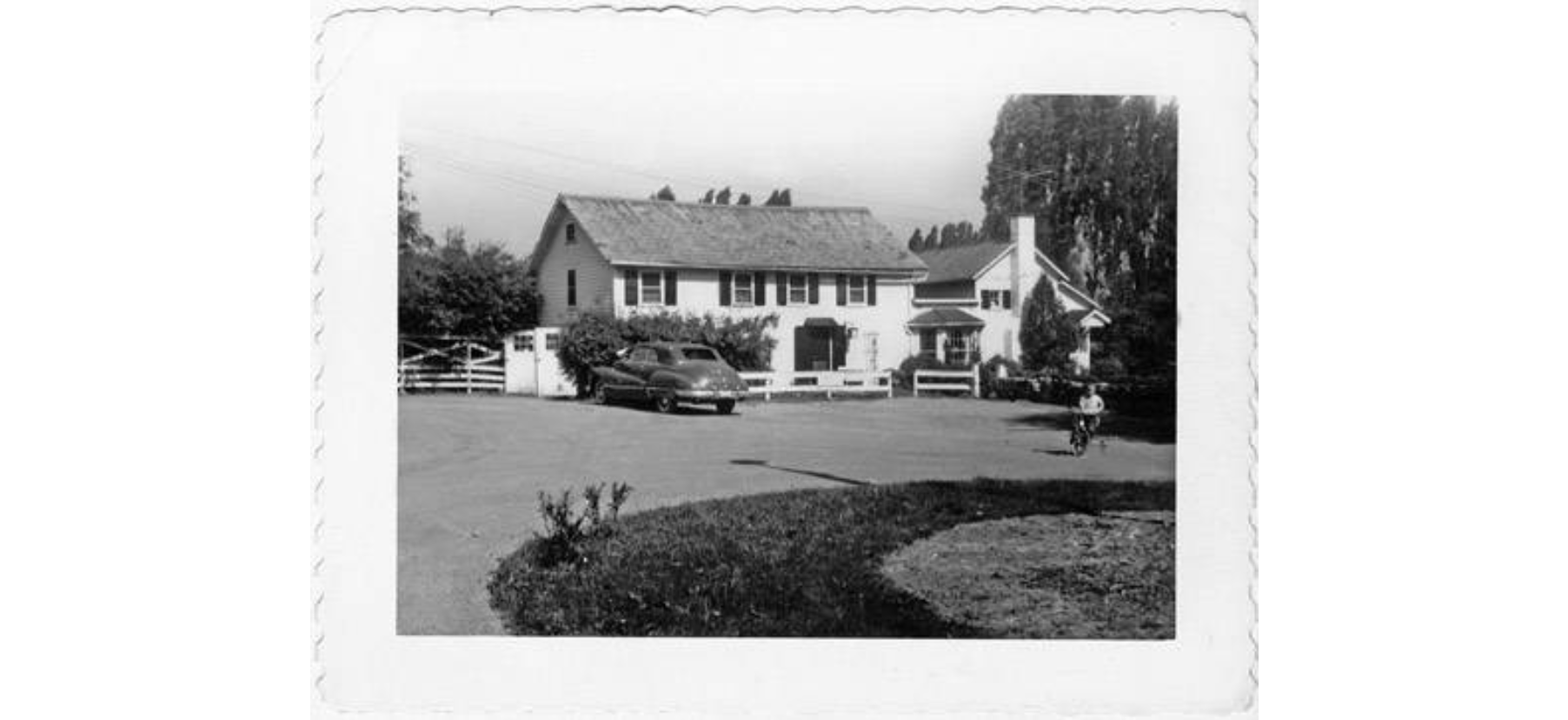 | James R. Sanford (1922-2003), who served with the Army Air Corps during World War II, once resided here. | Summit Memory | |
22 Thirty Acres Lane 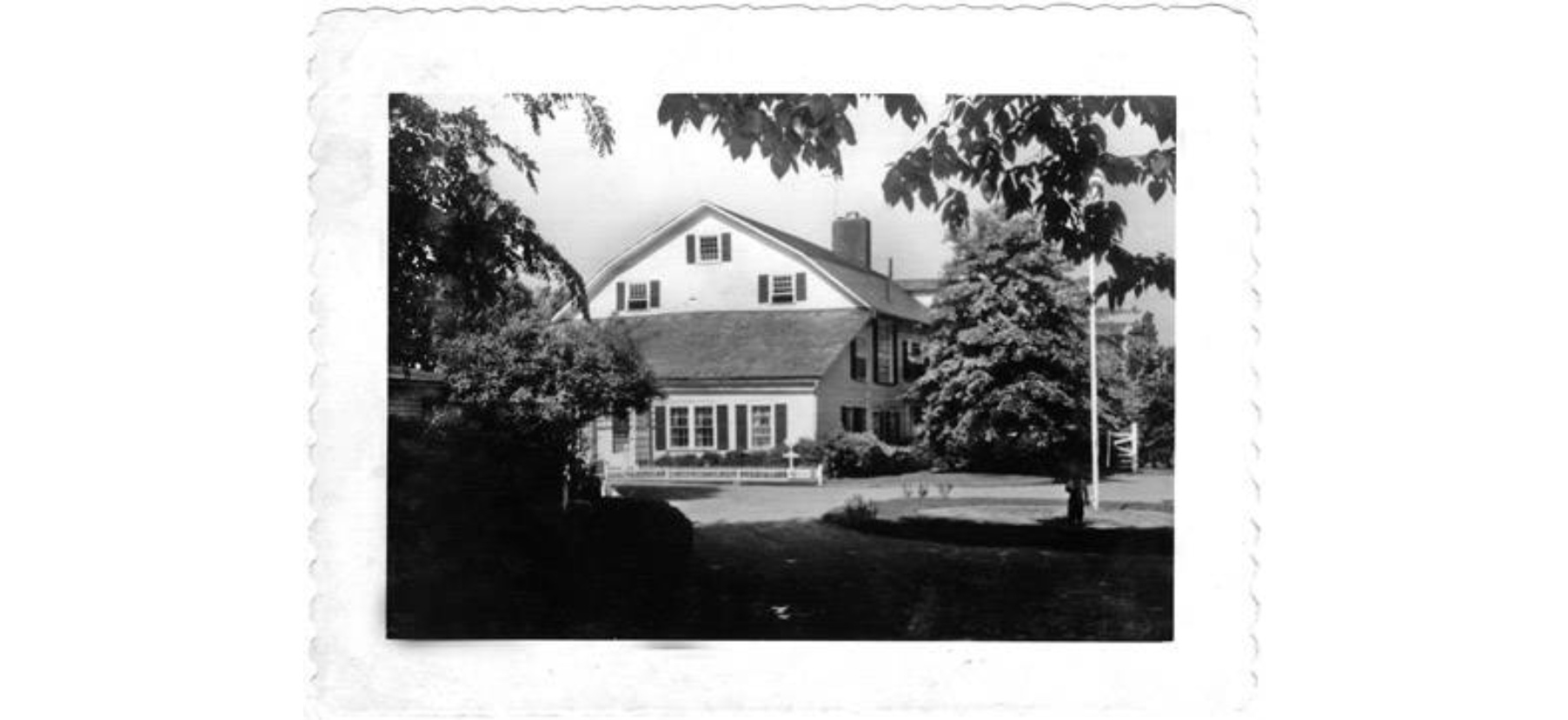 | This circa-1850 property was once the barn on the John B. Clark (1793-1872) farm. Clark, an abolitionist, was said to be a conductor on the Underground Railroad. A room hidden under the first floor of the barn, discovered in the 1930s, likely was a hiding place for runaway slaves. The building now serves as apartments. | Summit Memory | |
112 Valley View Road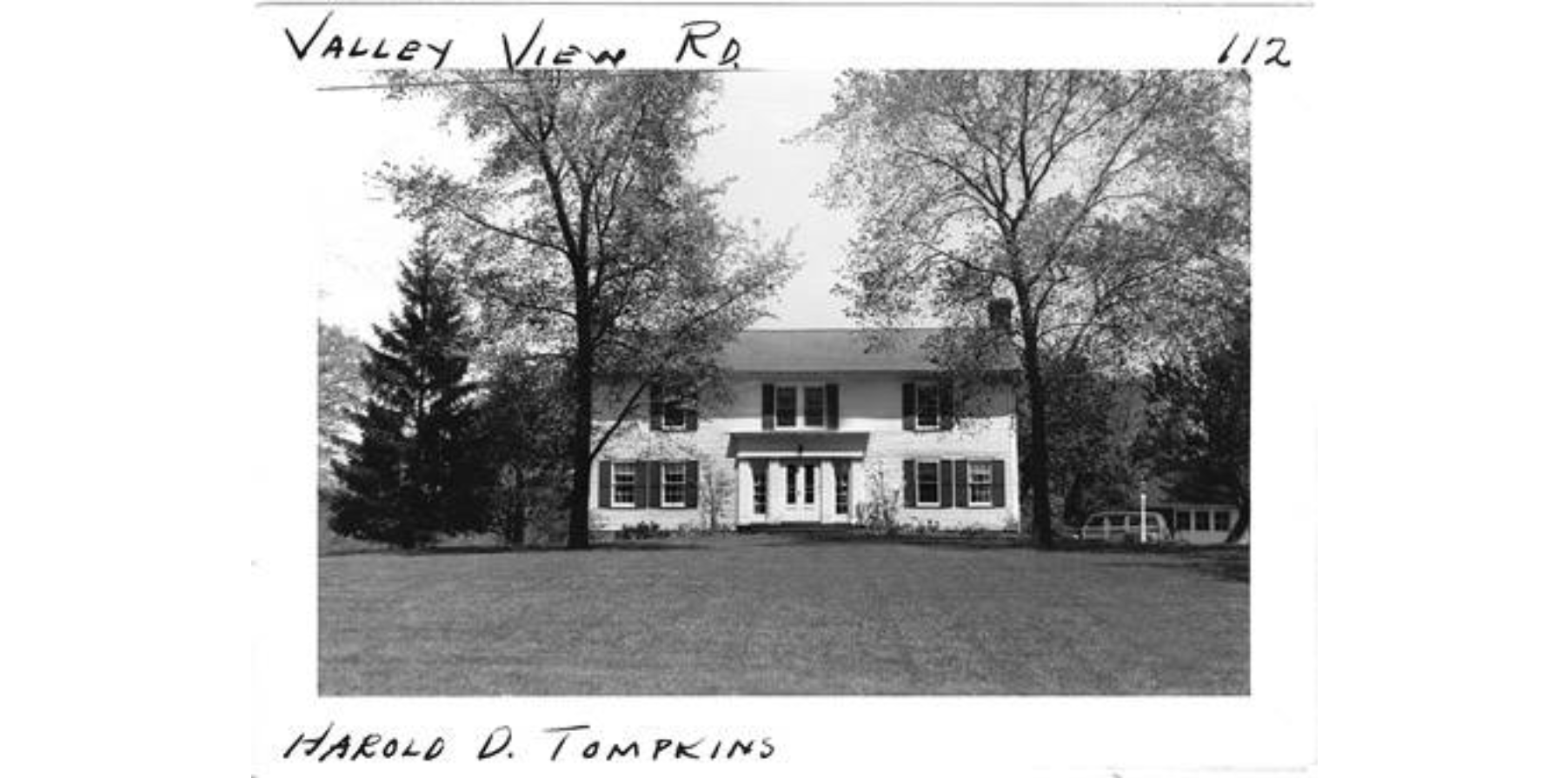 | This 1836 home has many stories of its inhabitants. Herman Peck (1805-1872) built this farm house but, probably did not reside here. The property was sold to the Harry Thompson family and then remained in the Thompson family for three generations. Charles Thompson (1865-1940) married English born Mary Whapham (1865-1922) and were the last of family to own the property. Mary's uncle, Richard Realf (1834-1878) once visited and was known to be a friend to John Brown (1800-1859) and a fellow ardent abolitionist. Later owner, Elsie Tompkins (1895-1980) was Hudson Womens Club chairman of the first Antiques Show and Sale. The rafters in the attic brought cover to many who lived in the house and are unusually 2 inches by six inches and timbers, not machine cut lumber. The original house had slate shingles and the barn is now gone but tthe foundation stones still surround the property. | Summit Memory | |
| 7153 Valley View Road Peck-Thompson Farmhouse | Hudson Heritage Association | ||
| 7238 Valley View Road Elisha, Augustus & Charles Ellsworth House 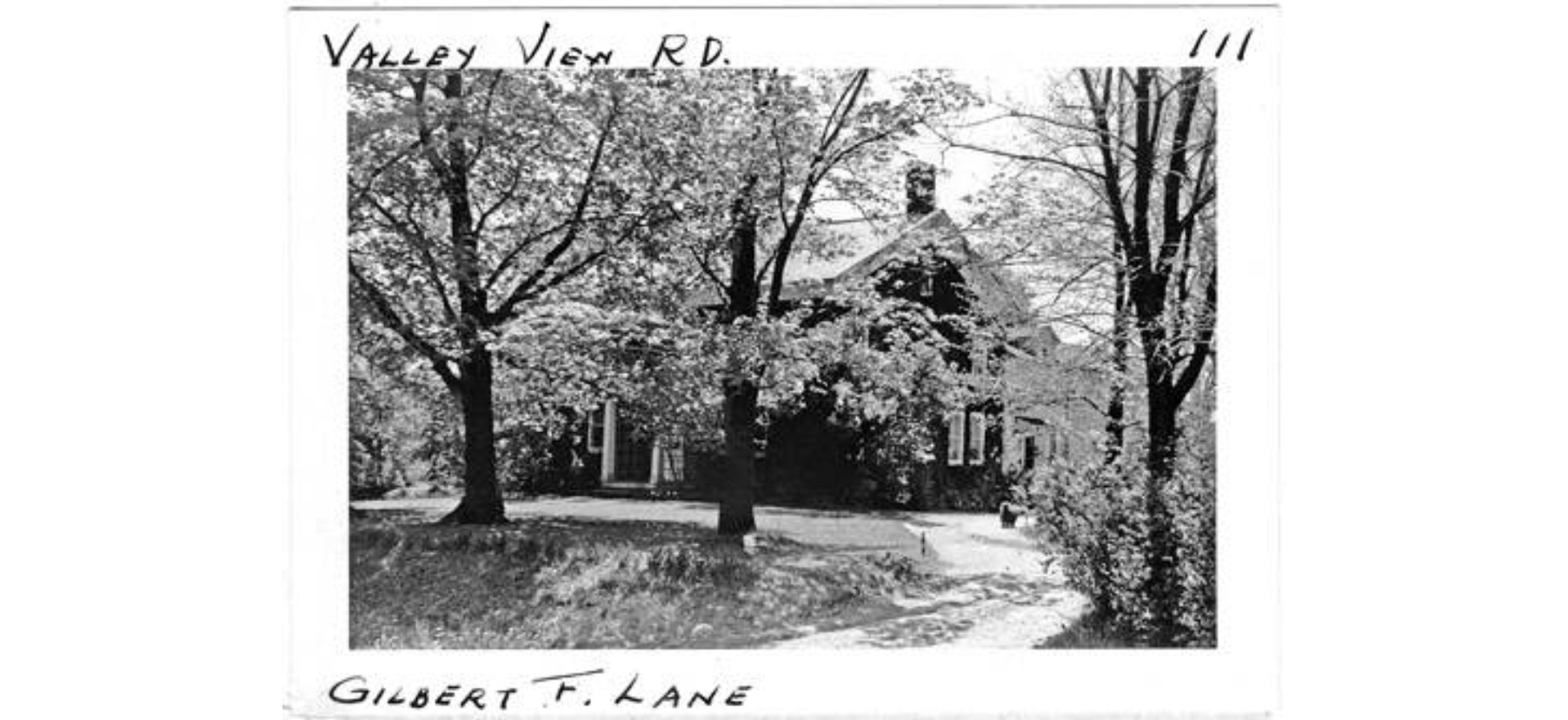 | This property once belonged to Elisha Ellsworth (1785-1859), who deeded the property to his son Augustus (1812-1892) in 1841. This Greek Revival home was built in 1842, so it is likely that either Elisha or Augustus built it. Elisha was a customs agent whose job led him to an unfortunate accident. His two legs had to be amputated when he fell into frozen Lake Erie while pursuing smugglers. In 1875 Charles Ellsworth (1838-1905), Augustus' son, acquired the property. Charles was a former Hudson postmaster and was born in a building that once sat on the property before this brick farmhouse was built. Charles attended both Oberlin and Hiram colleges. | Hudson Heritage Association Summit Memory | |
| 7483 Valley View Road Marcus E. Ellsworth House 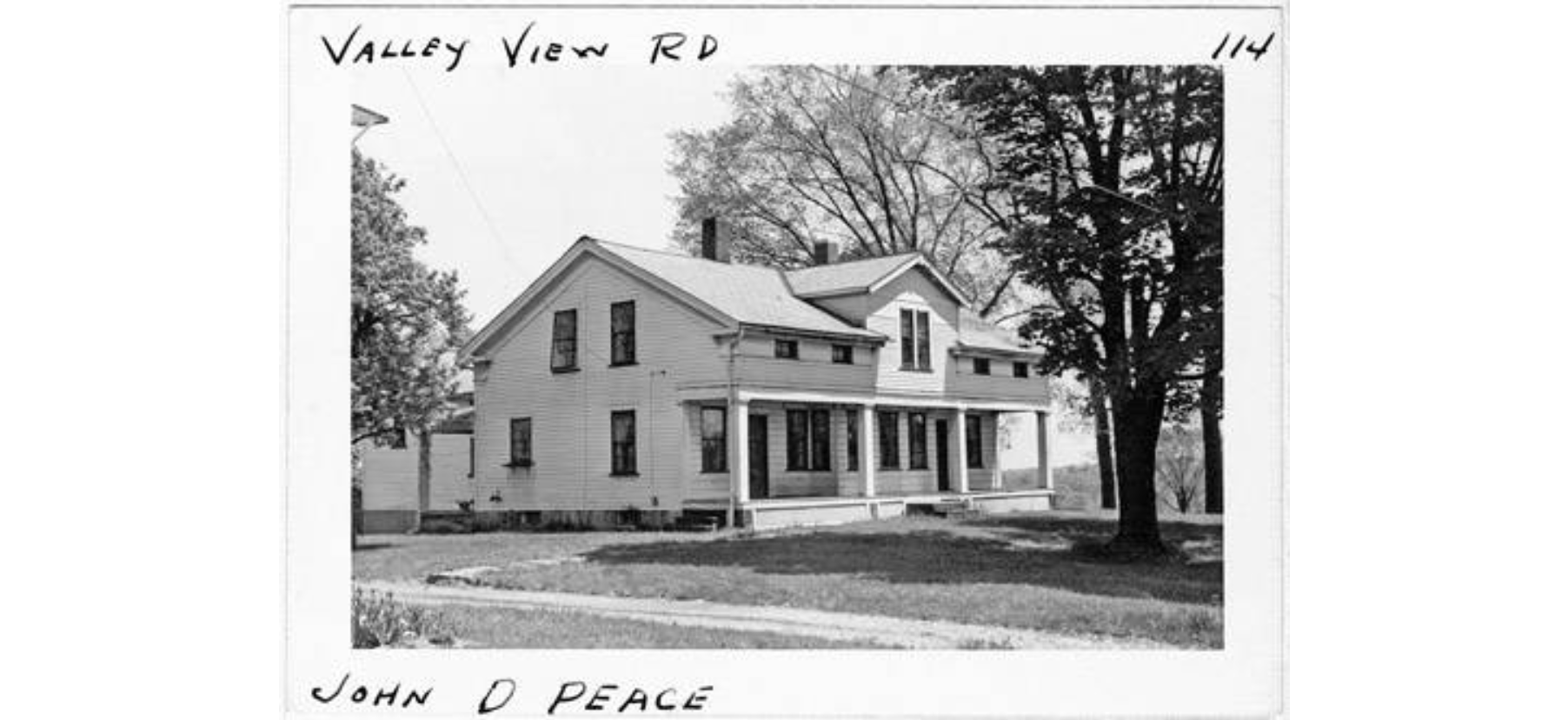 | Elisha Ellsworth (1785-1859) deeded this property to his youngest son, Marcus E. Ellsworth (1825-1898), in 1846. Marcus built this house on the property in 1849. It is thought that this home once served as a tavern on the old Cleveland-Pittsburgh Road. Three entrances faced the road and there were an abundance of small rooms that are often found in an inn. John Darlington "Jack" Peace III (1935-1967), a Vietnam War pilot, once lived here. Peace was killed in action during a daylight raid over North Vietnam. | Hudson Heritage Association Summit Memory | |
| 8021 Valley View Road Bradford Post Farmhouse 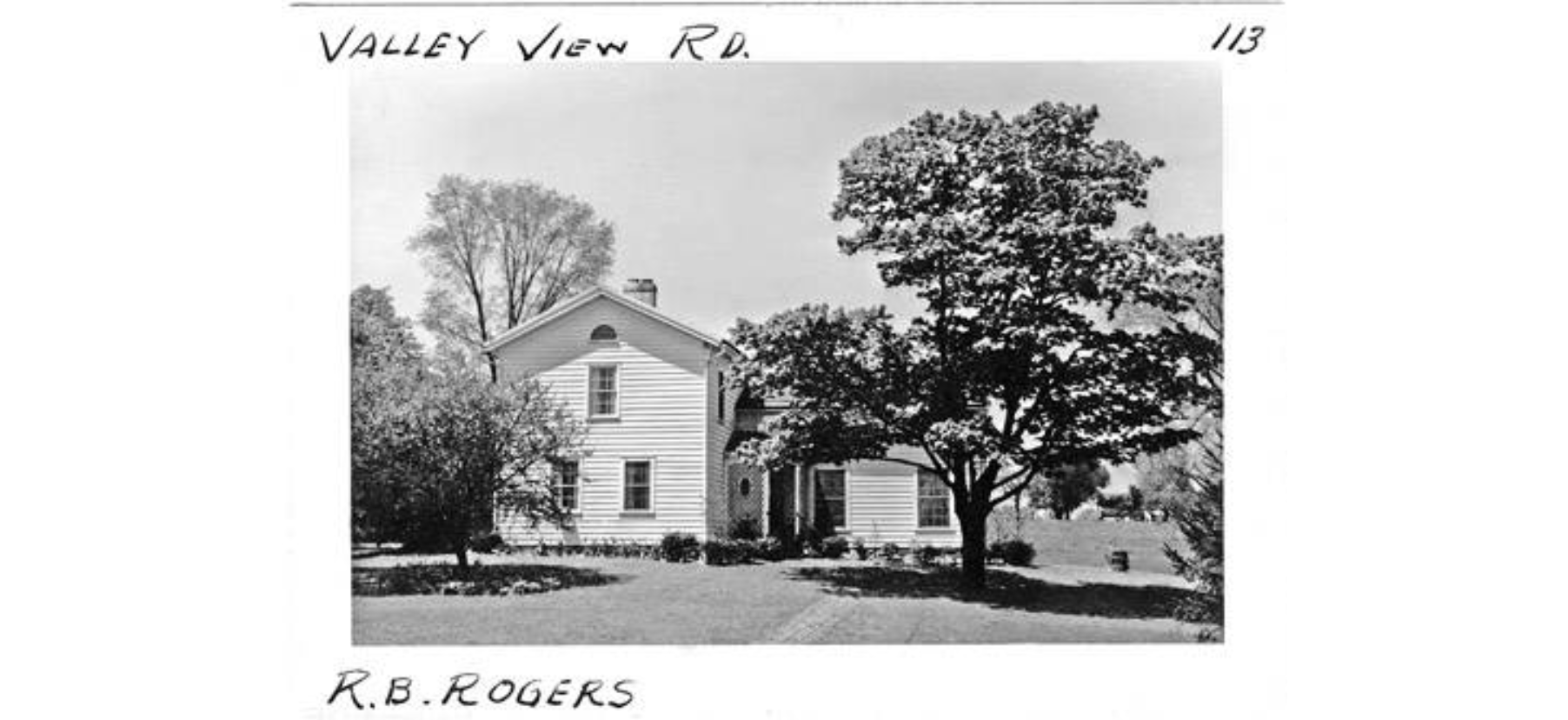 | The Post family owned this 1846 Greek Revival. Zina (1774-1865) and Marena Kellogg (1790-1877) Post were early settlers of the Western Reserve. Marena's uncle, Moses Thompson (1776-1858), was the first physician in the Reserve and her grandfather, Deacon Stephen Thompson (1734-1823), helped found the Congregational church. Zina, a ship captain, came to Hudson in 1803. It has been said that he sold his ship in order to buy this parcel of land in 1805 (see 8142 Valley View Rd. for the Zina Post home). In 1843 Zina sold part of his property to his son Bradford (1821-1904), who soon afterward built a barn and a house. Little is known about Bradford other than that he had two children. Bradford's son-in-law, Albert Mahany (1843-1906), served in the Civil War with the 19th Ohio Volunteer Infantry. In 1866 Bradford sold the property to his brother, William Post (1817-1887), and headed to Chattanooga, Tennessee, where he ran a grocery business. Zina's grandson, Frederick Clayton Waite (1870-1956), a Western Reserve University professor, later acquired the property. The property left the Post family in 1942. | Summit Memory | |
8142 Valley View Road 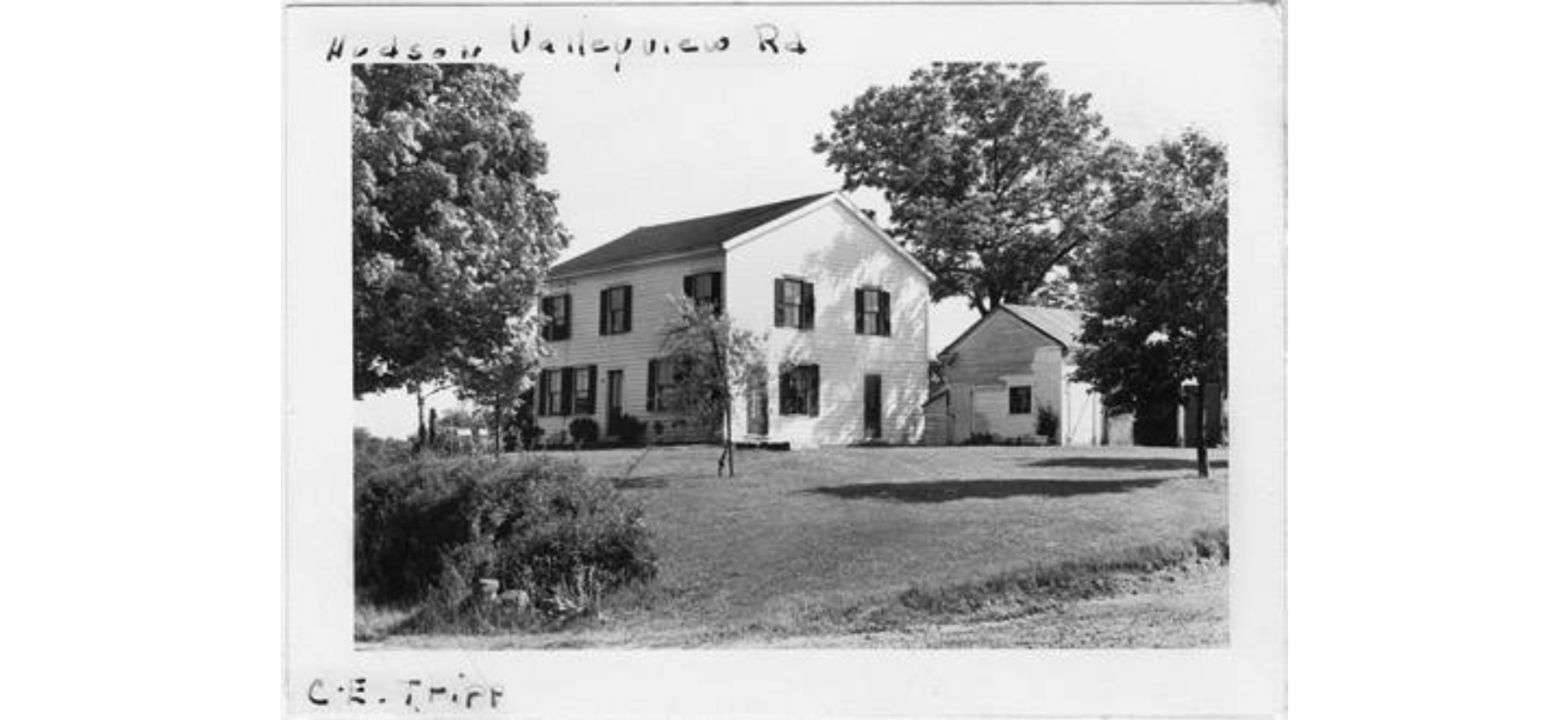 | Zina (1774-1865) and Marena Kellogg (1790-1877) Post were early settlers of the Western Reserve. Zina, a ship captain, came to Hudson in 1803. It has been said that he sold his ship in order to buy this parcel of land in 1805 and likely built this home soon afterward. As part of the Cleveland-Pittsburgh stagecoach route, this home was known to serve as a stopping place for many weary travelers. | Summit Memory | |
30 Wellgate Drive 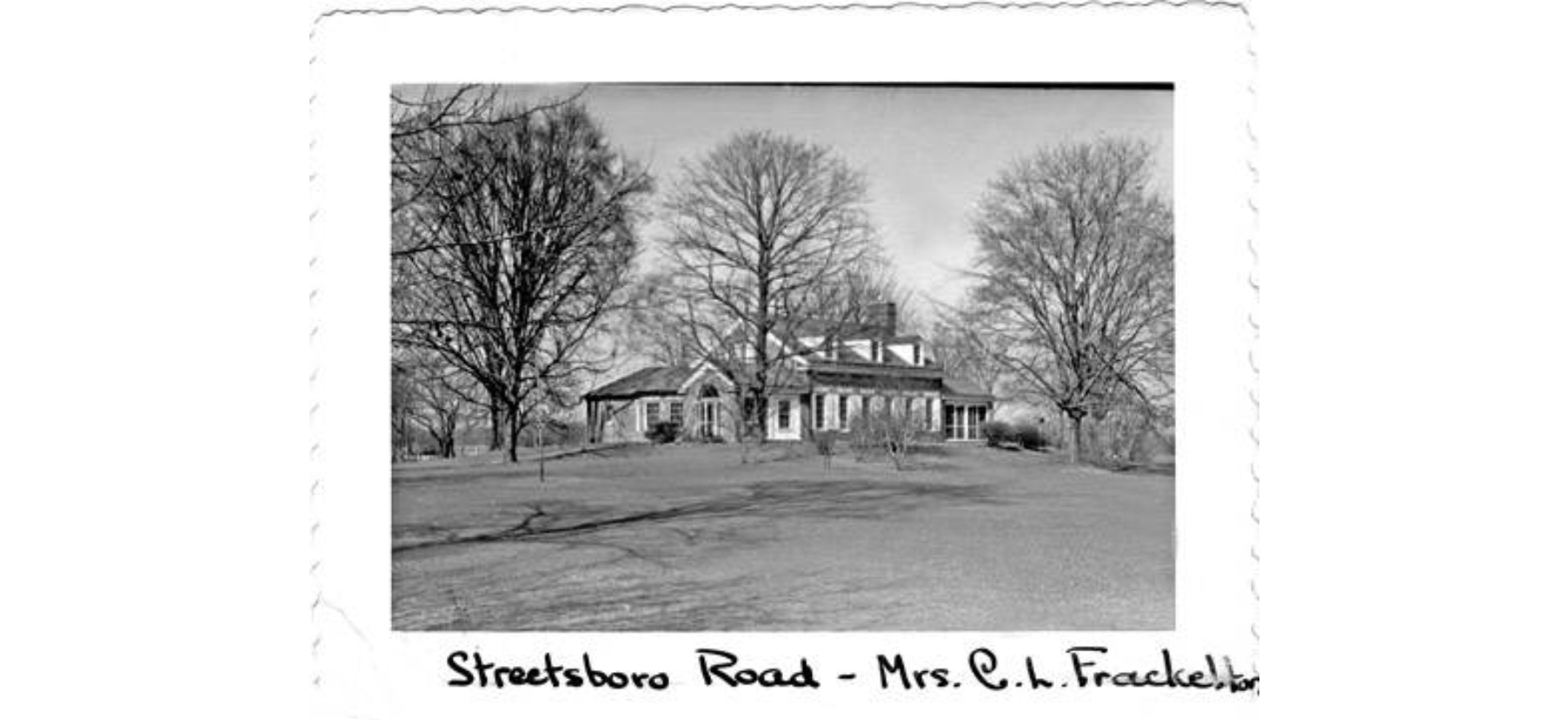 | This circa-1950 home was originally given a Streetsboro Street address. It once belonged to Constance Frackelton (1887-1963) and her husband Robert J. Frackelton (1868-1940). Robert was once president of Chandler & Price, a Cleveland-based company that manufactured printer equipment. Robert patented an improvement for a commercial printing press. The Frackeltons funded a generous scholarship at University Hospitals for medical research. | Summit Memory | |
41 York Drive 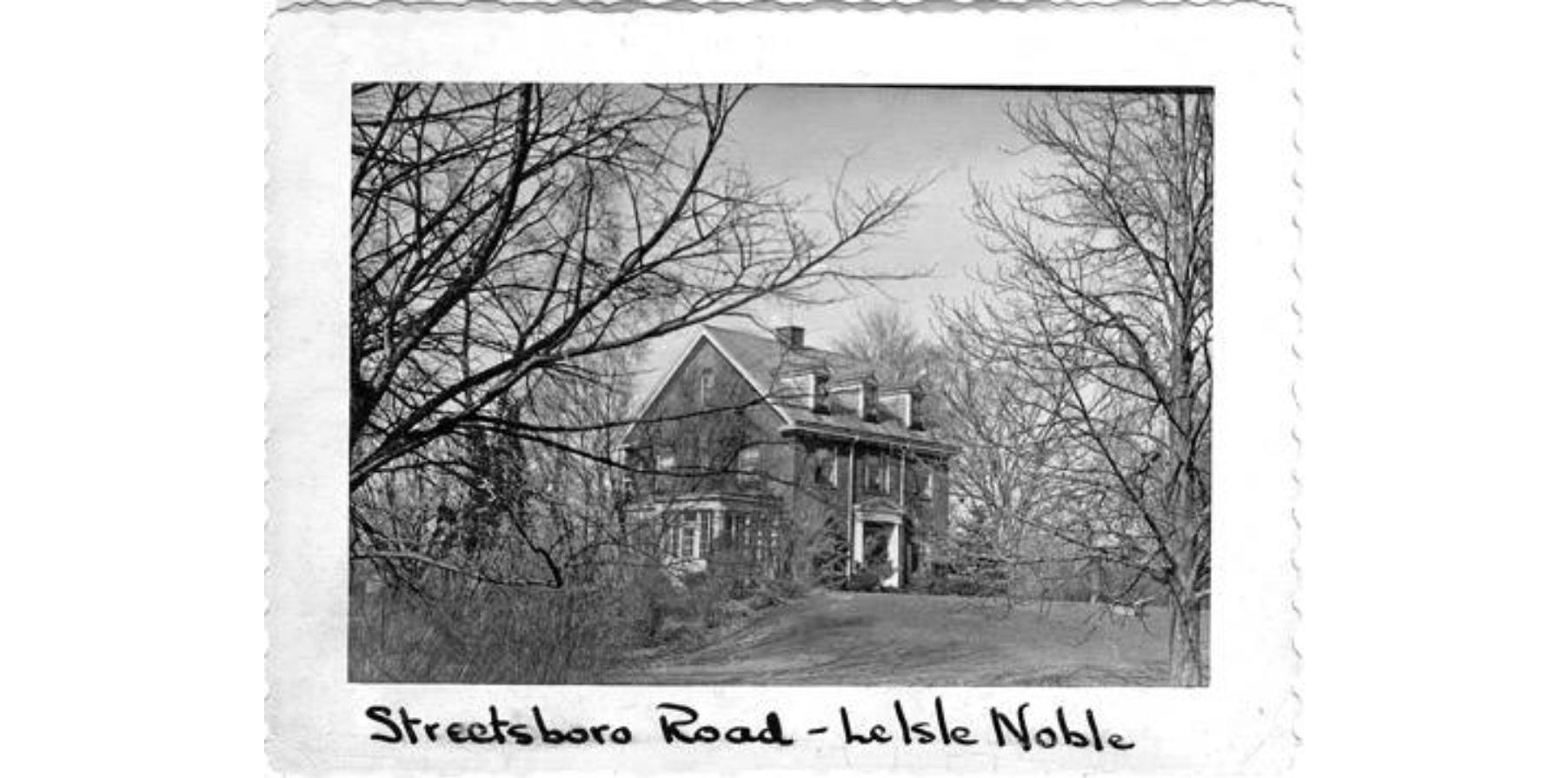 | This Colonial Revival, built in the 1920s, was originally given a Streetsboro Street address. LeIsle D. Noble, Jr. (1881-1980), president of Noble & Stanton, once resided here. | Summit Memory | |
302 Aurora Street 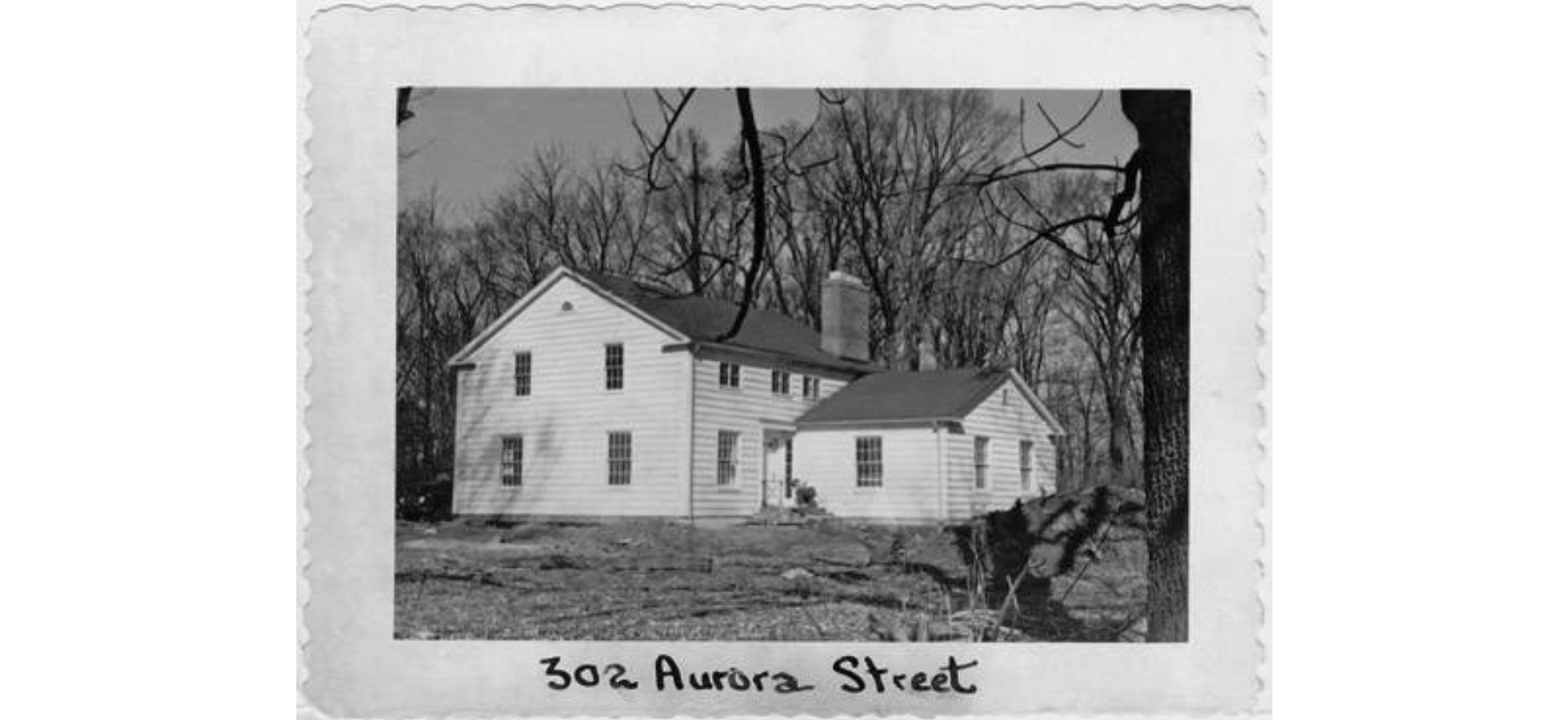 | This gabled-roof home with garage was built after 1945 and was once the home of entrepreneur, engineer, author and philanthropist Burton D. Morgan (1916-2003). | Summit Memory | |
| 333 Aurora Street Jonathan Metcalf House  | This home was built circa 1824 by Dr. Jonathan Metcalf (1787-1869), a War of 1812 surgeon and local physician. Dwight E. Murray (1843-1863), a neighbor and friend, was a frequent visitor of the Metcalfs. Unfortunately Dwight, who was a Civil War color-bearer, got lost while on patrol in Tennessee and was killed by a rebel ambush. This Federal/Greek Revival transitional home was later owned by William I. Chamberlain (1837-1920), an agriculturalist and well-known editor of the "Ohio Farmer." The Chamberlain Farm was known for advanced farming methods and high-yielding crops. The present front-gabled, two-story core was the original house and was used in the early 1900s as a tenant house on the Edward Fitch (1873-1924) farm. Bessie McFarlin Fitch (1878-1949), Edward's widow, moved the house to this location in 1924. This home was also the residence of John D. Sorgi (1951-2006), former president of American Fireworks Co. | Hudson Heritage Association Summit Memory | |
349 Aurora Street 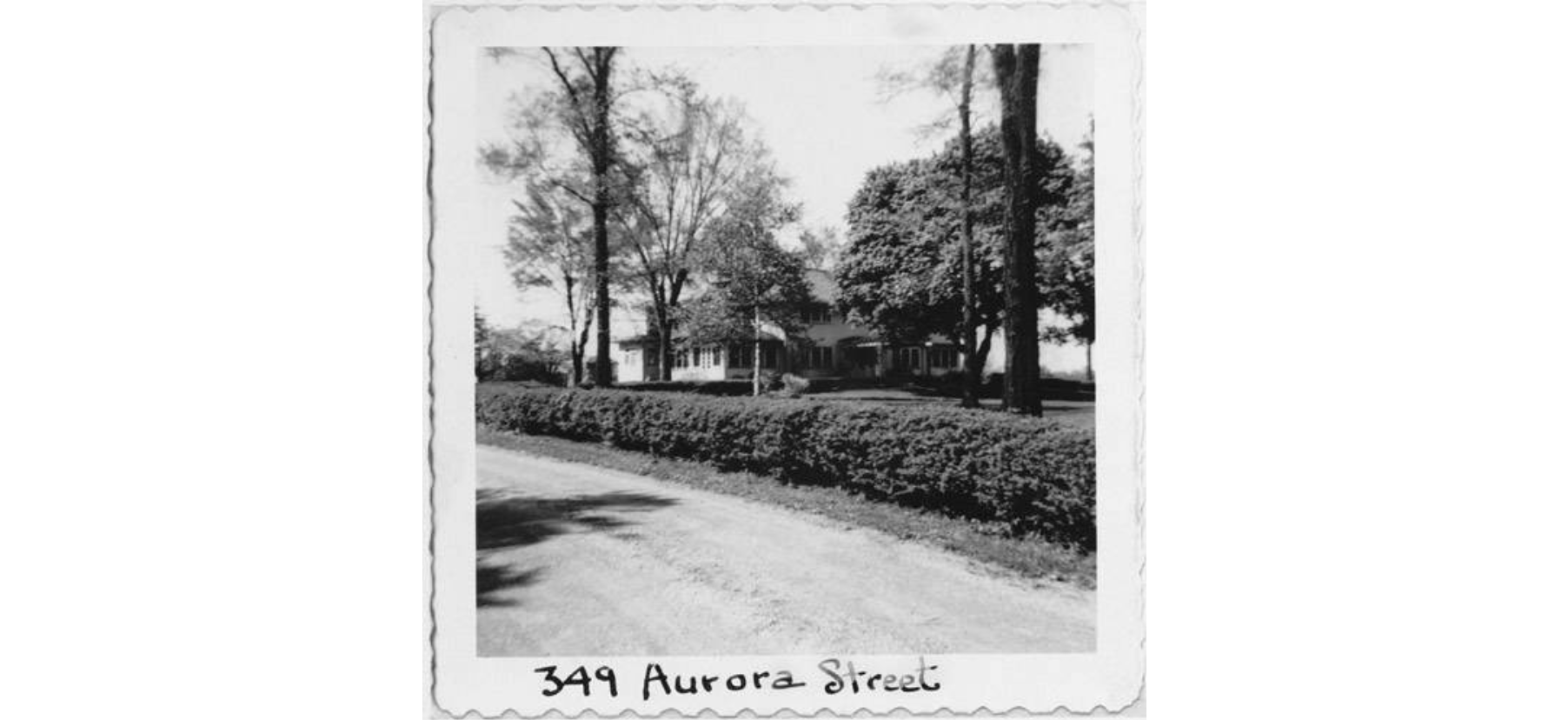 | This "summer cottage" was built by the Scottish confectionery manufacturer (maker of the candy Lucky Reds) Robert MacKenzie (1862-1919). The Colonial Revival-style home was built circa 1910. | Summit Memory | |
88 Stow-Aurora Road 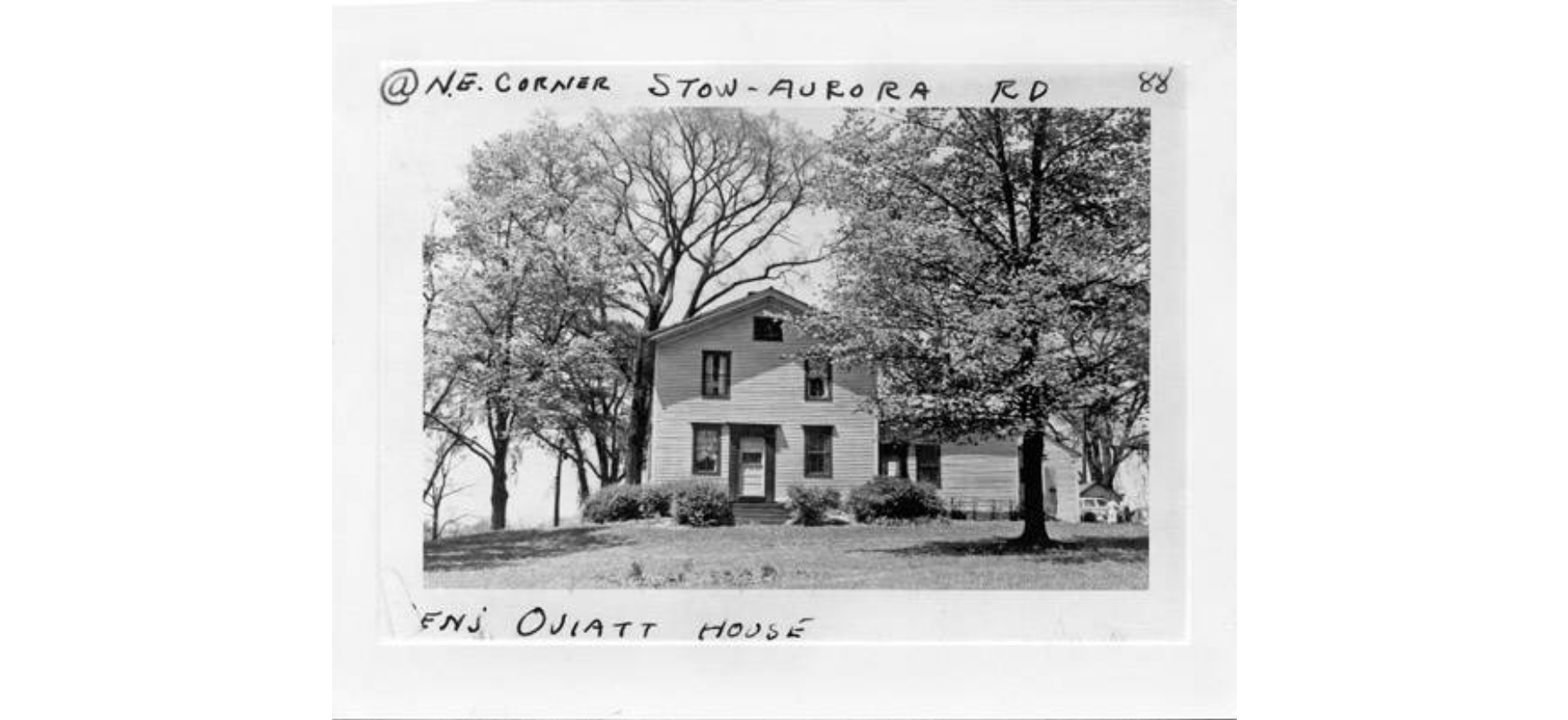 | Hudson pioneer Benjamin Oviatt, Jr. (1779-1848) once owned this home. Benjamin's father, Benjamin Oviatt, Sr. (1755-1832), was one of the original purchasers of land in the Western Reserve. Although Benjamin Sr. never came to Ohio, eight of his nine children, including Benjamin Jr., settled in Hudson and Richfield. Benjamin came to Hudson in 1801, returning with his brother Heman (1755-1854), who had settled in Hudson the year prior. The oxen Benjamin used to make the trip from Connecticut were so highly prized that he was offered land now comprising the Cleveland Flats in exchange. He refused the offer. | Summit Memory | |
| 103 Stow-Aurora Road Benjamin Oviatt House 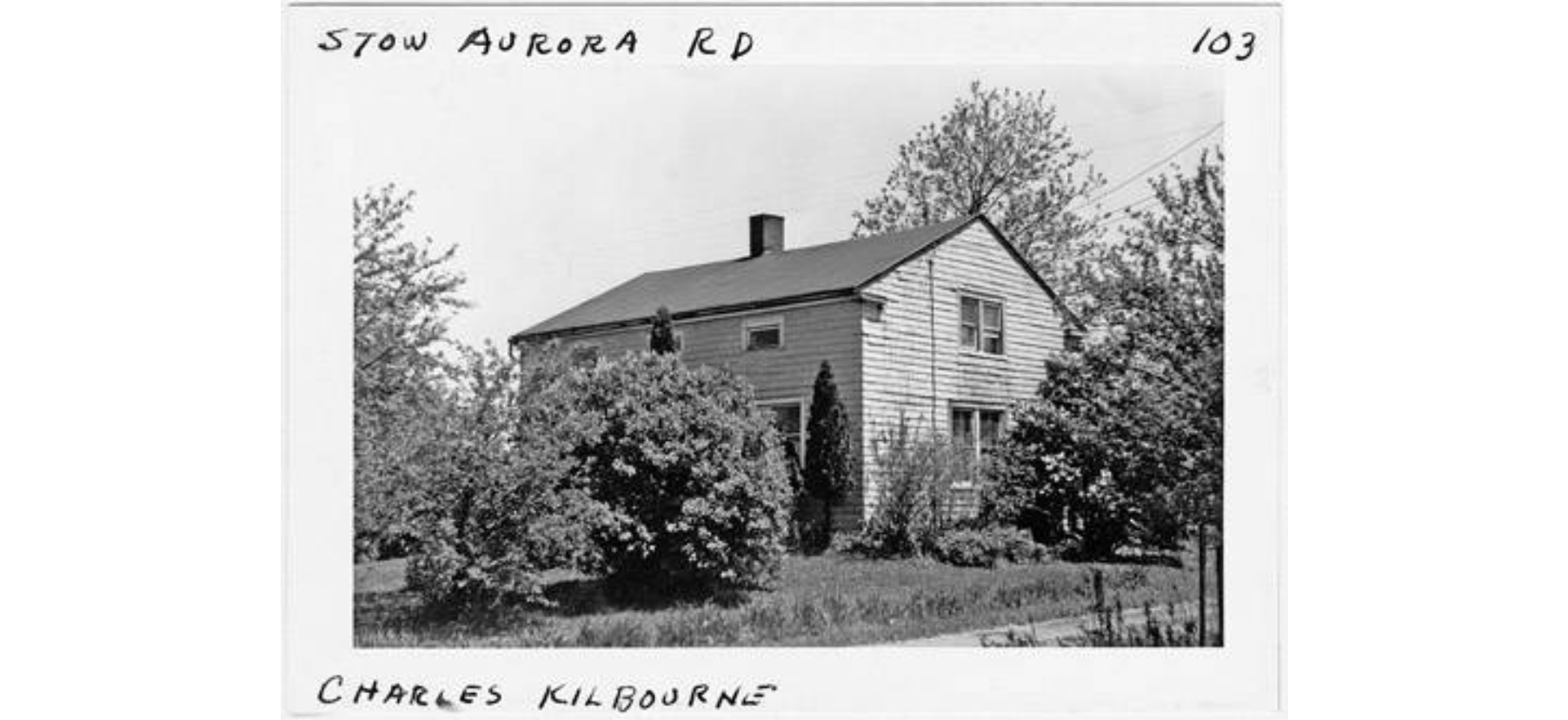 | This house dates to the 1830s and was once the old Kilbourne farm, likely home to early Hudson pioneer George Kilbourne (1769-1866). Kilbourne's descendant Charles Kilbourne (1868-1959), a township councilman and trustee, once lived here. | Summit Memory | |
| Stow-Aurora Road Charles Kilbourne House 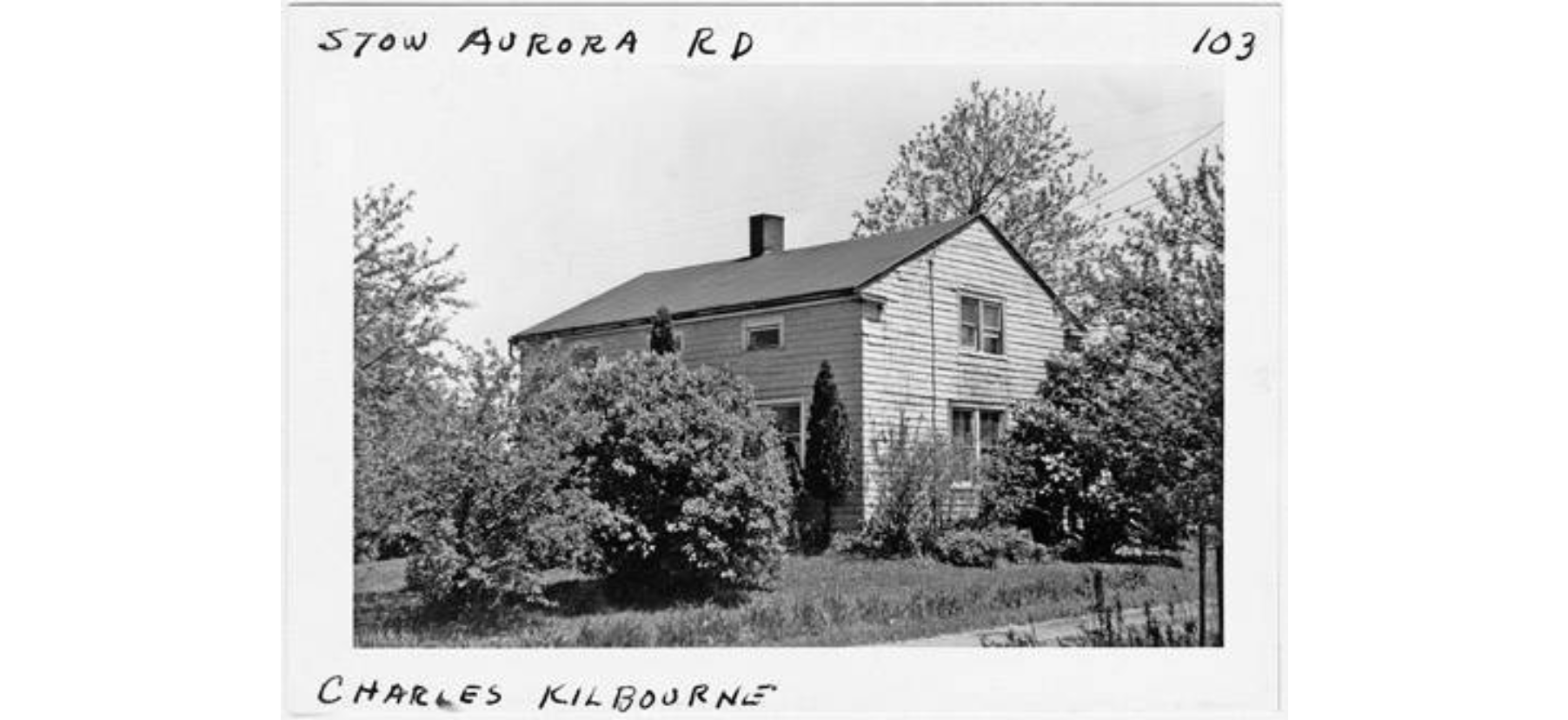 | This house dates to the 1830s and was once the old Kilbourne farm, likely home to early Hudson pioneer George Kilbourne (1769-1866). Kilbourne's descendant Charles Kilbourne (1868-1959), a township councilman and trustee, once lived here. | Summit Memory | |
287 Brentwood Drive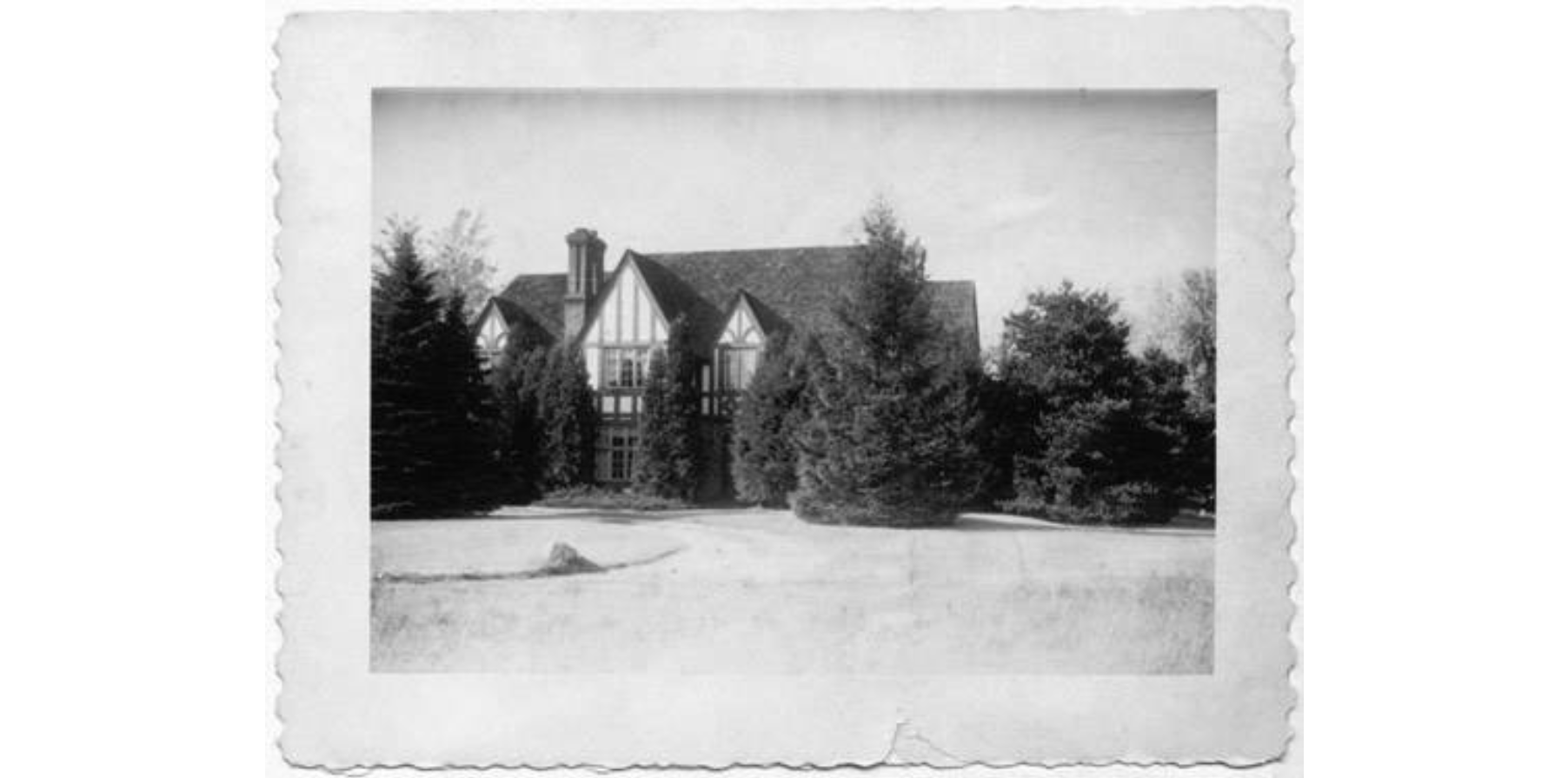 | This home was the first built in the original S.H. Kleinman Realty Co. planned Lake Forest Residential Park, Country Club and Golf Course development. More than 1000 homes had been planned for this complex, but only two homes and a clubhouse were completed before the 1929 stock market crash forced Kleinman Realty out of business. This circa-1929 Tudor Revival was once the home to Harry Trishman (1900-1980), mechanical engineer and designer of hydraulic presses for Adamson United Co. of Akron, Ohio. Trishman also served as deacon for the Congregational Church of Hudson. | Summit Memory | |
40 First Street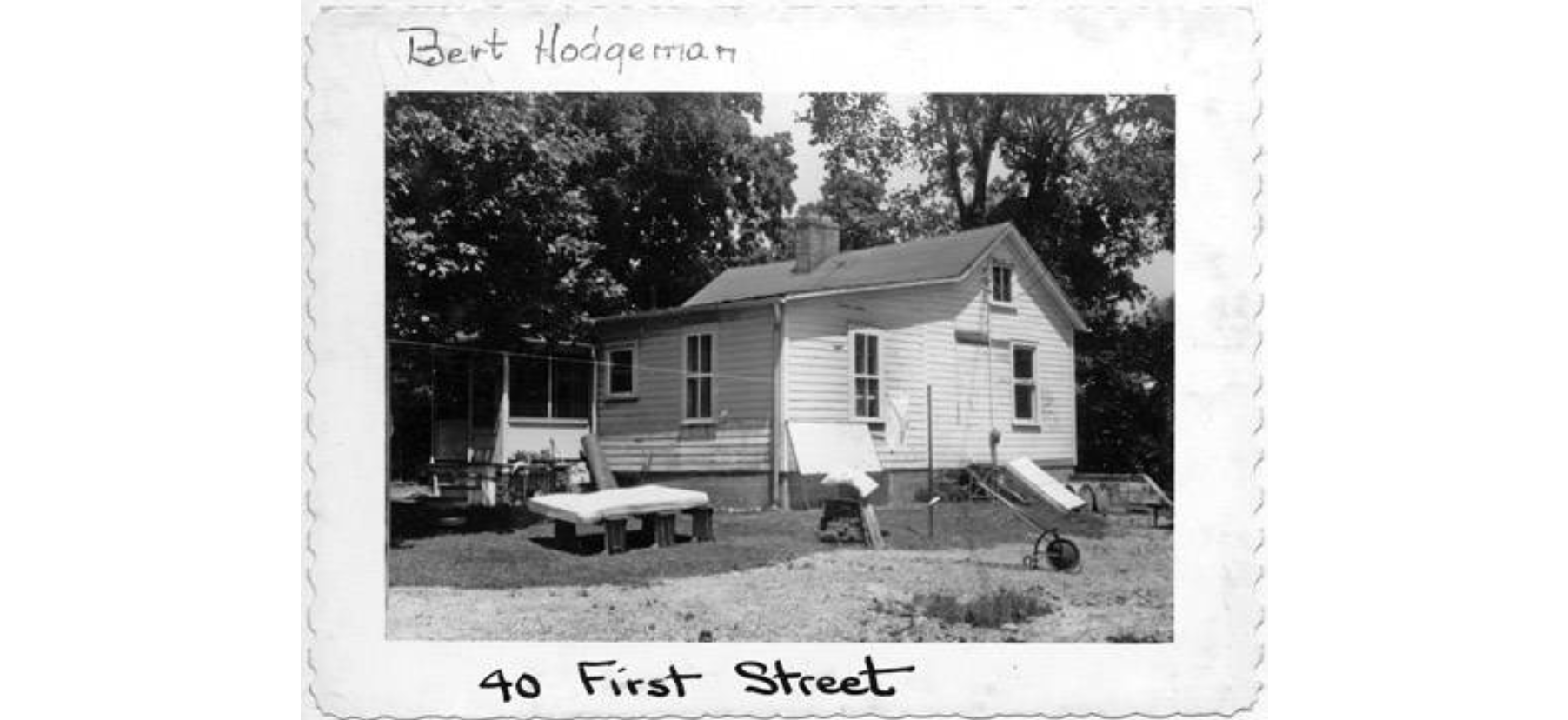 | At the urging of a sister-in-law, Della Kuhn (1891-1975), the recently married Arthur F. Smith (1887-1963) and Grace Beavers Smith (1889-1969) moved to Hudson in 1929 and once lived in this home. Grace taught Sunday school for 10 years at the First Christian Church and Arthur was a carpenter at Western Reserve Academy. "The Hudson Times" awarded Grace its first Good Neighbor award in 1951. | Summit Memory | |
50 First Street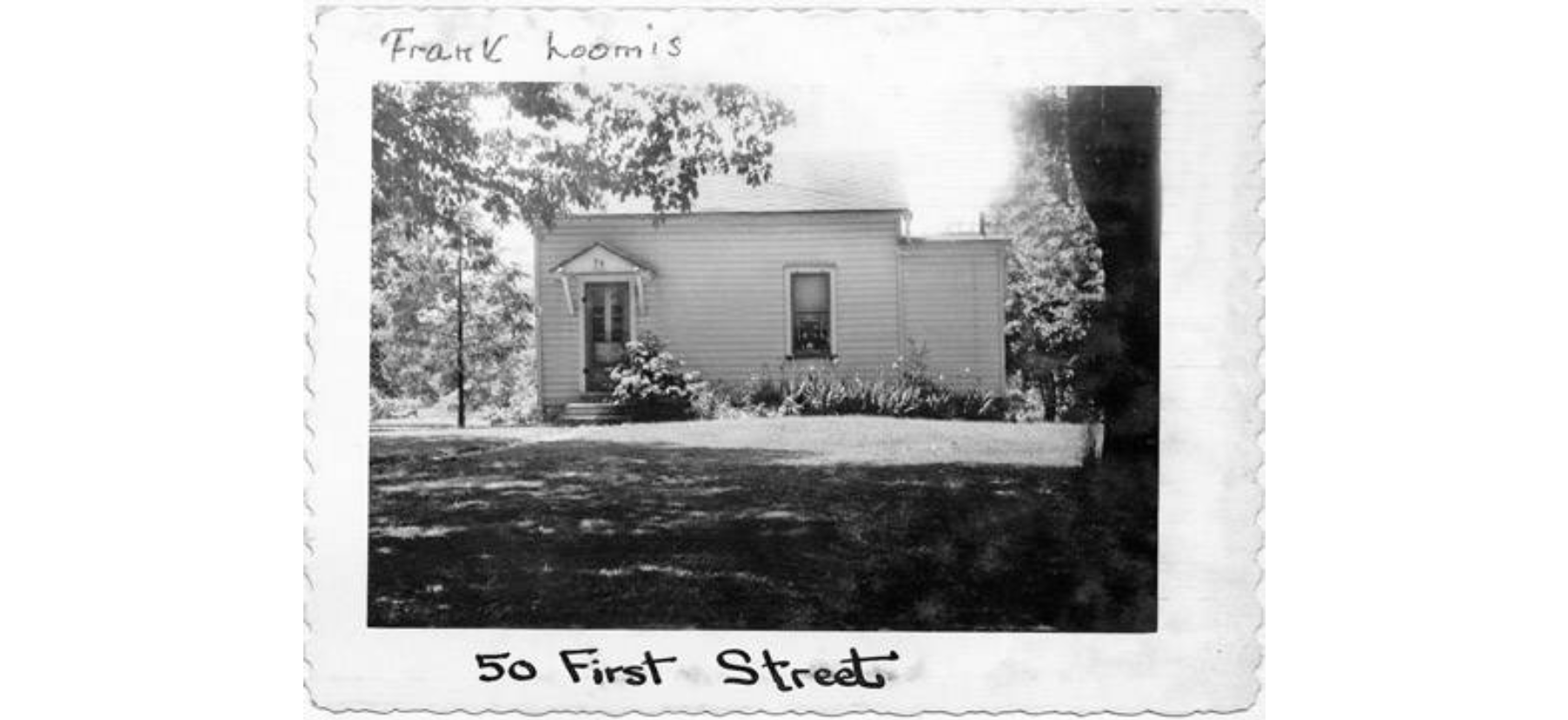 | Very little is known about this house. The home was once owned by Lida Baker (1880-1957), a Hudson resident since 1919. In 1951, Lida successfully nominated Grace Beavers Smith (1889-1969) for "The Hudson Times" Good Neighbor award. The home no longer exists. | Summit Memory | |
64 First Street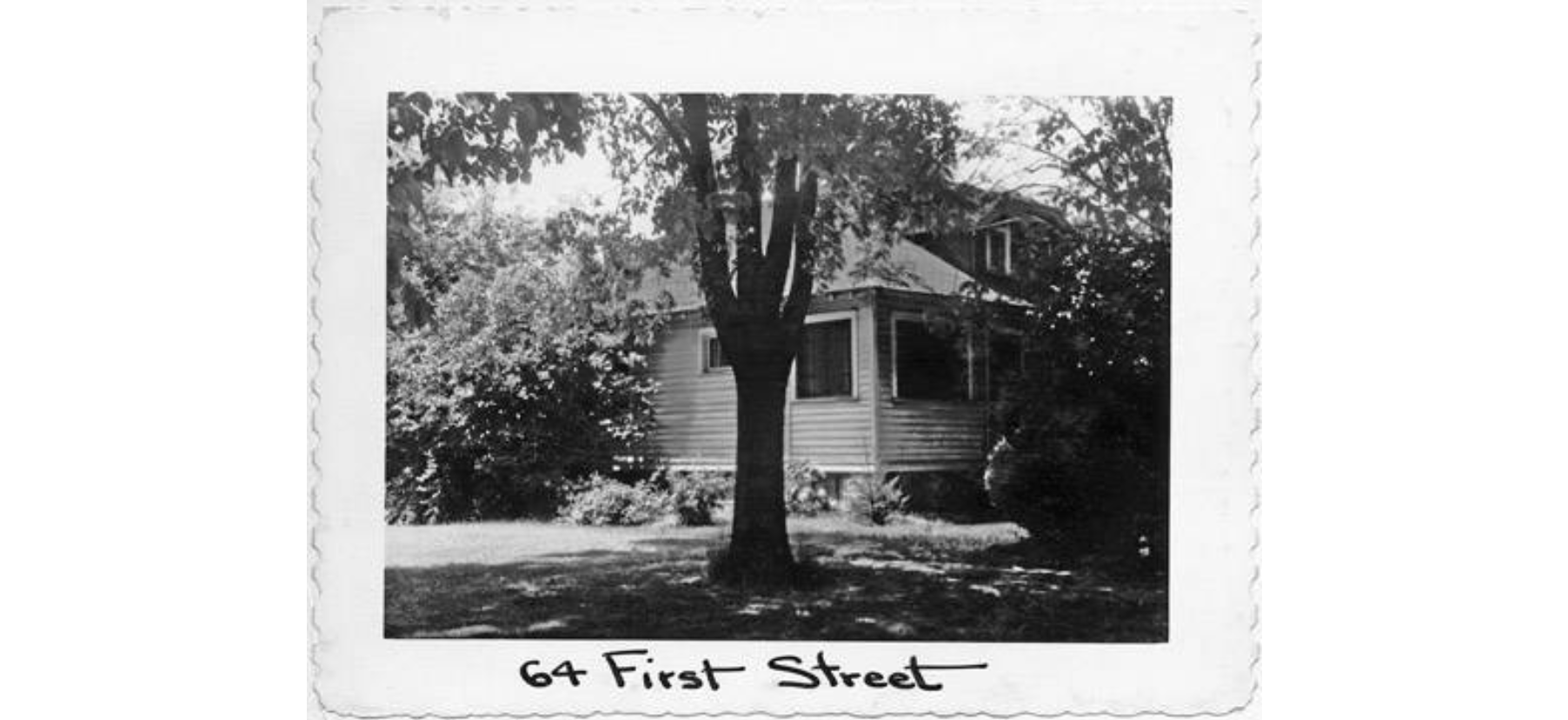 | This home was probably built before 1929. Cora Philbaum (1895-1974), a Hudson resident for more than 60 years, once lived here. Cora was known for never forgetting a birthday. Four generations of the Philbaum family have lived and attended school in Hudson and have held this property for more than 100 years. The home no longer exists. | Summit Memory | |
72 First Street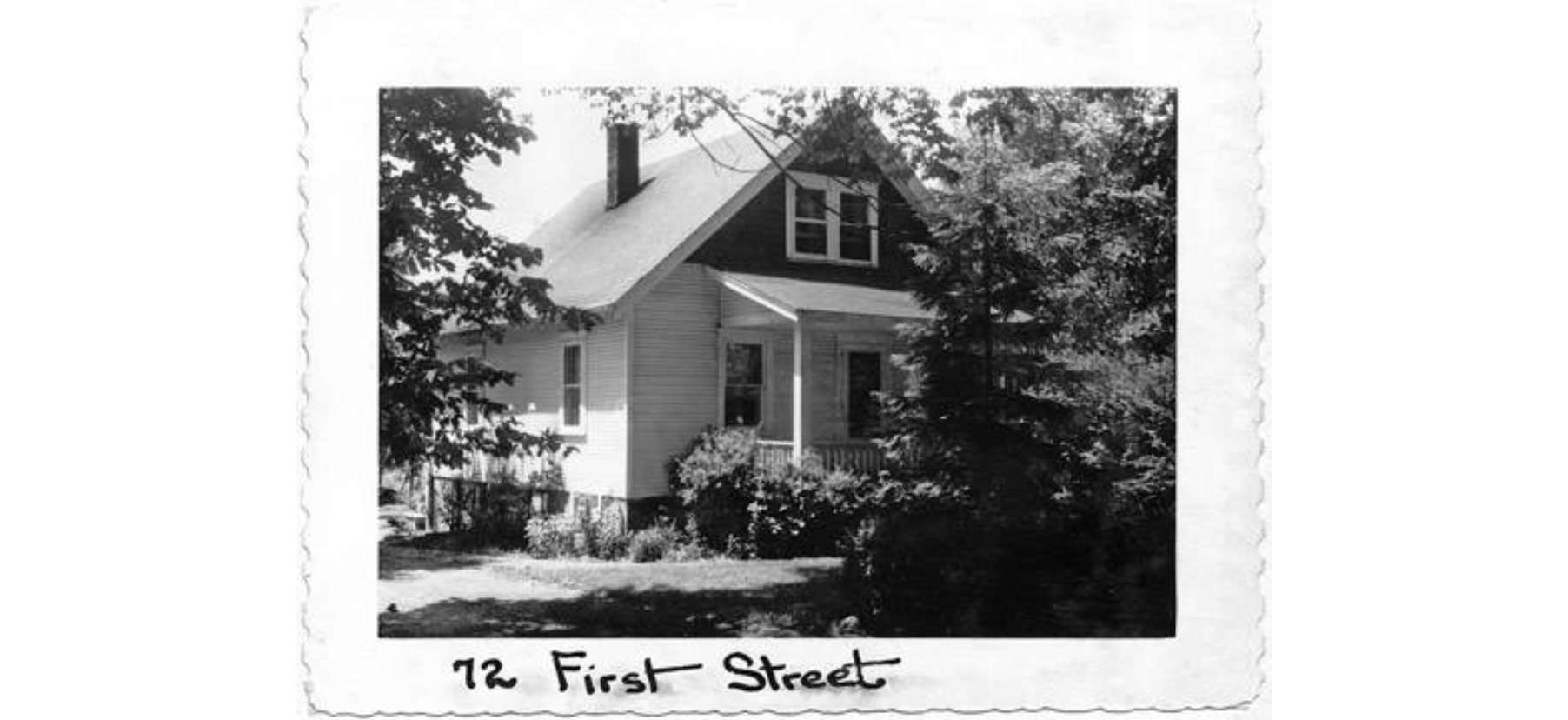 | This home was most likely built before 1929. Italian immigrants Albert (ca.1890-1947) and Emrichetta (1892-1983) Melaragno once resided here. Albert was an employee of Western Reserve Academy. The house no longer exists. | Summit Memory | |
99 Franklin Street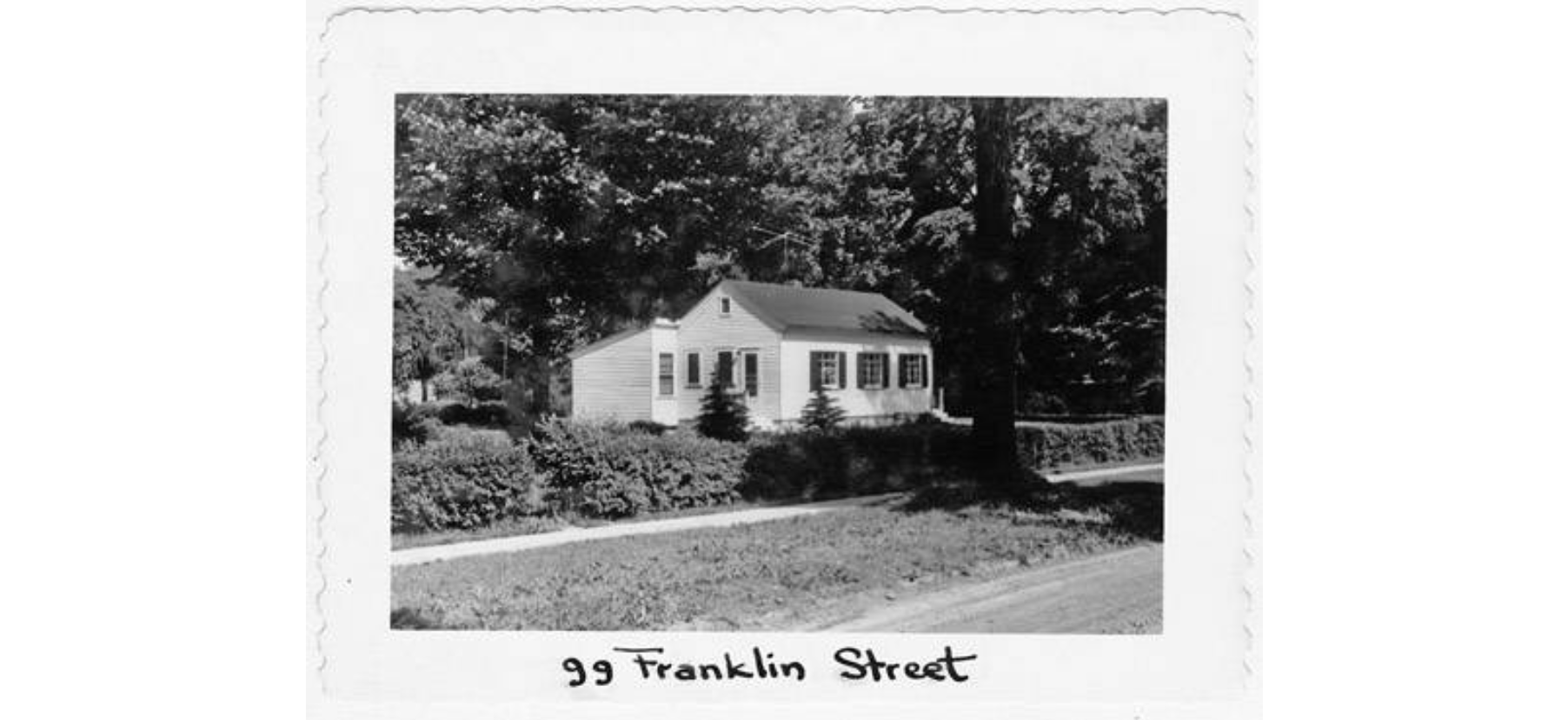 | This home no longer exists. Della Kuhn's (1891-1975) son, Curtis B. (1910-1987), a maintenance manager for Western Reserve Academy, once lived here. Curtis enlisted in World War II and retired to Florida. | Summit Memory | |
101 Franklin Street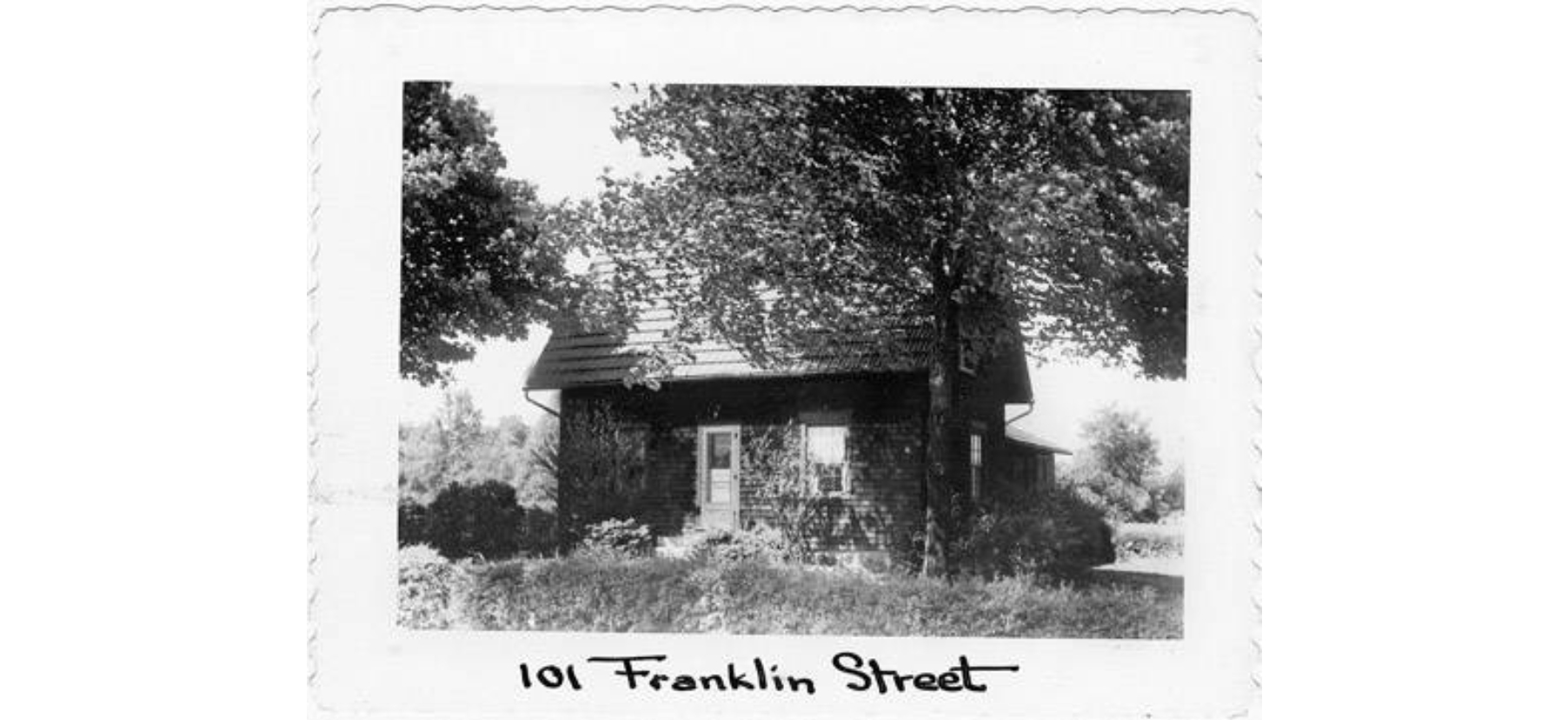 | This Franklin Street house has been home to several Western Reserve Academy farm employees because of its close proximity to the school's barns. | Summit Memory | |
132 Franklin Street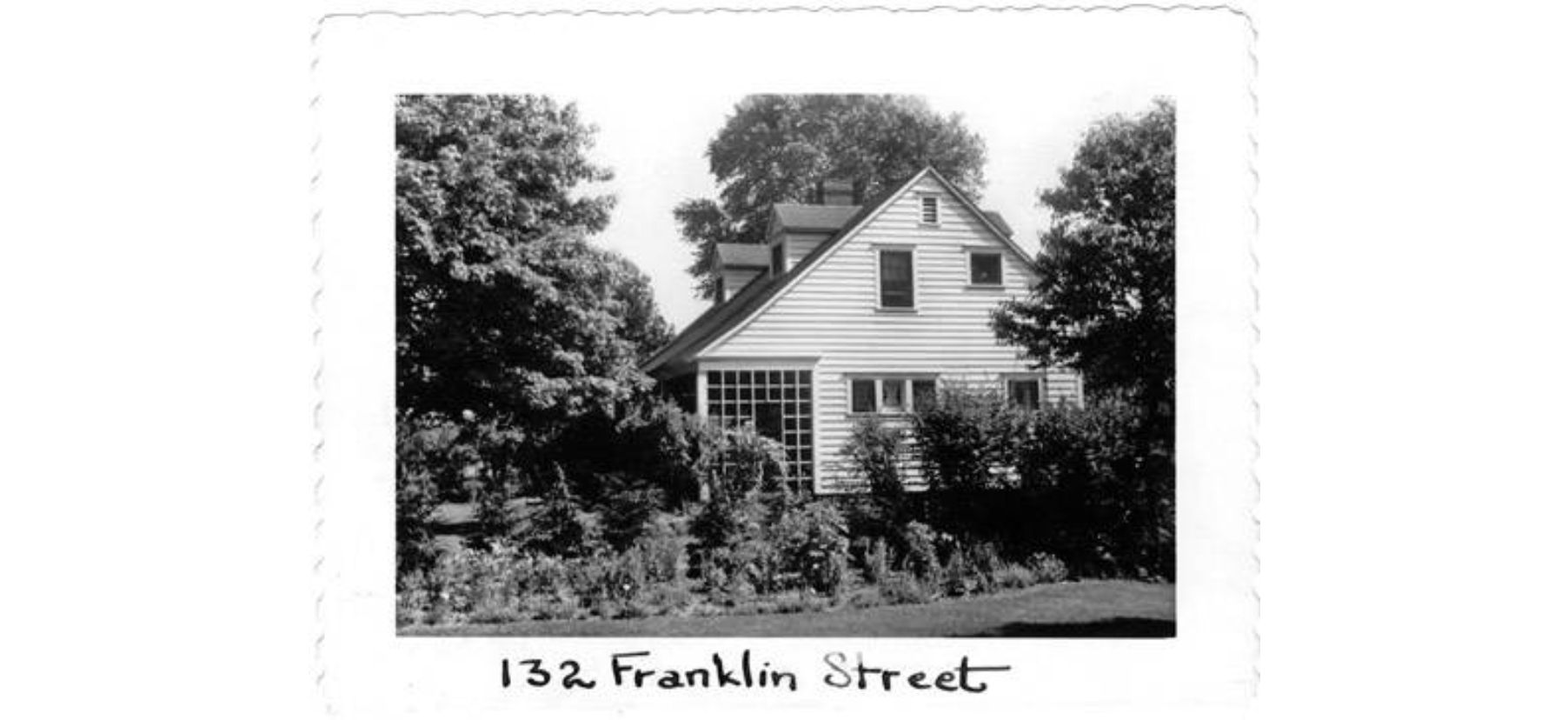 | Romanian immigrant Samuel F. Husat (1910-1964) and his family once resided in this circa 1923 home. They moved to Hudson in 1945 He taught for 19 years and chaired the foreign language department at Western Reserve Academy. | Summit Memory | |
139 Franklin Street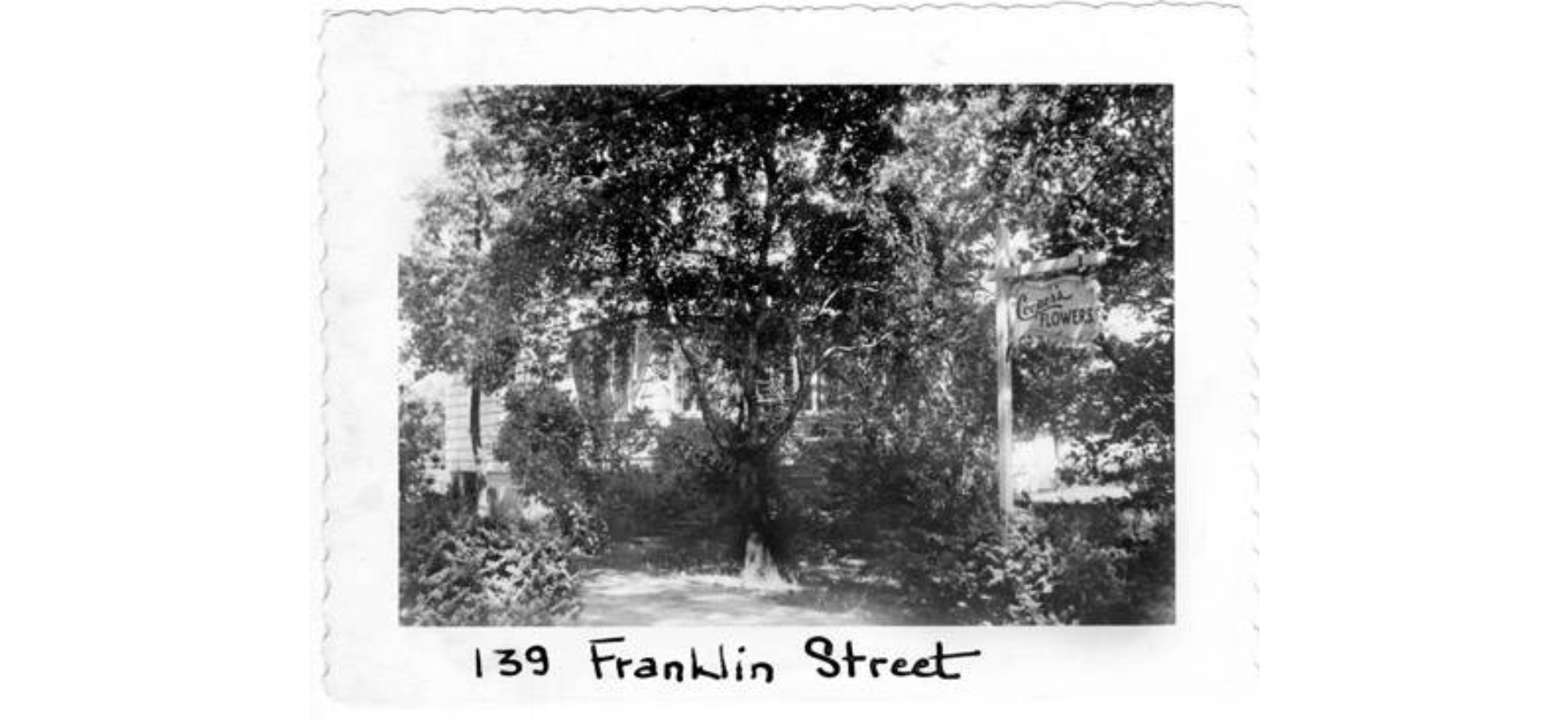 | This circa-1830 home was originally located on the corner of Aurora and Franklin streets and was moved in the early 1900s to this location. It is believed that the home was once the base of operations for counterfeiters because counterfeit coin molds and a hidden oven were discovered in the home. Secret passages also suggest that perhaps this home was once a station on the Underground Railroad. It was once the home to Englishman, Harry Cooper (1878-1954) and family. Cooper was well known for his amazing green thumb and talent with plants. He sold many flowers, but often referred others to nearby nurseries for vegetable plants. | Summit Memory | |
| Franklin Street Western Reserve Academy Barns 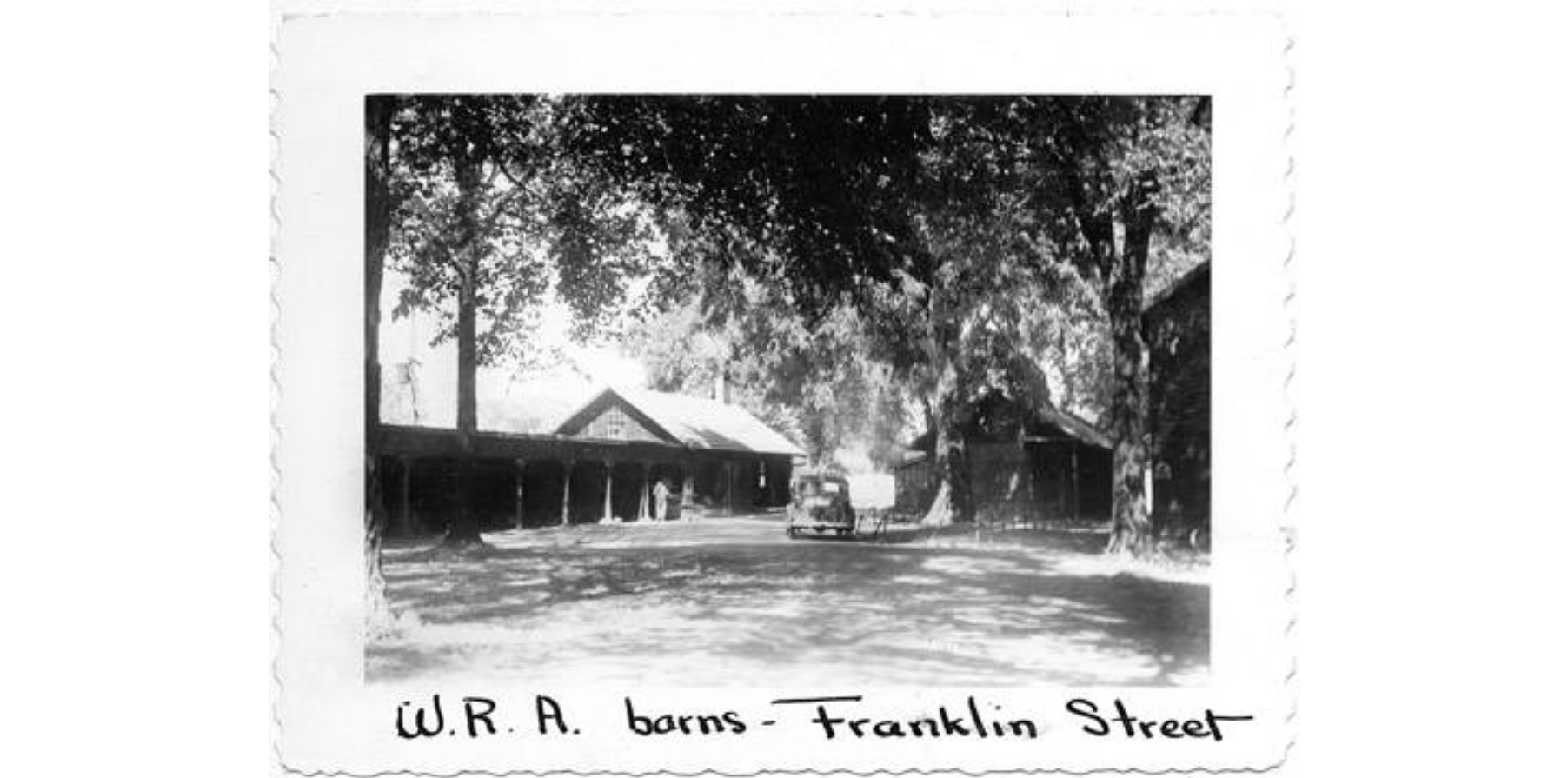 | The Western Reserve Academy barns were originally part of the Ellsworth family farm. In 1919, James Ellsworth (1849-1925), founder of Western Reserve Academy, deeded the barns to the academy for use in the agricultural program. | Summit Memory | |
1 High Street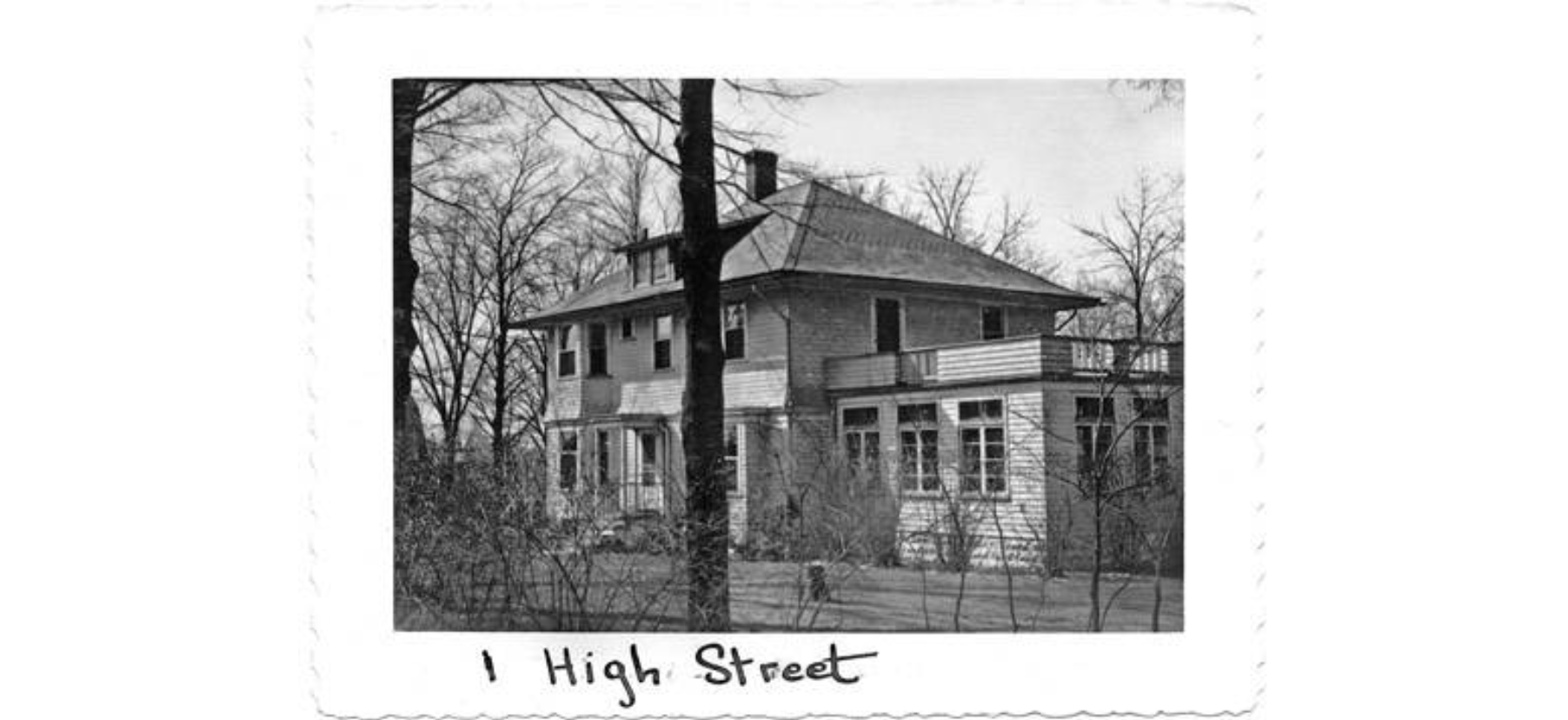 | This turn-of-the-century colonial home with two stories was once occupied by the Wayland W. Brown (1893-1985) family and their servants. Brown, who had a family connection and a professional association with the Cleveland Trust Co., had an office in the famous George Post (1837-1913)-designed building at East 9th Street and Euclid Avenue in Cleveland. While Brown went on to retire in Florida, Cleveland Trust became Ameritrust and, later, Key Bank. | Summit Memory | |
7 High Street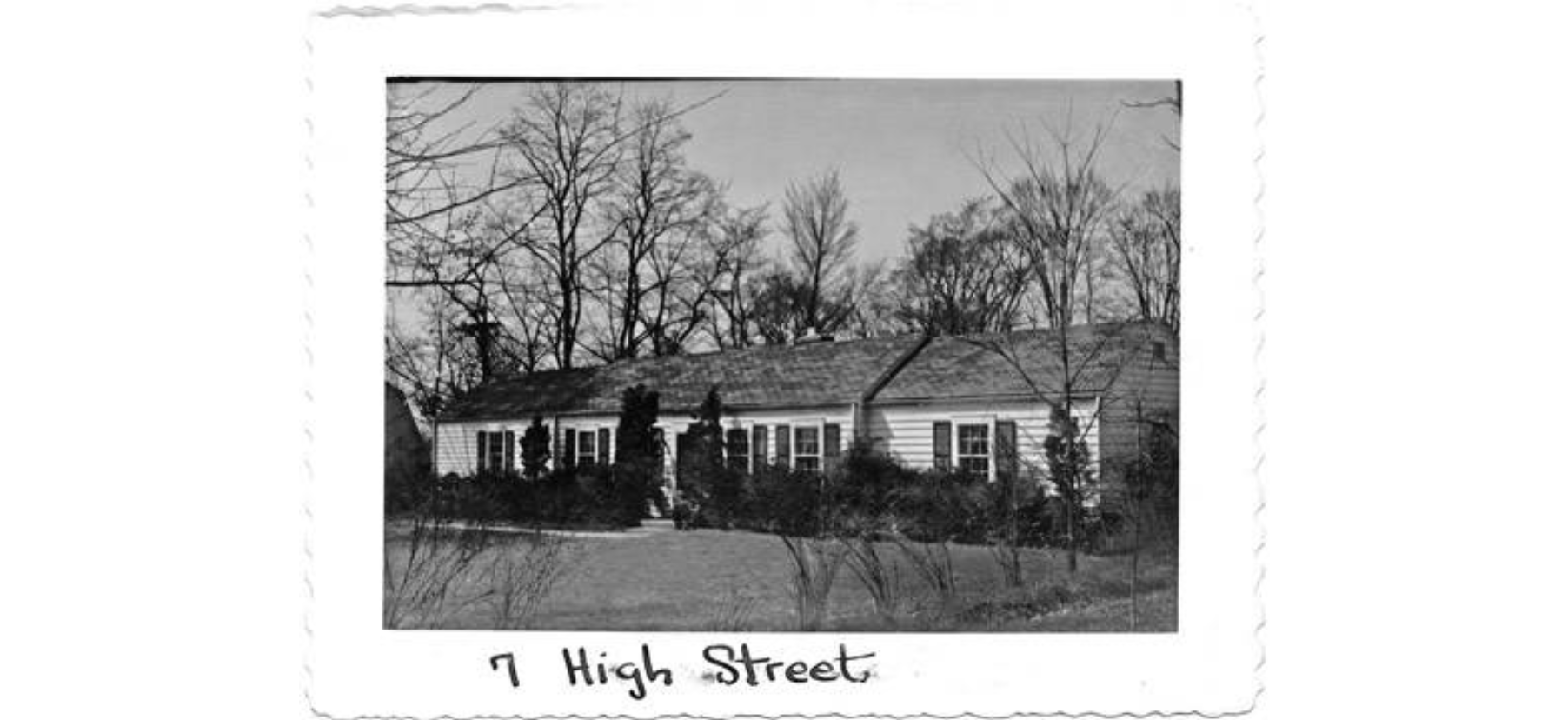 | This circa-1937 ranch home was once occupied by John S. Lowman, Jr. (1914-1982), accountant at Jones & Laughlin Steel Corp. in Cleveland. | Summit Memory | |
| 100 Lake Forest Drive Lake Forest Country Club 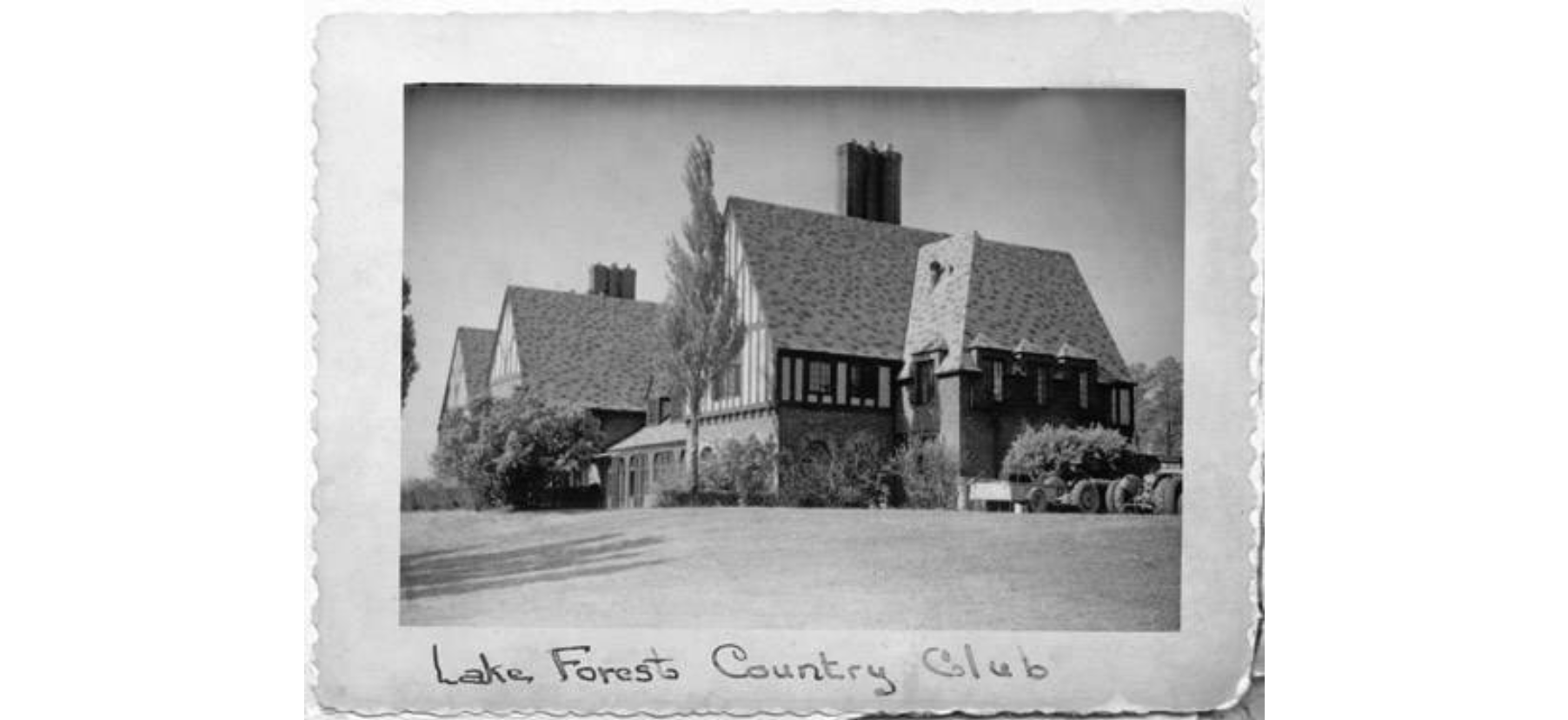 | In the 1920s, the S.H. Kleinman Realty Co. purchased more than 1000 acres of land in Hudson to develop a residential community. Plans included a championship golf course, 1000 homes, five parks, lakes, bridle paths, and this country club. The 1929 advertisement brochure for the Lake Forest complex touted that the Lake Forest Country Club will become a center with its community life, social activities, recreations, diversions and sport events. The Tudor Revival club house, designed by architect H.O. (Harold Ott) Fullerton (1895-1965), was completed in 1930 at a cost of more than $200,000. The 1929 stock market crash forced the S.H. Kleinman Realty into bankruptcy and only the clubhouse and two homes were completed. | Summit Memory | |
| 100 Lake Forest Drive Lake Forest Country Club Entrance 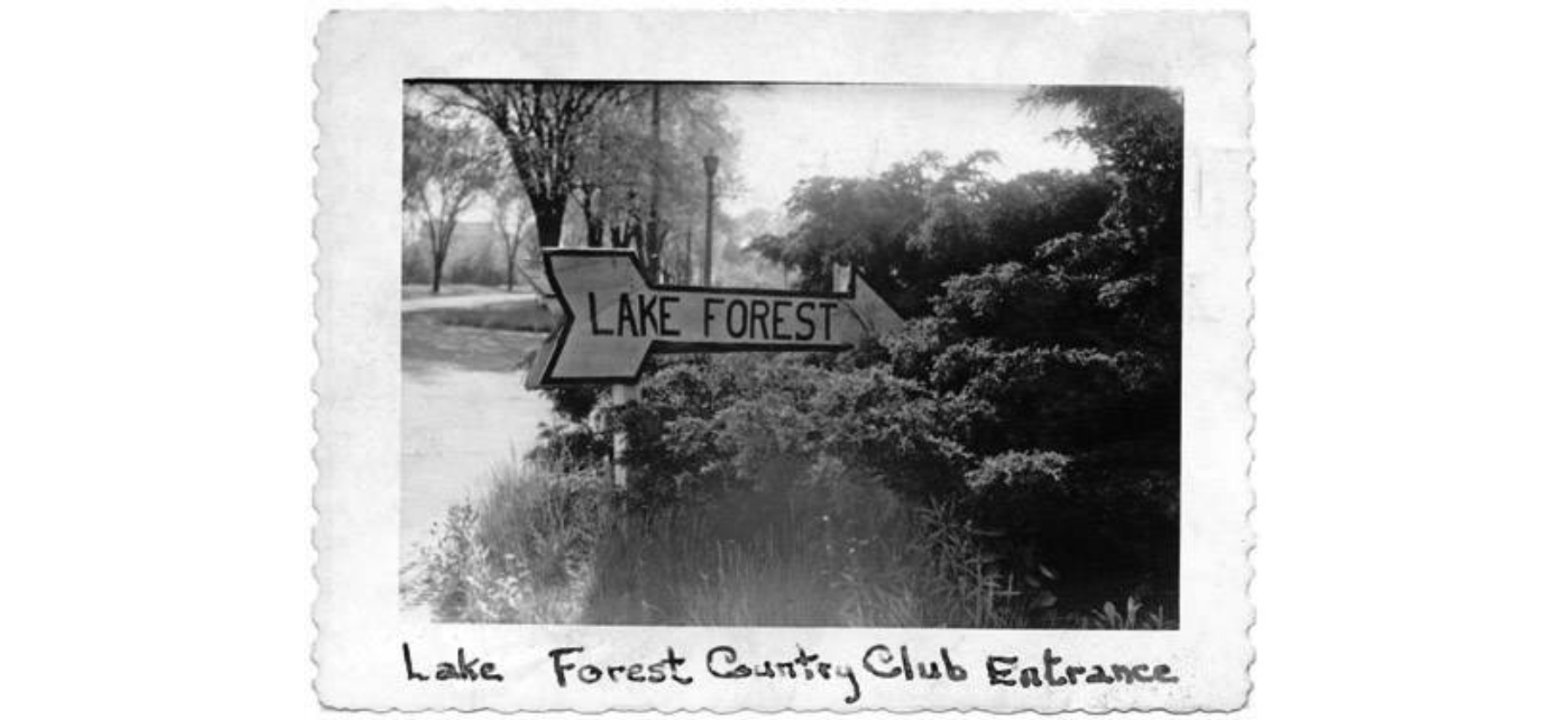 | When the country club golf course for the planned Lake Forest estates was completed in 1930, it was the longest in Ohio. Renowned golfers Walter Hagen (1892-1969), Horton Smith (1908-1963), and Herman Densmore "Denny" Shute (1904-1974) were among the first to play. | Summit Memory | |
13 Prospect Street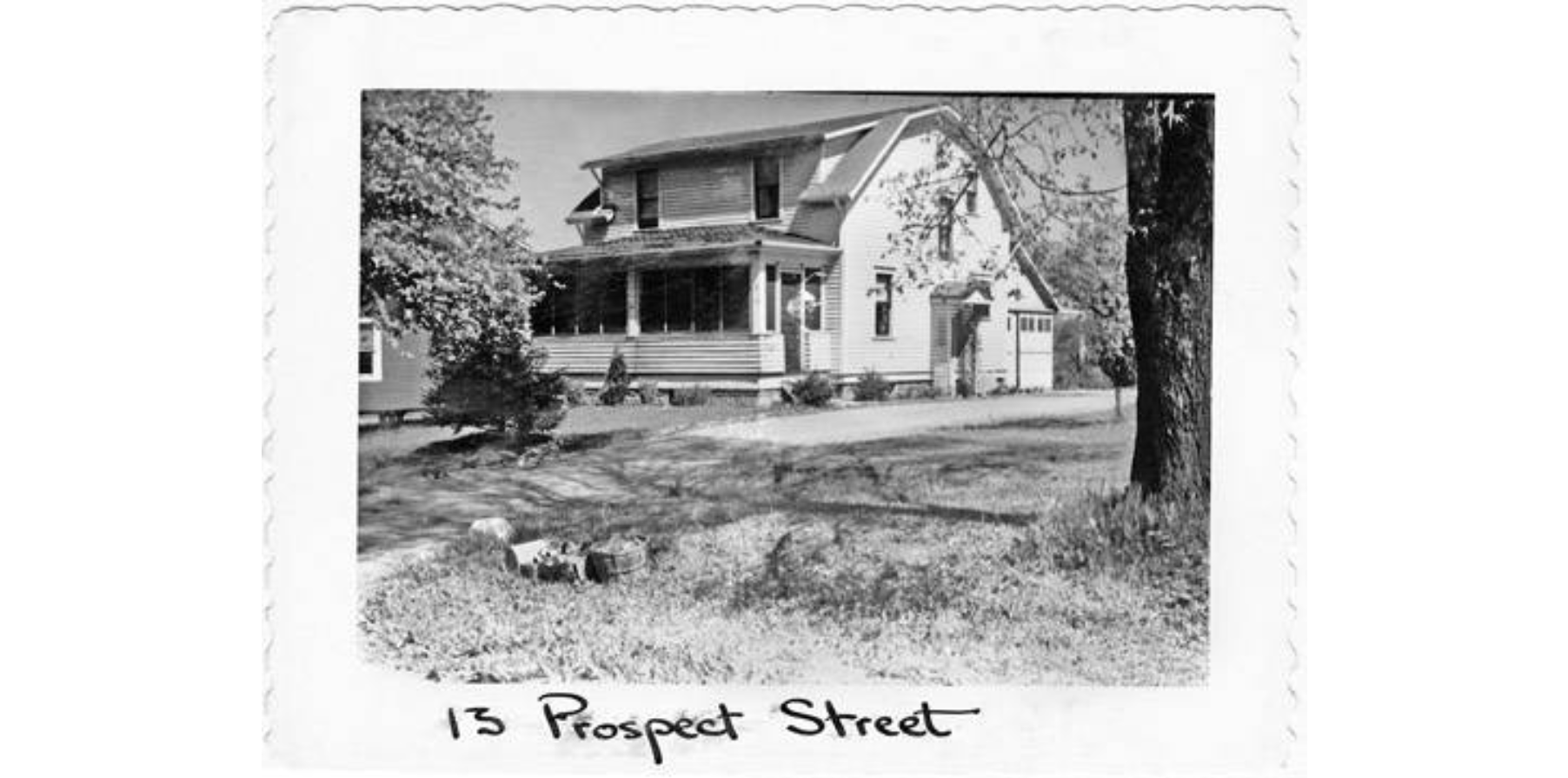 | A one-time occupant of this 1900-era colonial, Chester Korpp (1904-1997), had the unusual distinction of growing up at the Cleveland Boys Farm in Hudson. His parents, Frances (1886-1971) and Ralph Korpp (1883-1950), worked and resided there. | Summit Memory | |
15 Prospect Street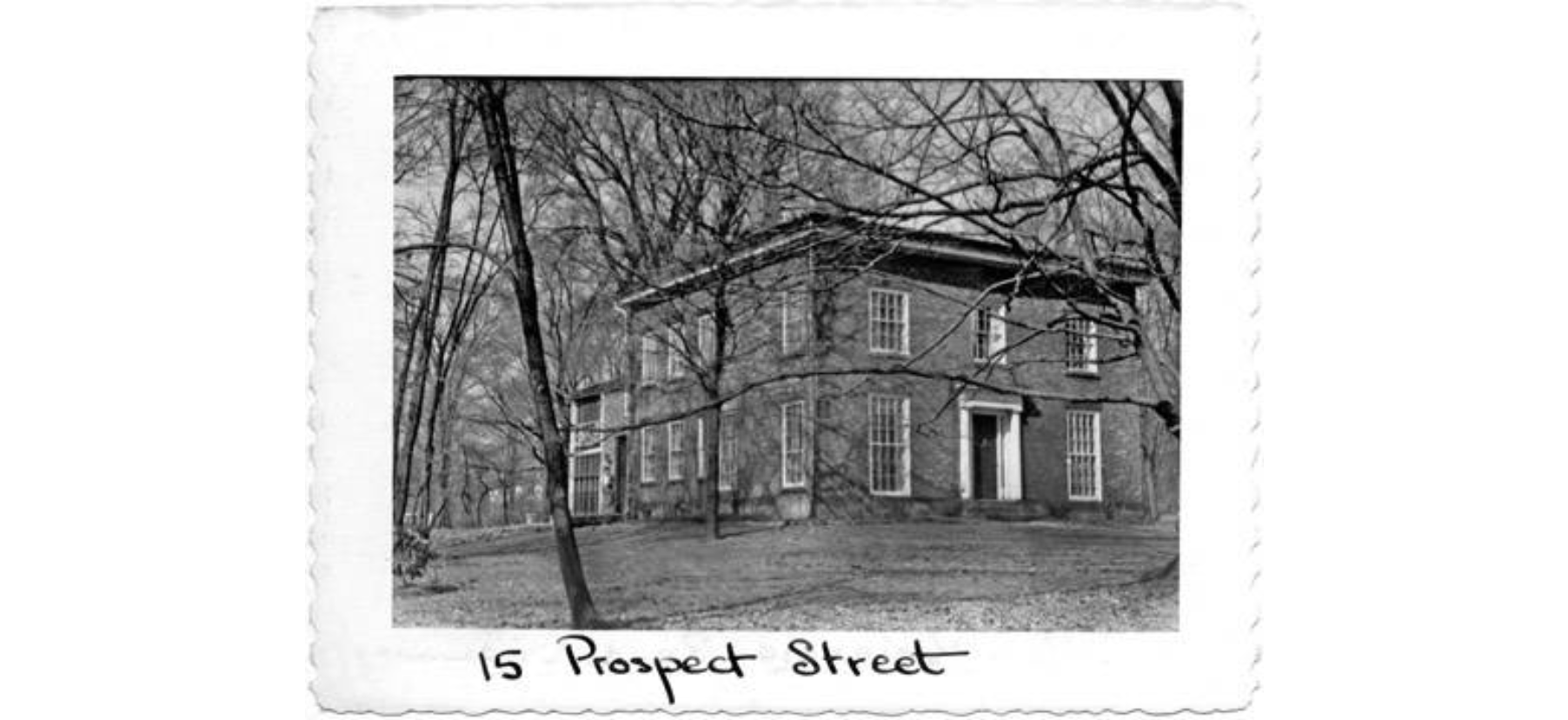 | Summit Memory | ||
23 Prospect Street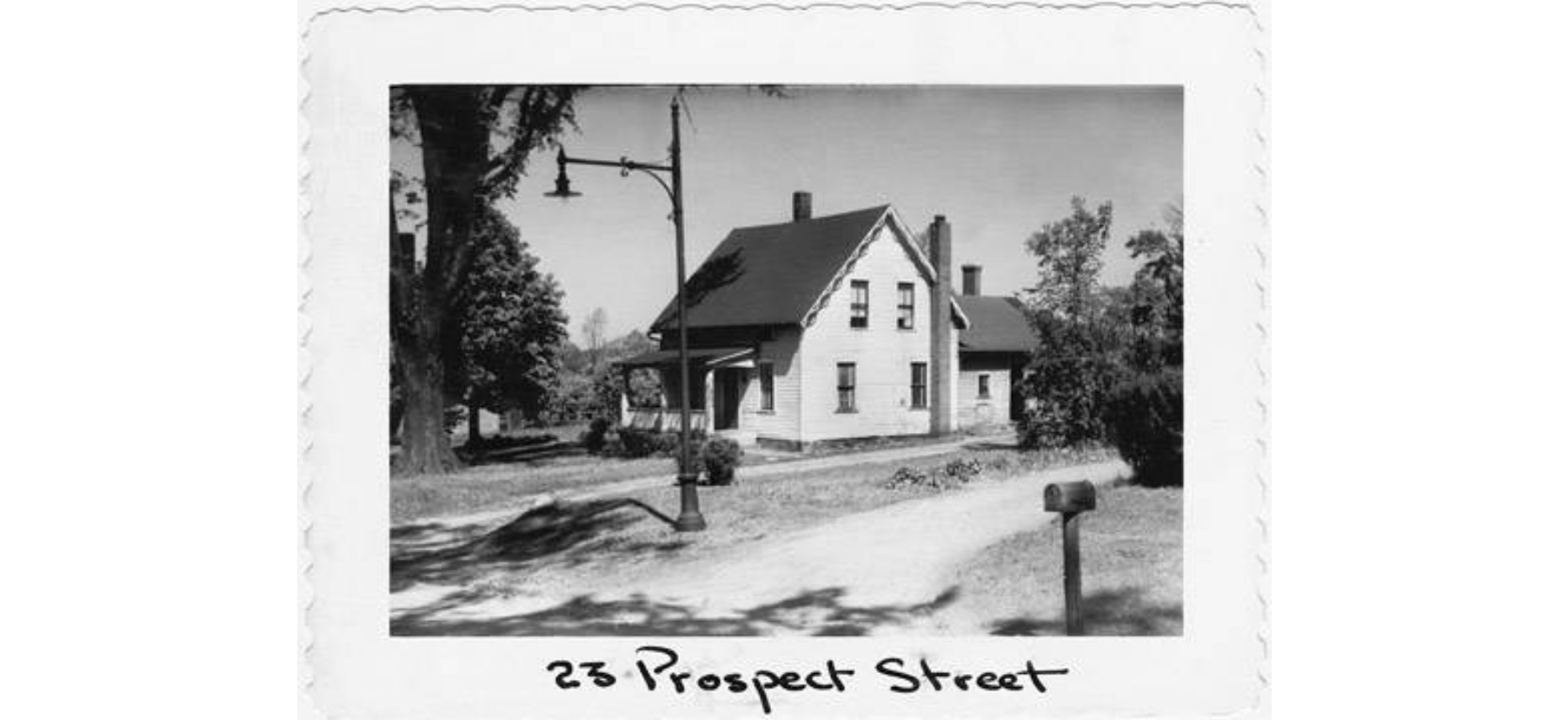 | This Gothic Revival house was built between 1848-1850 by Connecticut native Simon Landfear (1800-1870). Landfear moved to Garrettsville, Ohio, in 1860 and was considered quite a zealous Christian. Watchmaker Elliott S. Mueller (1909-1977) also lived here at one time. | Summit Memory | |
31 Prospect Street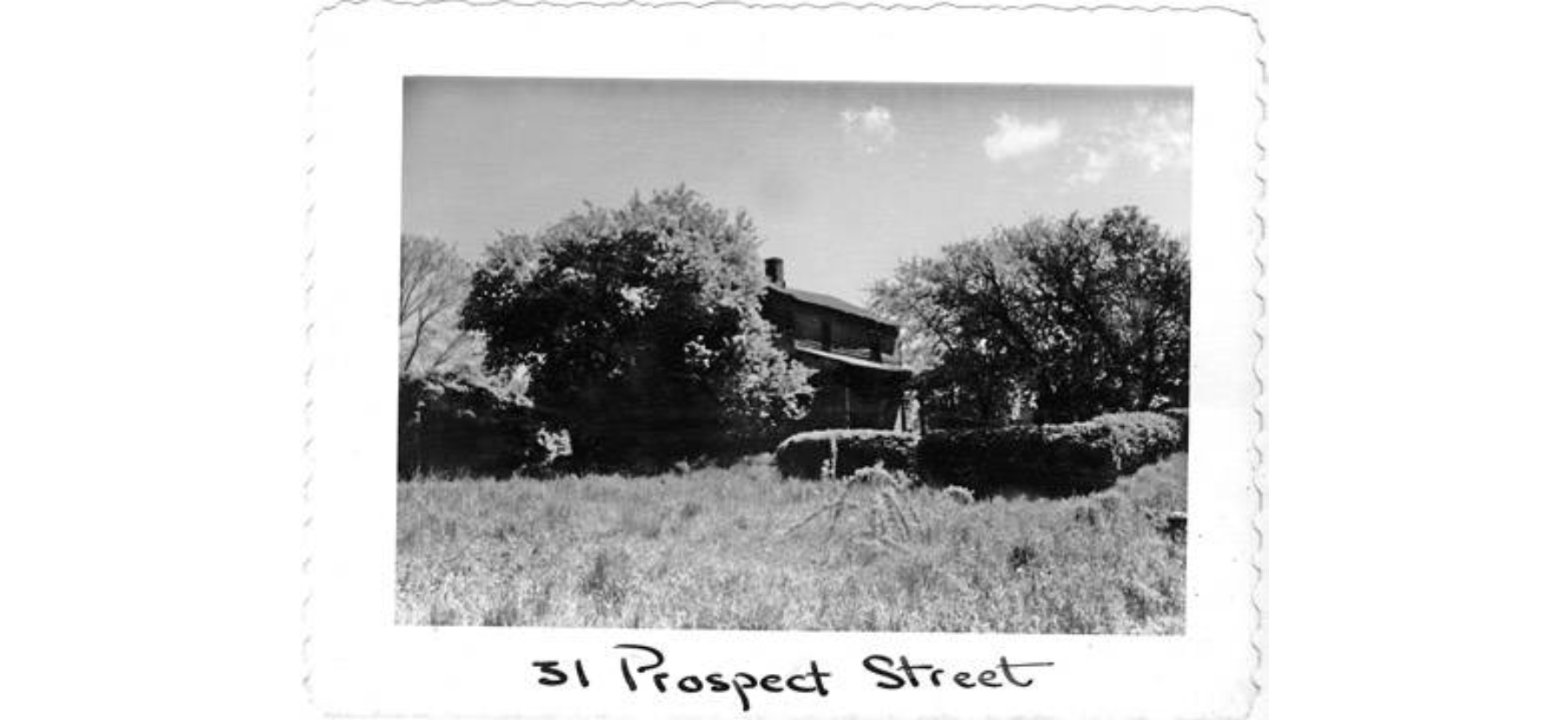 | Summit Memory | ||
33 Prsospect Street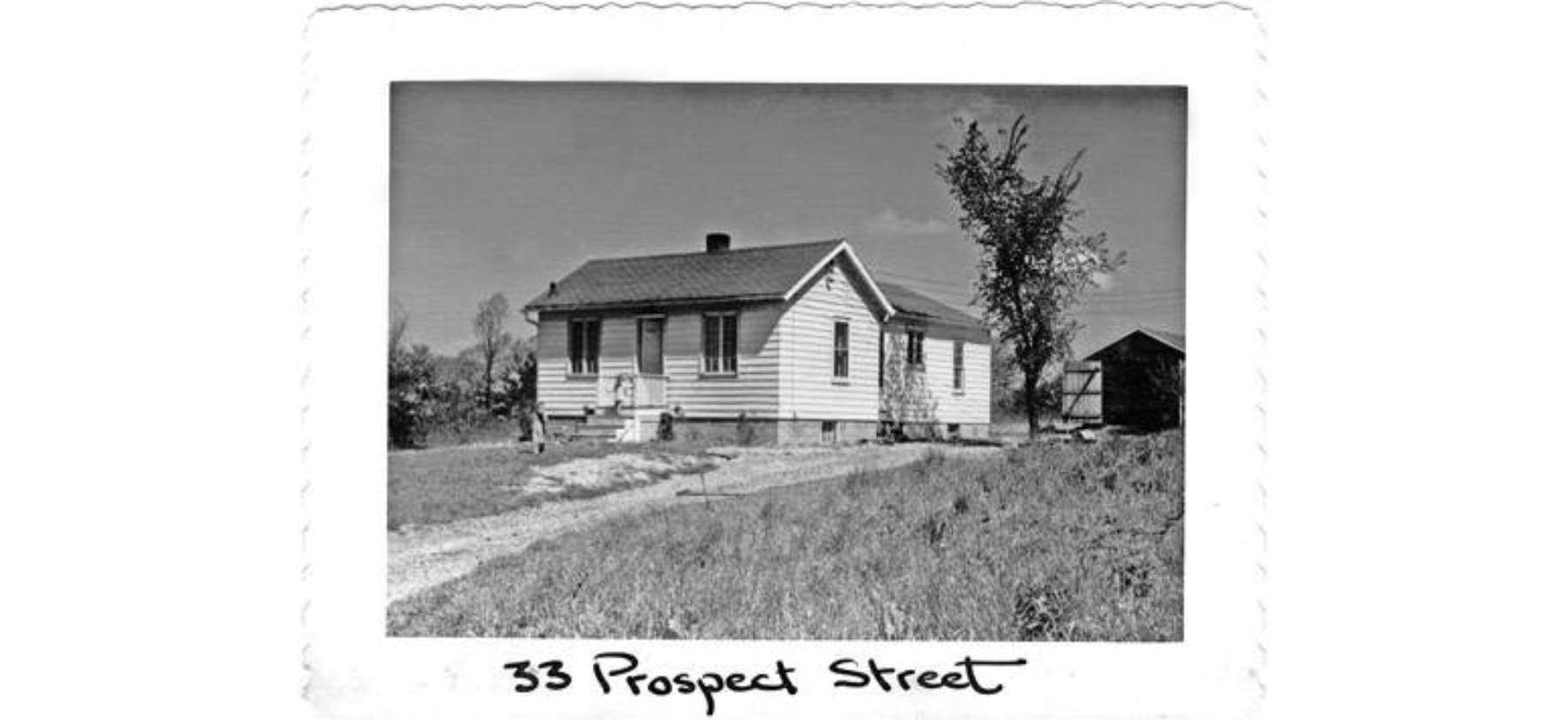 | Summit Memory | ||
| 35 Prospect Street Western Reserve Academy Infirmary  | The Western Reserve Academy infirmary was built in 1935 and named in honor of Newton B. Hobart (1854-1938), the Academy's first headmaster. Helen L. Hayes (1913-1992), head nurse from 1945 to 1973, once worked in the infirmary. | Summit Memory | |
1923 Prospect Road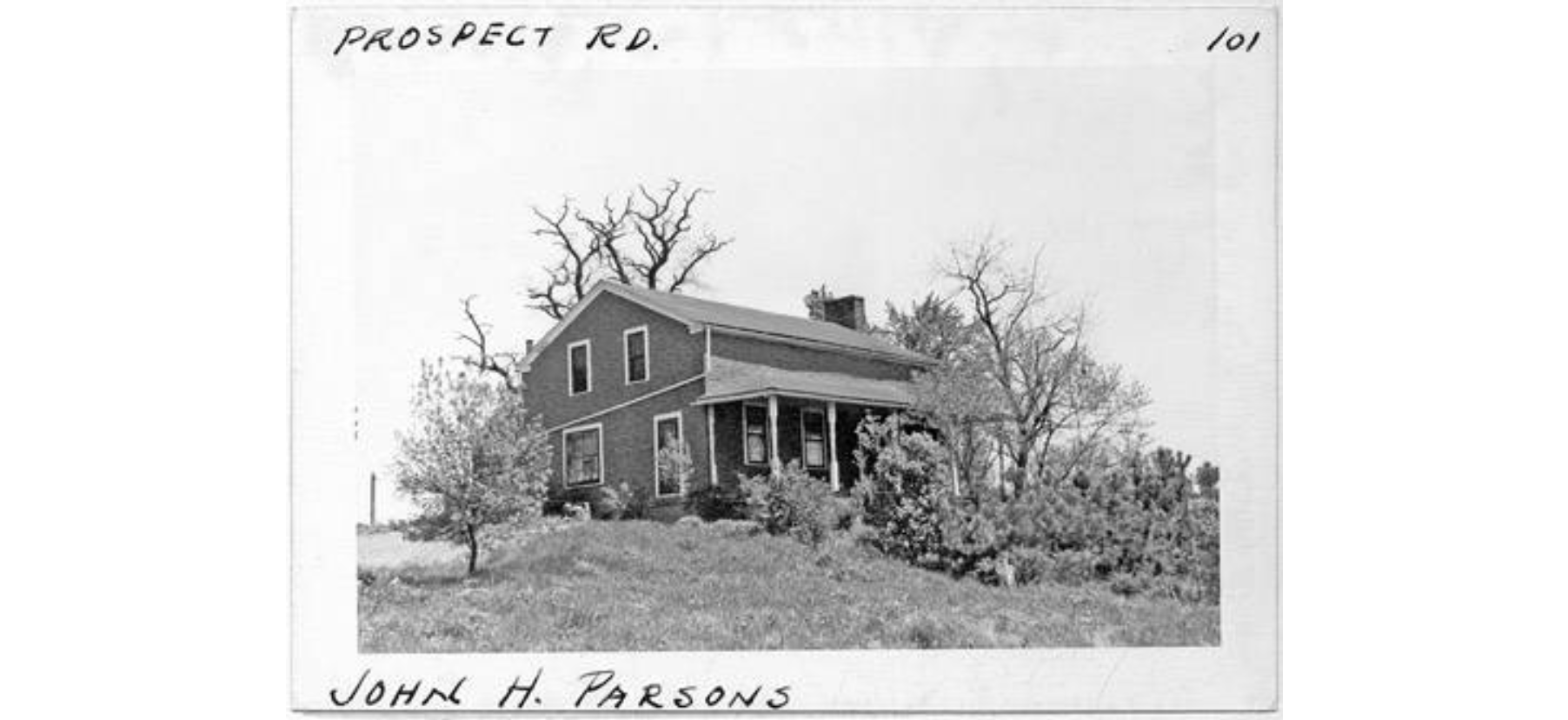 | It is likely that this home, which no longer exists, once belonged to George Samuel Gott (1848-1920). His son, George H. Gott (1898-1986), who later became the mayor of Hudson, grew up in this home. Tenant farmer John H. Parsons (b.1912) once occupied the Gott farm. His daughter, Gladys Parsons (dates), was the secretary at Hudson Schools and the treasurer of the Board of Education. It is believed that this home burned down. | Summit Memory | |
65 Maple Drive | This home, built before 1917, no longer exists. Civil War veteran Sylvester P. Griest (1839-1907) lived here after the war. Griest came home after participating in Sherman's March to the Sea and promptly married and raised a family. His son, Fred Griest (1877-1950), was a Fillius Co. and Turner Lumber and Supply employee. | Summit Memory | |
73 Maple Drive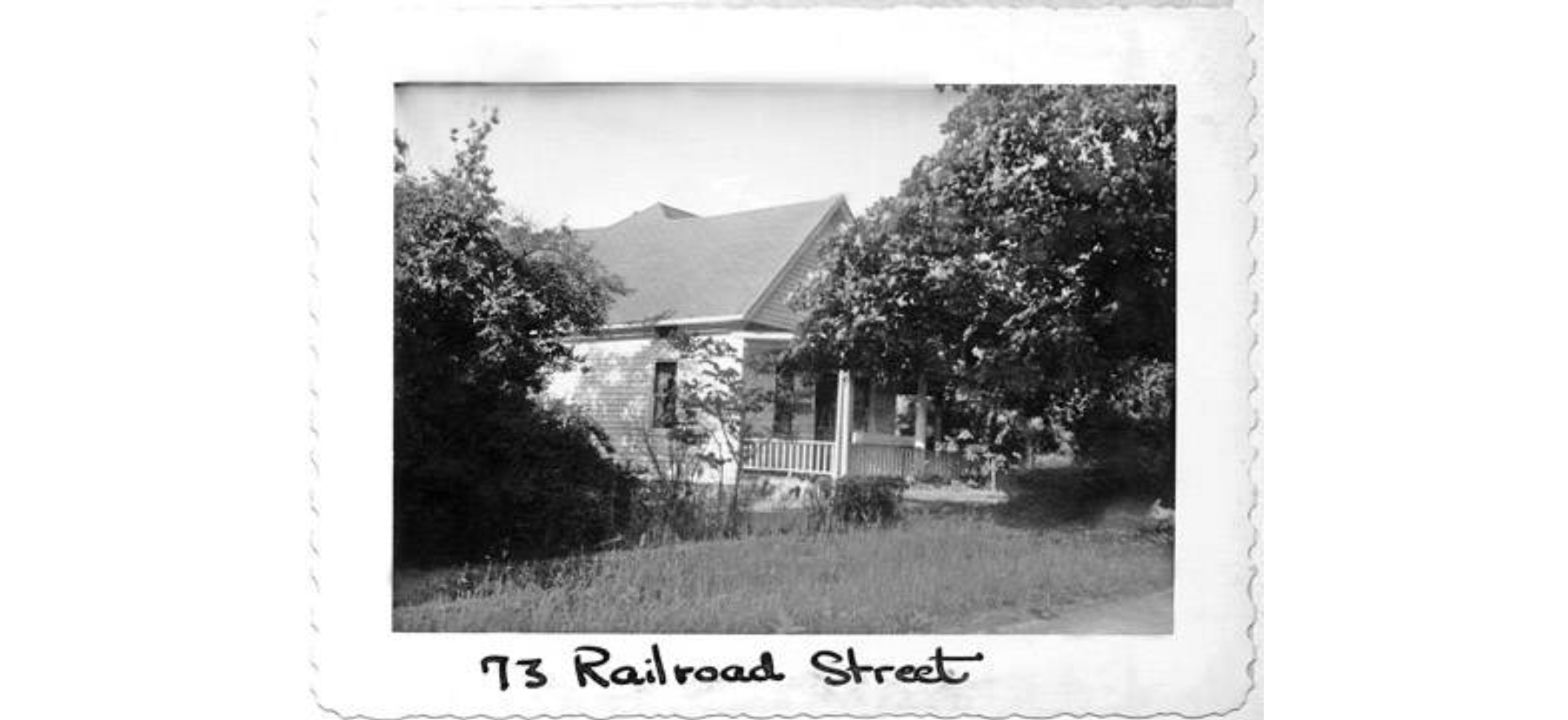 | This home, likely built in the 1870s, was once home to dedicated Rotarian Frank Corbus, Jr. (1897-1953). Corbus once served as the president of the Hudson Rotary Club, helped establish the first club in the Twinsburg district, and even played Santa Claus at the Rotary Christmas events for children. After he retired as a salesman at the Jaite Paper Co., and in his retirement, he enjoyed raising and breeding Nubian goats. A concrete storefront with a brick veneer was added to the front of this home in the 1920s. | Summit Memory | |
78 Maple Drive 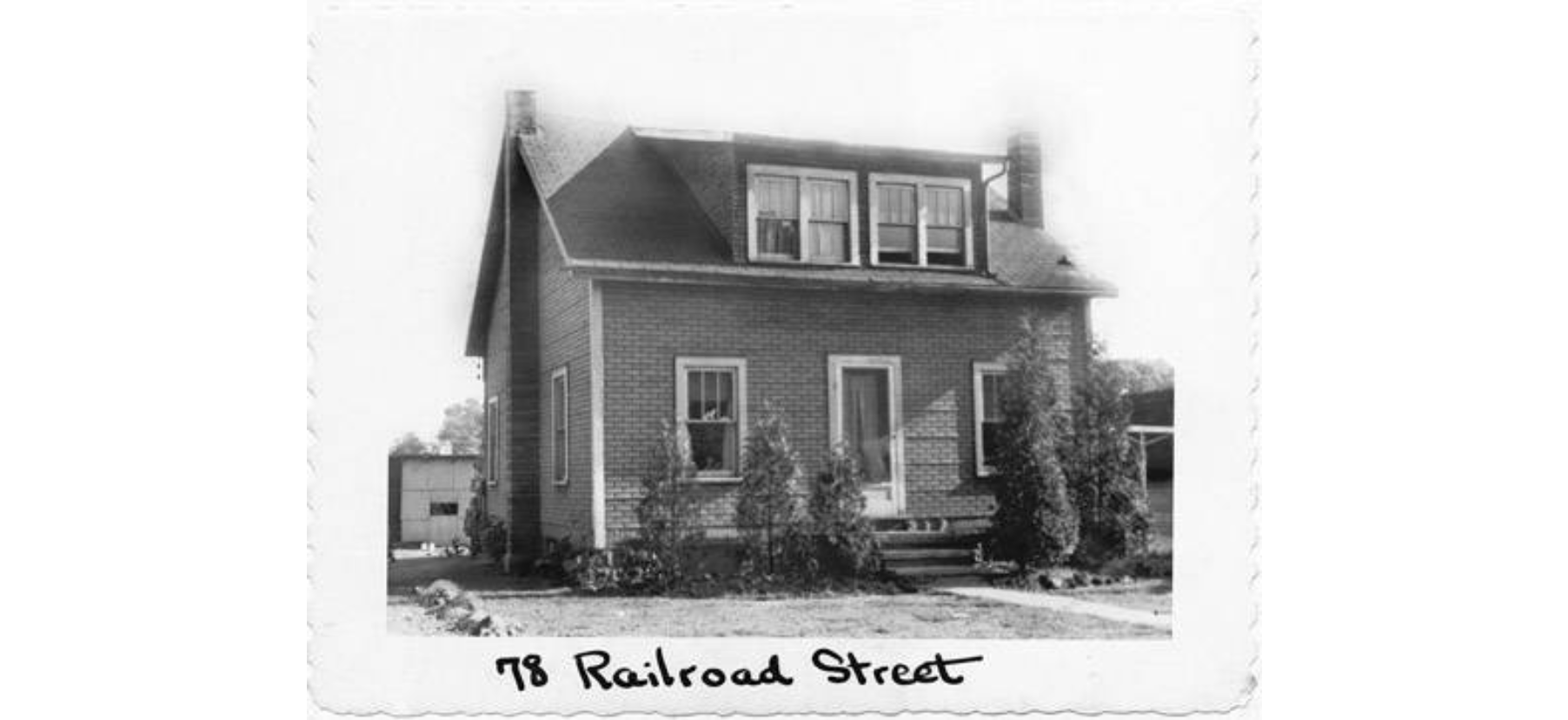 | Charles Higgins (1830-1892) and his wife Mary (1819-1877) once owned this home. Both were practicing Catholics. Conveniently, St. Mary's Church was within walking distance of their house. Charles was African American, one of a few to live in Hudson at the time. He also served with the USCT 127th H Company during the Civil War. He saw the battle at Cold Harbor and the Battle of the Crater. Mary died in 1877 from heart disease. In August of 1888 Charles Higgins pleaded guilty to being the "paramour" of Amelia Zook (alias Starr, alias McGurire), who was charged with adultery and fornication. According to the town newspaper "The Hudson Enterprise," she was the "hardest character as ever disgraced our town." Higgins was fined $10 and costs. Sometime thereafter, he moved from town. He died, most likely from disease, at the Soldiers Home near Dayton, Ohio. | Summit Memory | |
85 Maple Drive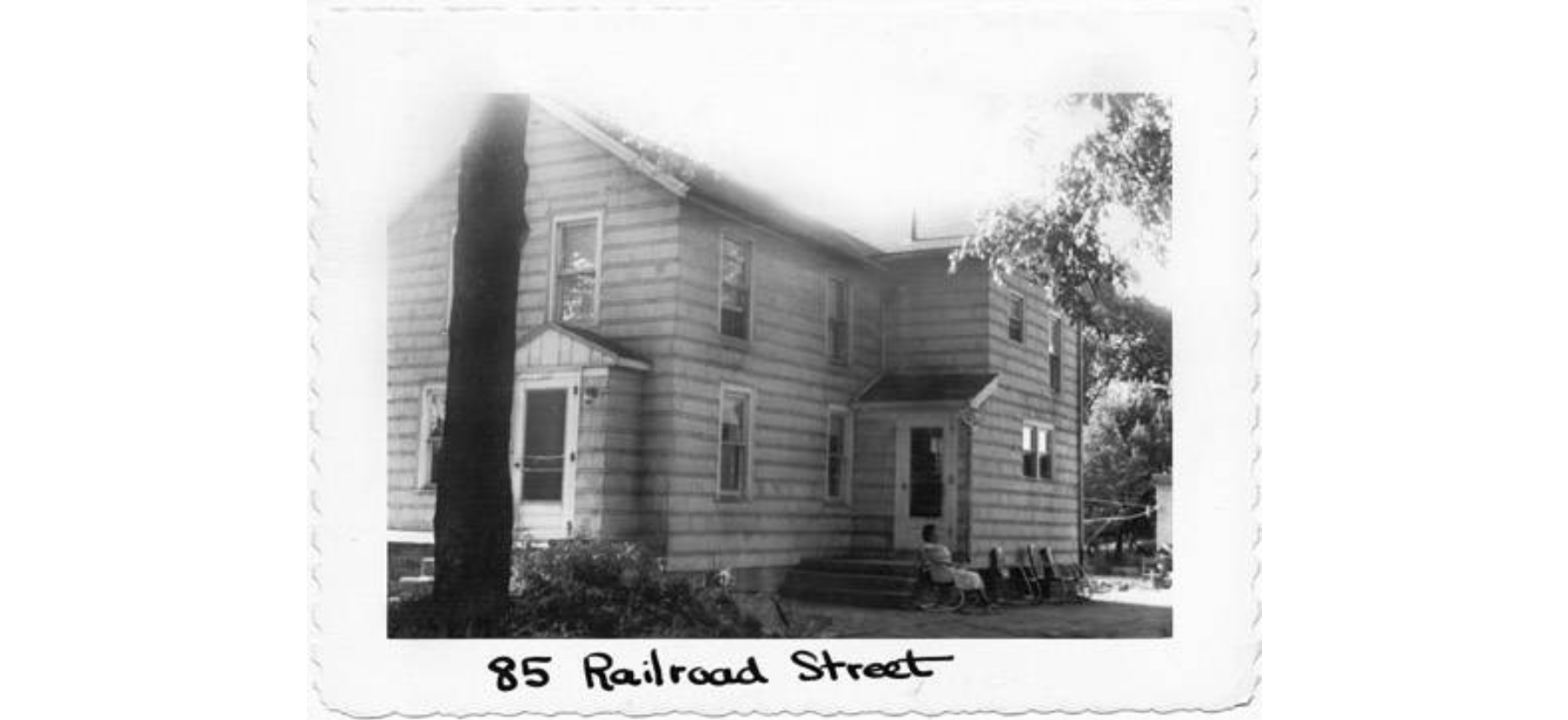 | This circa-1917 colonial once belonged to Pietro DiMichele (1890-1960). Pietro's brother Alexander DiMichele (1894-1969) owned Hudson Fireworks and his sister Lucy Sorgi's (1899-2001) family owned American Fireworks in Hudson. | Summit Memory | |
86 Maple Drive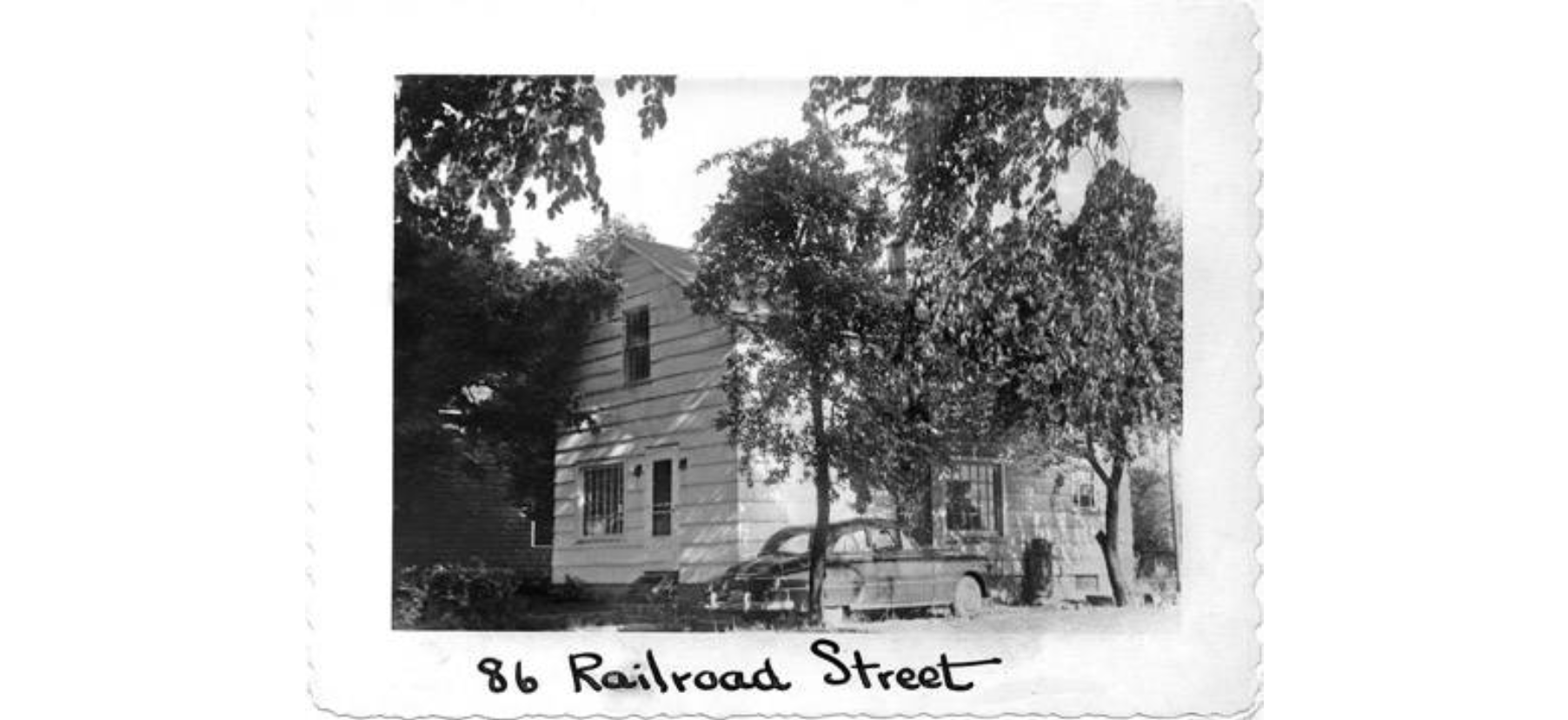 | This home is thought to have been built by William Branch (ca. 1808-1920), an illiterate former slave, who was born and sold in Virginia and later moved north and settled in Hudson in 1865. Benjamin Erdos (1909-1993), a machinist, once resided here. The home dates to the 1870s. | Summit Memory | |
87 Maple Drive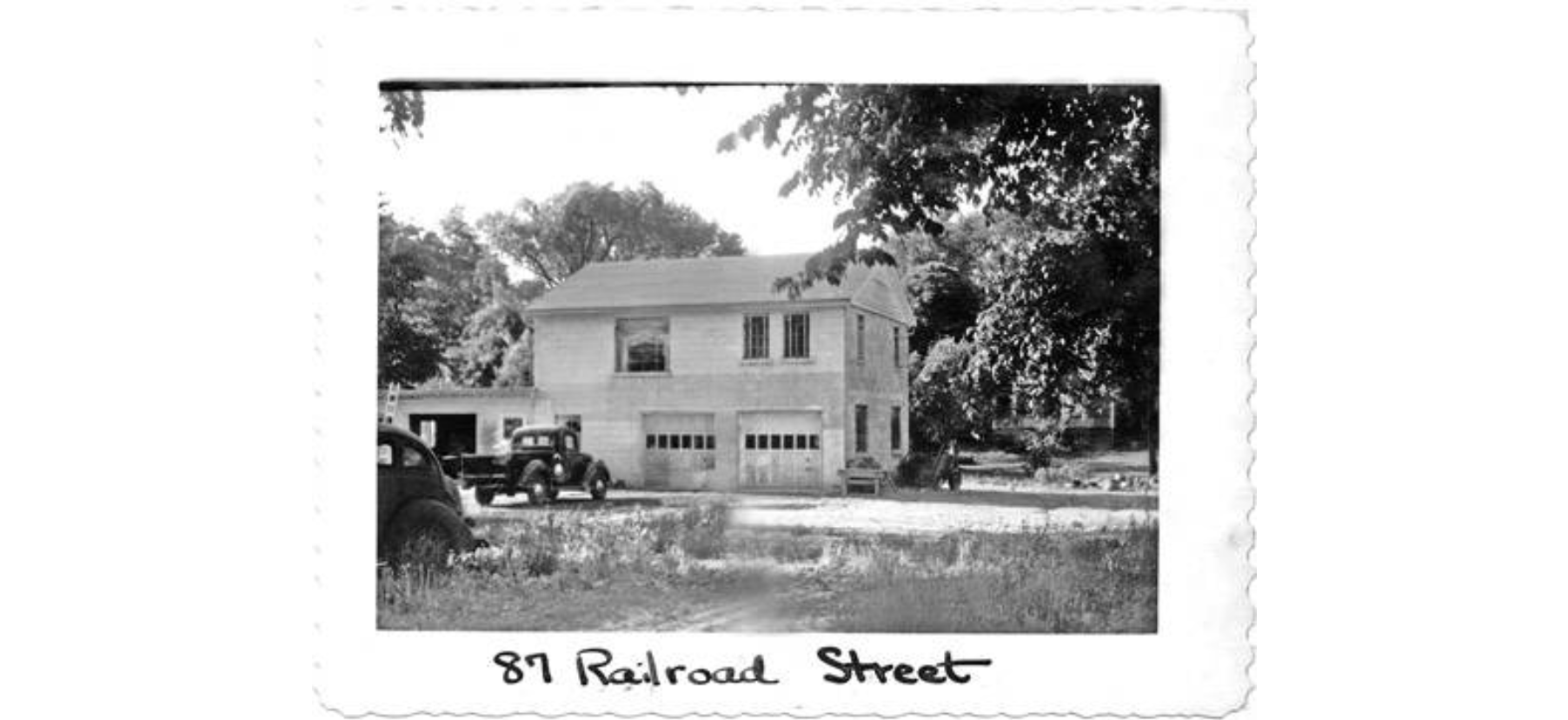 | Alfonso "Happy" DiMichele (1928-1994), the last shoemaker in Hudson, lived and ran his shoe repair shop here. His wife Gertrude (1919-1985) was a beautician at the Village Beauty Shop. The shoe repair shop was opened in 1947, most likely when this home was constructed. | Summit Memory | |
90 Maple Drive 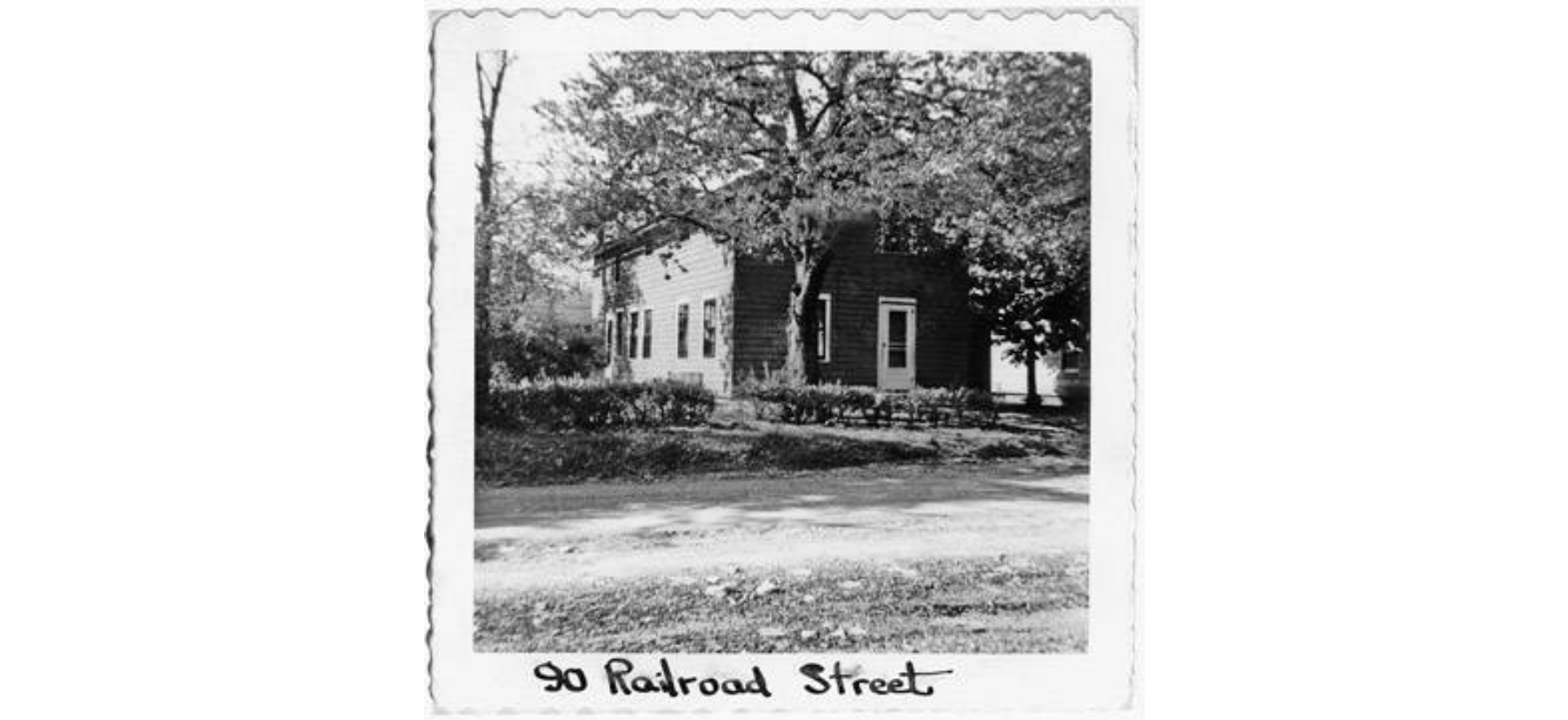 | R.H. "Dick" Myers (1909-2005), former Hudson fire chief, lived in this circa-1875 bungalow. Myers was the township's first full-time paid fire chief. He served on the fire department for more than 50 years; he was chief for 20 years. Dick once owned a car-repair shop at 37 S. Main St. Another resident of this home was retired banker, Karl W. Kramel (1928-2010) who was born here and later served in the merchant marines during World War II. | Summit Memory | |
23 Rosalyn Avenue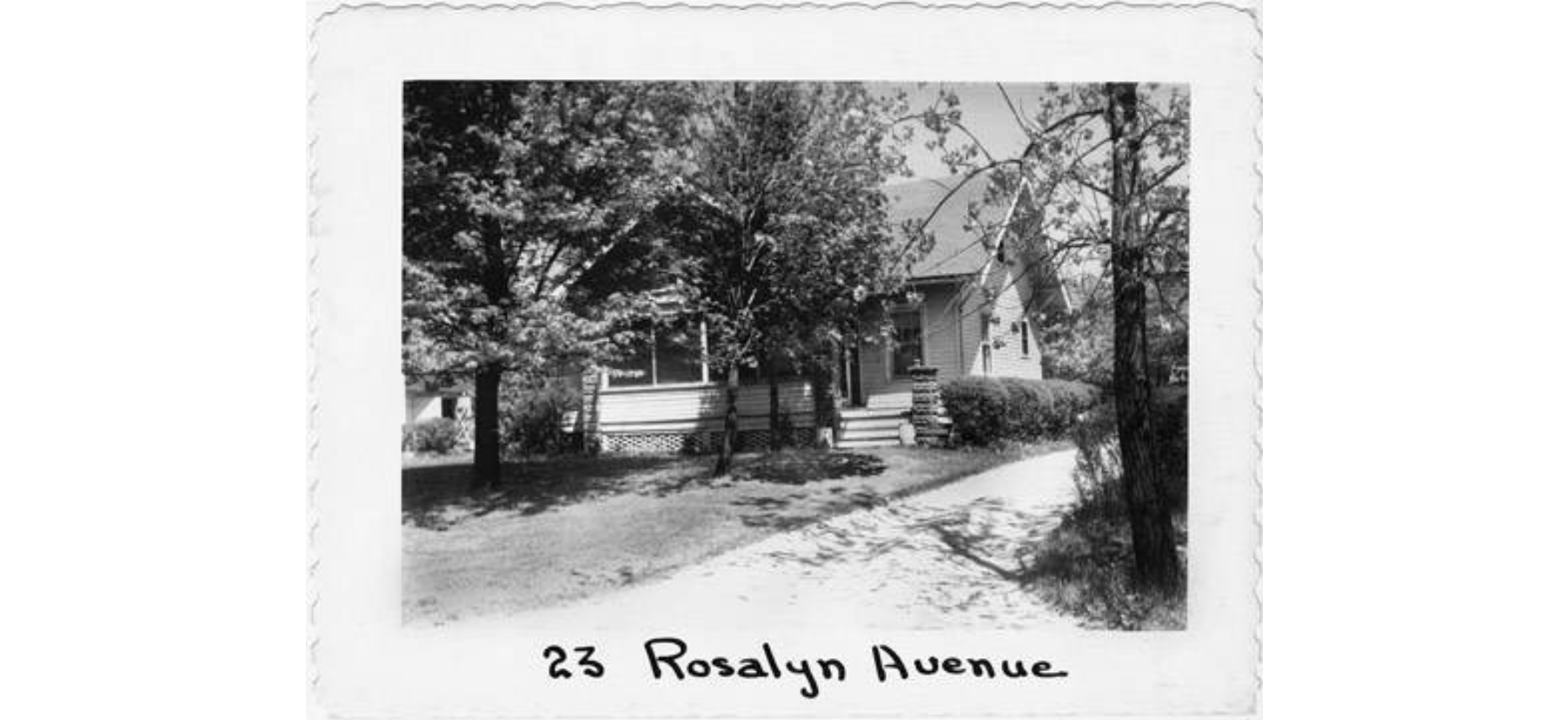 | Summit Memory | ||
1 Stokes Lane 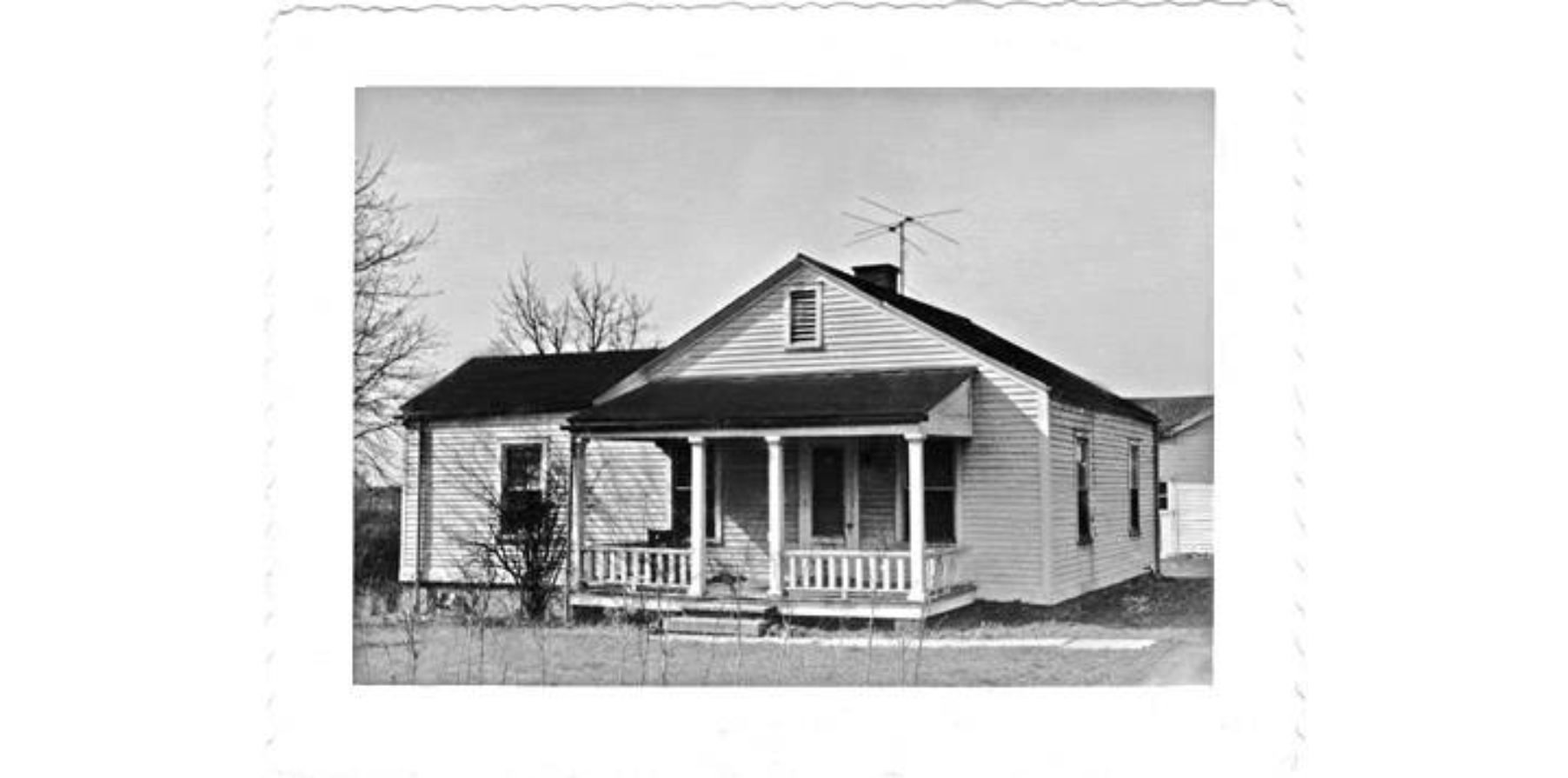 | Evelyn M. Scott (1900-1985) raised a family in this bungalow-style home, which dates to circa 1926. Scott was a 50-year member of the Eastern Star and a longtime member of the First Congregational Church of Hudson. | Summit Memory | |
14 Stokes Lane 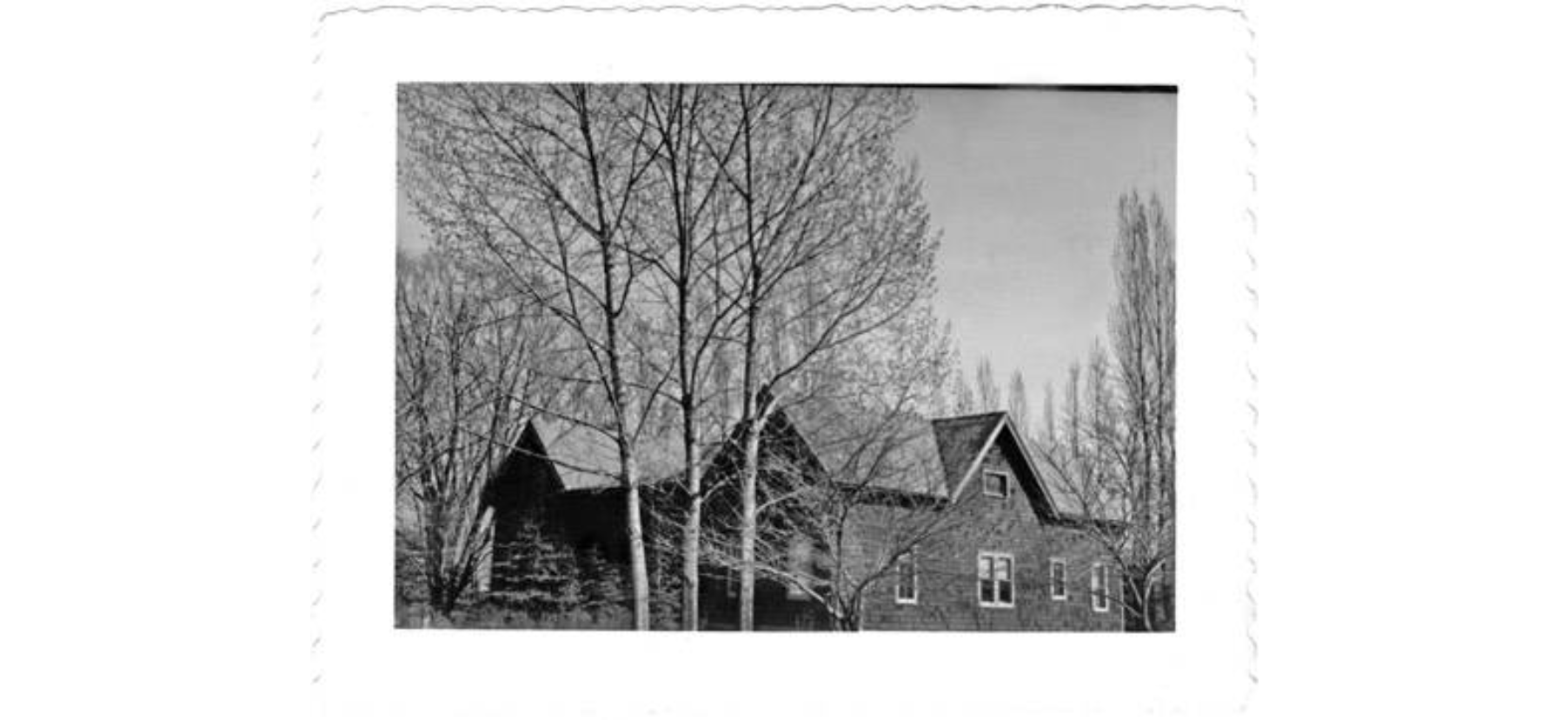 | This home once belonged to Anthony (1894-1955) and Josephine (1891-1985) Stokes. When the couple moved to Hudson in 1926, they purchased 22 acres of land on a farm once owned by Caroline Baldwin Babcock (1841-1921). The Stokes added on to the existing circa-1892 home. Anthony, a printer, founded the A. Stokes Co., a company that produced chemical compounds for printing. He invented the Stokesograph reliefing machine, one that uses an electrochemical process to create an embossed effect. The basement of this home was used as the A. Stokes Co. factory. | Summit Memory | |
15 Stokes Lane 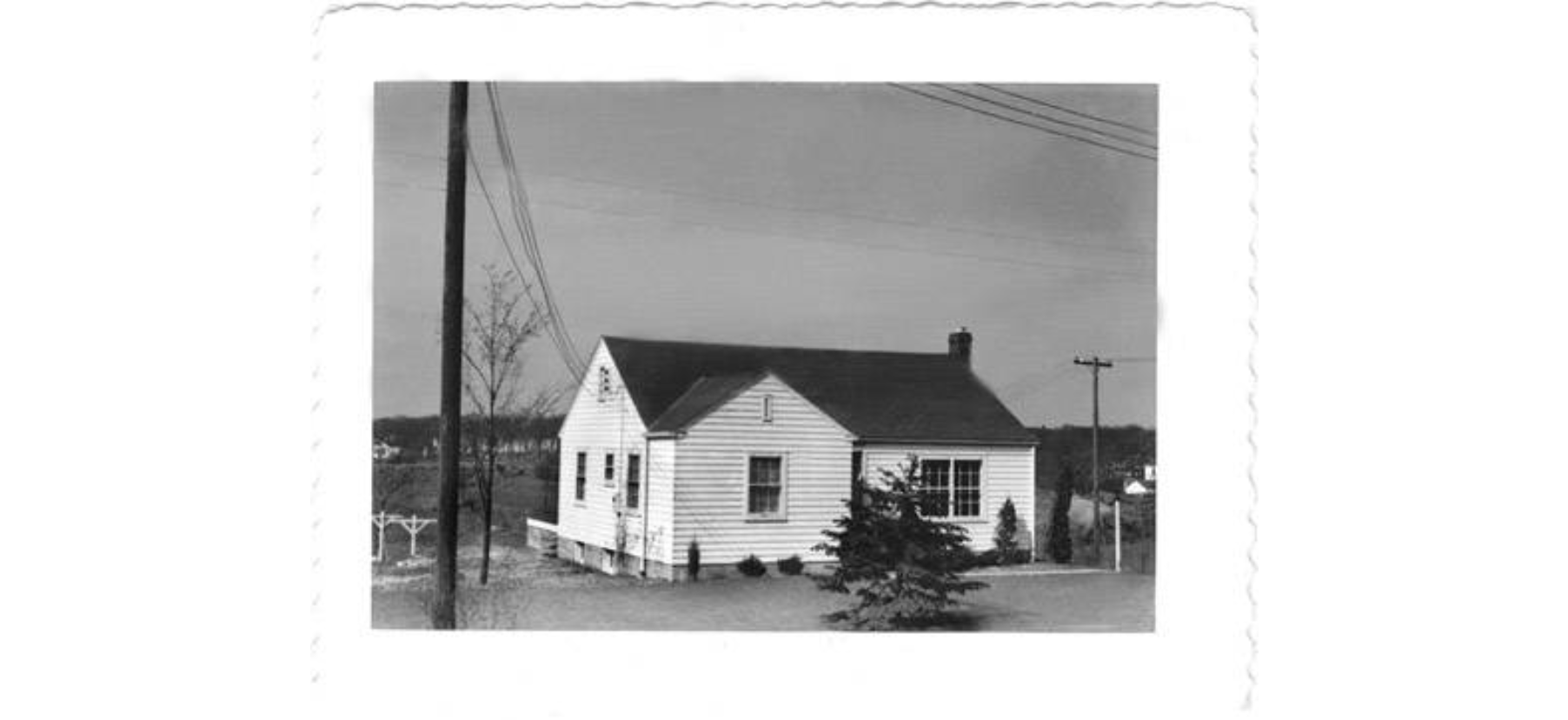 | Franklin W. Little (1921-1977), World War II veteran and electrical engineer for the Square-D Co. of Cleveland, once resided in this bungalow, which dates to circa 1947. | Summit Memory | |
100 Stokes Lanes 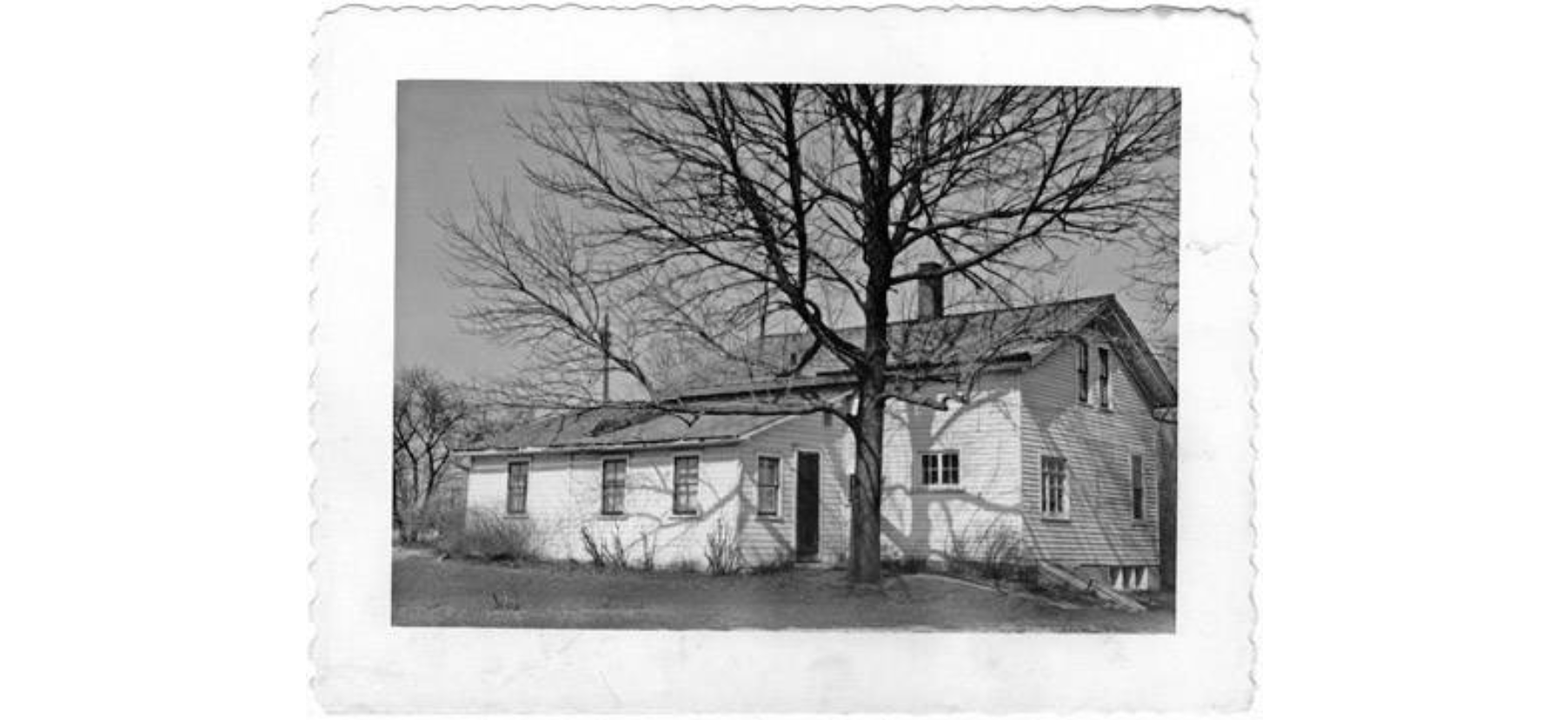 | This home burned down in 1974. It once belonged to Carolyn Jackson (1912-1981), a children's librarian at the Hudson Library & Historical Society. | Summit Memory | |
398 Stokes Lane 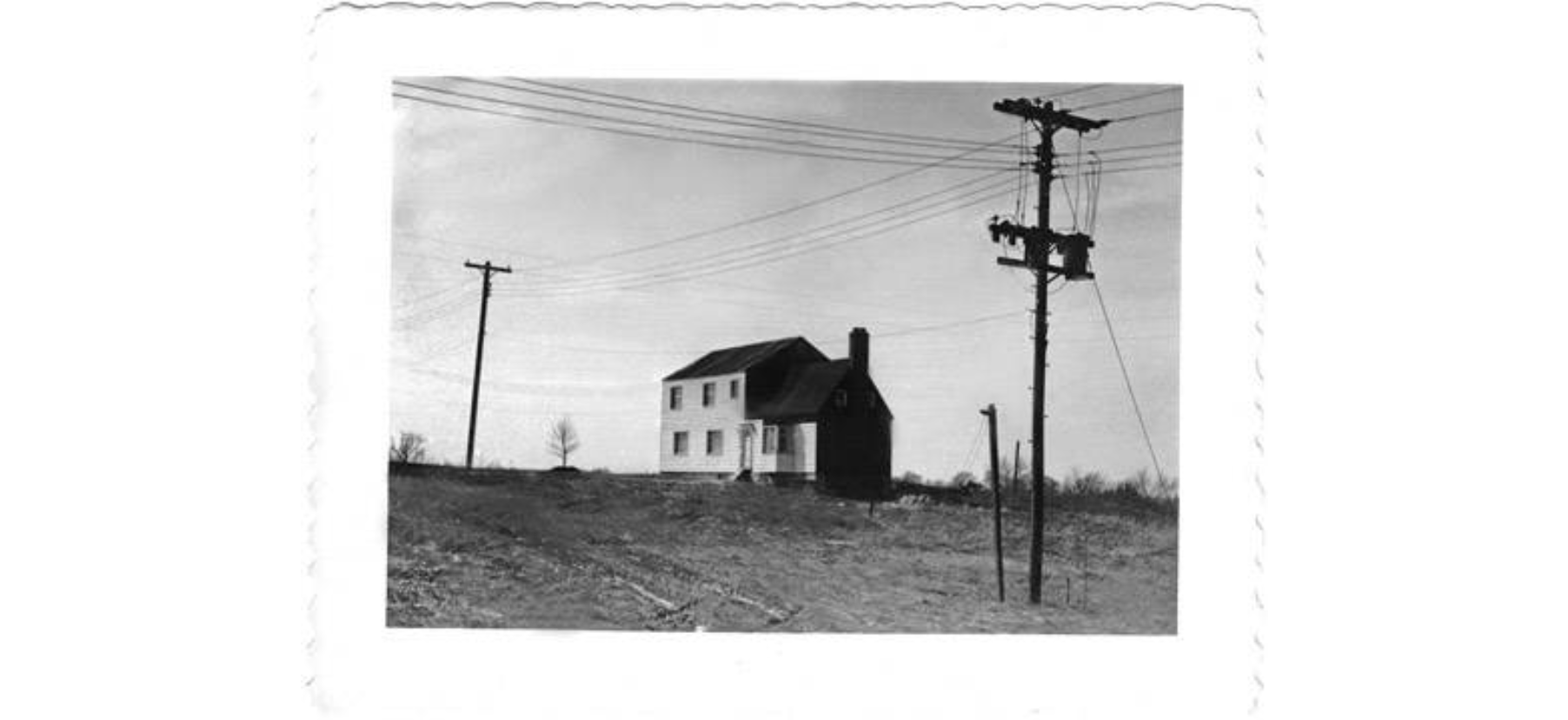 | Arthur "Art" J. (1918-2001) and Helen (1924-2005), two highly accomplished and well-respected Hudson citizens, lived in this 1950s colonial. Art co-founded Reuter-Stokes Inc. (now owned by General Electric but still called Reuter-Stokes) in 1955. He also holds seven patents, including one for clothing that protects against mustard gas. Both Helen and Art were highly involved with the Hudson Community Service Association. Helen founded the organization and Art served as president 19 times. Art also was a councilman and was voted the city's first "citizen of the year" in 1997. Helen was a secretary at the White House when Franklin D. Roosevelt was president. | Summit Memory |
